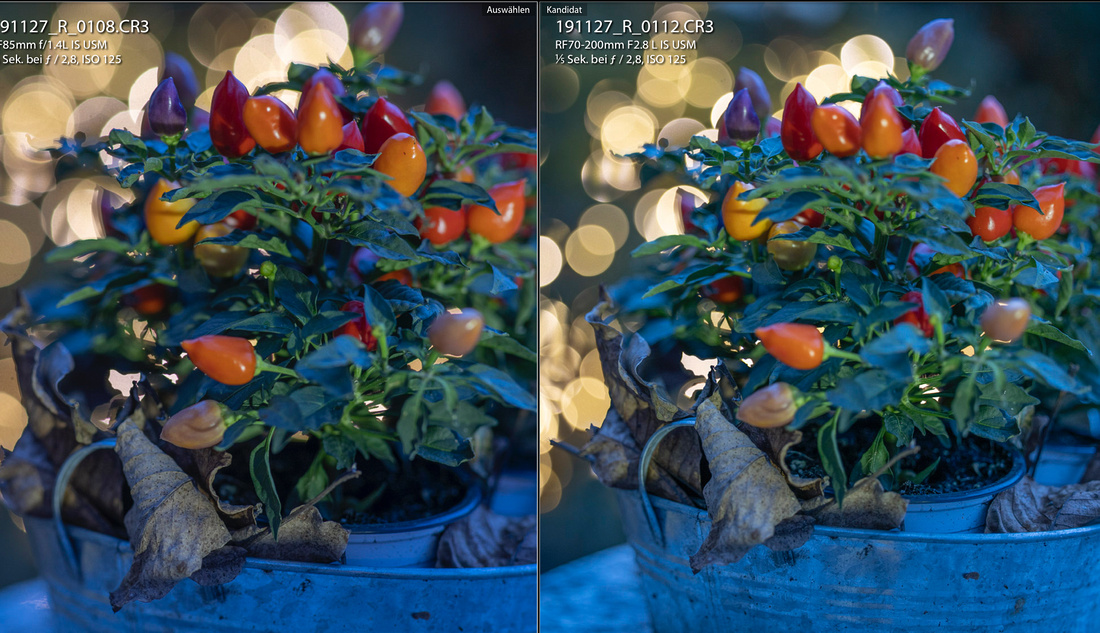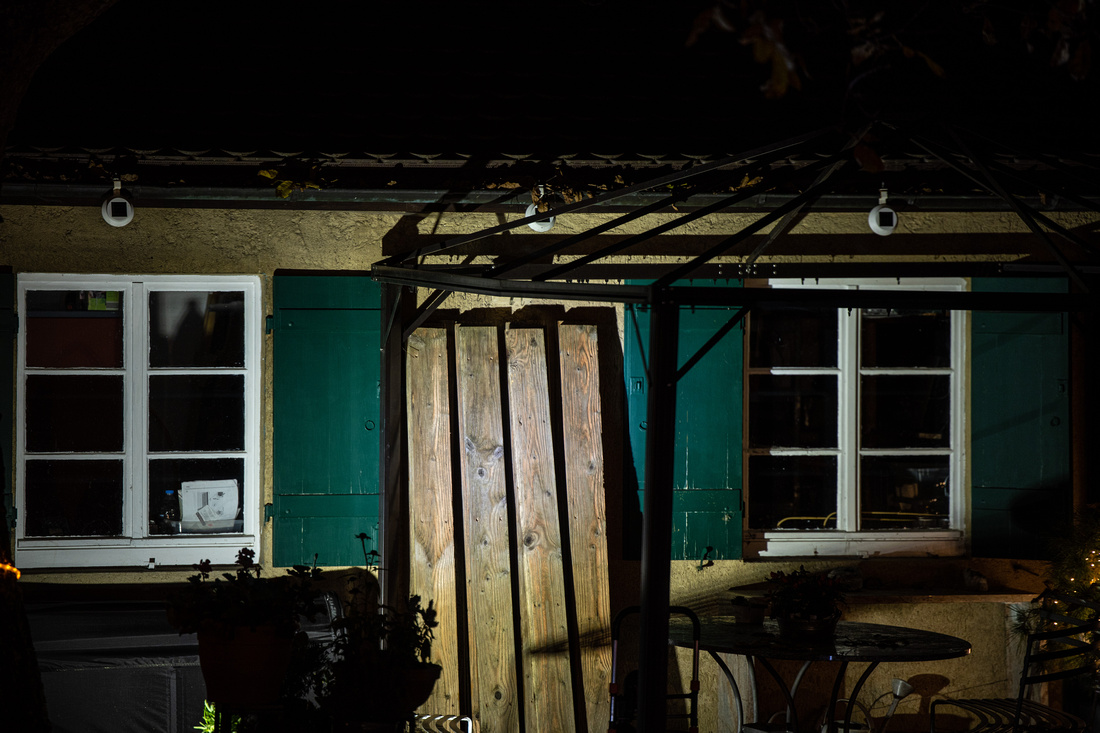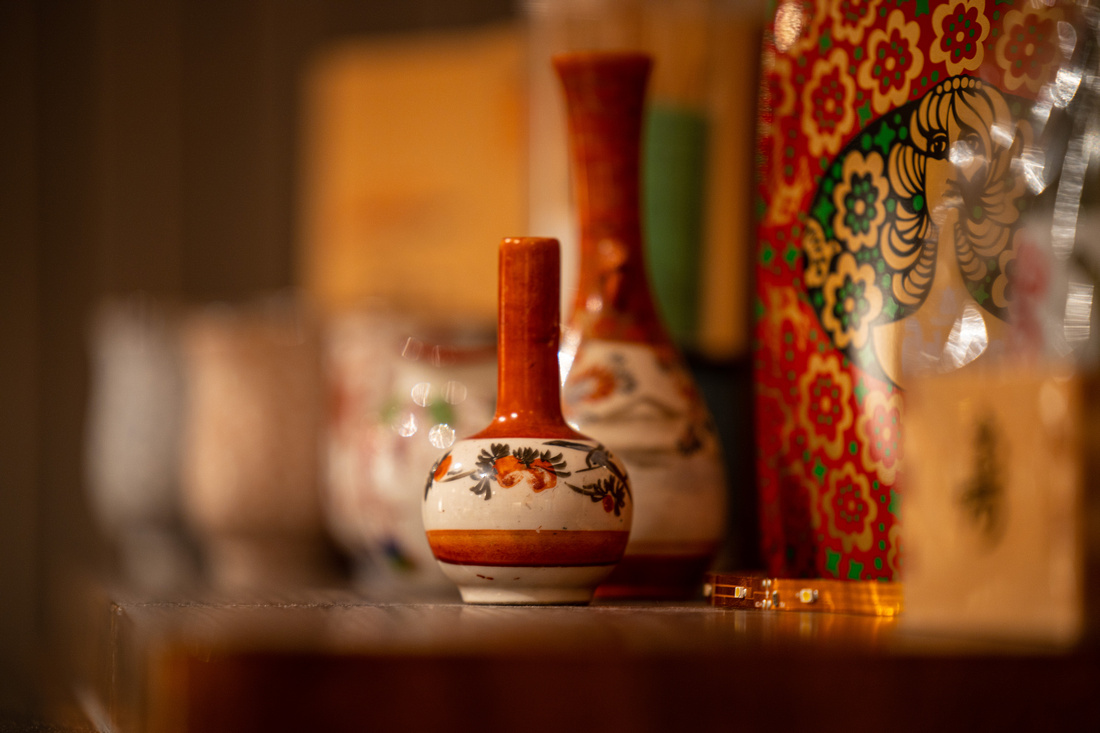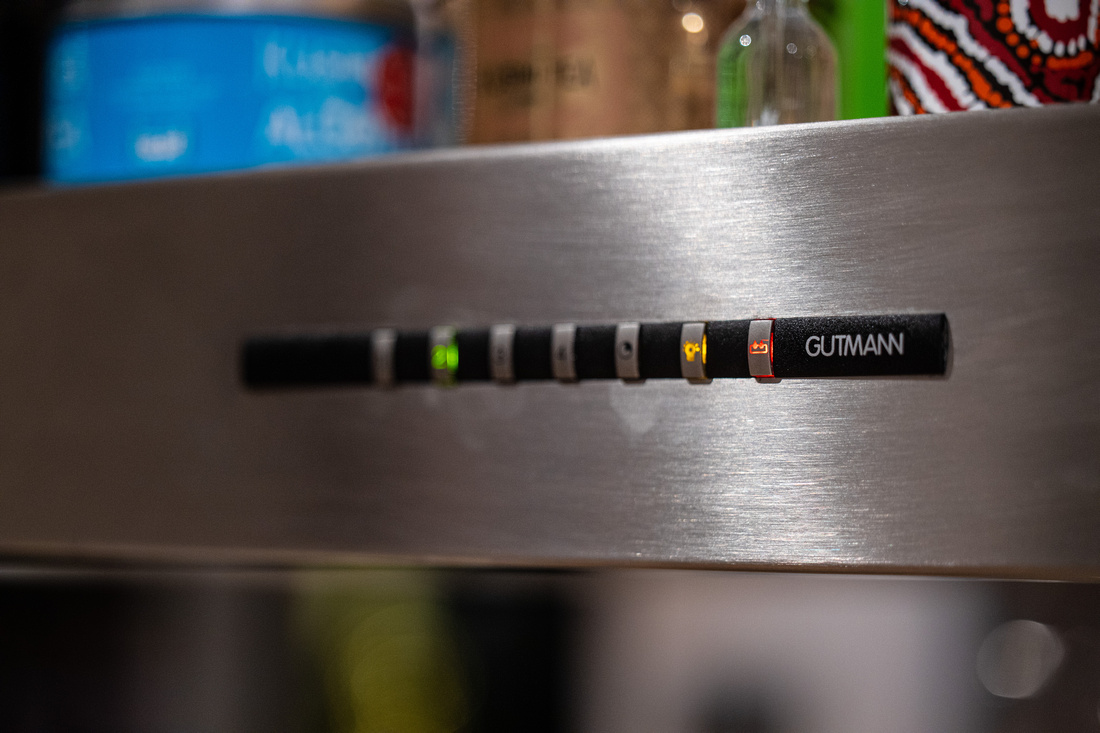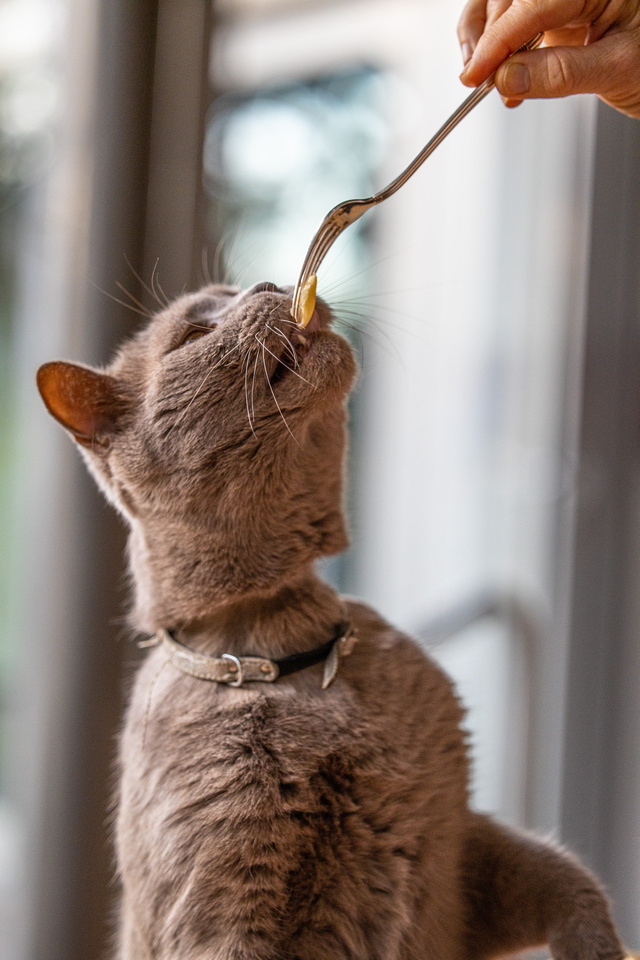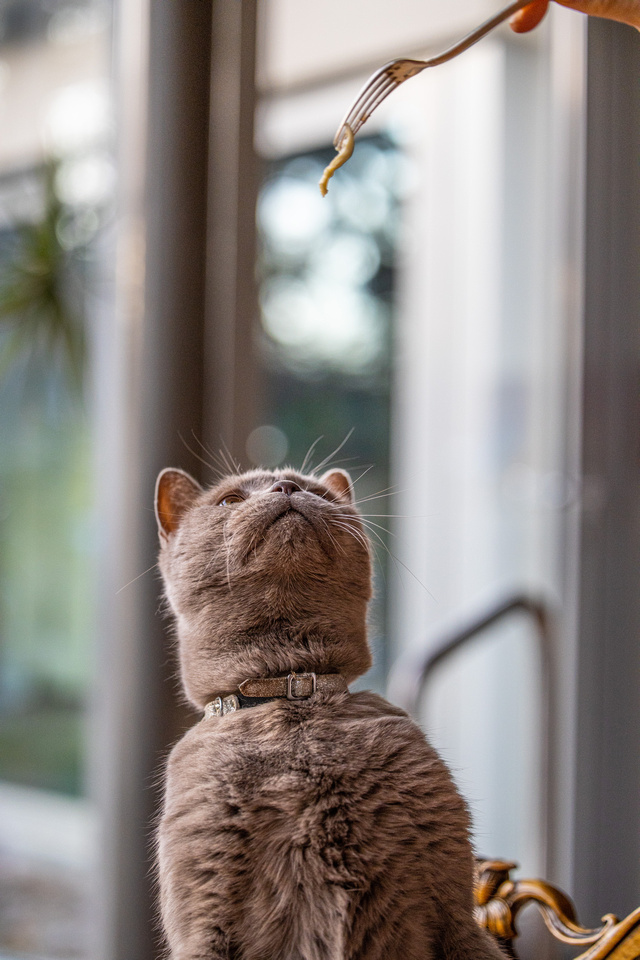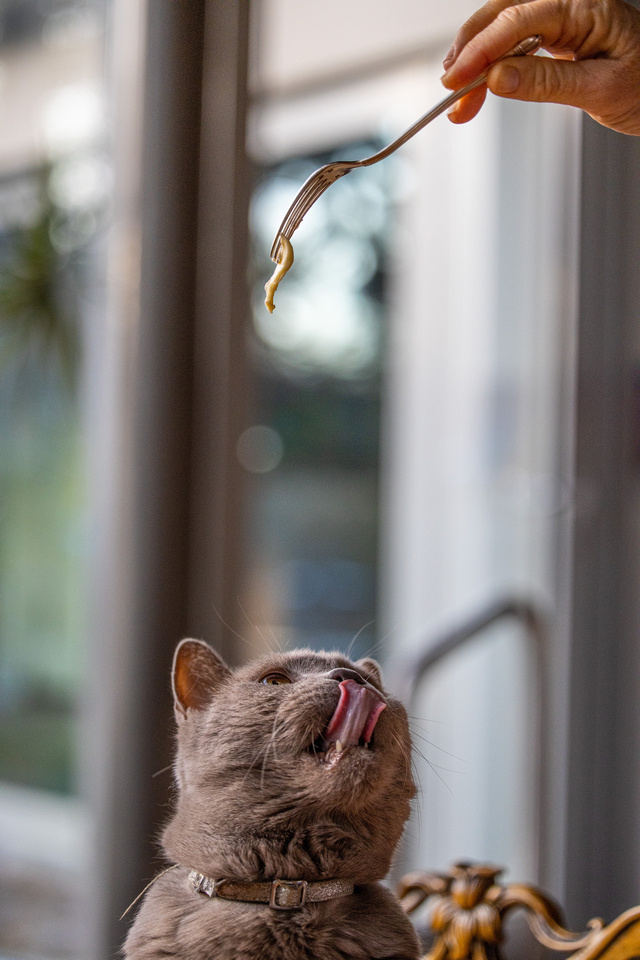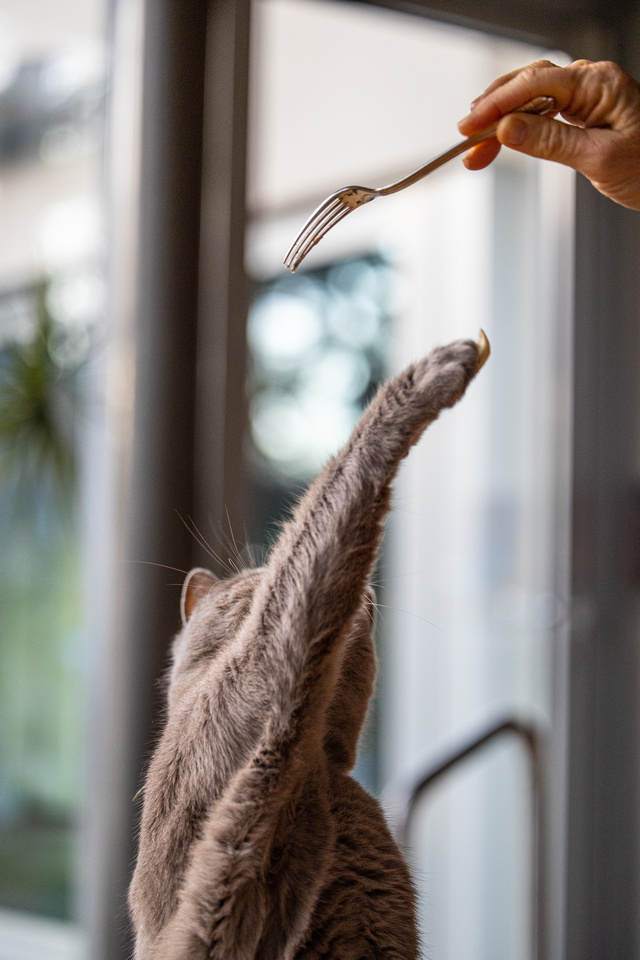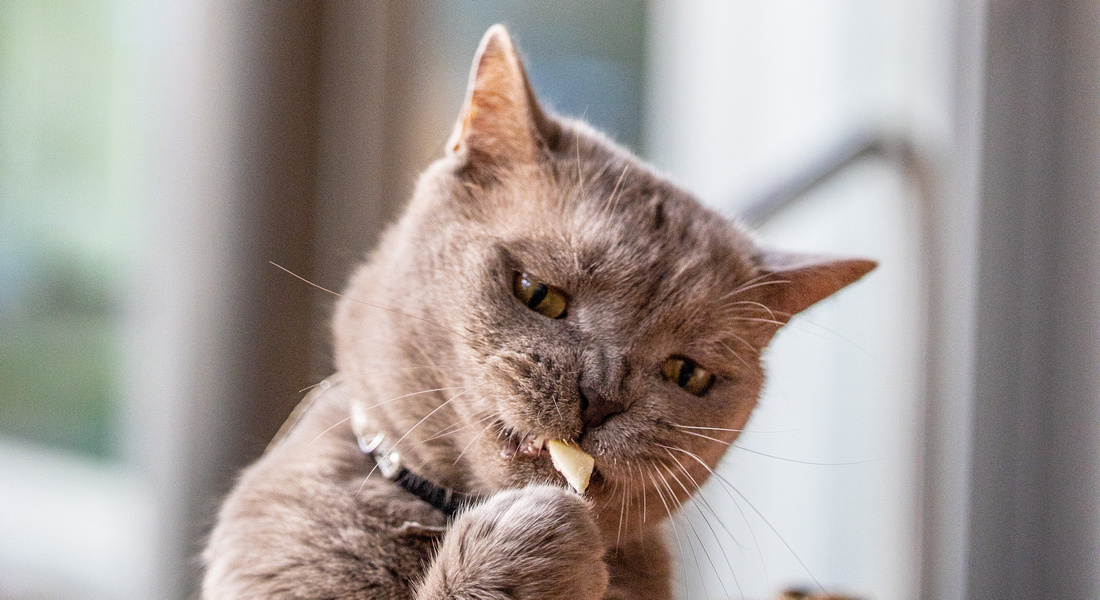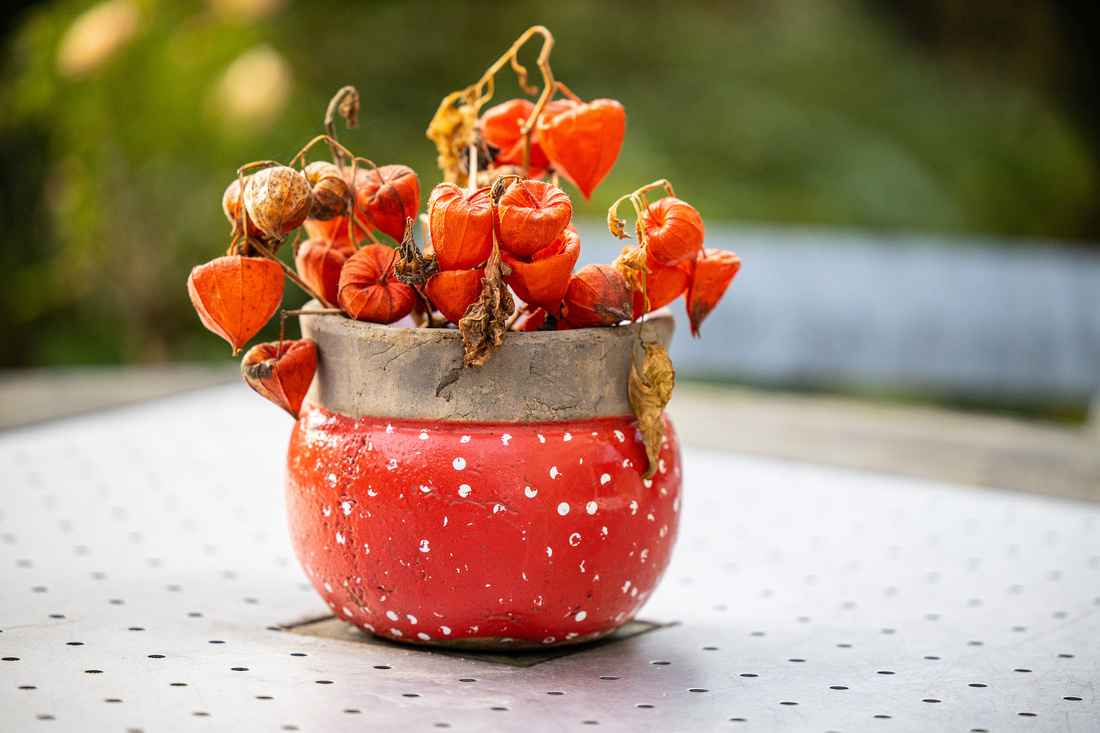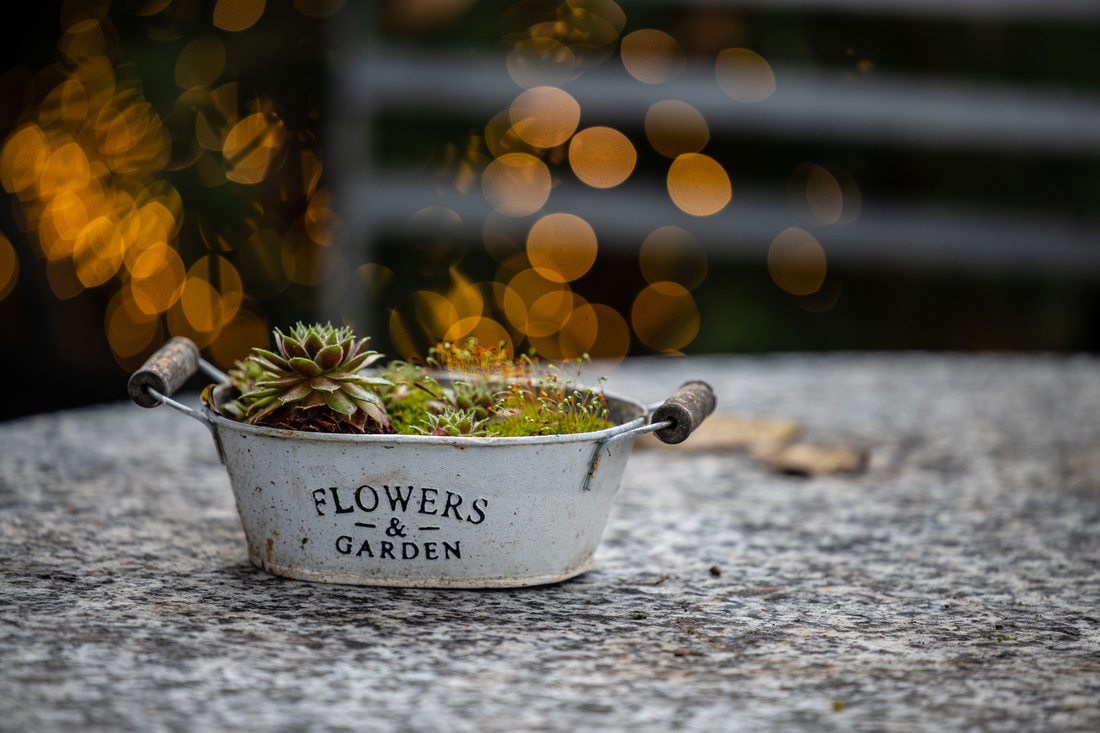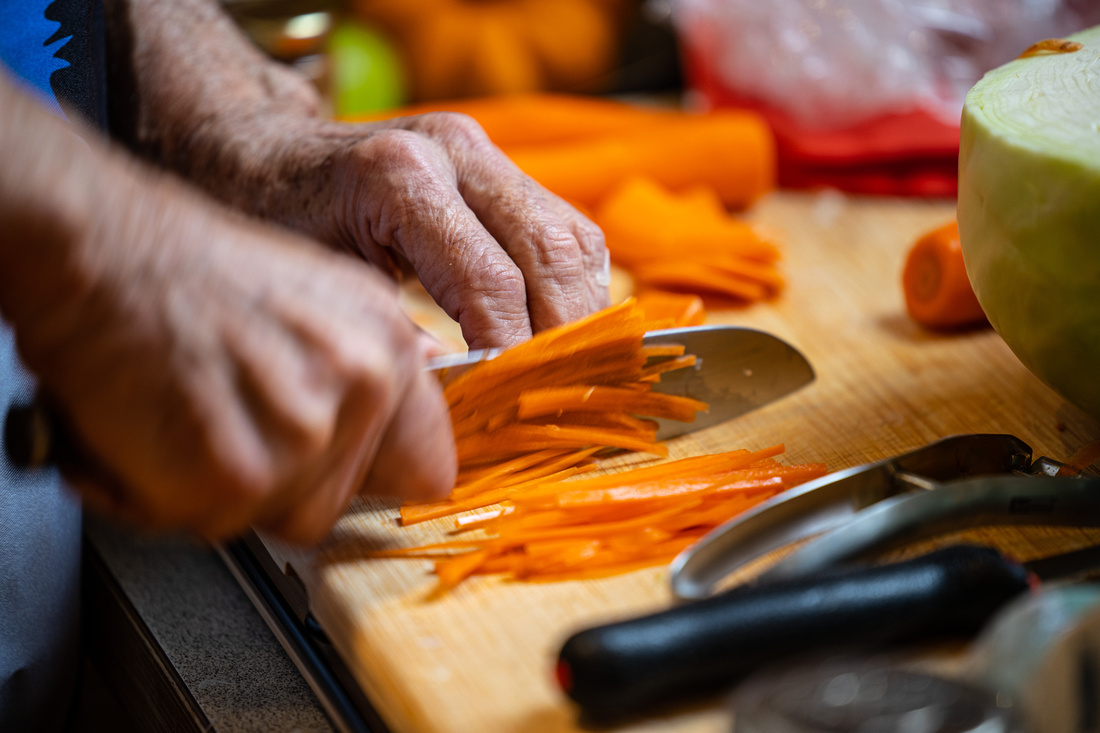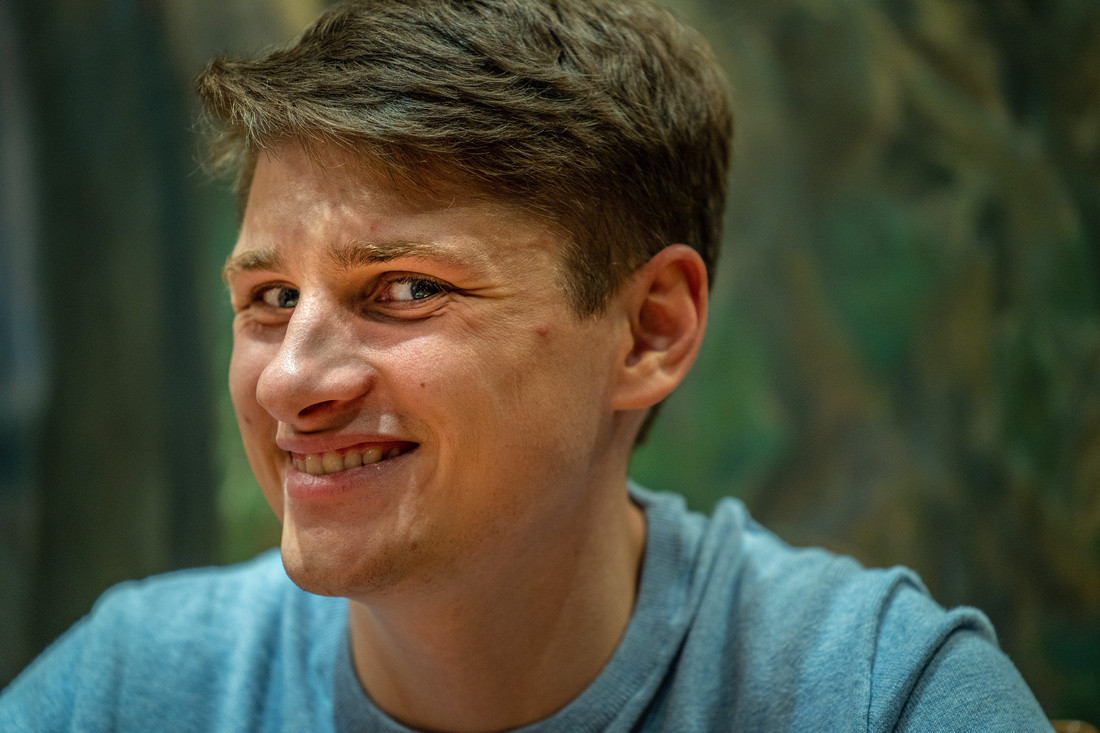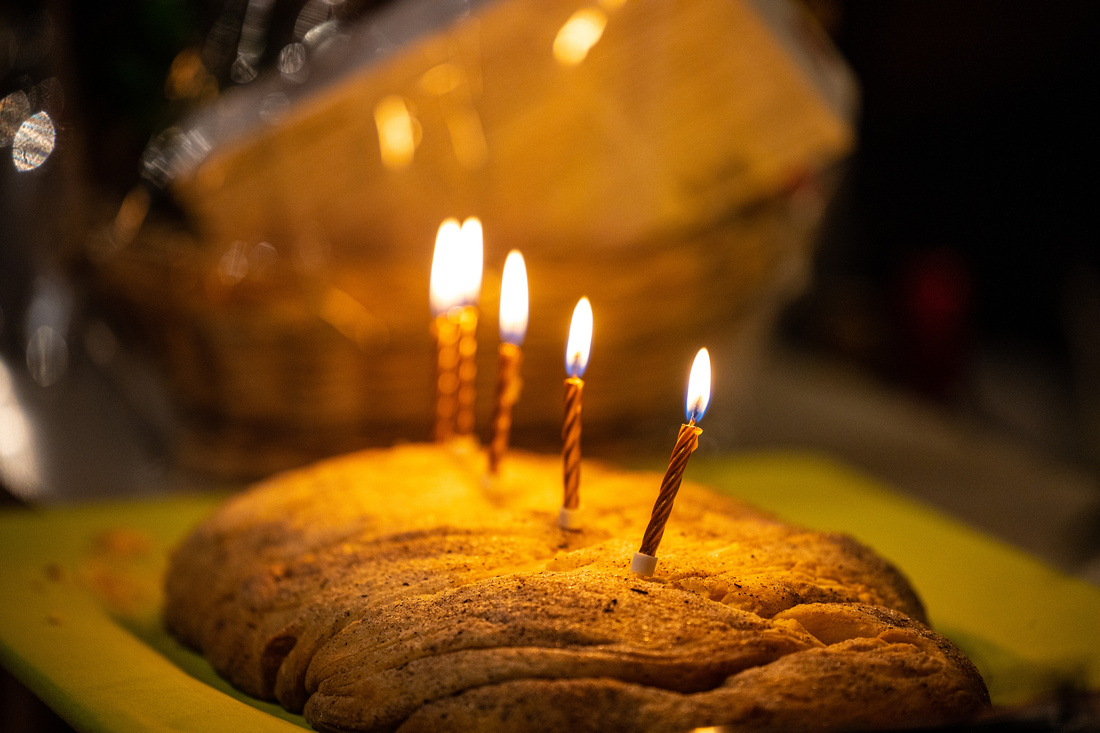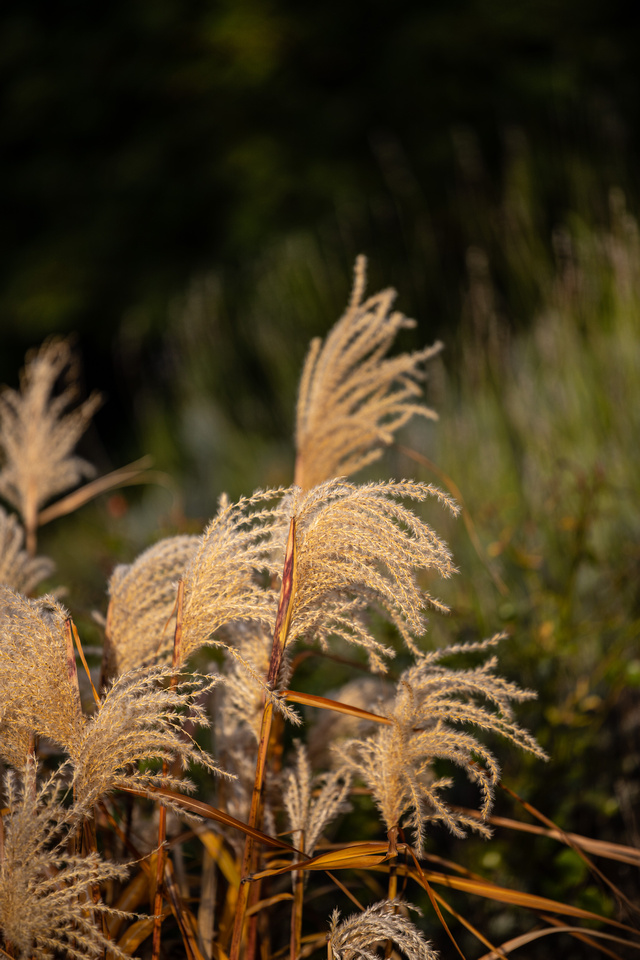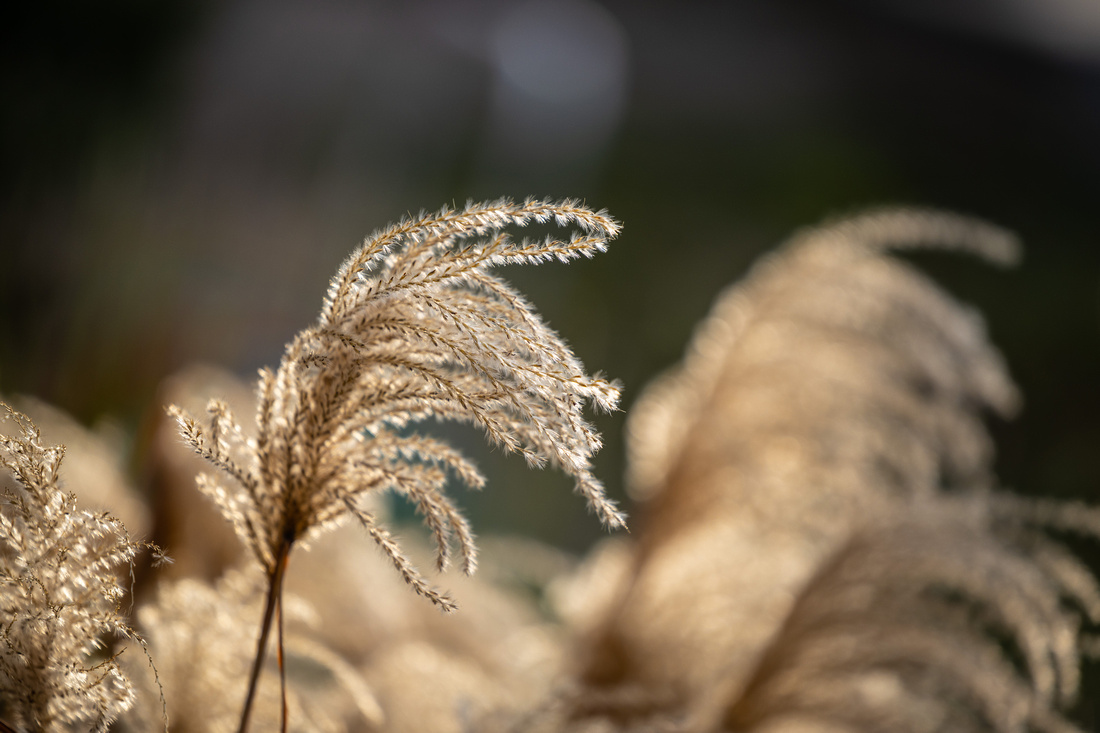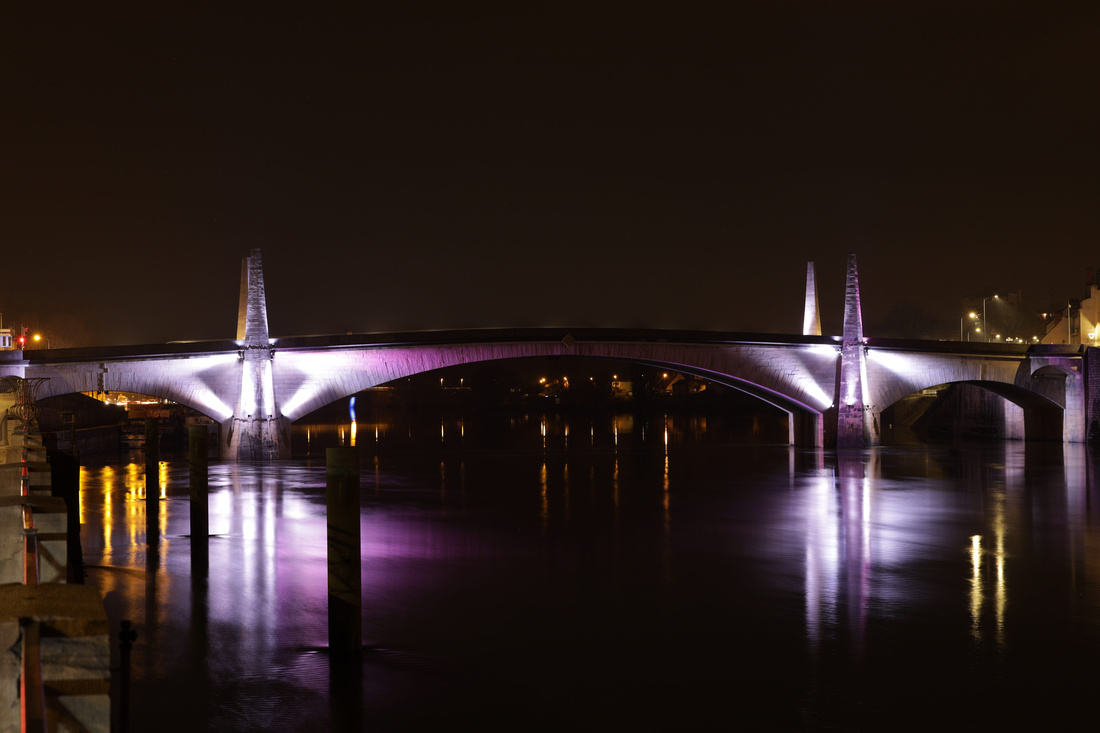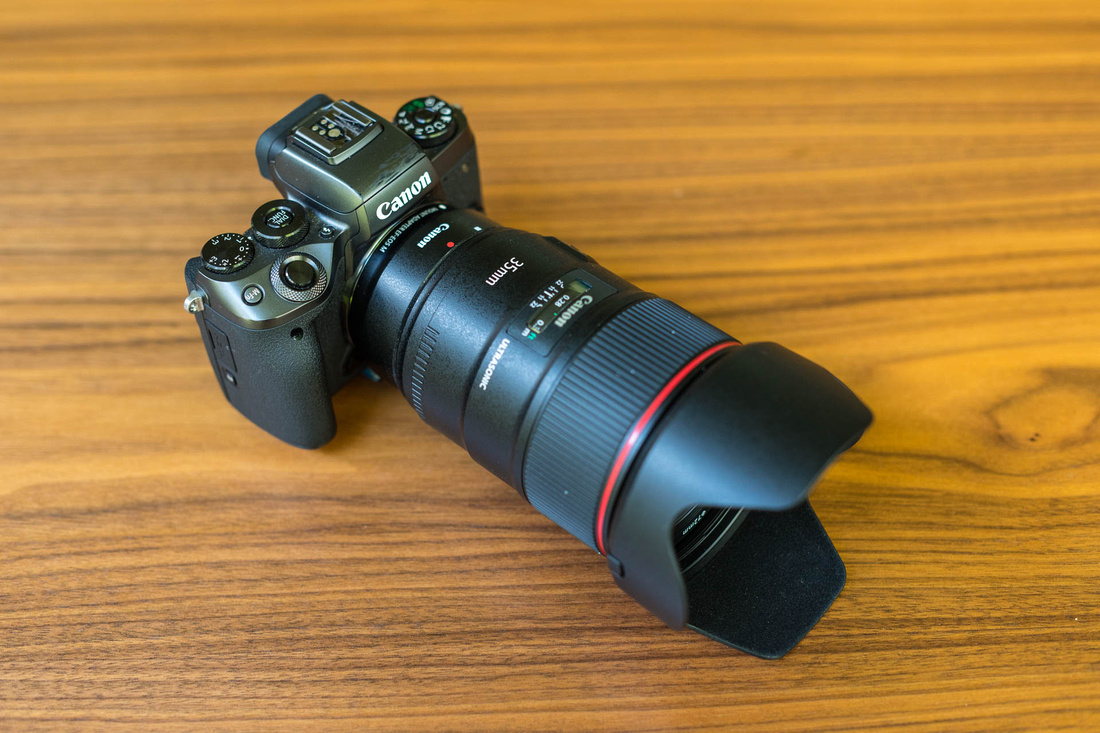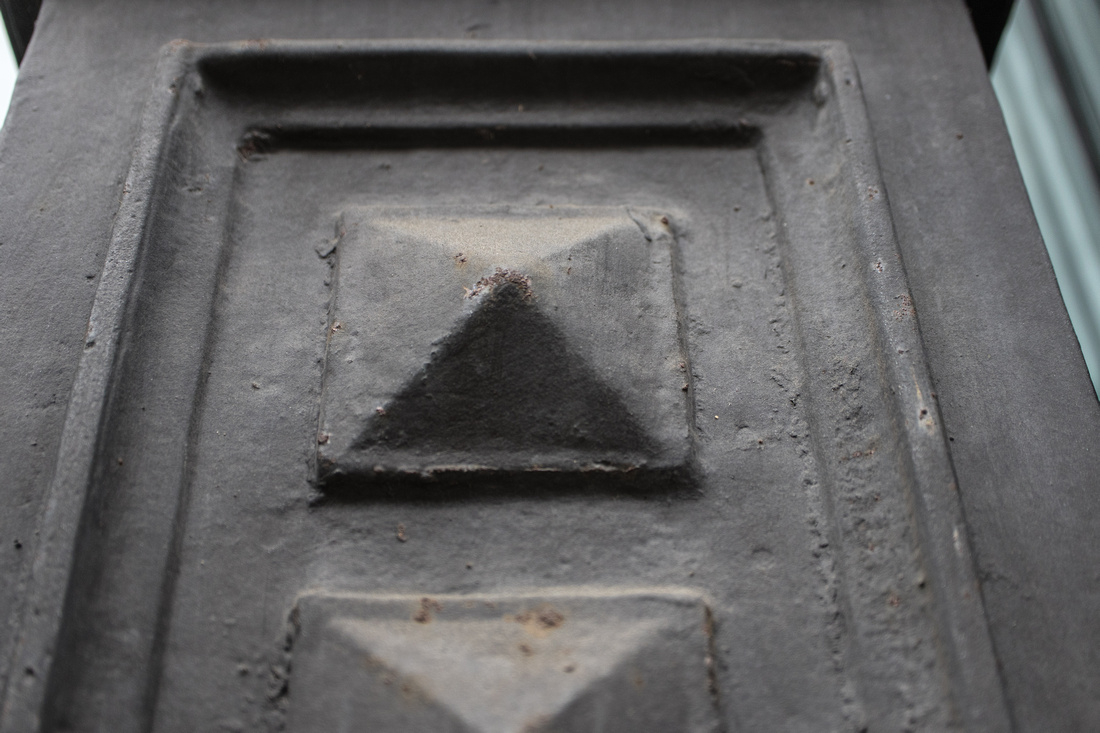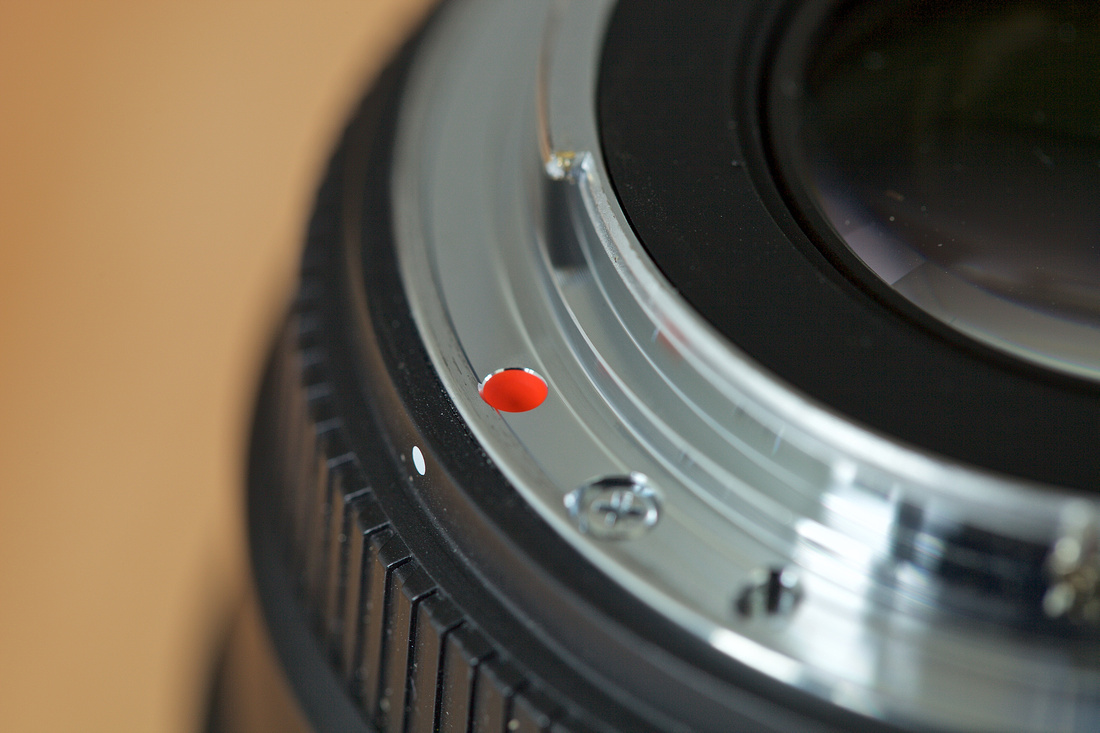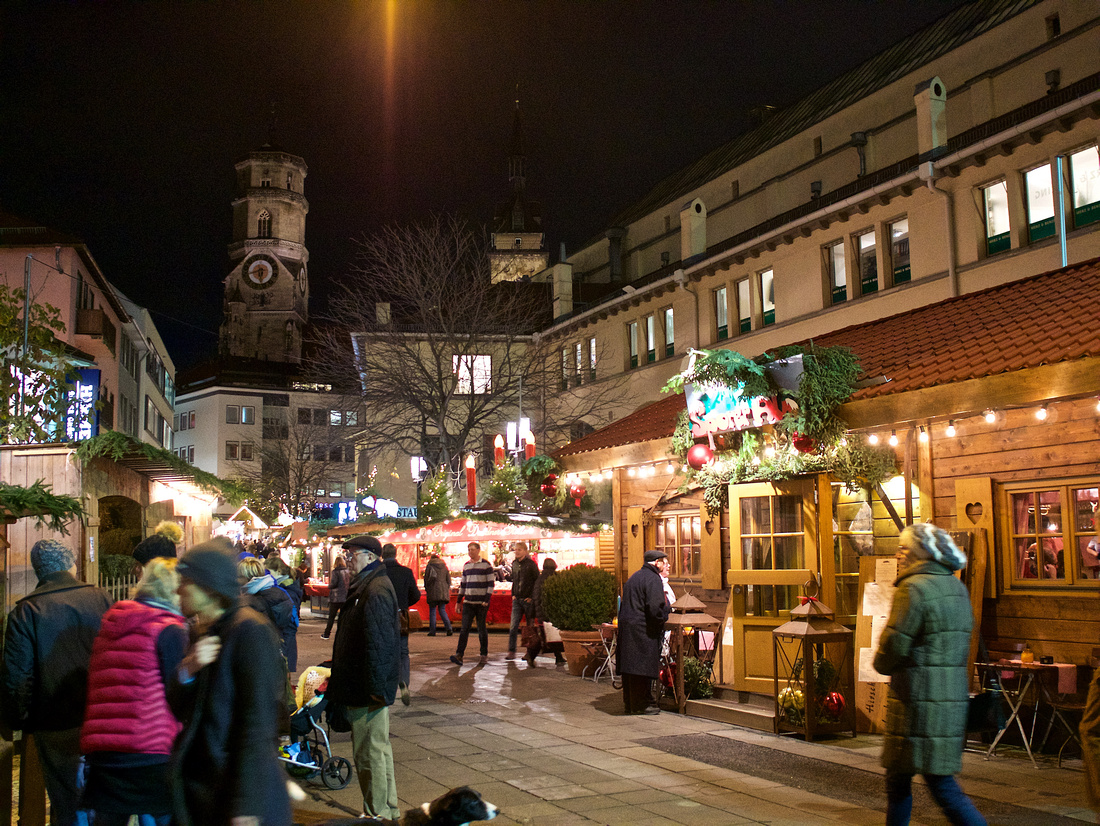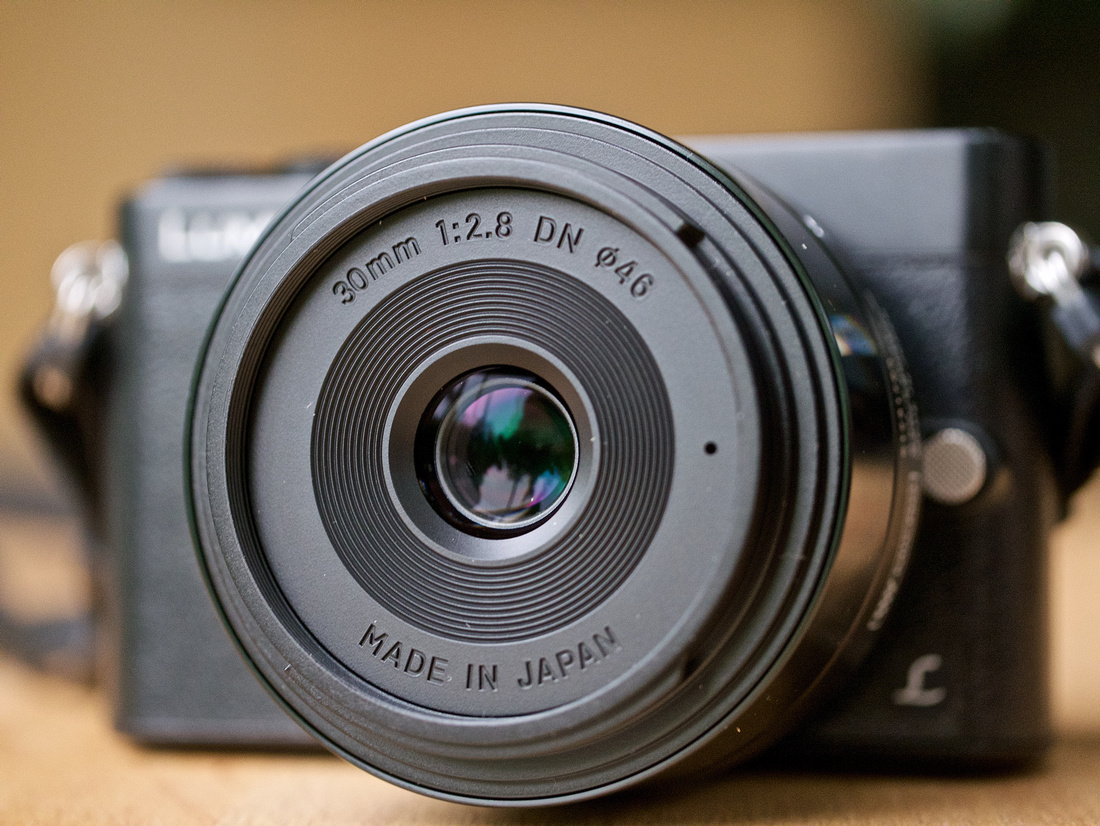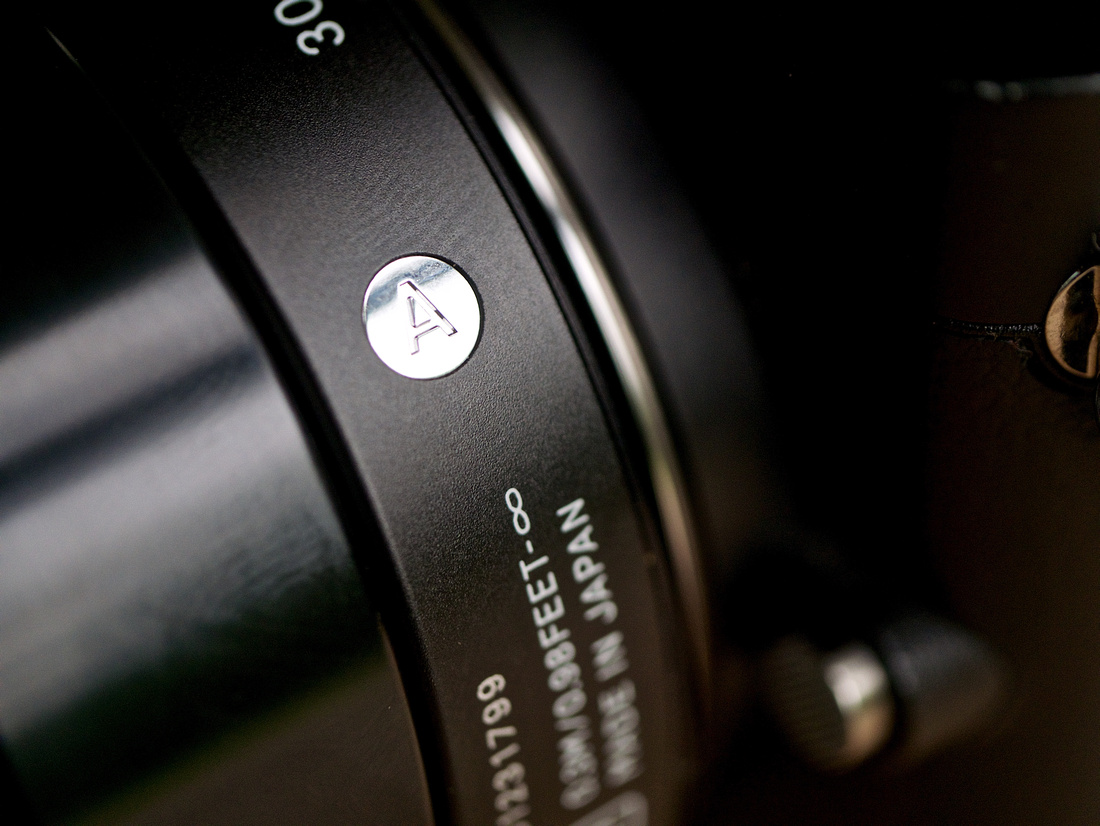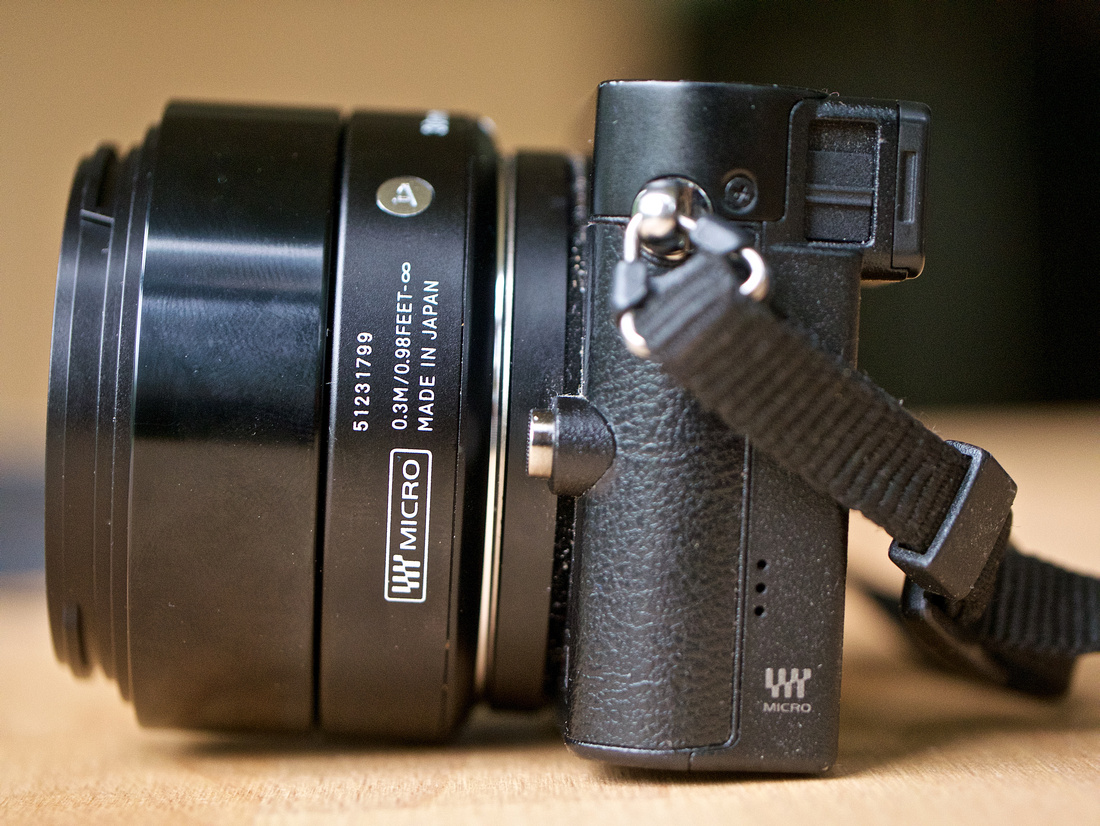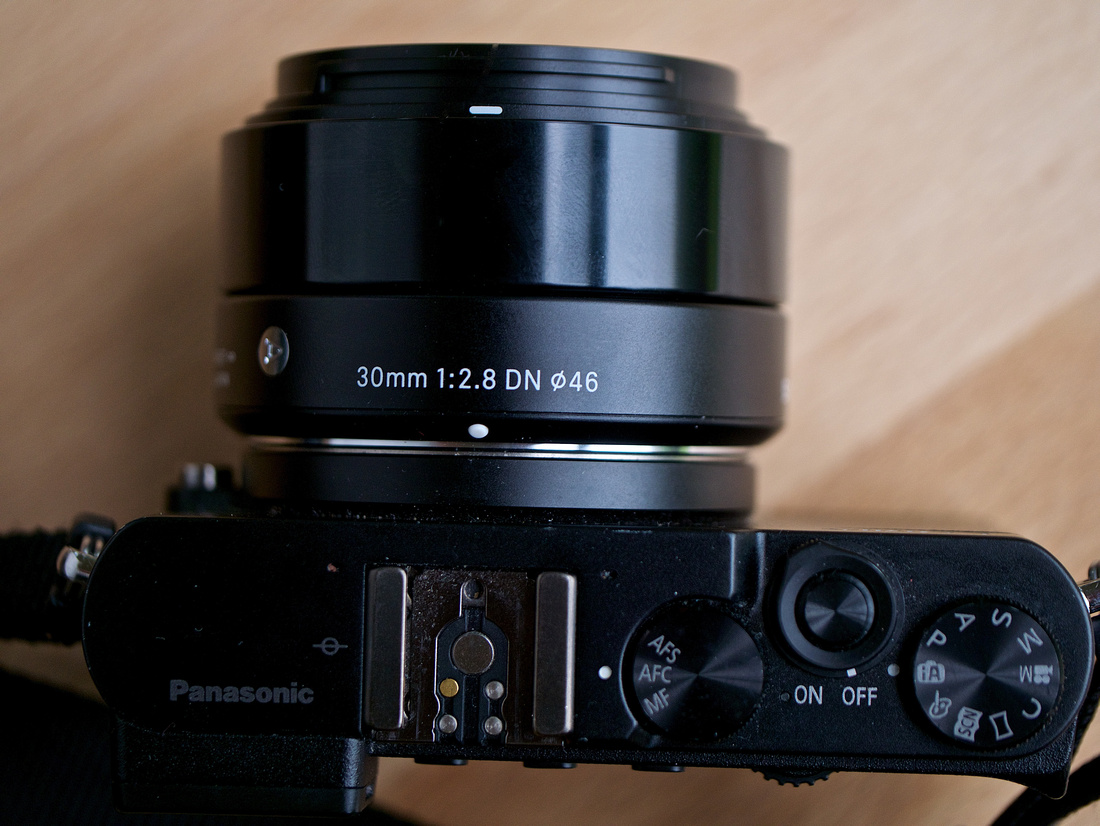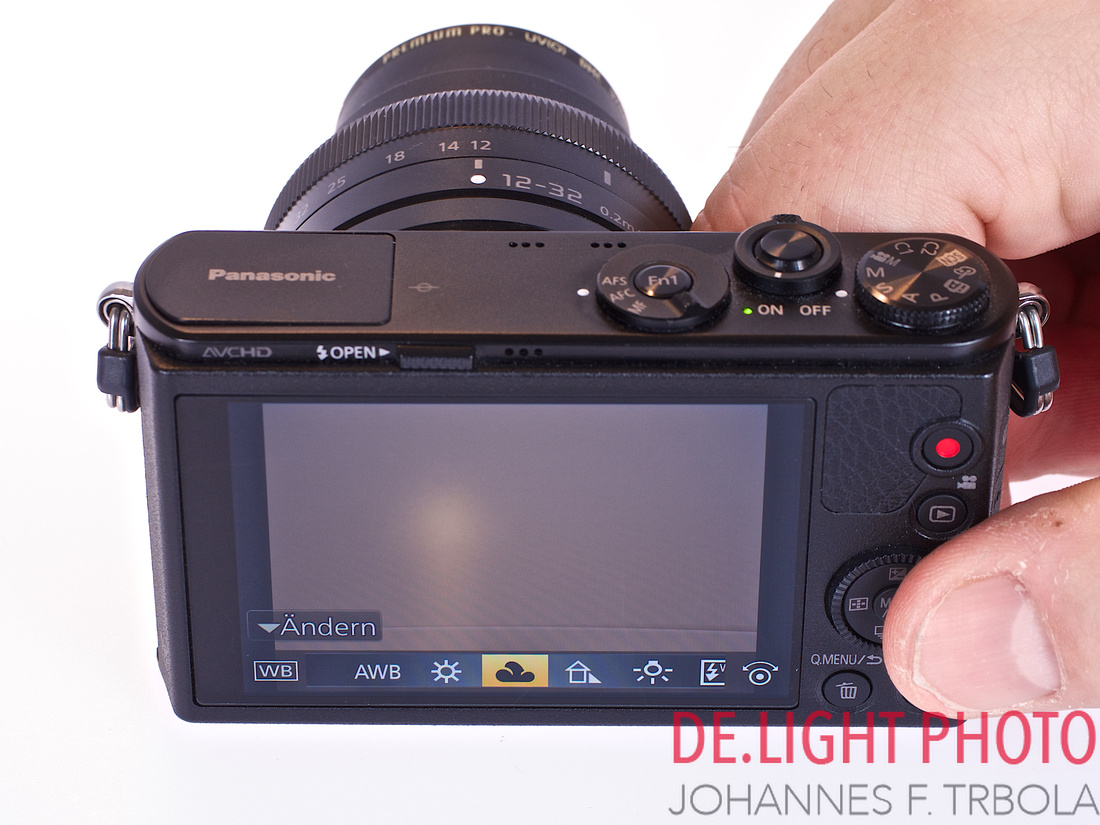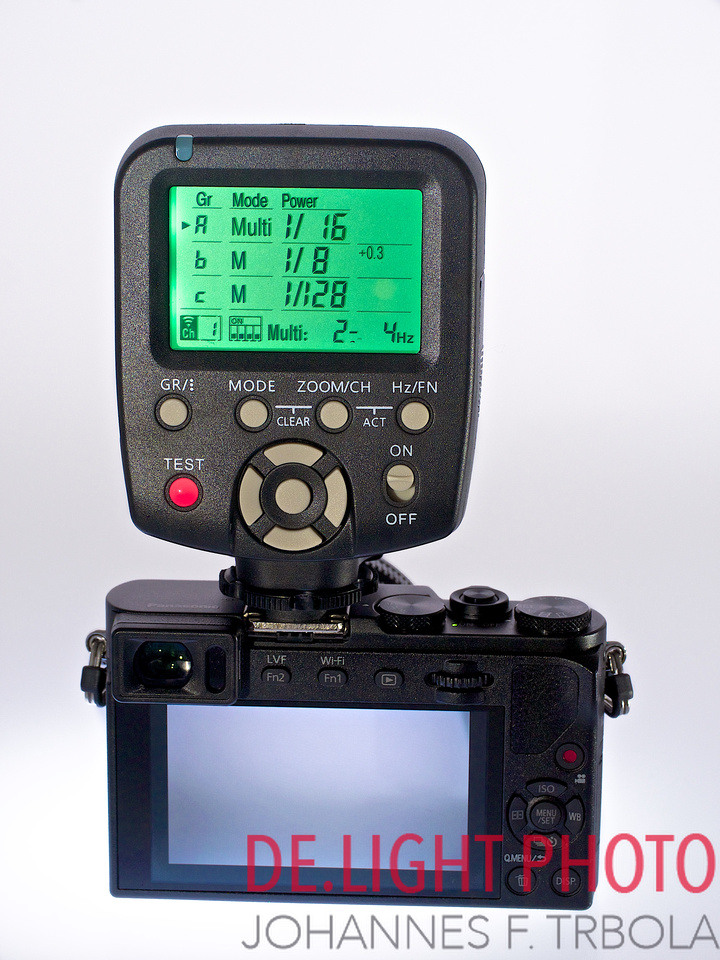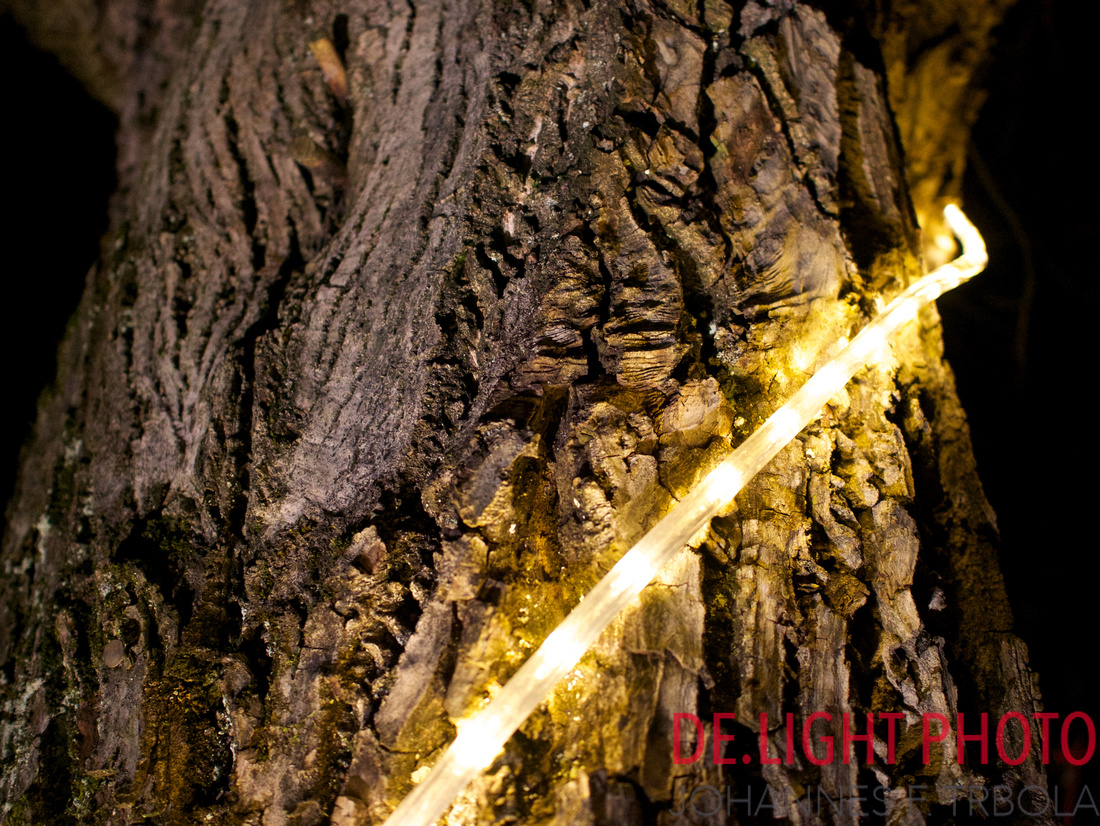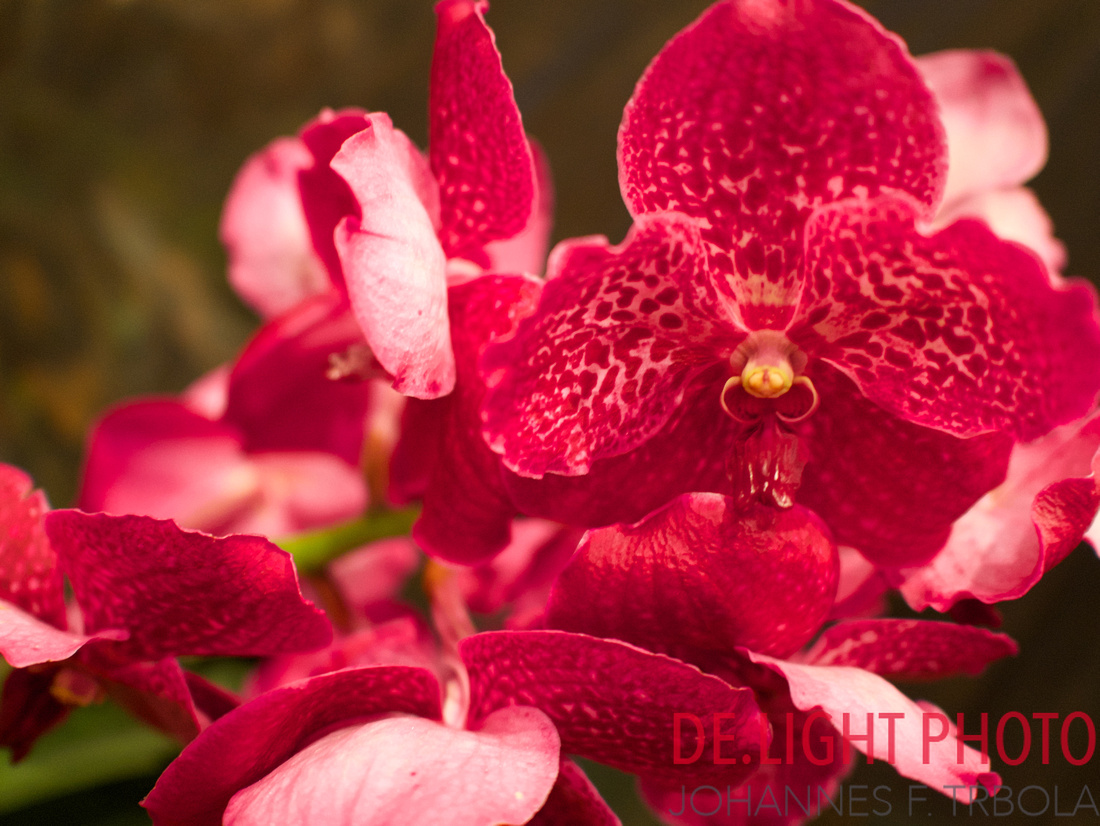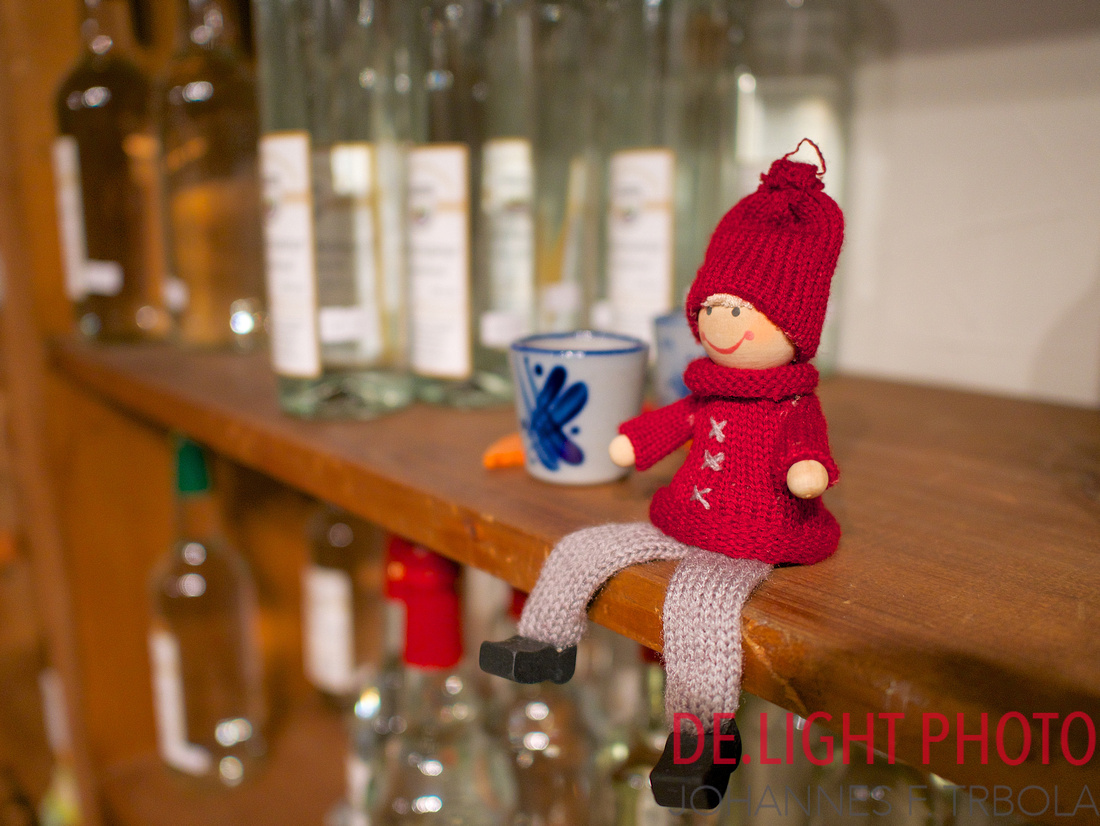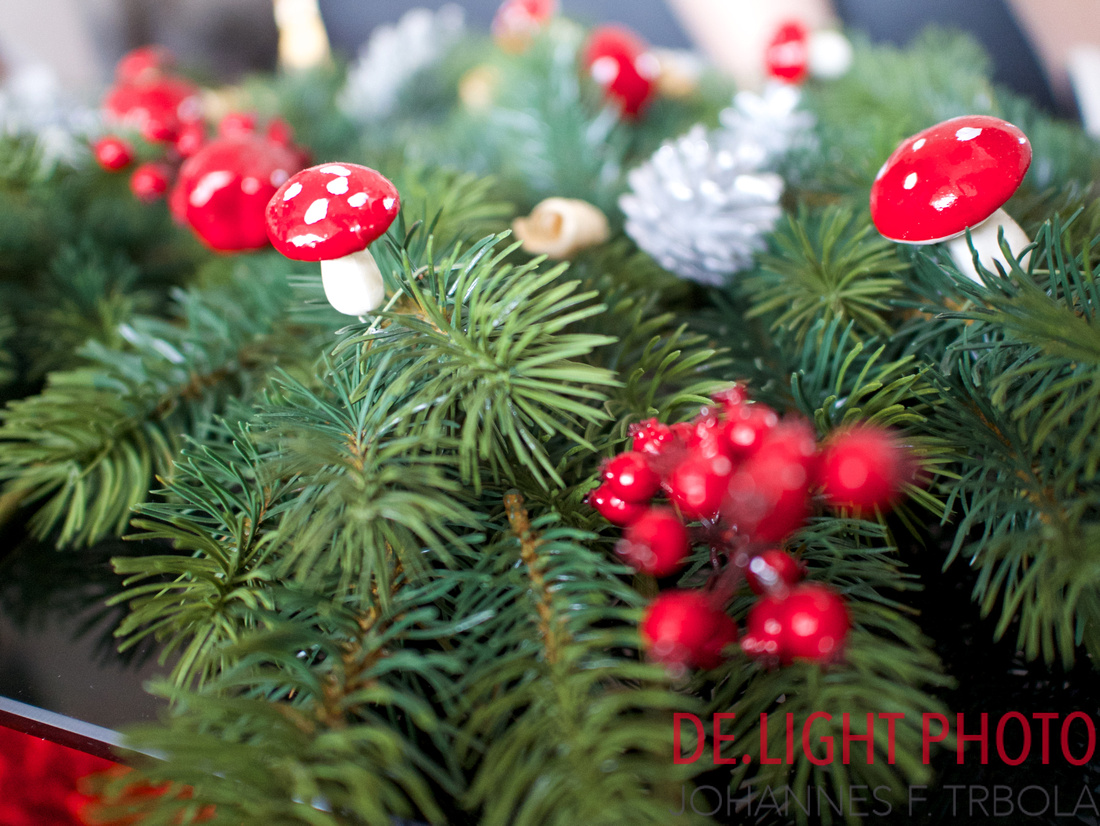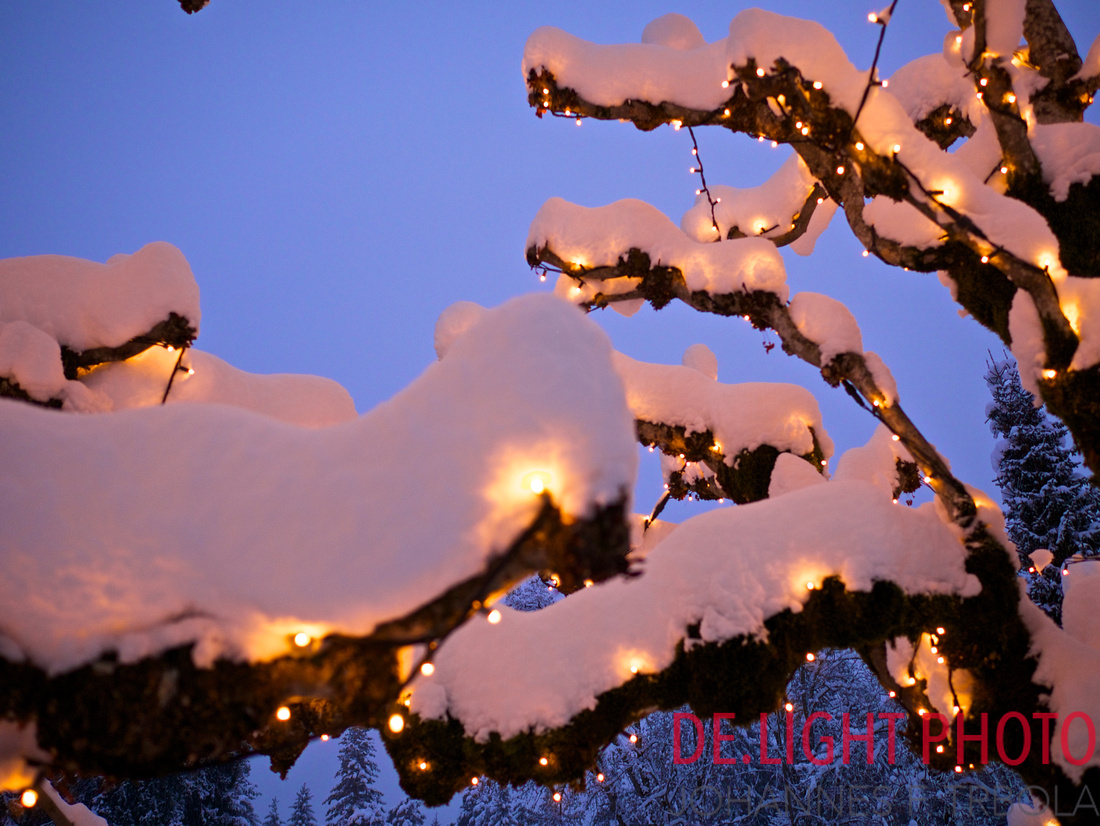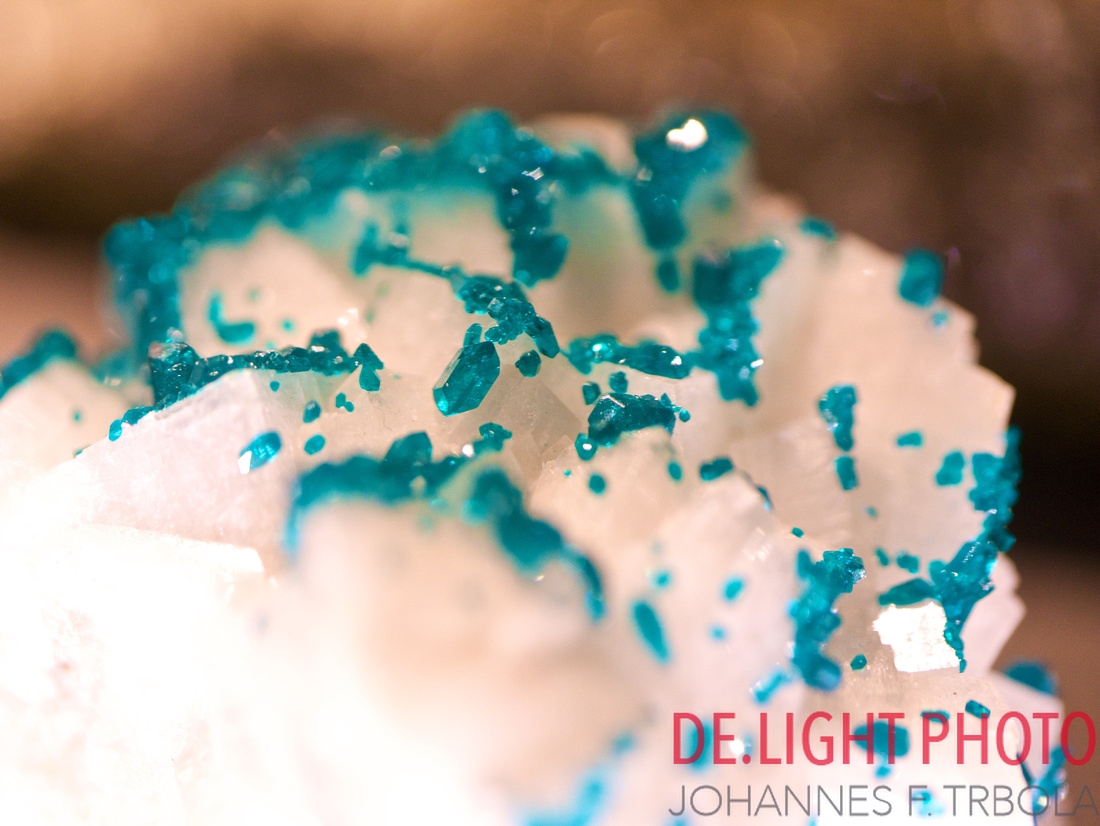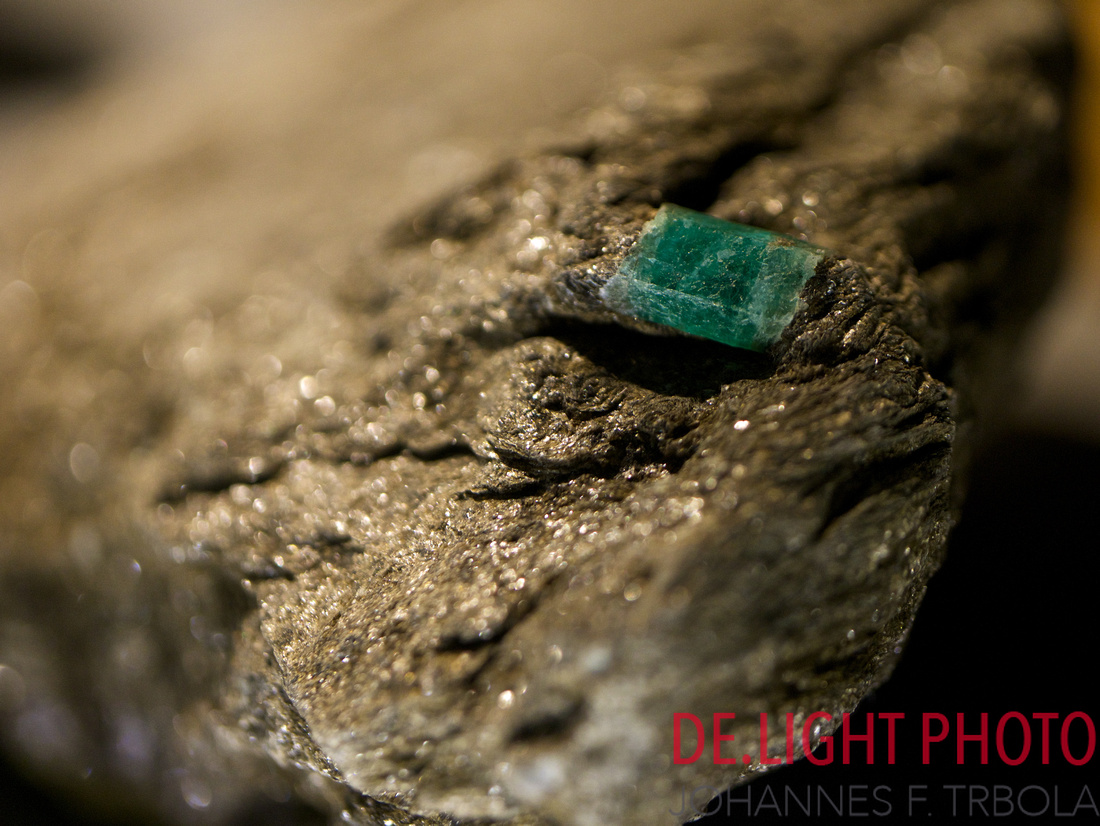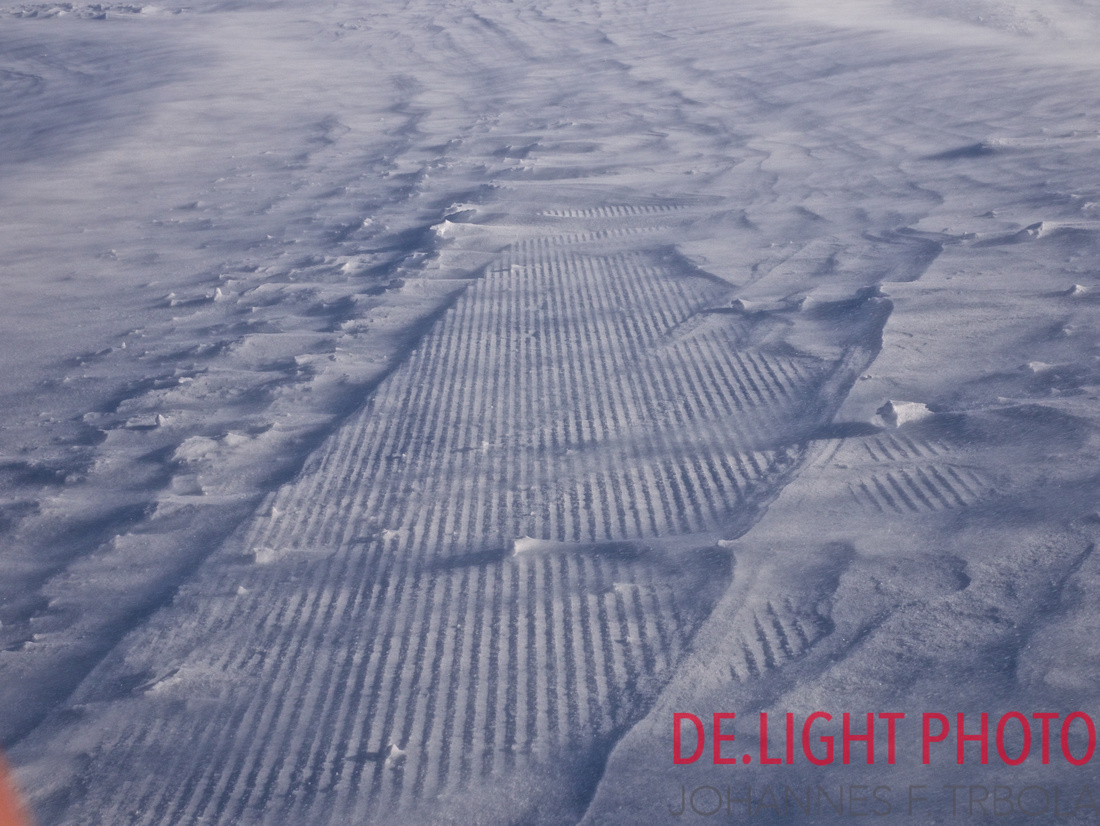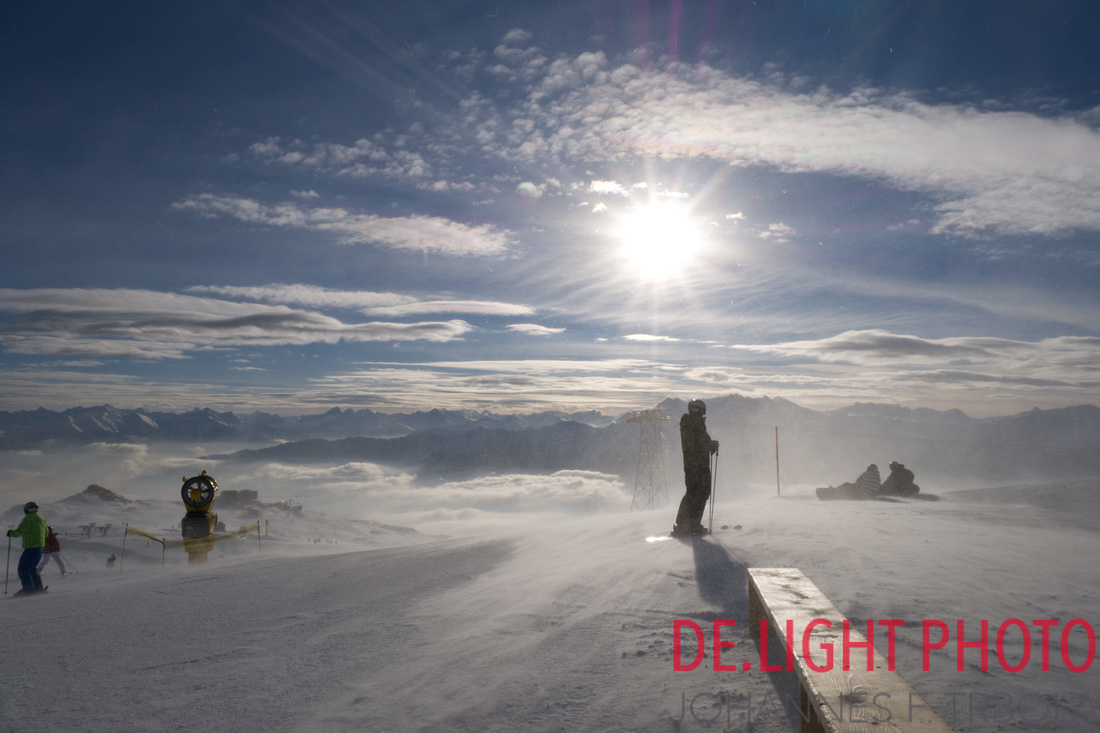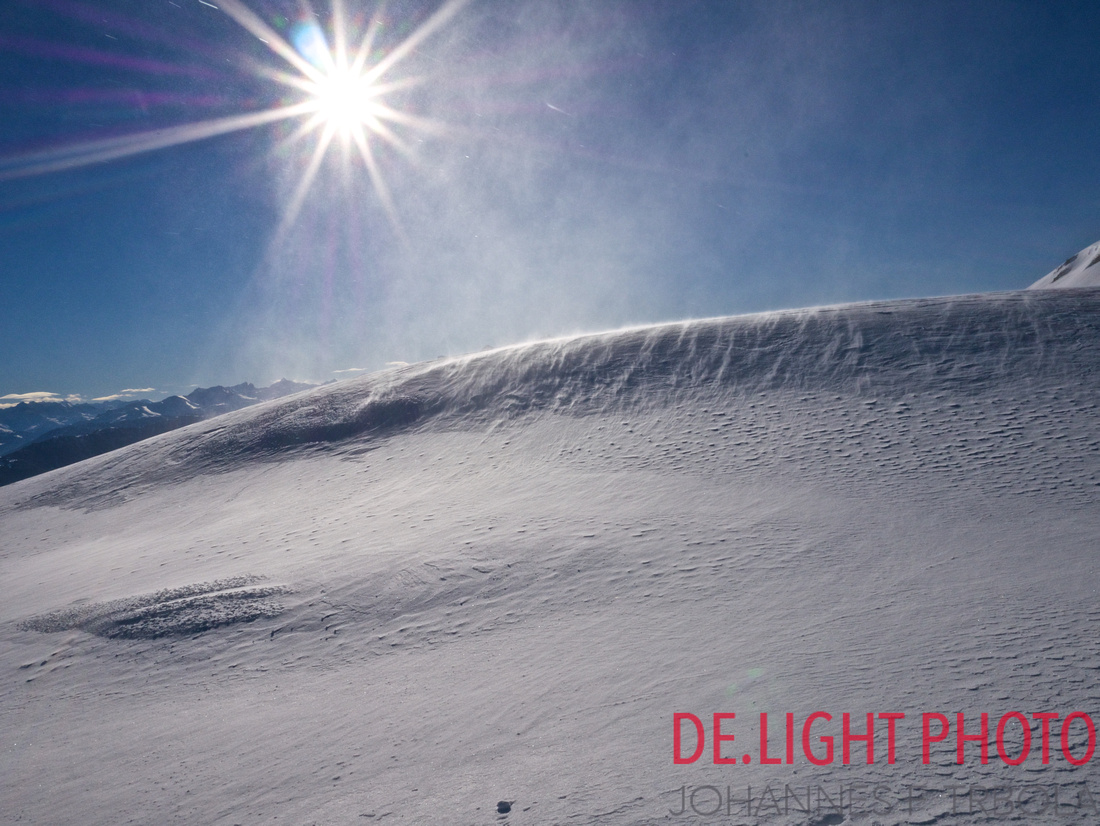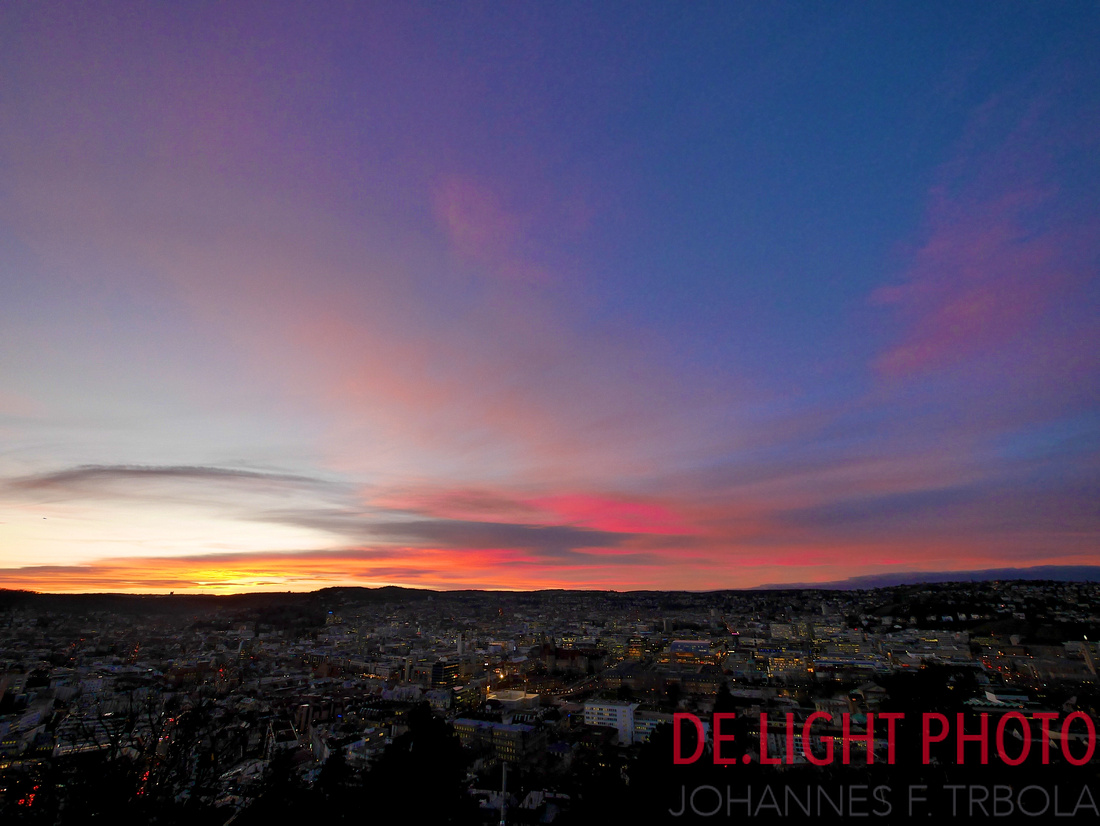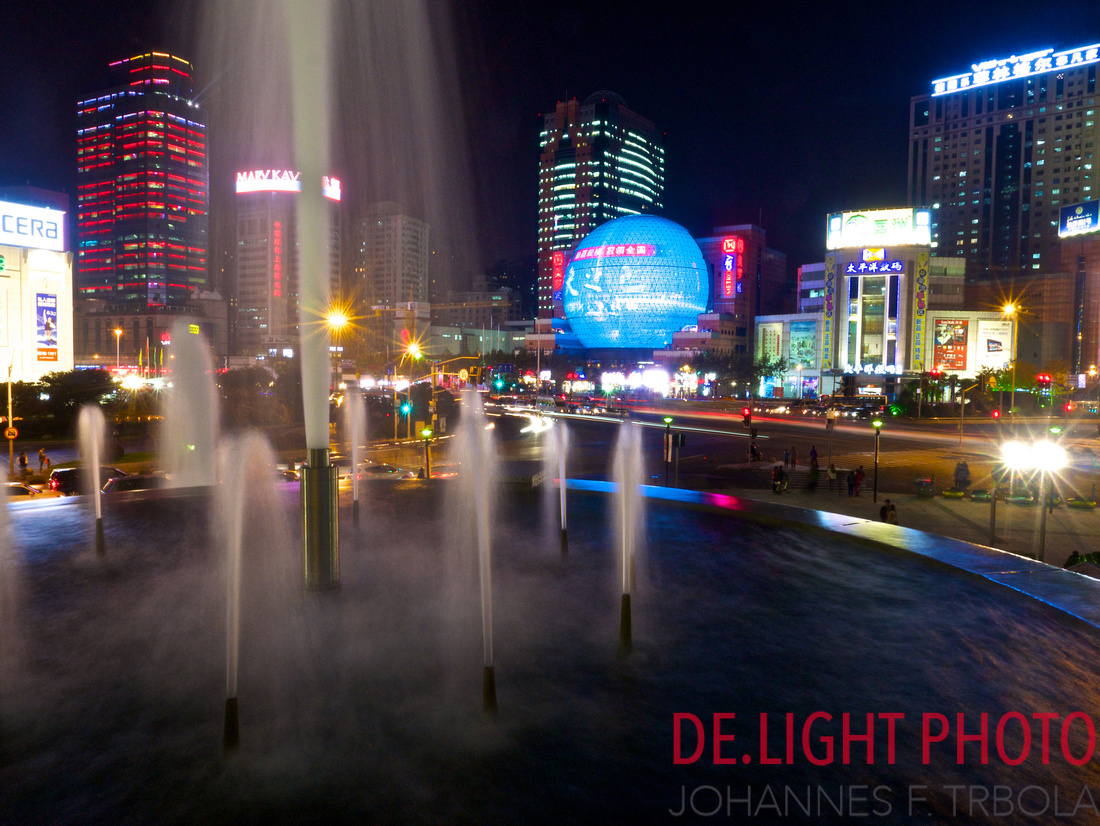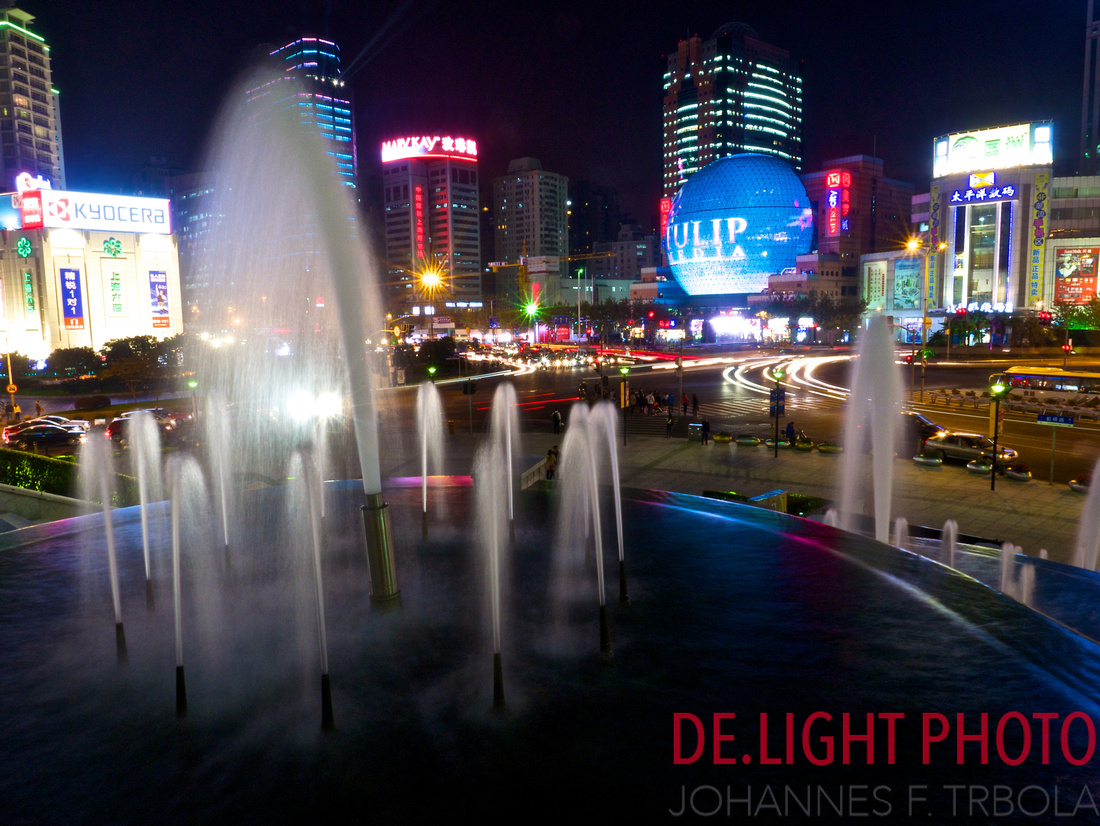Normally I refused to have "the holy trinity". I want to be different, having more options and to be able to break the barriers of the gold standard of this industry. That's why I have Zeiss lenses which not everybody has and why I love to shoot with f1.4 glass - or even faster.
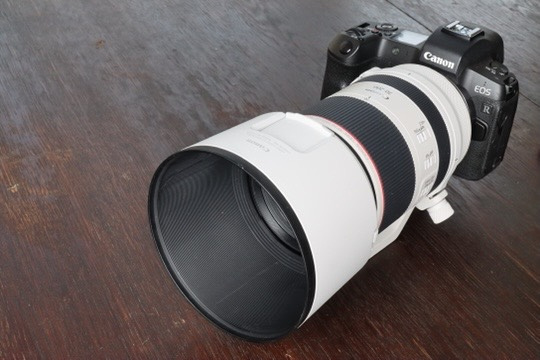
The R-mount changed the game. The RF holy trinity is quite compact and has features no other system is offering today:
- the ultra wide 15-35mm is the first ultra wide zoom in f2.8 with optical image stabilization (OIS) (Tamron has OIS, but it is 15-3mm)
- the standard 24-70mm is the first lens with OIS from a camera manufacturer (Tamron has one, too)
- the 70-200 is by fare the most compact and lightest 70-200mm lens on the market.
I decided to be different it makes sense to have the ultra wide as well as the tele zoom. And the 50mm f1.2 as a very fast lens in between...
Meanwhile my trinity is complete - and I am pretty happy...

The Canon EOS R with the 70-200 mm on the left and the 15-35mm on the right.....
This is the maximum performance I can carry inside of my business backpack... including a flash and a transmitter, battery charger, spare battery remote release....
The Lens
What's in the box....
Canon ships the Lens in a pretty large box, it comes with a huge lens hood and the Canon typical sack -which nobody really needs.... It is equipped with a tripod mount adapter which is removable. Unfortunately this tripod mount does not come with Arka Swiss Geometry - you have to mount the Arka Swiss....
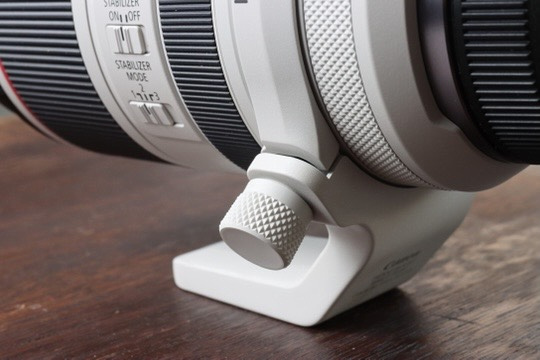
But since the lens is not that heavy It is not really necessary to use the tripod adapter... it is only balanced with the lens hood and at maximum length - which is the maximum focal length as well
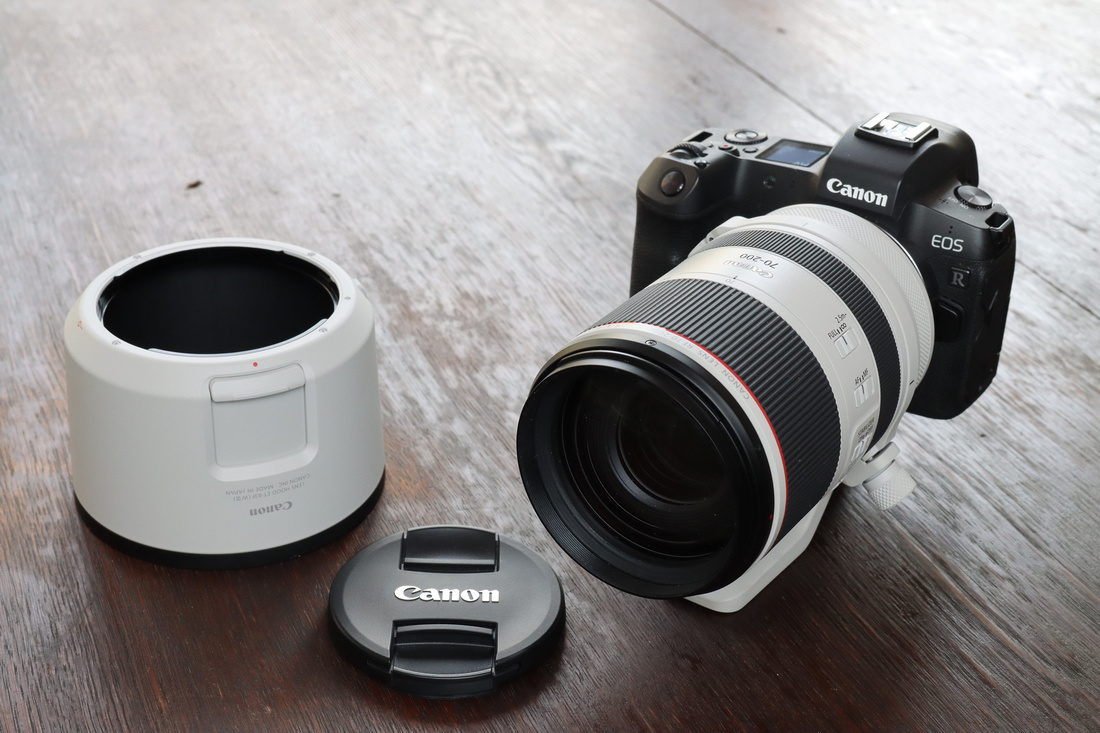
The lens itself is comparably small.
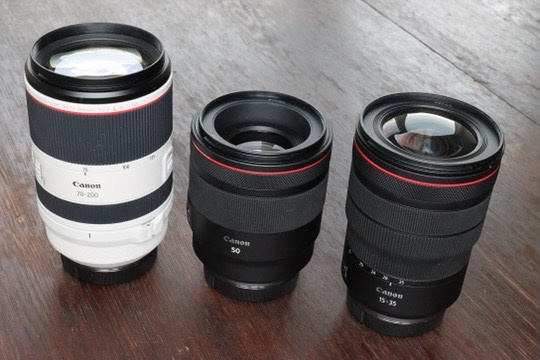
If you put the lenses side by side the lens is not much larger than the RF 15-35mm L IS USM (where the review is already planned.... just some data
| Lens | RF 70-200 | EF 70 -200 III | RF 24-70 | RF 85 f1.2 | RF 24-240 | RF 24 - 105 |
| Diameter mm | 89,9 | 88,9 | 88,5 | 103,2 | 80,4 | 83,5 |
| Length mm | 146 | 199 | 125,7 | 117,3 | 122,5 | 107,3 |
| Filter diameter mm | 77 | 77 | 82 | 82 | 72 | 77 |
| Weight g | 1070 | 1480 | 900 | 1195 | 750 | 700 |
This table shows how impressive this lens is in comparison with other Canon glass - especially in comparison with its EF or DSLR Rival. A clear advantage for the mirrorless system....
Build Quality
First of all: it is an L-Lens... This means it looks and feels solid. It has weather and dust sealing - but there is no spec according to IP standards available like Apple is doing it.
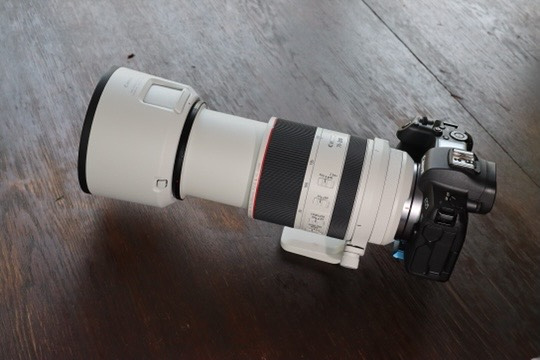
This image shows the lens @ 200mm focal length with the "native" lens hood: yes it zooms out... for me not a big issue, my previous L-Zooms (100-400; 28-300) did the same. The front rubber ring is the zoom ring, than you see the switches next is the manual focusing ring and behind the tripod mount adapter comes the control ring...
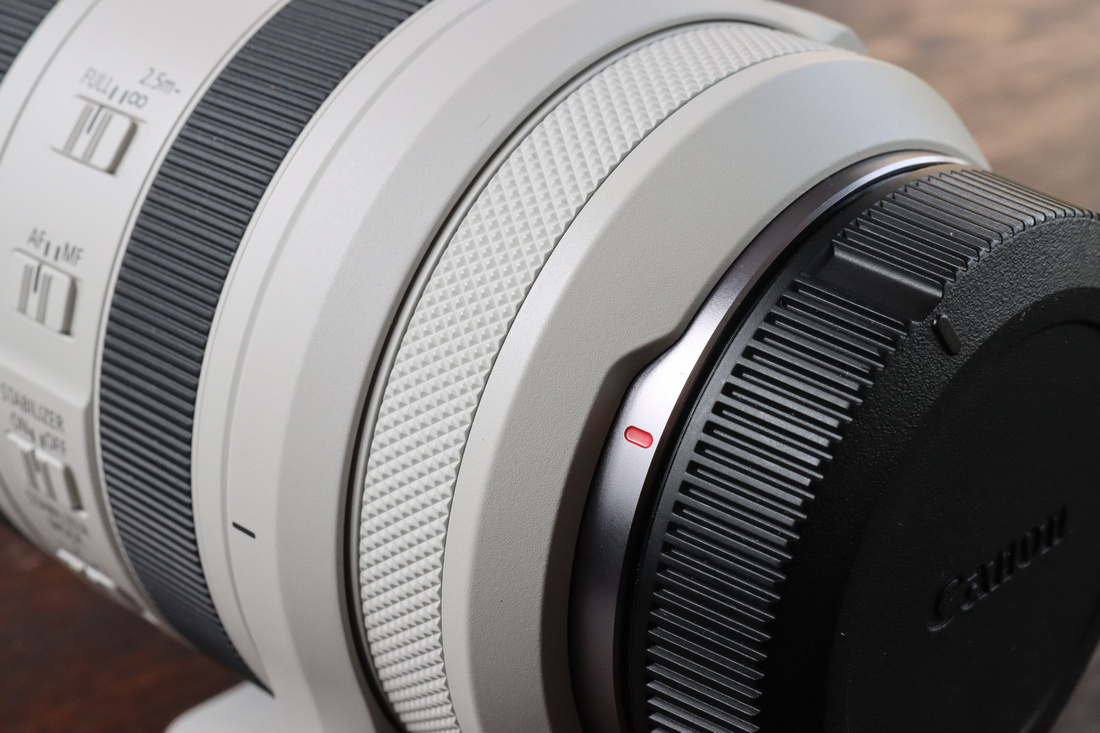
An interesting feature is the red mark close to slight "figure" in the lens body: the inner metal part moves out.... this is the point wehre you have to mount the lens to the body. I was missing the nob on the top of the lenses which you have in the former generations. This can work as well, but you have to get used to it.
Unfortunately the control ring adapter is different....
Another interesting feature in the build are 2 marks for the orientation of the lens relative not the tripod mount.
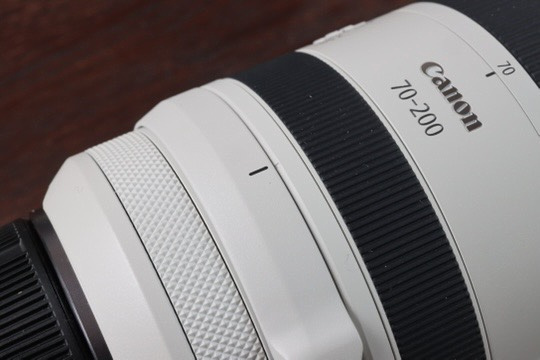
This is the position for landscape orientation: there is a black mark in the adapter and a groove in the lens body...
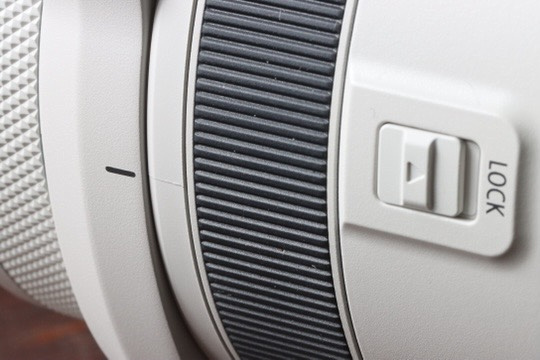
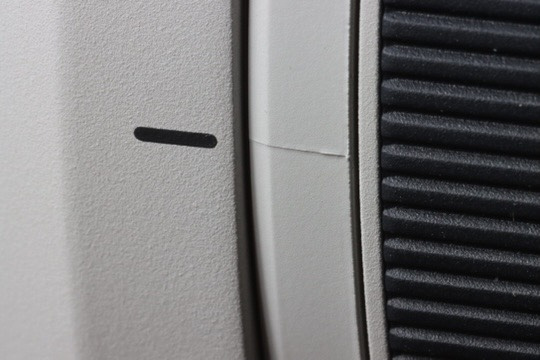
For the portrait orientation there is a 2nd mark but this time it is litte ridge... easy to perform even in dark situations.
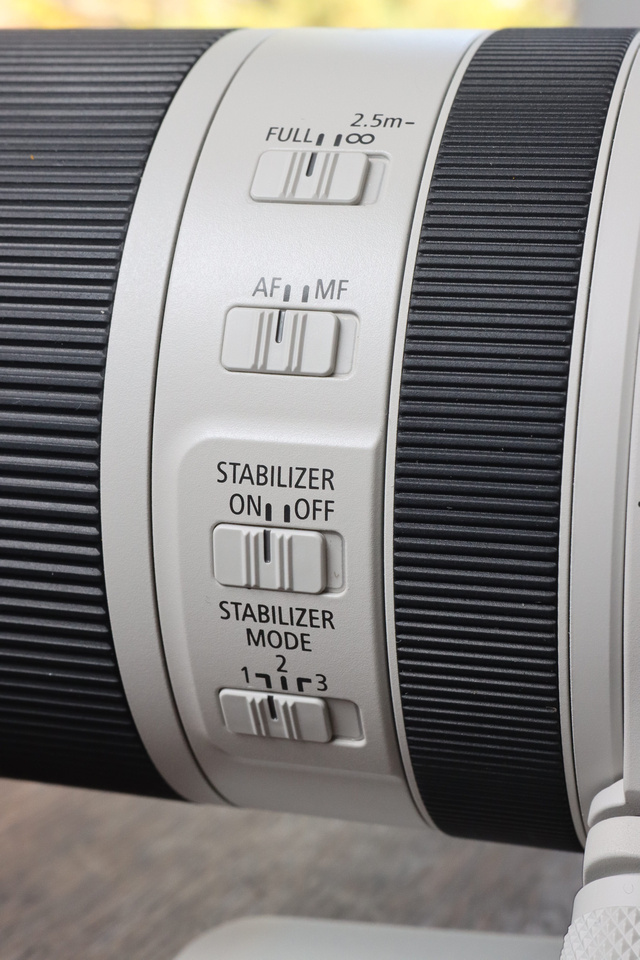
The lens itself comes with a couple of control switches. From top to bottom:
- length limitation
- you can limit the focusing range from 2.5m to infinity which is handsome for sport and wildlife situations....
- AF/MF switch
- Stabilizer on/of
- stabilizer mode switch with 3 positions
- 1 is normal
- 2 is for panning
- 3 is for IS working only for the release of the shot....
The lens hood I huge. It has the advantage to have a little opening on the top for adjusting a polarizing filter. For my taste the lens hood is hard to carry...
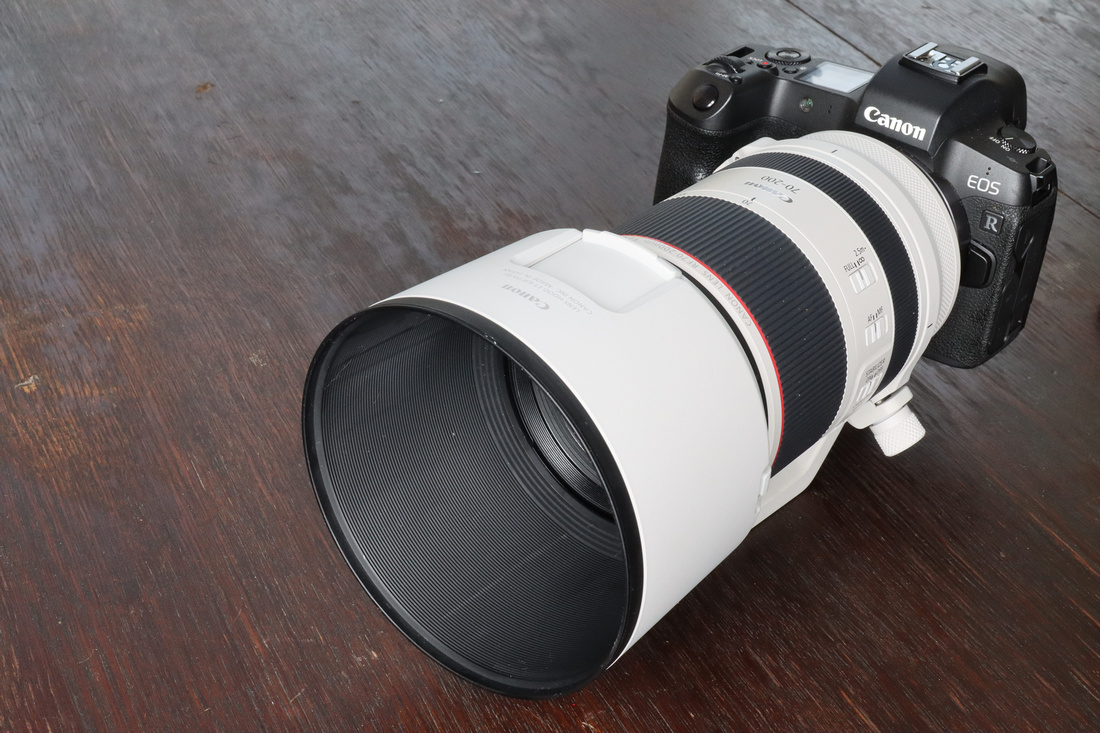
Even in the reverse position the lens is huge:
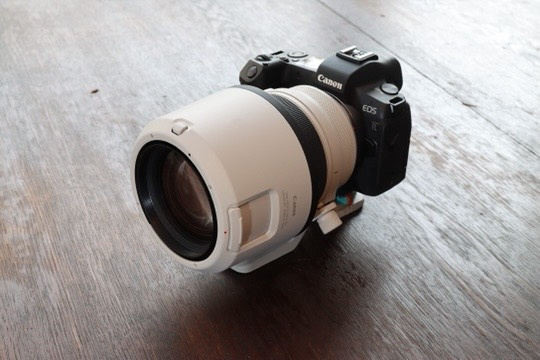
My solution is different. The filter size is the same like the RF 50 mm f1.2 lens which I own and carry with me anyhow.

With this lens hood the lens looks mach more organic - and more compact. You can put the lens hood in reverse mode on both lenses, so this is the way I am going to use this lens.
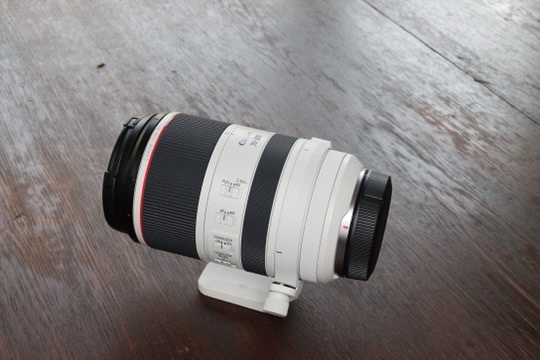
Image Quality
To evaluate lens image quality it is always the tricky topic. the easiest way to do it. The easiest way to do it is to compare the lens with a lens you know very well. For the 70-200 lens I have chosen 2 lenses:
- the EF 85mm f1.4 L IS USM
- the EF 200mm f 2.8 II
The first one is a very good portrait lens - and on the lower end of the focal range.
The 200mm f2.8 is a pretty old lens design from 1996 while the 85mm f1.4 is 20 years younger.... But it has still one advantage... its weight. This is only 765g....
The comparison I made is with no editing at all, only that was Lightroom does with RAW files....
Let´s look into it in several regards....
Color Rendering and Contrast
You never get a 2nd chance for the first impression. Therefore color rendering and contrast is something you see at the first look on an image.
The first shows the comparison of old vs new.... @ 200mm focal length
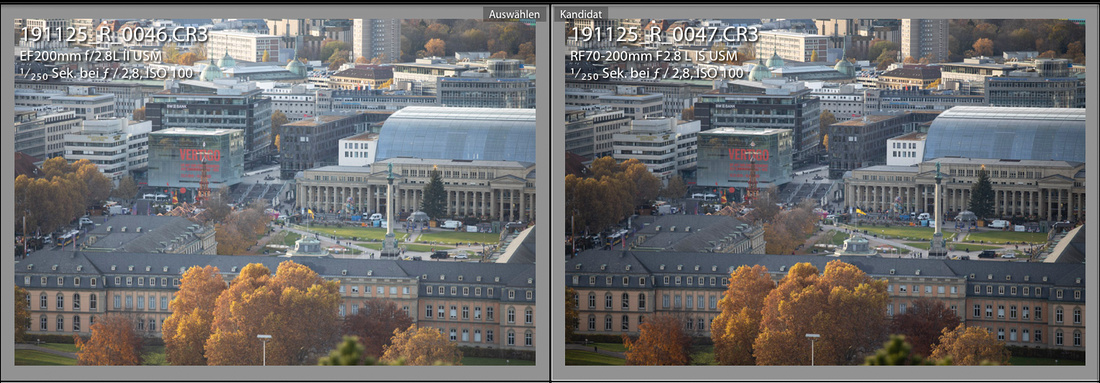
The left image looks a bit muddy while the right one is crisp and clear. Interestingly it is very clear visible in the histogram as well:


The new lens shows you the hole spectrum while the lower image is not giving back dark areas of the shot....
With the new one, @ 85mm focal length the difference is notably less, but it is still there: the zoom pops out....

I know from the former reviews that the 85 lacks a bit in chromatic aberrations as well....
Sharpness
Everybody wants sharp images... It is one of the main criterium for every photographer... but it is not everything...
The 85....
And let's start here with the newer lenses: the 2 year old 85mm f1.4 and the new 70-200... For the 85 an easy game - since the lens is already stopped down 2 f-stops....
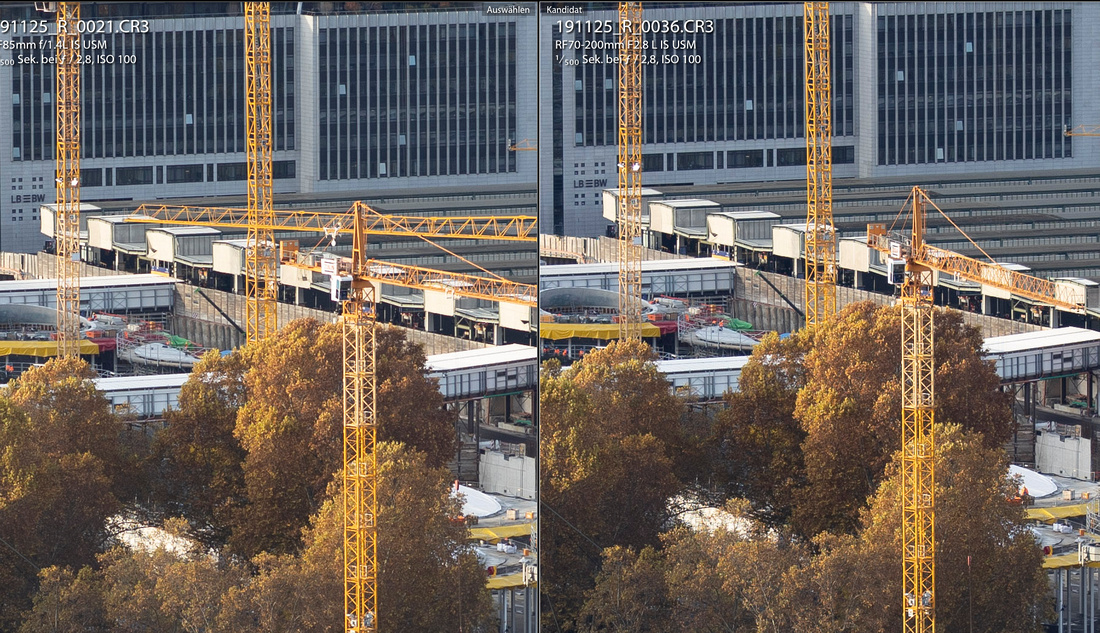
In the center: well this looks pretty similar...
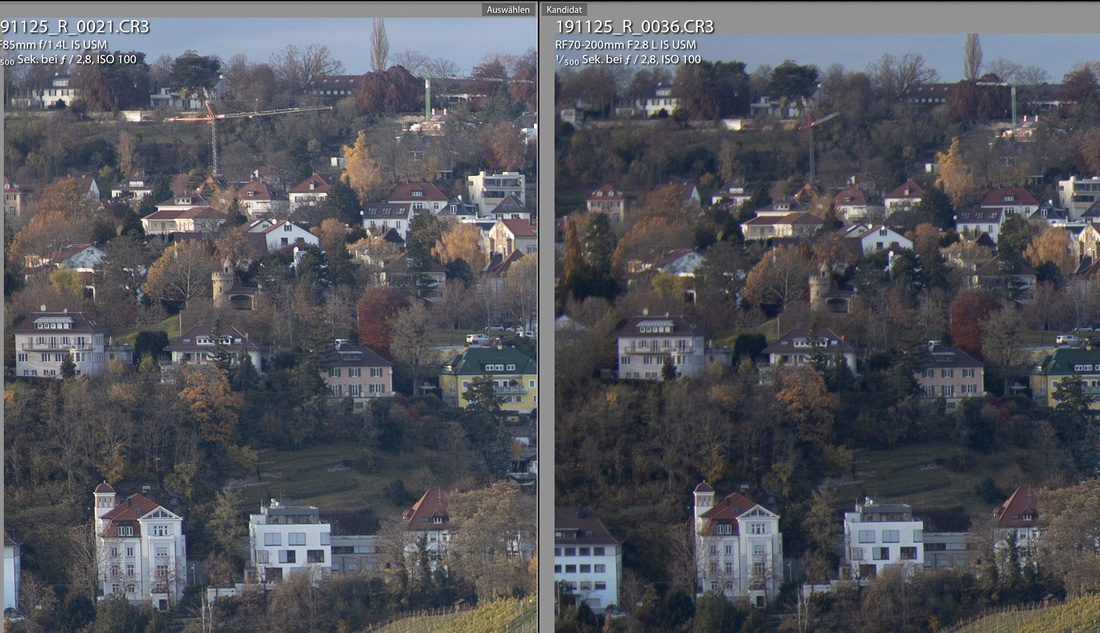
In the upper left corner the 85 looks a bit like the winner.... until....
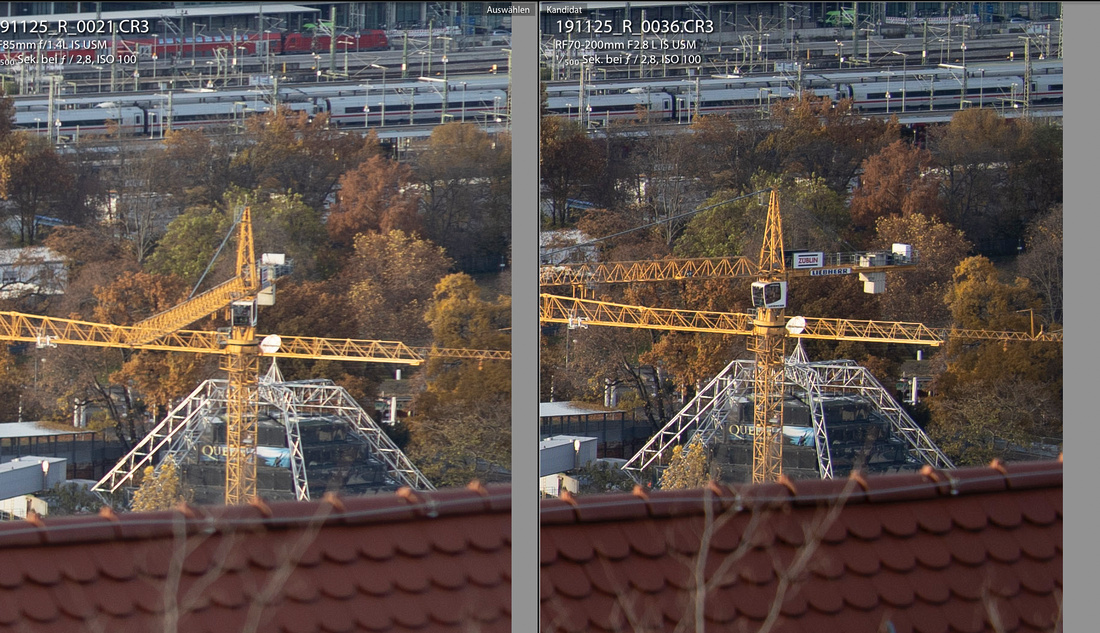
You look in the lower right corner of the image - here starts the zoom.... I checked it stopped further down... it get´s less significant, but it still there...
The 200
The 200mm lens shows its age... in many regards....
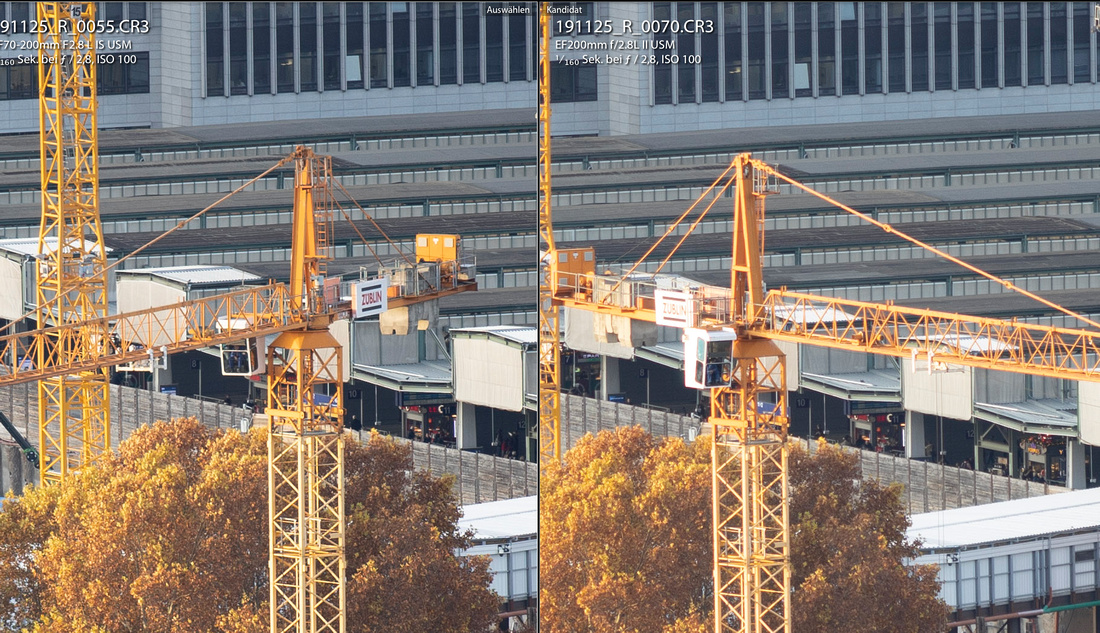
the 1st shot is @ f2.8. even in the center you see the softness, but you see color fringing as well....
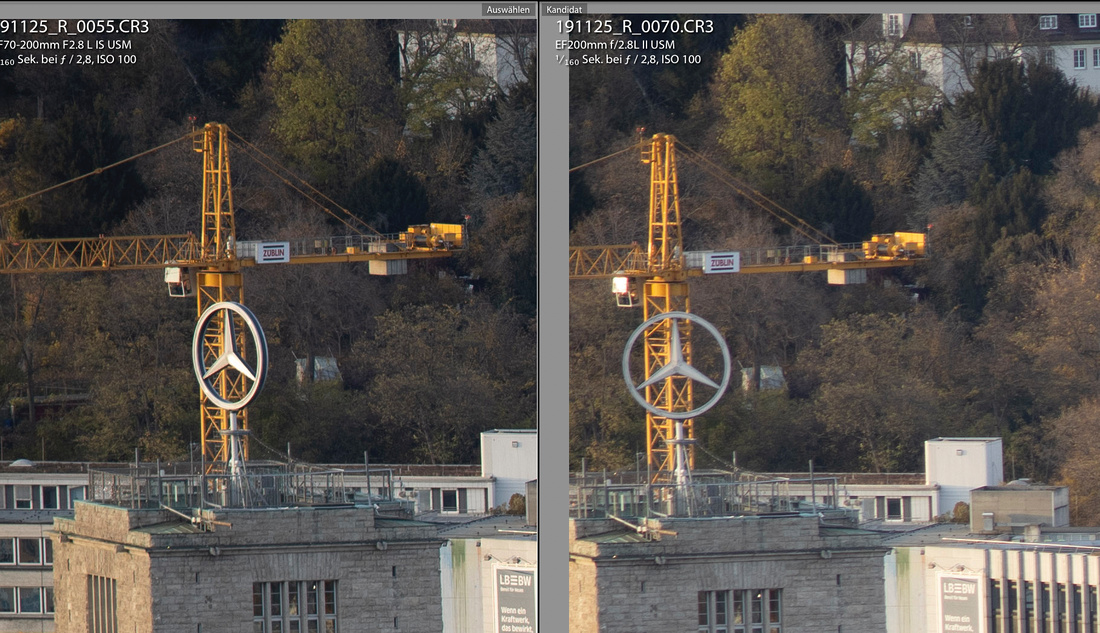
For my taste the upper left corner is even weaker....

The lower right looks better for both lenses....

I made a comparion @ the lenses sweet spot: typically f8. The sharpness is equal. But the pop, the crispness of the zoom delivers much better images straight out of camera!!!
Bokeh
Bokeh is a very important topic for photos.... It is still the topic which makes a real camera stands out against the computational photography of smart phones....
I first wanted to know which is the right partner to compare: the Milvus or the EF-Lens. But since the Milvus already shows an octagonal shape in the bokeh balls I decided to use the EF for this comparison...
In this distance the 85 performs with better vcontrast - and softer bokeh... especially if you look into the darker areas on the support right corner....
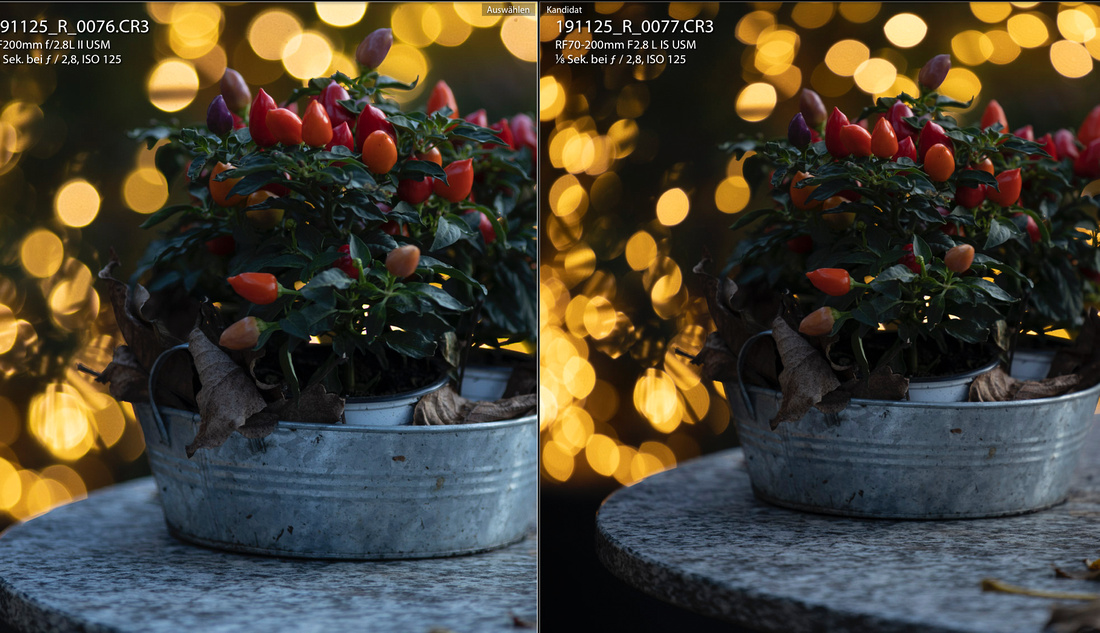
And even the 200mm prime shows a softer bokeh than the zoom lens... even if the lens isn't as sharp...
Lens Flare
How das the lens compares in harsh backlight. This is a very interesting question. Normally I love to shoot against the sun... but in these foggy rainy autumn days sun is pretty rare....
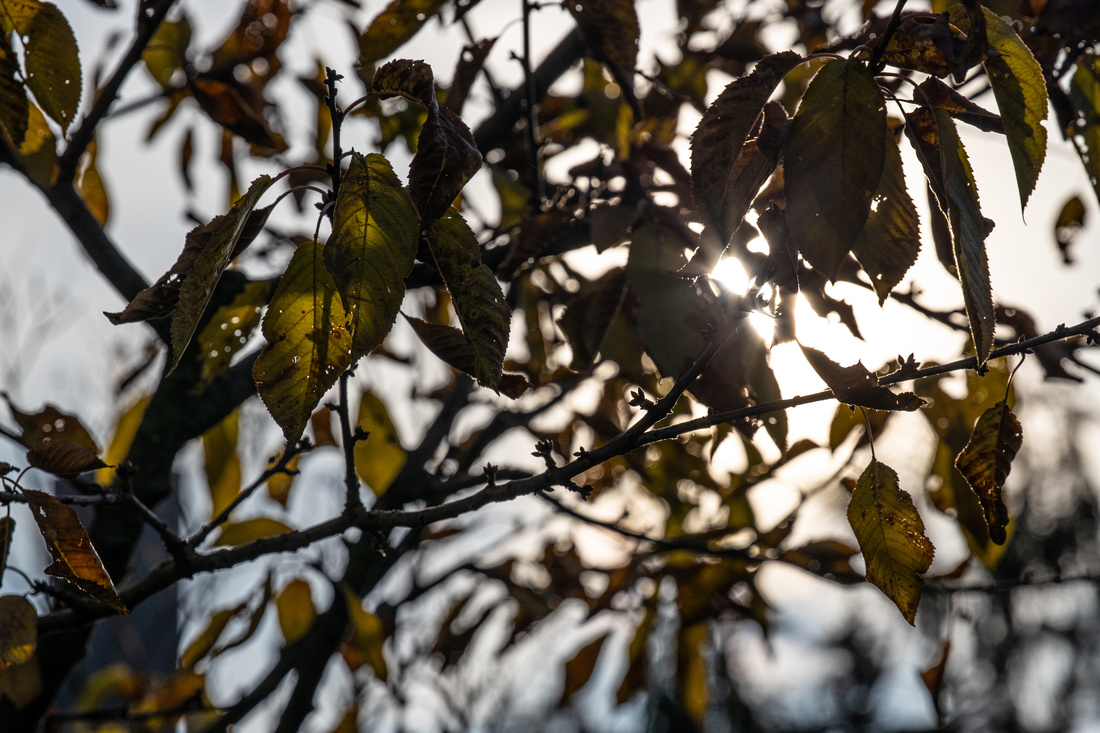
So fare: not much to see. I will try to deliver better samples as soon as I do get the opportunity to get better impression.
But I did 2 shots on a late afternoon...
first the shot with the 200mm lens
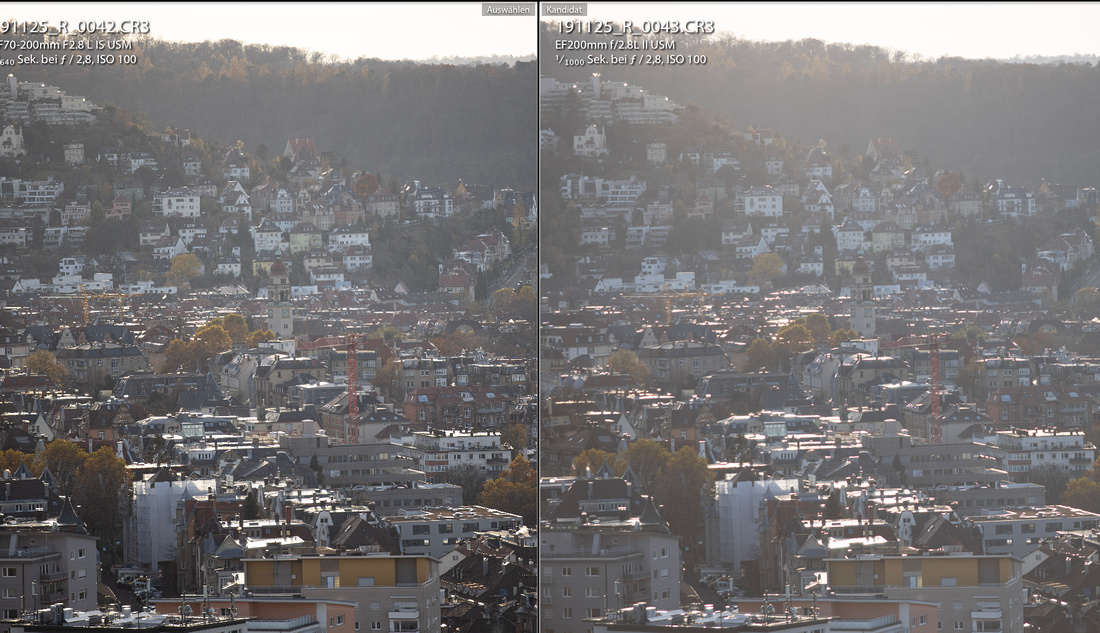 Again the zoom has more contrast... But what astonished men even more was the 85mmm:
Again the zoom has more contrast... But what astonished men even more was the 85mmm:

In this situation the 70-200 is a clear winner....
Image stabilization
Canon claims 5 stops.... for their newest iteration of optical image stabilization.... Let´s do a bit of "math" Assuming 200mm focal length the rule of thumb says: 1/200s.... (Keep in mind that's film resolution is maybe higher than digital)
- 1 stop: 1/100
- 2 stop: 1/50
- 3 stop: 1/25
- 4 stop: 1/13
- 5 stop: 1/5
Just to give you an idea....
The image above is shot @ 200mm with 1/5th s
Again 200mm focal length and 1/8th sec.
The lens proofs that it is delivering the 5 stops. Better than any other IS lens I own...
Side note: I made a comparison to their Dual IS system which also claims 5 stops.... The result was not that much impressive than the OIS of this lens....
Real World Shooting Experience
The next photos were taken during the limited time I do had the opportunity to shoot with the lens.... I hope I can add more and even more impressive stuff....
This is a massive crop.... out of a portrait orientation.... to shoot the series was really fun...
Bokeh and bokeh again.... This lens delivers beautiful creamy bokeh...
This backlit shot I love... it just shows the sharpness, the crispness and the bokehliciousness of this lens....

Verdict: Stellar Performer
I never wanted the holy trinity. But even the EF 70-200 showed the limitation of the 20 year old 200mm lens... Especially the pop and the crispness of the lens...
So the RF 70-200 is a lens which comes with lot of potential for amazing shots. Especially the color rendition and the contrast is mind-blowing. The sharpness over the complex image circle is stunning. The OIS is delivering much more than I expected - and we can only wait until Canon comes out with in body stabilization.
The zoom lenses will not replace the really fast lenses... especially the f1.2 - f1.4 ones.... But its versatility is just great.
I bet: the combo of this performance of OIS and Canon´s engineering skills will become the new benchmark.
I cannot wait to take this lens into the wild to deliver more stunning images.... and they will come...
Miscellaneous
All Photos werde taken with the EOS R and the RF 70-200 mm f2.8 L IS USM - and the comparable lenses....
Only the product shots were taken with the EOS M6 MkII with the EF-M 32mm f1.4 and the EF 100mm f2.8 L Macro IS USM. These images are jpg´s straight out of camera... (I shoot RAW, but here I used the wireless transfer to my iPad and the photo upload to Zenfolio... it´s fast - and shows the capabilities of Canońs jpg-engine....)
The sample photos of the lens - and a couple more - you find here.
There is also a link to the image quality comparison
Please have fun and enjoy.
Disclaimer
I bought this lens just for me....
There is money involved - the one I paid to Calumet. Therefore this is my honest opinion about this lens....
For those ones who read my first blog about the new Samyang lenses may skip the first 2 chapters....
After my first experience with the Canon EOS R the lens choice seems to be too heavy to travel with... The combo of Canon´s great EF 85_L-IS monster and the even heavier Milvus 15mm f2.8 let me ask Samyang: will you come up with something light being designed for Canon´s RF mount? The reply was astonishing: Yes we do, we checked your profile on social media: would you like to review the lenses. Since I like to test glass -you always learn from it- I agreed. I took quite a bit and some communication with German customs I finally got the lenses from Samyang, the 85mm f1.4 as well as the 14mm f2.8.
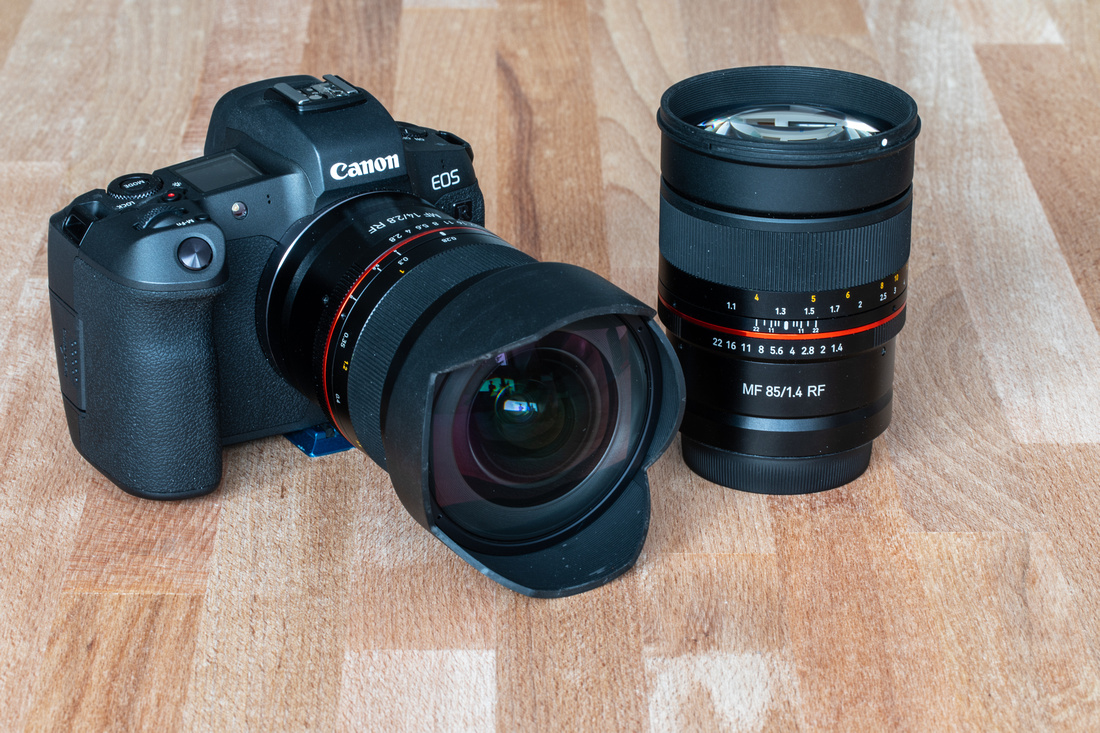
My first reaction: disappointment
My first reaction was disappointment. These lenses do not looks being originally designed for mirrorless cameras. I just looks like a simple mechanical adapter - and even worse- without any EXIF chip build in. Therefore no exif data transferred, no focusing aid (an awesome tool on the EOS-R!!!) and no focusing wide open and automatic aperture closing. I communicated with Samyang, the replied properly and asked to give it a try. So i did. And please read to the end!
So I made some first tests at home which were astonishing and later I took them on a little trip to South of France to shoot with them there, too.
But let's start with a topic which is important for these kind of lenses:
Manual focusing on the EOS-R without communication to the lens
or: where mirrorless cameras are shining...
Today many people believe that autofocus is essentiell. Well having autofocus can be helpful, but can be annoying, too. I skipped my Sigma 85mm f1.4 because of Autofocus inconsistency. it is no fun if a lens while open doesn't deliver sharp images where it should be sharp. And honestly: on a DSLR shooting manually through the viewfinder without focus confirmation and special focusing screen build in the camera? No fun at all...
But the EOS R has one feature build in which makes it easy to focus: focus peaking. It was the first time I had to use it exclusively to work with this feature. I was astonished how well it works. The accuracy range was really comparable to autofocus (!)...
The other advantage of focusing with manual focusing lens is the possibility to use the 5x or 10x magnification in the viewfinder. This methods gives you the highest level of focusing accuracy. But in low light you will suffer from the noise in the viewfinder as well...
Generally spoken after using mirrorless cameras since almost 10 years now this type of cameras is much more suited for manual focusing than anything else. Mirrorless cameras - and especially the implementation of Canon - Is really joy to shoot manual focusing lenses. This opens opportunities especially on the budget side - but using lenses like the Milvus or Otus from Zeiss also in the very high end site...
Comparing the 2 Samyang 14mm f2.8 lenses
In the first look these 2 lenses are pretty similar. It just looks like Samyang had designed an RF adapter to the original design. But if you look in detail there is more....
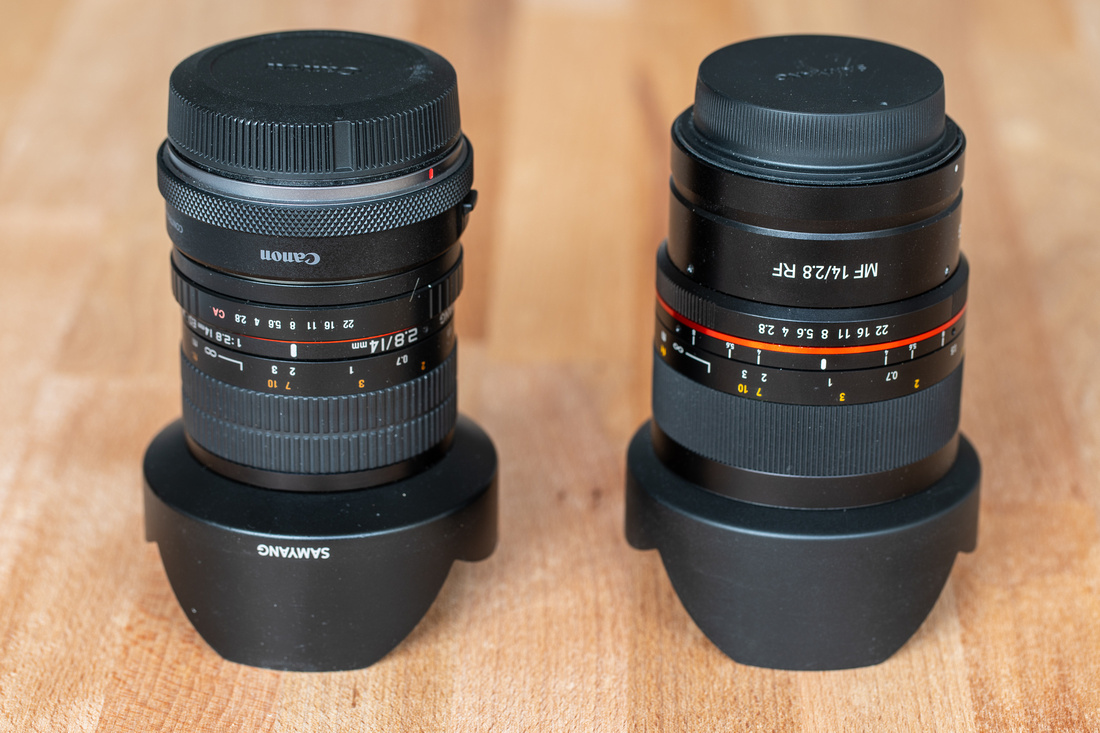
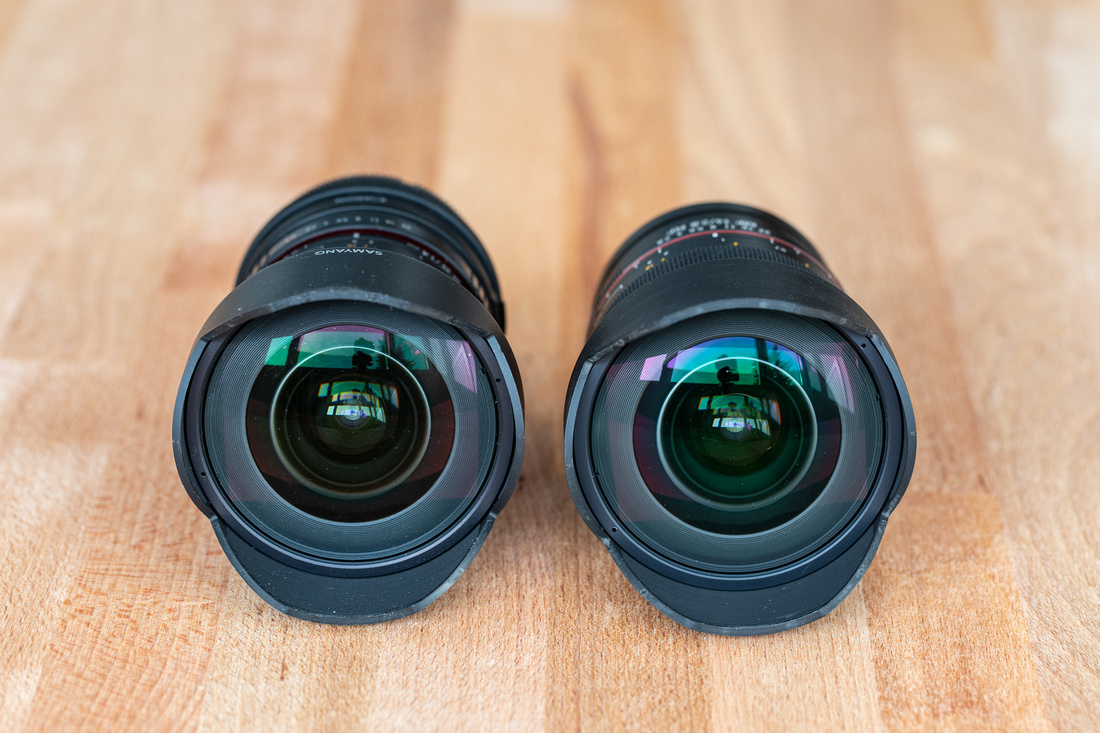
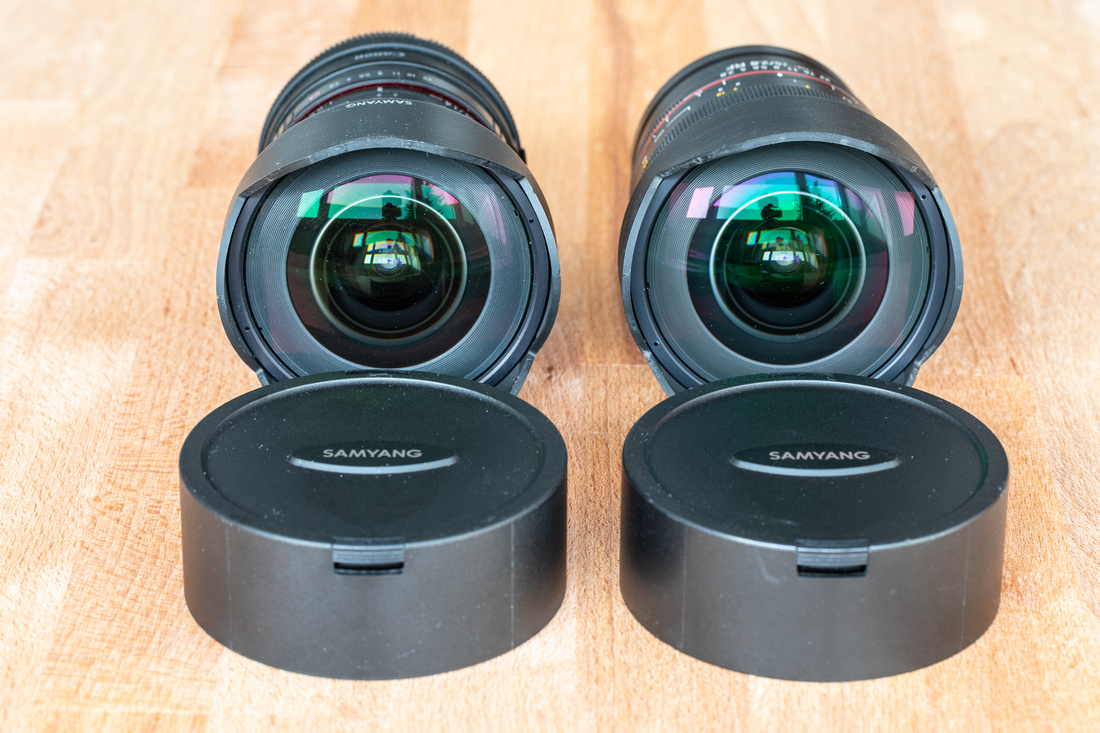
Even the lens hoods are identical....
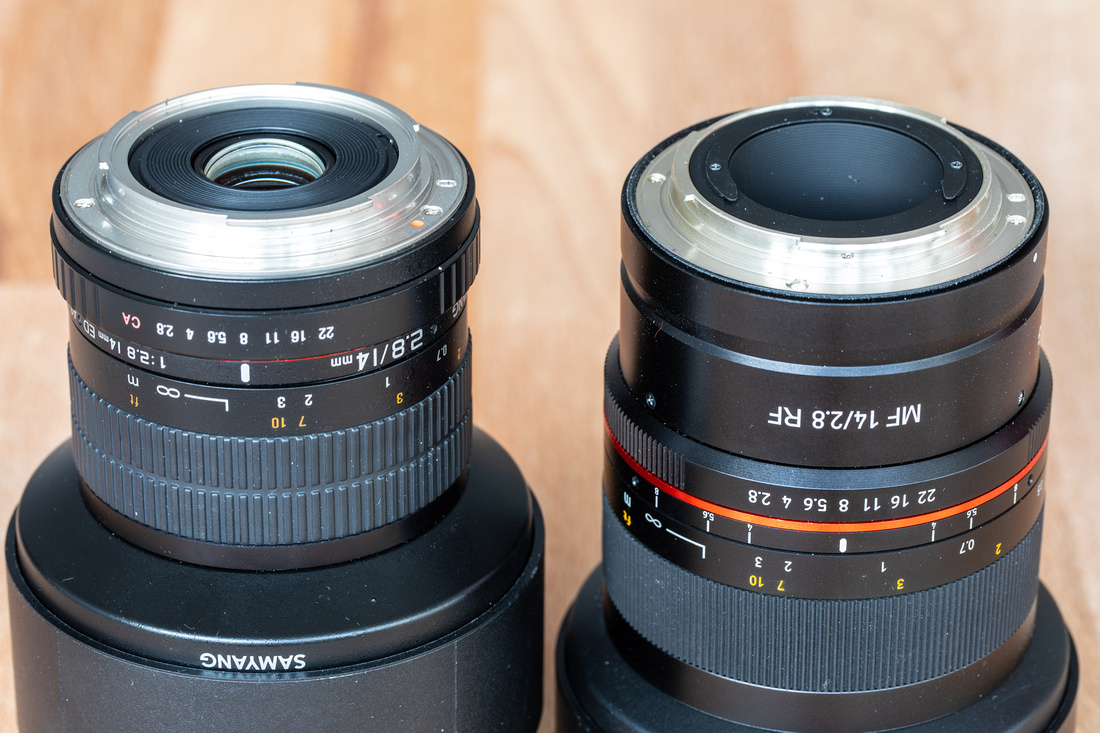
Here you see the EF mount on the left and the RF on the right: the main difference between the 2 lenses are the weather seal on the RF mount...
What is interesting to compare the weight of these 2 animals...
- The EF mount lens incl. the control ring adapter weights 720 g incl. lens hood
- The RF mount lens weights 800g....
It looks that the weather sealing contributes quite a bit of weight...
The lens itself
Build quality
When you take the lens in you hand: it feels pretty solid. For me the Samyang lenses does not feel cheap, the do have a solid all metal body. In case of the RF mount 14mm f2.8 lens the weather sealing ads substantially some weight to the lens....
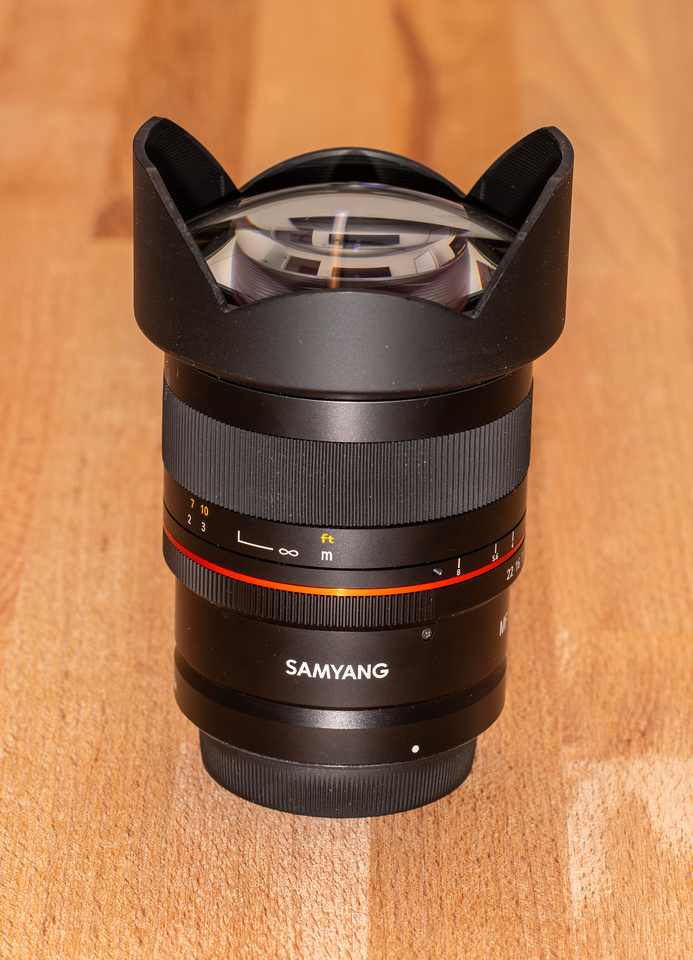
The lens has a huge front lens. It is protected by a lens hood. It is necessary to be pretty careful with the lens on one side. But in the other side I use the sibling of it since quite some time.... And never had an issue...
The lens does n to stop at infinity. You have to look for maximum sharpness yourself, even if you just want to make a landscape shot...
On the other side the throw has 225º which is pretty long. Astonishingly much longer than on the 85mm f1.4 which has only 110º. The 225º there and the 110º here would make more sense to me.
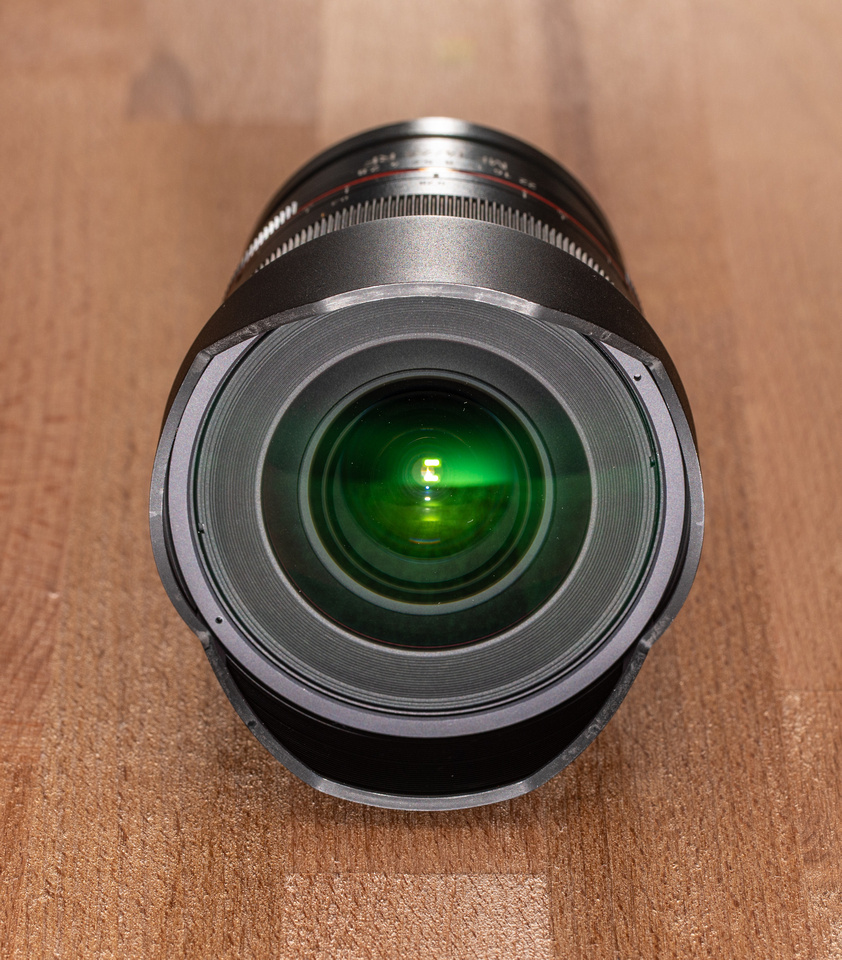
The lens has no front filter ring. Adapting any filter is quite a complicated...
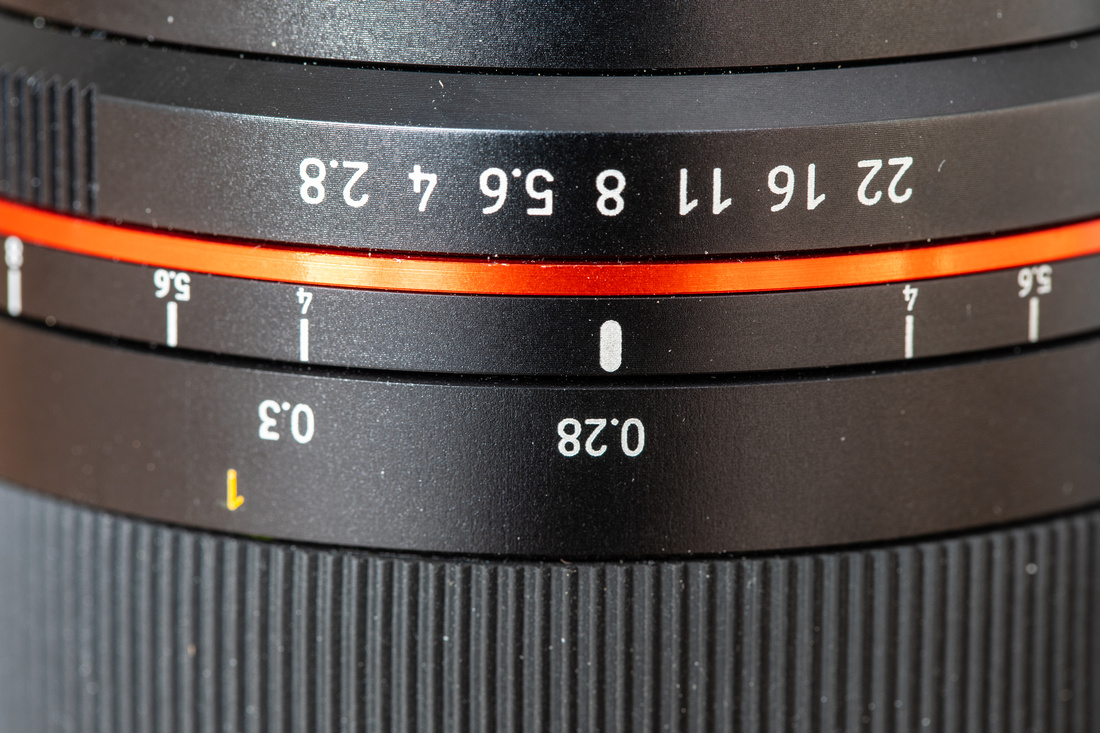
But there is another little advantage as well: the new RF mount lens shows indicators for the depth of field depending on the aperture choosen. This is nice and handy - a real advantage...
Focusing is quite smooth - just fun to work with.
The aperture stops typically 1/2 stop, only from f2.8 to f4 it is just one stop.
And again: i guess a mark for the top of the lens when m bunting to an the camera body...
The camera including lens weight a bit above 1400g - so it is still a pretty handsome package
Image Quality
In this case I compared it mostly with its EF brother. Unfortunately I dropped my Zeiss Milvus 15mm f2.8. This lens has some failure now - I have to send to to repair to be able to use it again. I made some comparison shots with my Canon Zooms (17 -40mm f and 16-35mm f4 IS) and it performed pretty well.
Also against the Milvus it is a decent performer. It has advantages especially in pretty unexpected areas. I do have my 5DMkII adapted to a larger spectral sensitivity. The actual spectral range is 300-1100nm - so it includes UV as well as IR. The Zeiss Milvus has a very strong weakness when it comes to lens flare @ 1030 nm....
Another topic is definetely distortion: This lens has a terrible distortion somewhat barrel and somewhat pincushion.. It is really weird... But we do have lightroom, and lightroom corrects it pretty good - at the end you get some really good images out of this lens...
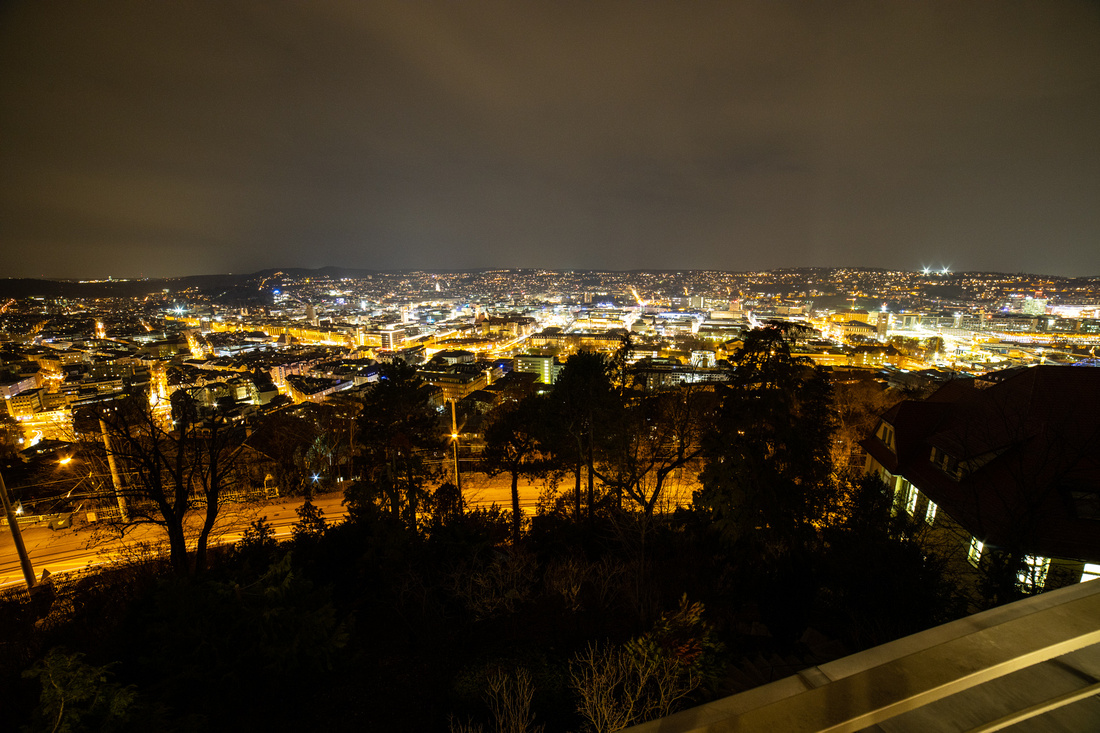 For the image quality comparison I have chosen literally the same position that for the image quality comparison of the 85mm lenses... But you can see how mich wider the 14mm lens looks...
For the image quality comparison I have chosen literally the same position that for the image quality comparison of the 85mm lenses... But you can see how mich wider the 14mm lens looks...
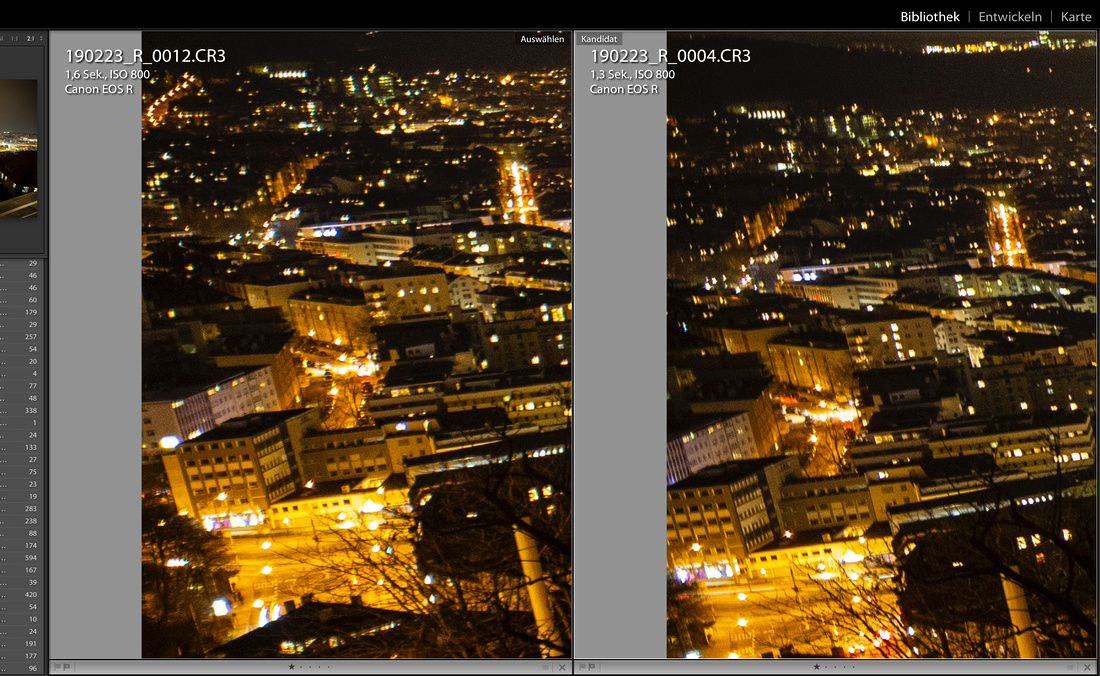
On the left side I could not identify any difference between the 2 lenses. What you can see is that the sharpness is good, even in the corners - the resolution of the image is 1:1.
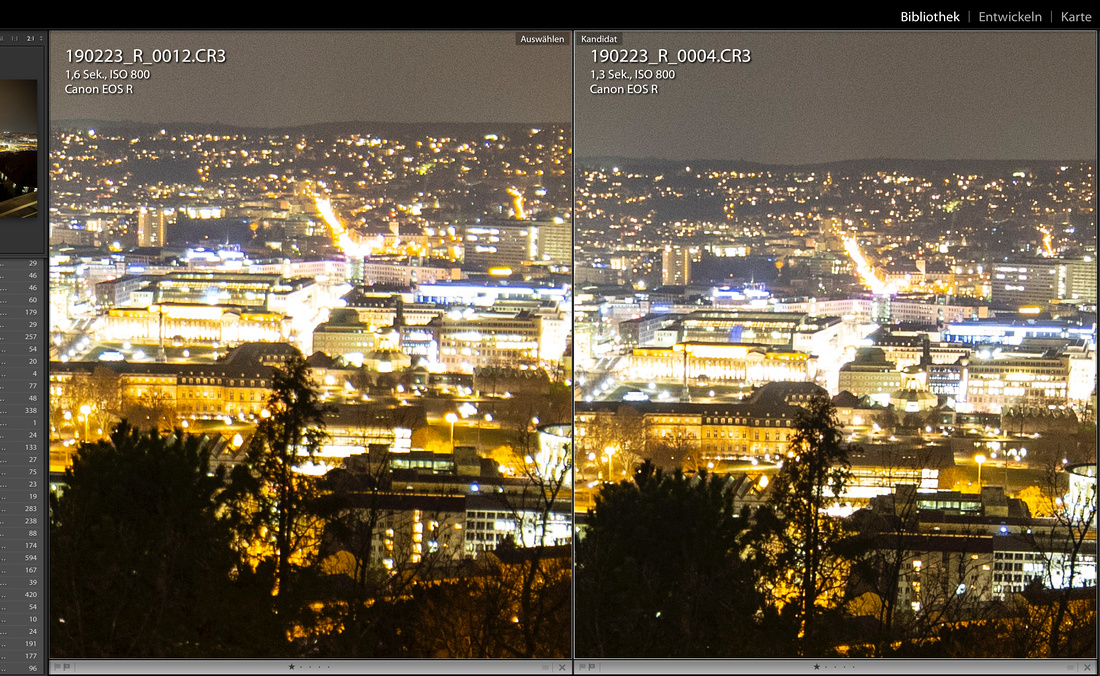
Also the center does not show significant changes...
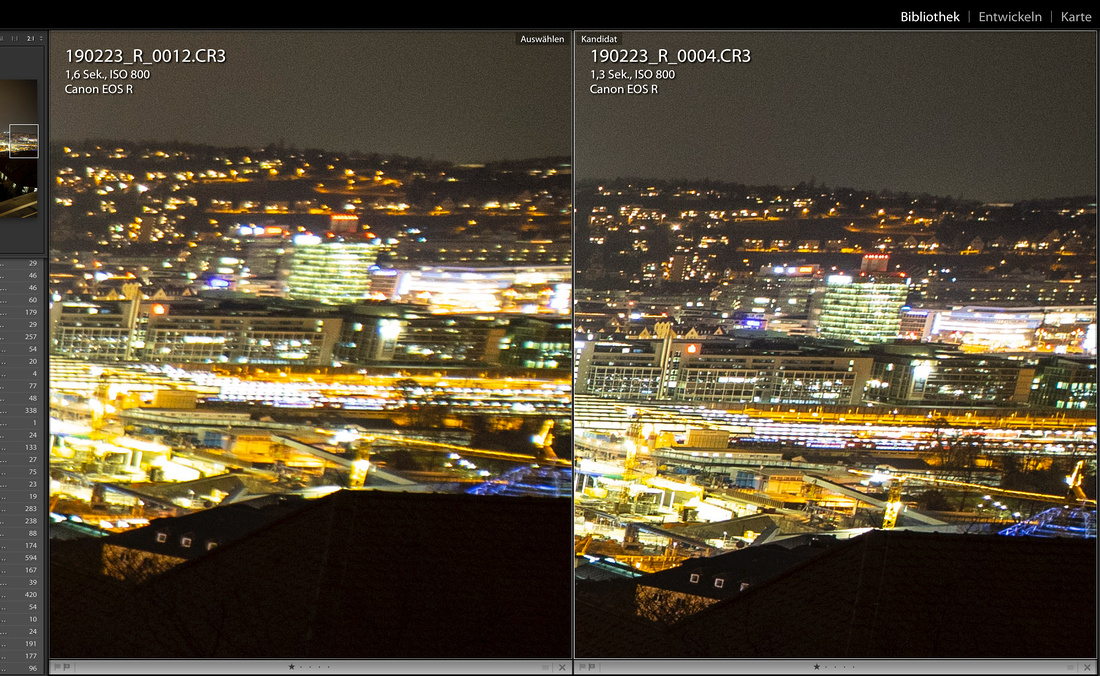
But in the very right side off the image the image turned out to be significantly unsharp. It looks like a decentering of the lens - which I could see in all photos taken...
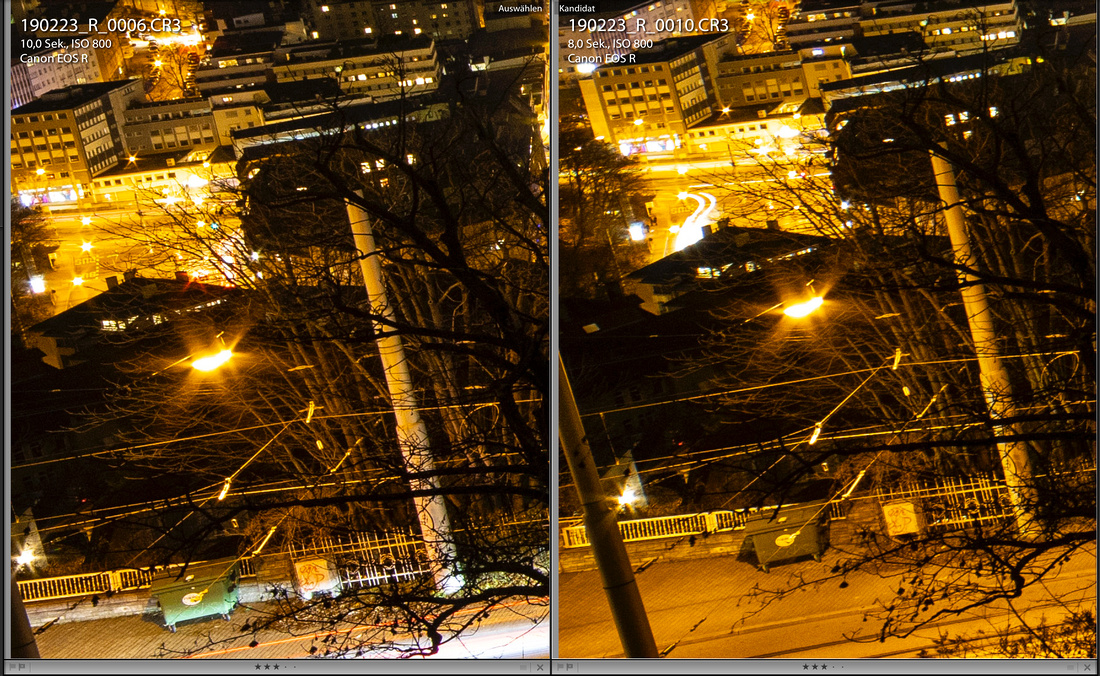
I stopped down the lens to f5.6 to check if this effect will disappear... again lower left side: no difference
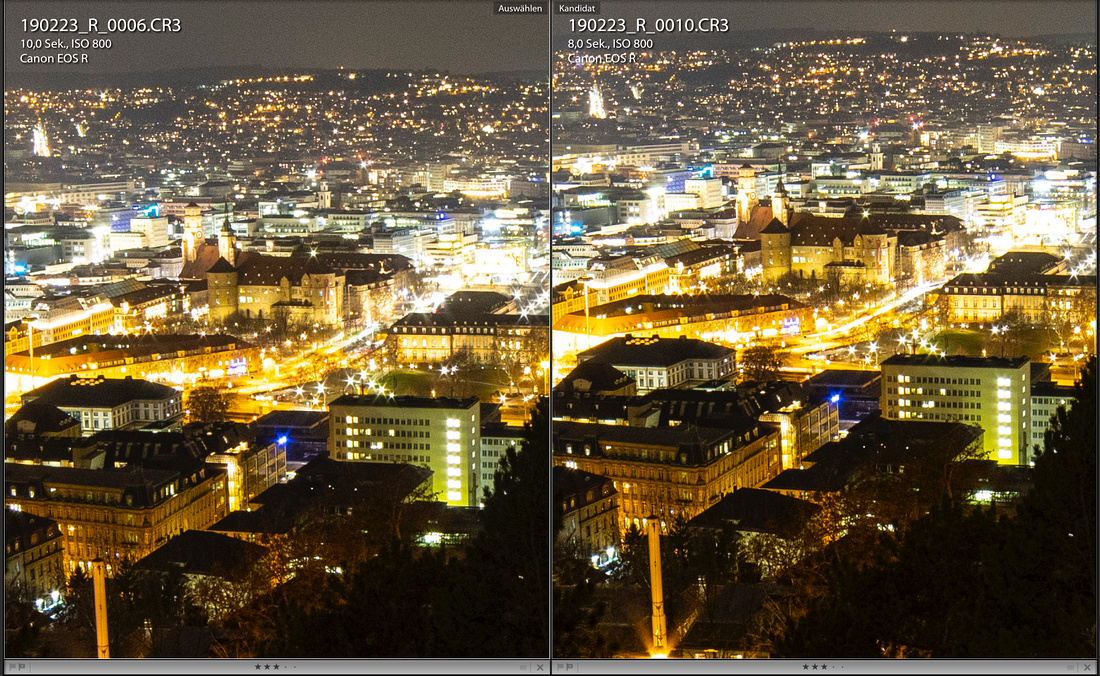
In the center - no difference again.
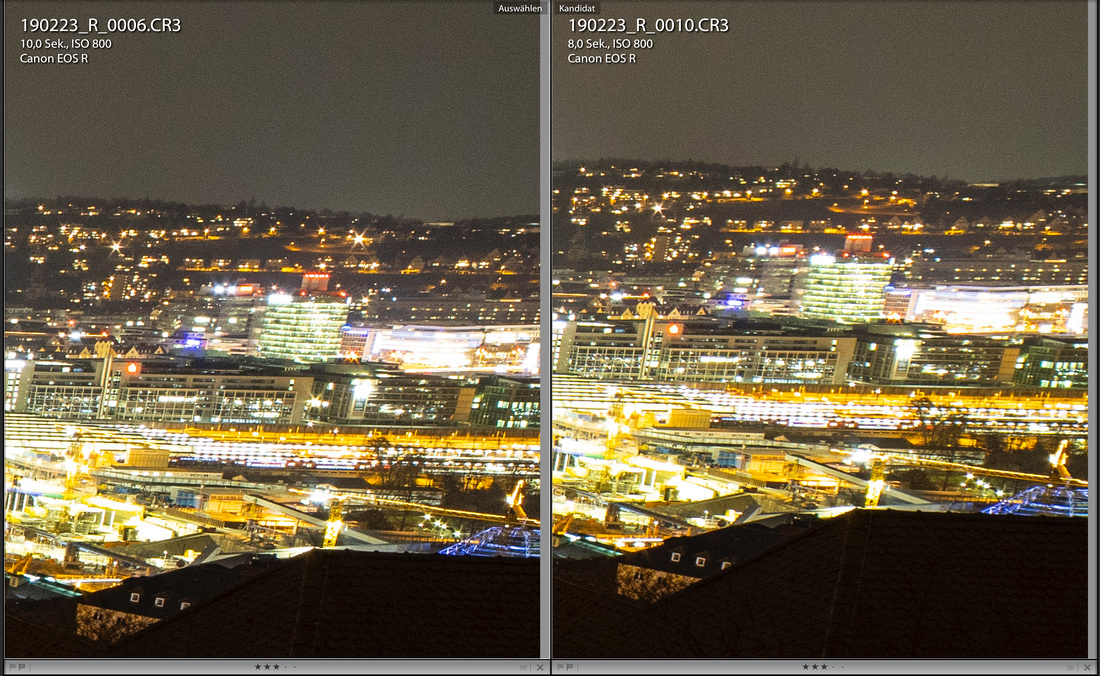
And the right side has shown the the problem is fixed. So I had a workaround for the flaws of my copy....
Real World Shooting Experience
First of all: a 14mm lens is not a lens which will become your main shooting lens. It is an extreme wide angle lens. And it comes with a pretty bright open aperture - for the focal range...
But on the other side the challenge to shoot with such a wide angle. And if you have only 85mm and 14mm with you: it becomes also fun to do it...
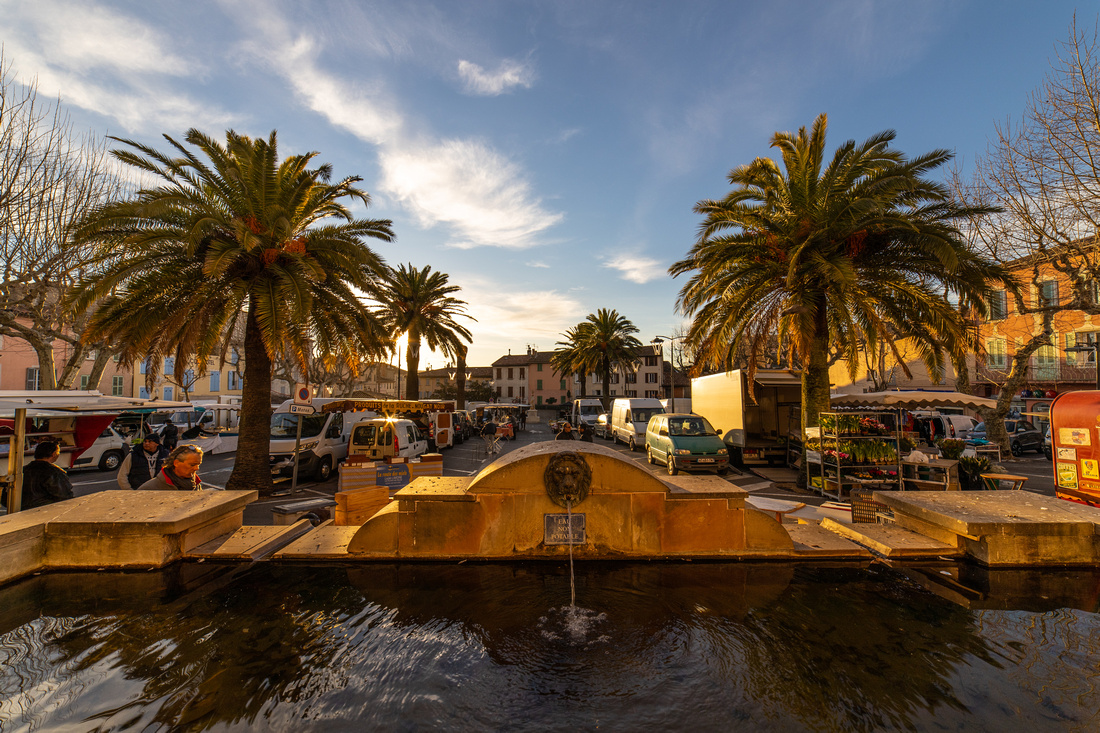
This photo is one which i Like a lot. It shows the advantages of such a wide lens - giving you a complete view on the scenery....
Photos shot with the EF-Version of the lens....
One topic for this lens is panorama shots on one side and Astrophotography on the other side - and of course the combination of both...
In the following I will showcase some of the images which I shot with both versions of this lens to give some ideas where to use these images...
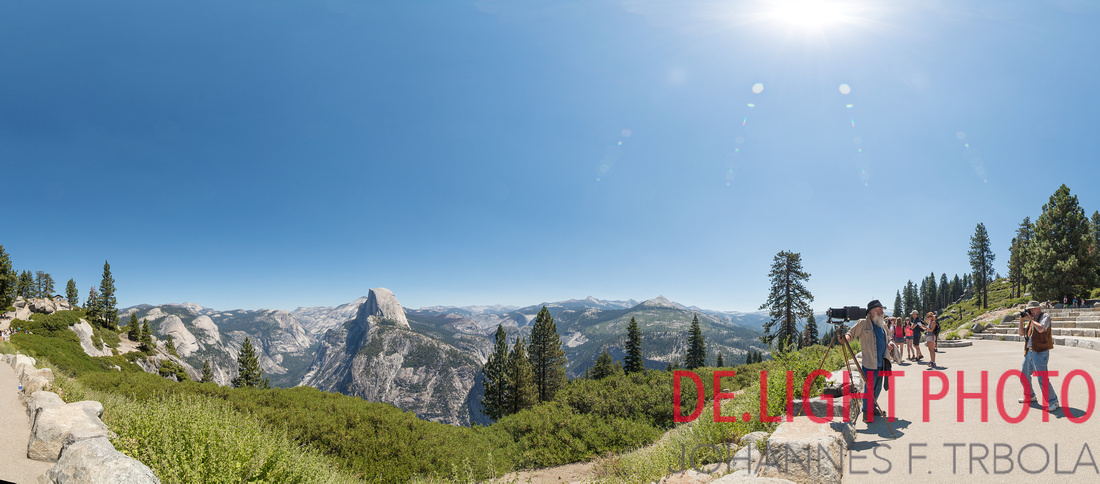
This Panorama was shot in Yosemite National Park California. Please note the Gentlemen on the right - he claimed that this is the tripod of Ansem Adams.....
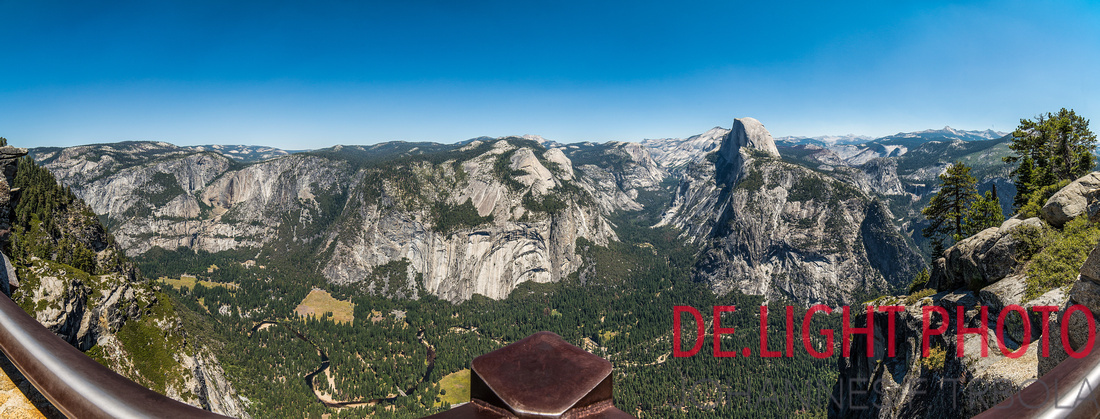
This is another shot there... just 270º view angle...
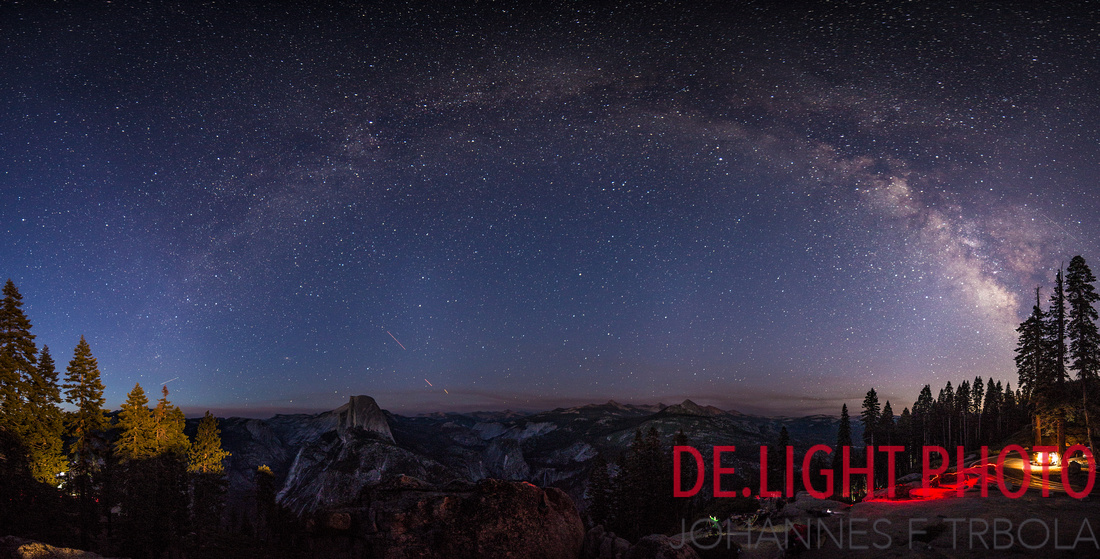
Yellowstone Glacier Point.... a panorama shot on 5D MkIII
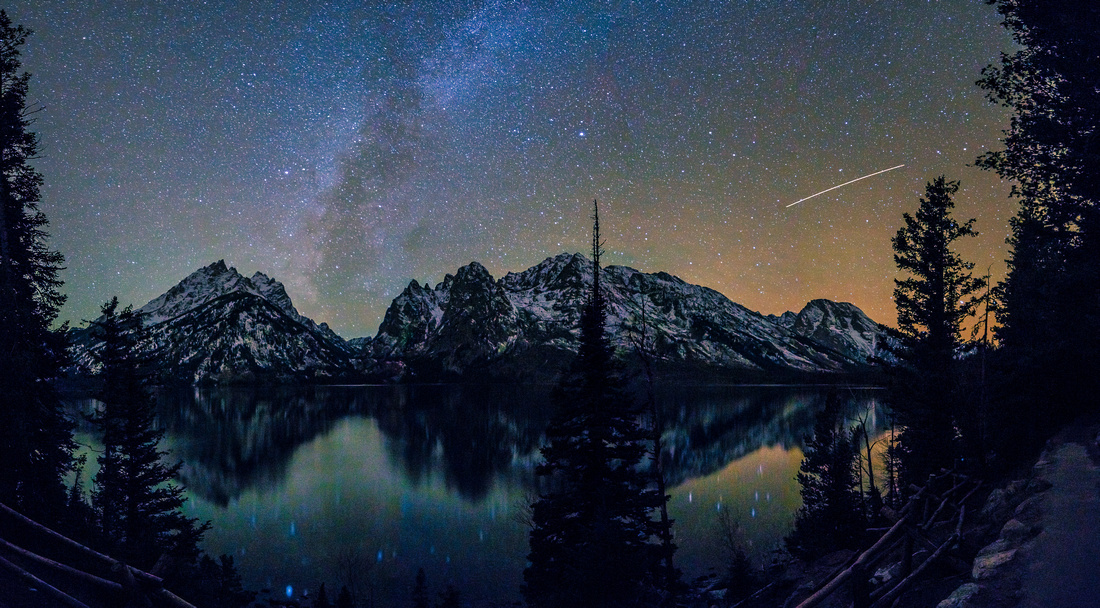
This shot at the Grant Tetons was at 11 pm. It was pitch black... It was my first trip with the EOS 5D Mk IV and the final image got quite some noise , even when shooting with f2.8 and ISO 3200 and 30s exposure time... But on the other side: I like this shot... a lot!
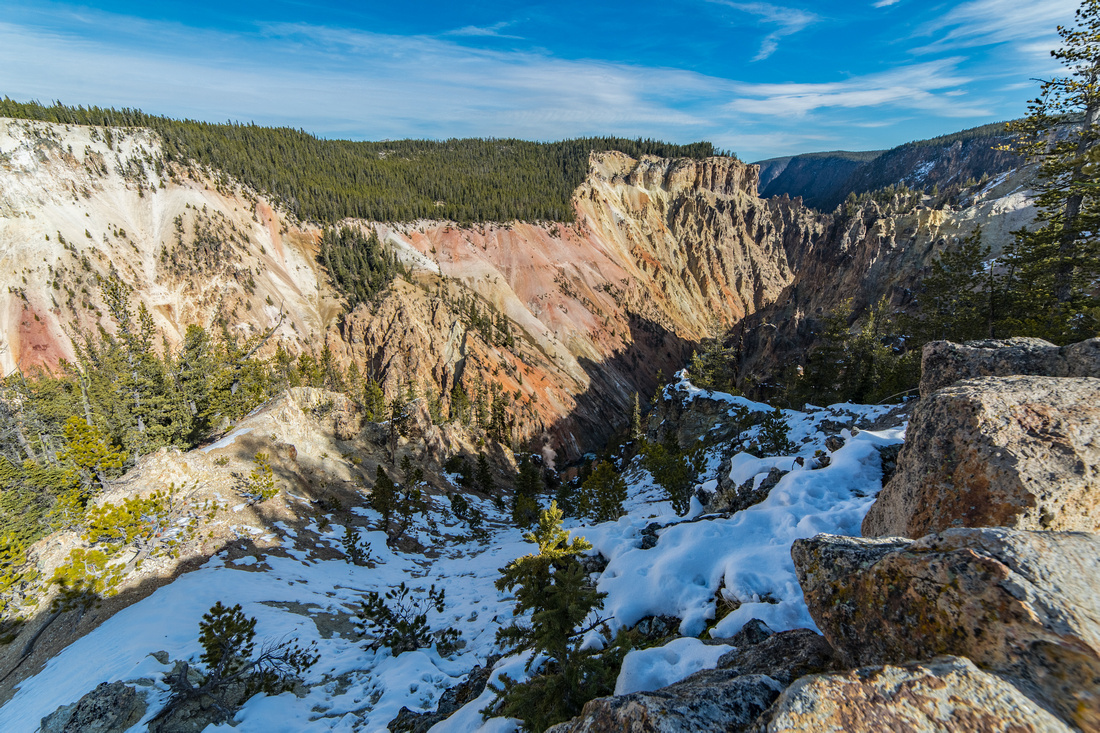
Again Yellowstone river - looking downwards fro the viewpoint of the lower falls....
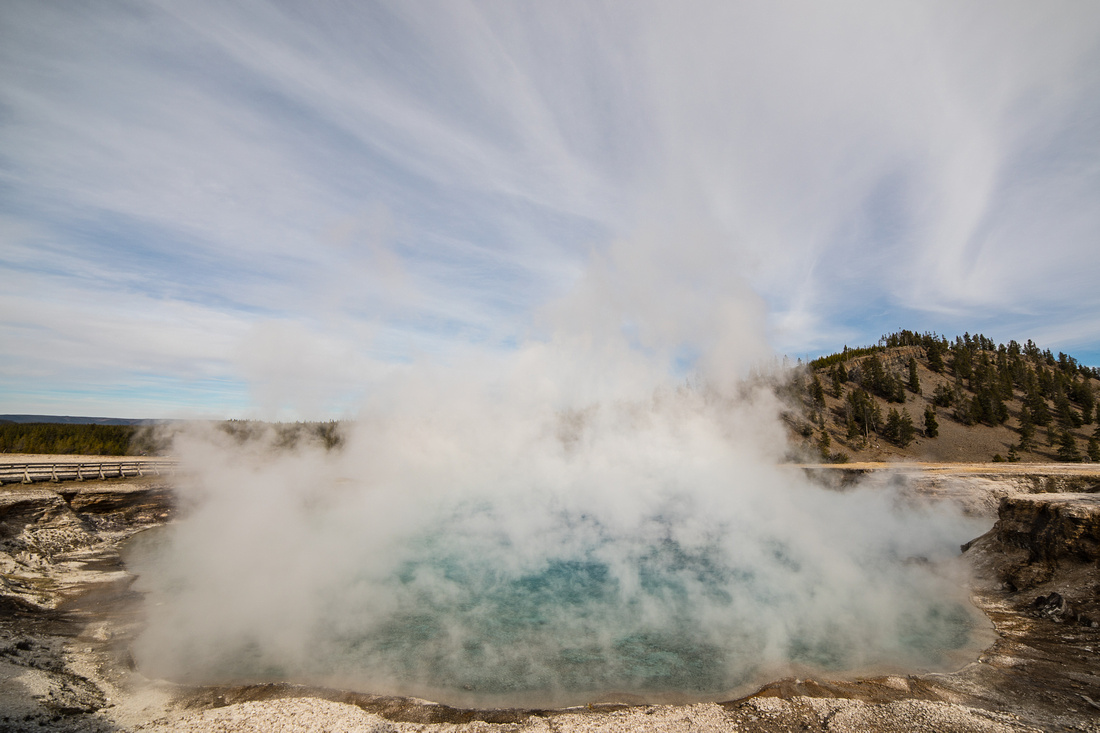
The diamond spring.... this time mounted on the 7D MkII....
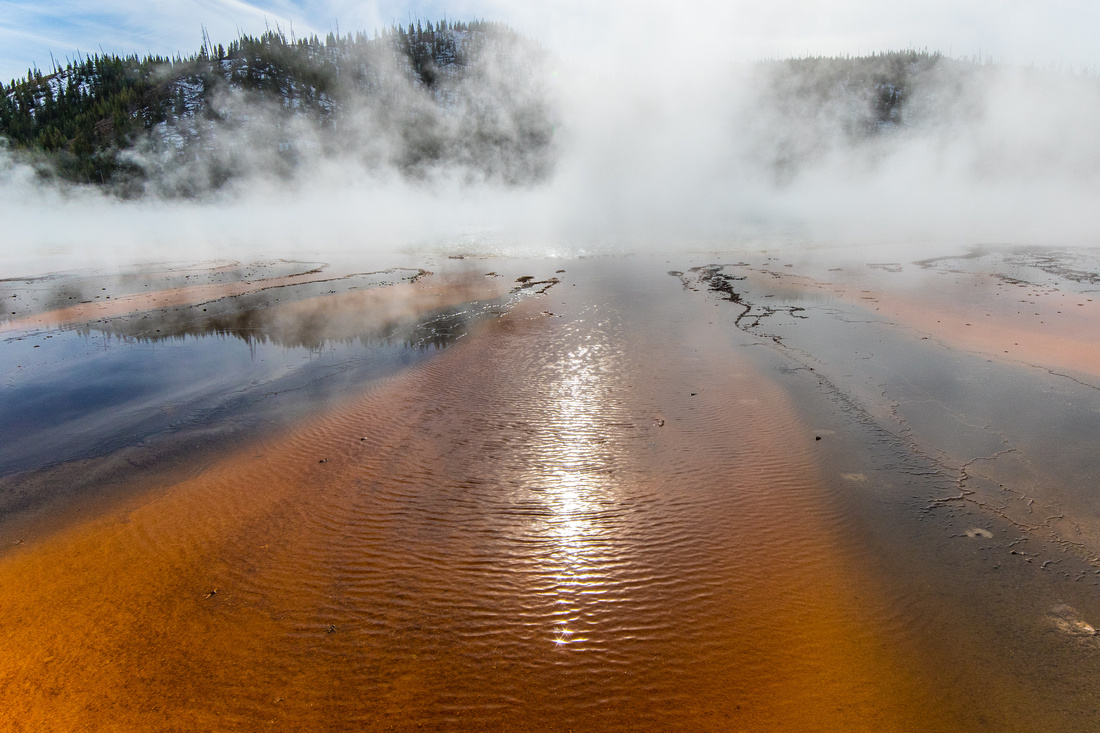
And again the diamond spring... for me one of my favorite shots with this lens at all...

This is one special shot: the main light comes from a thin disk laser set up. This purple-is light is 1030nm - infrared and taken with the EOS 5D MkII
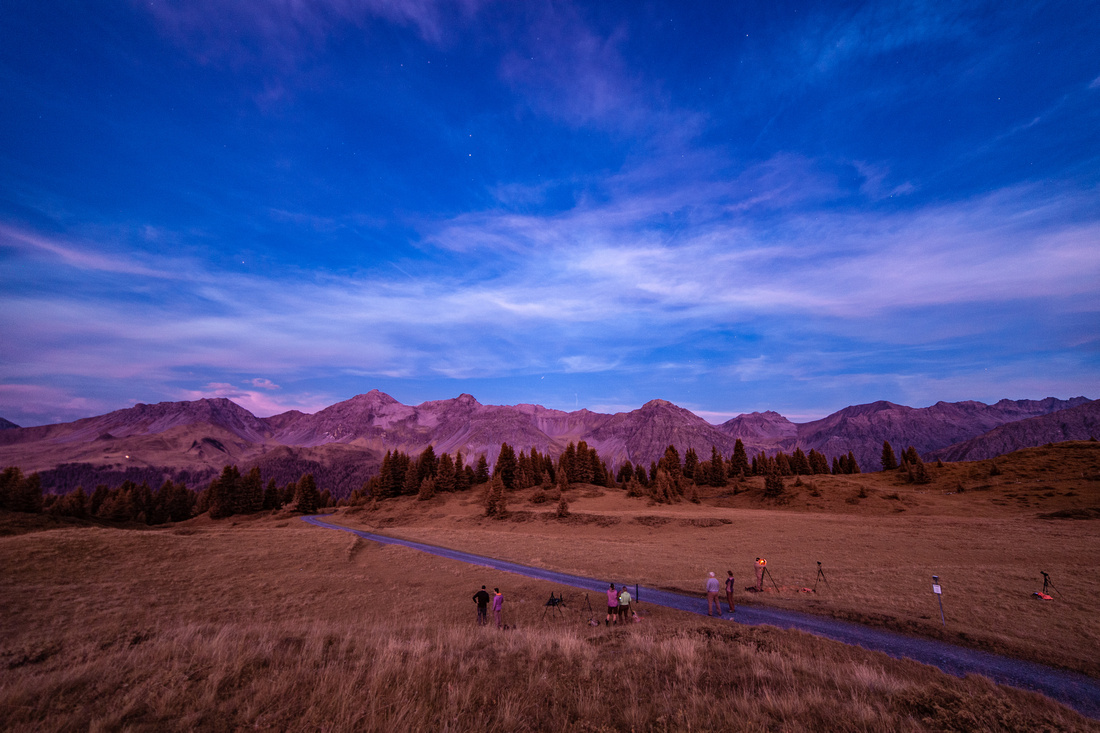
It is very interesting to see, what this camera delivers after sunset... the white dots in the sky are stars...
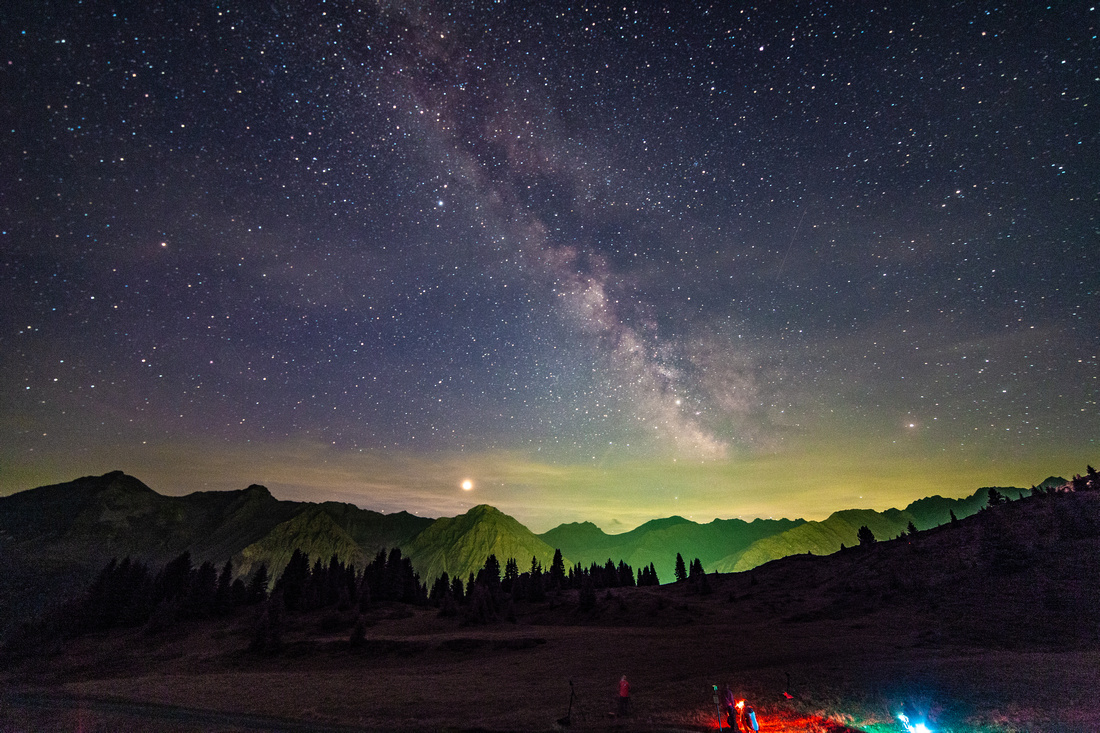
But this set up really shines when the milky way is present.,...This shot was made on My 5D MkII. This camera has an extended spectral range....
Shots with the RF Version go the lens.
During the time I had the lens I had 2 mayor sessions. The first one was on a trip to south of France - The famous Cote d´Azur. In the early morning i went to the market and took a couple of photos... And later the lens came with me to Shanghai....
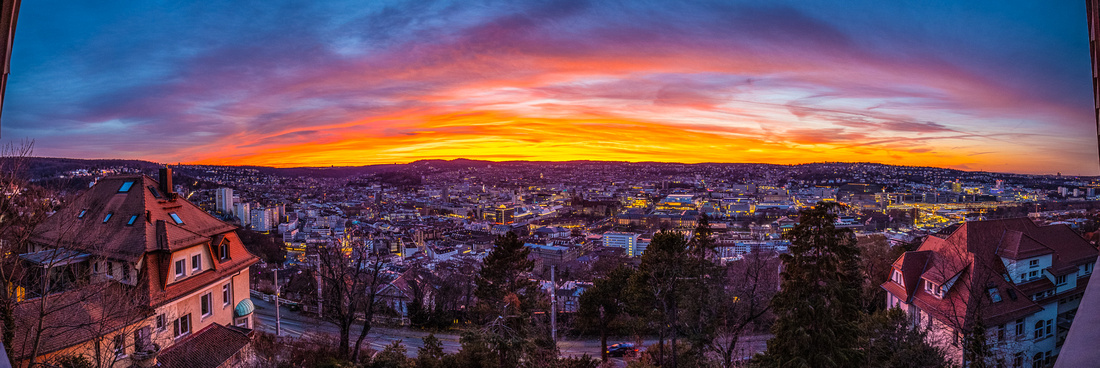
But the first shot was a panorama. Taken with only 3 shots - represents an 180º viewing angle... this is stuff where you really can love this lens...
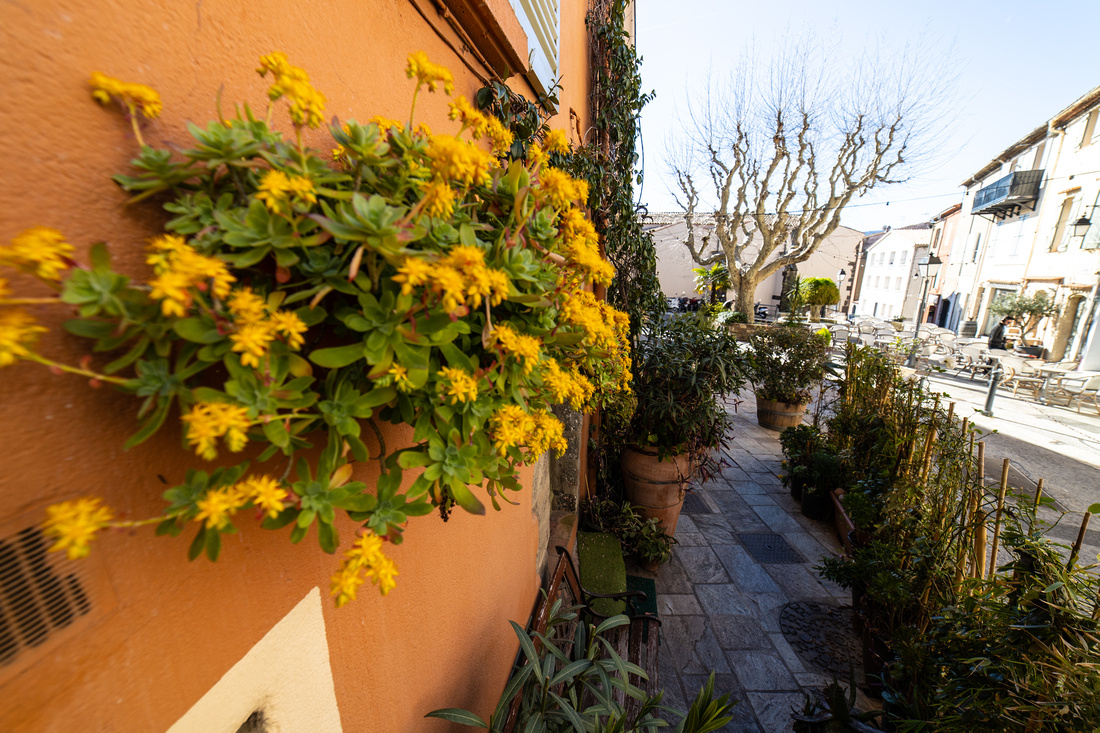
For me this image shows the difficulty of using such a wide angle lens.
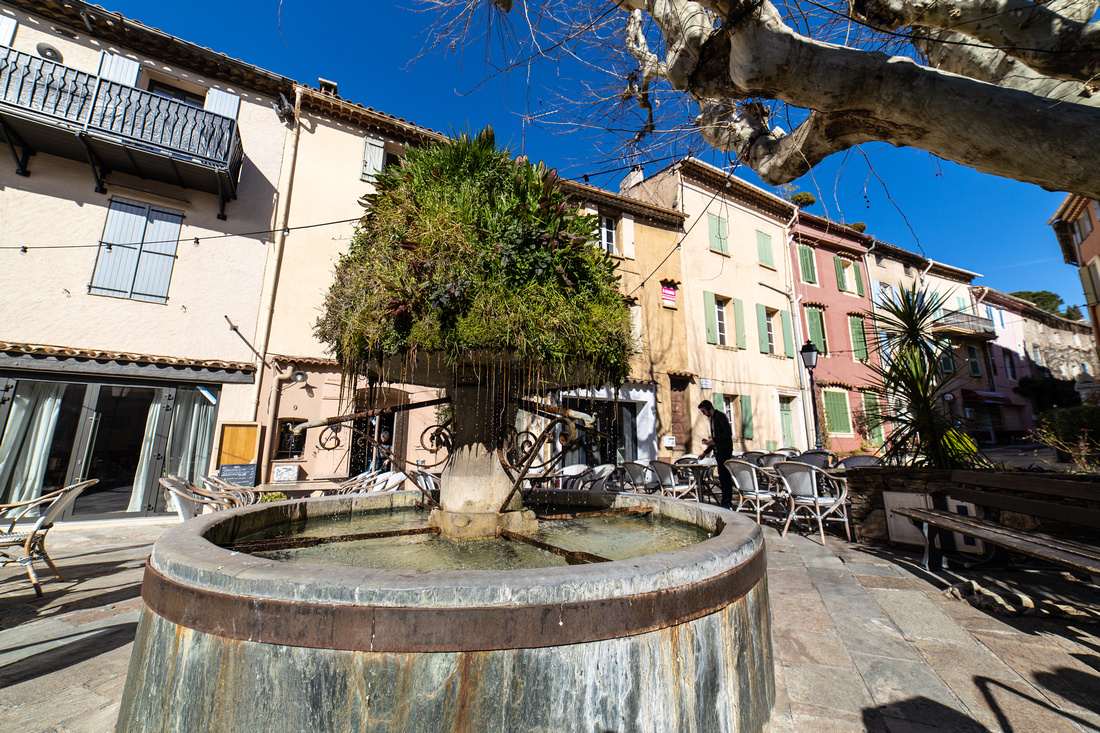
In the extreme perspective the lens really draws you into the scenery...
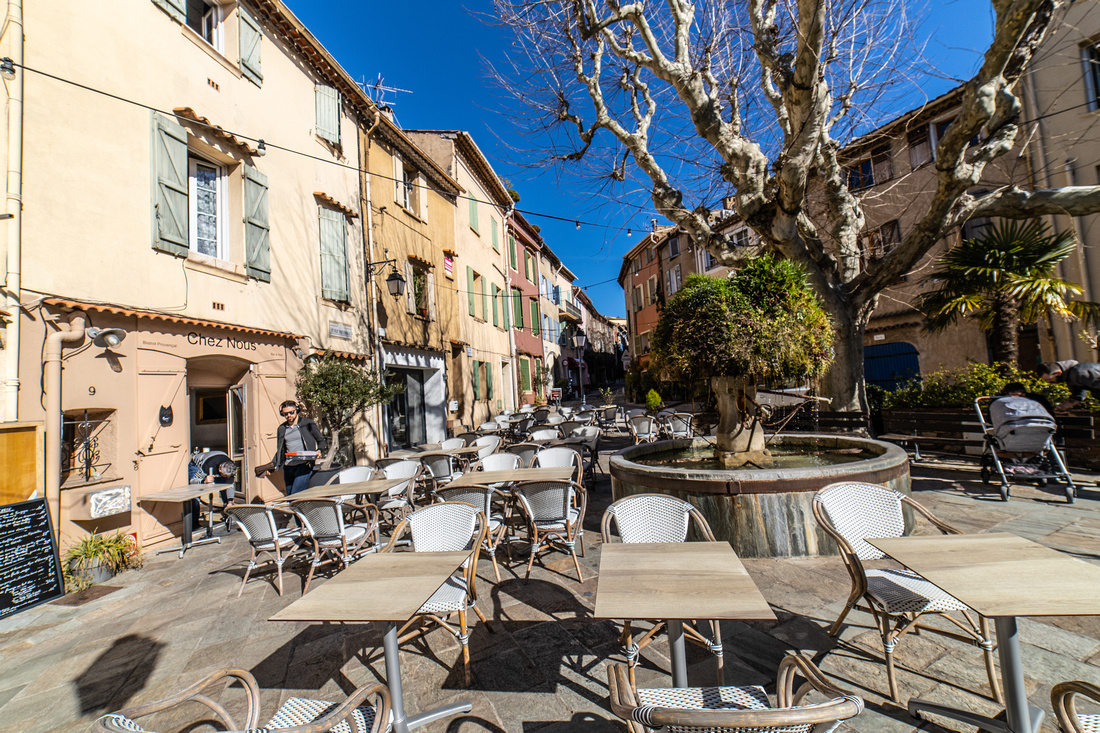
This image shows the advantage of such a wide angle.... It really gives you the whole scenery....
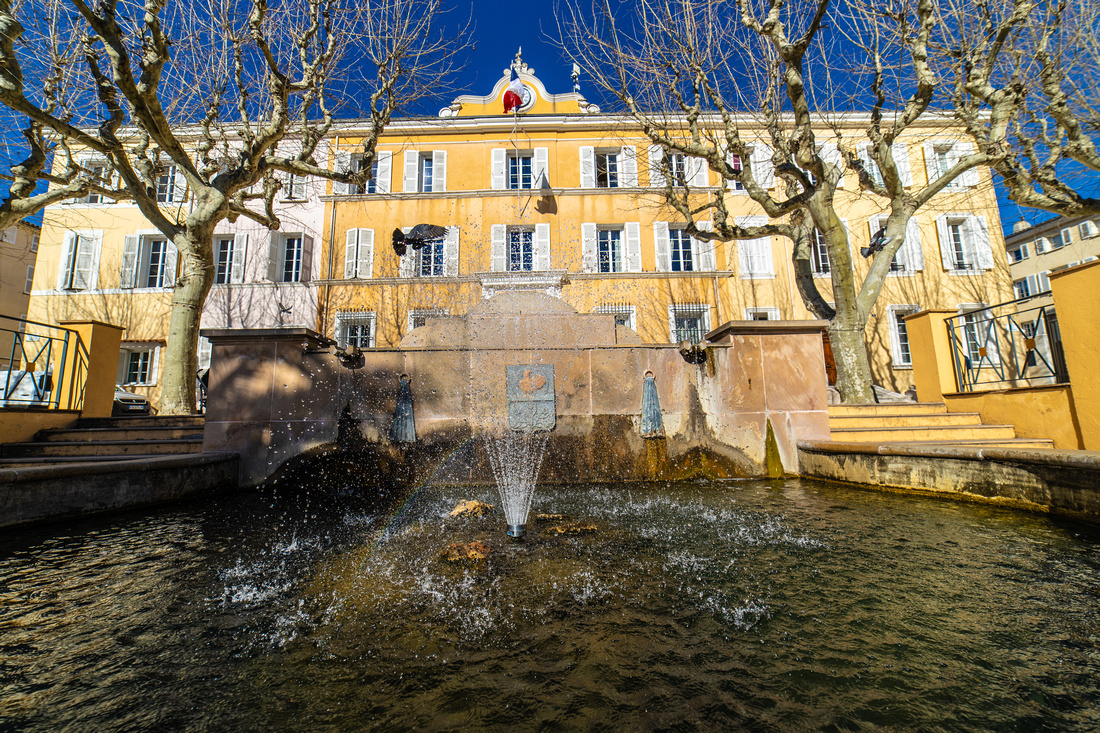
I do like this photo as well - but you have to go there very close...
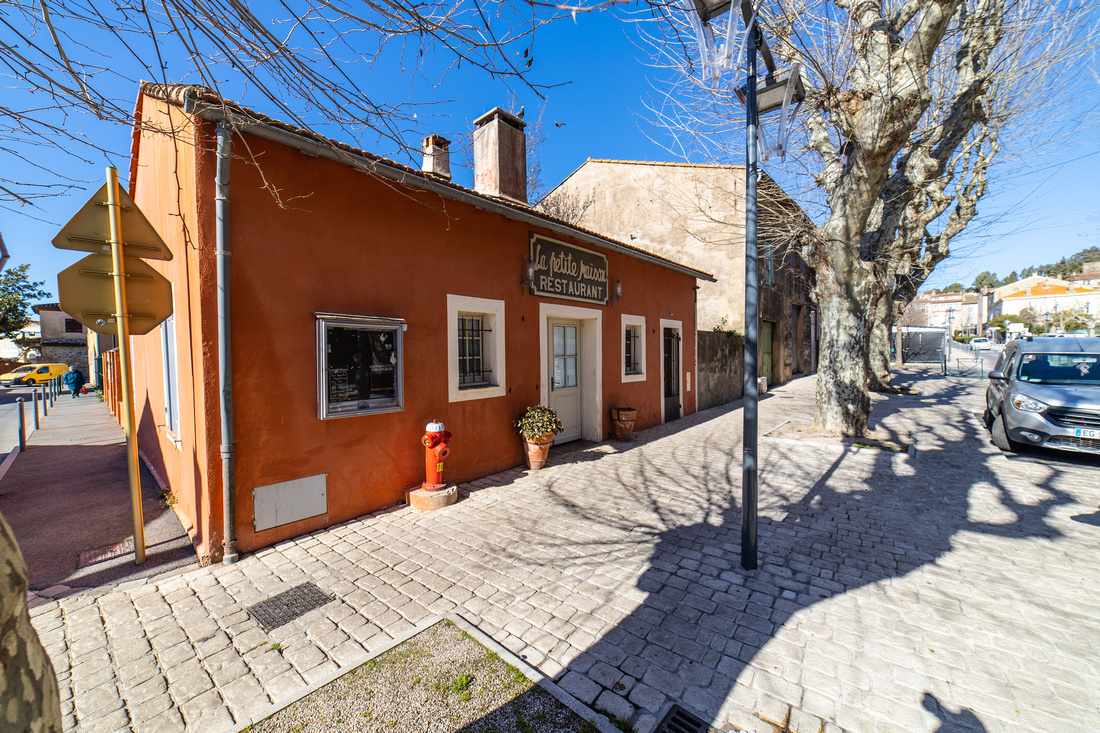
Yes you can shoot around corners....
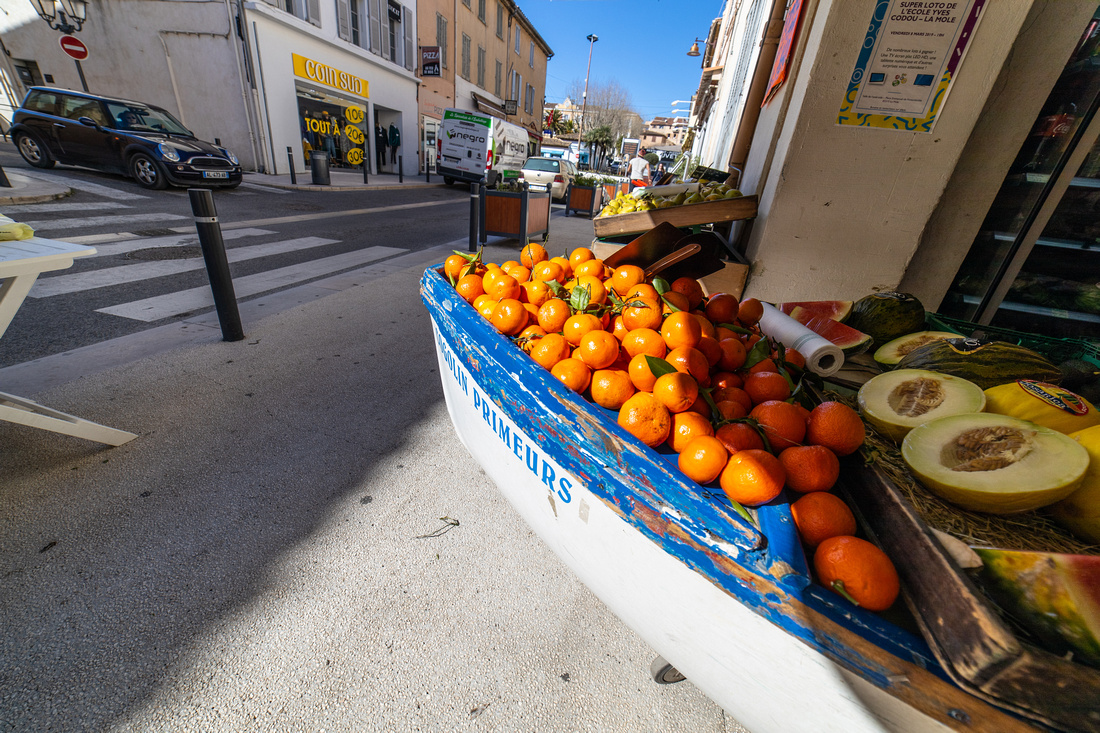
This photo was tricky to shoot... but finally it works since the car on the left is completely in the image....
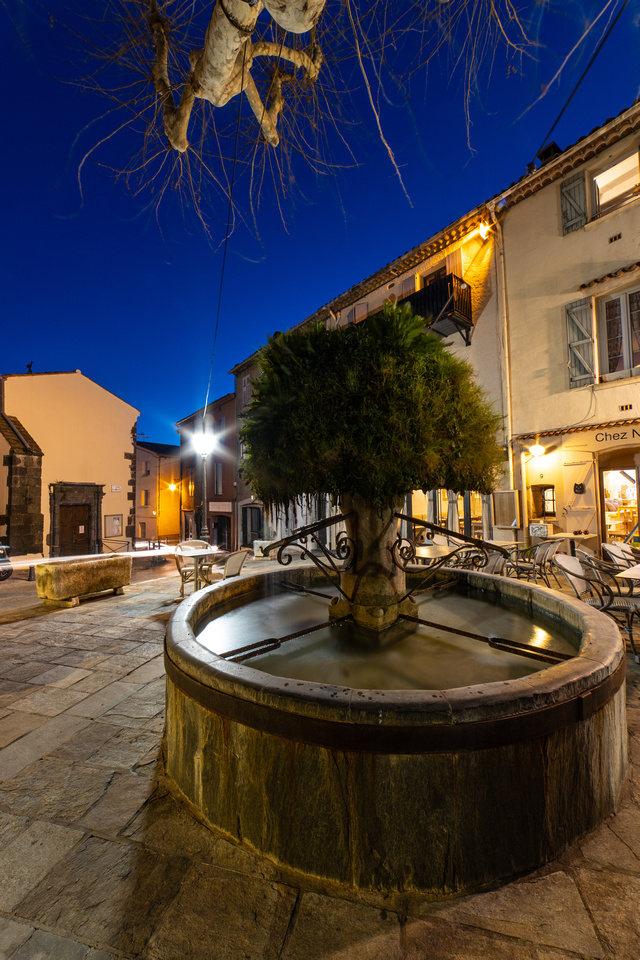
If you look on the top of the image:.... The tree is behind you....
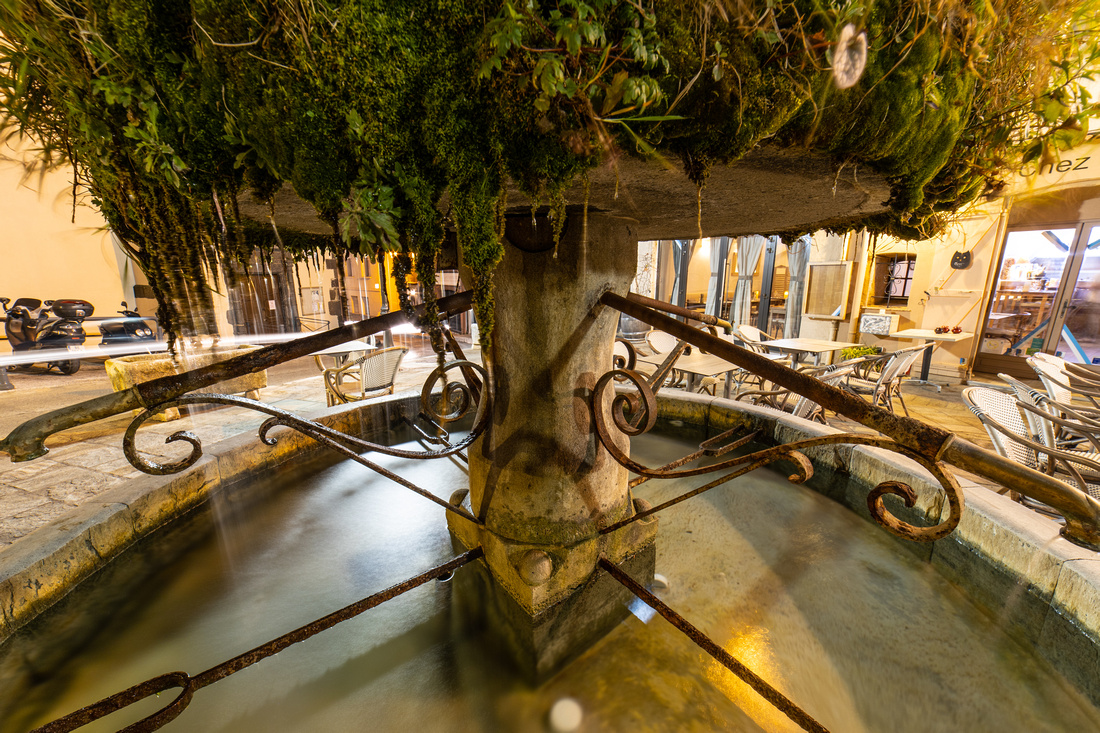
This shot was a difficult one - to get the right exposure time. If you shoot too long (15s) the water flow gets out of the image....
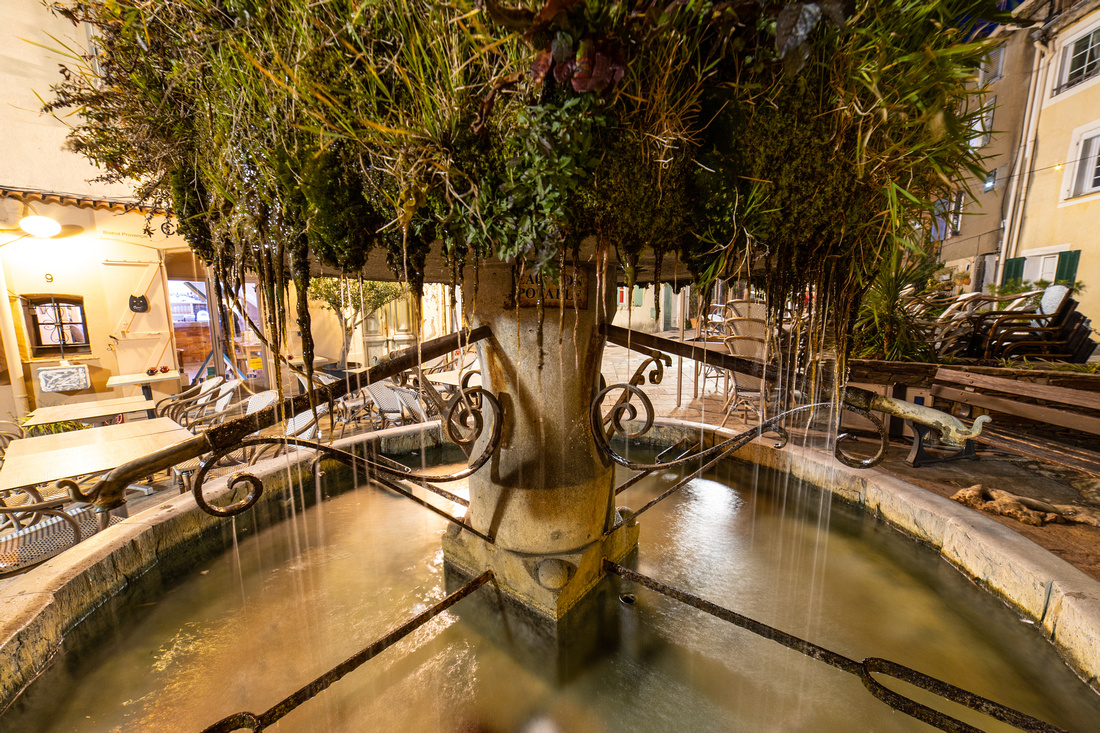
So in the next shot the exposure time was only 3 sec.... and now you see the water flow much better....

I like the way how the lens shows the steam in the pot.... But I would like to have some more aperture blades....
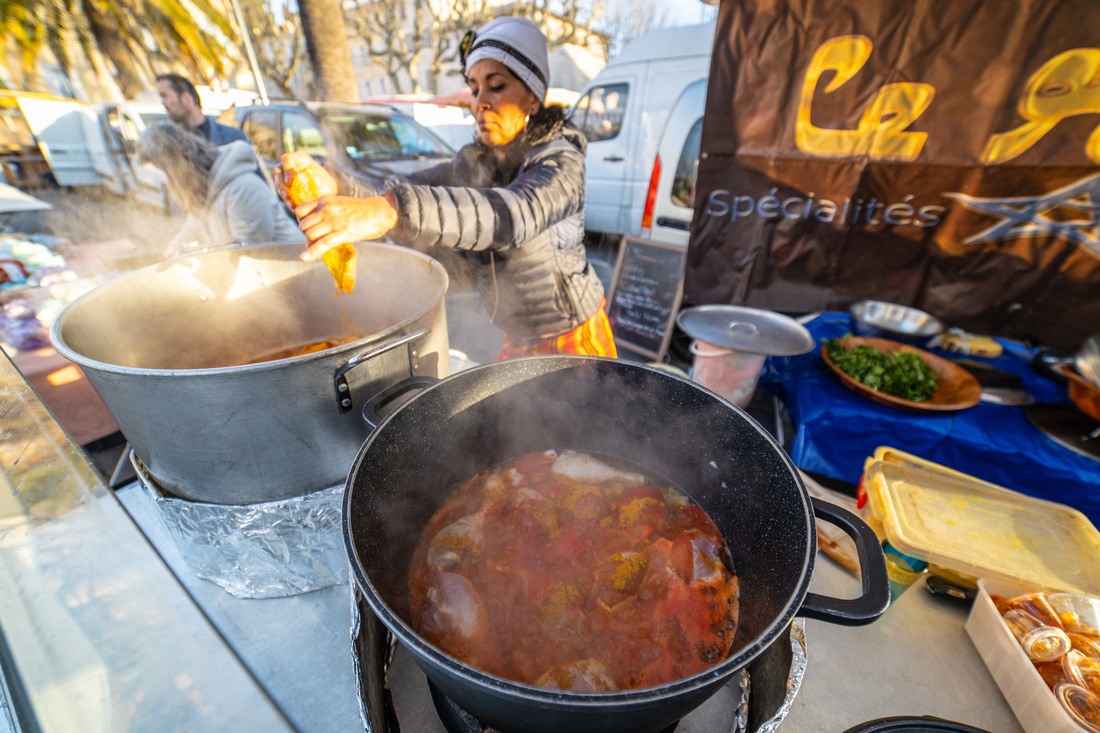
And here you see the advantage of the lens to capture the scenery again....
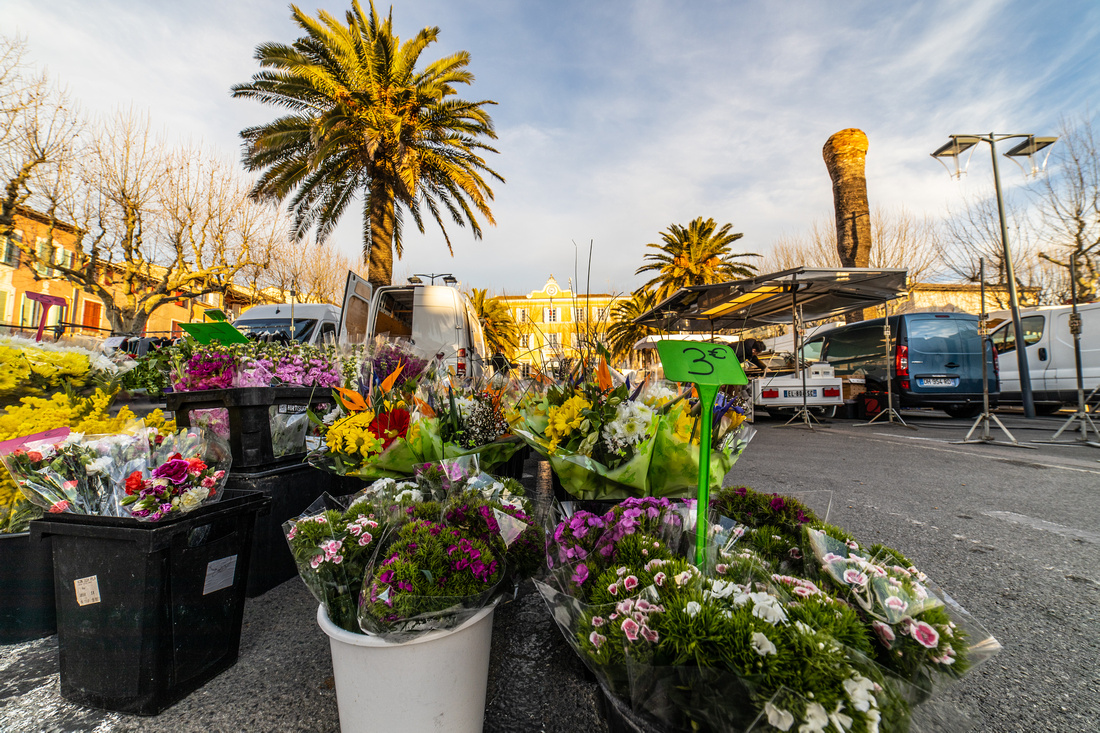
Again: a prominent foreground....
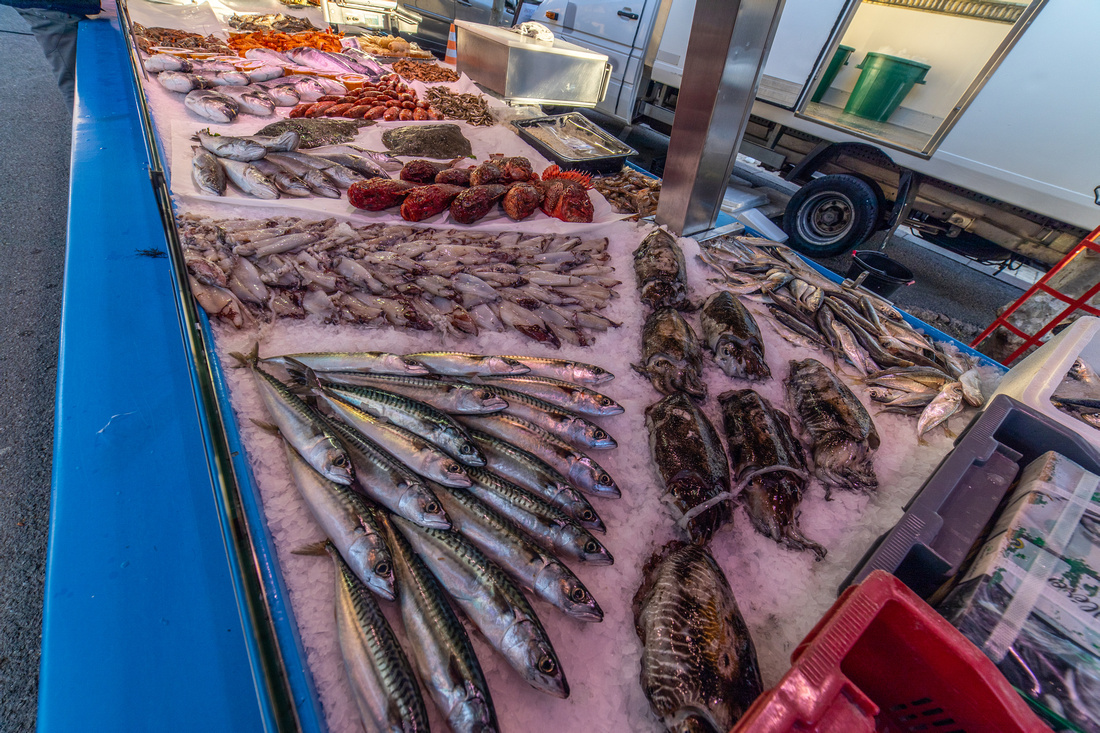
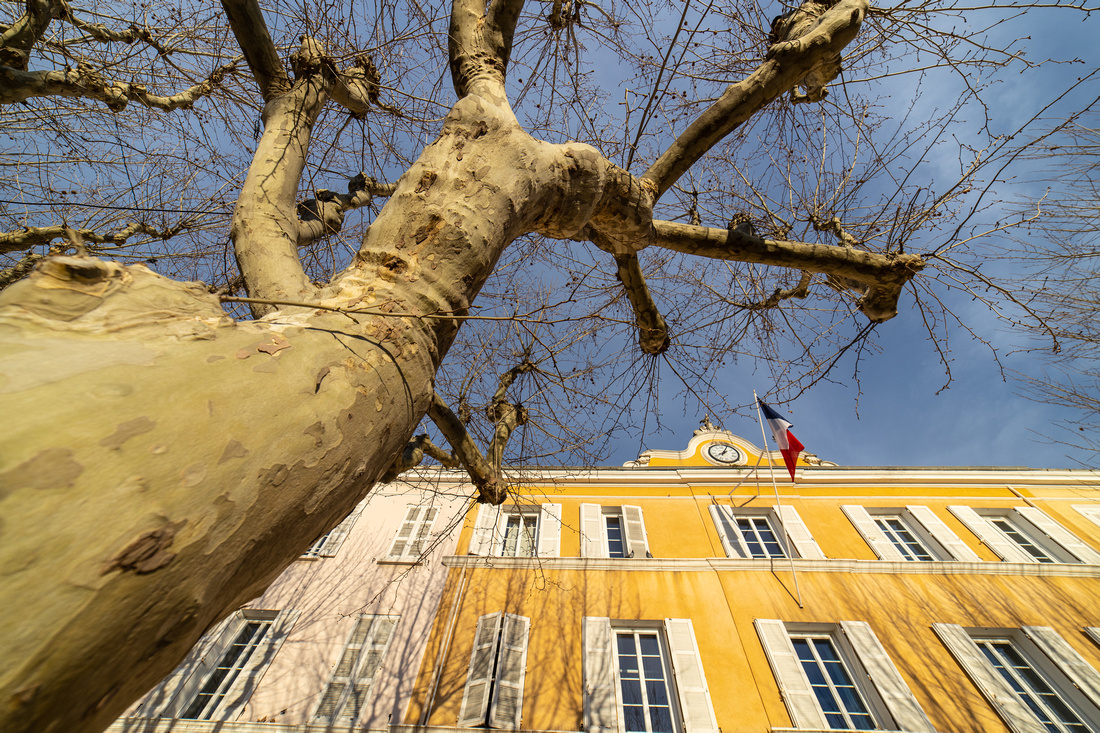
Again - putting things in context.....
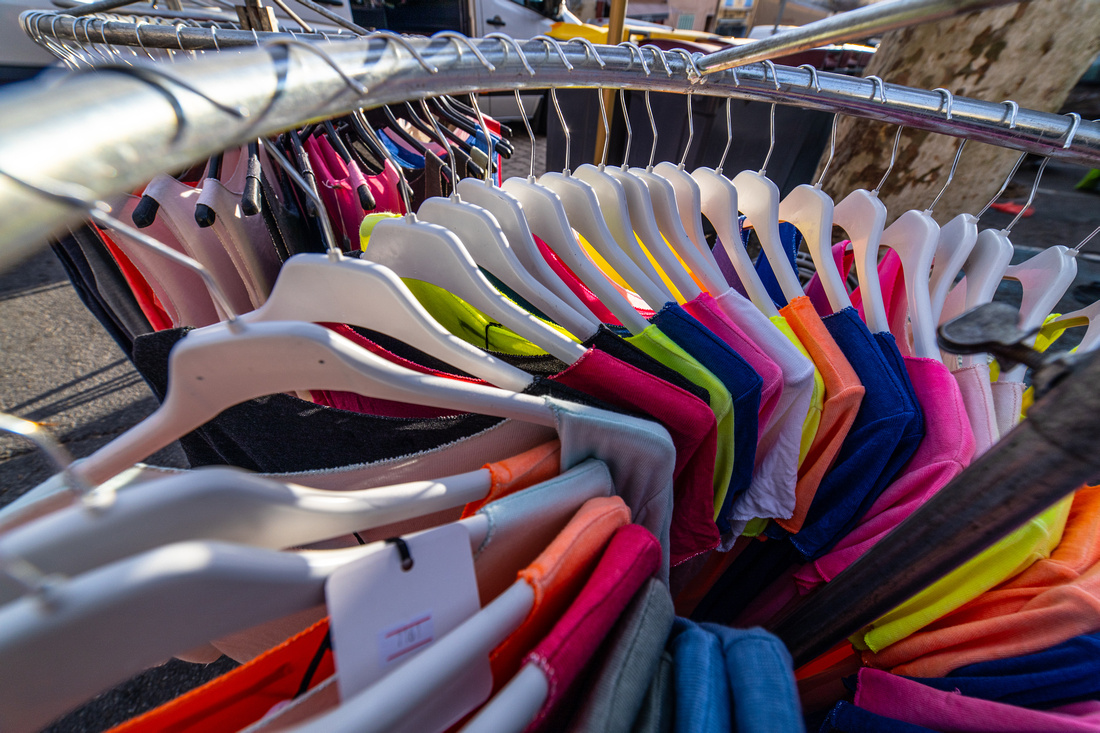
The perspective of the lens is amazing: this is shot in a round circle- believe it or not....
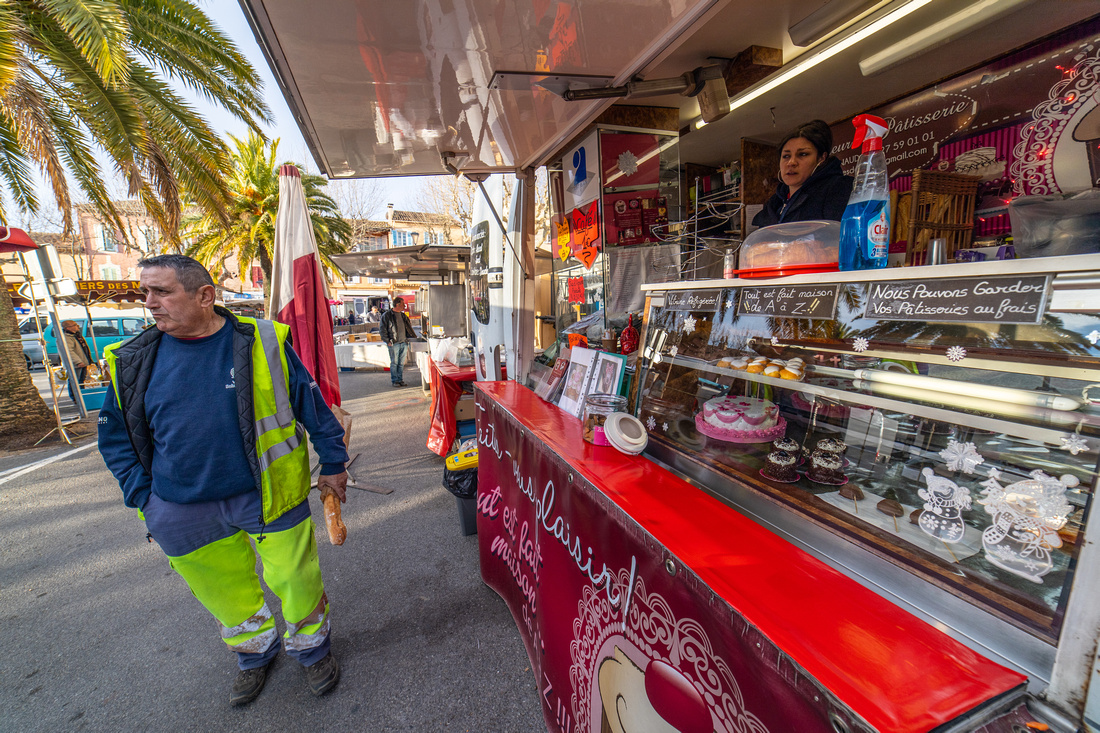

The foreground becomes really prominent....
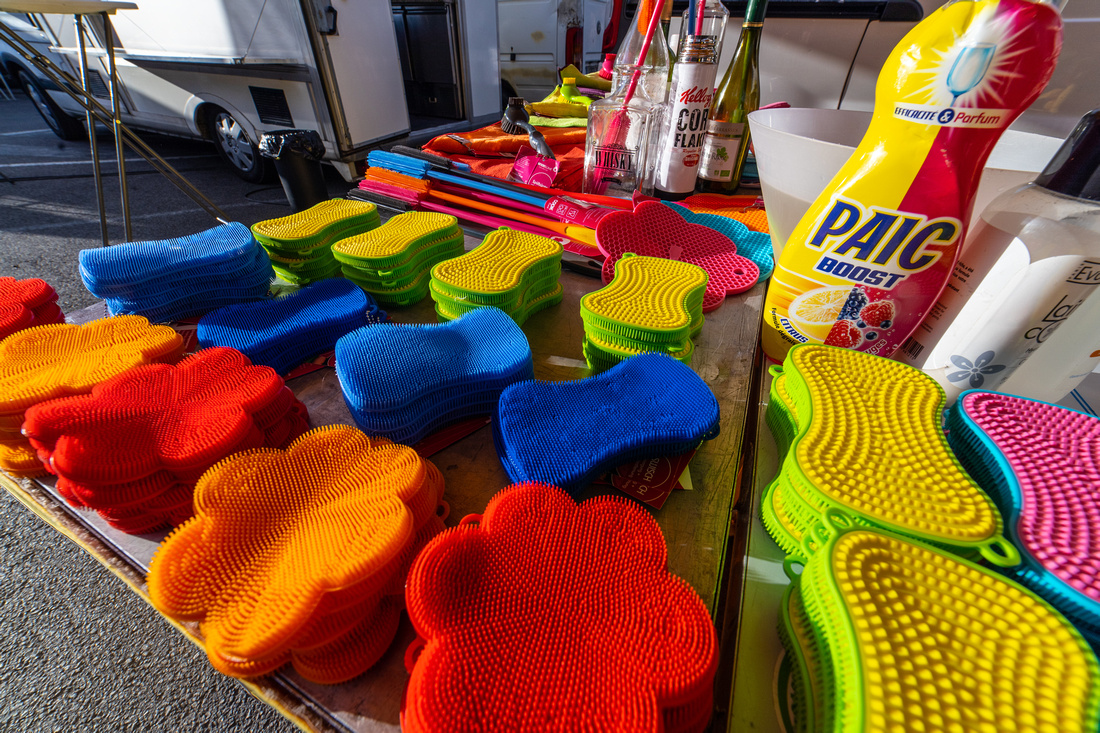
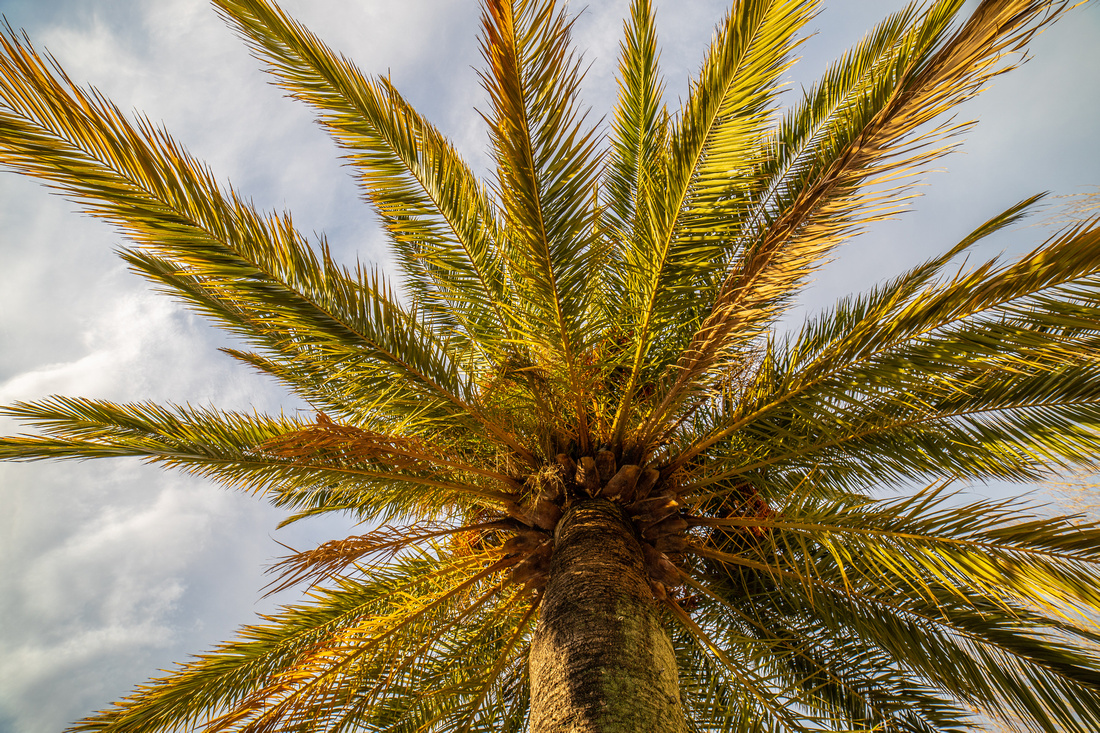
This was the last photo from my series in South of France. The next ones are from Shanghai in China...

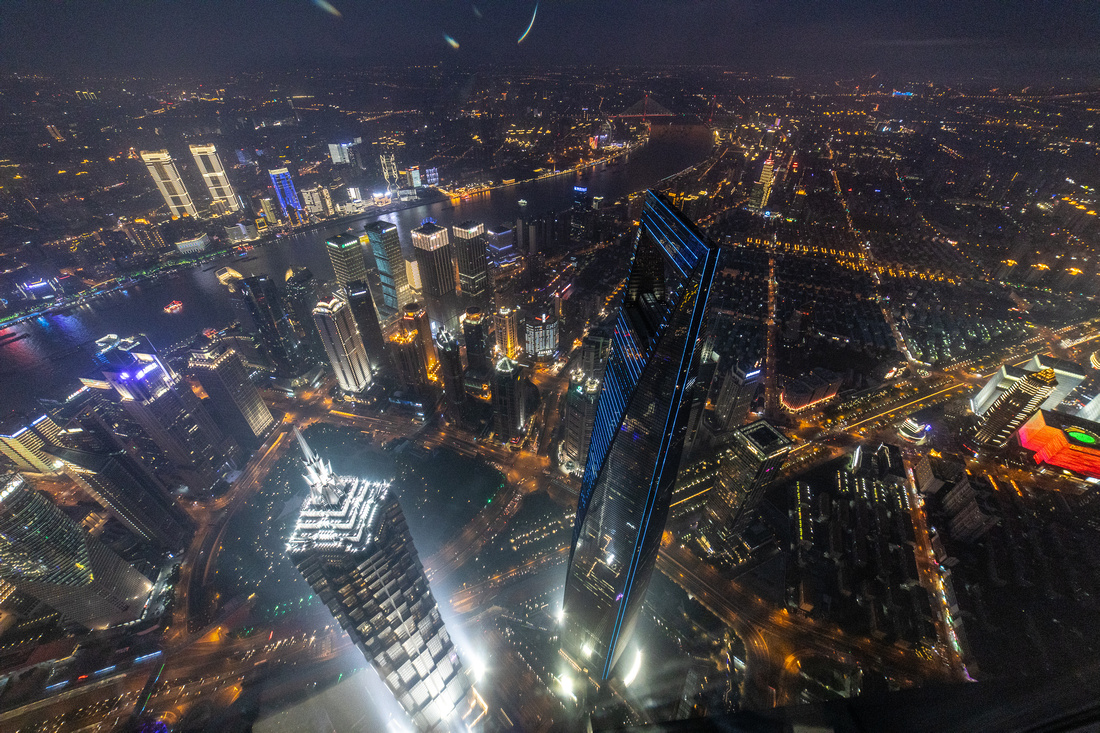
The view from top of Shanghai. looking from the top down on a 480m high skyscraper.... called the bottle opener....
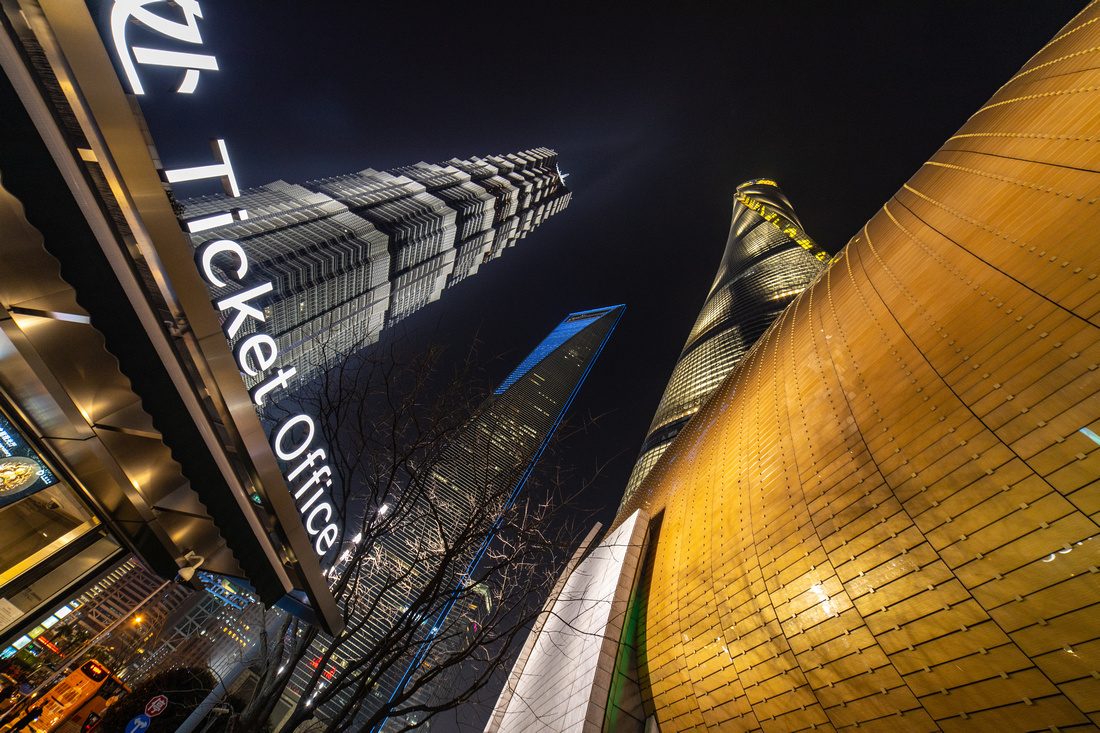
This photo is from the bottom. I made a similar shot 2 years back - but with the 12mm f2.0 on the EOS M5. for me this image and this viewing angle gives the perspective an edge over the APS-C lens...
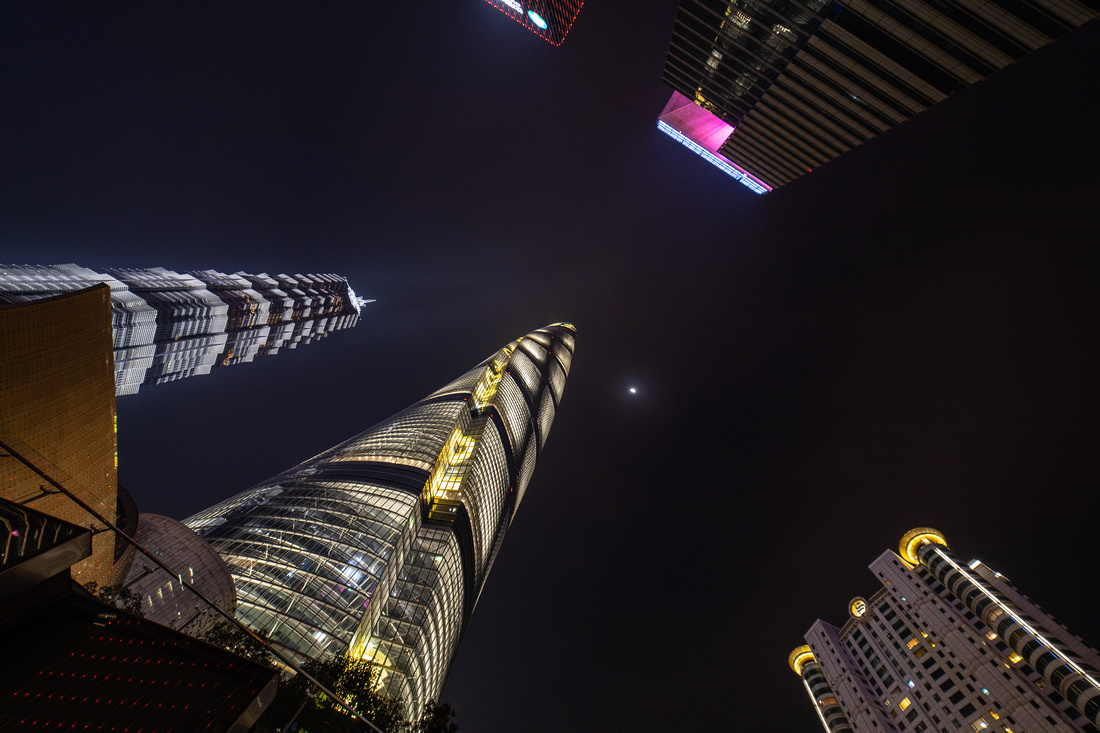
I liked the way how the moon came into the picture..,...
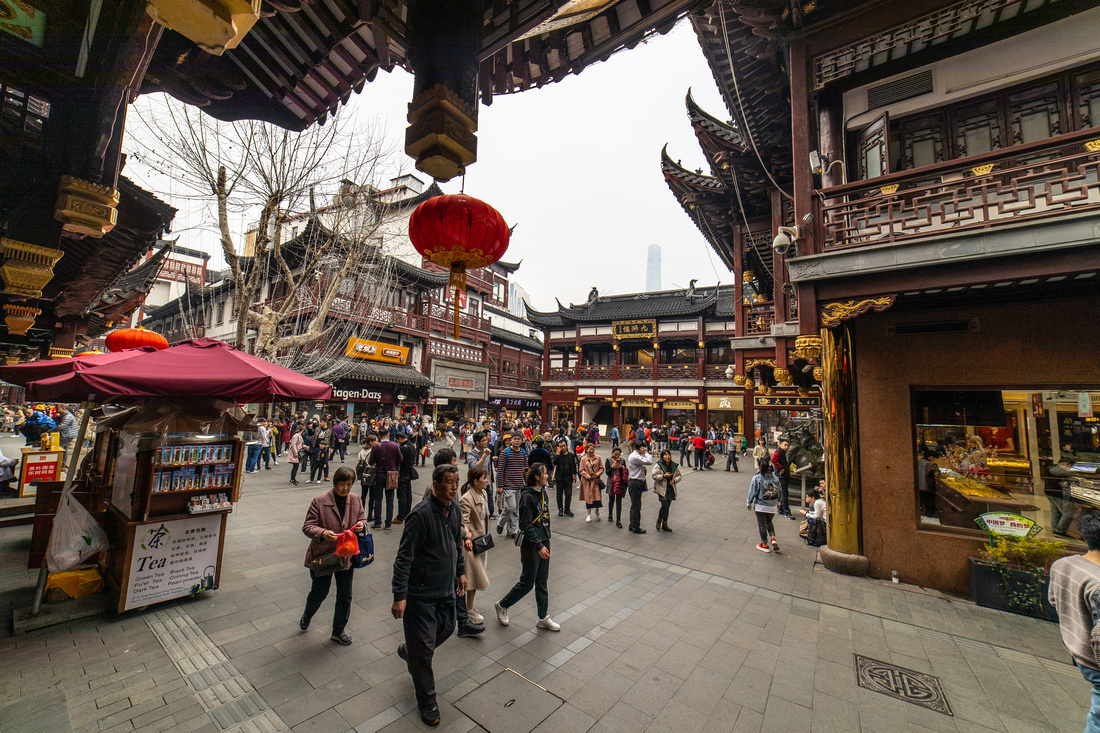
These wide places are hard to capture otherwise....

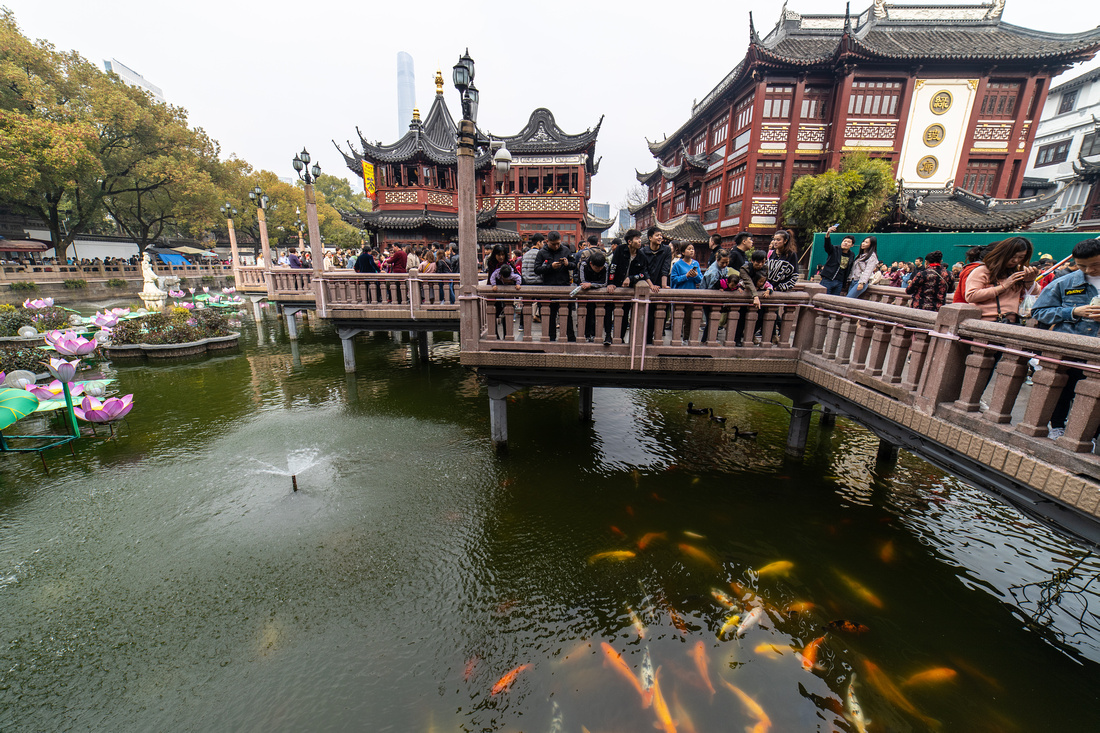
again: to get the whole scenery in one image?
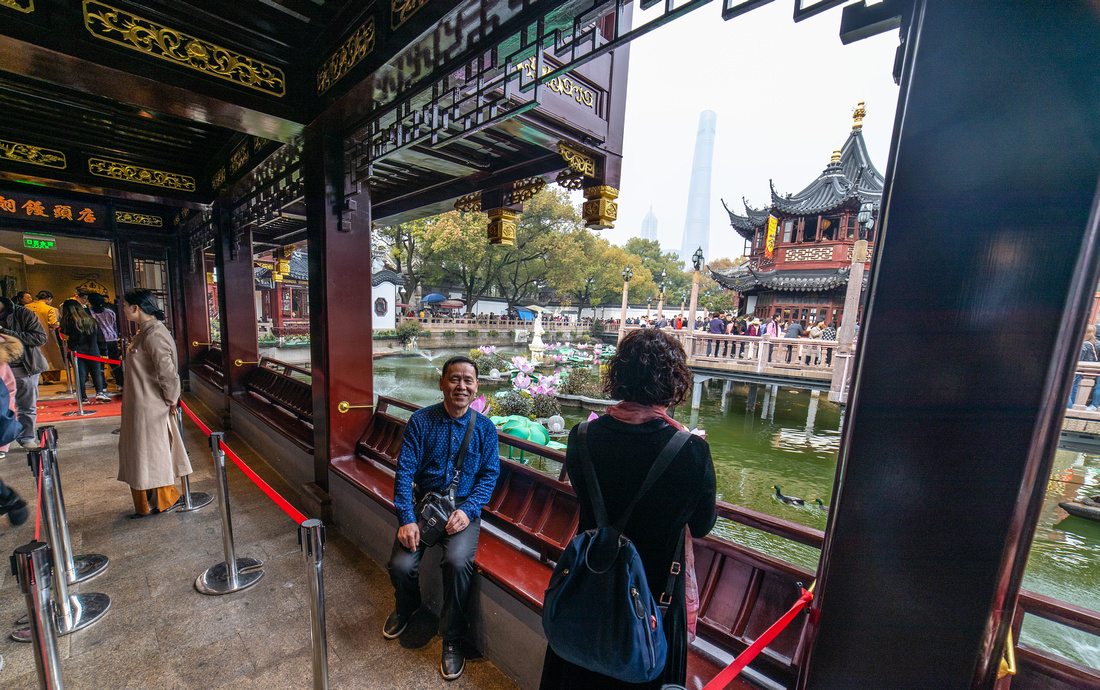
Bit the lens becomes even stronger when people are in the scenery...
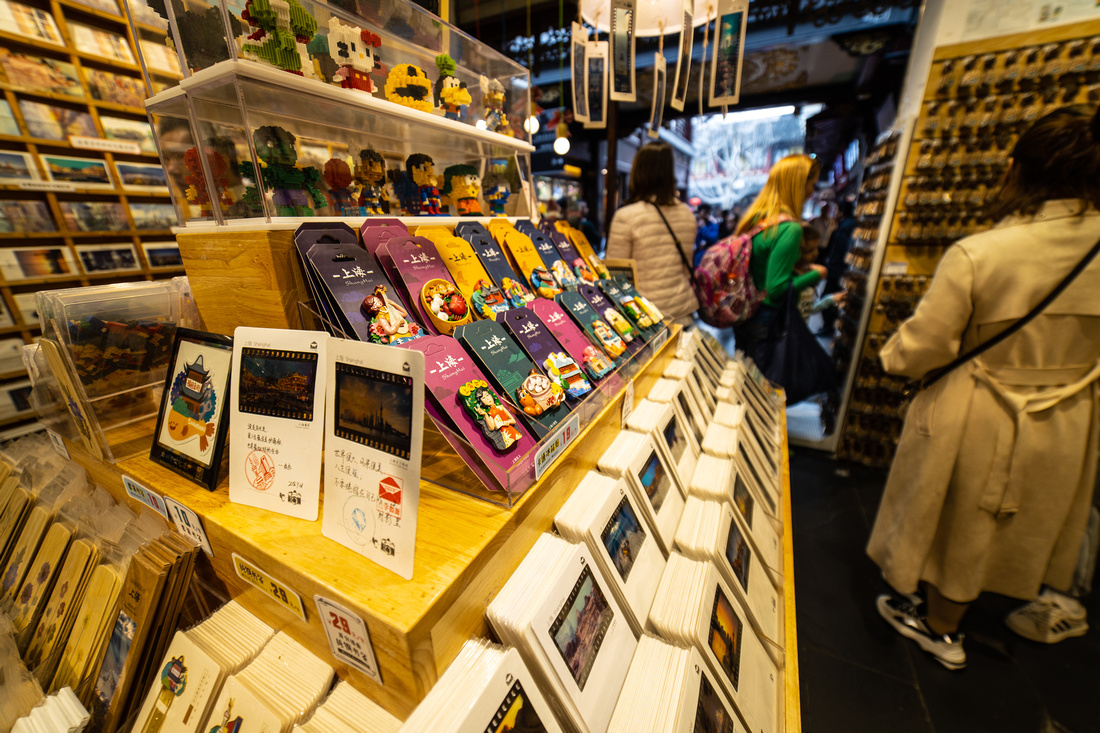

I liked this work place of people who just left for a break....

The image is on one side pretty sad: this part of Shanghai will change in the near future. But the people who owned this small houses became millionaires (in US-$!) and they got a new flat on top of this....
I hope I could give some ideas how to use these kind of lenses. Manual focusing is not that difficult but choosing the right viewing angle is much more tricky with such a wide angle lens. Definitely not a lens for all opportunities but definitely a lens I want to have with on all of my trips - just for the specialties where these lenses are shining....
Verdict: Highly recommended
After first slight disappointment: Knowing the lens since a couple of years this copy is confirming the good things I know about this lens - but I have to give the quality assurance department in Samyang the task to check the lenses they give out a bit better. This copy needs at least a readjustment.. And in terms of useability (nice buttery manual focusing) and weather sealing it is really step up against the original version..
On the other side: it is a very special lens - this is the nature of ultra wide angle lenses. It has some flaws but there are excellent workarounds.... finally what you get from the lens is surprisingly good...
For whom is this lens for?
- It is made for owners of the R-Mount cameras - but the EF version shows similar results.
- Everybody who likes a lightweight high performance lens.
- When to take the RF Mount version instead of the EF mount? This is a very good question. For my taste: if you have decided to got with the R-Mount and/or you do discontinue with EF Mount: go for it. It is lighter and easier to handle.
- It is more a lens for enthusiasts, for people who like to shoot manual focus.
- But manual focus is so much fun to use on the Canon mirrorless cameras....
But the lens has a bit of weaknesses too:
- It is not native RF: I guess a lens designed for the 54mm bajonett diameter and the short flange distance can be even smaller and lighter
- I miss an EXIF chip - this would be even better
- Not a real weakness but a wish to the designers @ Samyang: instead of a color mark please but something you can feel that you can mount the lens on the body without looking at it....
But if I look at the lens at a glance: I give the lens a highly recommended!!!
Miscellaneous
Most of the Photos werde taken with the EOS R and the Samyang MF 14mm f2.8. I clearly marked the photos which were taken with the EF-Mount
Only the product shots were taken with the EOS 5DMkIV with the EF 100mm f2.8 L Macro IS USM.
The sample photos of the lens - and a couple more - you find here.
There is also a link te the image quality comparison
Please have fun and enjoy.
Disclaimer
I got the lenses from Samyang for testing for free.
There is no money involved. Therefore this is my honest opinion about this lens....
After my first experience with the Canon EOS R the lens choice seems to be too heavy to travel with... The combo of Canon´s great EF 85_L-IS monster and the even heavier Milvus 15mm f2.8 let me ask Samyang: will you come up with something light being designed for Canon´s RF mount? The reply was astonishing: Yes we do, we checked your profile on social media: would you like to review the lenses. Since I like to test glass -you always learn from it- I agreed. I took quite a bit and some communication with German customs I finally got the lenses from Samyang, the 85mm f1.4 as well as the 14mm f2.8.

My first reaction: disappointment
My first reaction was disappointment. These lenses do not looks being originally designed for mirrorless cameras. I just looks like a simple mechanical adapter - and even worse- without any EXIF chip build in. Therefore no exif data transferred, no focusing aid (an awesome tool on the EOS-R!!!) and no focusing wide open and automatic aperture closing. I communicated with Samyang, the replied properly and asked to give it a try. So i did. And please read to the end!
So I made some first tests at home which were astonishing and later I took them on a little trip to South of France to shoot with them there, too.
But let's start with a topic which is important for these kind of lenses:
Manual focusing on the EOS-R without communication to the lens
or: where mirrorless cameras are shining...
Today many people believe that autofocus is essentiell. Well having autofocus can be helpful, but can be annoying, too. I skipped my Sigma 85mm f1.4 because of Autofocus inconsistency. it is no fun if a lens while open doesn't deliver sharp images where it should be sharp. And honestly: on a DSLR shooting manually through the viewfinder without focus confirmation and special focusing screen build in the camera? No fun at all...
But the EOS R has one feature build in which makes it easy to focus: focus peaking. It was the first time I had to use it exclusively to work with this feature. I was astonished how well it works. The accuracy range was really comparable to autofocus (!)...
The other advantage of focusing with manual focusing lens is the possibility to use the 5x or 10x magnification in the viewfinder. This methods gives you the highest level of focusing accuracy. But in low light you will suffer from the noise in the viewfinder as well...
Generally spoken after using mirrorless cameras since almost 10 years now this type of cameras is much more suited for manual focusing than anything else. Mirrorless cameras - and especially the implementation of Canon - Is really joy to shoot manual focusing lenses. This opens opportunities especially on the budget side - but using lenses like the Milvus or Otus from Zeiss also in the very high end site...
The lens
Build quality
The lens is build pretty properly, it has a metal design for all optics and the mount to the camera, the lens hood and the structure holding the lensed are from solid plastic.

The lens without the lens hood.
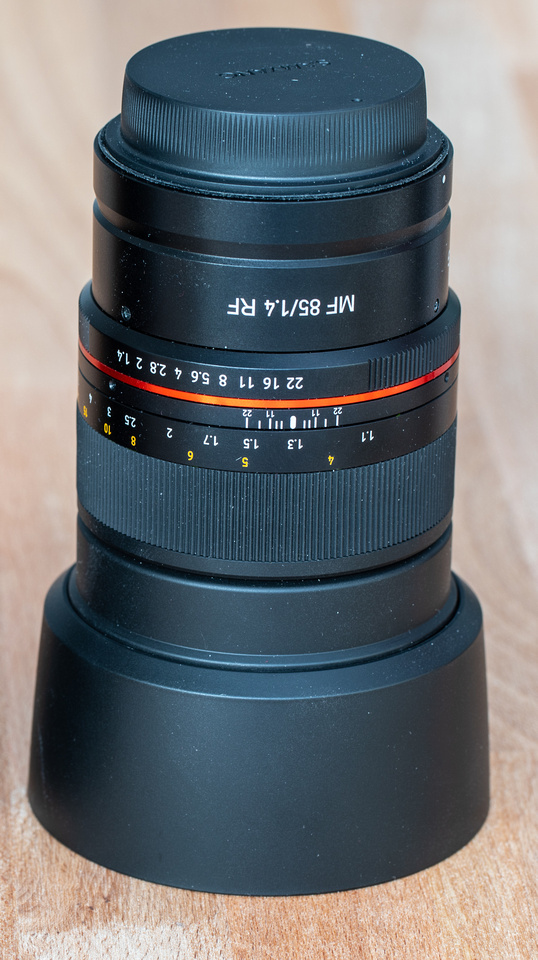
And here the lens in its full size...
The focus throw is around 110º and feels very well damped. This not much, on the other side the minimum focusing distance is only 110cm instead of 85cm for the other 85mm´s I own.
Just for fun I measured minimum focal distance... The result:
- Samyang 112 cm
- Canon 83cm
- Milvus 82cm
Remark Samyang told me that the lens I have tested is a beta-lens. Samyang will change the minimum focal distance to 1 m. This will be a bit better...
Personally I would like to have it even shorter that 85mm - I would love to have it at a magnification of 0.3....
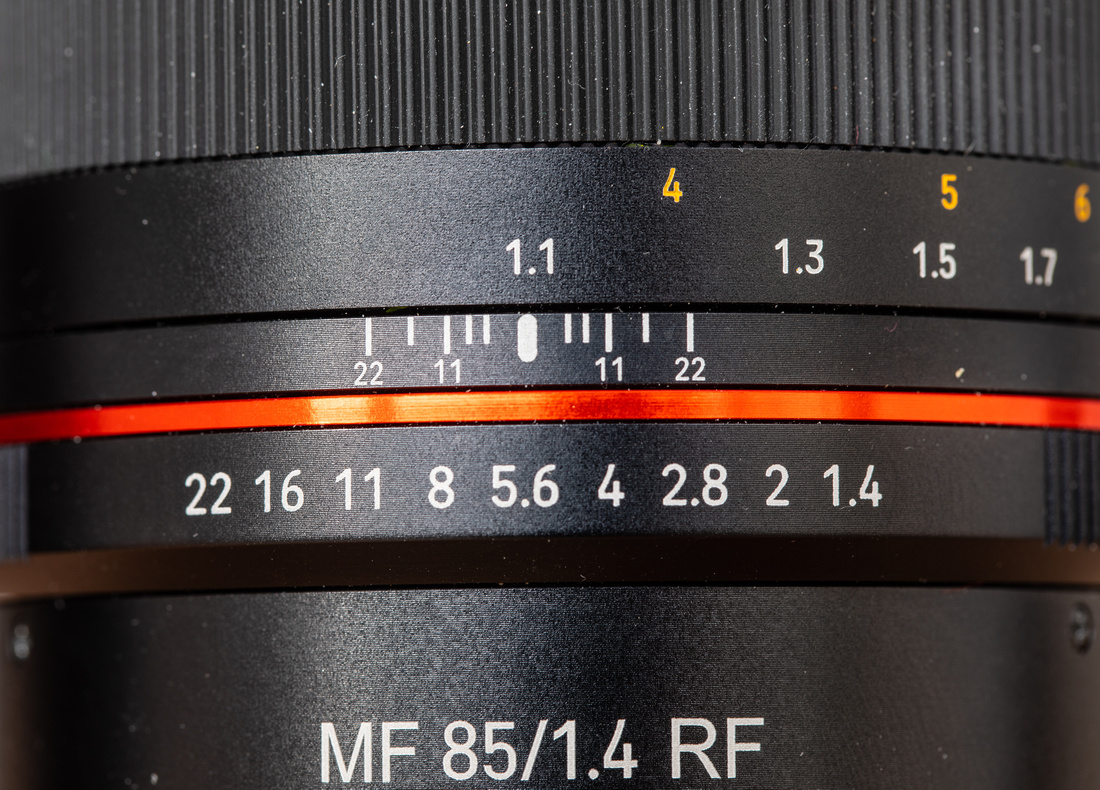
The aperture range goes from f 1.4 to f22 (yes, the other ones stop @ f16. The aperture stops are typically half stop, bit between f22 and f16 as well as f2 and f1.4 you have only 1 stop. What is nice - and an improvement over my former Samyang lenses that they have an indicator for depth of field. This is handsome and I guess it comes with no extra costs in manufacturing- just another mask for marking....
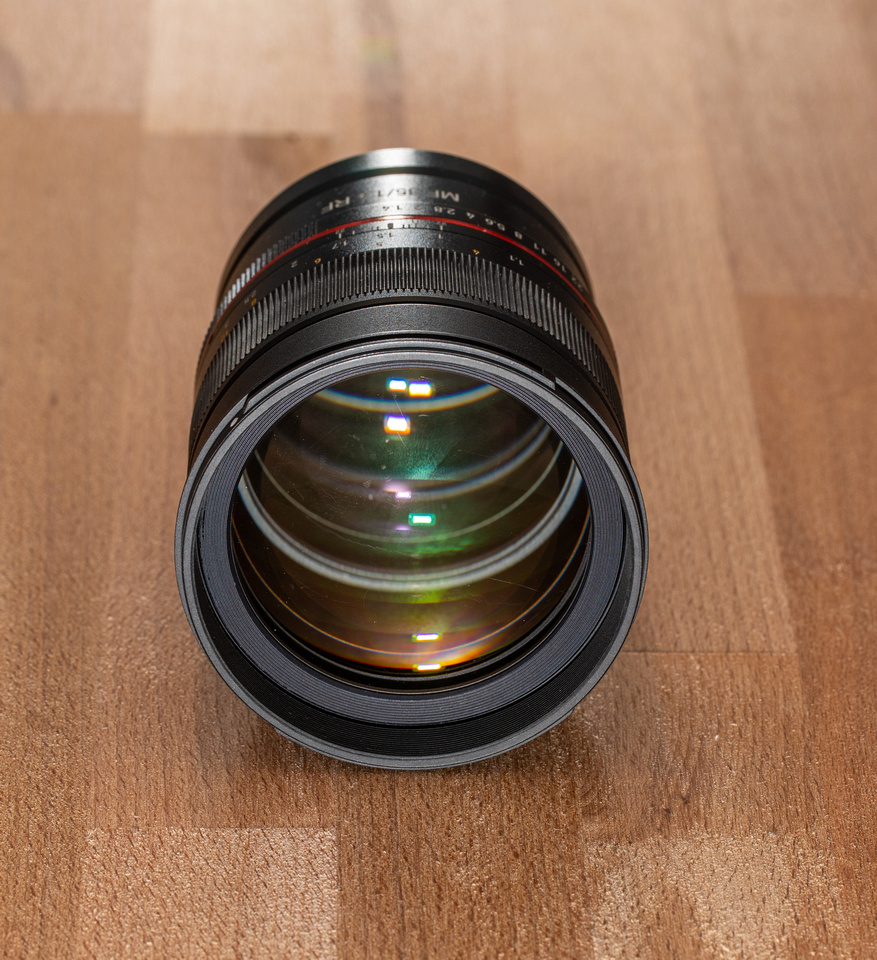
What amount of glass...
Surprisingly: the lens comes with weather sealing.
The upper lens cap is good it is easy to grip, even with mounted lens hood.
The lens is pretty compact and lightweight:
- Samyang MF 85mm f1.4: 728 g
- Canon EF 85mm f1.4 EF L IS USM: 1177 g
- Zeiss Milvus 85mm f1.4 1484 g
All lenses I measured with hood and both lens caps. The EF mount lenses were measured including the RF to EF control ring adapter.
What can make you thinking: The EOS R incl the Samyang MF 85mm f1.4 weights 1390g. This is less than the Zeiss Milvus alone....
There are really no complains about build quality: it is a pretty well made lens!
Image quality
Image quality is a topic which comes with a lot of aspects. An 85mm f1.4 should have a at least decent sharpness in the center at f1.4. It should have a buttery smooth bokeh, not too much color fringing and at the end not soo sensitive against lens flare....
To test some of these topics I let this lens compete with 2 strong competitors (definitely not in the price point): The Canon EF 85mm f1.4 L IS USM and the Zeiss Milvus 85mm f1.4
Sharpness
What do you expect from a low cost lens. Not too much, or?
The first comparison starts with some photos taken at different settings. First an overview o the scene:
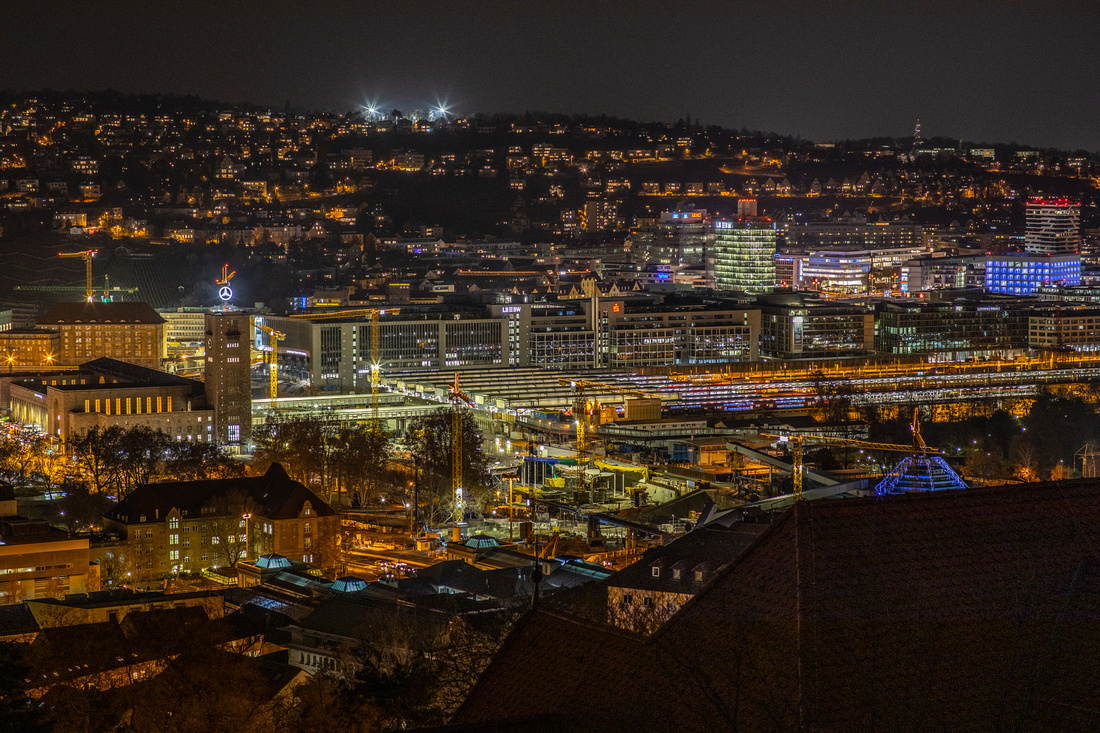
The photo shows the pretty famous Stuttgart railway station. You can see the construction work in the center of the scene.
The camera stood on a sturdy tripod. I have chosen 10s delay time for shutter release.
The photos you see below are taken at f 1.4 and f 5.6. You can identify the different lenses according to the name of the lens
- The Canon lens speaks clear text
- The Milvus is shown as EOS R 85mm - but it indicates the the f stop at least.
The photos are screenshots taken left, in the middle and on the right side of the image.There is a little bit of inconsistency in the images because during the course of the photo shoot - they switched off the lights in the construction area.
The photos are 100% screenshots taken in lightroom.
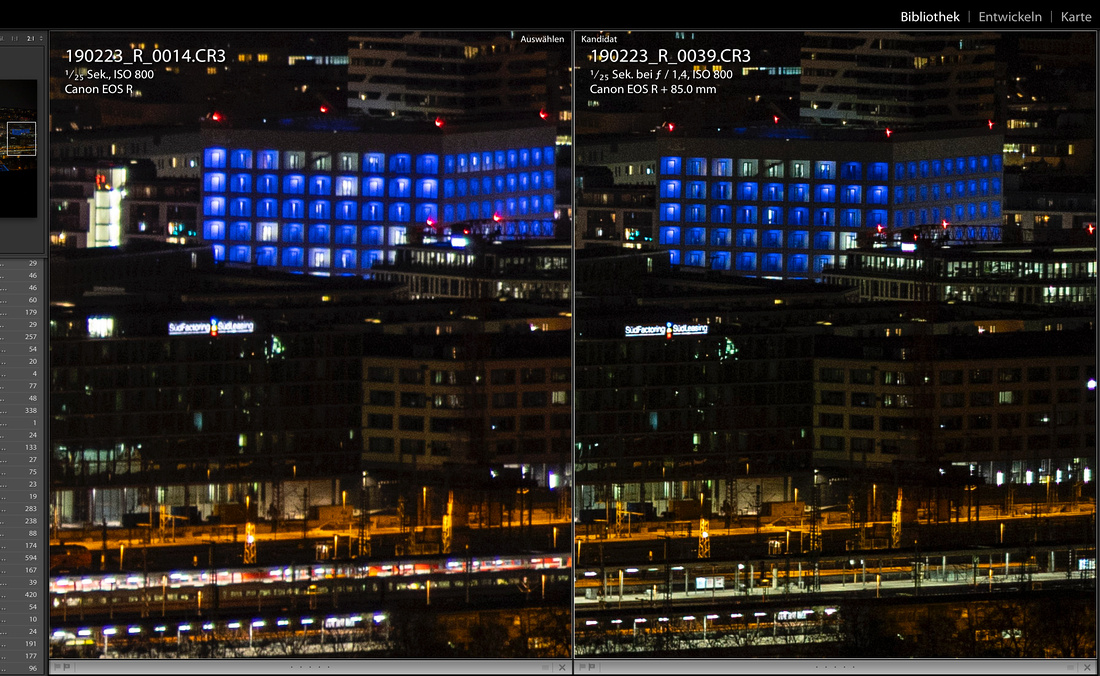
Lethes start with the Samyang vs Zeiss Milvus. The color rendering of both lenses is pretty similar. But the Samyang is definetly softer...

Now the comparison to the Canon. First of all: The Canon is a bit shorter in focal length why the picture details are a little bit different. Due to my taste the difference is a bit less - or in other words: the Milvus shows a bit better performance...
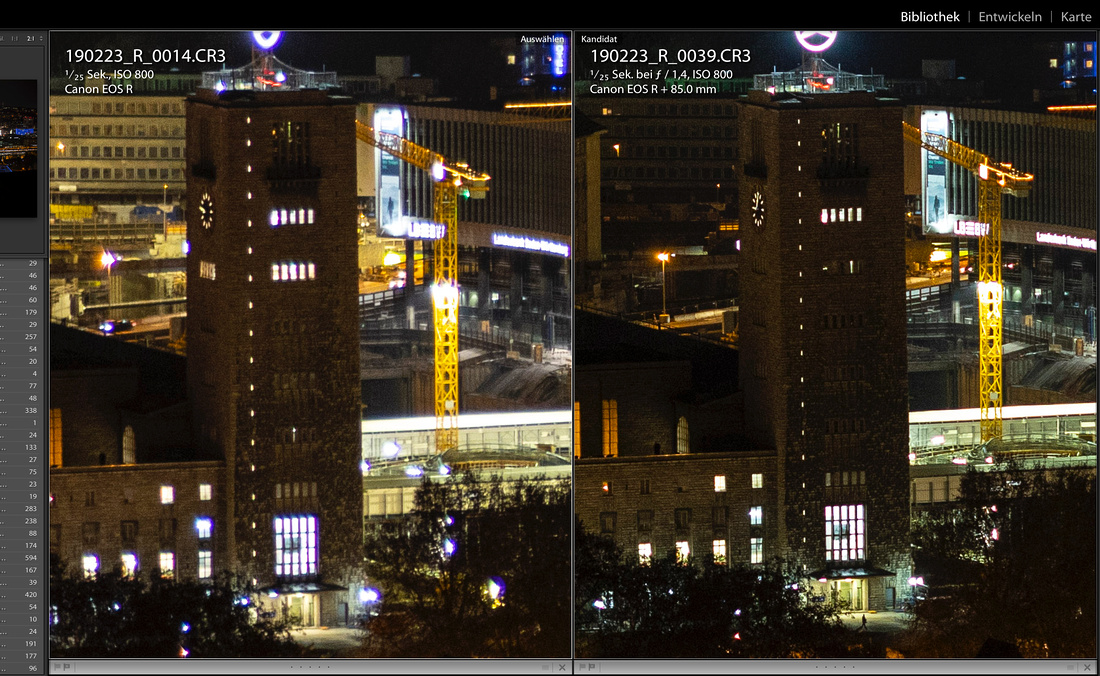
On the left side on the bottom of the tower additionally the Samyang shows more color fringing (chromatic aberrations).
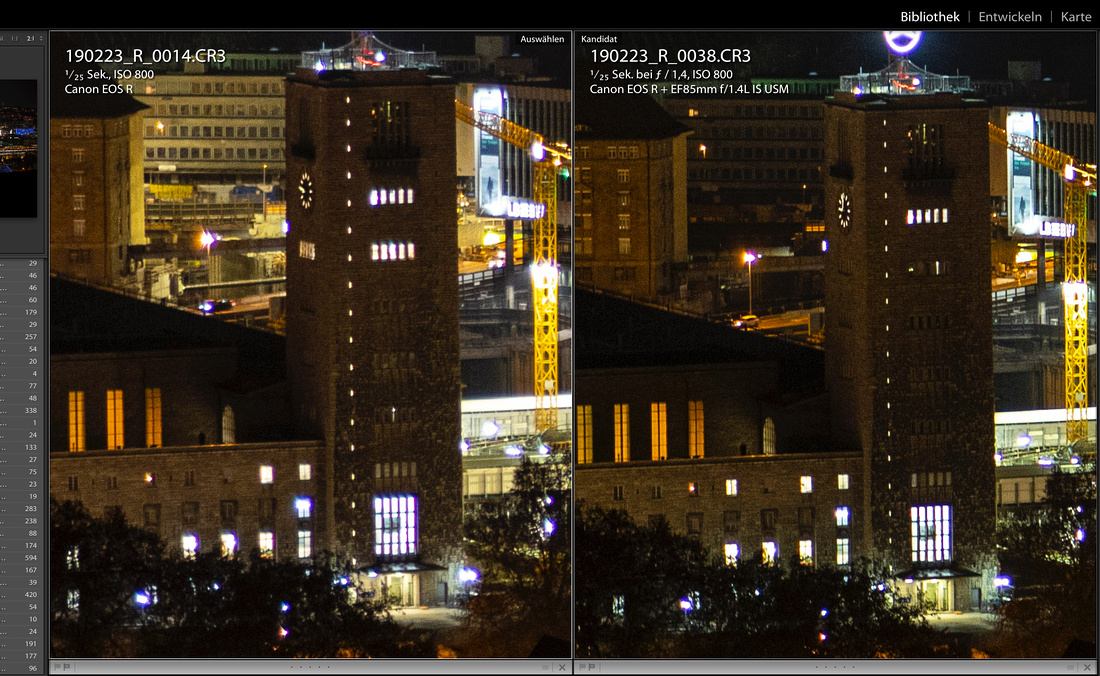
In the comparison between the Samy and the Canon The Canon shows a bit more chromatic aberrations than the Milvus....
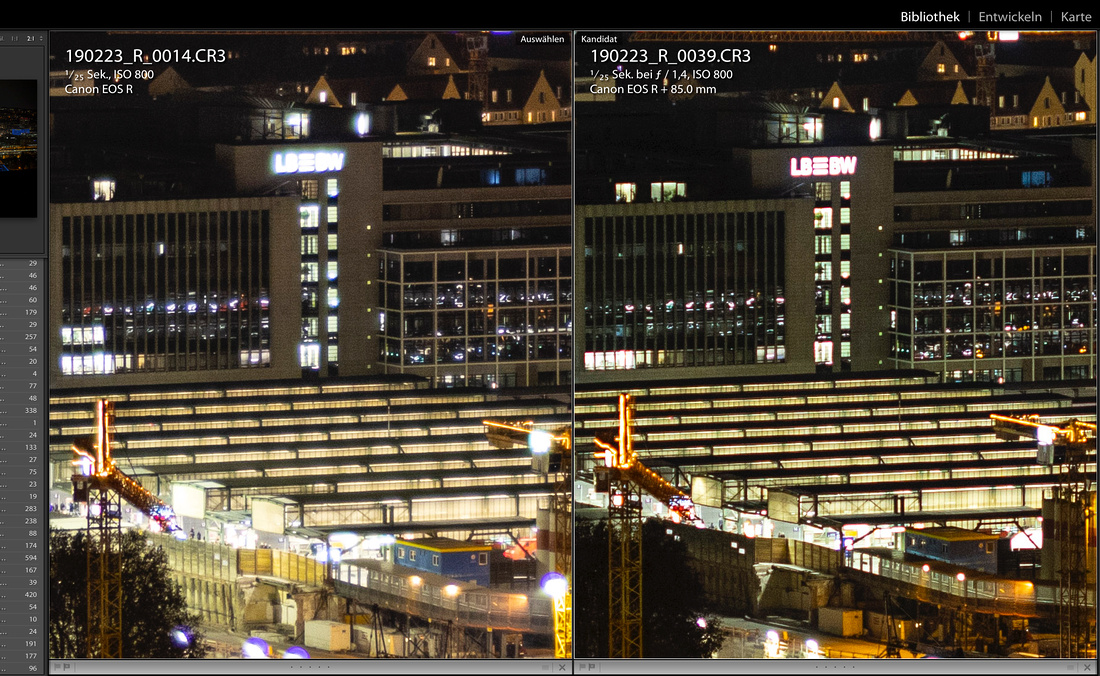
In the center of the frame please look at the "LBBW" signs: the Milvus is here really strong..
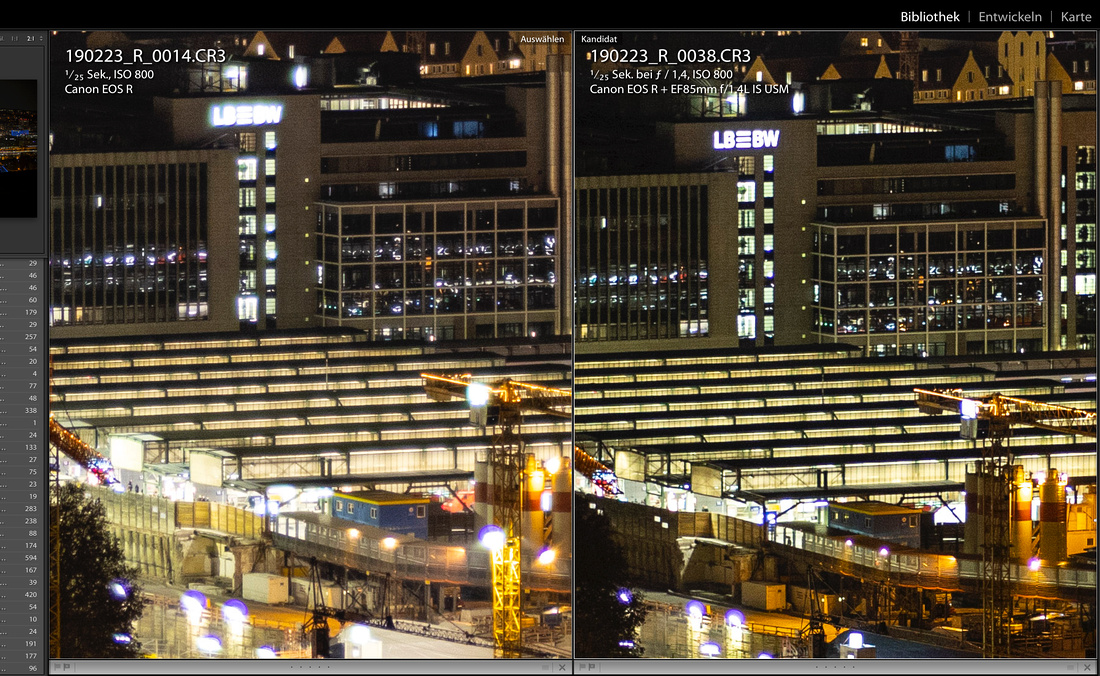
In the center of the frame we do have the similar impression. For my taste the Samyang has some weakness in terms of lens flare. But for my taste this is acceptable, especially at the price point of the lens.
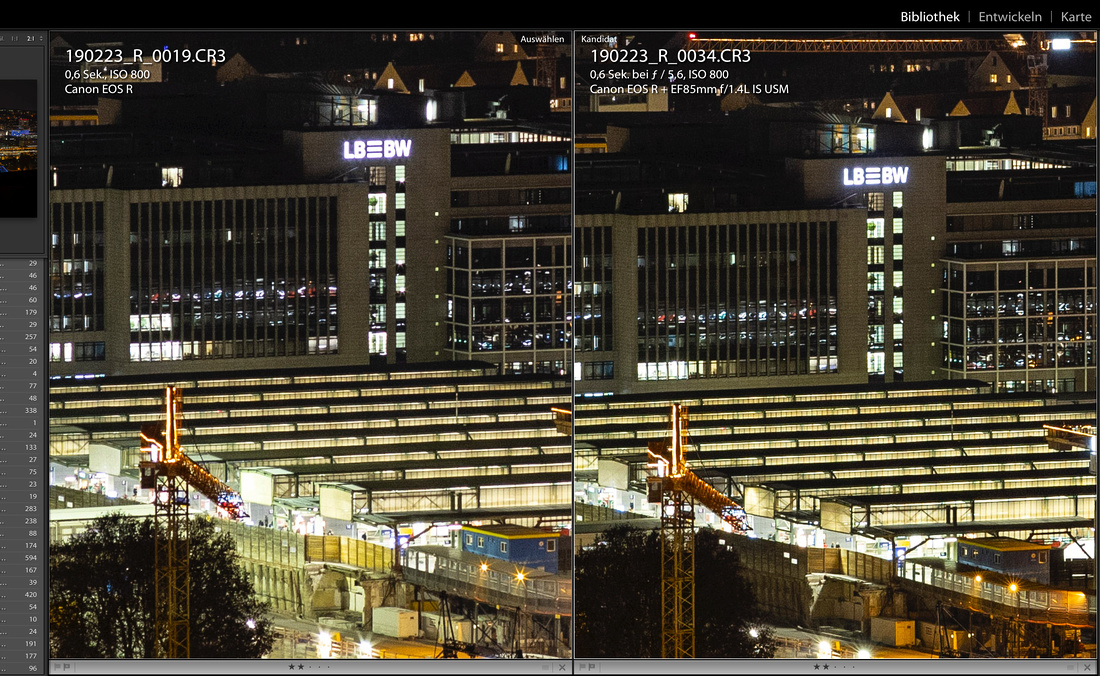
At f 5.6 the lenses are getting pretty close to each other.
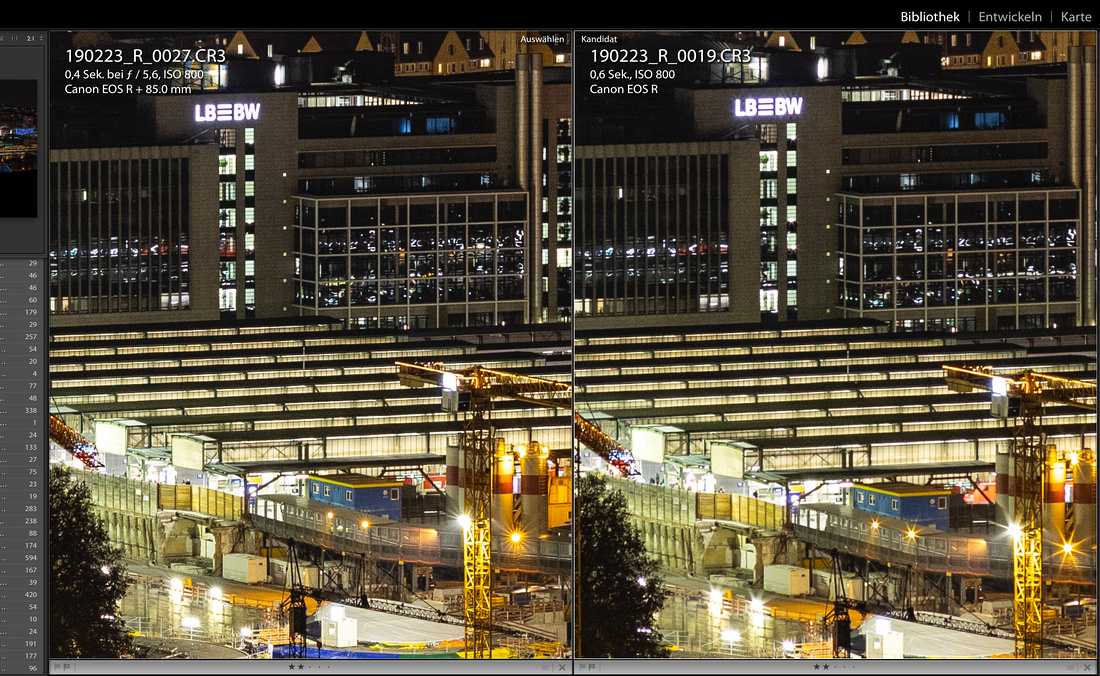
In this image the lights in the construction area is still on. What you clearly see is that the Milvus has 9 blades vs 8 blades on the Samyang.
But in terms of sharpness. the lenses are really close!
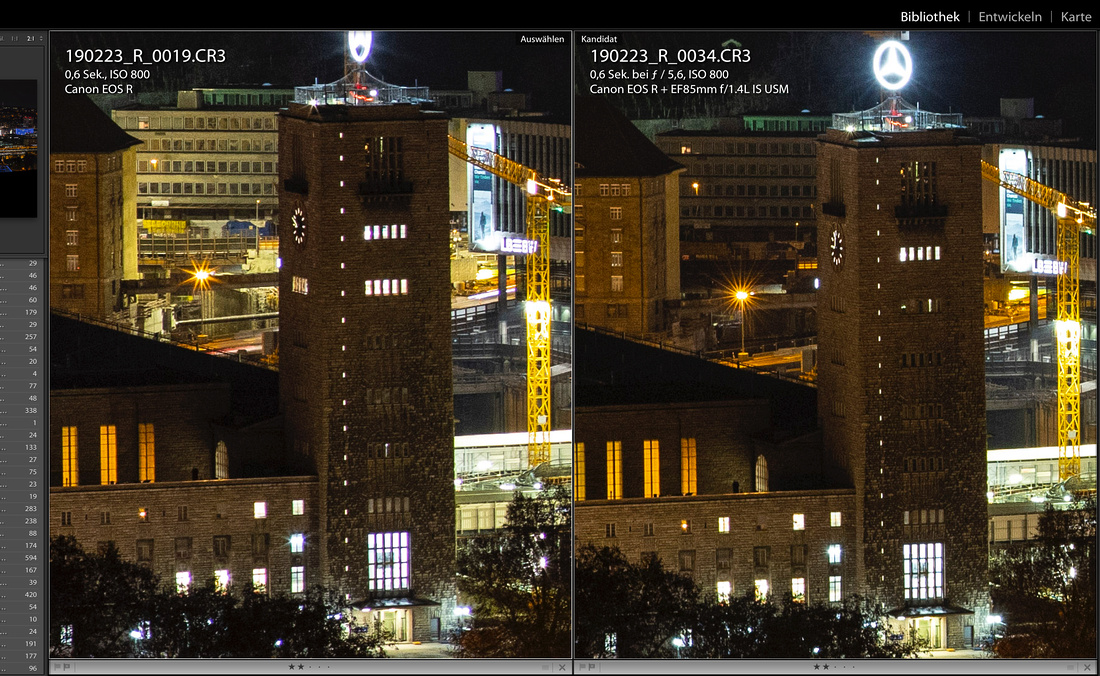
At f 5.6 color fringing is still there, but well controlled.
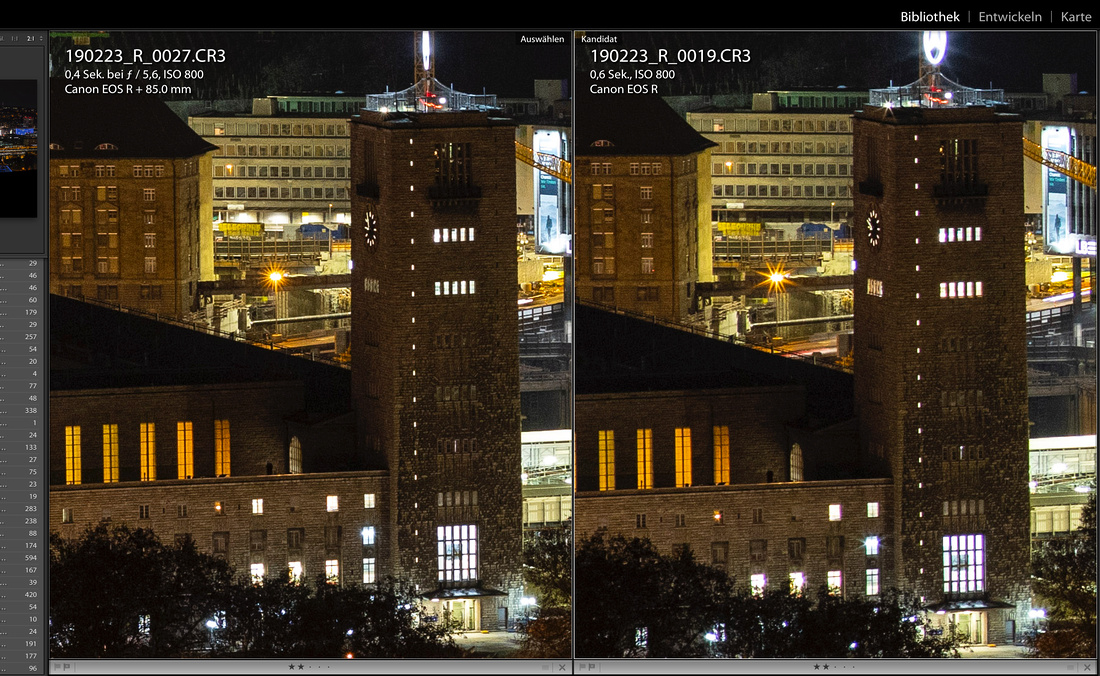
And again - for my taste the Milvus has a little edge over the Canon...
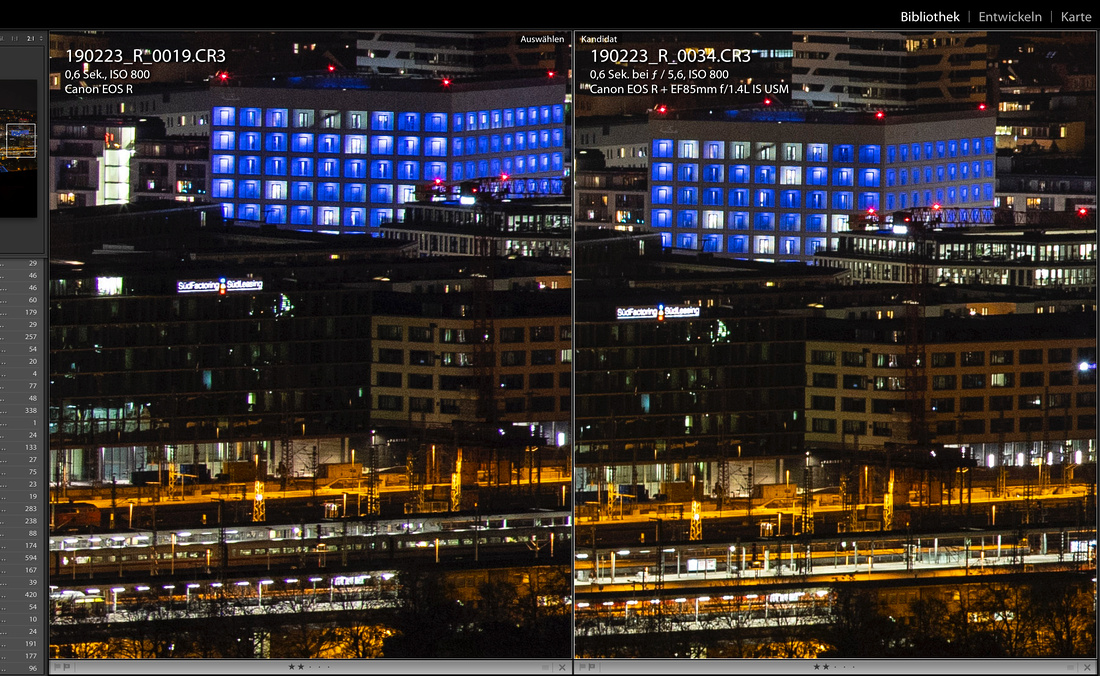
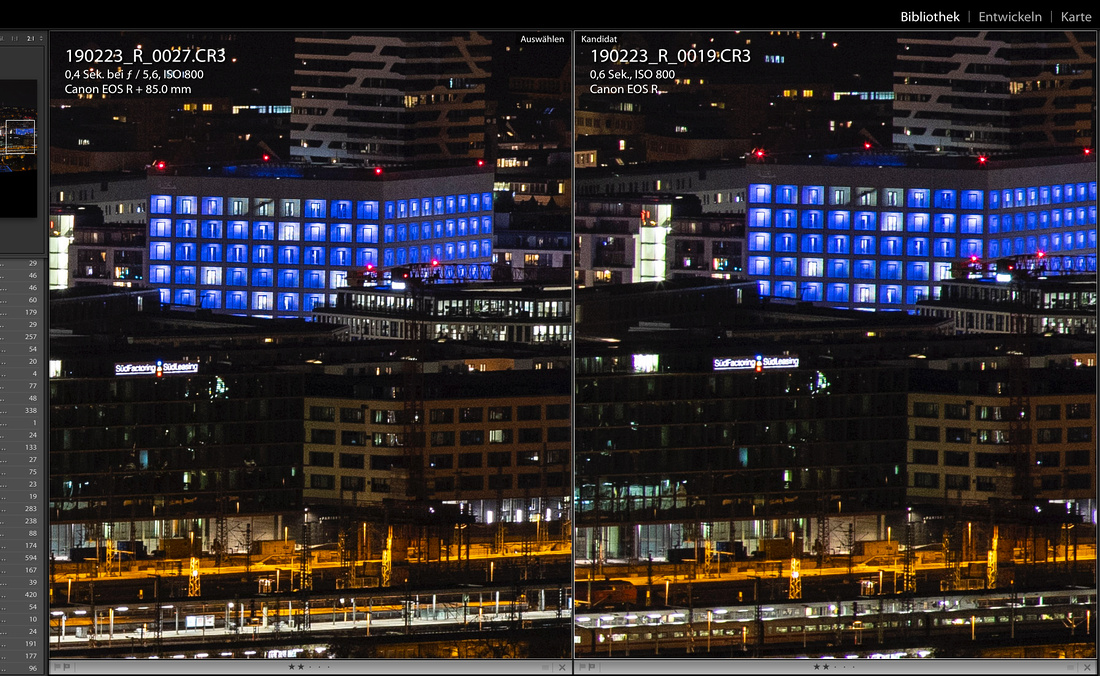
Bokeh
My first photo I took with this lens was the following:
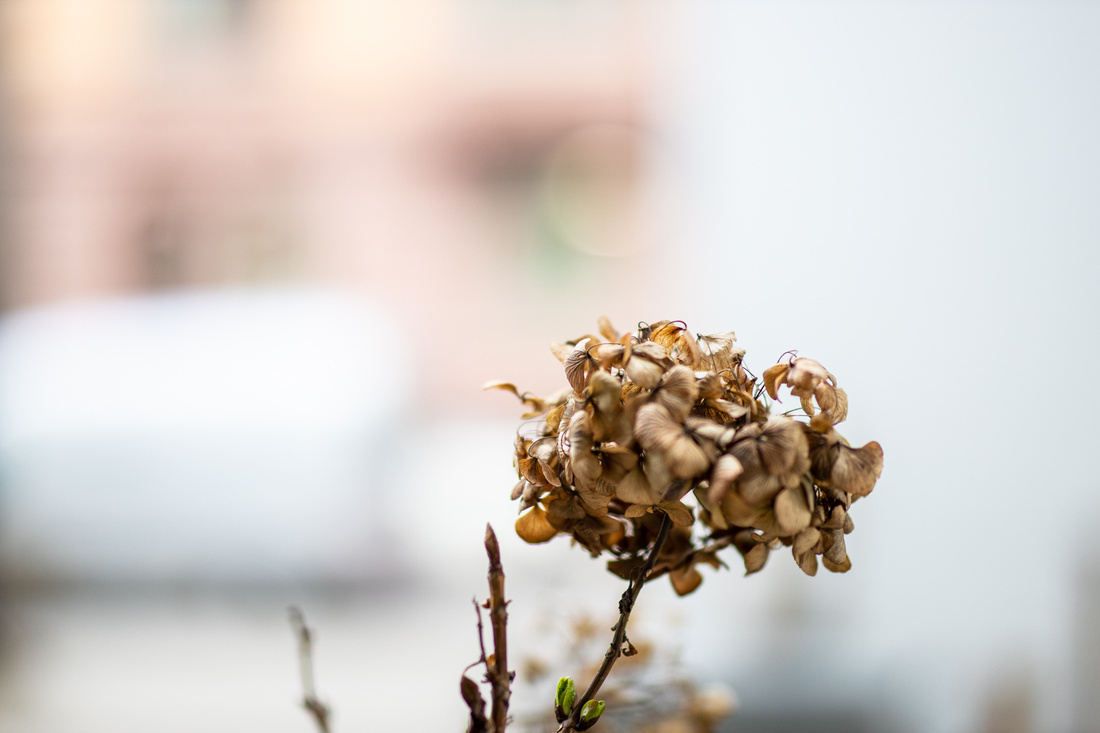 Nothing special. at shortest distance (Which is 1.1 m and not really exciting, I would prefer 85cm...) But you see a decent sharpness and a buttery smooth bokeh!!! Well: this looks promising.
Nothing special. at shortest distance (Which is 1.1 m and not really exciting, I would prefer 85cm...) But you see a decent sharpness and a buttery smooth bokeh!!! Well: this looks promising.
But it is going to get better...
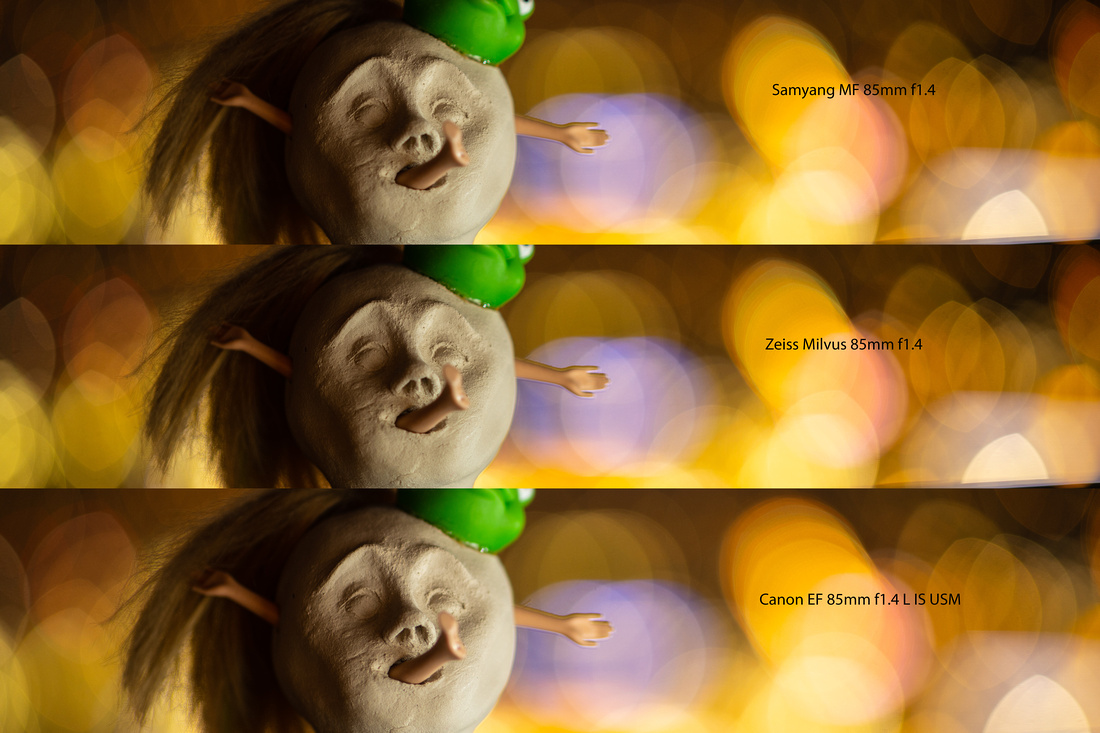 This is a shot of a little sculpture on the balcony. I used the same setup a bit early for the 35mm shootout (where the Milvus 35mm f1.4 has blown me away.
This is a shot of a little sculpture on the balcony. I used the same setup a bit early for the 35mm shootout (where the Milvus 35mm f1.4 has blown me away.
With these lenses: In detail you see a little bit less sharpness, but the color rendering and the contrast are pretty similar between Milvus and Samyang. The Canon has softer bokehballs,
But all three lenses: in terms of bokeh: the they are all great!!!
Lens flare
One topic these lenses are not that great is news flare...
I shot some samples handheld
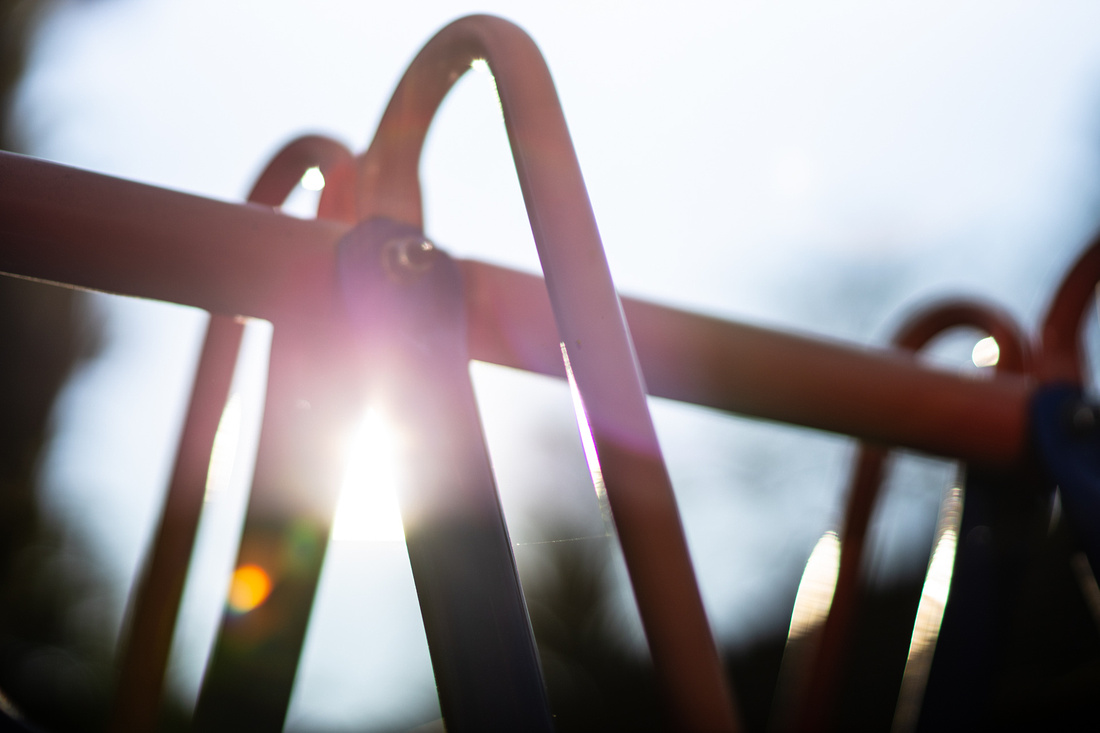
This is f 1.4. For my taste it is ok, I would call it personallity
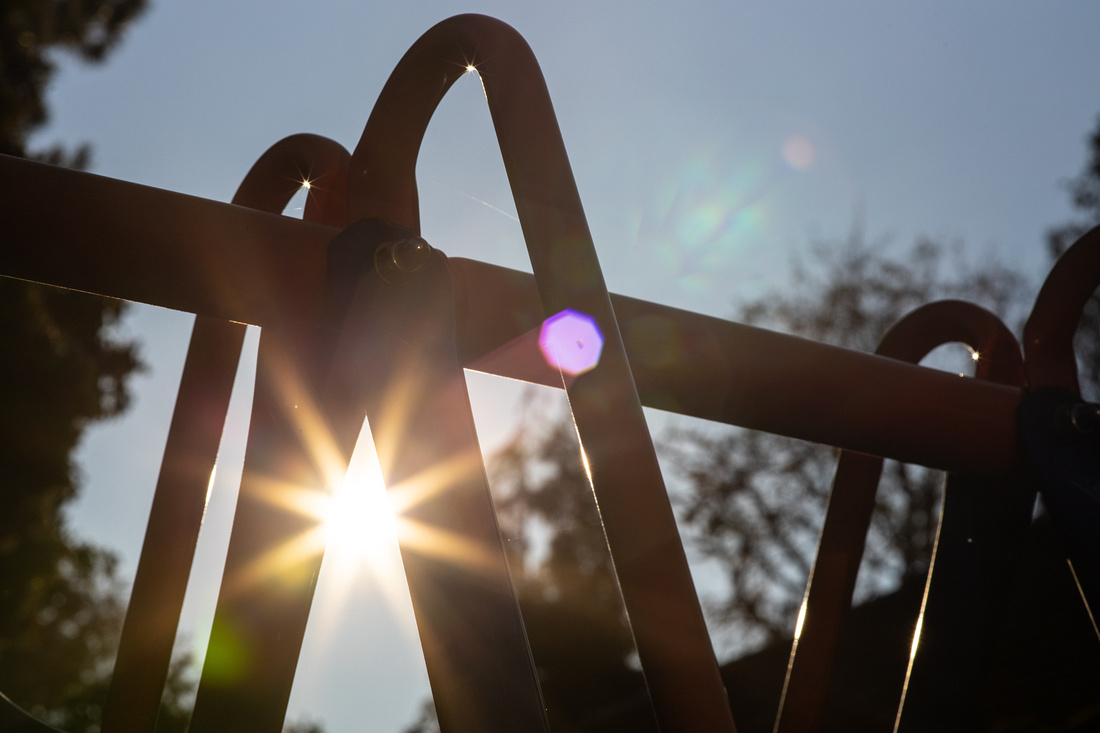
This shot is f11
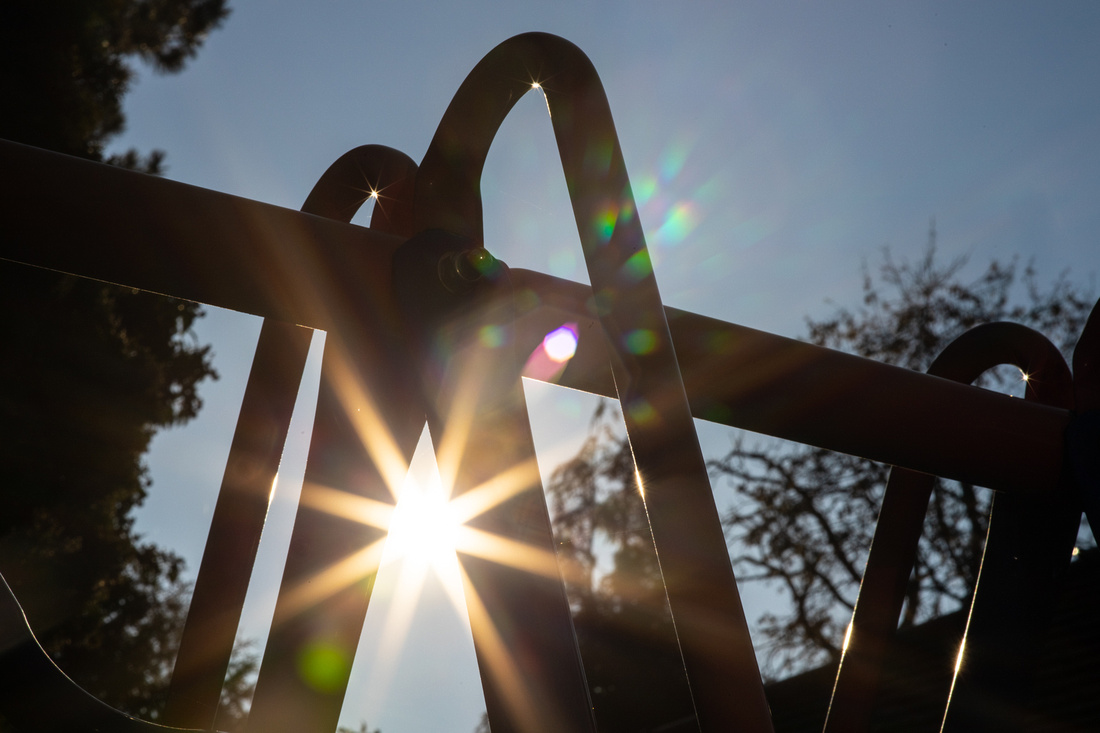
But at f22 is gets extrem, quite a lot of artifacts and reflections in the lens...
For me: this is good to know, and normally nobody shoots like that....
Real world shooting experience
After shooting with this lens quite a bit I am pretty excited. This lens is a stunning performer. I took both lenses on a short trip to the Cote d'Azur. And I gave it a try - just the 2 lenses on a short trip to the small city of Cogolin, close to St. Tropez at the Cote d´Azur...
The results should speak for themselves. My first shots I took in the blue hour in the village and on the next morning there was a reportage type of shooting at the Saturday market. When I had my images ready just when some clouds came up and the very beautiful morning light was gone...
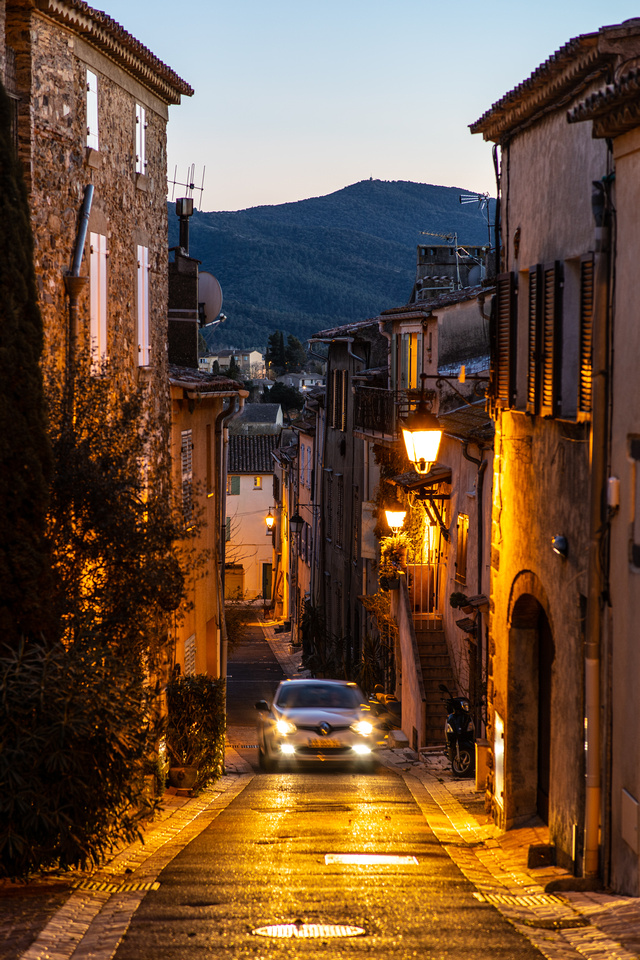
A street in the old town of a typical village in the south of France...

This shot was just around the corner. It was very windy... what you can imagine because of the flare of the blanket in the foreground....
On the other side this little place is beautifully lightened and the lens shows here really decent performance...
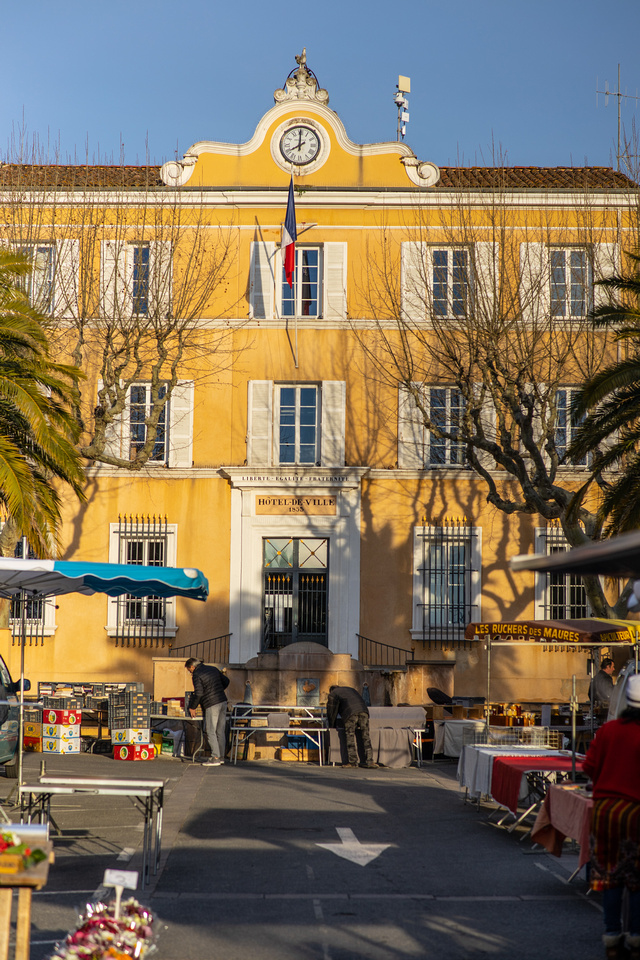
On the next morning I went to the market place in front of the "Marie", Lord Mayors house...
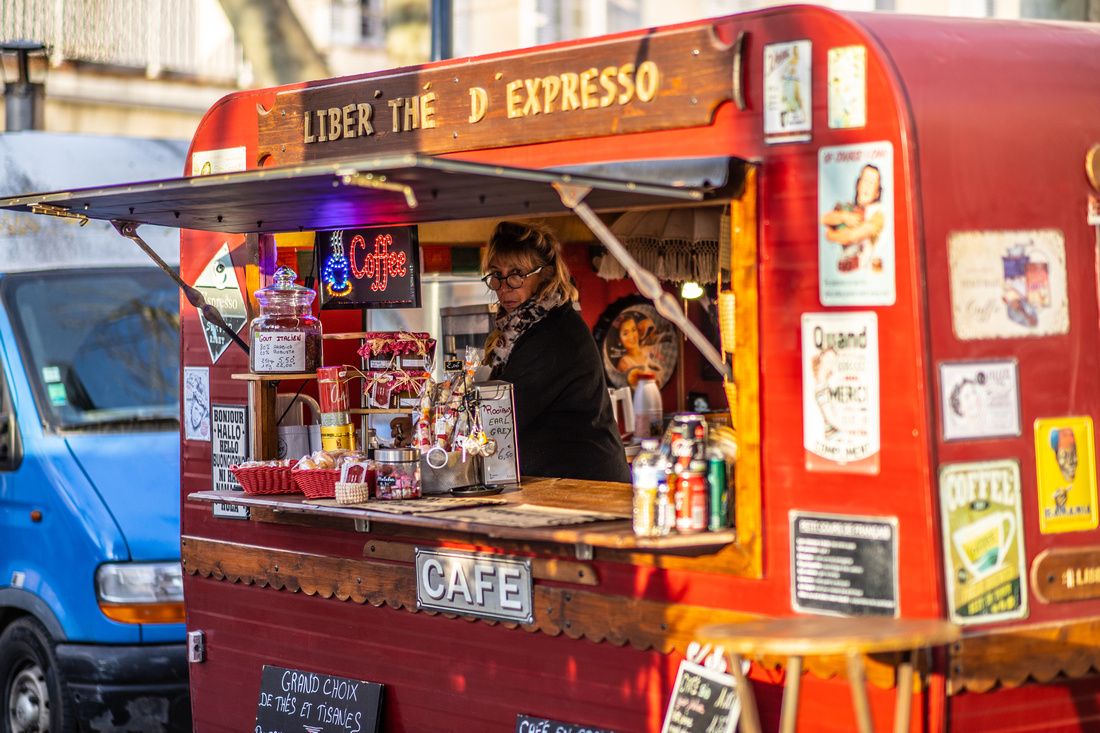
This little caravan was offering an excellent espresso. Always good to start with... What amazed me is the dynamic range of the EOS R: the interior as jpg is pretty black...
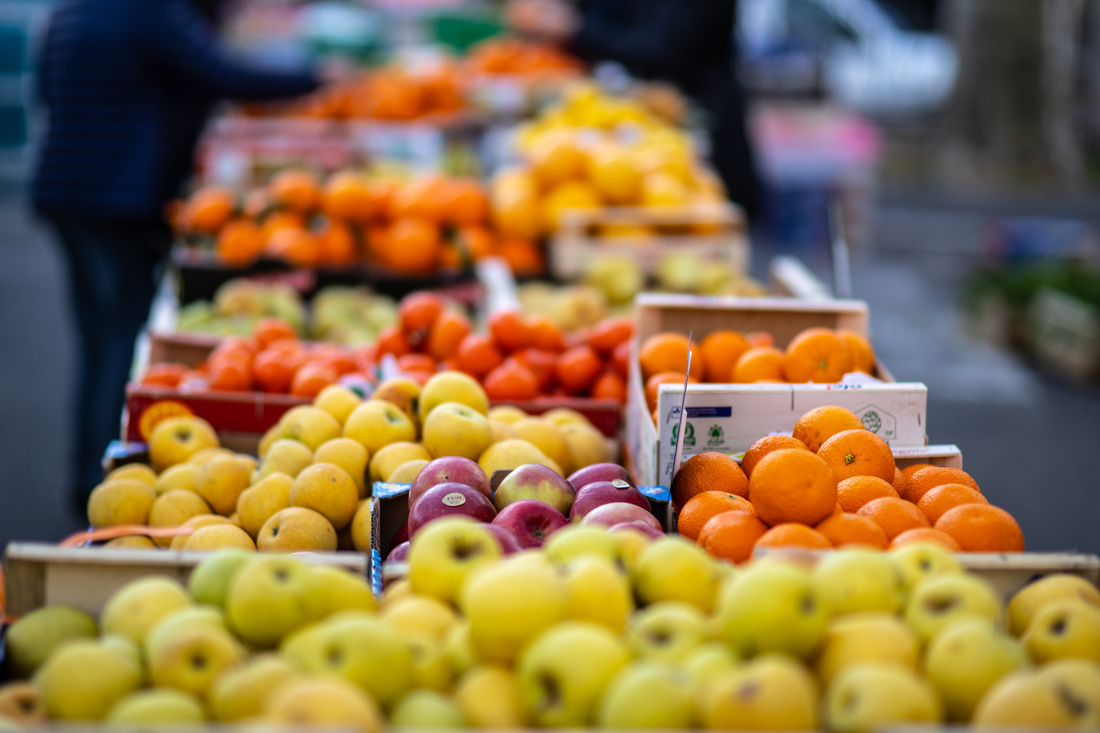
I did a couple of shots for that was the market has to offer, like vegetable
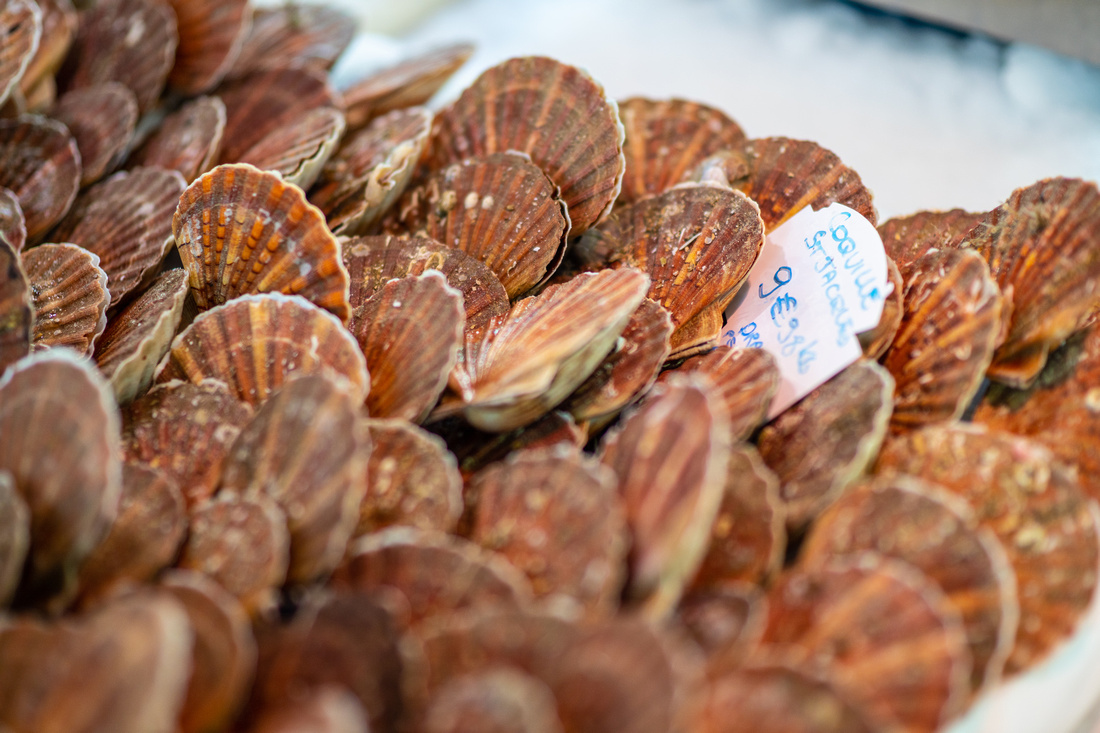
Or fresh seafood...
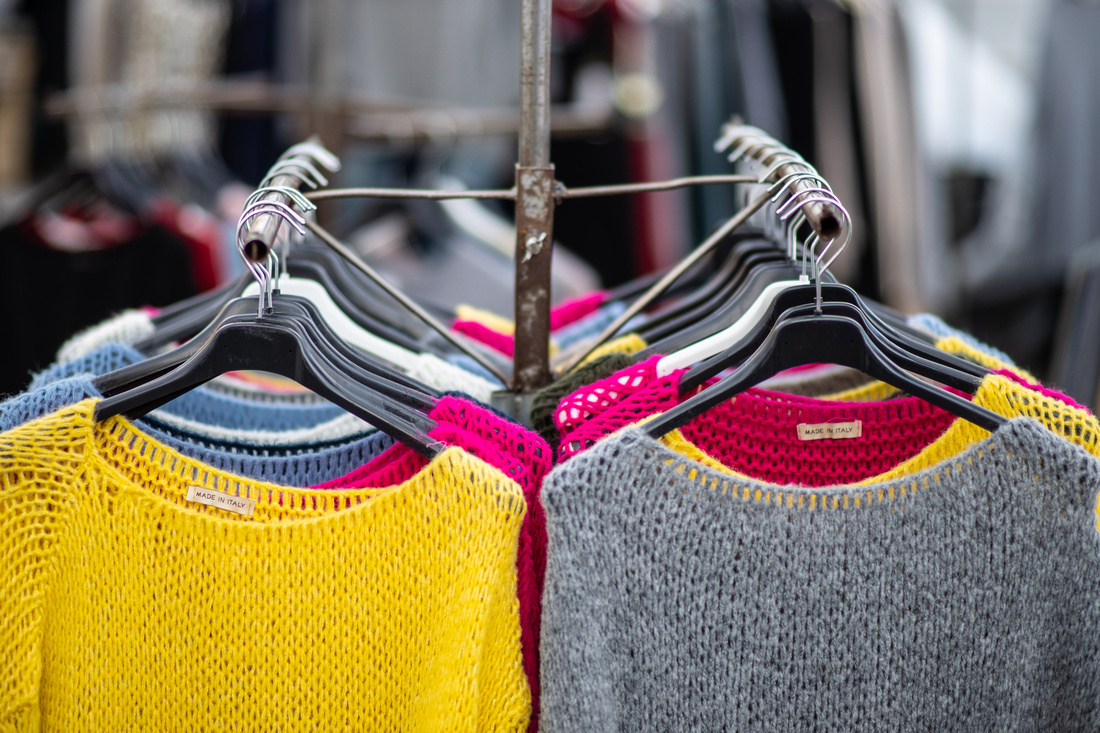
Clothes of course - very typic for the mediterranean markets...

The way how the stuff is presented is important, too.
And again: whatch the amazing bokeh!!!

And finally the people on the market...
When the sun disappears I was pretty hungry and I went to my favorite bakery for breakfast...
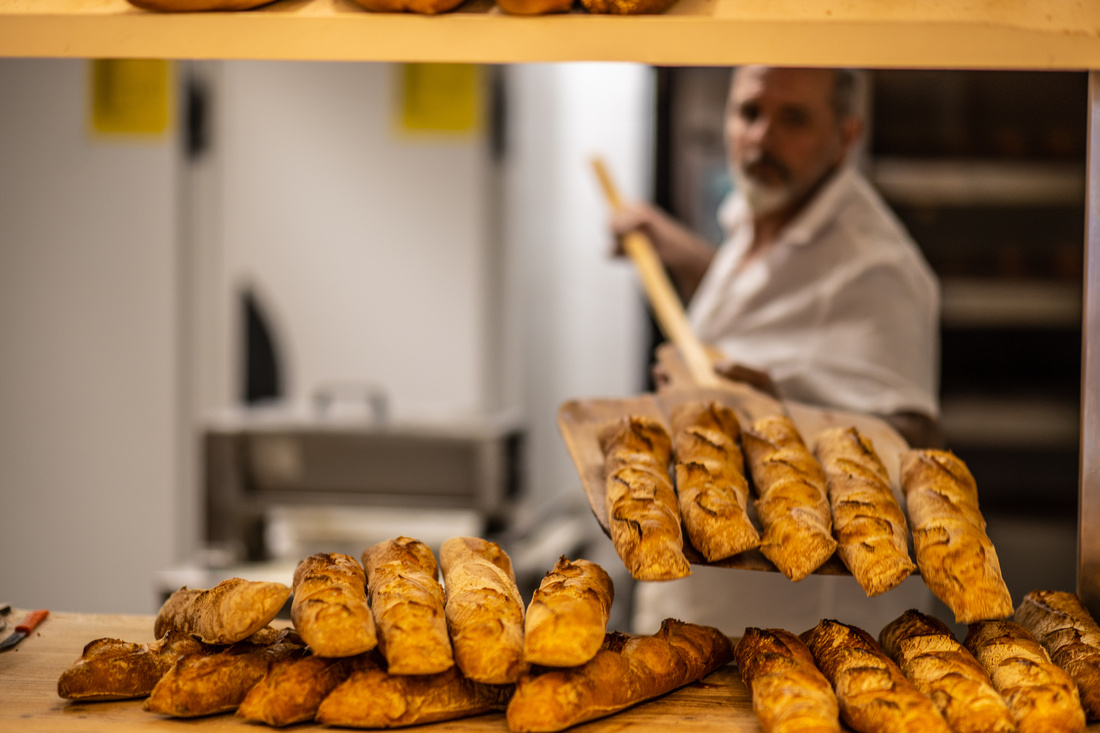 Warm and fresh baguette from the best bakery on the planet... I am not joking.
Warm and fresh baguette from the best bakery on the planet... I am not joking.
The shot is pretty perfectly framed.... and the bokeh gives the rest...
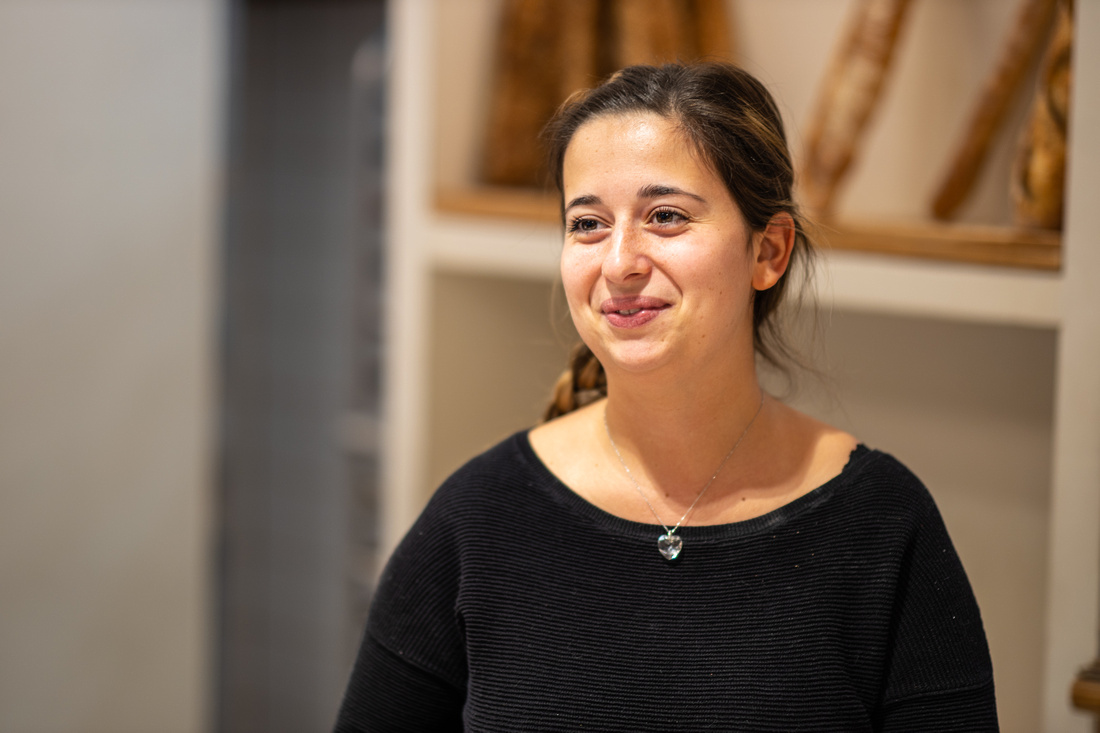 Clemence, the young lady in the shop... nice and charming....
Clemence, the young lady in the shop... nice and charming....
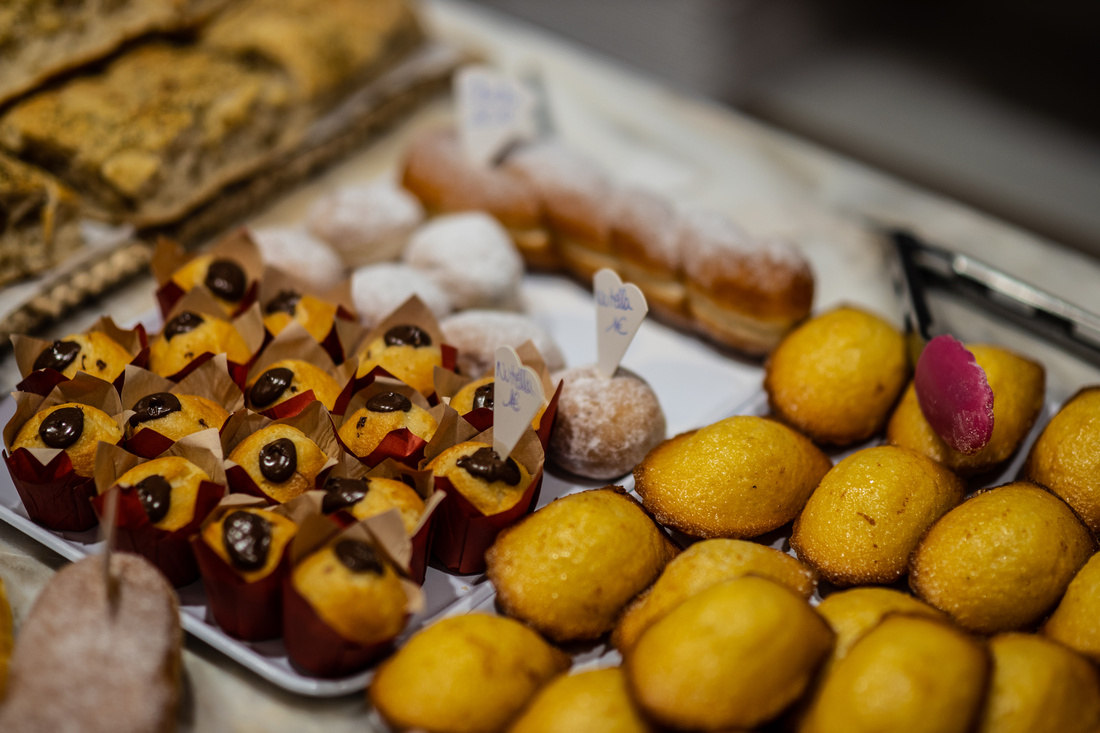
And amazing food for breakfast...
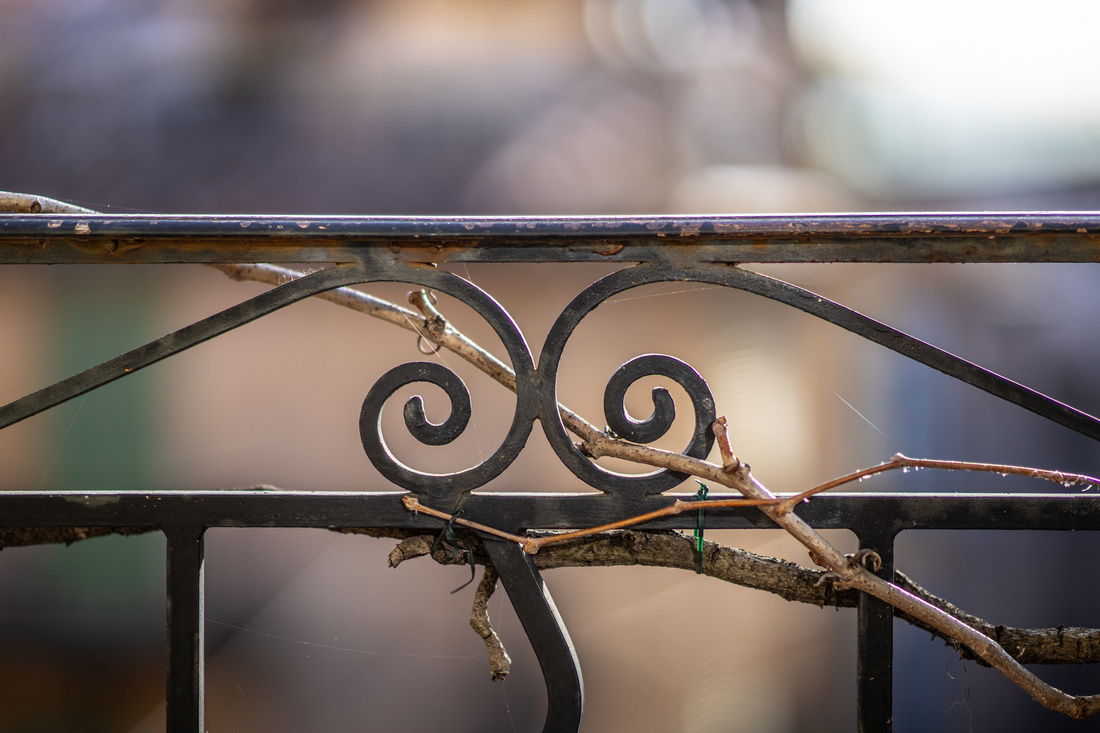 My last shot of the balcony... and again the lovely bokeh...
My last shot of the balcony... and again the lovely bokeh...
The real world shooting experience was the point which got me. The lens worked much batter than I thought. You can say as well The support the EOS-R gives you for this type of lens is amazing- even if the lens has no communication with the camera...
By the way: all shots at the market were f1.4. For me the sharpness is amazing...
Verdict: Excitement
After first mixed feelings: I am pretty excited about the lens. In terms of the results you get from this lens: it is just wow!!! Very decent images, excellent image quality - if you know how to use the lens. And in terms of useability (nice buttery manual focusing) and weather sealing it is really remarkable.
For whom is this lens for?
- It is made for owners of the R-Mount cameras - but the EF version will show similar results.
- Everybody who likes a lightweight high performance lens.
- When to take the RF Mount version instead of the EF mount? This is a very good question. For my taste: if you have decided to got with the R-Mount and/or you do discontinue with EF Mount: go for it. It is lighter and easier to handle.
- It is more a lens for enthusiasts, for people who like to shoot manual focus.
- But manual focus is so much fun to use on the Canon mirrorless cameras....
But the lens has a bit of weaknesses too:
- It is not native RF: I guess a lens designed for the 54mm bajonett diameter and the short flange distance can be even smaller and lighter
- I miss an EXIF chip - this would be even better
- The minimum focal distance: the 1.1m minimum focal distance is a sad thing. There announcement to bring this value down to 1 m will make it a bit better. I would prefer it much shorter, even shorter than the usual 85 mm...
- Not a real weakness but a wish to the designers @ Samyang: instead of a color mark please but something you can feel that you can mount the lens on the body without looking at it....
But if I look at the lens at a glance: I give the lens a highly recommended!!!
Miscellaneous
All Photos werde taken with the EOS R and the Samyang MF 85mm f1.4
Only the product shots were taken with the EOS 5DMkIV with the EF 100mm f2.8 L Macro IS USM.
The sample photos of the lens - and a couple more - you find here.
There is also a link toe the image quality comparison
Please have fun and enjoy.
Disclaimer
I got the lenses from Samyang for testing for free.
There is no money involved. Therefore this is my honest opinion about this lens....
]]>
Shortly after my New England trip -where I made the road trip with the EF-M 32mm f1.4 - my first RF lens was delivered: The RF 35mm f1.8 IS STM. Therefore the next Idea was to take this lens with me - together with the EF 85mm f1.4 L IS USM and the Milvus 15mm f2.8. Quite a nice combo....
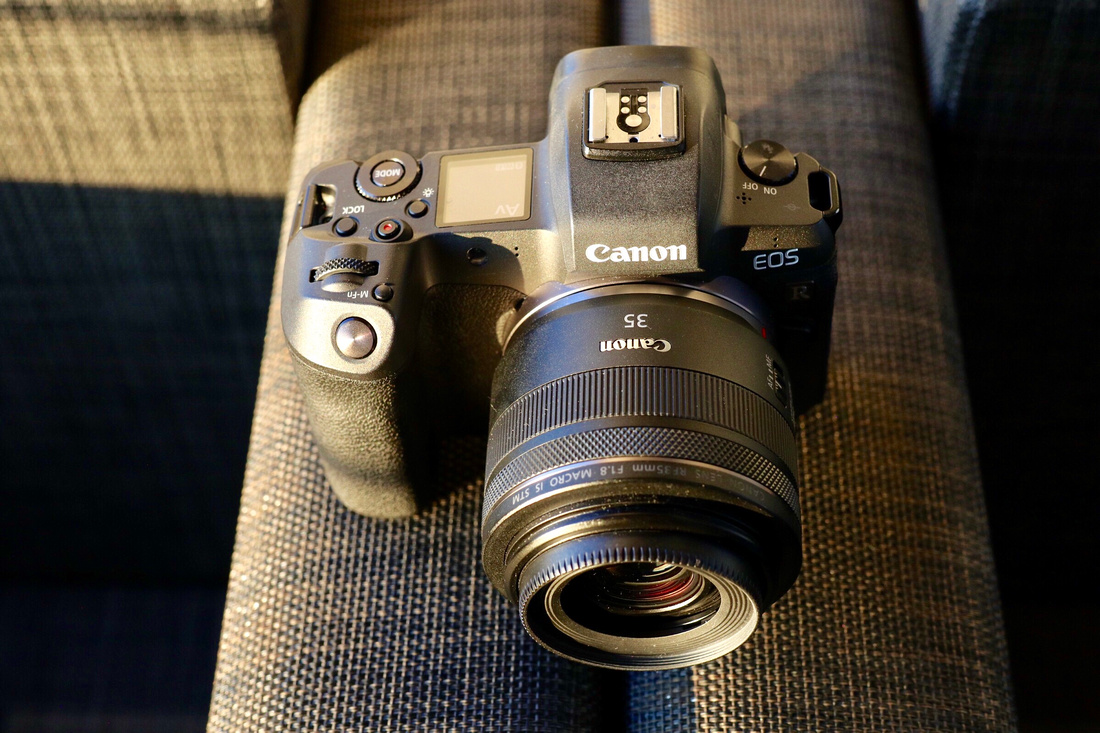
Quite compact this combo...
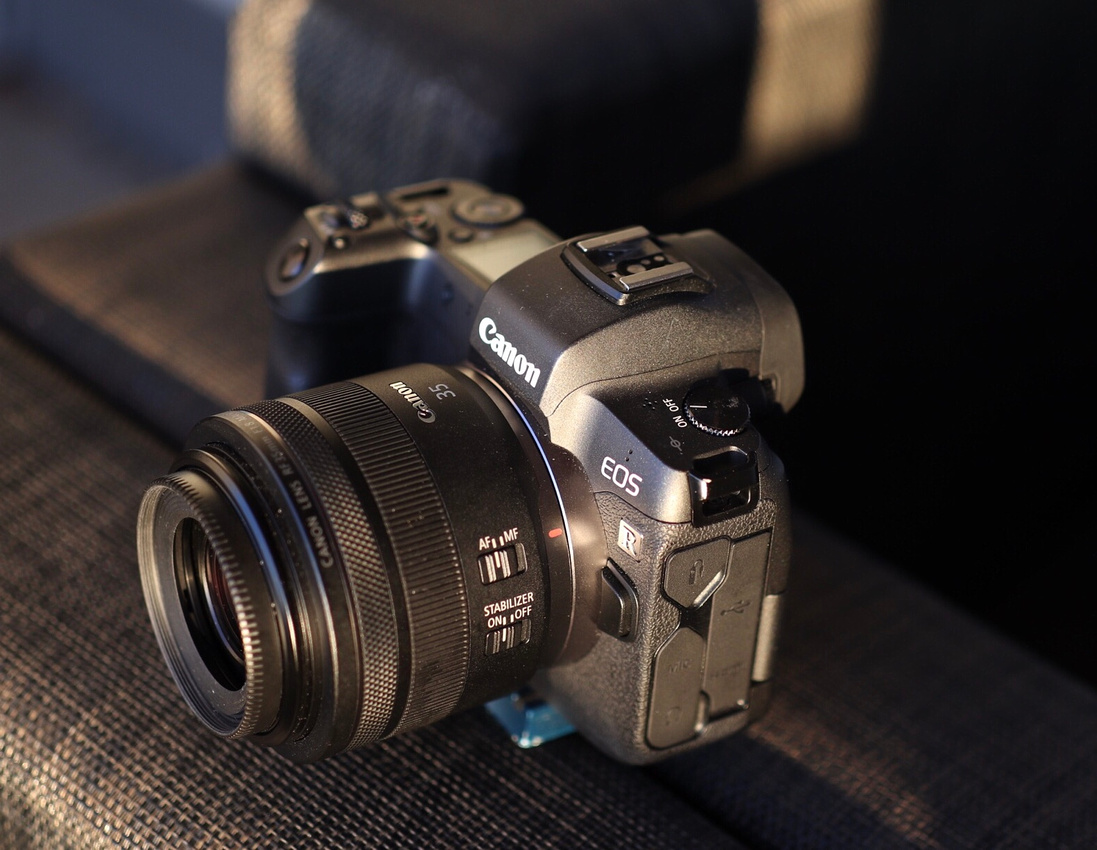
The lens has two switches, AF on of - no limiter of the reach interestingly and Stabilizer on off....
But the most impressive part is the weight:
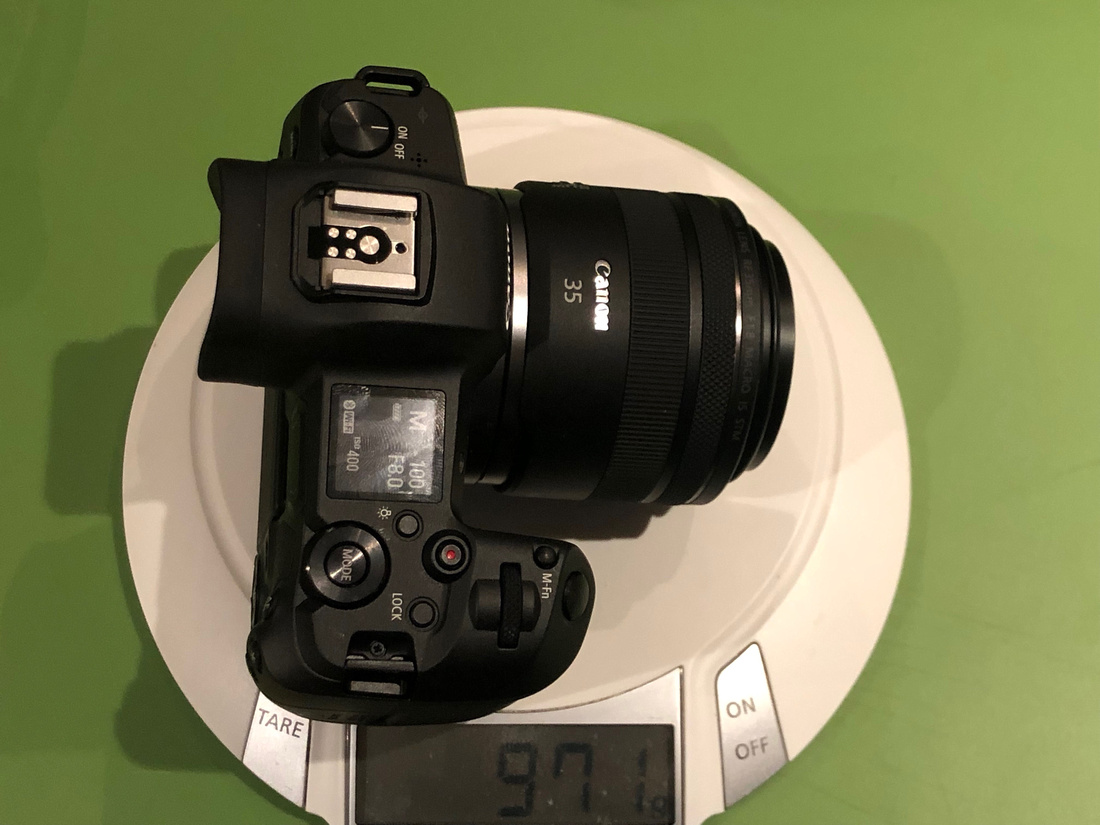
As a comparison:
- 5D Mk IV with the EF 35mm f1.4: 1735g
- 5D Mk IV with the EF 35mm f2: 1323g
- EOS R with the RF 35mm f1.8: 971g
Well the 971 g is pretty handy.... It feels close to nothing - in comparison to the 5D4. But how it does work, Is this package great?
Some Remarks on the gear
Aside of the EOS R I do carry a little Manfrotto tripod with me. it is light weight and small.
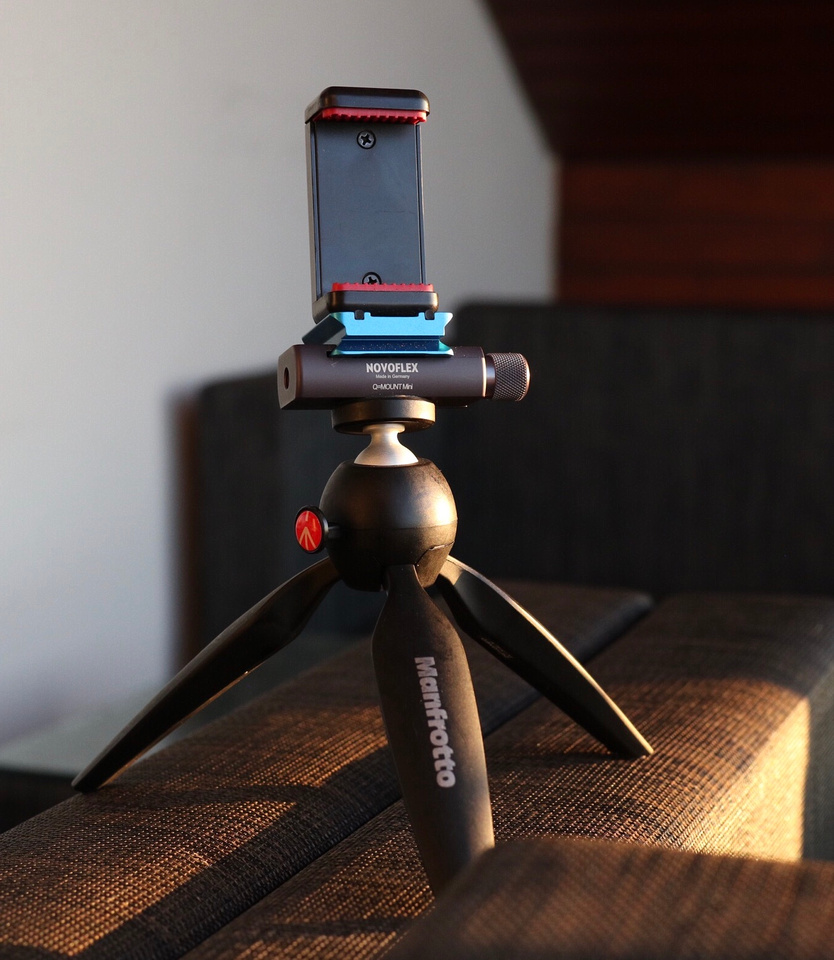
I adapted Arka Swiss.on the little tripod for more versatility....
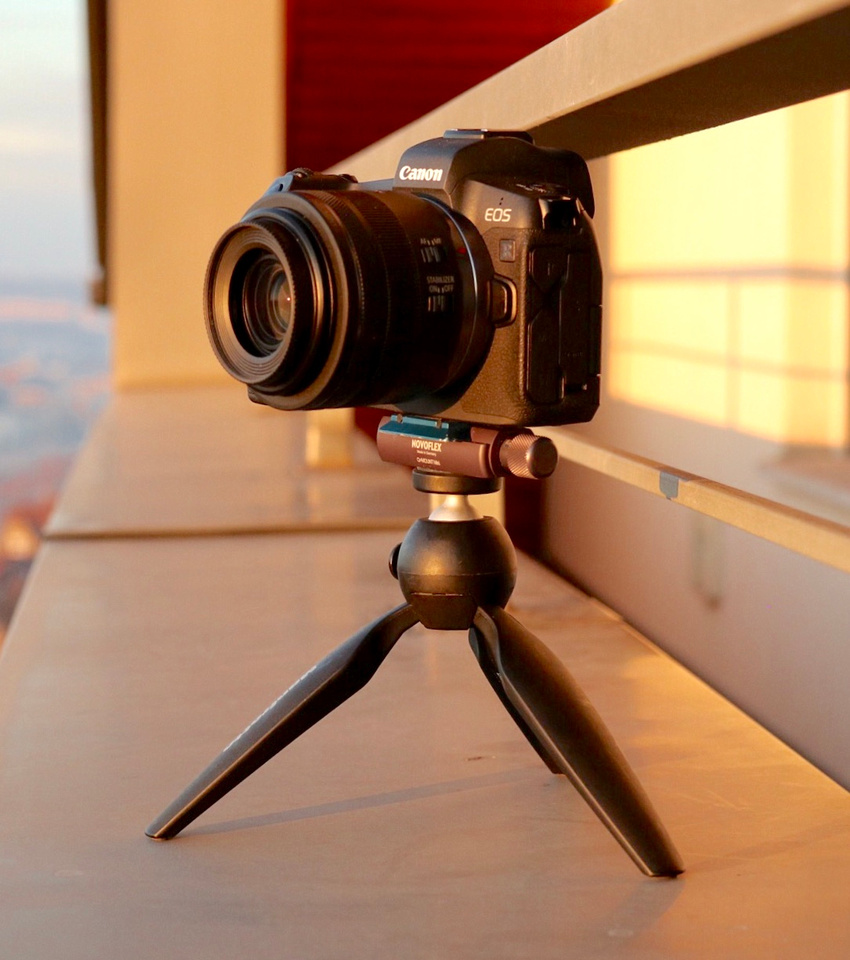
But it is sturdy enough to carry the EOS R with the RF 35mm. I made some shots with the pretty heavy Milvus 15mm f 2.8 - but this is the limit - or a bit above...
The Trip
A business trip as usual... Hotels, Meetings, and Restaurants. I did not shoot every time and everywhere, but I did shot a lot.... And luckily before flying to Japan I had a Saturday off - where went to Hangzhou, a beautiful town west of Shanghai with a scenic lake were we made a hike around....
What you will see - a bit of everything...
Shanghai
The first day was arrival, a customers visit, a dinner....

Arrival at a Holiday Inn. These machines you see everywhere. Big Brother is watching you - Chinese visitors have to register - and take a photo wherever they arrive. We stayed at 4 different hotels - I checked in 6 times - and everywhere has been these machines...
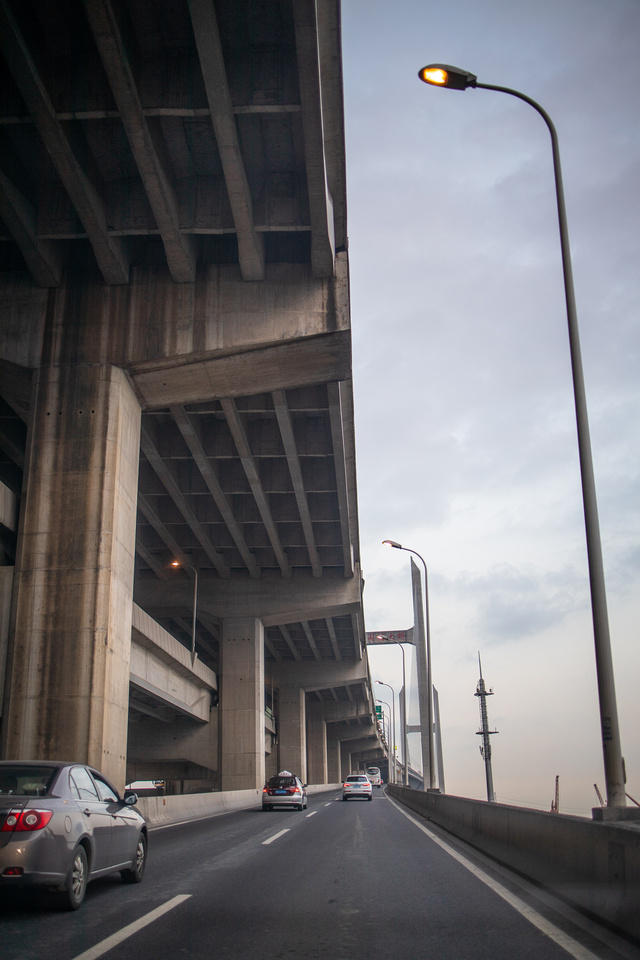
Shanghai... and its bridges over the Bund River... They are scenic.. but tricky to photograph..
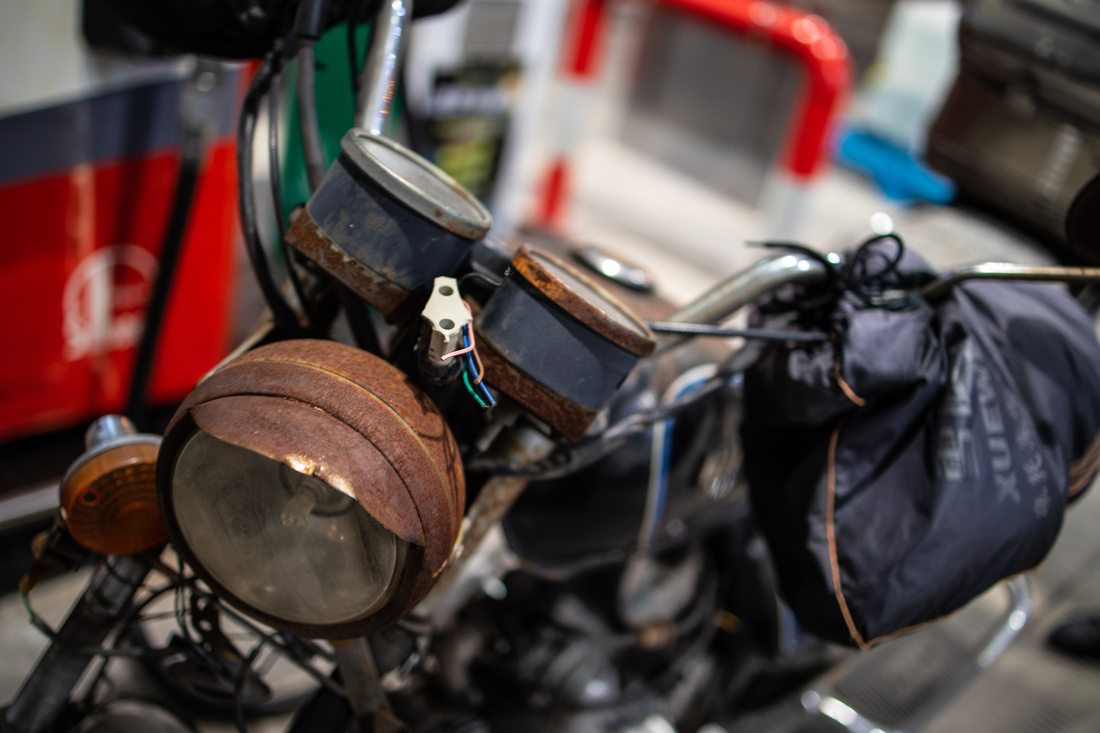
Aside of all luxurious things you see in China... there is still the old and poor - like this moto cycle....
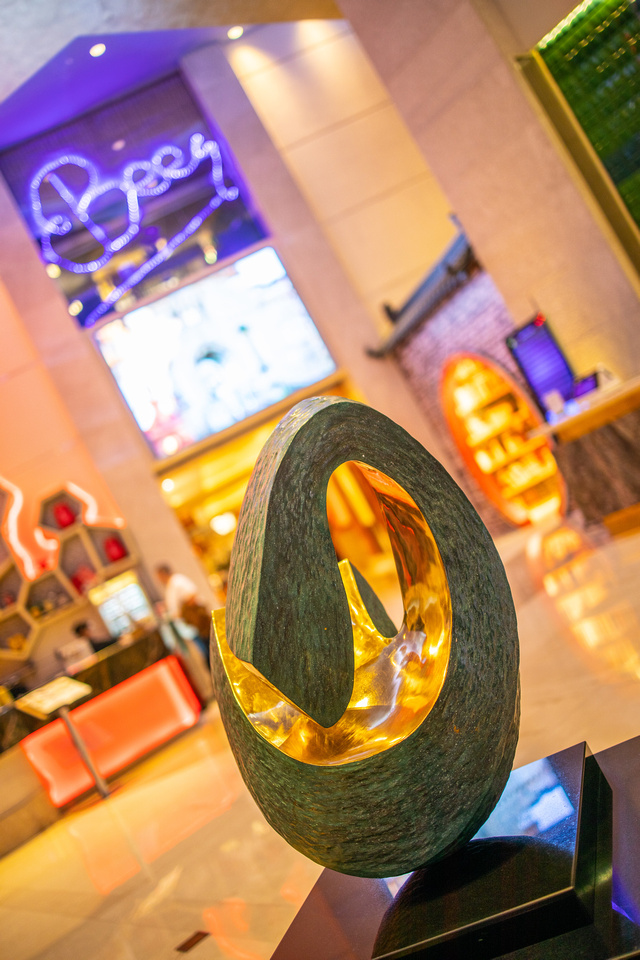
The lobby in my Holiday Inn... They do have pretty nice culpures... just before lunch....

Restaurant in China... there is so much different. In this case: you scan the barcode, than you get the menu and you order in your smartphone... no waiter....
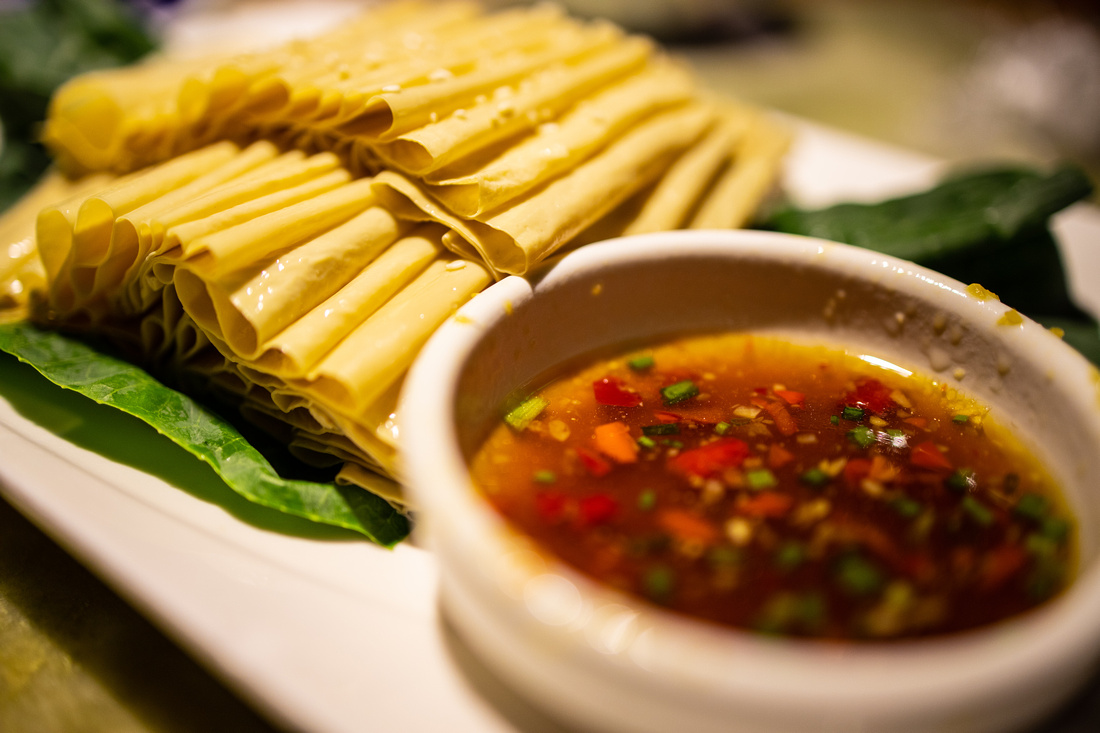
Tasty food.. in this case just a kind of tofu....
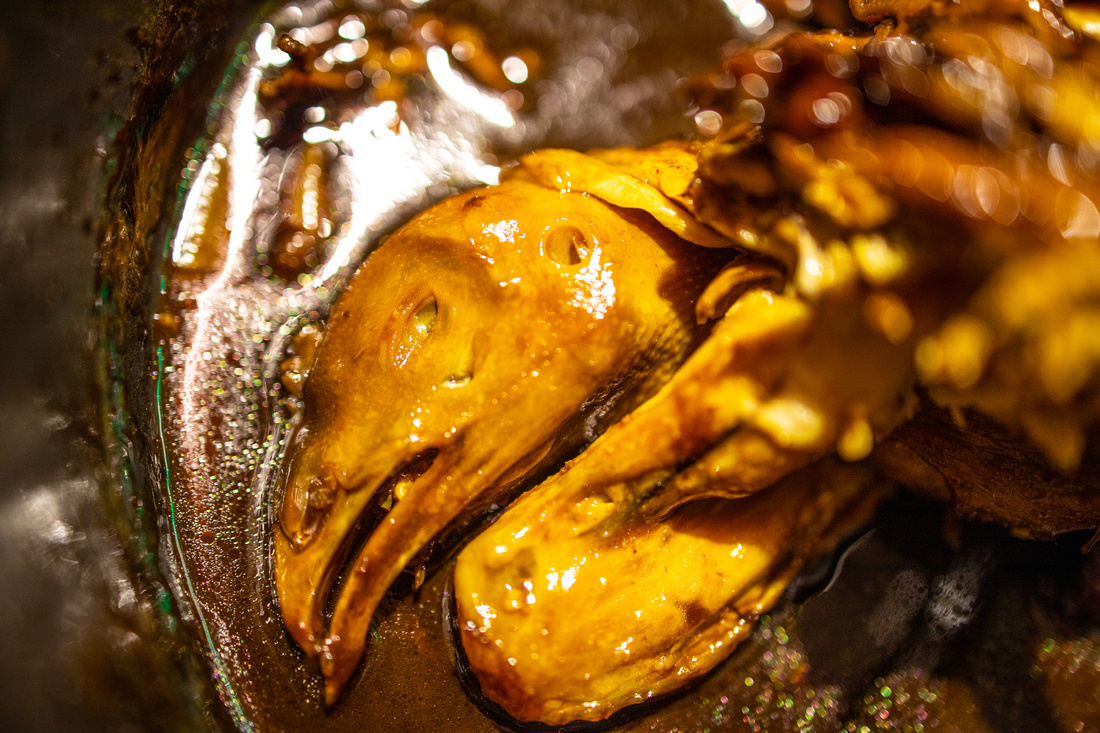
and a delicious chicken.,.. Chinese style. with the head....

I do love this shot of the man selling fruits on the street in the suburbs of Shanghai, Hongqiuao. A place getting more and more familiiar to me...
Changchun
Changchun is an industrial city 3,5 flight hours north east of Shanghai...
In the morning I was picked up at 6... In the evening we had dinner with the customer.

What is typical in China: the menu. There are nicely shot images of each dish, and there is a long discussion of what's special what's to recommend etc...
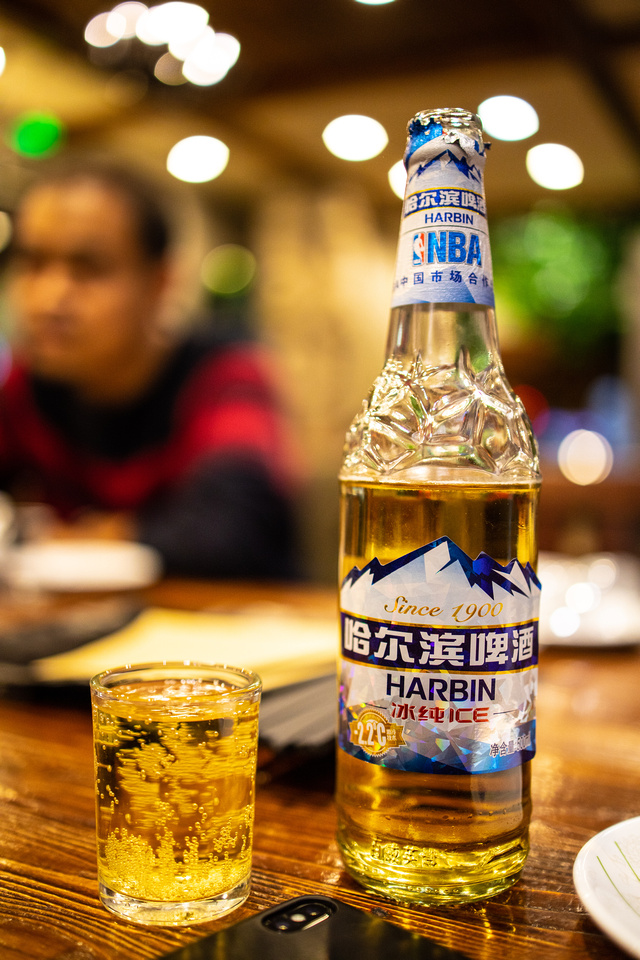
Please who says that the German "Kölsch" or "Alt" Beer is offered in schnapps glasses... go to China....
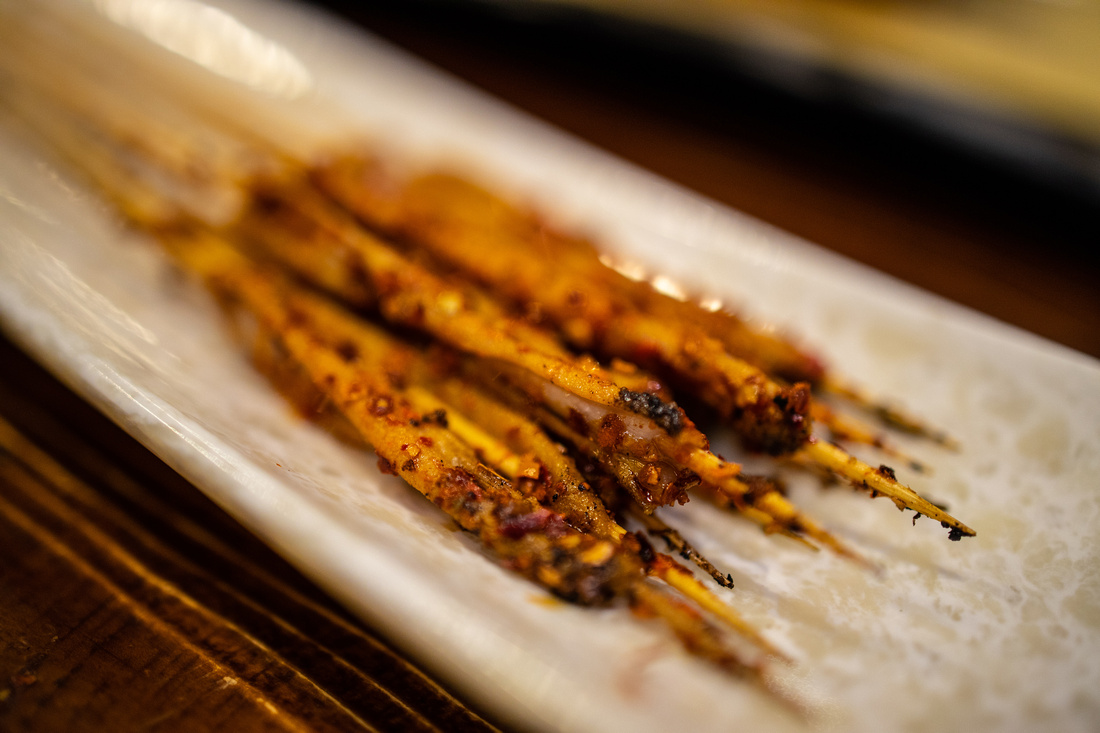
It is phantasmic to shoot food with a macro lens....

This image off pretty tasty silk worms had blown me away, not because of the food but because of bokeh.... Using macro distances the bokeh is pretty pleasant and creamy....
Wuhan
Fron Changhun we took an evening flight to Wuhan...Center of the Chinese optics valley.
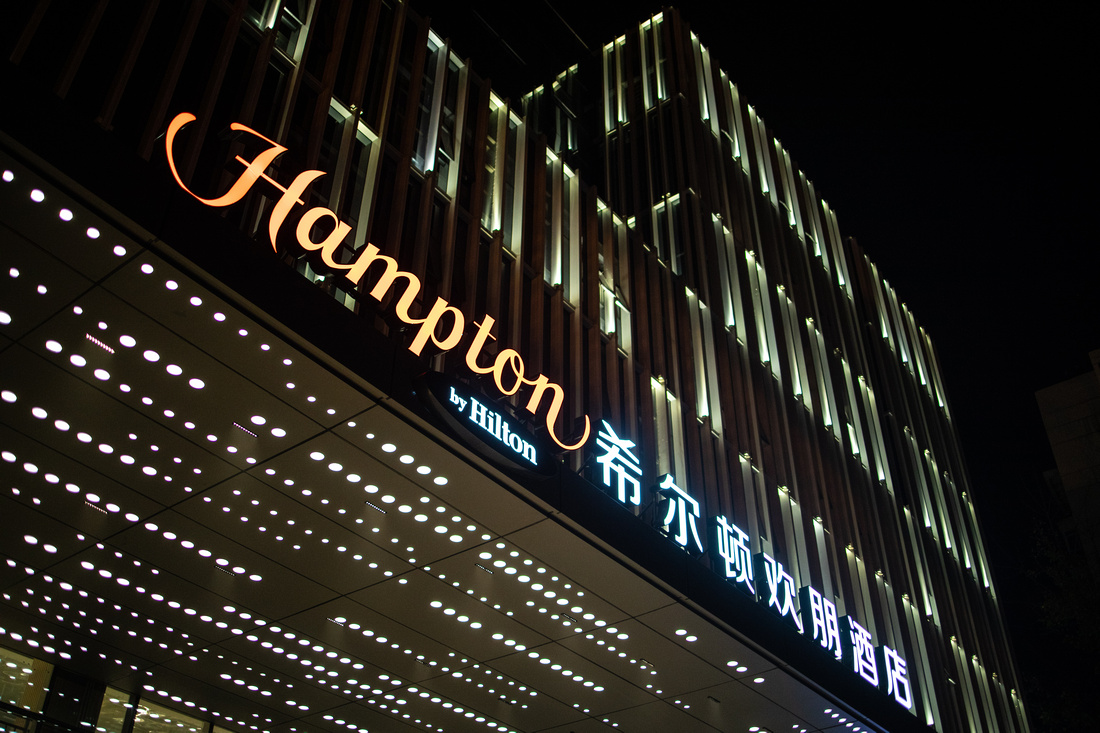
This was the hotel we stayed. Arrival at 1 am the next day morning.. Pretty long day.... But i like to make decent shots handheld....
We visited couple of companies there. Pretty amazing ones by the way.... And in the evening guess what: we ent out for dinner...
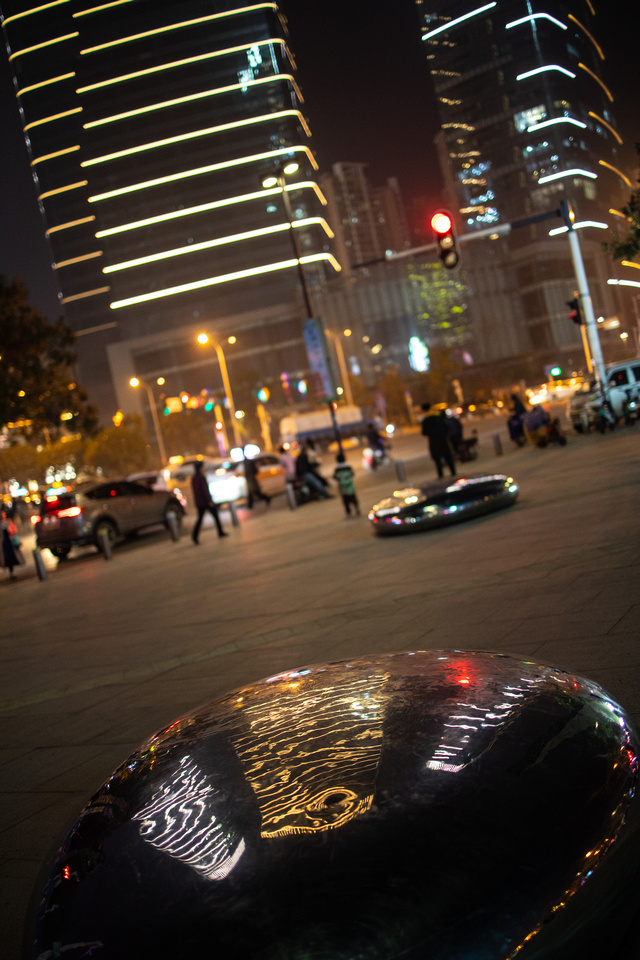
We had been in the City of Wuhan. And i liked these sculptures...
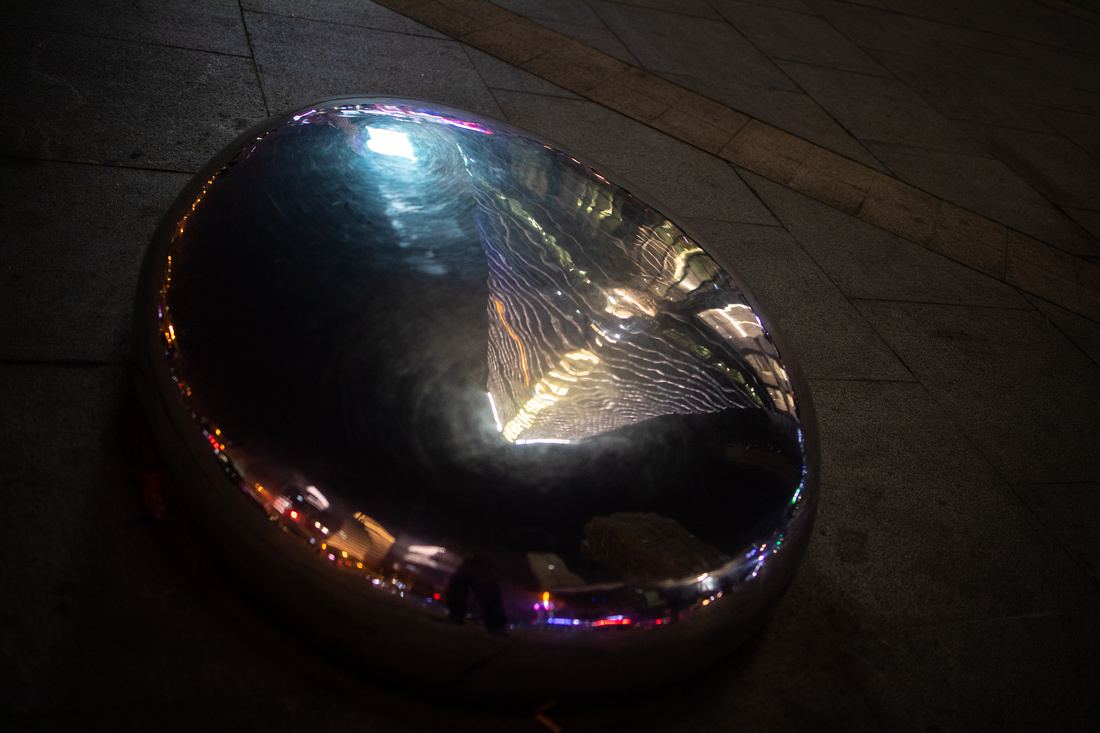
These sculptures are pretty unique. And the offer you pretty nice images... even handheld...

The proof: same procedure as every restaurant....
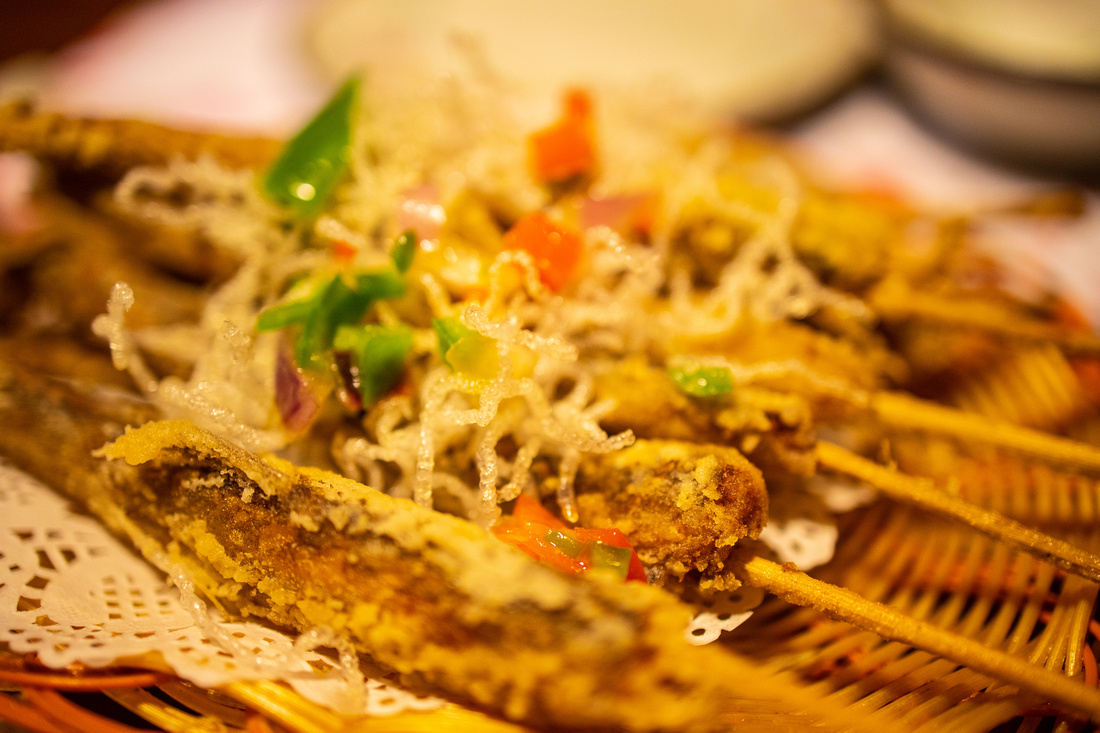
delicious fish..
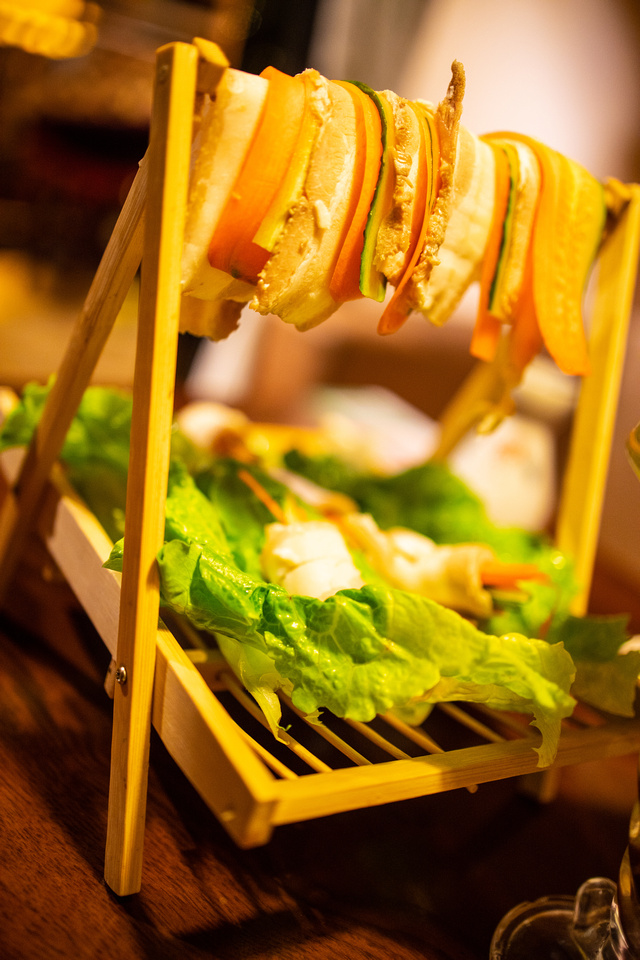
some pork with vegetables
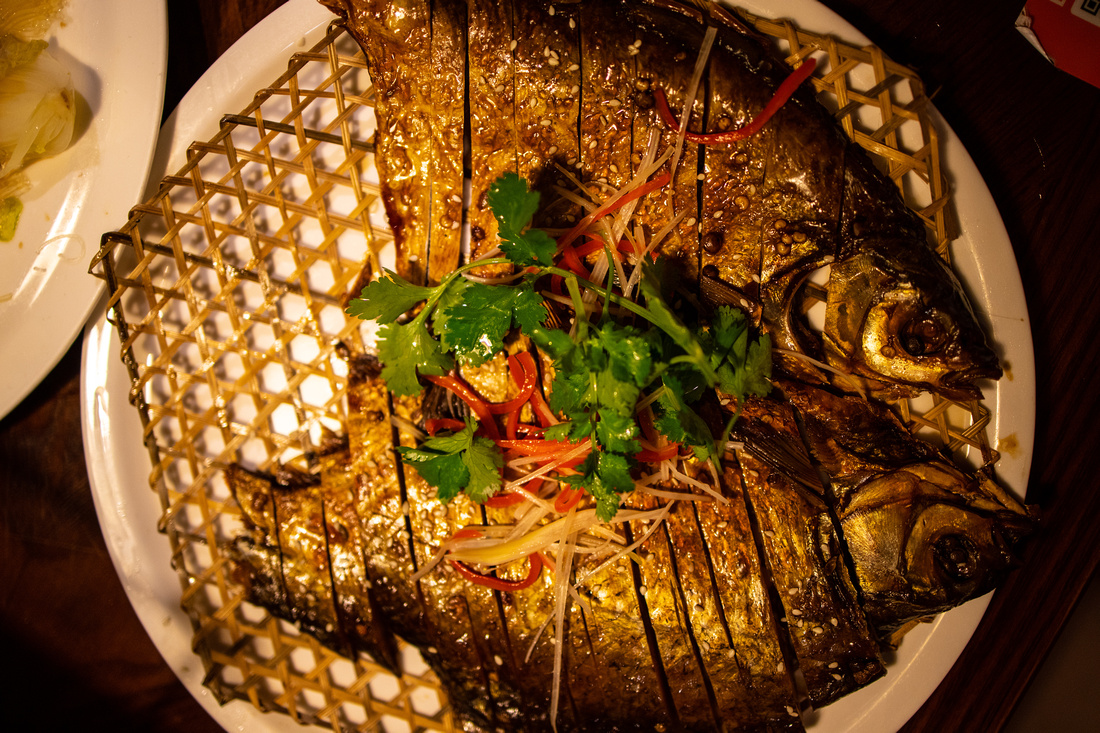
And a Wuhan specialty: a dried Yangtse sweat water fish - tasty but many bones....
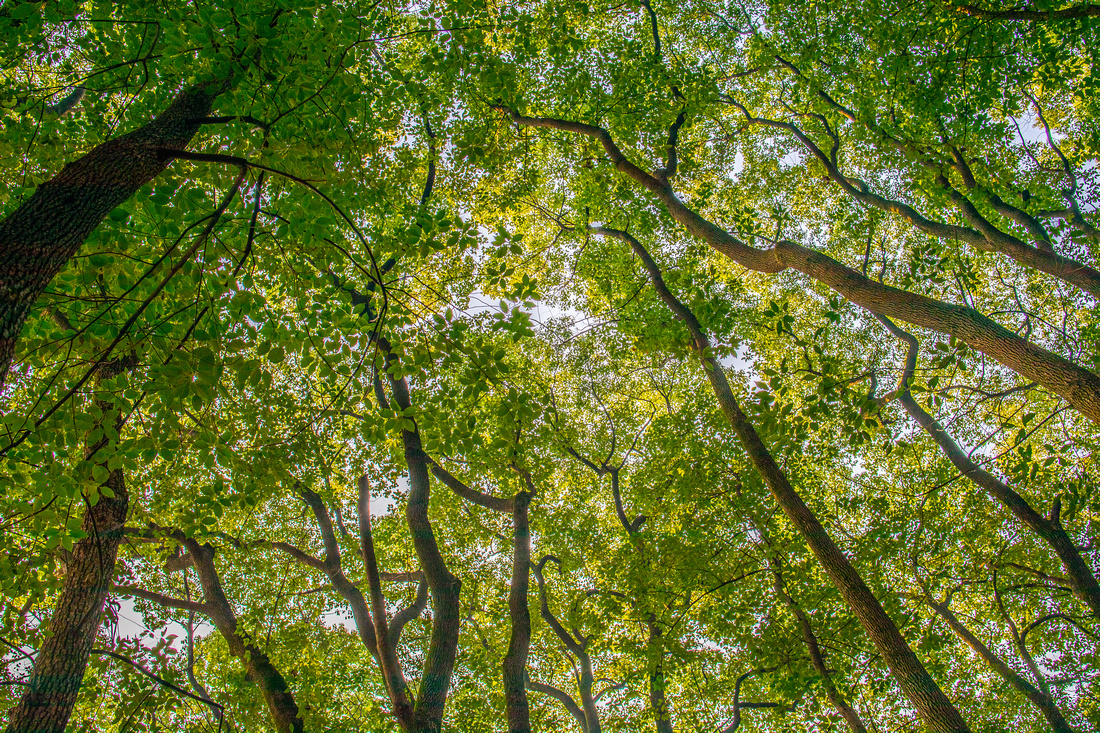
Next morning in a park in Wuhan... Here are some CA visible., but limited - and no lens corrections applied - Lightroom does not has any data about this lens yet....
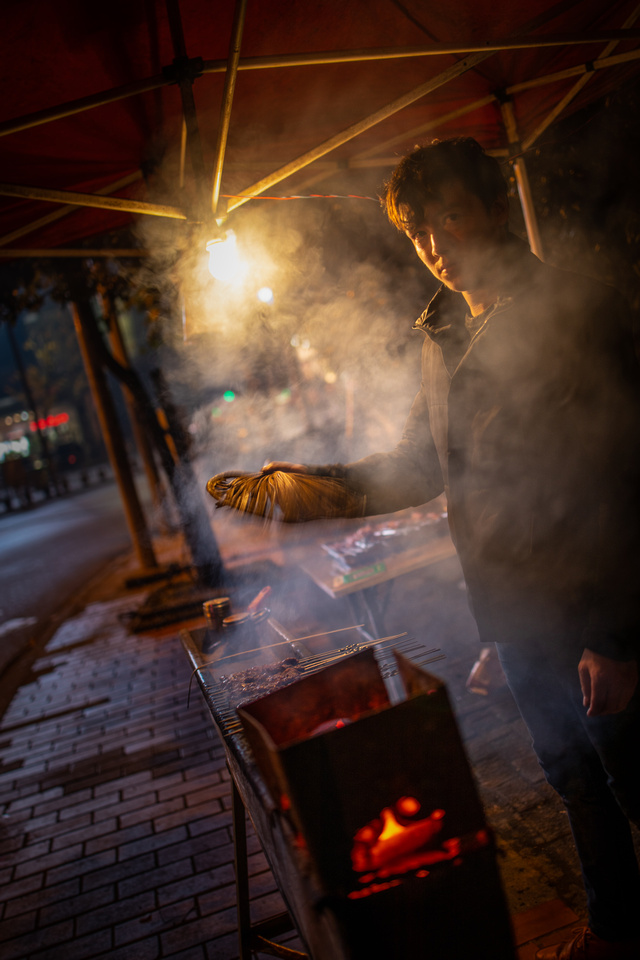
In the evening - back in Shanghai and after another dinner - you find the images in the slide show - I took a mobike back to my hotel. And I saw this food stand. Street photography and food photography at the same time... I love this image....
Trip to Hangzhou
On Friday late afternoon we started our trip to Hangzhuo.
Hangzhou is a province capital (Zhejiang) with more than 9 Mo inhabitants. It is located is on the southern end of the old Grand Canal - which is 1000 years old..... This Canal as well as the West Lake are both Unesco World heritages...
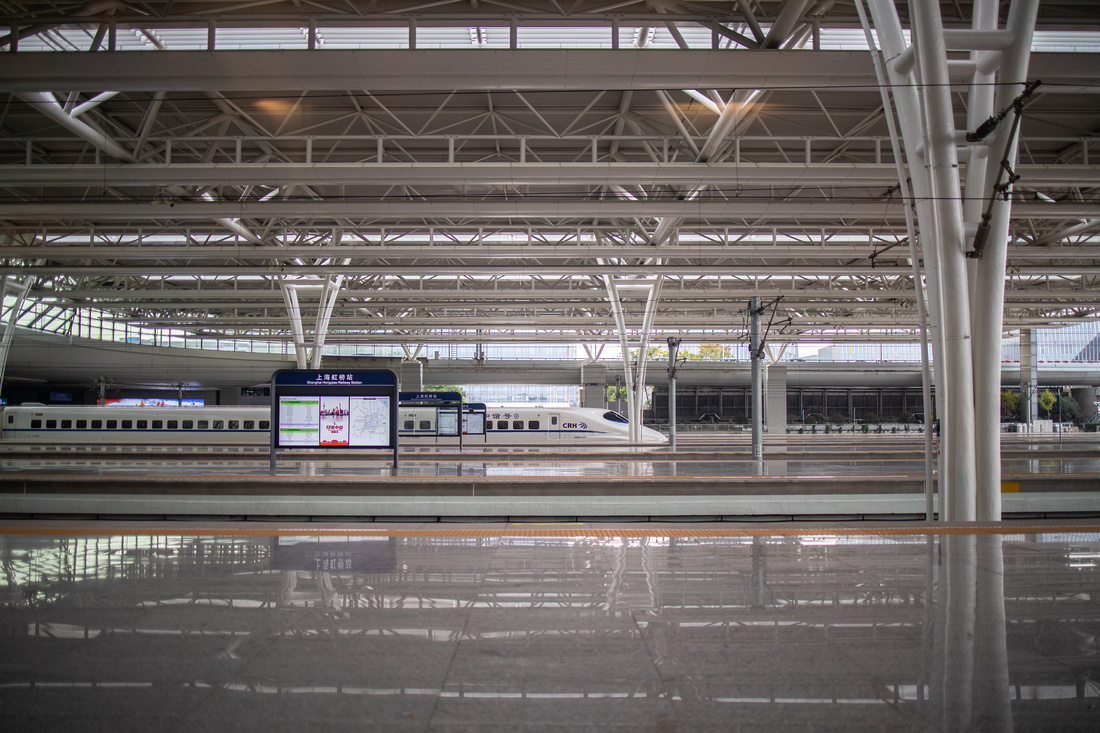
Traveling with the bullet train... The Hongqiao Station is located in the "city" airport of Shanghai.. and its organization as well as its size is pretty impressive...

Just a view out of the window of the train....autumn in China....
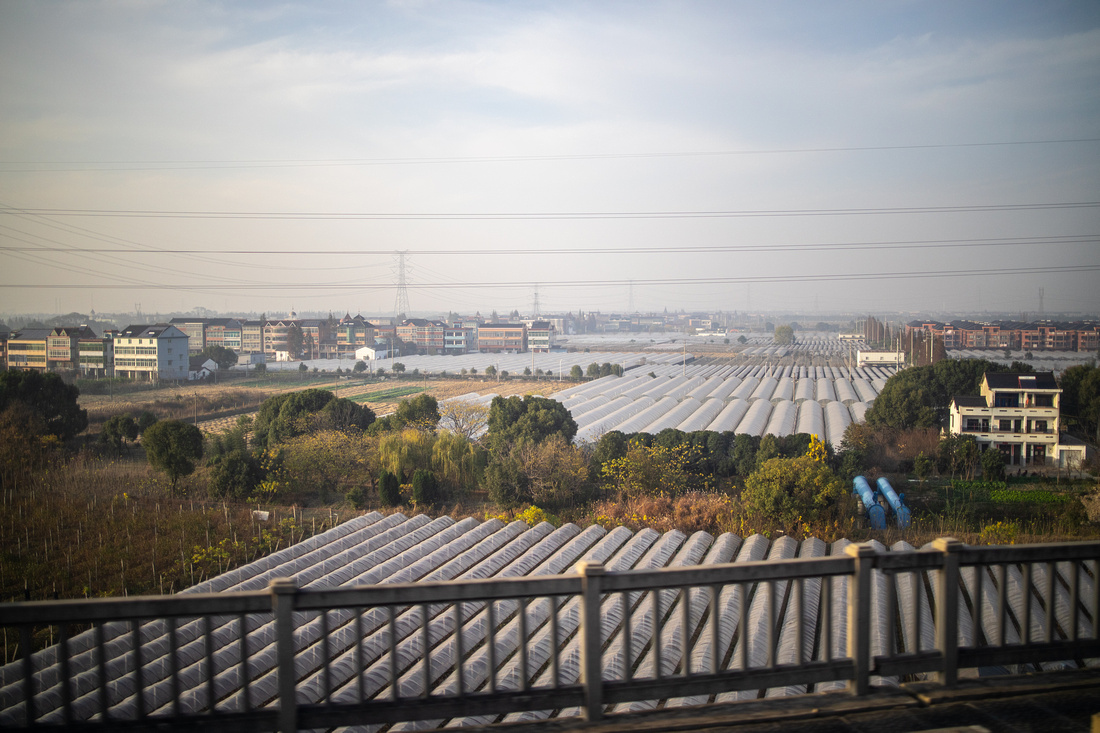
Whenever you ride by bullet train the window are like a filter. But for me the important thing was the amount of green houses you see in certain distance from the big cities....
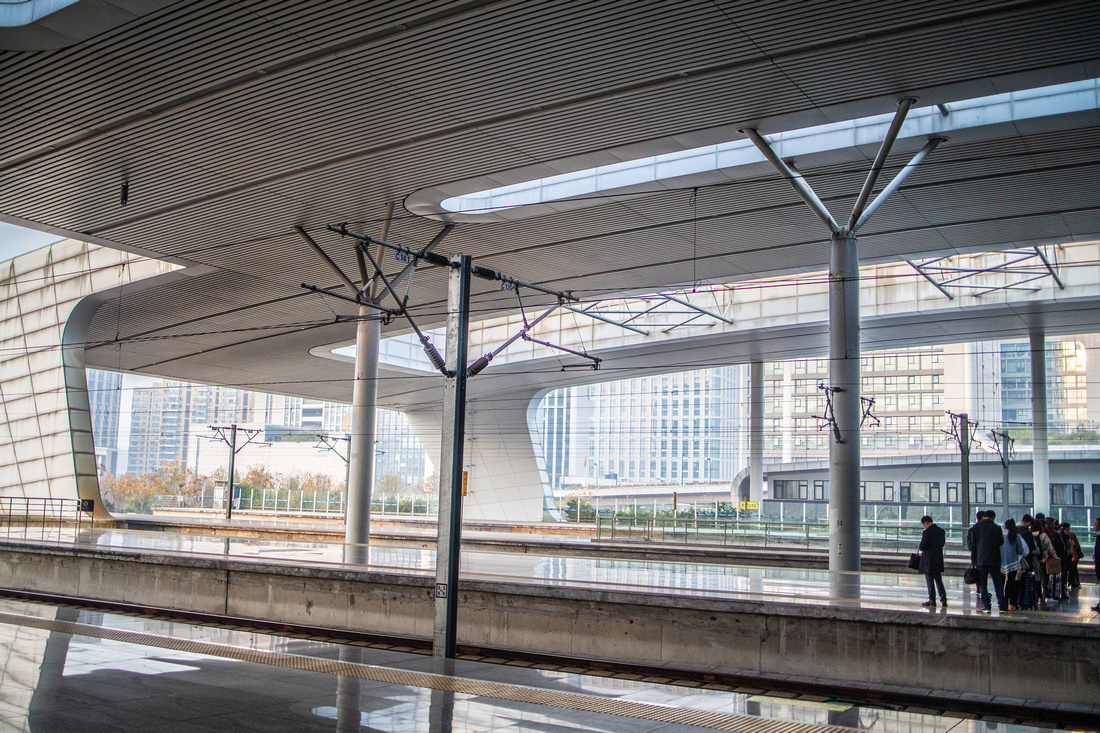
Arriving in Hangzhou - again a modern train station........

A Taxi ride from the station to the hotel... the amount of devices here is pretty impressive....
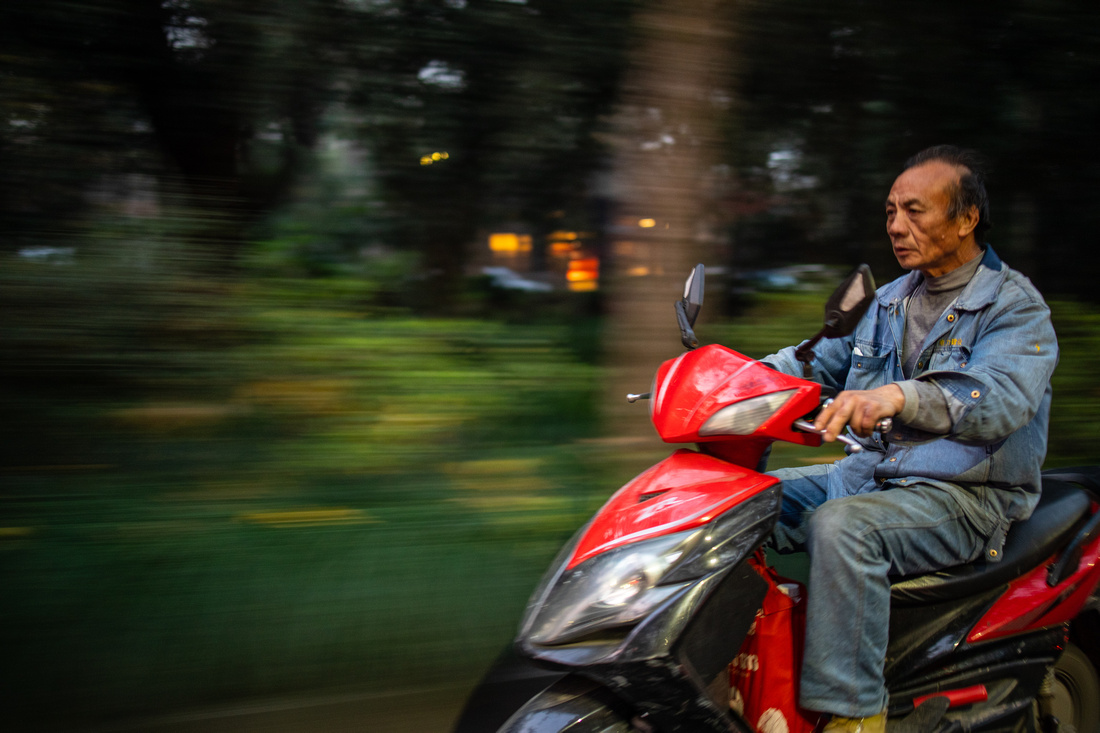
So many moto cycles.... and all of them are electrical....

Later we made a short walk to the Maojiabo lake close to our hotel
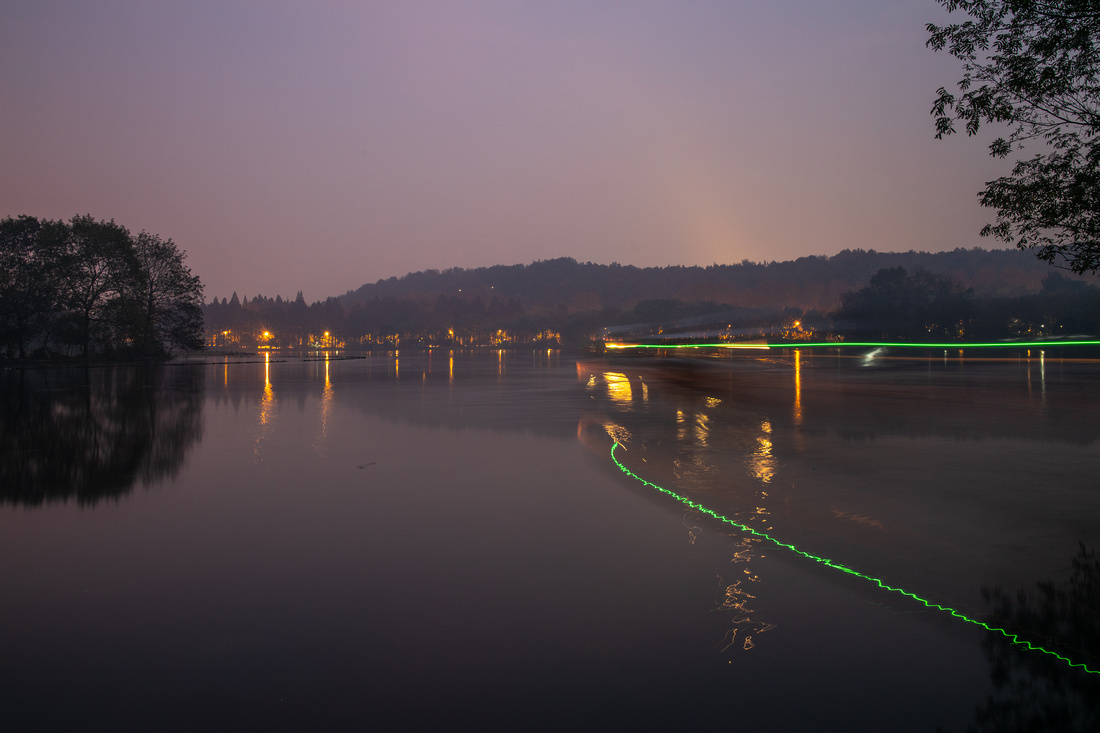
For these images I put my camera on a very small tripod normally used for iPhones... It is a bit modified with an Arka Swiss adapter and it works just fine...

I do lieg these round bridges and its reflections...
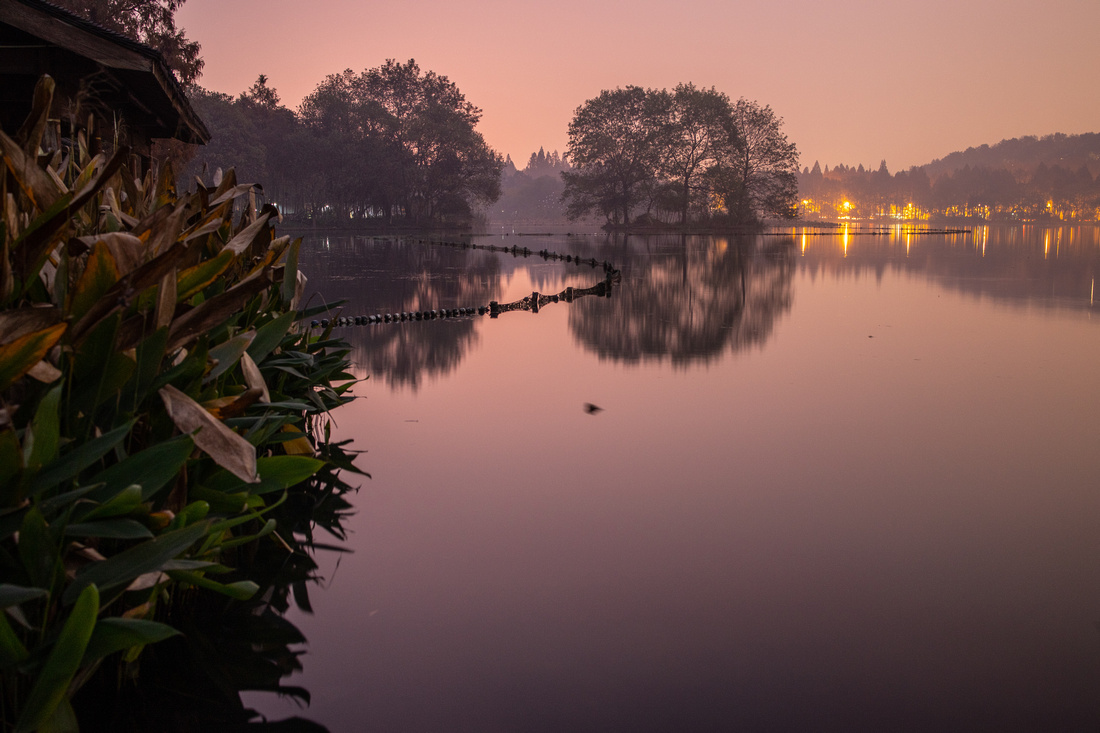
The interesting part of this lake is that you find little huts to sit at the lake....
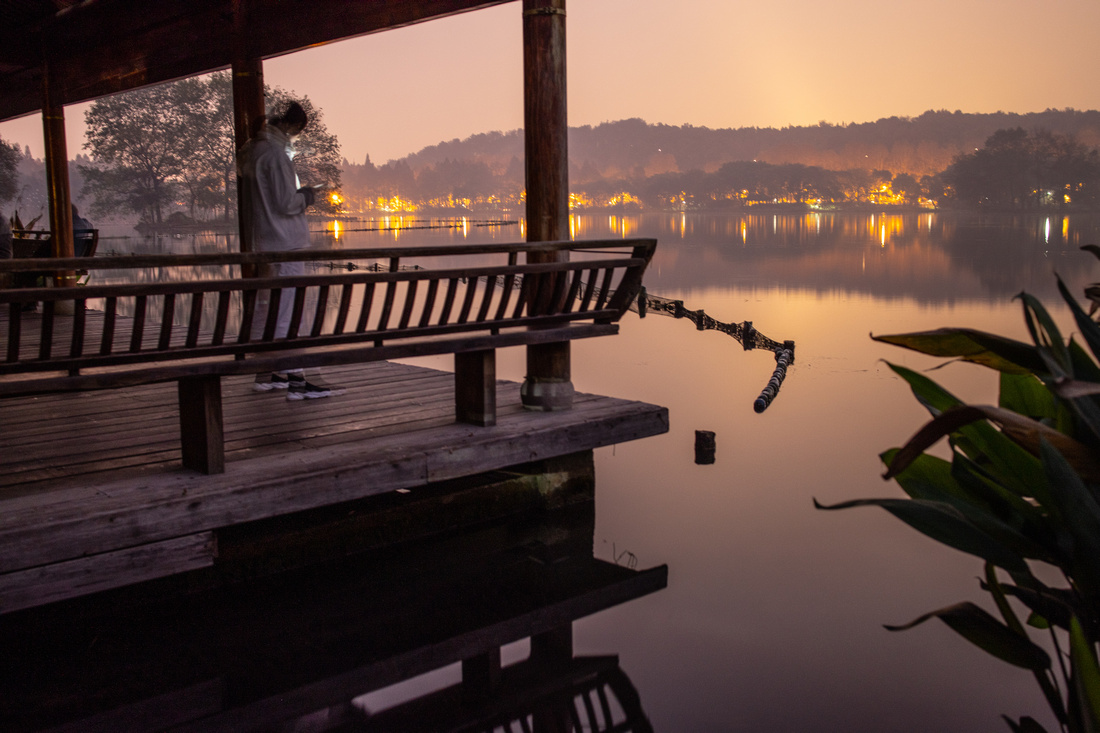
Relly relaxing, watching sunsets
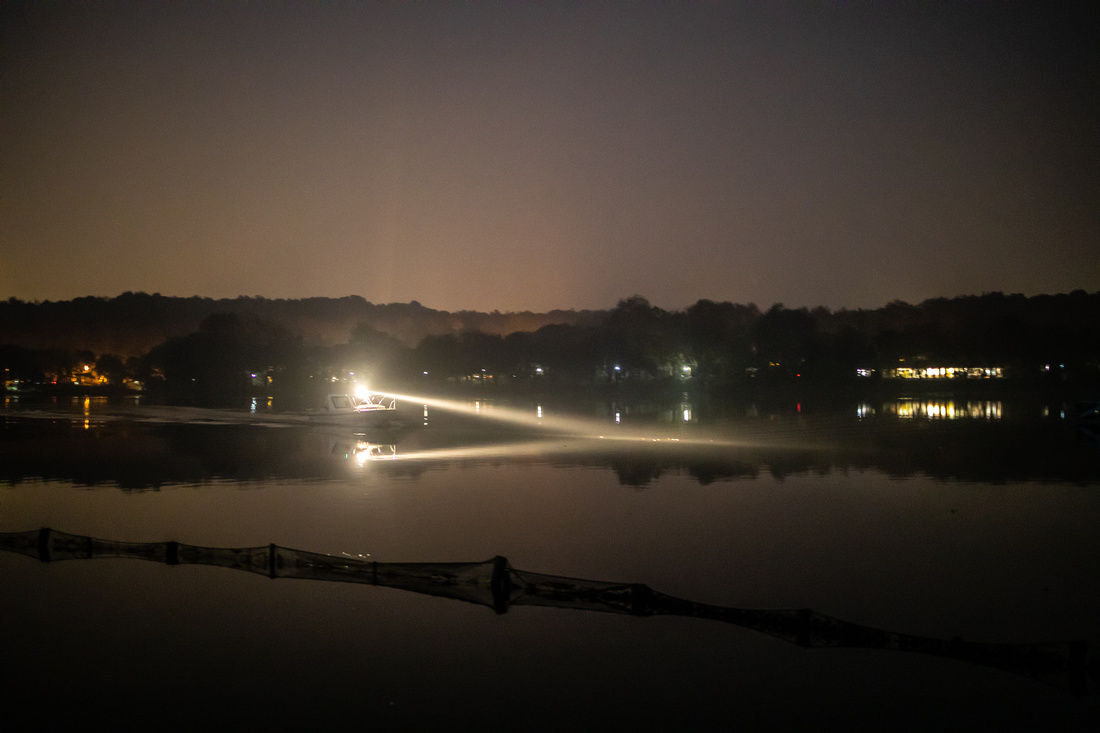
And sometimes a boat shows by... this time handheld....

Next stop: dinner.... (Astonishing?)
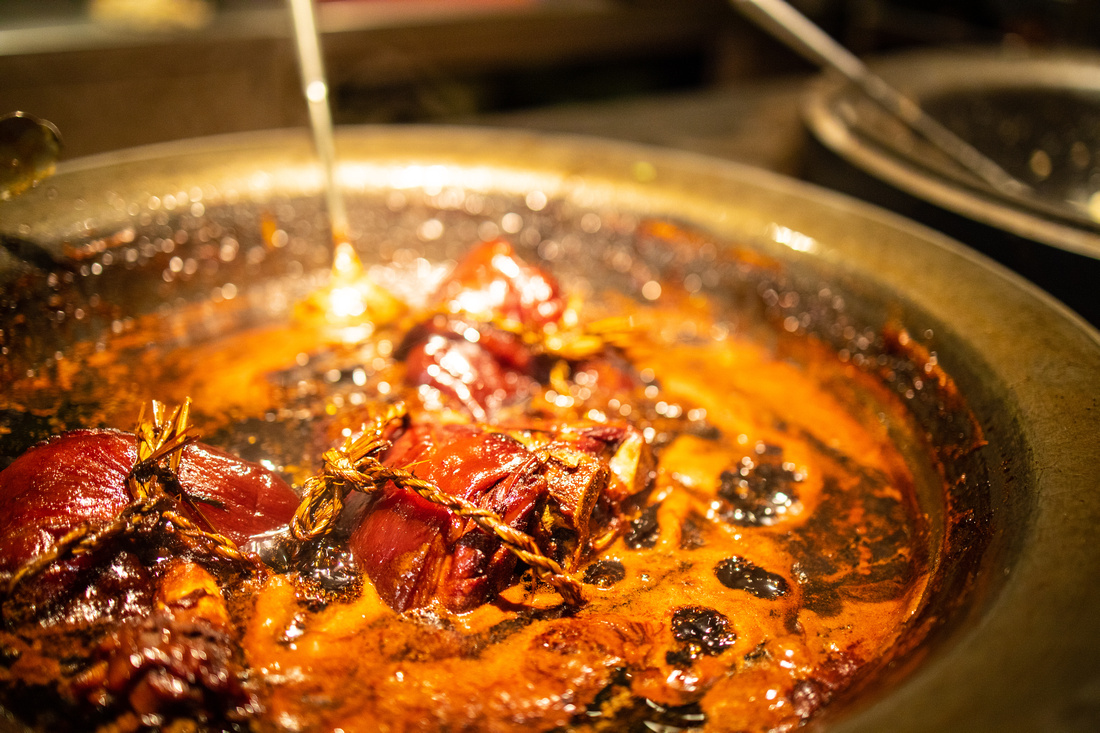
These are knuckles of pork....
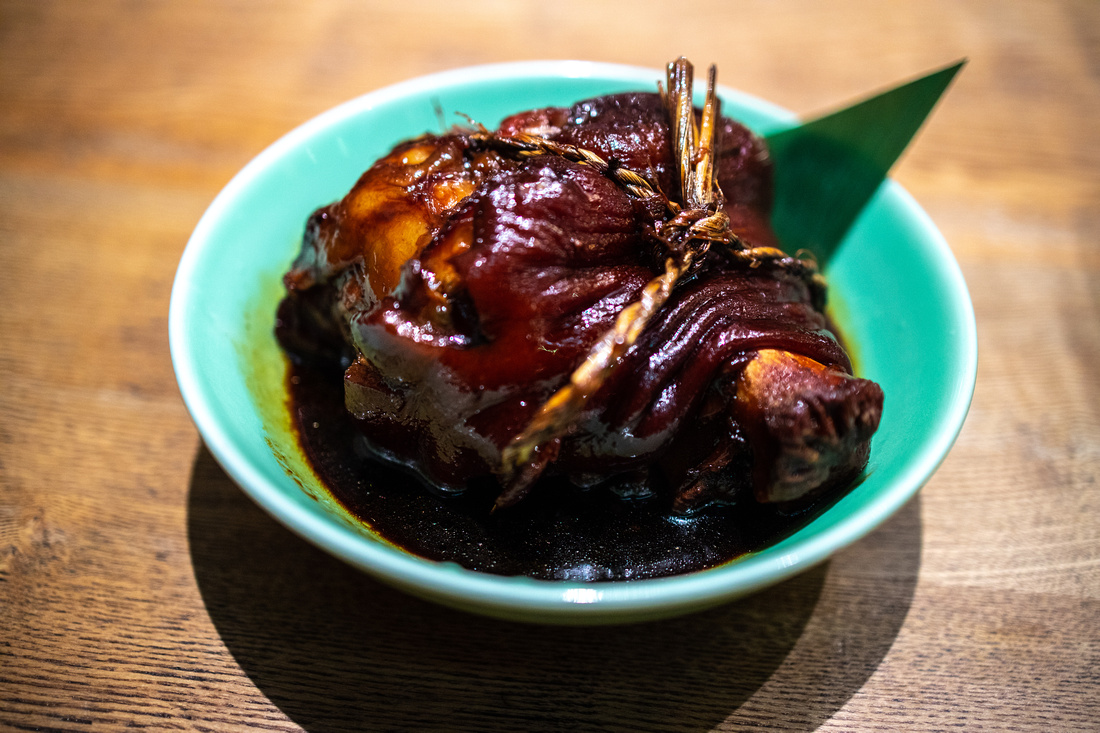
A single one of them,,,,

and a very close up....
It was one of the best pork knuckles ever.....
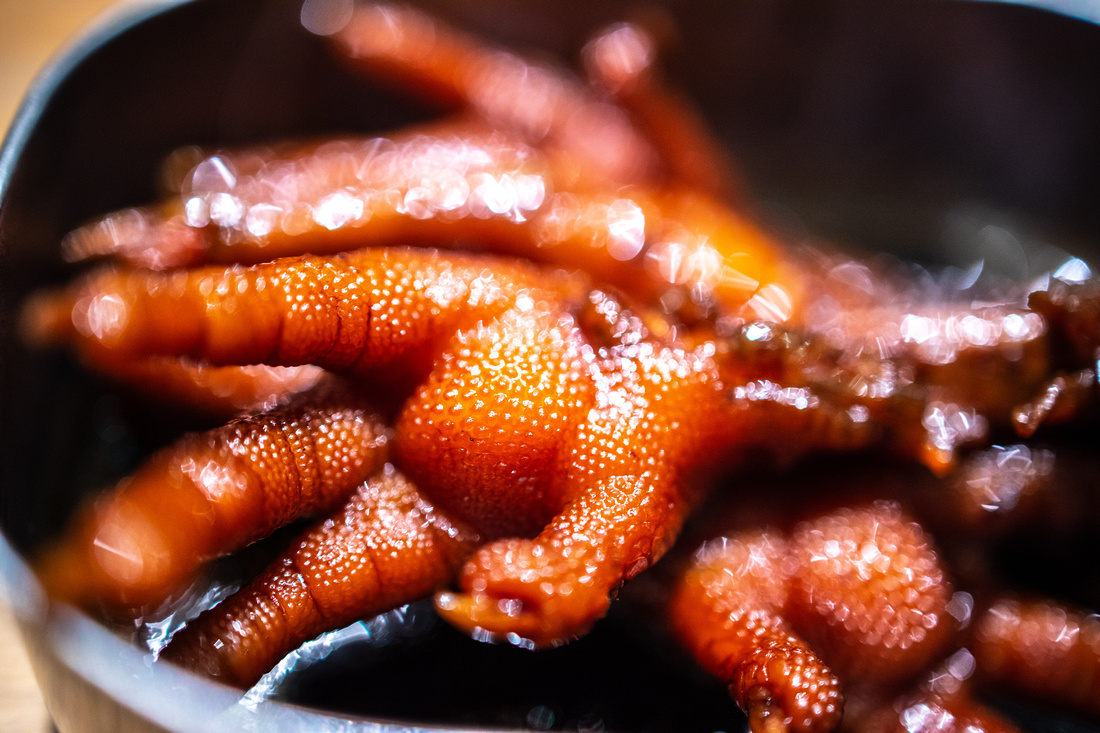
And a chicken foot. They are tasty. I like them....
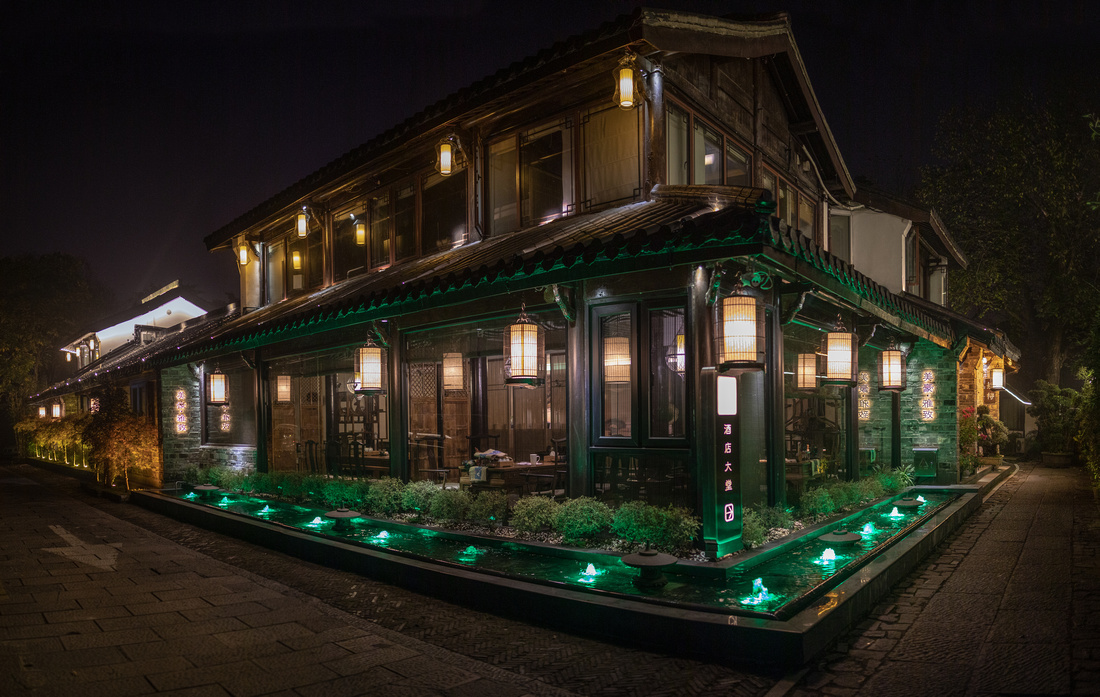
And this is the place where we stayed over night. Really a recommendation....
Next morning...
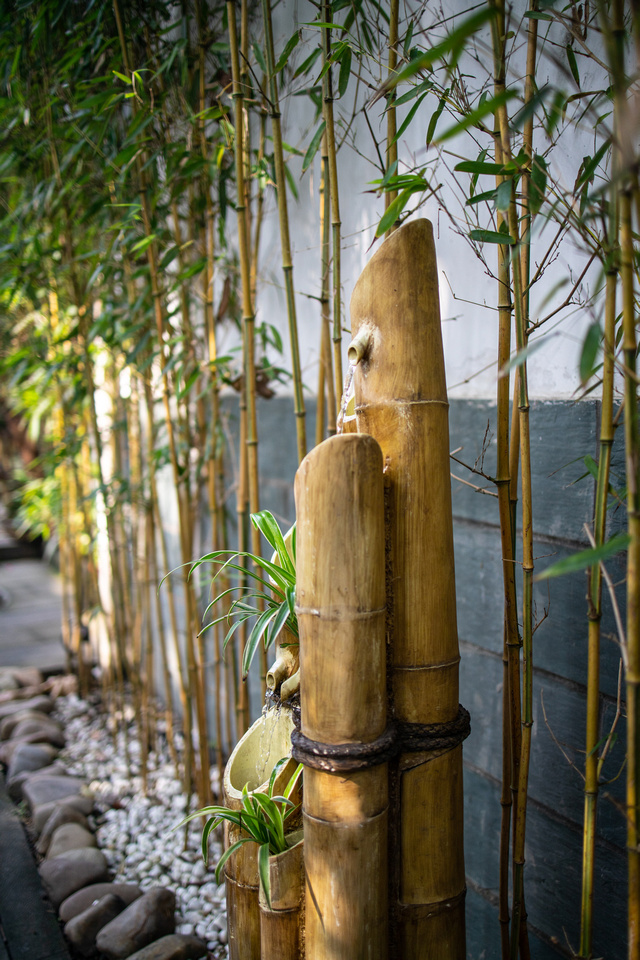
I made a little walk around the hotel and I found some beautiful looking spots...

The bridge to the garden in the atrium of the hotel was pretty nice....
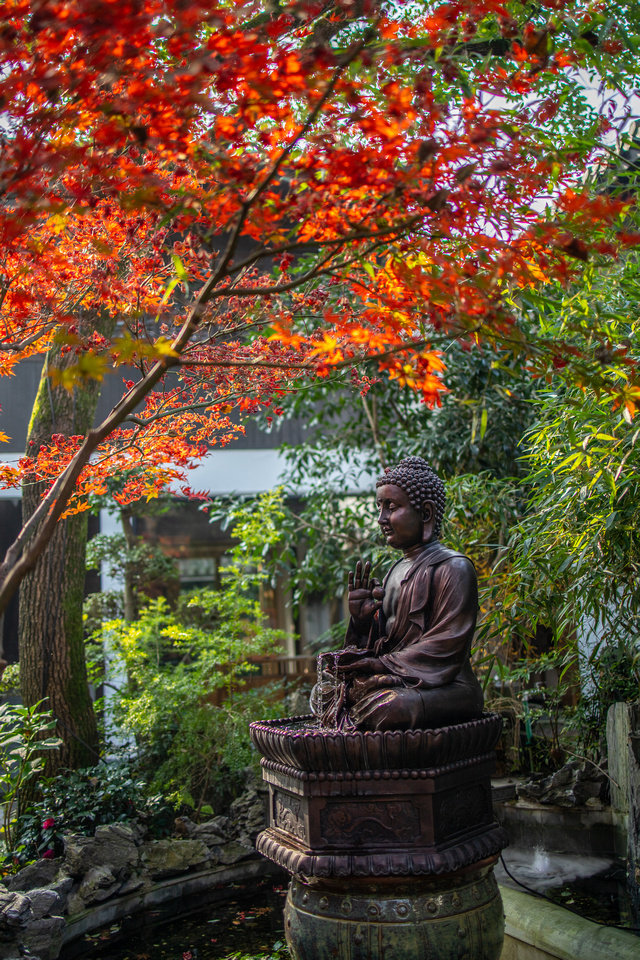
A Buddha was there, too...
Breakfast... starting with Chinese tea....
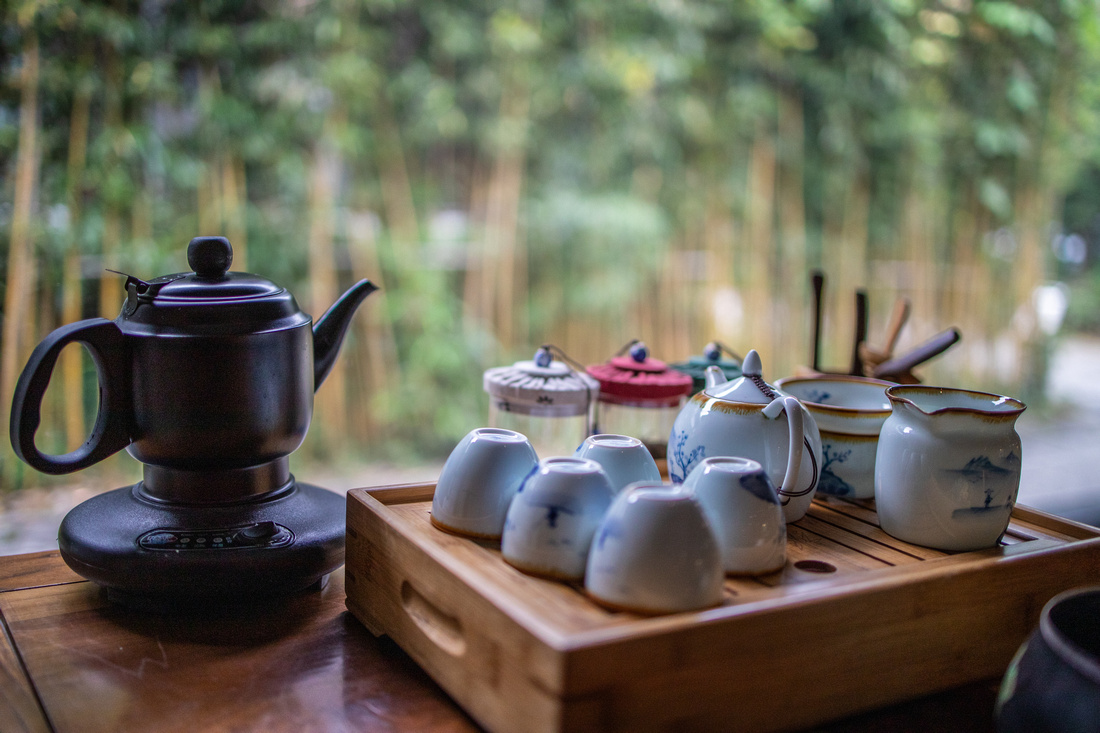
One remark on this image: it is one of the rare images where the background blur is a bit busy.. Not as busy as Canon´s Nifty Fifty, but definitely more busy than the 35mm F1.4L _MkII
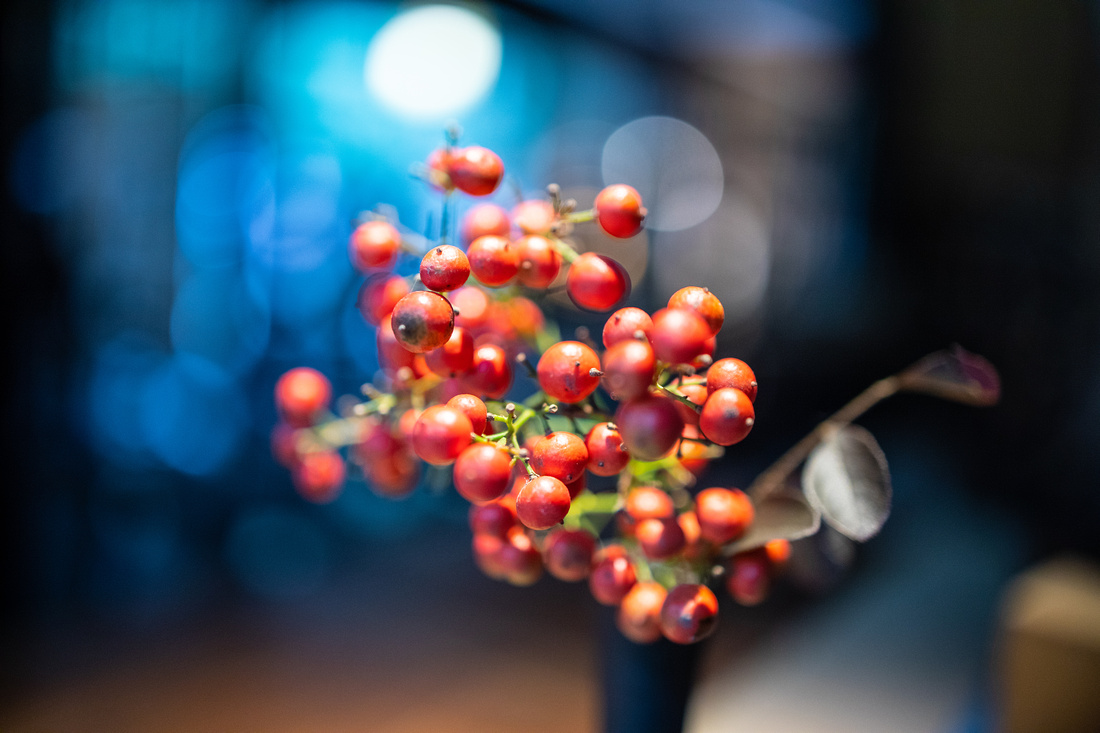
Some decoration on the table....
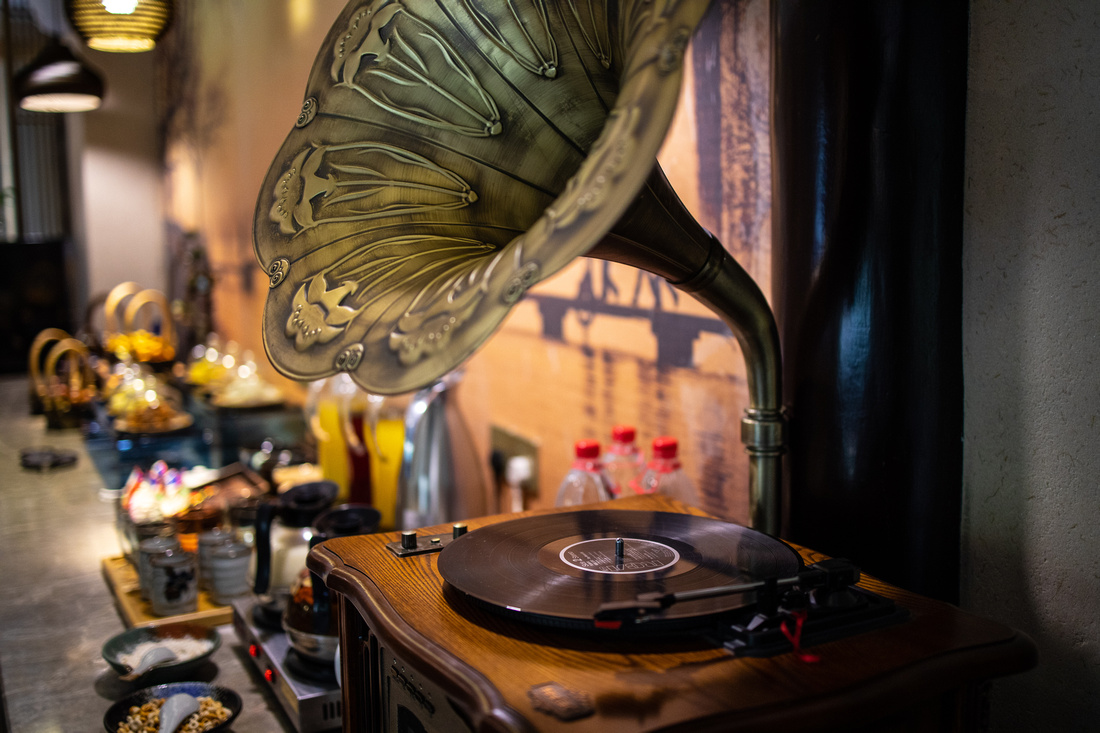
I like a decoration like this old grammophon on the breakfast buffet...
After breakfast we started our hike around the famous Hangzhou western lake...
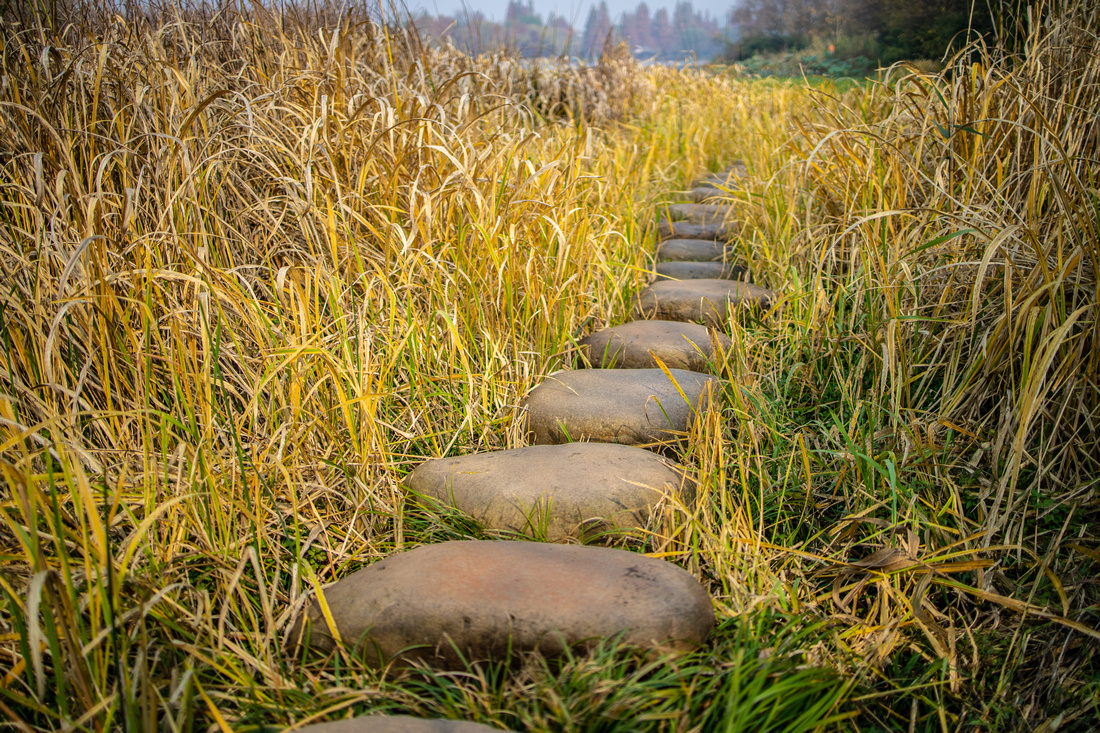
The hike was pretty nice. I like this big stones in areas where normally the ground would be pretty moody...
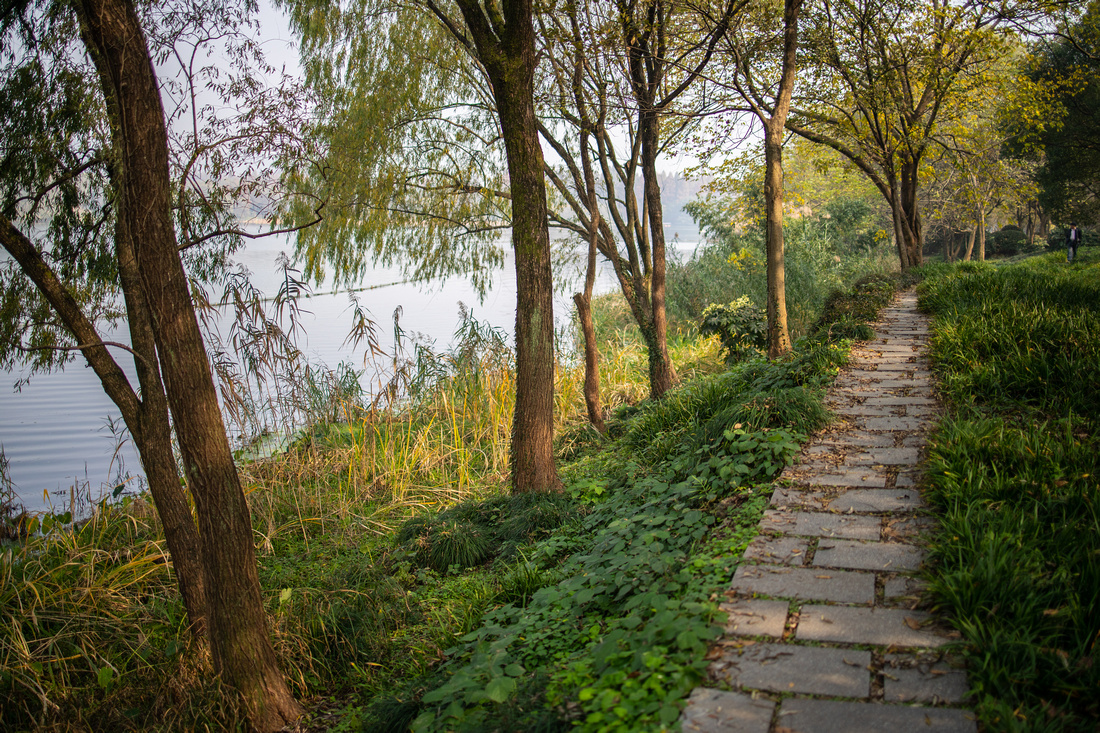
All trails ant walkways are nice an well maintained...
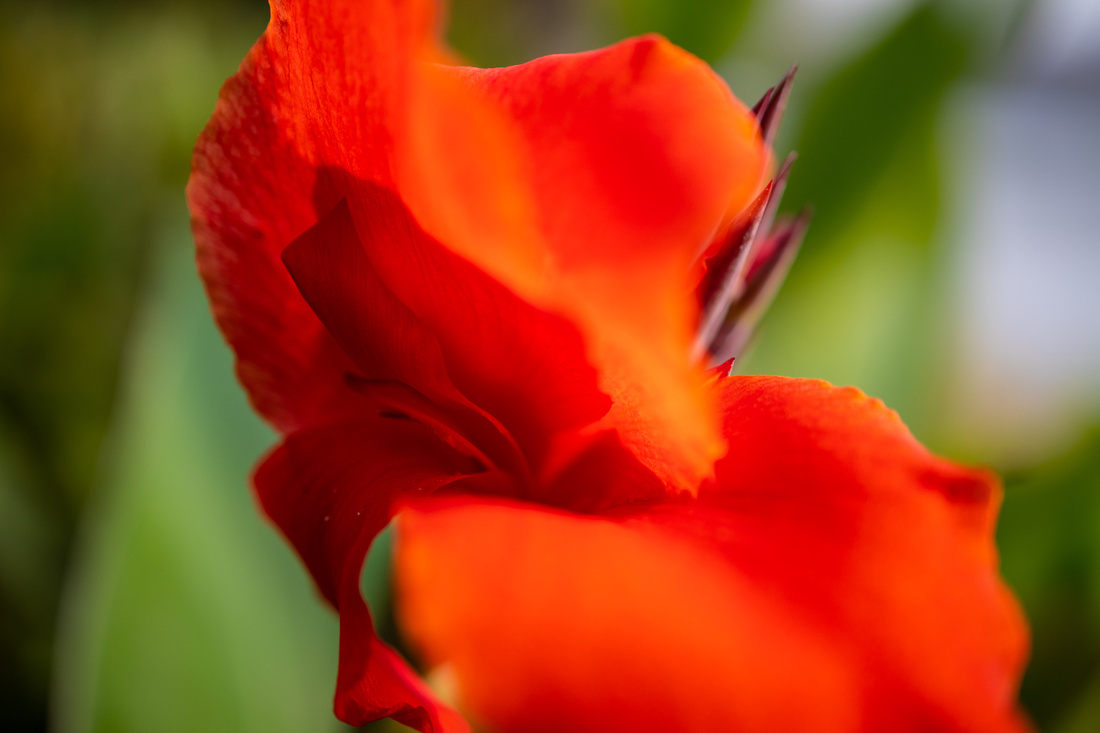
Some small things around
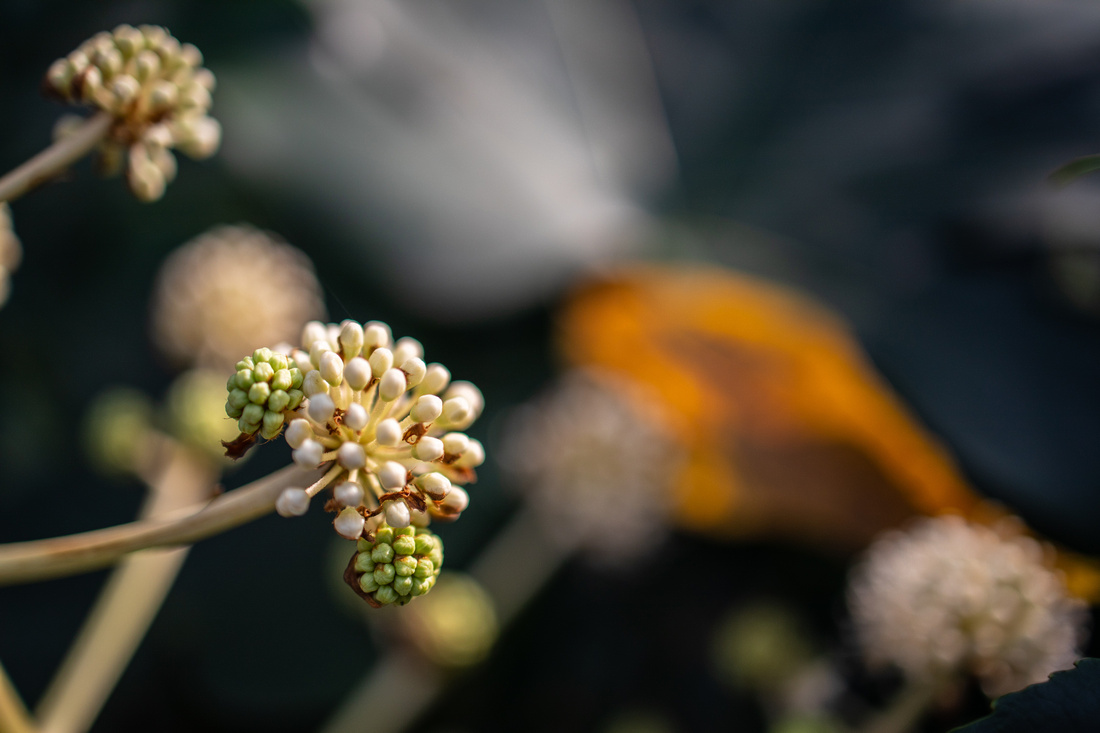
And another small thing... again: the macro functionality of the lens shines in these situations...
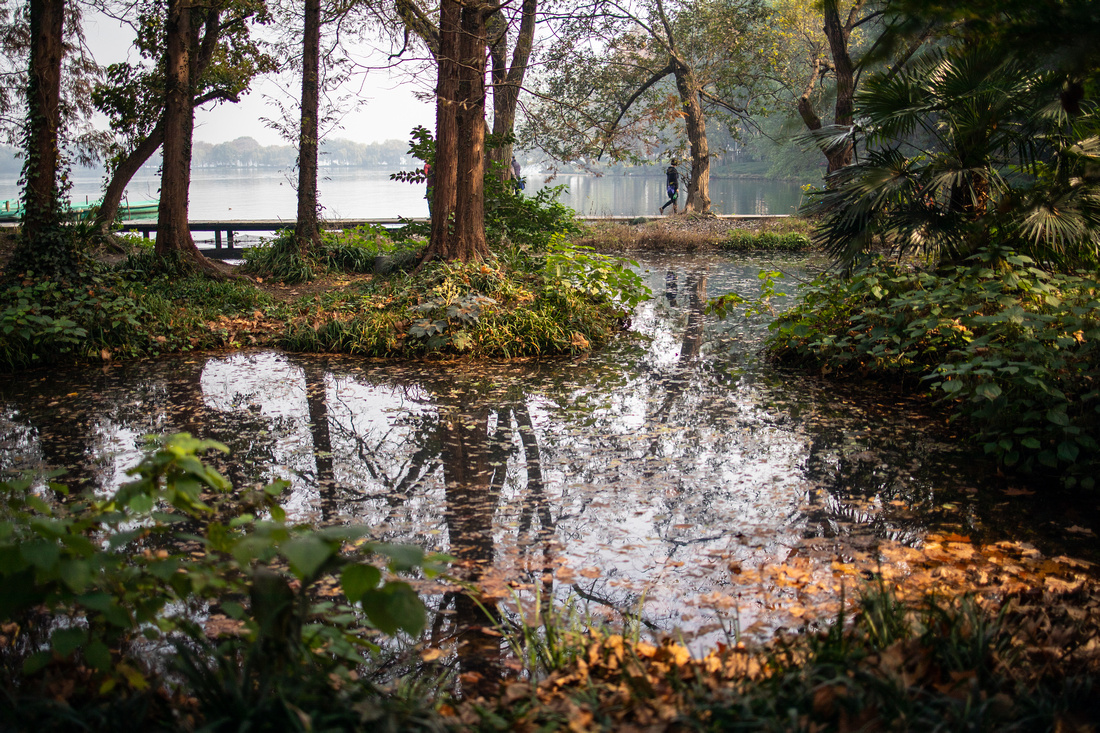
But the like and the way everything is arranged looks really nice!!

An invitation?
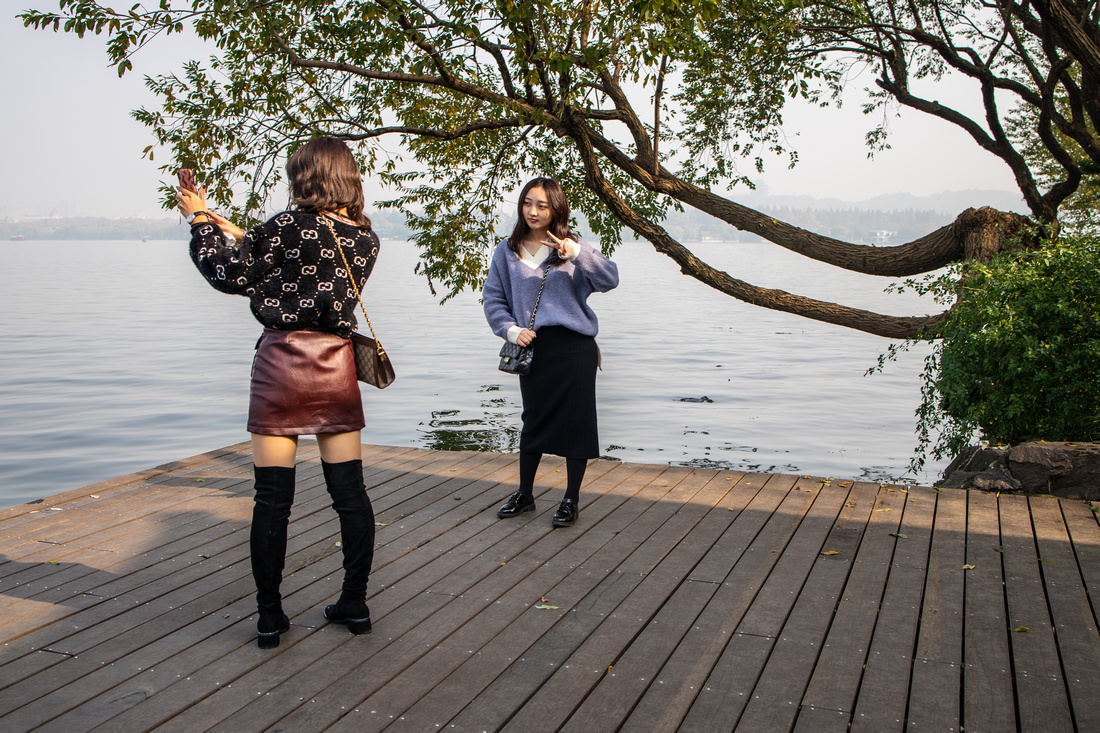 Street photography... in silent mode... the EOS R as well as the 35mm are a perfect combo... (The girls where happy with my photo was well...)
Street photography... in silent mode... the EOS R as well as the 35mm are a perfect combo... (The girls where happy with my photo was well...)
There is an Island in the middle of the Lake called "Three Pools Mirroring the Moon" - were this photo was taken

Since the whole gardening approach was build 1000 years ago and you see many black and white images I thought some black and white photography is adequate... or?
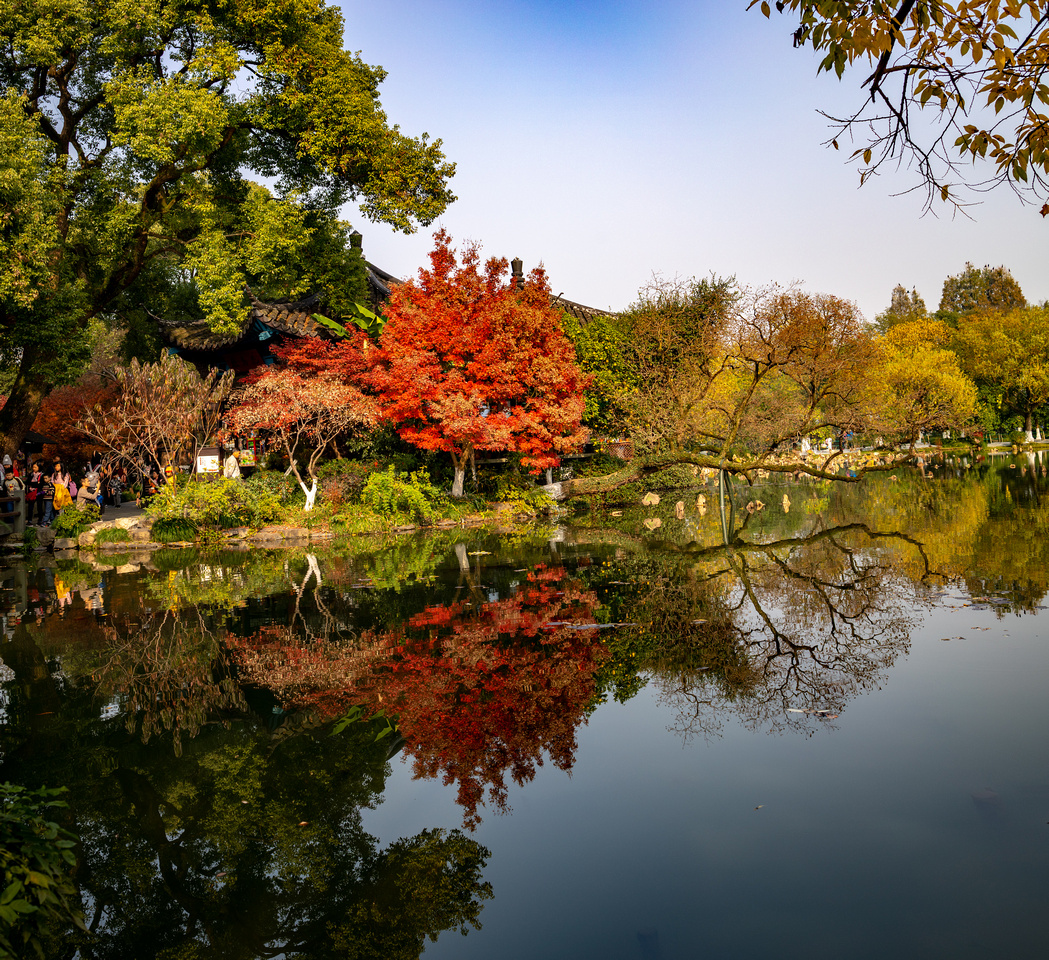
It was beginning of December when I was there. But the colors were still looking like autumn... But I can live with it...

Next stop: lunch break.. A chicken in the clay egg...
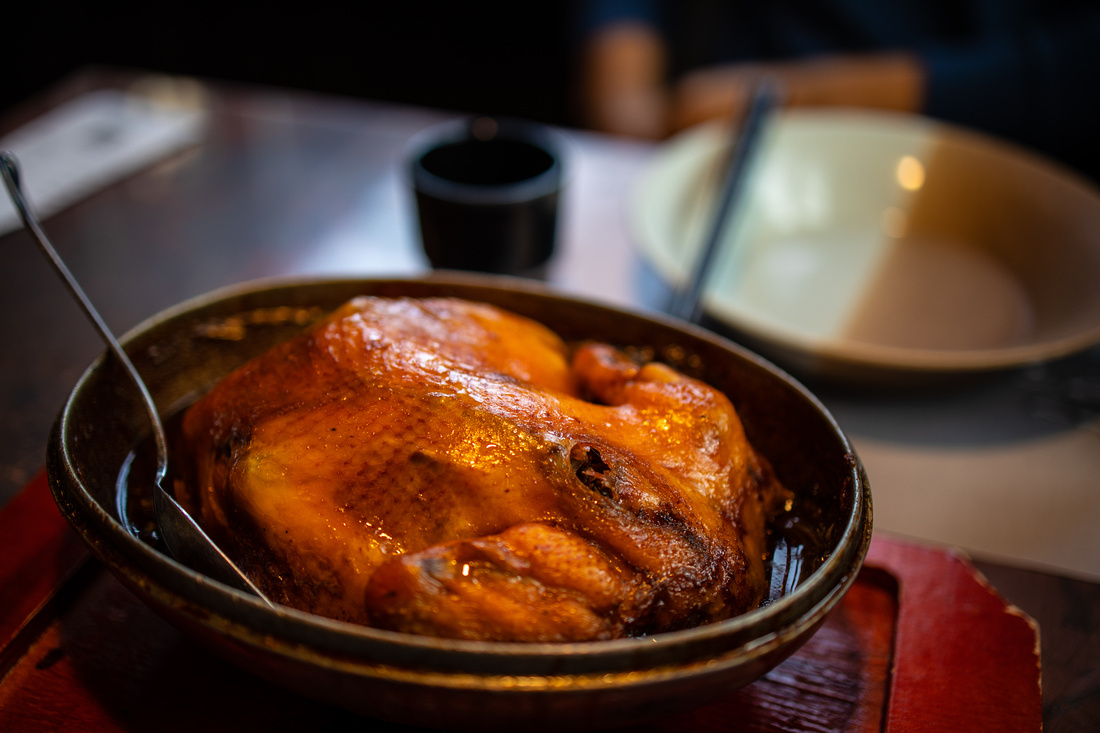
Another style of Chicken.. delicious as well ....
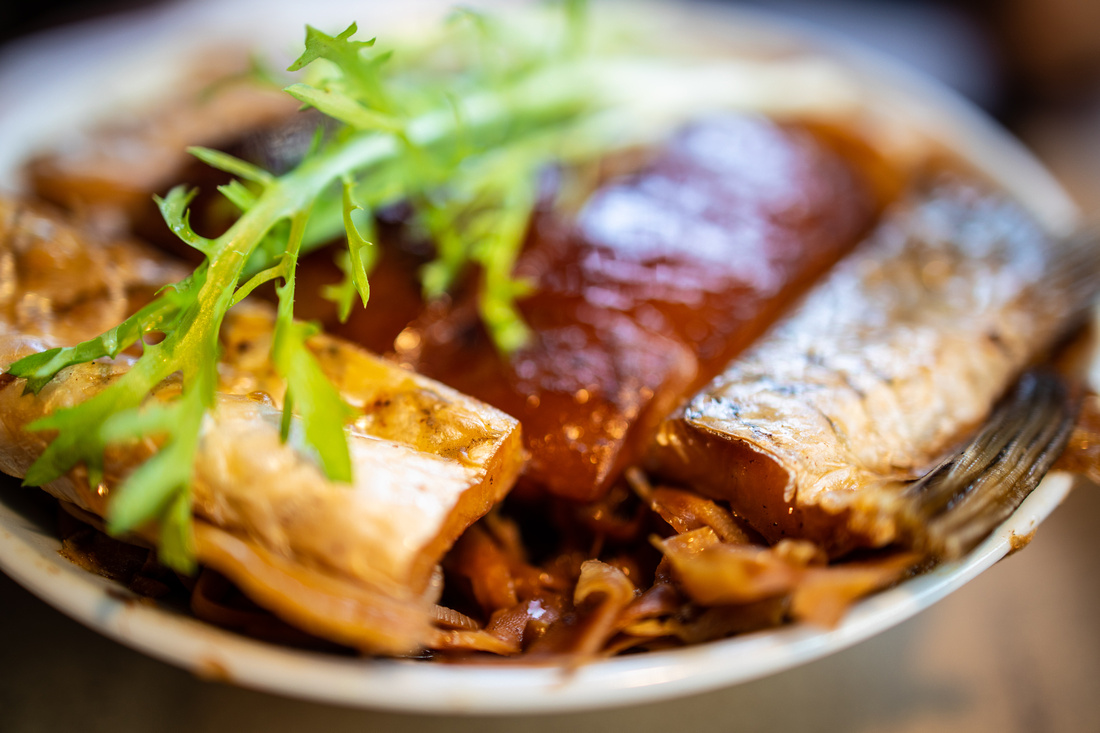
Pork and fish...
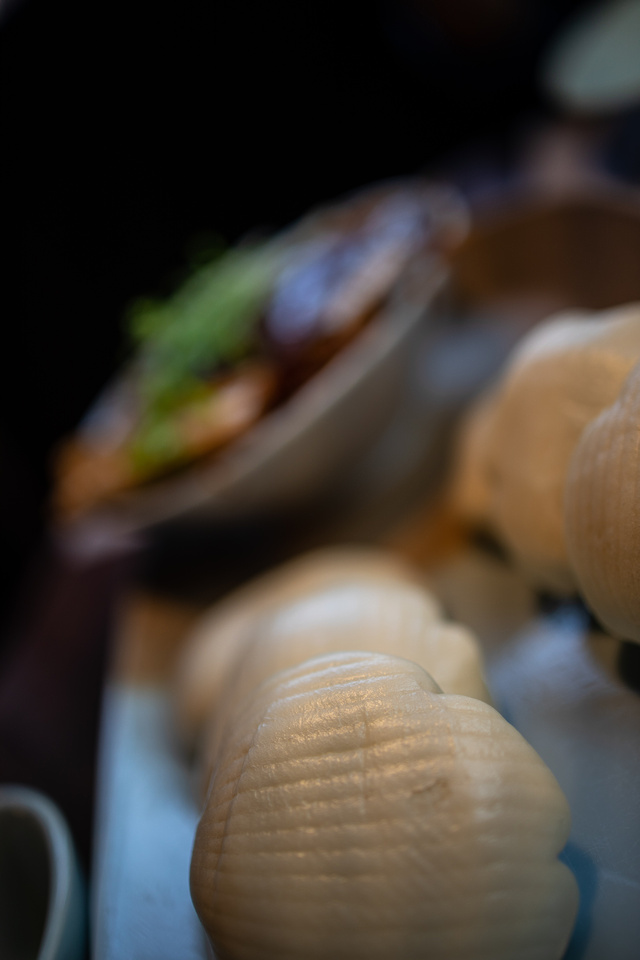
ans some dumplings...
After lunch there was no more food needed that day....
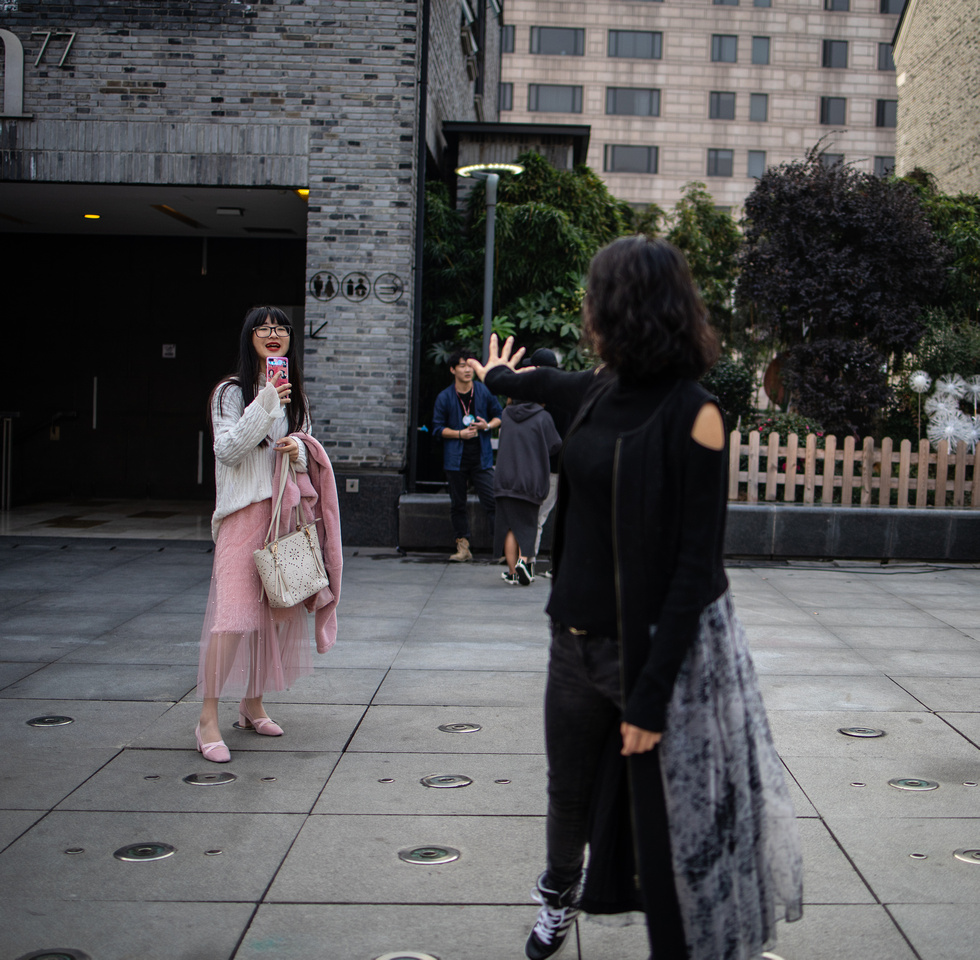
This is something really special... women taking pictures of women making "funny" gestures... The funny part is: this is a female game. Only women are doing this... no men with men, no men with women.... And I do have no explanation for this...
 There are nine million bicycles in Beijing... this wonderful song of Katie Melua becomes more visible whenever you visit Chinese cities....
There are nine million bicycles in Beijing... this wonderful song of Katie Melua becomes more visible whenever you visit Chinese cities....
And the orange ones are mobiles... today the cities are occupied with bicycles to rent... which is pretty simple and effective.... very handsome...
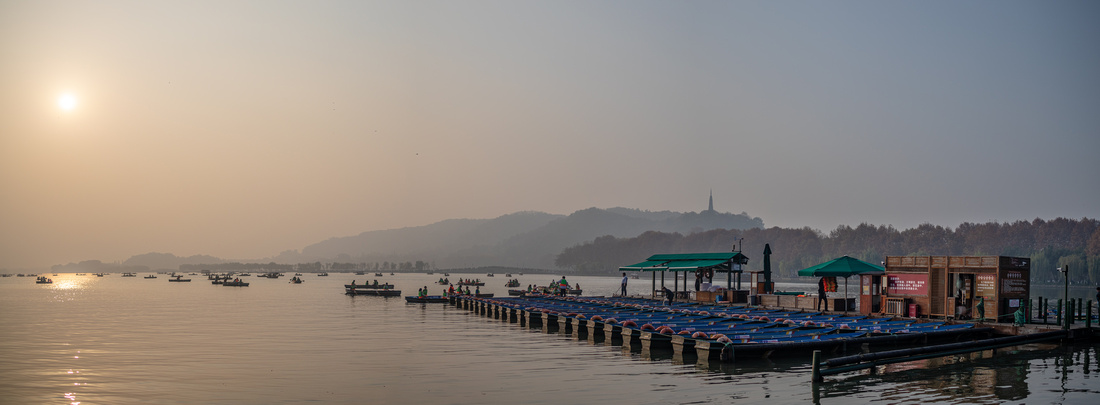
What´s to do if you have only a 35mm lens, but the shot should be wider: take a panorama. It is so easy. Lightroom makes it really easy and the results are very amazing, or?
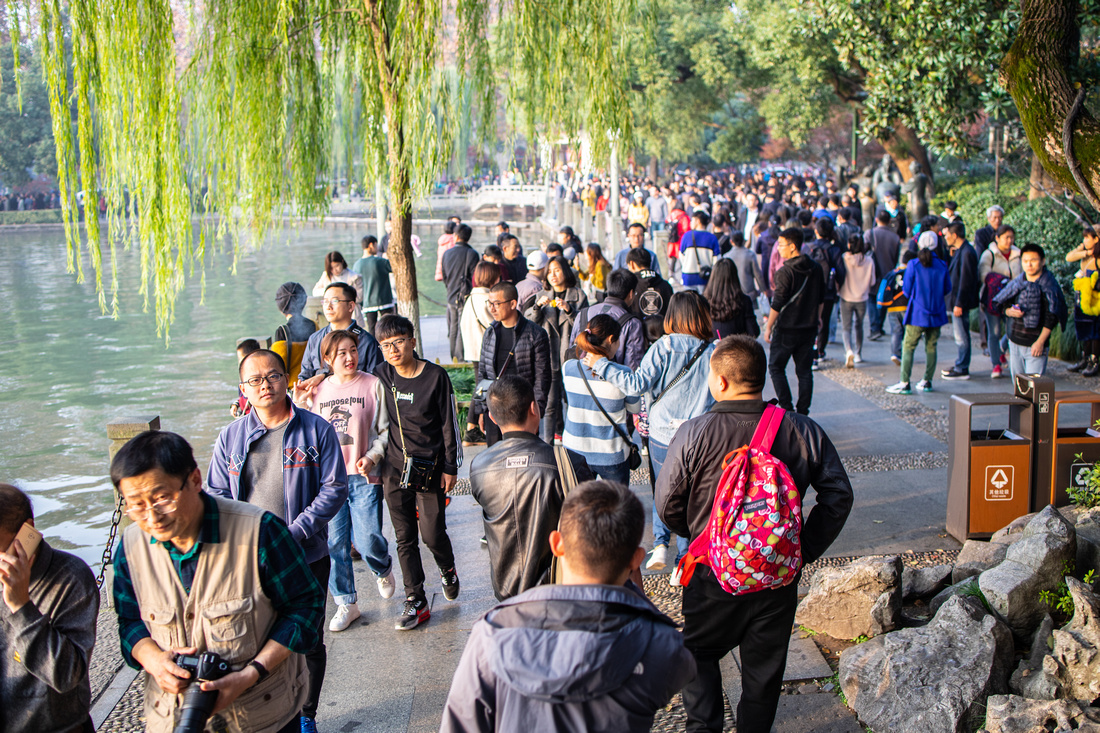
Even if it is not astonishing for many people - but the crowd was immense walking around the sea....

This is another popular shot of the bridge with Hangzhuo. Well this photo could have been processed as black and white as well....
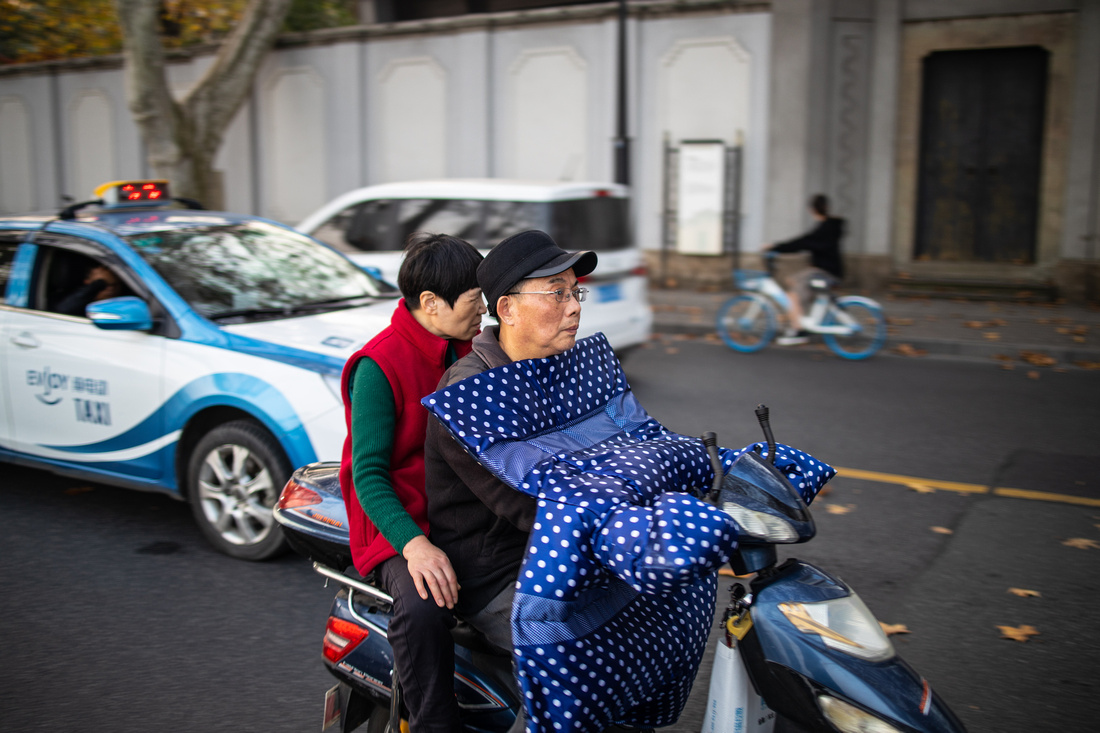
I tried a little exercise: panning while shooting... it os not that easy but if you set up the camera properly you get some nice results...
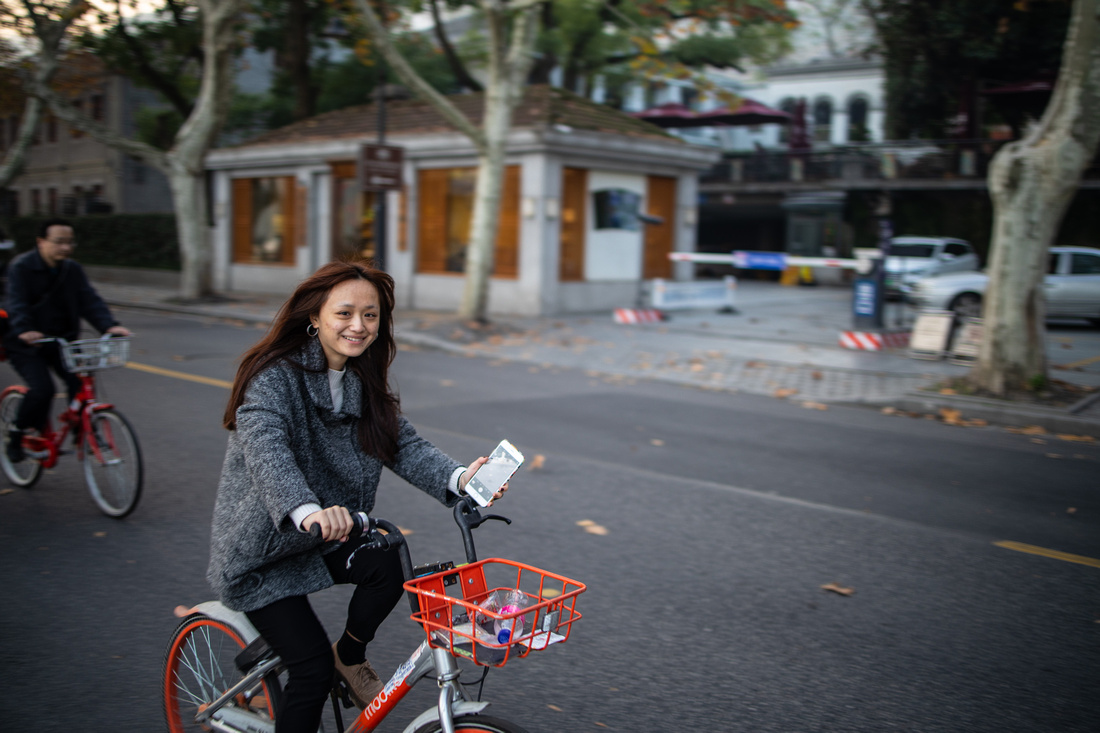
... and sometimes you get some nice reactions, too...
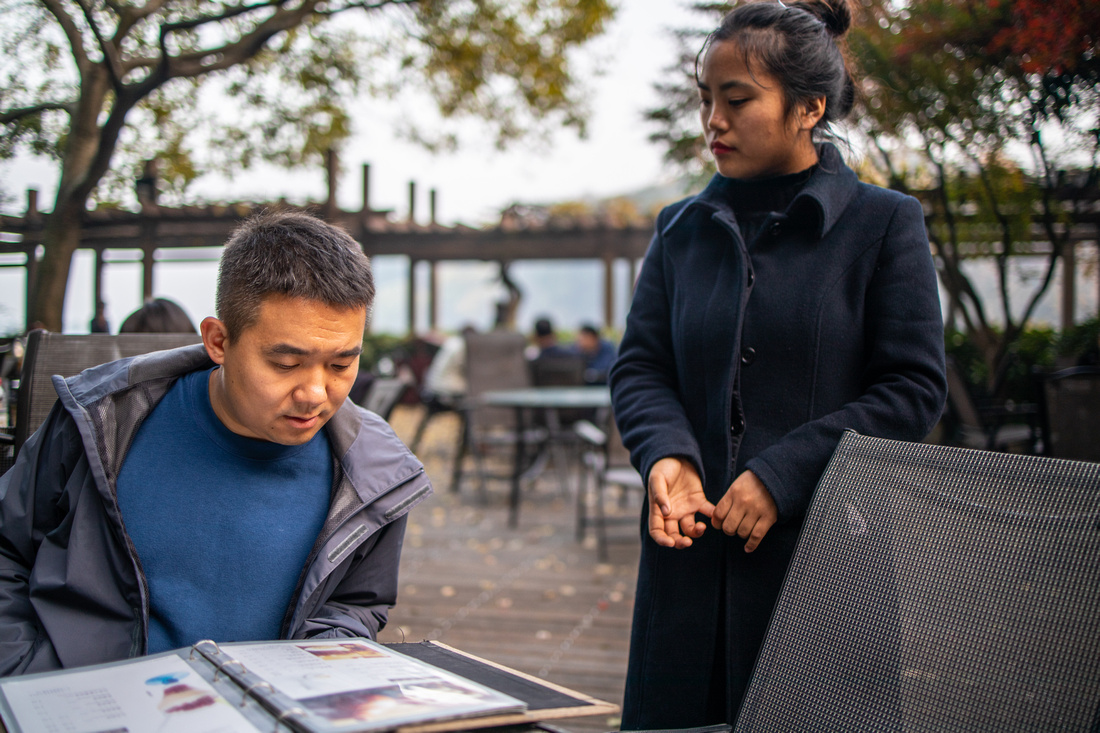
tea break in the park....
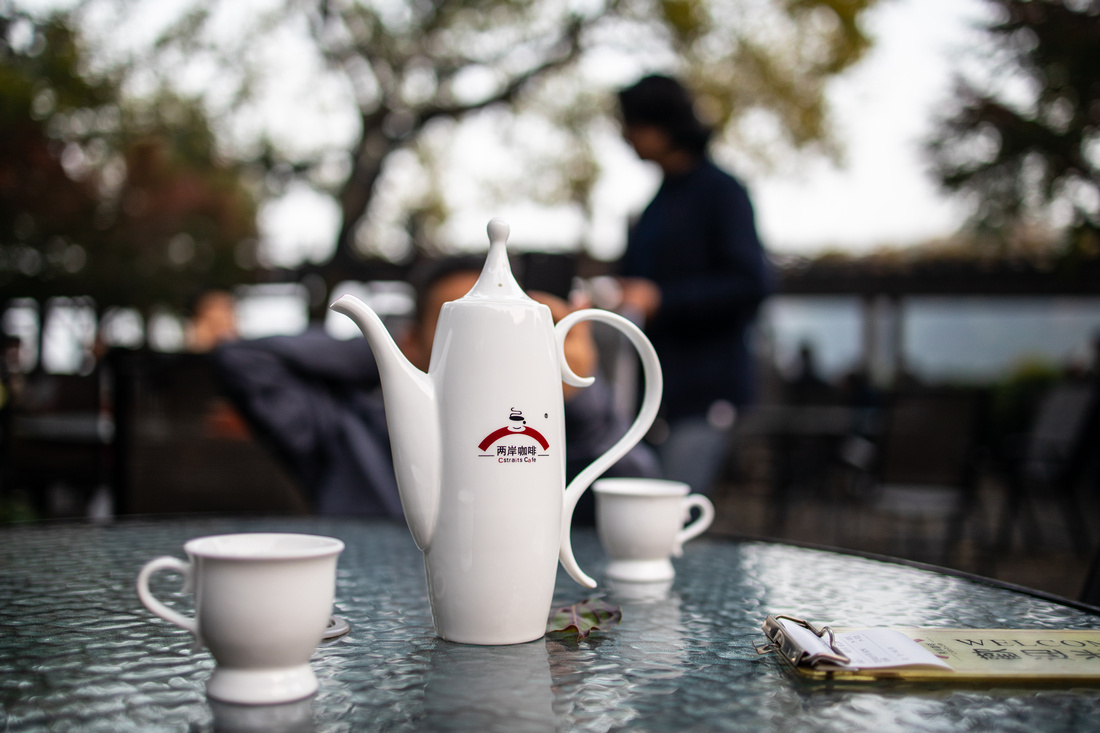
It is really joyful to have some tea in China...
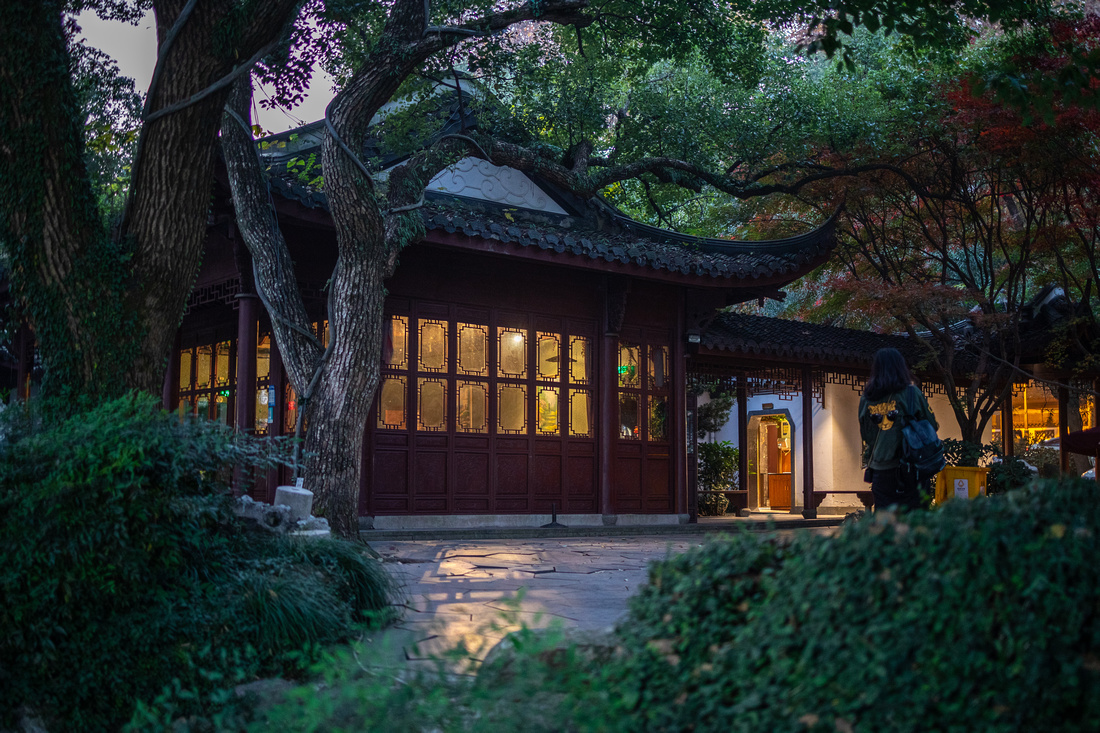
This was the tea house itself. By accident I shot this image with 1/8 s... and it is still really sharp. Thx to OIS....
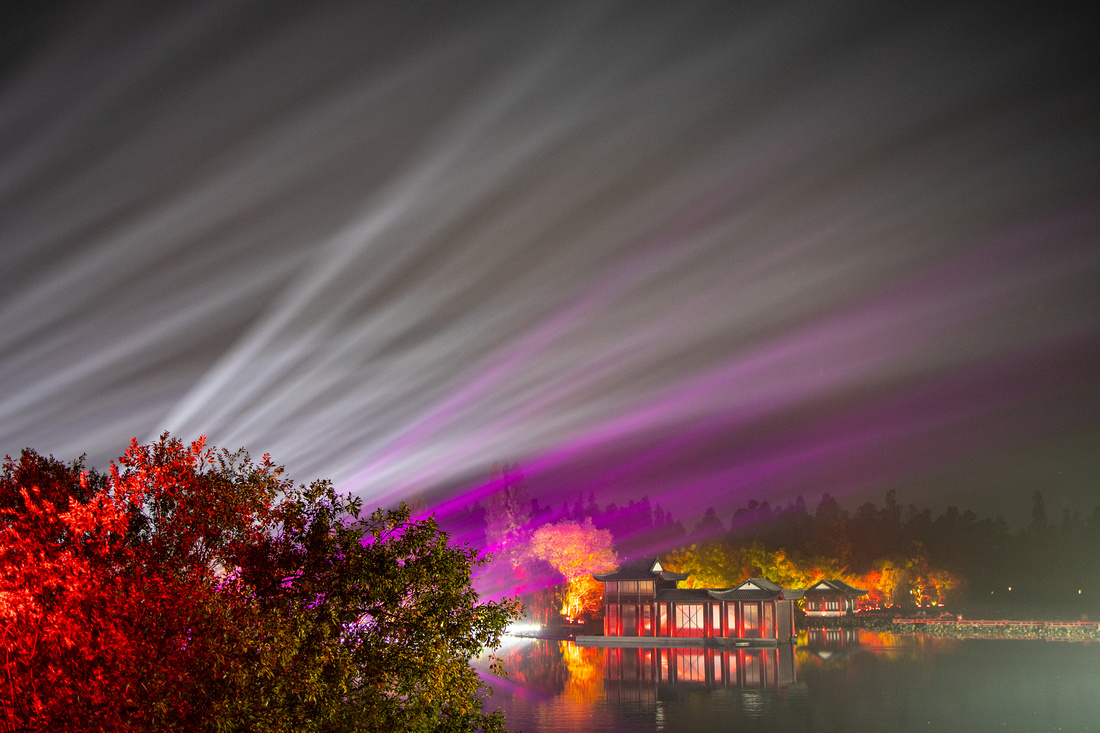
While walking home there was some light show under preparation... We had no tickets and we had to return to Shanghai. But what we have seen over the fence was pretty enough, or?
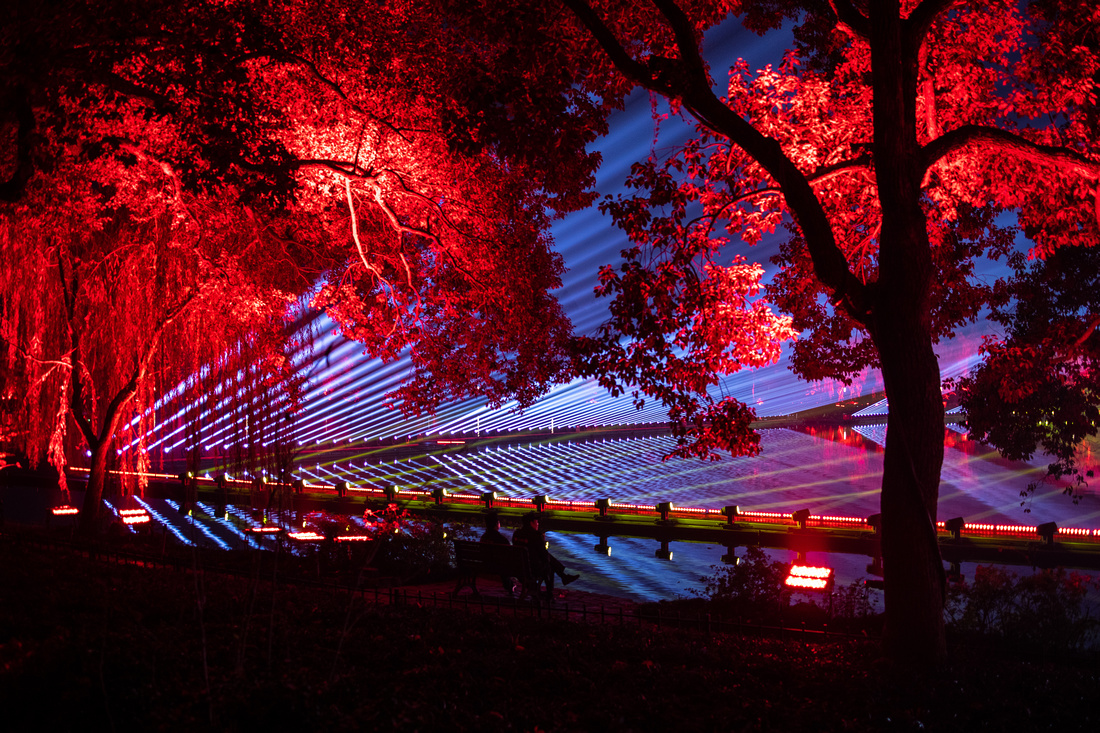
This image is one of my favorites of this series, definitely...
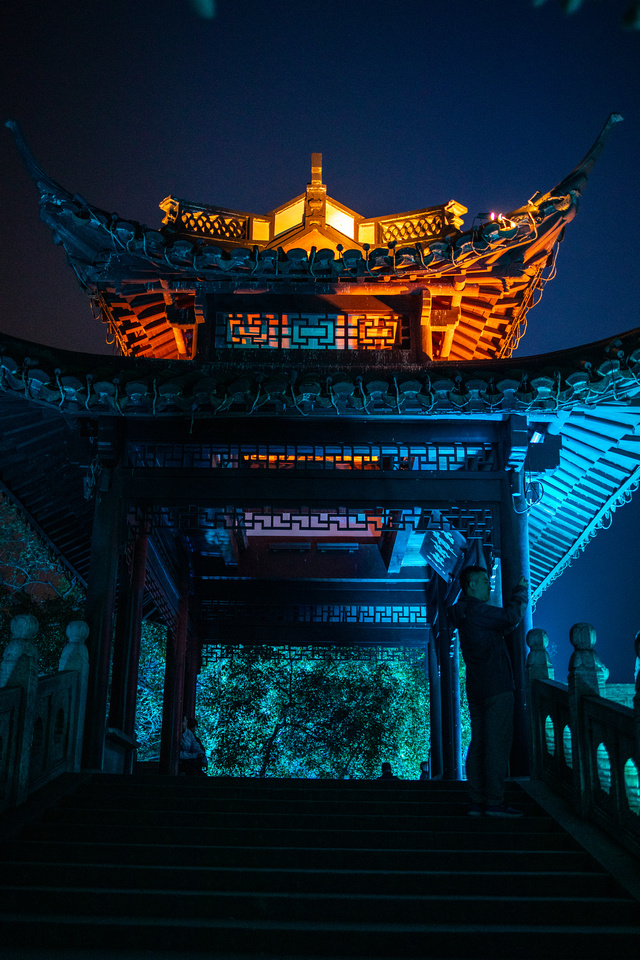
The gate was another shot which I like very much....
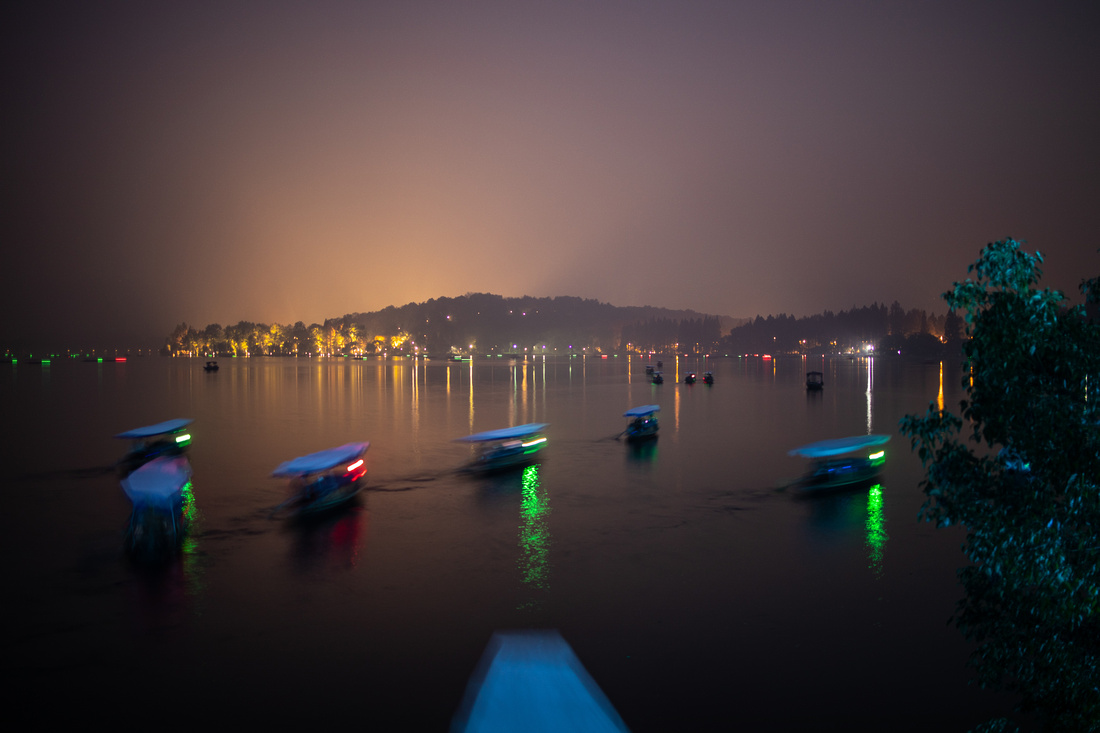
Ehen we were walking home the boats driving back home had been just lively. But I preferred to take this shot with 3.2s exposure time with a sturdy support on a stone bridge....
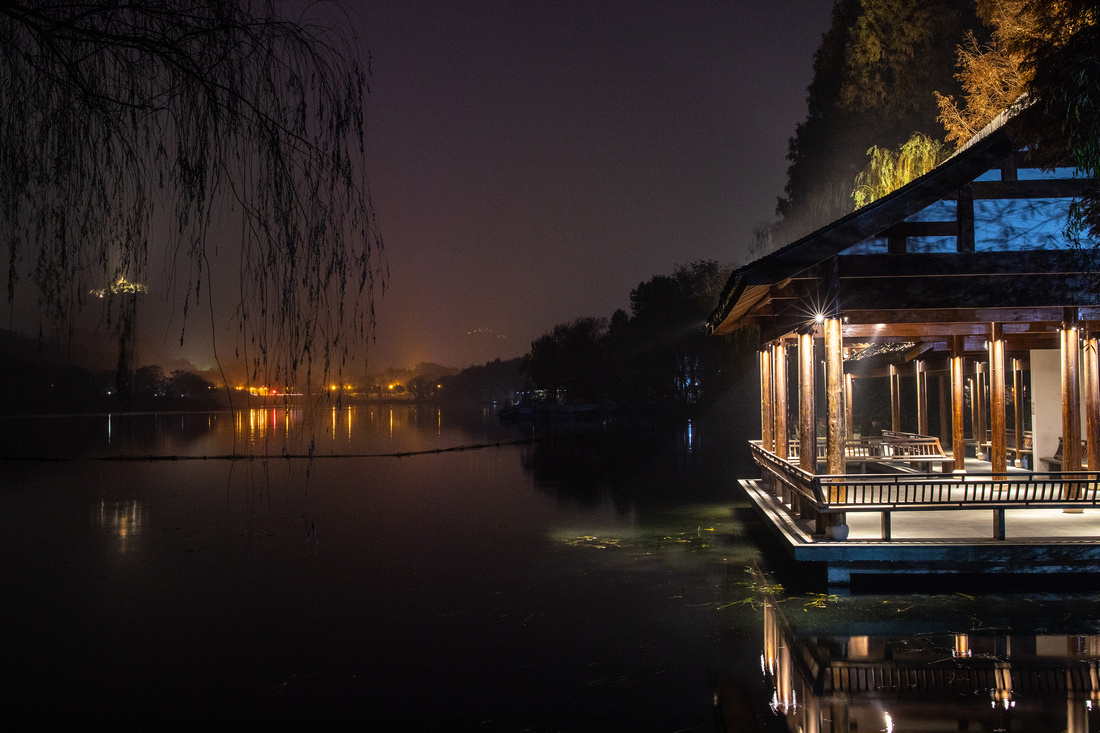
This shot was one of the rare shots - ISO 800, f8 and 2.5s exposure time. But look at the nice stare....
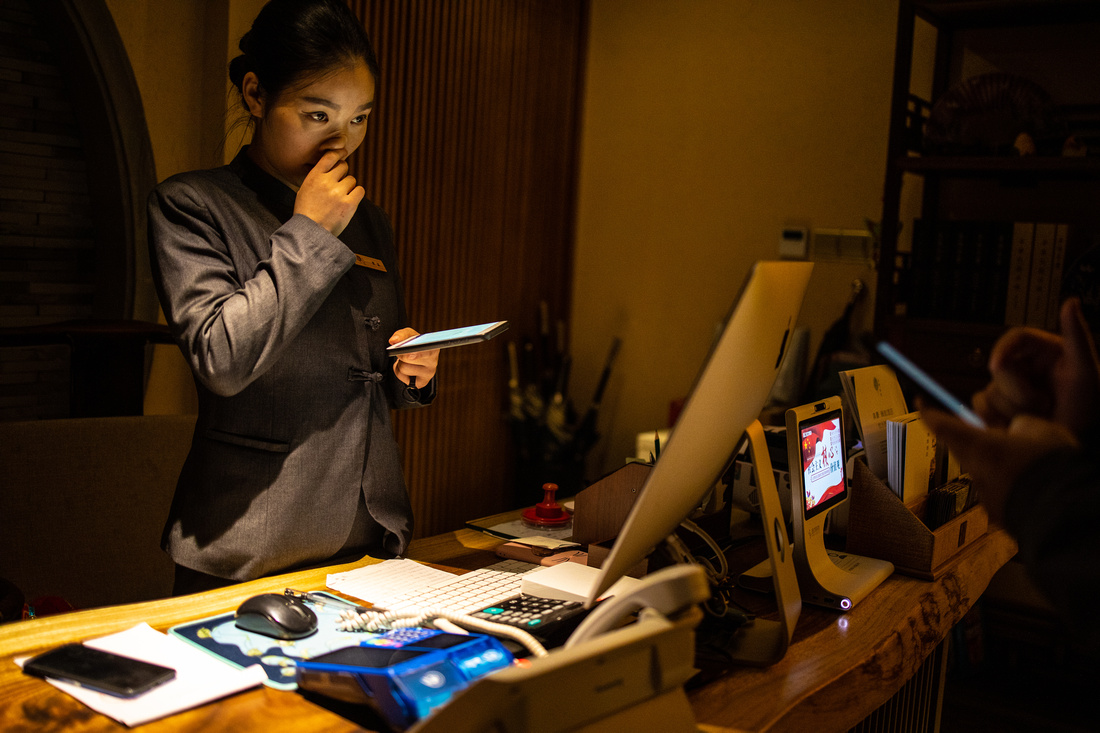
Leaving Hangzhuo I do like how the lady was lightened by the screen. again low light...
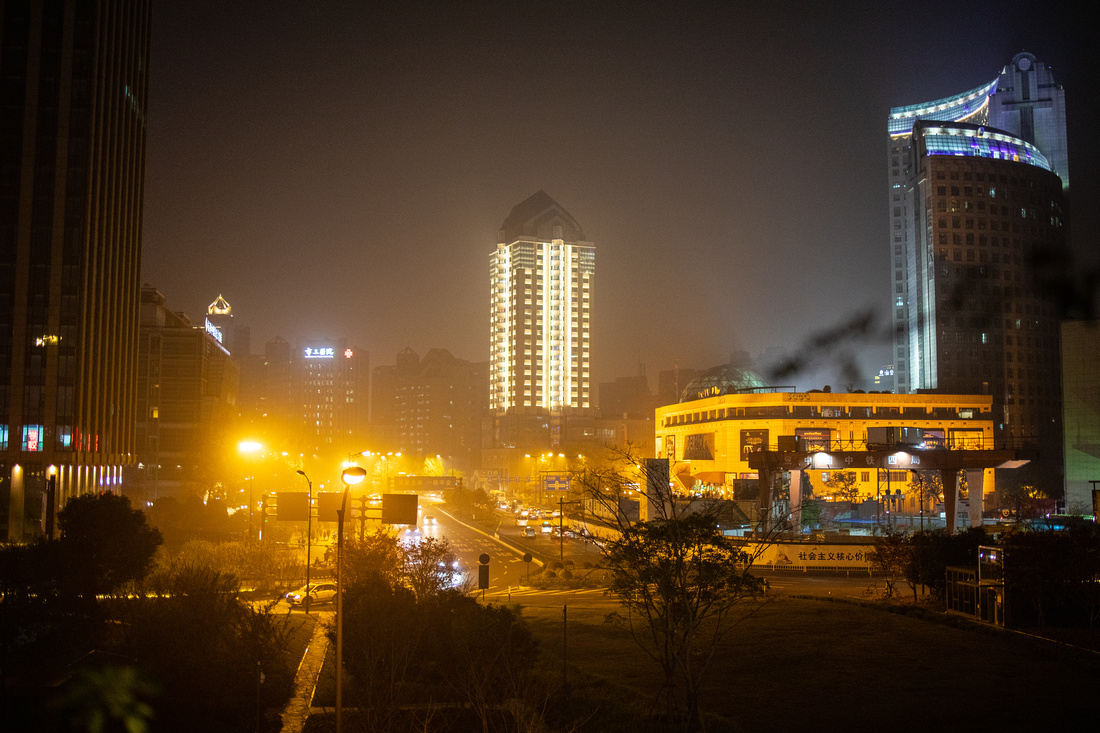
At the other station of Hangzhuo,.. just before leaving.,..

Two other shots... classical street photography....
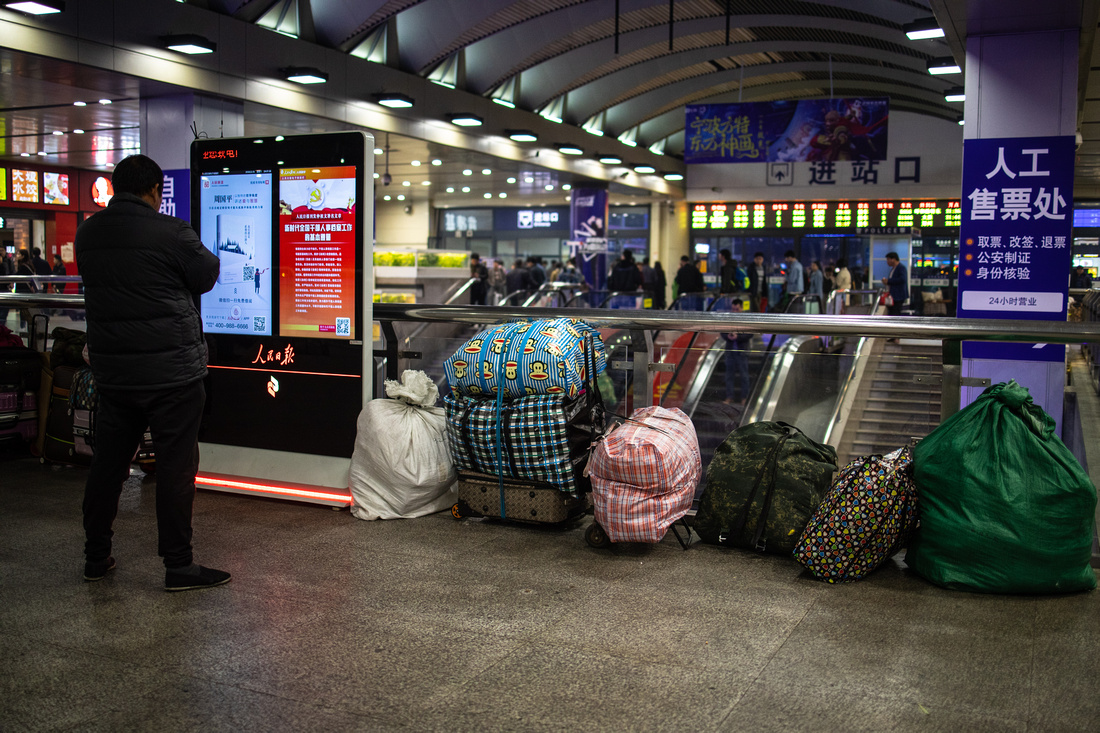
What's next... Look at the amount of luggage....
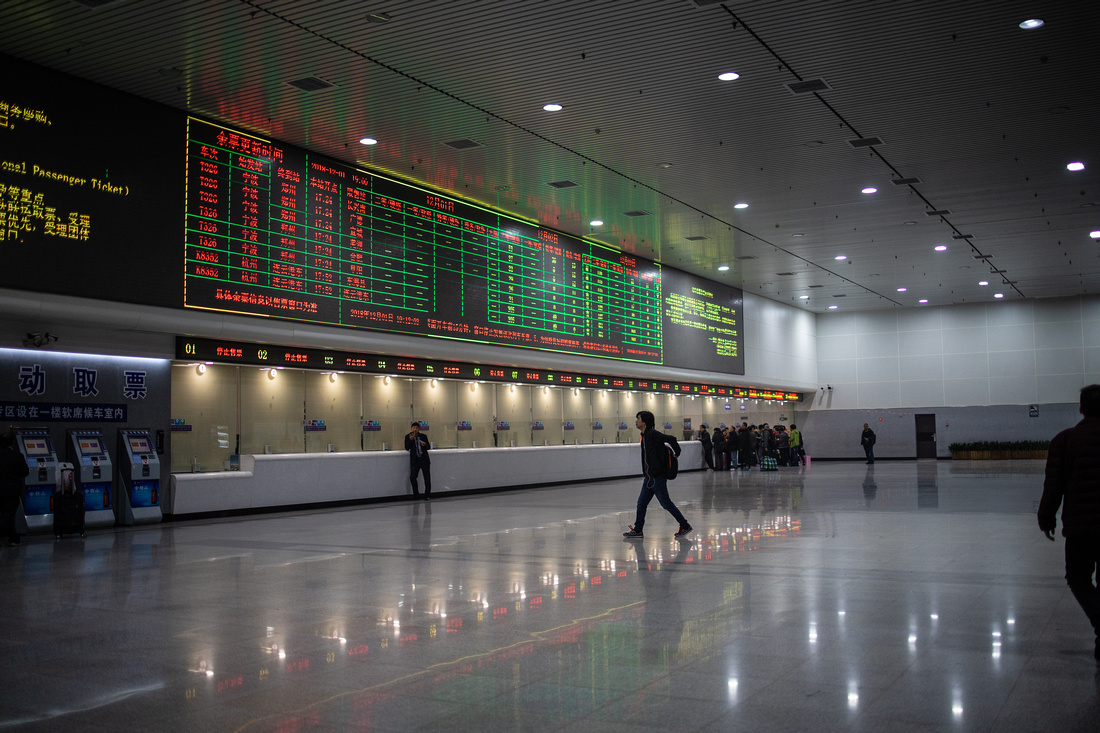
We had to pick up our tickets here... and look at the crowd... Sometimes China can be different...
Verdict
Traveling full format in a small package is just fun. The EOS R with the RF 35mm f1.8 is very enjoyable - just according to its light weight and its pretty decent performance.
But there is lot more to say about this lens.
- The image quality is pretty decent.
- It is tack sharp wide open
- The bokeh is pretty pleasent
- Flare is pretty much controled
- Chromatic aberrations are small
- But a few direct comparison shots are showing that the 35mm f1.4 L has more to offer - but for 3x more money - what is fair
- Autofocus ist quick, silent and accurate
- OIS gives a 5 stops according to Canon - my slowest handheld was 1/8th second accidentally....
- Weight and size are really small and lightweight - the lens is much smaller that the Zeiss Batis for Sony E-Mount - which is maybe the only direct competitor on the market.
- And due to the 0.5 magnification factor it is delivering unique images no other 35mm Full Frame lens is offering - as fare as I know.
I do hope that Canon will release -beside their technology demonstrating lenses like the RF 55mm f 1.2L- similar travel glass like an RF 85mm f1.8 IS STM.... or a smaller 14/15mm f2.8 lens - but here we can live with 3rd party like Samyang - who hopefully bring out something useful for RF as well.
From then on traveling Full Format will become a no brainer...
Today the EOS R and the RF 35mm f1.8 are a great travel companion. It is close to the EOS M5 with the 32mm f1.4 but it tops it. The M5 is the most minimalistic travel companion, but the R is more versatile....
Miscellaneous
All Photos werde taken with the EOS R and the RF 35mm f1.8 IS STM.
Only the product shots were taken with the EOS M5 with the 32mm f1.4 STM. But the image with the scale not - this one was taken with the iPhone X.
I do plan a comparison of both lenses with the reference:
- EF-M 32mm f 1.4 STM
- RF 35mm f1.8 IS STM
- EF 35mm f1.4 L USM II as reference.
I hope to be able to make this exercise soon.
If you want to have some minutes of relaxe enjoy the photos as slideshow or just the gallery.
Please have fun and enjoy.
]]>
When I was little my stepdad has shown us dials from his travel to "exotic" countries. These were images from Turkey, Egypt and Kenia. He visited those countries in the late fifties of the last century. He had maybe 2 or 3 films with him and shot maybe 100 fotos per trip - maybe much less....
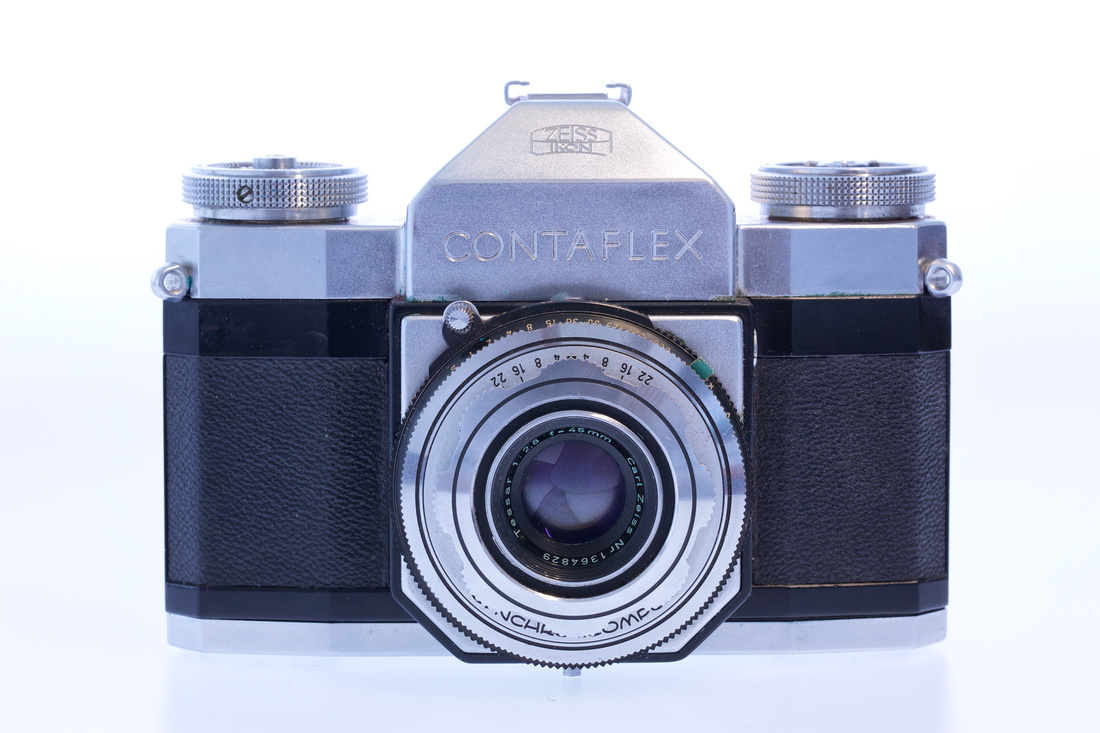
But the photos had been amazing and inspired me to become a photographer.... And traveling with such a small package was definitely a different story than traveling with a DSLR or MILC.
When I got my new 32mm f1.4 lens for my EOS M5 I decided for the overkill on my next trip: My EOS R and the EOS M5 with the 32/1.4... And for the Road Trip I used the M5 exclusively. Also to test who dies it feel just to have this one lens... I did that with the Lumix GM5and the Panasonic Leica 15mm f1.7 as well, but this combo is another kind of animal....
The 2 Cameras
These 2 cameras are pretty similar in many regards
- Size wise - as you can see below
- weight wize: the Contaflex weights 669g without film and the EOS-M 671g incl. the Novoflex remachined Arka-Swiss adapter
- Bokeh-wise since the f1.4 of EF-M 32mm lens represents a FullFrame equivalent of f2.24 against the f2.8 on the Contaflex 45mm Tessa’s lens...
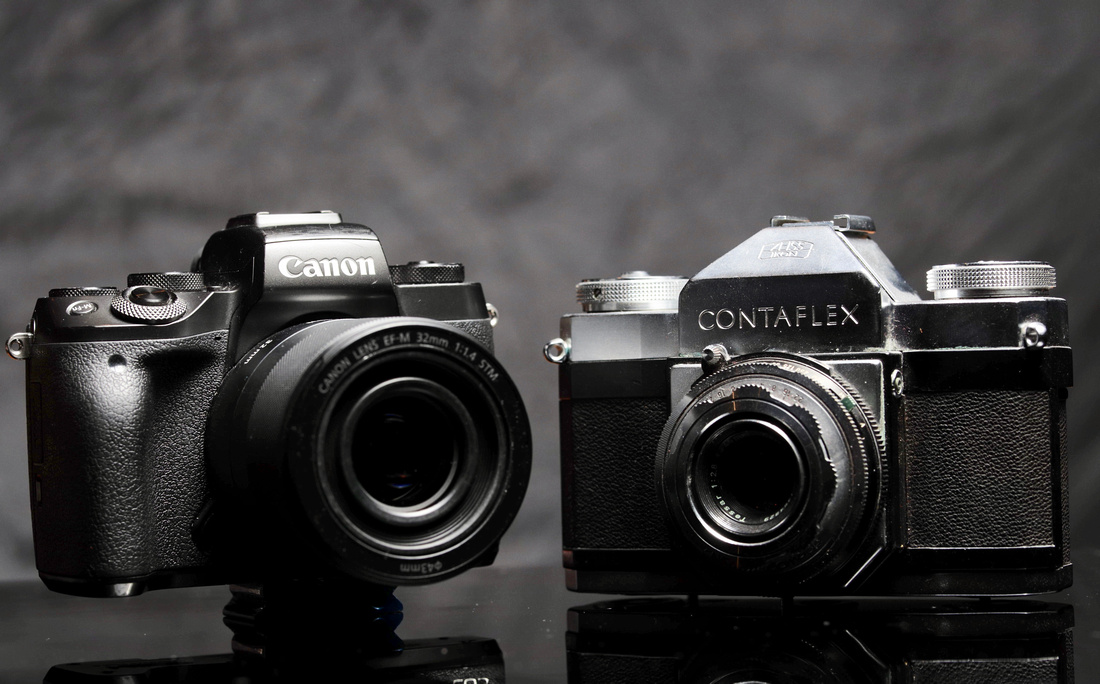
Traveling minimalistic
Basically it was really fun traveling with one camera which is extremely capable. I came back with a nice set of images and some of them are really stunning...
But let's go through the trip a bit...
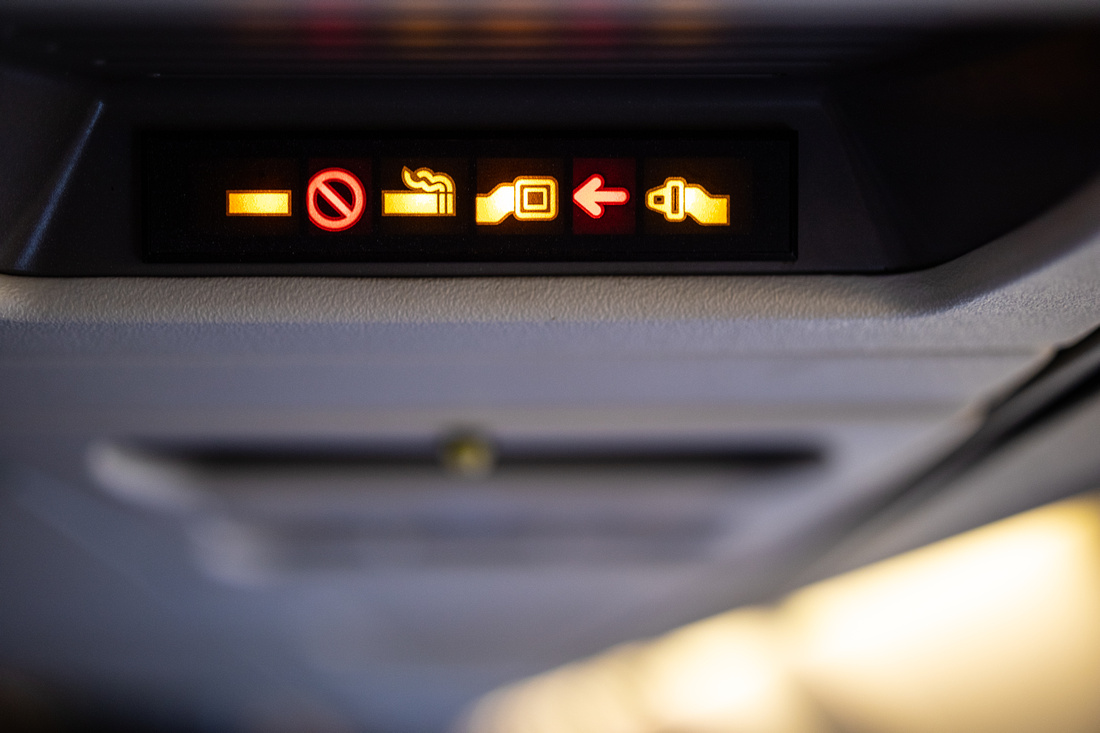
Fasten your seatbelt.... We all know the command... but look at the bokeh!!!!

Arriving in Rochester airport at night... aren´t these colors amazing?....

Indian summer and its vibrant colors.... yes it is a close up shot. the minimum distance of ,25m results in a 0.25 magnification. Not many lenses in this focal range are offering this short distance....
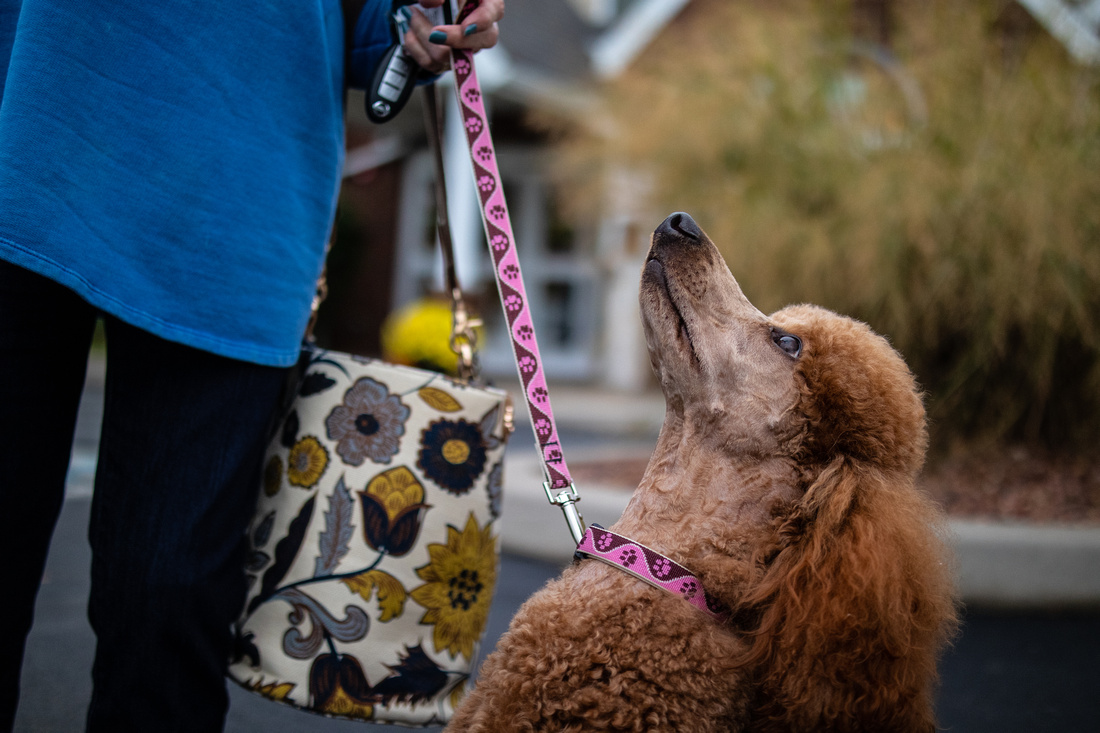
I just loved that poodle... but on the other side it documents the strength of the system, sharpness as well as separation from the background....
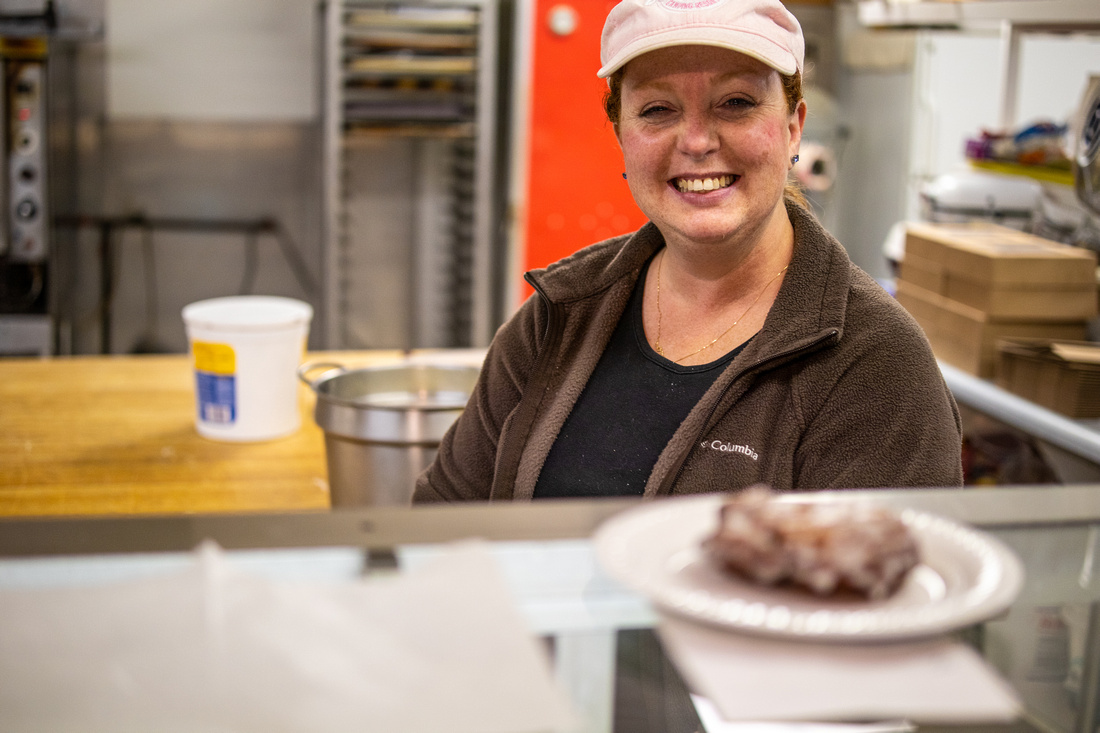
Lyndonville, close to lake Ontario... again a portrait situation ... again... great job....
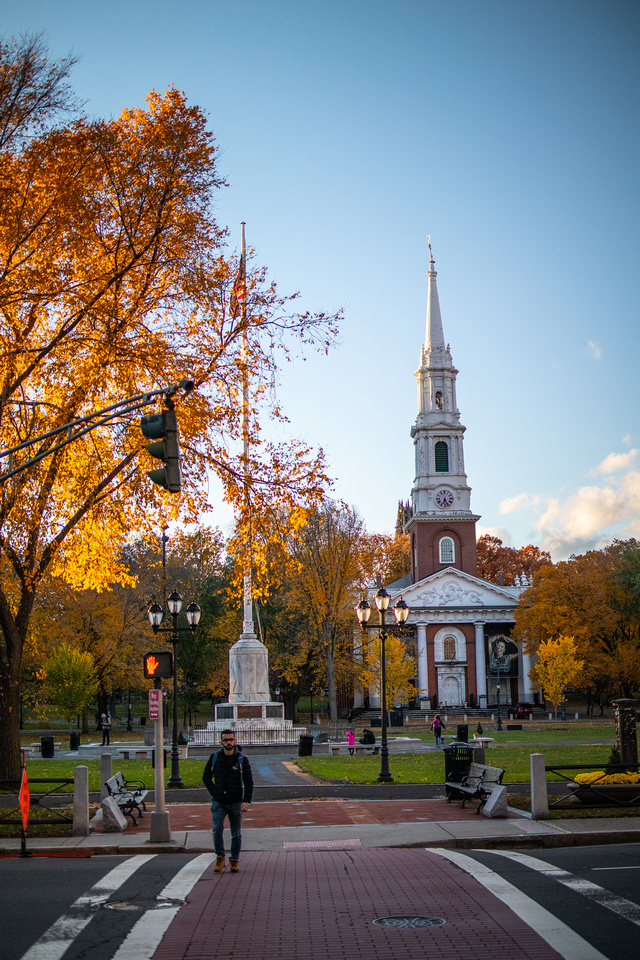
A walk through new haven. What shines here is the low light capabilities of the sensor. The exposure was set to the clouds.... but there is a lot of performance in the shadow areas as well....
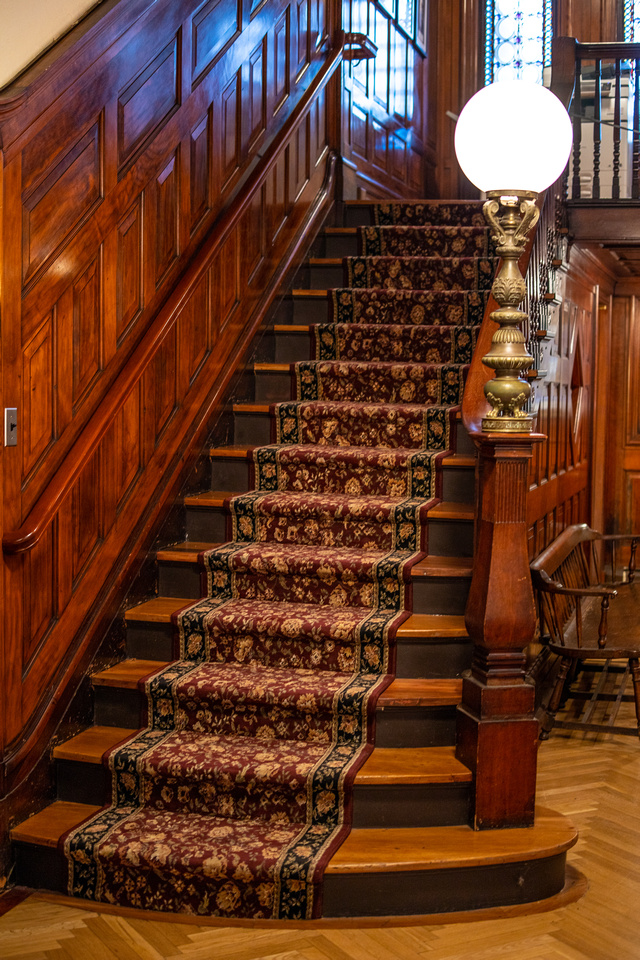
This shot was on the limits @ 1/30s handheld. But i do like it... and it is underexposed so that there is quite some noise in the dark areas... but still useable...

What happens if you travel along with one lens but the subject is larger.... stitching helps a lot like in this handheld panorama shot of the impressive economics building of Yale university....
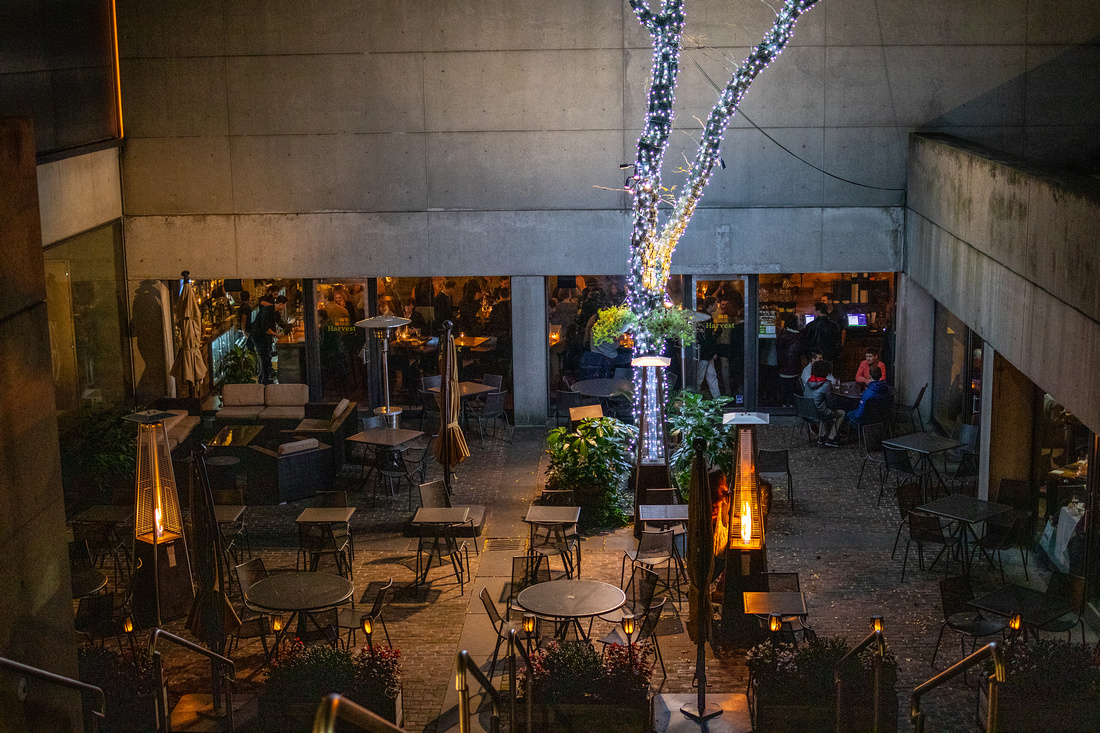
Next stop: Dinner @ "Harvest" in New Haven. A modern and a "foody" place. This is shot @ ISO 800....

The kitchen was amazingly busy... the concentration is stunning... shot @ ISO 1000.....
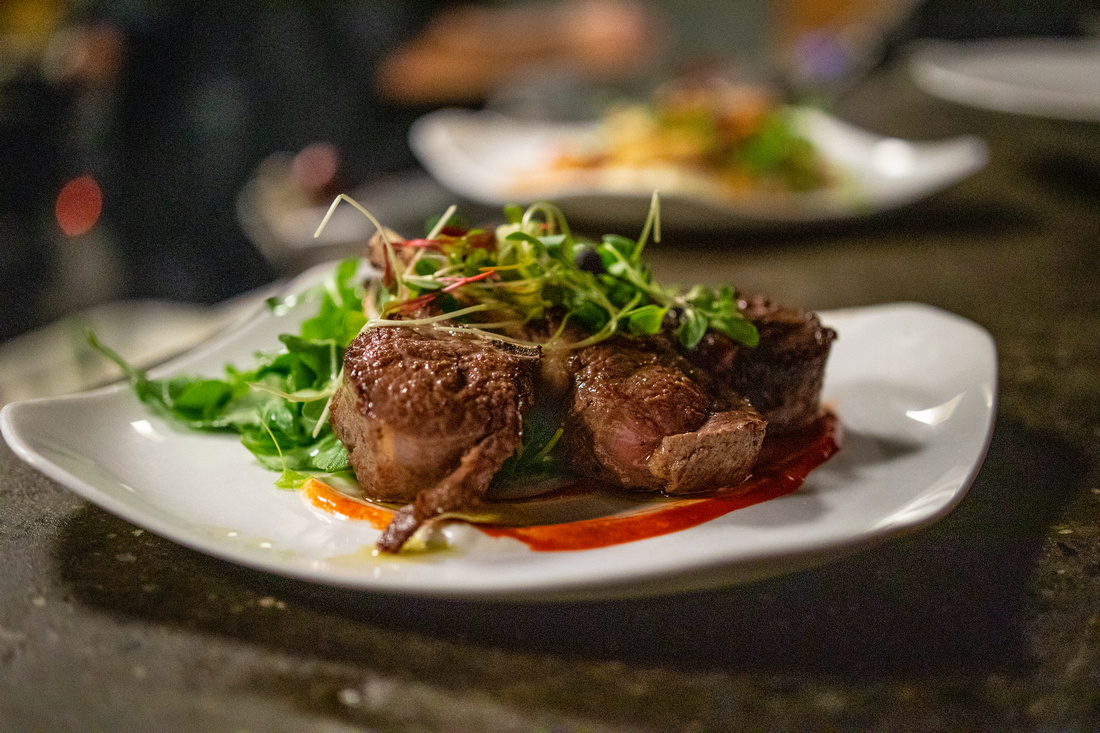
The food there was yummy, but also presented pretty nicely....
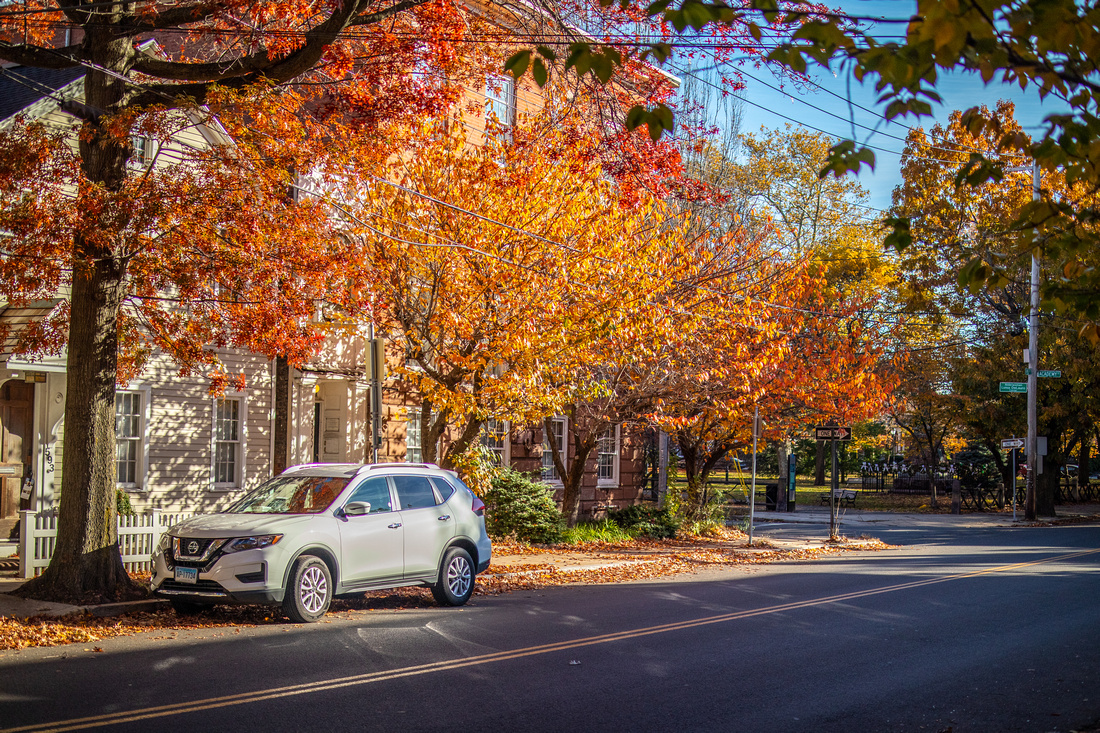
Indian summer on a road trip..... This was the car I rented, not great but it worked....
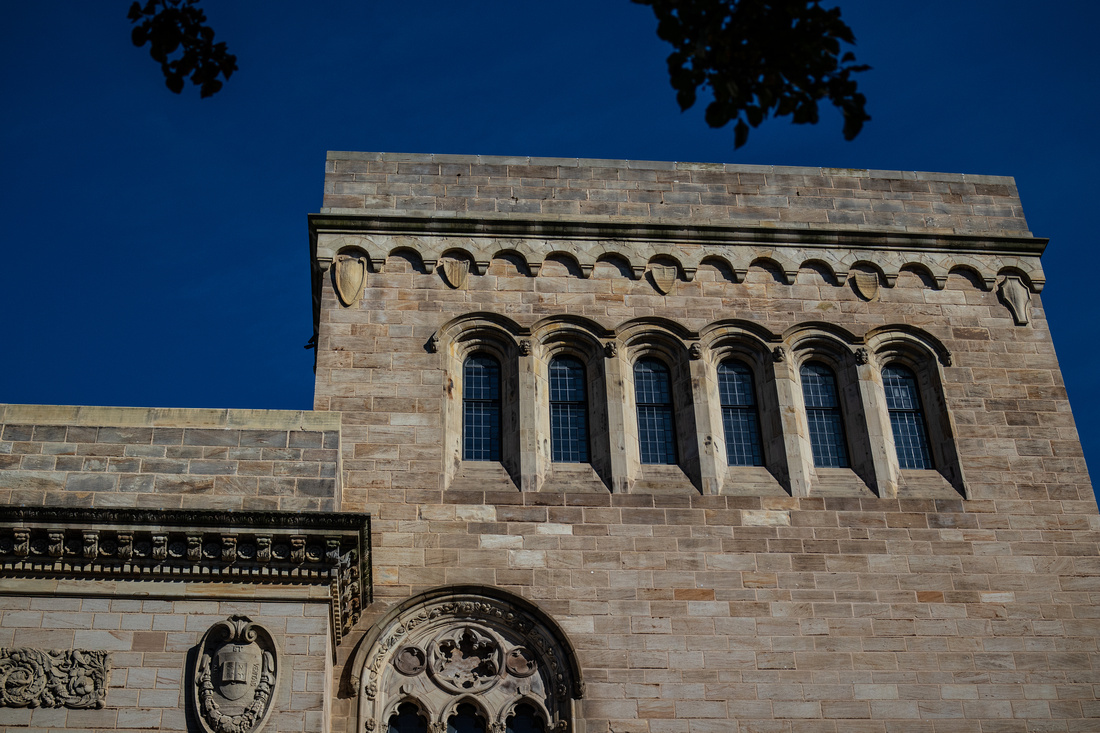
The art gallery in New haven in bright sun light.....
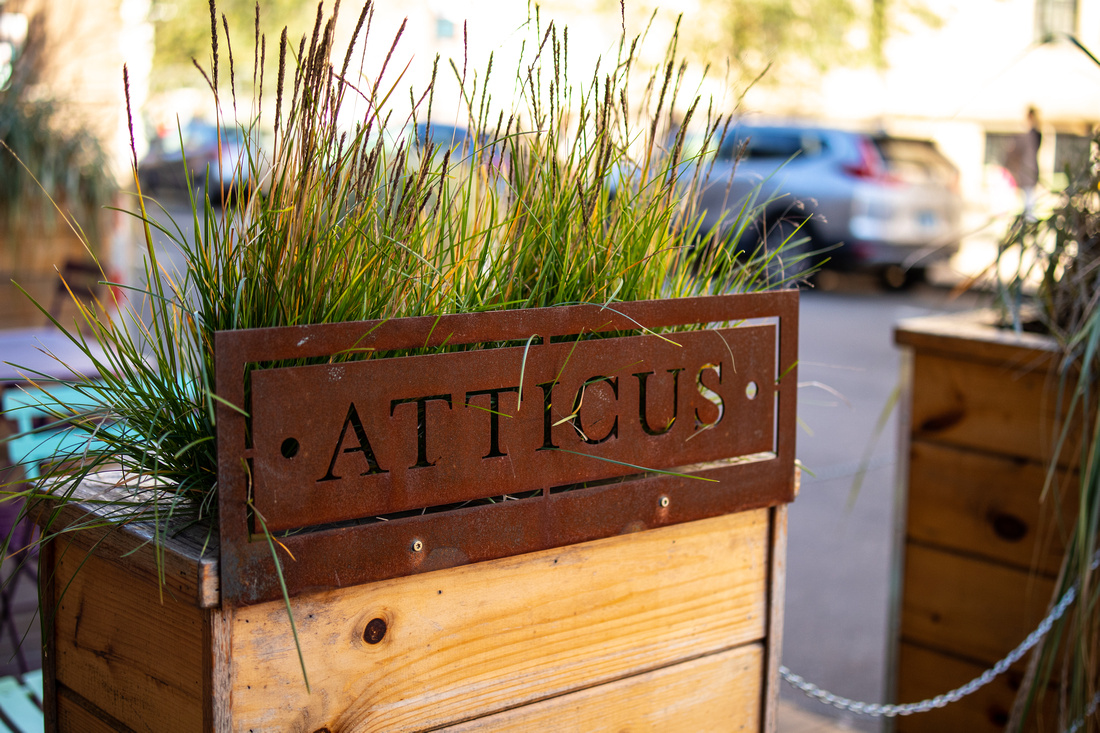
Again some bokeh play... from a nice breakfast place in New Haven....
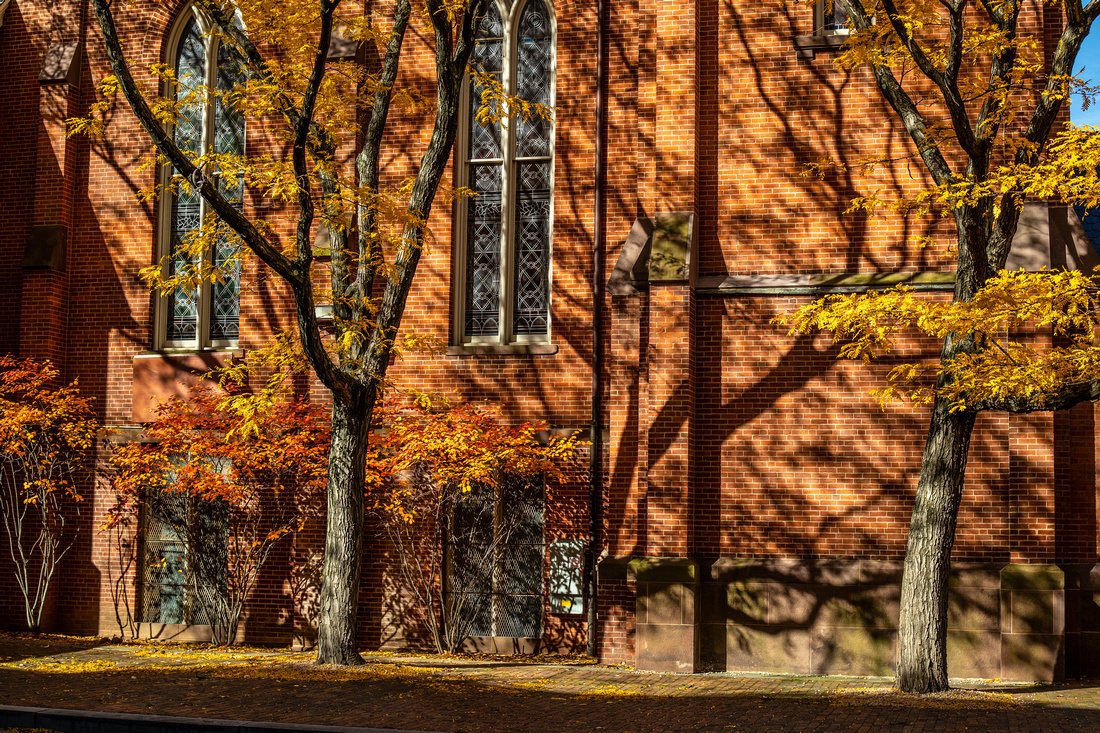
I do like this shot of the Indian Summer colors in front of the Yale Repertory Theatre....
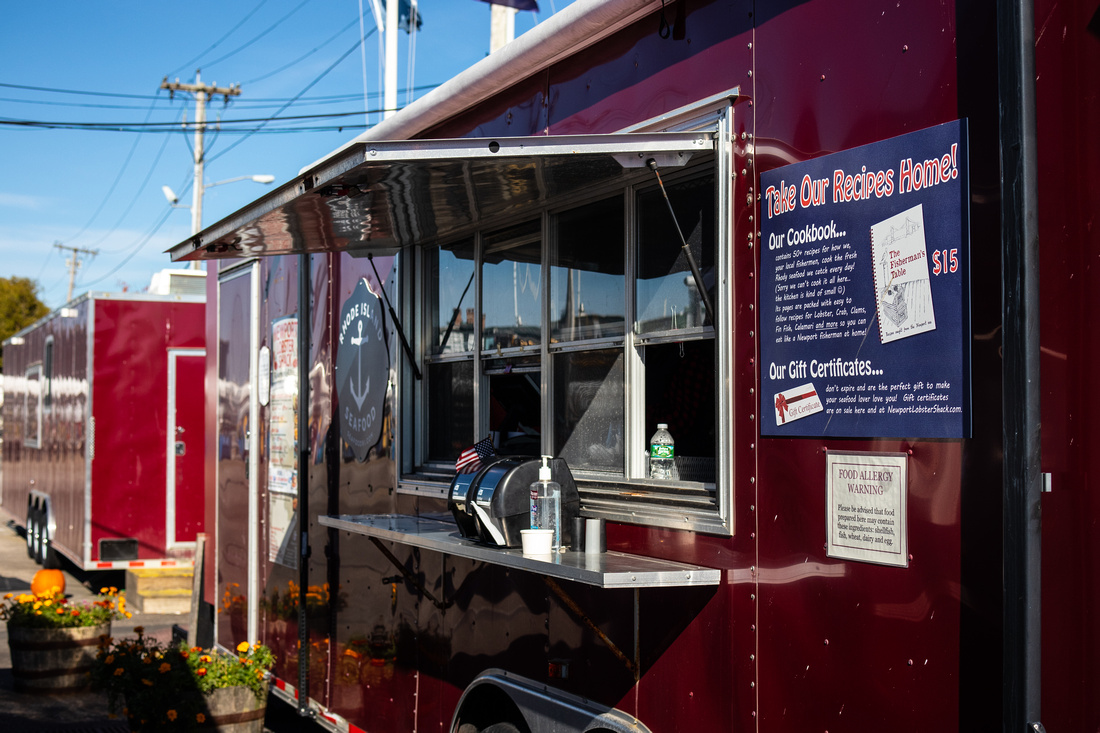
On the road again... I had to drive to Boston as next stop... But I needed some lunch. I exercised some of my very special skills: looking at a map and looking for a proper location. I spotted a place on the map called newport with a harbour side. And guess what: I arrived there and spottet this wagon....
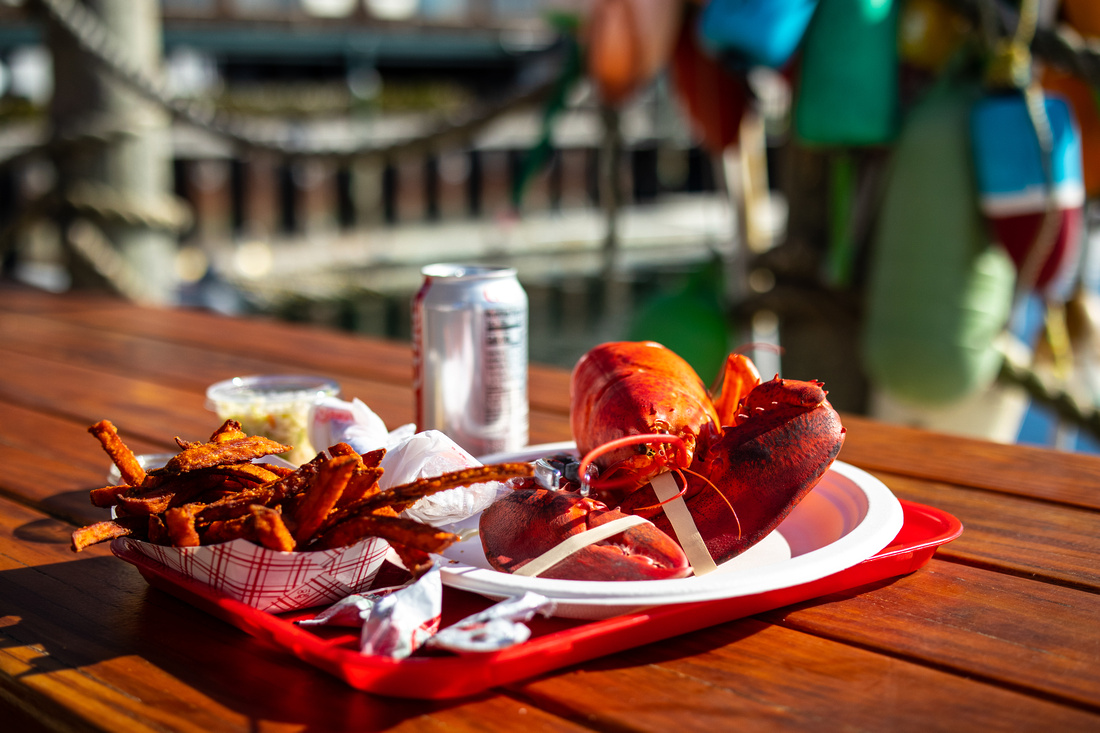
It was amazing what there were offering: lobster as fast food..... It was pretty delicious!!! really a recommendation!
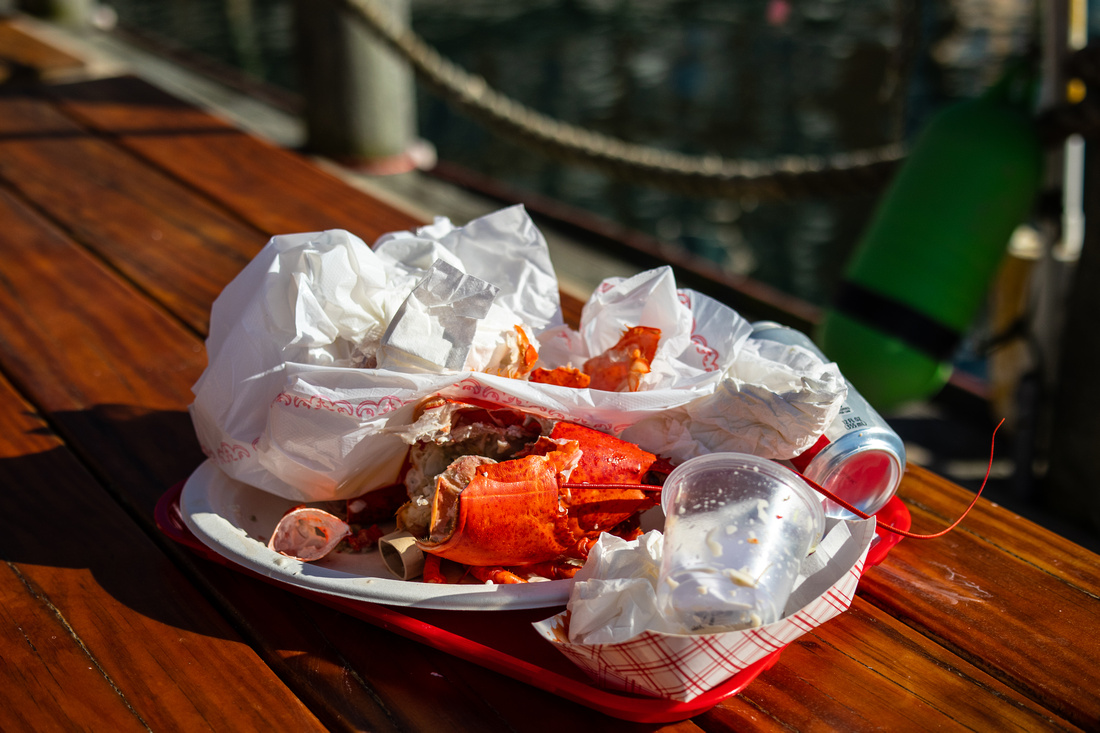
But the same game again... a lot of waste....
One theme on my road trip was about the waste production in the USA... For me it is crazy when you are producing a huge a mount of waste with each meal....
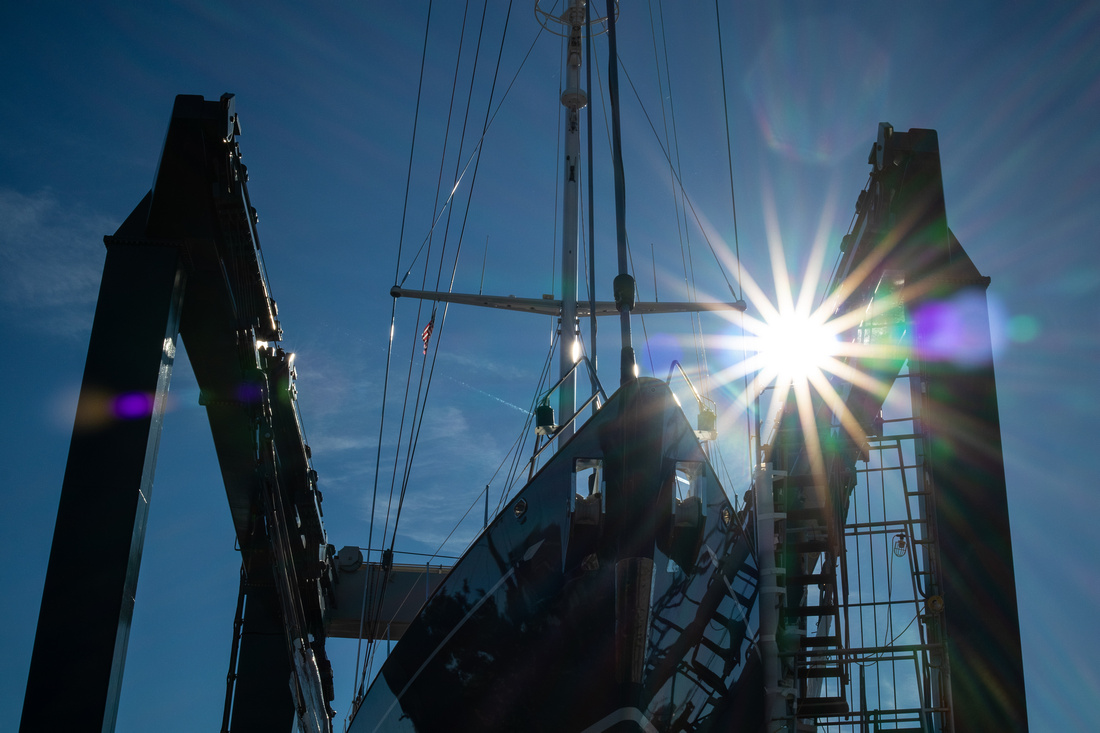
But Newport is not a normal place.... Driving out of Newport I realized that Newport is the harbour where the Volvo Ocean race stops. It is "the" hub of the american sailing community on the east coast.
I did this photo to show how the lens performs against bright sunlight....
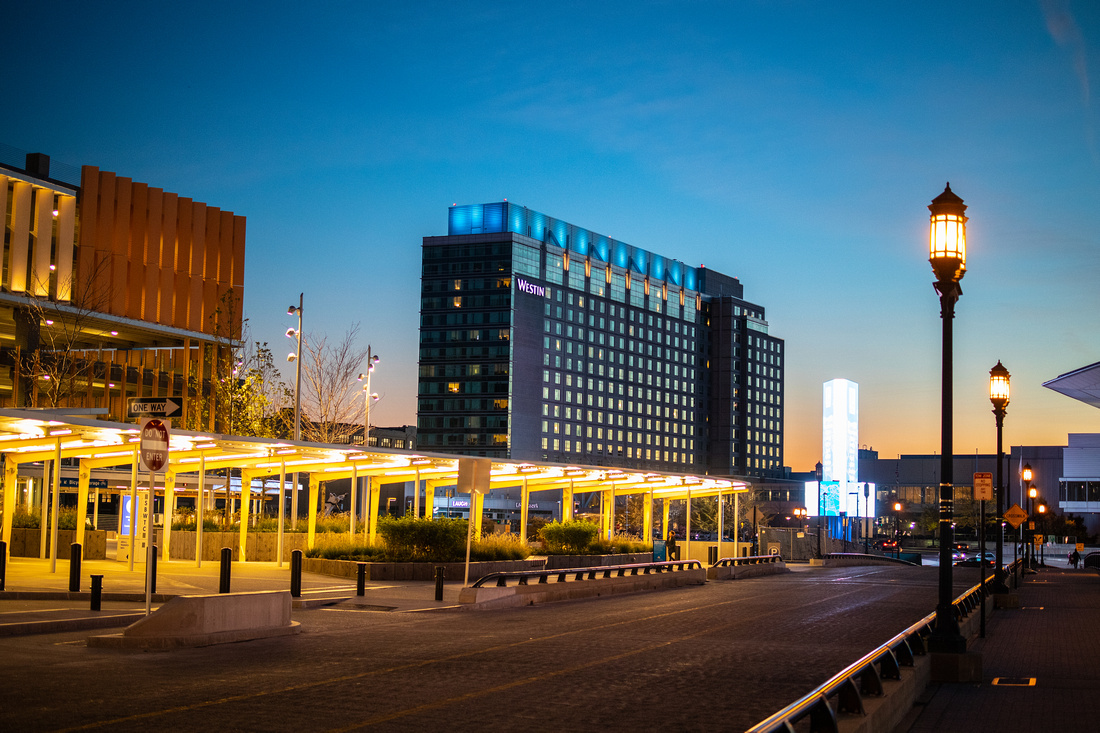
Next stop arrived in the blue hour..for me this shot - and the shot below made my day....

It is really amazing how this little monster manages challenging situations....
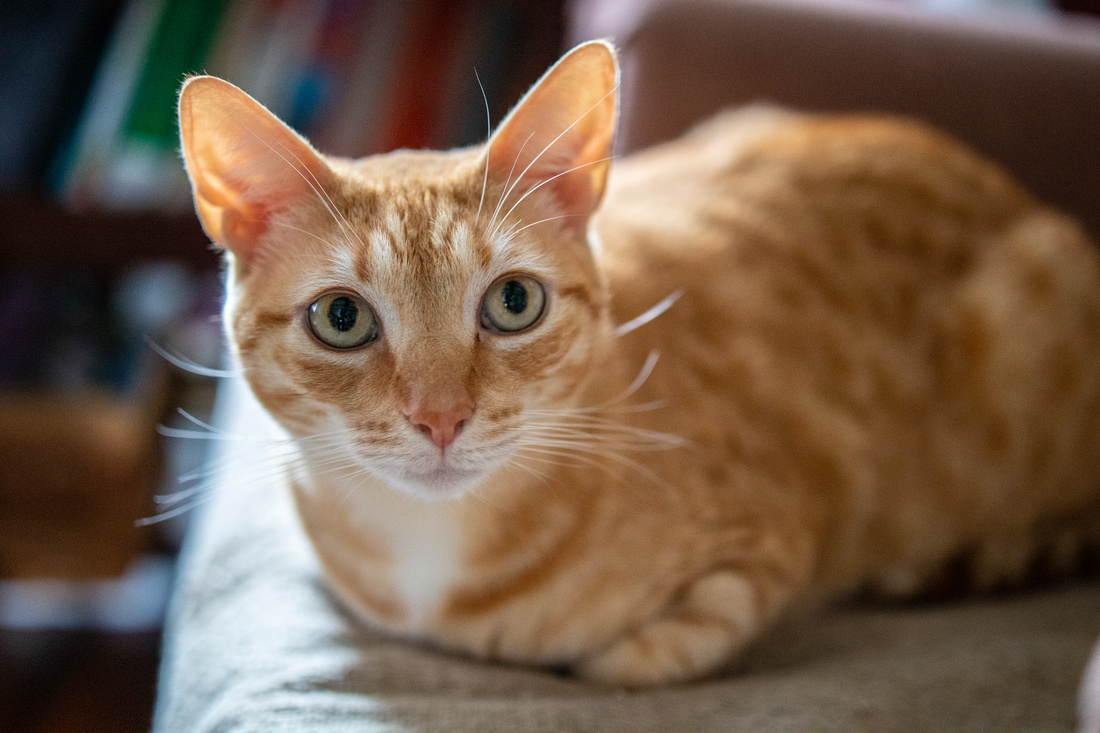
At my friends side in New Hampshire there are some nice cats.... and I liked this one most....
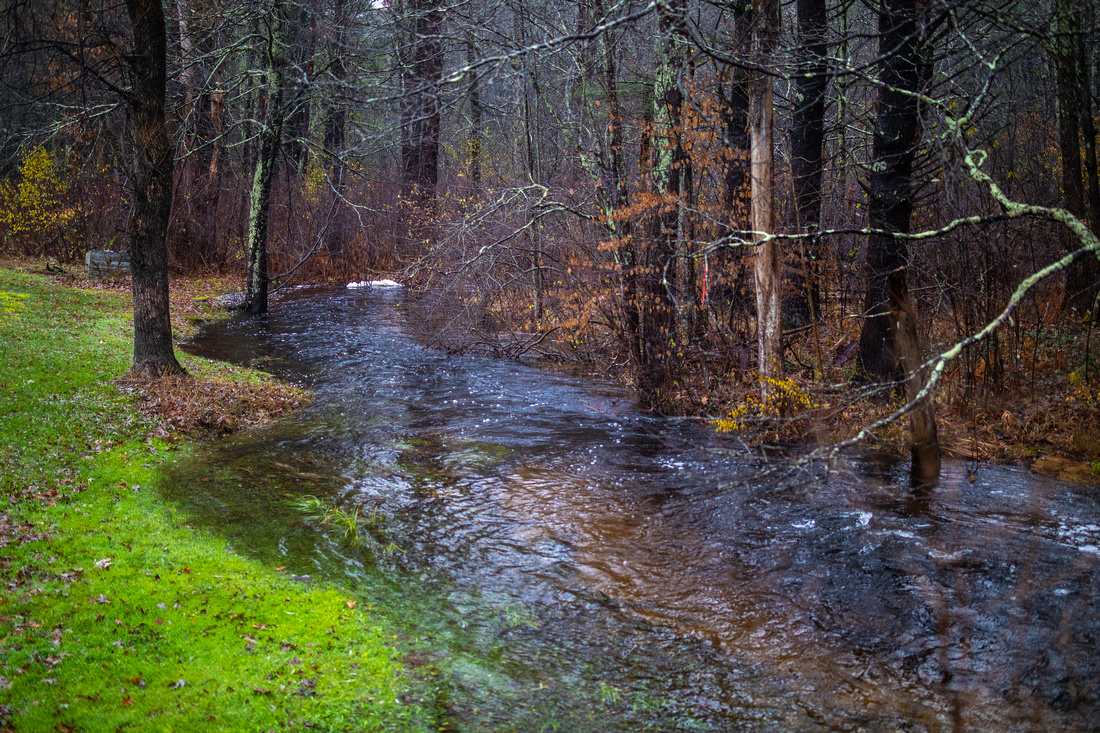
The last stint on this trip was driving from New Hampshire to Boston Logan airport.... Unfortunately Indian summer was done in this area, but the vibrancy was still there....
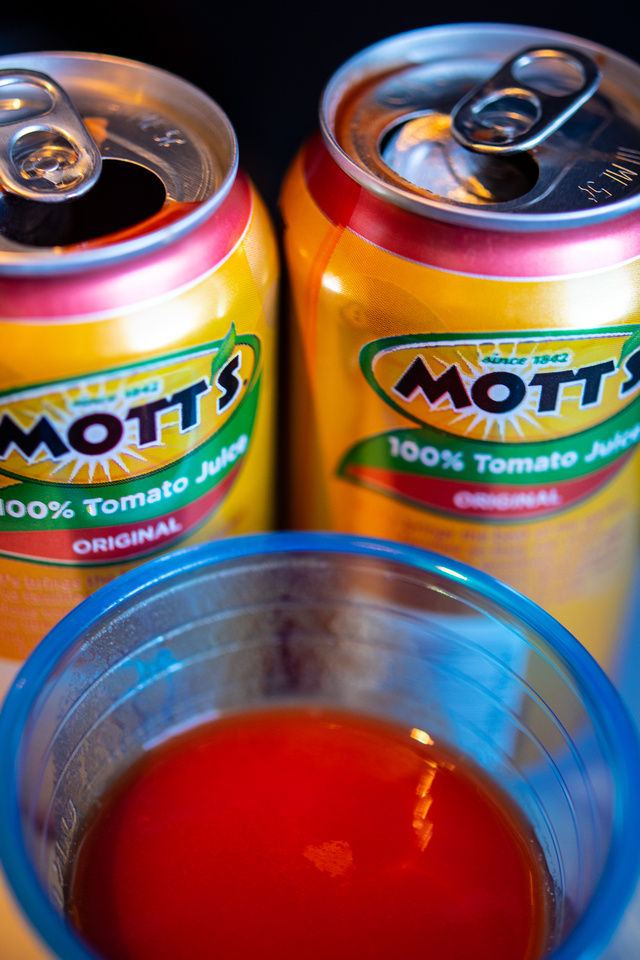
Flying out to California.... enjoying the most popular drink in aircraft... tomato juice... And please not the close up distance is amazing...
Verdict
The EF-M 32mm f1.4 is a great lens and a very compact one. In times where lenses get larger and larger the package factor of this lens in combination with the EOS M5 is amazing. I definetly will use this combo on my next upcoming trips.....
Please visit the complete set of images on my website.
Next to come
I will prepare a side by side comparison with the EF 35mm f1.4 as soon as I can.... This will be pretty interesting because these 2 lenses are close in specs but really very different in size....
]]>
Being an experienced shooter with mirrorless cameras (I do use various Panasonic µ43 cameras since 2009) the expectations on the entrance of Canon to FullFrame are obviously high. Interestingly Canon did this entrance clever - to my taste:
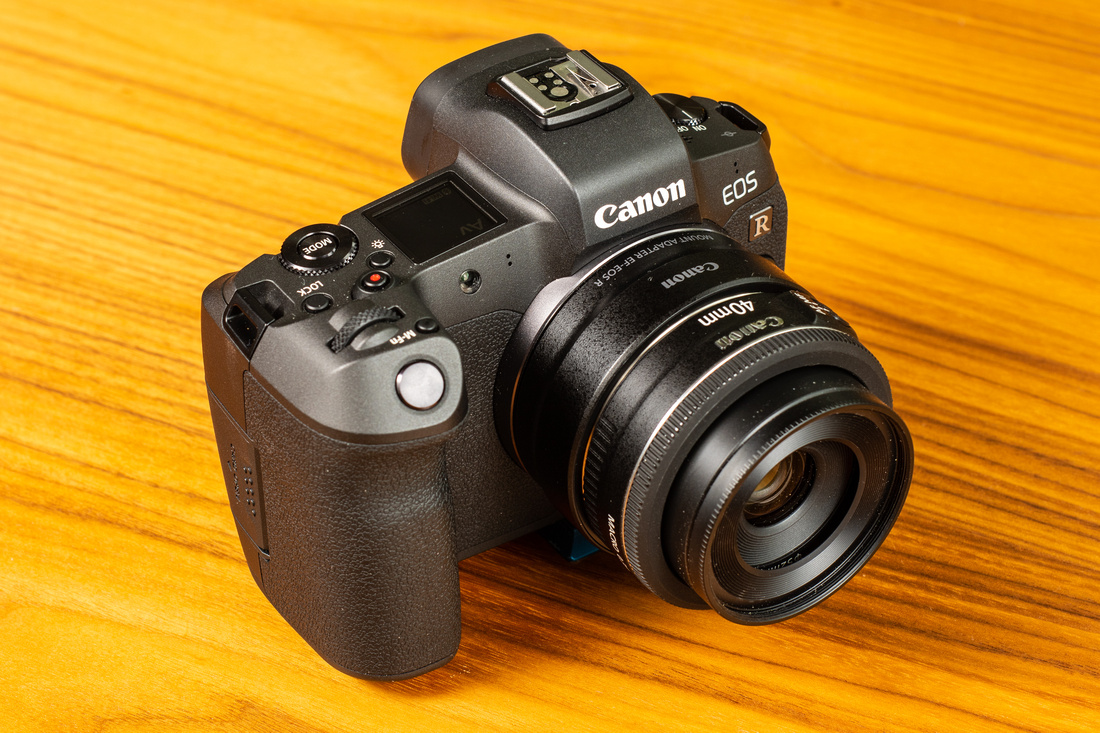
- The first camera is a prosumer camera in between their 6DMk II and the flagship 5DMkIV
- They came out with a couple of remarkable lenses as well
- a relatively small 35mm f1.8 (I am waiting for this one)
- a standard zoom 24-105mm f4.0
- and 2 exciting lenses
- a 50mm f1.2 which seems to be "the" 50mm lens from now on
- a 28mm-70mm f2.0 lens - what never existed before
There is a lot of hate against this camera out - but I am just a user with specific requirements of a traveling business man who loves to shoot....
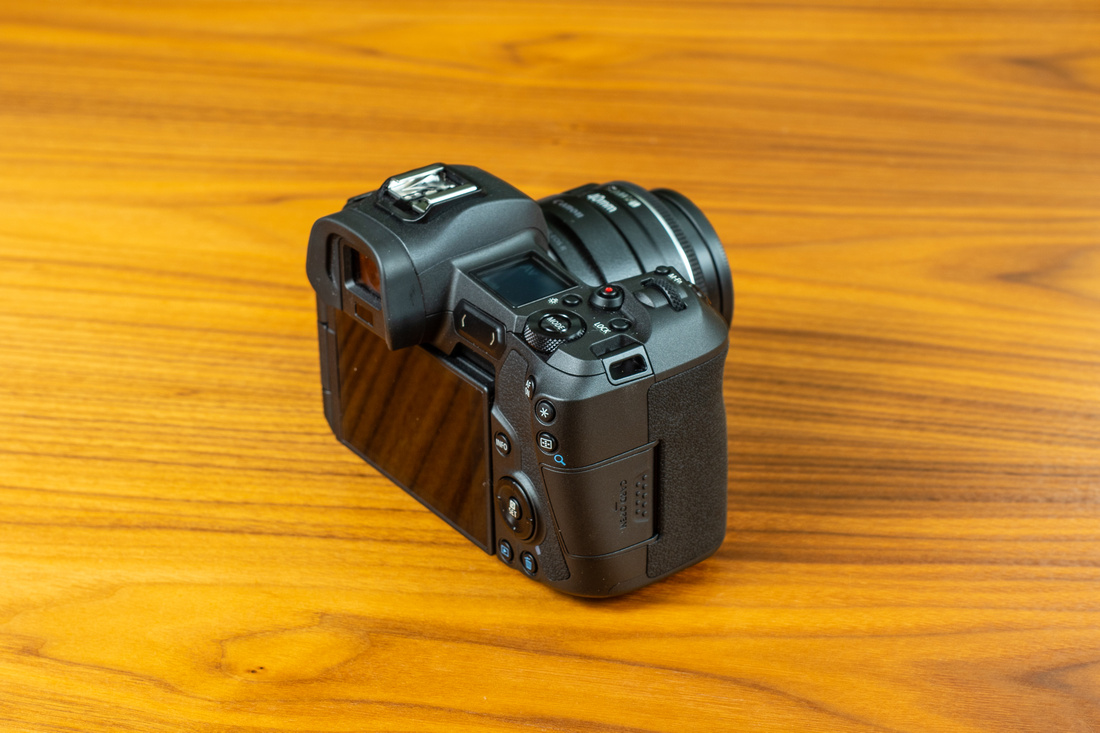
The rear view of the EOS § with the main function buttons...

For the photos I took the pancake EF 40mm f2.8 STM. This lens shows a similar size like the 35mm f1.8 macro which should be delivered next month or so...
For me this EOS-R is the first FullFrame camera I do like to travel with... And I do...
Comparing the EOS R with the 5 D Mk IV and the EOS M5
In this review I will compare the EOS R with 2 other cameras
- EOS 5DMkIV
- EOS M5
The 5D4 is a flagship DSLR Canon camera and a workhorse in the industry while the M5 is an excellent APS-C mirrorless camera - on the market since 2 years and - overall - a very great camera!
I do this comparison because the R is somewhere in between these 2 - On one side the image quality of the 5D4 and on the other side in terms of compactness closer to the M5.
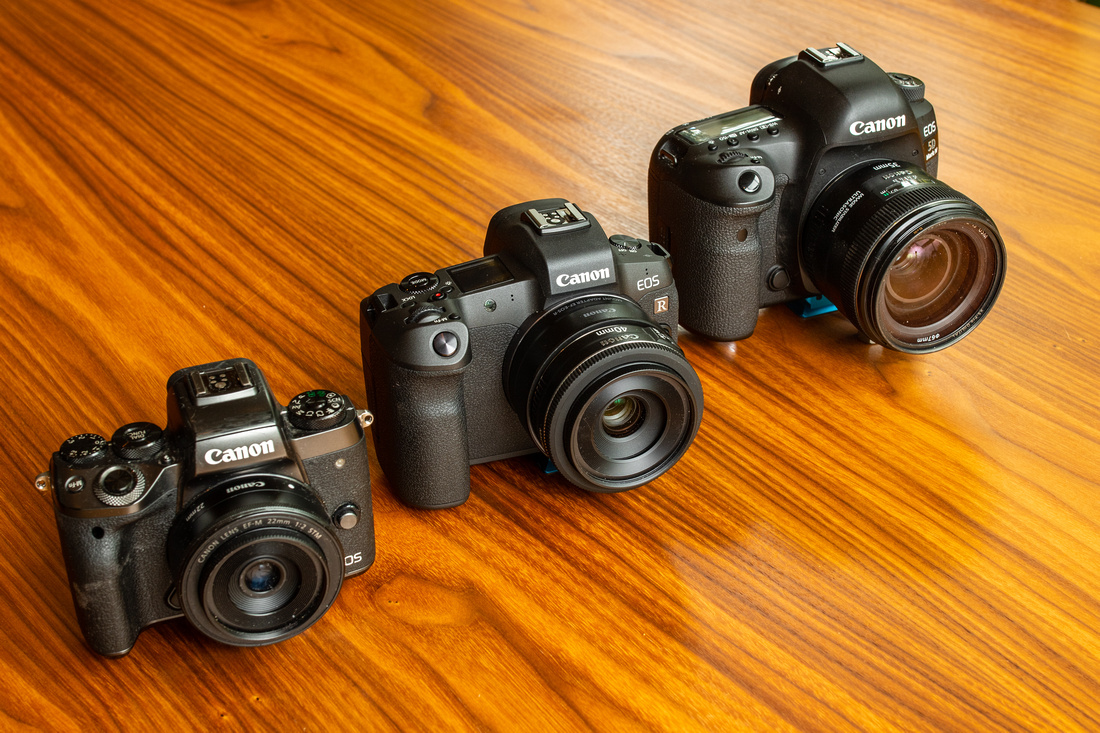
The front vie of all 3. it shows that the R is just in the middle...
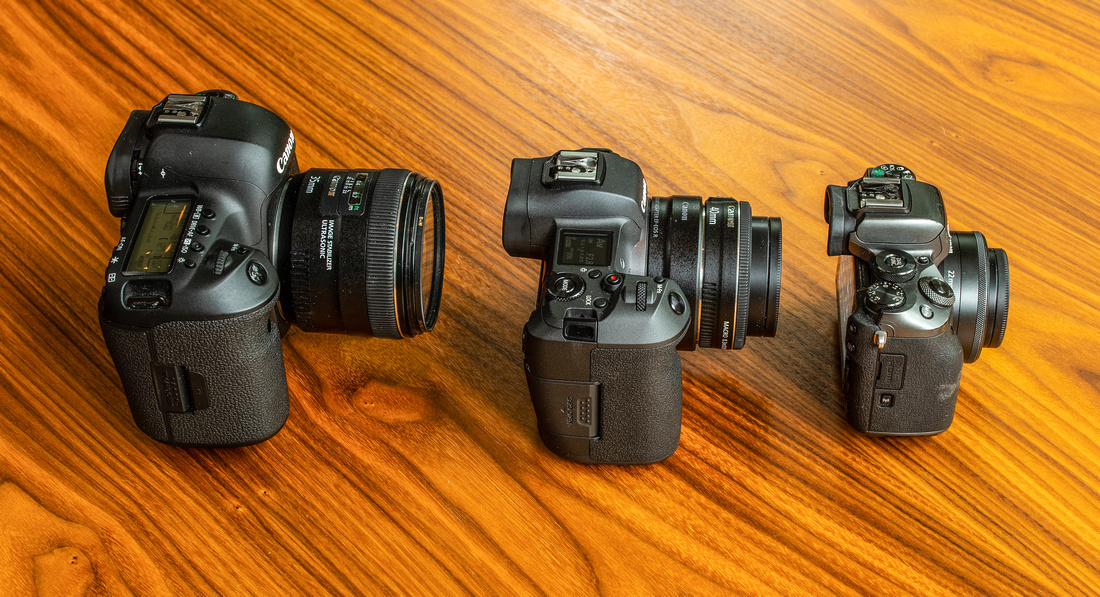
The soviet gives an even better idea that the R is a compact camera....
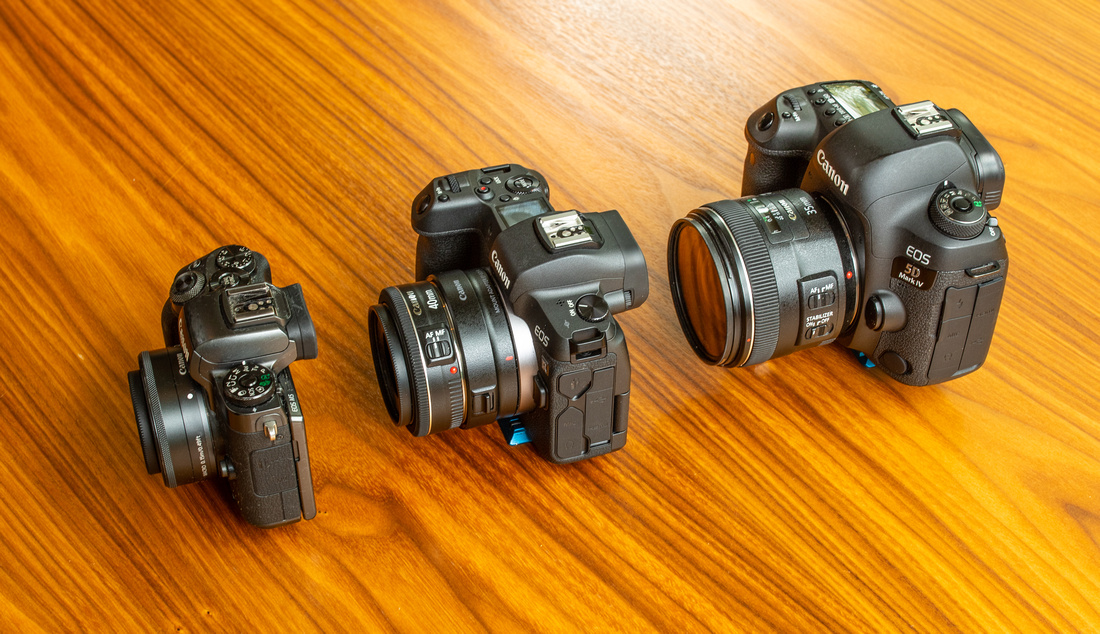
again the sidevie from the other side....

The rear view shows that the cameras are brothers or sisters - whatever you like more. The user interface is similar and it is pretty easy to switch from one to the other....

The biggest difference between these 3 camera is the mounting f the screen. The biggest advantage of the R is the fully articulated screen, which allows you to have full access to the screen in all positions...
My New Travel Setup
It was not a big deal to change from one Canon mirrorless camera to another. I do follow my prime lens approach using the following lenses
- Samyang 14mm f2.8 (manual focus) (maybe I will repack it with the Milvus 15mm f2.8 in future)
- Canon EF 35mm f2 IS USM - until I will get the native Canon RF 35mm f1.8 IS STM macro
- Canon EF 95mm f1.4 L USM
The rest of the travel gear is comparable to my previous set up which you find here

With this line up I can do literally everything I do love to shoot.... And everything fits nicely into my Thule backpack - and I do not cary more weight....
Ergonomics
Whatever camera you take in your hands it is important that its suits you and is easy to use.
Well in this regard Canon did an awesome job! Ifits like a glove and the dials are easy to get access too
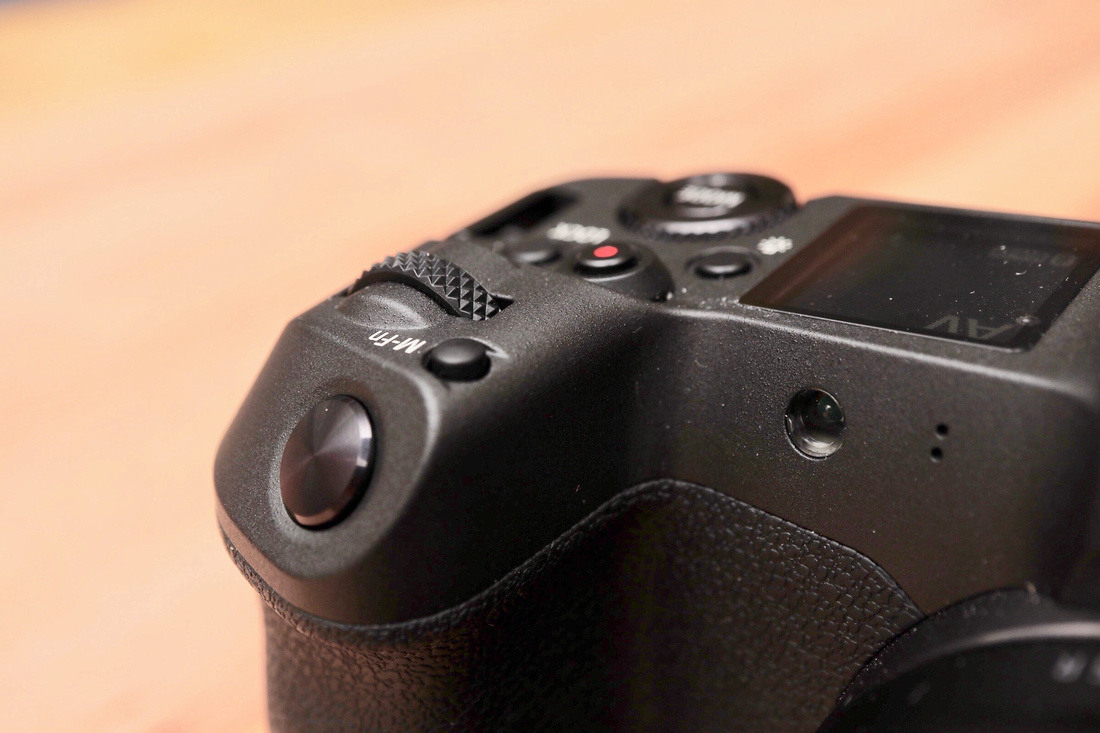
The big and long grip gives you a perfect grip. Many people who had this camera in their hand were mentioning that this is the best feeling camera they had in their hand ever! I intent to say that I agree.
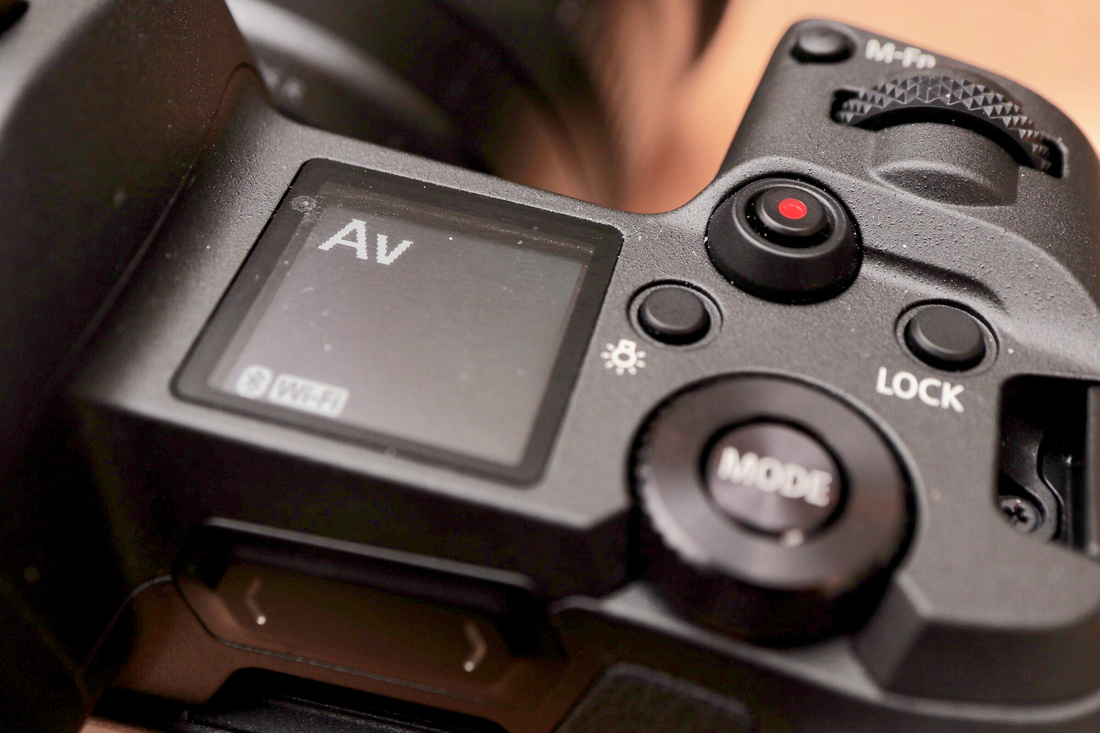
Even if switched off the camera shows the actual shooting mode....

If switched on the main parameters are shown from the top, but in both other displays as well... from that point of view really easy to use and to handle

Looking at the back completely there are a couple of buttons missing. for the experienced canon user the thumb dial is missing (even the M5 has it!) and the nob for moving the focusing point is missing, too.
For me personally this is not that big of a deal - i do find the moving of the focusing points on the touch screen while looking through the EVF more intuitiv and senseful. The best is the touch release on the screen - it delivers by far the best hit rate of all focusing methods...

In the first moment I was a bit disappointed about this ON/OFF dial. The reason why Canon did this instead of the mode dial: to become more videographer oriented that the mode is not influenced from a dedicated switch that the camera can display the least settings either for video or for photo...
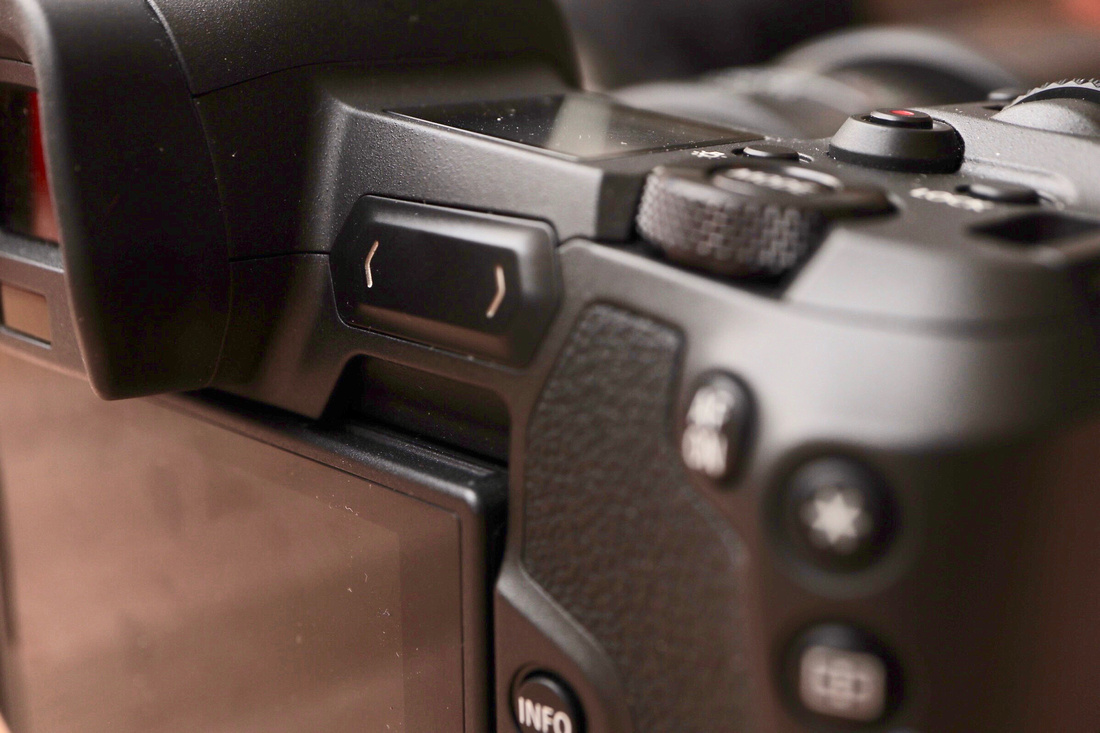
The new developed touch bar... this feature is new - first time on a camera.... and most of the reviewer do not like it.
I find it interesting... I programmed it for ISO adjustment which works nicely as it should....
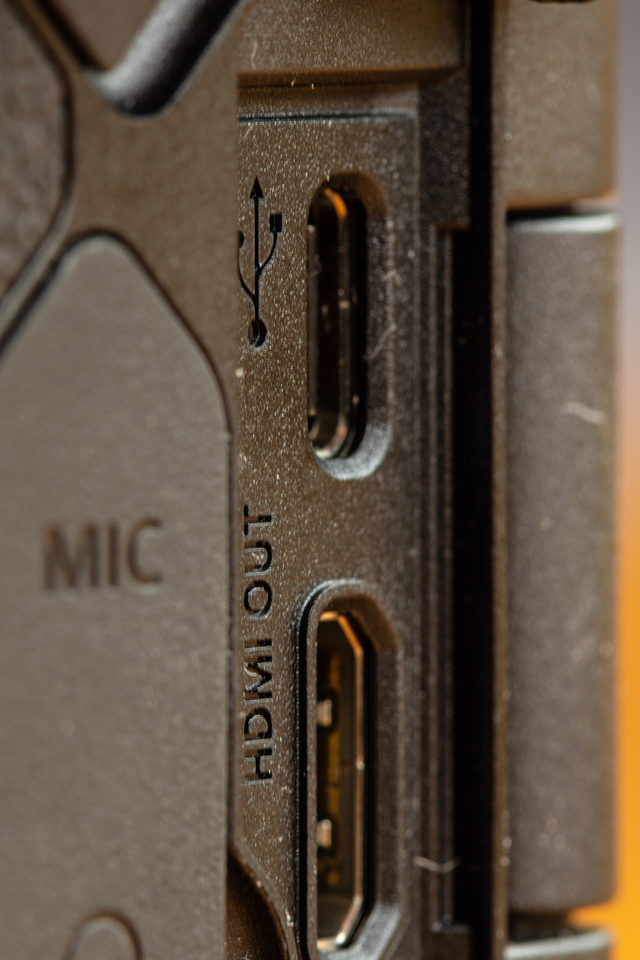
Charging the Battery... One goo thing is that Canon is using the LP-E6 Battery which is in use since more than 10 years. The EOS-R comes with the newer LP-E6N batteries.
Canon recommends to use a special USB-C power supply, but I charged my EOS R via my MacBooc Pro as well as via different USB-C chargers...
Please note: only LP-E6N batteries can be charged when they are charged in camera.
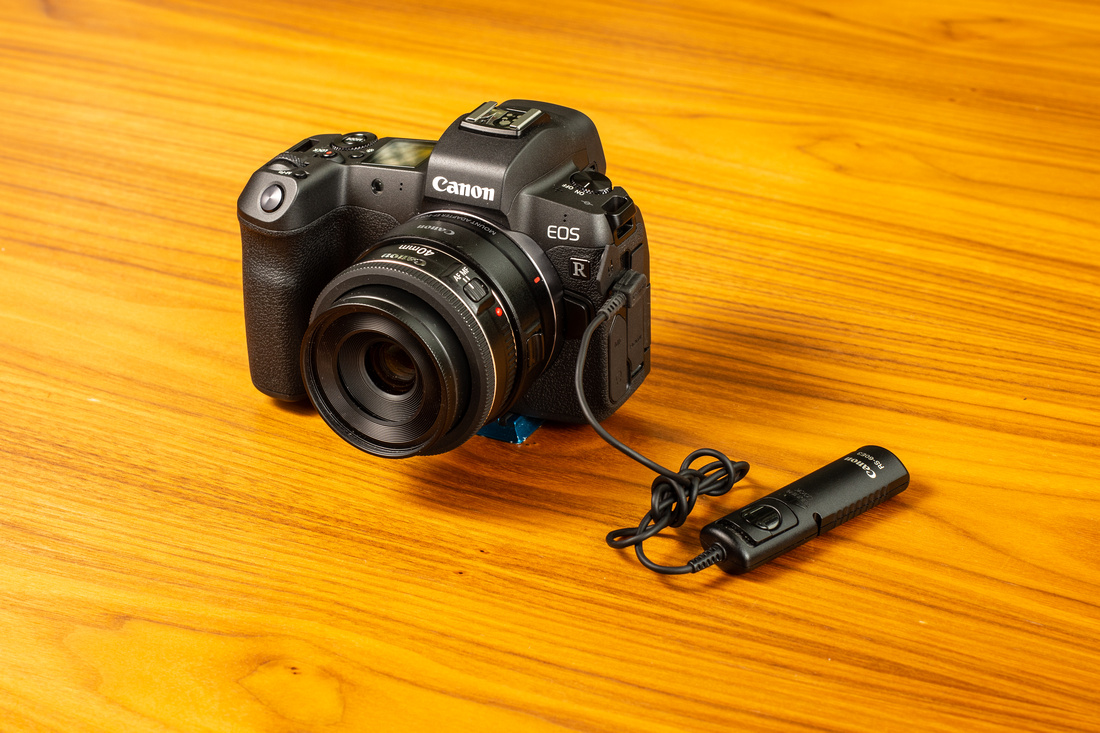
The remote release for the EOS R is not the big one used in the traditionell EOS cameras but the small and little one which is in use at the EOS M series as well...

Canon takes care of you... I have never seen such a message (sorry that one is in German)! It tells you that you should not aim the camera to the sun or other bright light sources.... Mmhh I never thought about this. using mirrorless cameras since 2009.... Thank you Canon....
Shooting Experience
A main topic of new cameras is "how does it work" and "how does it support my work flow".
Let us take a look on a couple of steps in the workflow -
- starting with overall handling and autofocus properties...
- data storage
- social media topics
Overall Handling
First of all: this camera feels like a Canon. For me this is good, and nothing unexpected happens - mostly. But since it is a mirrorless camera there are some specific new topics which are different - and in many cases solved in a great way - but sometimes you have to read the manual....
Manual focusing
This is one of the greatest things using a mirrorless Canon. It is made in a great way on my EOS M5 - and Canon continues this implementation on the R.
The first big advantage of mirrorless cameras is that you can magnify in the viewfinder. This is great and makes things much easier. I made the experience with the M5 using the Milvus 85mm f1.4 - and the keeper rate is much better with manual focus than autofocus. The confirmation blink/beep thing of the 5D4 is not really better by the way.
As long as you use lenses which do have automatic integration - like my Milvus lenses - Canon has build in another new feature: a focusing aid which just works great!
Using a mirrorless camera is the best advertisement for high end manual focusing lenses. And for shooting with legacy lenses which I love to do from time to time....
Autofocus -or why the nob is not needed....
The autofocus is another big topic. It is working very elegant and smooth. The autofocus is very confident and reliable. for my taste more reliable than on my 5D4 in most of the cases. I realized on the 5D4 that in critical situations I preferred to use live view than through the view finder because the result was better...
There are so many complain about the missing nob... but for my taste moving the autofocus area on the touch screen is quicker and more accurate than just using moving autofocus points in a classical DSLR!
One other big advantage against the 5D4 and all other DSLR´s from Canon is the usage of Teleconverters with autofocus.

The EF 100-400mm f4.5-5.6 L with the Extender 2x Mk III
With normal DSLR´s the maximum autofocus is working is f8 - wich means that the limit on the 5D4 is for example 100-400mm the 1.4x teleconverter. And the restriction of the focusing point in the center. With the EOS R (as well as with the M5 by the way) there are no restriction. Autofocus is working the 100-400mm zoom with the 2x Teleconverter as well!
This shot clip shows the 100-400 with 2x extender while using the touch screen in comparison between EOS-R and 5D4.
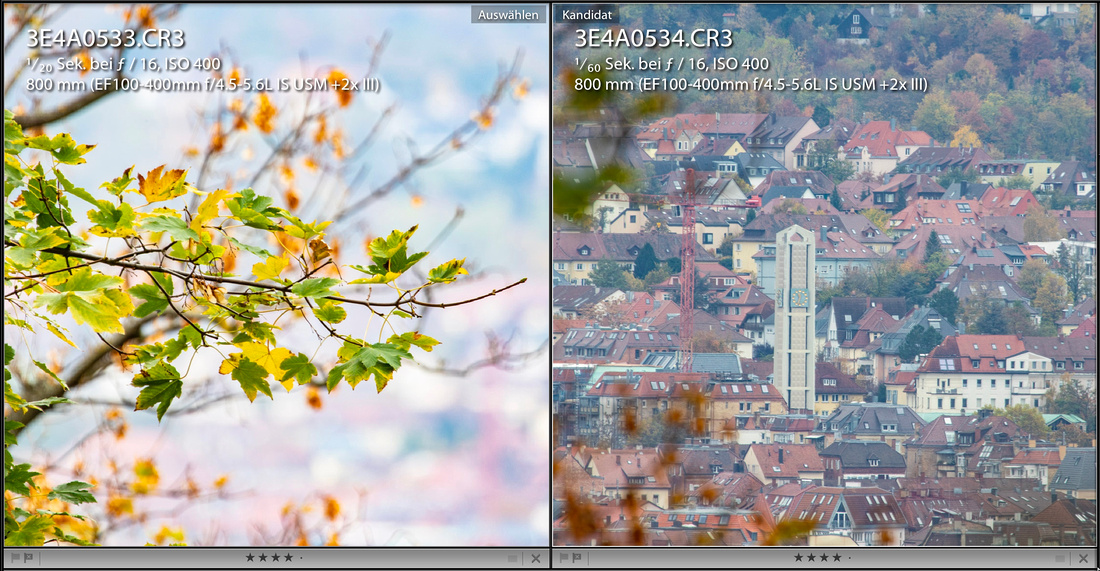
For the video above these are the images to illustrate how the leaves look like and how infinity....
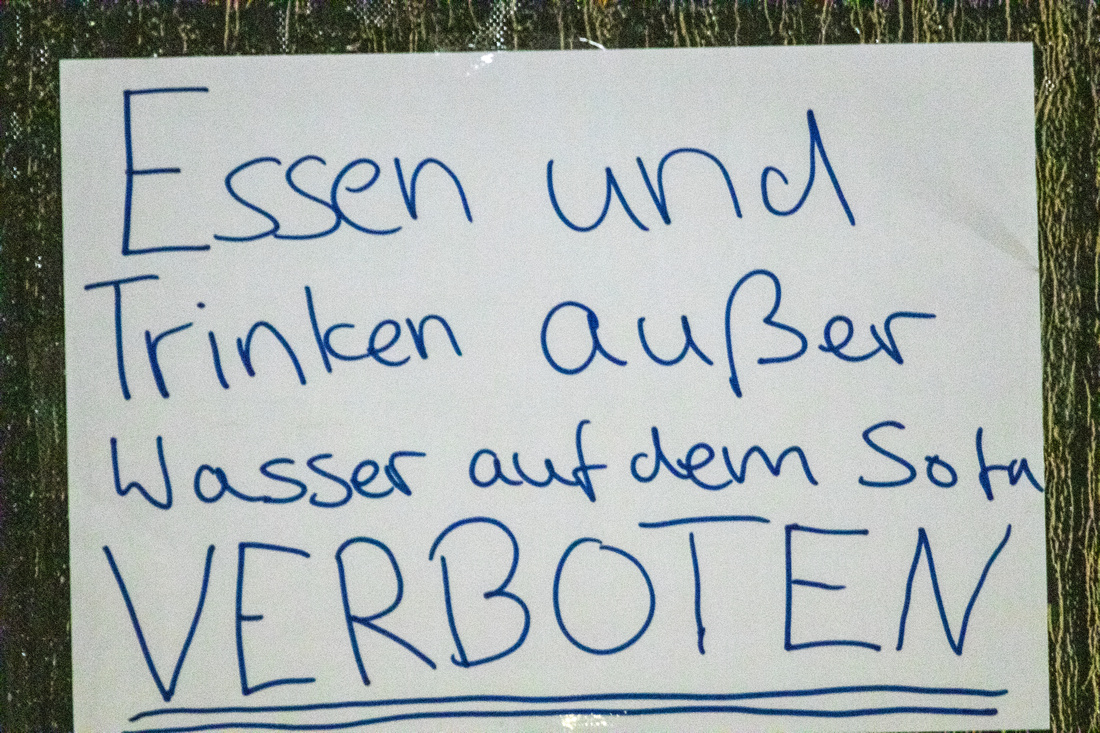
Just to fire the discussion of the possibilities of the Optical image stabilization: This photo was handheld at 1/80th s with 800mm focal length....

This is not black and white!!! Shot @ 800mm and 25600 ISO....
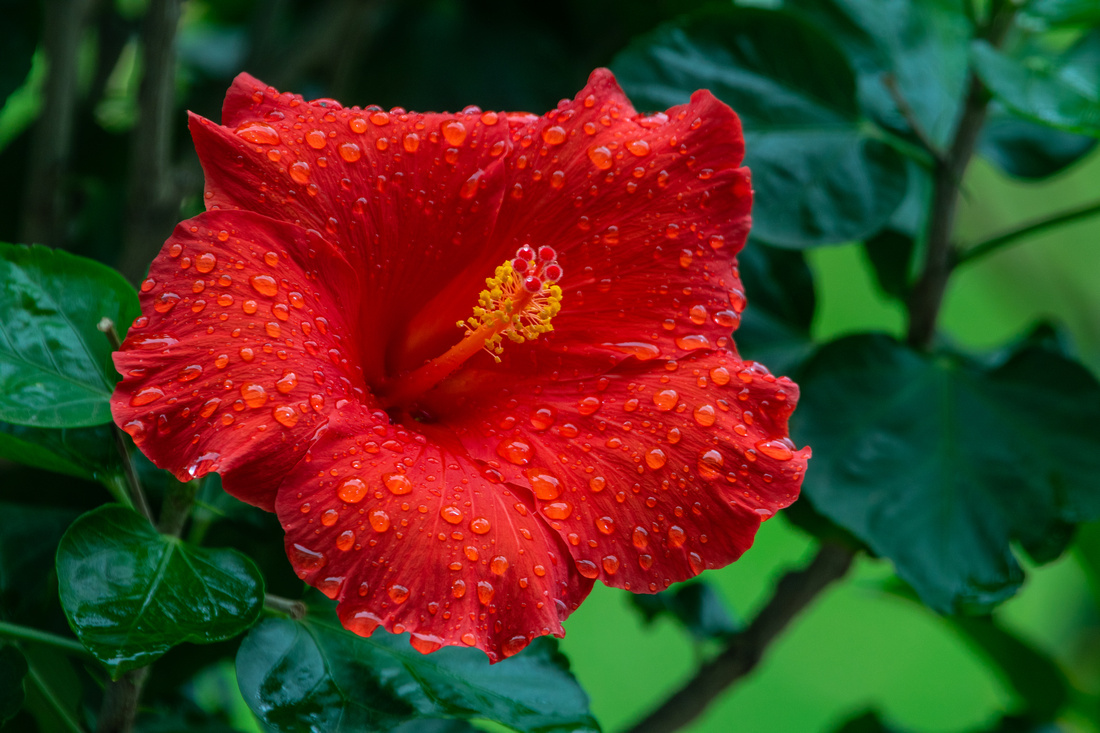
Again 800mm focal length... One remark on using the Extenders: To get sharp images it is necessary to stop down one f stop.. It is pretty challenging to start with f 16 for usable images...
Data Storage - or the dual card slot thing
Most of the complains of the professionals as well as the so called professionals is referring the missing 2nd card slot. I do know how it feels if you loose images. I had that with a bad CF card from Transcend ones - om my sisters wedding when my 9 year old daughter was fighing with a knight with a sword... And no image recorded...
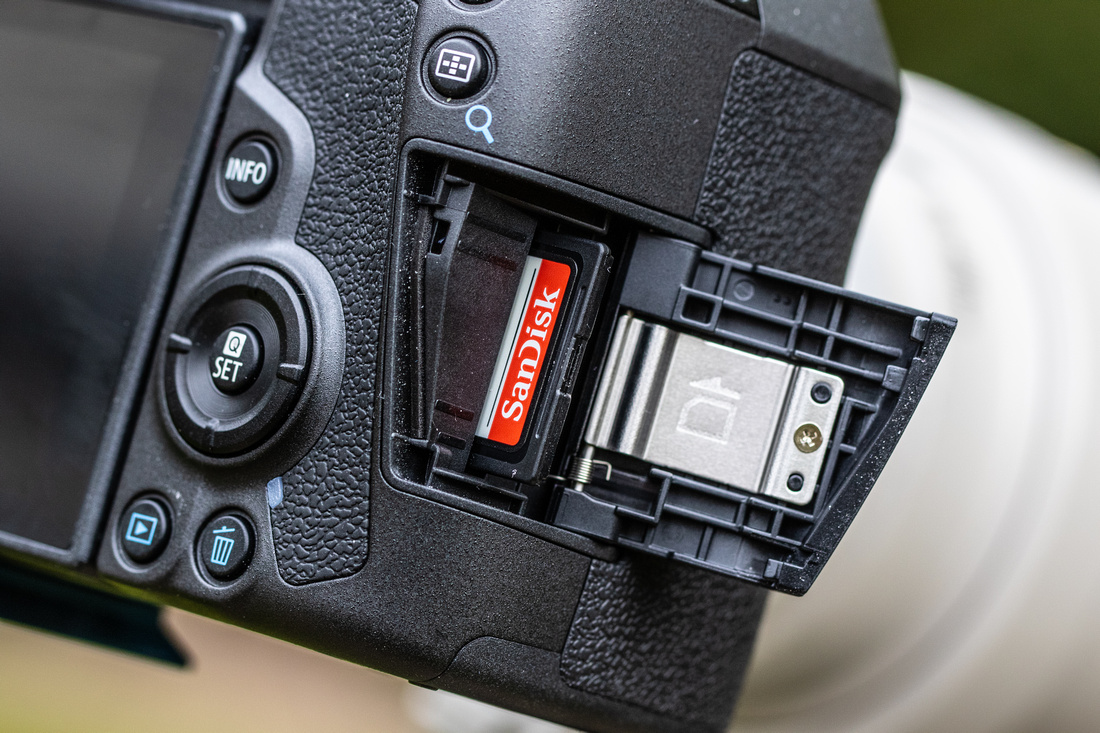
Canon´s idea on the R is a totally different approach: they integrated tethering to smartphone, iPad or computer in the workflow. Some people complained it will be too slow - but test it out. It works - and fast enough for normal shooting conditions - with the exception of long ongoing shots for sport or wildlife.
And the good thing here: you have the photos available for instant sharing in social media. This brings the camera and working with it on a complete new level. It is the more advanced approach than a 2nd card slot. But the cry of the crowd is loud enough that the "real professional" mirrorless camera will have one...
Image Quality
There is a huge discussion in the way regarding the image quality of the EOS R. But the R has a new processor and maybe it does some things differently. Therefore the usual workflow might be not the best one in all cases....
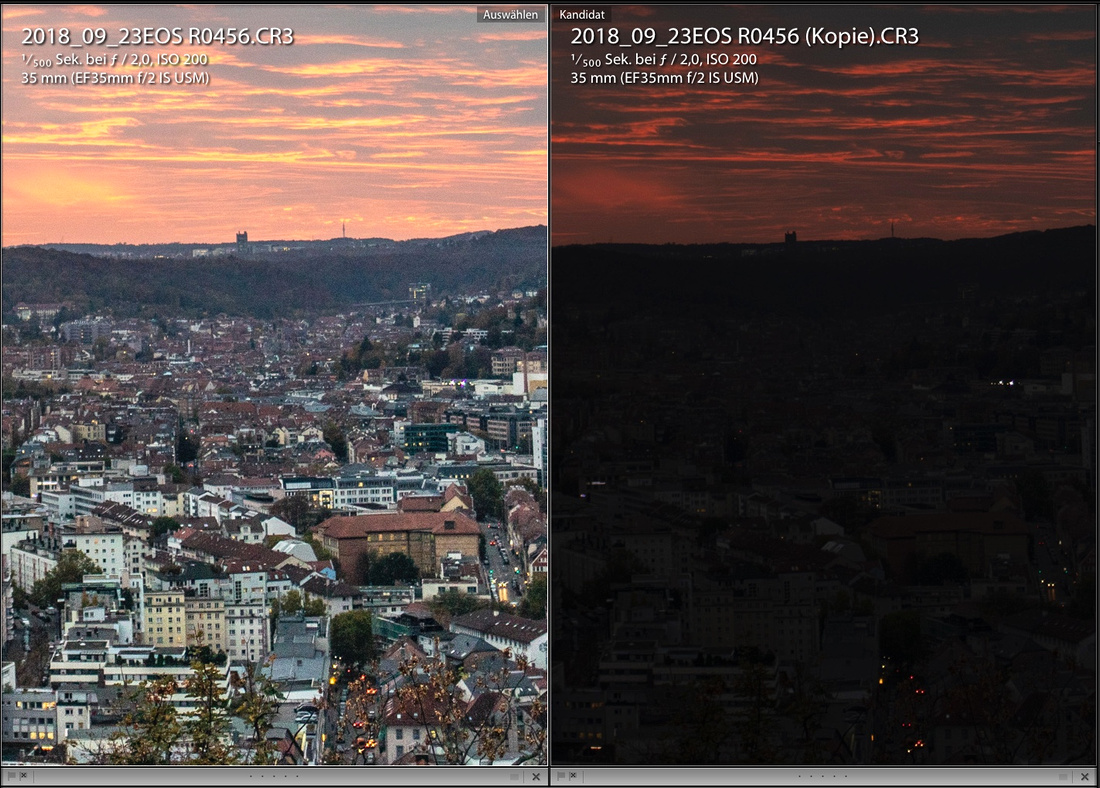
There are a lot of discussion going on about especially about the possibilities to boost underexposed areas. The above image was taken underexposed that the highlihgts - the sun is more in the right - are not blown out.
So this photo is boosted by 2.55 f-stops and the shadows again +.88. For my taste: I can live with this performance....

Another shot shows the high ISO performance. The shot above is usable at ISO 12800 - maybe even 25600 is usable.
Sample Shots
As usual I present a couple of sample shots which just made fun to make or look at....

One of the very first photos with the new EOS R. It is shot as jpg (default... realized that later). The shadows are at +77 The lens is the EF 35mm f2 IS...
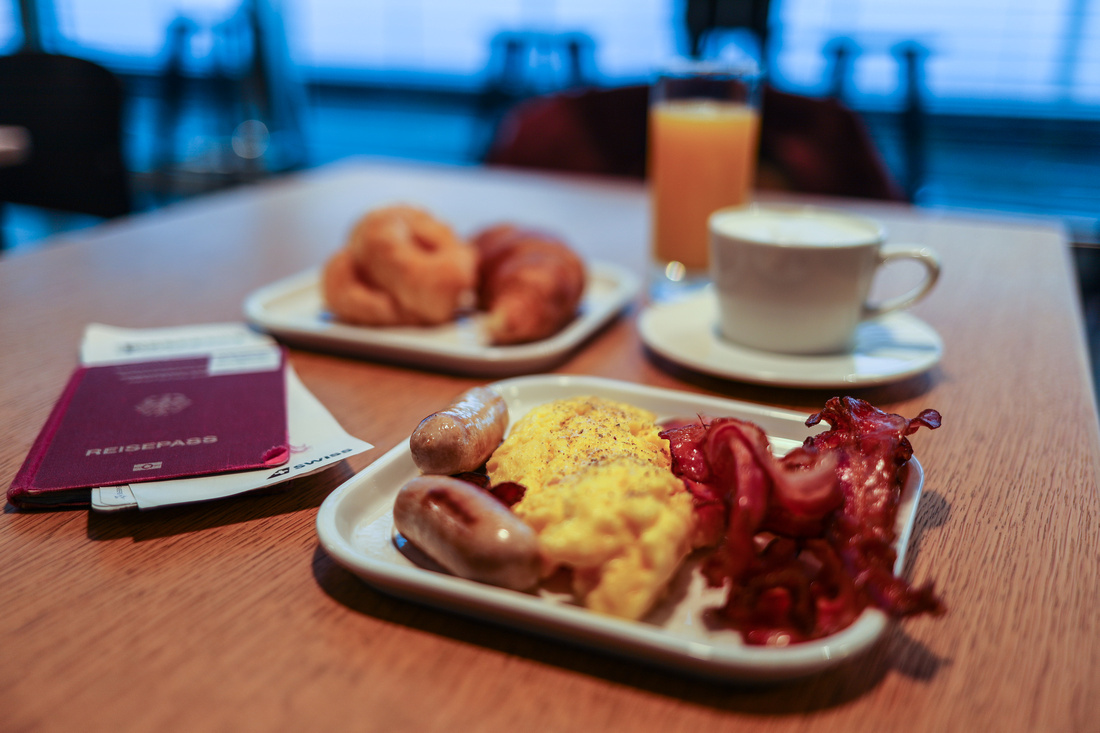
Travelers breakfast... waiting for the next flight....

Ready to fly.... shot at Zurich airport at a 3.5 hours lay over... Shot with the EF 85mm f1.4 @ ISO 200, f1.8 and 1/100s
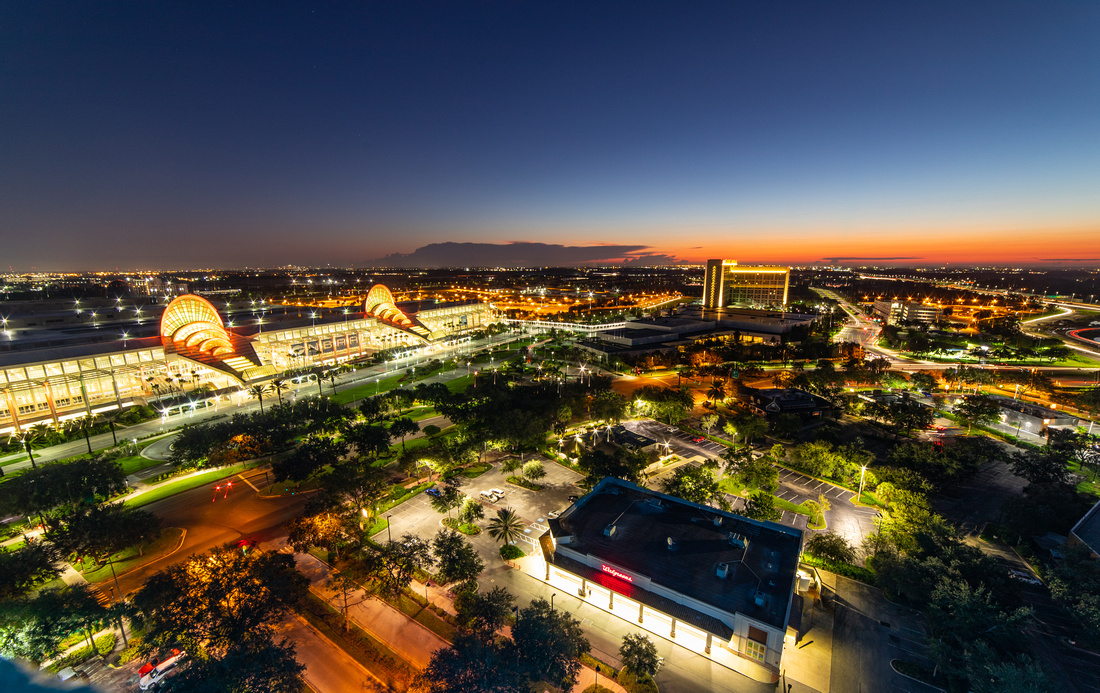
Welcome Orlando....
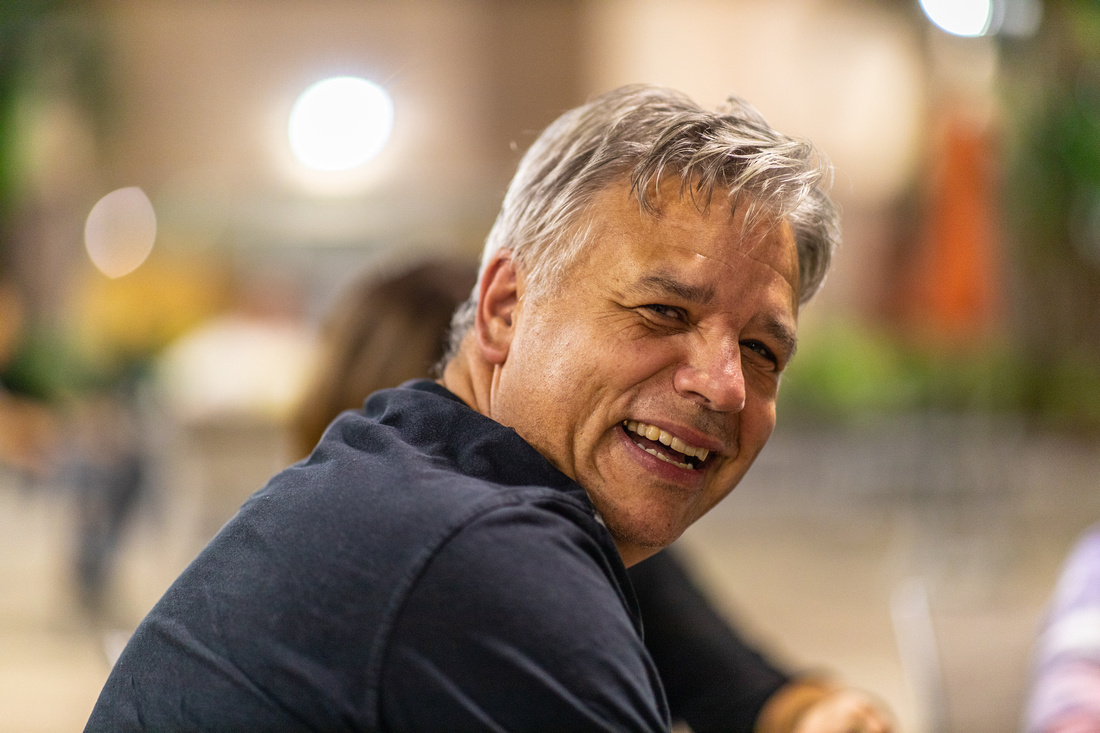
Its not a selfie.... A friend of mine took my camera and made this photo from me, ISO 800, f 1.4, 1/100s... perfect bokeh... I know why I love this lens.

Poolside.... The amazing part of joining a conference in Florida is that the locations like Rosen Centre have a nice pool area - in the morning for swimming, in the evening for hanging out with friends.... shot with the Samyang 14mm f2.8
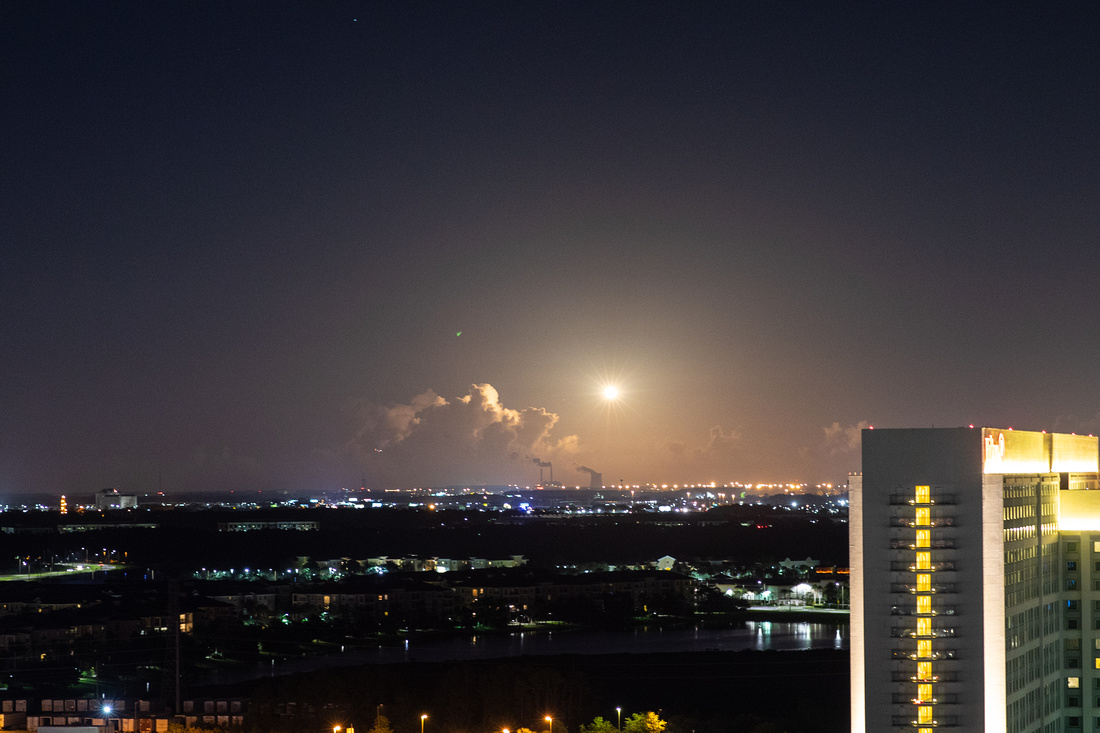
The bright star on this photo is an Atlas V rocket launched at Cape Canaveral 55 miles away...
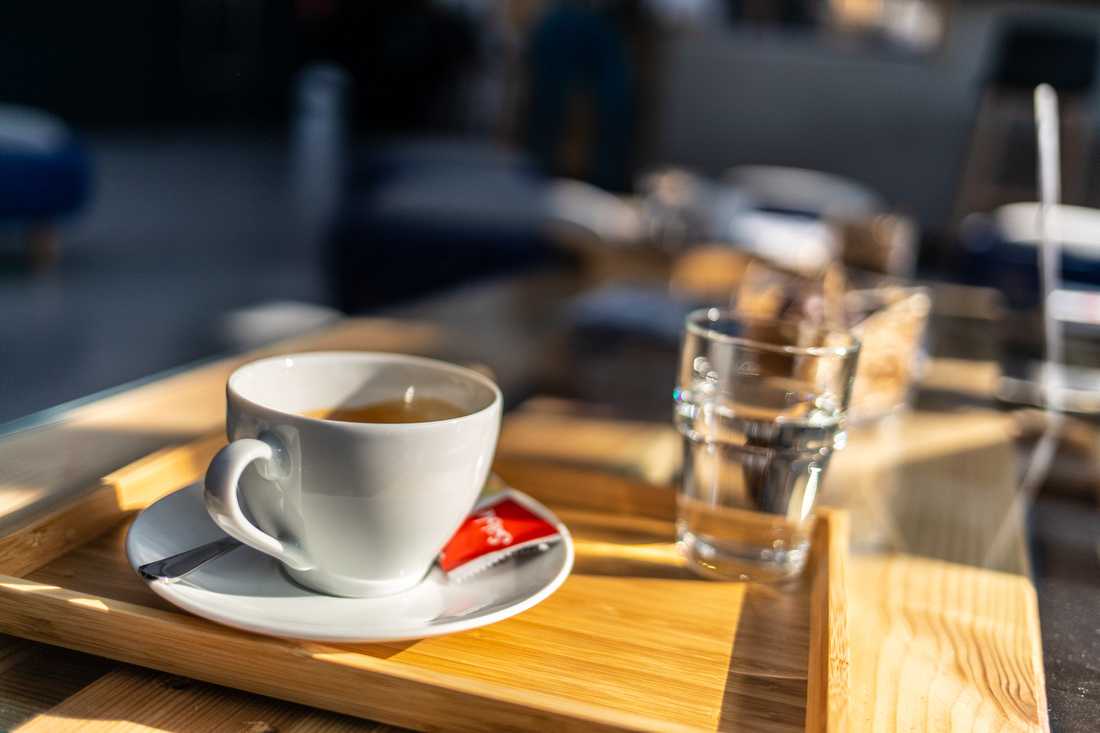
Just relax! Coffee in the boulderlounge in St. Gallen...
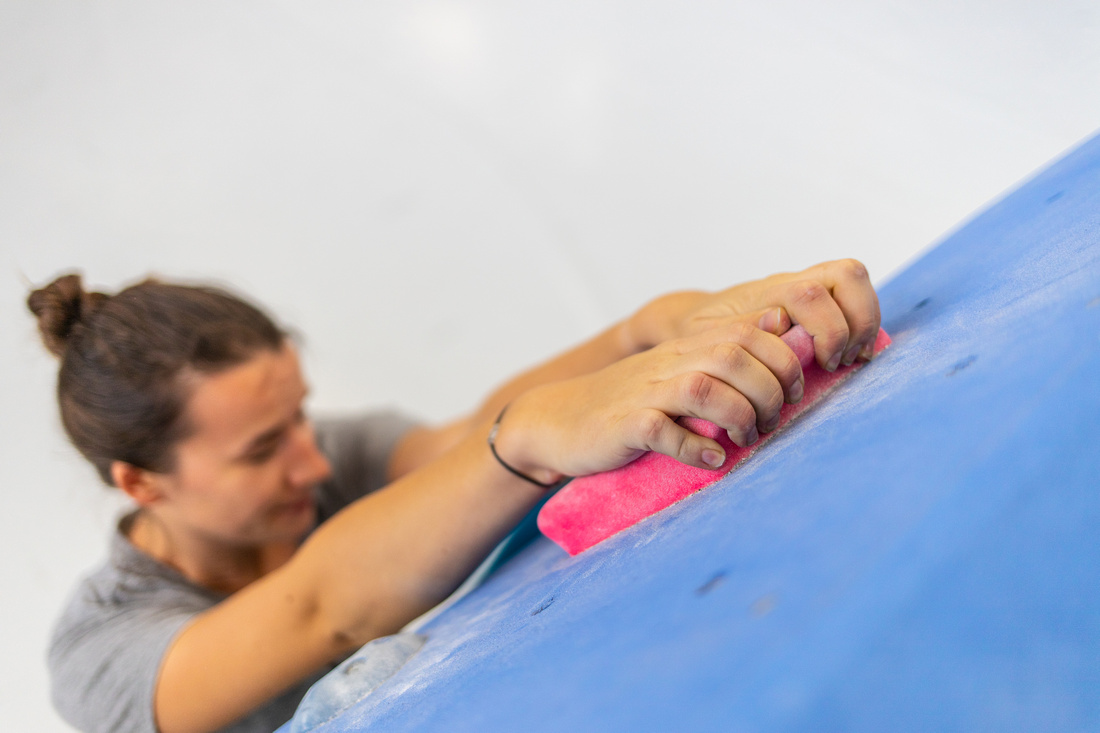
I do like to shoot with fast 35mm lenses. They offer a nice amount of bokeh and the 35mm f2 delivers. It is more compact than my f1.4 version but the bokeh is less as well....
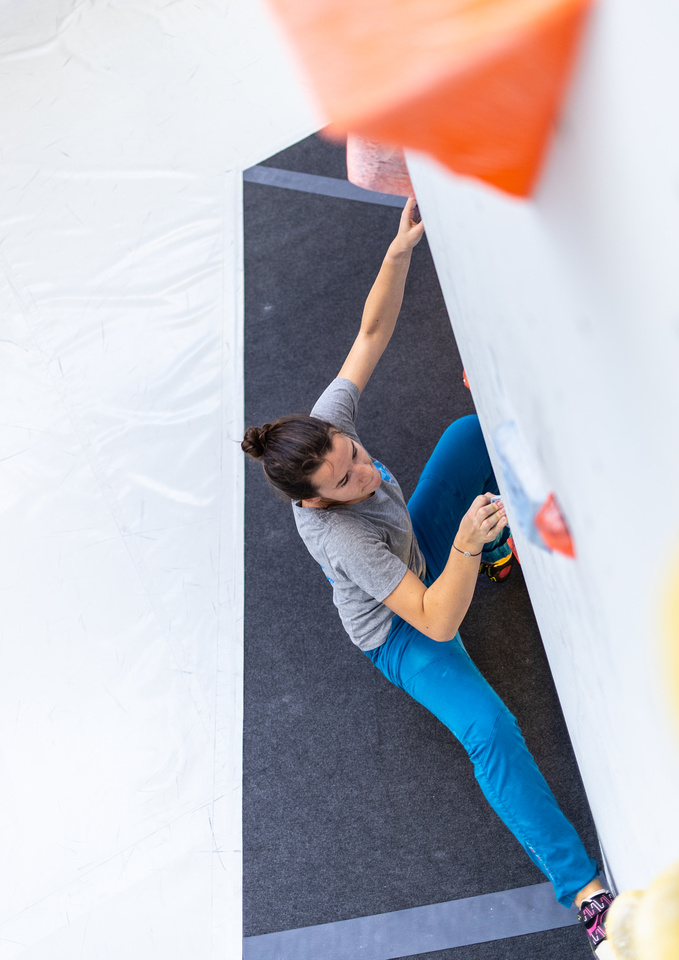
The same spot but a different focusing... just taping on the scree and you get 2 different photos....
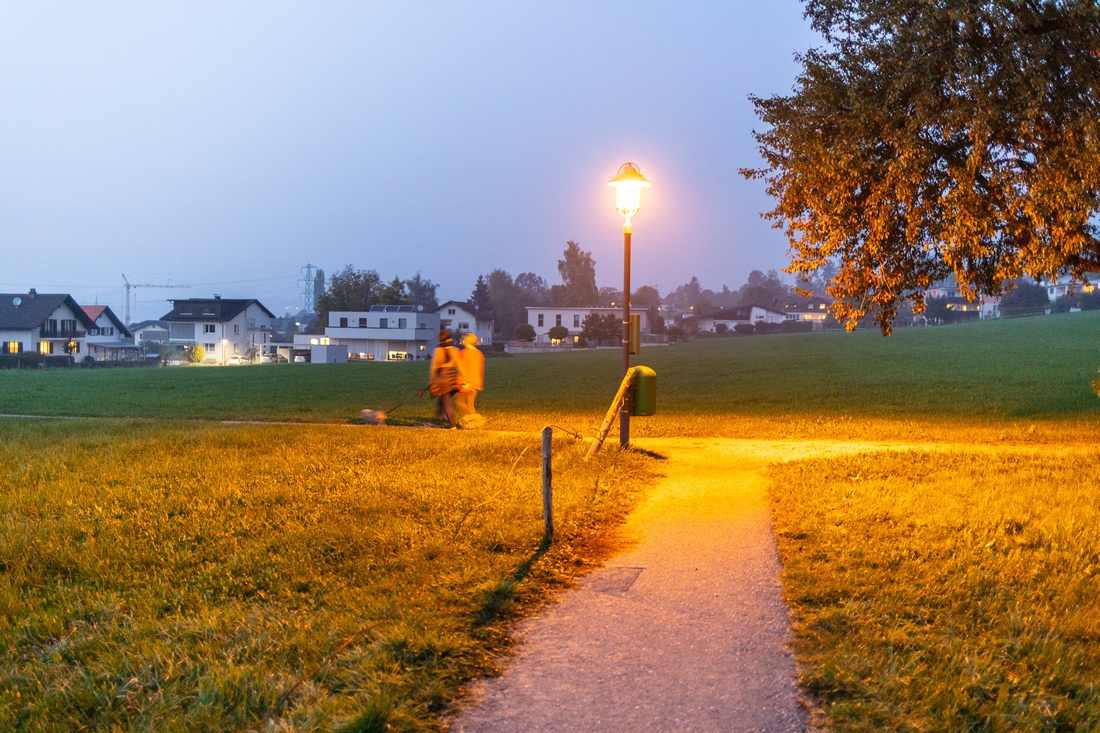
Evening walk with the dog... the low light performance is amazing. The lack of shutter shock (or better: mirror shock gives you a at least one stop more of "hand foldability..."
A Morning Walk around the house @ f1.4...
A nice photographic exercise is: take one lens and just go around the corner....
Today I took my beloved Zeiss Milvus 50mm f1.4 with me and just enjoyed shooting with it...
The photos where developed just with my standard settings.... no further retouch...
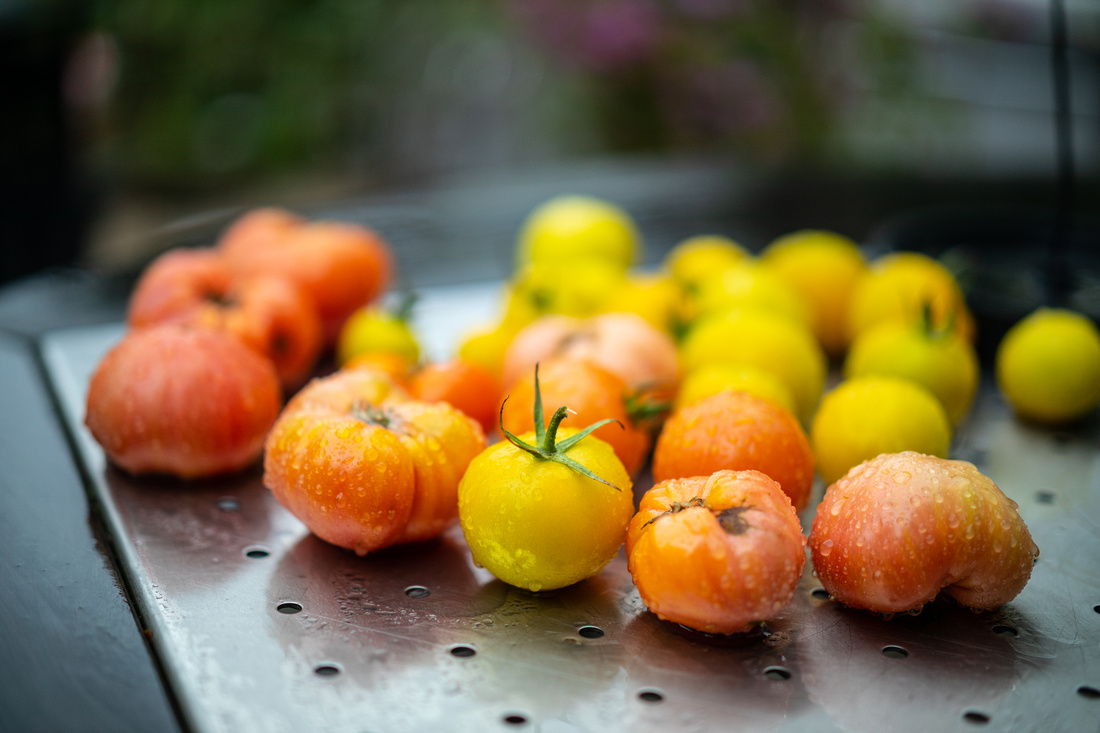
Tomatoes on our garden table...
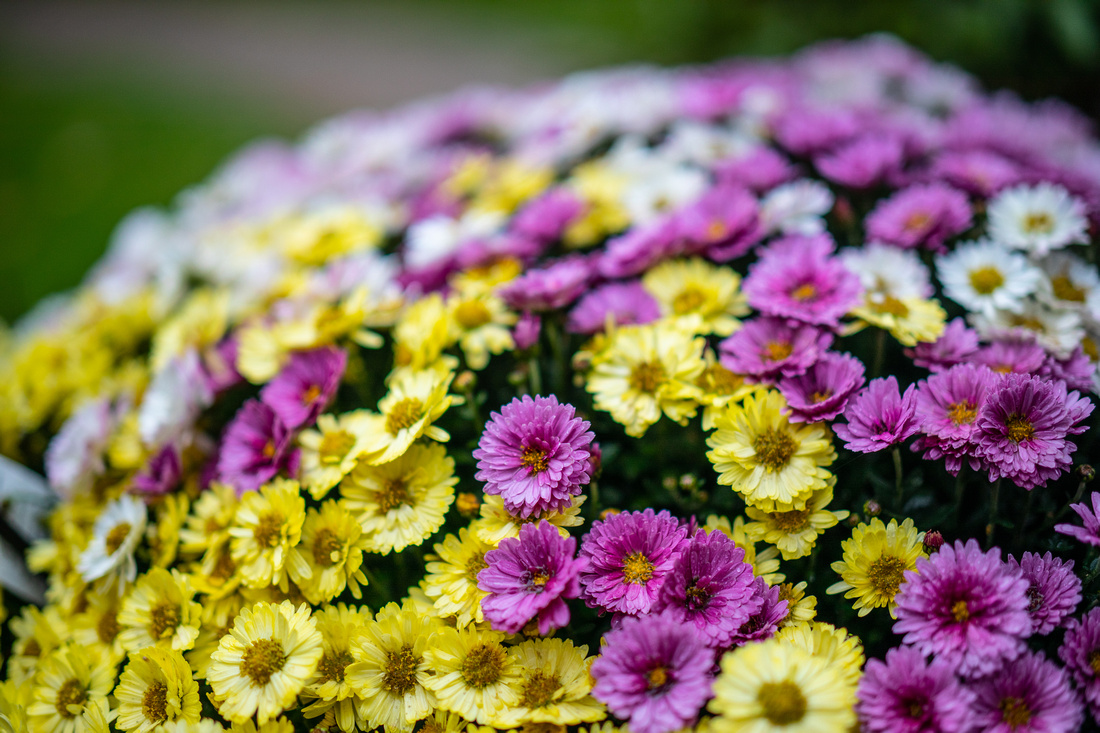
Some flowers are out....
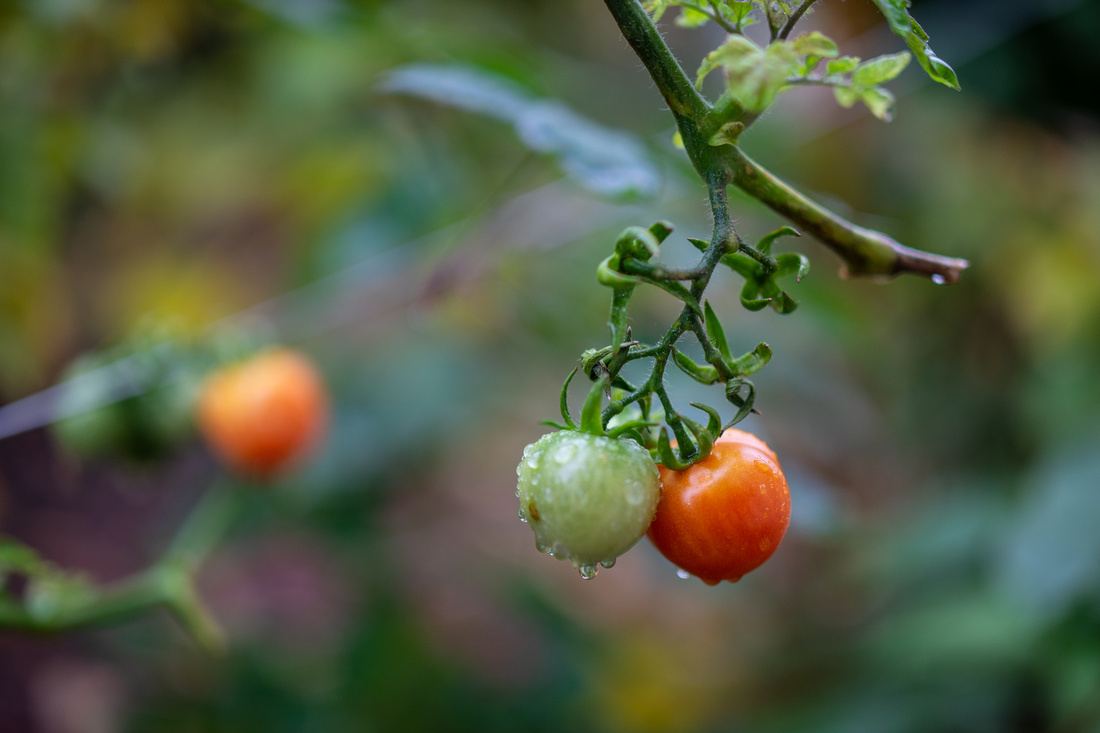
Tomatoes... I still hope that they get ripe before the first frost...
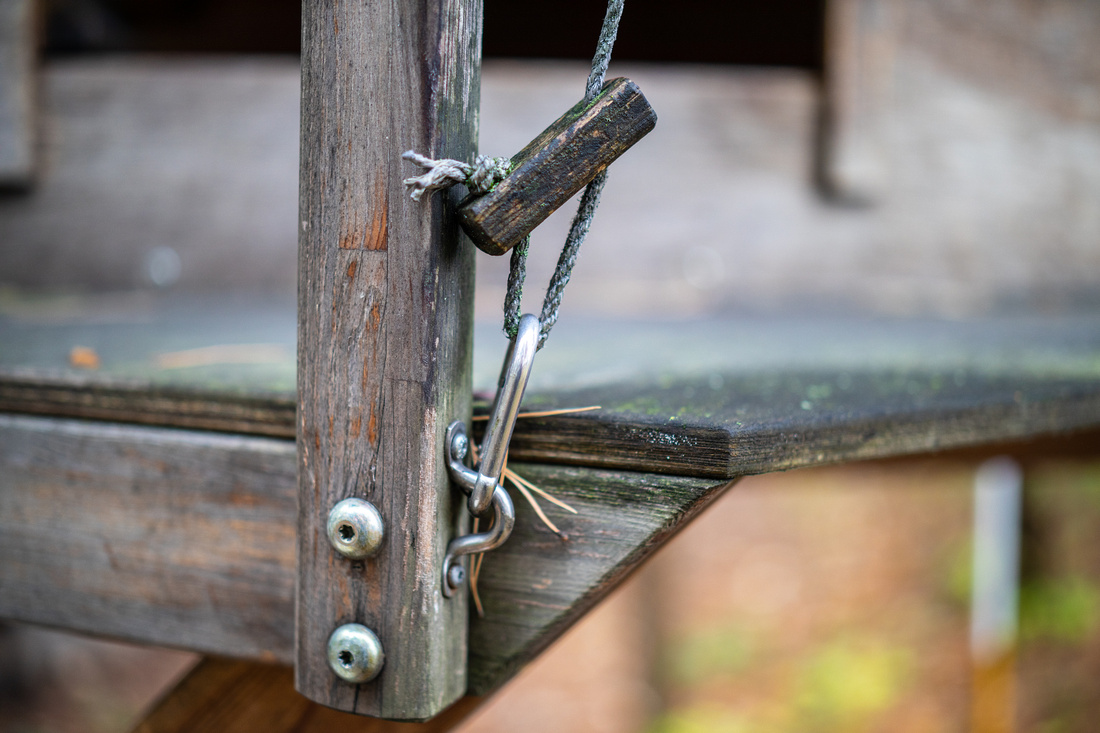
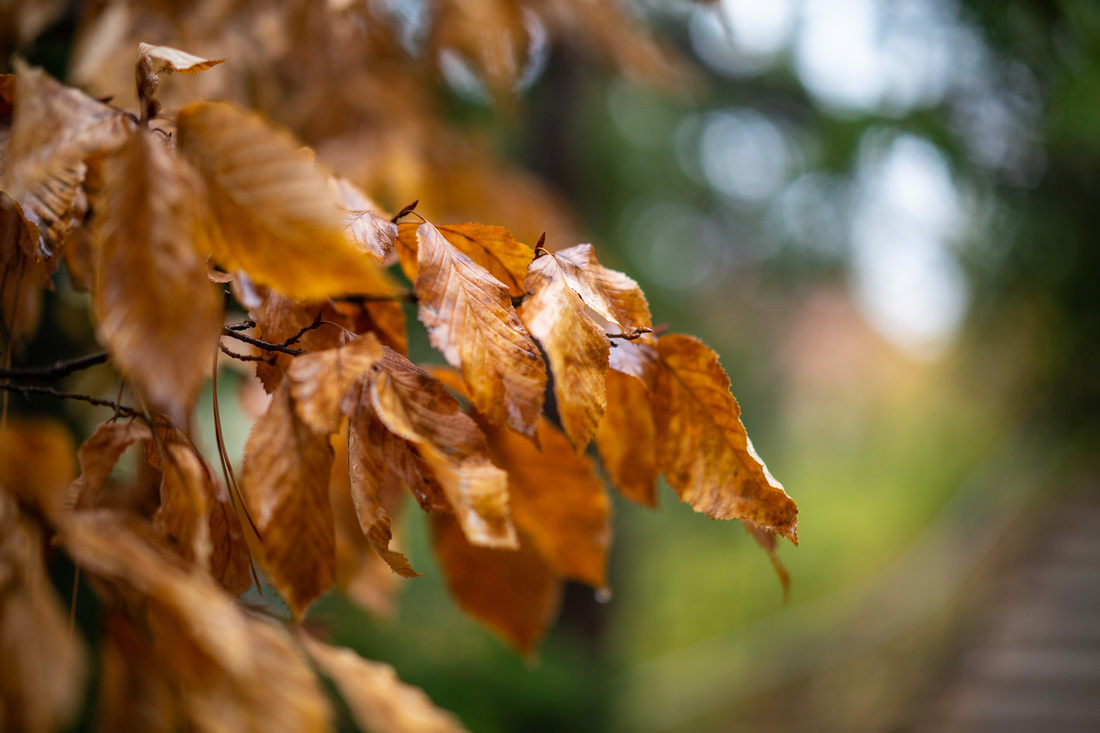
Autumn colors are going in...
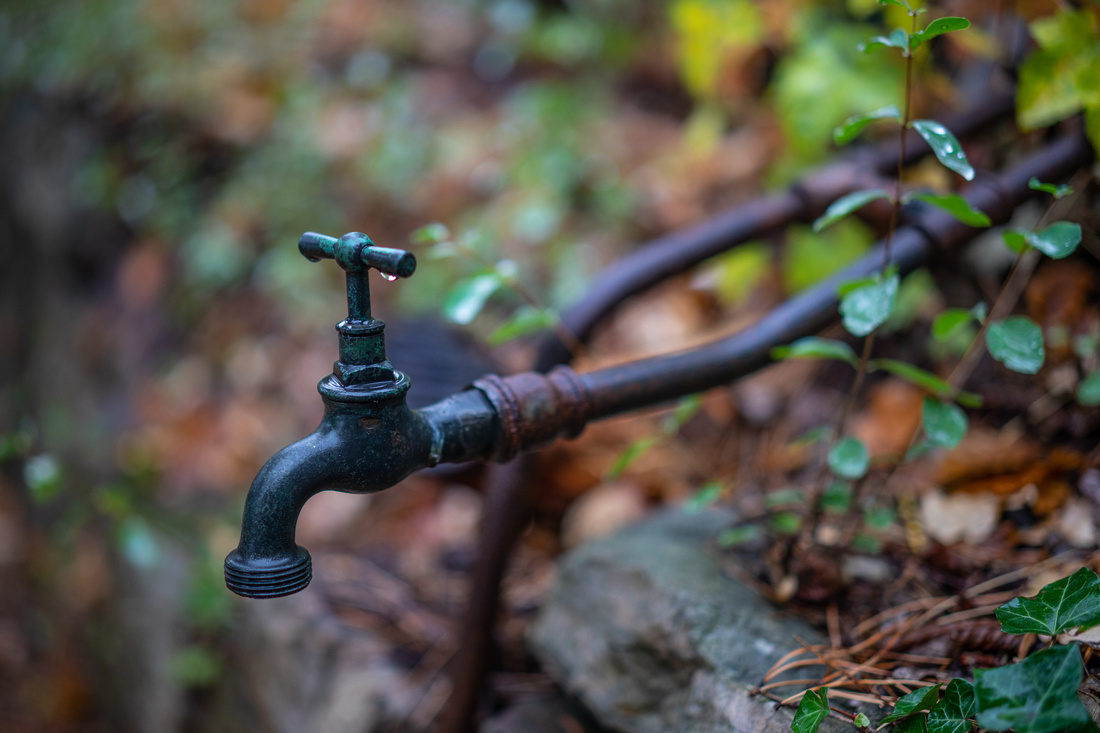
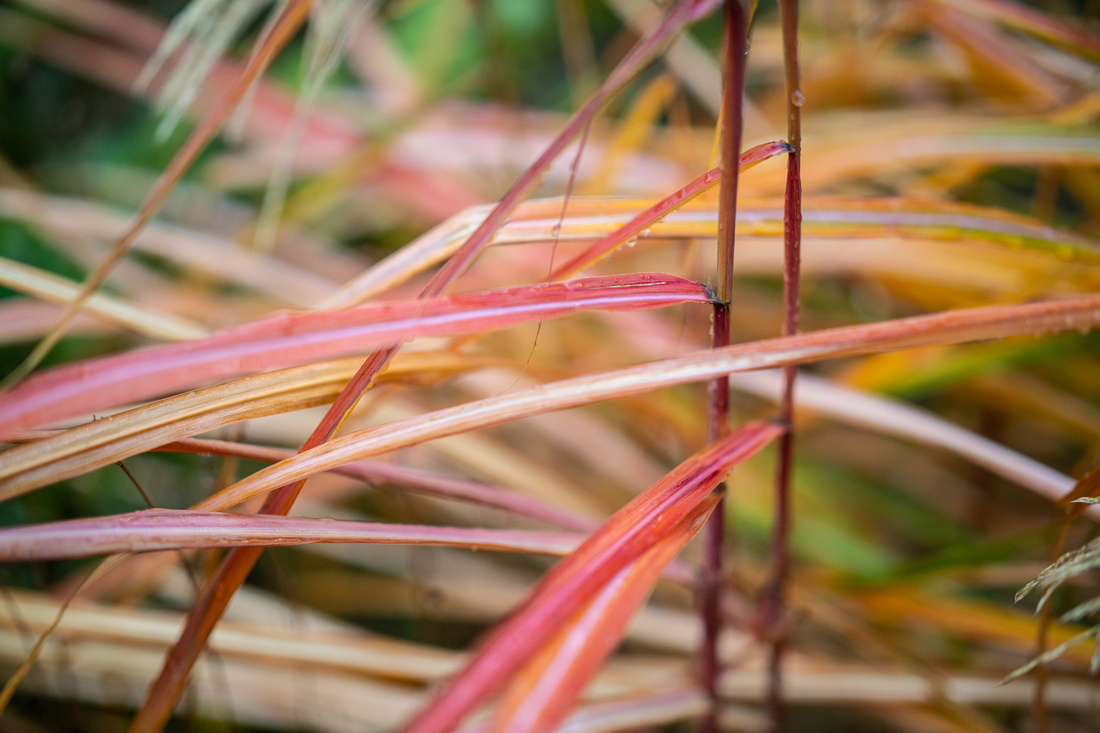
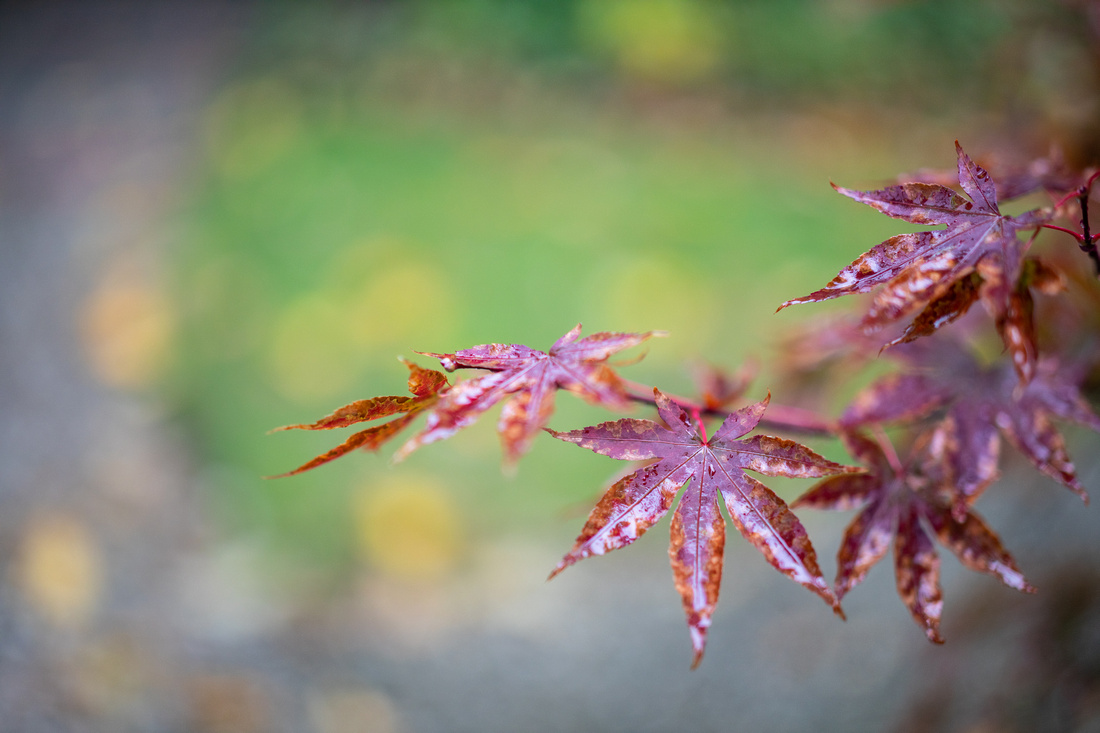
There came up a couple of questions regarding night photography on the EOS R. I had just one opportunity for a night shot.
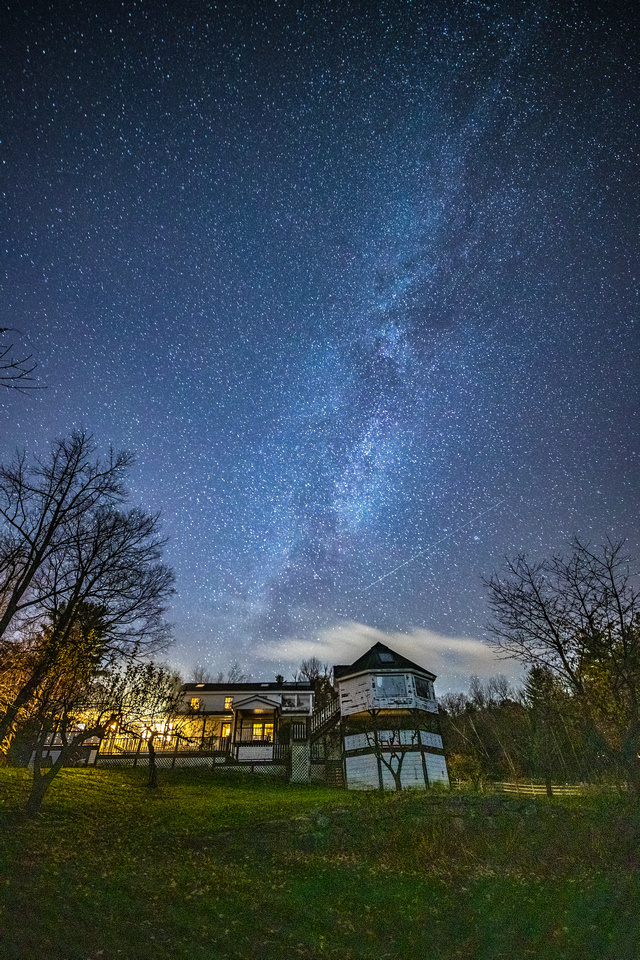
The photo was taken at a Friends side in New Hampshire - a place with really zero light pollution. This photo was taken with the Zeiss Milvus 15mm f2.8. ISO 3200 - one image @ 30s the other ar 8 sec and Lightroom HDR applied.
These few images are showing what's all about: fun and good photos. And there is no doubt that the EOS R is delivering this. And it is a perfoct companion if you do love to shoot with high end manual focusing lenses....
What I do not like and what I am missing.
Where is light, there are shadows.... No doubt - this exists. And I do not complain about the dual card slot thing!!! For my taste choosing iPad, iPhone or a PC as 2nd card slot is good enough.
The non likes
One big issue on all Canon adapters so fare is the circumstance that they do not transfer the EXIF data of third party lenses. All my Zeiss Milvus lenses are clearly shown with their names on all Canon DSLR bodies but not on the mirrorless ones... The answer of Canon: "ask Zeiss" is cynic and feels a bit like a boycott.
The missing things
It is not much what I am missing. But there is one thing where is no information available: Will there be an adapter for the R-lenses to the M-Mount. I do expect a lot of new native glass for the "R". But it would be great to be able to combine both cameras again. It was great to shoot Full Format with the 5D´s and the 7D´s. I really hope that Canon will bring us the same with R- and M-Mount.
Verdict
Wow, what a camera... It delivers all what I expected to get. Using the EOS M5 since almost 2 years as my main travel camera I knew that Canon is delivering great gear on the mirrorless side as well. Therefore the R is definitely the next level for my "always with me travel camera"! The great thing is that it delivers those features which I missed mostly on the M5:Better low light performance and more bokeh and that's just related to sensor size. And weather sealing... But unfortunately the first RF-mount lens to come will be the 35mm f1.8 - and this one comes without weather sealing...
The EOS-R is a remarkable camera. Tt can be a work horse for all "normal" needs - and I believe for working professionals as well. I would think it will become a believed camera for travel photographers, who do want to be a bit more discrete and do won't to carry less.
For many topics which are critizised in the online community there are workarounds or solutions built in which are made pretty awesome. But you have to figure them out and maybe to learn how to use them....
I do expect more glass for the RF mount. And the list if the expected glass to come is impressive:
- Zooms: the holy trinity is more ore less confirmed to come in 2019
- 16-35mm f2.8
- 24-70mm f 2.8 - as IS-Lens!
- 70-200mm f 2.8
- I do expect a new Super Zoom lens... like the 28-300mm
- Prime Lenses are rumored to come in late 2019 or early 2020 as well
- 24 mm f1.2
- 85mm f 12.
These glimpse of rumors show clearly that Canon is filling up the RF mount with stunning and awesome glass - and I do hope for more consumer grade glass as well...
And therefore: i am happy to have it and to use it in the future....
Miscellaneous
I do have to places for the photos in this review, The link to the image samples of the EOS R are in the link and the photos of the M5 you find here.
The product shots typically are made with the EOS 5D Mk II..., but some are made with EOS M5 as well.
And one topic I do have to admit: Yes: this camera is used mainly with awesome glass as well - which I love to use and which has an influence to the results as well.
]]>
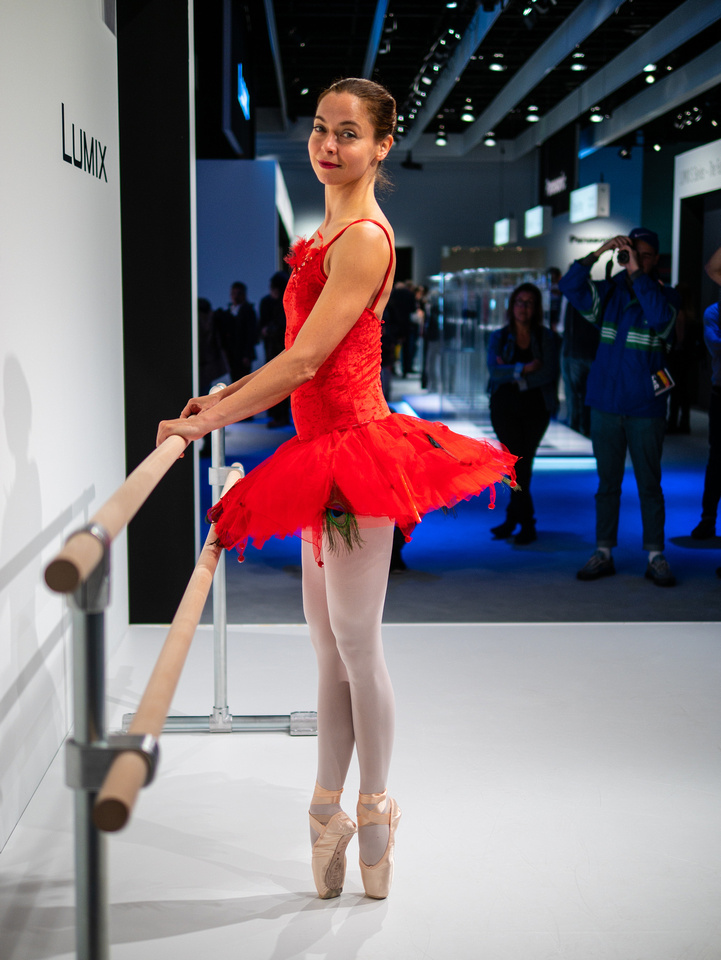
Many of the companies make their own shooting and testing areas well lightened and for the people to shoot.... Panasonic did it, Canon, Fuji Nikon Sony - all the big ones.... I did this one with my own gear - in style with my Lumix GX 80/85....
This year I went there again - and tested a couple of things which is always exciting.... It is necessary to bring your own stuff for having fun,. My set uo was
- Panasonic GX85 with the Leica 25mm f1.4
- Canon EOS M5 with the EF-M 22mm f2
- Canon EOS 5 D Mk IV with the EF 40mm f2.8 pancake
Just for having small and lightweight equipment with me using all the versatility....
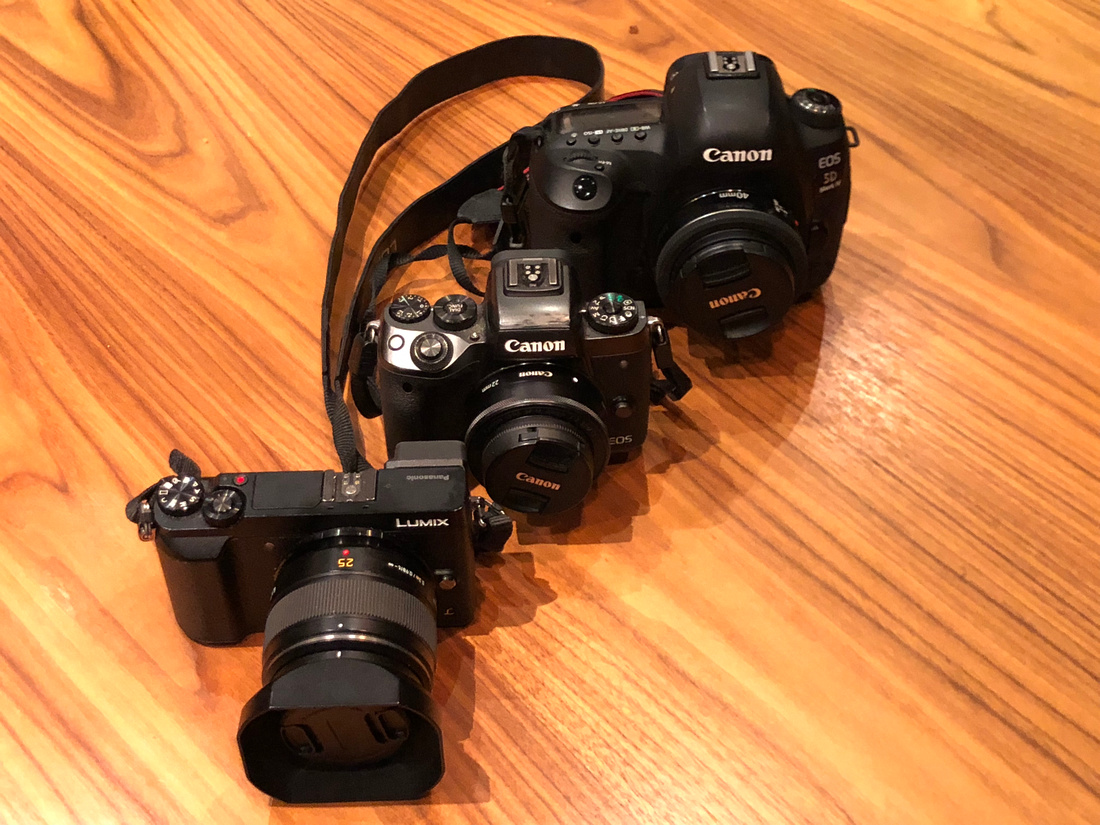
Mirrorless Full Format - the big hype...
Maybe I will make a blog post of its own on this mirrorless hype. For me its a kind of "turning the mosquito into an elephant" style of thing... Maybe I will do a blogpost of its own on this topic..... Maybe we should all remember that the first Full Frame Film Camera was developed by Oskar Barnack 1913 for the Leitz Camera factory in Wetzlar... better known as Leica....and it was mirrorless....
Anyhow: this will be a topic of another day or so... Mirrorless Full Format (Will short cut it to MFF...) had a major change this year.... Nikon and Canon are stepping in...Panasonic is announcing for 2019.
Leica is there forever, Sony was stepping in 5 years back - And Panasonic is a using the Leica SL mount by the way- a clever move!
Canon EOS-R a very interesting first try....
Since I am a Canon shooter I needed to get the camera in my hand and make some comparisons....

I did had my first personal experience with the EOS R before photokina... but without major comparison in size... The first impression was: "Wow" Canon did many things right... especially the way how the feels in the hand: the grip has the right size, there is enough space between grip and lens - pretty perfect....
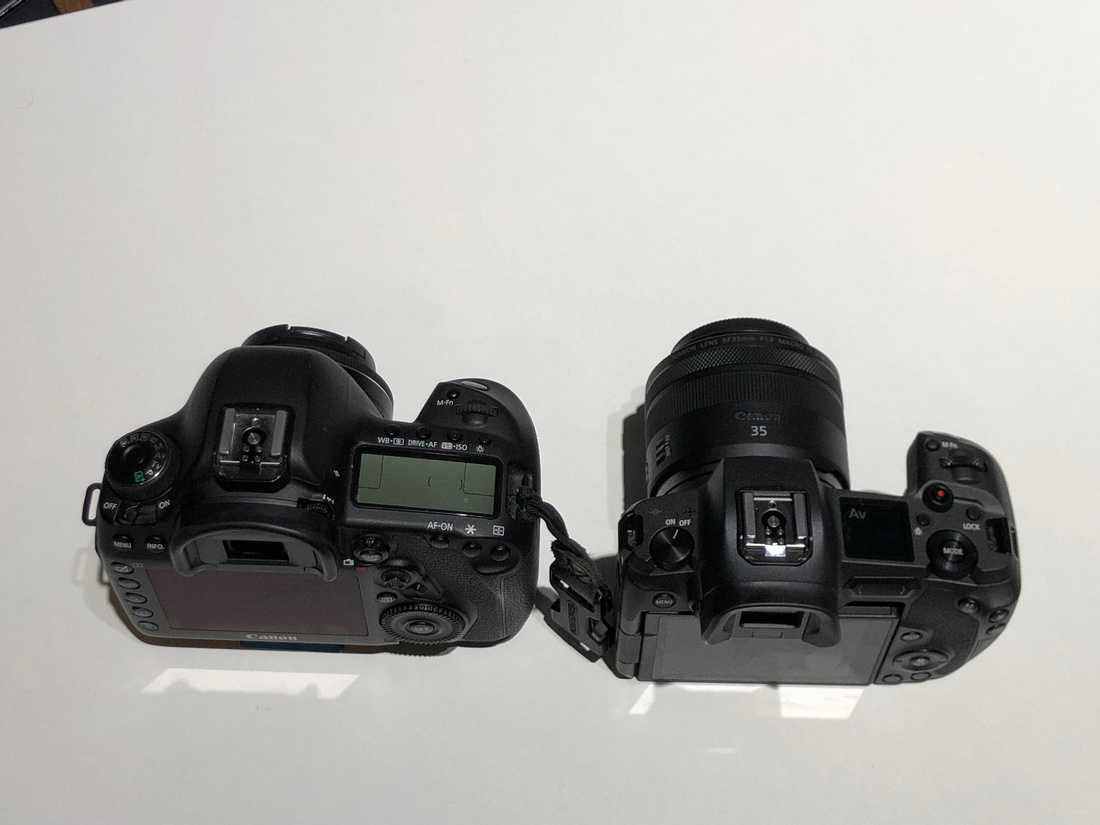
Size comparison: 5DMkIV vs EOS R: The body is remarkably smaller and lighter - shot on the iPhone....
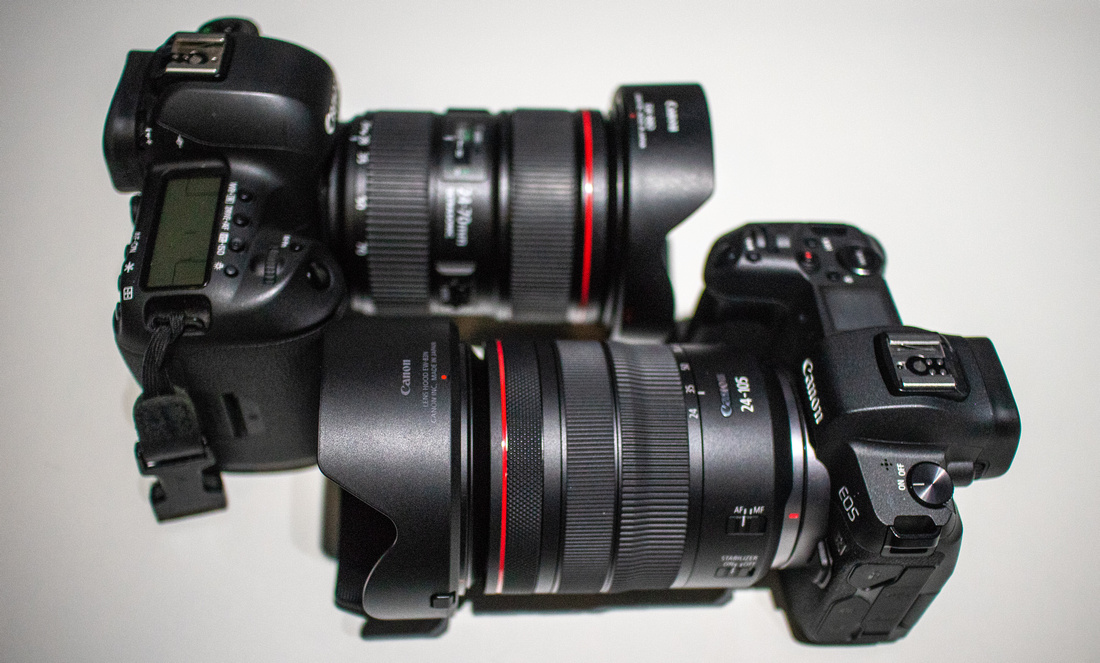
This shows the same comparison but with the 24-105 lens - EF-Mount on the 5DMkIV - R-Mount on the EOS R... Shot with the EOS M5.... (Well, there is a reason for real cameras.....)
I will be very happy when I will have my EOS-R in hands.... hopefully end of the week... For me it feels like the M% a bit - which is much smaller but the "R" is small enough for being used as a travel camera.....
EOS M - only one new lens... but what lens... EF-M 32mm f1.4
Canon has announced one little lens for photokina - the EF-M 32mm f1.4... In Full Frame diction it is a 50mm f 2.24 lens - enough for good bokeh??
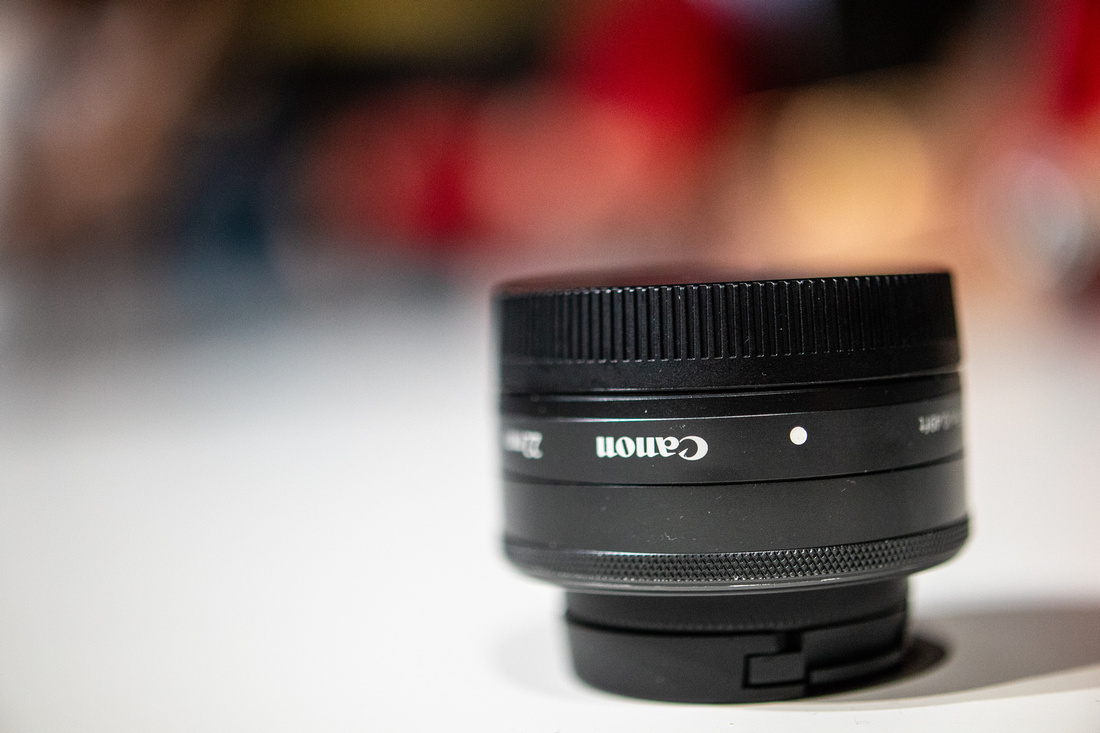
Any CR?? really sharp and buttery creamy background.... Wow!!!! It is a high end lens for very moderate money....
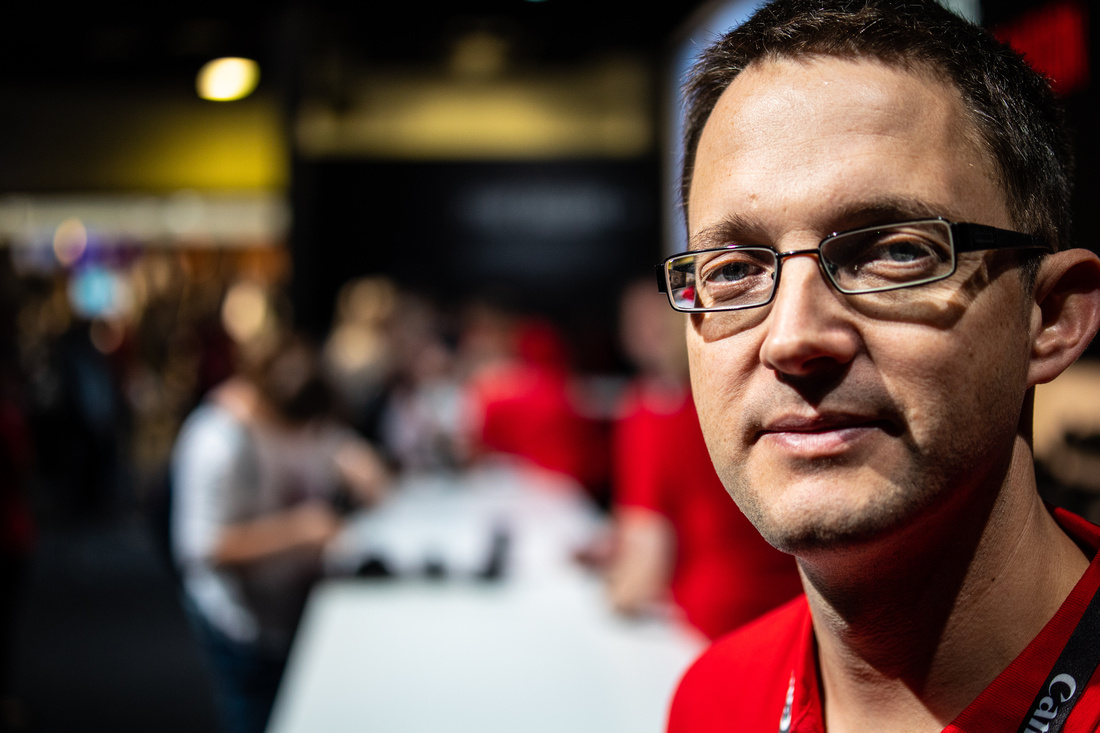
And here a real world shot... I think this will easily become my favorite lens on the M5....
Lens trials on Photokina 2018: Full Format
Testing Lenses is one of my most likely things on each photokina. I do not do any representative long test shots - but I do a couple of shots which each lens, just to get a feeling for the lens... It is pretty funny - Some lenses are mind-blowing - like the EF-M 32mm f1.4, others are soso and some are just bad...
In total I checked more than 20 lenses....
Let´s start with some specials
Yongnou 50mm f18 II @ 60 €...
Very cheap... it is a copy of Canons nifty fifty. It has a metal mount.. and feels astonishingly solid....
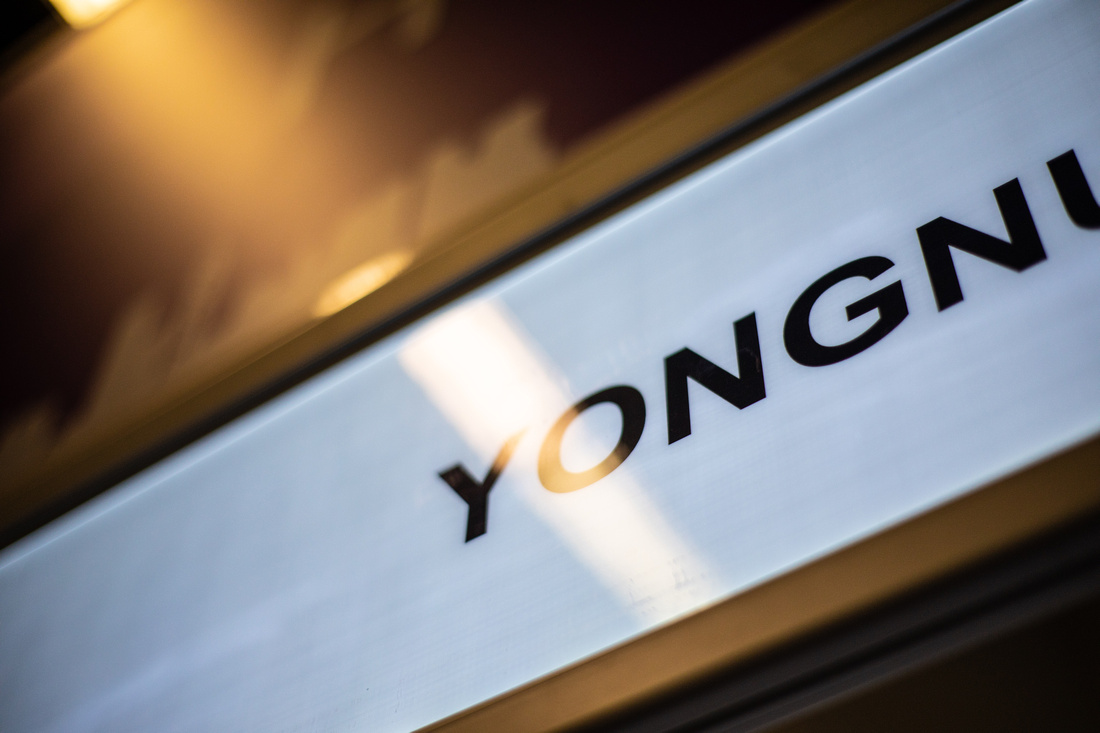
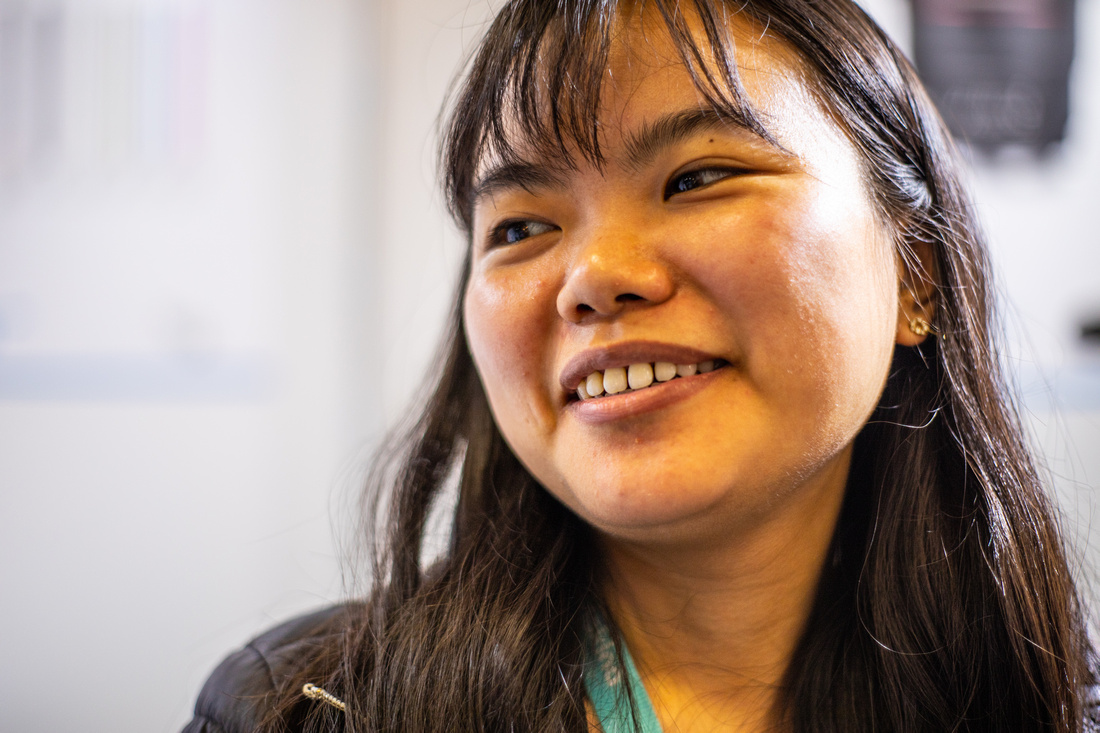
Mot shabby for 60€ I would say... For everybody on the budget - this should be effortable... the shots are made wide open with f1.8....
I tested the 60mm macro and the 14mm 2.8 as well, but they did not impress me...
Venusoptics Laowa 24mm f11
Tis is a very special lens...

The Laowa 24 mm is a remote shooting lens with an integrated LED light the distance to the tip of the lens to the camera is ca 400 mm.... The perfect lens to take photos inside of something - like a laser - where you normally cannot go inside that easy. Yes it is impressive, but the price point is hefty, too... 1600€....
Tamron 28-300mm f3.5-6.3 Di VC PZD A010
What a name... This lens is more a reasonably priced one. a lens which can accompany you on a trip - using your full format body and it gives you the versatility you need. just look at the range it covers...
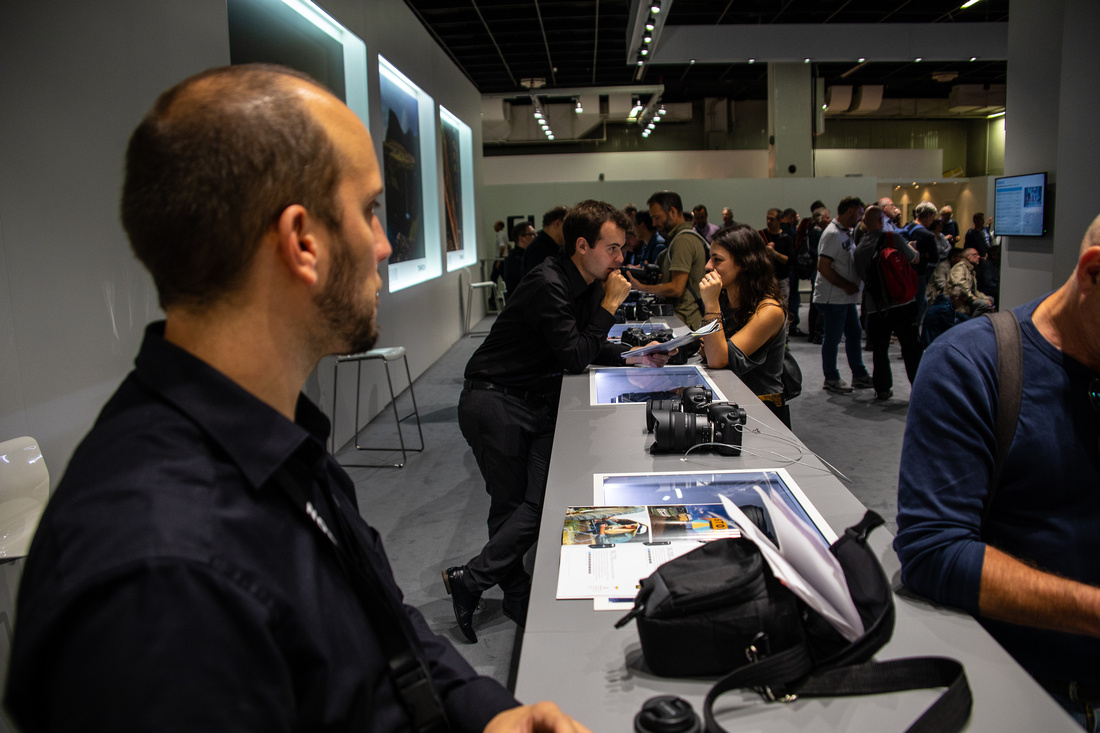
28mm, f4, ISO 800
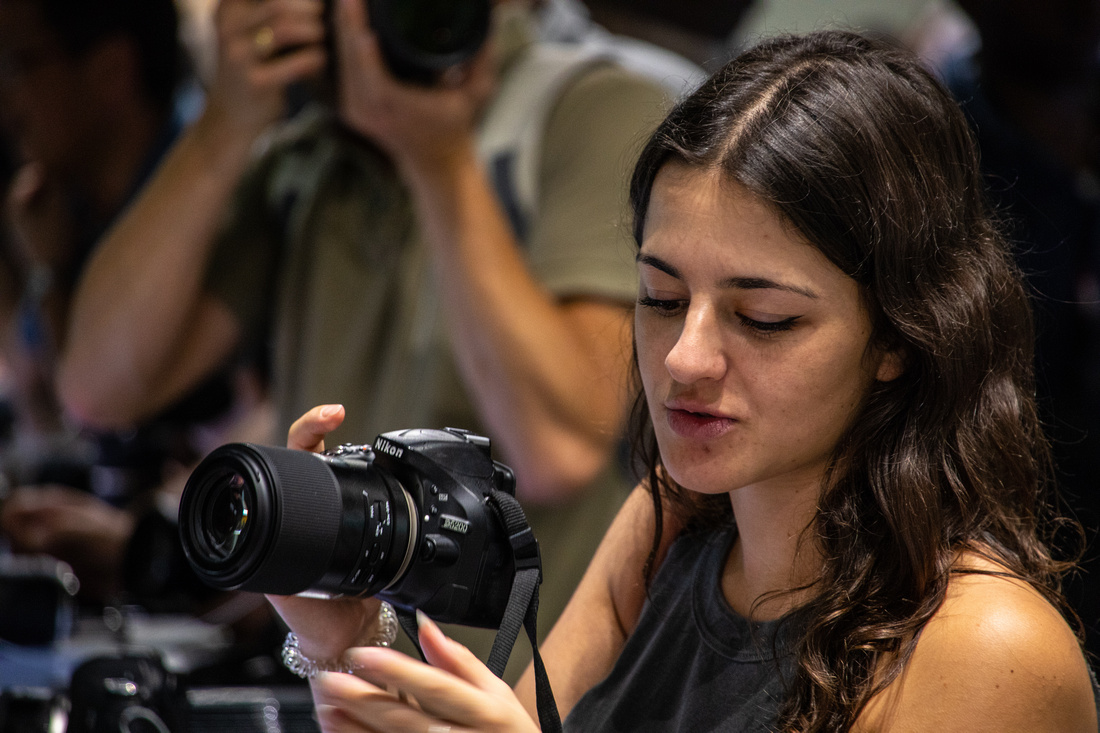 300 mm f6.3 ISO 800
300 mm f6.3 ISO 800
The first version of this lens - without VC (or OIS) was just useless. But this version: wow! it performs pretty well. I took a couple of shots in various distances and the only major concern might be the distortion of the lens..
- The price point 400-750€...
- The weight: 540g,
- Dimensions: 96mm long and 75mmø...
An ideal Full Format travel lens....
The 85mm lenses...
The 85mm lenses are some of my favorites... I do love them and this focal range and therefore I gave a couple of them a try....
The Tamron 85mm f1.8
The charge of this lens is in the sharpness, vibration control and being nicely small it is an interesting option... and it delvers nice bokeh as well

It is really a very interesting option, with 700 g pretty light weight 91mm long and a ø of 85mm...; The price point is around 700€
Samyang 85 mm f1.4
The Samyang is even more compact than the Tamron. This makes it even more charming as well as the price point of ca 540 €
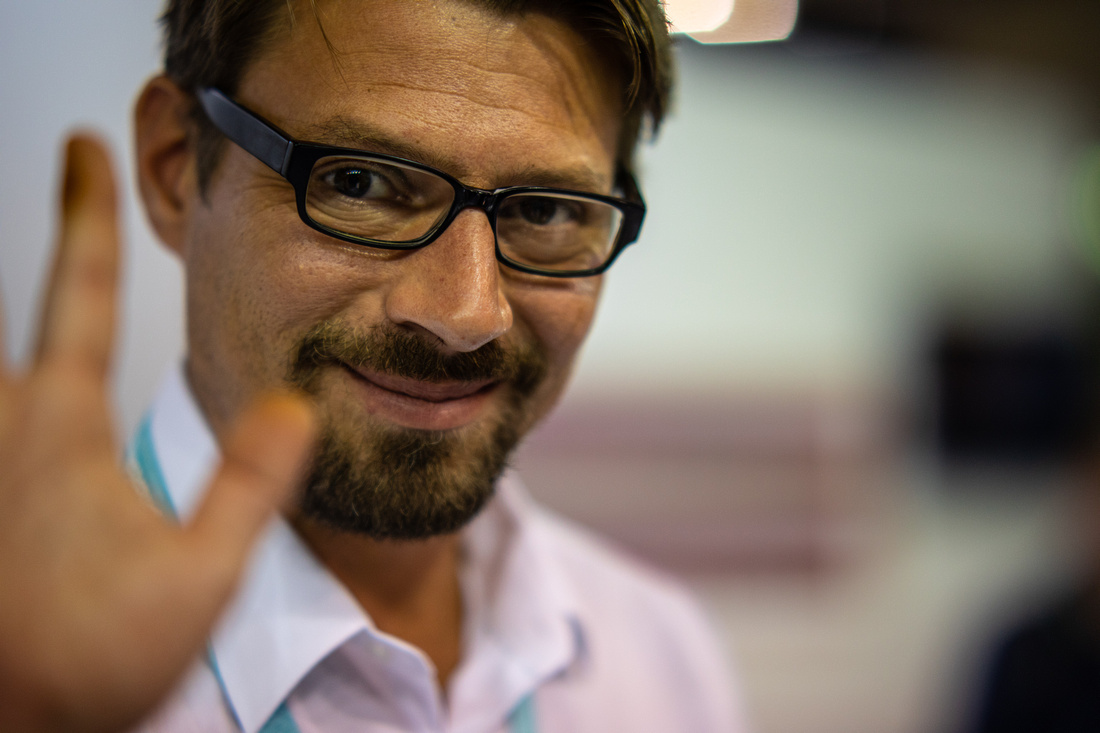 It does not has the impressive sharpness of the Tamron - but especially in combination with a mirrorless camera 485g and the lower price point are interesting topics as well... Maybe it sill find its way into my mirrorless full frame camera bag....
It does not has the impressive sharpness of the Tamron - but especially in combination with a mirrorless camera 485g and the lower price point are interesting topics as well... Maybe it sill find its way into my mirrorless full frame camera bag....
Wide angel primes
Wide angel lenses are something which everybody should have in his camera bag. Its essential on landscape as well as astrophotography... This time I was a bit focused on that what would fit to EOS R as well as being excellent - and I di end up with a couple of 14mm lenses
Samyang 14mm f2.8 AF
I do own the 14mm f2.8 manual since years. It is tiny its is good - and pretty much value for many. Samyang upgraded this lens with its new version. New optical formula, new autofocus. It remains to be small - 96mm long incl. lens hood and light - 485 g....
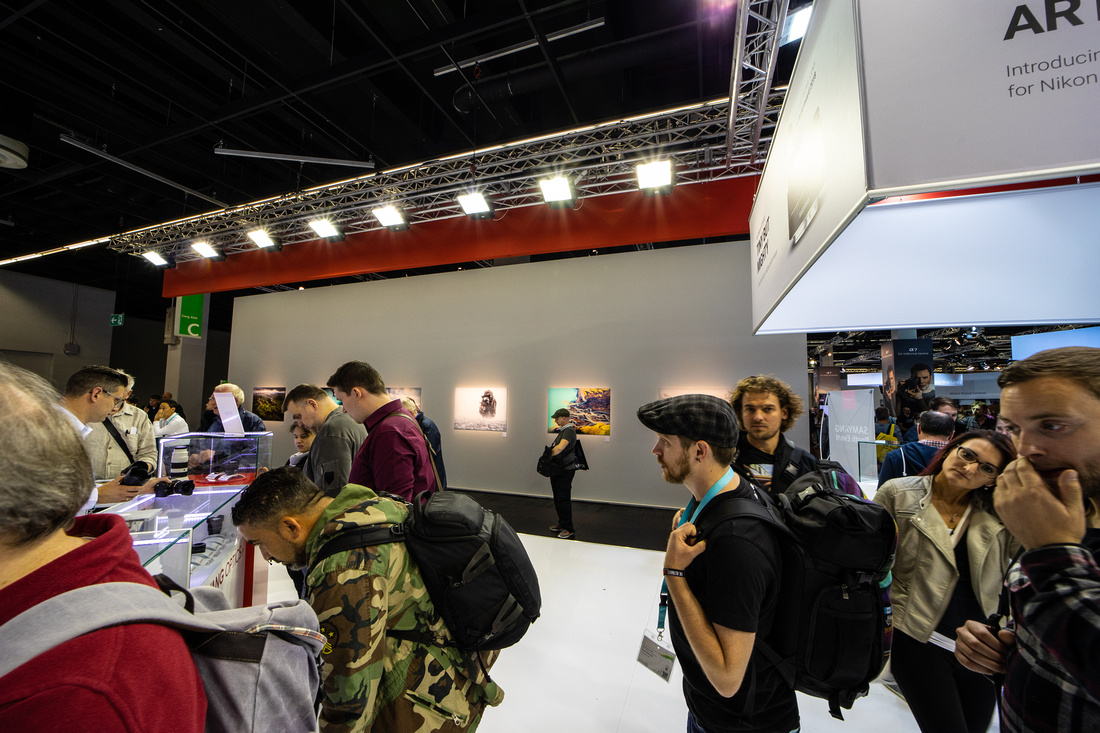
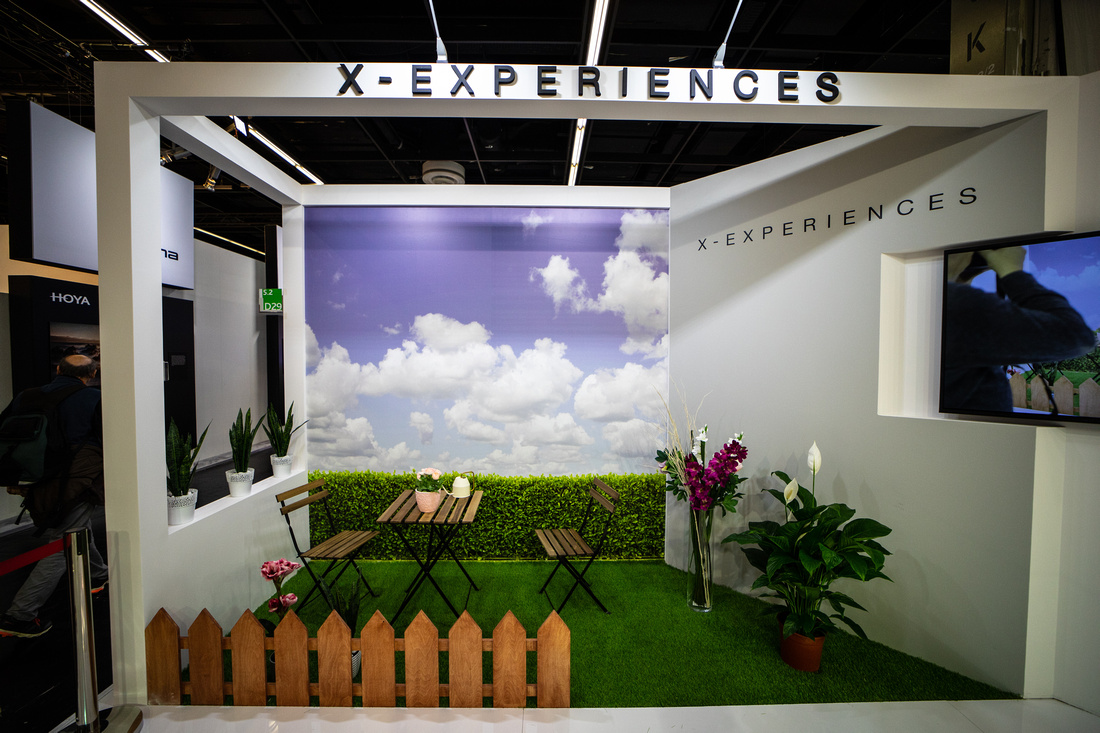
It is crisp and sharp and with the autofocus its a now brainer. But the autofocus makes the lens more expensive - with 650€ not a no brainer but in comparison to Zeiss Milvus still reasonable...
Sigma 14mm f1.8
This lens is very astonishing - f1.8 on 14mm Full Frame is unique. But it comes with a price....
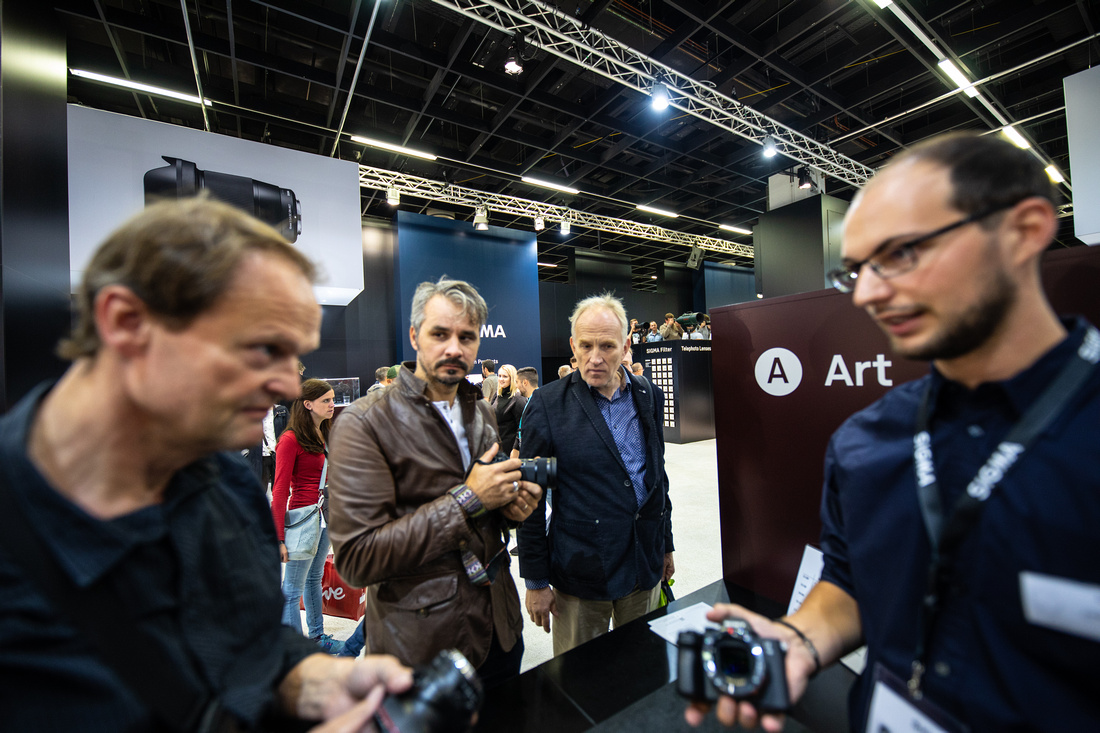
Sigma 14mm f1.8 - unfortunately being sharp at infinity... but really sharp
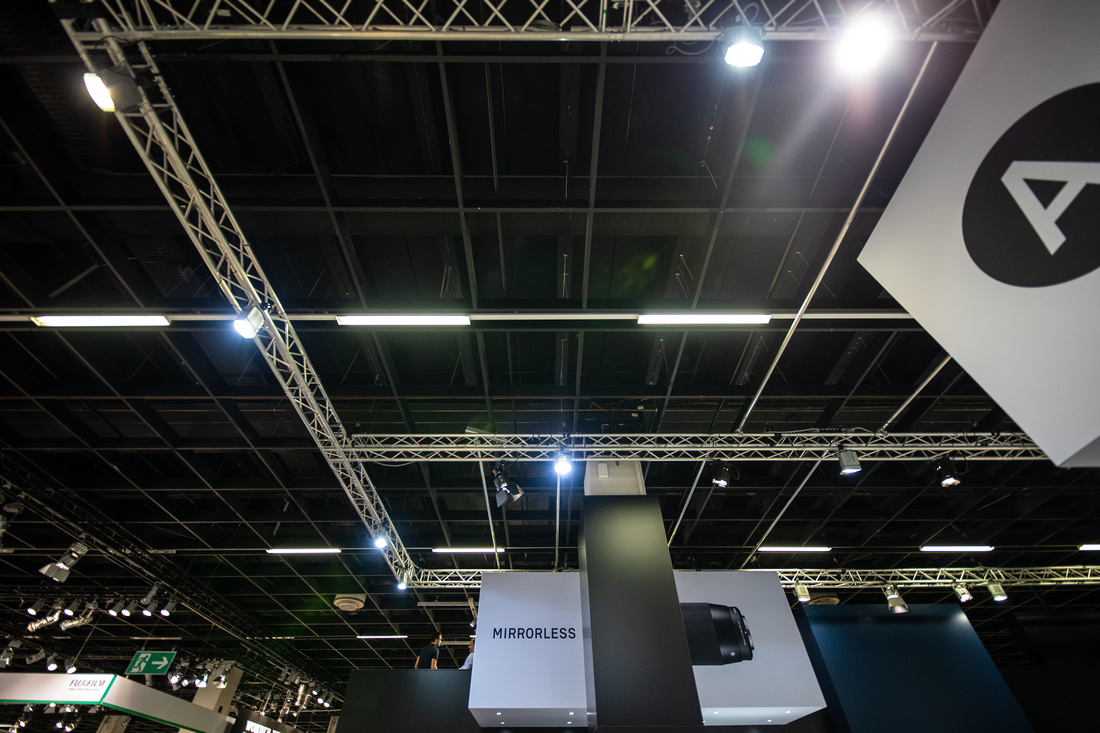
This image was shot to look at 2 points: lens flare as well as lens correction. The lens flare is maybe not optimal, but the correction is awesome as well as the corner sharpness.
The "downsides" of this lens: weight: 1,2kg and price tag - 1.450 €. Which is on one site fair for the performance on the other side really valuable....
Samyang 24mm Tilt Shift
This was a funny experience... to stitch a handhold pano with a tilt shift lens...

I did not apply any lens correction - simply because lightroom does not offer this... for that lens. For my taste the viewing angle is not wide enough that I would add it to my lens portfolio but I believe that a wider lens like 17mm would be worth owning....
Wide Angle Zooms
There are a couple of pretty extreme wide angle zooms on the market. On the last photokina I tested the Canon 11-24mm f 4.0 - which is an amazing lens. Thin time There were some other lenses more in the focus...
Sigma 12-24 f4
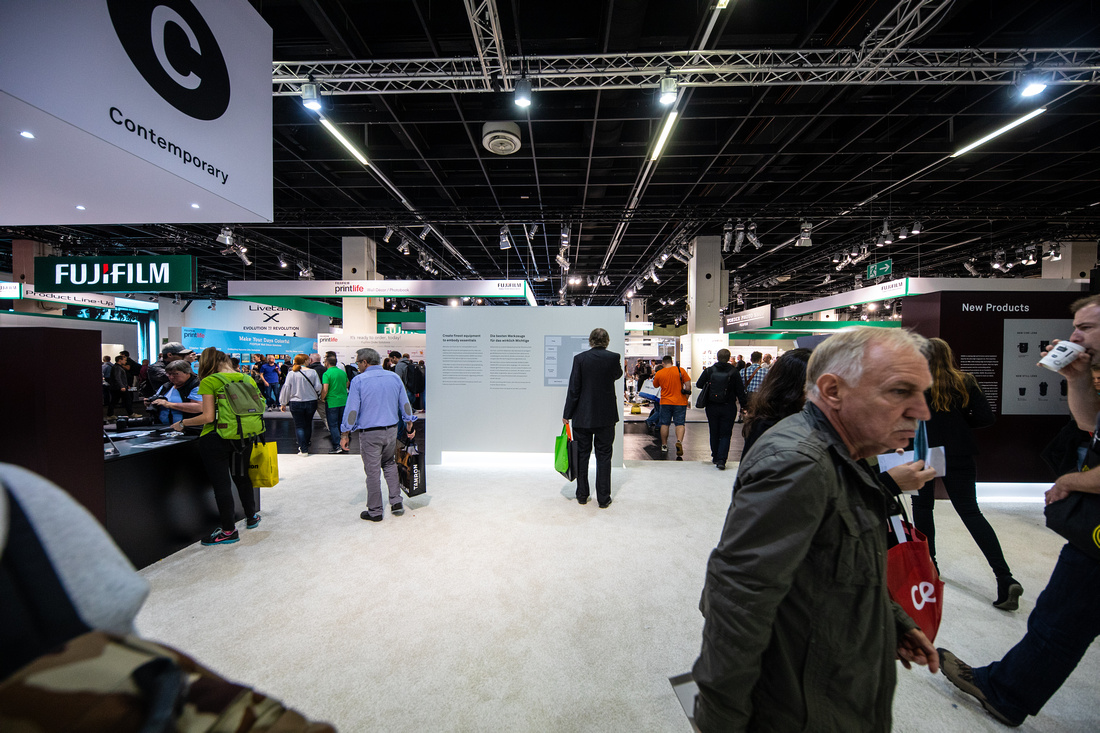 This shot was made to check the straightness of the beam on the top - to check the lens distortion. I find it pretty impressive what Sigma is delivering here....
This shot was made to check the straightness of the beam on the top - to check the lens distortion. I find it pretty impressive what Sigma is delivering here....
Sigma 14-24 f2.8 Art
This lens is pretty interesting - because it is the widest f2.8 Zoom on the market

As a fan of bokeh... yes even at 14mm there is some... it is a very interesting lens for everybody who wants to go with faster zooms than f4.0-- The price tag is with 1400€ reasonable - as well as the weight - 1150 g...
Panasonic Lenses
After switching to Canon as my standard travel gear I still do like the µ43 format and my Panasonic gear. I am still convinced that for special applications this equipment os outstanding - f.i. for hiking or bike riding.... It is always interesting what kind of gear is new - and this time it was more the lenses which were attracting me...
A few Prime Lenses for µ43
Panasonic G25mm f1.7
While traveling with the Leica 25mm f1.4 I wanted to get a little impression of this lens. It is kind of a "NiftyFifty" Lens for µ43. With a price range of 150-180€ it is still not on par with the original nifty-fifties of Nikon and Canon - but it closes the gap...
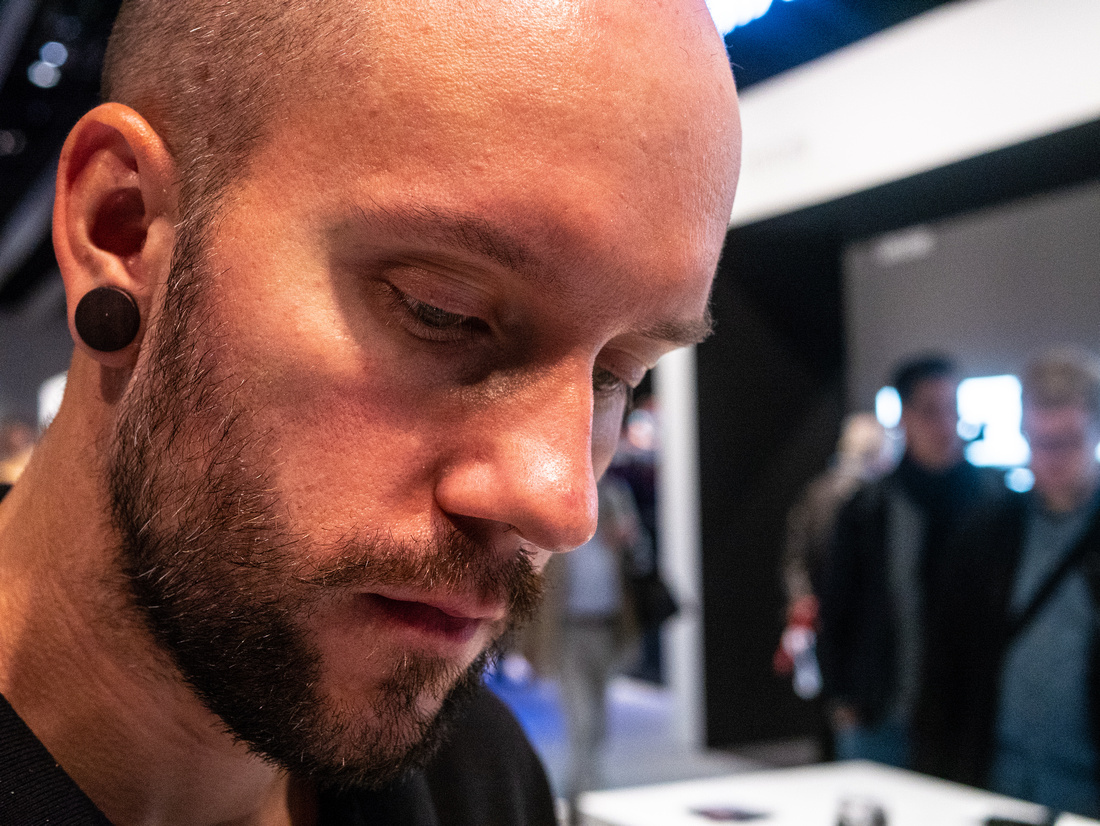
Unfortunately the camera was set at f4.0 from previous lenses.... but it clearly shows it potential.,
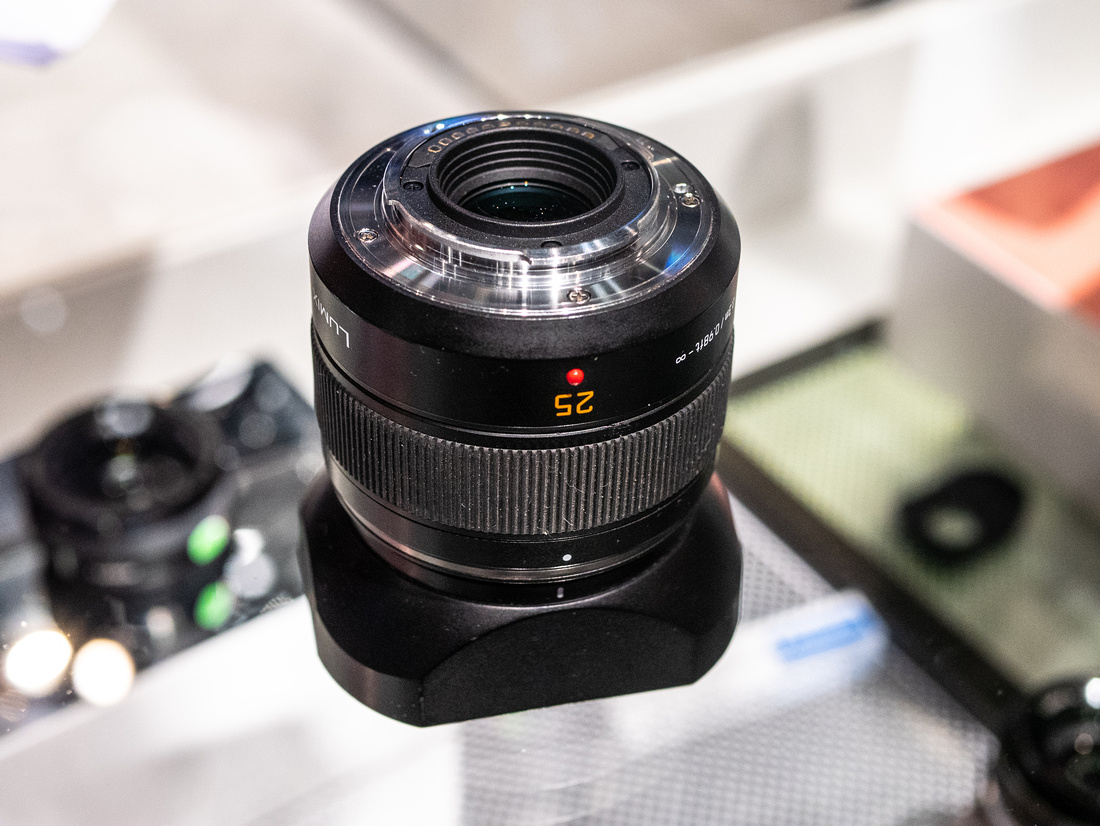
I clearly like to say: this lens is very useable as an entry level prime lens in the µ433 line up.... good to know that this exists...
Panasonic Leica DG Elmarit 200mm f2.8
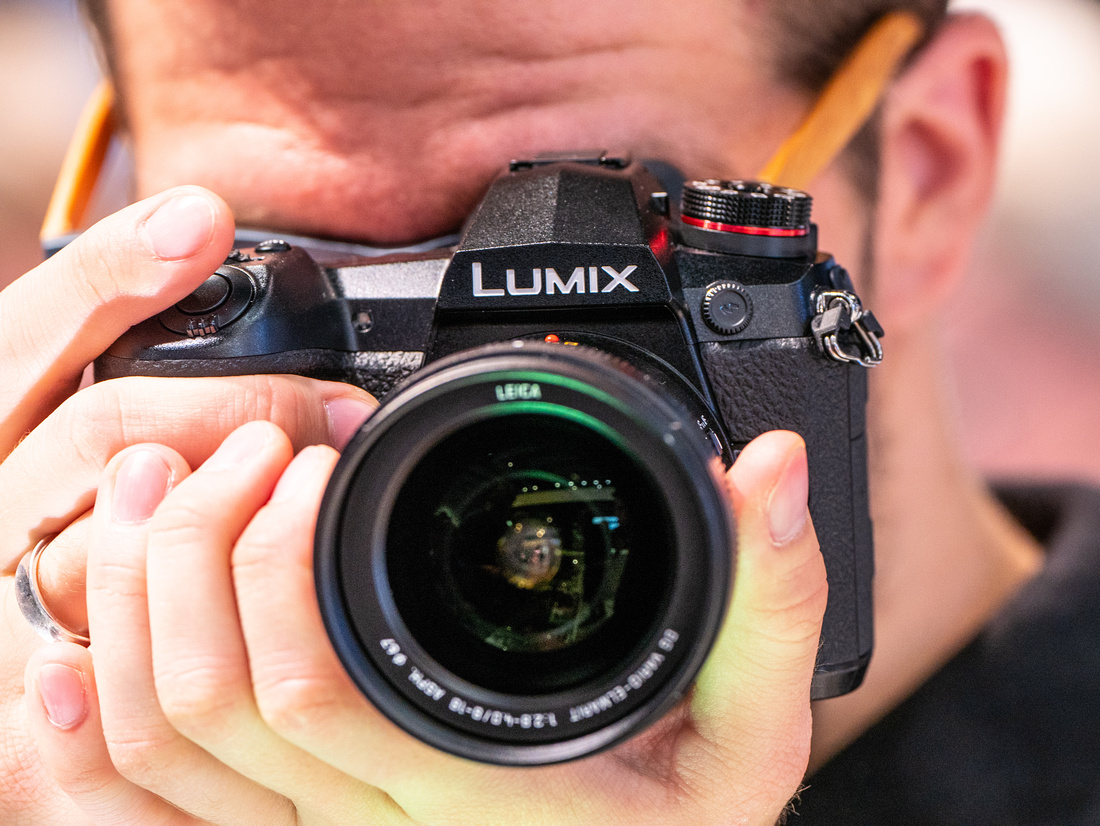
The 200mm f2.8 is an excellent performer... it is relatively light - in comparison to a 400mm lens... but in comparisons to my Canon FullFrame it is heavy.
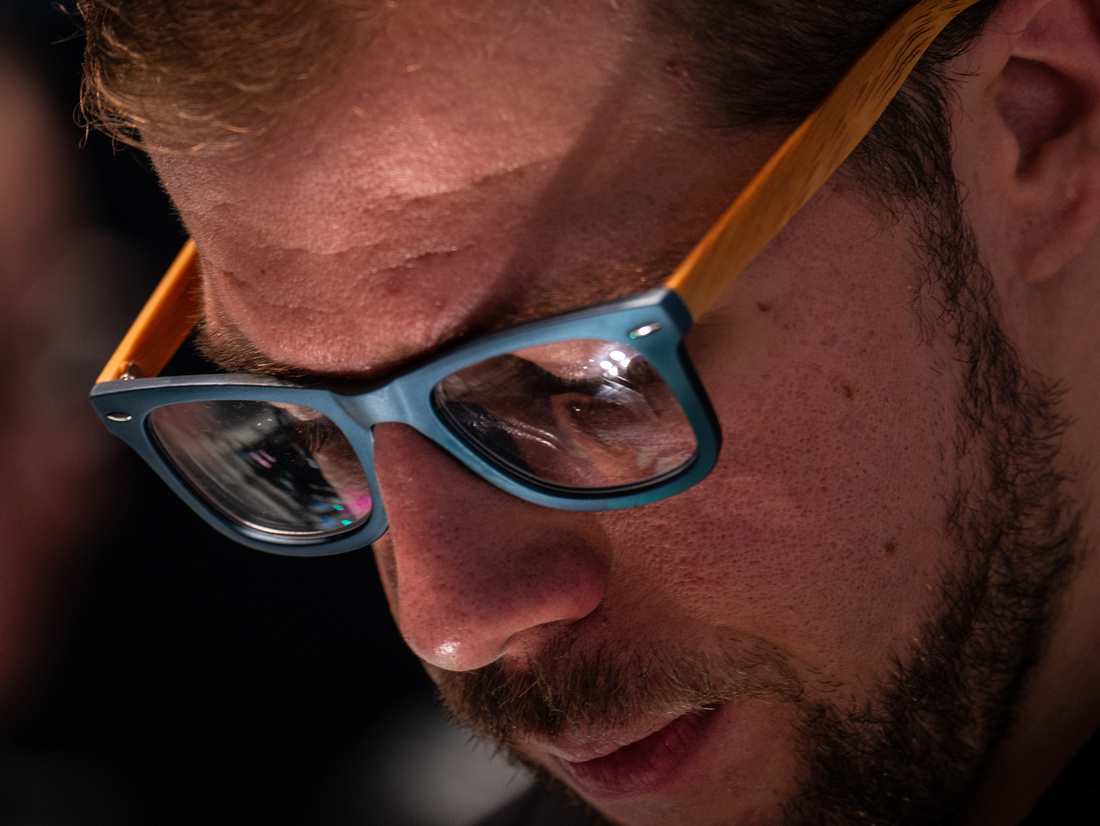
But I do like how it use rendering....
Some Zoom Lenses for µ43
This year I got the opportuniy to put some of the new Leica lenses on my GX80. They are variable open aperture - but this is an ongoing discussion. It allows them to be small.. and this they are - especially for the range you get...
Panasonic Leica DG 50-200 f2.8-4.0
This lens represents a focal rang which I really like for wildlife and sports. In comparison to the Canon 100-400 it is one stop brighter - so it minimizes the loss of bokeh - and makes it easier in low light
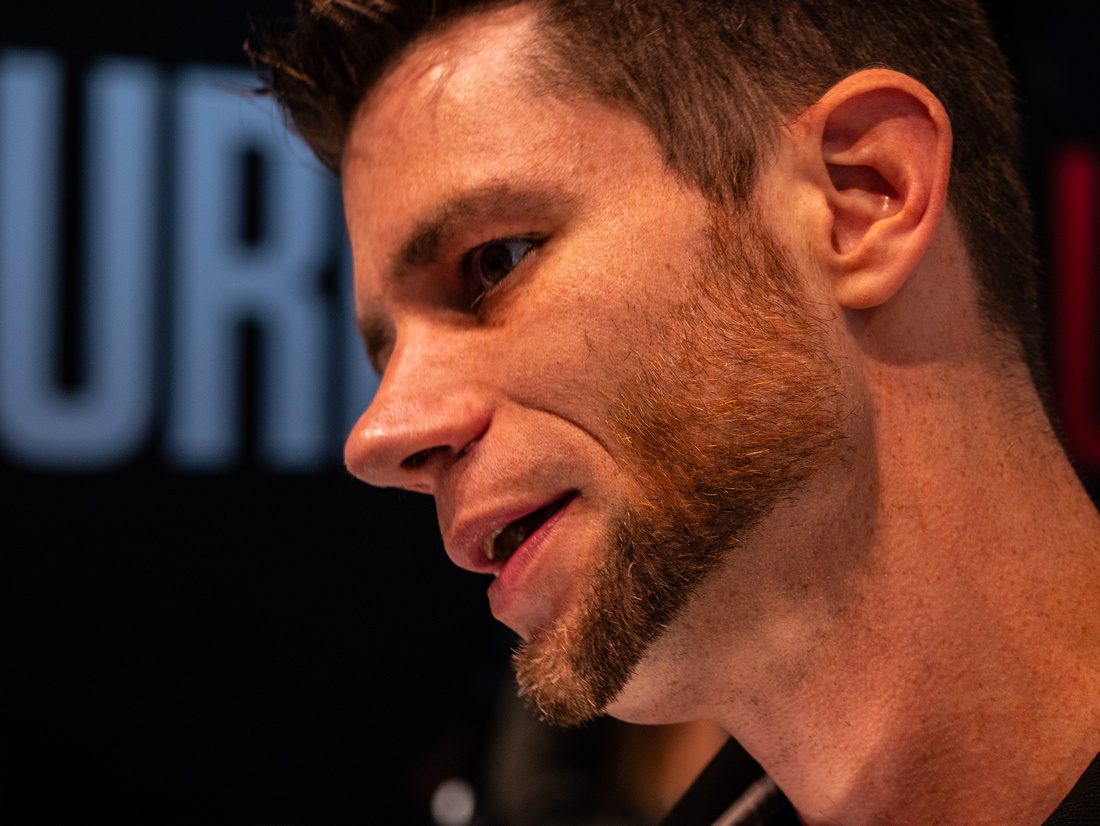
The first image above is taken at 50mm and f 4.0. not bad, or?
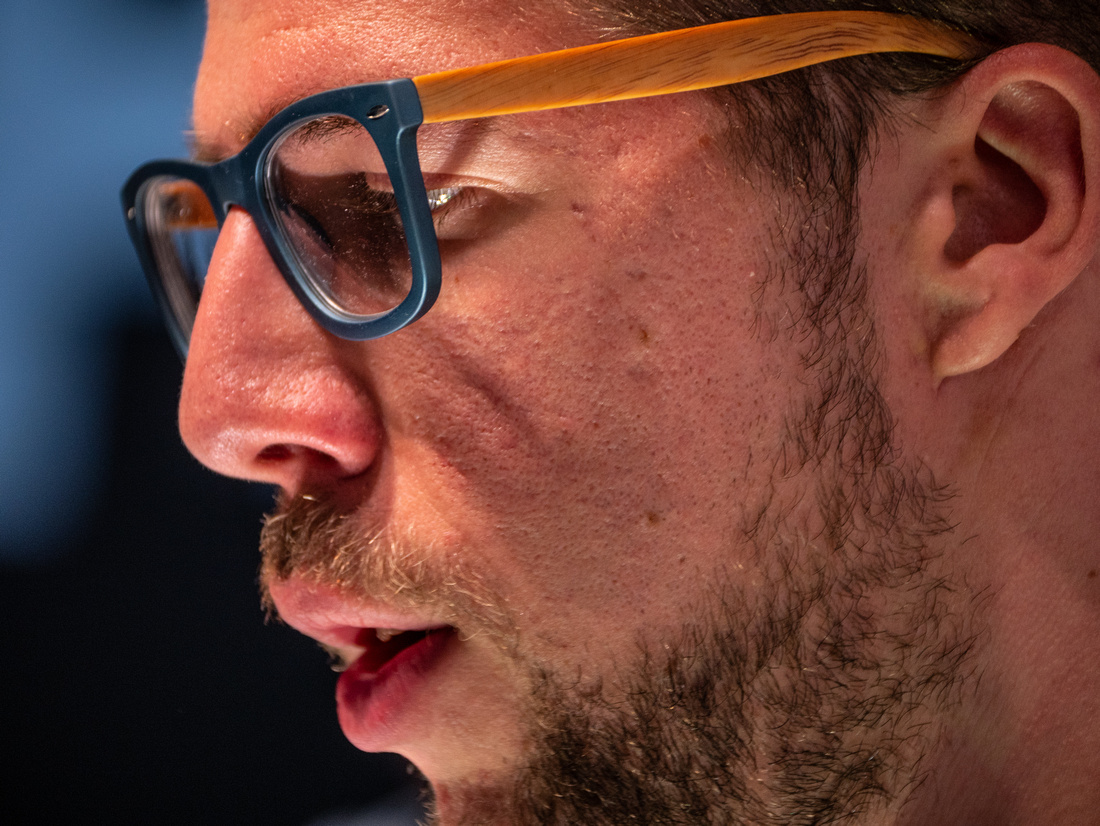
The next photo was shot at 200 mm. I am amazed how sharp this is... it is taken @ 1/100 sec... I am not sure that you get it that easy sharp on the Canon side: IBIS plays in and shows what is missing if you do not have it...
Panasonic Leica DG 12-60mm f 2.8-4
The 12-60,mm focal range is the universal high end lens of Panasonic. With the apertures chosen it is definitive no "bokeh-monster".
But it is definitely an excellent performer in color rendering and sharpness all over the focal range....
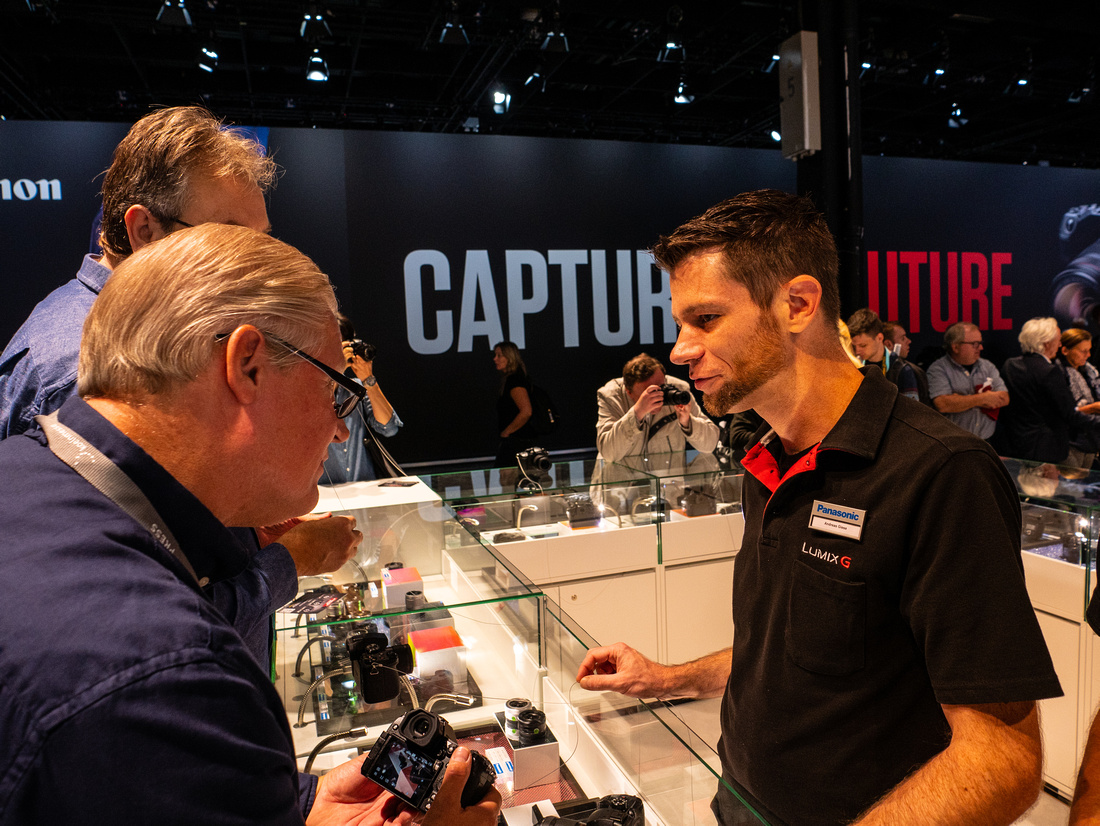
The first image is taken at f4 and 12 mm. the lines are straight - but the depth of field is huge as well....

At 60mm there is another picture: f4.0 gives you bokeh in headshots - and a pleasant one as well... so it is a lens which I can recommend... and if you go hiking - the combo with the 50-200 gives everything you need - in nature...
Panasonic Leica DG 100-400mm f 4-6.3
This is a stunning lens if you look at the focal range from the full format perspective. a focal range of 200mm - 800mm does not exist at all.. On the other site: 100mm - 400mm is a kind of standard lens for Fullformat... very capable especially for sports and wildlife...
My first tryout 2 years back left me with some mixt feelings - but this time it was convincing... really...
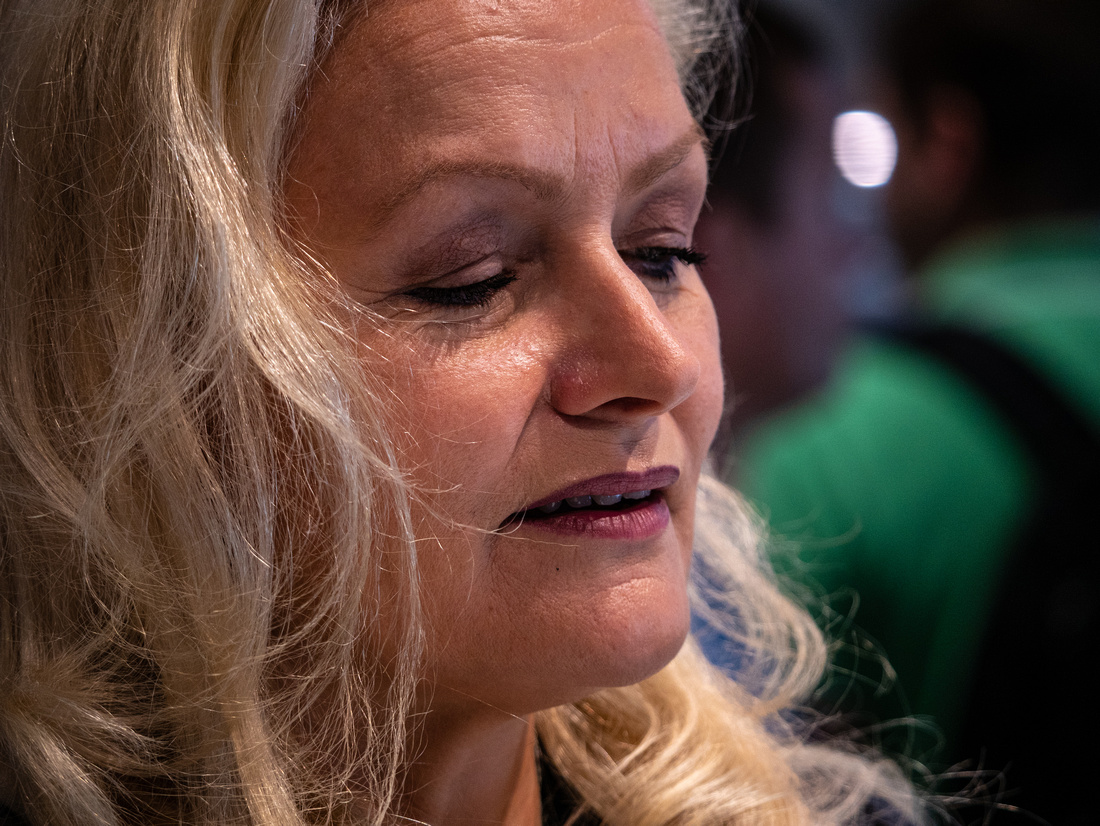
The shot was made with f4 - which is wide open at 100mm.... I take it...

And this one at f6.3 and 400mm... 1/160 sec exposure time... But wait...
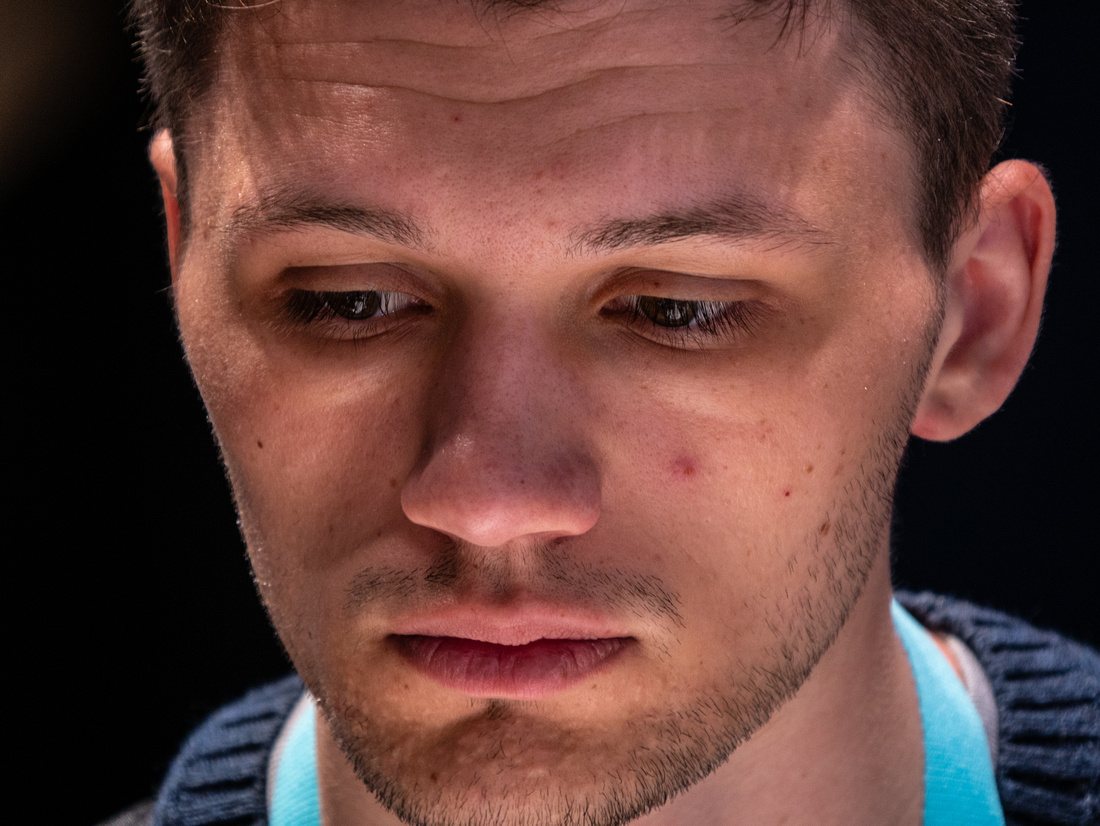
This photo was taken at 1/40s... at 400mm.... more than 4 stops against the rule of thumb.. Very impressive indeed....
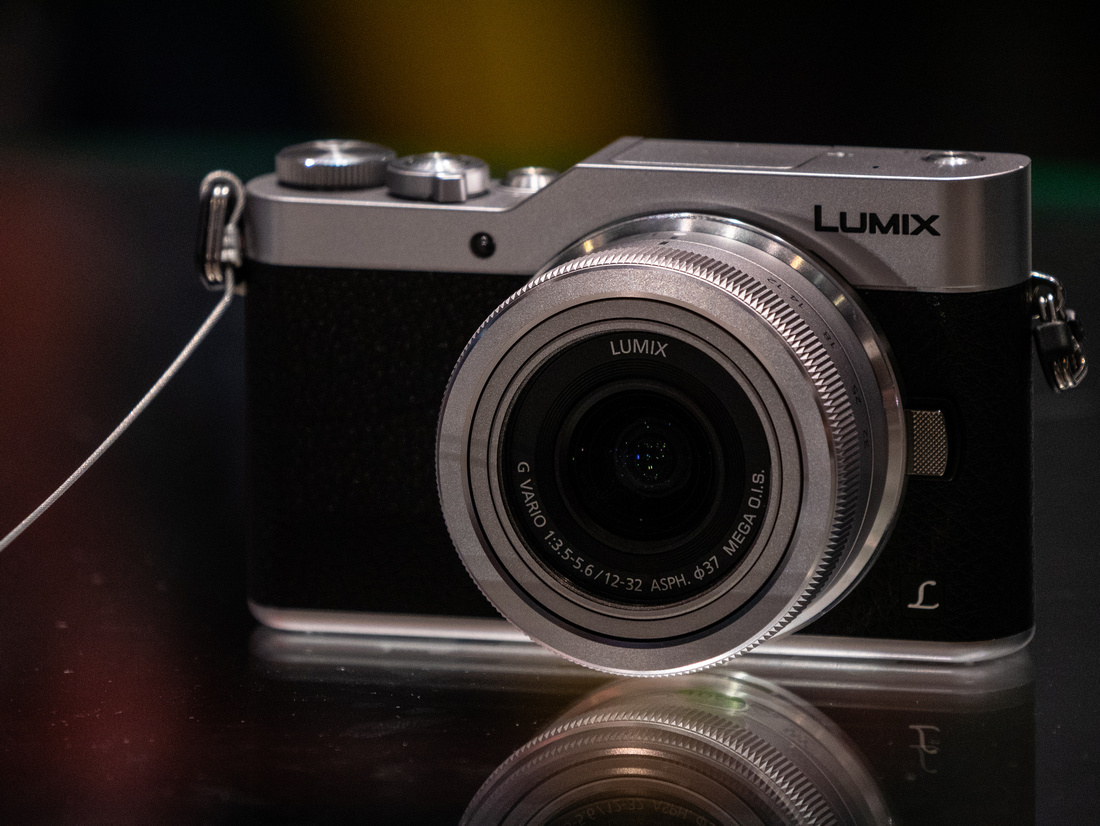
Another topic is the close up range of this lens... It makes it to a very versatile long telephoto lens - interesting for sports and wildlife... Especially when Autofocus is getting better and better....
After a ling time it was fun to use µ43 again. And the awesome Leica lenses are delivering stunning images.... if compactness matters - still the way to go....
Verdict
Going to Photokina is always fun. But take your body with you and take images... It is amazing what the companies develop to give the crowd the possibilities to shoot.
Technically this Photokina has shown the break through of mirrorless full frame. It is a question of time until the flaws of mirrorless cameras are overvcome...
I doubt that the new yearly cycle will be a step up. Even if the development cycles are going down - I believe that for high end products the live cycle is increasing. Panasonic is showing this clearly - changing from the early yearly cycle to meanwhile 2-3 years lifetime - while Canon has a 4 year cycle for their high end market.
Since the cell phones are taking over more and more the performance of cameras only the high end is going to survive anyhow I guess...
Miscelleanous.
I have taken all photos in public. I hope that nobody who might find his personality rights not suitably respected: please send me a mail and i will take your images out of my blog as well as out of the related image gallery.
For the moment this blog post is a bit work in progress. But I wanted to start with the highlights. During the next couple of days I will add some more content.
The images were taken with the following cameras:
- Canon EOS 5D Mk IV
- Canon EOS M5
- Panasonic Lumix GX80
- Apple iPhone x plus
I gave the images my standard development preset - but no lens correction etc...
The full size images are available here.
I hope you do have fun with it...
]]>
End of December 2016 I bought my EOS M5. I added some native lenses to this Camera - there are not so many but those are pretty good ones. And since that I literally stopped shooting with my µ43 gear and the EOSM5 became my "always with me" gear. And one more thing: When i take my EOS 5DMkIV with me - the M5 was the APS-C body and not the 7D MkII....
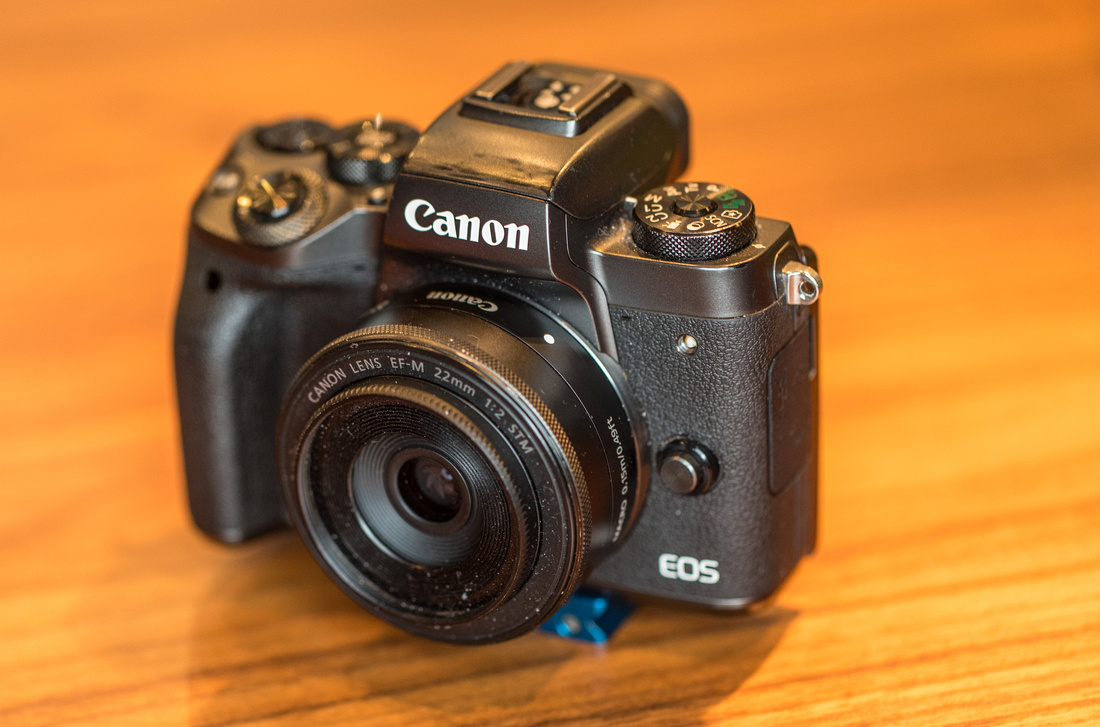 Yes: this camera is used... a lot....
Yes: this camera is used... a lot....
I am pretty happy to see that some other reviewers start to identify this camera as that what it really is: an awesome peace of gear - and definitely a really great camera.
What did I do with the M5
First of all: a lot of traveling as well as product photography. Additionally I used the camera on family events like weddings...
The M5 has seen quite a bit of the planet:
- USA
- China
- Japan
- HongKong
- Italy
- France
- UK
- Switzerland
Most of the trips came along with my regular business, but some of the trips had been with the family. I do want to share some of the Very best photos from all these trips here....
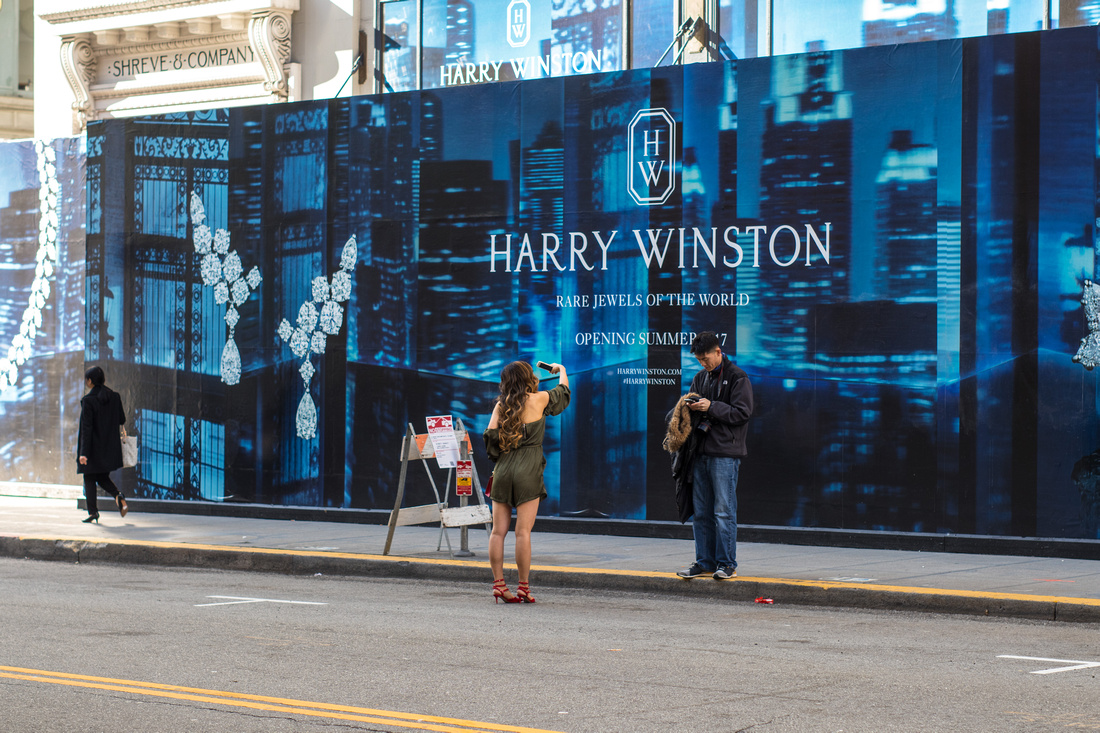
This Photo was shot in San Francisco with the Zeiss Milvus 50mm f1.4. The amazing part of this Selfie was: It was really cold....
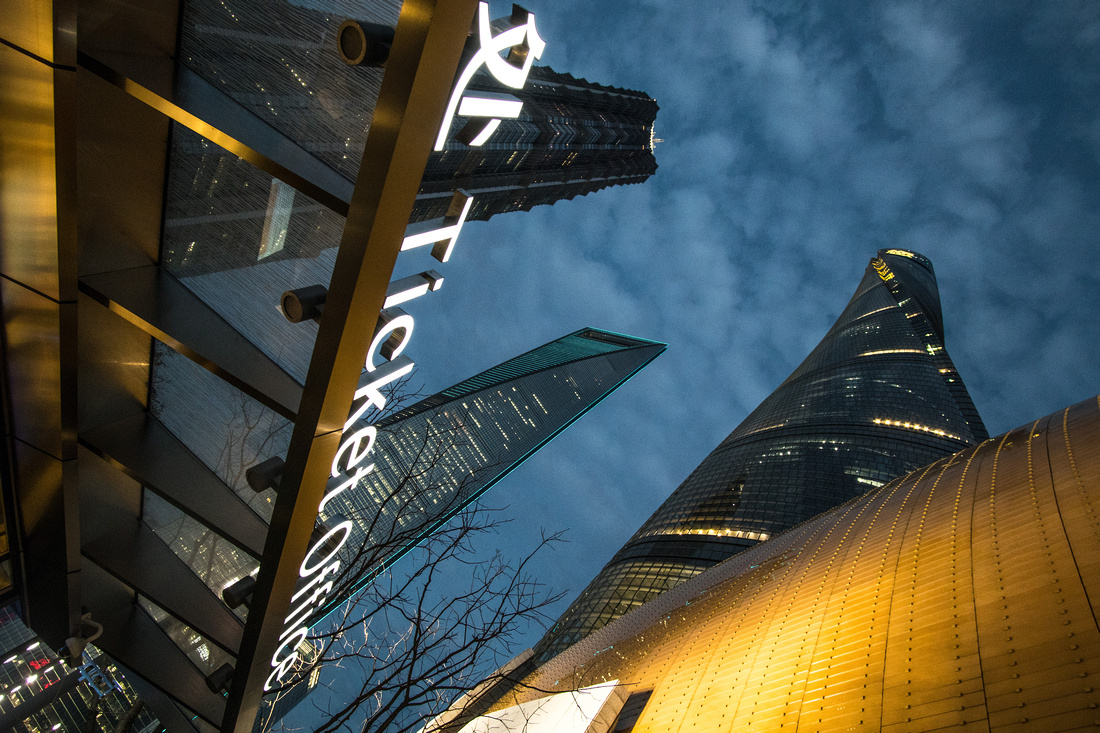
Shanghai... Top of Shanghai... Shot with the Samyang 12mm f2
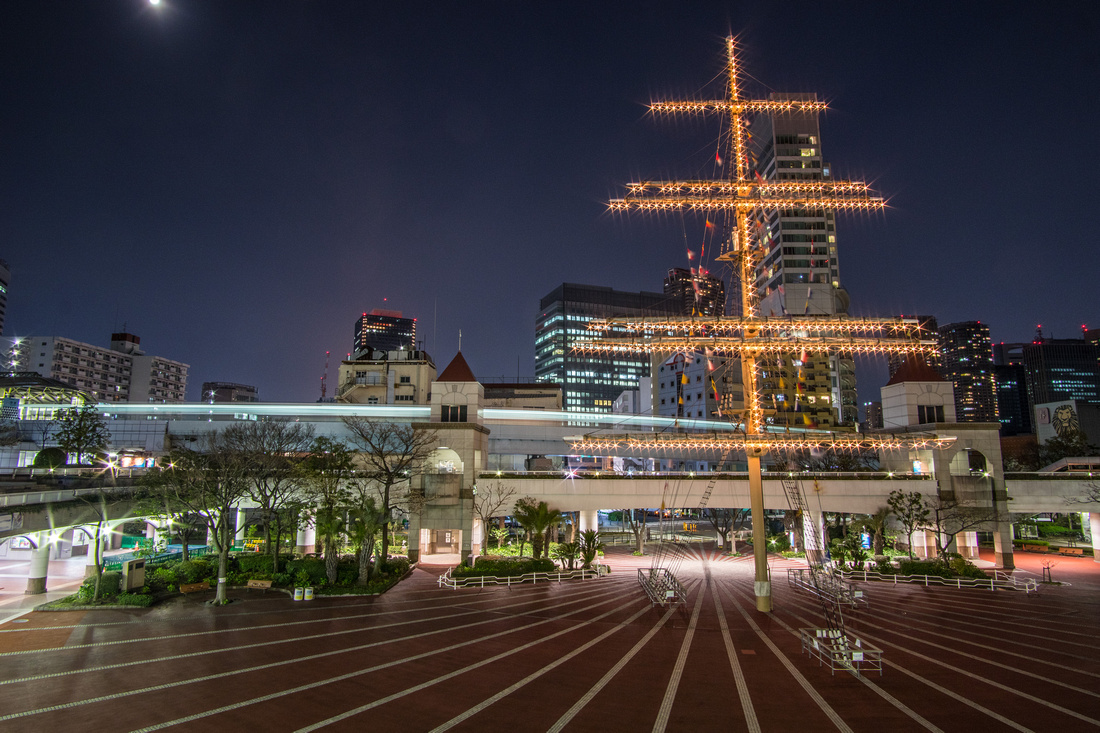
Tokyo... this time at the harbor.... Again the Samyang 12mm f2.
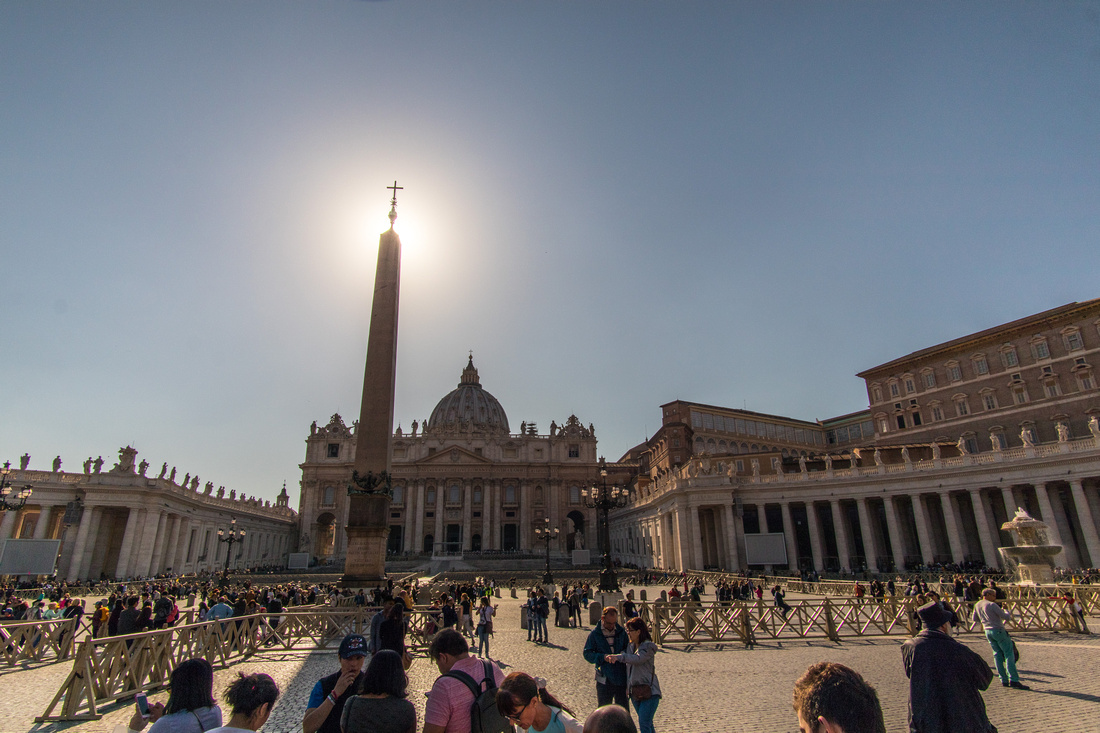
Rome... St Peter. Again: the 12mm f2....
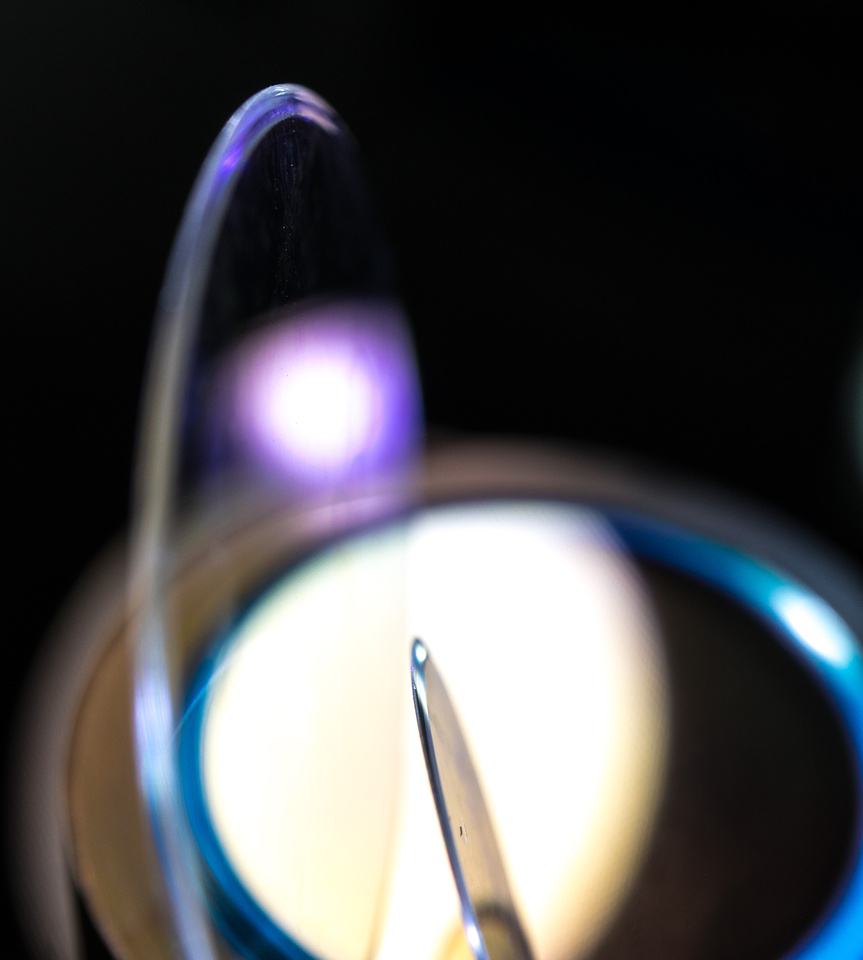
This is a product shot: Thin Disks for Thin Disk Lasers... This time the lens is the EF-M 28mm f3.5 macro STM
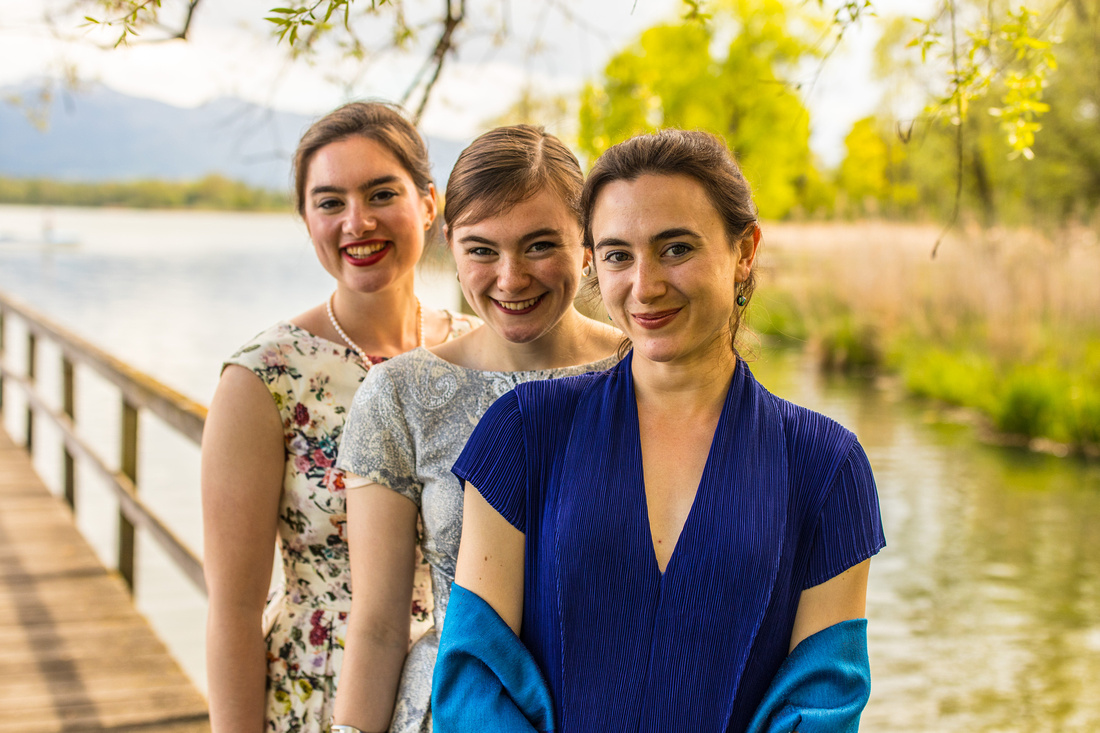
This 3 girls I shot with the EF 35mm f1.4L USM MkII
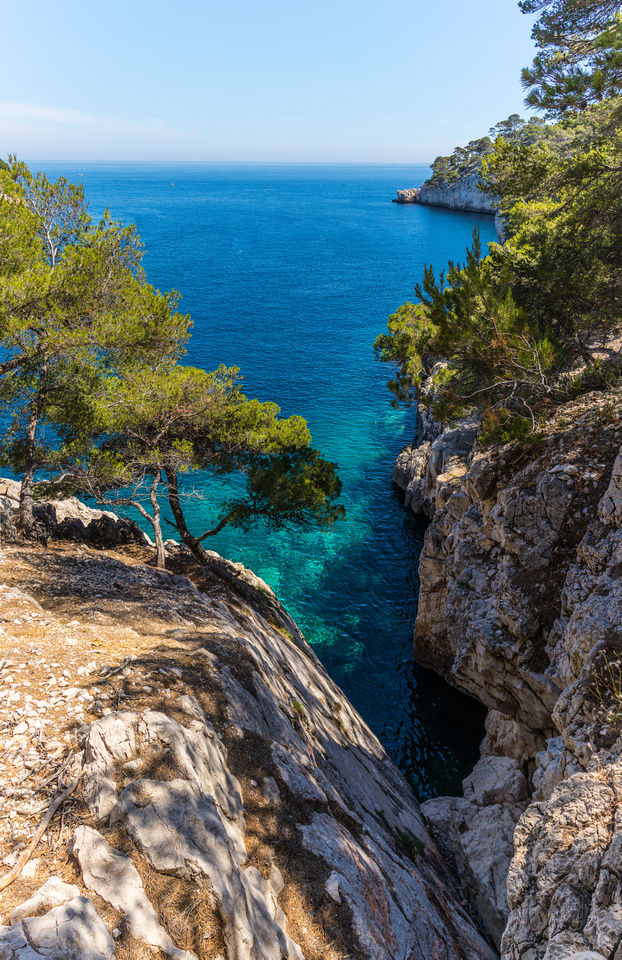
The Magic Calanques close to Cassis in the Provence, France. A panoramic shot with the EF-M 22mm f2.0
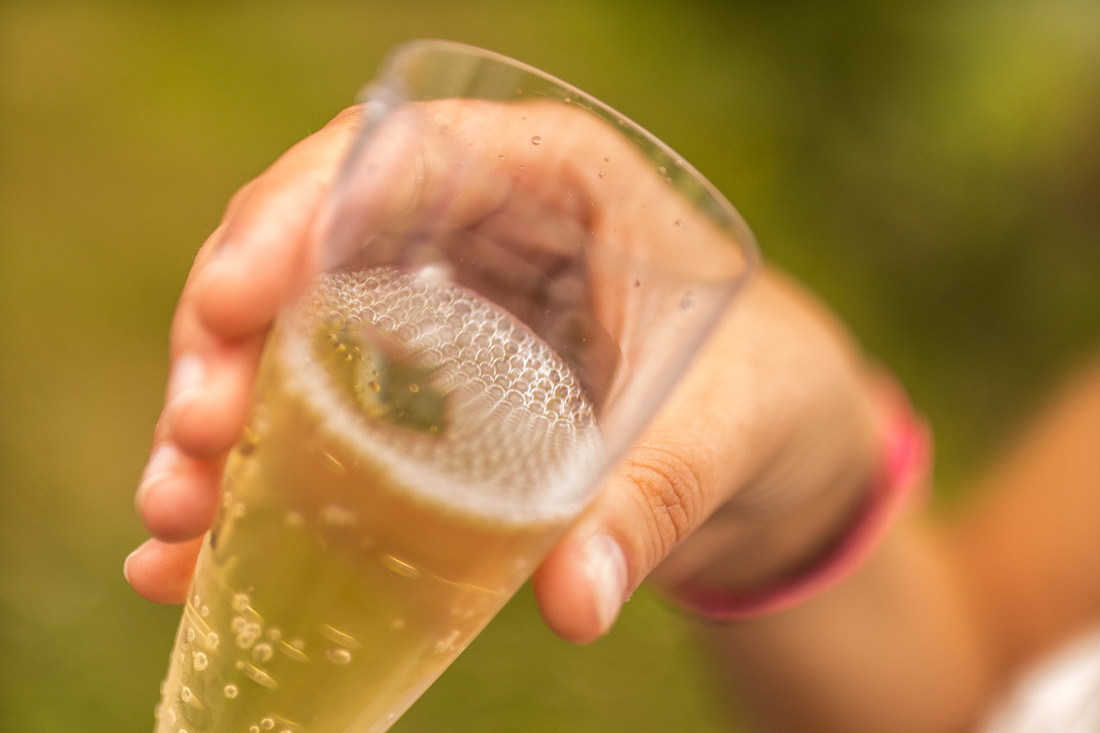
Again the EF 35mm f1.4L USM MkII - on another wedding.....
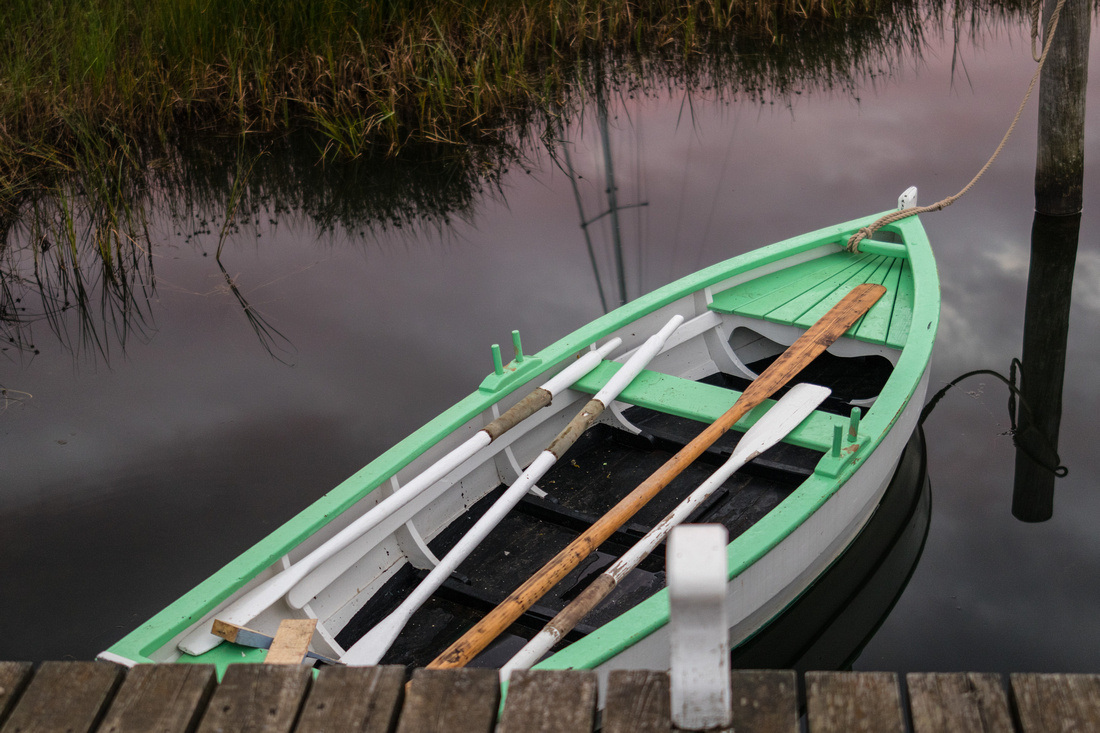
This shot I do love due to the color rendering. Not much processing... It was shot during a test period of the brand new Zeiss Milvus 35mm f1.4... More about this lens in my review. Location: Marstal, Denmark...
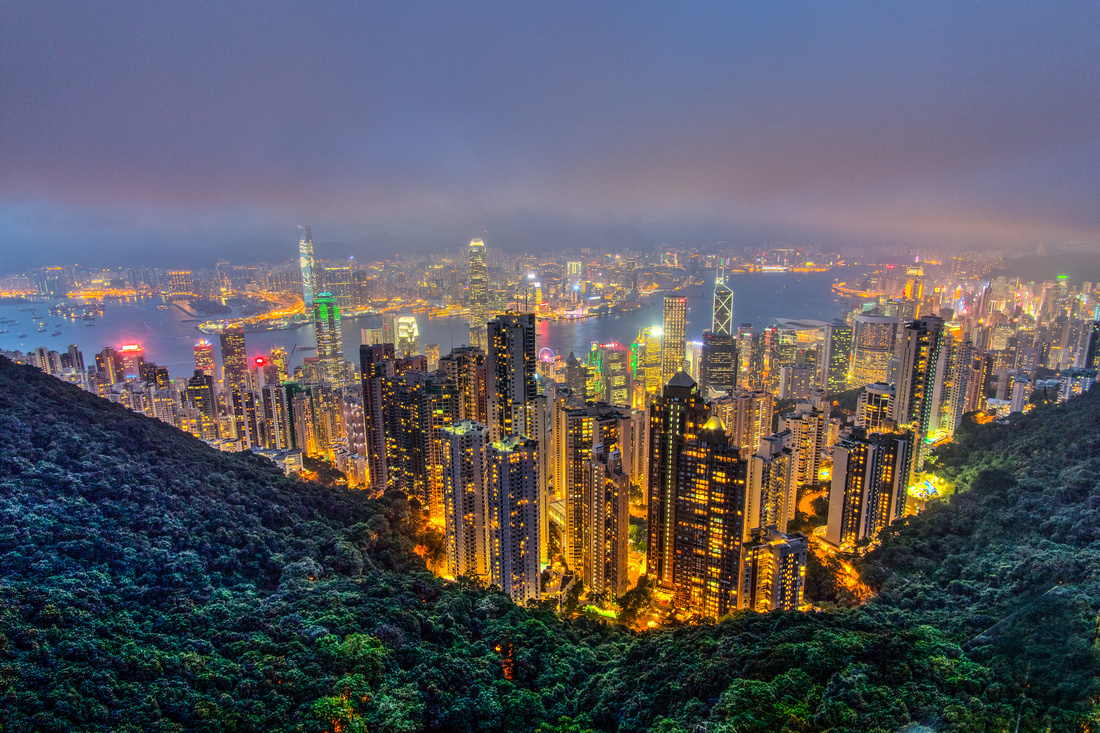
Hongkong.... Victoria Peak. Shot with the Samyang 12mm f2
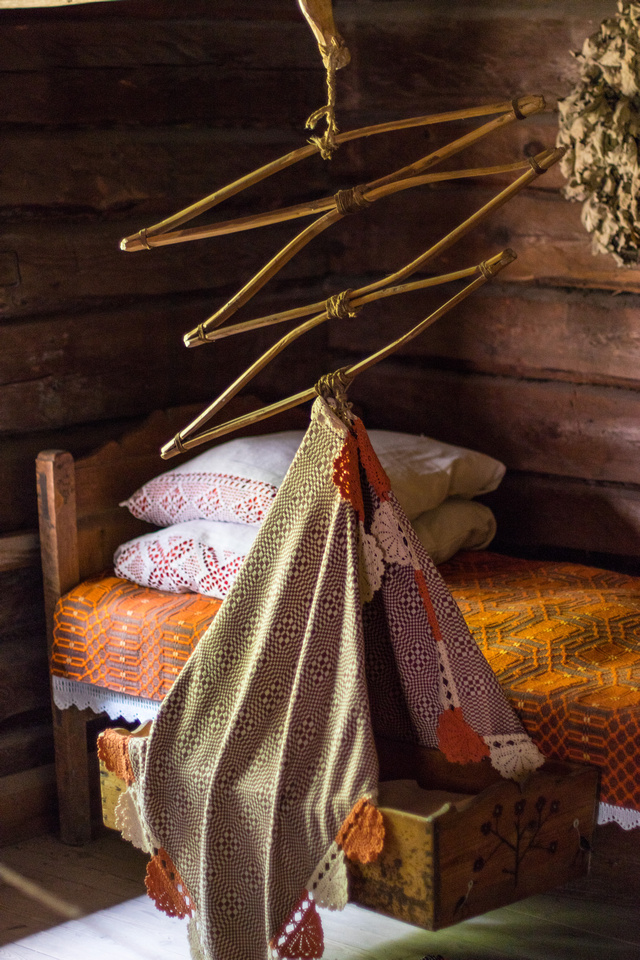
The Latvian Ethnological Open Air Museum in Riga.... here a little baby swing... this photo shows the dynamic range of the M5... The lens in this case: the EF-M 22mm f2.0

A little bit of a fun shot... The Moose in front of the fence.... shot with the EF 200mm f2.8.... in Jackson
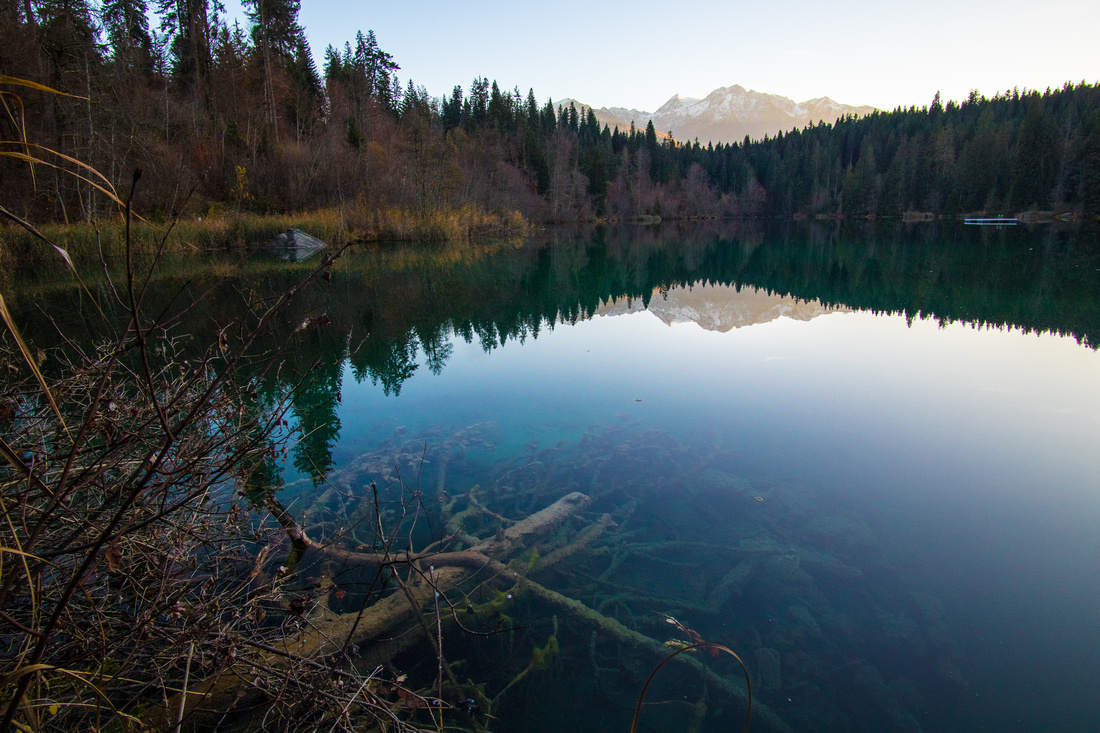 Flims Switzerland. This is Lake Cresta, one of 2 really magic lakes there. Shot with the Samyang 12mm f2.
Flims Switzerland. This is Lake Cresta, one of 2 really magic lakes there. Shot with the Samyang 12mm f2.
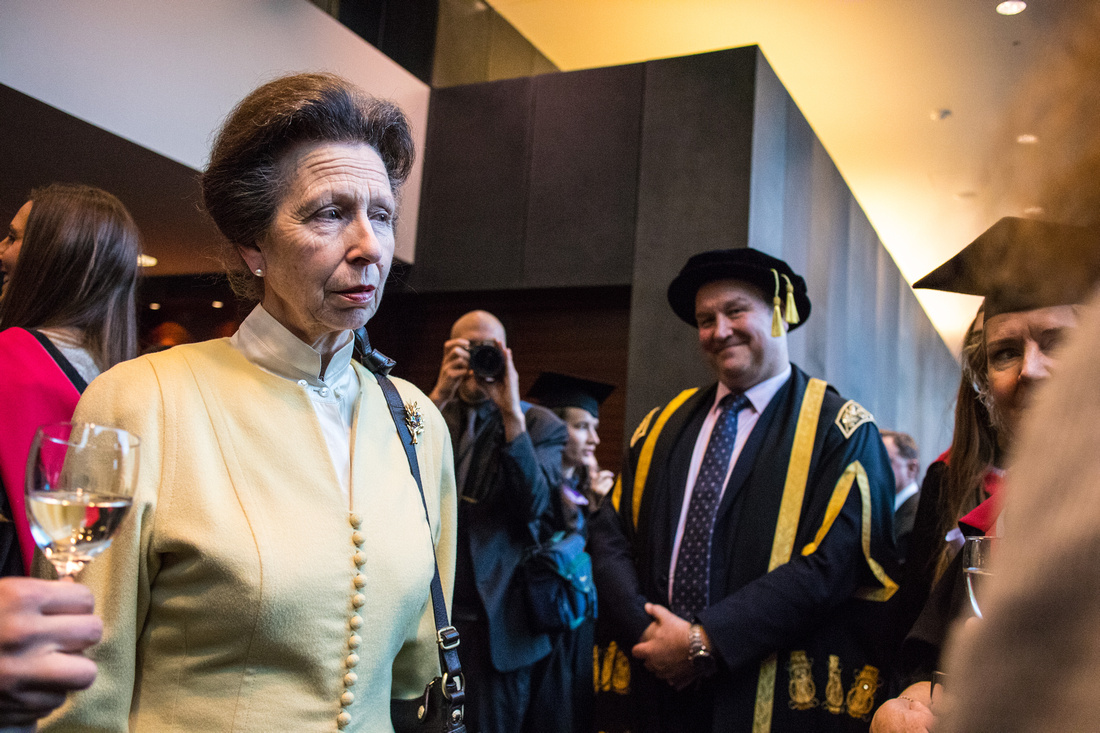
London, Princess Ann at the Graduation of the University College of Ostheopathy... shot with the EF-M 22mm f2...
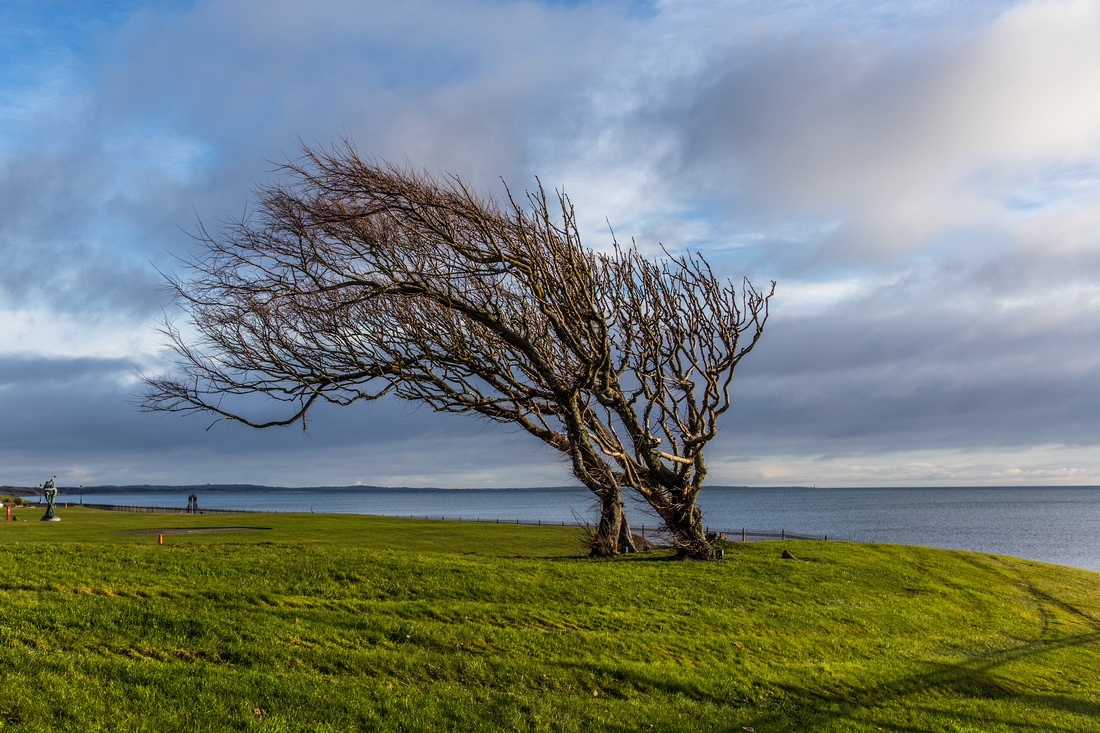
Newcastle in Northern Ireland. Lens: EF-M 22mm f2
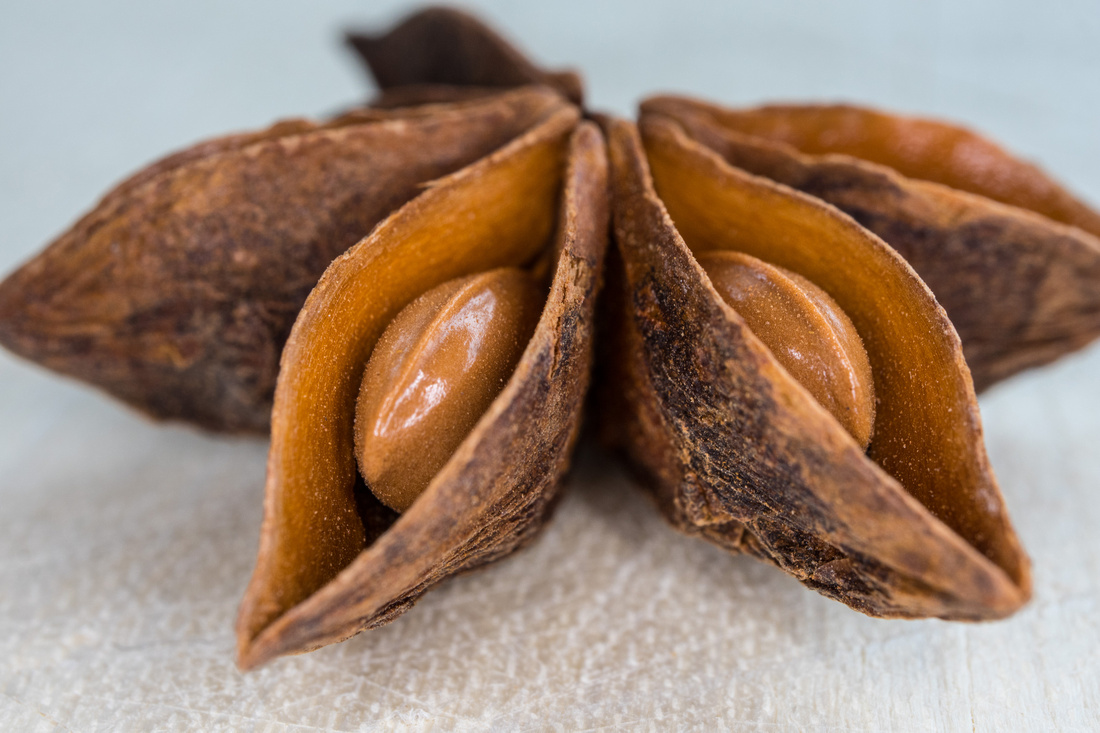
Christmas Cookie preparation... The EF-M 28mm f3.5 macro delivers shots you cannot perform otherwise....
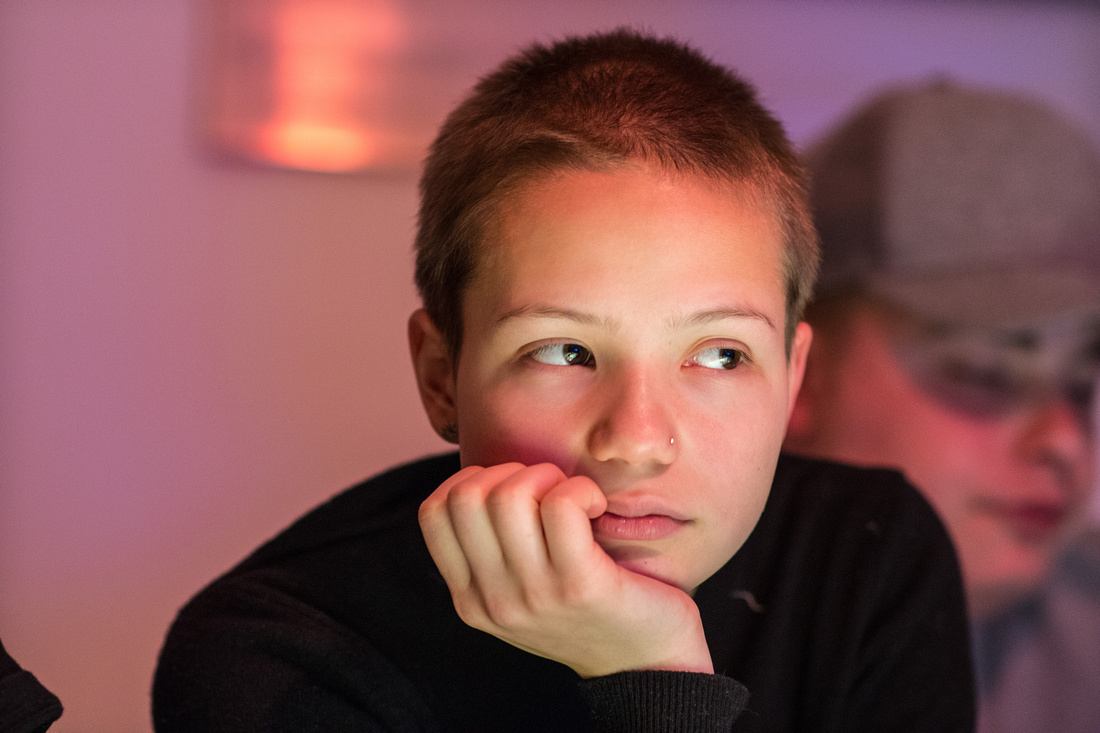
With the EF 85mm f1.4 IS USM I added another really great lens to the portfolio - this portrait show the nice and beautiful bokeh of that lens....
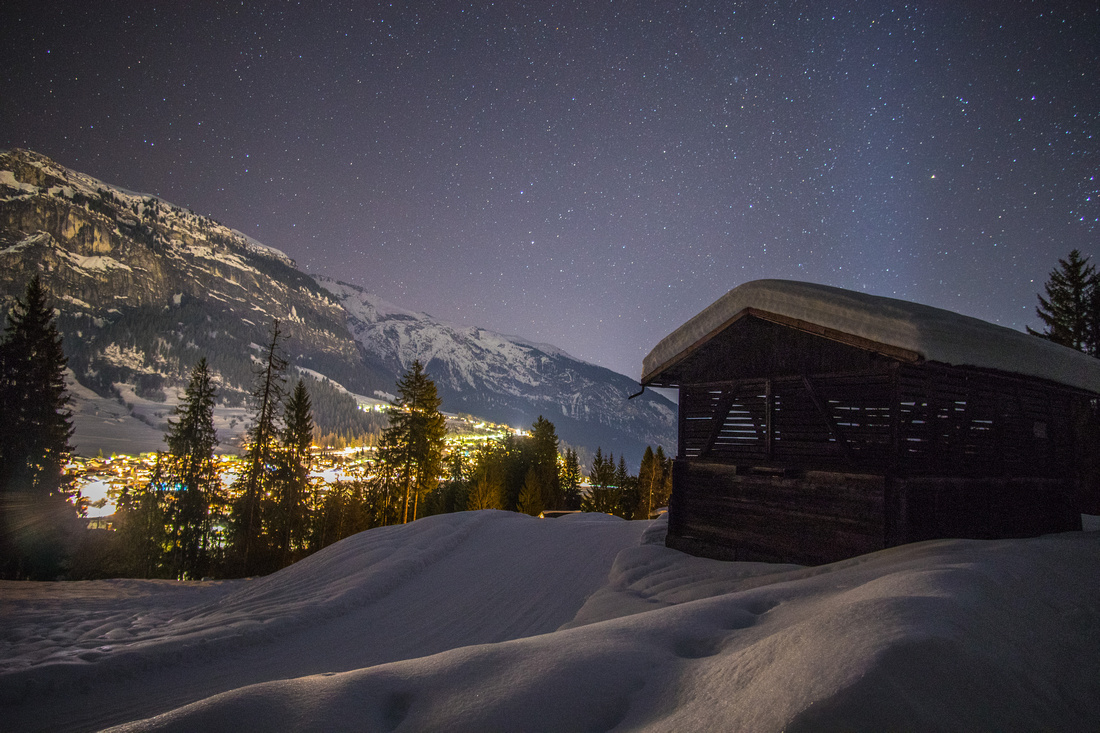
Night shots... Even in this discipline the M5 delivers... The lens: the Samyang 12mm f2.0...
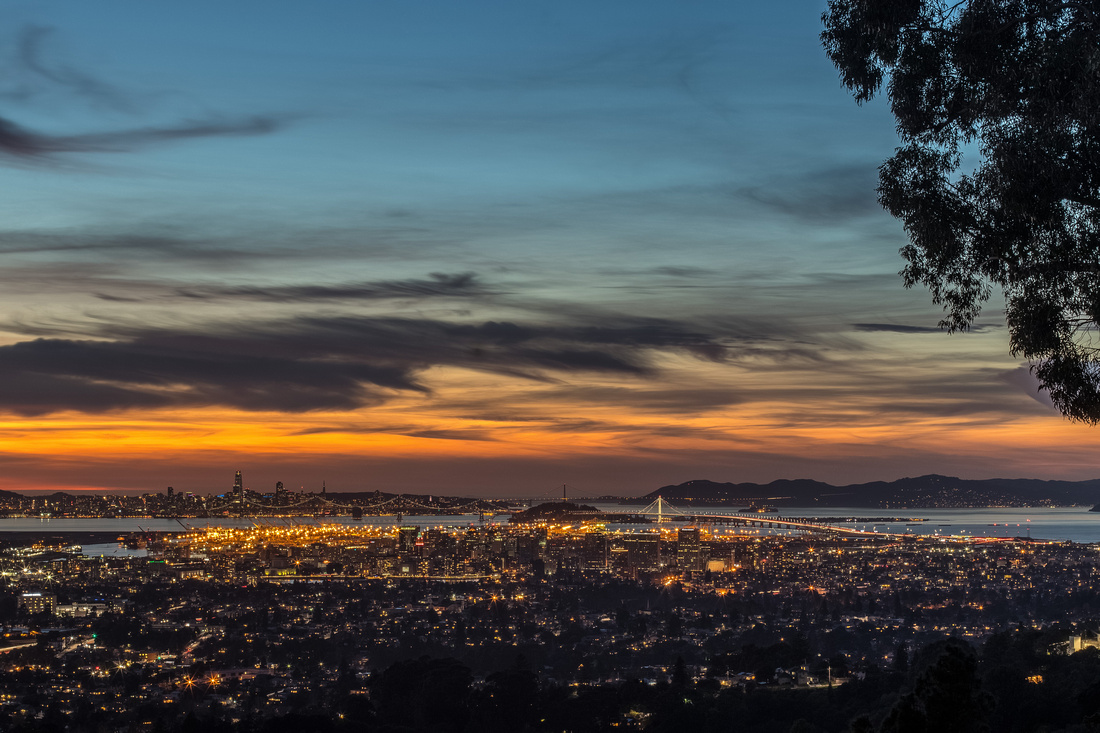
And finally: San Francisco again. This view is just amazing. Shot with the EF 50mm f1.4....
Panoramic shots
I do live panorama shots. I do own a couple of panorama heads - depending on the tripod size. The good thing on the M% I can use the lightest tripod for traveling: my Gitzo...
 San Franciso, shot with the 22mm f2.0.
San Franciso, shot with the 22mm f2.0.
 San Francisco again. This time shot with the Zeiss Milvus 50mm f1.4. The magic of this Panorama is the resolution in the original file: ca 1/4 Gigapixel....
San Francisco again. This time shot with the Zeiss Milvus 50mm f1.4. The magic of this Panorama is the resolution in the original file: ca 1/4 Gigapixel....
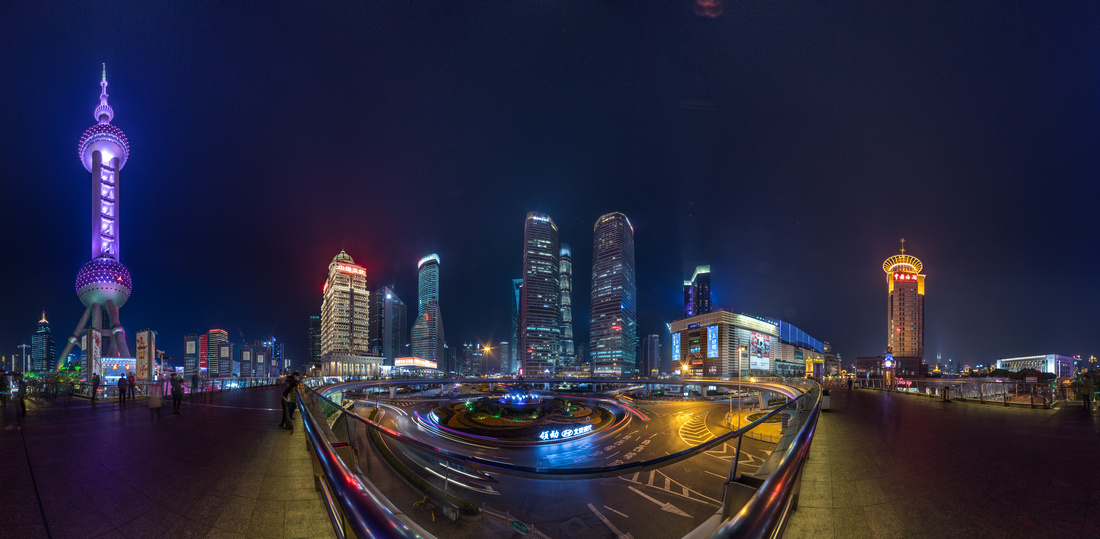
HDR Panorama on Shanghai with the Samyang 12mm f2...
Focal length distribution
When I look at all the photos I shot with my M5 and put in the "Best of M5" folder for this review It is maybe interesting which focal range I do prefer:
| focal length [mm] | No of shots |
|---|---|
| 12 | 12 |
| 22 | 12 |
| 28 | 8 |
| 35 | 10 |
| 50 | 18 |
| 85 | 3 |
| 200 | 2 |
Interestingly is the distribution of the 50mm shots -which represents my preferences. The majority is shot with the Milvus followed by the EF 1.4. The reason is pretty simple: the bokeh of the f1.4 is more pleasant....
The M5 as Travel Camera: What's with my Travel Bag
If you think the title is wrong - it is not. Because it starts with the bag itself. I do travel a lot - more than 1/3 of the year I am traveling- mostly to conferences and trade shows all over the world. And I always do have my travel gear with me.... I do use a Thule Crossover Daypack. Here I have my business gear with me - My notebook, iPad, documents, sunglasses, power supplies etc. And in this backpack I do carry my camera gear. Additionally. In the time to the µ43 cameras I carried the camera in the sunglass compartment and the lenses in little Manfrotto poaches. With the EOS M5 I changed the system. I added a Tenba "Tools BYOB"/"Packlite Flatback Bundle 13" to my bag portfolio. And this fits into my Thule backpack.
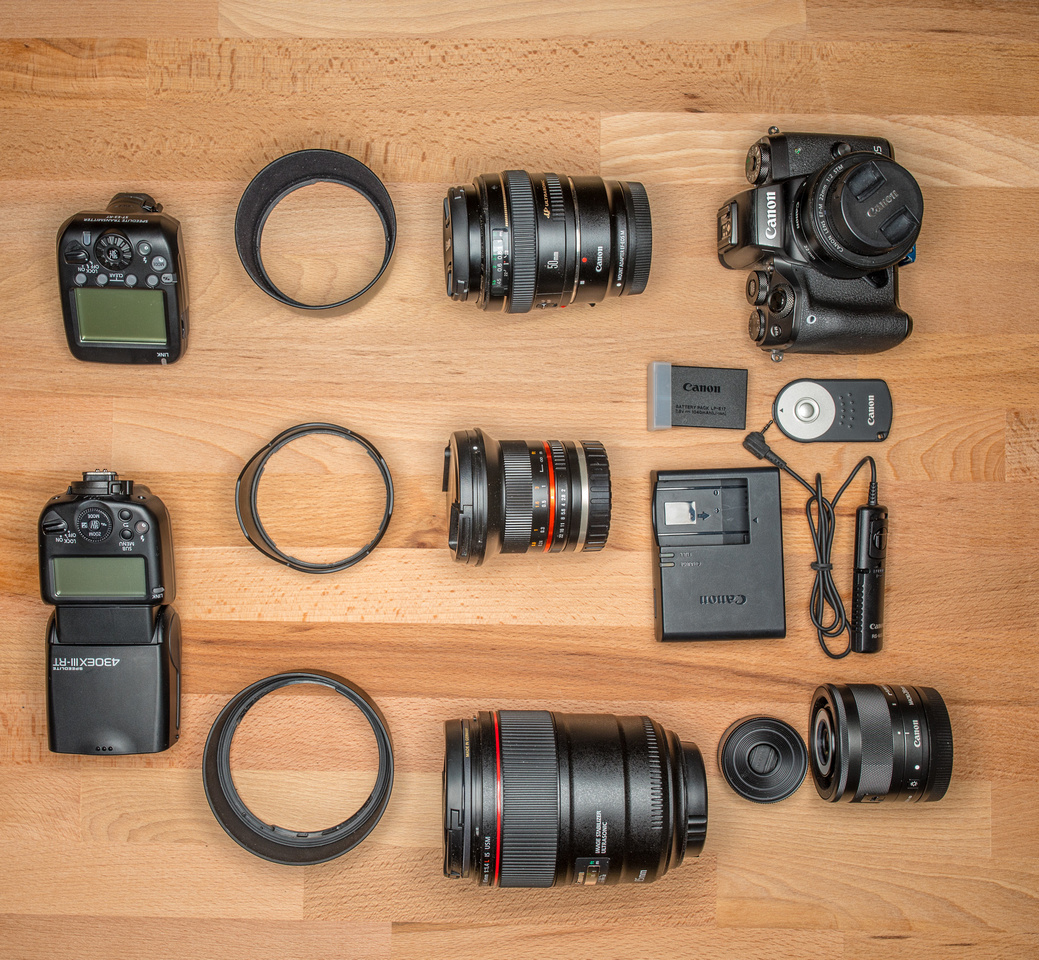
What's in this bag?
- spare battery (definitely needed (!))
- battery charger incl. power cable
- Remote control (IR + Cable)
- Canon Speedlite 430 EXiii RT
- Canon RT Trigger Remote
- EFM 28mm f 3.5 macro
- Samyang 12mm f2.0
- EF 50 mm f1.4 USM - with the EF-EFM adapter
- EF 85mm f 1.4 L IS USM
Quite a lot - and all needed.
The camera itself has the EFM 22mm f2.0 mounted and it is unprotected above the Tenba bag in the same compartment that the Tenba.
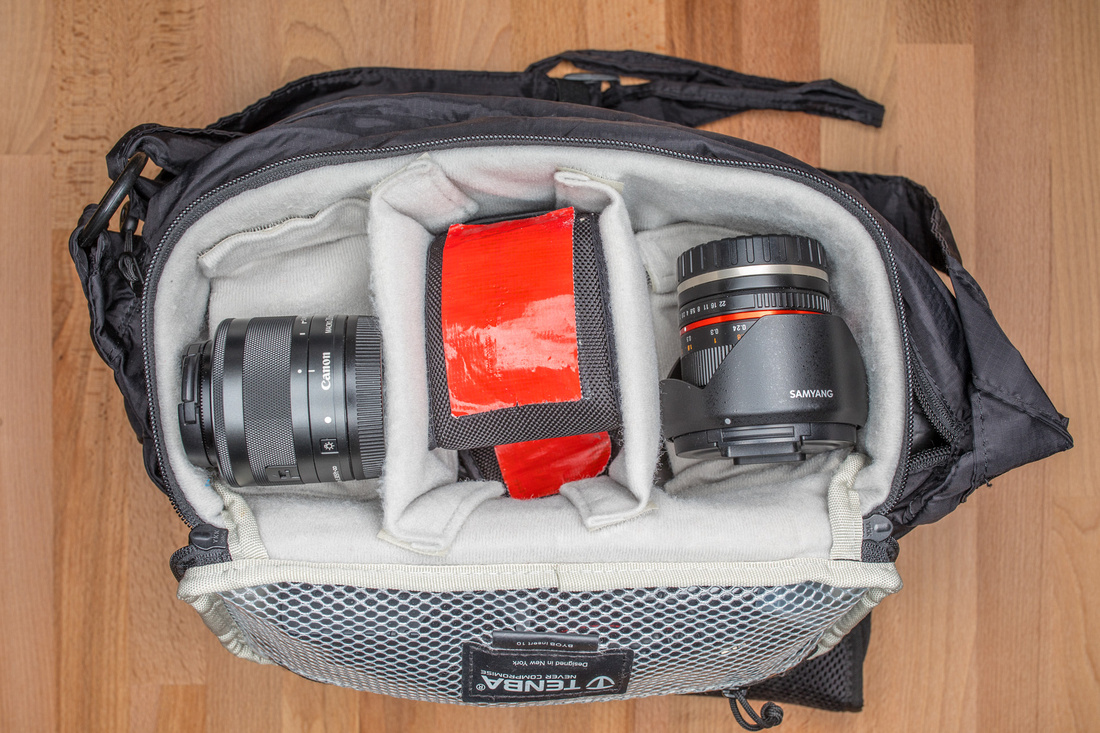
During the time of usage I do had some changes....
- For the 50 mm range I used as well
- The Milvus 50mm f1l4
- The EF 50mm f1.8
- For the 85mm range I used the 100mm f2.8 macro before the 85mm was released.
And there is another setup possible.... Carrying to bodies in the Thule back. Than I used the 5D4 with the 35mm f 1.4 L USM MkII, skipped the 50mm lens and added the 200mm f2.8 L USM instead: yes - this fits in the little Thule Corossover and the Tenba as well!!!
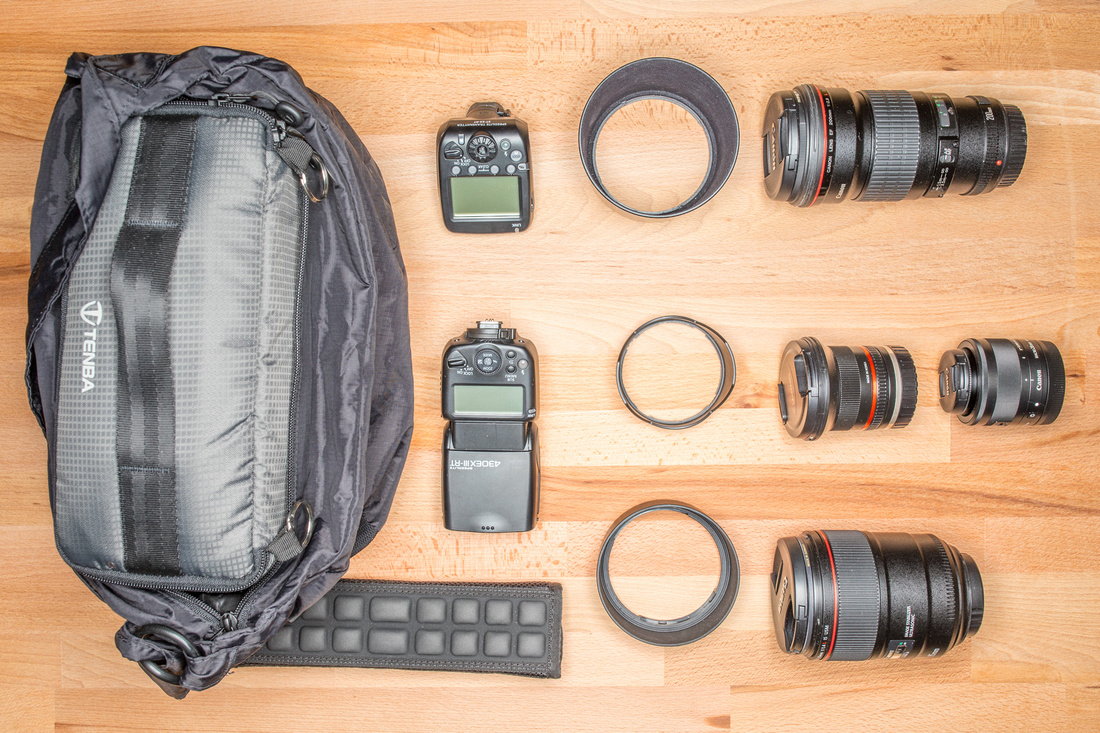
And bleibe it or not all this stuff goes into the Thule Backpack:
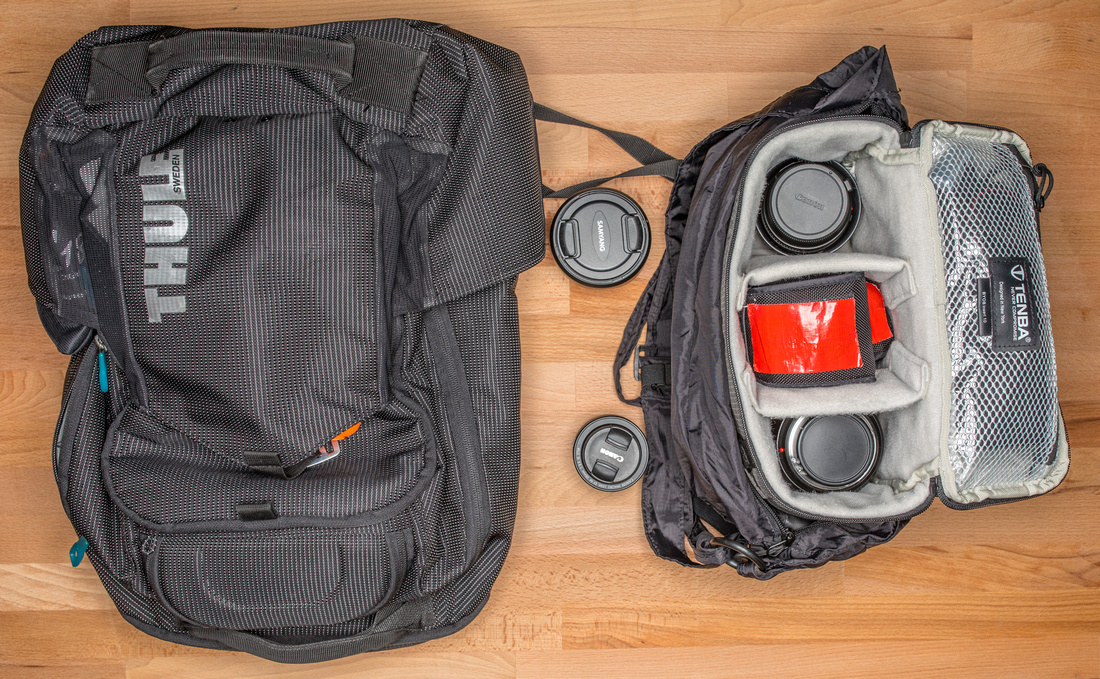 This is really handsome.
This is really handsome.
In the backpack is a 15" Macbook pro as well as an iPad (meanwhile sometimes the bigger one as well) and all the stuff I need to run my Stuff like chargers, adapters etc...
What I cary separately: The tripods. I do use 2 different steps here: my tiny Gitzo or in some cases the bigger and more sturdy Triopod from Novoflex. But this comparison I will do in a separate blog post.
In some cases - like being in Rome my setup was even simpler: the M5 on me, and 2 little Manfrotto poaches - on for the 12mm Samyang and one for the 50mm lens with adapter... for shooting in environment like Rome: what do you really need more?
Shooting Experience
After so many photos in so different environments I still stoked obey this camera. The size and weight make this camera to a perfect companion. The rating IQ to weight is hard to top. But that's not all. There are a couple of other things which makes this camera outstanding.
Autofocus
The Autofocus of this camera is one of its greatest assets. The technology Canon uses is called "Dual Pixel AF". A brief description of the technology you find in Canon´s Professional Network site CPN and how it works Canon USA has a pretty nice Article how DPAF works. What amazes me here is shooting sport and wildlife... even birds in flight works pretty well....
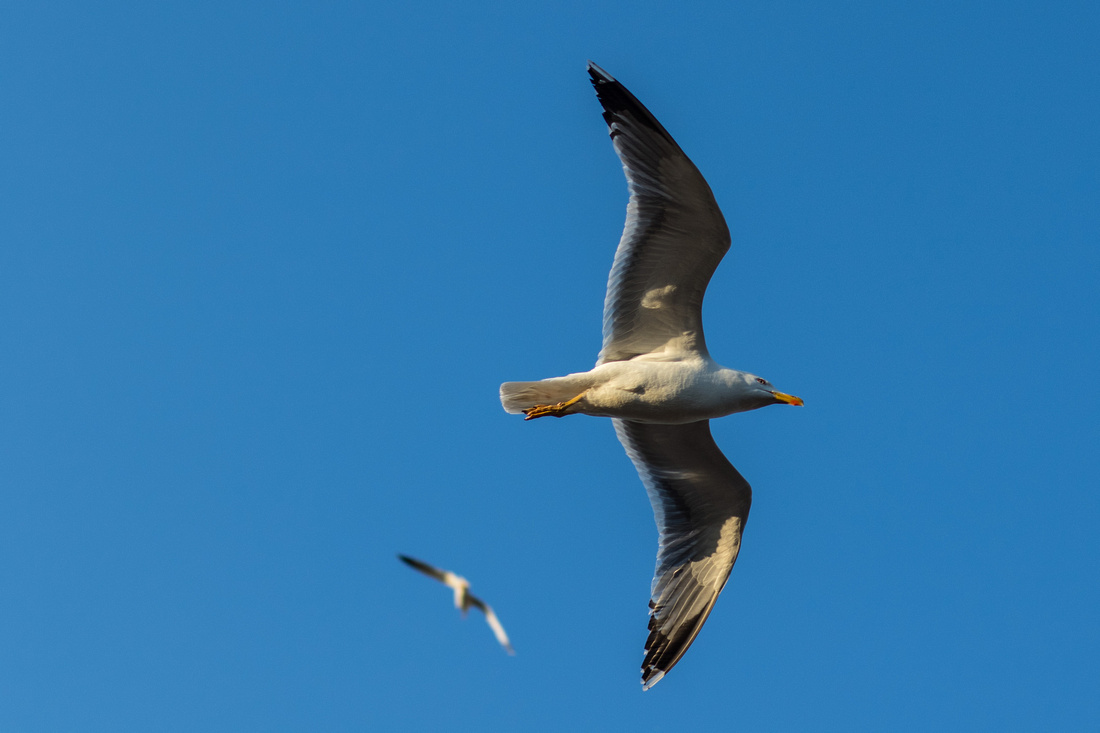
Manual Focusing with MF Lenses
You may wonder why I choose this topic. I do own a variety of Zeiss Milvus lenses. Which are awesome. In comparison with my DSLR´s shooting with the M5 the accuracy of focusing is mach better and the process is much easier.
Especially shooting through the EVF. There is a special feature which allows you to magnify the viewfinder and moving the area of interest just with the finger on the touch screen of the camera. Amazingly you can choose which area you want to use to do so. I use my left eye when I look through the EVF. Therefore the upper left corner of the screen is suitable for me. For people using the right eye the right corner will be better...
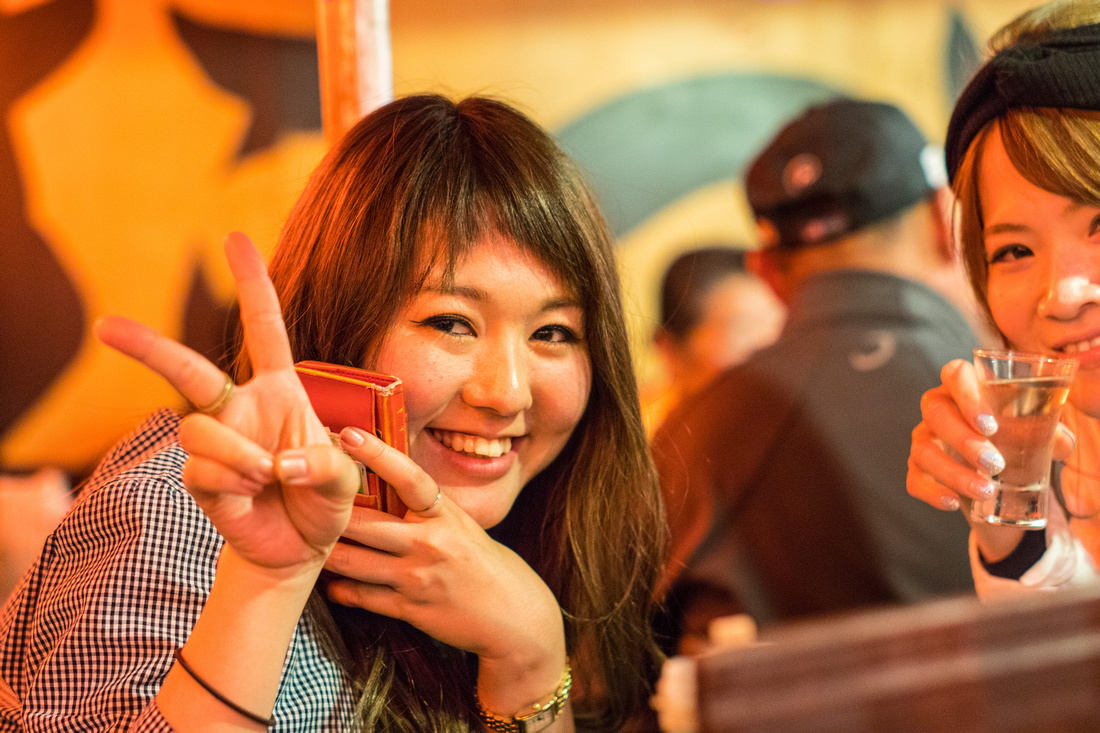
The photo above was shot in a restaurant in Tokyo (Shibuya station - for the insiders...) actually under the rails.. an amazing place... The light: pretty low - ISO 2000, f 2.0 and 1/50s... You are so much more confident shooting manually than with autofocus....
Dynamic range
The starting point of buying the M5 was the dynamic range of the 7DMkII - especially in comparison to the 5DMkIV - which was a big step up closing the gap to the Sony sensors for Sony themselves and for Nikon.
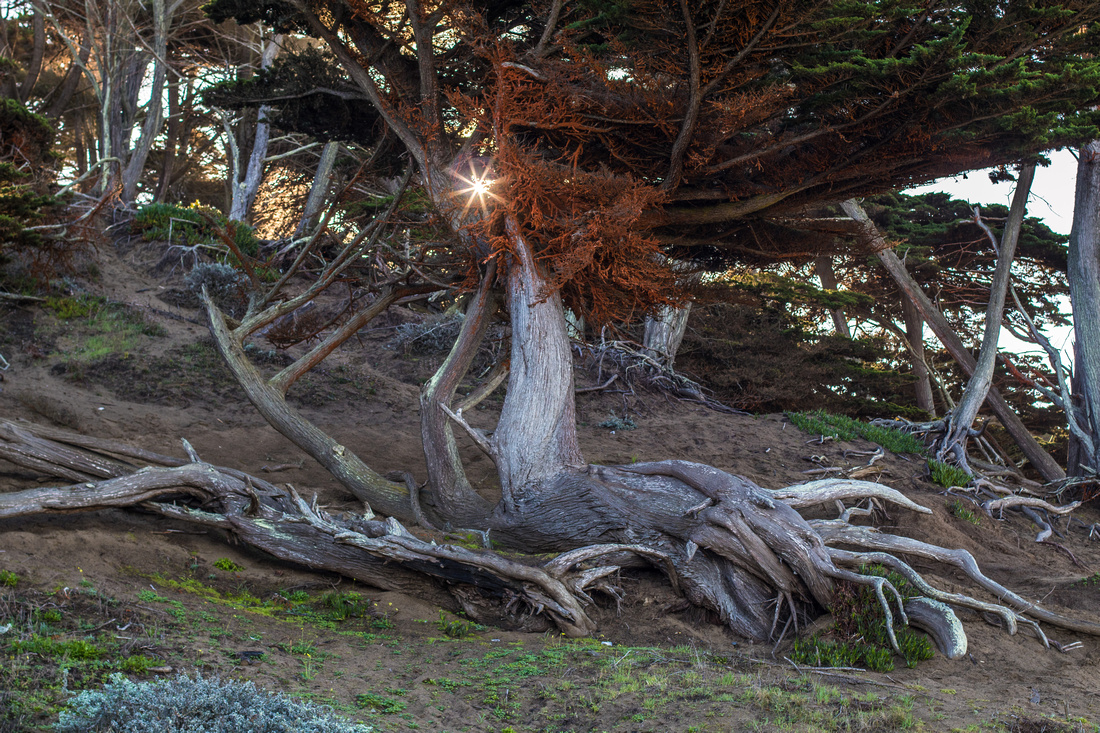 The M5 delivers... I is amazing to see how much detail you find in the shadow areas. The shot above is an excellent example. When you look at the photo straight to of camera it is pretty black in the shadows... but here you see much more... and still a bit of the sky.... On this topic: full success.
The M5 delivers... I is amazing to see how much detail you find in the shadow areas. The shot above is an excellent example. When you look at the photo straight to of camera it is pretty black in the shadows... but here you see much more... and still a bit of the sky.... On this topic: full success.
Specialties of the EOS-M lens portfolio...
There not much in that portfolio. Not many 3rd parties support that mount - what I do not understand. I would expect at least Sigma to show up with there nice DN Art lenses - which I do own for µ43 and I do like very much. But the Touits from Zeiss as well as the Loxias would fit as well. Samyang did a great Job with the awesome 12mm f2.0...
If it comes to prime lenses: Canon just offers 2 native EOS-M Mount lenses: the 22 and the 28 macro. Both are awesome! They are very light, very compact and they deliver en excellent performance.
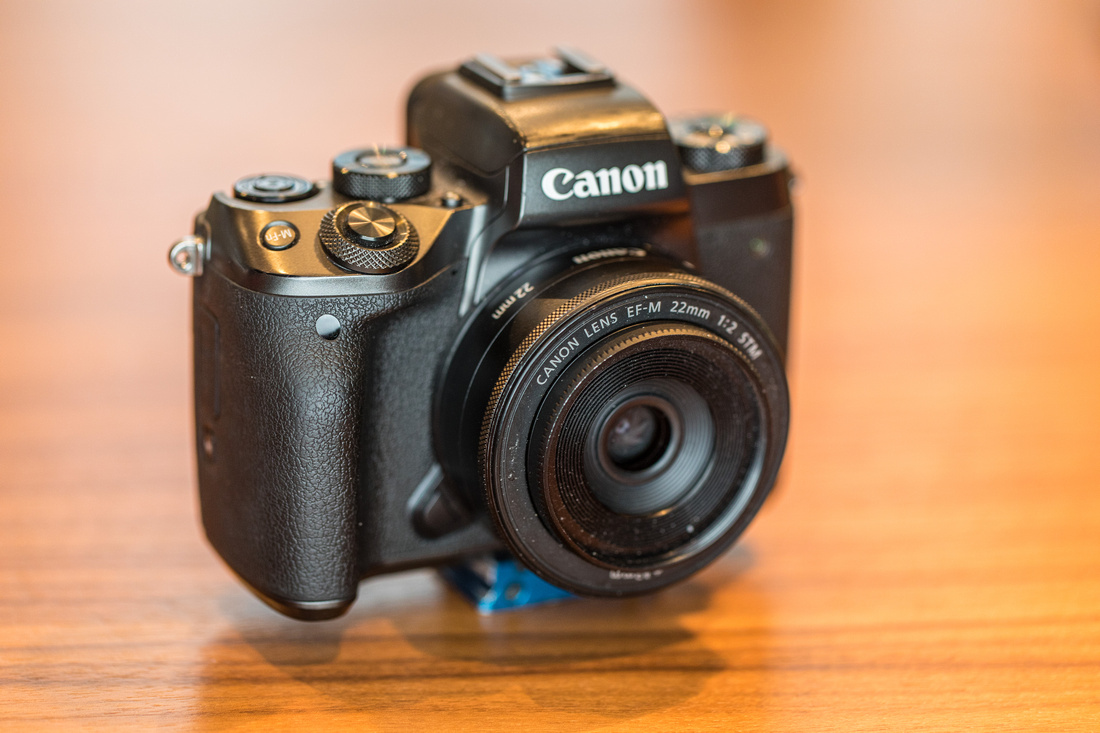 Isn't this a tiny little camera? It is even smaller than most of the µ43 cameras which all have a smaller sensor... With 22mm focal length @ f2.0 this is definitely a street photography...
Isn't this a tiny little camera? It is even smaller than most of the µ43 cameras which all have a smaller sensor... With 22mm focal length @ f2.0 this is definitely a street photography...
A very special shot with the EF-M

A very interesting lens is the EF-M 28mm f3.5 macro IS STM which I reviewed earlier... A lens which delivers very special photos - which you cannot get with any other camera on the market....

There are a couple of native EOS M zoom lenses. They are slow - but pretty good performers. I tested them here and there in camera stores. For people who don not have the highest need for fast glass will have very good options.
When it comes to fast glass: the only choice so fare are the full format lenses - either from Canon or others...

The adapters are a story of its own. Using Canon´s L-glass - this is a bit rediculous. Do you agree? The issue here is: This combo delivers outstanding results - and with the Milvus 35mm f1.4 the combo looks even more crazy....
But the result is really outstanding. And than we should admit: what is the difference using this glass on the M5 instead of the 7DMkII or an 80D etc... The advantages are still there: the light body, the zoom in the EVF etc....
What do I like?
There is a lot to say.... The quality of a camera is not represented by adding up specs and data. It is much more about handling, ease of use, how the camera feels in your hand, software issues as well the menu structure and functionalities the camera as well as the support you get f.i. from the applications in computer and apps on smartphone and tablet - in my case iOS devices.
But there is more...
 This Photo was shot with the Milvus 50mm f1.4. Whats special? not the f2.0 I used bit more the flash @ 1/500s using High Speed Sync. HSS is an issue, especially shooting people under high constrast conditions. A killer against µ43 where this feature you get only with the GH5´s. Normal cameras do not offer this feature....
This Photo was shot with the Milvus 50mm f1.4. Whats special? not the f2.0 I used bit more the flash @ 1/500s using High Speed Sync. HSS is an issue, especially shooting people under high constrast conditions. A killer against µ43 where this feature you get only with the GH5´s. Normal cameras do not offer this feature....
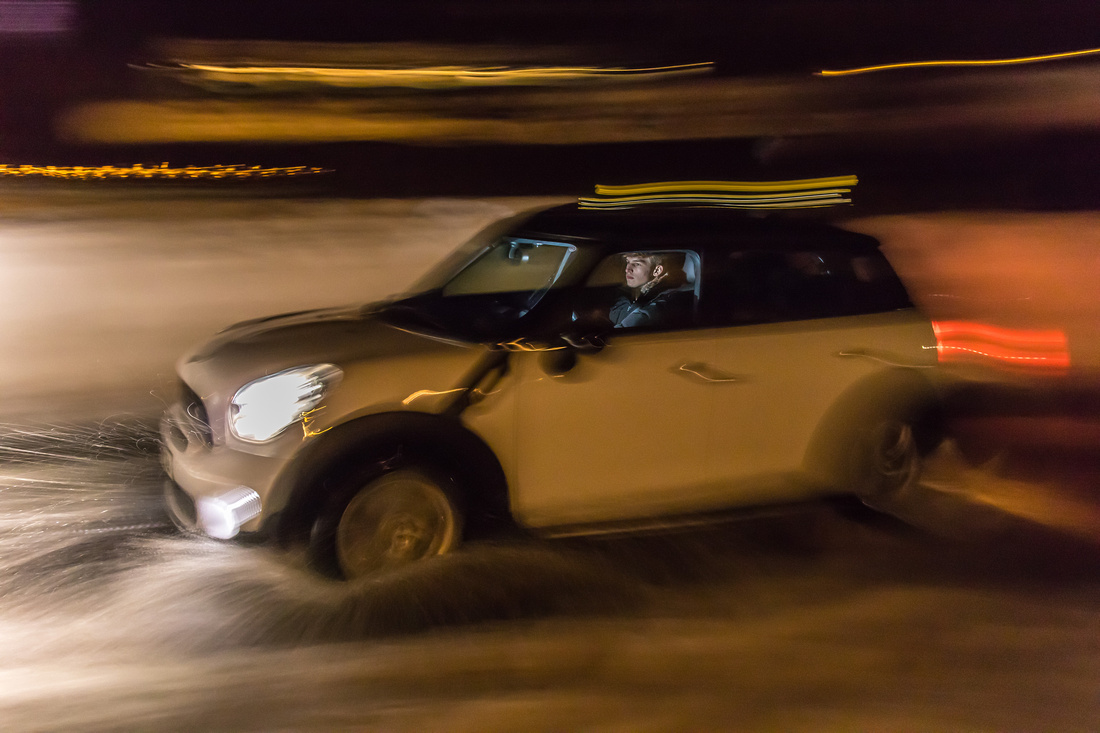 Another topic is the versatility of the camera using -let me call it advanced gear.This is a bit of artistic,.. The amazing thing of the M5 is that you get the full control of the flash accessories - which was needed to perform this photo.... it is just fun to use the possibilities this camera offers.
Another topic is the versatility of the camera using -let me call it advanced gear.This is a bit of artistic,.. The amazing thing of the M5 is that you get the full control of the flash accessories - which was needed to perform this photo.... it is just fun to use the possibilities this camera offers.
Another topic is drag and touch release. I do lie this feature on the 5DMkiV but the implementation here is even better.
What is really bad with the M5
First of all: not much. But a there are things which are hard to digest. For instance:
- The EXIF data of non Canon Lenses are not stored. My Milvus lenses were detected on my 5D MkIV and on the 7DMkII - but not on the M5. I asked Canon and they told me: not our fault, not our problem... WHAT???
- Another topic is build quality. If you are used to the single digit Canon´s the M5 is pretty flimsy... and I lost the aperture correction dial recently - it just fall off...
- Tethered shooting is a bit weird: It is possible only with the app. The camera does not connect to the EOS Utility. And as soon as you are connected you cannot use the camera dials anymore.
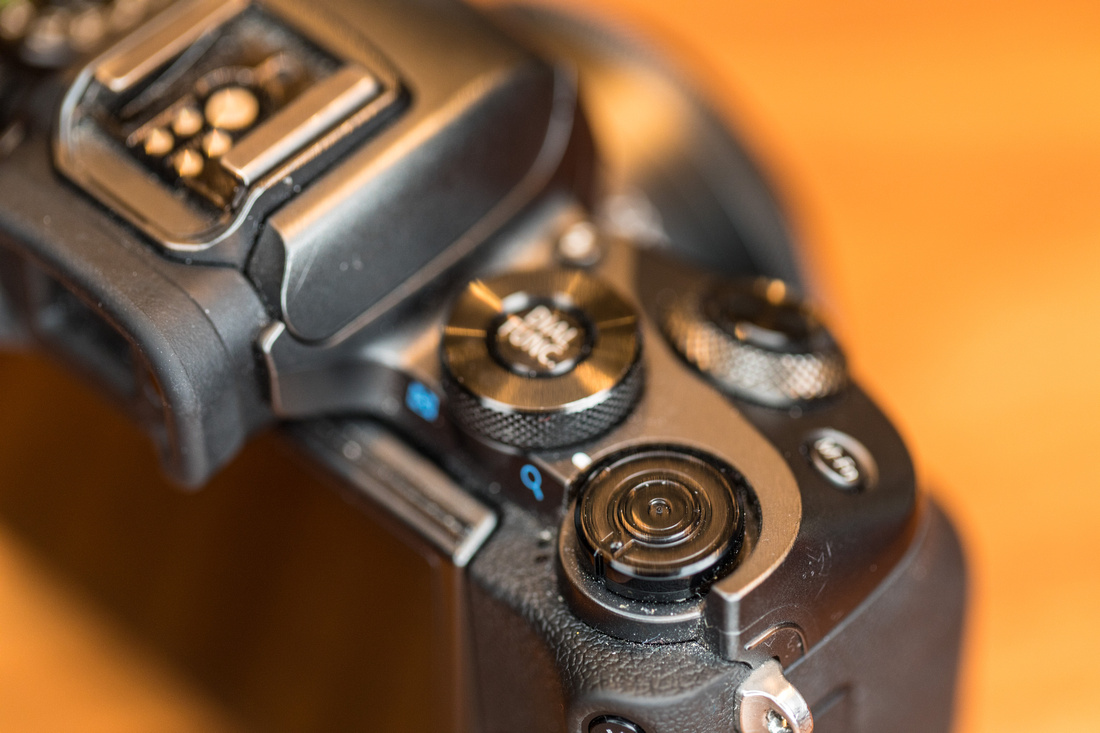 What`the dial falls off?
What`the dial falls off?
And the other critique points I mentioned in my earlier review is still valid: lot of space for improvement, Canon.... I just repeat what said there:
- no IBIS
- no 4k Video
- no fully articulated screen
- no weather sealing
- no tethered shooting
- no connectivity to Mac or PC to the EOS Utility
- relatively slow autofocus (But it is working for Birds in Flight)
- smaller viewfinder
PLEASE CANON: IMPROVE!!!
Verdict
The EOS M5 is a camera I like to shoot with. It is not only the form factor I like - it is the way how I can work with the camera. The great points are
- Image quality
- The handling
- autofocus speed and accuracy
- most of the needed functions are there
- HDR
- time lapse
- HSS
- fairly good video performance
Interestingly: since I have the M5 I used my µ43 gear just for video - and here it is really helpful... But for photography the M5 is the preferred one.
Miscellaneous
I do have to places for the photos in this review, The sample shots of the EOS M5 are in the link and the photos of the M5 you find here.
The product shots typically are made with the EOS 5DMkIV...
And one topic I do have to admit: Yes: this camera is used mainly with awesome glass as well - which I love to use and which has an influence to the results as well
]]>
85mm lenses are well known as "the" perfect portrait lenses. And I do love them. Today I bought #4. The brand-new 85mm f1.4 L- Lens from Canon.
I do have it for a couple of hours and very limited time to shoot with it. I am preparing a shoot out which should be pretty interesting: comparing this one side by side with the Sigma Art as well as the Zeiss Milvus... I hope to get the time to do it pretty soon....
When i got the lens today I did have my EOS-M with me. Therefore the "real" focal lens is 136mm. I stored the photos directly on my iPad and uploaded them to Zenfolio with no editing.
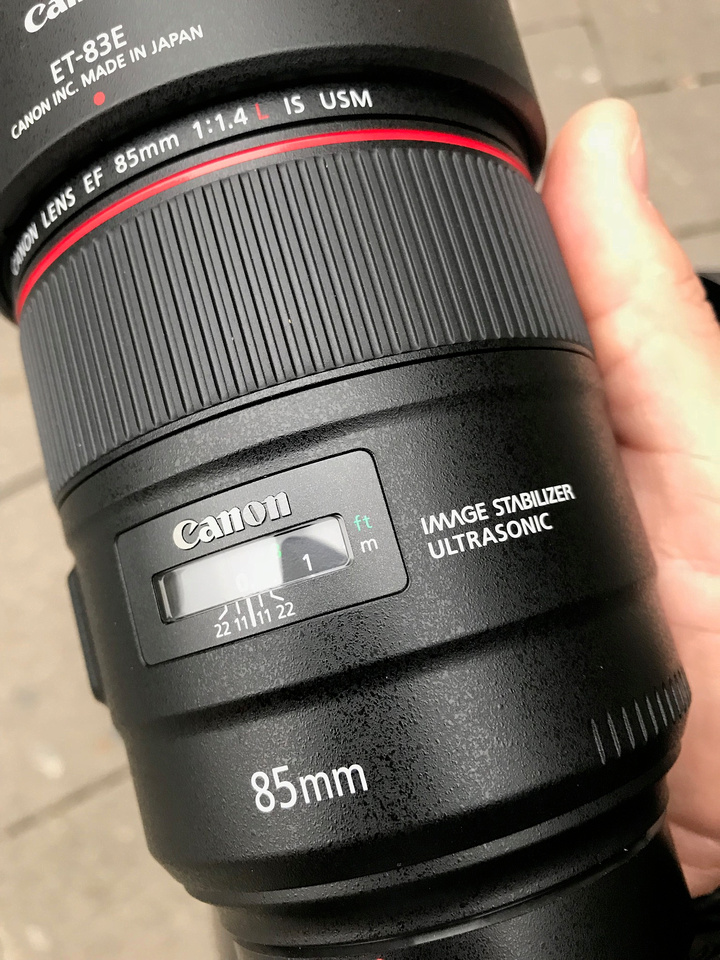
Build Quality and Size
You never get a 2nd chance for the first impression.... The lens looks and feels awesome. Nice Canon L-Style. Weather sealed, robust as we all know it from Canon.
Autofocus
No complains. The autofocus on the EOS-M5: YES!!!! it just nails it. normally. In comparison to my old Sigma: 100 to none. All images felt pretty confident. You can just use it very well. In nearly all situations. And It is quick: nice to shoot while walking...
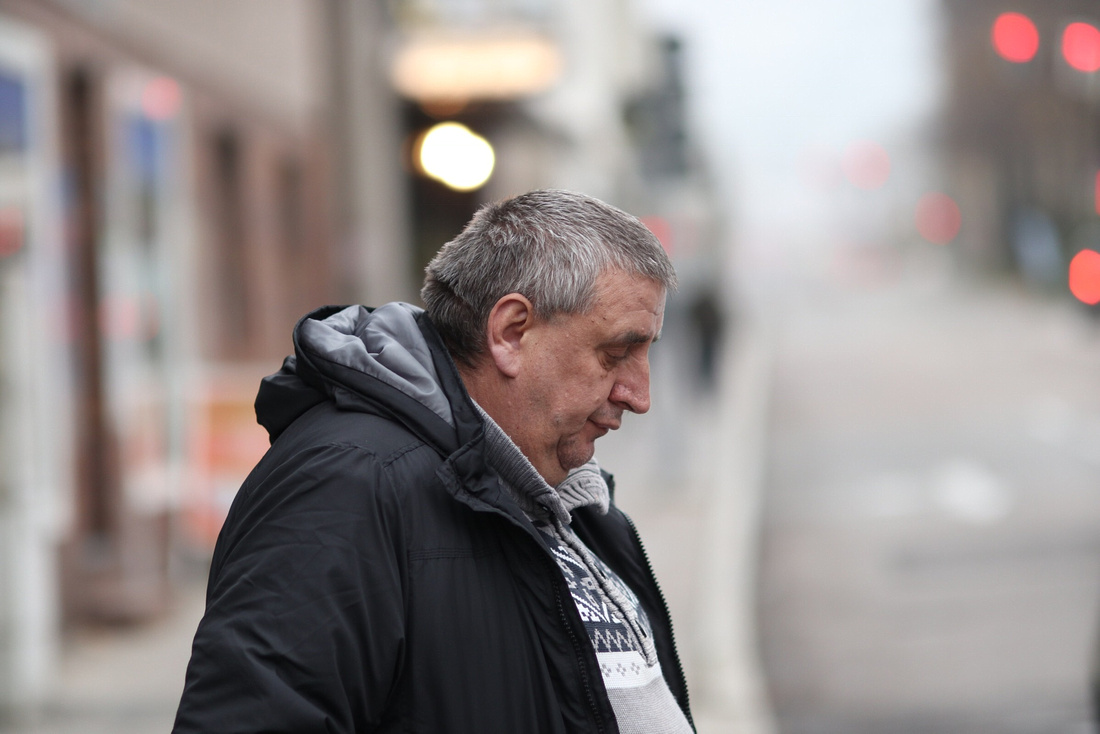
(I did not ask him. I hope I got no complains....
One exception: it was hunting when I tried to get an image of our beloved cat @ ISO 800 and f1.4@1/8s... But to be honest... that's pretty dark... Its EV1 for a pretty grey subject with very low contrast...
Image quality
This lens is awesome. It delivers sharp images around the image circle which are really sharp. Even if you just check it on the camera. The first shots were made directly @ Calumet in Stuttgart.
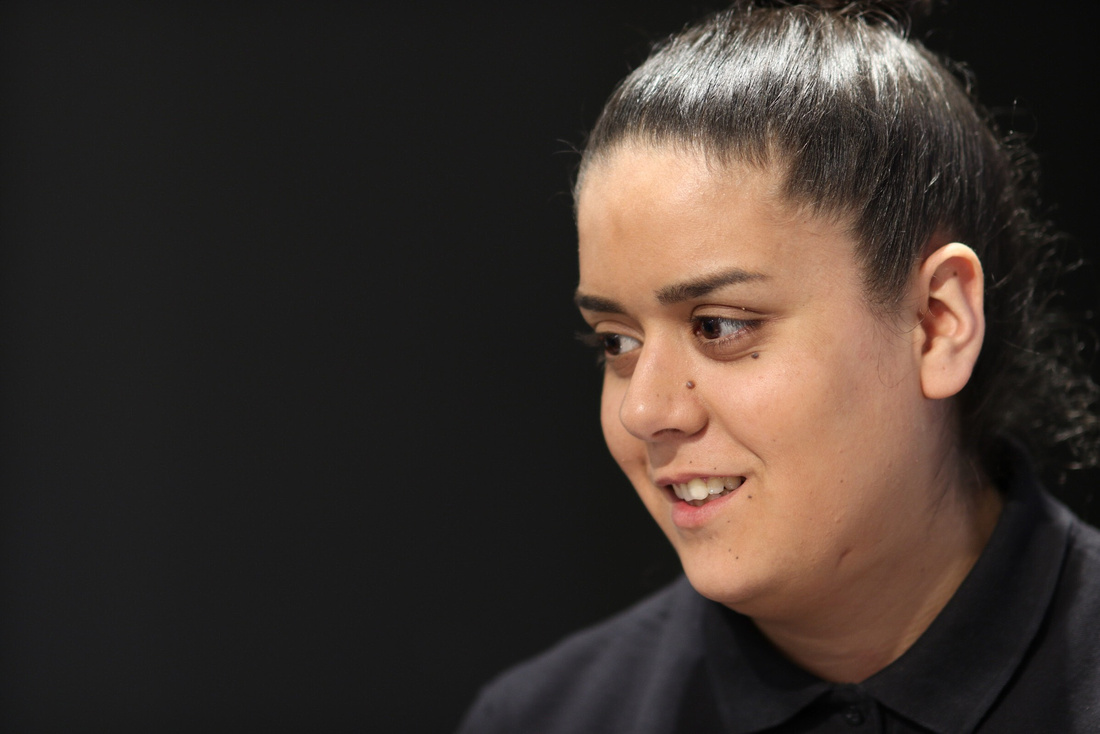
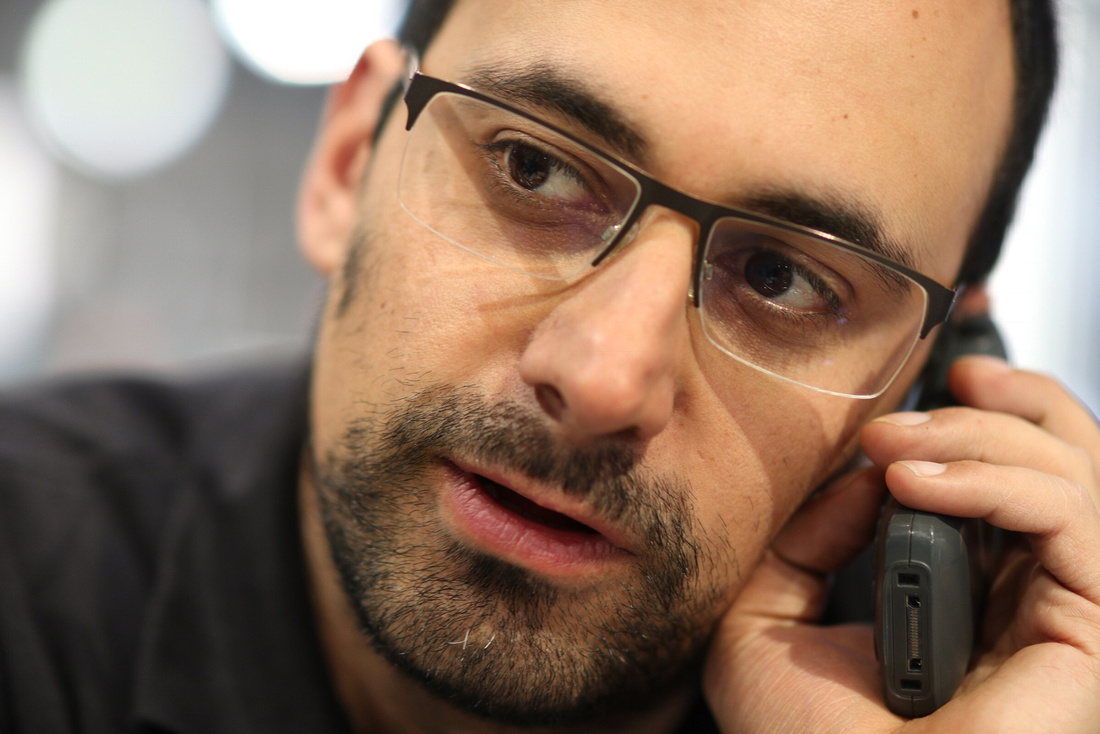
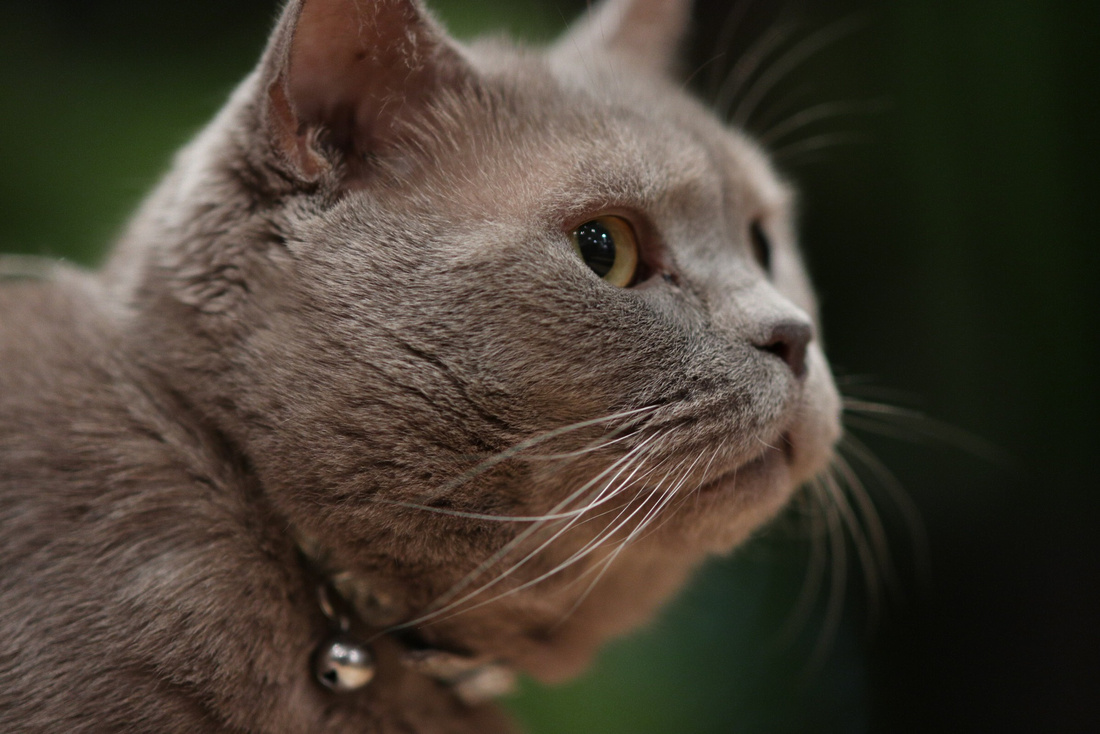
Look at these images. They are just great!
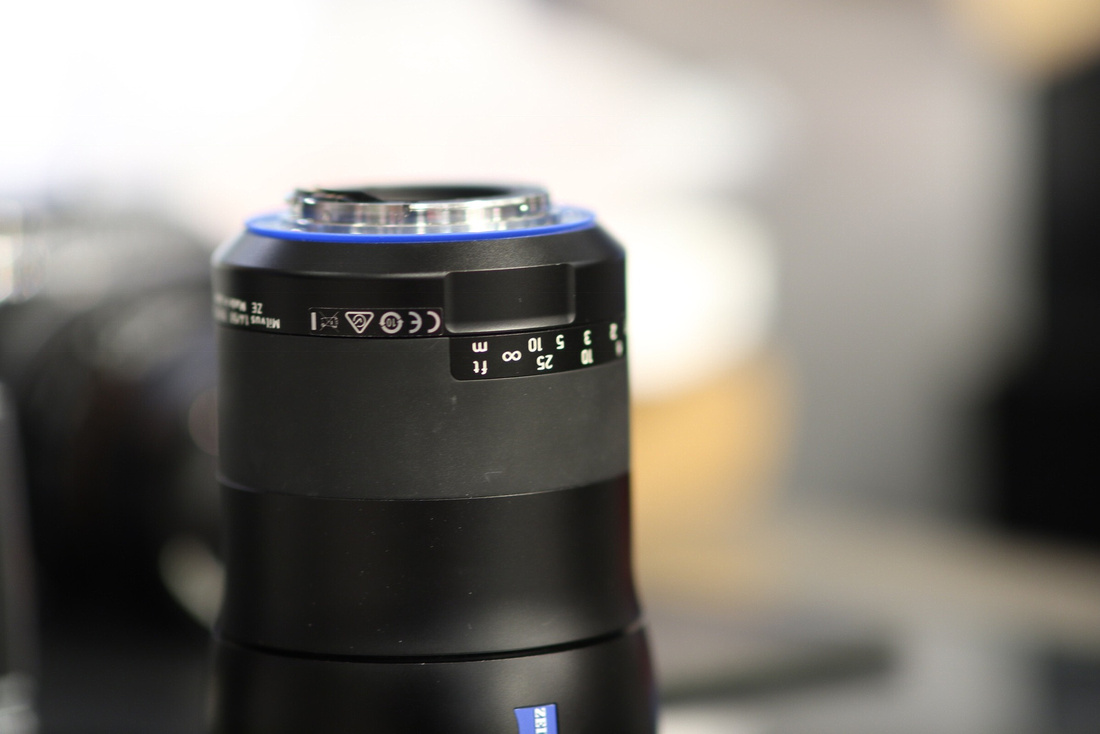
Chromatic aberrations? What's that?
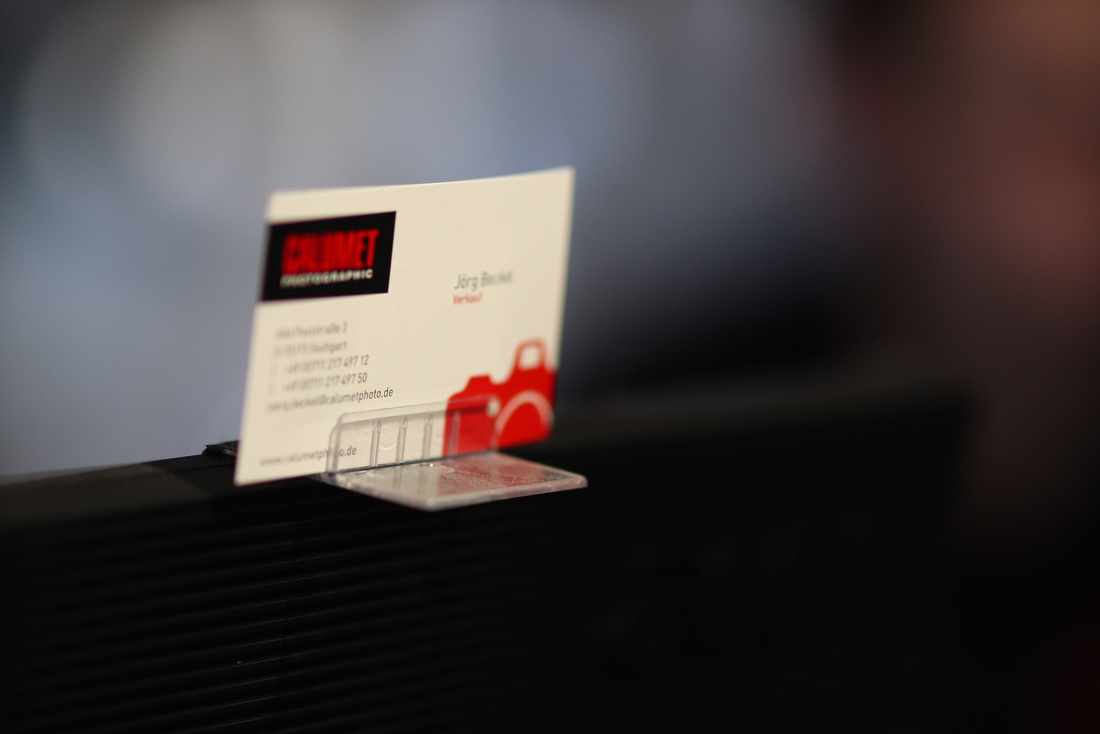
This sample is even harder: no CA visible!!!
Bokeh
This lens is bokehlicious. Extremely. You can see it in the samples above. and especially in those ones below. And the Bokehballs are really clean. No onions...
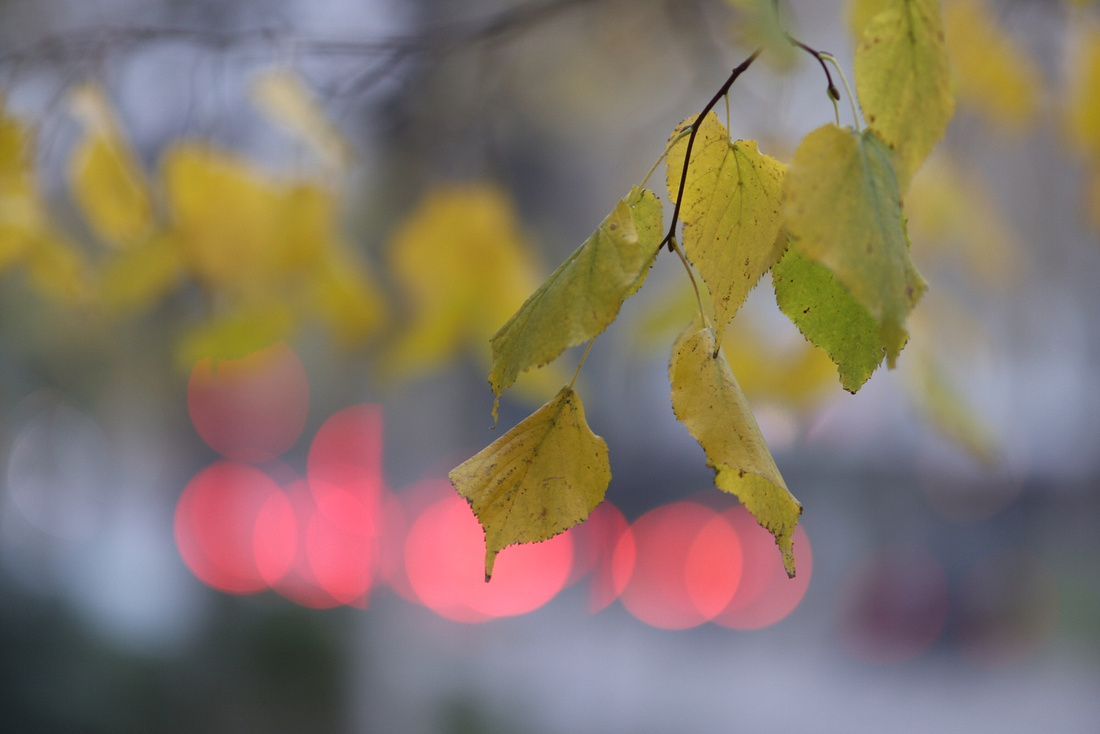
Image stabilisation
One outstanding feáture of this lens is the image stabilization. No other 85mm f1.4 lens has it. And this is pretty nice for the purpose of this lens: portraiture.

This sample is not 100% sharp but short enough. Its the sample with EV 1 shot with 1/8 s which is comparable with 5 stops.... Not bad....
Summary
The new Canon EF85mm f 1.4L IS USM is a very promising new lens. I cannot wait to use it much more. I already had a lot of fun with it. And you will see a more detailed review soon.
All images you can have a closer look here.
]]>35 mm lenses are considered as classical full frame lenses. Many people say that 35, 50 & 85mm are "the" lenses of a photographer. And in times where people have the choice between APS-C and Fullformat the 35 mm gets 52,5 or 56mm depending on the camera manufacturer.
I do love the 35mm range. I have that range in different ways since a long time in my portfolio:
- Canon EF 35mm f 2.0 IS USM
- Leica 15mm f 2.0 for µ43
- Canon EF-M 22mm f 2.0
All these lenses I like very much. the last two are pretty little, they became my always on always with me lenses.
The reason why I shoot fast prime lenses - you might have seen it in my blog - is bokeh - otherwise we all could go with our iPhones....
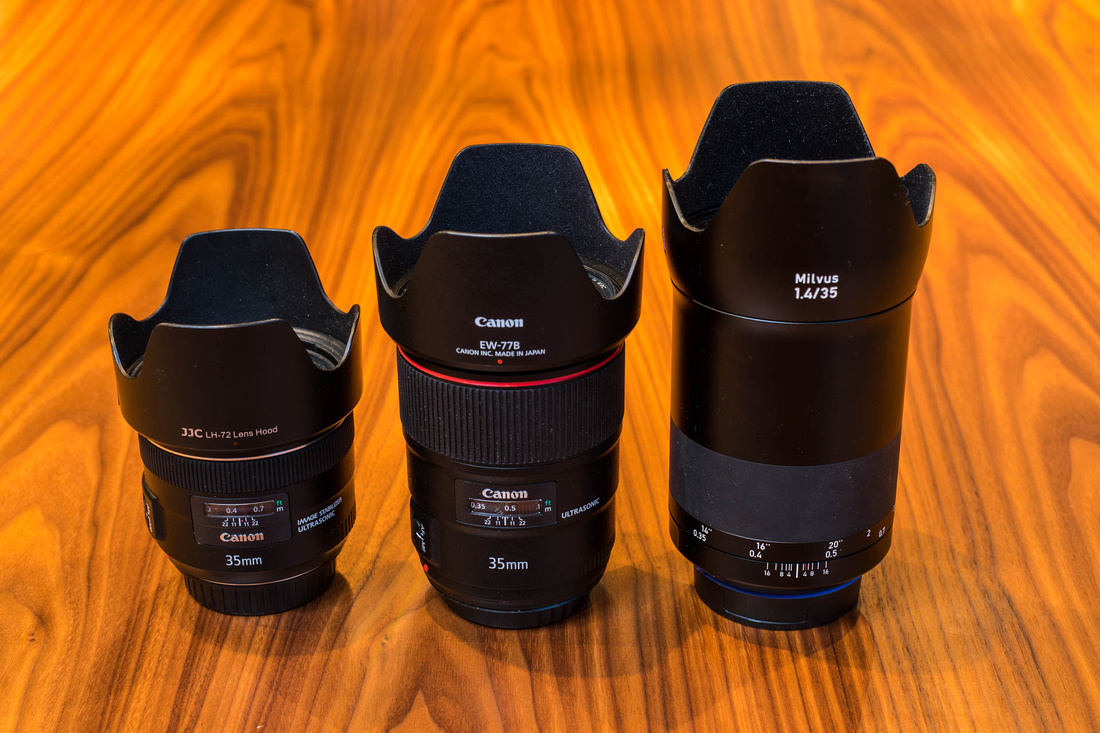
The Canon EF 35mm f 2.0 IS USM is a very nice lens I like it very much. But to be honest: the f1.4 mkII has blown me away. The amount of bokeh is just stunning. Especially on the EOS M5!. It is a real game changer in terms of image it delivers.
Therefore I was really happy to hear that Zeiss has developed a new high class design Milvus 35mm f 1.4 which I got for a 2 weeks for testing.
From the systematics: I first will talk about build quality, than about real world shooting experience (which has to do with the bodies as well) and than the comparison of image quality and bokeh rendering...
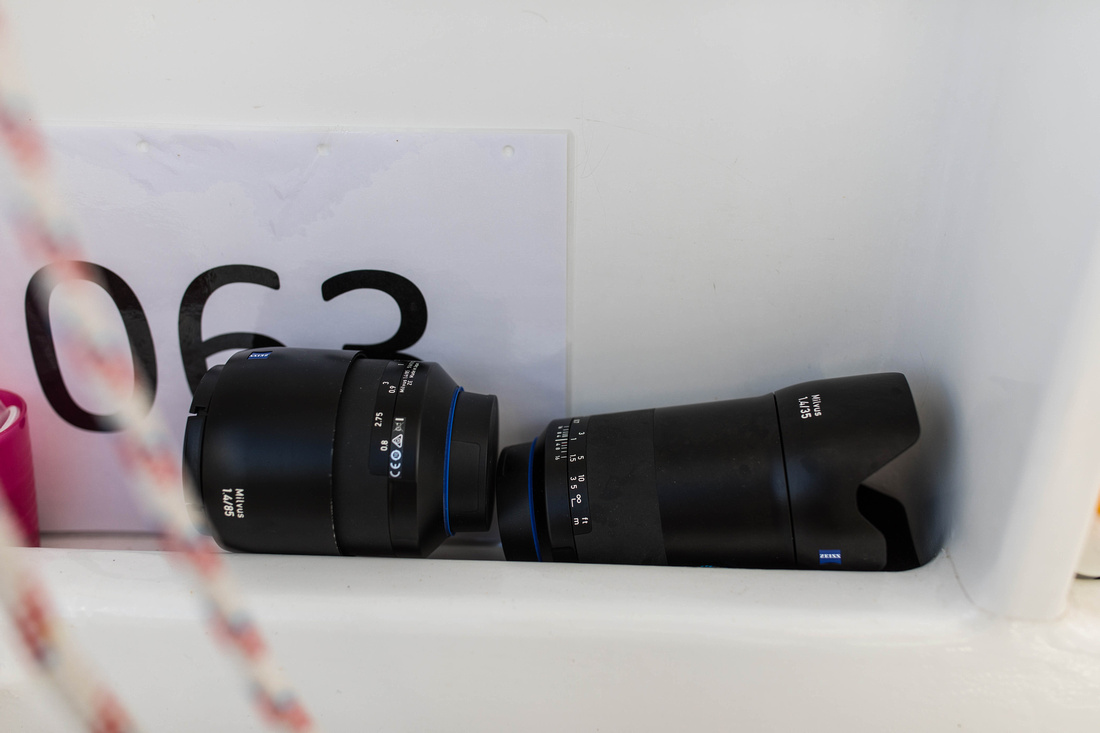
Luckily I was able to take the Milvus -as well as the other 2 35mm lenses on a boat trip to Denmark... So I think I do have some nice photos as well for this review... The lenses where around me in the boat - and they experienced some water as well
Build Quality and Usage
There is a big difference in build quality between the lenses. To say "you get what you pay for" is a bit to simple. The difference between these 3 lenses is much to high. But this is the case because of the Zeiss Milvus. First indicator is the weight. 507 vs 870 vs 1100 g.. And the size: the Milvus is really hefty! In size and weight. It is even longer than the 85mm f1.4 - which is a bit wider (filter ø 77mm vs 72mm).
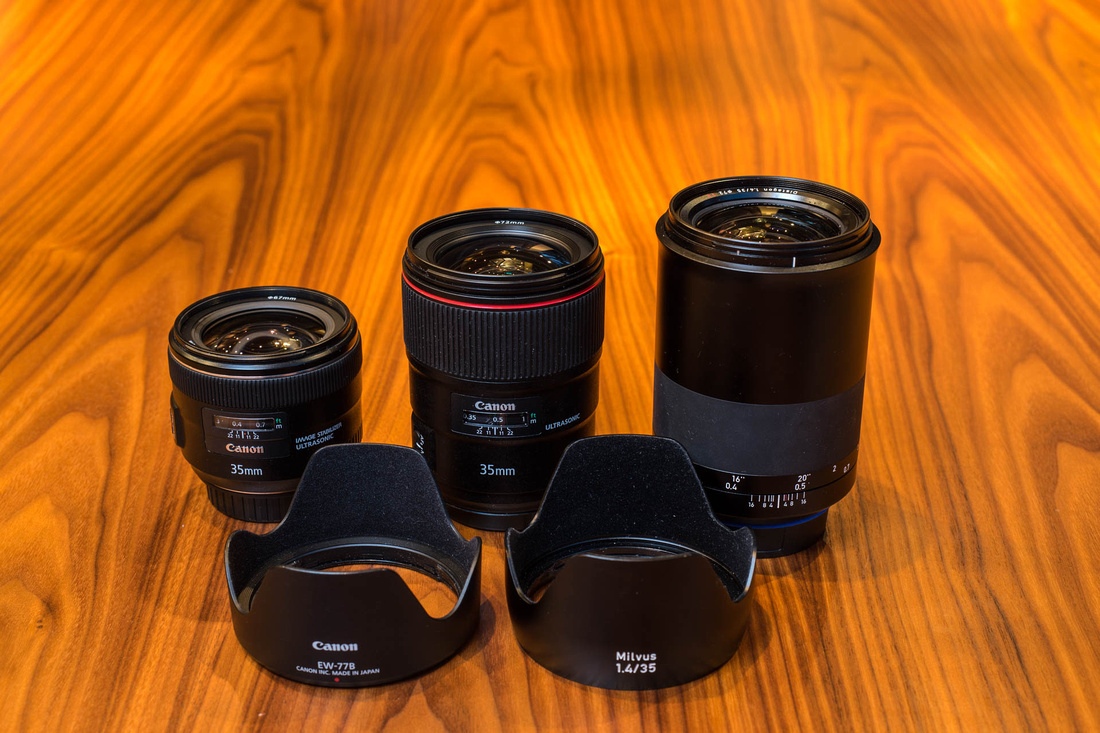
It is maybe astonishing to say but in terms the quality you feel the 2 Canon lenses are pretty close. Both are out of "engineered plastic" with metal mounts. The plastic feels and sounds pretty much the same between these two. There is an advantage of the L-Lens because it claims dust & weather sealing. So a little edge to the L-glass in this matter. But the EF 35mm f2.0 USM has an USP as well: it is the IS which allows you to use the lens in low light with pretty long exposure times. But this is only one part of the story where the weight comes into the picture. The Milvus on the other sight is heavy. And this heaviness stabilizes the system and makes it easier to shoot longer exposure times as well....
But build quality is one of the topics which gives a advantage to the Milvus Series. Since I do own 3 Milvus lenses it is just exciting how well they are build. Like tanks. Pure metal and glass. Here you get value for money which you feel whenever you hold a Milvus Lens in your hand. And I do love this feeling of quality....
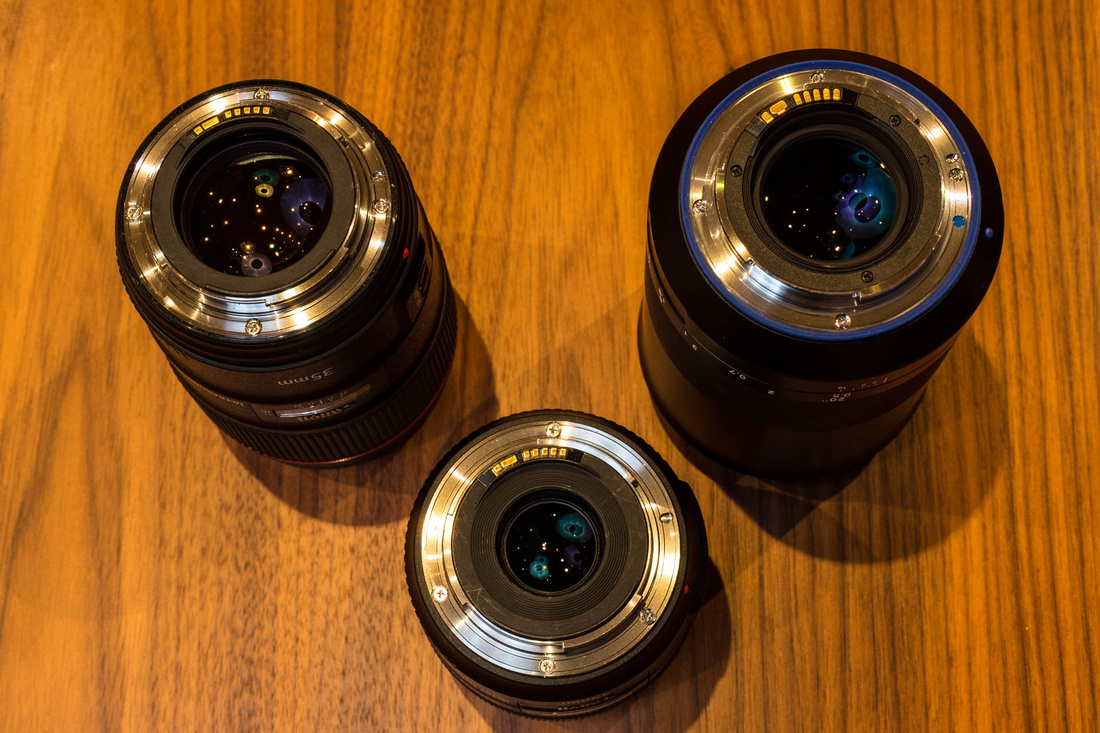
Another topic is focusing. here is a big difference: the Canon lenses have autofocus, the Zeiss is manual focus only. A clear advantage for the Canons? At the first glance it looks so, in terms of speed and ease of use: definitely. But there are other points to consider. There are shootings where you have time, for instance for studio photography and landscape. There autofocus is not an advantage but also no disadvantage. It is the level of concentration manual focusing demands. This is a more focused way of shooting. I feel that I am more concentrated on point of view, what I want to have in focus and a proper framing. This is a clear advantage of manual focus.
Technically the Milvus Lenses are engineered for manual focusing. While Canon offers typically 120º of focus throw - the Milvus f1.4 lenses are offering impressive 270º of focus throw, and this purely mechanical. What a feeling...
But let me say something: the new f1.4 lenses are huge - and heavy on a small camera like the EOS M5 it looks a bit front heavy - and it is. But with the Milvus well, thats really hefty...
Image Quality
At the end, image quality is the main topic. In this section I have to do pixel peeping, but more than that. After the comparison of the Milvus f1.4/50mm with the Nifty Fifty other aspects are coming into the picture as well.
One Remark: The brand-new Milvus was a pre-series version before the official sales start. Therefore the EXIF´s did not show up with the right name, the lens name was just "35mm". And -a shame for Canon!!!- at the M5 it shows up as -mm. But the M5 ignores all non Canon lens names...
And I did not look for chromatic aberrations... simply because they are not that easy to get with these lenses....
Sharpness and Vignetting
Everybody is demanding sharpness. So let´s start with that... Sharpness is something which everybody wants to have. But in case of these lenses: they are sharp, all three. Basically. In the center: all three are great, in the extreme: from f2.8 - latest f 4 all are redicously sharp....
And with f 1.4... So the most challenging thing for lenses....

What you easily see: Vignetting. This is more pronounced at the Canon L but it can be corrected in post processing.
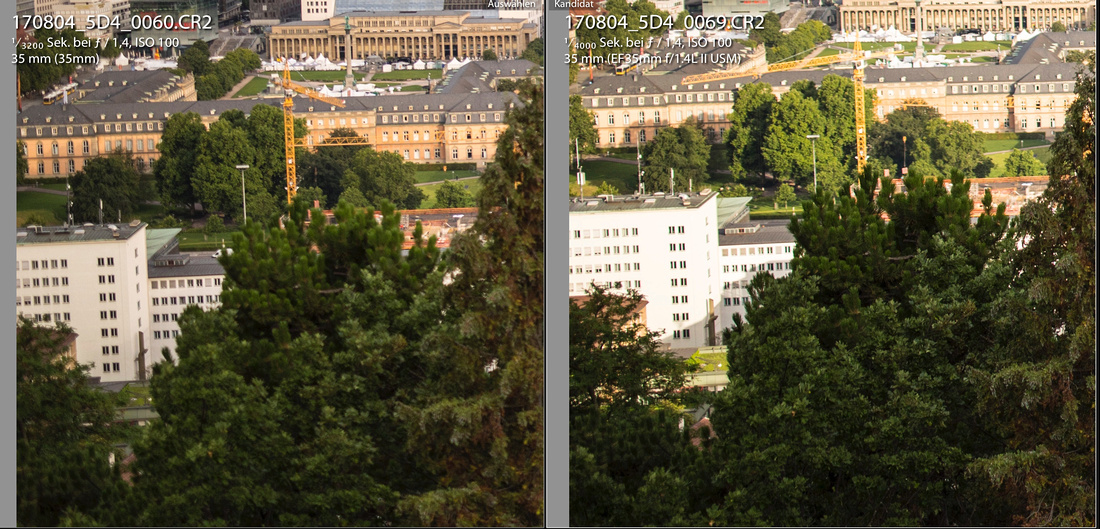
Left corner

Here you see the right corner of the images. It is very hard to name remarkable differences in terms of sharpness.
It is amazing to see how sharp are both lens - even in the extrem corners.
But how does this look @ f2.0.

ok... the f2.0 IS is wide open - it shows some vignetting - the´s impressive...
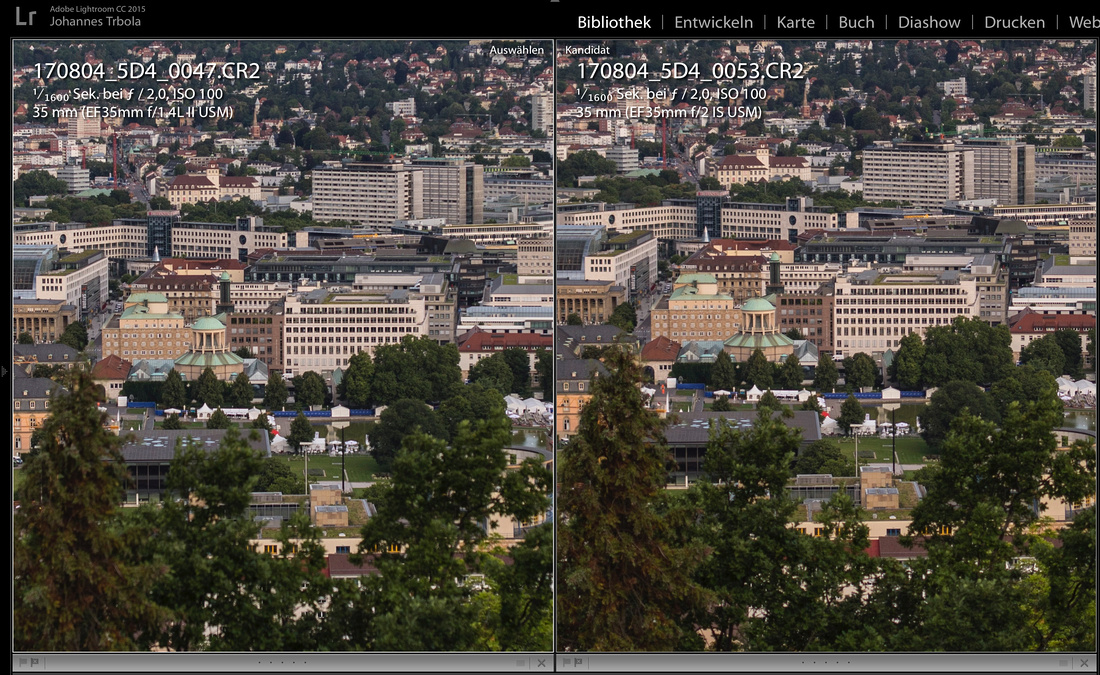
Center sharpness: it is just great... with all lenses. Here is the comparison between the two Canons...

Here its the center again, but in this case the Milvus vs the Canon L-Lens. What´s shows up again is the vividness of the Milvus...
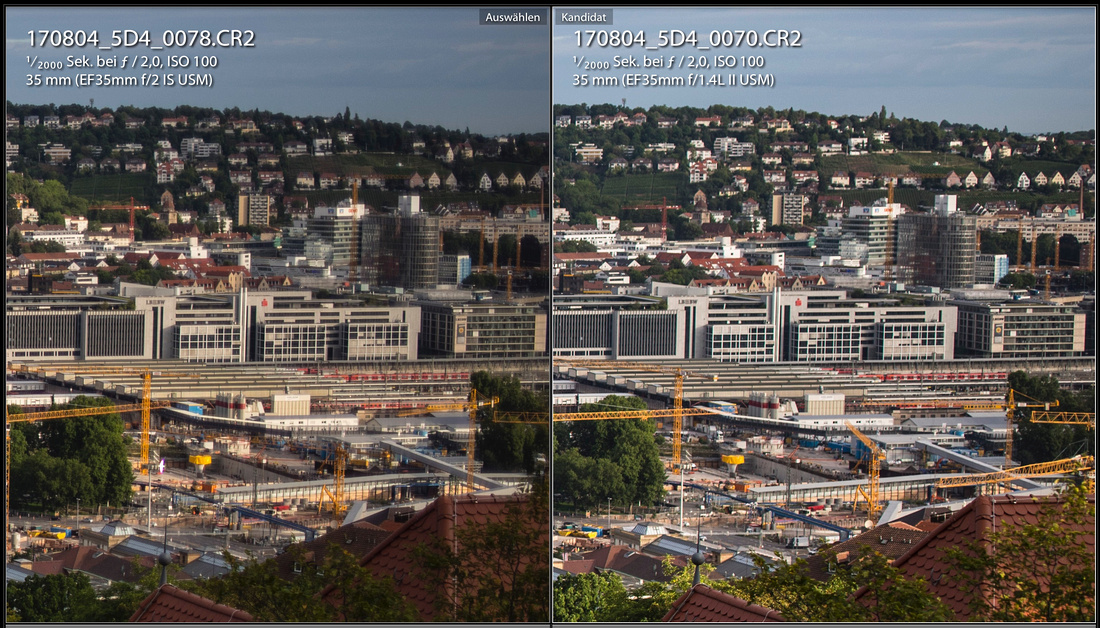
This is the right corner, again Milvus left and Canon L on the right.

This time I compared the Milvus with the Canon f2.0 IS... yes, the cheaper lens is softer but it is much less pronounced as with the Canon 50mm lenses.
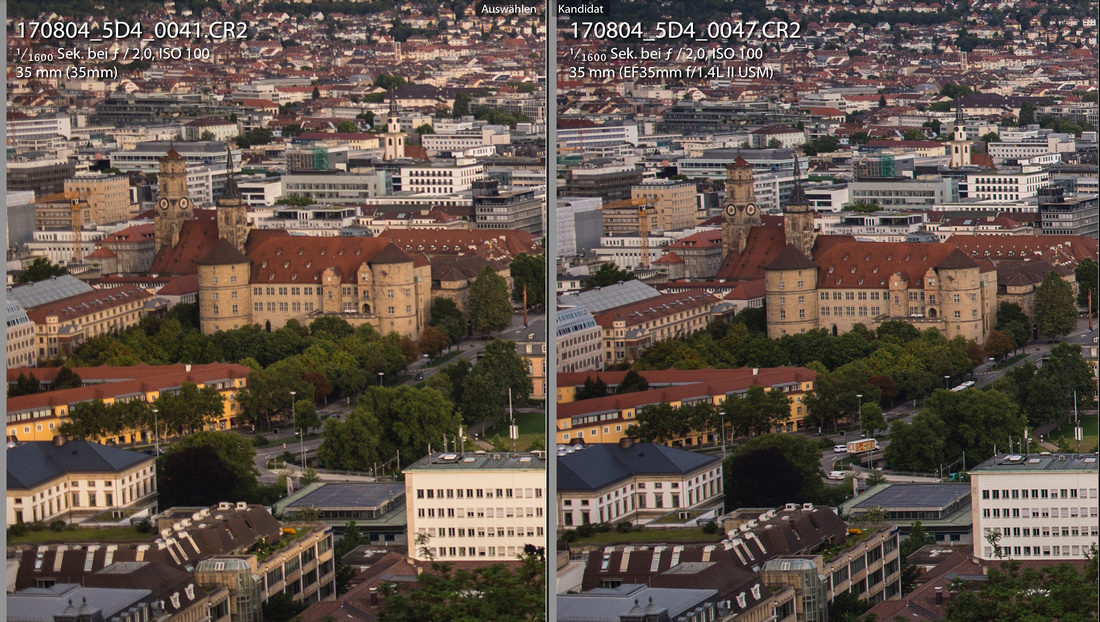
Now the left side of the image. Again the Milvus on the left and the L-Lens on the right. And obviously the left image is a bit softer...

Here the comparison between the Milvus and the f2.0 IS from Canon, marginal softer but interestingly the color saturation of the Canon is stronger - maybe due to vignetting....

The images above shows the situation @ f 2.8. On both f1.4 lenses the vignetting disappeared. Since the sharpness is there from edge to edge it did not make sense to me to show you boring images....
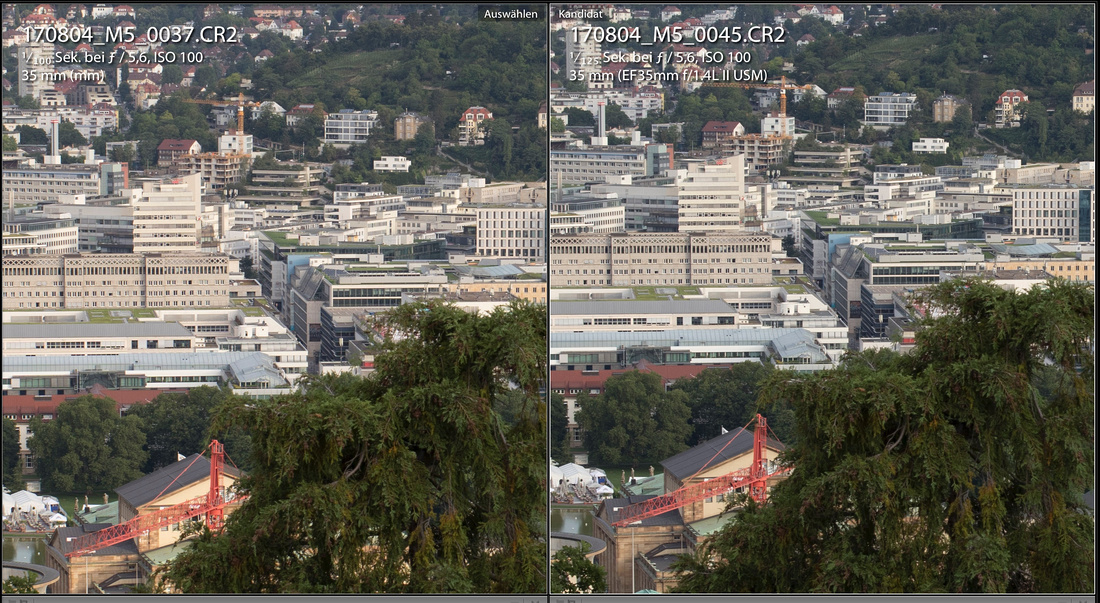
What I found interesting to look at the EOS M5 - in this case at f5.6. The idea was: do you see any difference between the expensive lenses to the cheaper one. The M5 with its 24 megapixel sensor represents the pixel pitch of 48 megapixel in full frame. And there is no reason to believe that the "pro-grade" lenses will shine at 50 MP as well....
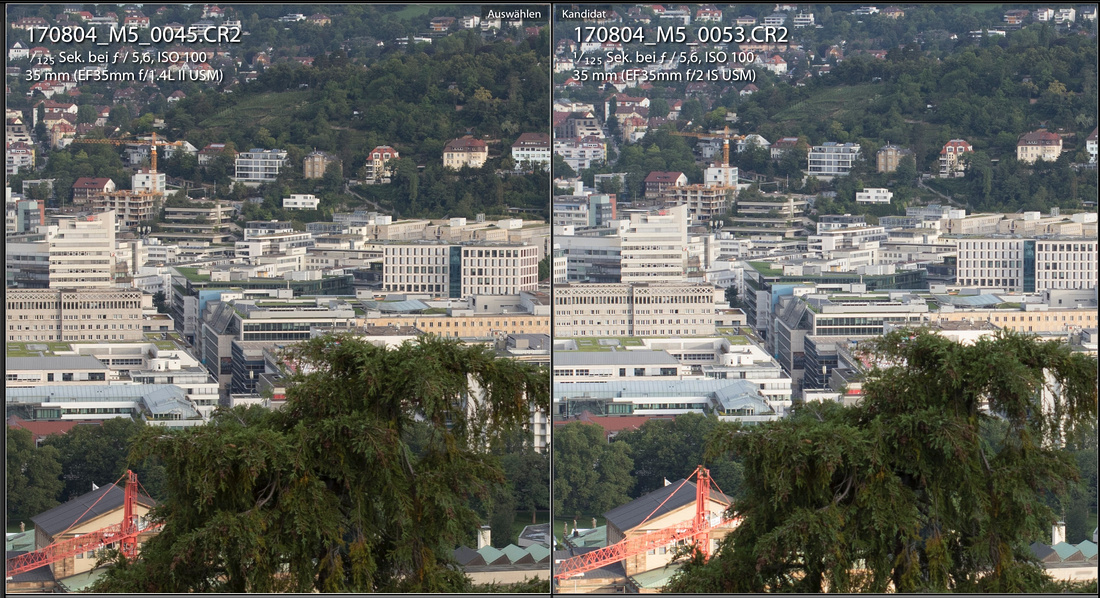
Maybe the f2.0 IS will be not that good at this resolution but absolutely great....
Lens Flare
Above you see from left to right the IS f2.0, than the L-glass and on the right the Milvus.
All three - again are performing well. The 6 elements are not that pleasant in comparison with the higher element numbers on both the L and the Milvus. ... And the Milvus shows higher contrast due to my taste....
Bokeh Quality
For testing the bokeh quality I have chosen 2 setups.
1. on our garden table. Here I put some candles into the picture to produce bright bokeh balls and some flowers in the background to evaluate the creaminess in the background areas...
2. Here I -originally- wanted to have a blue hour model shoot. But unfortunately all models I have asked were not available so I have chosen a piece of art. The idea was to have the lights of the city totally blurred bringing large bokeh balls - and a bright object in the foreground....
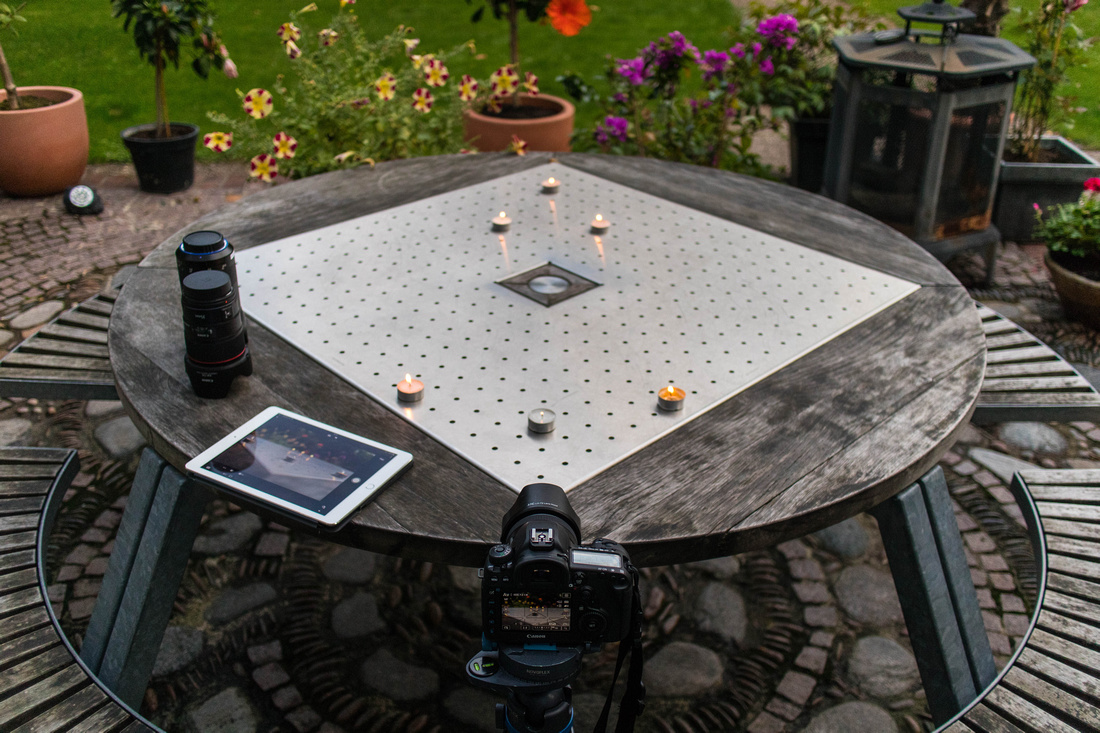
The set up of the first bokeh test. The 5D Mk IV was taking the images, mounted on a sturdy tripod. the iPad was used to check focusing and to release the shot. this works perfect - with both cameras I used - the 5D Mk IV as well as the EOS M5.

Here you see from left to right Milvus - L - IS... First of all: this is a bit tricky to evaluate The Idea was to show the closest area which is sharp. The right set up for this test has the difficulty that the reference is the sensor plane. In reality the lenses have a different length which means that the viewing angle will be different, too. As a comparison: normally the bokeh balls should be a factor of 1.4 smaller at the f 2.0 lens in comparison to f 1.4 - but this is nearly the case...

In this case i used the candle als reference point for focusing.

In this image the left candle was the reference for focusing. I made a crop into the image to look ar the difference in the bokeh.
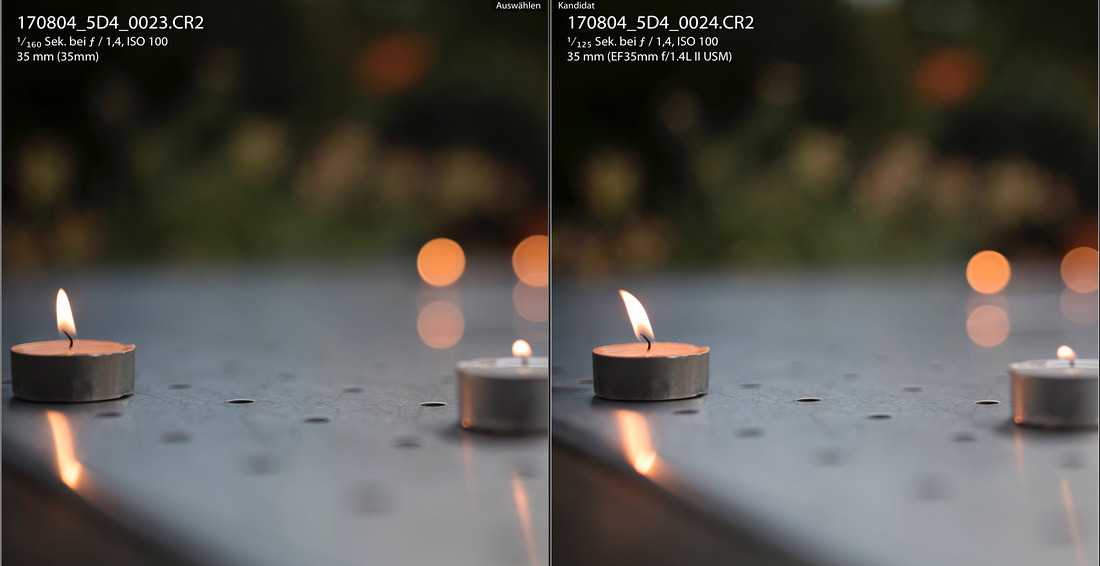
Yes there is something... as seen with the Milvus 1.4/50mm the bokeh is softer again. The Canon bokeh is nice and soft as well - but a margin more busy - not that pleasant I have to say....
For the 2nd shot I wanted to do it with a model, using the light of the city as background..
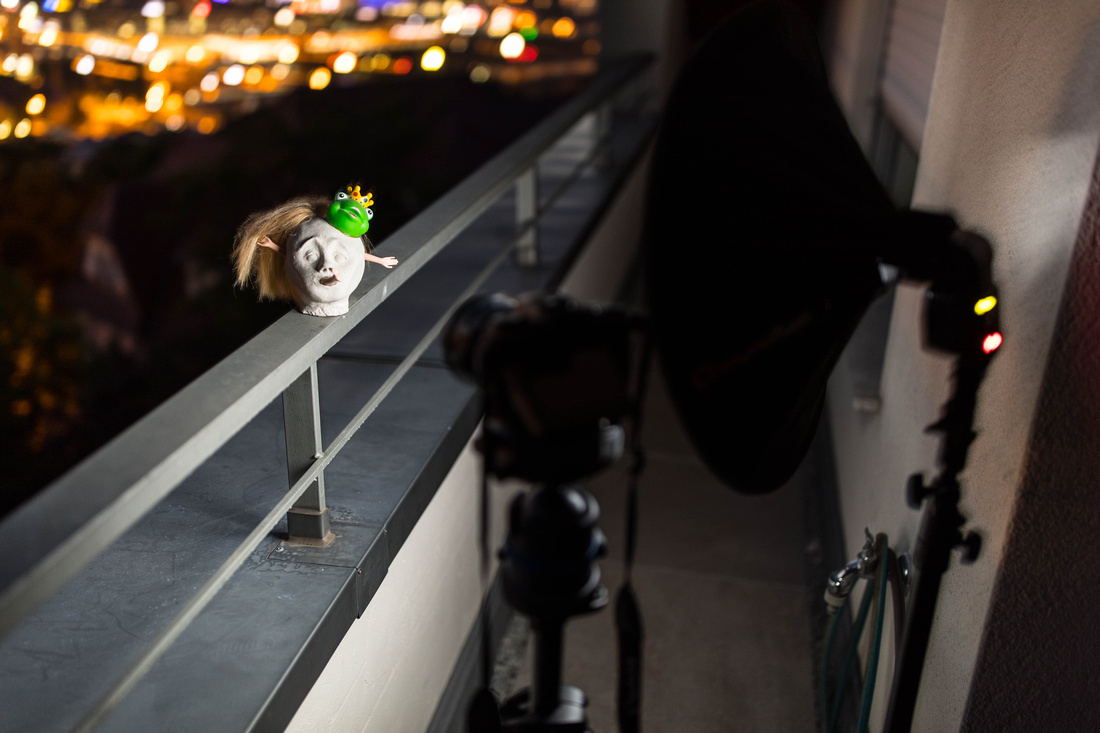
Here you see the basic setup of the photos below. he EOS M5 is mounted on a tripod, I used off camera flash with the RT Radio controller and the Canon EX 430 RT as well as the beauty dish from Roundflash.

This images are shot with the M5, the lenses are wide open (f1.4 or f2.0) . What has blown me away: the vividness of the Milvus. straight out of camera..... Left: IS, middle: Milvus, right: The-L-glass.


Maybe the only downside of the Milvus: the onion style bokeh balls. These are mote pronounced
Shooting Experience
A couple of things to say. Using 35 mm as more or less standard lens whenever I carry the "big guys" with me (5D Mk IV, 7D MkII) i found out that especially the EF-L holds the records in "keepers". The last wedding: All photos I published on Facebook were shot with the EOS M5 & EF-L 35mm f1.4 II combo. This was really astonishing for me - but the images were awesome, too...
Therefore testing the Milvus 1.4/35mm was nearly a must. The expectations were high. And they were not disappointed. The experience in terms of image quality were really impressive. The bokeh rendering is softer - but with some onion rings - which the Canon does not show. But this is visible only in a couple of situations....
Another topic is shooting in a studio style environment. All shootings where you need manual focusing like the bokeh comparison images are showing the clear advantage of the Milvus! You will that you are working with a high precision tool. It is damned accurate. And using a manual focusing on a mirrorless camera is another topic, because you can focus with the viewfinder. And believe me: the best camera for manual focusing in the EVF (electronic view finder) is the EOS M5.
Highlights of the Canon EF 35mm f 2.0 IS USM
This lens I reviewed when it was brand new. You will find the review here: Review of the f2.0 IS
But I made a couple of other shots which I want to present here... mainly from the last weeks trip...

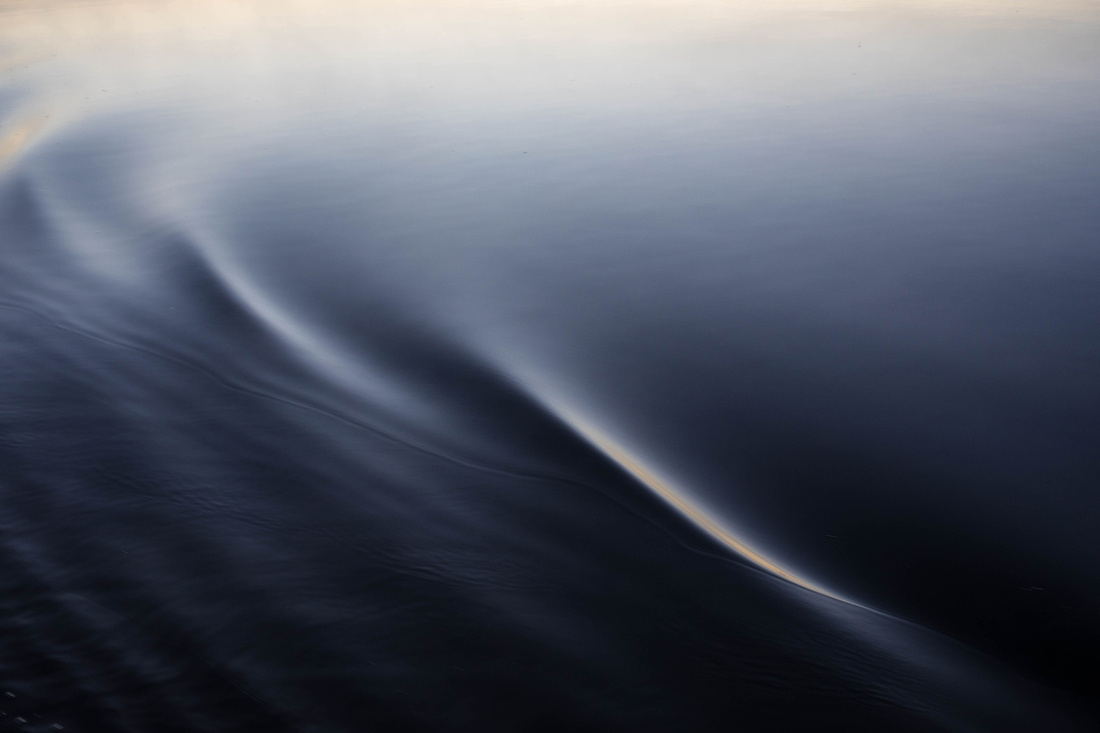
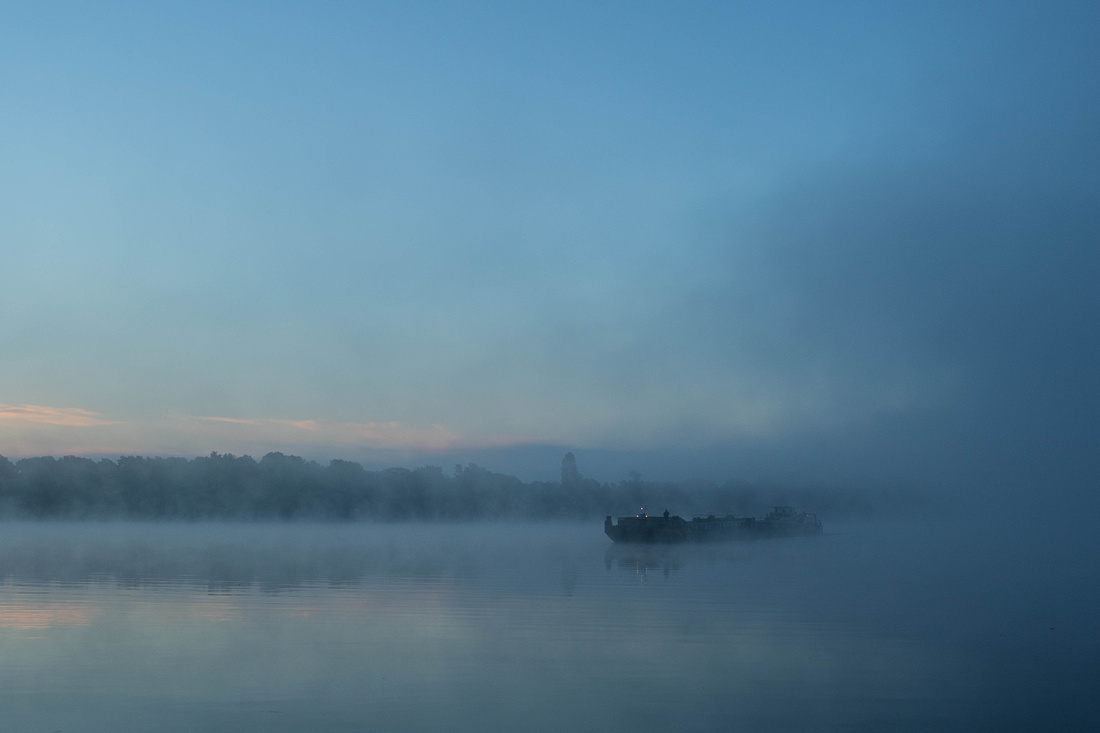

Many of my HDR-Panorama shots I took with the IS-Lens in portrait mode... guess the resolution...
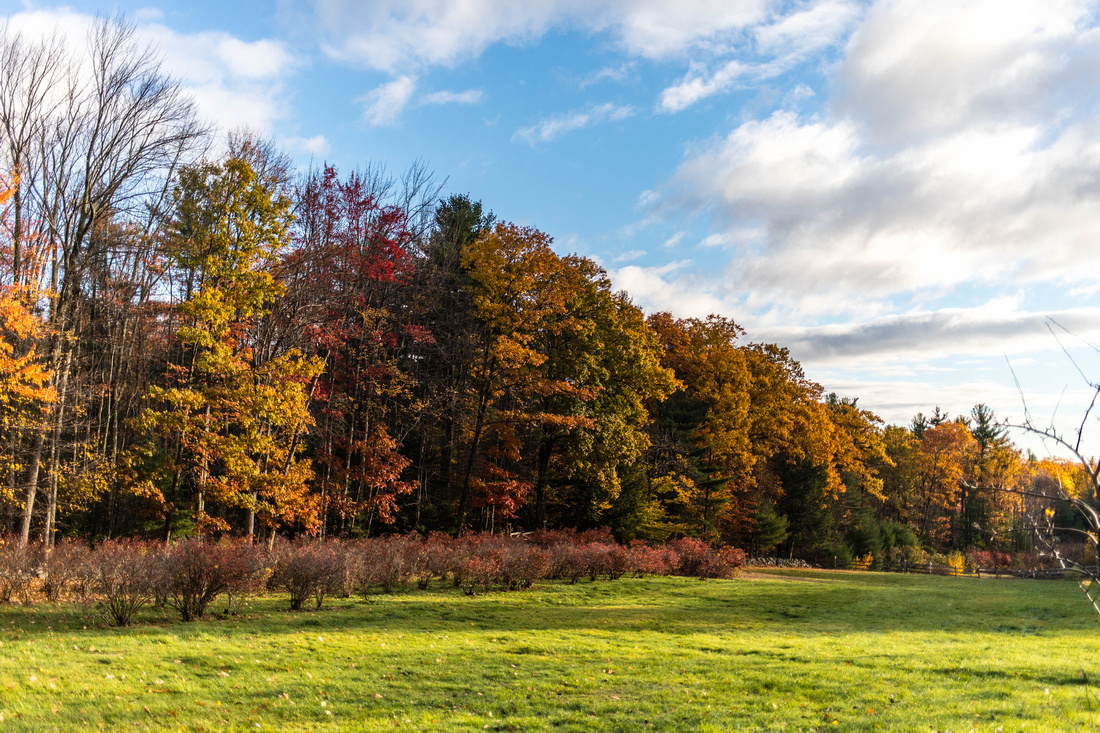
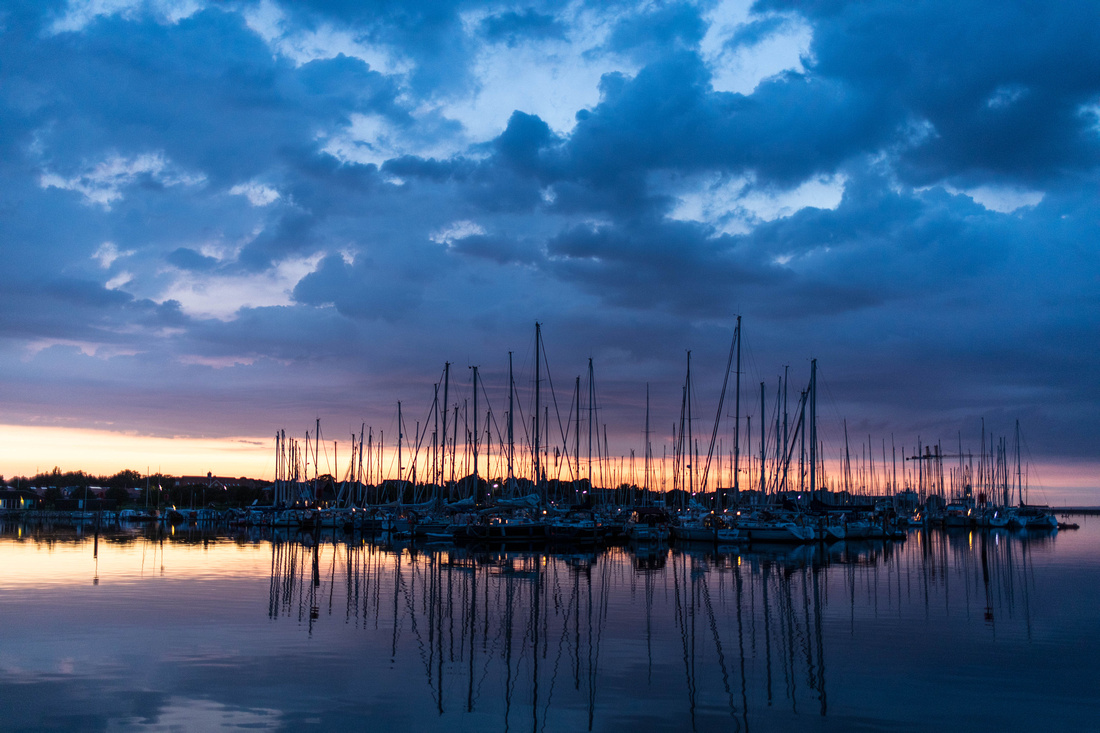
The last photo was taken on my trip with the Milvus..m The IS definitely helps....
Highlights of the Canon EF 35mm f1.4 L II USM
This lens I bought together with the EOS M5. It immediately became one of my favorite lenses - especially in combination with the M5.

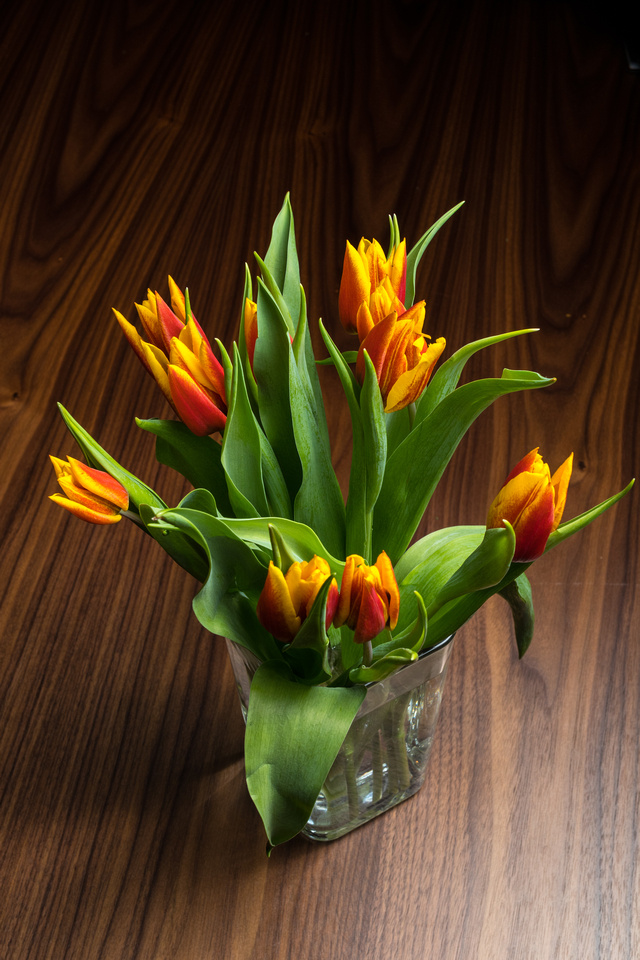
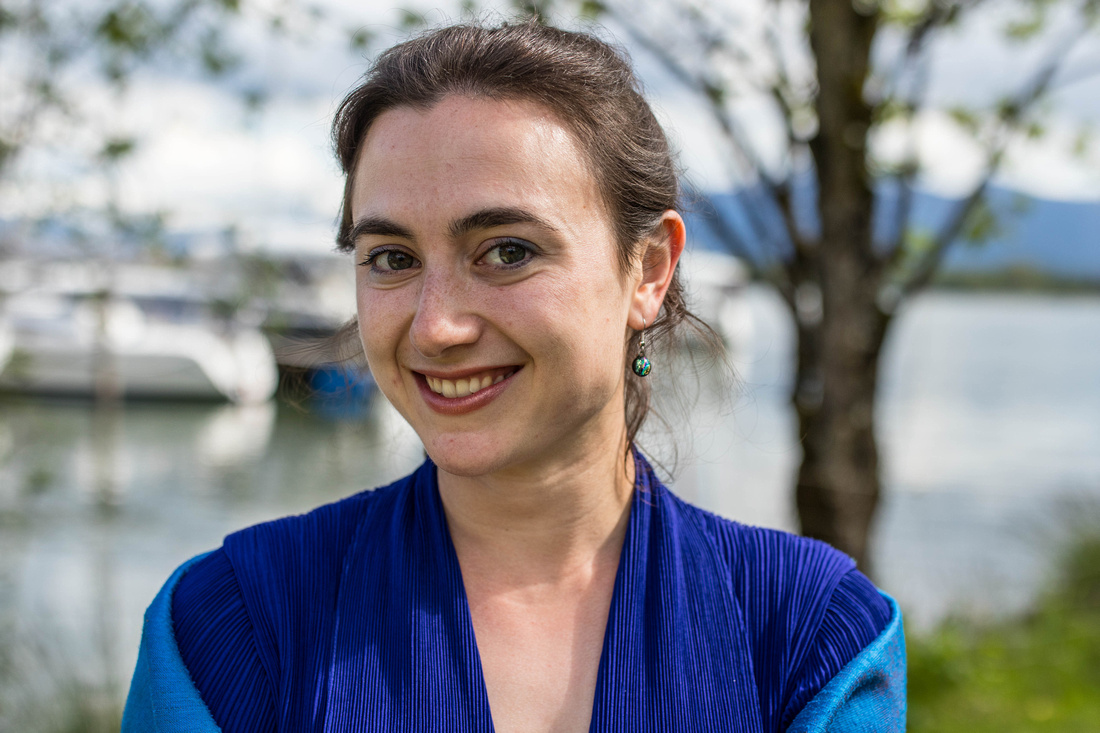
Shooting portraits is really fun, especially with the EOS M5...
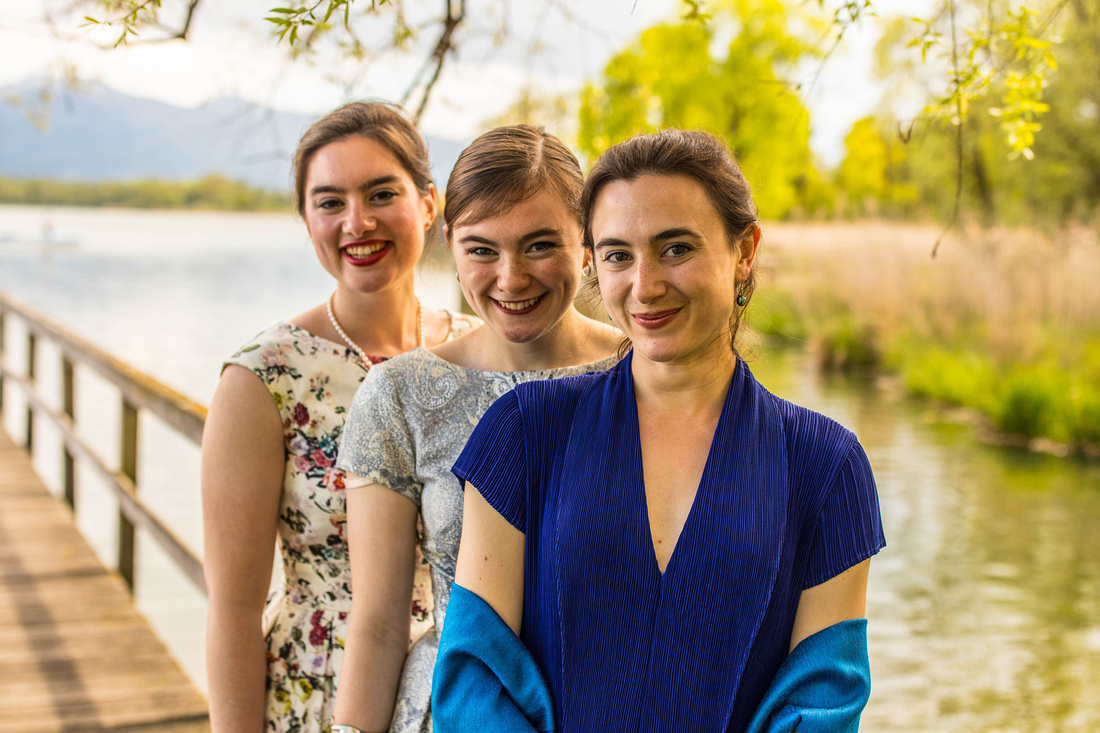
This image shows that the lens works wide open even with small groups....
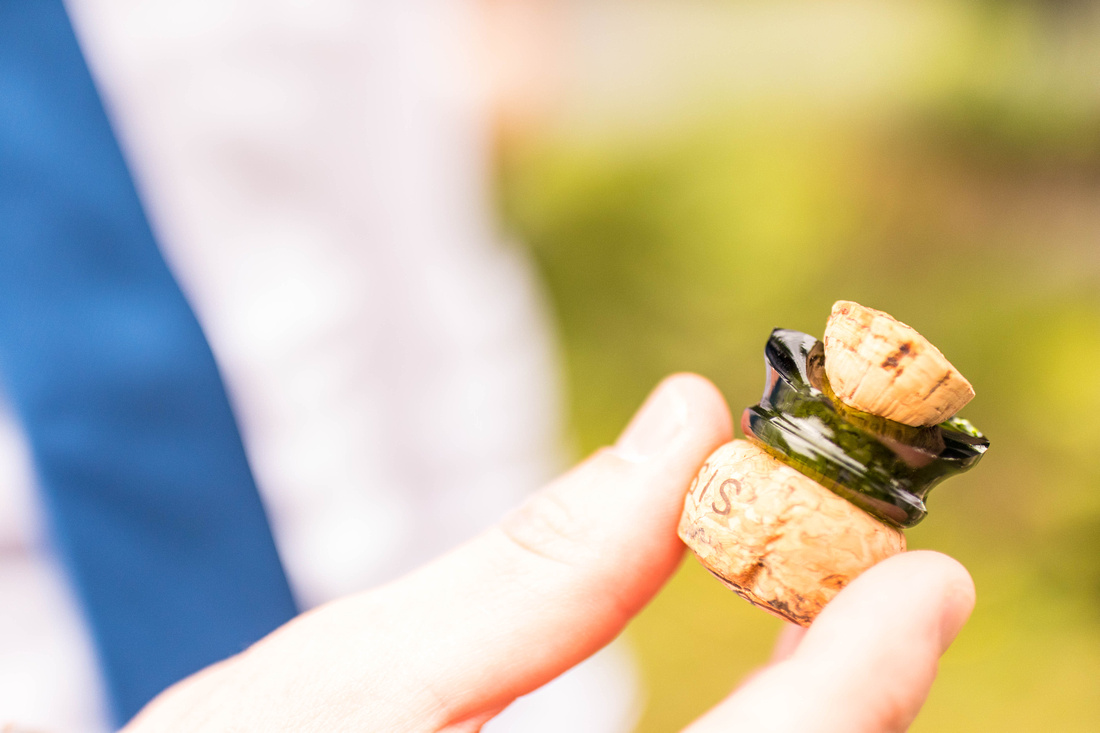
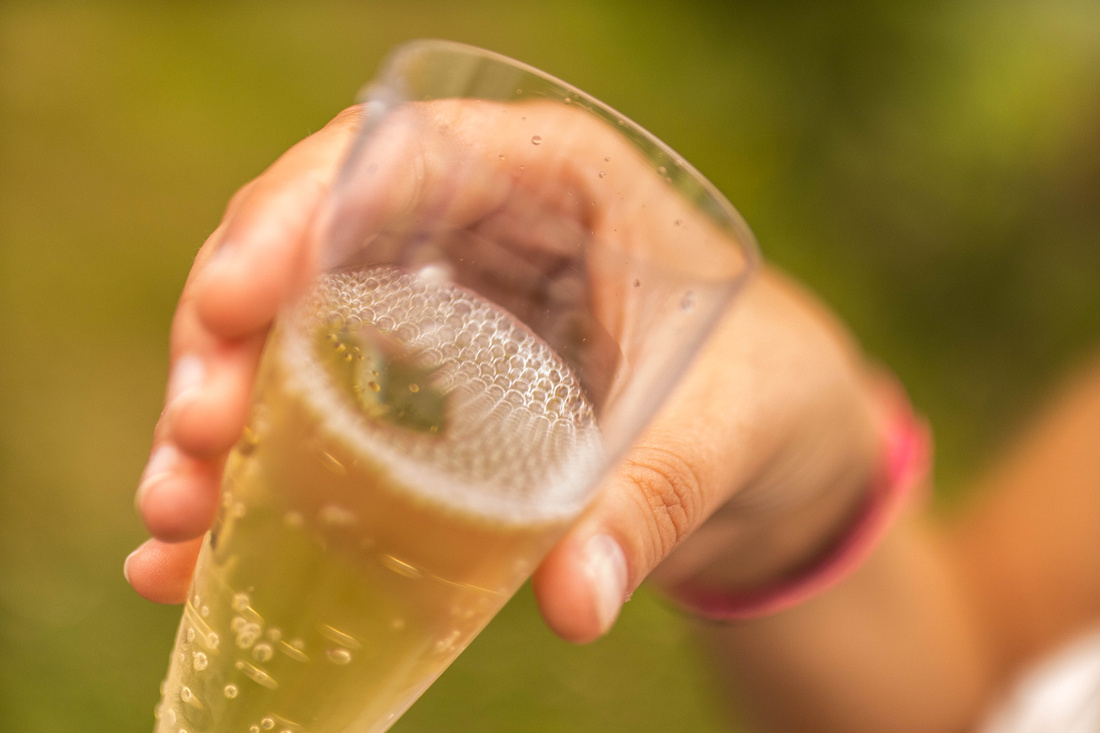
Please look at the bokeh!!!
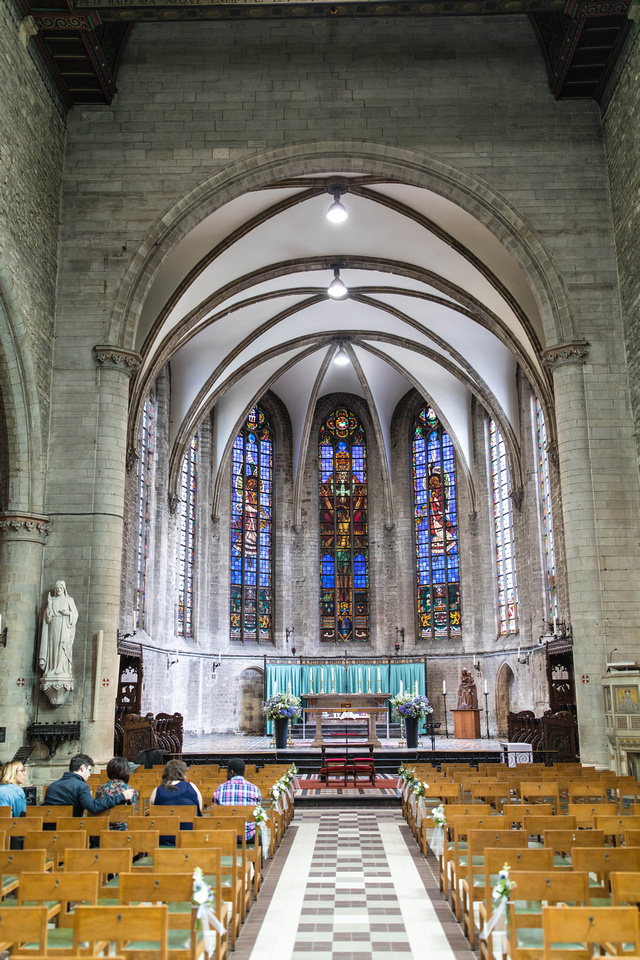
For me this photo is so crisp - even inside a church handheld.......
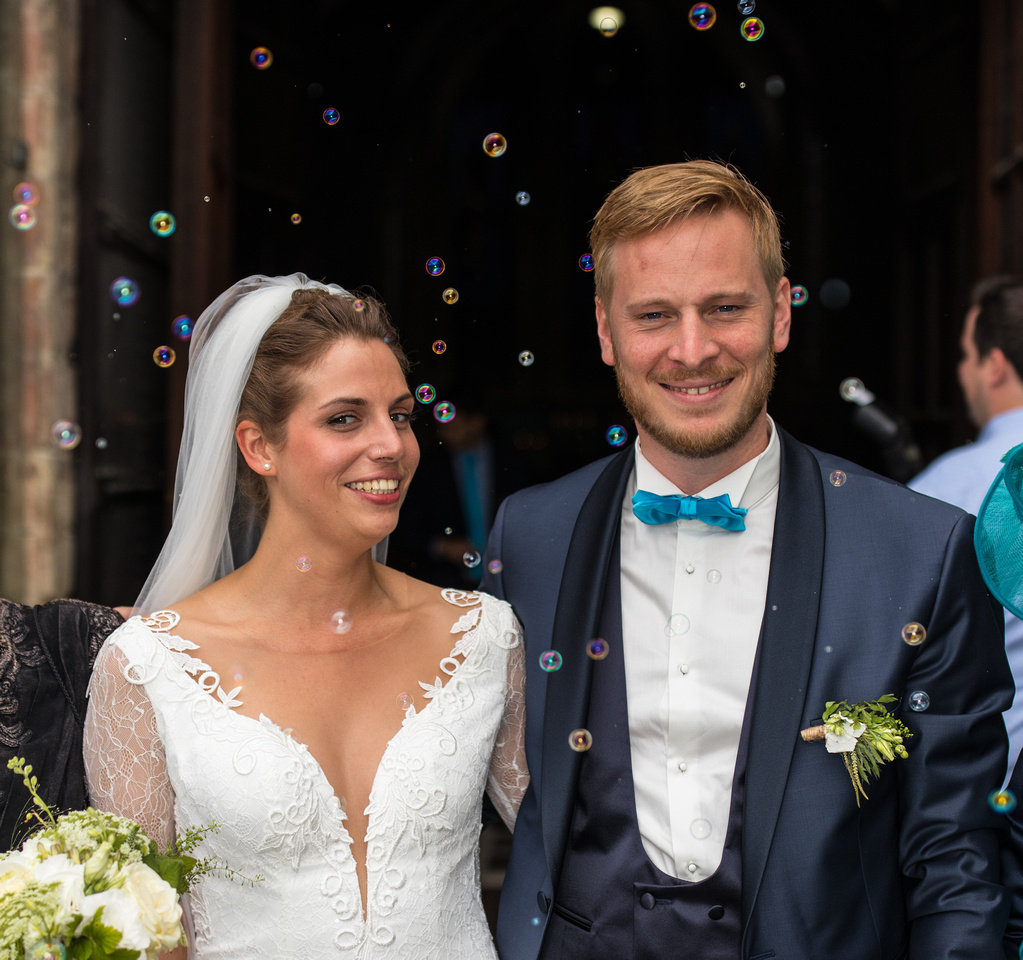
This photo is special - because it shows limitations of manual focus lenses. If you ask why: there is a reason: look at the bubbles, they are a bit special... to let the bubbles pop you need a huge ring flash - in this case it is the original roundflash. But to focus manually is nearly impossible- it is too tight...
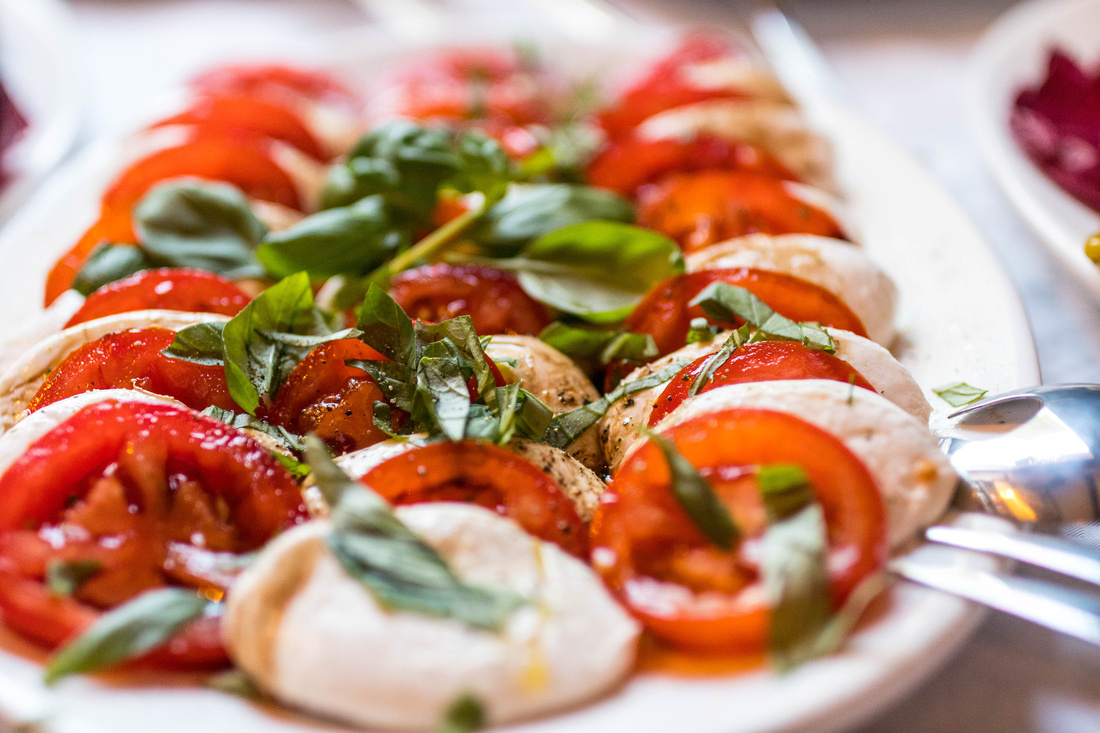
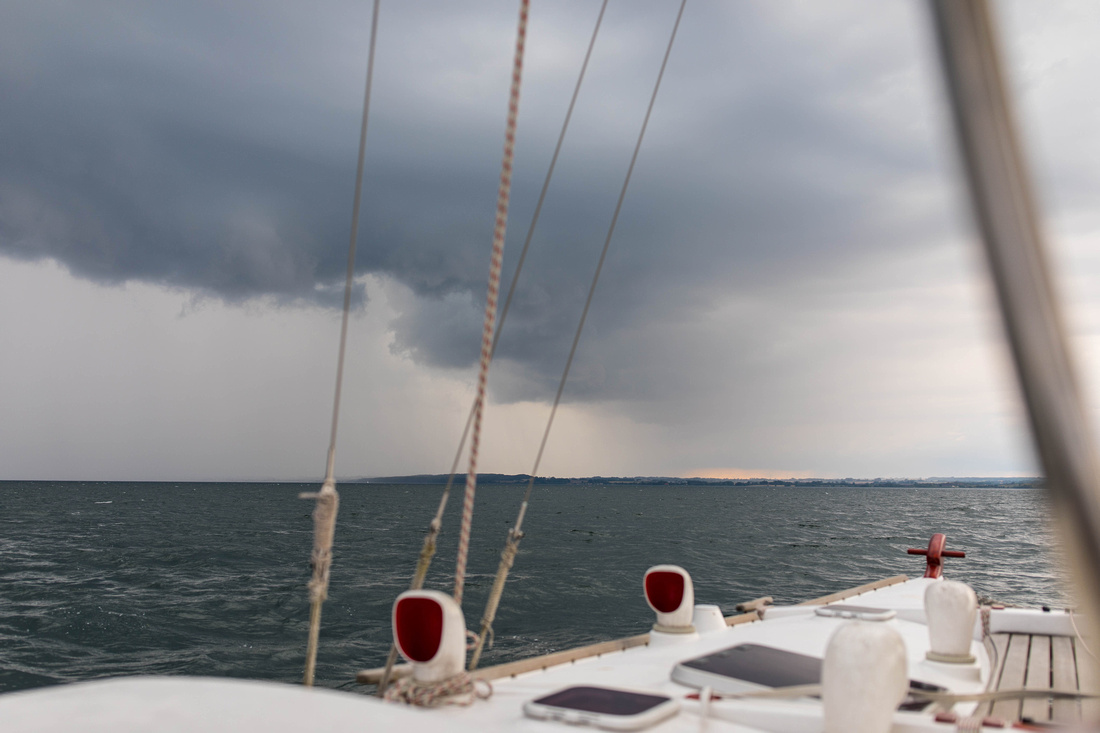
This looks like bad weather...
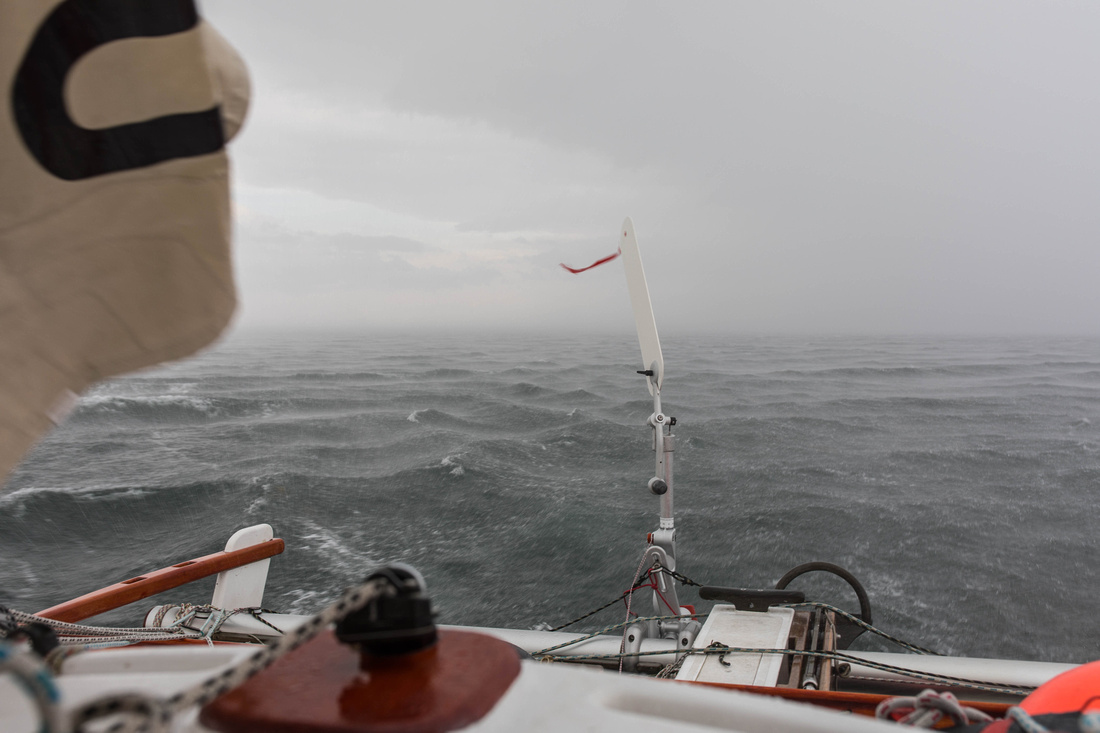
And this is bad weather: 35 knots wind and rain. And yes the weather proof gear is weather proof. confirmed....

But luckily that lasts only a couple of minutes....
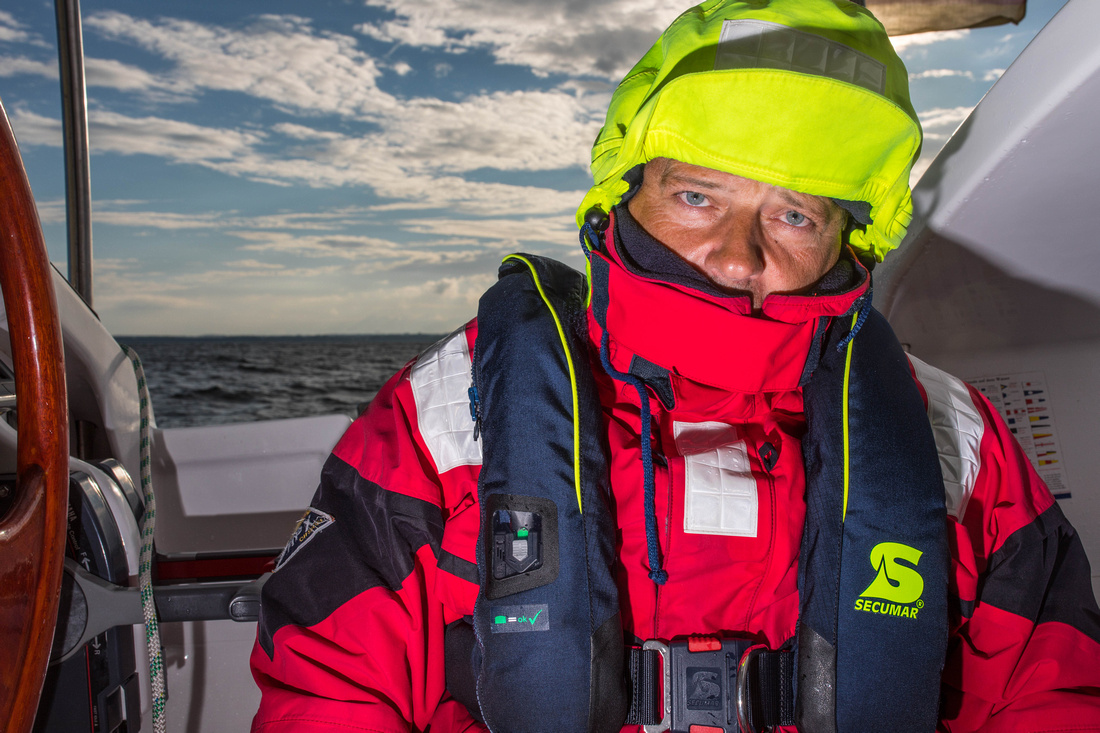
I do love this image. Shot with the flash again off camera....
Highlights from the Milvus f1.4/35mm
Unfortunately I had this wonderful lens for only 2 weeks for testing. But in these 2 weeks I dis a couple of remarkable images which I want to share with you here:
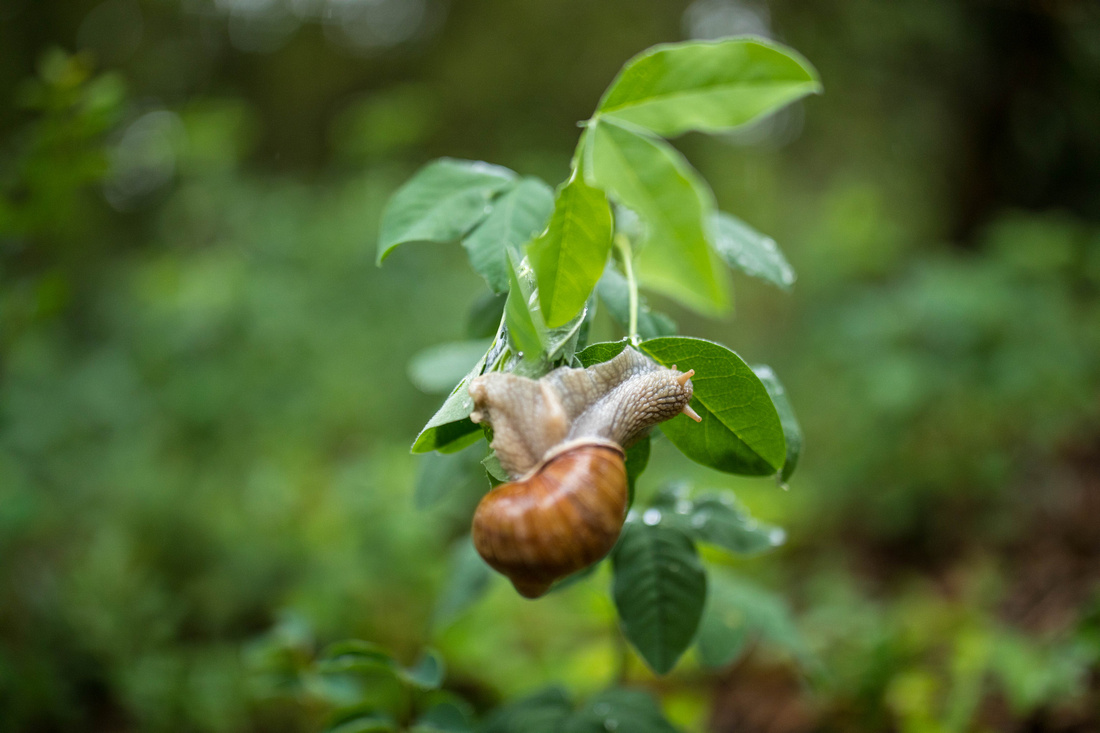
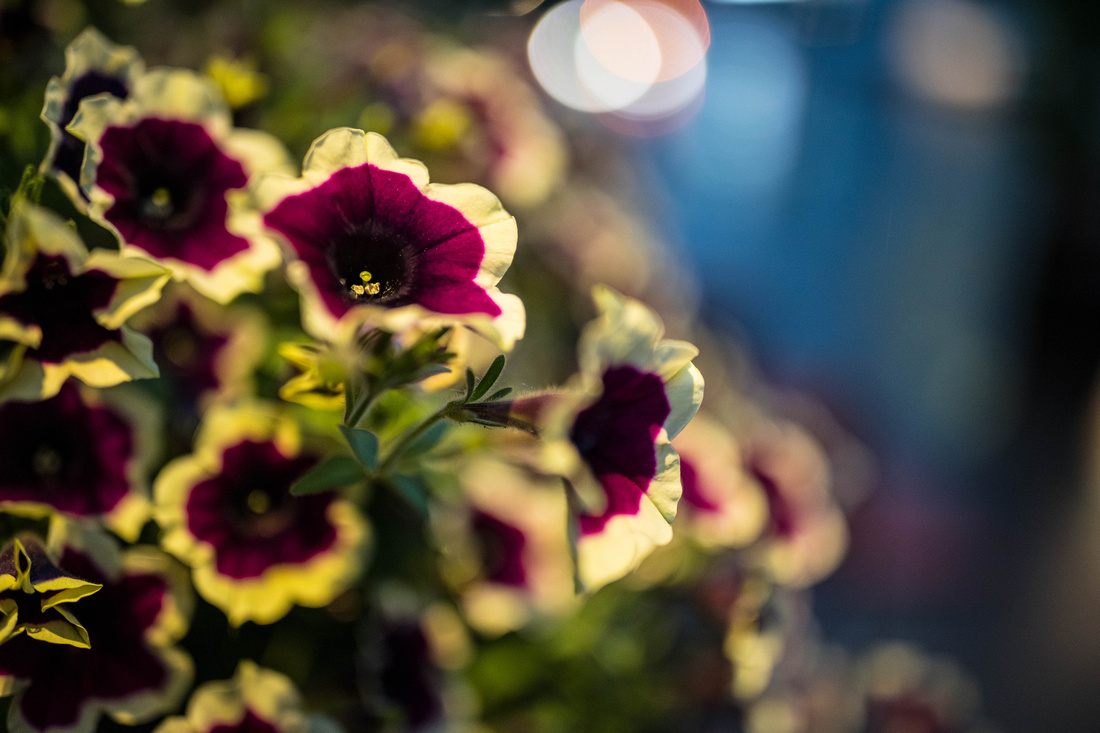
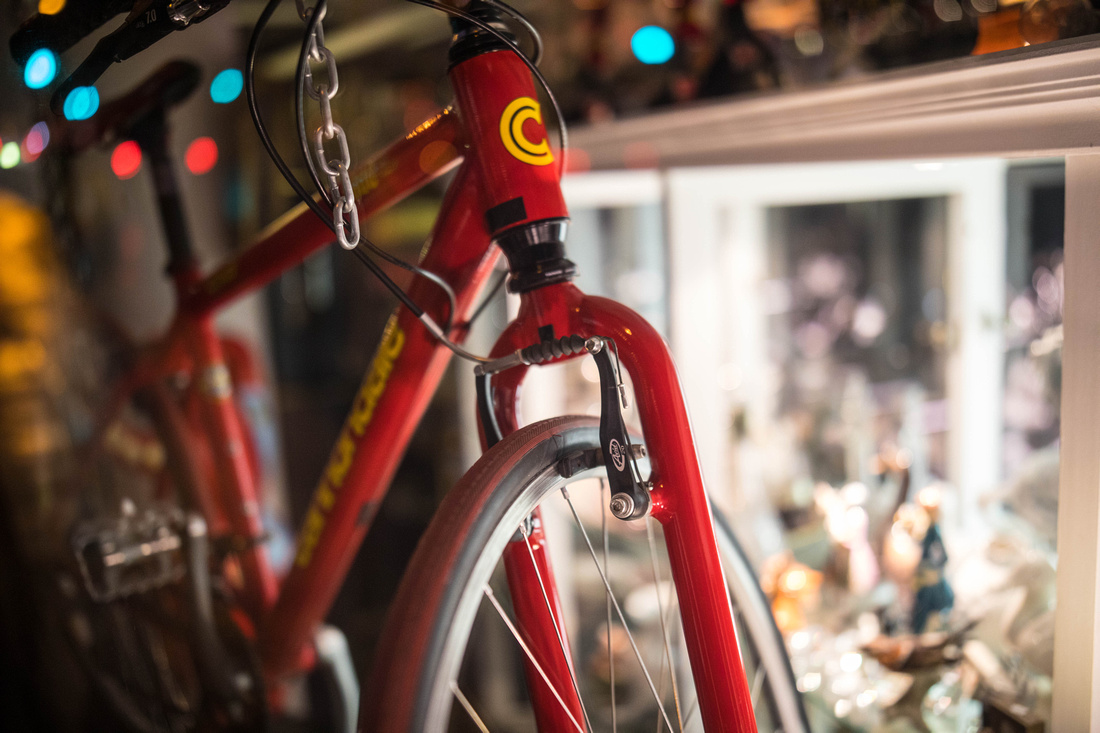
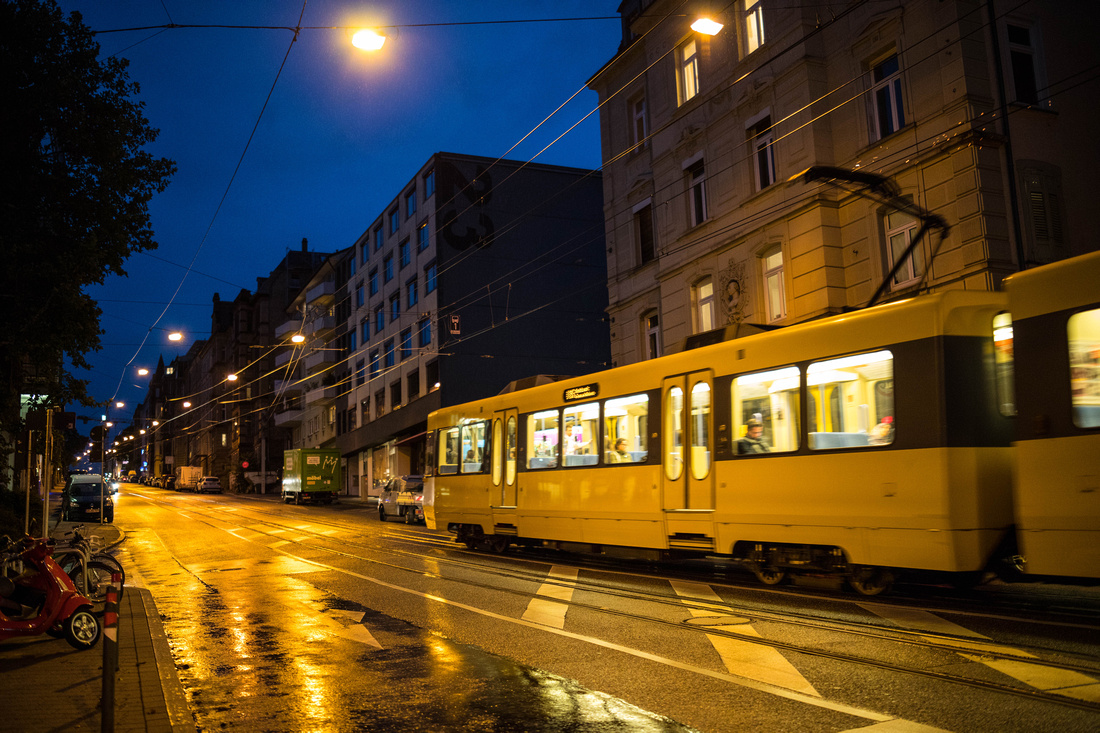

These photos I shot on a way to a dinner with a customer... with the 5DMkiV. These kind of image are around us every day...
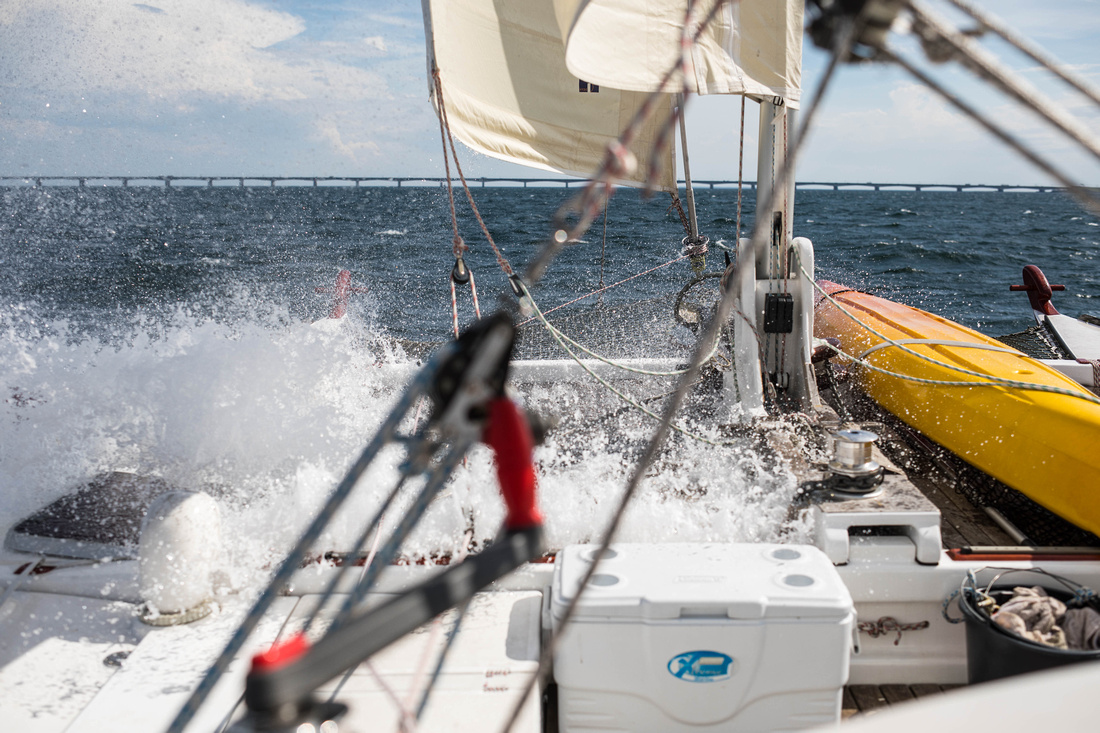
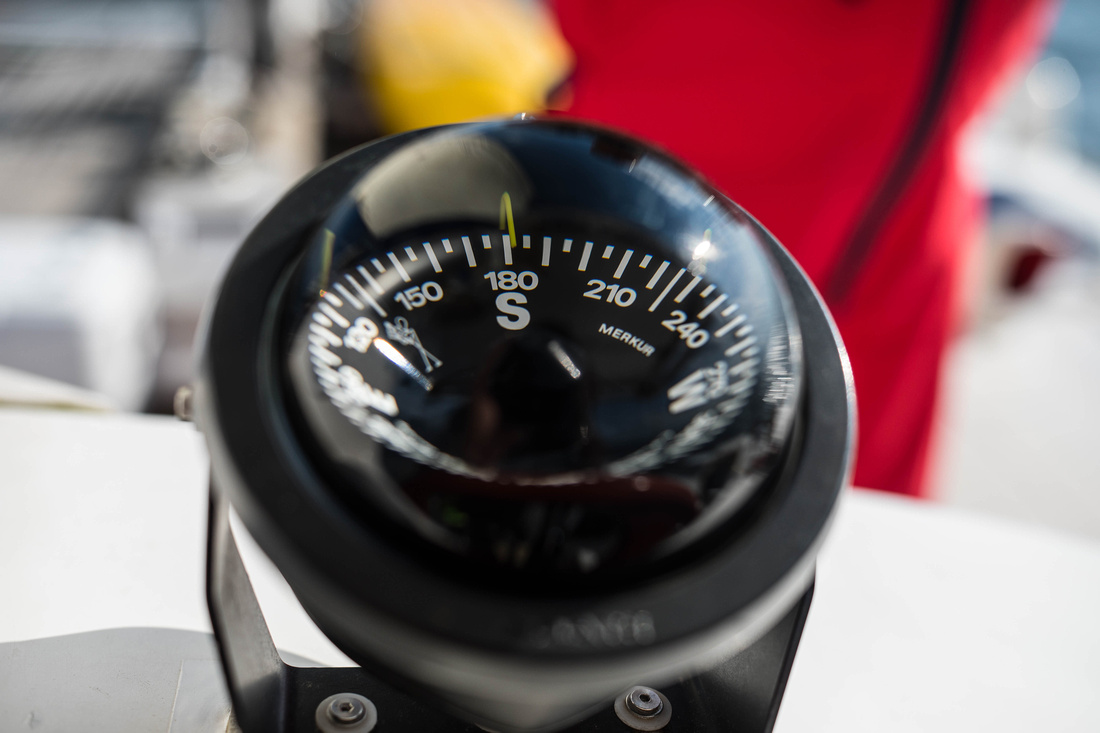
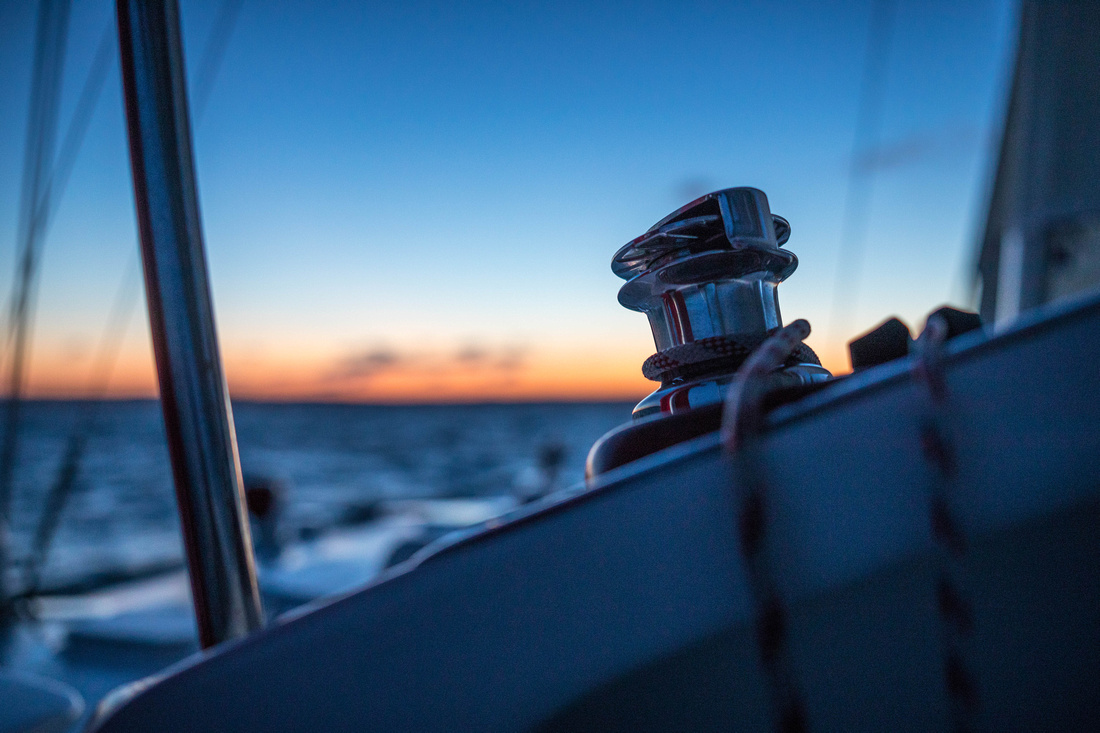
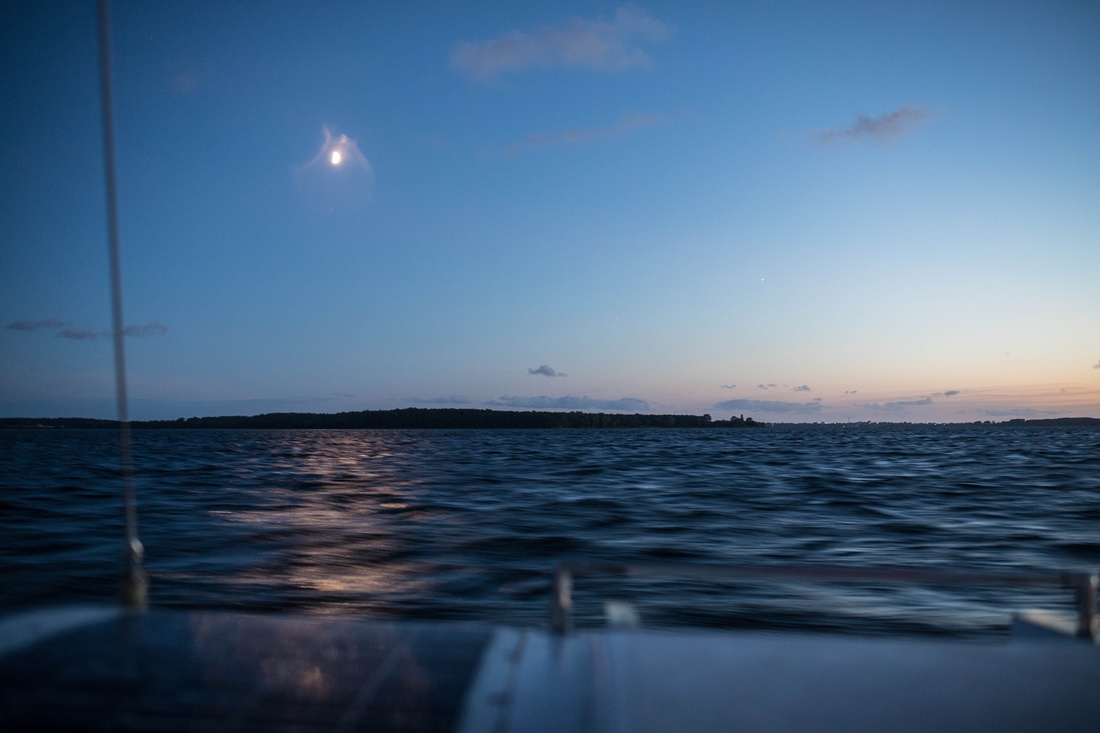
Images from the boat trip, as well with the 5D MkIV


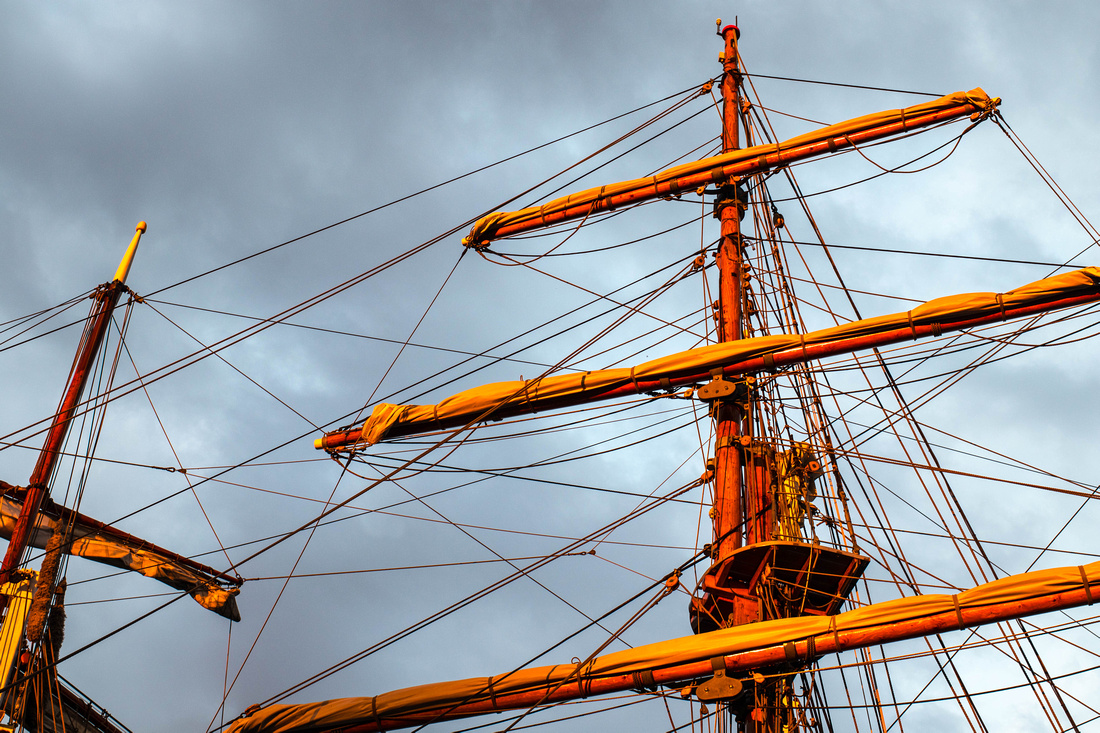
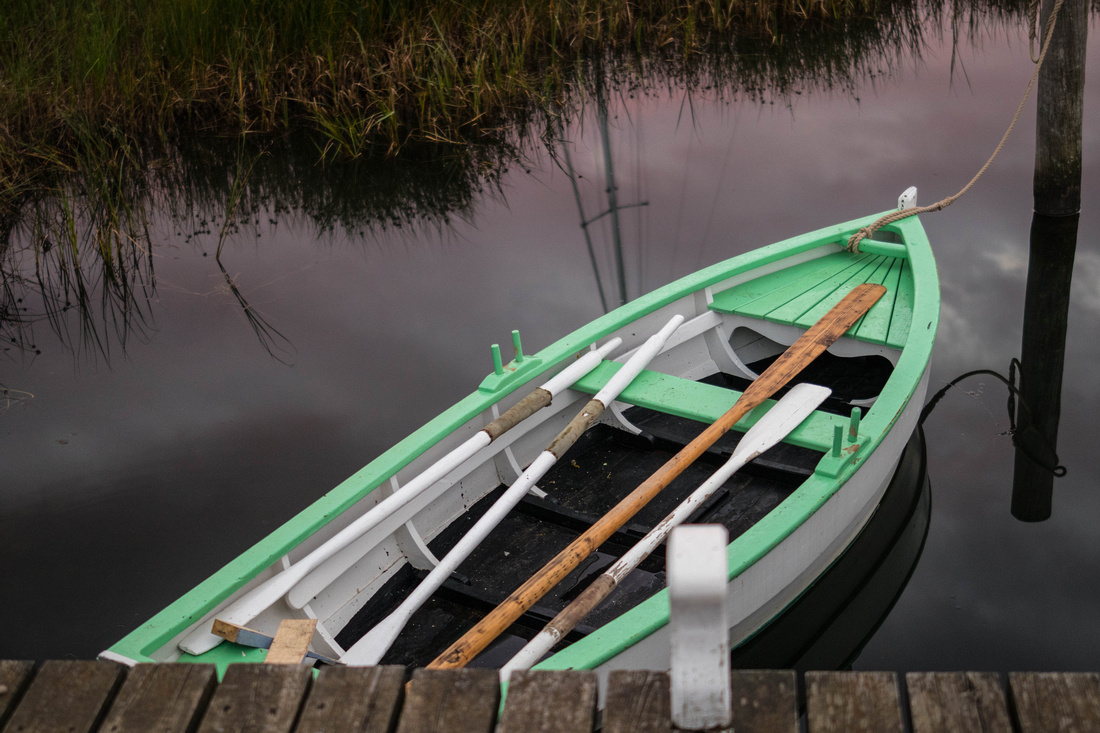
These photos were taken on a trip though the village of Marstal in Denmark
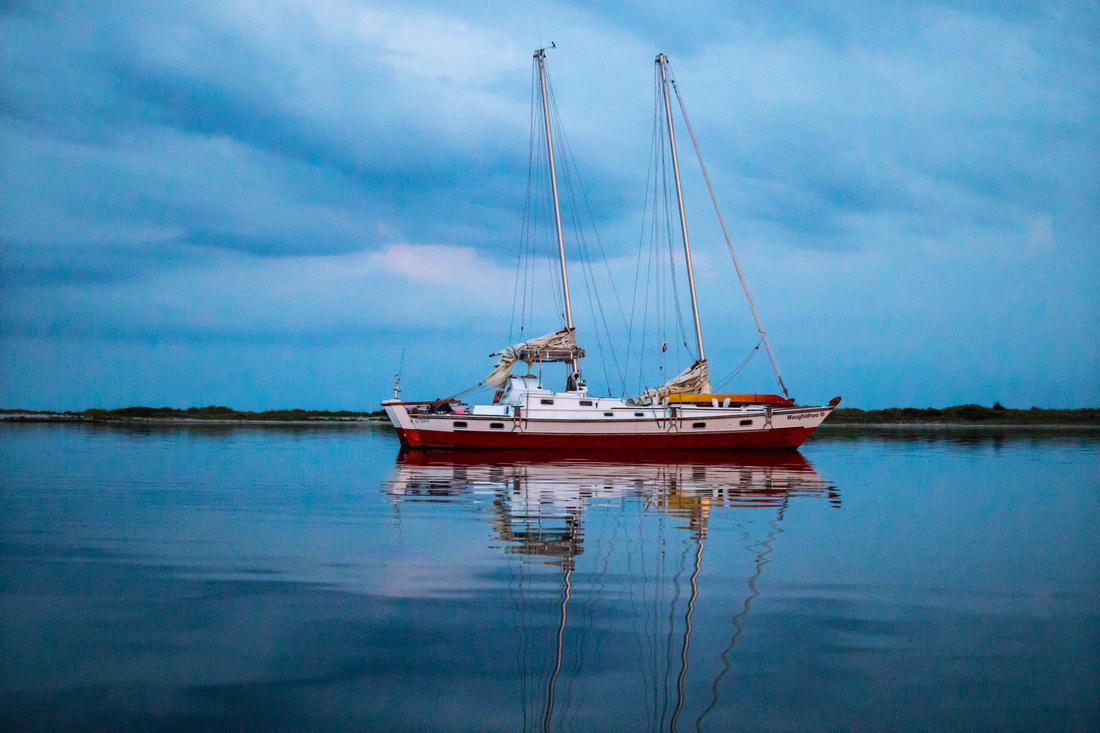
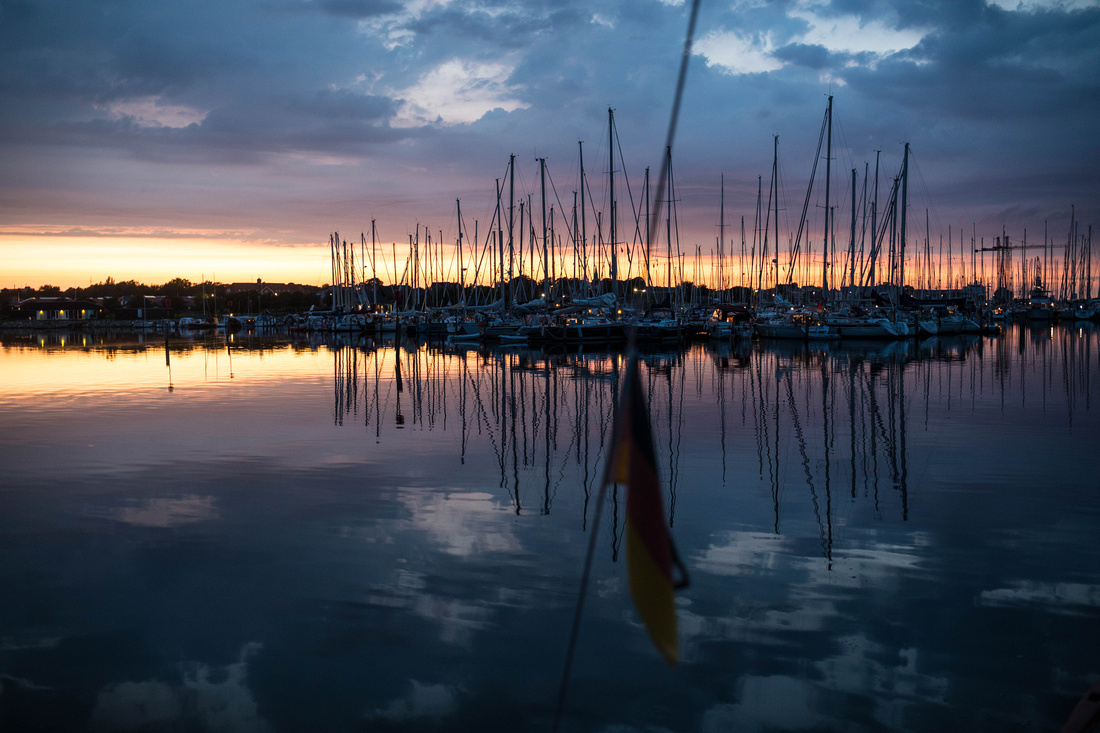
And the last 2 image were shot on the boat....
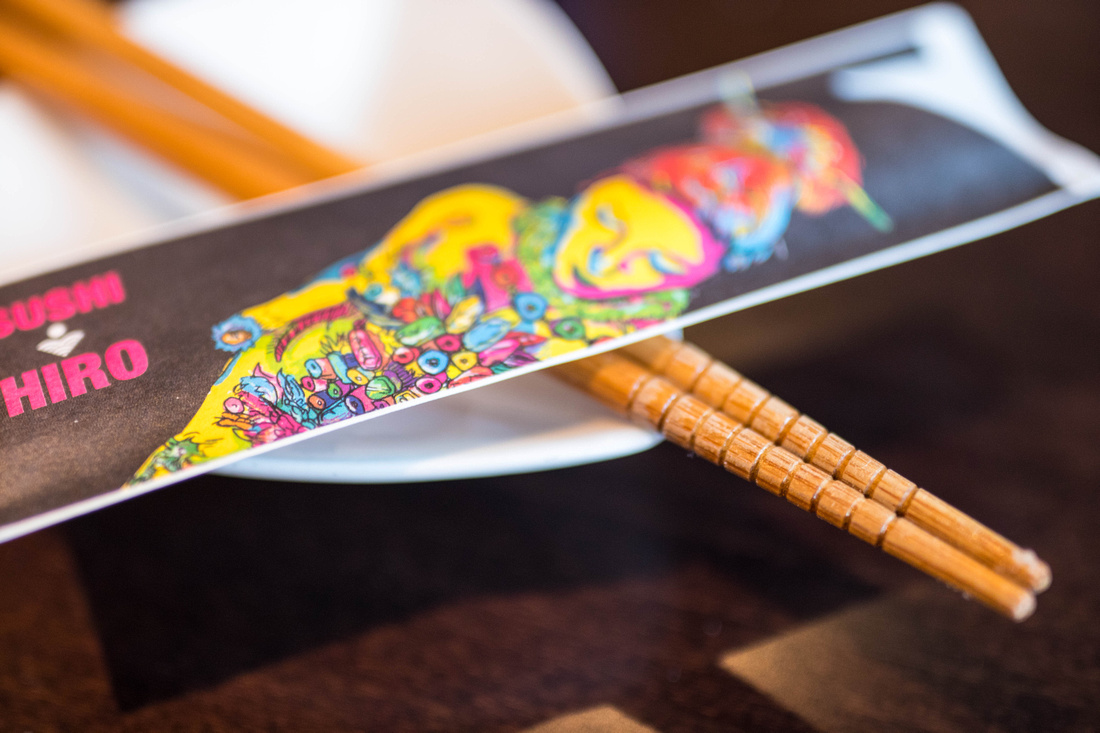
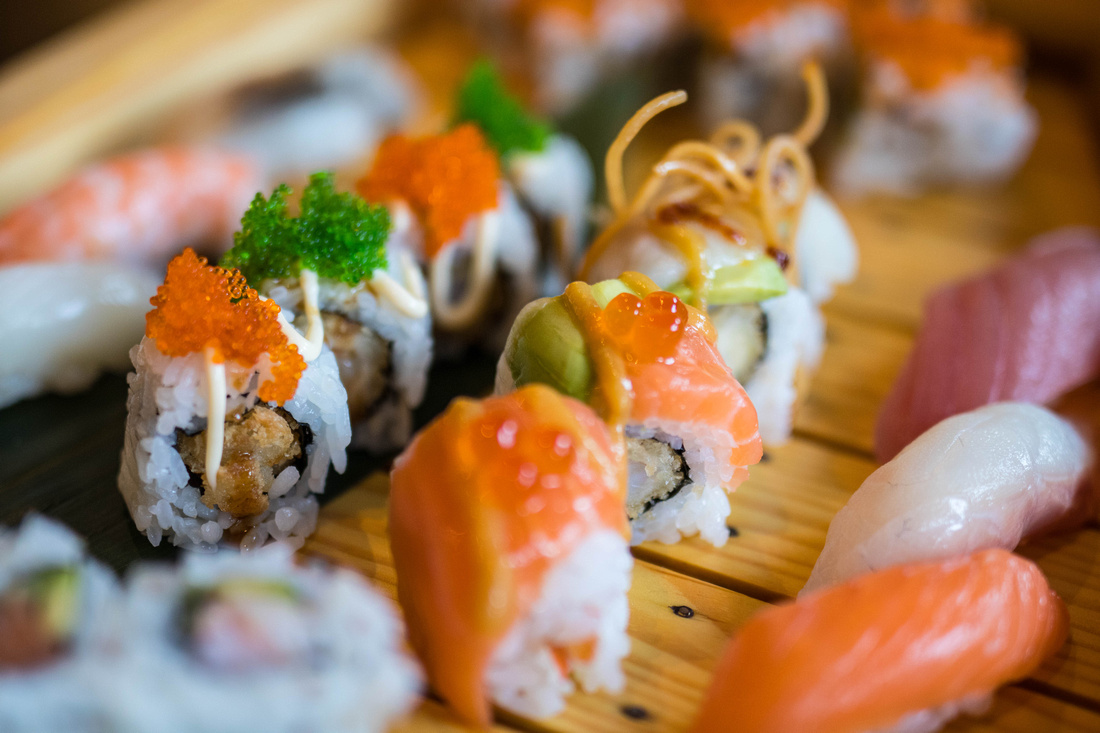
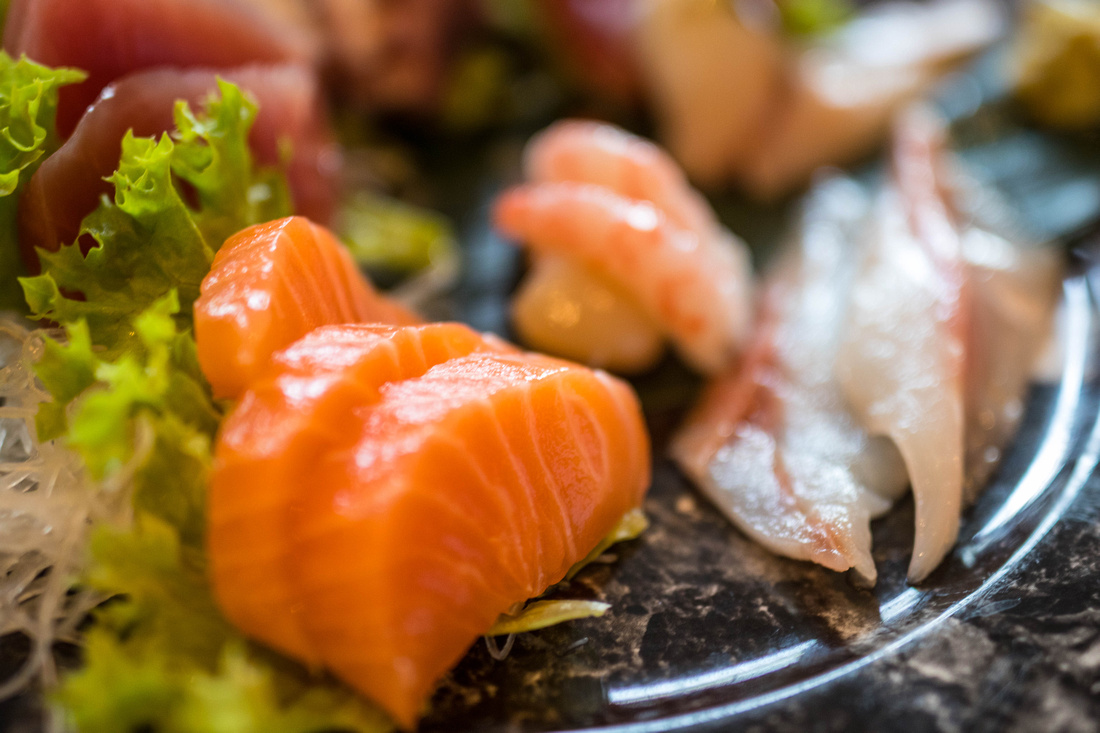
The Sushi photos I took at Hiro-Sushi in Stuttgart. These series were taken with the EOM M5.
Special Remarks
Owning 3 other Milvus lenses I feel pretty familiar with manual focusing. But I have to say the Milvus 1.4/35mm was a bit more difficult to handle than the other ones - or I used it differently, more experienced maybe. The difficulty I had was with extreme focusing points in the 5D Mk IV where I did not had consistent results and a couple of not well focused images. It is very interesting that using manual focusing lenses is much easier on mirrorless cameras than on classical DSLR´s. But here I faced difficulties in low light as well because the images became bit noisy and harder to judge.
Another interesting experience is using the modern Canon cameras in live view on the iPad. That´s awesome. It works just great. It is pretty was to connect to iOS and the control of the camera is great. And I used the same method to transfer images during these 2 weeks I had the Milvus for publishing images on social media. It is so fast and easy....
Verdict
Hopefully this review inspires you to look at the prime lenses a bit more interested, or buy one and have fun with them.
Definitely the value for money lens is the f2.0 IS. It is sharp, has controlled amount of color fringing and offers a proper bokeh rendering and contrast. The corners are softer wide open... But still absolutely useable. So it is highly recommended: value for money....
As said earlier: the L-f1.4-II is a lens I love. It is just great and delivers. and the Autofocus helps especially in situations where you have to be quick - or no other choice.

The Milvus: If i would not have bought the L before it would be a very hard decision now: the rendering of the lens is just awesome. Images you even do not want to touch at all. The technical aspects are outstanding as well. Who ever likes manual focus and who ever needs the ruggedness: the Milvus should be yours. The feeling of working with a precision instrument: no other lens has it.
For me this last series of photos had convinced me about the Milvus: It delivers. Vividness and fun.
Let me make one remark: On Mirrorless like the M5 shooting manual is an awesome fun... Much more than on a DSLR.
Miscelleanous
First of all: Big thanks to Zeiss giving me the Milvus for a 2 weeks test. It was a lot of fun to use this lens and to compare it with the Canon ones. For me it is the most interesting lens - and maybe the lens which gives you differentiation to other Professionals.
The photos shown were taken with the Canon EOS M5 and the 5DM kIV. For the photos of the lenses I used the Zeiss Milvus f1.4/50mm.
As usual:
- You see the technical images from the image quality comparison you find here.
- Photos I shot with the Canon IS you get here: https://goo.gl/BRSH5r
- Photos if the Canon L-Lens are there: https://goo.gl/2g7qYQ
- And last bot not least the photos shot with the Milvus are there: https://goo.gl/gWQkg2
]]>
The Canon EOS-M System was in a kind of try and error phase for a pretty long time. No competitive bodies and very little amount of glass. The situation had completely changed for the bodies with the wonderful EOS M5 which I reviewed a couple of month ago My EOS M5 review. But what´s about the glass? So far just 2 prime lenses from Canon. There is one very interesting lens out which I got with the camera (ok, 2 or 3 days later...) And this is the EF-M 28mm f 3.5 IS USM...
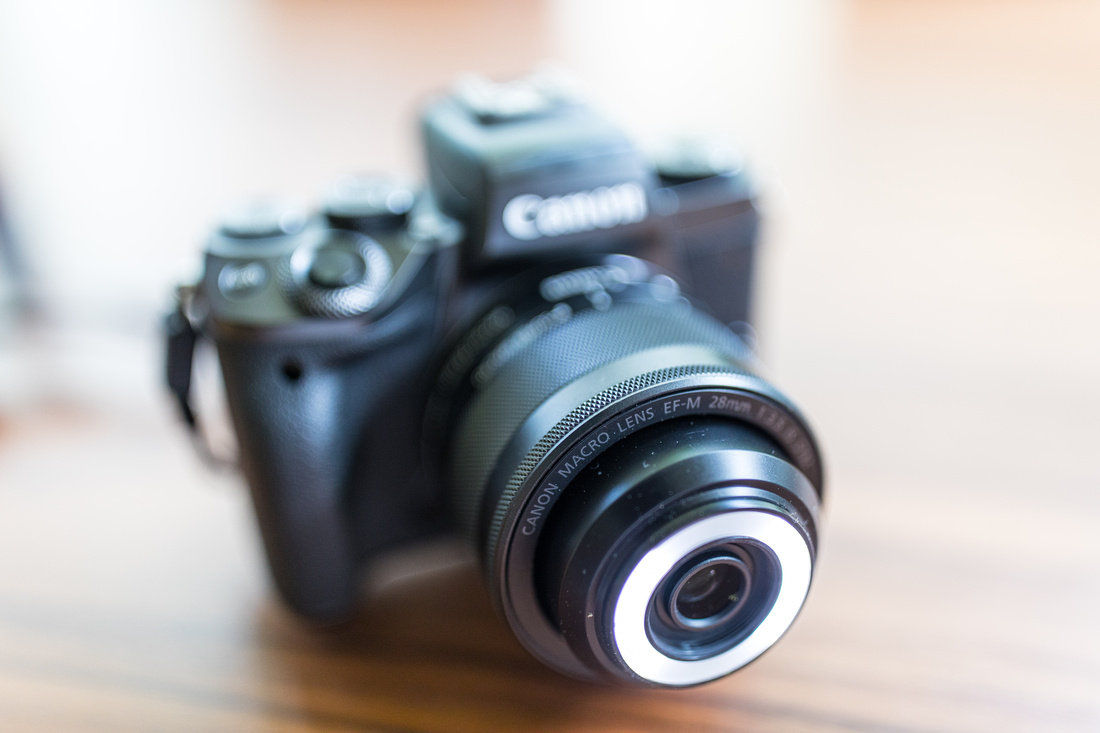
Mainly there are 2 features:
- The build in LED-Ilumination
- The 1.2 magnification (so called Super Macro)
The lens is pretty new - released in May 2016. There is no other comparable lens with build in illumination on the market (not for general photography - it is a feature which is common in microscopy...). The only one which comes close it the EF-S 35mm f2.8 Macro IS STM - but this is a 35mm and has a maximum magnification of 1....
Even if the step up from 1 to 1.2 isn´t the biggest deal the EF-S size is much larger so it might be tricky to photograph little things....
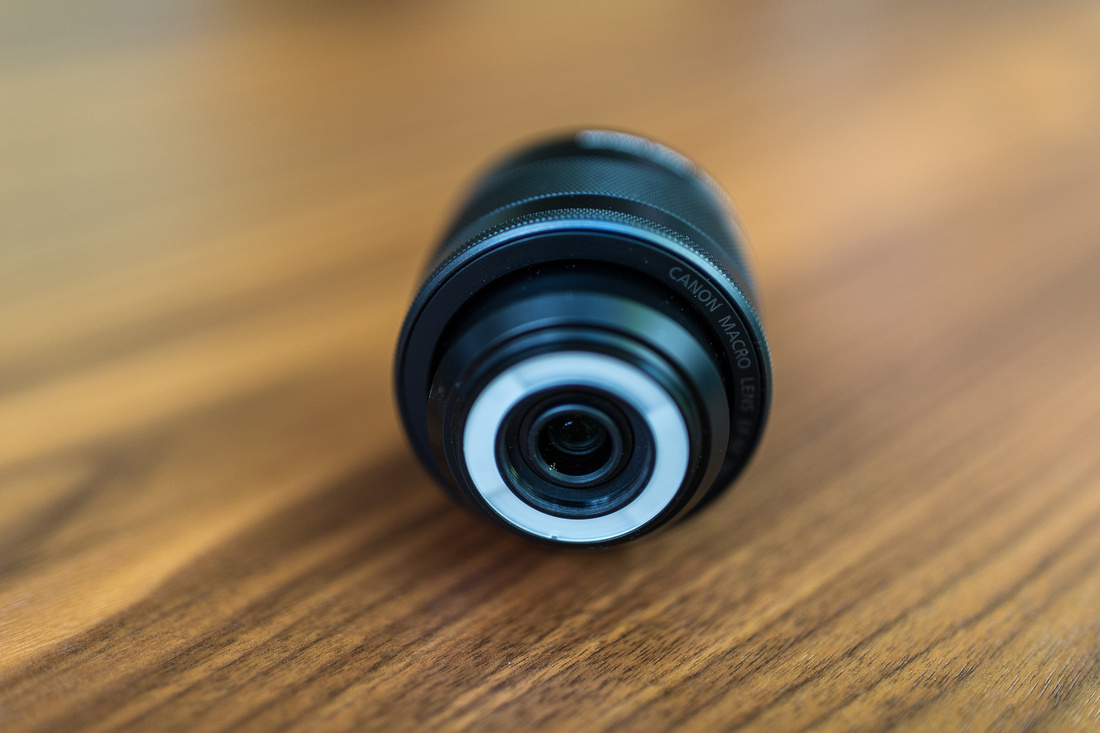
The focal length represents a 44.8mm full frame equivalent which means it is useable as an pretty much universal focal length. But with f 3.5 the lens is pretty slow - I prefer the EF-M 22 f2.0 lens as my general purpose lens on this camera... For this review I decided to walk around for shooting some street photography. Pretty much unfair: I did have my 5DMkIV with me - and the EF 35mm f1.4 II USM- definitely another kind of animal. The review of this lens will come in the near future, too....
Build Quality / Operating the lens
Well - if there is a complain against this lens: It is the build. Especially the plastic bayonet is just ridiculous! It is a 300 € lens and even the Nifty-Fifty comes with a metal bayonet... I do hope that canon will offer a replacement set in the future.
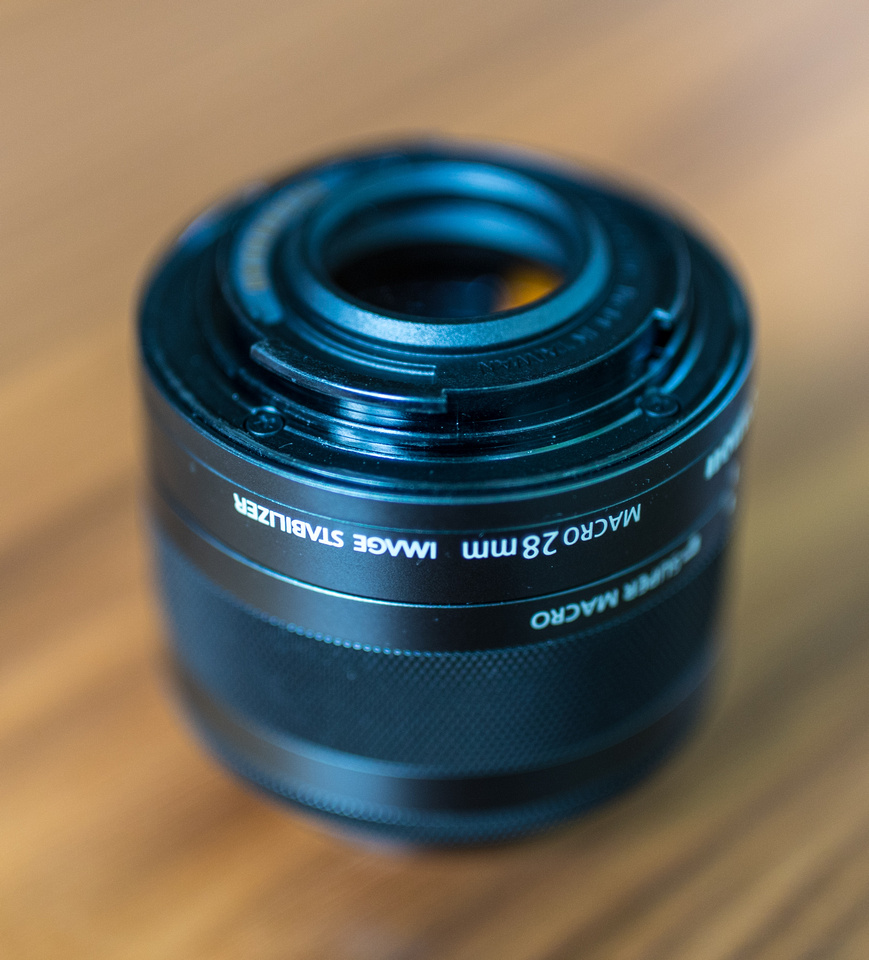
The rest is according the the standards of the EOS-M system: engineered plastic, the feel is ok - and it is light weight, just 130g.
To use the lens you have to use a button to extend the lens to make it working. Typically I run into the "Super Macro"-Mode which does not allow to focus until infinity.... Only the "normal" mode goes from infinity to a magnification of 1.
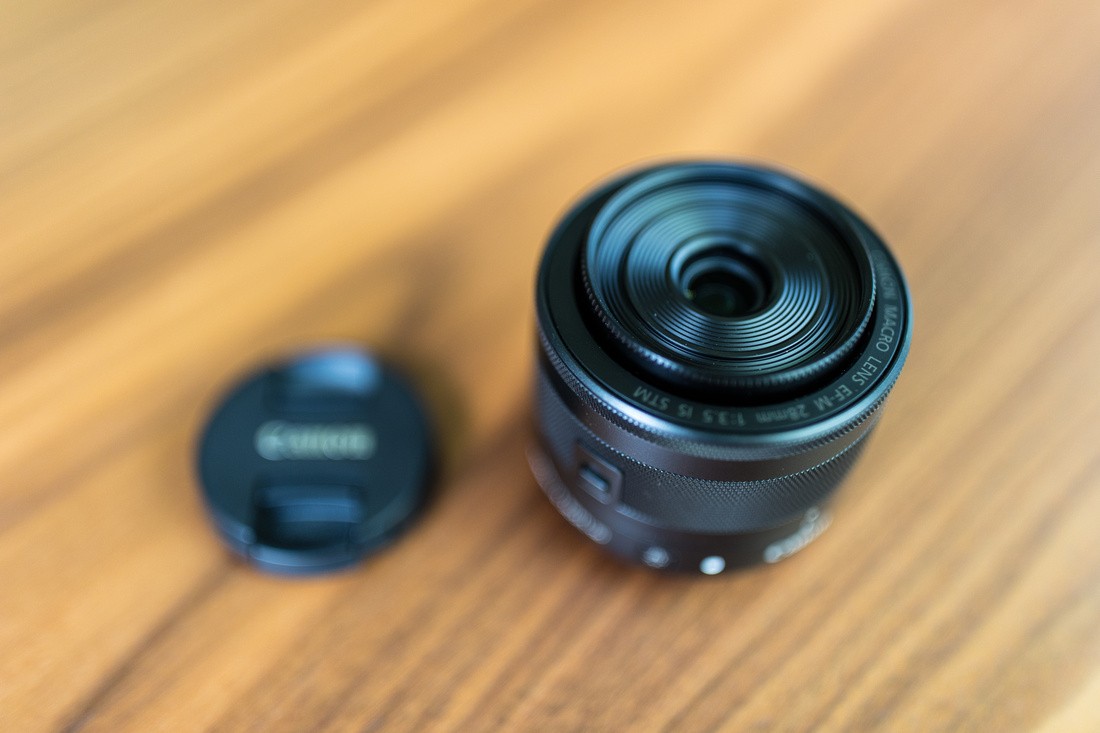
Optional exists a little lens hoot which covers the illumination as well. It has it pro´s and con´s. The main thin is that it protects the front face of the lens itself nicely. But the downside is that you will have to unmount the lens hood to use the illumination...
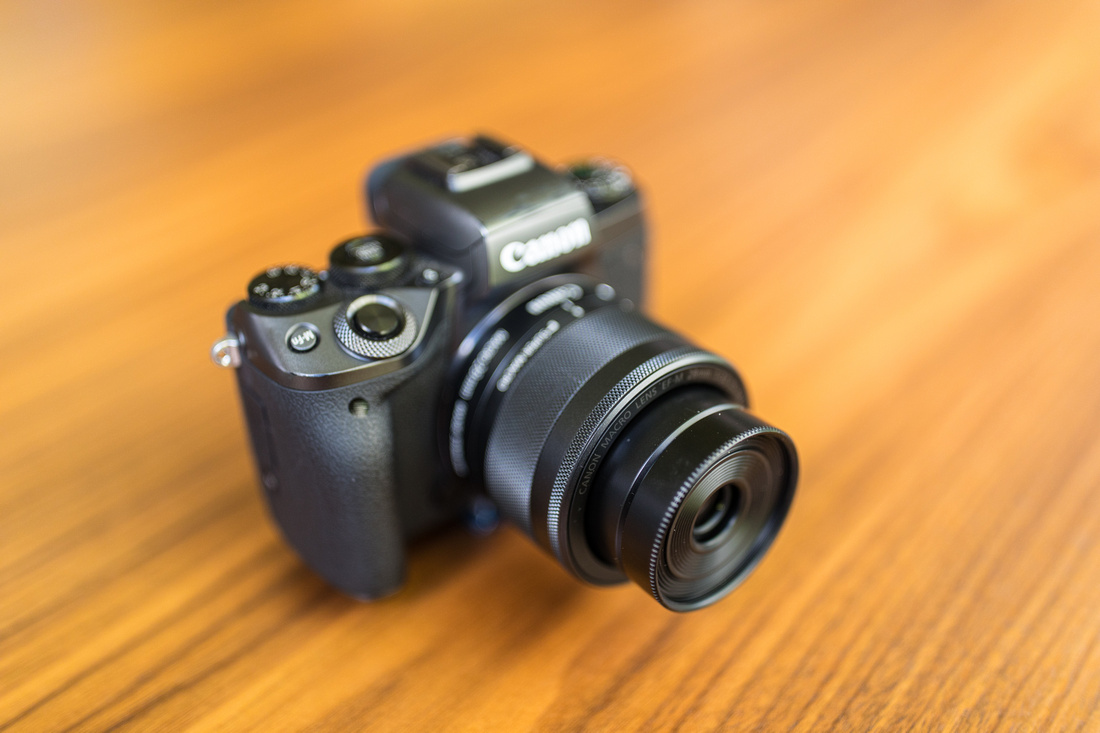
Image quality
Sharpness
The image quality is just outstanding. Even with fully open aperture. As first example I want to discuss the sharpness of the lens

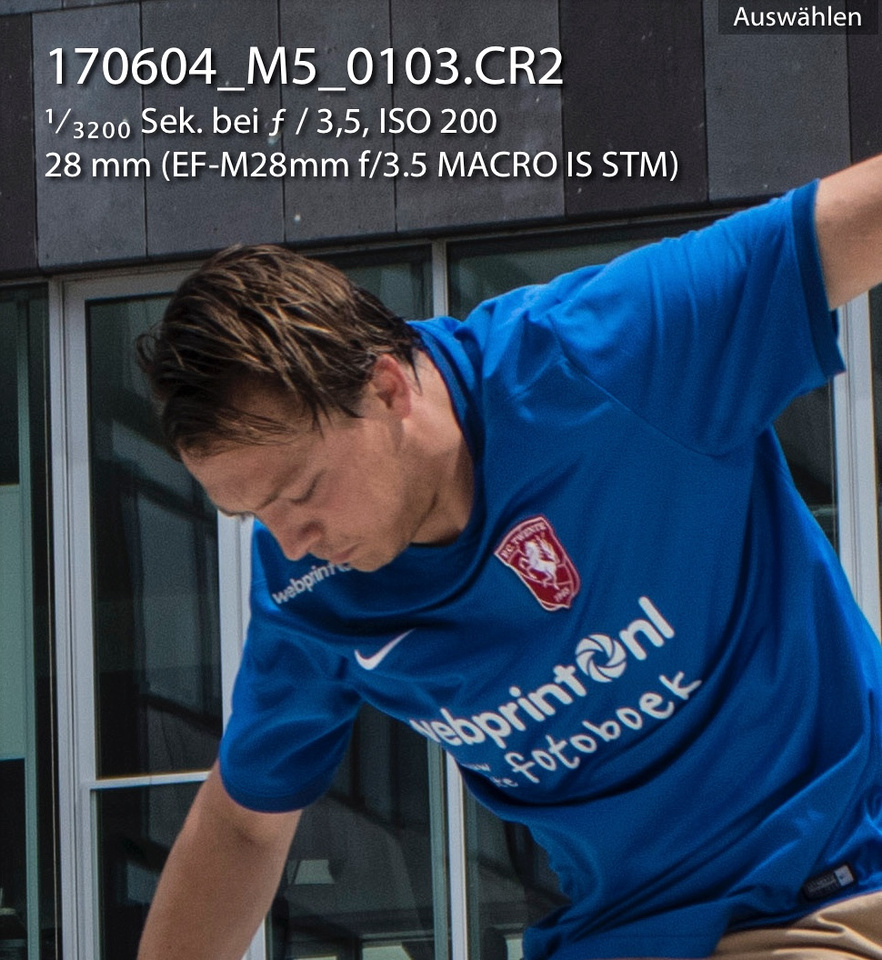
This is a 100% crop out of the image above. But it is in the Center. But also the corner sharpness is not bad as you can see in the following 2 samples...
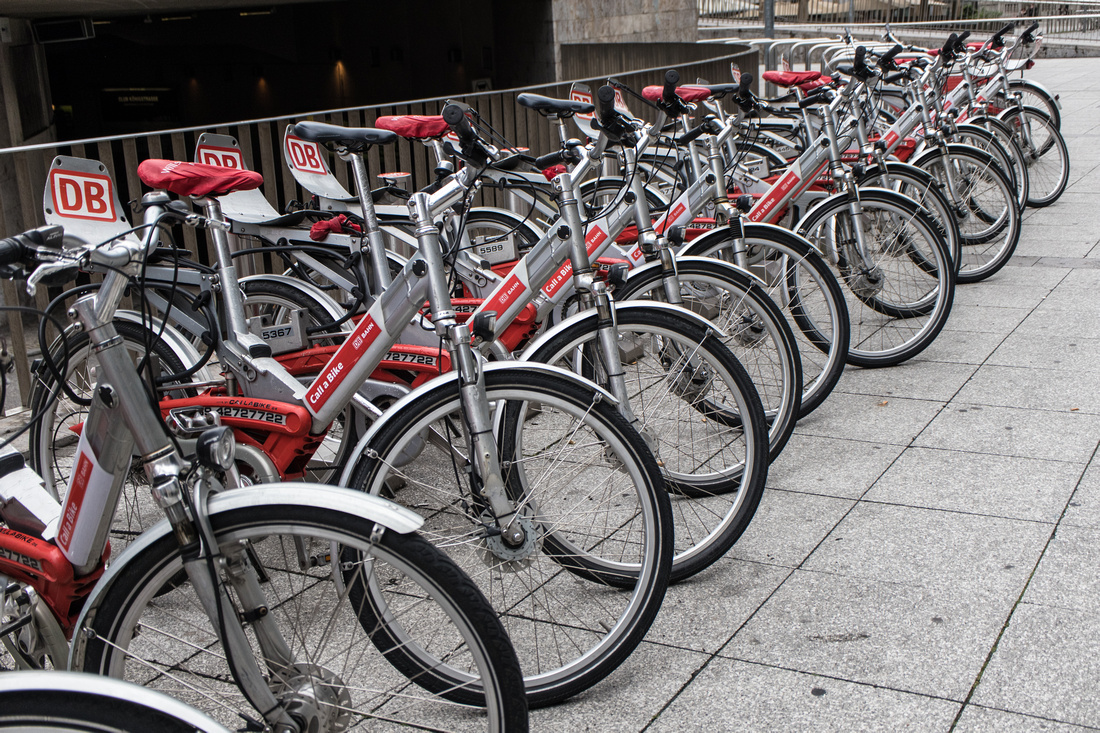
Below you find the lower left corner
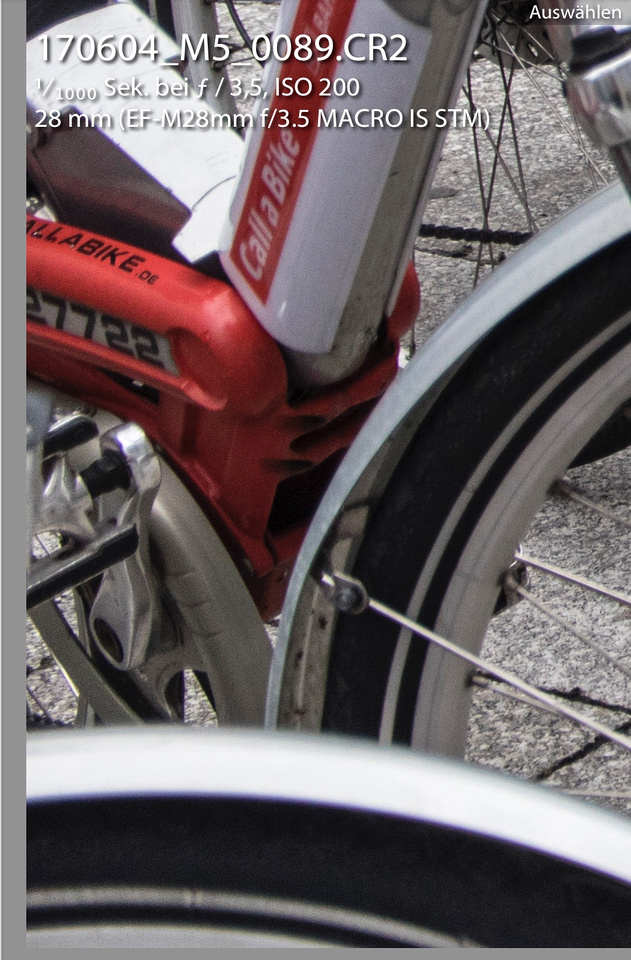
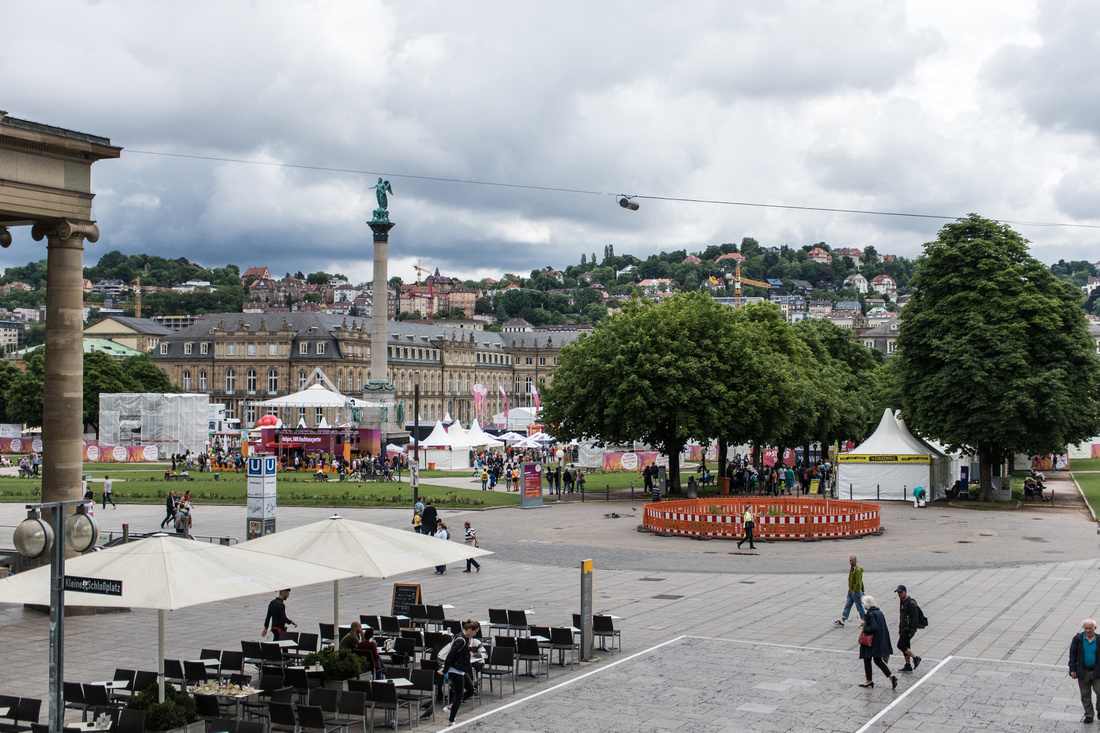
Out of this image you see below the upper right side...
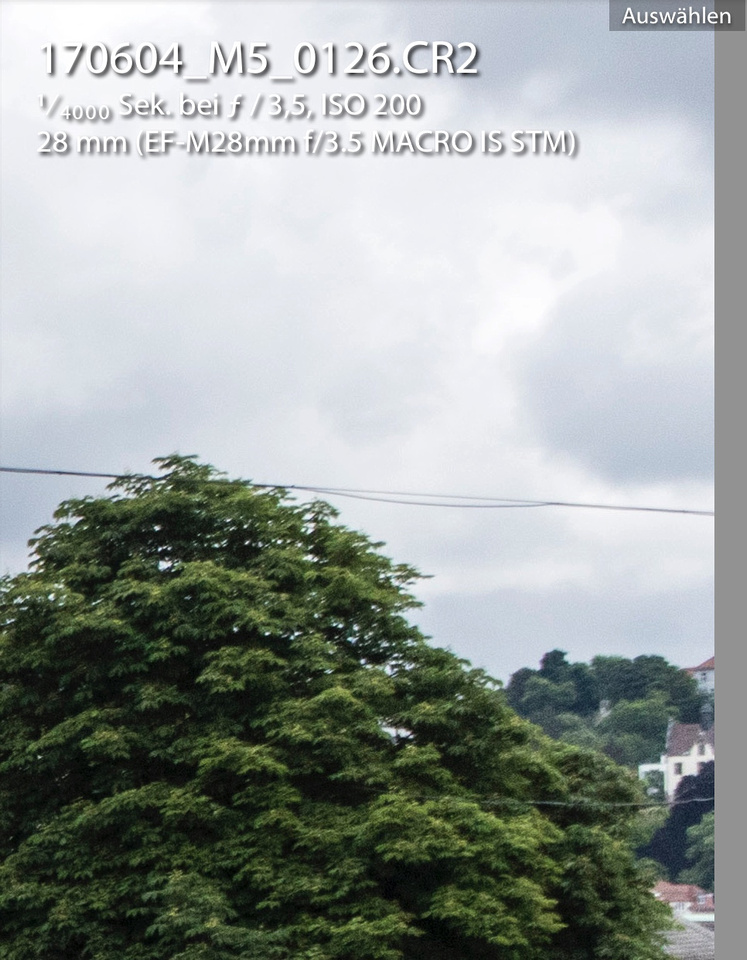
For a wide open shot this level of corner sharpness is pretty impressive...
Vignette
It is showing a strong vignette wide open which disapears around f 5.6...
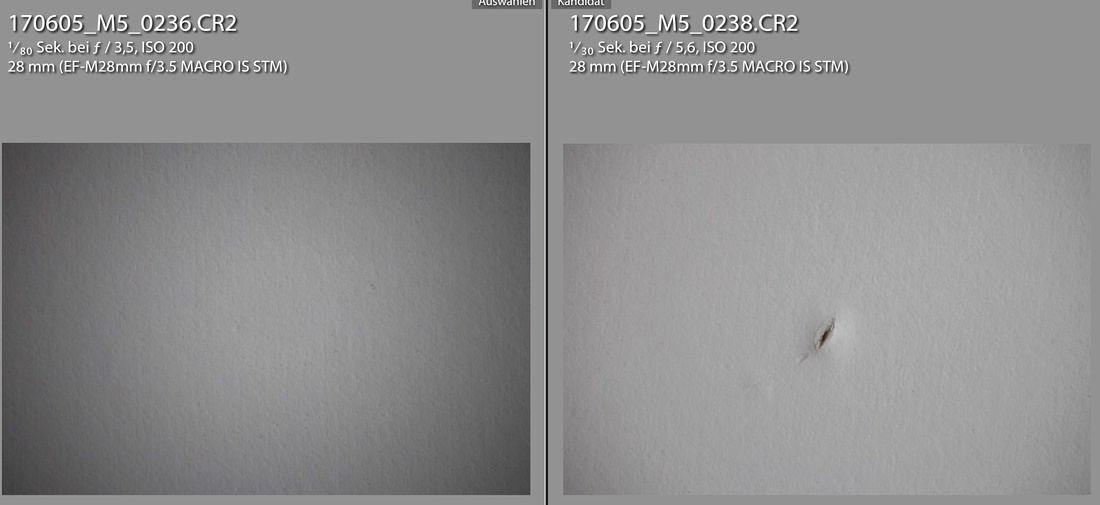
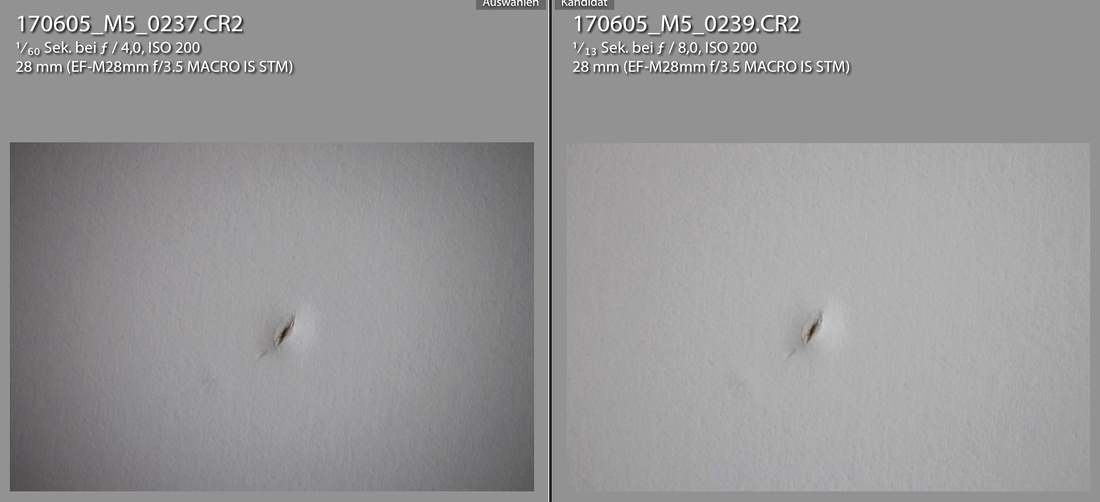
Super-Macro vs Macro
To use the Super-Macro range you have to move the lens into the "Super-Macro" Position.
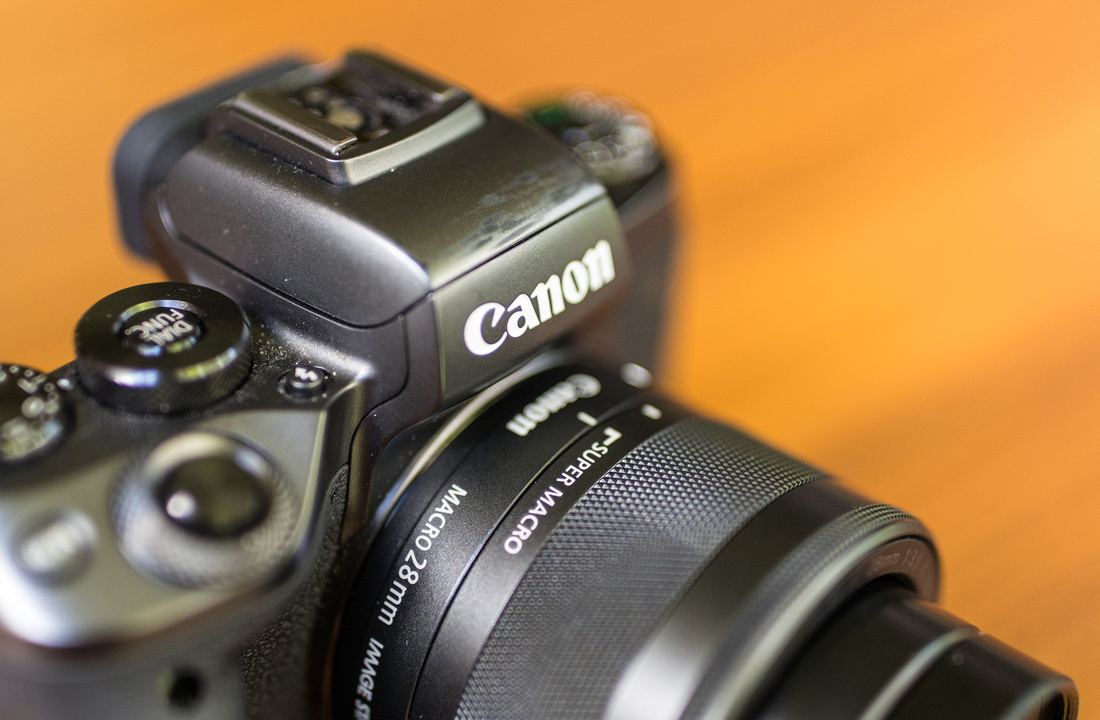 There is a 2nd mark right of it: this is the standard position which allows you to focus to infinity - what is not possible in the Super Macro range.
There is a 2nd mark right of it: this is the standard position which allows you to focus to infinity - what is not possible in the Super Macro range.
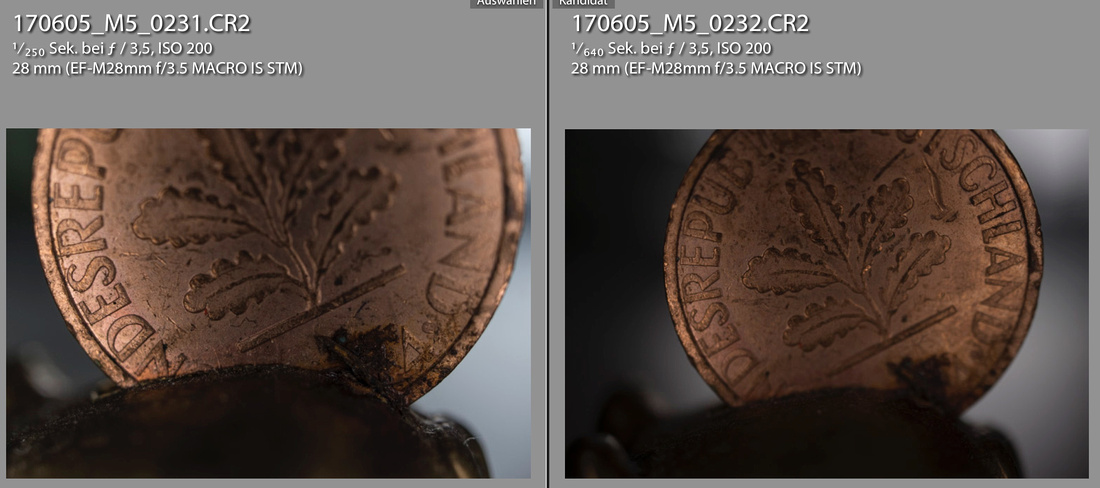
Ok.. this photos are not exciting - but the show the difference between this both ranges. And yes: the Super Macro range has some benefits....
Illumination
The lens has a build in illumination. this can be used in different setting, mainly in 2 power settings...
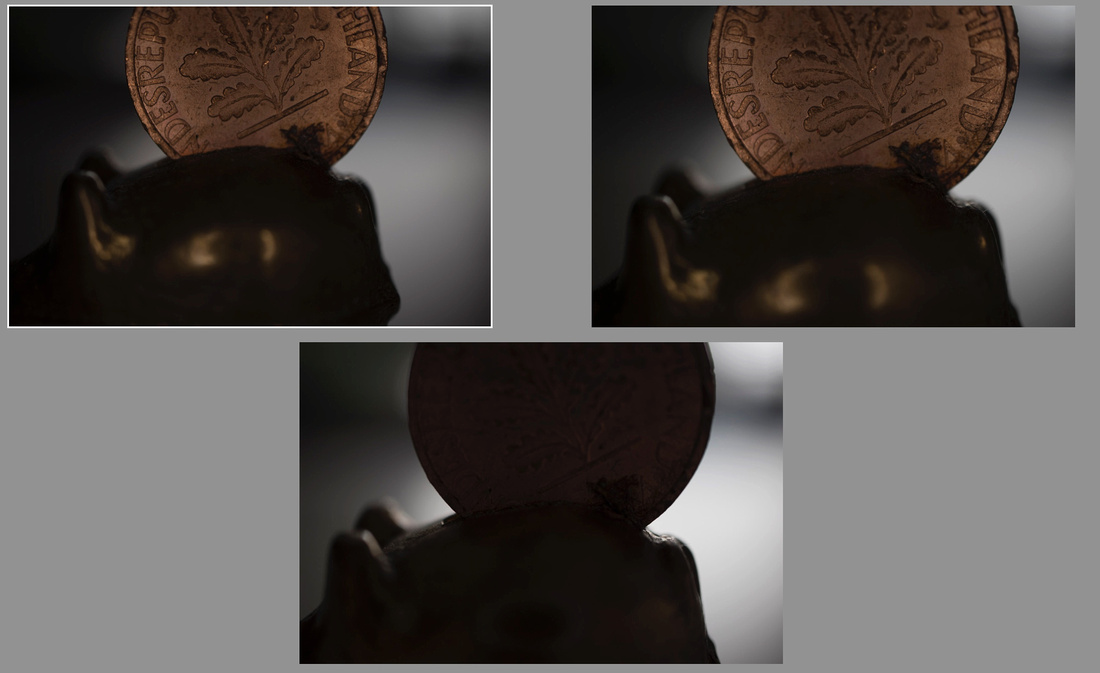
The upper left image shows full power while the right images shows "half" power. The Av Mode corrected that therefore the contrast to the background becomes less pronounced....
The lowest image shows the illumination off.
For many situations the build in LED is really helpful - and also impressive. But it is another parameter where you have to learn to work with...
Bokeh
This lens is not a Bokeh-Monster. Definitely not. But the bogeh produced is not busy but nice and pleasant. And please do never forget: the magnification produces bokeh - and a lot of it....

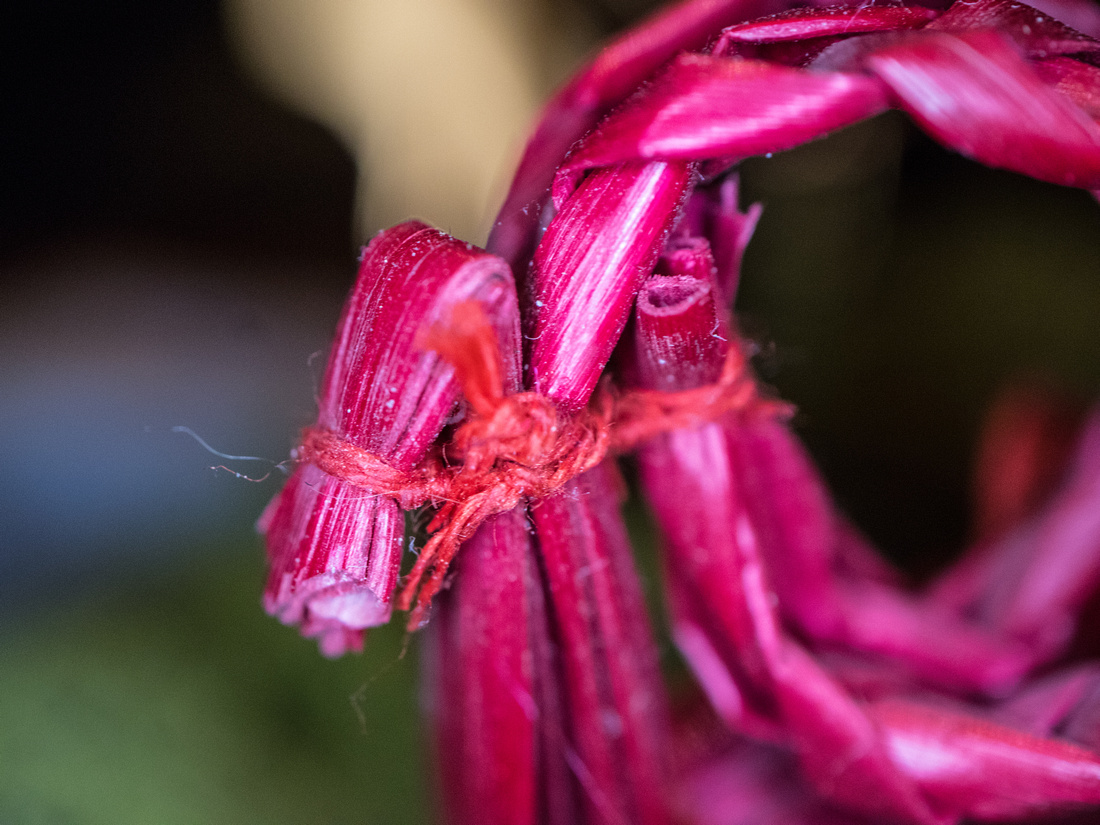
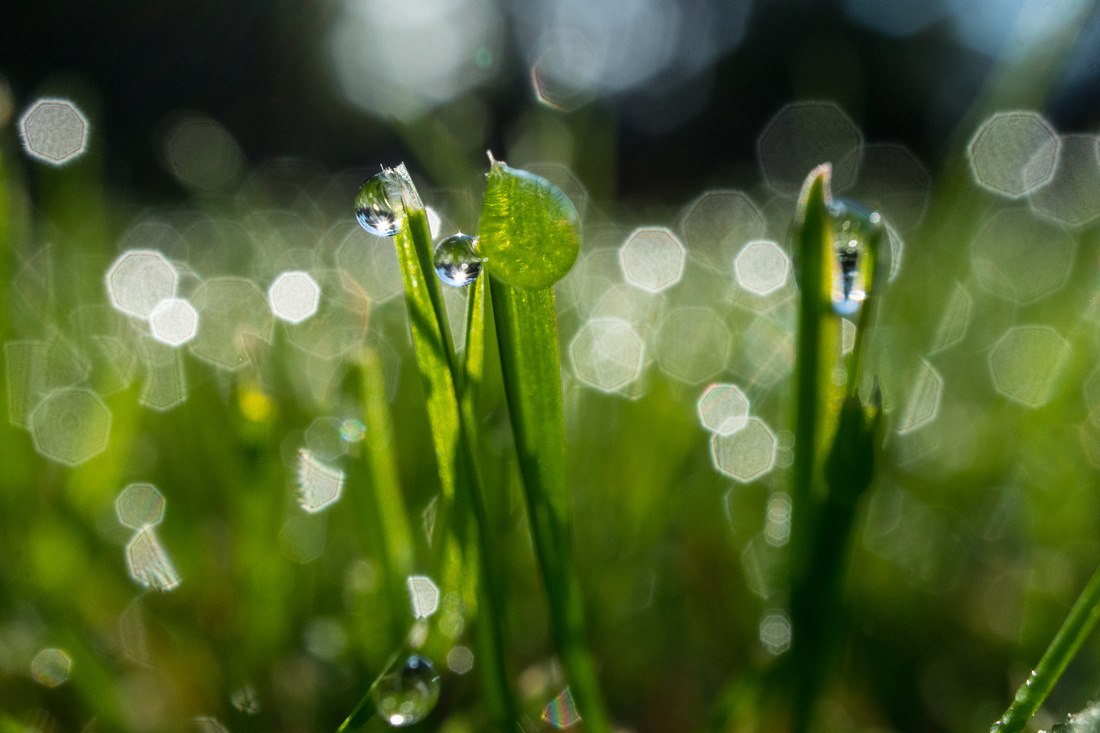 The bokeh is nice and pleasant wide open. stopped down it becomes a bit busy inside as seen in the image above which was shot @ f8.
The bokeh is nice and pleasant wide open. stopped down it becomes a bit busy inside as seen in the image above which was shot @ f8.
Lens Flare
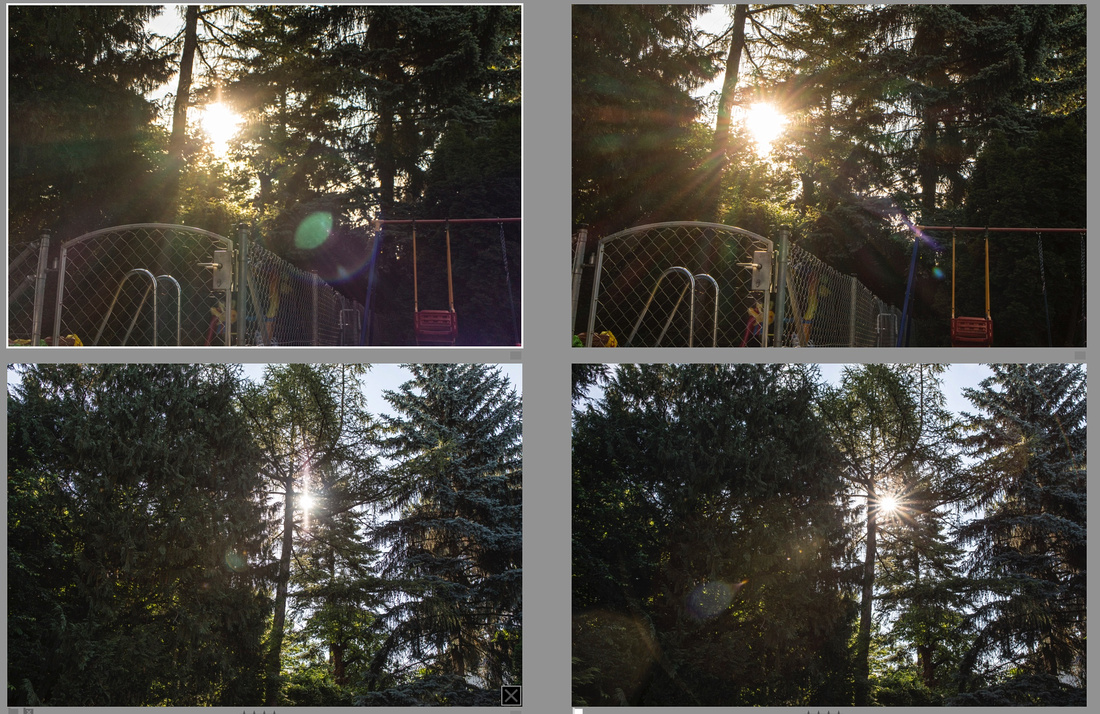 In terms of lens flare the lens is not bad - but not a super performer. Especially compares with a lens which is superb like the EF 35mm f1.4...
In terms of lens flare the lens is not bad - but not a super performer. Especially compares with a lens which is superb like the EF 35mm f1.4...
The left images are showing the lenses wide open, the right images stopped down to f 11.... The images where all processed in Lightroom in the same way: Exposure: + 0.65; Lights-27, shadows+41, Clarity +65, Dynamic +20, saturation+20 and the lens correction... These parameters enhance the lens flare quite intensively. With out this treatment the lans flare is well controlled.
But the contrast in this situation is also remarkable.
Image Samples
Macro Shots
The core application for me are flowers. And here the lens delivers amazing images...
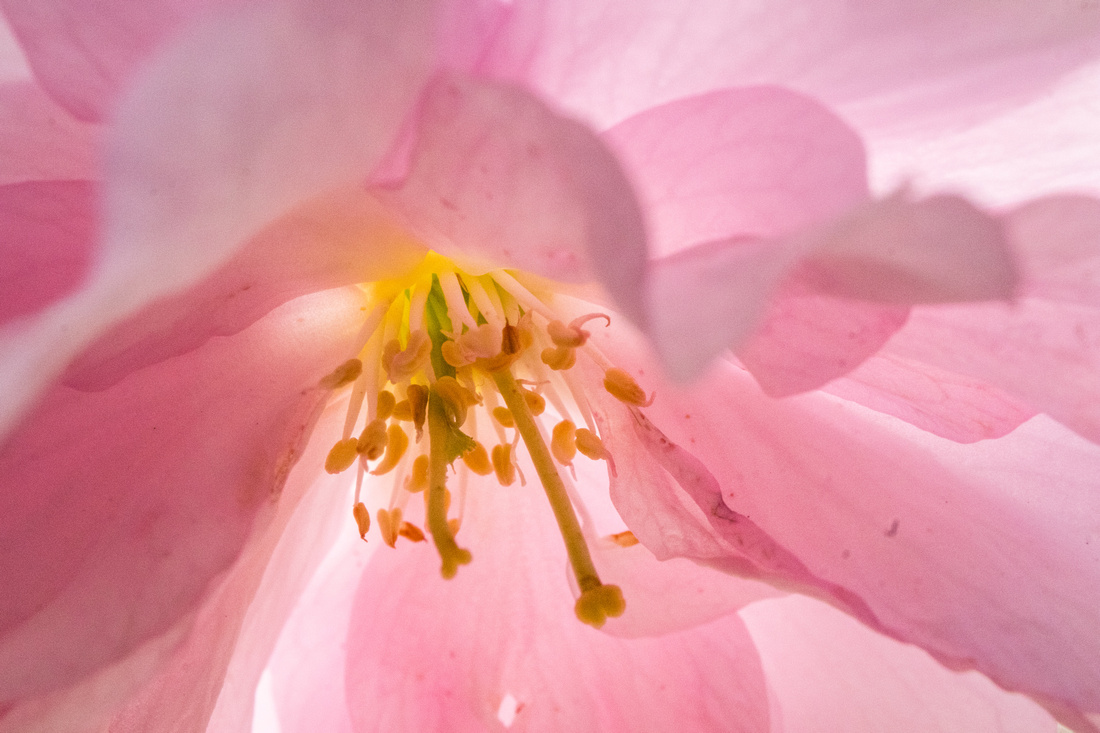
I do like the image from the inner side of a cherry blossom...

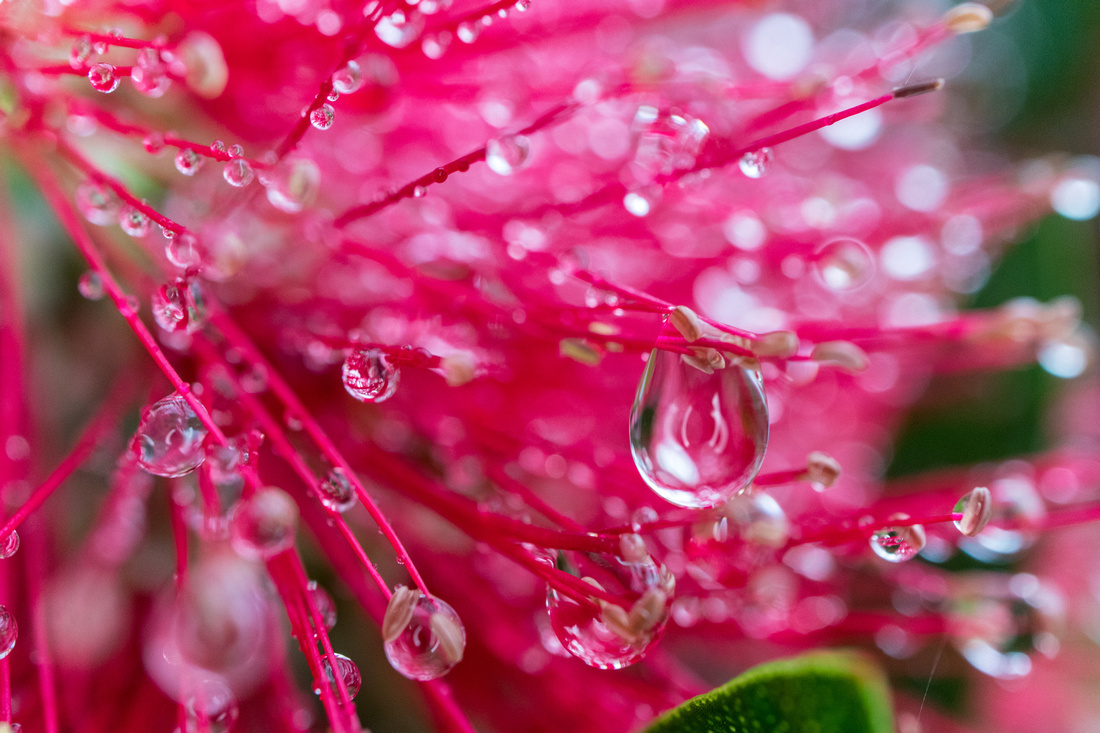
For me the images of rain drops are pretty amazing...
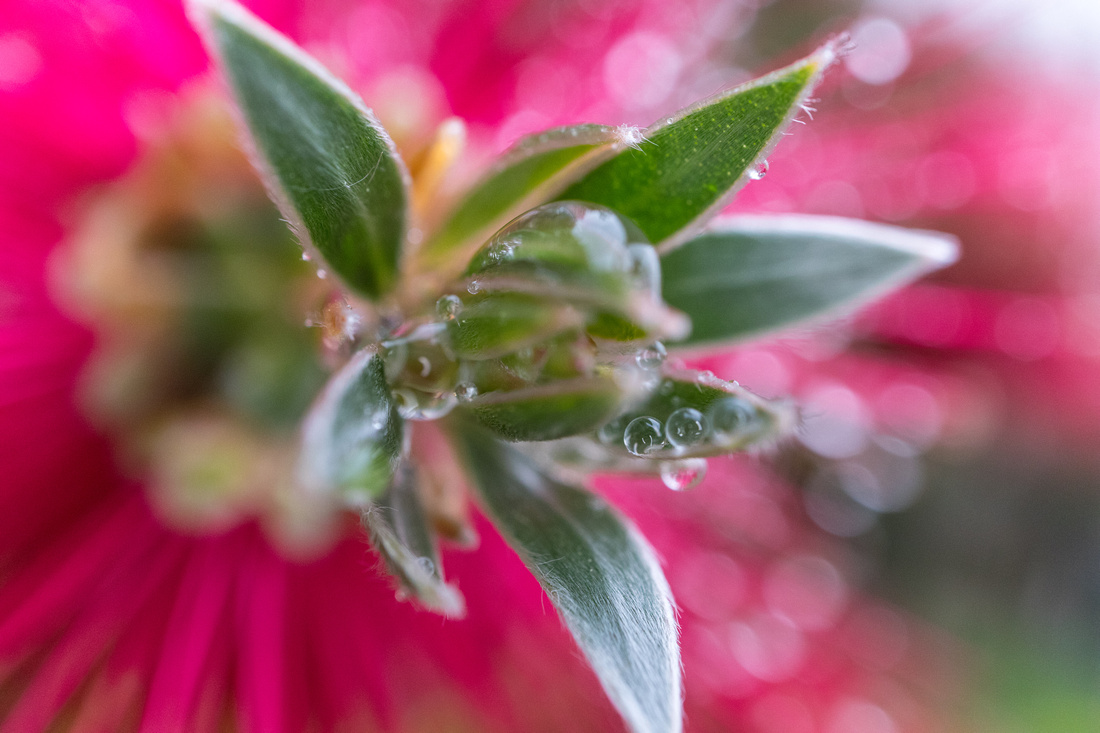
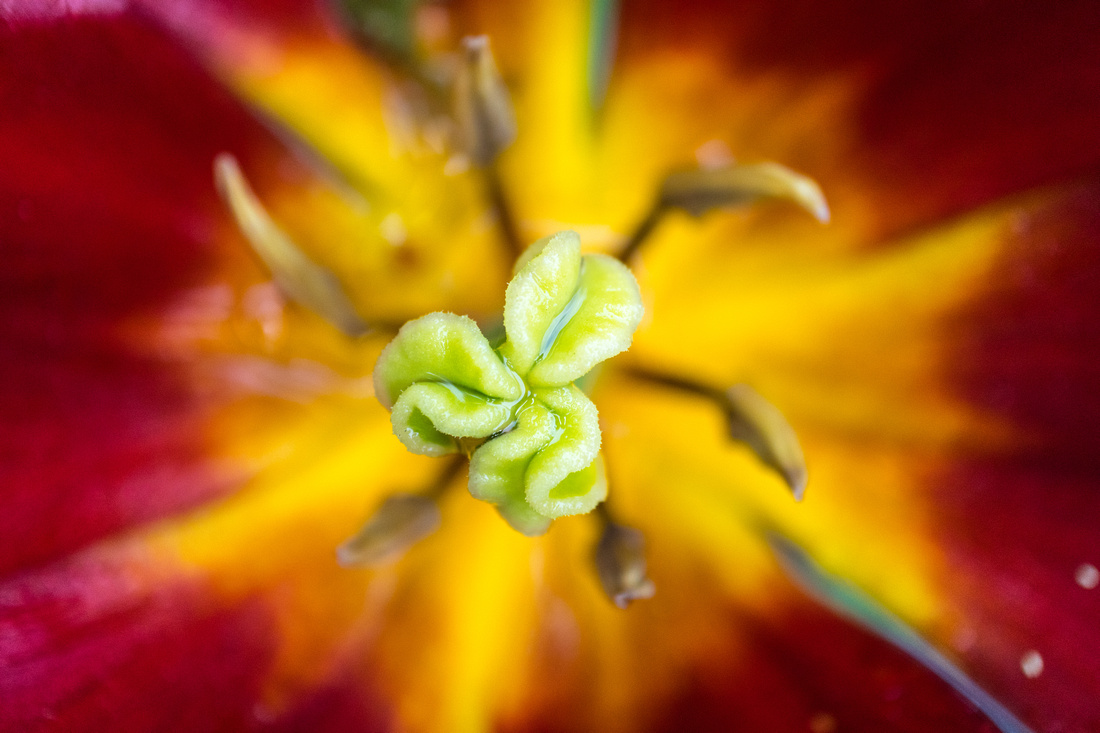
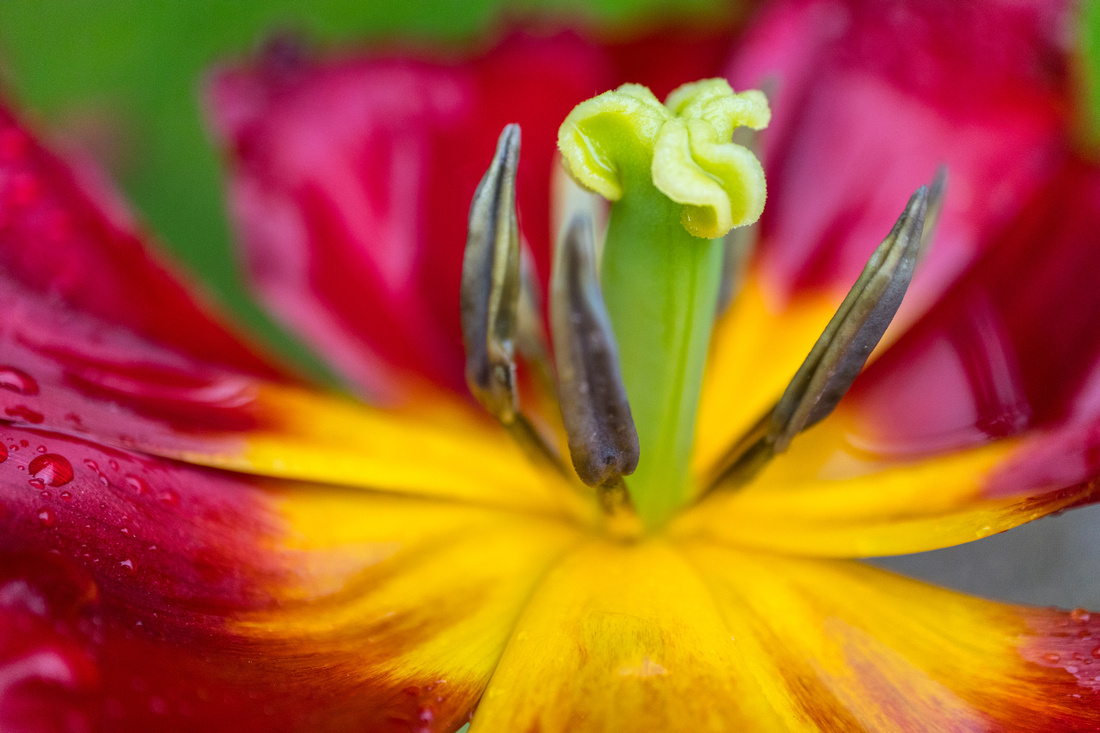
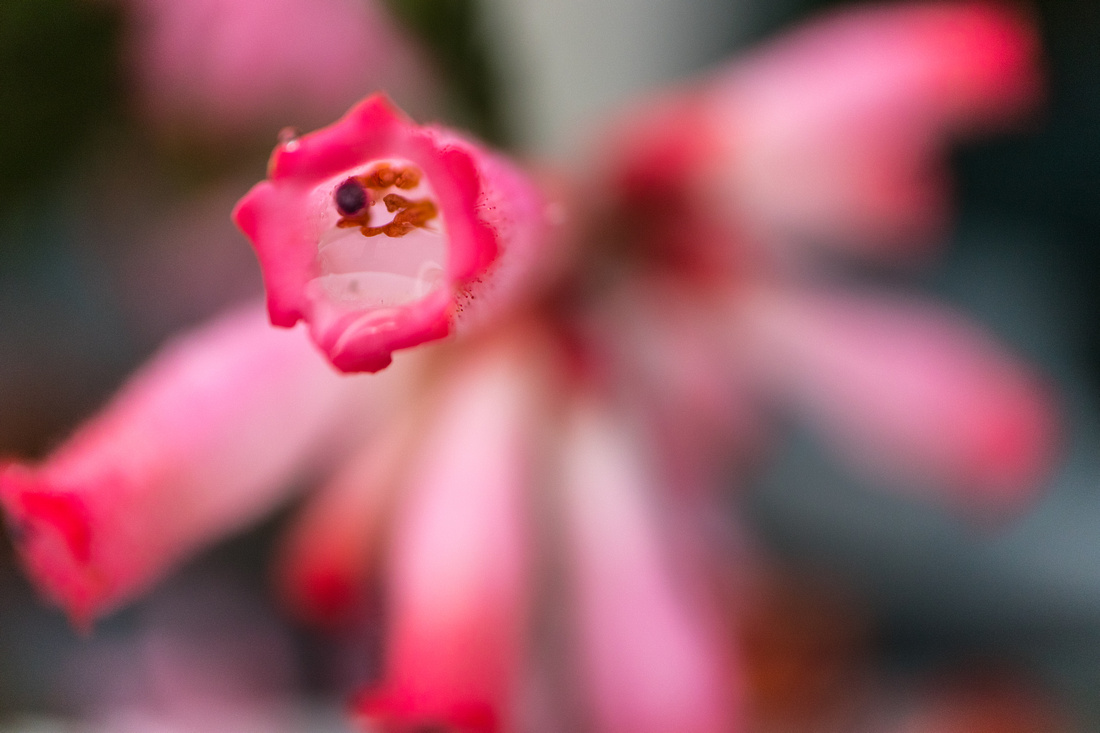
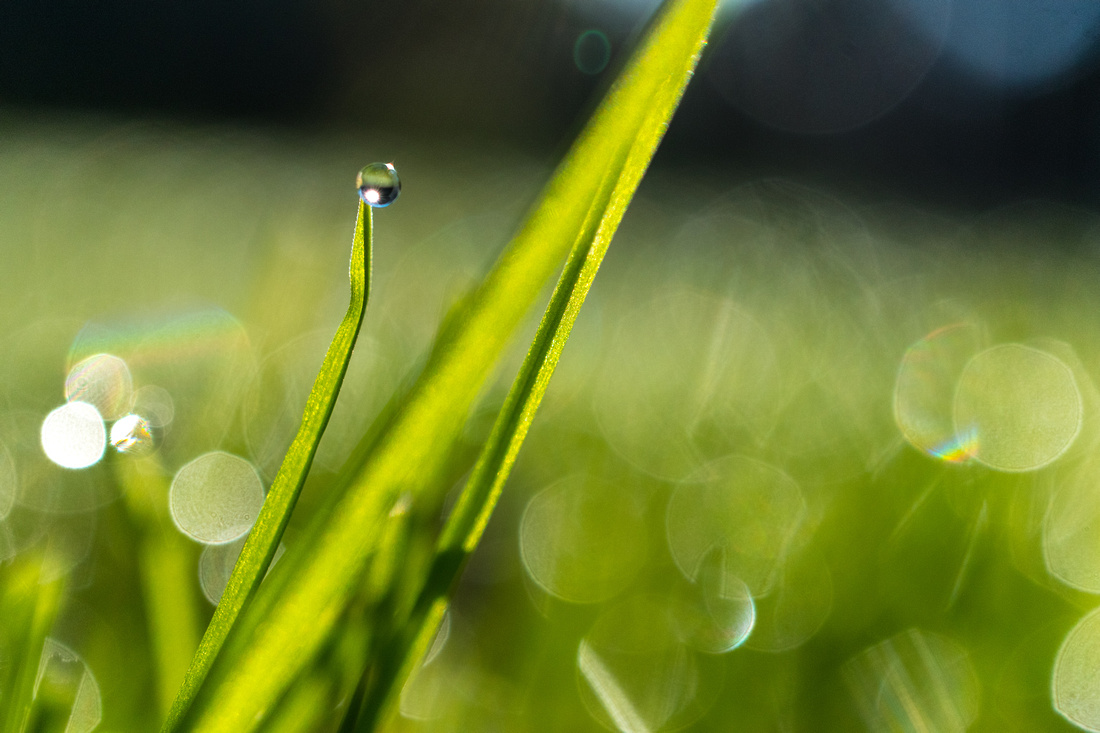
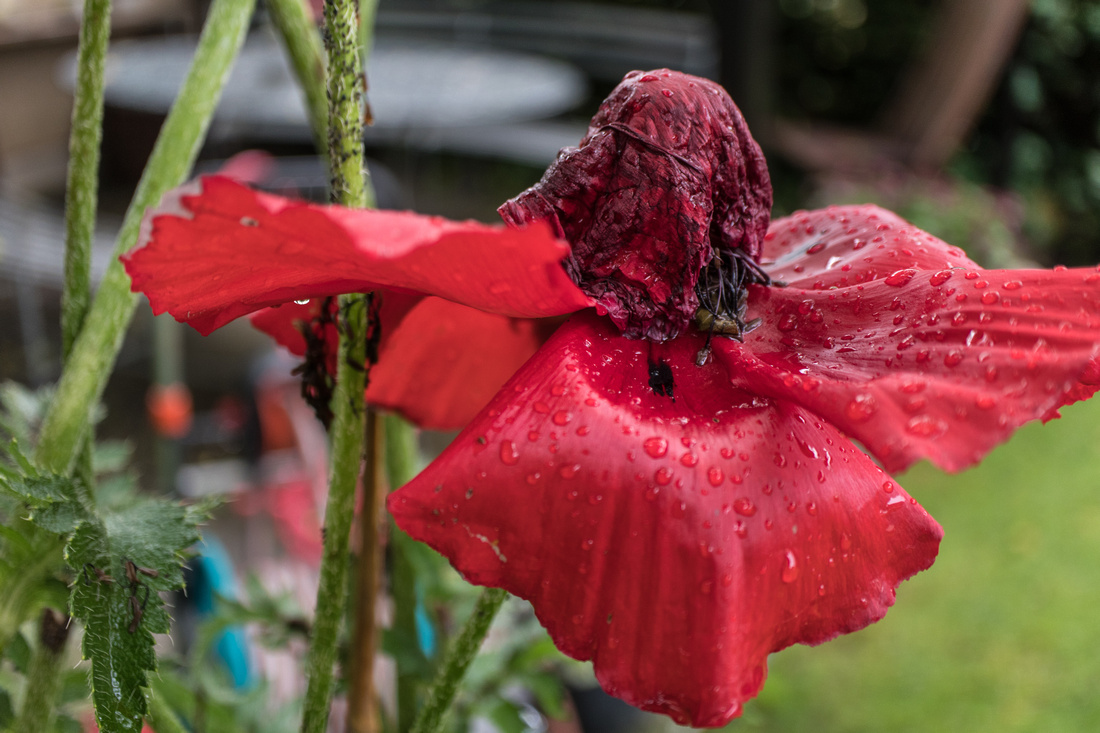
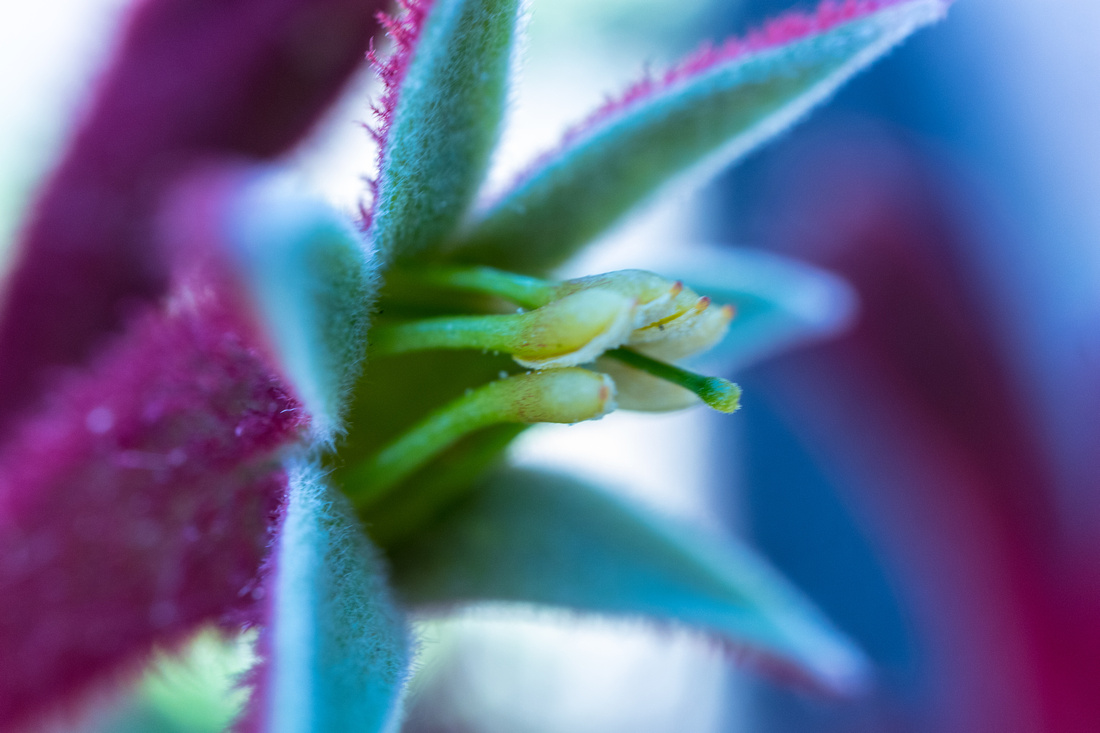
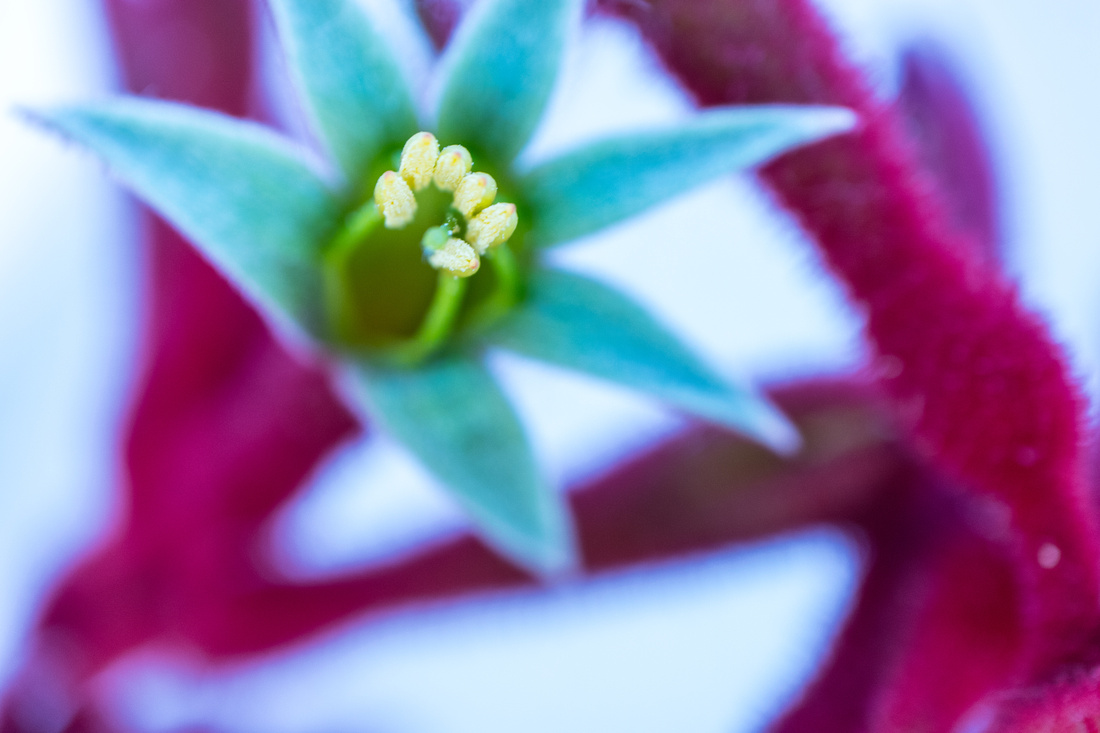 I do love the last 2 images... They were taken in San Jose in front of the AirBnB we had there... Just in the shadow at noon... Nobody should say at noon and bright sun you cannot make great images....
I do love the last 2 images... They were taken in San Jose in front of the AirBnB we had there... Just in the shadow at noon... Nobody should say at noon and bright sun you cannot make great images....
Street Photography
I do have the lens always with me. But I use it for macro stuff mainly. Therefore I had to make a little session taking the lens and use it just for that purpose....
And it delivers much more than expected... Here are some samples of this:
Cast Iron structures on a shopping window...
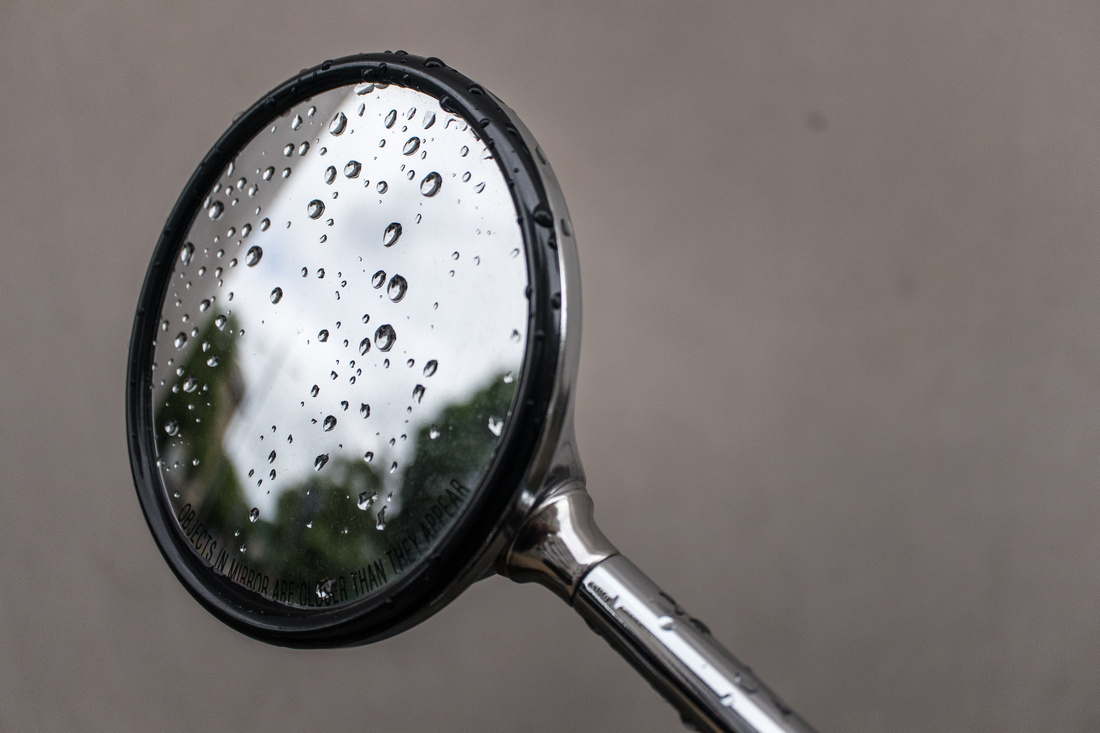
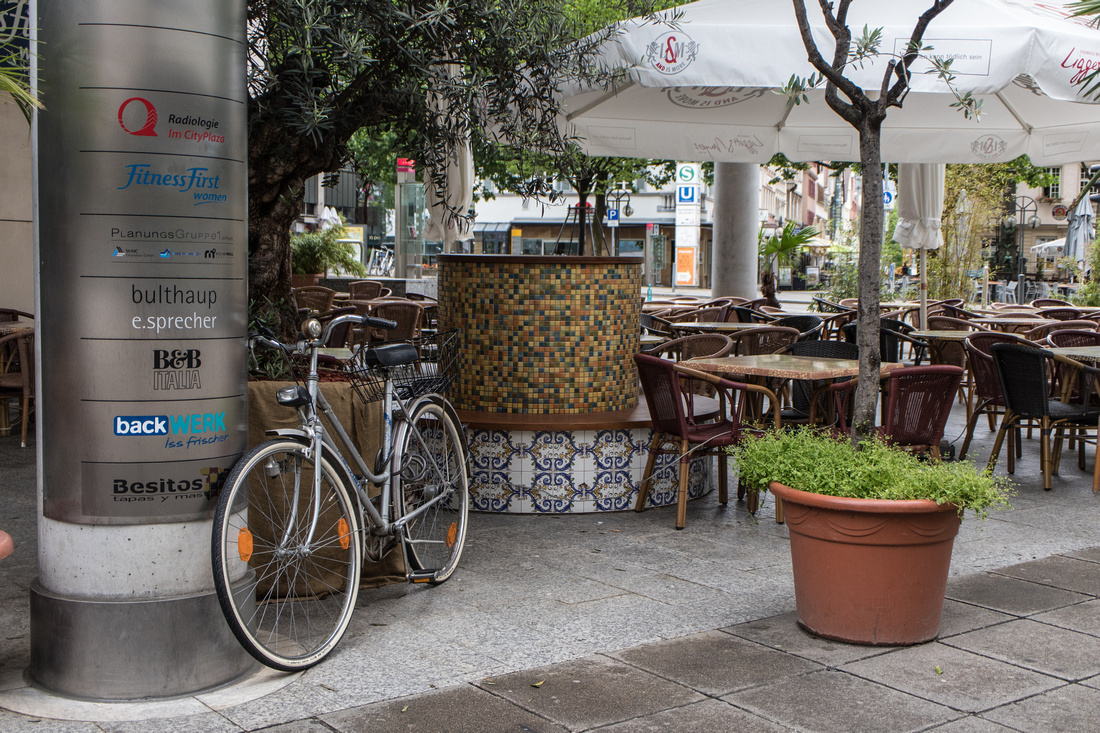
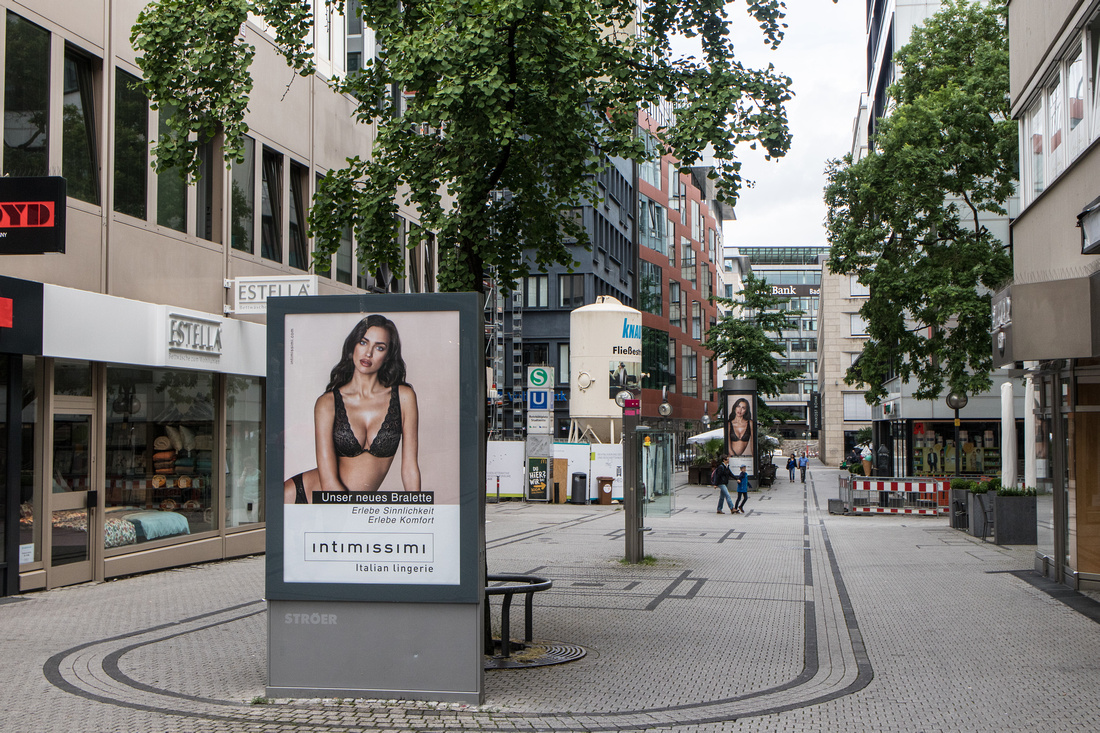
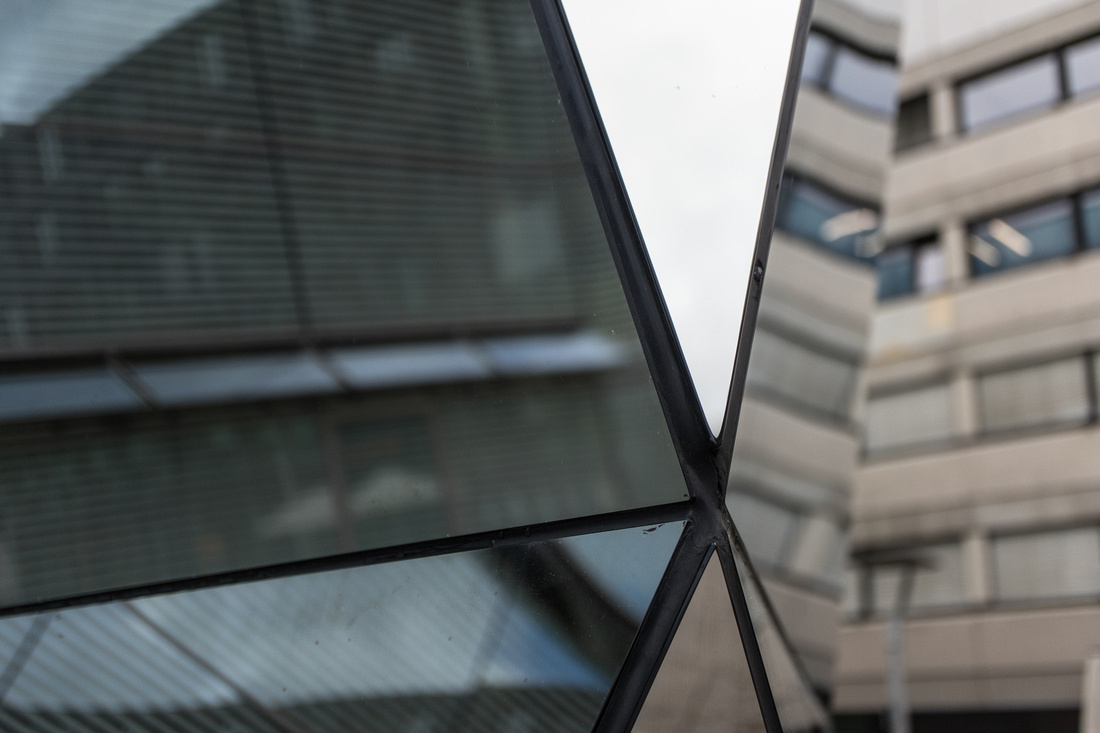
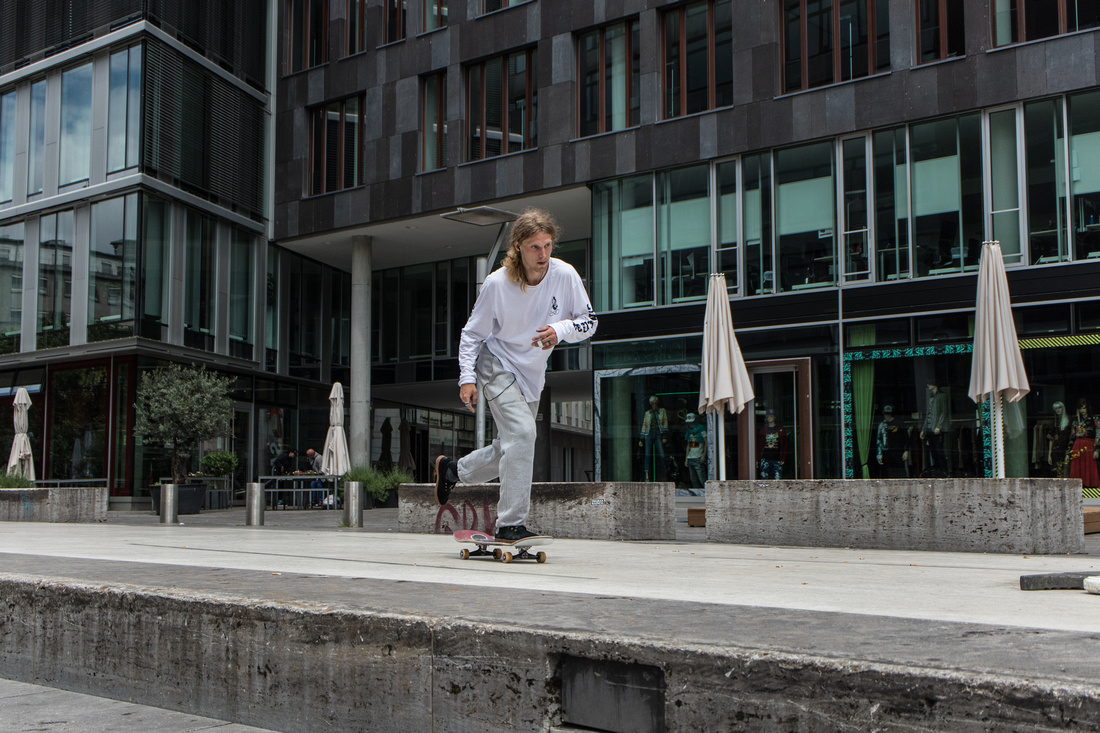
I was pretty much impressed shooting these skateboarders with the M5: This works much better than expected....
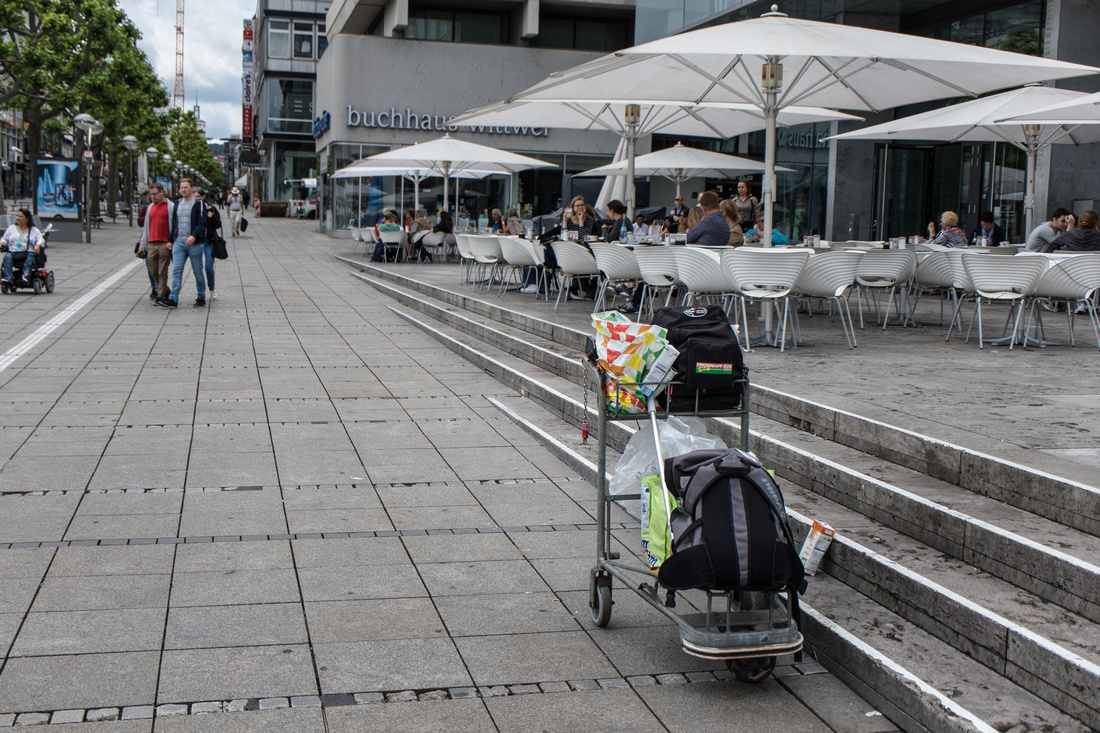
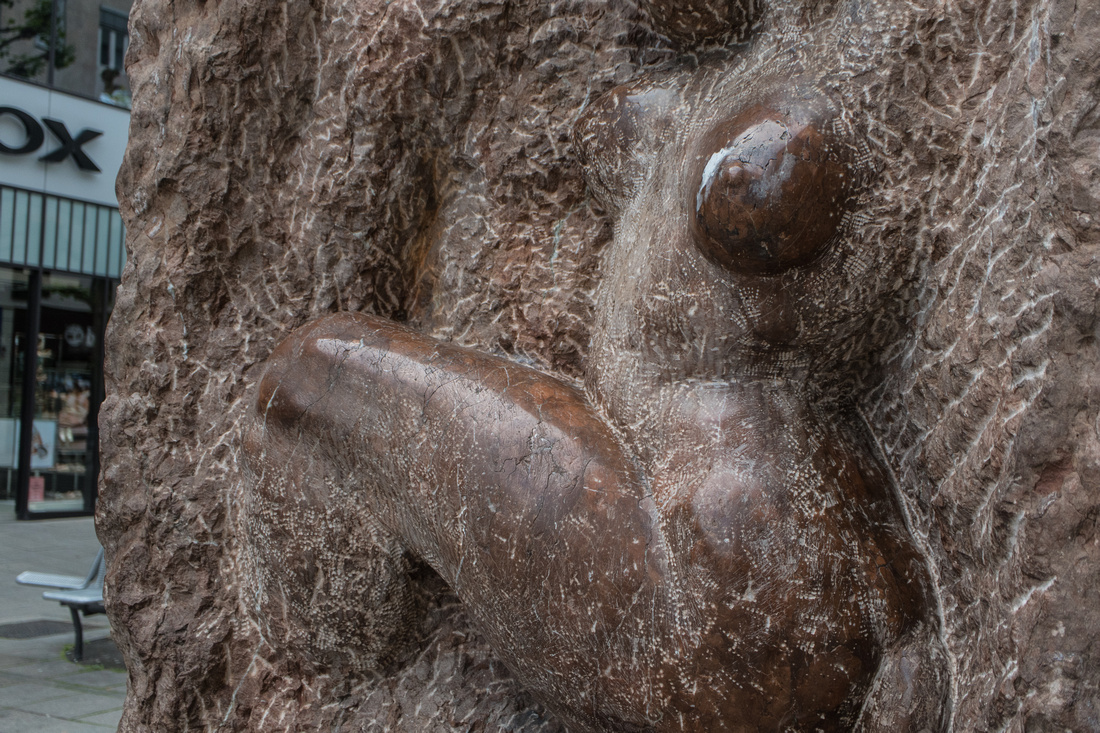
All the images above were developed with my personal standard development settings which are: lens correction, Lights-10, shadows+10 clarity +40, dynamic +20 saturation +20, ISO 100, f3.5.
Professional Use
This sounds maybe a bit weird, but using a prosumer equipment professionally? In this case I must say: YES!!! And the reason is: the lens is unique. There are shots which only this lens will be able to produce. And I will show some examples here:

This is an application sample of a special laser machining process. The size of the machined area is maybe 12mmx9mm. not more than that. but the photo shows the difference in surface structure as well as machining depth pretty clearly.
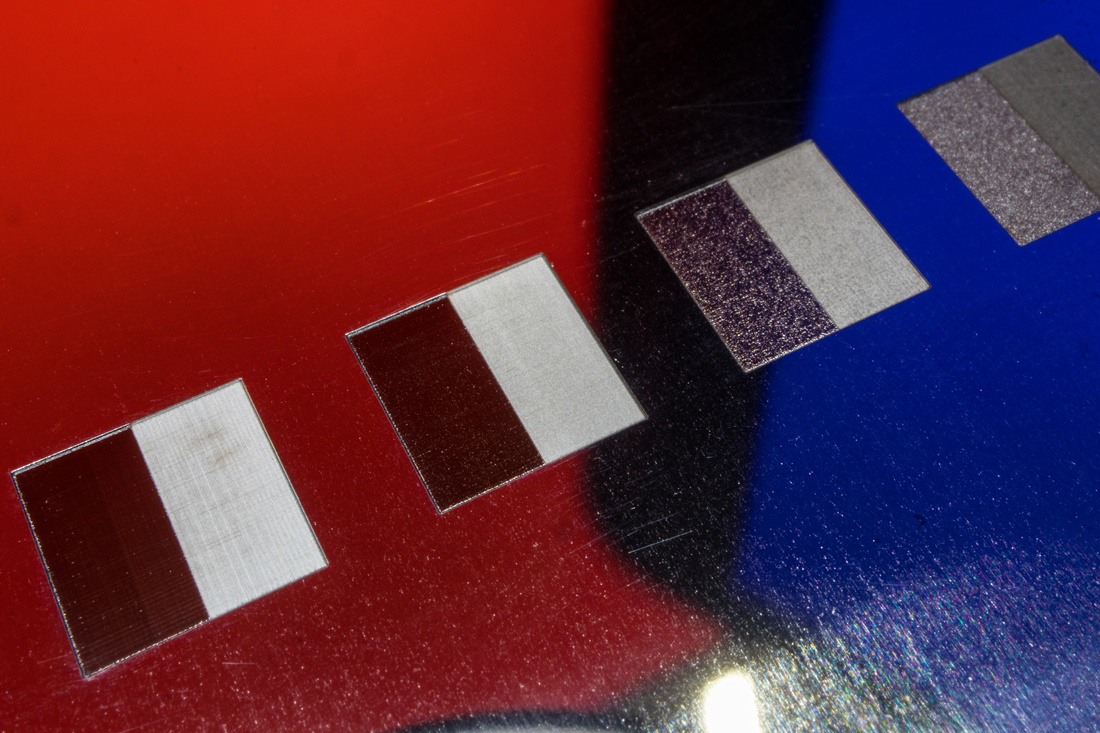
The purpose of this image was to show the difference in surface structure only. In this case the lens what set on the normal focusing range.
The next 2 image were developed to illustrate the fascination of a very special kind of lasers: Thin Disk Lasers. http://www.thindisk.com. These lasers are pretty powerful and some parameter ranges can be achieved only with thin disk technology. The core of the technology are thin disks and thin means really thin: 100µ@20mm diameter....
When I found out that there exists no nice photo to illustrate this "Thinness" I decided to produce these images. I do have 2 Versions:
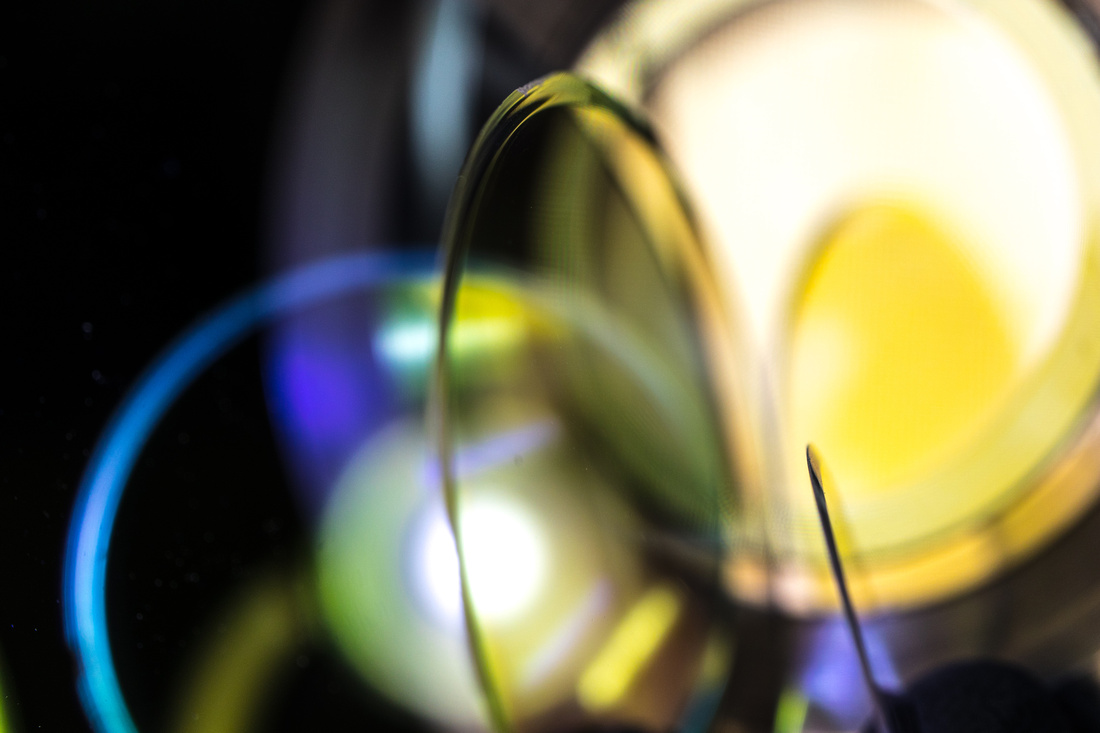
This Version shows 2 of these thin discs mounted on a Ferrule as it is build into a laser.
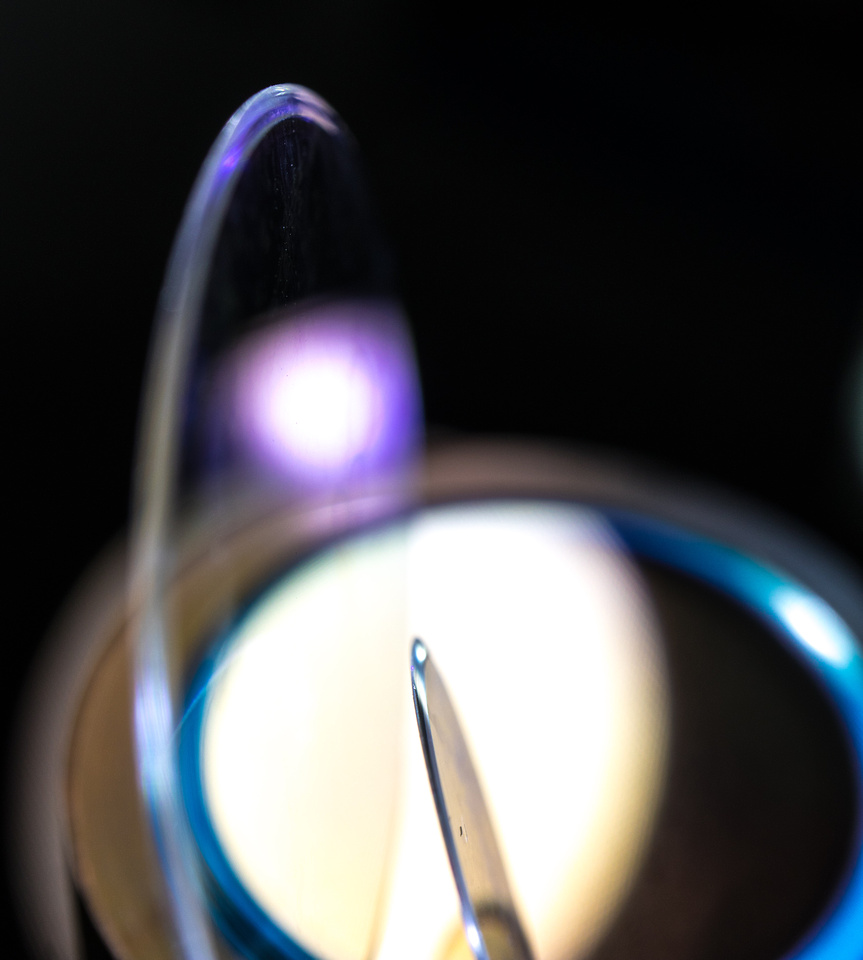
The 2nd version of this idea shows the thin disk on top of a diamond heat sink contacted thin disk....
Verdict
This little lens is worth every cent I payed for it. I do love it, especially for product photos and flowers. For those who want to have just one lens: this lens is an option. In terms of versatility hard to beat. Bit it comes with a slow aperture - which is a bit sad...
Another strong pint: it is the cheapest macro lens Canon is offering today. @ 300€ it is priced pretty reasonable - especially in comparison for the quality the lens delivers...
I do strongly recommend this lens! It is another strong argument for the EOS-M Camera line up!
Canon: please give this lens a metal bayonet!!!!
The ridiculous lens mount is not the way Canon should equip such a wonderful product!
Miscellaneous
All Photos of the camera and the lens where shot with the Canon EOS 5DMkIV and the EF 35mm f1.4 II USM.
All Photos you can find here: https://goo.gl/EVl2qj
]]>
My questions:
- Does it work?
- How does it perform?
Lets start with some technical considerations.
Technically it is a pretty remarkable approach:
- The photo is shot with the "telephoto-lens of the iPhone
- The iPhone camera scans which part of the image is where
- the "portrait subject" remains sharp
- the other lens is set at shortest distance to deliver a blurred image
- and than the magic starts: the art of the photo which should be blurred will be mixed according to the information what is before and behind the subject.
Quite ingenious approach. The simulation of a larger sensor with a smaller one.
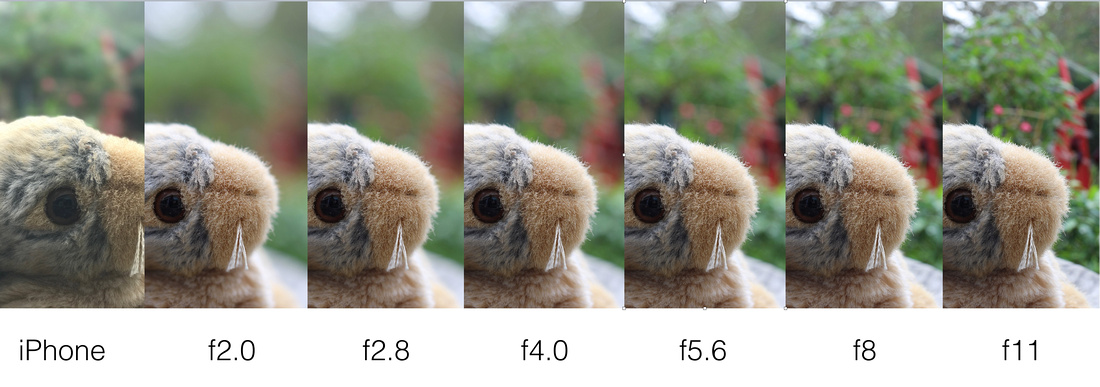
But what is the portrait mode like? Well - I took my lens with the nicest bokeh I own on a Full Frame camera. I tried to make the same shot with the iPhone and my Canon EOS 5DMk IV with the Zeiss Milvus 50 mm f1.4 (I know pretty unfair... to some extend...)
Above you see the result: Matching this I would say: Well the iPhone ends up with a f5.6-ish aperture... For full frame: pretty slow... But keep in mind... This is full frame... In reality this means - to name it with typical lenses used...:
- Full frame: f5.6: sorry, but there are -literally no such slow 50mm lenses available for full frame...
- APS-C: f4.x: You end up with 4.x-ish values: let´s assume a 24-70mm or 24-105mm f4.0 will deliver the same amount of bokeh...
- µ43 (Olympus, Lumix): f 2.8: In this case you get the same amount of bokeh from the iPhone as if you would own a 12-40mm f2.8 (Oly) or 12-35 f2.8 (Pana)... And this sounds much nicer...
Strange Topics
Using the Portrait mode I had some strange findings - just where things went wrong. And it seems to be still unsolved:
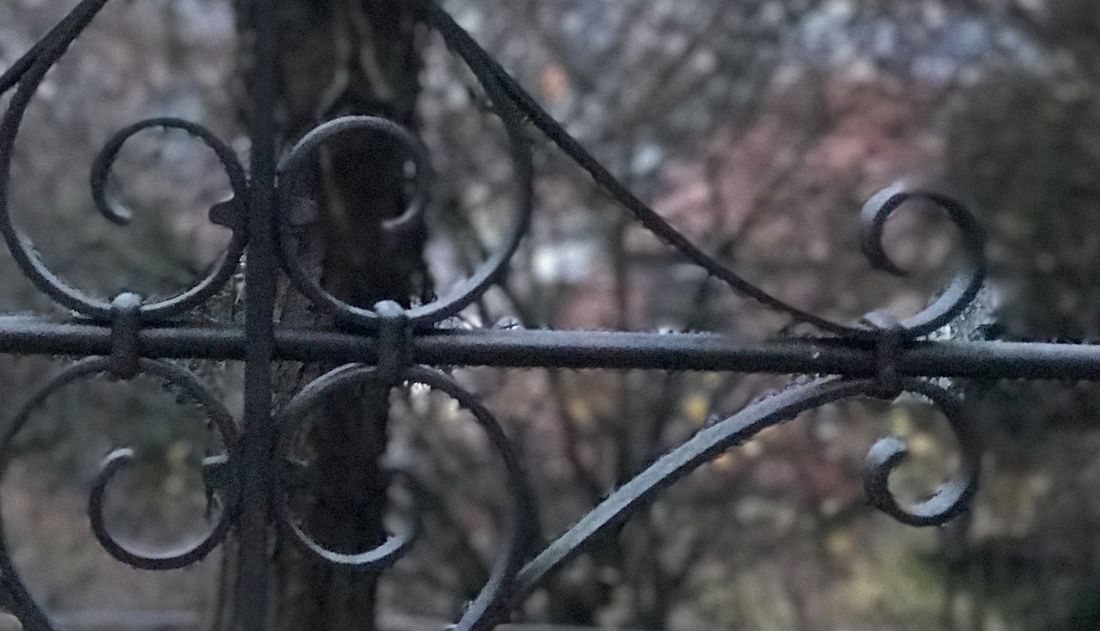
The photo was taken of a bitter. Look close to the gutter you find some weird stuff. The algorithm did not find the steel and mixed the whole image up...
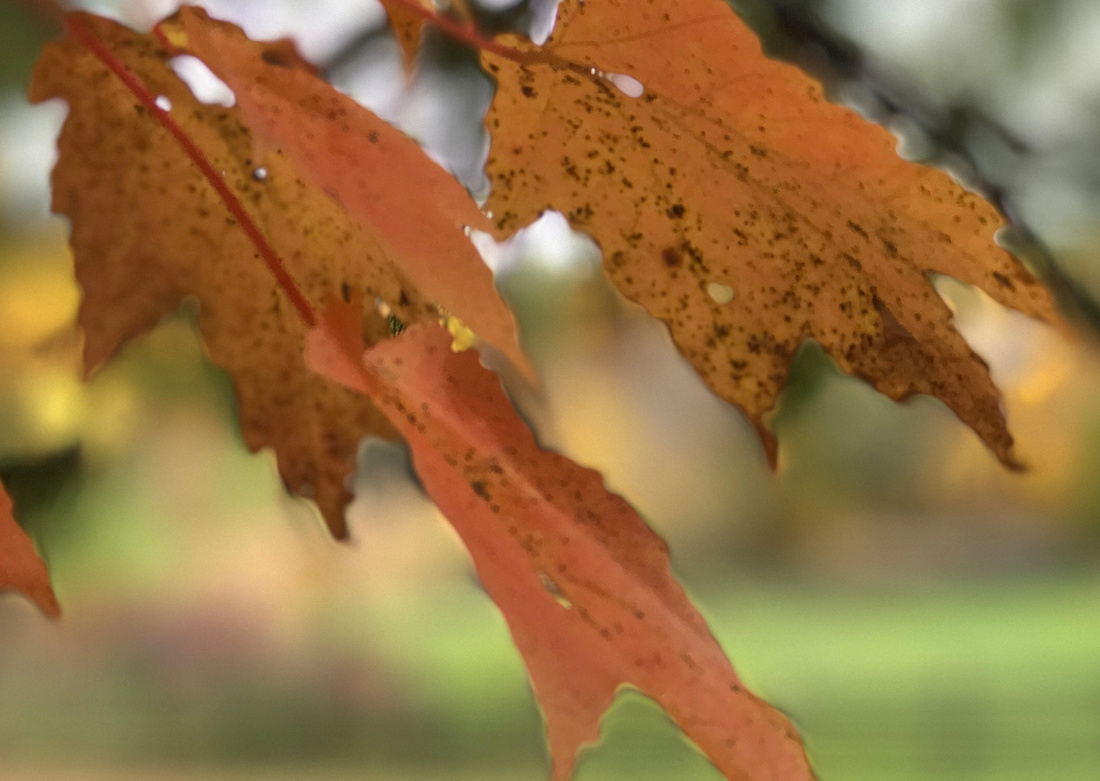
This image shows some strange behavior around the leafs. It really does not look great....
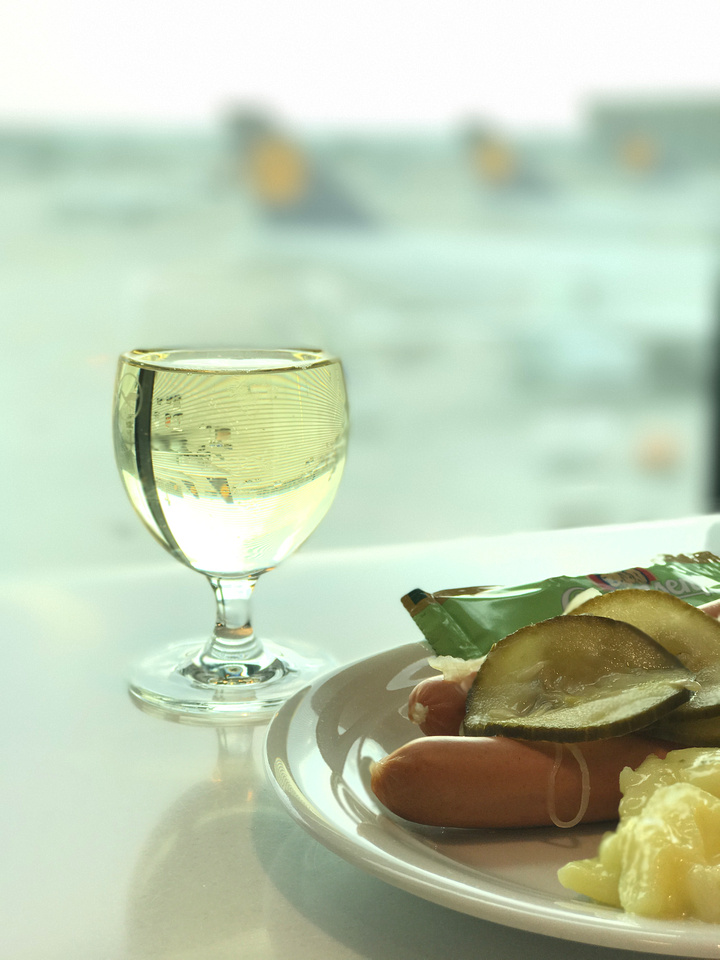
And a bit even more weird is the missing glass. Which is clearly there. But not in the image above...
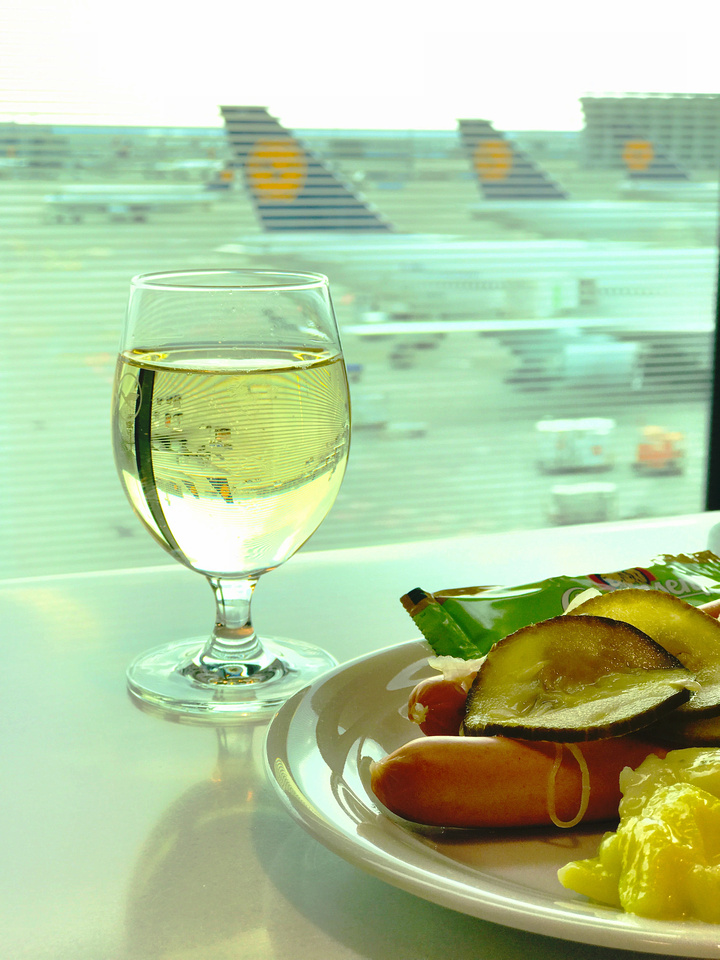
Nice Stuff
Sometimes it works pretty nice, and I wanted to show some examples below
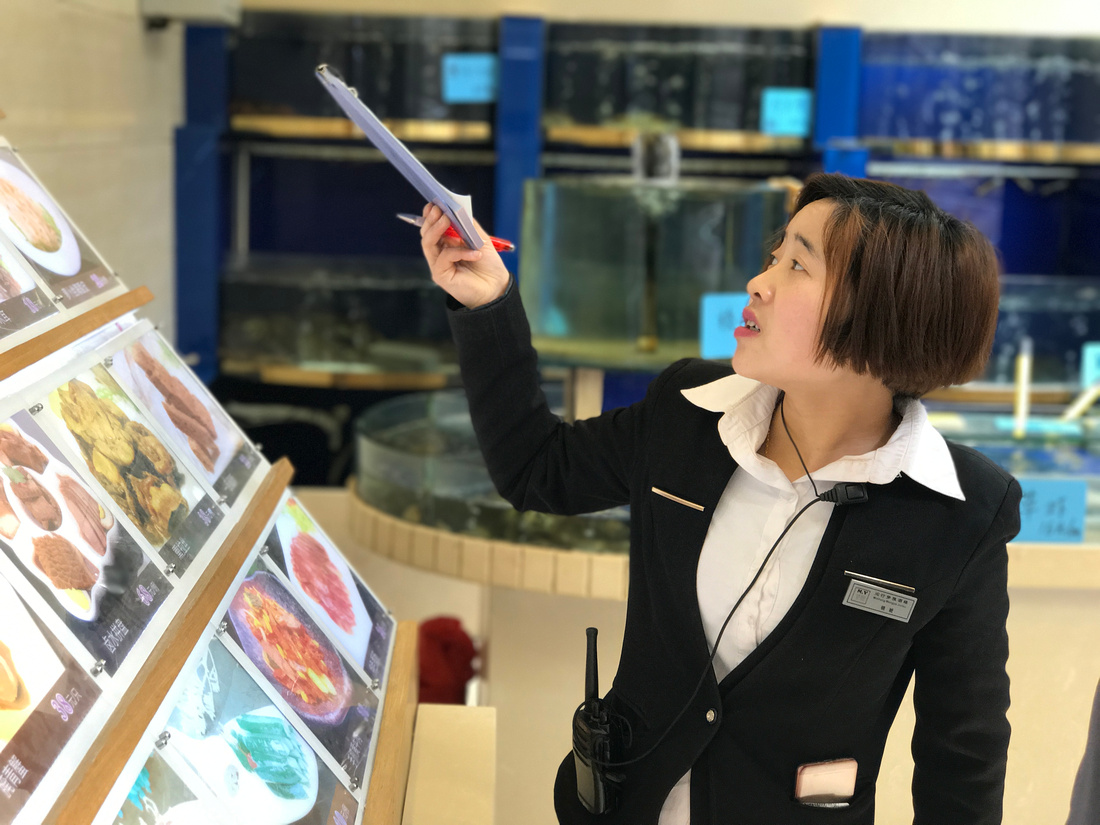
This image shows where the portrait mode is working quite properly. Especially if you do not intend to pixel peep...
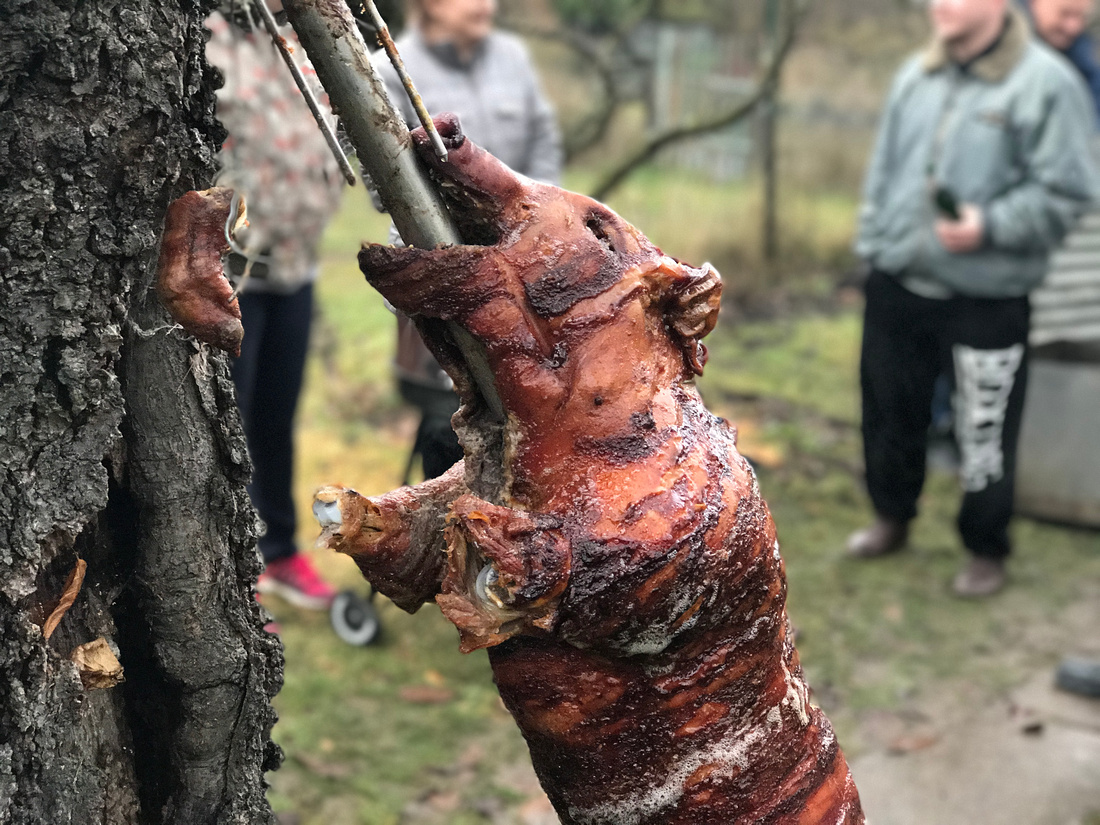
Also in this image it works pretty nicely

Another nice one....
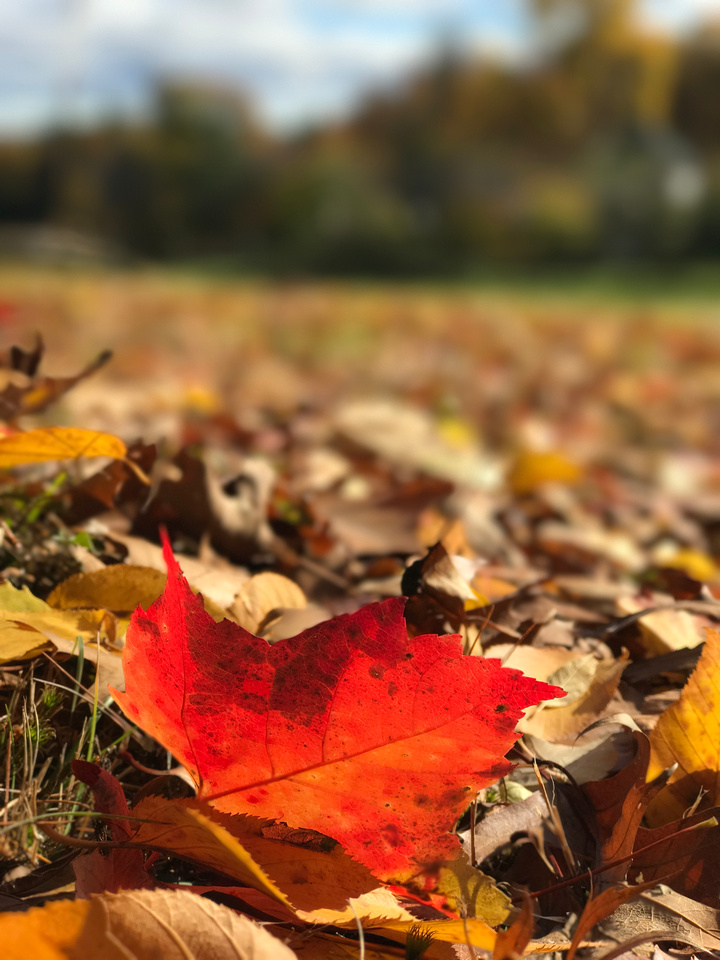
This is also one of the nice images taken last autumn...
Summary
The portrait mode of the iPhone 7 plus is a nice feature to simulate some (!) out of focus blur. It is nice especially to share these images on social media. But in the present status of this technology please do not print them largely...
And be careful. please check the images before sharing. Otherwise you might share rubbish. Like the wine without glass....
And keep in mind: it does not replace the bokehliciousness of good glass on good cameras. This remains to be a totally different story!
Miscellanous
The photos were shot with the iPhone 7 plus. The comparable photos were shot with a 5DMkIV and the Zeiss Milvus 50mm f 1.4.
- The review of the Canon 5DMkIV you find here: http://delightphoto.zenfolio.com/blog/2017/1/zeiss-milvus-50mm-f1-4-vs-canon-ef-50mm-f1-8-stm-10x-price-and-10x-better
- The Review of the Milvus 50mm f 1.4 You find here: http://delightphoto.zenfolio.com/blog/2016/9/canon-eos-5d-mk-iv-first-hands-on-impressions
- And the images of this review are there: https://goo.gl/ZdVpCJ
]]>
50mm. The kind of classical Full Format lens. Nikon and Canon are exposing themselves having a drug dealer mentality with their offerings of great affordable glass with 50mm focal range. I cannot speak for the Nikon or Sony equivalent. But the Canon EF 50mm f1.8 STM is just great! I did a detailed review on the Nifty -Fifty in 2015... http://delightphoto.zenfolio.com/blog/2015/10/-43-for-photographic-beginners-or-the-lack-of-nifty-fifty--ness-part-2 It is in a complete series of 6 blog entry - mostly related to µ43 where this great and cheap offering does not exist.
And please do not forget: The 50mm lenses are turning to 80mm on a crop sensor camera. There they become a very nice field of view for portrait photography. And this is a focal length I like very much, too.
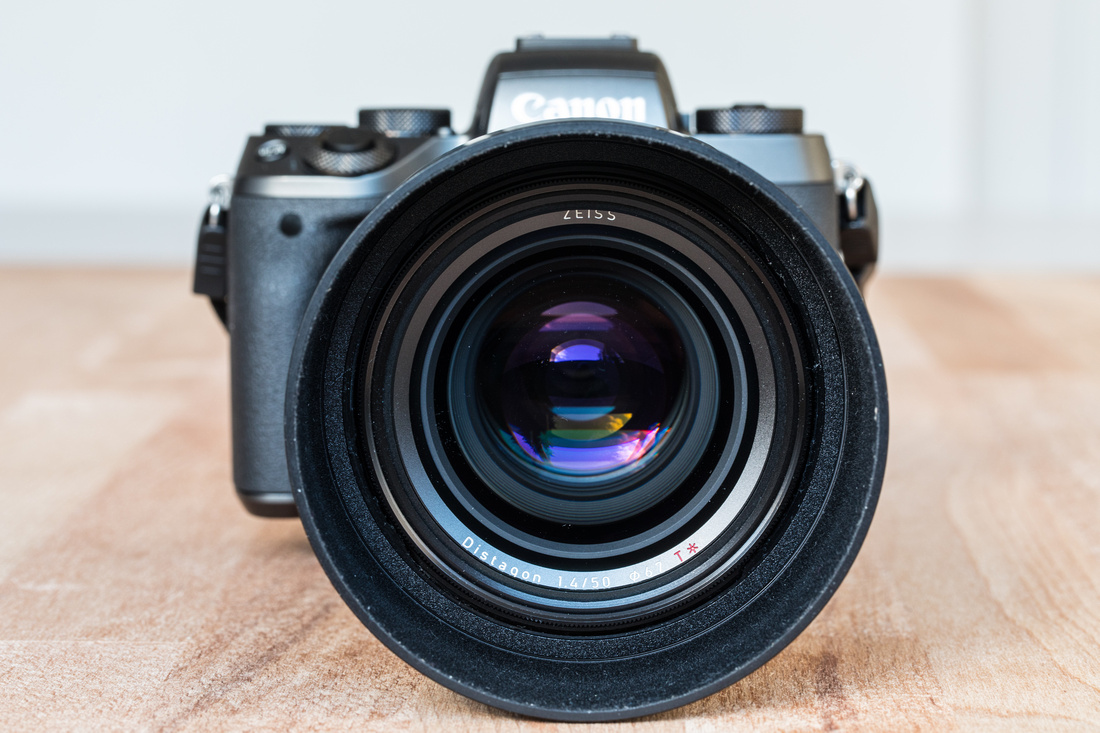
The Zeiss Milvus 50mm f1.4 is one of the lenses in the Milvus line up which is not a mechanical redesign with new coatings like many others, it has got a completely new optical formula. The old 50mm f1.4 was a so called Planar design while the Milvus is a Distagon.
The EF 50mm f1.8 has it nick names... Nifty Fifty, which is fine but also plastic phantastic. Since the latest version has a metal lens mount the build quality id pretty much ok, It has obviously no weather sealing but therefore the price tag is much less....
Well, the title is a provocation. 10x more in price is hard to justify, but let´s see.
Build Quality
How to compare a tank with a Riksha? The Zeiss Milvus line up has the best build quality I know for Cameras. All metal design with proper dust and weather sealing. It is heavy. And the manual only focusing works just perfekt. it is a huge difference to the electronic focusing f.i. @ Canon on the EF 100mm f2.8 L IS USM - which I used for the product shots. A great lens - but really not made for manual focus. 270º of focus throw. This makes focusing pretty easy - and it is a lot of fun to use this lens on the mirrorless EOS M5 with focus peaking and a very nicely implemented electronic zoom in the viewfinder....
The Canon: The actual STM version has a metal lens mount (big improvement). It is plastic but the plastic does no feel cheap. So I would say: you get what you pay for: The build quality is fair.
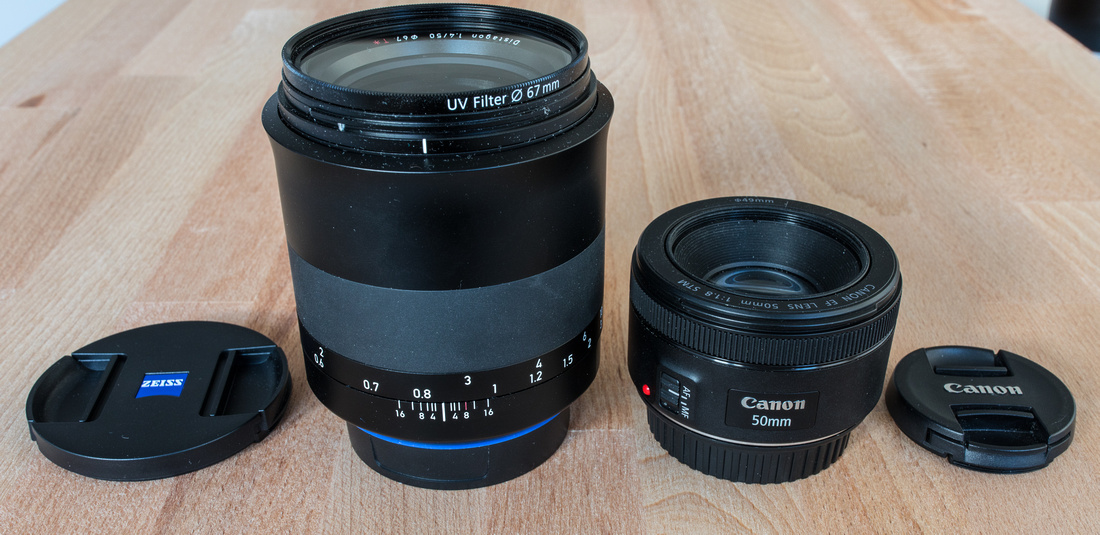
This is a side by side shot of both lenses with their lens caps. The Canon has not much of things to show, just the AF switch and a small focusing ring...

Ok... 67 mm vs 49mm filter diameter....
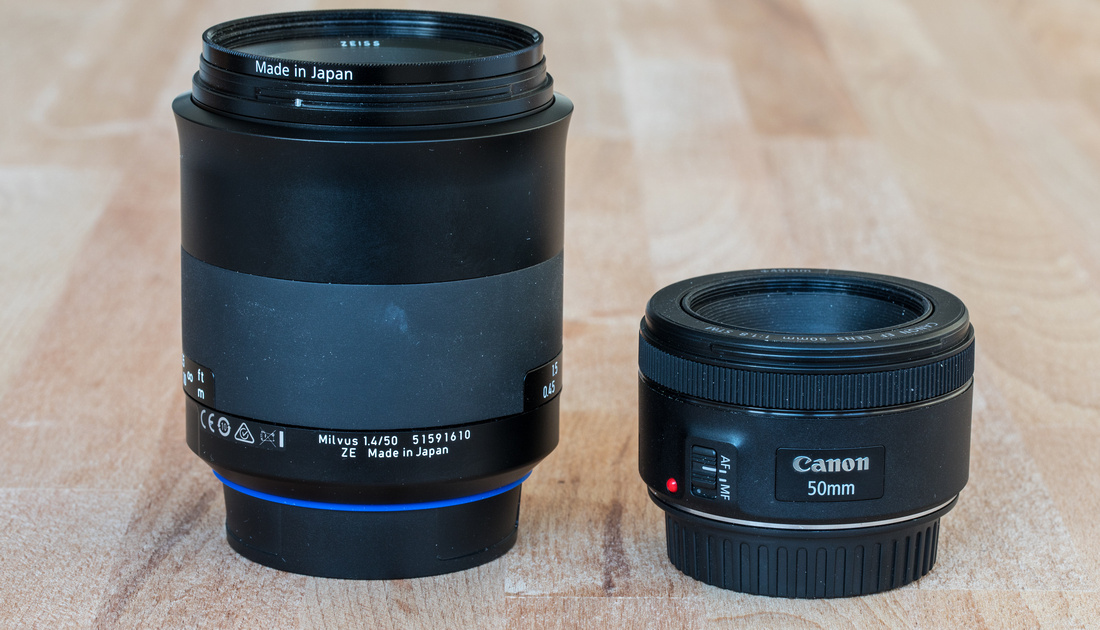
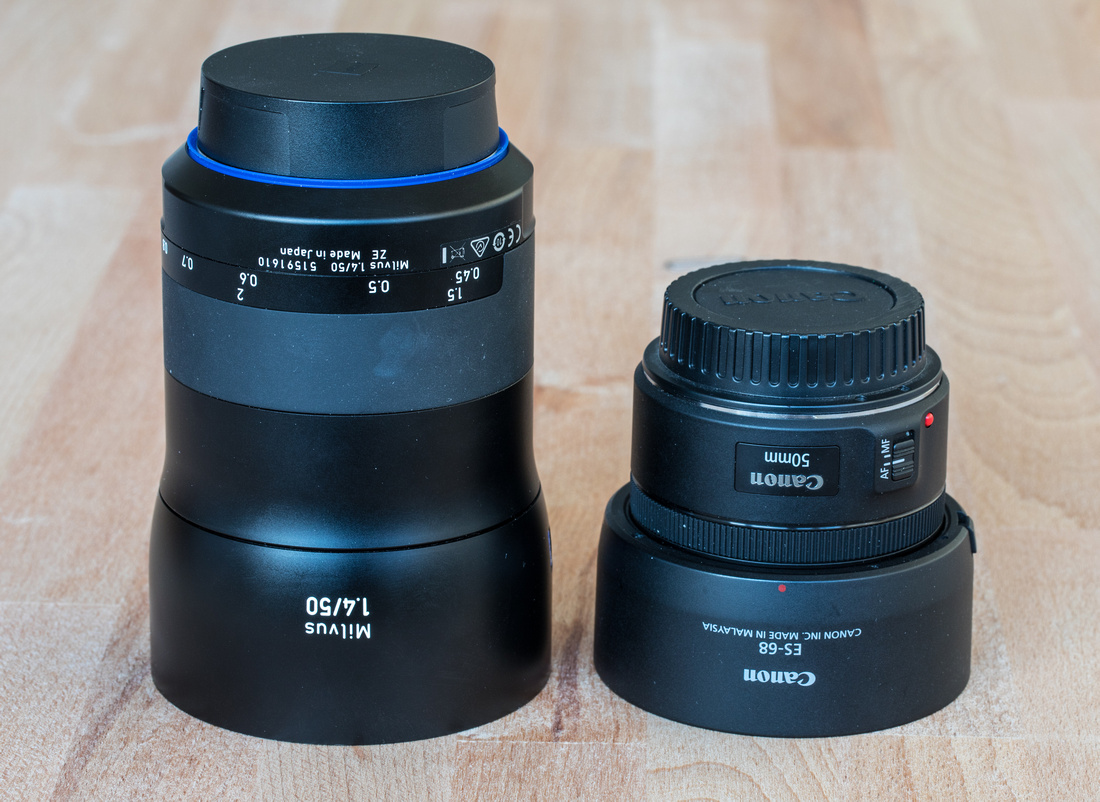
With the lens hod, the difference in size is a bitt less... but the weight is much more pronounced. still

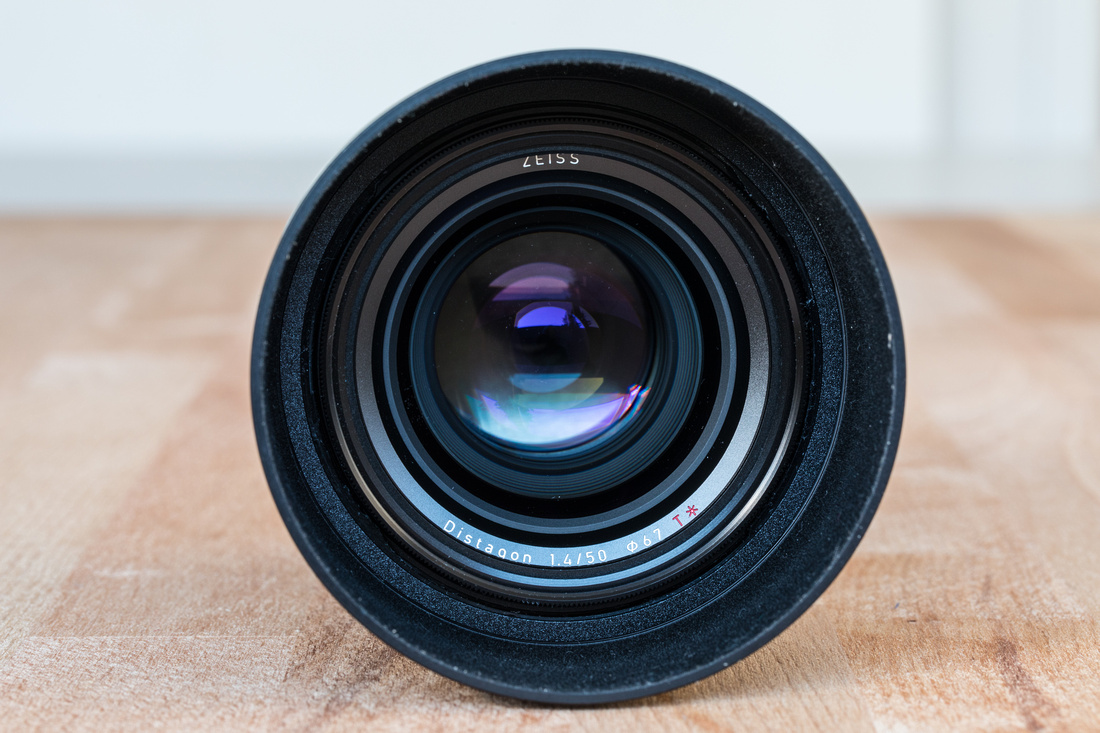
Image Quality
Comparing image quality it a very difficult topic. You can do it like DXO or the digital picture or others based on measurements pretty scientifically. For me this approach is interesting and very helpful. I read most of these reviews before I buy a lens. For me reviewing lenses on my own means to add some more value to the community. So I think I do have to add some informations which are not present or not present in a way that is easy accessible.
In this case the direct approach is to compare a very good cheep lens with an excellent expensive lens. What I want to show is where are real and visible advantages - but also: where not.
The first set of images were shot wide open, so f1.4 for the Milvus and f 1.8 for the NiftyFifty.
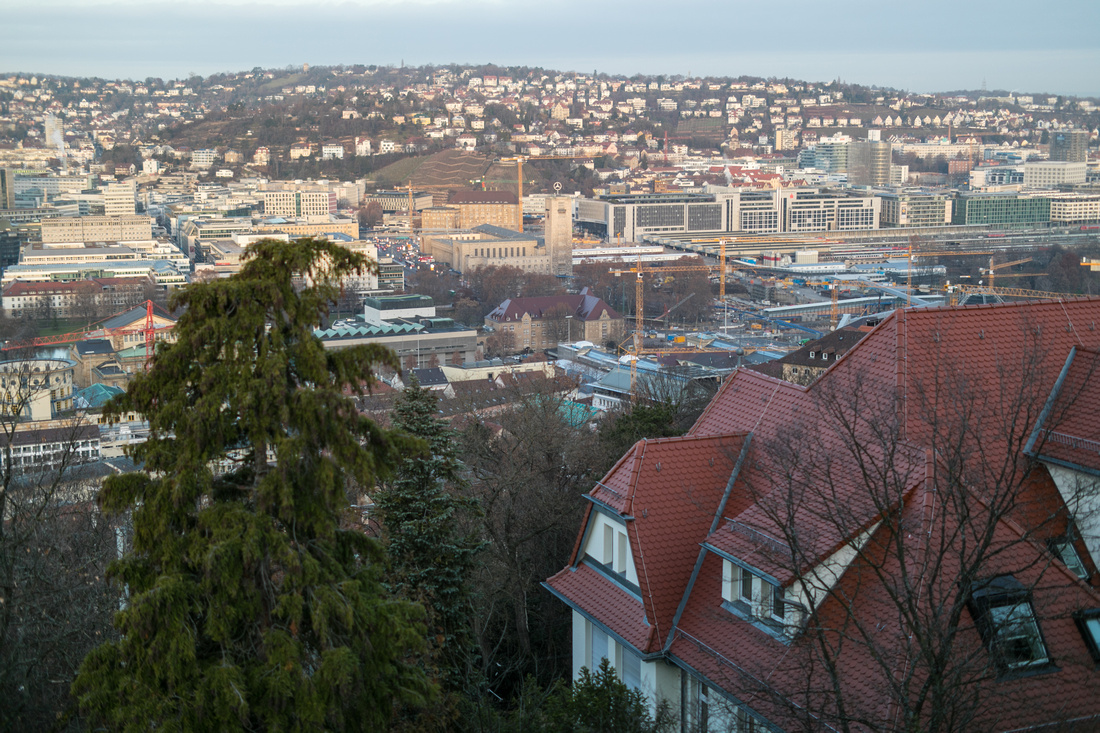
This is the first shot I compare. It is Stuttgart and the view to the main station.
Shooting wide open you will see really the biggest difference:
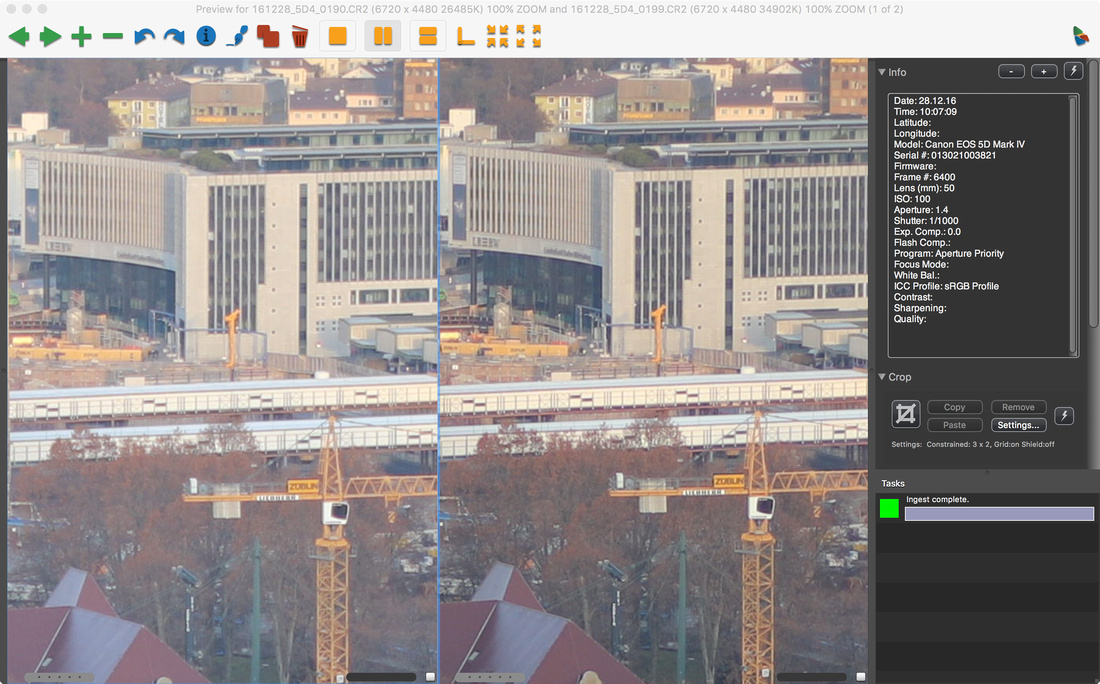
Center The Center was astonishing for me: The EF performs very well: in both categories, sharpness as well as the EF is even a bit better (!) than the Milvus: it as a bit sharper and delivers a bit more contrast... wow! Congrats Canon!!!
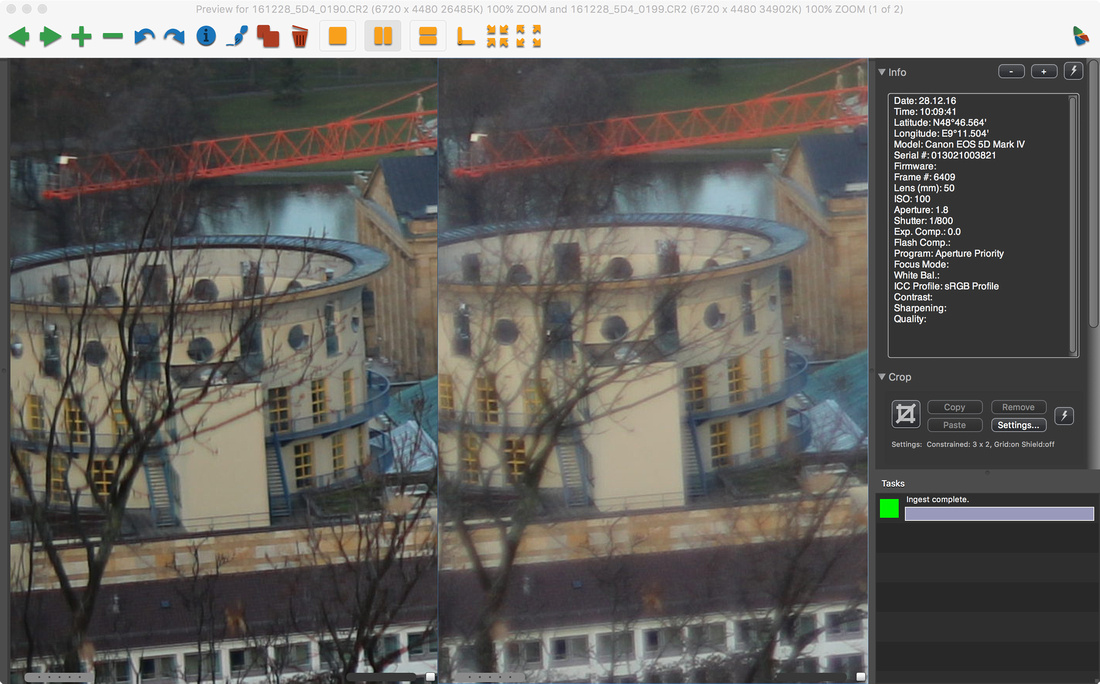
But if you go to the corners, what a difference. The Milvus delivers. definitely. Great contrast as well as great sharpness... Above you see the lower right corner, the next image shows the upper left.
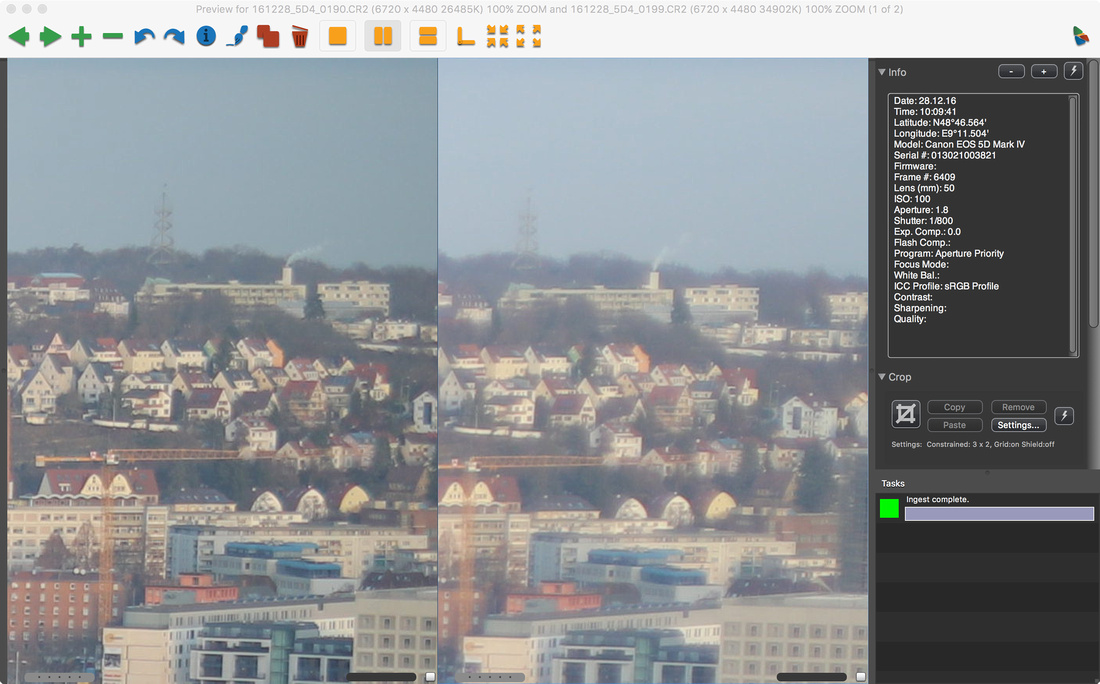
What a huge difference. The tower is much much clearer visible... but allows the rest: very low contrast at the EF-Lens...
But what happens if you stop down to f4: As expected: the difference becomes less.
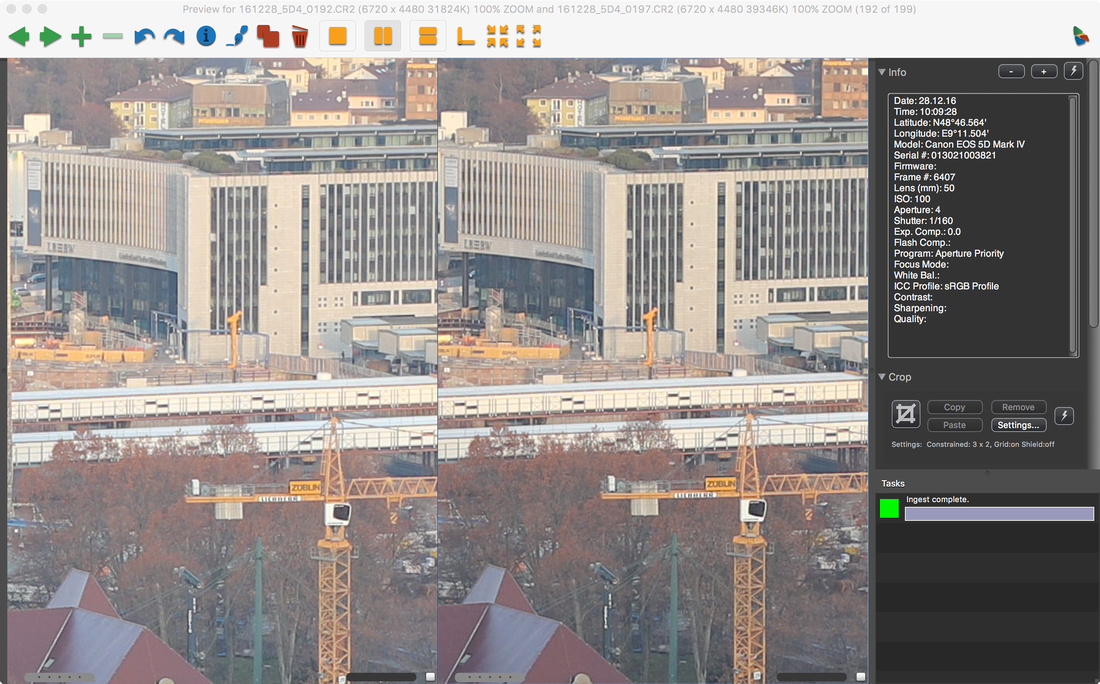
Again: the center performance of the EF is just great.
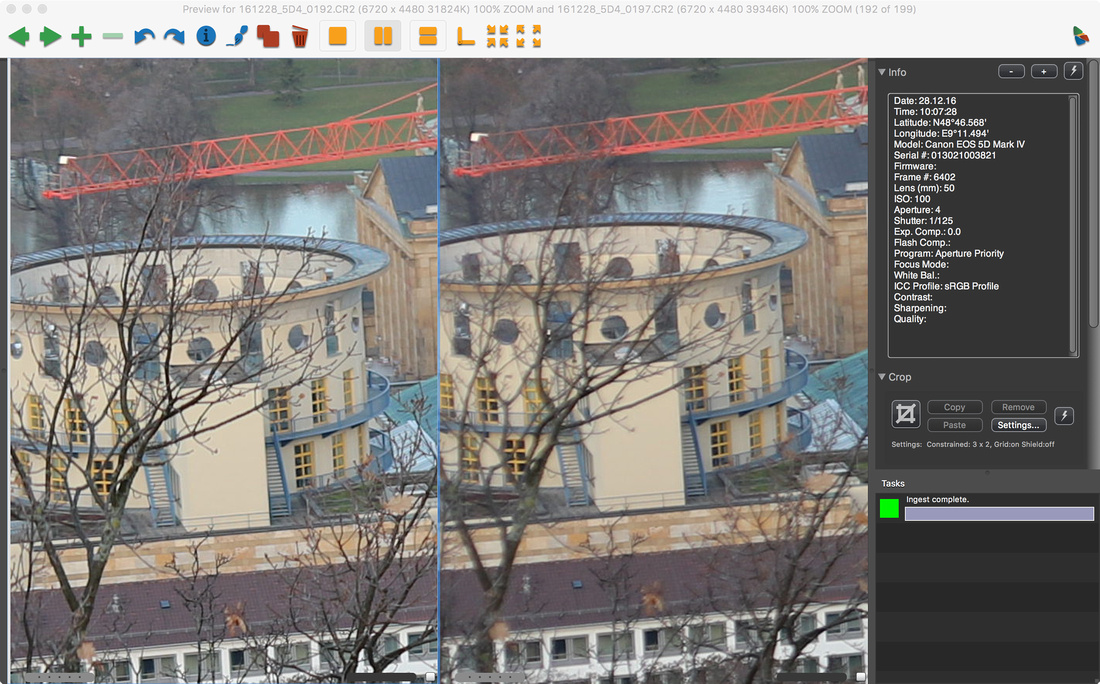
The lower left is much more usable now, but the Milvus improved too...
At the upper right corner the difference is much less pronounced. The Canon sense is much better now.
Bokeh
When you are shooting prime lenses what you want to get is Bokeh. And Bokeh quality. Please be not irritated: The EOS M5 is not delivering the EXIF Information that the Lens is a Milvus 50mm f1.4. All other EOS Camera´s are transferring this information, but the EOS M5 does not. And Canon says: this is not our problem but the lens manufacturers. This is stupid.

The Milvus on the left show nice and clean bokeh balls, while the EF shows some business. And the balls of the 50mm are a bit larger - the camera stood own a tripod. The Milvus was shot @ f1.4, while the Canon was working @ f1.8...
The next shot was taken next morning:
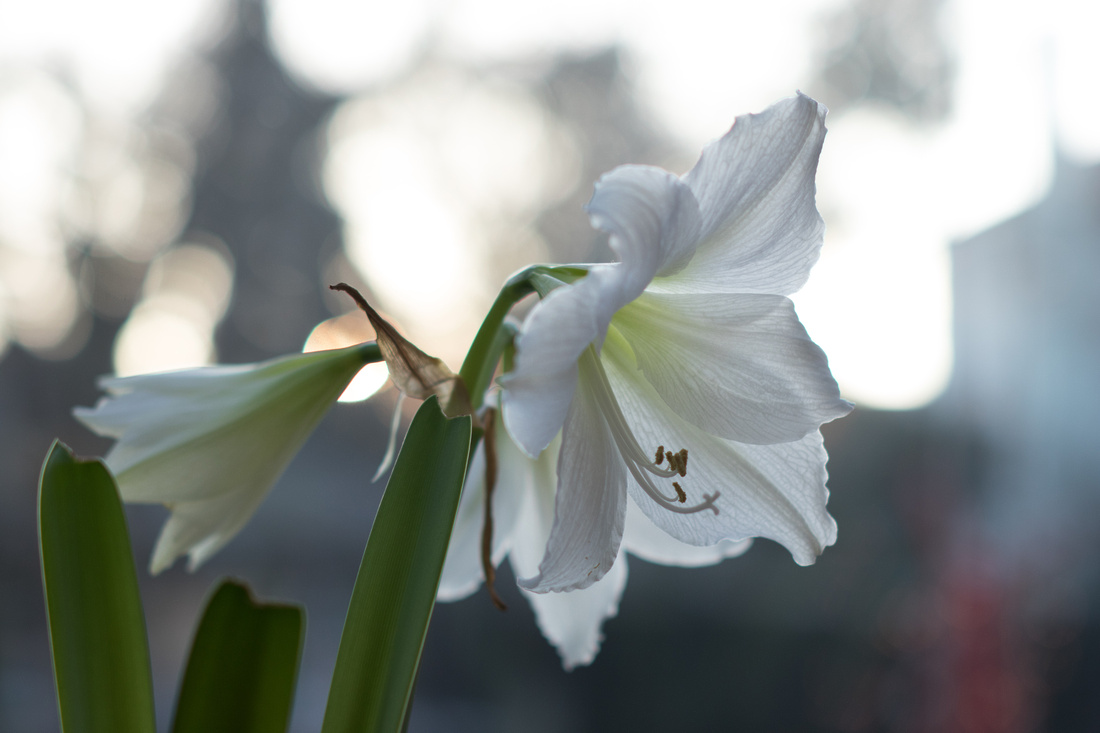
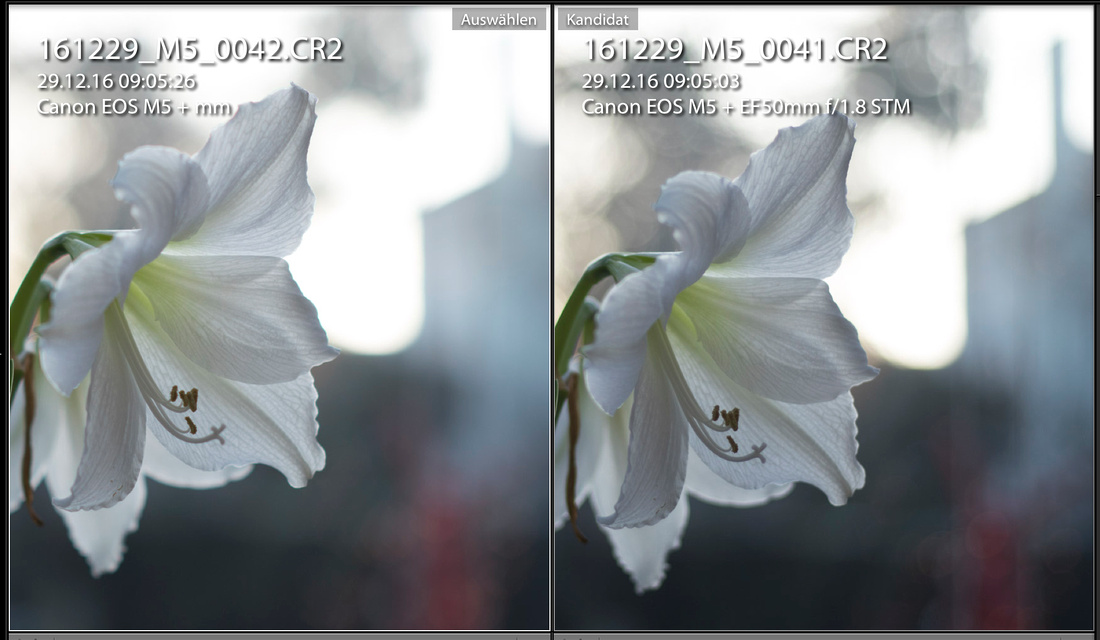
What has blown me away are the 2 images above. look at the chimney of the house in the back. Both lenses are operating @ f1.8. The Milvus blurrs it more or less away!!! So beautiful!!!
Lens Flare
The Zeiss T* Coating is famous. Since my analog times I love what Zeiss is delivering. And the Milvus shows it as well. Both images below were shot with f11. Sharpness is not the issue, but contrast as well as some more pronounced flare artifacts on the EF.
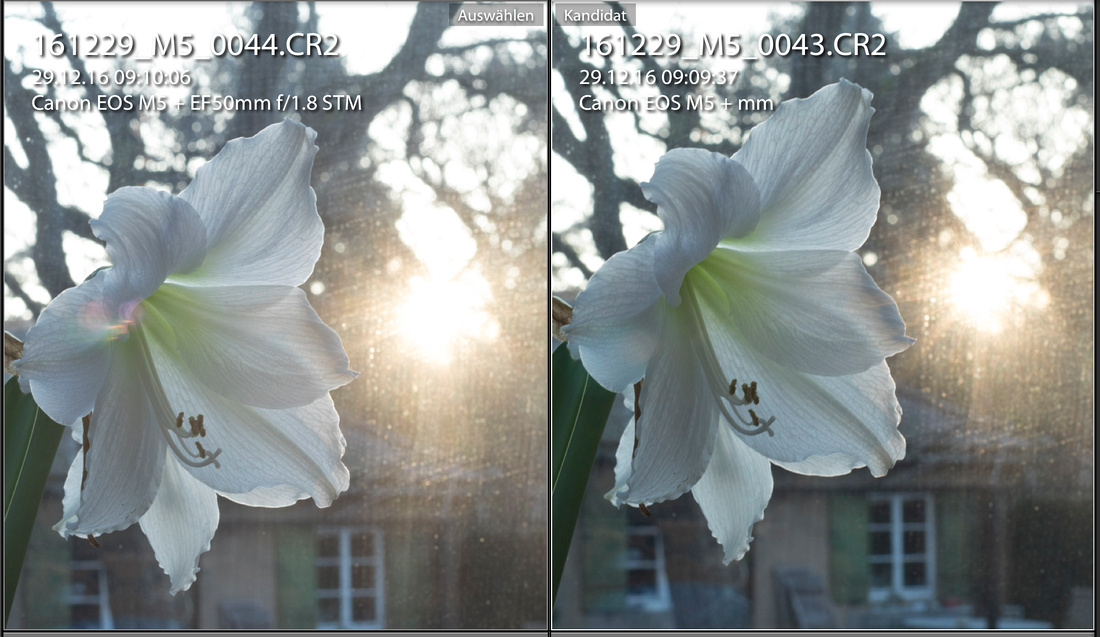
The next image shows this effect even more:
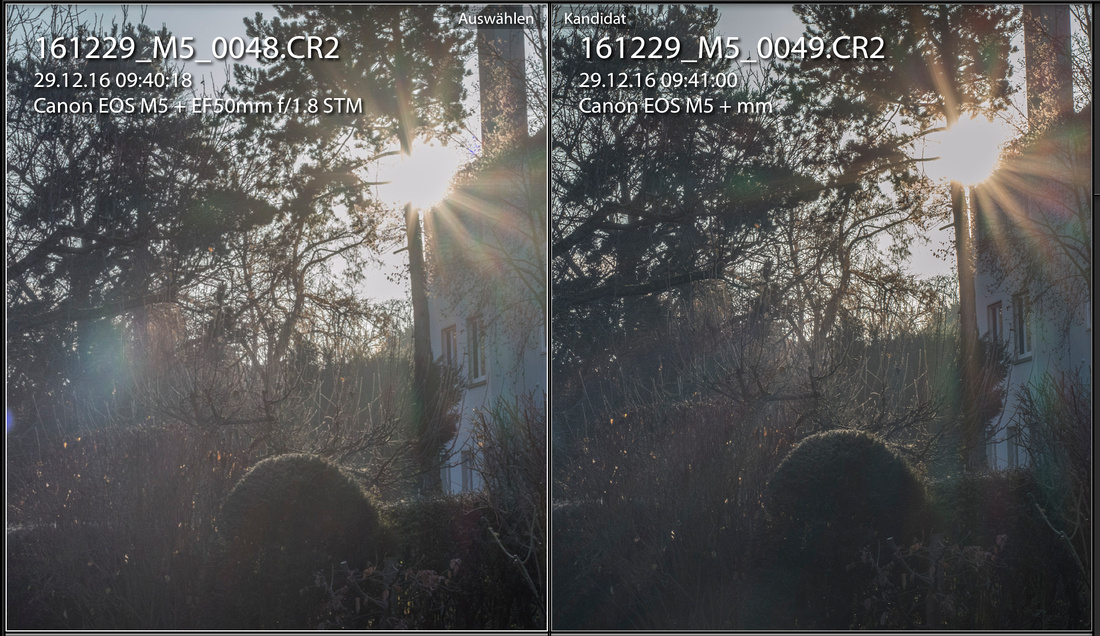
This images are a bit more processed. The Lightroom setting here: Light -100%; Shadow +100%, Clarity +40.
Chromatic Aberrations

The CA comparison was astonishing for me. In the images above CA seams to be pretty well controlled on both lenses. I know that I have shots if the EF, where CA was pretty pronounced... I will have to this topic a bit more in the future - but with proper conditions as well.
Looking Practical
If you shoot just normal stuff using moderate apertures like f 2.8... what comes out?
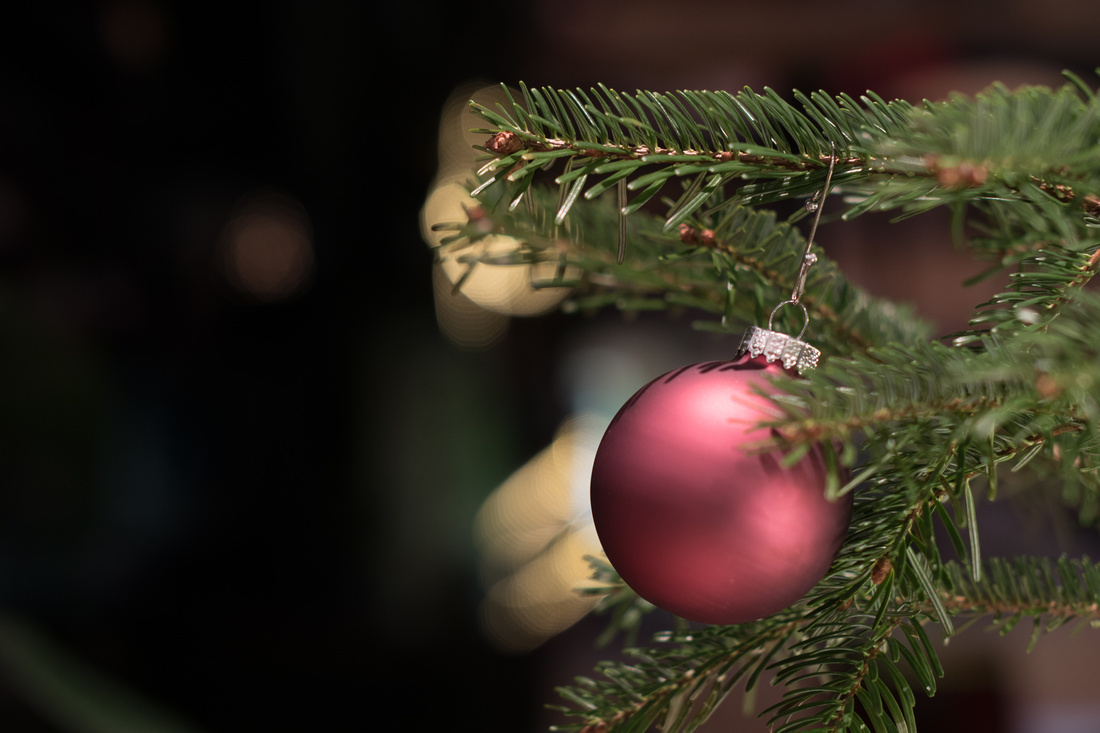
I took this shot to look how mich I can extract in the dark - as a comparison between the 7D2 and the M5. But I used this image now for a different evaluation. The shot was taken @ f2.8. I guess we all can live with both of them, or?
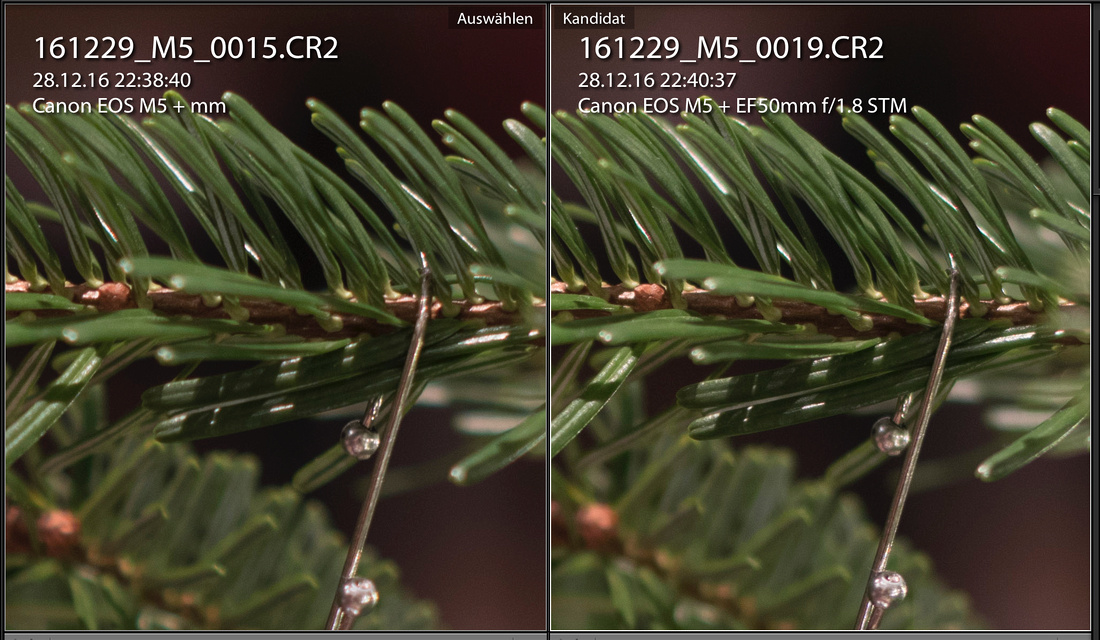
For me between this 2 shots the difference was at the first look marginal. This shot is cropped in @ 100 %. But after looking it a bit longer: Yes, the Zeiss delivers more contrast, much more contrast....
Some Samples with the Milvus 50mm f1.4
On my last trip to San Francisco I did a couple of shots with the Milvus 50mm f1.4. It is heavy but worth shooting with...

this is a Panorama with high resolution...

This is the 2nd part of the Panorama. above....
 This photo shows the skyline of San Francisco from Treasure Island to Golden Gate Bridge. Like the Panorama above the images were shot with a Panorama head. Therefore the size is ca 26000x6000 Pixel; roughly 156 Megapixel.....
This photo shows the skyline of San Francisco from Treasure Island to Golden Gate Bridge. Like the Panorama above the images were shot with a Panorama head. Therefore the size is ca 26000x6000 Pixel; roughly 156 Megapixel.....
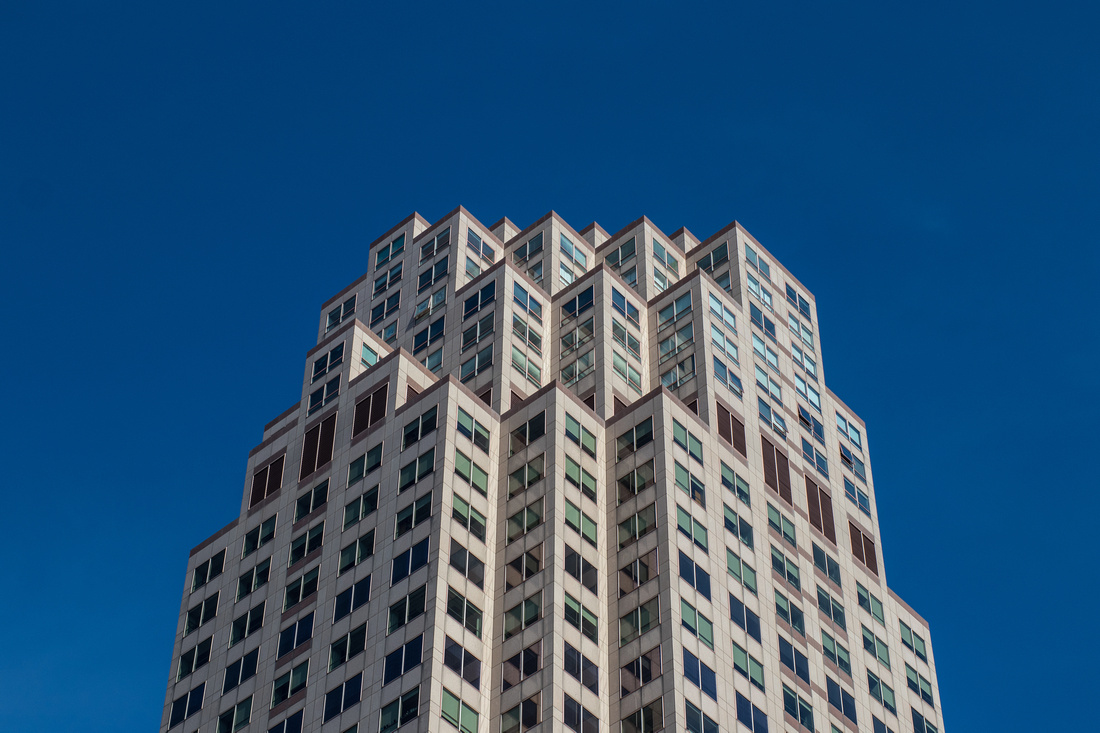
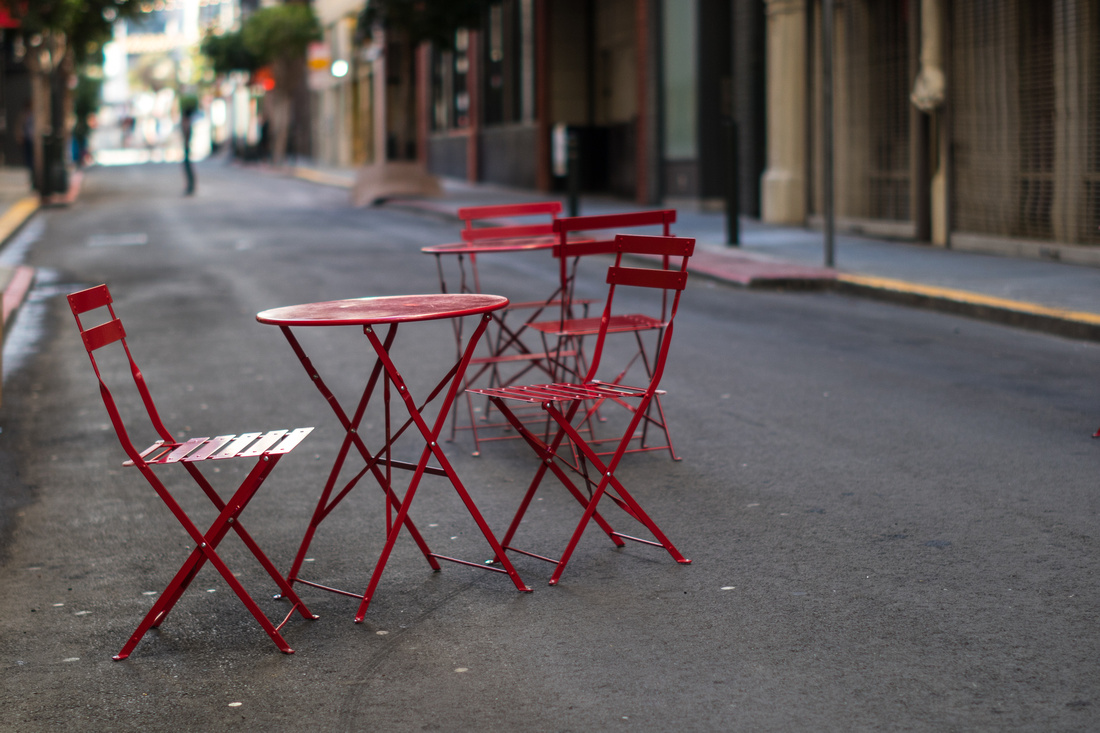
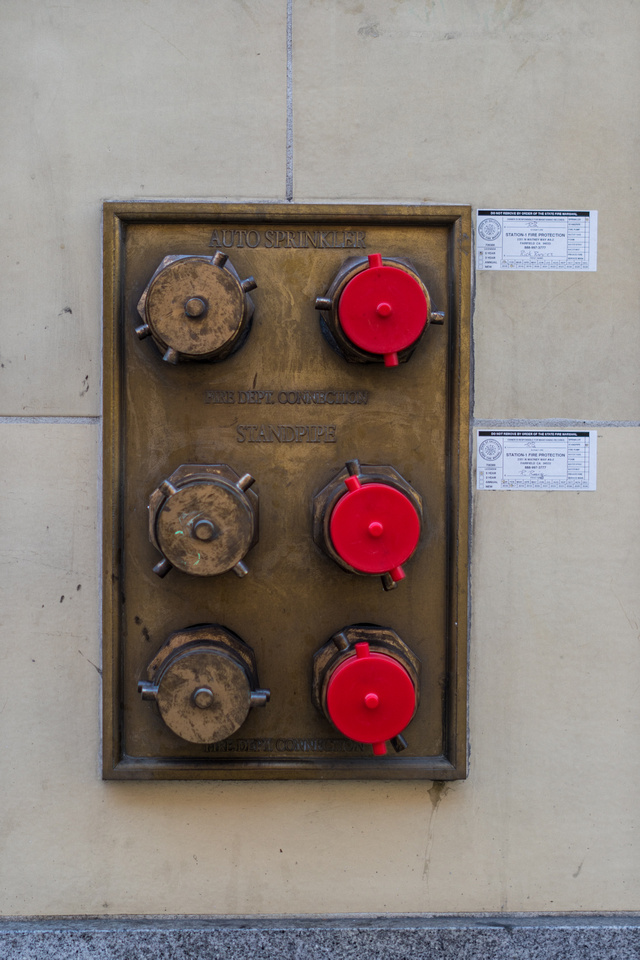
I do love the systems for fire extinguishers build into the houses of San Franciso. I shoot a complete serious of them...
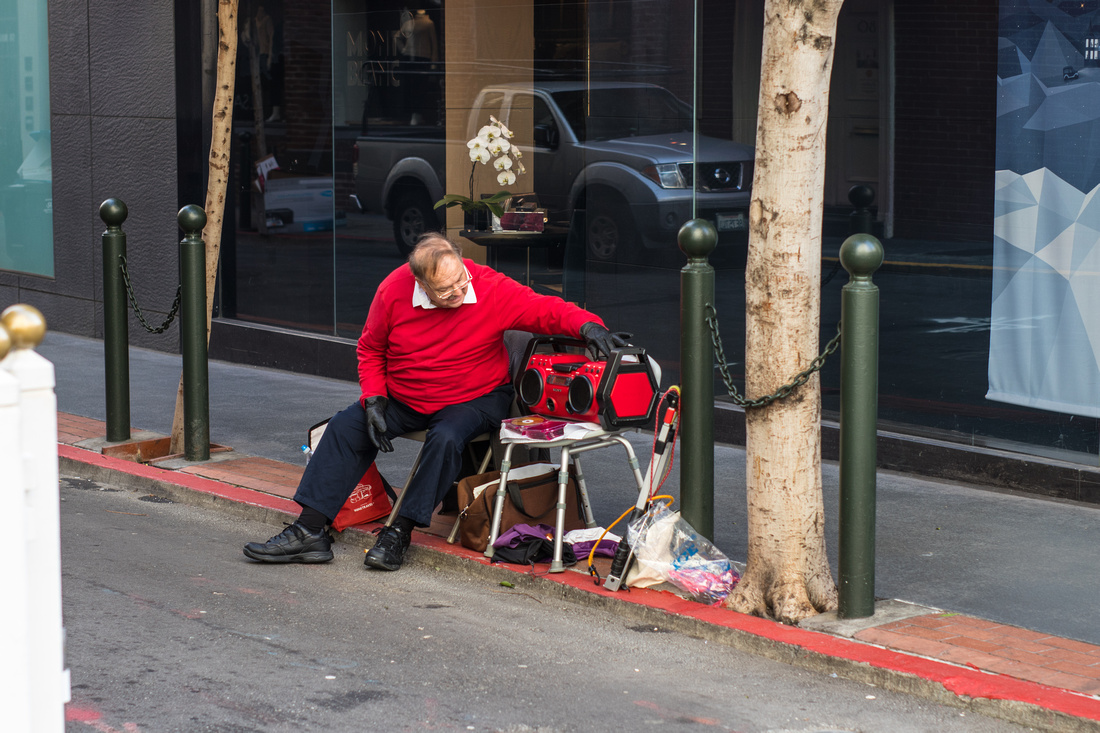
This fellow was great. Later he started singing... And I took a video on that, too. It was amazing how easy that was on the EOS M5...
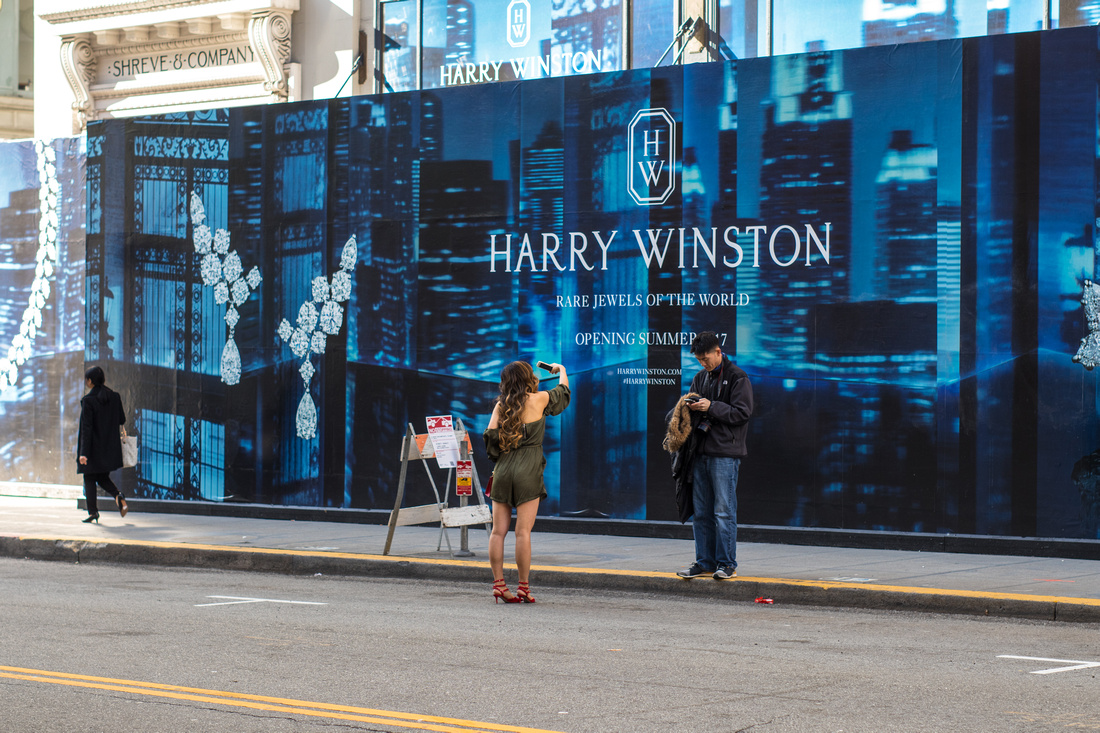
Very nice Selfie... especially @ 5ºC...
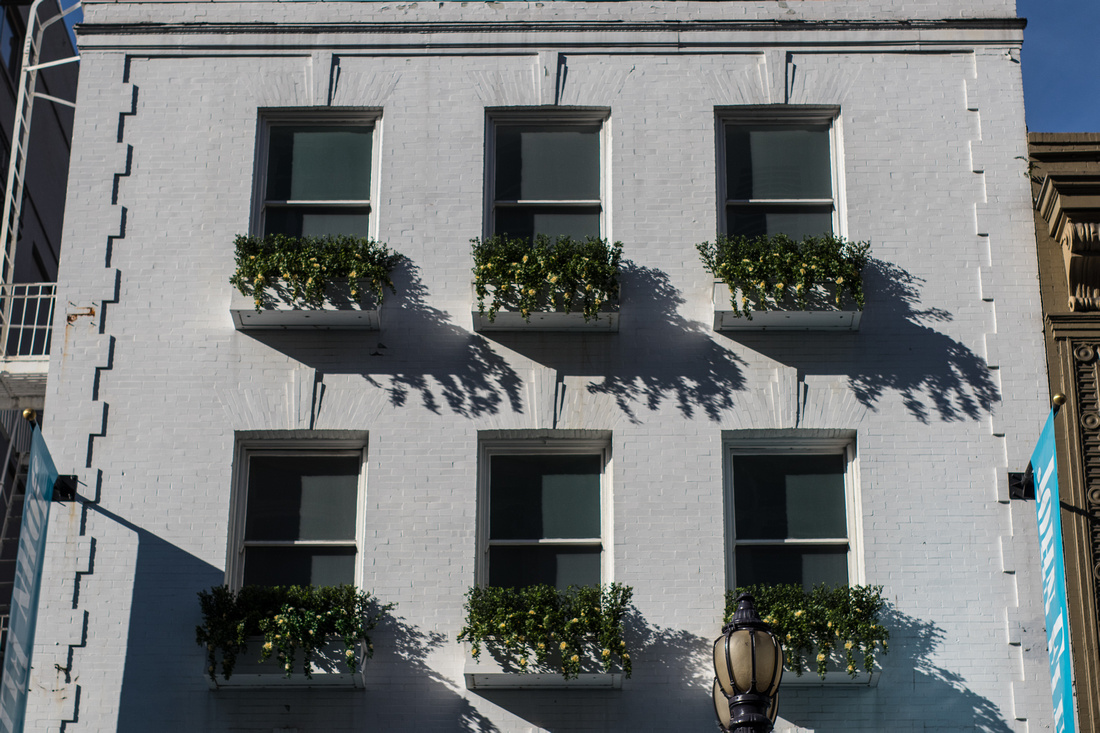
I do like the geometrical structure of the houses in San Francisco...
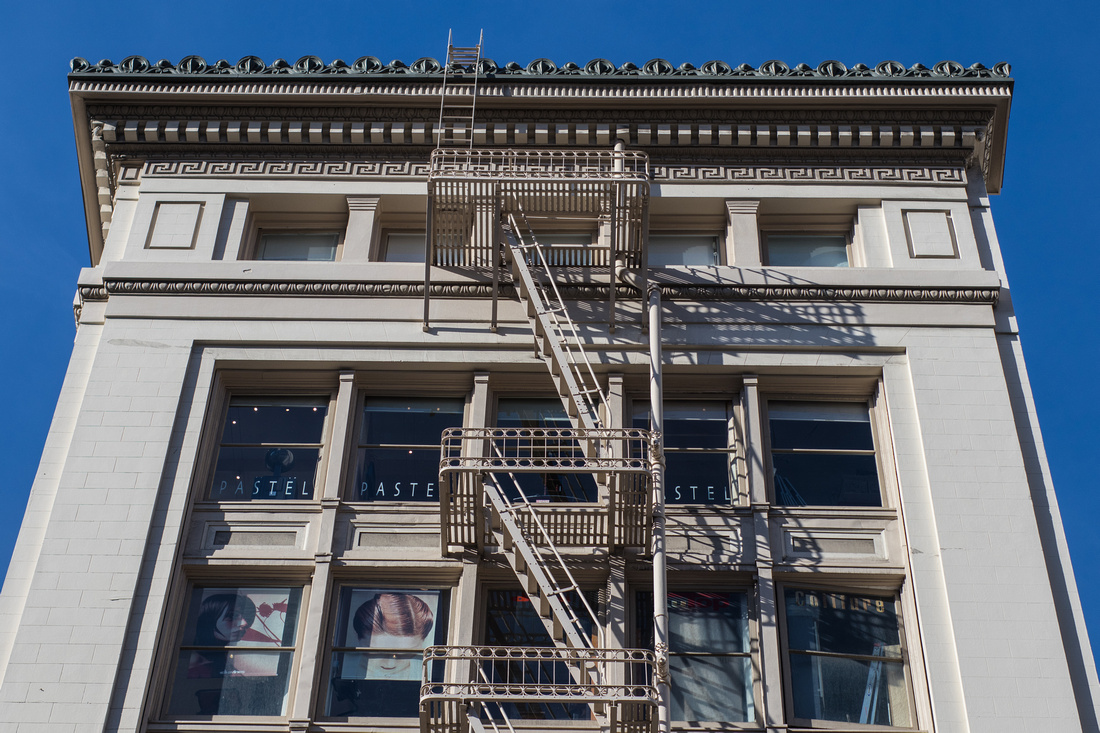
Especially the smaller houses are a bit outstanding...
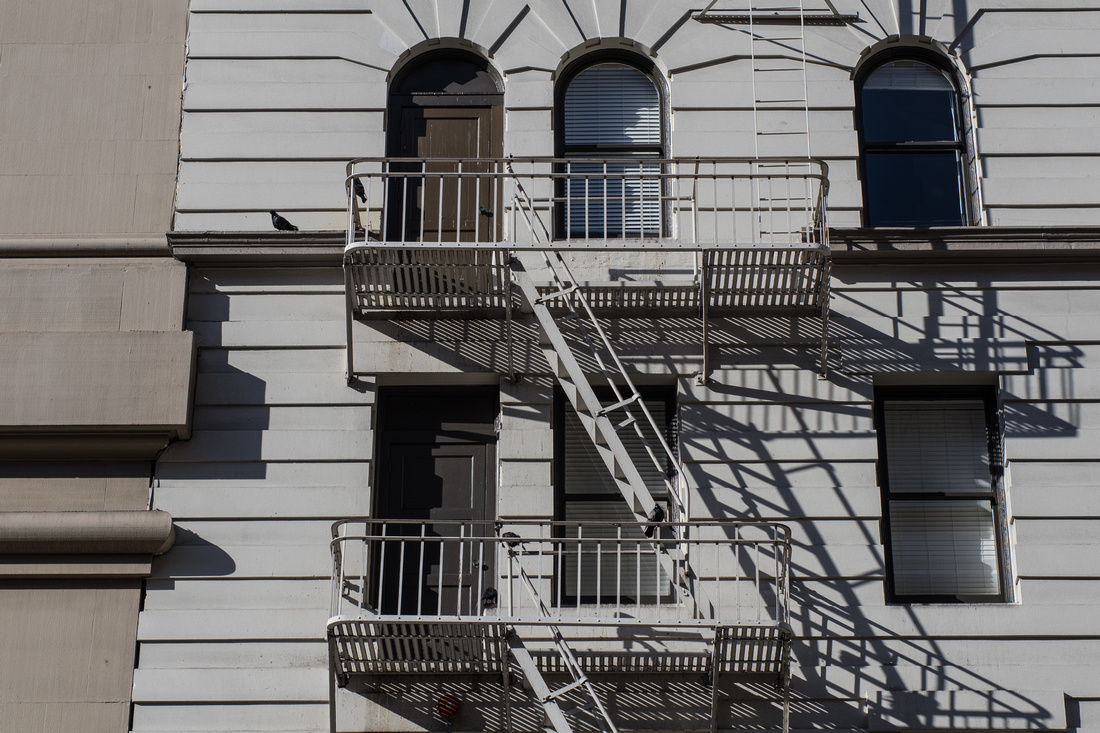
All the geometrical stuff with high level of contrast is something which the Milvus renders in an outstanding way....
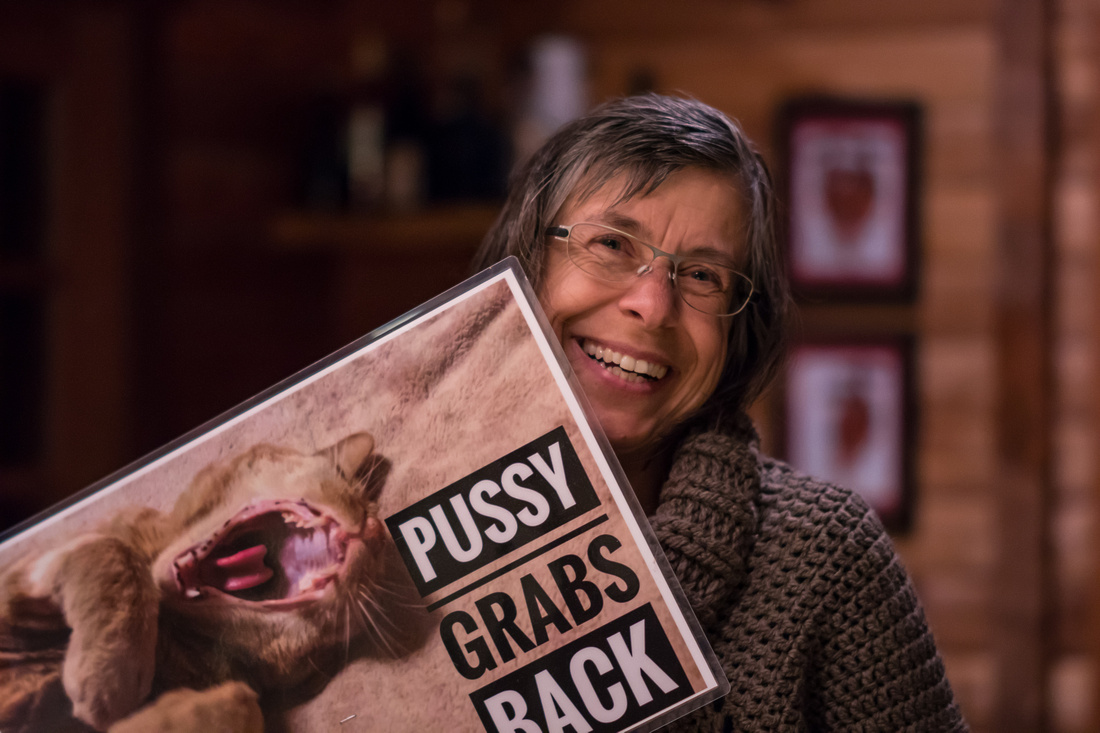 The 50mm range is considered to be the perfect portrait focal lens. I full agree on that. The problem on publishing of portraits is that it is always tricky to get the allowance of the subject. This shot is a bit special. My friend took that photo an Facebook. So it became public.... It is shot @ ISO800, f1.4 1/100s....
The 50mm range is considered to be the perfect portrait focal lens. I full agree on that. The problem on publishing of portraits is that it is always tricky to get the allowance of the subject. This shot is a bit special. My friend took that photo an Facebook. So it became public.... It is shot @ ISO800, f1.4 1/100s....
Verdict
First of all: I will not answer the question in the title. I think everybody sees clearly: yes the Milvus 50mm f1.4 is an excellent lens. It is the best 50mm I own and I know. And I love shooting with it. For me it is worth the investment without any doubt. It delivers results which will blow away even experts - so great!!!
But what is clear at the end of this comparison: the outstanding quality of the EF 50mm f1.8 STM: This is the Golf GTI among the lenses. The Mark I GTI. I drove that car 1977 when I got my driving license: It was unbelievable fast, great handling but also very fuel efficient. And price wise pretty reasonable, too. There is no mistake having and using this lens. And it is light. For me it is the perfect 50mm lens for traveling especially with the EOS M5. And for everybody else: It gets the "buy" recommendation even more: Today I know how good this lens is - especially after my comparison with the 10x more expensive Milvus lens. I believe -The EF 50mm f1.8 STM is optically the best 50mm lens Canon is offering - better than the 50mm f1.4 - which I own and it is worse in every regard (!) but also better than the 50mm f1.2 - beside the fact the f1.8 is less than f1.4 or f1.2 - according to DXO (ok. about DXO testings you may think what you like - but it indicates at least something).
What You should buy: I do not know. This is up to you.
- If you say 1.200 € is by fare too much: I can understand this, too: The EF 50mm f1.8 will give you great images, too. No doubt.
- If you love the high end contrast, low flare, low CA and sharpness even in the corners wide open and a just mind-blowing bokeh: Yes the Milvus is yours! Invest 1.200€! And you will be happy!
But please keep in mind: The Milvus is the one and only 50mm f1.4 lens with weather sealing....
Enjoy shooting!
Miscellanous.
All photos were shot with the Canon EOS M5 or the EOS 5DMkiV. The product shots were taken with the 5D Mk IV and the EF 100mm f2.8 L IS USM.
You will find all photos of the lenses as well as the screenshots of the comparison here: https://goo.gl/rC4zPX
]]>
Using mirrorless is a hype today. I am shooting mirrorless since 2009 - 7 years. I started with the Panasonic Lumix GH1. I bought it because I was scared to take my EOS 5D MkII to India. (Which was nonsense-by the way: carrying camera gear to India is pretty save - but that I learned in the following years) The tiny little ones had accompanied me everywhere -whenever I did not want to carry the big guys. USA, Turkey, Italy, China, Japan etc - for whatever reason, mainly to have not too much luggage with me. Or for outdoor sports like Skiing, Mountainbiking and such kind of events. And I had them with me in addition to the big guys...

Meanwhile I do have quite a bit of µ43 gear. µ43 has small camera bodies and small but excellent glass, too. And I developed my concept of shooting with prime lenses. This is based on the experience of comparing full format with µ43 and an iPhone the conclusion was: shooting with prime lenses with the highest amount of bokeh and top image quality over the whole image circle wide open delivers a differentiator to the so called iphoneography.... http://bit.ly/2iJMHS5 And since glass is heavy, it is better to carry less glass and more bodies. The concept behind: http://bit.ly/1CtrDbl
Canon was out of the mirrorless business. Sony went into it, pretty successful with the Alpha Series, the APS-C Series 6x00 or the 7 in full format. I was looking into it. Yes I was considering to buy one. Mainly because of the 5 ax IBIS. But Sony was sacrifying the advantage of mirrorless bodies with the G-Master lenses: An Alpha 7 with the G-Master f2.8 24-70mm & the 70-200mm weights more or less exactly the same like a Canon EOS 5D Mark 4 with the similar lenses from Canon.... Where is the Killer for shooting mirrorless??? I do not see it...
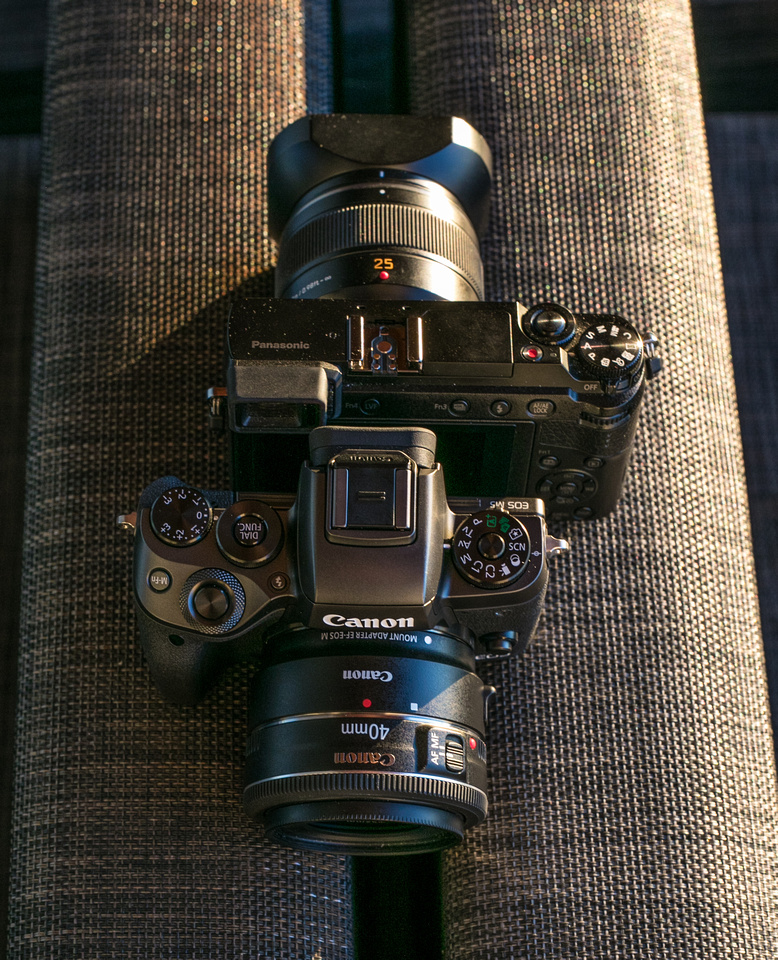
But the EOS M5 showed up. I had it in my hands at Photokina 2016: The ergonomics are among the best in class: the reference is the Panasonic Lumix G7/G80. And the EOS M5 is pretty close. And in some regards even better....
Methodology
Maybe the scientific expression is a bit over the top for this more hands on real world review. The idea behind this this review is to find out where are the strength and the deficits of the new EOS M5:
- What will I loose not having a very good µ43 camera with me anymore but the M5
- Will it be possible to replace the 7D2 on my travel and traveling with 2 bodies only?
Actually I bought the camera with the EF adapter. Therefore I can use all my Canon glass. The native EF-M-lenses are on the way. They should arrive in the next days.... I will add reviews about this gear as soon as it arrives - and I find some time to write about it...
Many of the photos with the Camera I have taken with all 3. Since I did not have native glass for the EOS M I took the EF 40mm f2.8 STM pancake lens. The FullFormat equivalent focal range is 64mm. For the Lumix I have chosen the lens closest to 64mm: The Sigma 30mm f2.8 Art lens. Both lenses are known to perform excellent. Therefore the comparison seems to be fair.
Build Quality and Size
This camera feels solid: it has more weight than the Lumix G7 but all surfaces feel plasticy. The body has no weather sealing - unfortunately.
Opening the battery case feels a bit cheap, too: I hope it will keep in a good shape for a long time... What did not felt really great is the lens mount side of the adapter: this feels a bit tight - and not buttery like the normal Canon lens mount feels. But again: the mount even with the adapter is rock solid. I made some trials with the EF 100-400mm lens. It works, too...
In terms of size: this was very astonishing when I had the camera the first time in my hand: it is pretty tiny - but it is not too small. and it looks ab bit DSLR-ish. Sizewise: well: it is definitely not larger than my GX80...
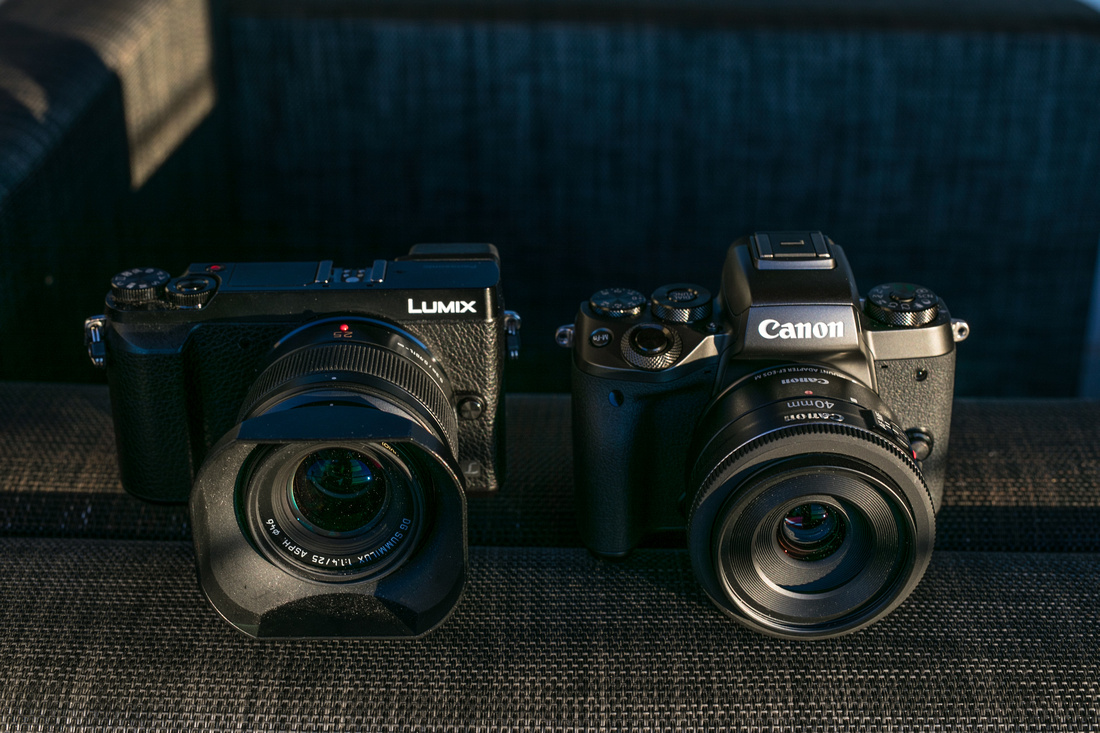
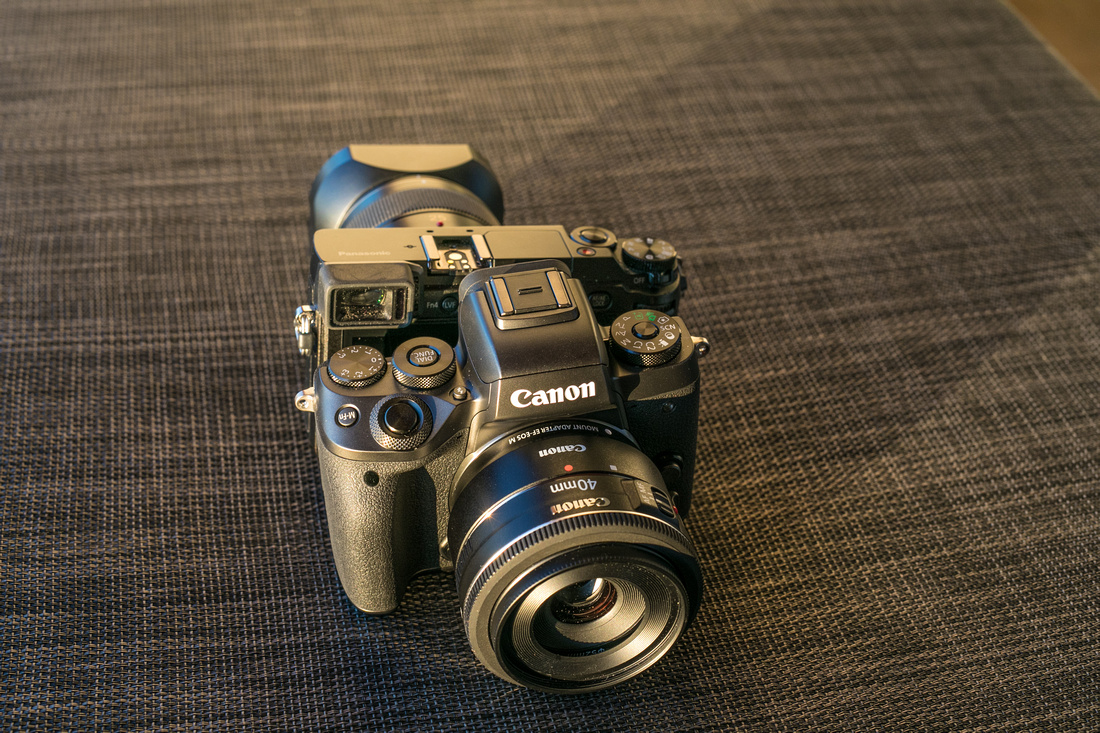
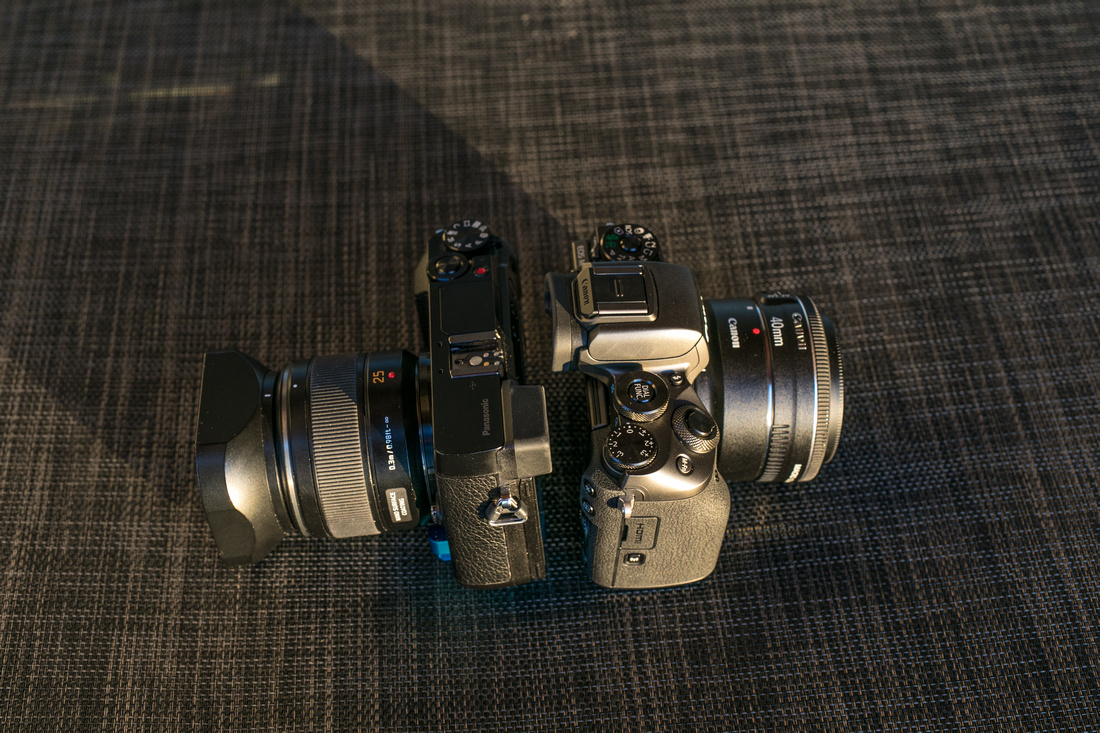
The images above are showing quite a nice comparison of the size of the EOSM5 in comparison to the
Ergonomics & Handling
As mentioned in my Photokina-blog: this camera has state of the art ergonomics: the dials and buttons are pretty useful.
The look and feel is really Canon like. No much surprises from the pint of view. But there are some downsides. Coming from the single digit EOS-Cameras the amount of menus is reduced and therefore there are less options available. But from the handling point of view: the 4 dials on the top are working great:
- The mode dial is self explaining. It is blocked with a release button.
- The front dial is context sensitiv: It is aperture on aperture priority and time if shutter speed priority is chosen.
- The "DIAL FUNC." button typically is set to ISO adjustment.
- And the exposure value dial is self explaining as well.
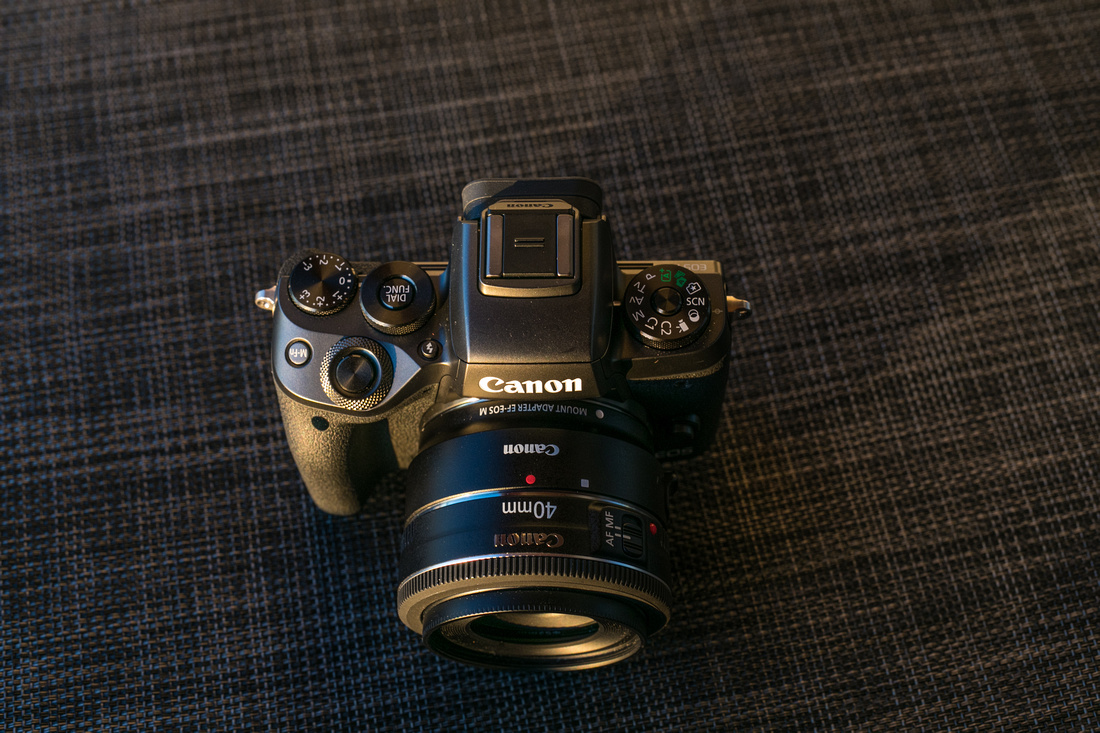
From the rear since there are a couple more buttons there.

The info button is important to change the viewfinder. The viewfinders are not synchronized: If you see the grid in the EVF this does not mean that you will see it on the screen and vice versa. To change this you have to push the Info Button. Interesting is the control dial in the back. The Q button in the center works as well. but the other ones are context sensitive. The other functionalities are mostly switched of, but the ISO button works always - and the wheel is used for changes...
Another interesting button is the AF Frame selector button: Using the EVF and manual focus lenses this button opens the front dial to zoom into the picture for sharpening. This area can be moved with the touch screen. If this is switched off that the control dial can be used to move this window. But again: pretty much known from other EOS cameras...
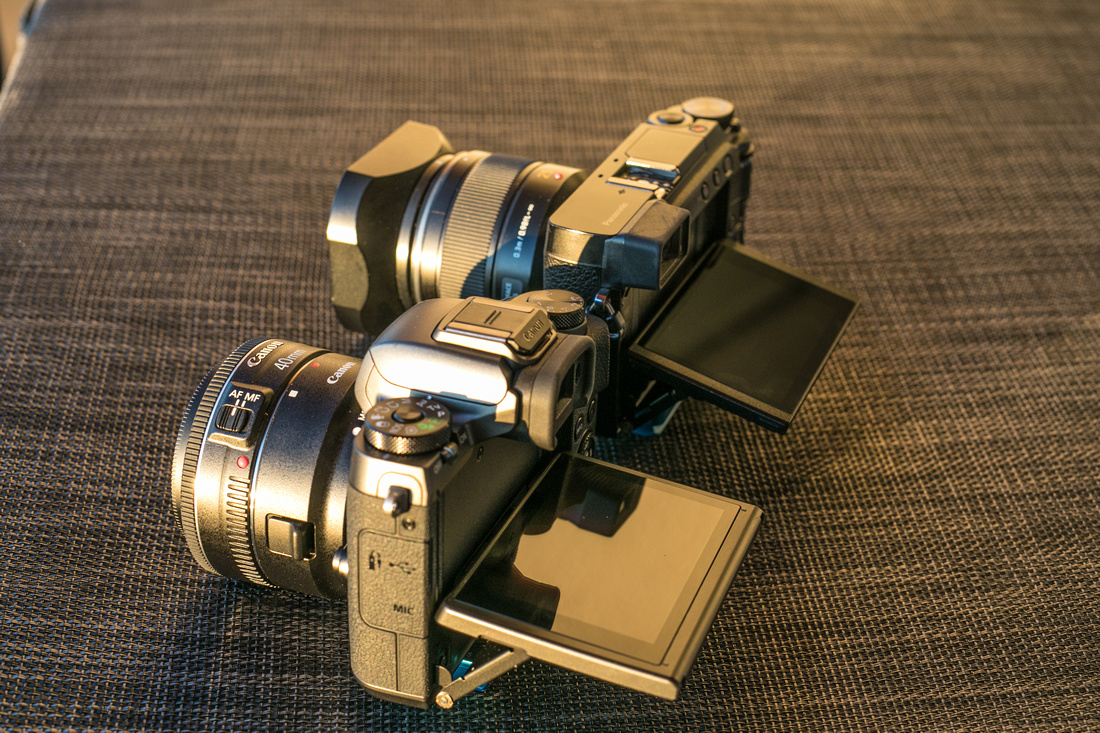
The tilt screen helps a lot shooting in landscape orientation...
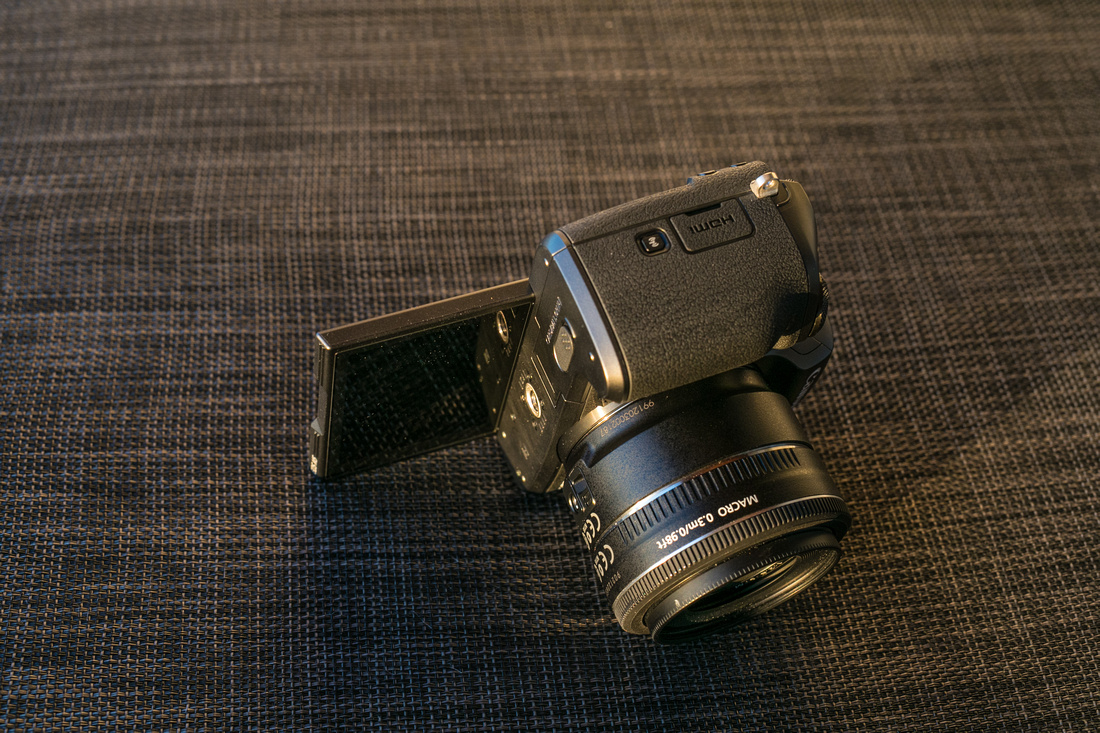
In Selfie mode.... This is a nice feature, too. but it does not work with a tripod...
Focusing with the M5 is really new and nice experience. Canon has done a very good job. Especially for those who like to manual focus. Which is sometimes needed - especially in macro photography or in product shootings. The way the camera integrates the touch AF is just great. to touch the sensor and moving the field where you are looking closer -up to 10x, as usual in Canon live view- is very easy. You can separate the area, where to use to certain areas on the touch screen. For me I have to adapt a bit to this camera: normally I look with the left eye through the viewfinder. With EOS M5 it makes much more sense to use the right eye - and move the area of interest on the touch screen....
The speed of the autofocus left some mixed feelings. I tetsted it against the Lumix GX 80. The M5 was half as fast. My comparison was based on a setup where I focused close by ca 50cm and infinity. It took 17 sec with the Lumix to take 20 exposures. With the M5 I had 10 shooters in the same time.... But: the lens on the Lumix was a Leica 25mm f1.4 - native for this camera. The Sigma I used for the rest of the shots was definitely much slower....
I will repeat the test as soon as I have native glass available....
The Comparison
Basically I compared my range of non full-frame cameras: The The 7D MkII as reference for APS-C, the EOS-M and the GX 80.
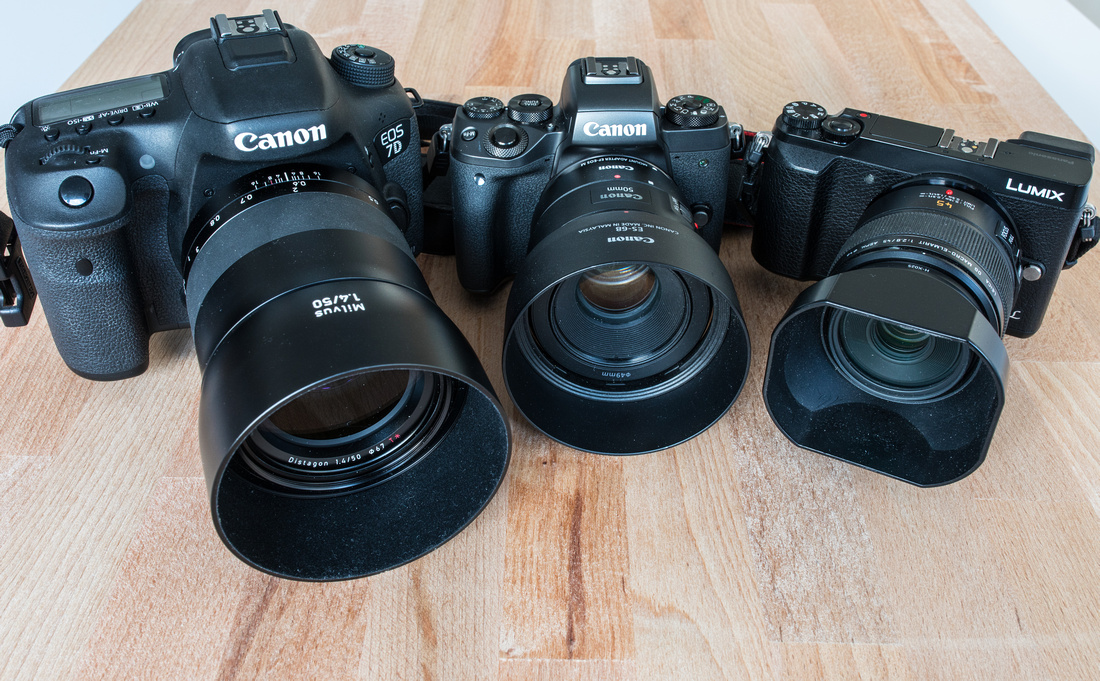
Left: 7DMkII with the Milvus 50mm f1.4, EOS M with the Nifty-Fifty and the Lumix with the 45mm f2.8
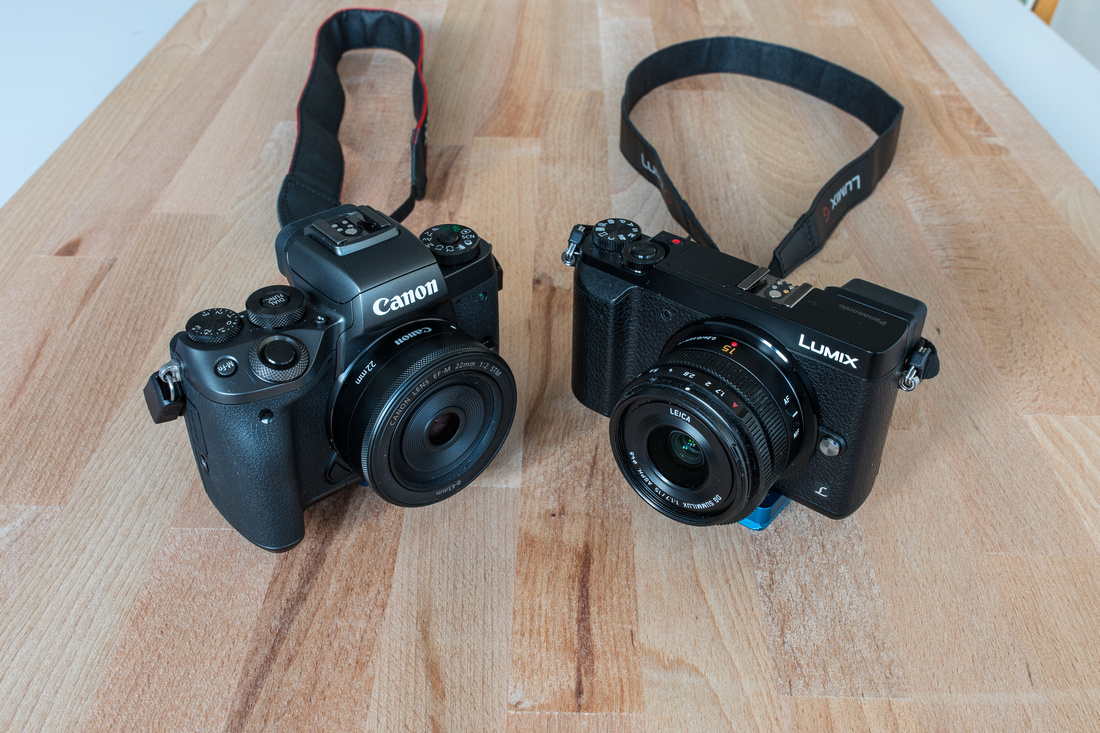
This is the EOS M with the EF-M 22mm f/2 STM and the GX80 with the Leica 15mm f1.7... In terms of "bokehliciousness" spoken: f/3.2 vs f3.4... I would say: flat out....
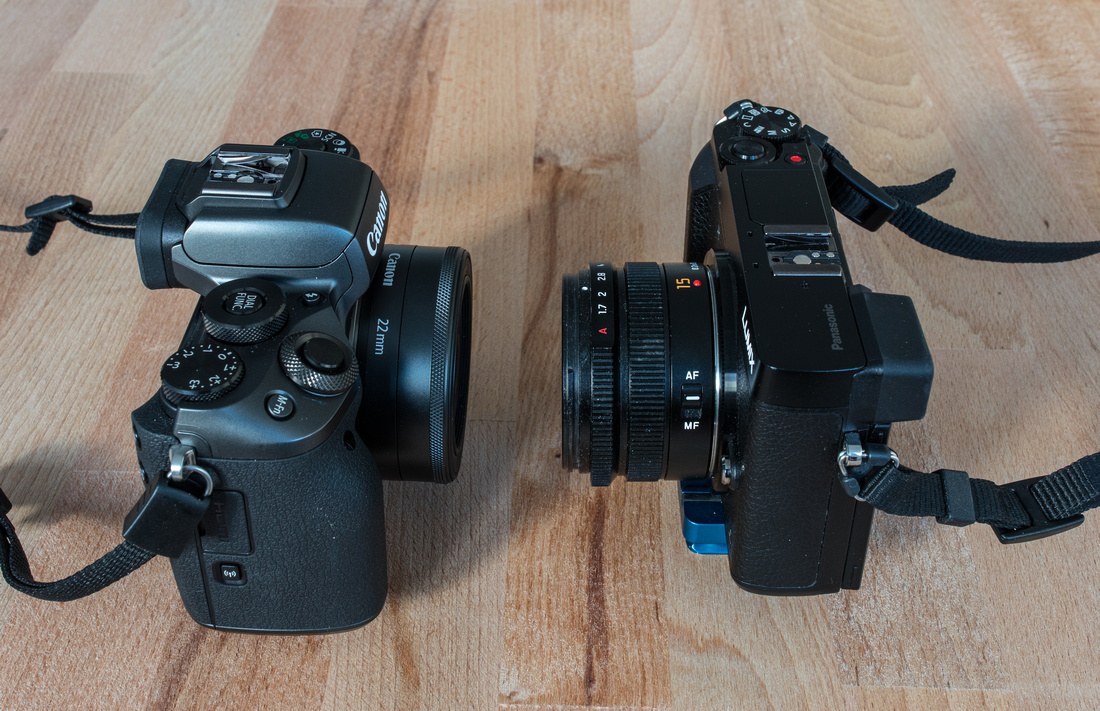
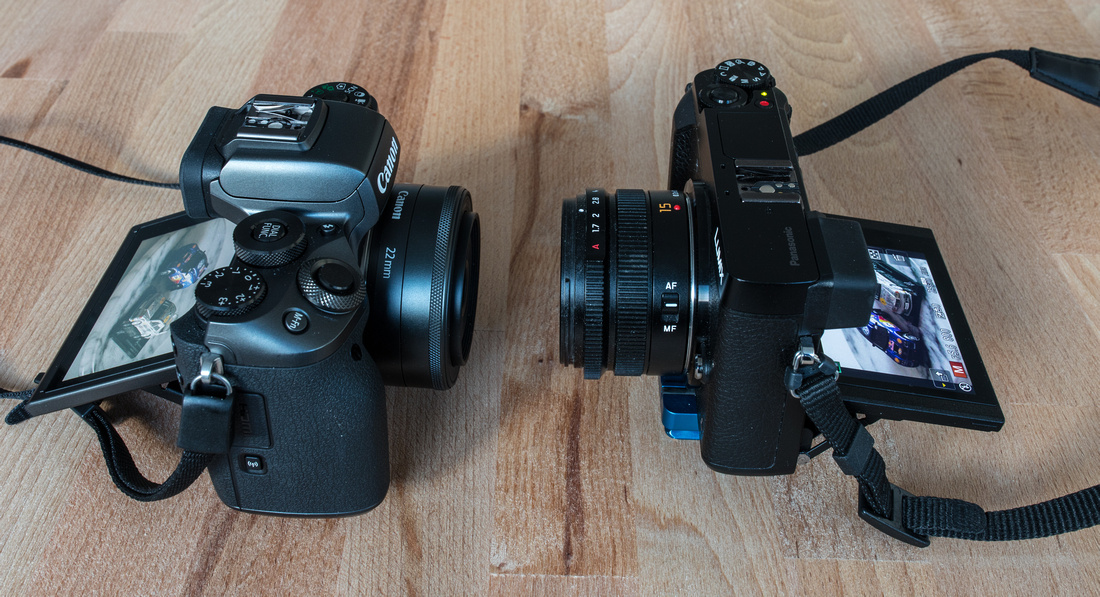
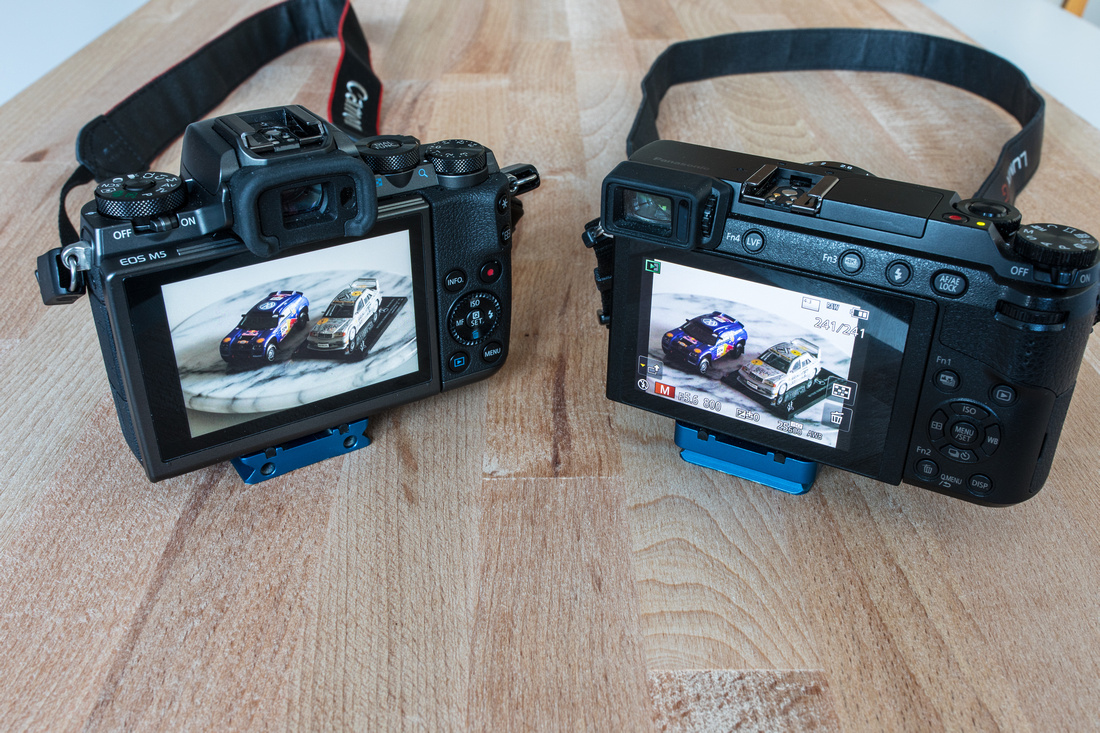
Very easy to see: the EOS M has a much larger screen than the Lumix....
Image Quality
This is the main topic. There is no doubt for me: size matters. Larger pixel are counting more photons offering better low light performance. And more pixel are offering less visible noise. There are still people out having doubts but for me this is quite clear...
For this comparison I dod not made any "normal" images. I clearly wanted to see extrema. So in most of the cases the images are "stressed".
During my last trip to the USA I was a bit disappointed from my 7D2. When pushing the shadows of my 5D4 I got so much more detail that the 7D2 got a bit boring....
Now I wanted to see: what does the EOS M5 delivers....
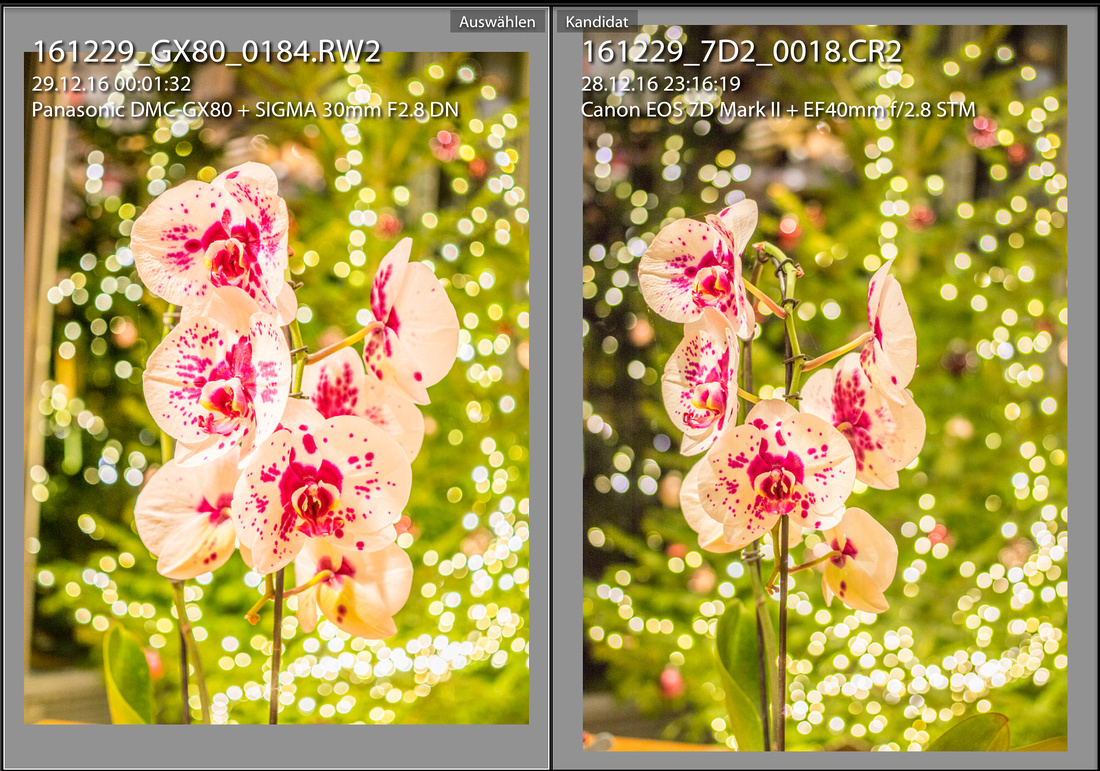
First a comparison between the EOS 7D MkII and the GX80. 16MP vs 20MP. And a different aspect ratio. Tricky to compare. But I hope you agree: APS-C and µ43 are pretty close....
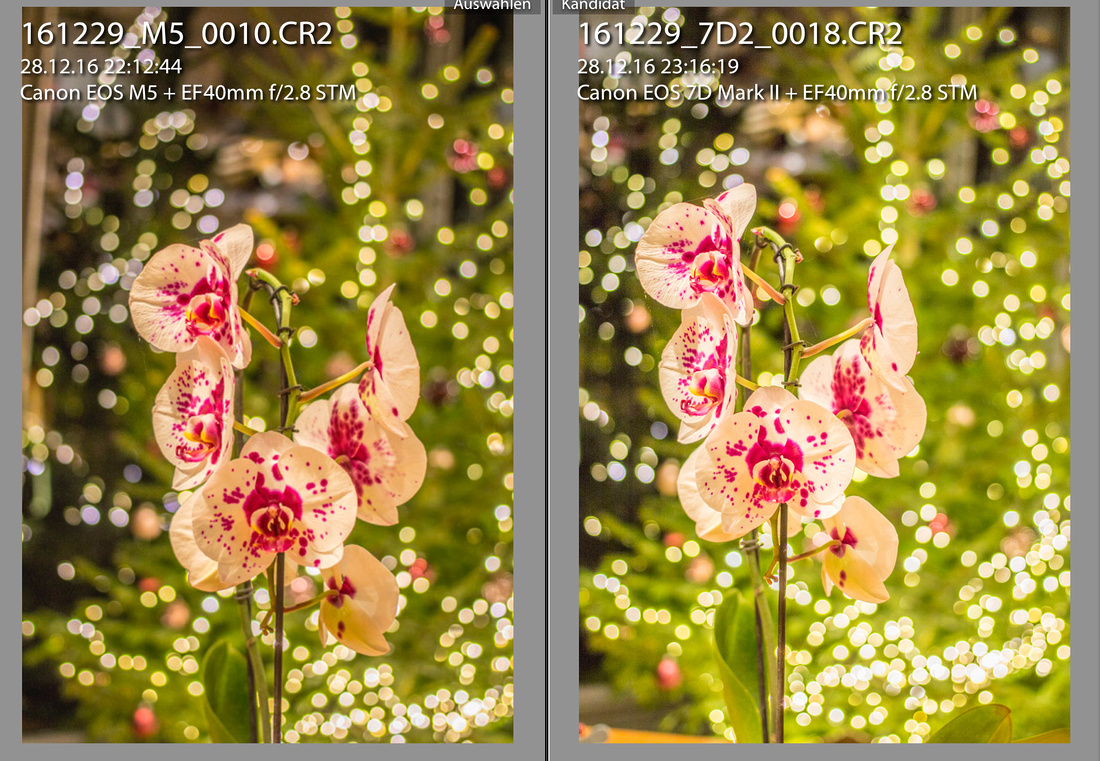
The comparison between the M5 and the 7D shows a different picture: the M5 delivers more between the darks and the highlights....
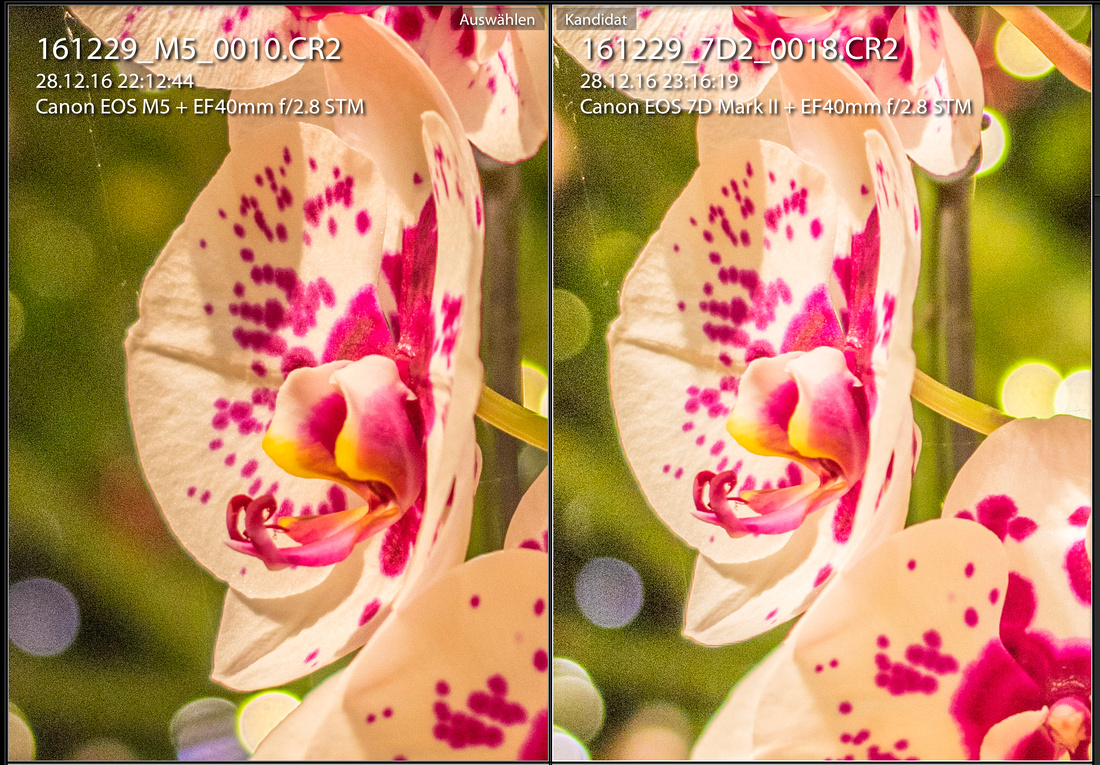
This becomes more clear looking at the 1.1 images... beside less noise at the M5. But this might be caused by the larger pixel count....
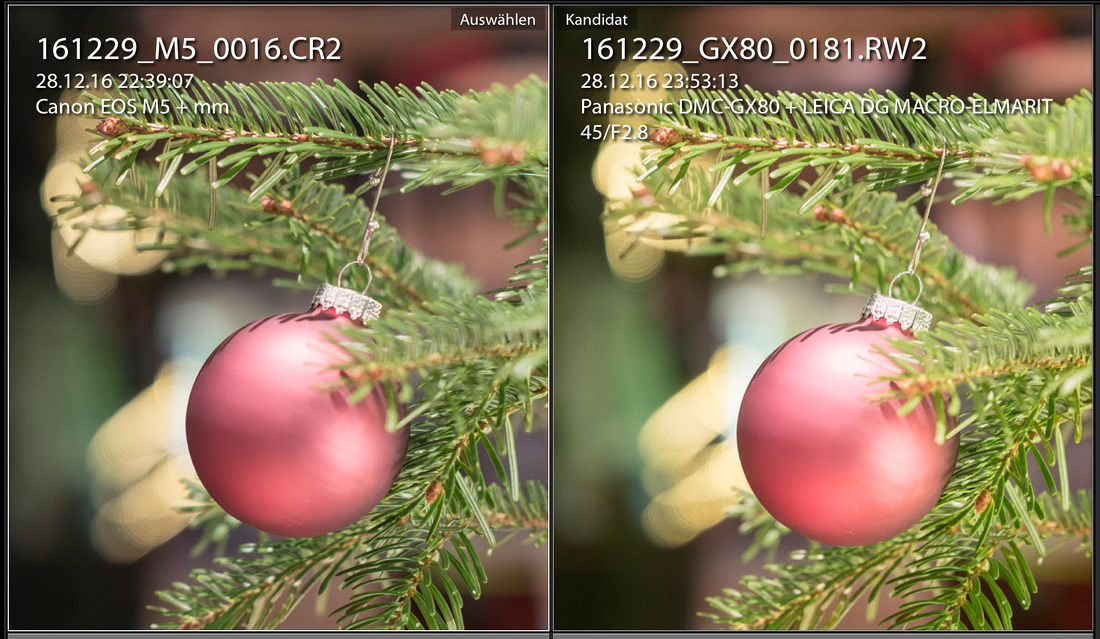
If we compare the M5 with the GX80 it gets even clearer: less overexposed highlights amor more details in the dark parts....
Even more visible at the night shots:
 This looks much more muddy in the dark.... sorry GX80....
This looks much more muddy in the dark.... sorry GX80....

And at least the comparison between all 3: The image is pushed +5 EV, the highlights are trimmed by -100% but the shadows pushed +100%.....
But the message get´s clear: The new canon sensors are delivering really nice results....
ISO Performance
Now comes a bit of boring stuff... Pixel peeping. The photos shall not show "nice" but should inform... therefore I stressed the images a bit. And found this pretty interesting. The processing was a bit weird...: I had to crop the EOS images from 3:2 to 4:3, therefore the pixel count of the 7D MkII was reduced from 20 MP to < 18 MP... pretty close to the 16MP Pixel count of the GX80; the M5 was reduced to ca 21 MP... Additionally I changed the white balance to Tungsten to balance the colors. Than I stored the RAW files as .DNG without any further processing.
The first 2 images show the amount of details in the shadows. Therefore the I pushed the shadows to the max and the EV + 2....
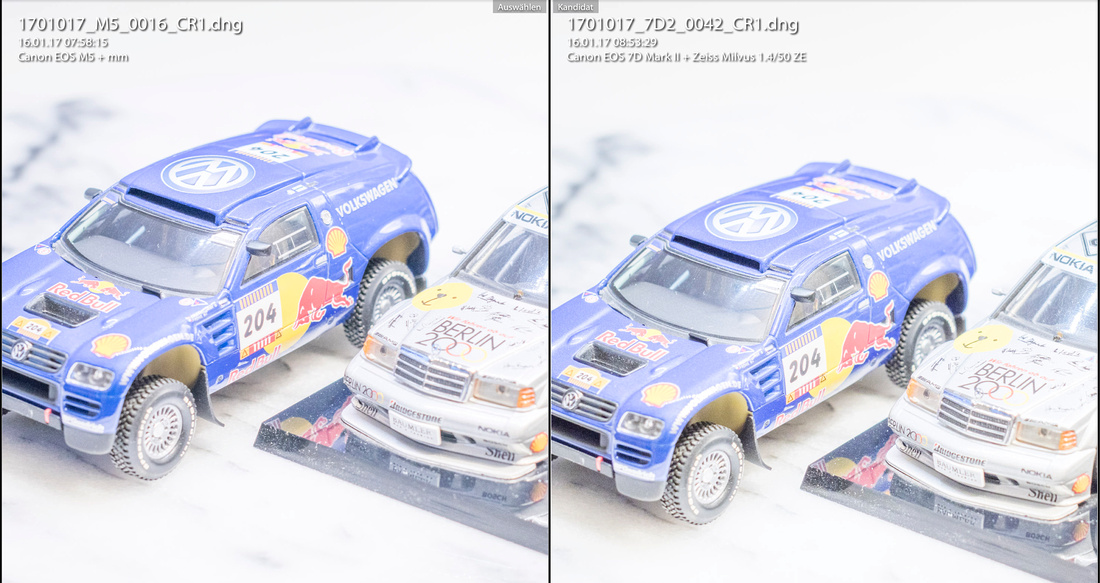
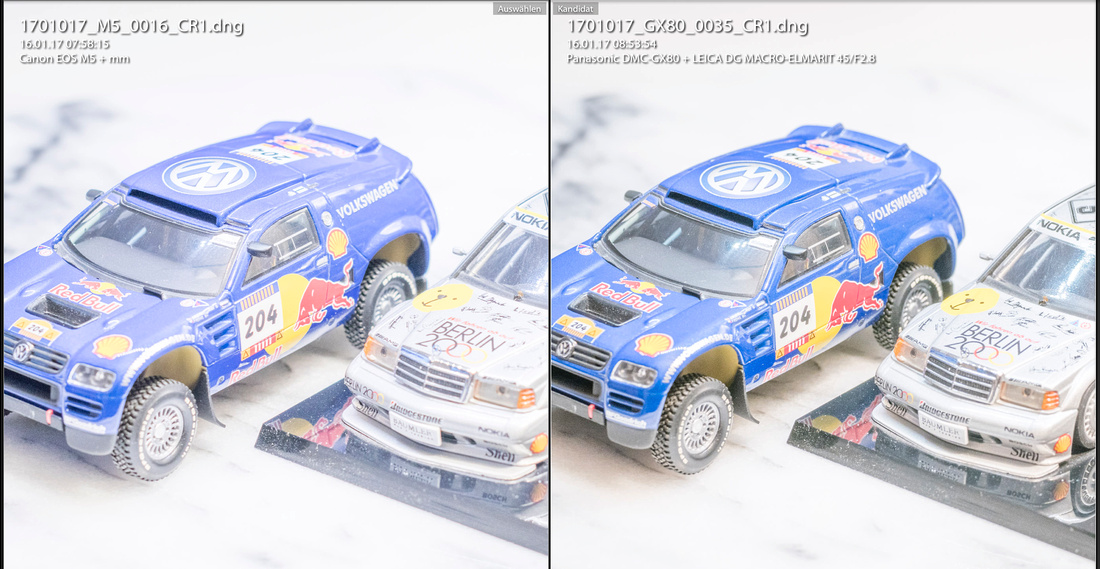
For me the results are pretty interesting. You can clearly see the amount of detail you see in the M5 in comparison to the 7D. But what has astonished me: the GX80 shows even richer colors.....
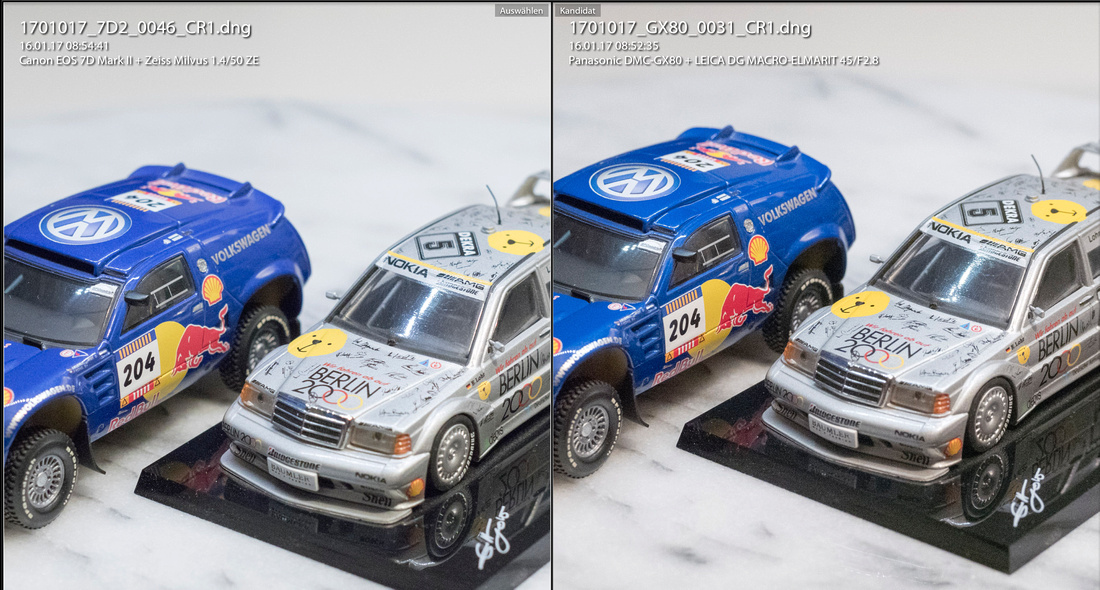
7D vs GX80 @ ISO 3200

M5 vs GX80 @ ISO 3200
At this ISO levels for me the GX80 and the 7D MkII are more or less flat out. The M5 has a bit of an advantage...
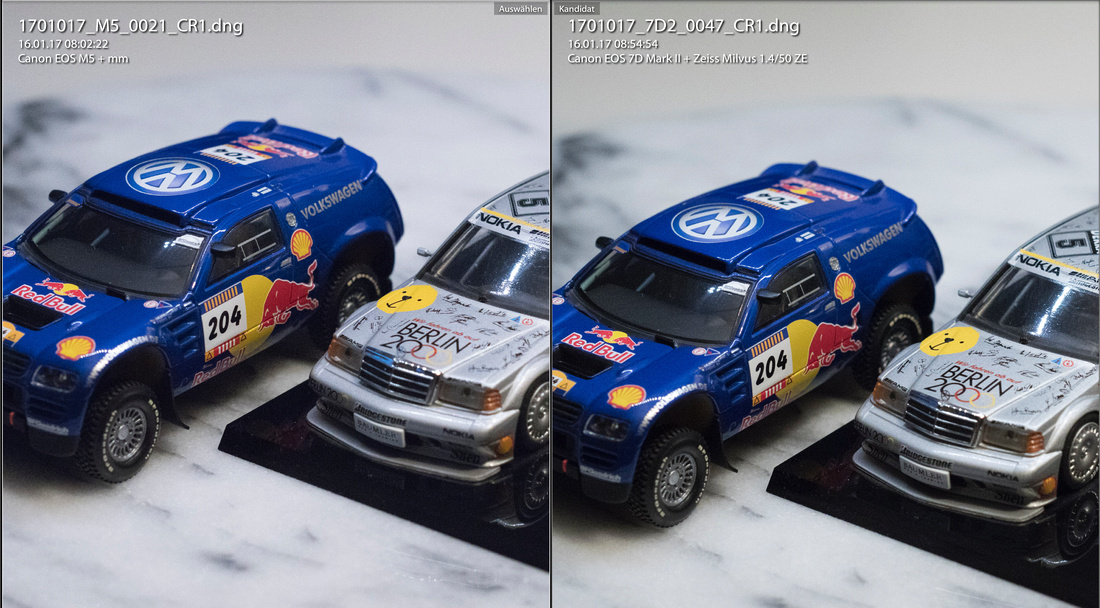
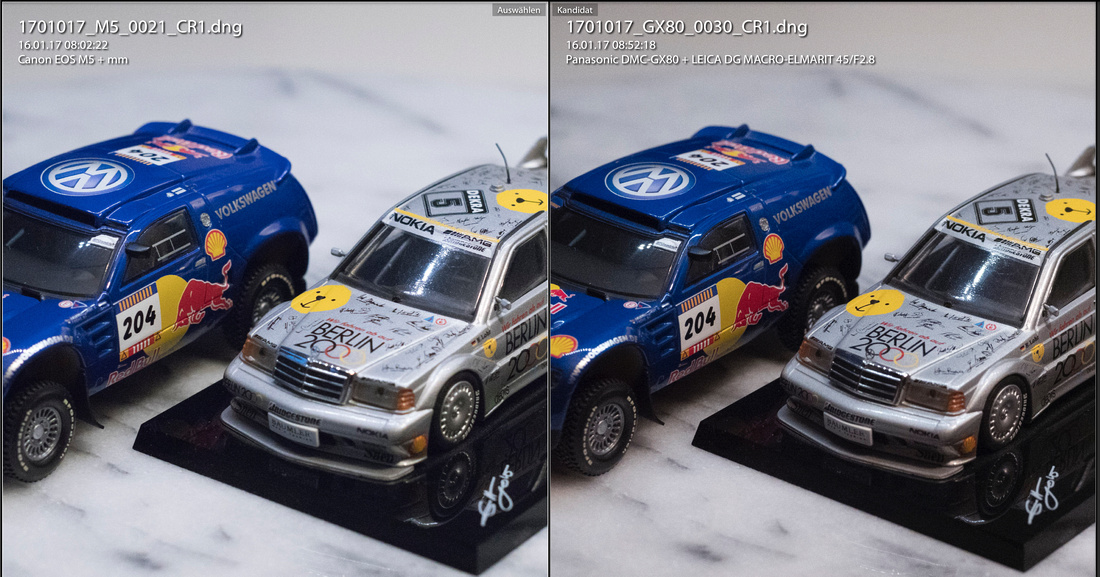
The 2 images above are showing ISO 6.400; the result is similar, Id give the M5 an edge above the other two. But the tiny GX80 shows quite a decent performance for its pixel pitch.
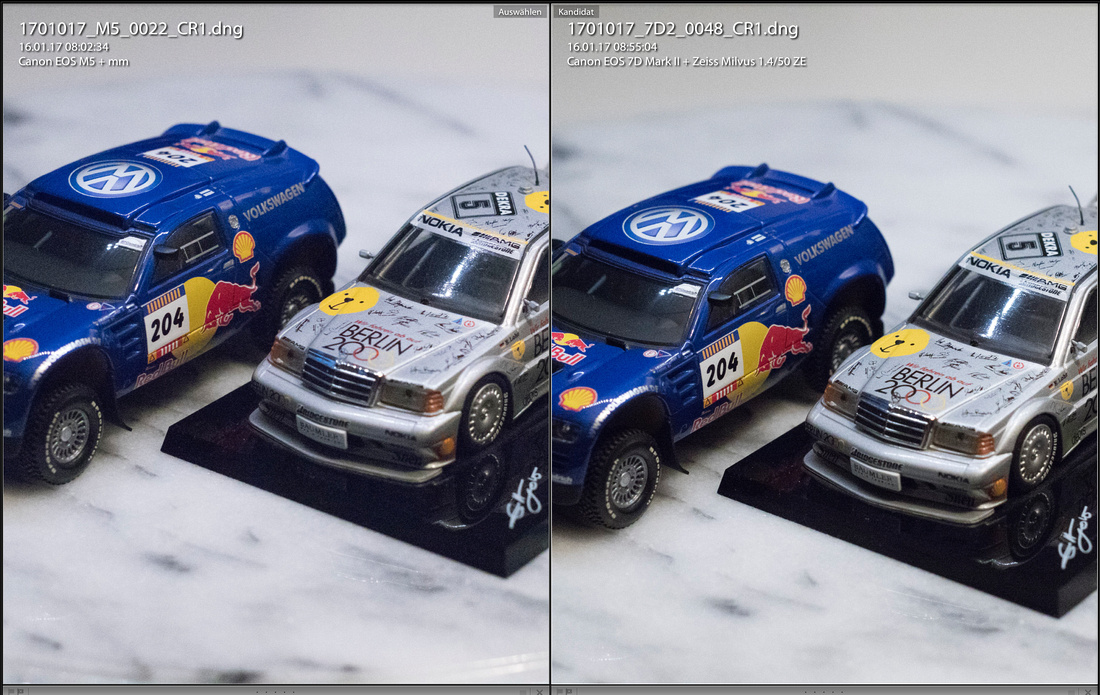
ISO 12800....
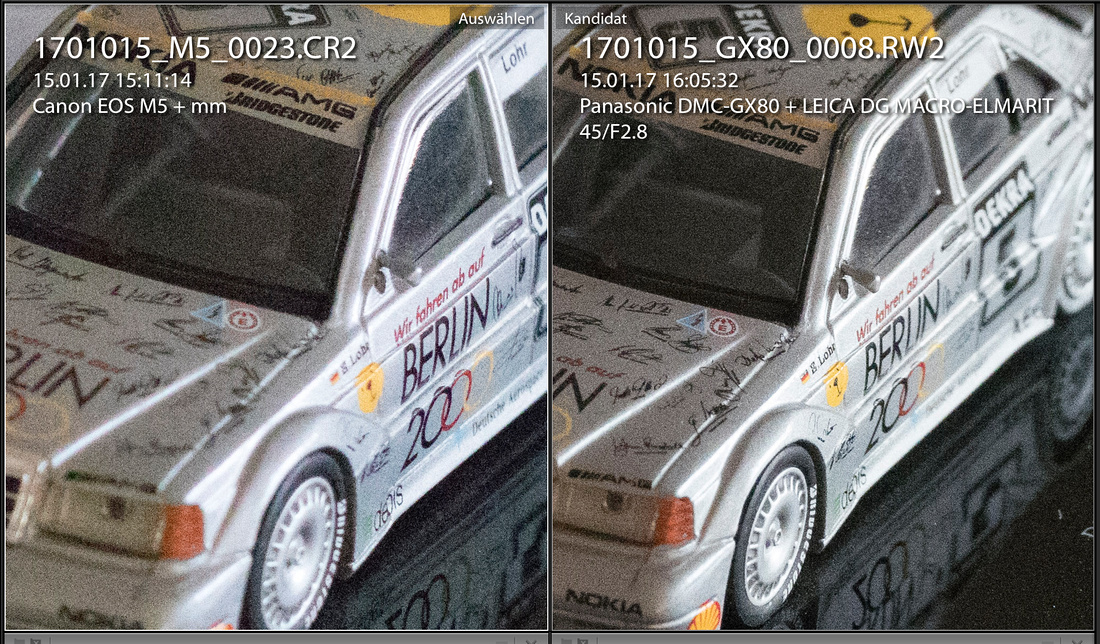
The ISO 12.800 shows a bit of the problematic in this comparison: the scale is different. On the pixel level: the Leica lens shows no color findings, while the Zeiss shows a bit... and the nose level is quite similar...
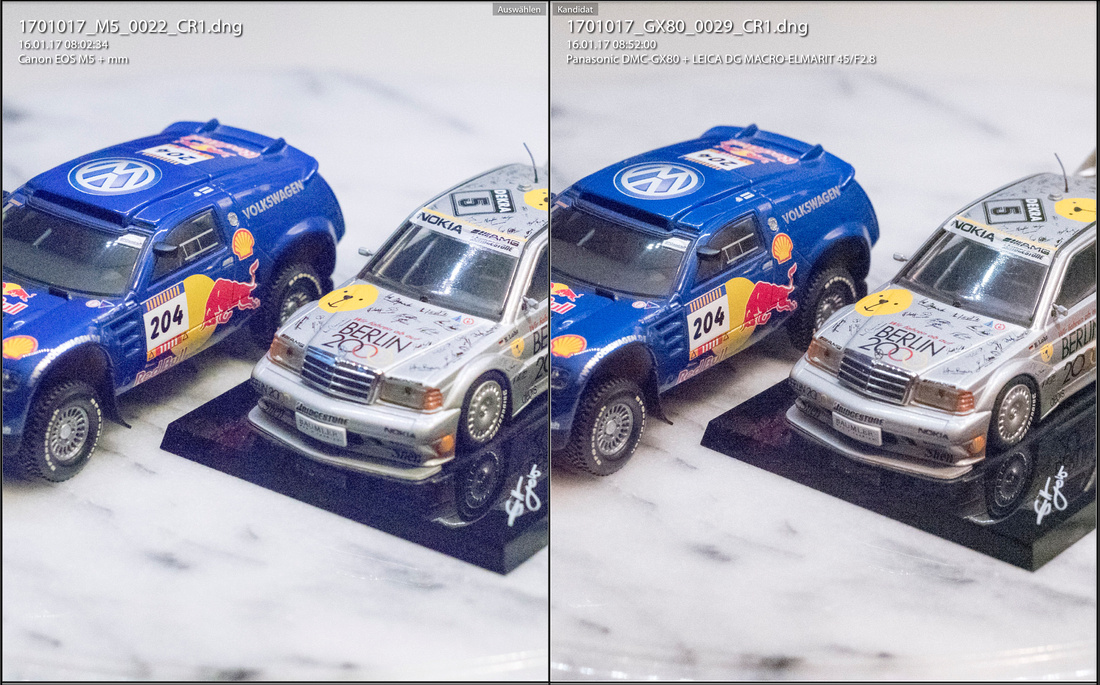
At the full size image the M5 on the left looks a bit clearer for me. but again: the GX80 is pretty good....

These are the files @ 12800 with less processing....

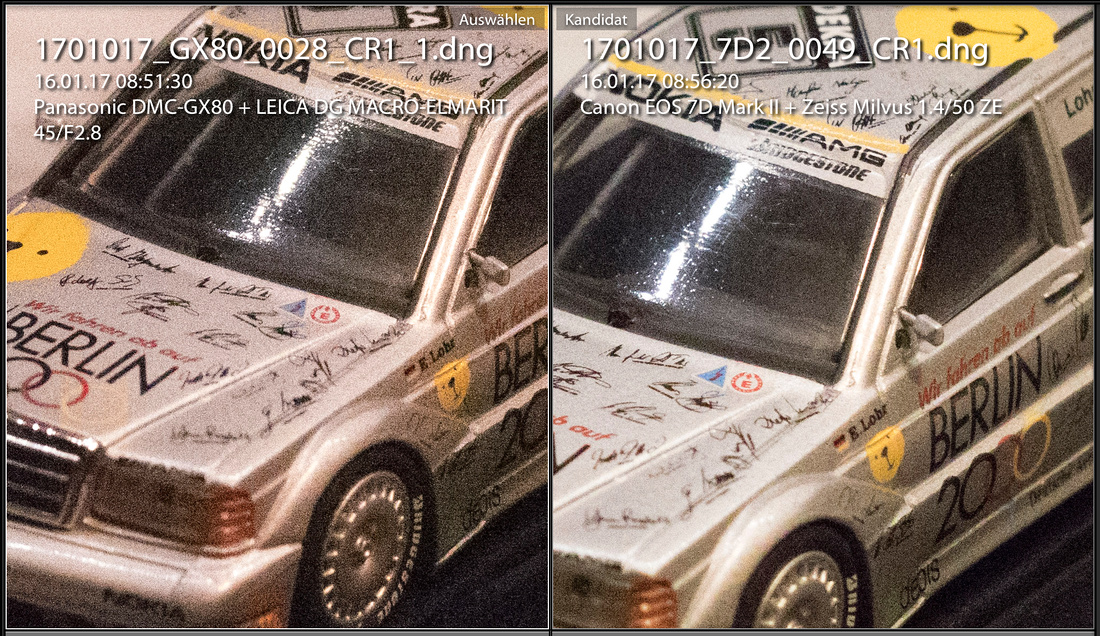
The last 2 images show the performance @ Max ISO. The 7D MkII is limited to ISO 1600 while the other 2 are offering ISO 12800. It shows the limits of all cameras. But here I would say that -astonishingly the GX80 is doing better than expected...
Video
I am not a video guy at all. The camera just shoots Full HD, no 4k. There are no video profiles like c-log. Is it useless therefore? Definitely not. I did a couple of videos, my daughter likes to shoot with it, too. A view remarks to video shooting:
- Dual Pixel AF works excellent. Ones again: not the fastest AF is the best but the most confident at reasonable speed.
- The electronic IBIS also works excellent.
- Vlogging also is excellent - maybe that I am going to use it in future
Here is one excample which I shot handheld with the Milvus 50mm f 1.4 and manual aperture... I would say not that bad. For me killer was the electronic IBIS.
This little film is straight out of camera. I used the internal microphone. You can here quite a bit of background noise. The film is totally unedited.
Lens selection.
What is a bit annoying to me is the lack of native prime lenses - as well as the lack of fast standard zooms. Today I carry the following lenses with me:
- EF-M 22mm f2.0 STM (which is an amazing peace of glass)
- EF-M 28mm f3.5 macro (very nice with the build in LED´s)
- Rokinon 12mm f 2.0 (fully manual, but a great lens... really)
- The adapter.... for the nice Standard EF-glass
- EF 50mm f1.8 STM - the Nifty-Fifty
- EF 100mm f2.8 L IS USM
- Canon Speedlite 430 EXIII RT
- Canon RT-Transmitter..
With this selection I cover most of the practical cases needed. On my first trip to San Francisco I had my Milvus 50mm f1.4 with me. A great combination. But I was missing the longer end... and the 100mm has quite the same size like the Milvus....
Curiosita
One topic is quite amazing: You can use the camera with autofocus in combination with end Extander 2x and f.i. the EF100-400mm f/4-5.6 L USM. No other Canon Camera does this... Pretty amazing. The lens has f11 on the long end as max aperture and autofocus works just fine!!! 1280mm effective focal length.... For wildlife a really interesting option....
But Some topics are pretty strange on this camera:
- The camera does not transfer exif data of 3rd party lenses (f.i. my Zeiss Milvus 50mm f1.4 does not show up with proper data)
- Arca-Swiss seems to be unknown @ Canon: with such an tripod adapter mounted an exchange of battery as well as an SD card is impossible
- Time Lapse does not work with internal recording
- HDR mode is there but it is impossible to store the raw-files.
- Using a Yongnuo flash transmitter (622TX) results in a pretty strange behavior of the M5: if you try to open the external flash menu the screen gets dark - and the camera makes some strange noise.
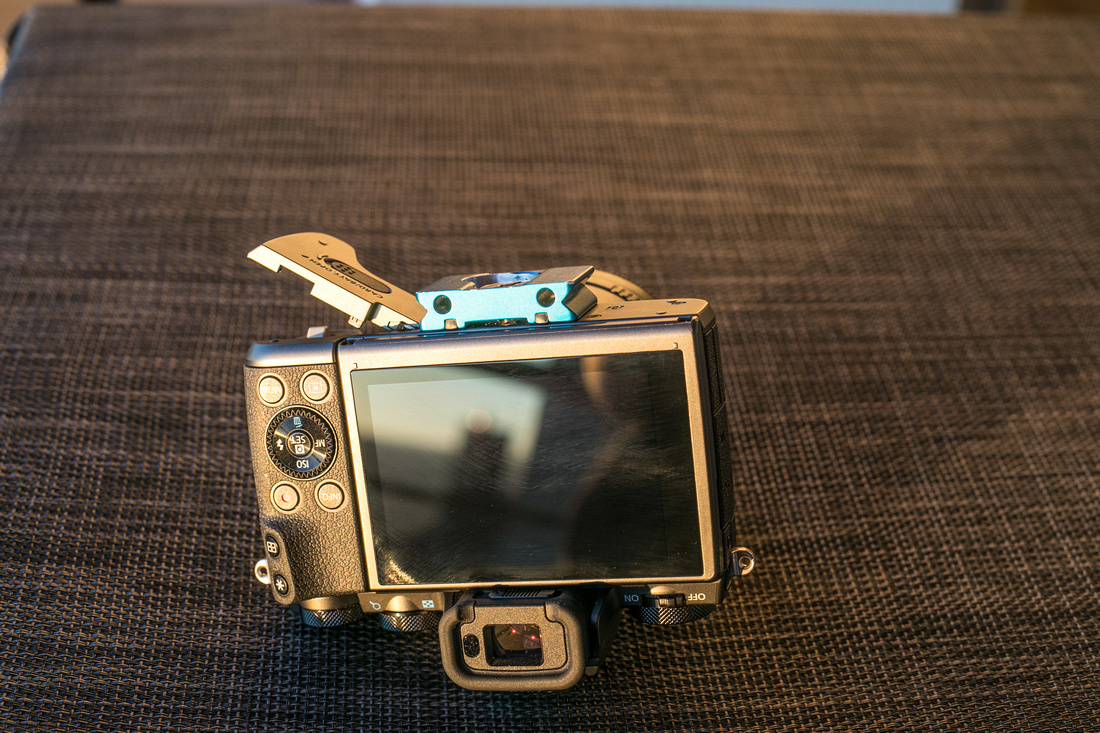 Well: this is a AK-Swiss Adapter from Novoflex.... No battery and no SD-Card Access...
Well: this is a AK-Swiss Adapter from Novoflex.... No battery and no SD-Card Access...
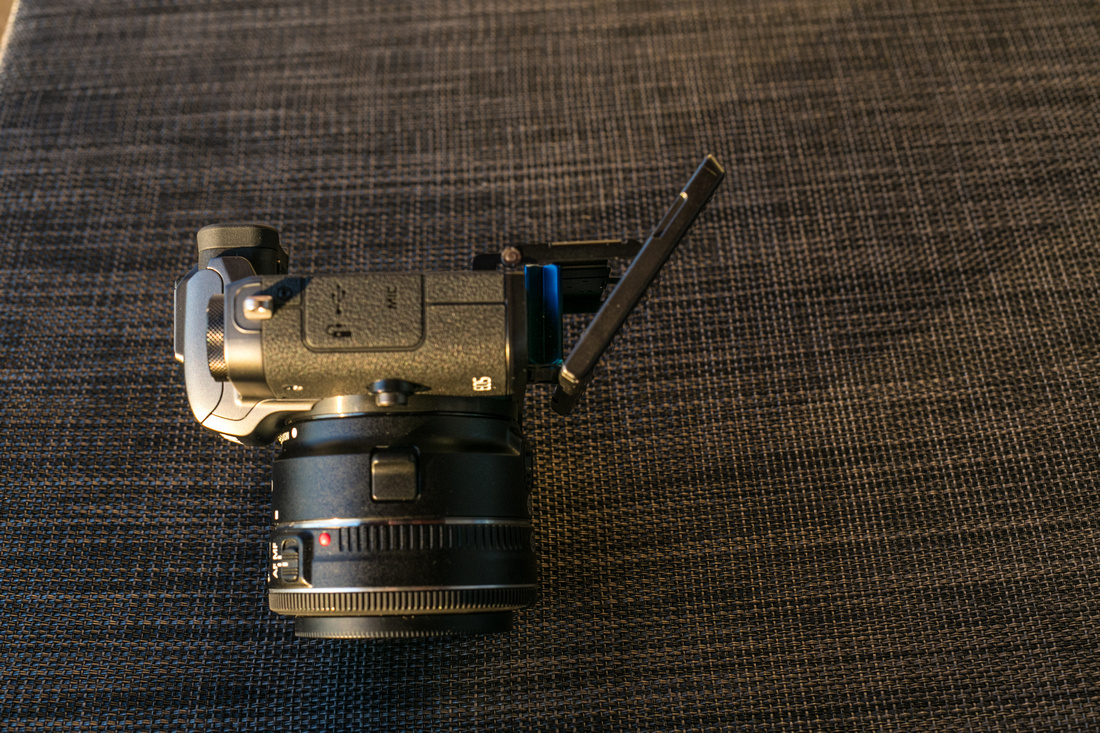 But no Selfie mode either: Canon: please deliver full articulated screens!!!
But no Selfie mode either: Canon: please deliver full articulated screens!!!
But coming from the Lumix GM Cameras: there is a work around....
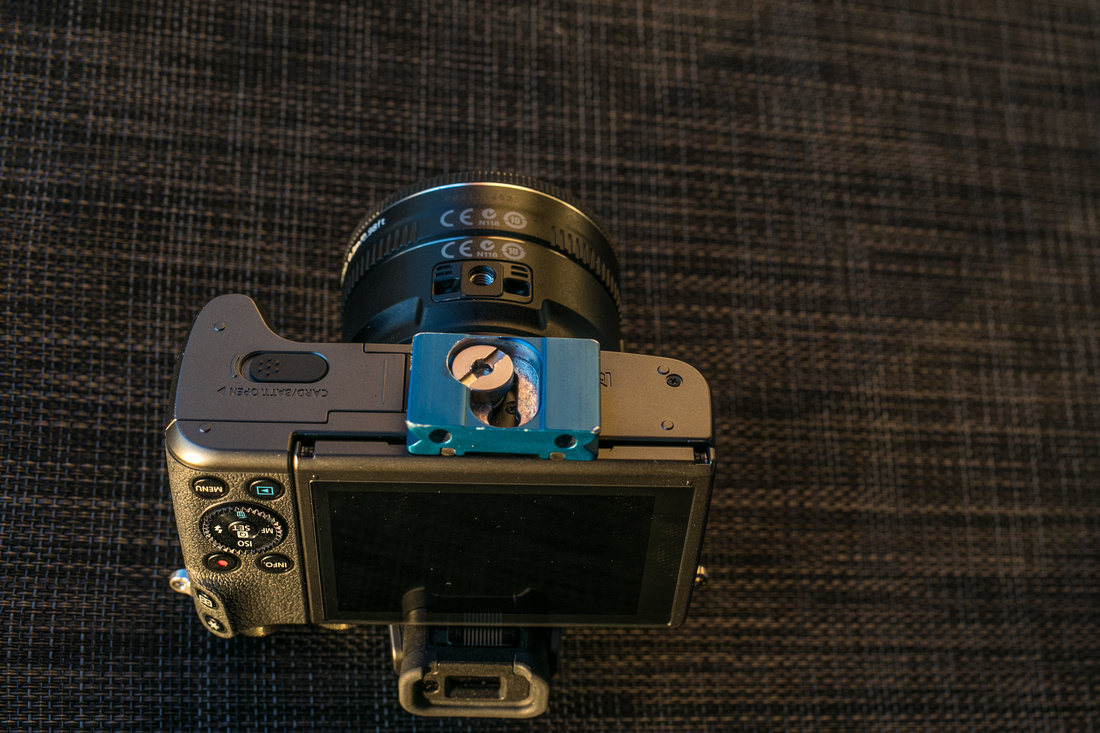 Maybe I will have to rework this again (or another copy) to make it working....
Maybe I will have to rework this again (or another copy) to make it working....
Update: It was pretty easy to make it working.... And now both works: the openings as well as movement of the tilting screen...
Connectivity
One great topic of the EOS M5 is the connectivity. It connects easily with the Camera Connect app. And what makes it so great is the ease of use. In comparison to Panasonics image app one big advantage is that you can shoot RAW - and download jpg´s to your iPhone or iPad. it just works.... And in addition: you can shoot thethered wireless. These feature also works. No need for a cable connect....
I have so much fun shooting with really good glass and than just post it on instragram... Look at #eosm5 under my integral account "delight photos": https://www.instagram.com/delightphotos/
Verdict
First of all: congratulation to Canon for a very useful camera.
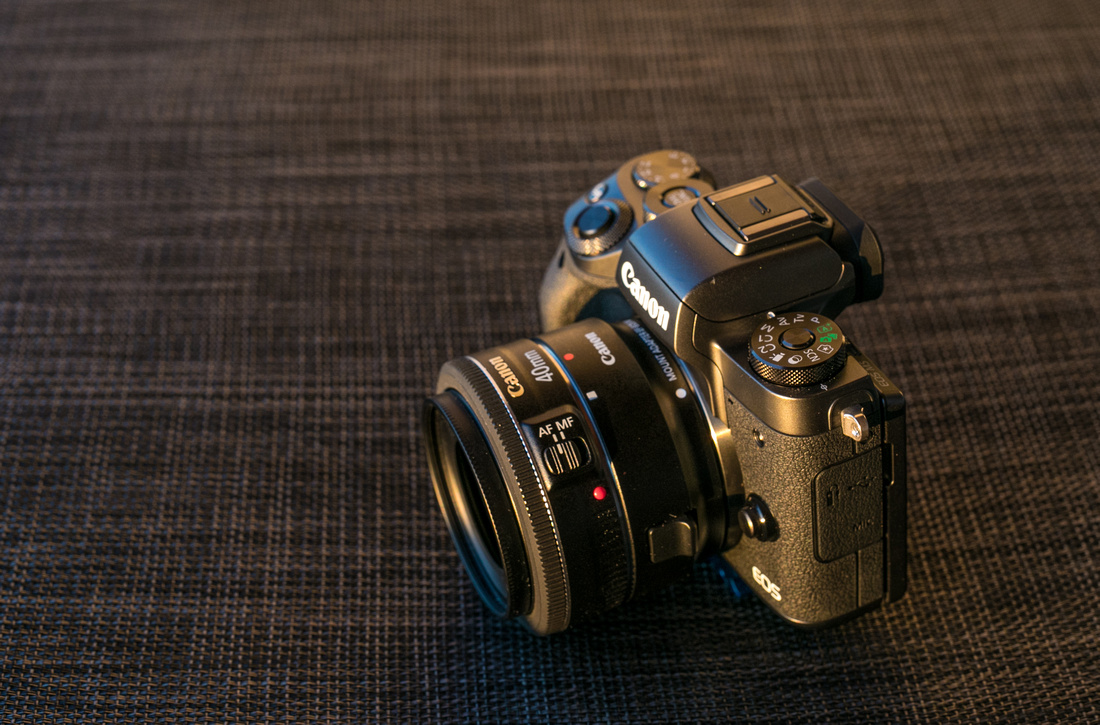
It is a good camera with great image quality. I hope to get my new EOS-M native lenses soon. I will report on their image quality in a separate blog post.
In terms of value for money: that´s a different story: due to my taste: there is no big improvement against an Lumix G80/81/85... But in terms of specs: a lot is missing:
- no IBIS
- no 4k Video
- no fully articulated screen
- no weather sealing
- no tethered shooting
- no connectivity to Mac or PC to the EOS Utility
- relatively slow autofocus
- smaller viewfinder
For me a fair price point: 800 -850€.
I hope Canon will be able to add more EOS M Cameras, especially for beginners. As soon as this shows up: i will consider to change my camera recommendation for beginners which is Panasonic Lumix so fare.
Update on my EOS-M native lenses
I ordered 3 native prime lenses for the system:
- Samyang 12mm f2.0
- EF-M 22mm f2.0 STM
- EF-M 28mm f3.5 STM Macro
It is a pleasure to have all these lenses.
The Samyang 12mm f 2.0 is just great. it works perfect, great built quality and a really superb image quality. The only downside is that Samyang does not have a chip built in for transferring EXIF-Data and focus confirmation.
The 22mm f2.0: I love this lens. It is a great performer. I do not miss anything with this lens. It is just great. I think I will write a review on it soon. 2 thumbs up!
The 28mm f3.5 is giving me mixed feelings: optical a great performer, but pretty slow. The idea of build in light works just great. You can make images you can make with no other lens. But built quality: the mount is made of plastic. for 380€. Ridicolous. A new 35mm f2.8 is announced: I hope Canon has made a better choice of materials....
What´s next?
I will keep my eyes open for new native lenses. I do hope that other 3rd party manufacturers release their APS-C lenses for EOS-M-Mount. Like Sigma or Zeiss... I guess the one or the other lens would find its way into my camera bag...
Miscelleanous
All products shot were made with the EOS 5D MkIV. The shots with the evening light wer made with the Milvus 50mm f1.4. The shots indoor on wood were made with the EF 100mm f/2.8 L IS USM.
You can find the product shots under https://goo.gl/5AQcPh
And the screenshots under: https://goo.gl/mxTHcZ
]]>Photokina is the worlds largest trade show on imaging. As you may expect: I had to visit it. The main purpose of my visit was, to get more information about gear I have and I want to get. And of course to find new things which are interesting...
Some facts: The Photokina has more than 1.000 Exhibitors spread out over > 200.000 sqm. With More than 180.000 Visitors it is a pretty large event.
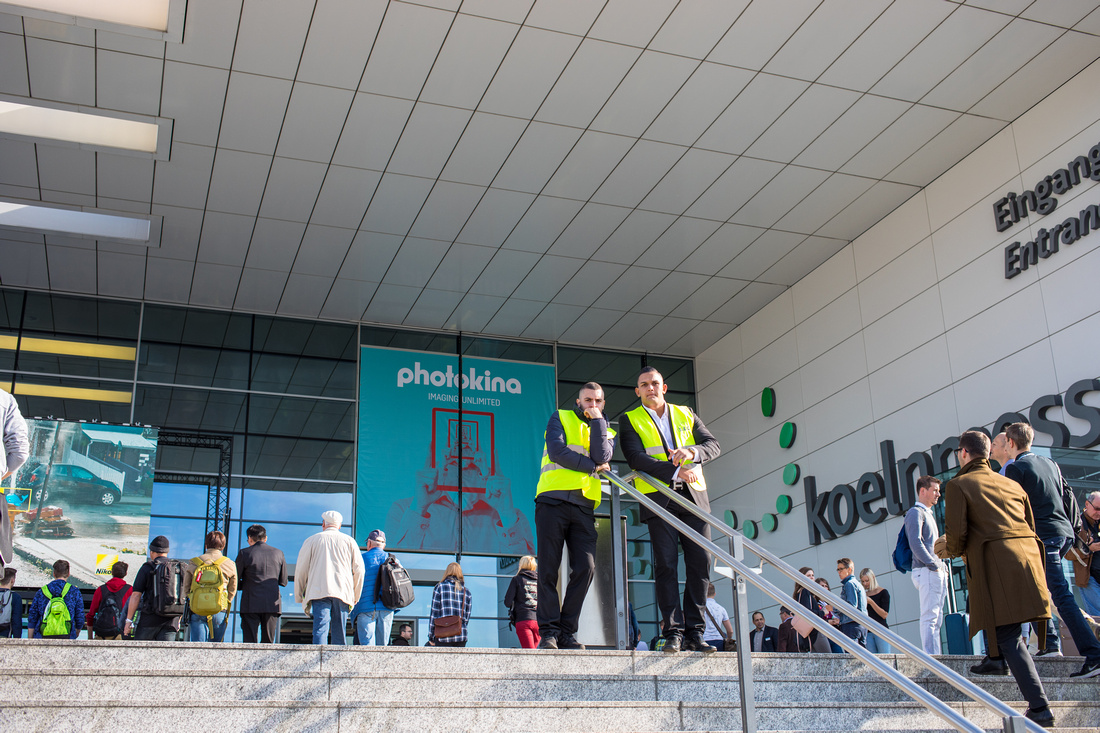
I visited Photokina 2016 on September 22nd for a simple reasons: 2 of the main Youtube reviewers organized a Photokina 2016 Meetup @6pm in front of the cathedral. Maybe an interesting event to participate.
What I was looking for
- Cameras (But mainly on my personal strategic platforms
- Canon
- µ43 (Panasonic/Olympus)
- Hasselblad
- Lenses
- The manufactureres of my strategic platforms
- Zeiss
- Sigma
- Tamron
- Others
- Lighting (Bowens and fotodiox)
- Printing (whitewall and Saal-Digital)
Cameras
Canon
Off Course: Canon is the #1 brand. When you entered Photokina you could not oversea this! I was not looking for the "normal" cameras even not the 5DMkIV - I had it with me.
EOS M5
They announced their new mirrorless camera, the EOS M5. The interest in this camera was huge, also during the day... I got it in my hands and i must say "Chapeau!" This is a mirrorless camera really competing with the best in class mirrorless APS-C as well as µ43 cameras. It is fast, reactive and pretty small. Therefore an interesting addition to a full frame adding the format which allows you to reduce the numbers of lenses if you are a prime lens shooter like I am....
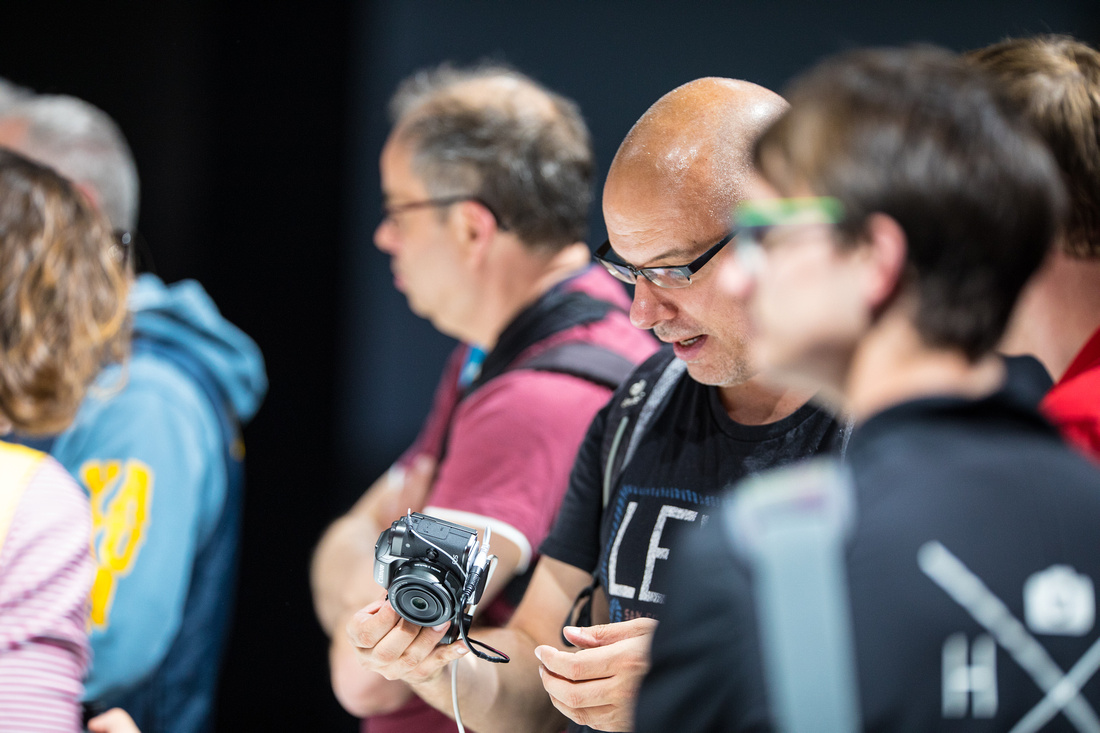
There is a lack of lenses right now. But there is one very interesting one out: The EF-M 28mm f3.5 macro with build in ring light... This little lens with 45mm full frame equivalent focal length is a very very interesting choice.
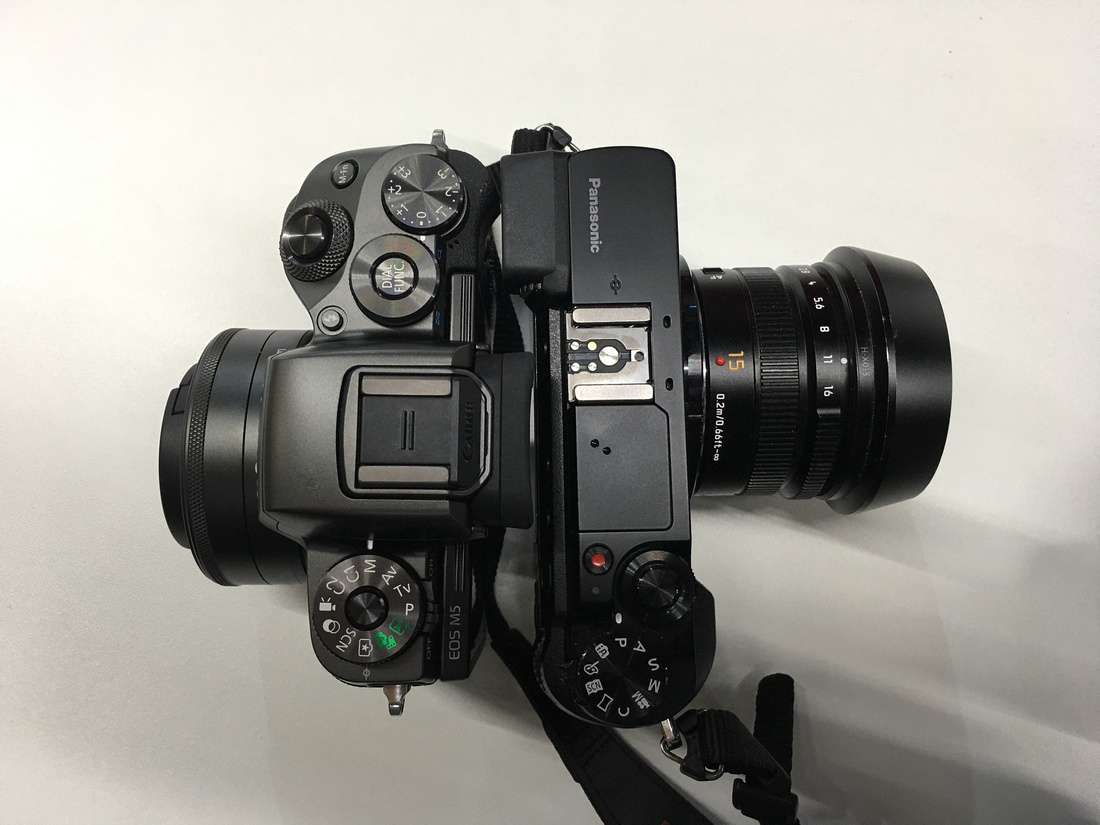
If yo see this little camera it is easy to see that it has all dials needed. Ergonomically it is pretty close to the best in class Lumix cameras!!!
I hope that also the 3rd party lens manufacturers are going to support the EOS-M-mount soon, especially Sigma with their 19/30/60mm Art lenses or Zeiss with their Touit lenses....
I hope I get one of these M5 bodies for testing soon...
Panasonic
This time I learned that Panasonic has High Speed Flash Sync, too. But unfortunately this is reserved to the GH4 as well as GX8... There is no obvious reason why f.i. A GX80 or a G80 is not allowed to have it.... And there is a pocket wizard transmitter for Panasonic available, too....
The GH5 was announced, but they only showed empty boxes... To the public.
Lumix G80/G81/G85 or however they will name it...
Panasonic has a bit weird strategy in naming their cameras. I do not believe that this makes any sense, but for panasonic it seems to be different. They say it has to do with grey imports and different warranty conditions in different parts of the world depending on the legal environment.
This Camera is the successor of the G7/G70. If you have read my review about this camera (http://delightphoto.zenfolio.com/blog/2015/7/panasonic-lumix-g7-in-germany-called-g70-a-really-interesting-package) this camera has the best ergonomics of all cameras I know. Period. But it the built quality was a bit flimsy.
The new one is a totally different story. They have introduced a magnesium alloy body. And they introduced weather sealing!!! First time in the Lumix G-Series. So fare this feature was reserved for the GH-cameras as well as for the GX8. Another feature is the battery grip. Yes: this little beast is getting a battery grip. In combination with the newly introduced "power save" mode I would guess that battery change during a shoooting day is not necessary anymore...
Fuji
Fuji is going a very interesting way. They do have top notch APS-C Cameras. With all the experience I do have today: I guess I would start with Fuji. And on Photokina they added a Big Brother. But not in Full Format but in Medium Format with a sensor size of 43,9mmx 32.9mm. This is a bigger step - similar to the step between µ43 to Full Frame - and therefore a huge step. Even if the sensor has a similar size and the Pixel Count seems to be the same: Fuji flames that there sensor is their own development and different from the Hasselblad.
Hasselblad
Hasselblad is developing in a very interesting direction. With the X1D they introduced the first available mirrorless medium format camera. The bodies are really tiny, smaller than the high end DSLR's like the Canon 5DMkIV or the Nikon D810 but also as the Sony a7 or even Panasonics GX8.
On Photokina they showed the 3rd lens, a 30mm wide angle lens with a very good optical performance. Unfortunately I could view the shots only at the camera back. But as I could see there it seems to perform really excellent
Also here I hope to get a copy for testing soon....
Lenses
Photokina is a great place to test lenses. Nearly all Manufactureres have suitable numbers of lenses there which you can mount on your camera and you can make test shots with your own equipment. This is nice and very interesting. I had my Canon EOS 5DMkIV as well as my LUMIX GX 80 with me. And I tested a lot. I saw many great lenses, I had some interesting experience but also one disappointment...
Totally I had 25 lenses on my cameras... 18 with the Canon and the rest on my Lumix....
There had been lenses which are just awesome. Some had been with some mixed feelings and others... "ok..."
I will not show the photos of the lenses but images I have taken with it. For me this is more informative than making product shots on a trade show. You will find better ones on the manufacturers web page I guess...
The Mind-blowing ones...
Let´s start with some lenses which had been astonishing - because they are coming from relatively new brands. These are the Laowa´s from Venus lens, but also one Meike or the Samyang´s which I would not count among the "newcomers" but there glas is performing excellent as well.
Venuslens aka Laowa
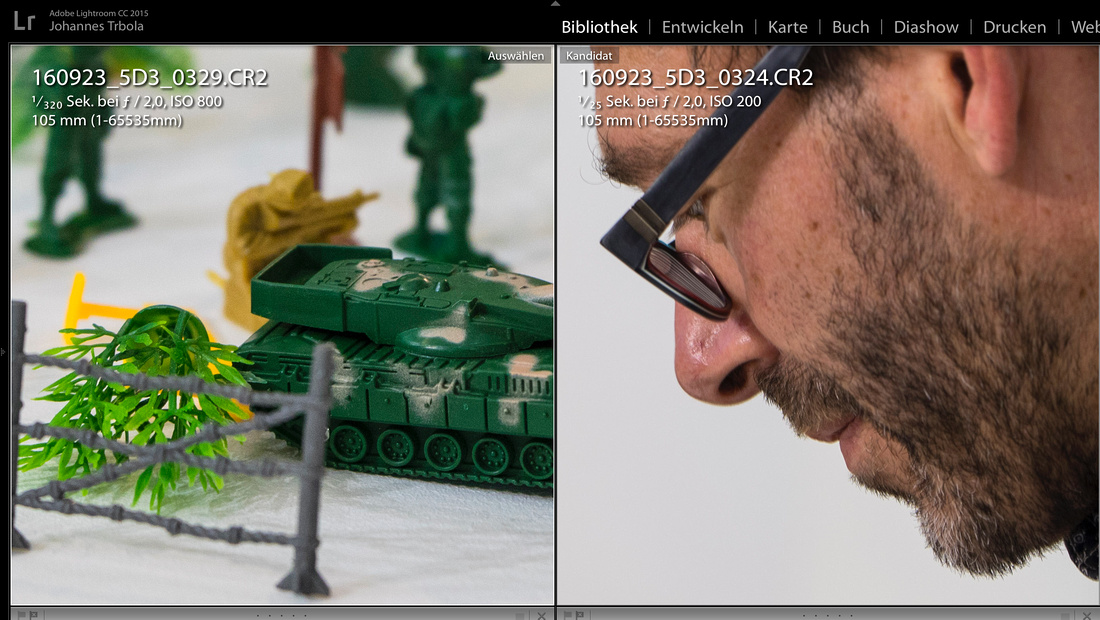
The first sample image is shot with the Laowa 105mm f2.0 "transfocus" lens. It is unbelievable sharp with a very nice Bokehrendering...
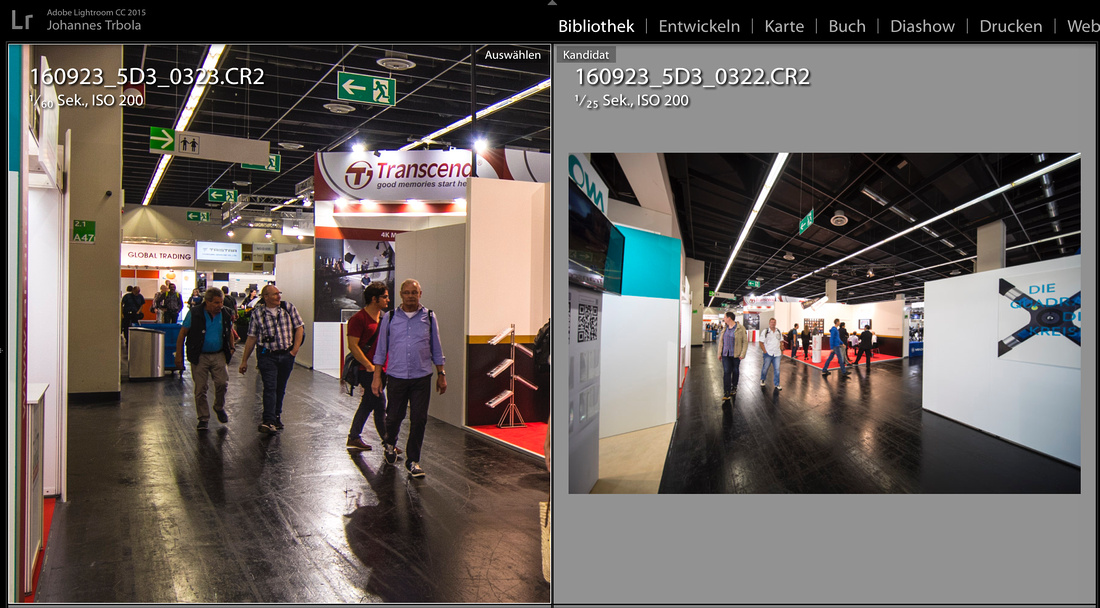
This photo is taken with the 12mm f2.8 ZD: ZD stands for Zero distortion. The left image is taken @ 100% while the right side shows the complete view angel of very impressive 120º...
What is impressive as well: This lens is relatively small....
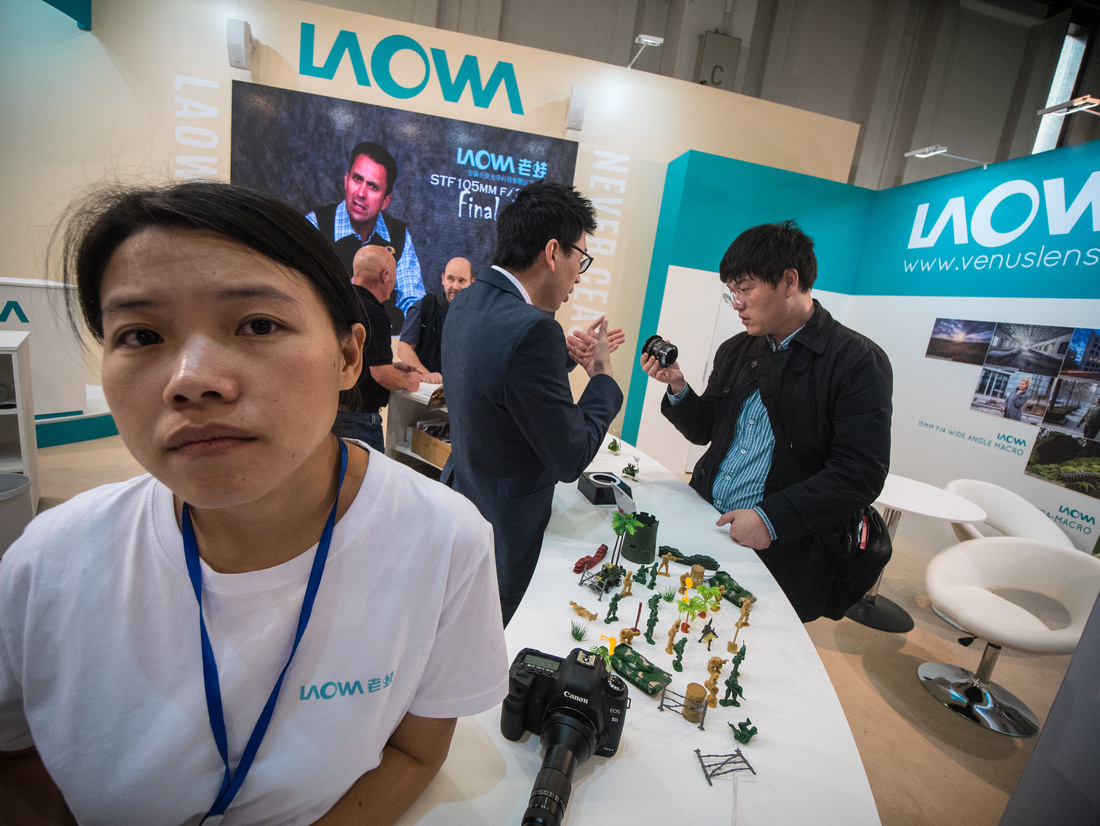
This photo is not really nice. But it is impressive: It is taken with the 7,5mm f2.0 µ43-Prototype lens. The prototype was not able to focus until infinity properly. But it shows an excellent optical performance. And I was allowed to take the not released lens on my camera to make test shots. Like the 12mm f28. For good reason: these lenses are showing their excellence even in the prototype phase....
The other remarkable lenses from Laowa are their Macro Lenses: a 15mm f4.0 with 1:1 magnification as well as the 60mm f2.8 with a 2:1 magnification... very impressive: Here comes the scene:
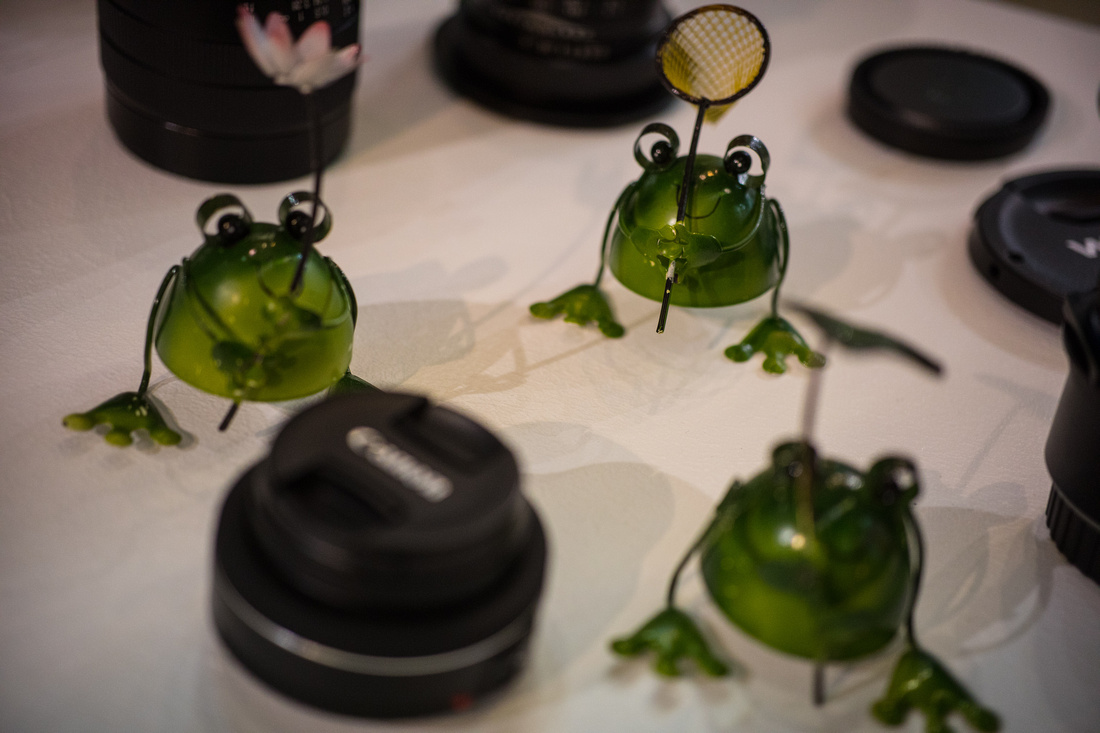
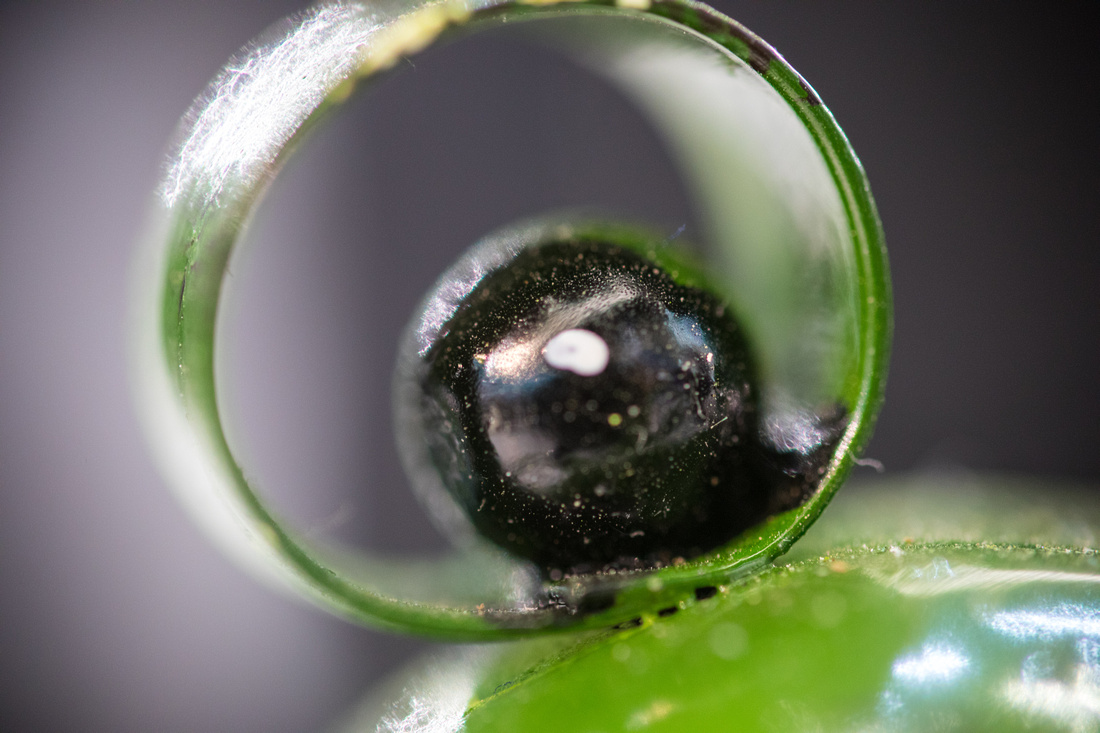
This is the eye of the frog on the left with maximum magnification
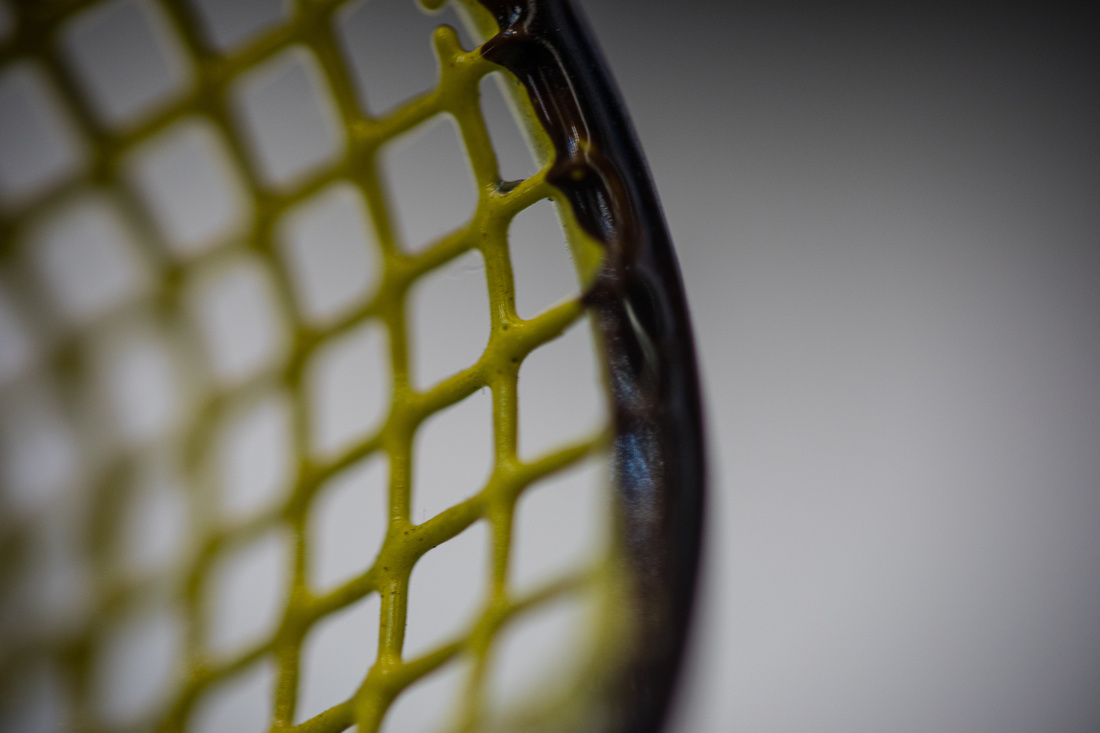
An this is the net of the frog with the net....
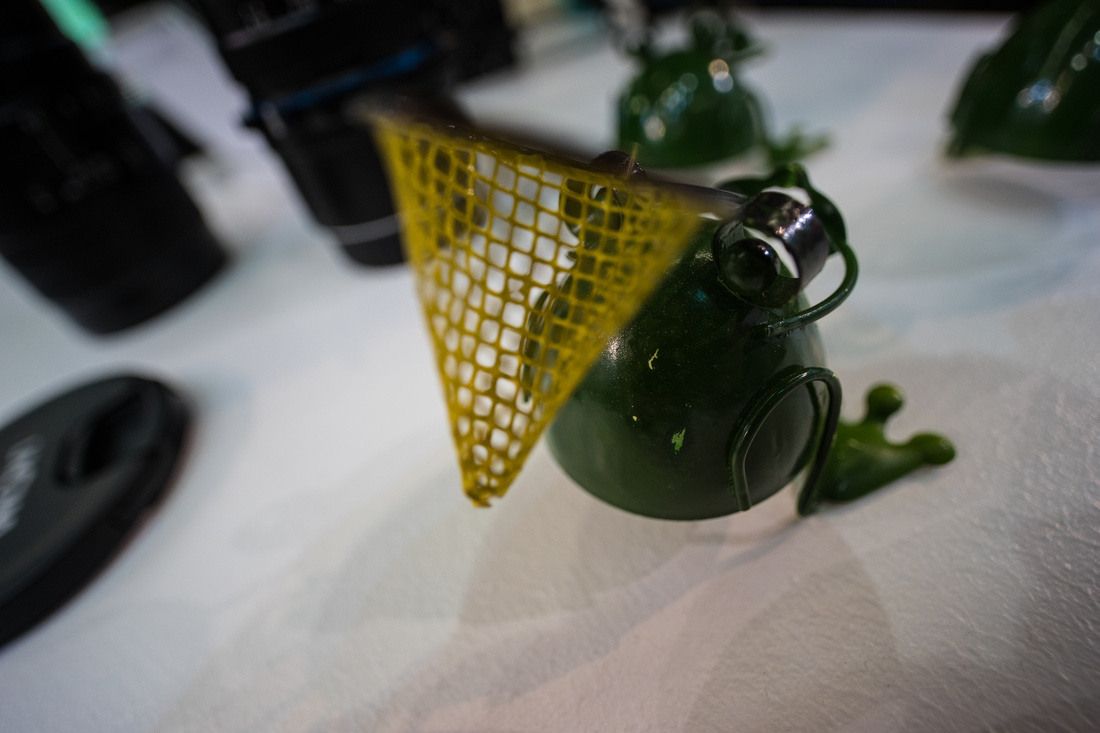
This is the net with the 15mm wide angle view...
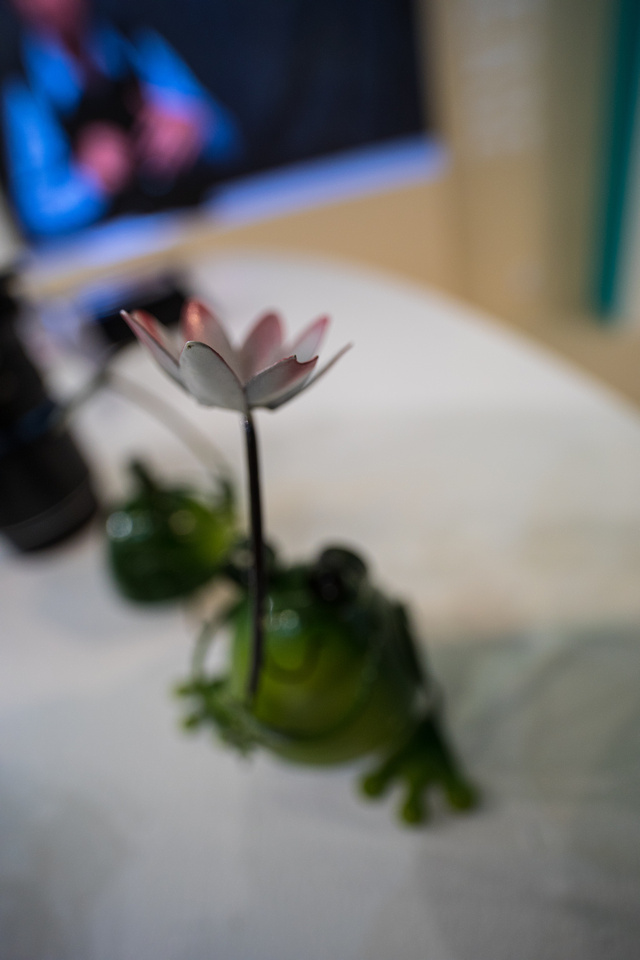
And this the frog with the flower....
These macro lenses are definitely not for everybody. but for macro shooters they offers really new possibilities....
Samyang
2 years back my experience with Samyang was a bit mixed feelings. This time it was very impressed. Even if the newest stuff was not shown to public, but the 35mm f1.4 was really impressive:
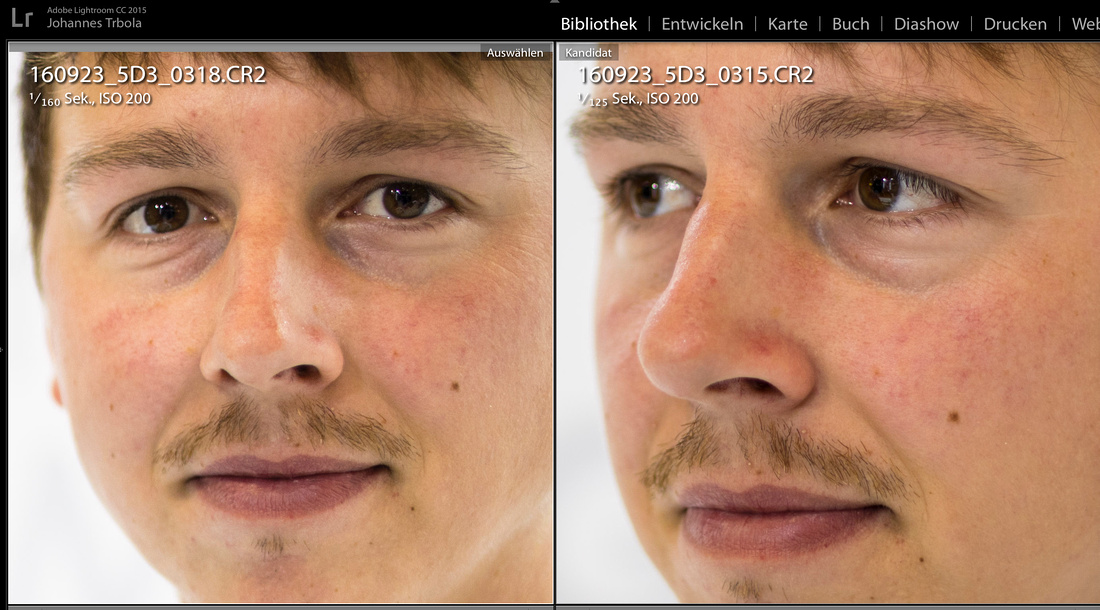
This shot was taken in live view. The lens does not have a proper focus confirmation chip - focusing through the lens is hard to perform. But in live few it works. The lens stood at f1.4. The photos above are showing 100% crops. On the left is the Upper Right Corner while the right image shows the center of the image....
As long as you are able to manage manual focus lenses: Samyang has really great glass especially with the newly released lenses.
Meike
Also Meike had 2 interesting lenses. One was a fish eye...
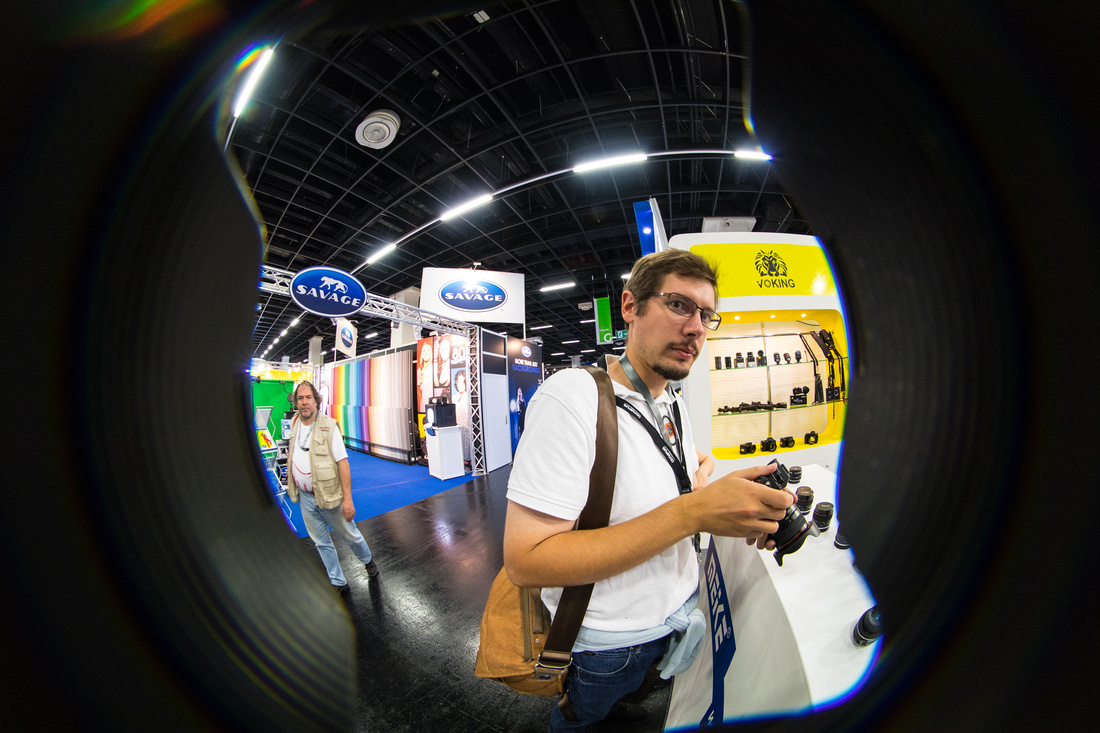
Yes: this is Mathieu Casquet from Mirrorlessons....
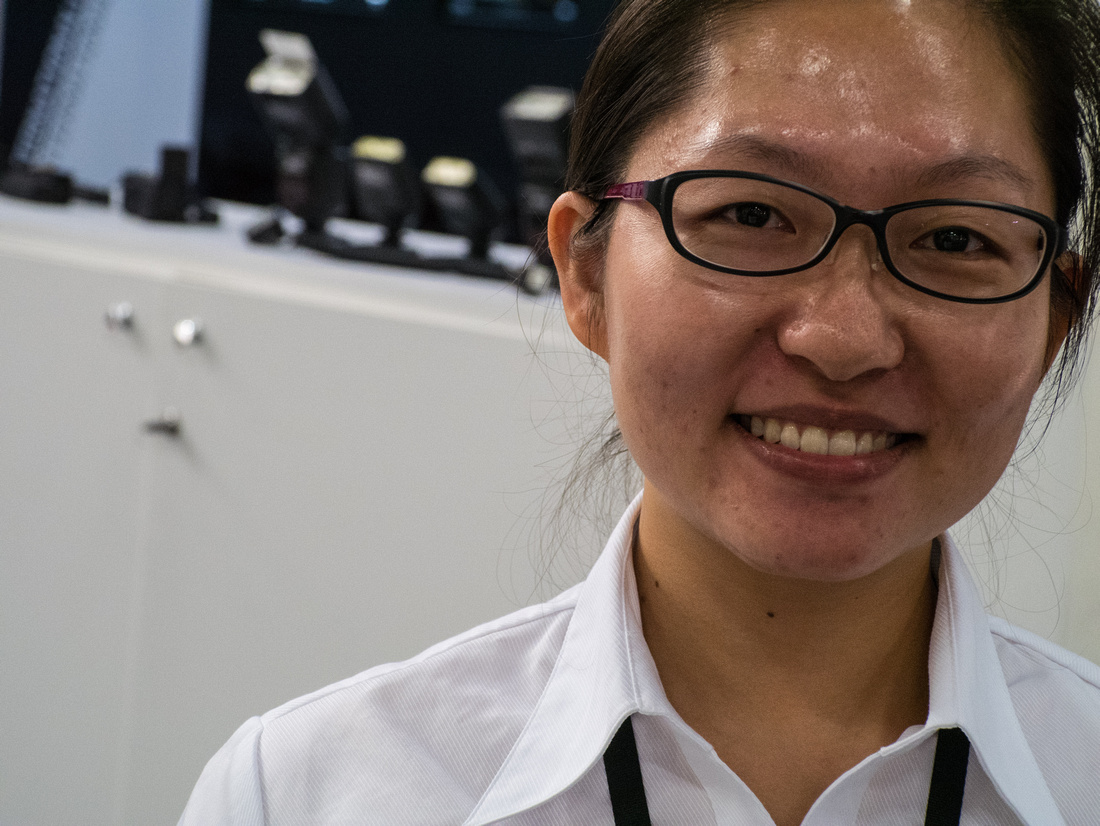
These images were taken with the Meike 50mm f2.0. A lens which they sell @ 80€ on the show.
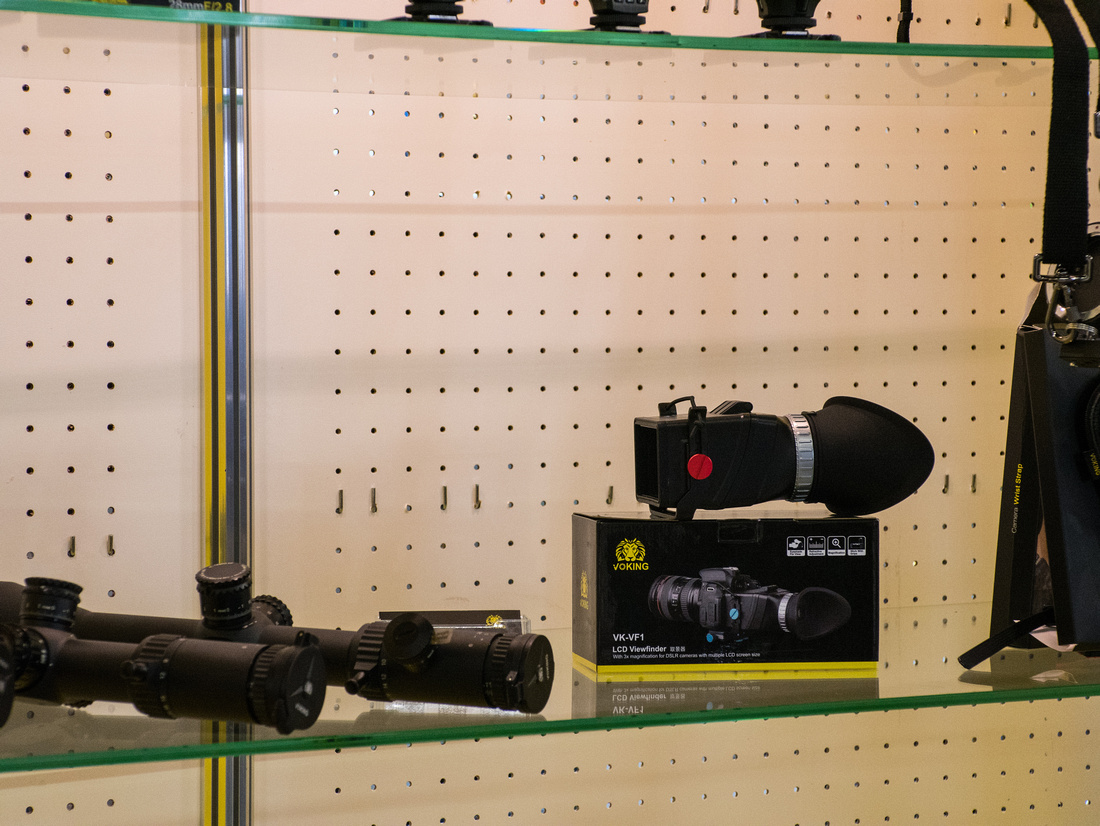
This lens has a close to perfect performance to costs ratio, especially in the µ43 world... But again, it´s fully manual...
Carl Zeiss
Ok.. now we come to the established brands. But their glass is mind-blowing, too. I made some shots with different lenses...
Let us start with the newly announced Milvus 15mm f2.8...
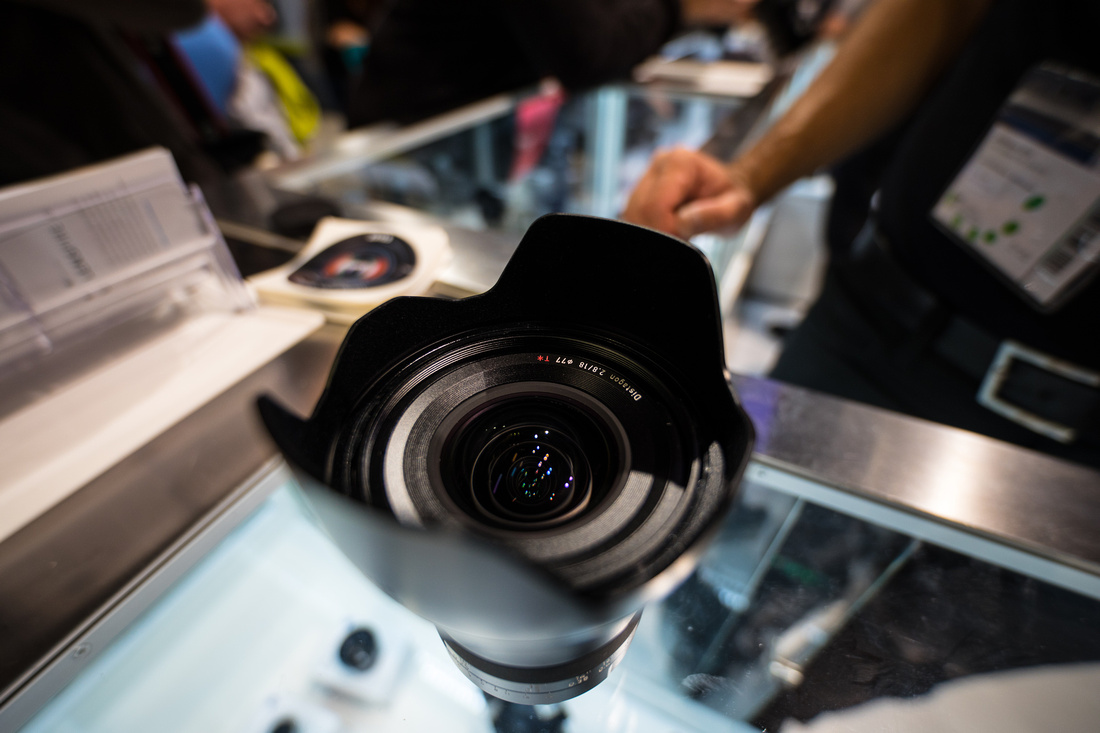
This shot shows the shortest focal distance....
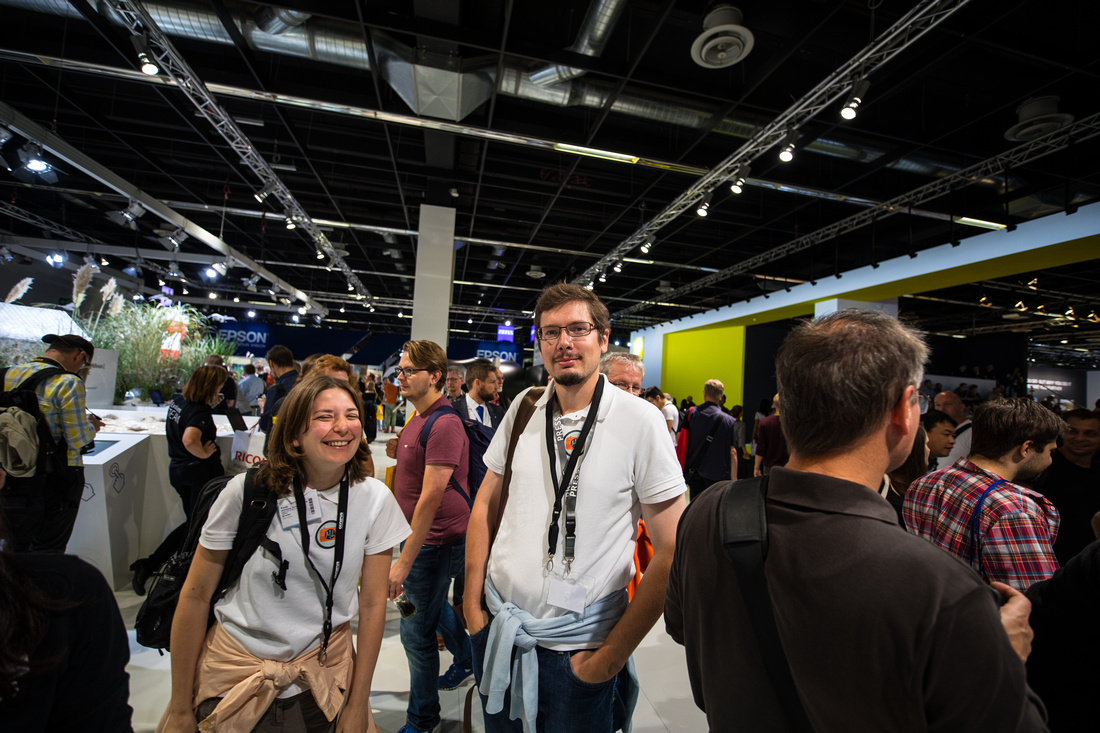
And this the crowd around (Yes this is Heather Broster and Mattieu Casquet of http://www.mirrorlessons.com ...)
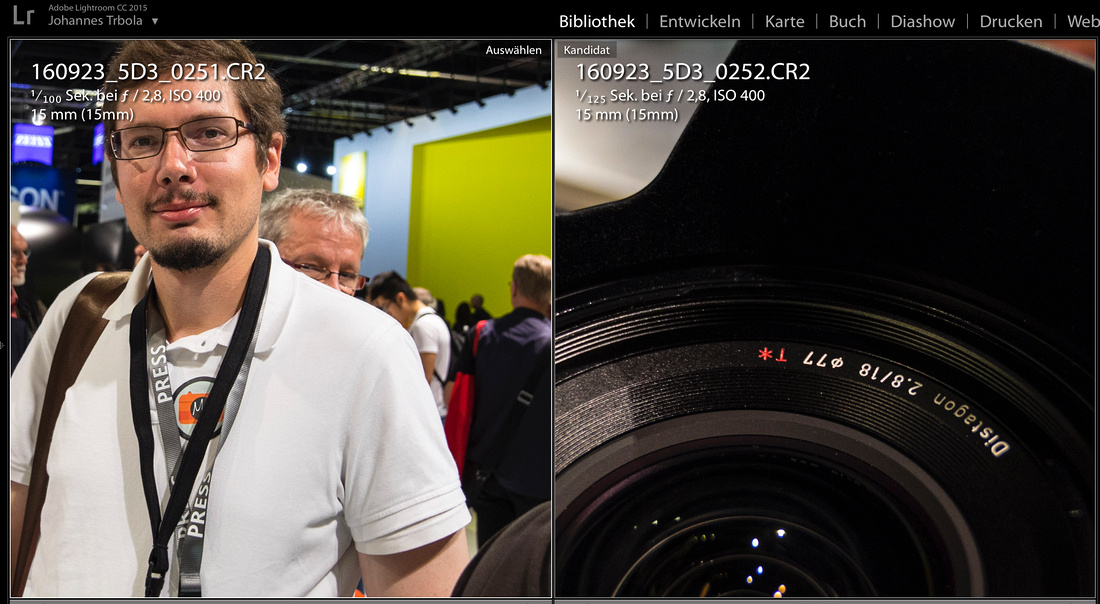
These shot were made with f2.8 - and without any CA.... just perfect!!!!
Another near to perfect lens: The Otus 28mm f1.4:
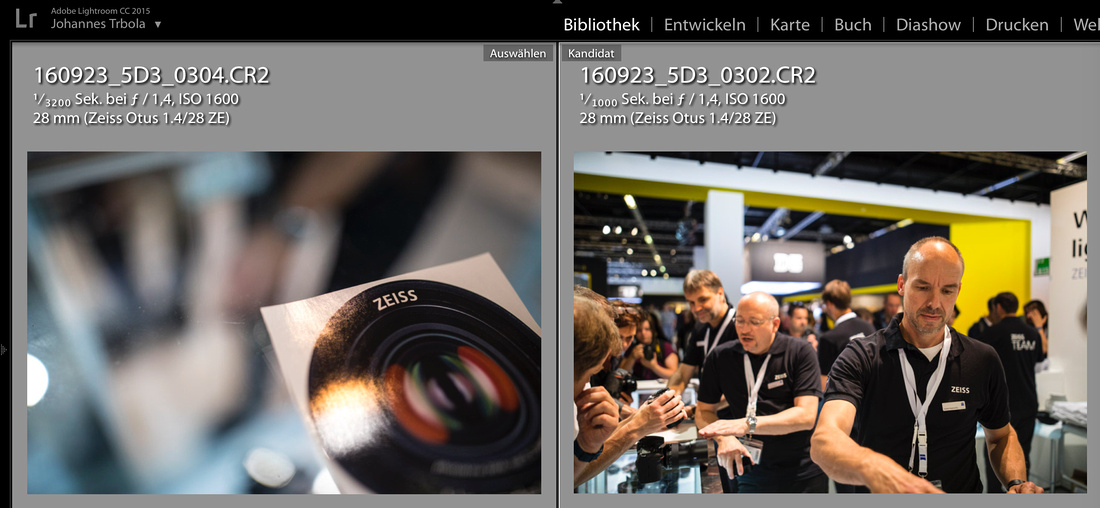
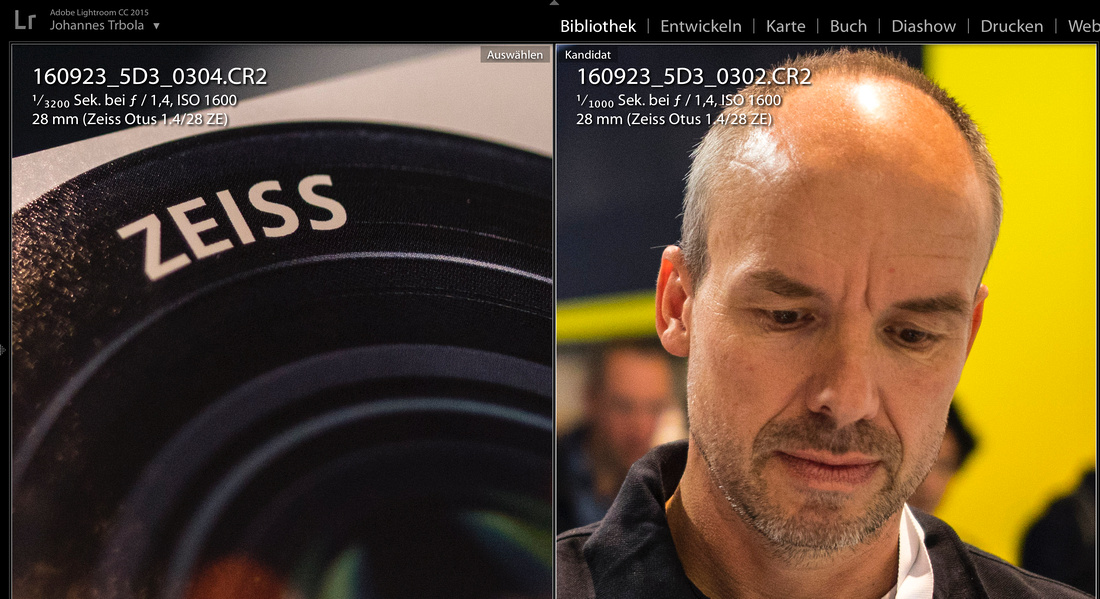 In the crops you see @ 100% no CA but really sharp images. and the samples are not from the Center.... As mentioned: just wow!!!
In the crops you see @ 100% no CA but really sharp images. and the samples are not from the Center.... As mentioned: just wow!!!
Another lens gave me mixed feelings on my own investment into the Milvus 85mm f1.4 or a bit of disappointment:
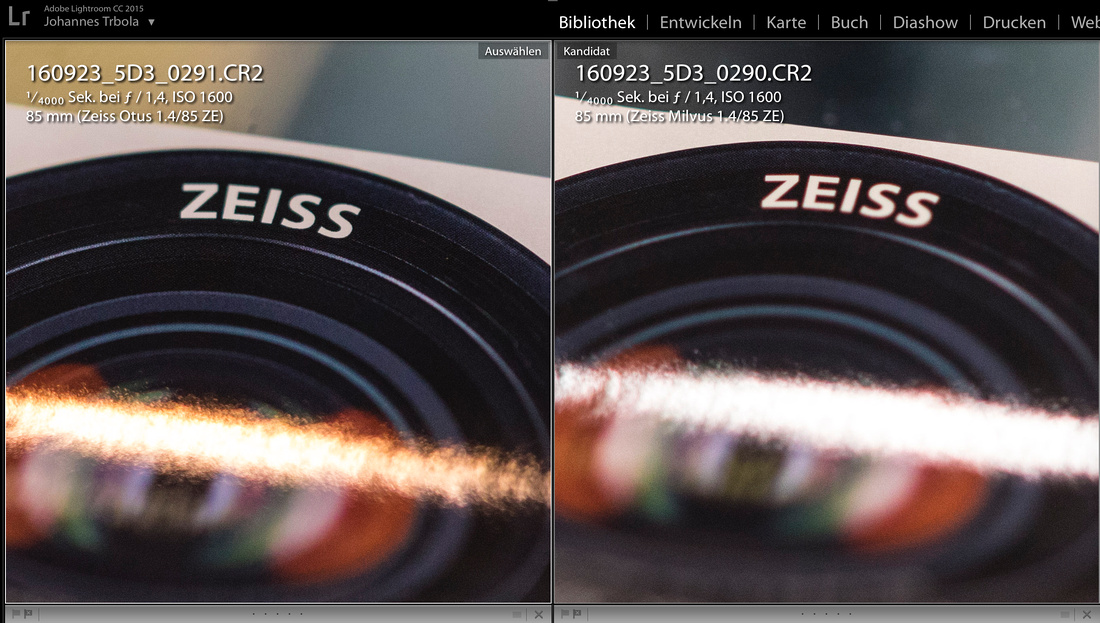 These shots were made @ f1.4. The Otus delivers perfect CA and contrast while the Milvus renders less contrasty and with clear visible CA... (ok @ 100%...)
These shots were made @ f1.4. The Otus delivers perfect CA and contrast while the Milvus renders less contrasty and with clear visible CA... (ok @ 100%...)
But the real world comparison side by side were showing: well, the Milvus is an excellent lens... too, but the Otus remains a class of its own...
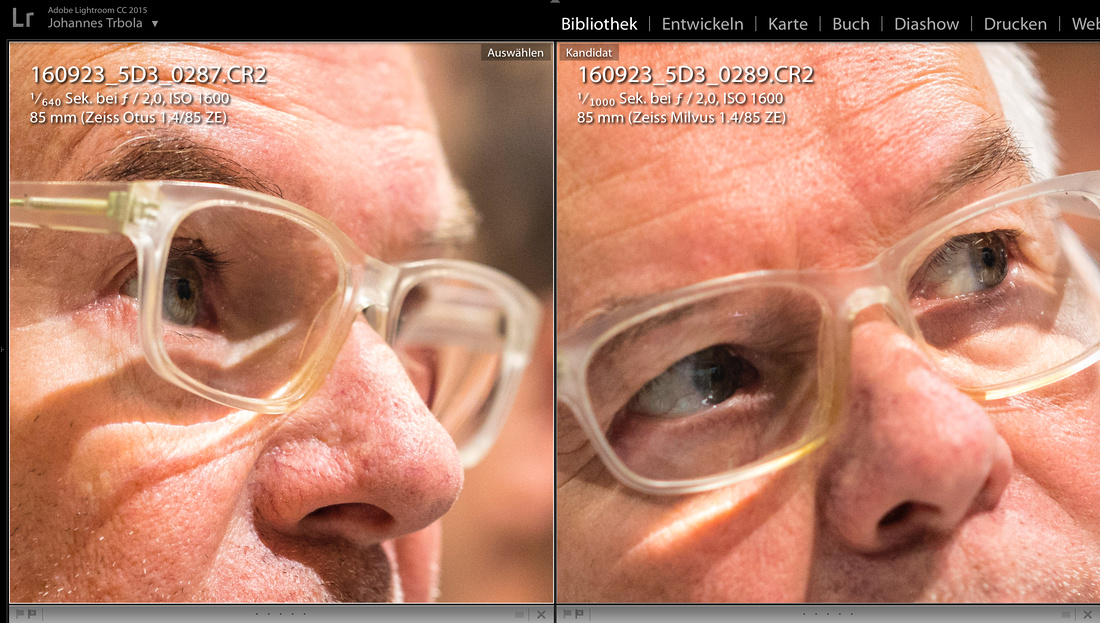
Here the rendering @ f 2.0... both lenses are showing an excellent image quality....

The same @ f1.4.... As long as there aren´t to hard contests both lenses are delivering excellent results... but with the better end for the Otus.... #
Olympus
Olympus introduced the 300mm f4.0. This spec would not expect a hefty price tag like 2.600 €. But the photos I have taken I shot with 1/100s... This is 1/6 or 2.5 f stops less... And the results are mind-blowing....
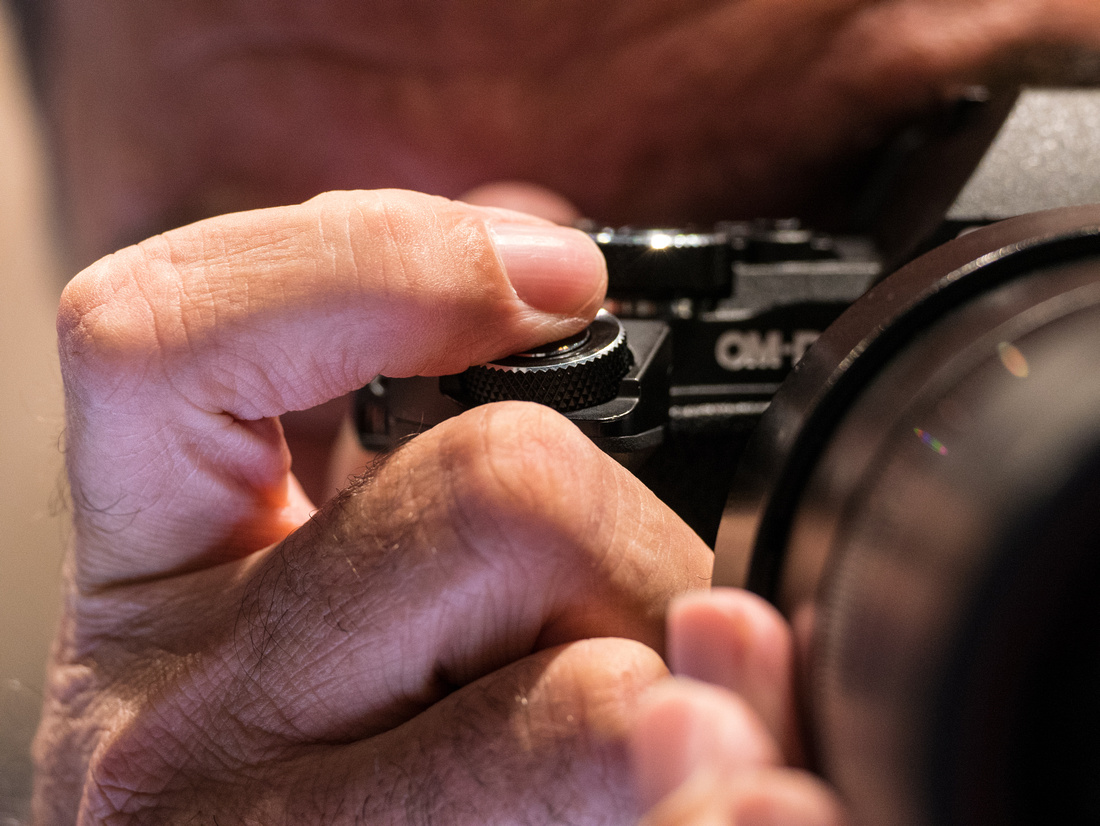
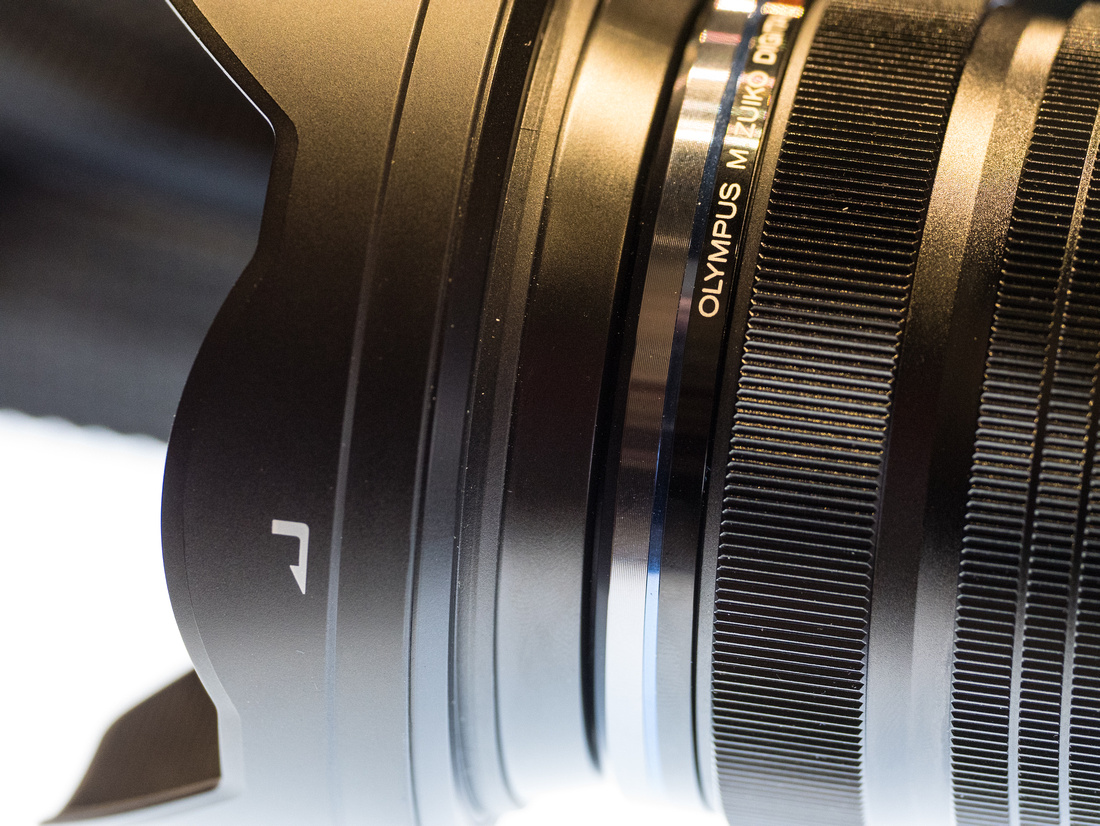
This is another advantage of this lens: the closest distance of 1.4m allows you a magnification of 0,24x... which is not that bad. And again: free of CA with a great contrast....
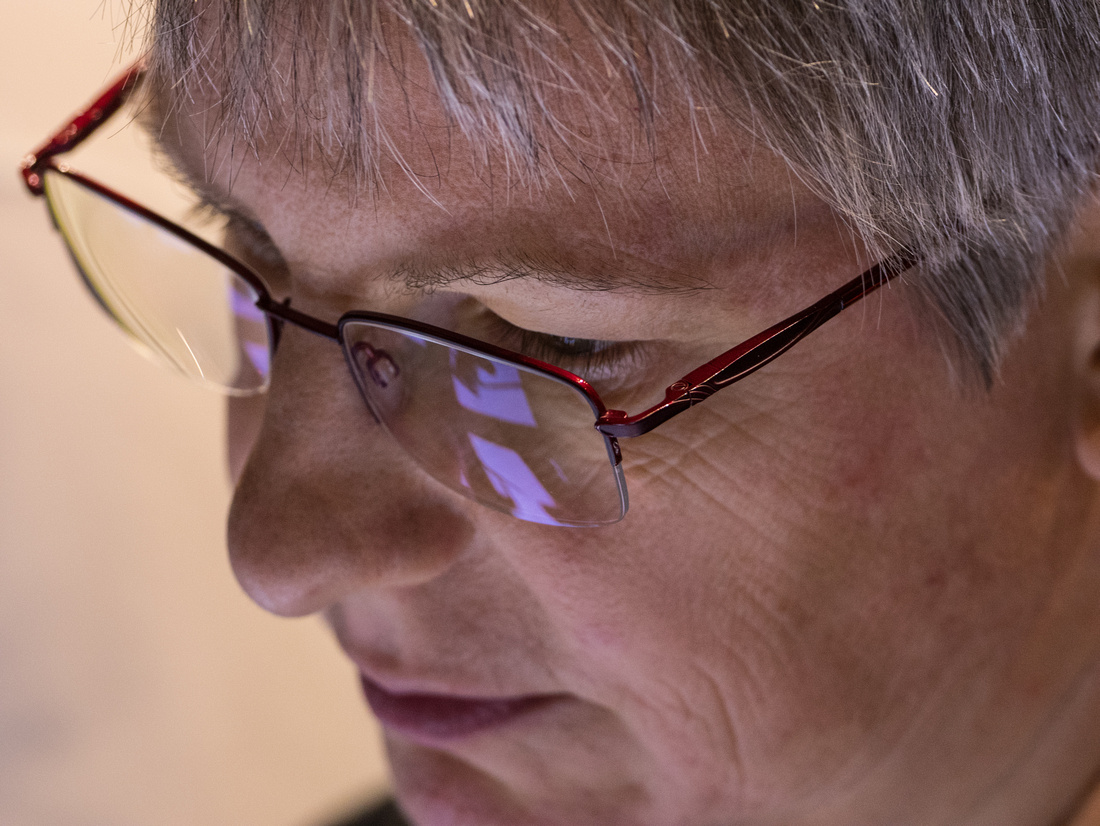
Panasonic Leica
Yes: I do have most of the Panasonic Leica lenses. But one lens I had not the chance to test. unfortunately the light conditions at the panasonic stand had not been excellent. Therefore I was testing more the Dual IS capabilities.
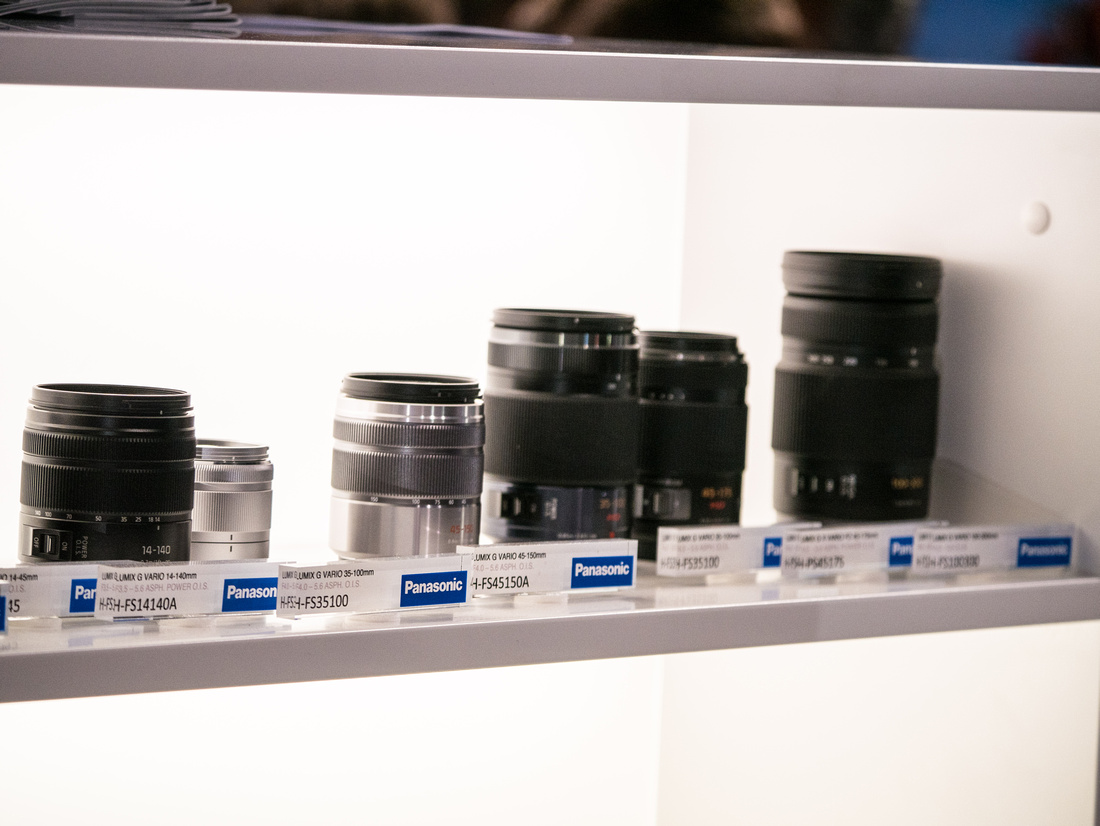
100mm... No CA...
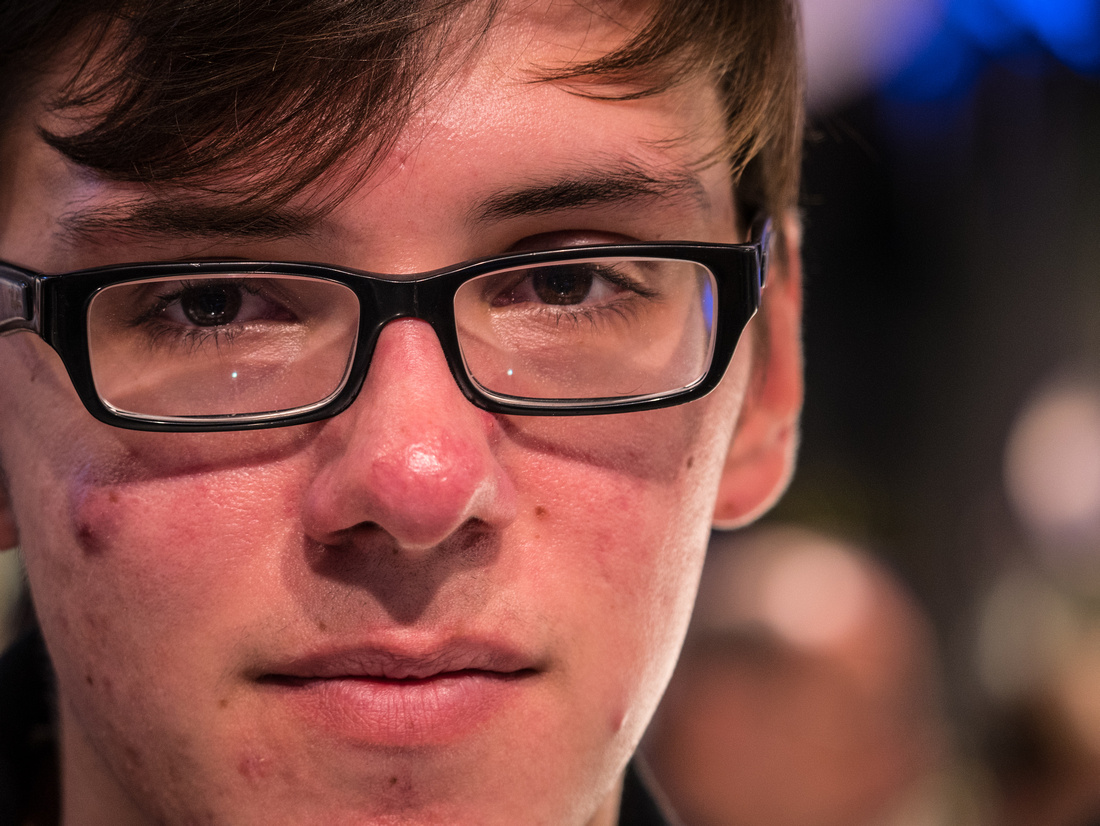
100mm; 1/50s
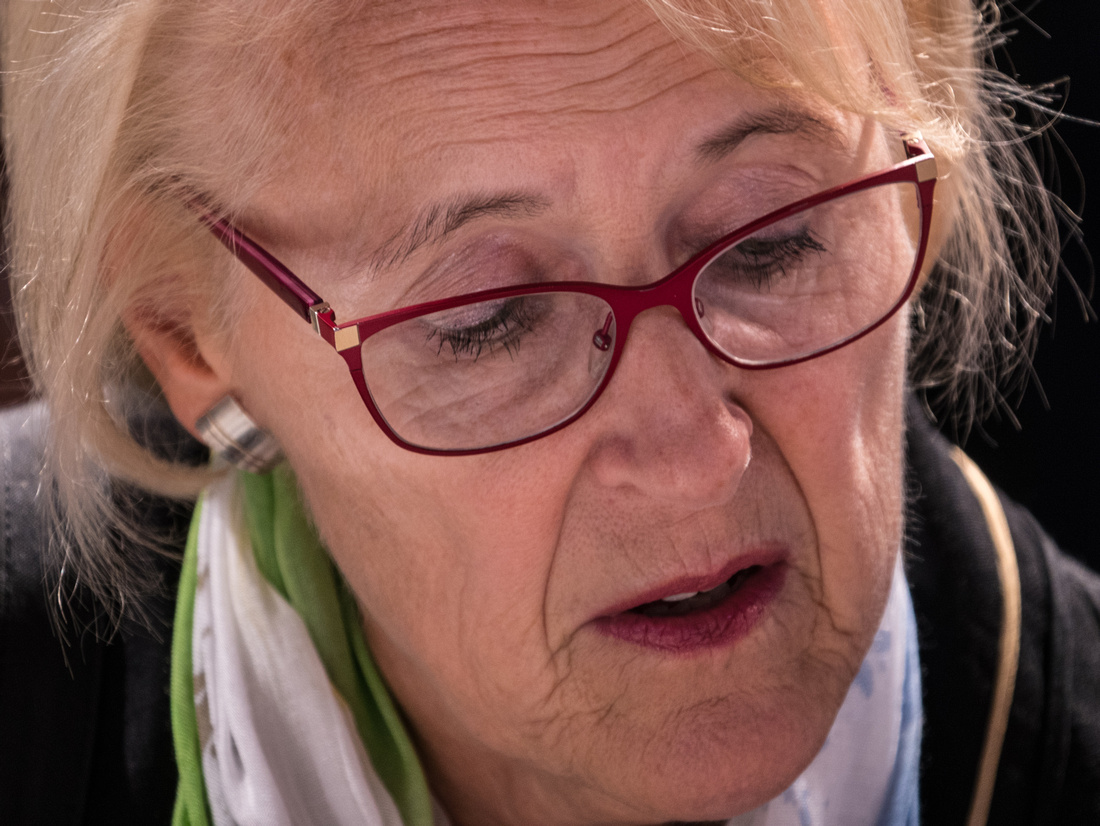
400mm; 1/20s.... Yes!!! 800mm free hand with 1/20s..... These are 5 f-stops!!!
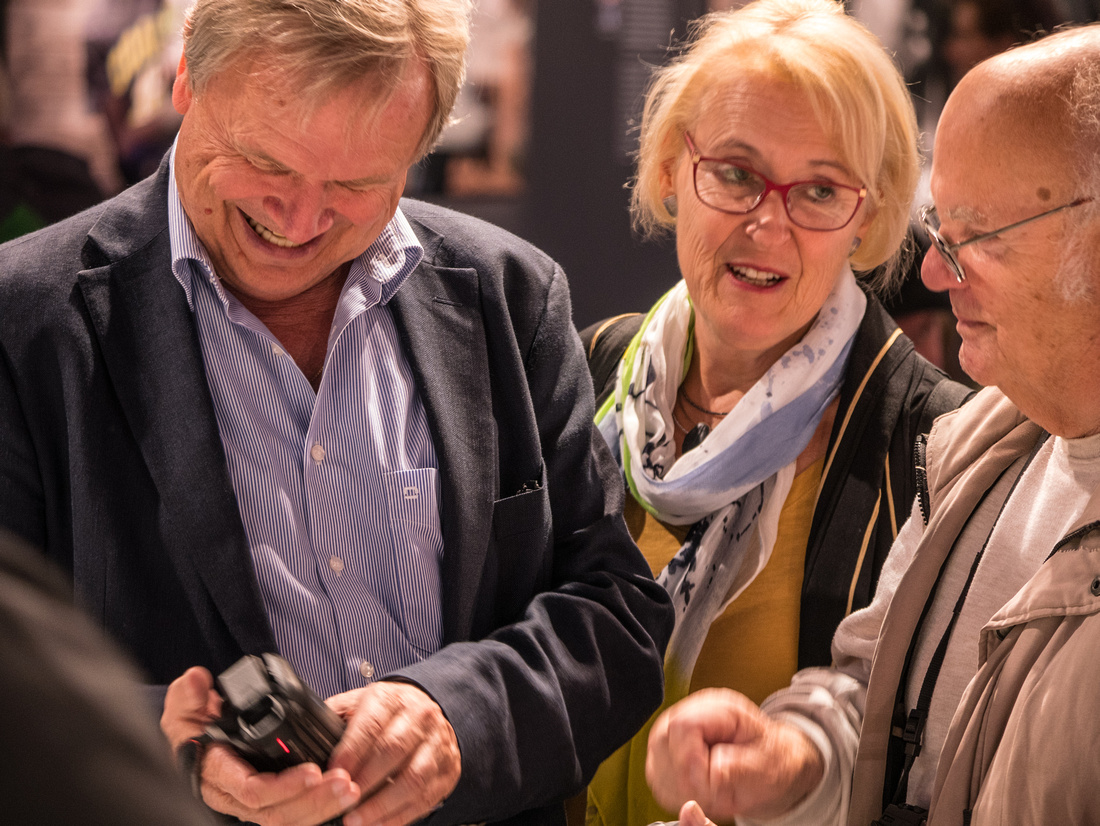
100mm, 1/30s.... This lens is very interesting, too.
I would like to get the opportunity to test both µ43 lenses side by side: the Olympus 300mm f4 as well as the Leica 100-400mm....
Canon
Yes. Canon. The biggest player in the business has remarkable lenses, too. First the lens which I never had on my camera before: The 200mm f2.0L lens. Very heavy. And very great... here are some samples...
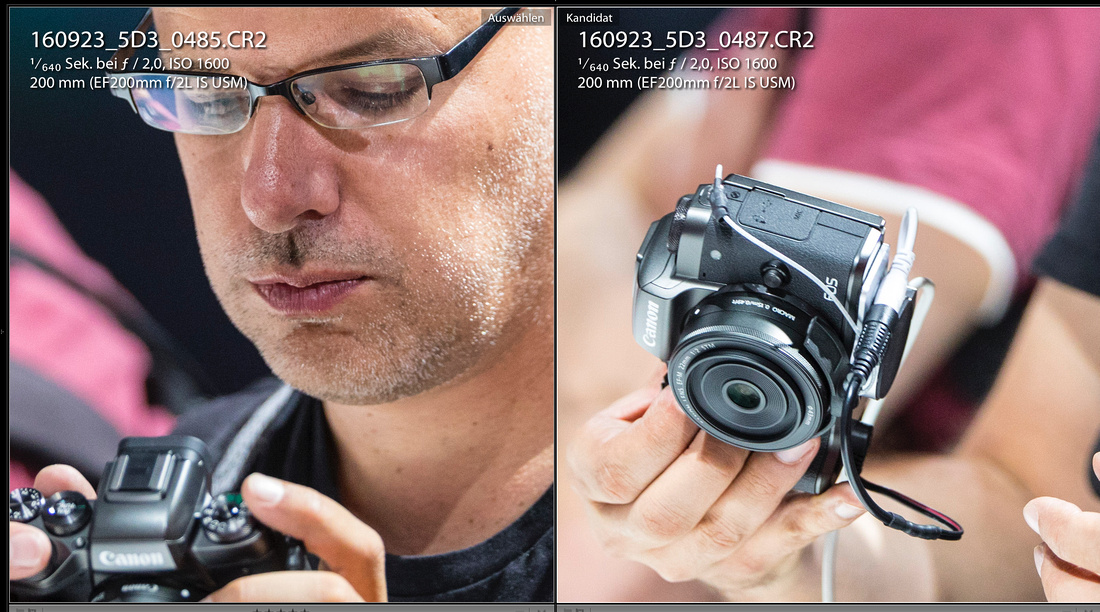
These are 100% crops @ f.2.0 Yes!
Another very interesting while versatile lens is the 100-400mm Tele Zoom in the Mark II Version. I do own the Mark I. This lens is really perfect when you go for a safari or you want to shoot sports like ski racing. here it becomes even more interesting to use the lens on a camera like the 7dMkII...
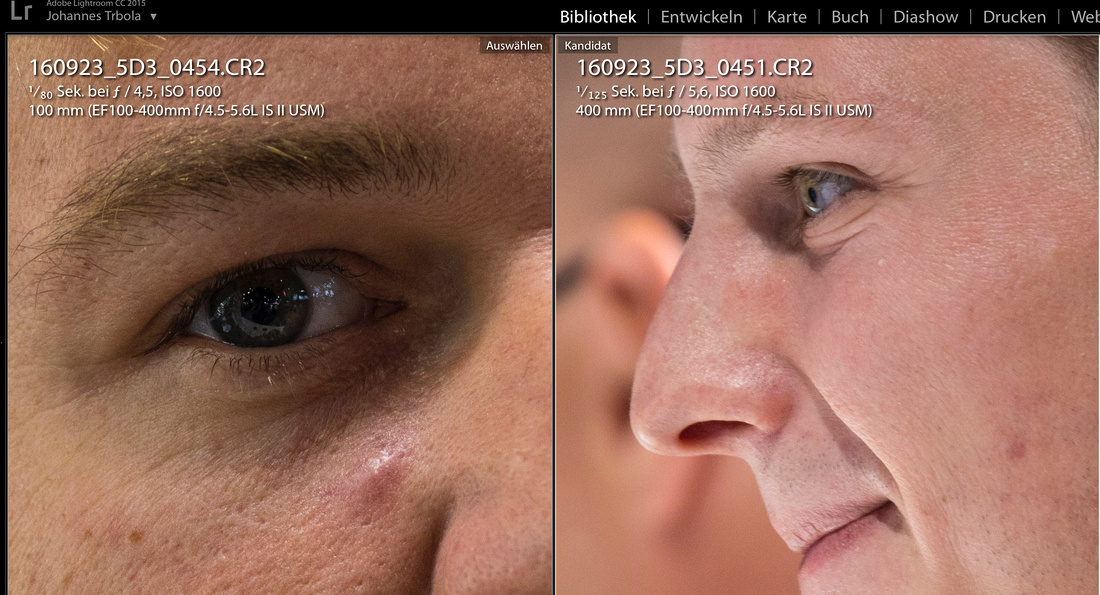
Both shots show, that the lens has an excellent performance even wide open. And you should note that the photo on the right is taken with 1/125s... 2 stops longer: IS is working....
Another topic of course is my favorite focal length of 85mm.
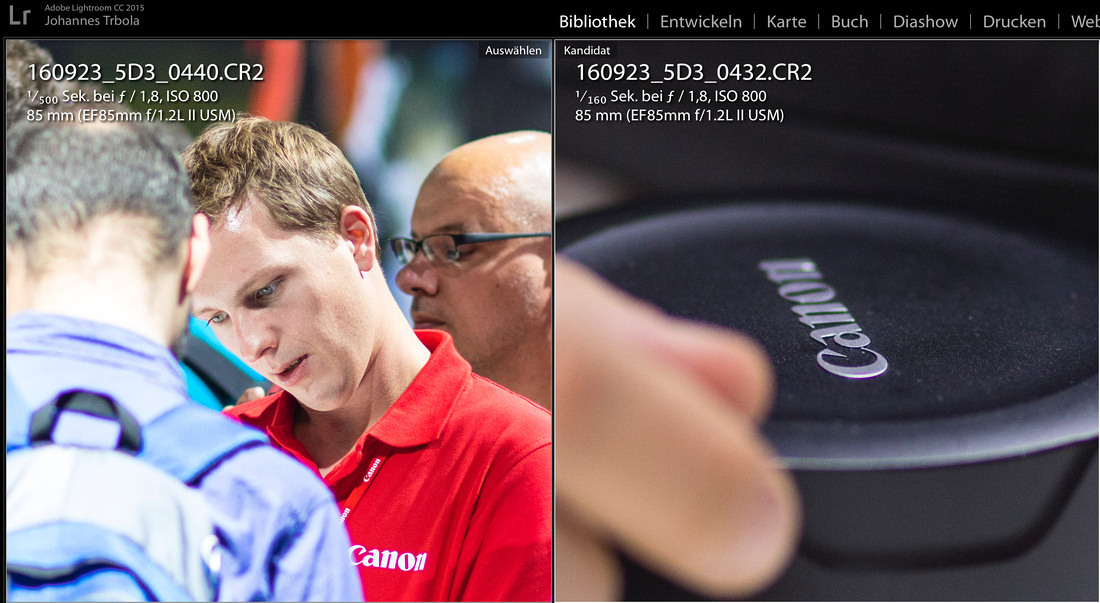
Yes, the EF 85mm f1.2 has CA. But it delivers sharp and crisp images. And it has an autofocus which works excellent - and in combination with the 5DMk IV at a remarkable speed... By the way: the young gentleman from Canon on the image above is the same one you see above with the 100-400mm @ 400mm focal length....
But Canon has another lens I am pretty interested in: the 35mm f1.4, Unfortunately I took the images

The left image is on the low side of the image, the right one in the center: The lens is just excellent... And it shows no CA... In the combination with weather sealing and an excellent autofocus a very interesting lens...
There is another lens which has attracted me. And this is a general purpose lens. The swiss army knife in the Canon lens line up: the 24-105 f4 Mk II. Dies it delivers: Yes.
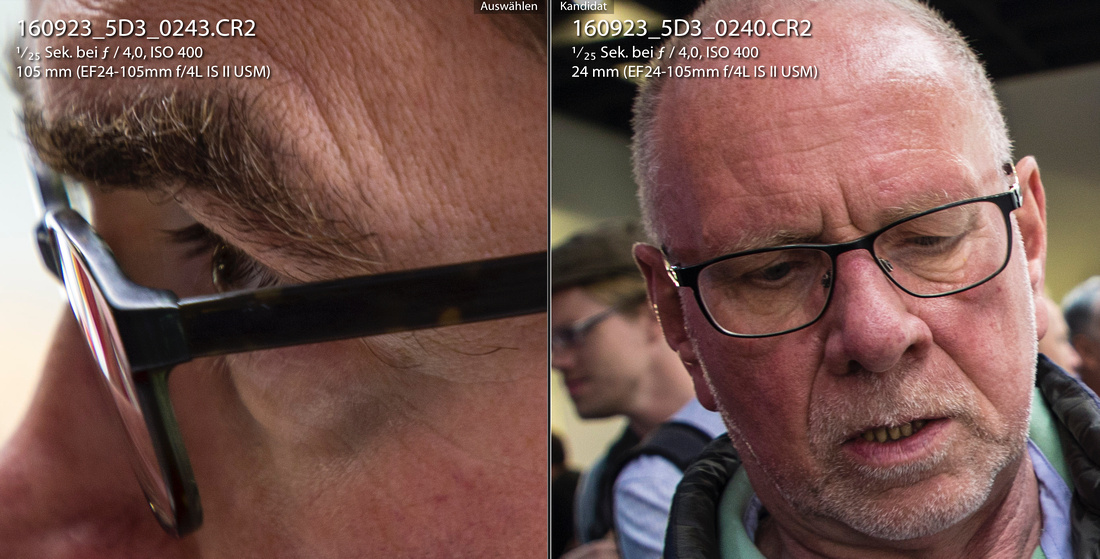
Here you see 100% crops close by. Not as sharp maybe as the Zeiss lenses or the primes above but very very useable...
Miscelleanous.
I have taken all photos in public. I hope that nobody who might find his personality rights not suitably respected: please send me a male and i will take your images out of my blog as well as out of the related image gallery.
For the moment this blog post is a bit work in progress. But I wanted to start with the highlights. During the next couple of days I will add some more content, especially about the lenses which left a bit of mixed feelings with me... Like the Tamrons. Or about the experience @ Sigma: which was kind of disappointing again...
The images were taken with the following cameras:
- Canon EOS 5D Mk IV
- Panasonic Lumix GX80
- Apple iPhone 6s plus
The full size images are available here: http://delightphoto.zenfolio.com/p332869534
]]>Today, September 8th 2016 I got my copy of the 5D MkIV. It is a kind of tradition to have one of the first copies in town...
The first results you will see here. These are jpg's with 13 MegaPixel. I shot them with my Eyefi-Mobi in the SD-card slot. I uploaded them to my iPad and than to Zenfolio.
When I got the camera @ 7pm with the closing of my favorite camera store I thought I will take the weekend for a first review... But taken the camera out of the box and making the first shots: well, the experience is mind blowing....
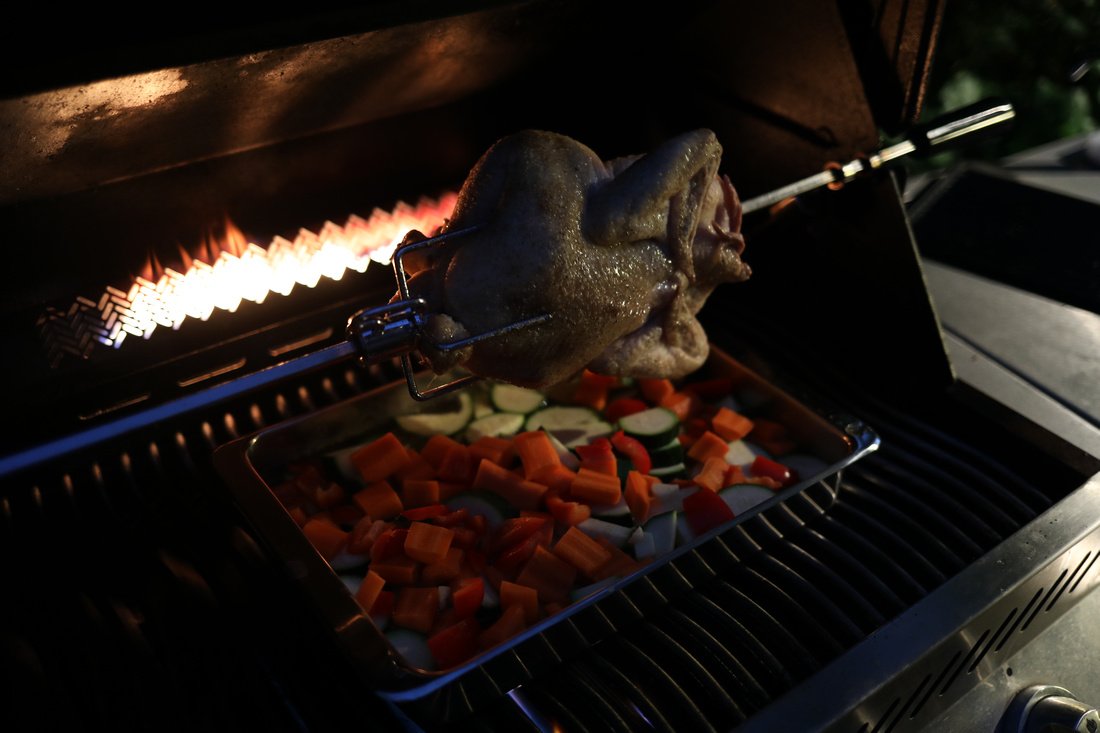
Ok I had to prepare some food for the family before I could start some sooting....
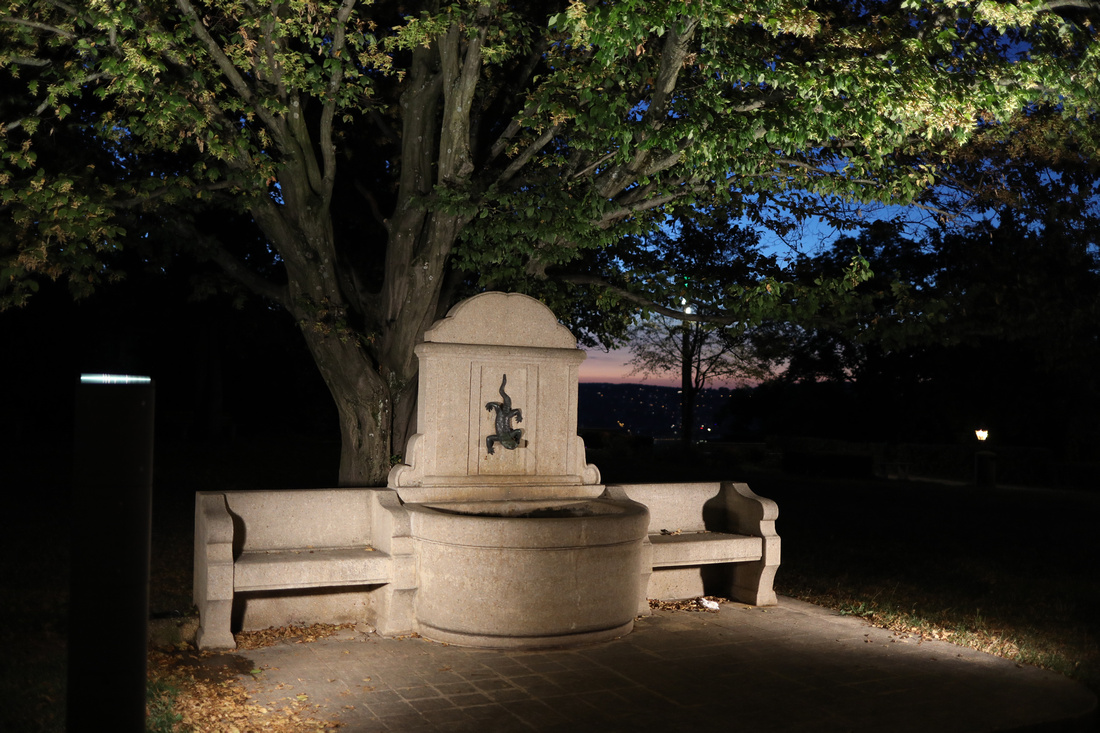
It was evening, blue hour. I had to choose higher Iso levels, And I wanted to use the silent mode,... The first impression: this is really silent - and that without rolling shutter....
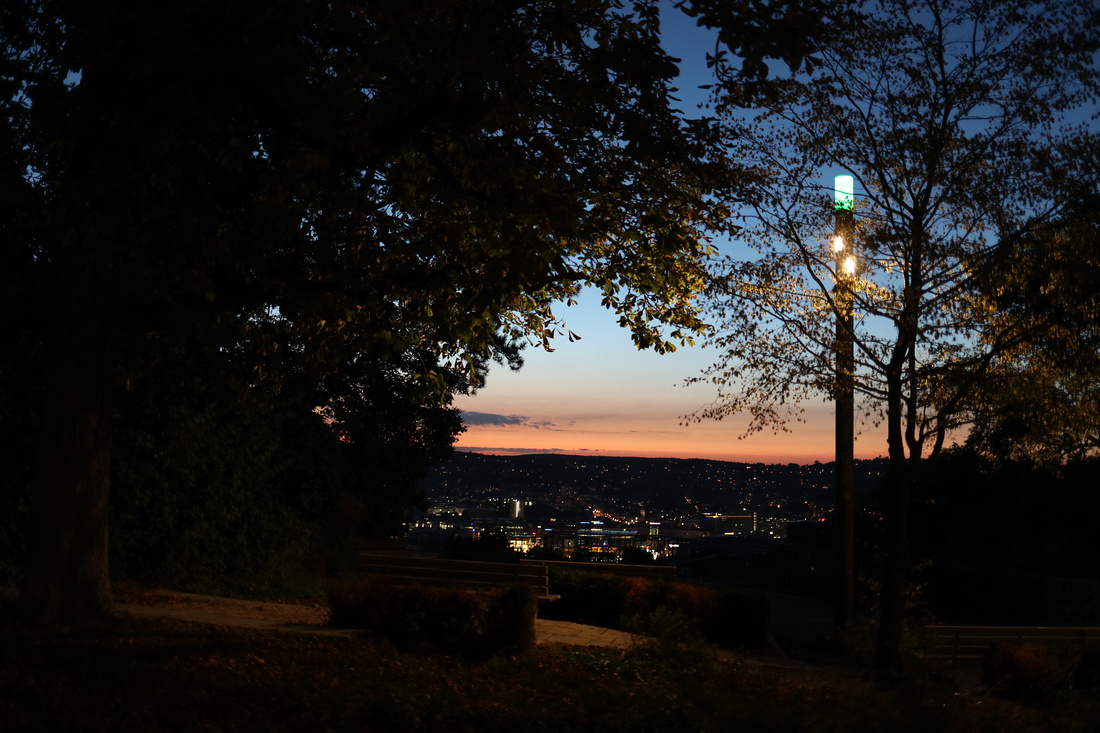
First impression: no blown out highlights, no underexposed areas.... Nearly... That was really stunning....
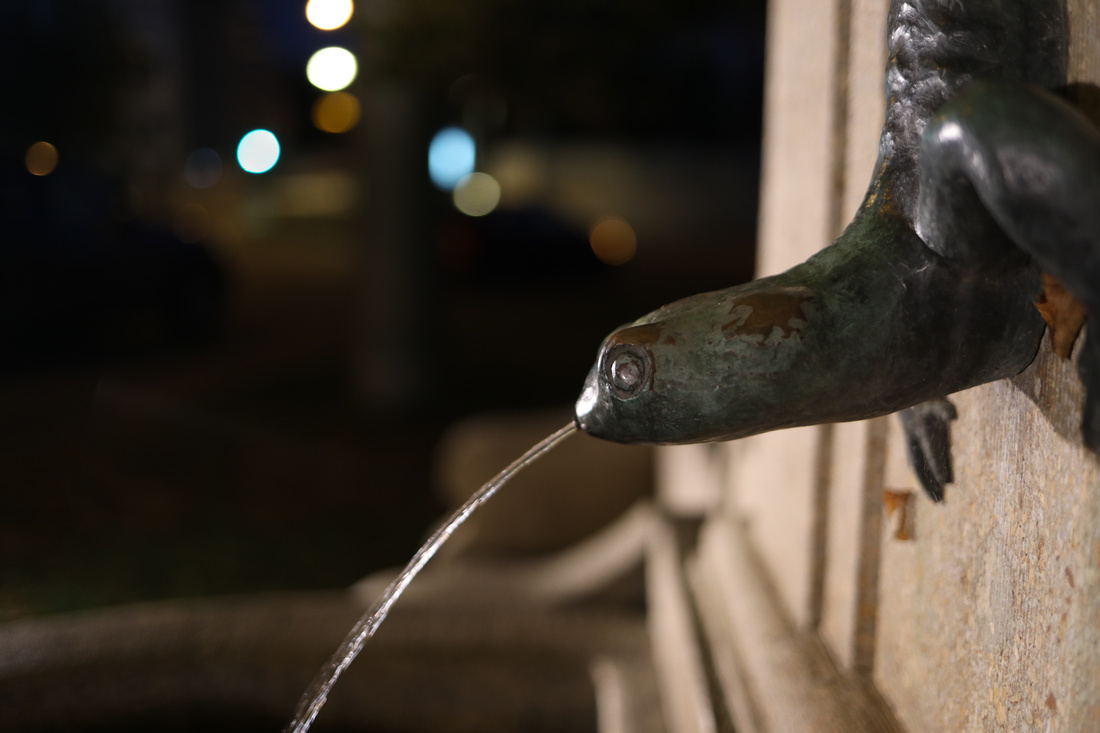
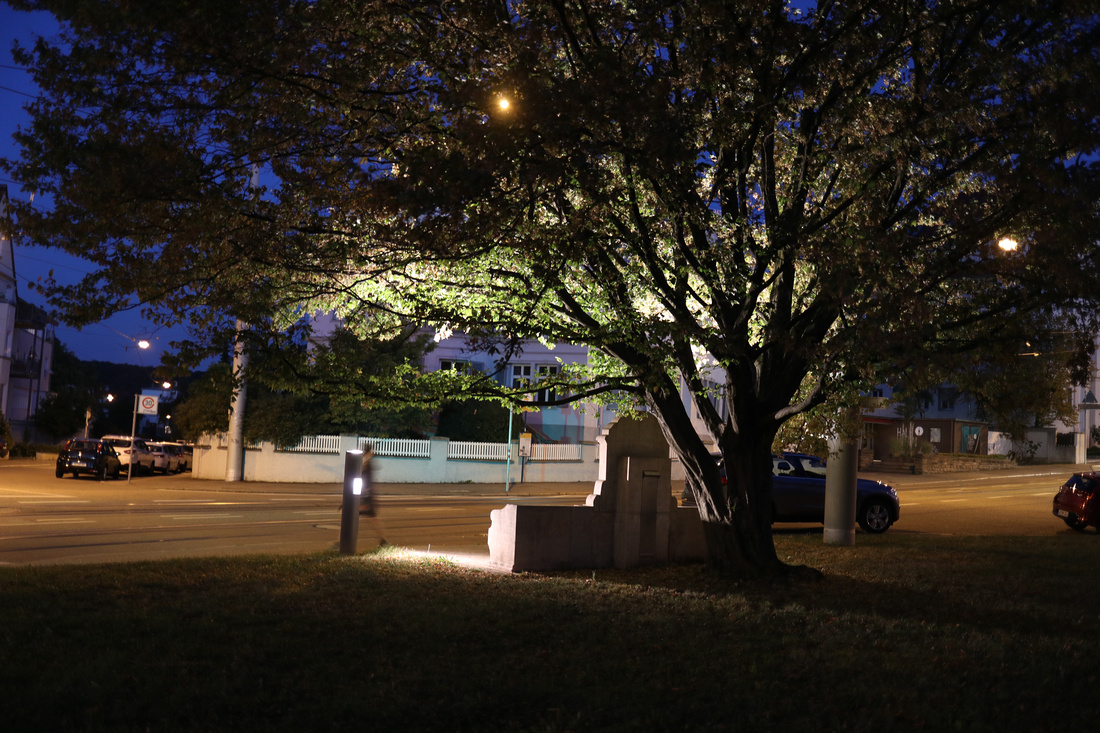
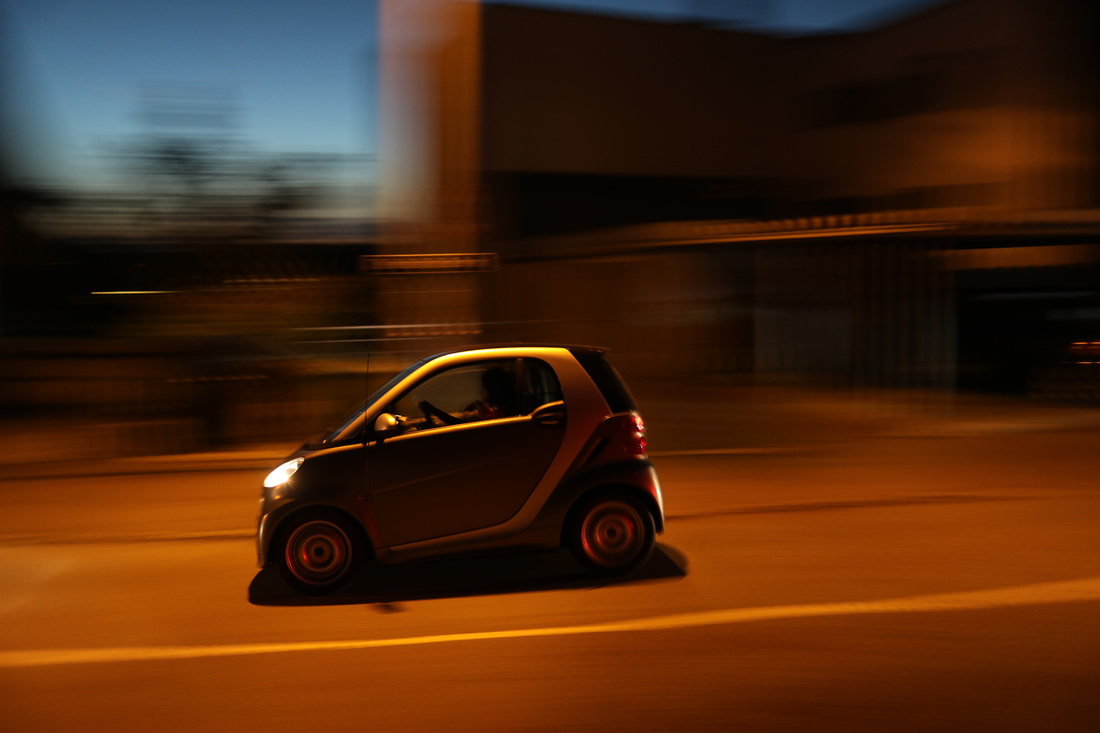
Shooting in Live View... What's that: Panning is easy!!!! And the live view shooting is really compatible to high end mirror less cameras... This is stunning. Normally the live view is the advantage of mirror less cameras. But Canon was faster to bring this performance to DSLR's. And now you have the best of both worlds.... For shooting, for Autofocus and for tracking subjects.... Great.
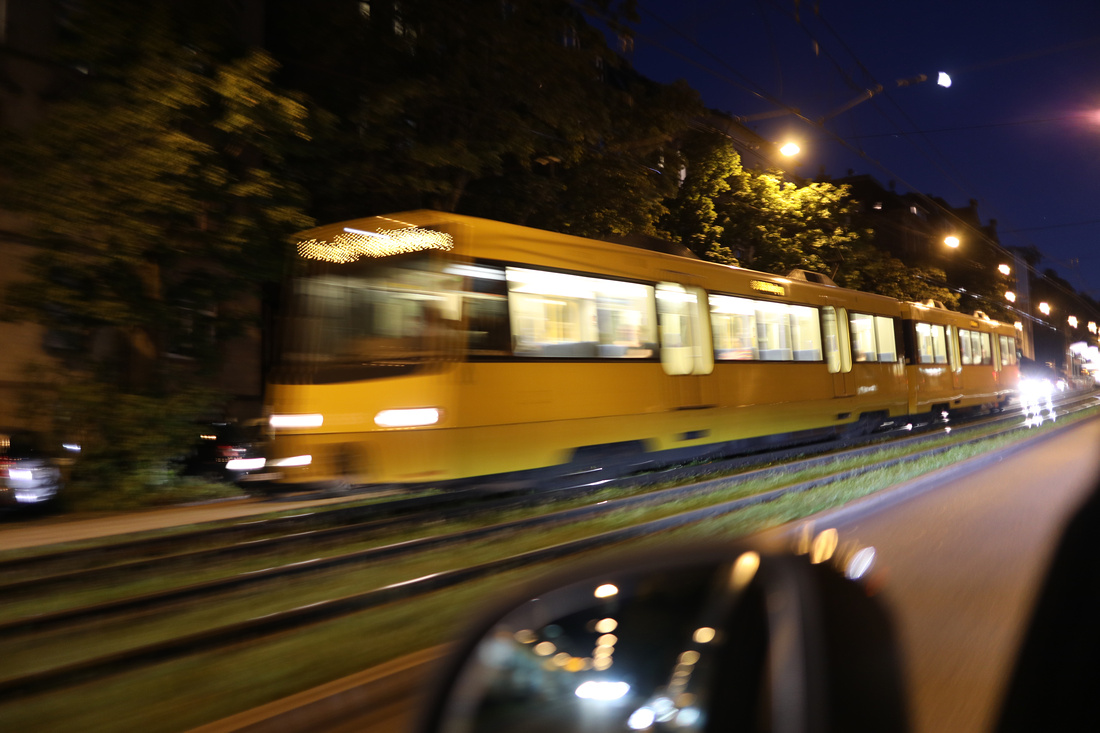
The silent shutter: it is not only silent. It reduces camera shake as well. Therefore it is much easier to archive long exposure times, especially in combination with a lens like the EF 35mm f2.0 IS USM. With the 5D4 the OIS performs really well....
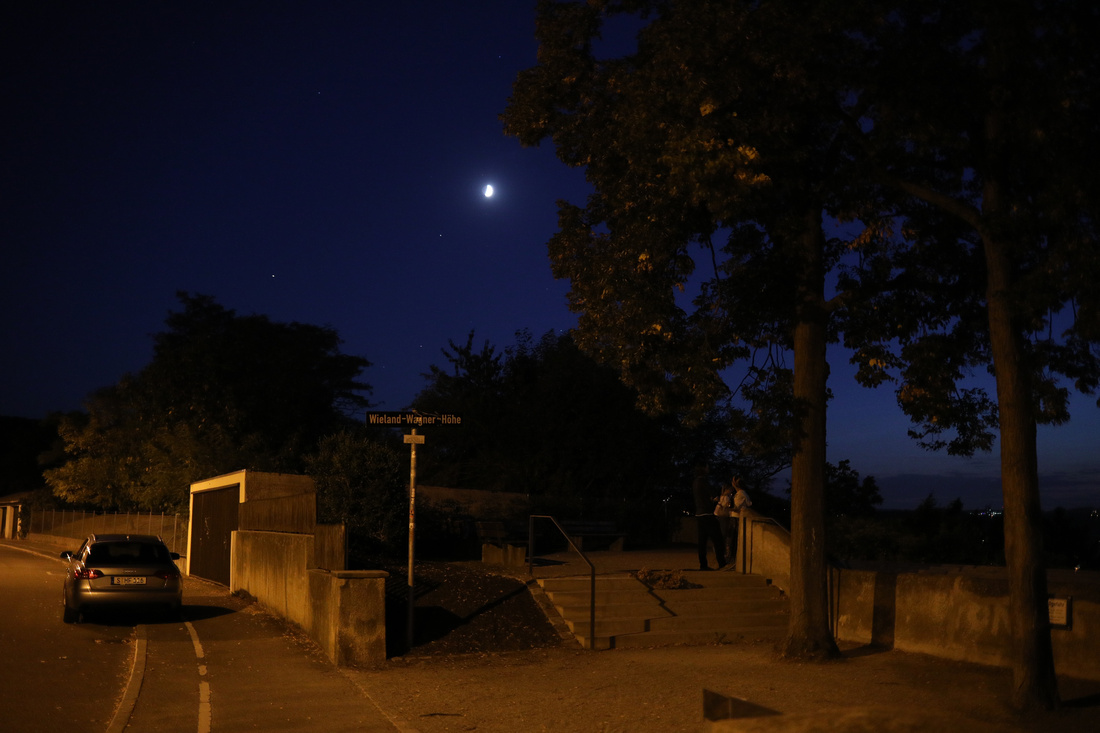
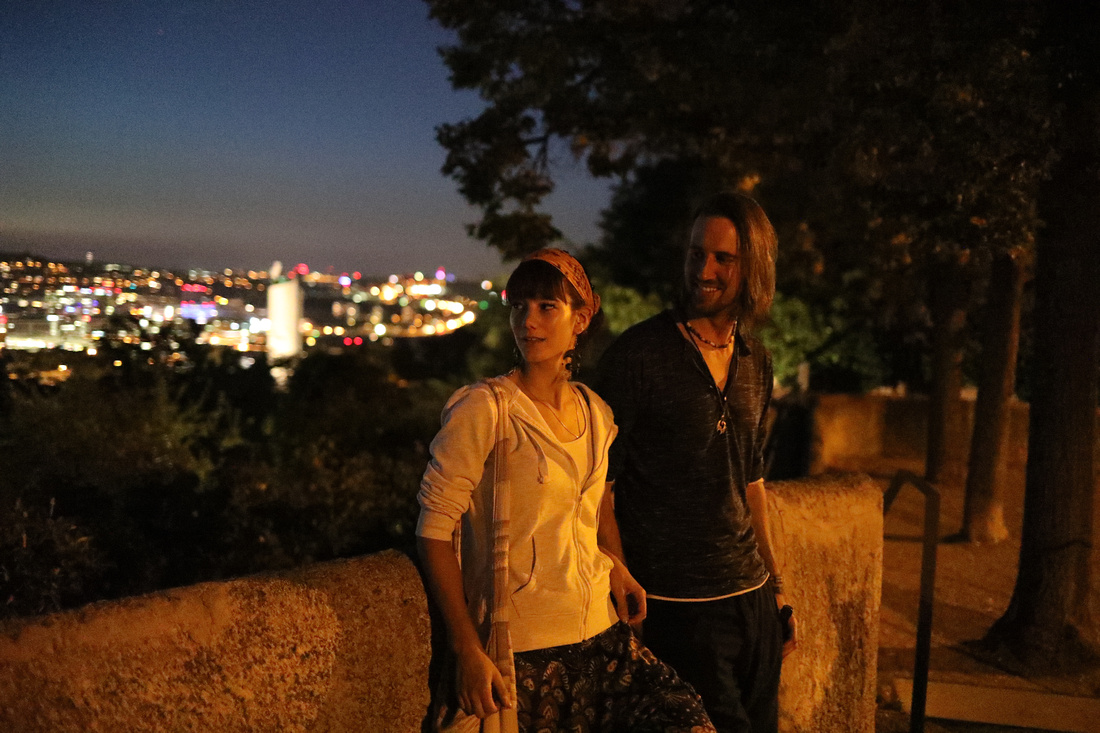
This is a first shot @ 32000 ISO. The lady is a professional model, Nadine Mitter from Munich which allowed me to publish this shot. thank you: I find it pretty impressive: f2.0 and 1/30s....
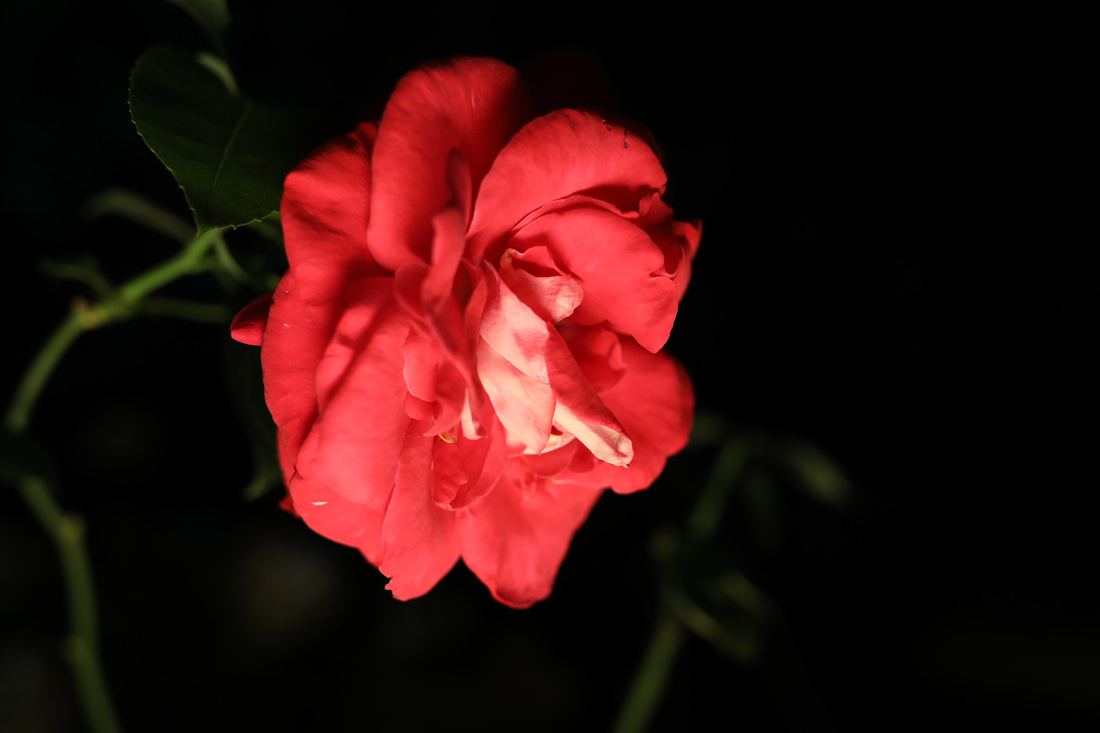
This was it for the first fast impressions. I hope you like it.
I am going to do more intense trials soon. but for the first moment: Yes the 5D4 is a big step ahead. And I am happy to get it now!!!
Credits:
1. Calumetphoto in Stuttgart: Thank for giving me one of the first copies in Stuttgart!
2. Nadine Mitter for the allowance to publish her photo...
]]>
I travel a lot. For Business. The trips bring me throughout the civilized world - mainly into high tech destinations. But I carry camera gear with me. And the compromise in size and image quality should be minim.
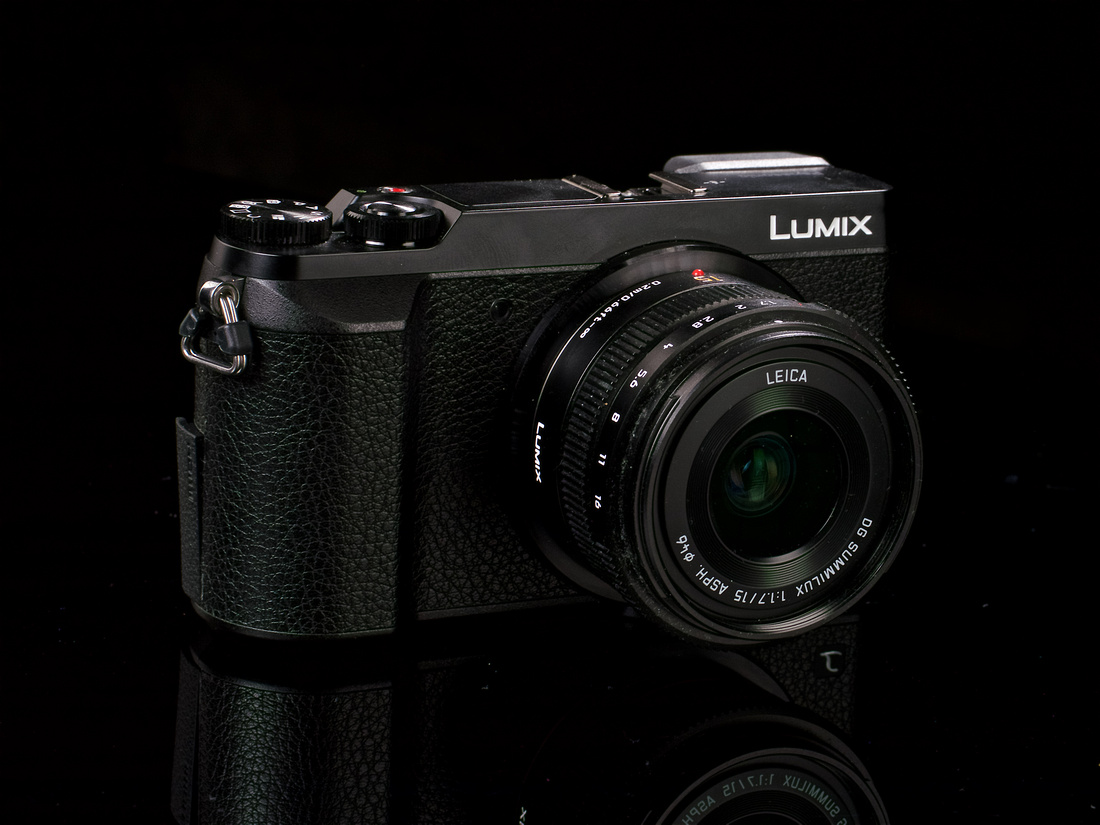
The Lumix GM series is my "always with me" gear - in combination with some excellent glass - typically a collection of the Leica branded lenses... which are awesome by the way. When the rumor came up that panasonic is going to kill the GM product line I decided to check wether the GX80 will fit into my normal bag in which I carry everything.
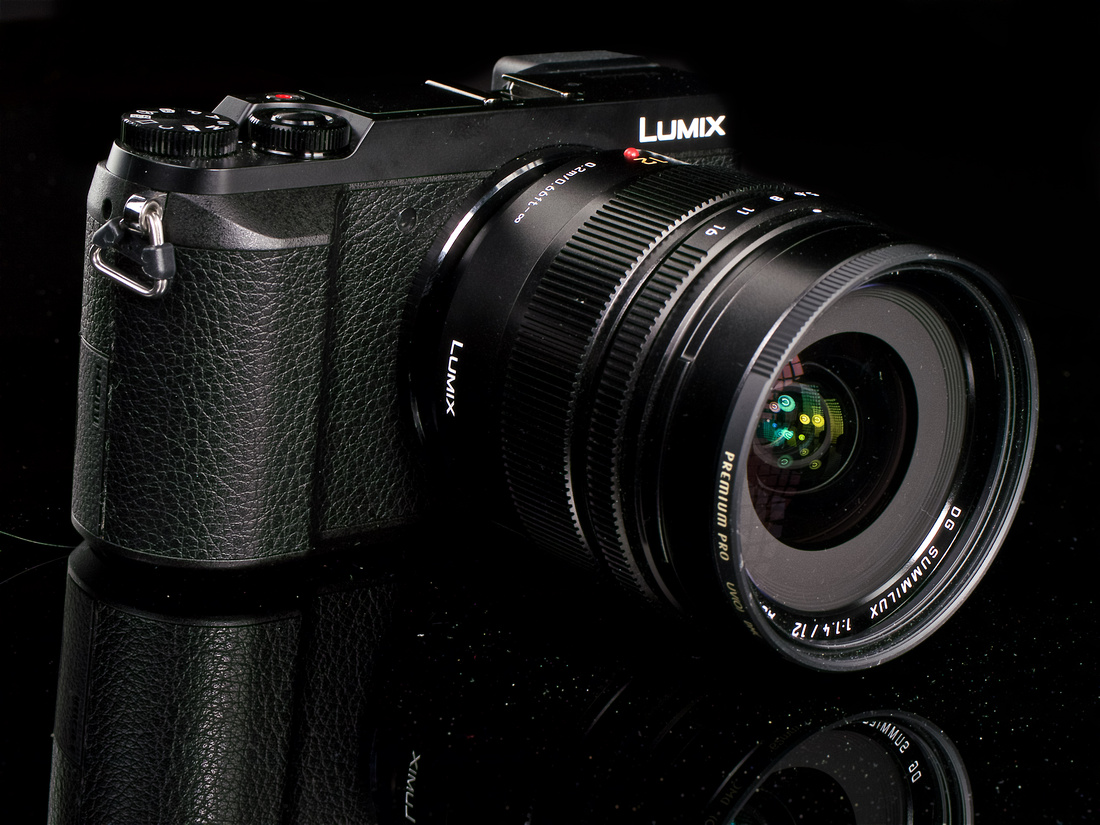
The GX80 is - name wise- a chameleon amon the cameras: In the US it is called GX 85 and in Asia GX7MkII. Why: I have no idea. I work in marketing and sales - but I do have no idea what´s the strategy behind that - sorry to say Panasonic.
But let´s talk about the camera itself. Having the same sensor in 3 different cameras now (GM5, G7 or G70, and the GX85) it is interesting to see how is the handling of the camera and how is the camera working.
First of all: there is a mayor upgrade against both cameras: And this is named IBIS: In Body Image Stabilisation. And the GX85 offers the most sophisticated version of it: It is working together with the OIS, the optical image stabilization.
Body size
Well, the body size is much larger than the body of the GM1 (or the GM5). Here I show some crappy but informative iPhone shots what´s about: the sunglasses compartment of my backpack which I use daily for business...
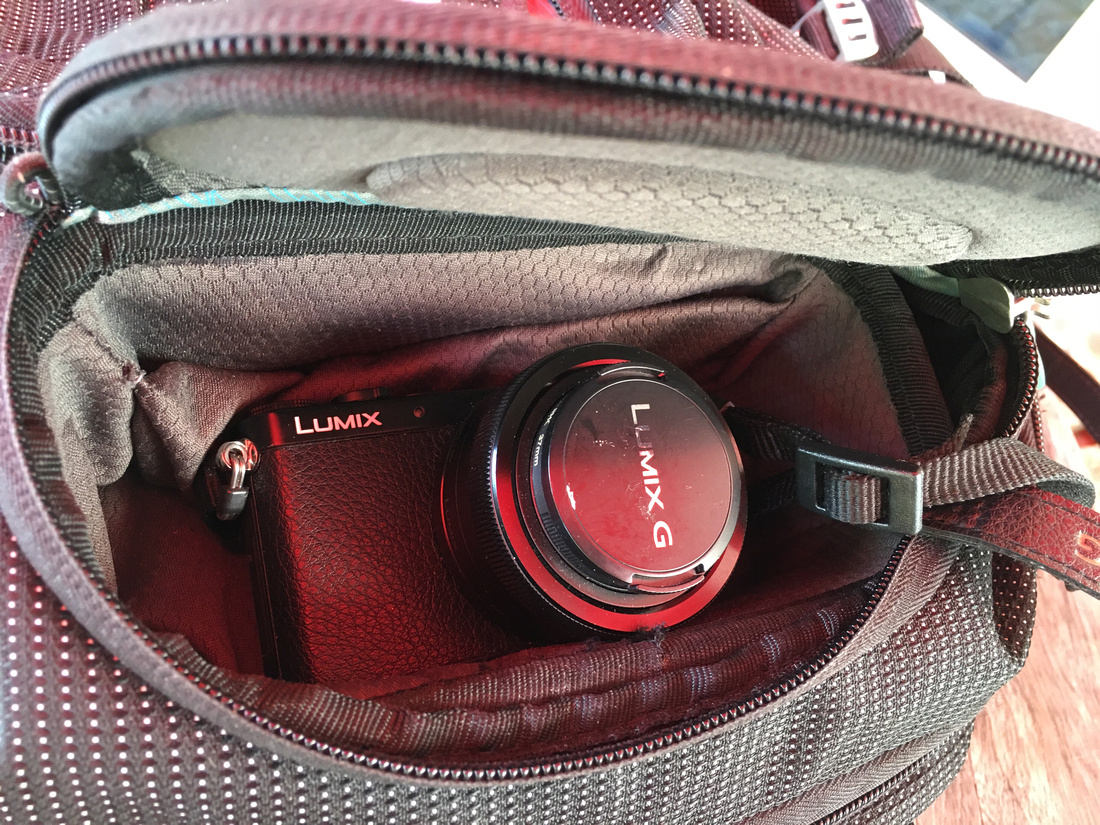
Yes: its seems to be made for a tiny camera like the GM´s.
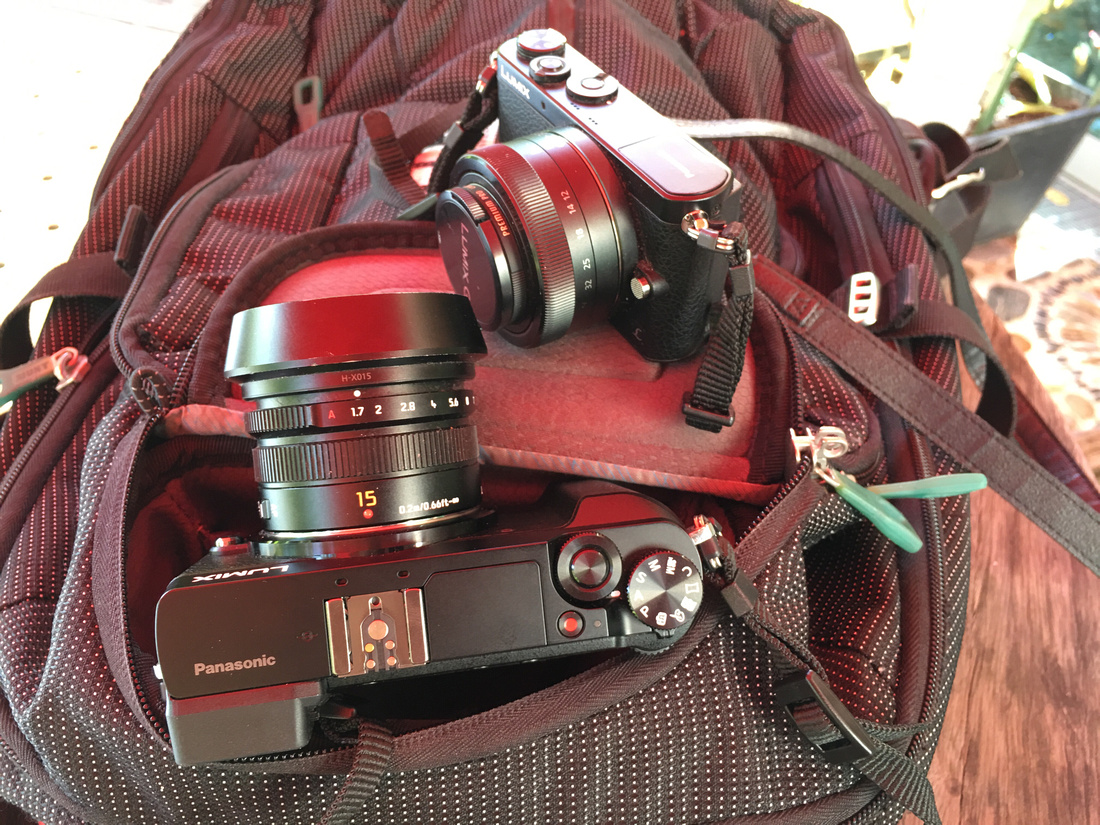 But the GX80 is much more bulky. Especially if the Summilux 15mm f1.7 is mounted - my alway on lens... But it seems to work..
But the GX80 is much more bulky. Especially if the Summilux 15mm f1.7 is mounted - my alway on lens... But it seems to work..

Yes it does. Had my bag with me when I went to my camera store for most of my Lumix stuff... http://www.photo-planet.de There I saw it fits - and bought the body....
Handling
The GX80 lays fairly in your hand. for me the best feeling is still with the G7/70 which fits perfectly. Even it the G7 feels a bit cheap - but the ergonomics are benchmark. For all of my camera gear. Only the GH4 - which I do not own - seems to be a bit better.
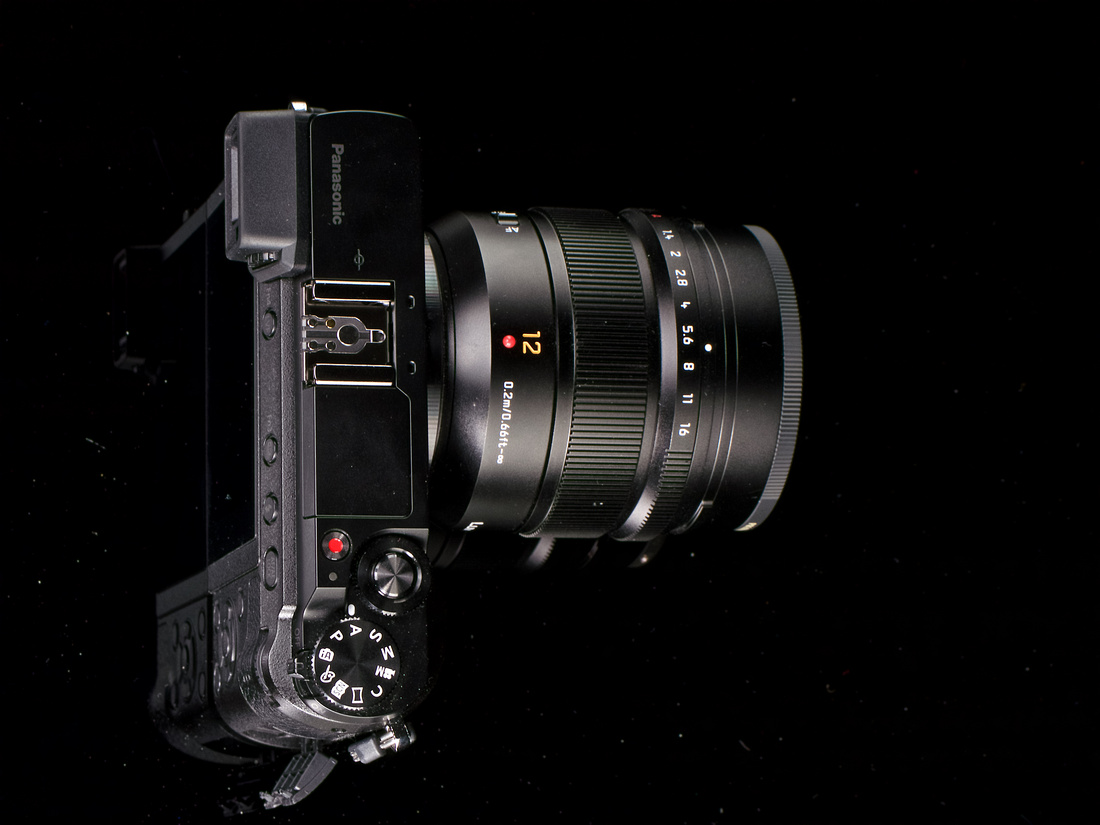
Here on the top view you see most of the functionality of the camera. The mode dial is there and you have the access to the other dials as well: one below the mode dial on the back and the other one is located around the shutter button.
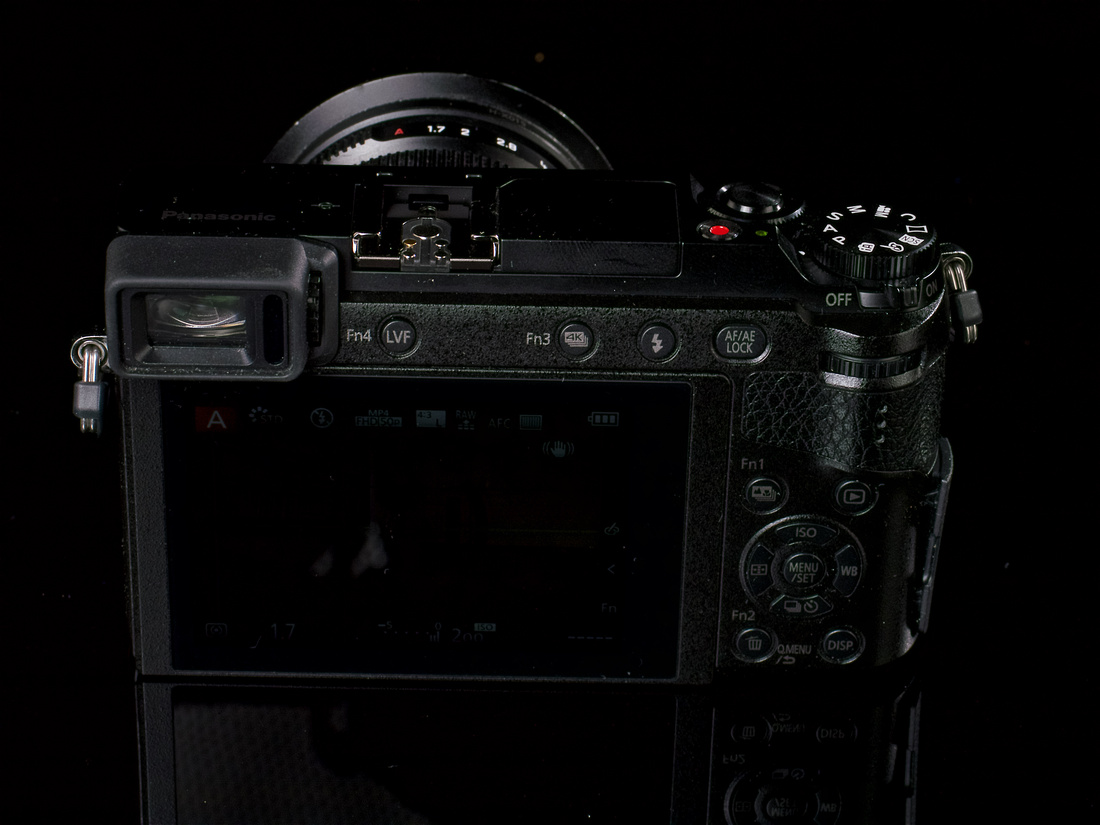
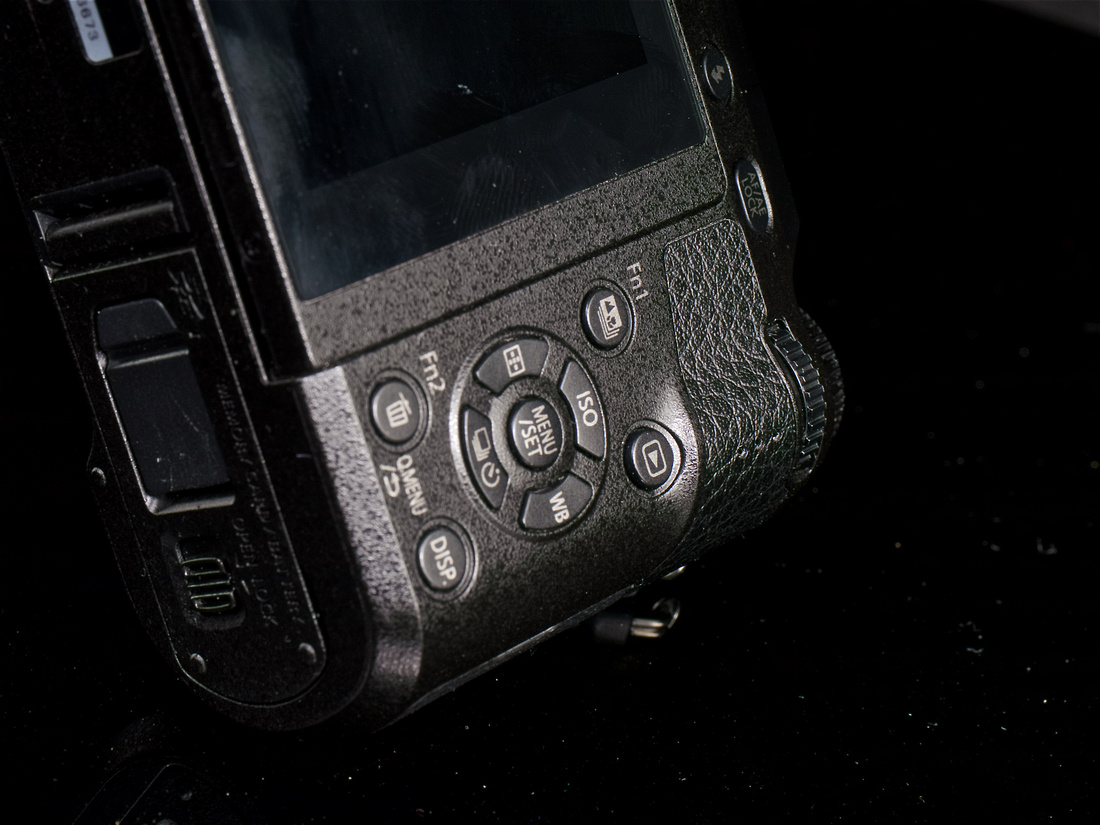
For experienced Panasonic shooters the rear site is pretty well known. 4 function buttons you can program which is great. But I typically leave it as it is. In combination with the logics of the menus and the soft buttons on the screen: well this just works great.
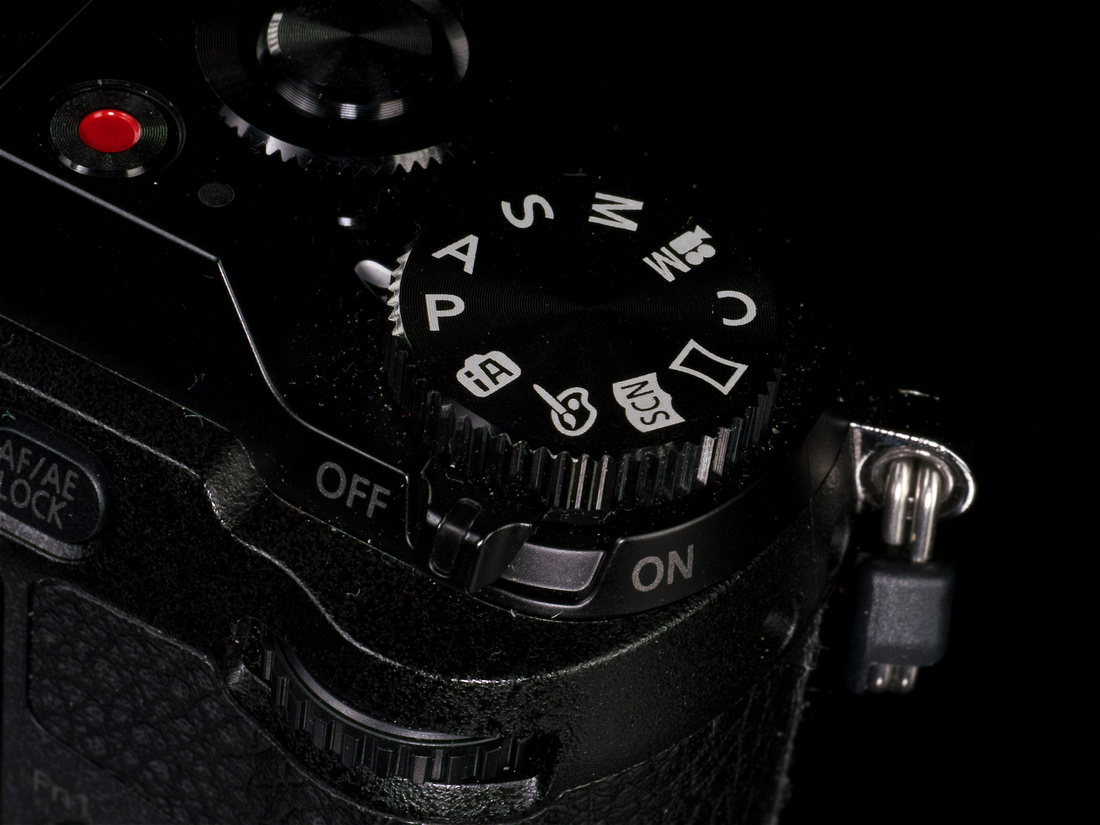
The mode dial. Below the mode dial you see the power switch. And below this you find the rear wheel for adjustments.
The mode dial is easy to use. The switch below: yes it works. But i found while shooting: Whenever I took the camera out of my bag and have it switched on I was in another setting: typically in "S" than "A" or so. Here I miss that button which blocks the dial. The G7 is organized better...
And the rear wheel: it seems to work similar to the other panasonic cameras...
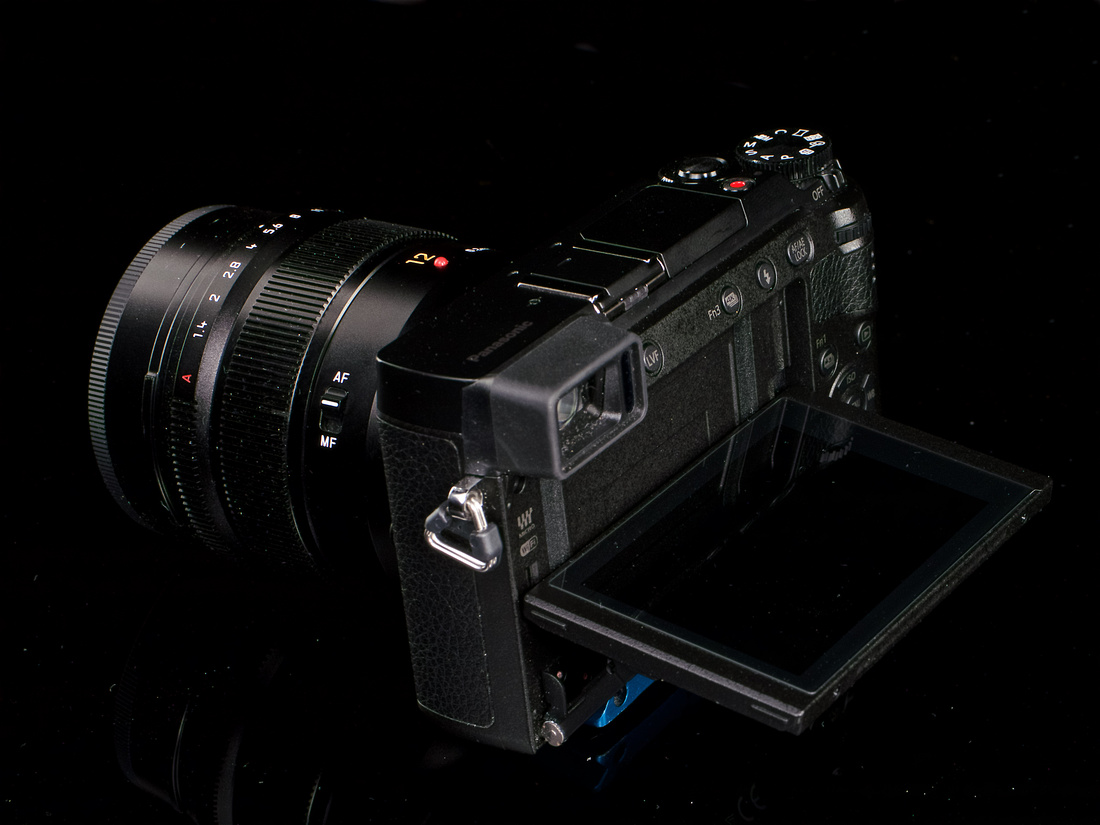
The tilt screen: mmh. on one side: yes a great advantage against the GM - series. But it is only half the way - if you are used to the fully articulated of the G- or GH series: this is how it should be. Here you see the max tilt for the top view.
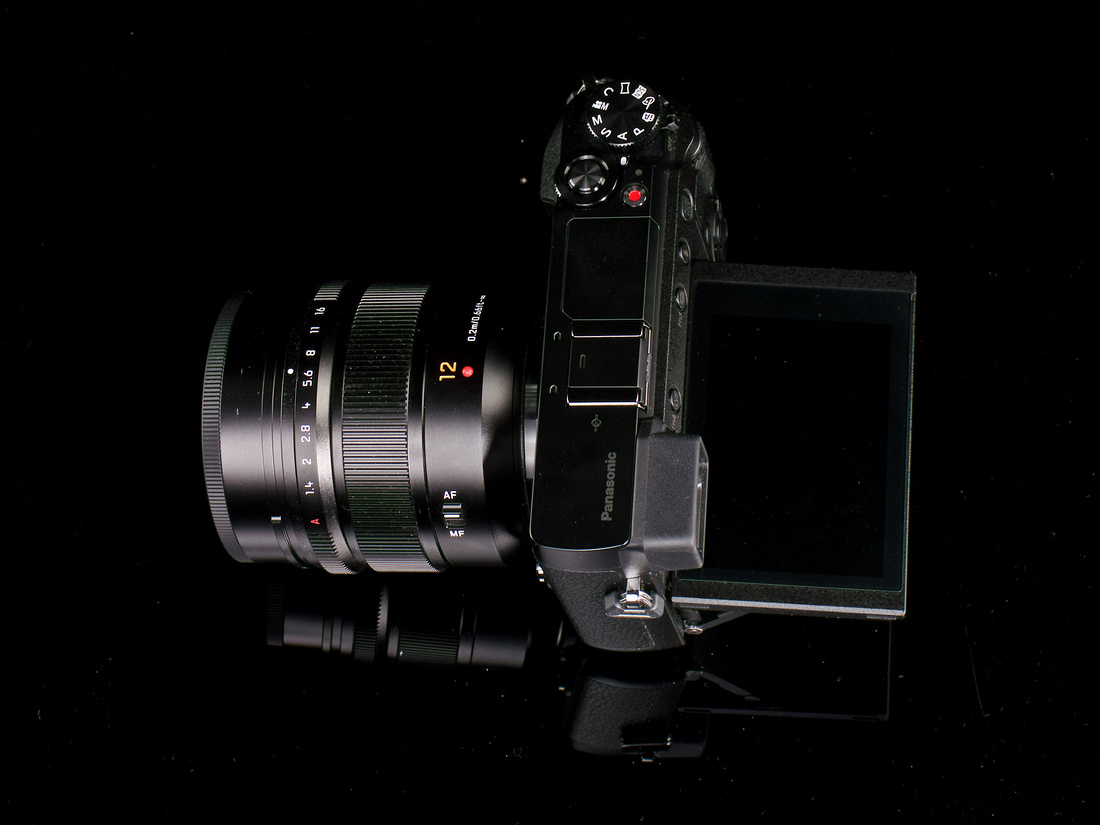

And this is the maximum for the up view: This helps definitely for shots which you make holding the camera up. As well: great improvement over the GM´s... But still half the way against G-/GH- Panasonics...
Connectivity
First of all: the Image App from Panasonic is just great. Meanwhile it works. It replaces a lot of functionality from the camera to the app. For instance: with the Image App the functionality of a cable release: not needed: you can release the camera remote from the app (but honestly: you scarify battery life time...
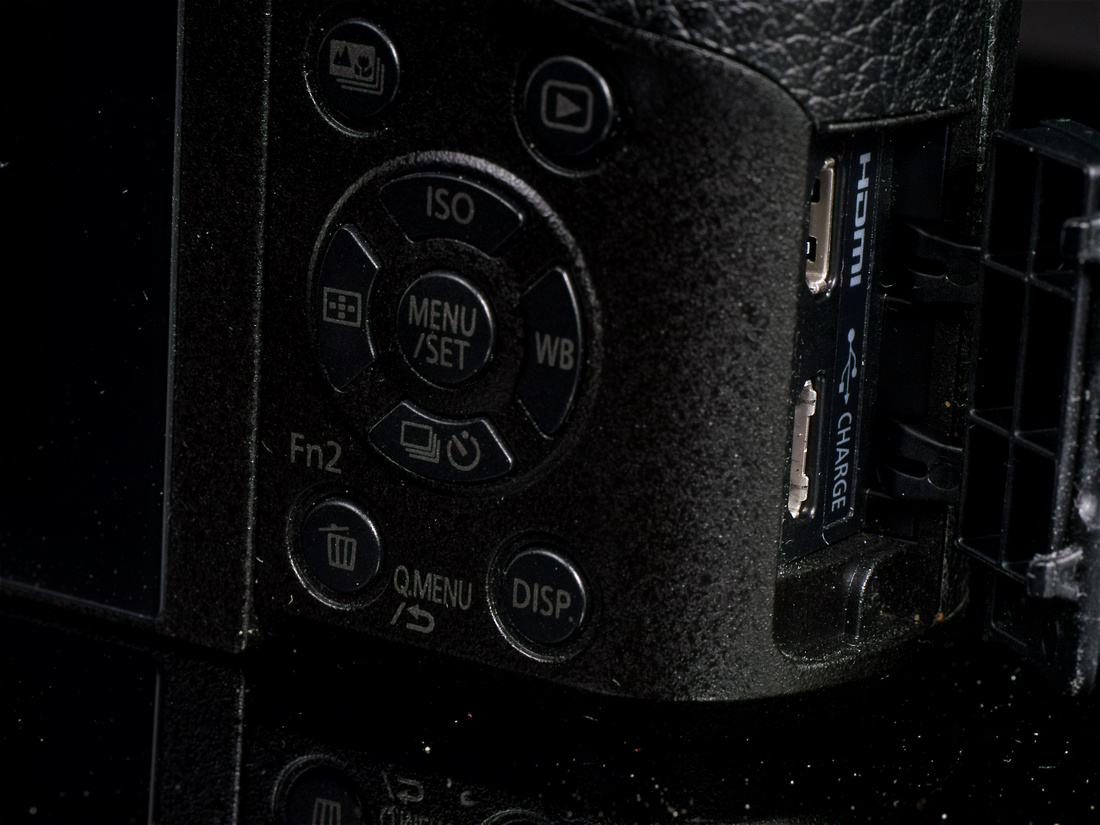
One topic you see in this image: it is possible to recharge the camera with a µ-USP cable. From a docking station, a power bank whatever.. This is nice and great: Whenever you do not shoot: reload the battery. This helps a lot because the battery life time is fare away from being great. And the GX 80 has e specific battery. which is annoying. to some extend....
Viewfinder
The electronic Viewfinder is a big improvement against all others i know. I use it much more often - and it is fun to use.

And - against the GM5- the wheel for the adjustment is back... it works...
Build in Flash
Flash is another improvement against the GM5.

The Flash is little. The position is not optimum: the lens hoods are shadowing the image, even with the Leica 15mm f1.7. But it helps to improve the light conditions.....
Image Stabilisation
One big topic of the GX80 is the Dual IS. The GX80 has the newest version of image stabilization. It stabilizes the sensor in 5 axis - typically called IBIS: In Body Image Stabilisation. But it is able to take benefit of optical image stabilization as well, called OIS: The combination is named Dual IS. Does it work? Yes. I made a simple (?) test:
- I have chosen 50mm focal length for the comparison: My old Zeiss Planar 50mm f1.4 lens, fully manual
- And the Elmarit 45mm f2.8 where I updated the firmware to the newest level to be able to work with dual IS
- I took the G7 as body without IBIS
- And compared if the both lenses on the GX80
- As reference I started with 1/100s: following the classical rool: the effective full format focal length in mm is the shutter speed you should be able to hand hold. And than i stopped down: 1/50th, 1/25th up to 1/3.2....
- I made 3 series: close by, medium range as well as infinity.
- For each setting I took "only" 10 images.... totally 720 photos... Maybe not enough for a scientific evaluation but it gives you an impression....
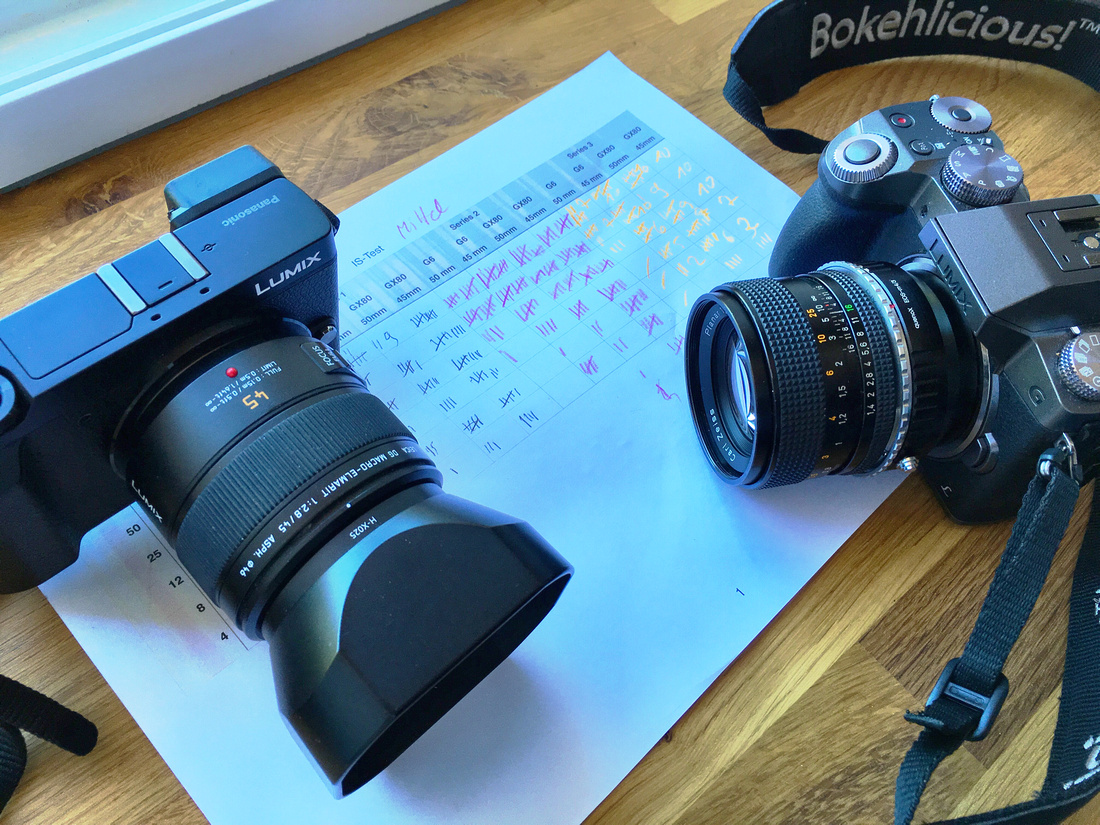
And here is the result:
|
|
Summary |
|||
|
camera |
G6 |
G6 |
GX80 |
GX80 |
|
time |
50 mm |
45 mm |
50mm |
45mm |
|
100 |
83,33 % |
96,67 % |
96,67 % |
100,00 % |
|
50 |
73,33 % |
83,33 % |
83,33 % |
96,67 % |
|
25 |
33,33 % |
56,67 % |
86,67 % |
96,67 % |
|
12 |
10,00 % |
43,33 % |
53,33 % |
73,33 % |
|
6 |
3,33 % |
23,33 % |
43,33 % |
53,33 % |
|
3 |
0,00 % |
10,00 % |
30,00 % |
43,33 % |
|
Summary |
33,89 % |
52,22 % |
65,56 % |
77,22 % |
Or graphically:
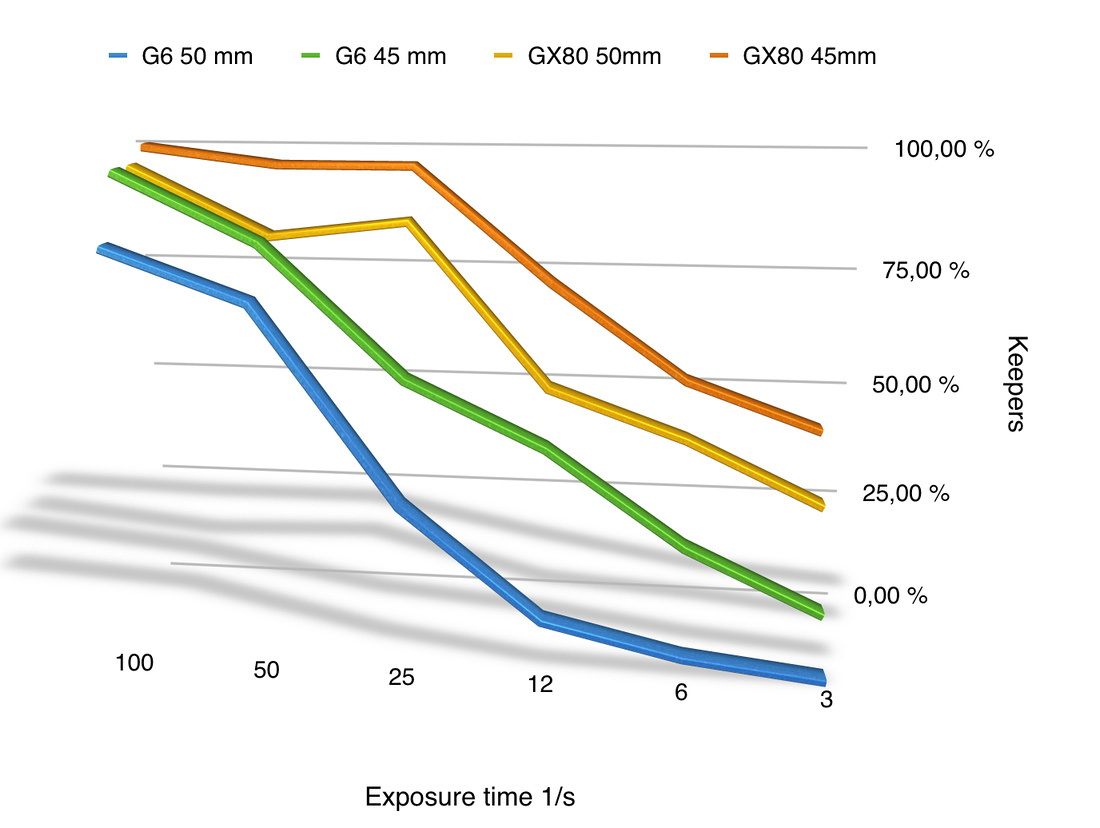
I am not a shooter with the most reliable fix holding of a camera. But it shows some points very clear:
- OIS works
- IBIS works even better
- Dual IS tops it all!!!!
Believe me: The dual IS is a feature which is really convincing: It´s a game changer. It allows you to take photos in low light at lower ISO-levels which brings you closer to larger sensor formats.
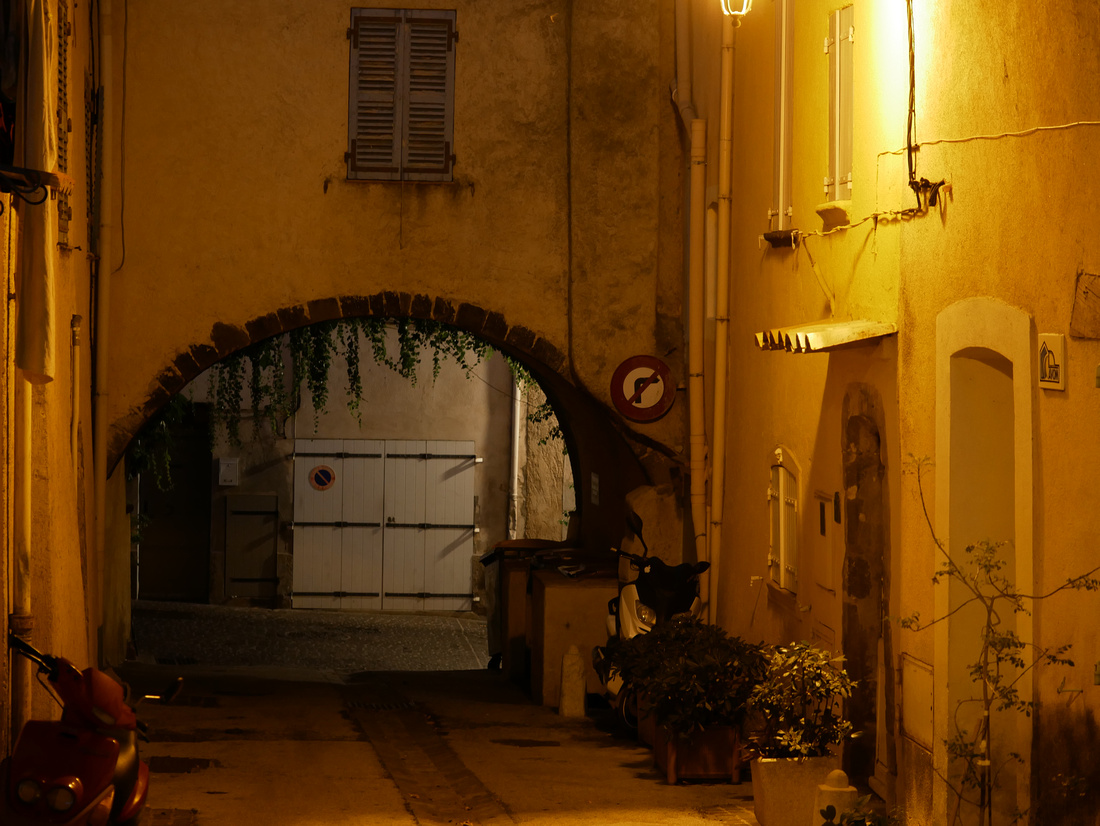
Shot with the ELMARIT 45mm f2.8@ 1/5s...
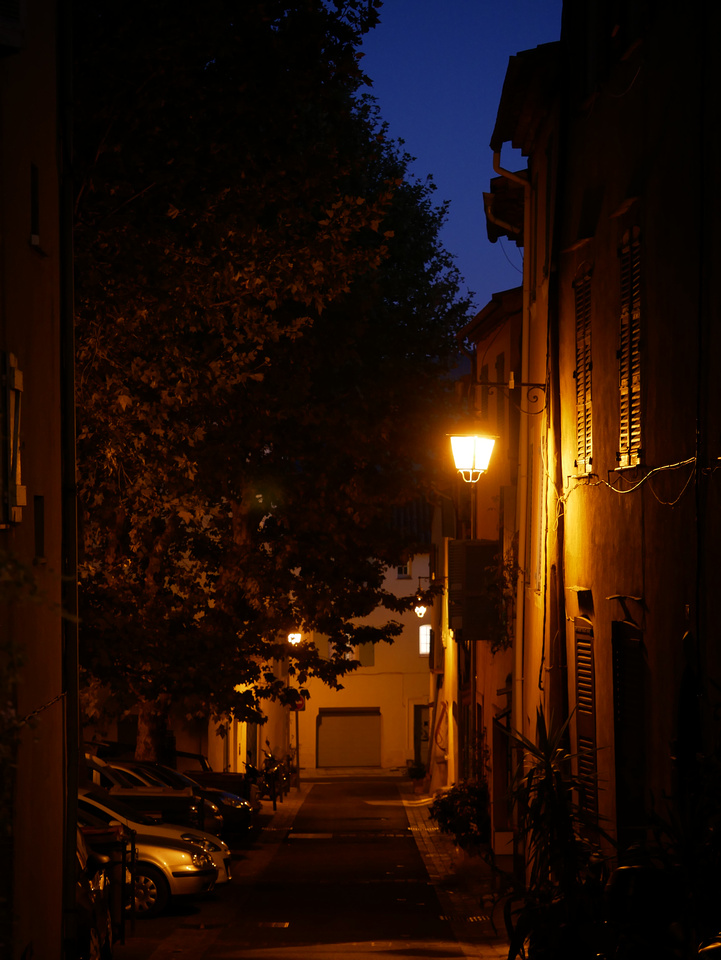
Again the Elmarit 45mm f2.8 but with 1/8th of a second.....
Sample Shots taken with the GX80
The GX 80 delivers. Here are a couple of shots i made with it recently: You will find these shots in the sample shots for the 12mm lens shoot out as well as in the (upcoming) review of the Nocticron 42.5mm f1.2....
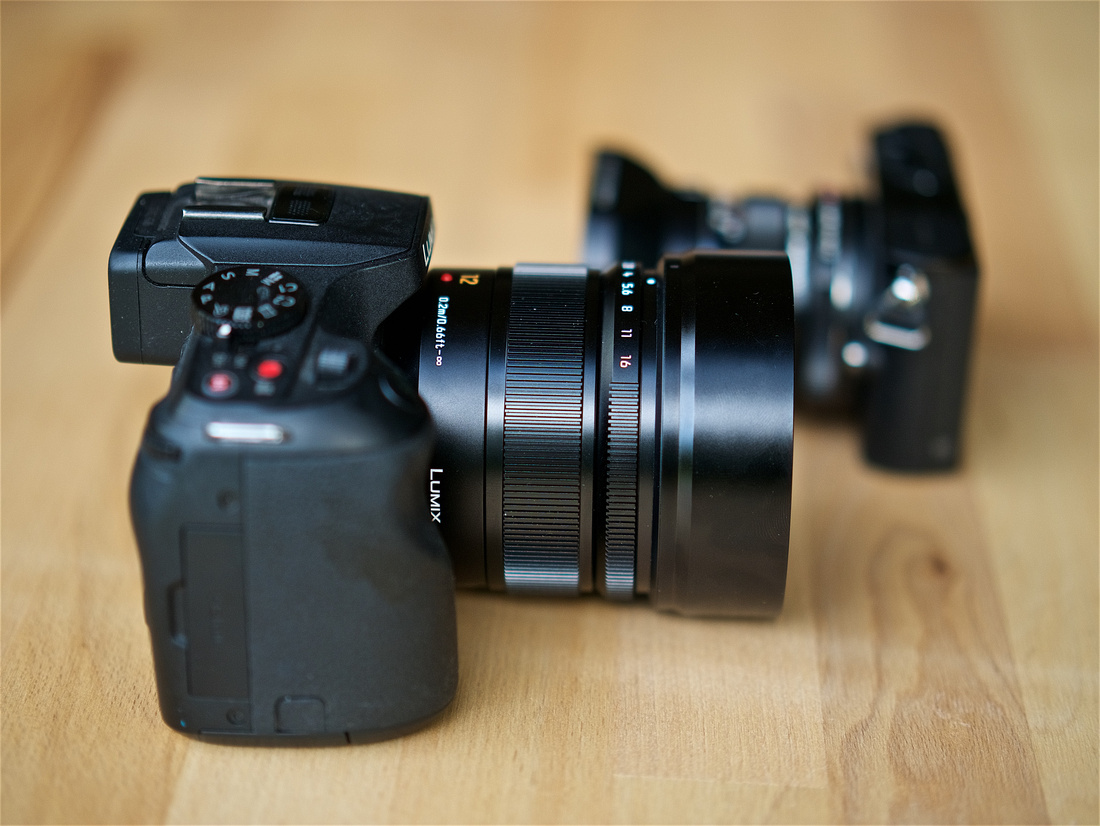
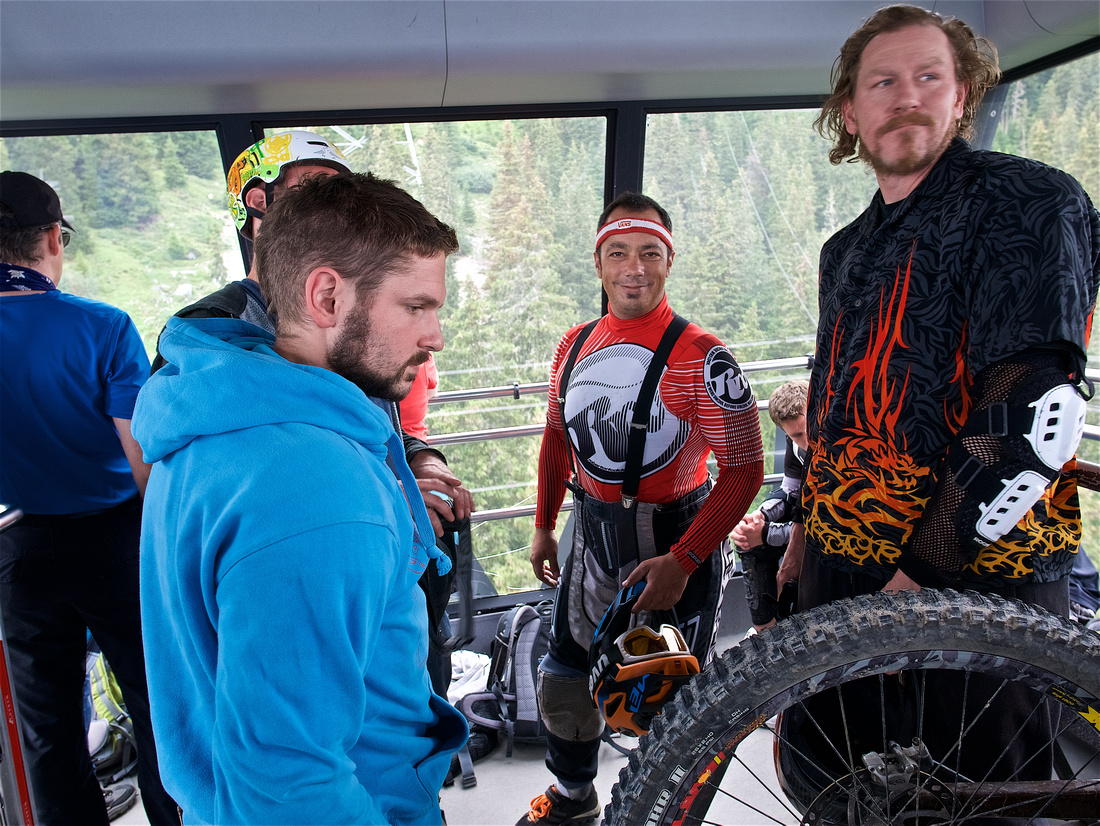
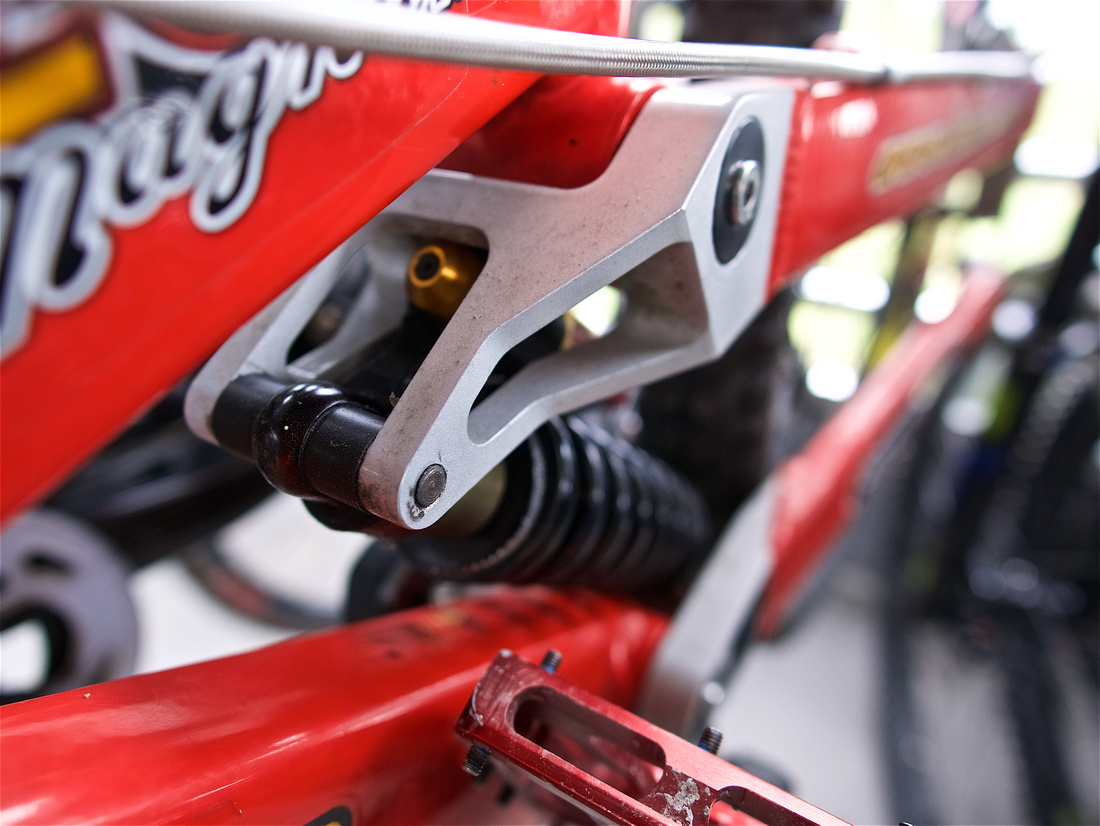

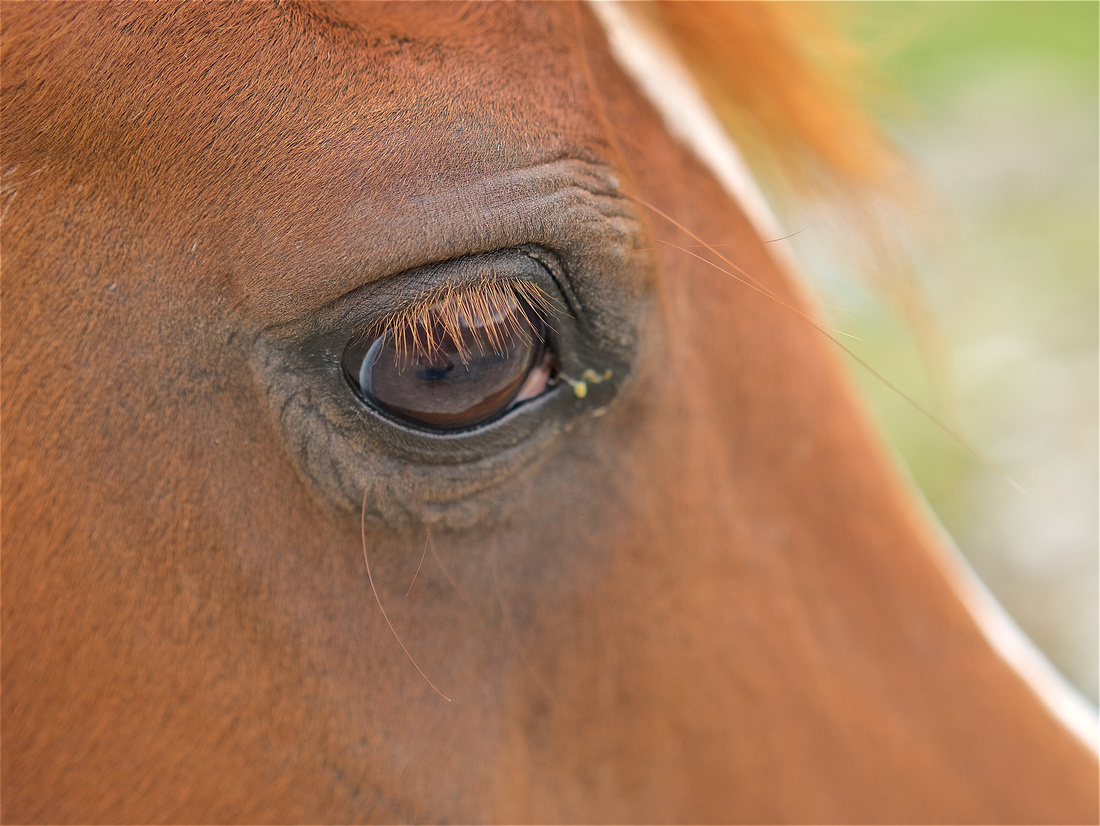
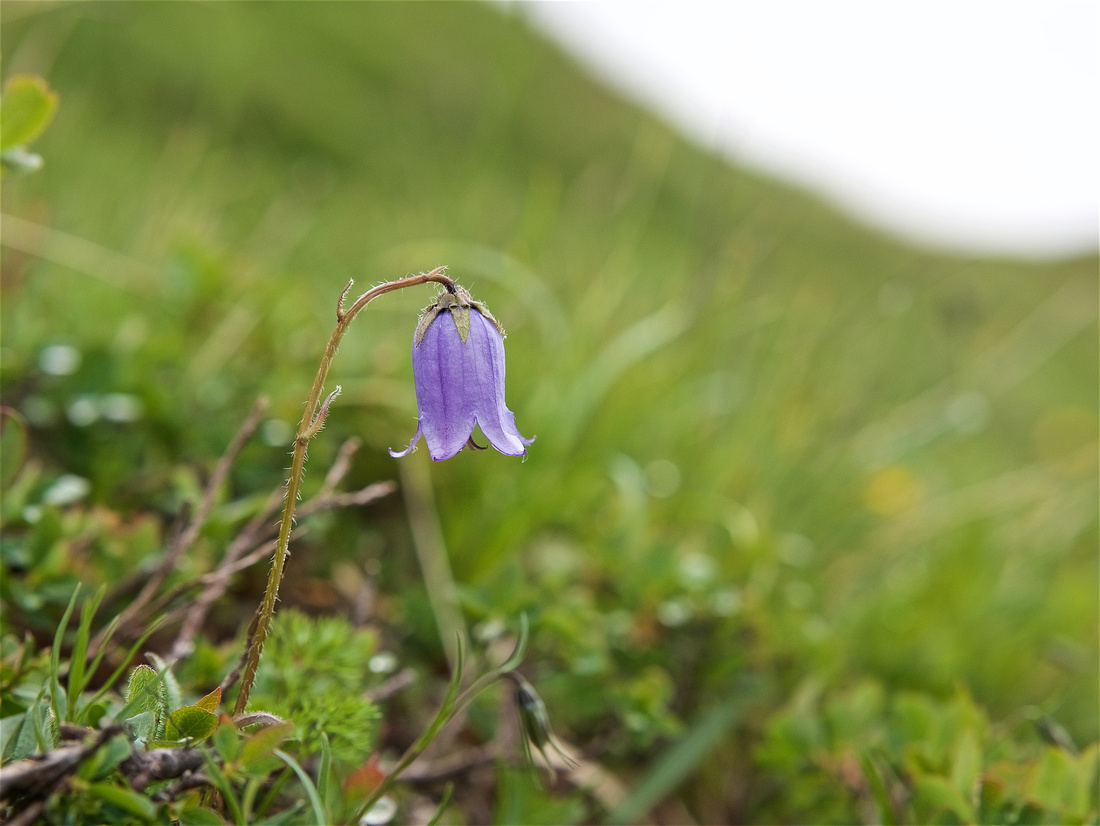
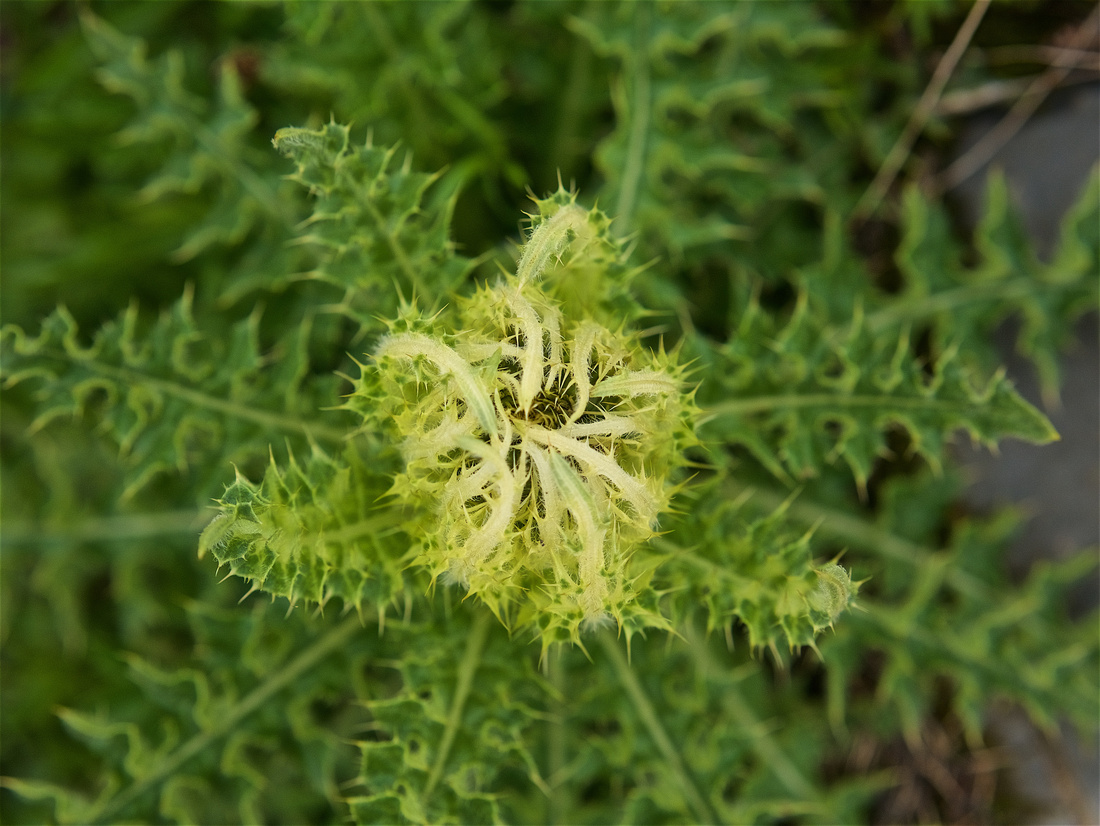
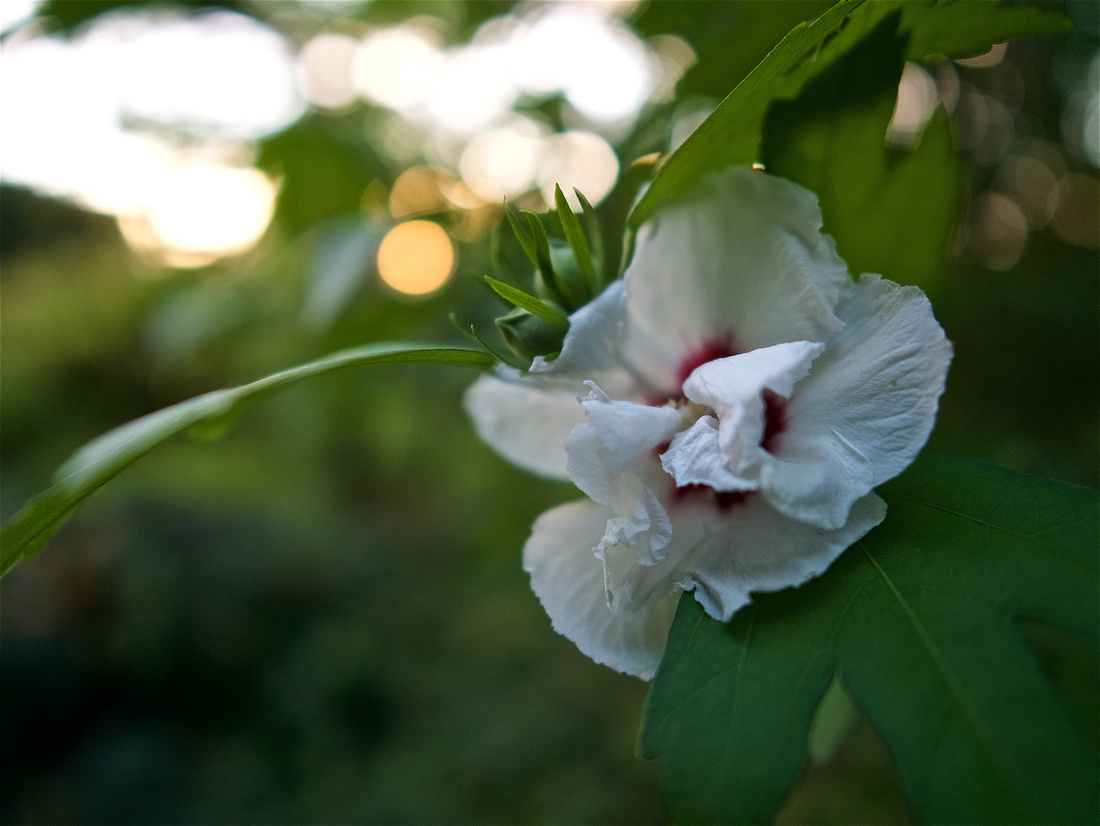
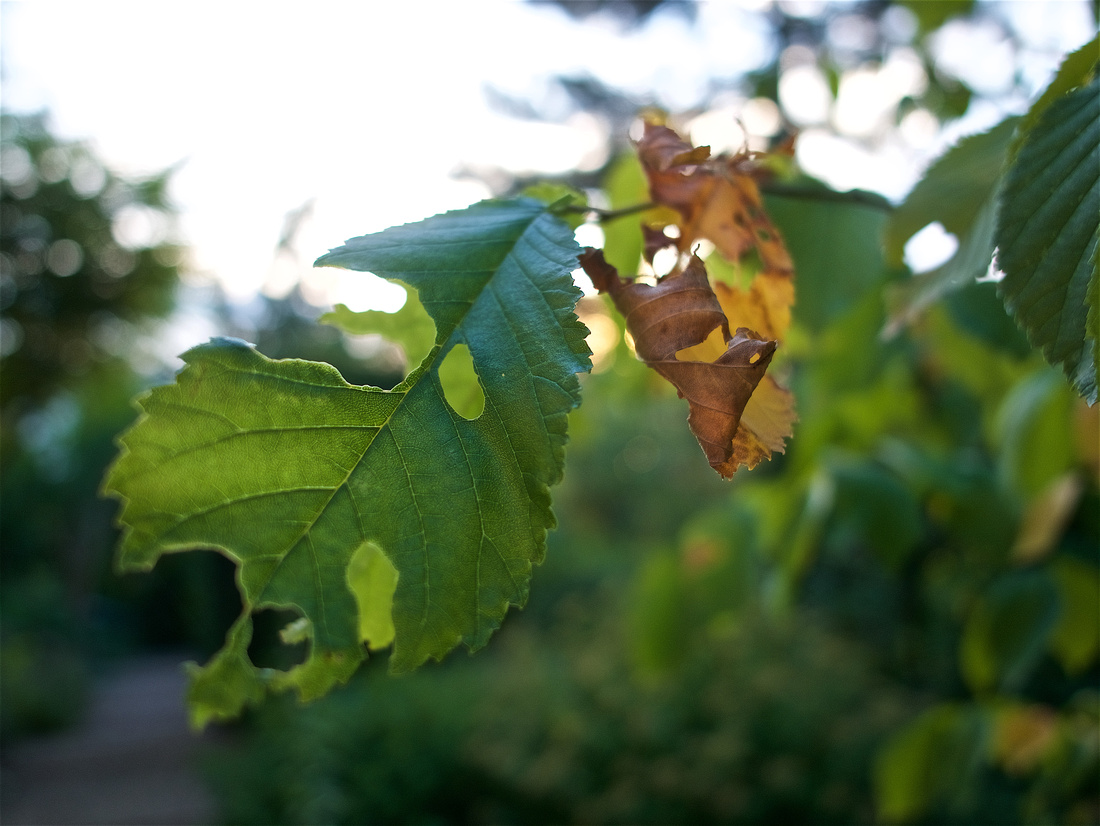
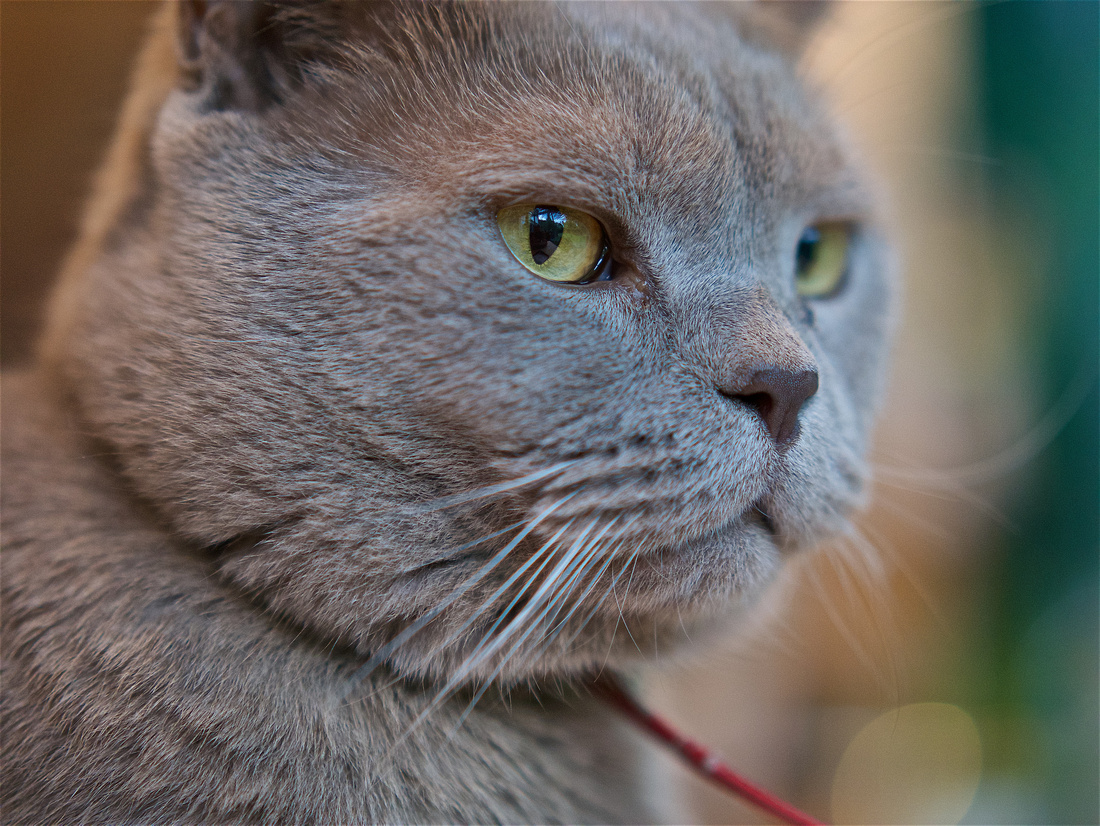
I think these photos are speaking for themselves....
Video
I am not a video guy. really not. But sometime I do it. On Family events or in special occasions. Like the one I did recently:
In this case: the video was shot with the Nocticron 42.5mm f1.2: pretty challenging under these lighting conditions... (EV2...)
For me the slight focus hunting at the is not perfect, but I can live with it... I hope the musicians can live with it too ;-)
The shooting experience is great: it is really fun and easy to use: a real appetizer to do more video stuff.. especially with high end and fast lenses.
Complains
If you have light you will have to face shadows, too. there are a couple which you cannot work around:
- battery lifetime
- missing HDR possibilities
- mode dial is not fixable.
Especially the missing HDR feature sucks: it is just 2 or 3 lines of software. easily upgradeable with firmware: please do it panasonic.
Verdict
The GX80 (or GX85 or GX7 MkII - where ever you are) is a great camera. The Dual IS is a killer feature! A must have! Period! It opens new possibilities for street photography in the blue hour....
The rest: it is another great µ43 camera. It is definitely worth the money. The ergonomics: well here is some space for improvement, but considering the price point: This is a really fair package.
Additional Remarks
Most of the photos of the camera were taken with the Lumix G6 and the Elmarit 45mm f2.8. The photos of the camera in the bag were taken with the iPhone 6splus.
Here is the link to the product shots:
http://delightphoto.zenfolio.com/p750171302
And her for the sample shots:
With the Nocticron 42,5mm f1.2: http://delightphoto.zenfolio.com/p393688581
With the Summilux 12mm f1.4: http://delightphoto.zenfolio.com/p830433512
]]>
While the Oly 12mm is on the market since couple of years (June 2011) the PanaLeica lens hit the market a couple of days ago (August 2016). If you compare the lenses there are a couple of things which give you a major differentiator:
- Size
- Weight
- Price
So: is the new kid in the block with the money? Does it make sense to get the Leica instead or in addition to the Oly?
Let´s find out.
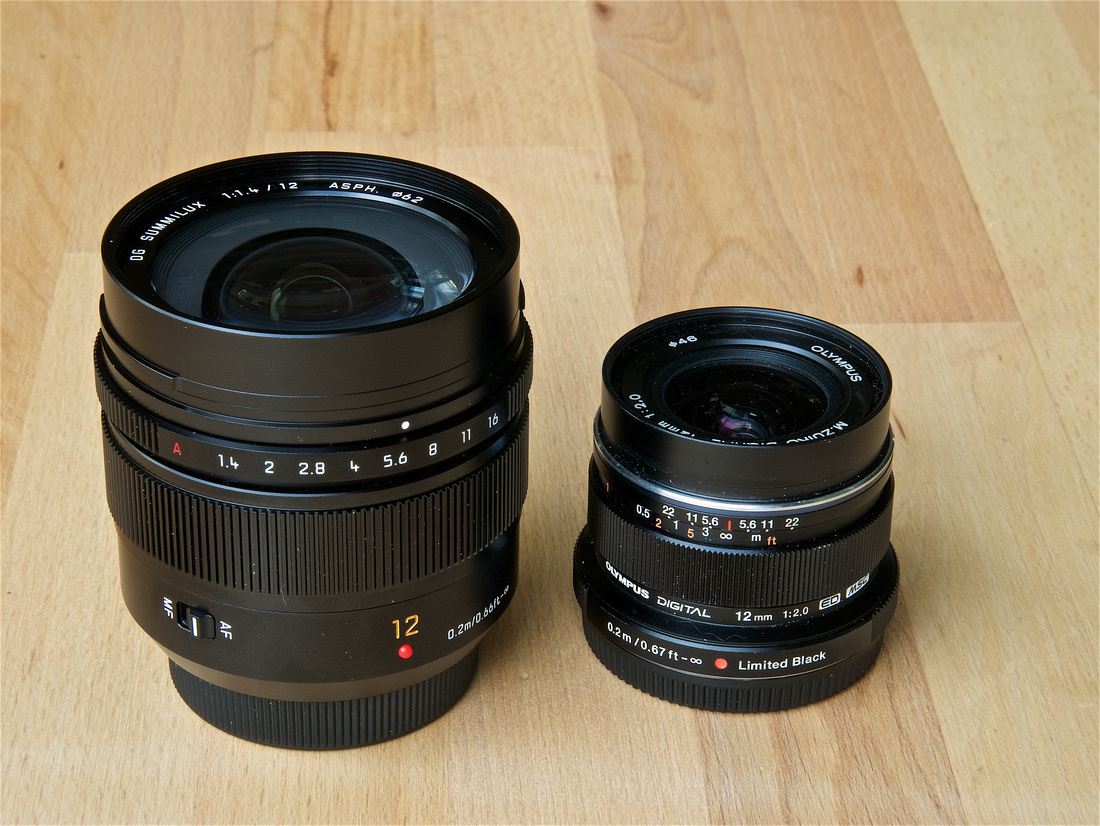
The direct comparison between the 2 lenses: the Leica on the left and the Olympus on the right.
Lens Design and Build Quality
Let us start with the feeling when you have the lens the first time in your hand: both lenses are excellent built. they look full metal and event the lens hoods have am metal design as well.
- The main difference is the size and weight. The size you can see, but the weight is 335g vs 130g...
- But in terms of usability there is a 2nd differentiator: The Leica lens offers a manual aperture ring and the Oly offers a manual focal distance ring - which is made in a superb way.
- Dust and weather sealing: the Leica is the Oly is not.
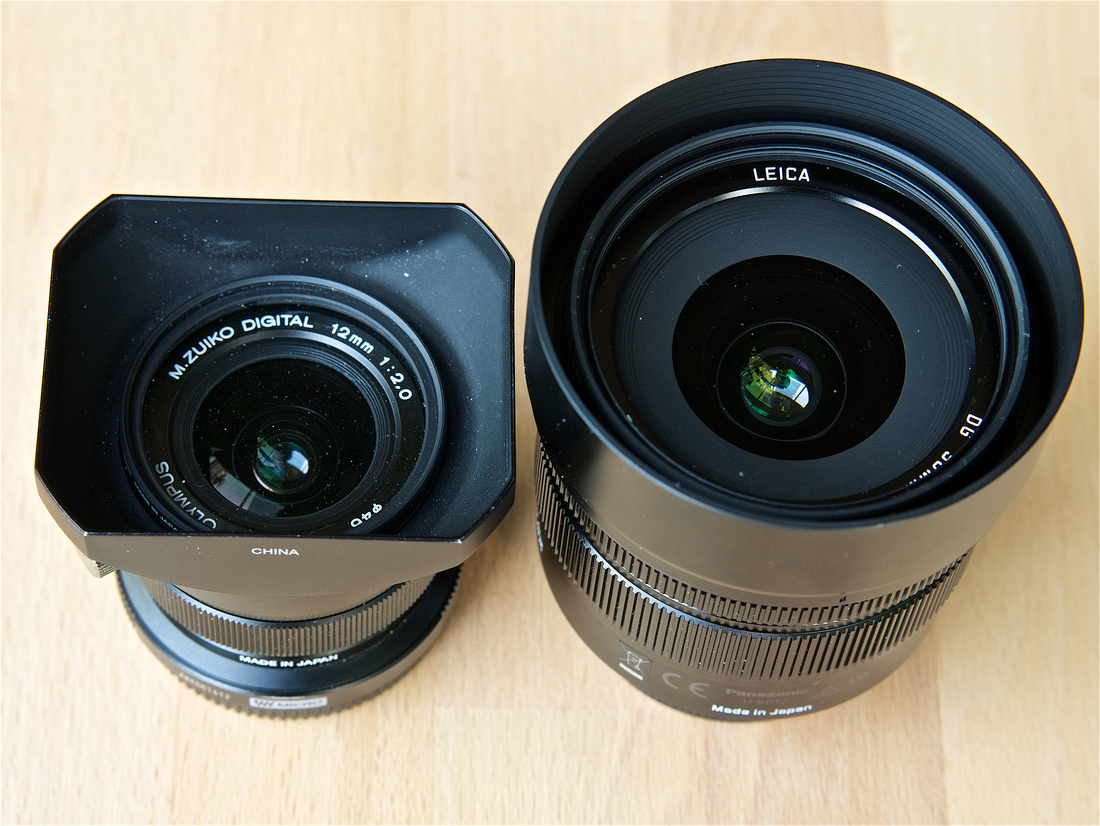
The top view shows you the different styles of lens hoods: both are working and the only one is making the lens relatively a bit larger than the Leica lens hood does.
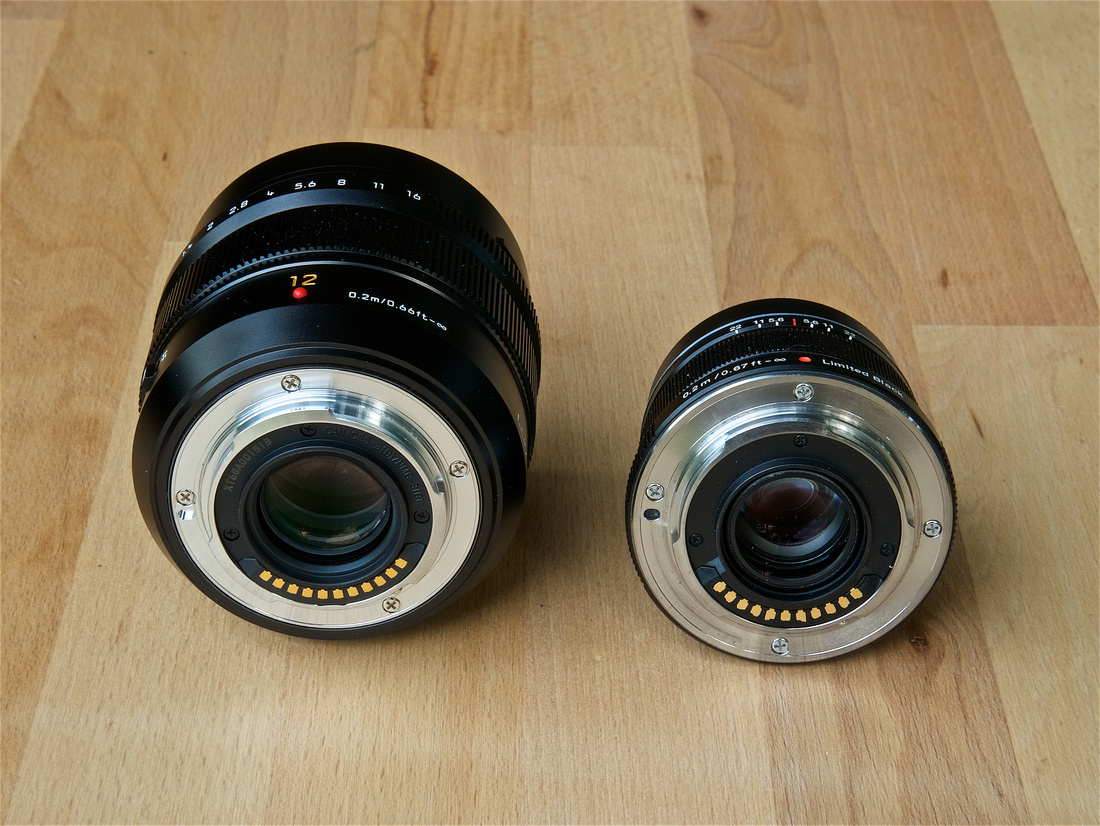
On the rear side you can see the little rubber ring which indicates the dust and weather sealing of the lens. A feature which i would expect at the Oly as well because its price tag is pretty high as well - in absolute figures.
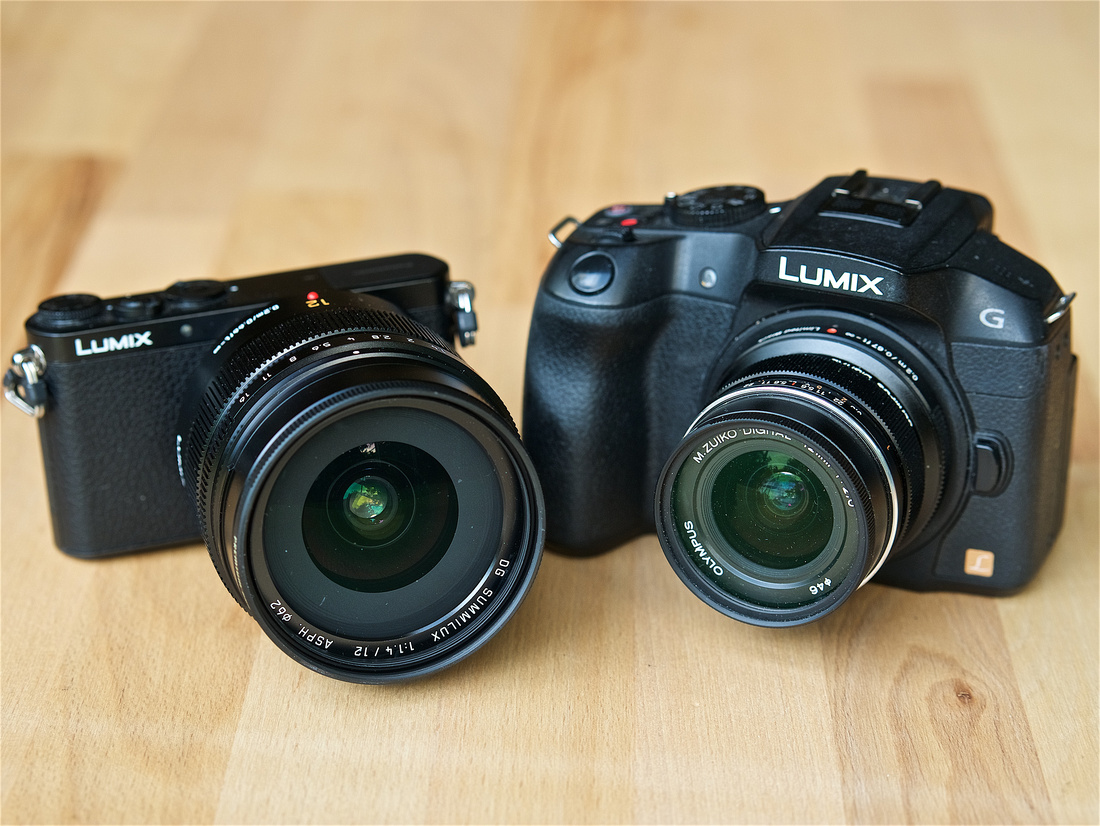 The Leica lens looks quite funny on the little GM bodies like the GM1 above. just a bit oversized. The Oly lens is really nice and tiny...
The Leica lens looks quite funny on the little GM bodies like the GM1 above. just a bit oversized. The Oly lens is really nice and tiny...
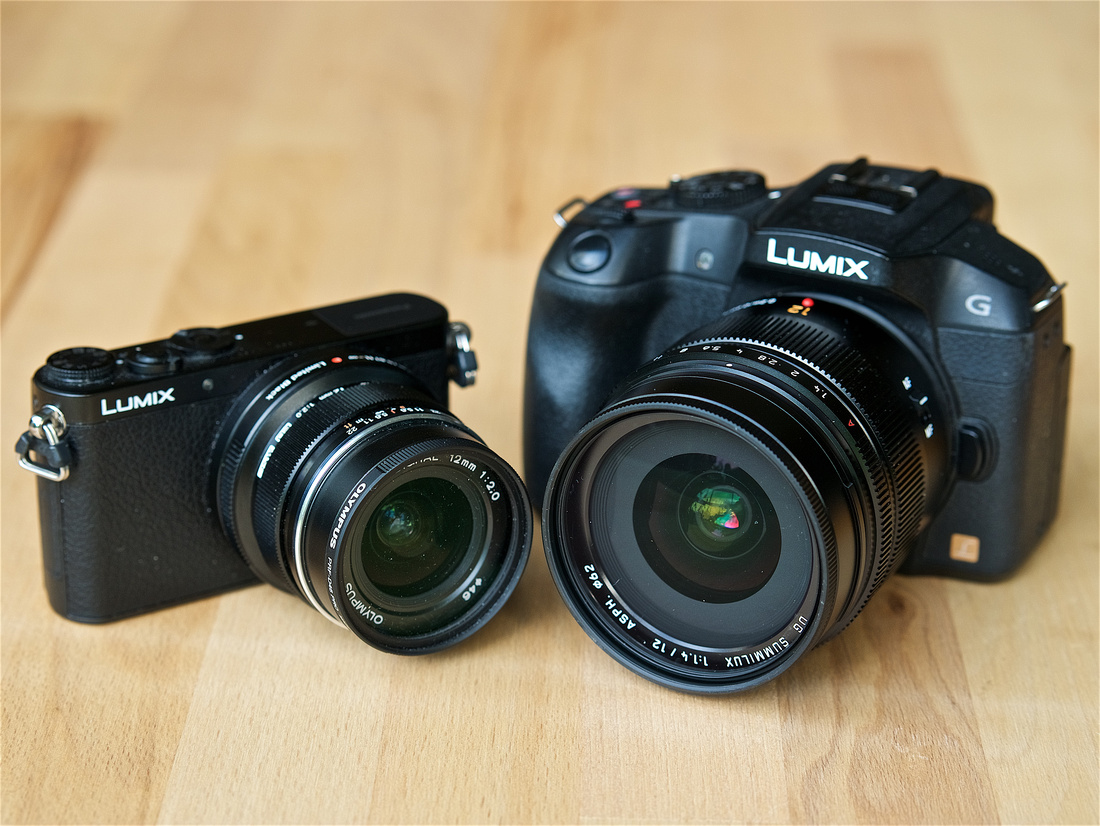 The other way around everything looks much more reasonable I would say.....
The other way around everything looks much more reasonable I would say.....
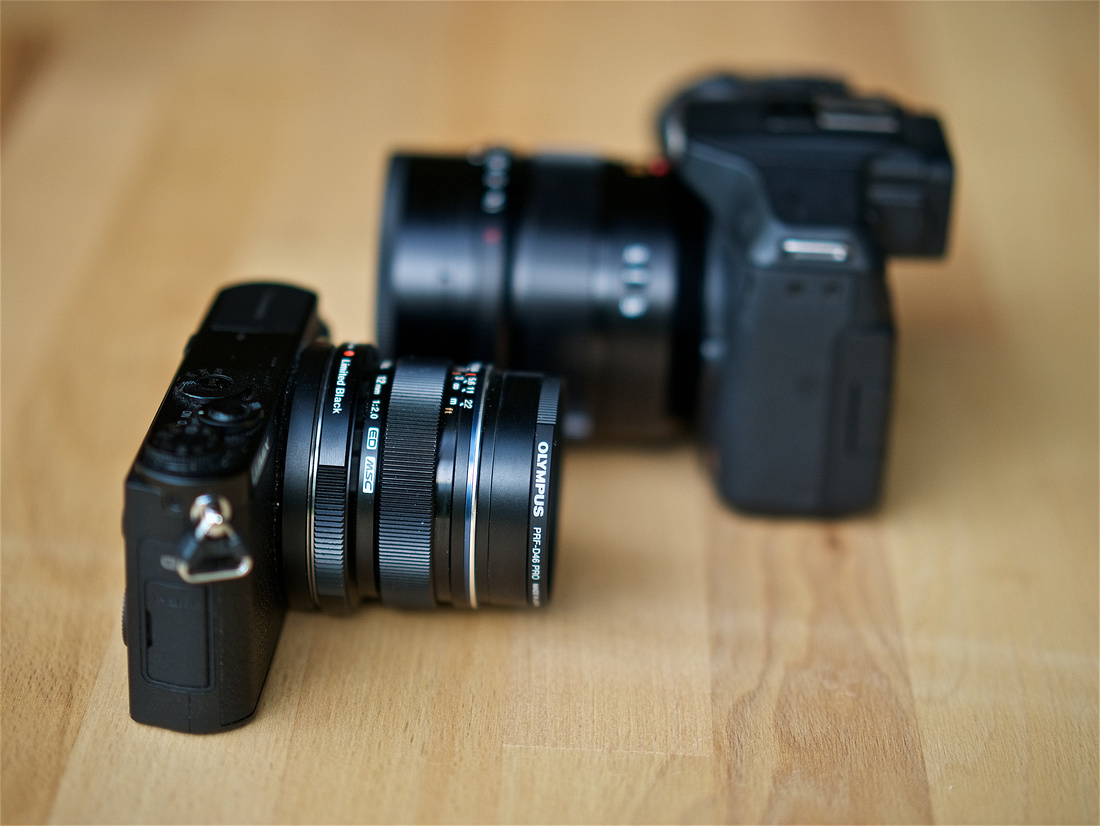 Here another point of view, the Oly in front on the GM1.
Here another point of view, the Oly in front on the GM1.
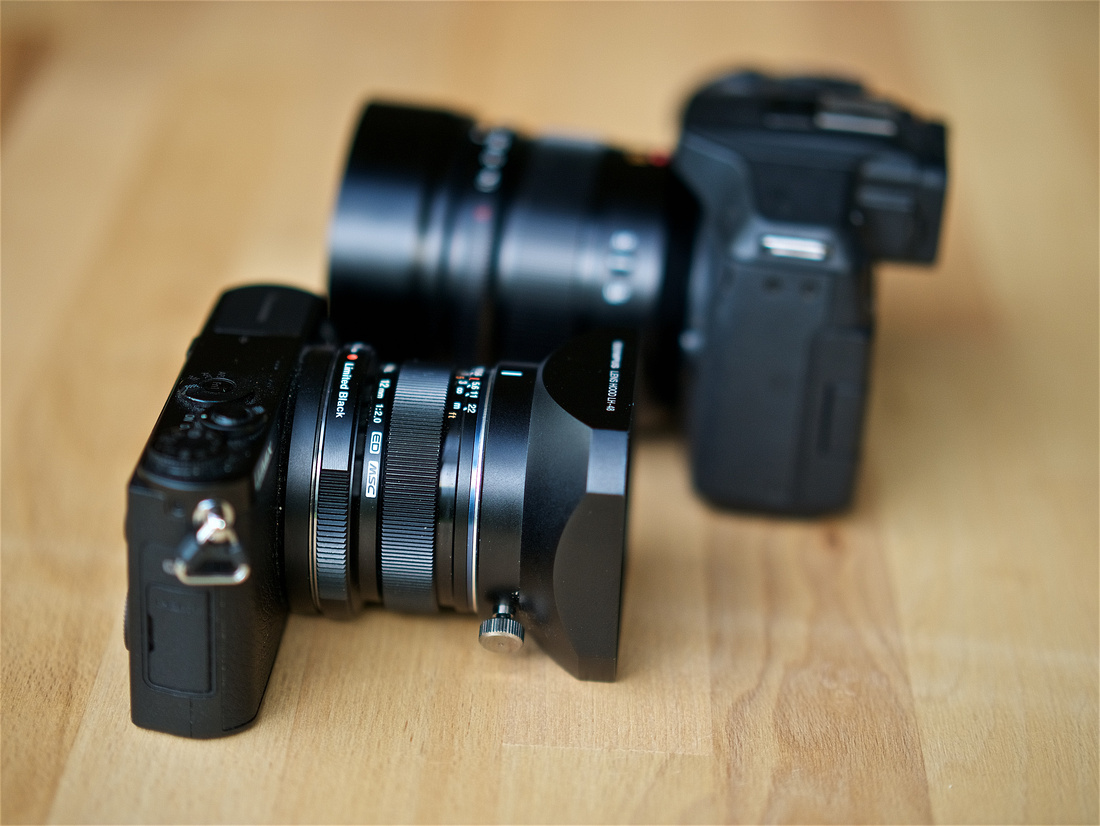 And now the same but with the lens hoods mounted on the lenses...
And now the same but with the lens hoods mounted on the lenses...
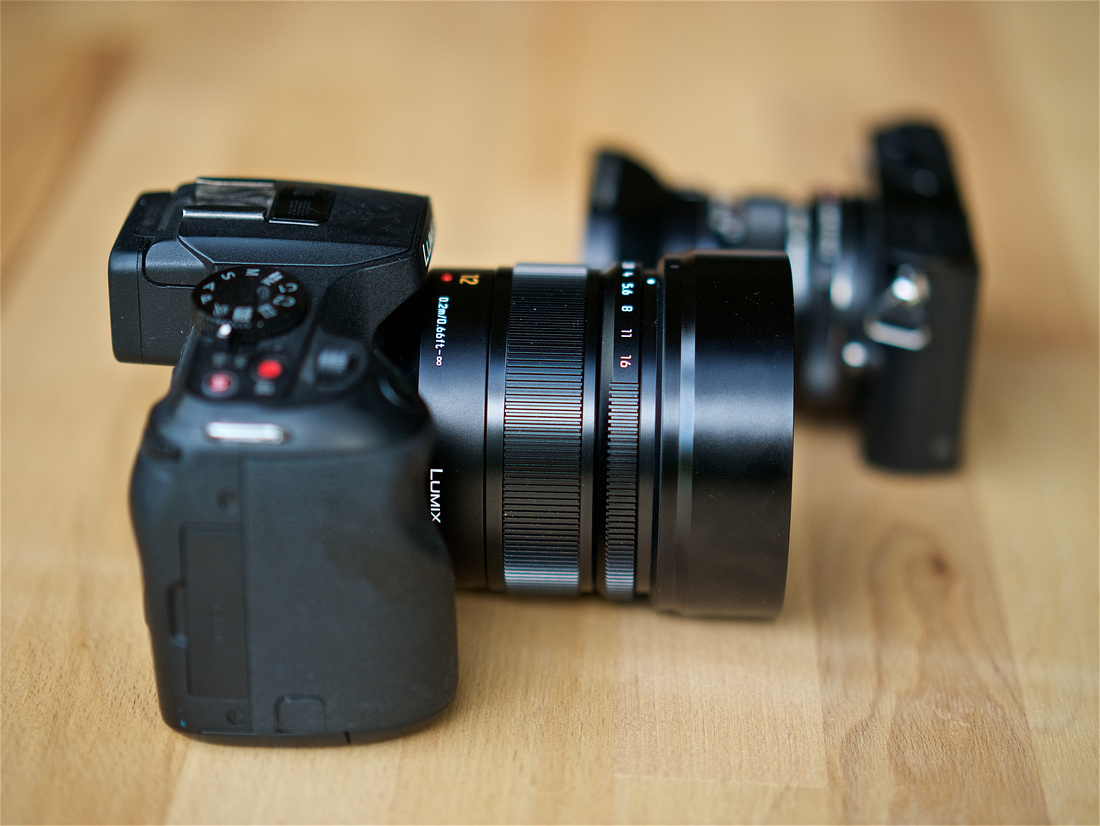 With the Leica lens in the front the Oly looks even smaller. This is a topic which we should keep in mind....
With the Leica lens in the front the Oly looks even smaller. This is a topic which we should keep in mind....
Specifications
To compare the specs I will only use those paraders which I found mostly interesting....
| Topic | Leica | Olympus |
|---|---|---|
| Weight | 335 | 130 |
| Min/Max Aperture | 1.4/16 | 2.0/22 |
| Closest focusing distance | 20 cm | 20 cm |
| Design Lenses/Groups | 15/12 | 11/8 |
| Aperture blades | 9 | 7 |
| Price € | 1399 | 699 |
It is easy to see that the Leica lens is more complex and heavier. But does this justify the hefty price tag?
Comparison of image Quality
When I start to compare the image quality I do want to start with one topic which have blown me away: the closest focusing distance:

The spec says: it´s 20 cm. for both lenses. Above you see the reality: the Leica focuses much shorter. The images above are shot with f 2.0 both: look at the amount of bokeh produced by the Leica lens.What does mean in reality: here you see 2 photos to real world shots:

This photo is taken with the Leica @ f1.4 at closest focusing distance.
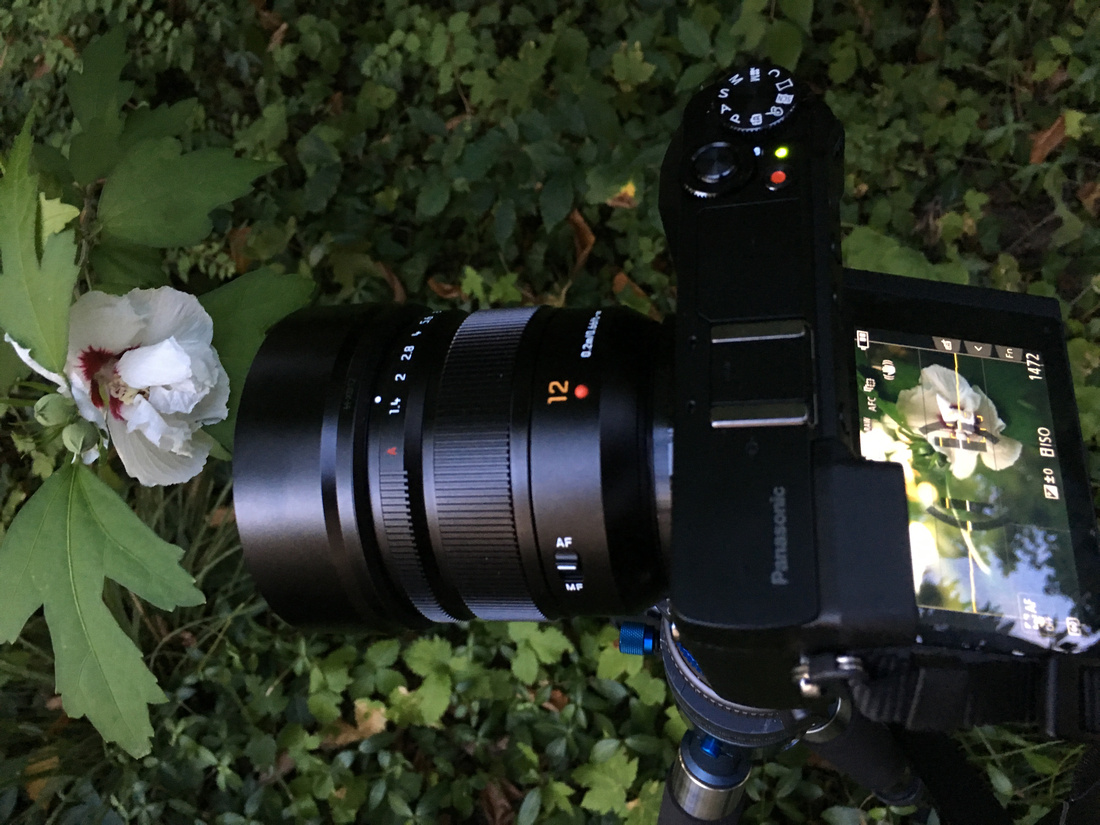 And this shows what means 20 cm focusing distance for the Leica Lens....
And this shows what means 20 cm focusing distance for the Leica Lens....
 And this is the same flower shot with the Oly at closest distance...
And this is the same flower shot with the Oly at closest distance...
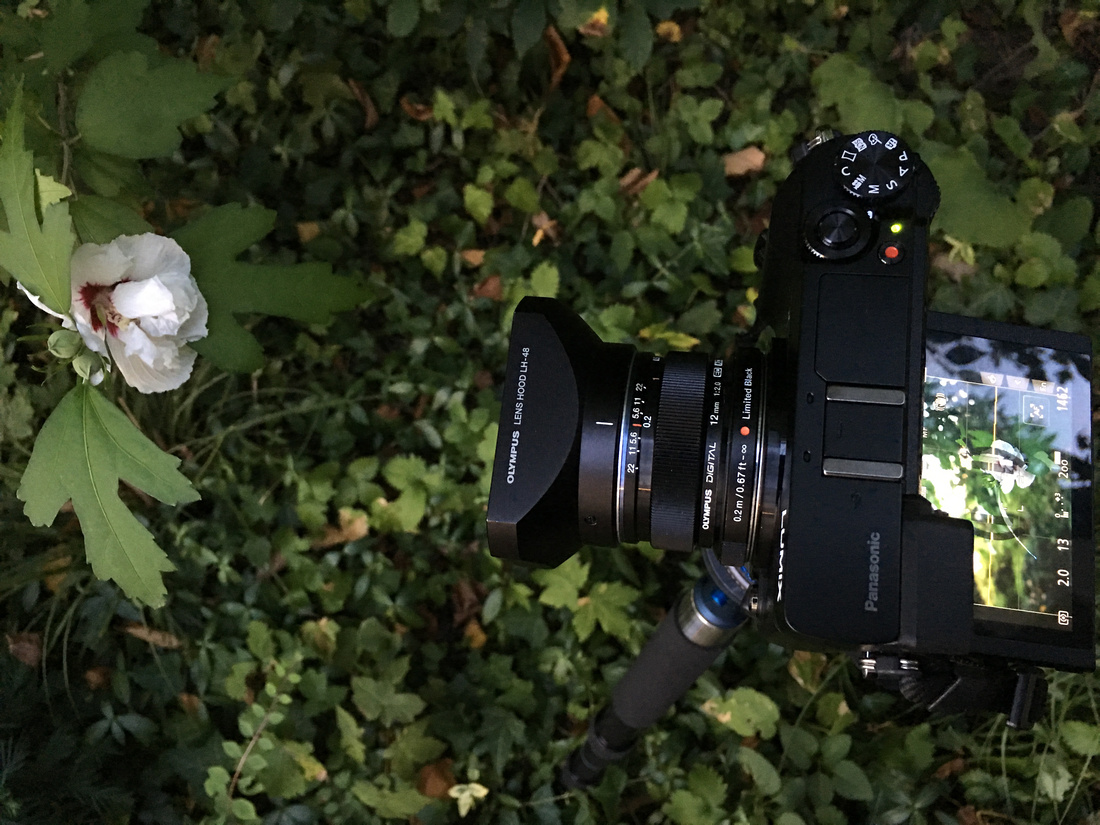
And this is 20 cm focusing distance for the Oly-Lens....
 Here are the same shot in direct comparison.
Here are the same shot in direct comparison.
For me this feature of the much higher magnification of the Leica lens has blown me away. It is a game changer.... The Leica lens is offering creative possibilities the Oly cannot do...
But let´s continue
 Here you see a sample for CA: In both cases practically spoken CA or color fringing are not really a topic for both lenses.... It is very well controlled: Both shots are made with f 2.0 but even @ f1.4 the Leica performs well...
Here you see a sample for CA: In both cases practically spoken CA or color fringing are not really a topic for both lenses.... It is very well controlled: Both shots are made with f 2.0 but even @ f1.4 the Leica performs well...
 One topic of the Leica 12mm f1.4 might be the Vignetting @ f1.4. The shot above shows the comparison with f 14 on the right and f2.0 on the left..
One topic of the Leica 12mm f1.4 might be the Vignetting @ f1.4. The shot above shows the comparison with f 14 on the right and f2.0 on the left..
I would say you can manage....
 This is the same perspective but shot at f2.0 with both lenses: the Leica is as good as the Oly....
This is the same perspective but shot at f2.0 with both lenses: the Leica is as good as the Oly....
 Here you see the upper left corner @ 100%crop: there is an advantage for the Leica. But this also shows that the Zuiko is still a pretty good lens: please remind: this is the max. wide open!!!
Here you see the upper left corner @ 100%crop: there is an advantage for the Leica. But this also shows that the Zuiko is still a pretty good lens: please remind: this is the max. wide open!!!
 This is the center sharpness of the same shot @ 100% crop. Do you see a great difference? hardly.... The Leica offers a bit more contrast and a better color saturation.
This is the center sharpness of the same shot @ 100% crop. Do you see a great difference? hardly.... The Leica offers a bit more contrast and a better color saturation.

These night shots are showing some differences: unfortunately I lost a bit of time why the Oly shot was with 50s instead of 30s. At this level the sensor is producing more noise. I hope I will find some procedure for elimination.... The Leica is a bit clearer and the stars produced by the lights are a bit more pronounced with the Oly-lens....
Some Inspirations.
Making my first shots with this new lens I thought I should add some shots here....
Most of them are shot at closest focal distance. But they clearly show the amount of bokeh produced by this lens. It´s simply bokehlicious.

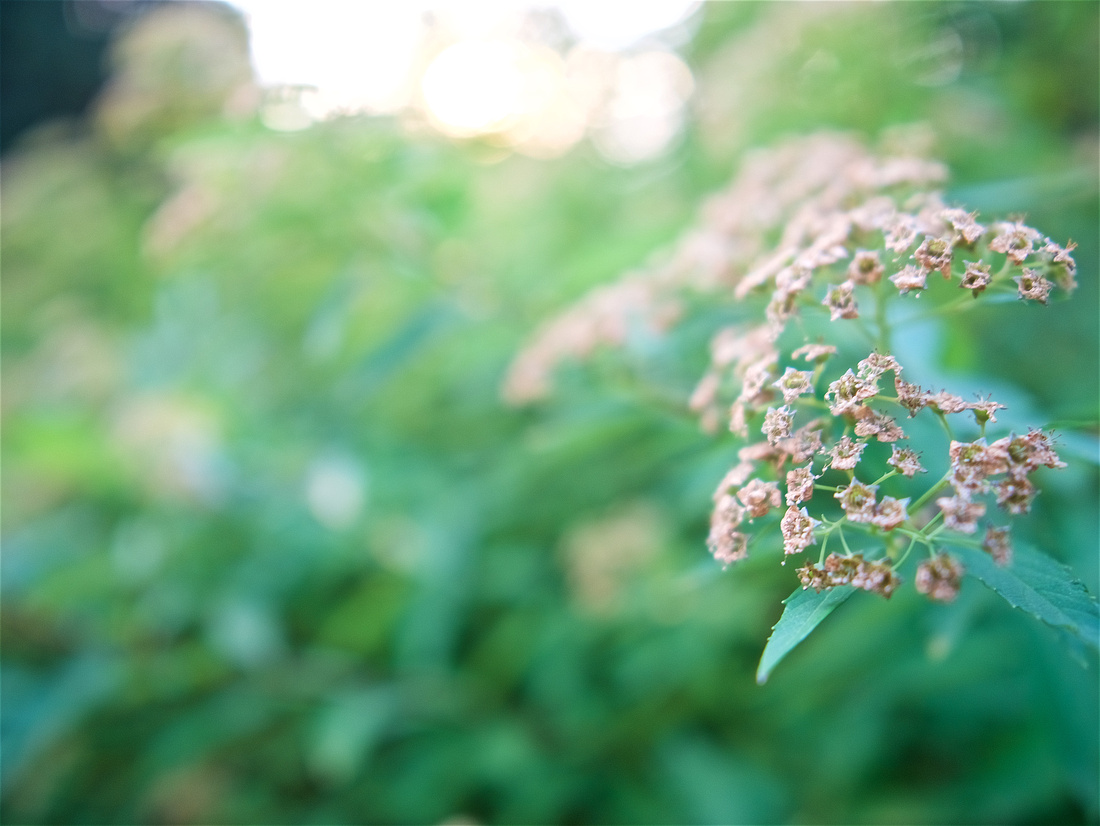
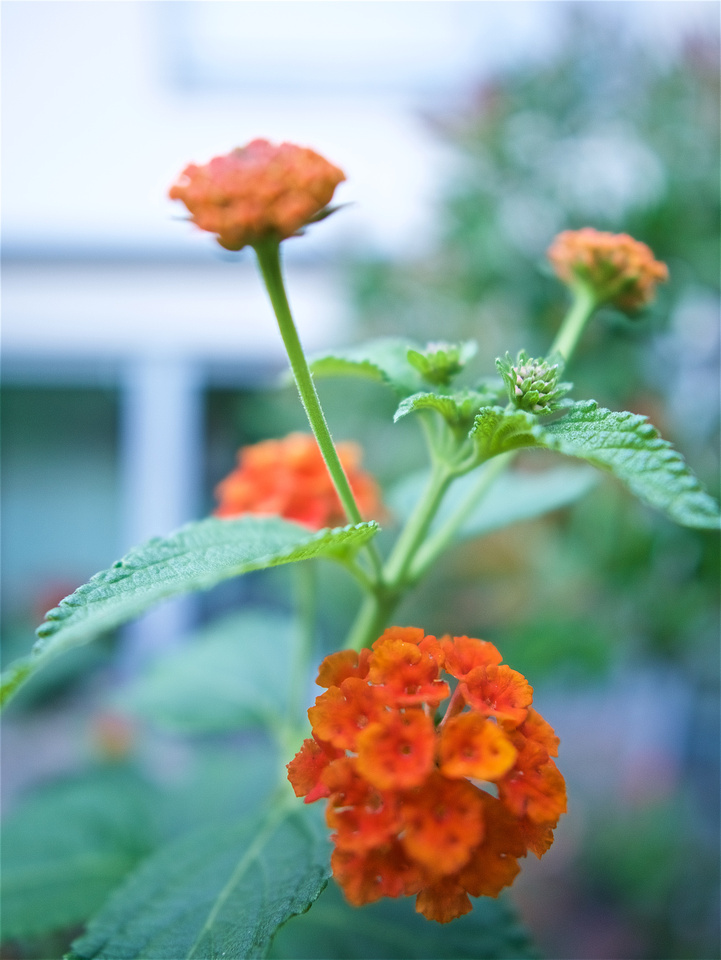
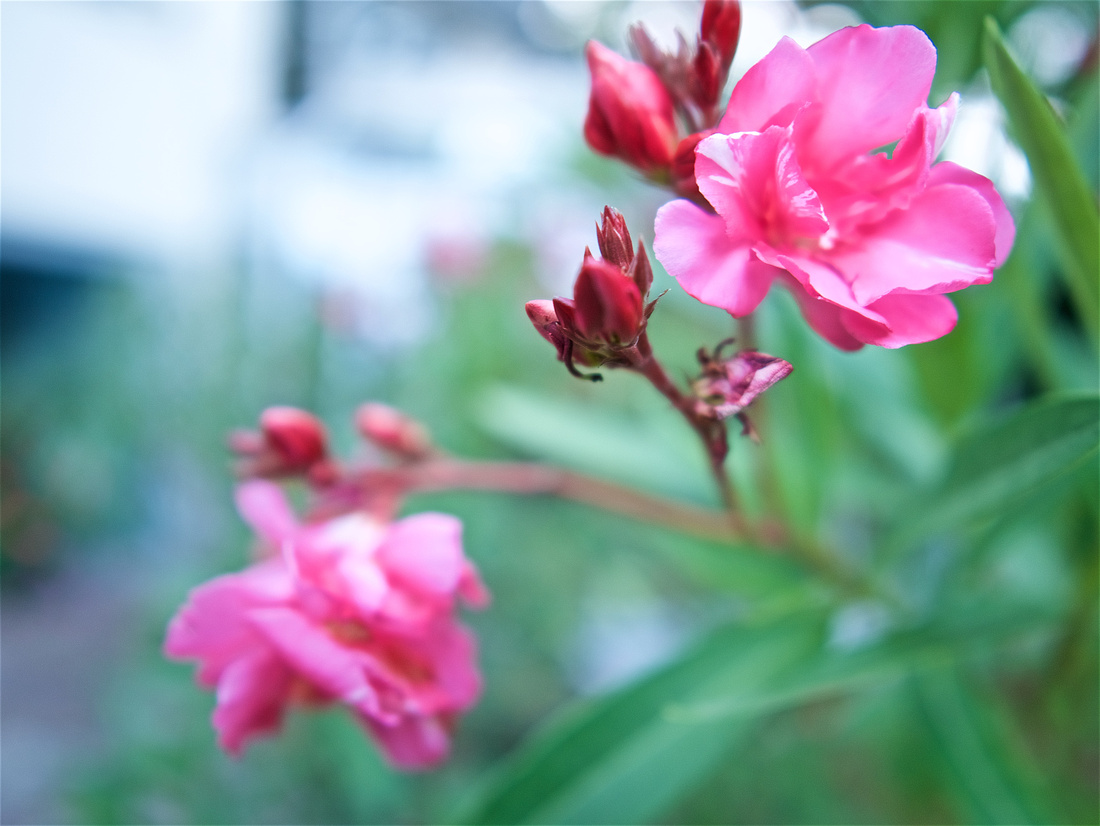
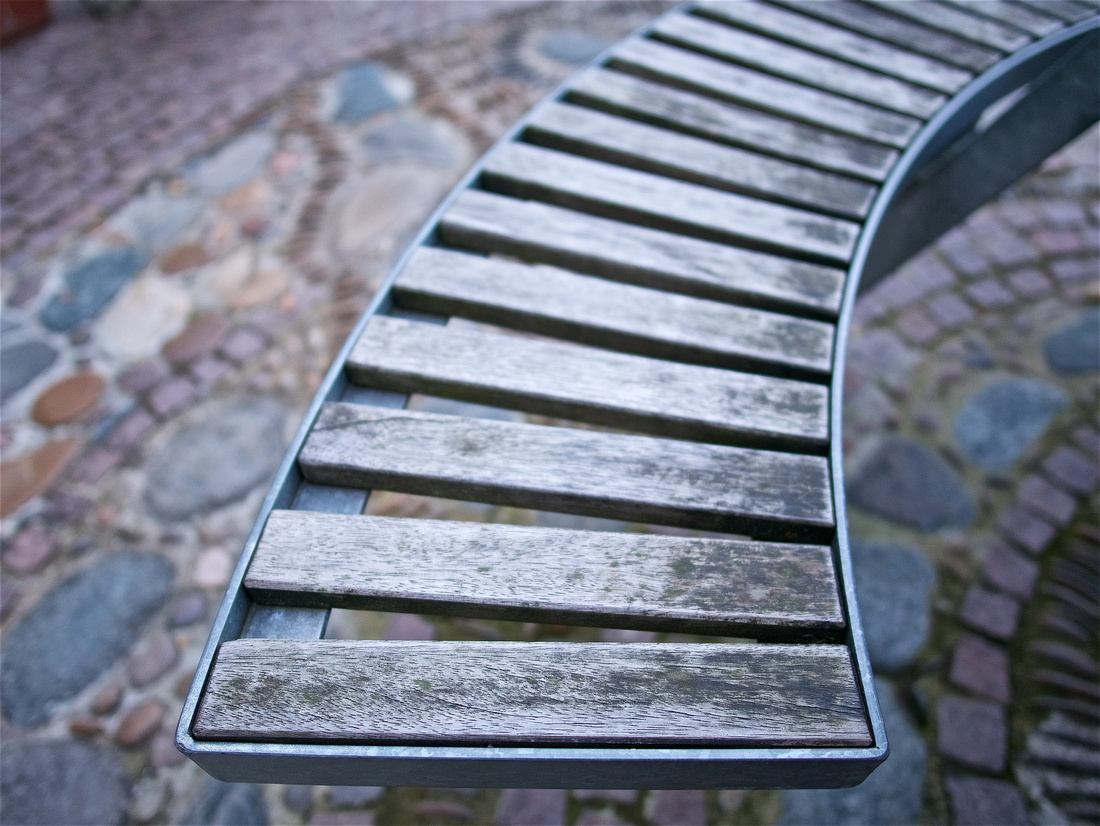
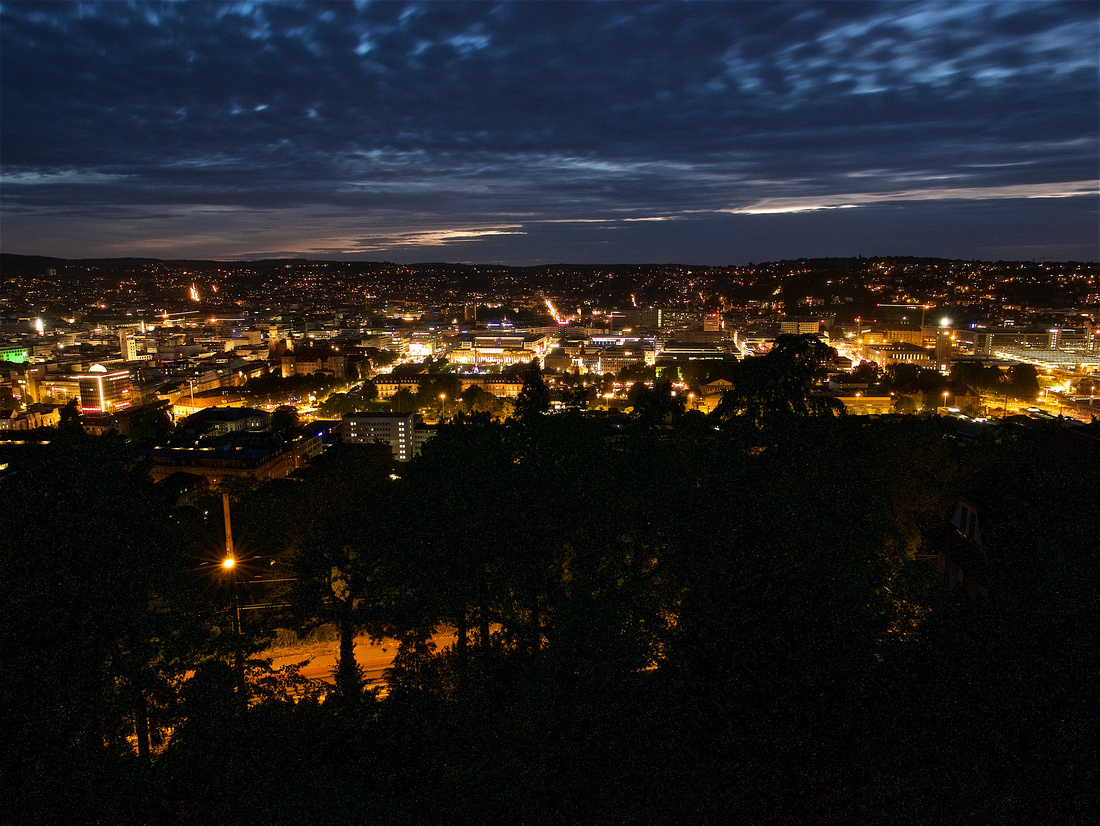
It is amazing to see how clean images are possible with µ43 are possible today.
Verdict
- Both lenses are great.
- The main advantages of the Zuiko 12mm f2.0 are the size/weight and the price tag
- The Leica is a game changer. The amount of bokeh was totally unexpected. Produced by a feature you cannot see in the specs.
The Oly will remain in my kit bag. But the Leica will accompany me everywhere... It will be interesting what new perspectives it will open to me in the future.. let´s wait and see.
I cannot make any comment on the price tag: It´s hefty. For my taste a bit too much. It should be below 1.000€ but let´s wait what the market and time will tell us.
For me this lens is without alternative. As long as you see bokeh as main differentiator for image quality from the technical point.
Addional Remarks
All photos were taken with the Lumix GX80 which is market as well as Lumix GX85 or GX7MkII. The exception are the photos both the camera showing the closest focusing distance: these shots i made with my iPhone6s plus. For the product shots I used the Leica 42.5 mm f1.2
If you want to have a closer look to the photos: You find them here:
http://delightphoto.zenfolio.com/p830433512
Please feel free to send me any comment, remarks or questions.
]]>Since mostly ever I do love shooting with 85mm f 1.4 lenses. In my analog times I used a Zeiss Planar 85mm f1.4 which I love very much. I adapted it for Canon EF - but there hat been issues with focus confirmation so shooting wide open was close to impossible but it delivers some pretty nice shots there, too.
Later I bought the Sigma 85mm f1.4 - and I was never really satisfied with this lens: wide open it struggles from a slight softness wide open as well as quite an amount of color fringing. It was not really fun to use this lens.
2014 I went to photokina. I made some shots with the Zeiss Otus 85mm f1.4 - and I loved this lens - but not its price tag. Zeiss announced the Milvus product line late 2015 - with a very positive response and a much better price tag. Recently I bought the Milvus 85mm f1.4. Now I want to share some experience and a comparison between the Milvus and the Sigma 85mm f1.4
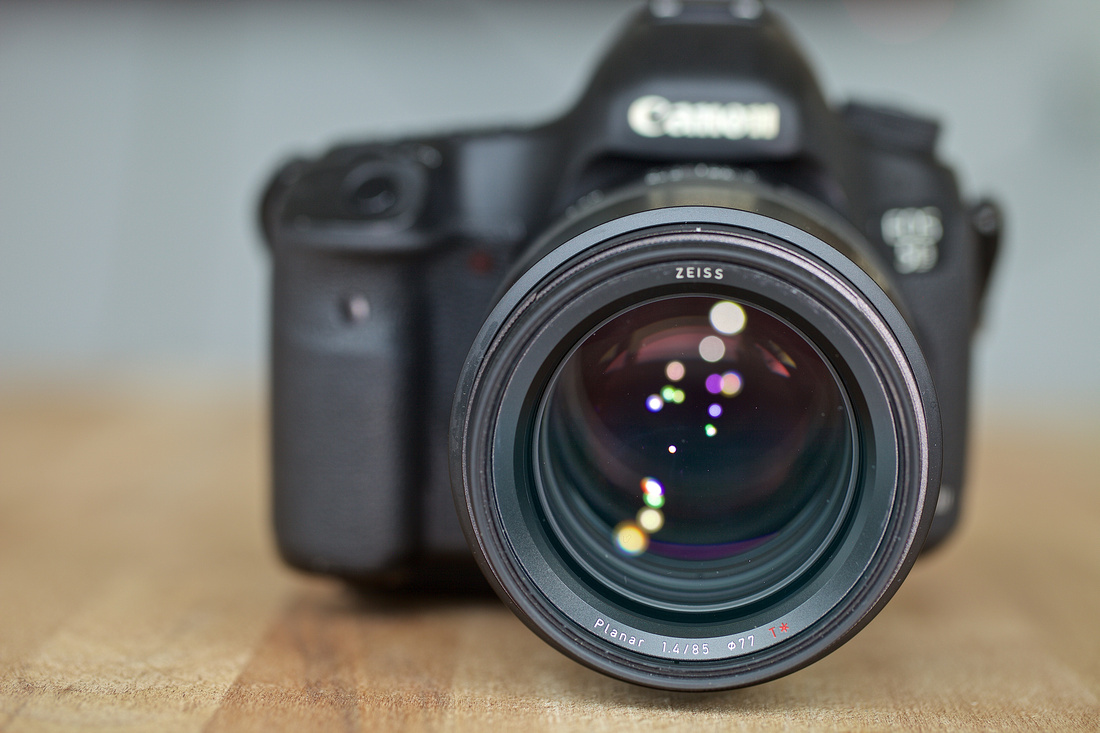
Build Quality
The build quality of the Milvus is just mind-blowing: It is a full metal design - and weather sealed. As fare as I know: the Milvus is the only weather sealed 85mm lens for the Canon EF mount. But there is a downside with its build quality: size and weight. It is a really hefty lens. 1280g is quite a bit... 120mm long - and a 77mm filter ø...
The Sigma is a much more handsome: 725g, 87.6mm long - easy to handle, the build quality is more than ok - engineered plastic but that´s standard with Canon, Nikon and others as well....
 Sidewise the difference does not look that much... but the Zeiss weights 77% (!) more....
Sidewise the difference does not look that much... but the Zeiss weights 77% (!) more....
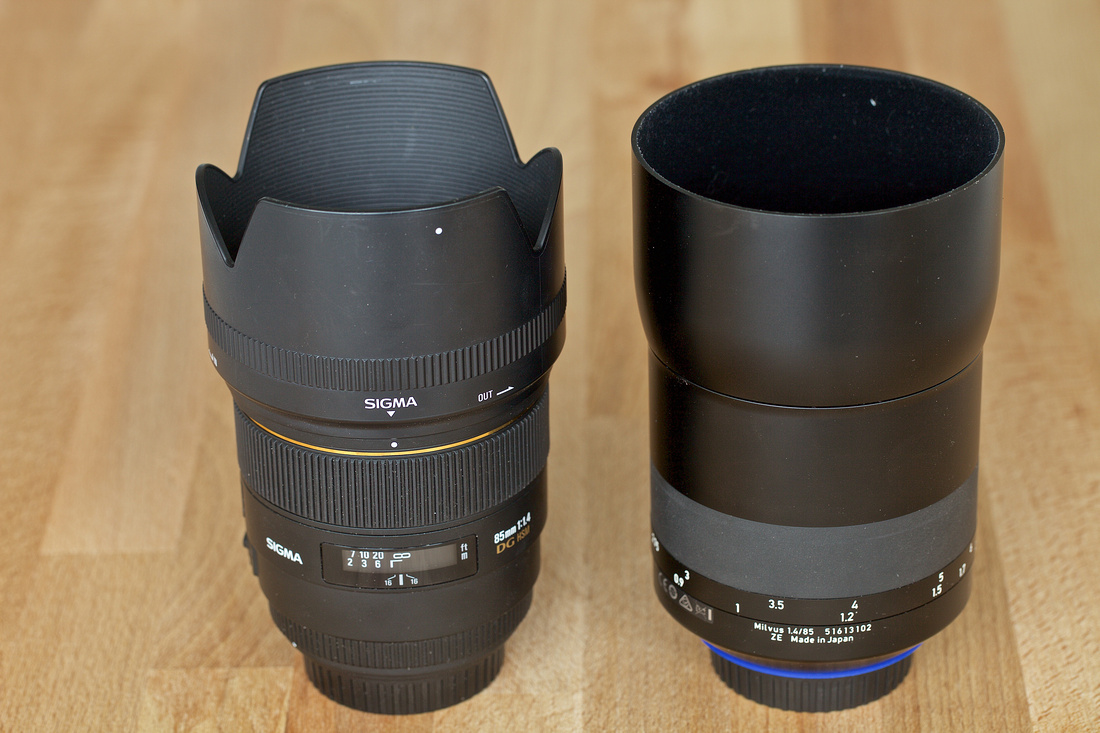
With the lens hood on there is nearly no difference in size...
 Mounted on a big body like the 5DMkIII or the 7DMkII it is really bulky equipment. But I would not recommend to use it on smaller bodies: there is the space between lens and grip to small, especially if you have bigger fingers like me.
Mounted on a big body like the 5DMkIII or the 7DMkII it is really bulky equipment. But I would not recommend to use it on smaller bodies: there is the space between lens and grip to small, especially if you have bigger fingers like me.
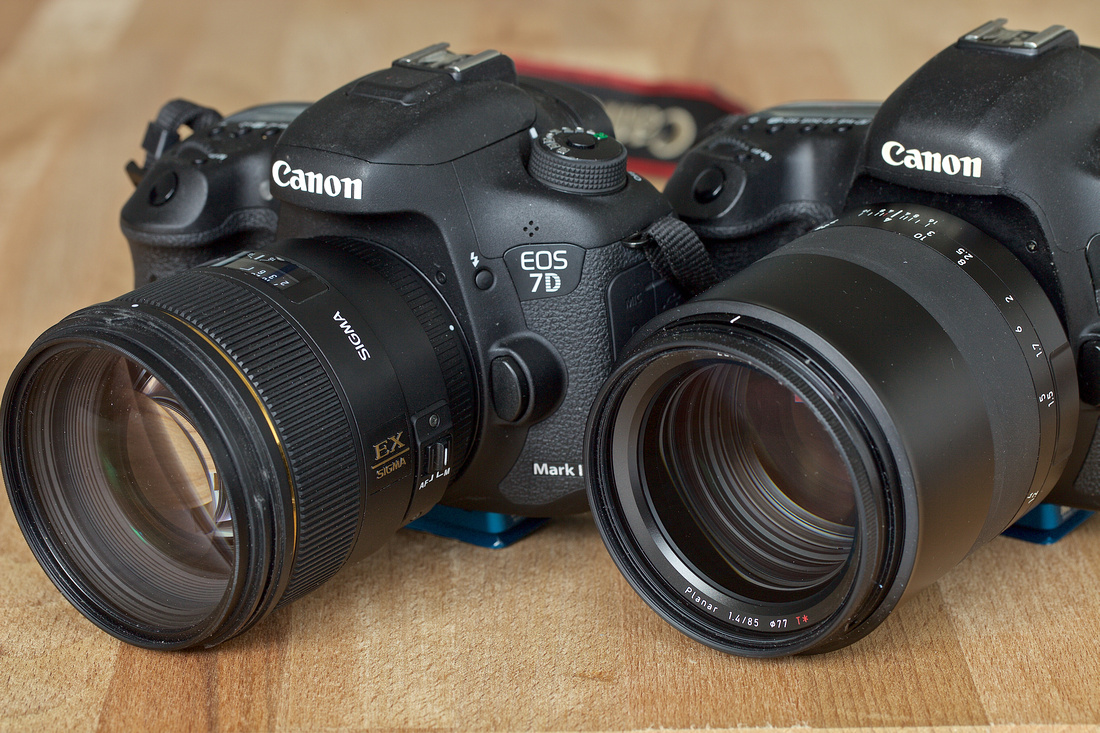
Handling
The main difference in Handling of the lenses comes from the focusing: the Milvus is a manual focusing lens - the Sigma comes with autofocus.. But the Zeiss is made for manual focus....
This becomes clear if you consider the focus thread:
- Sigma: electric focusing, ca 90º focus thread
- Zeiss: mechanical focusing, ca 270º focus thread
With this long travel focusing becomes accurate and handy - but slow as well: it is nearly impossible to focus from minimum distance to infinity without changing the position on the focus threat....
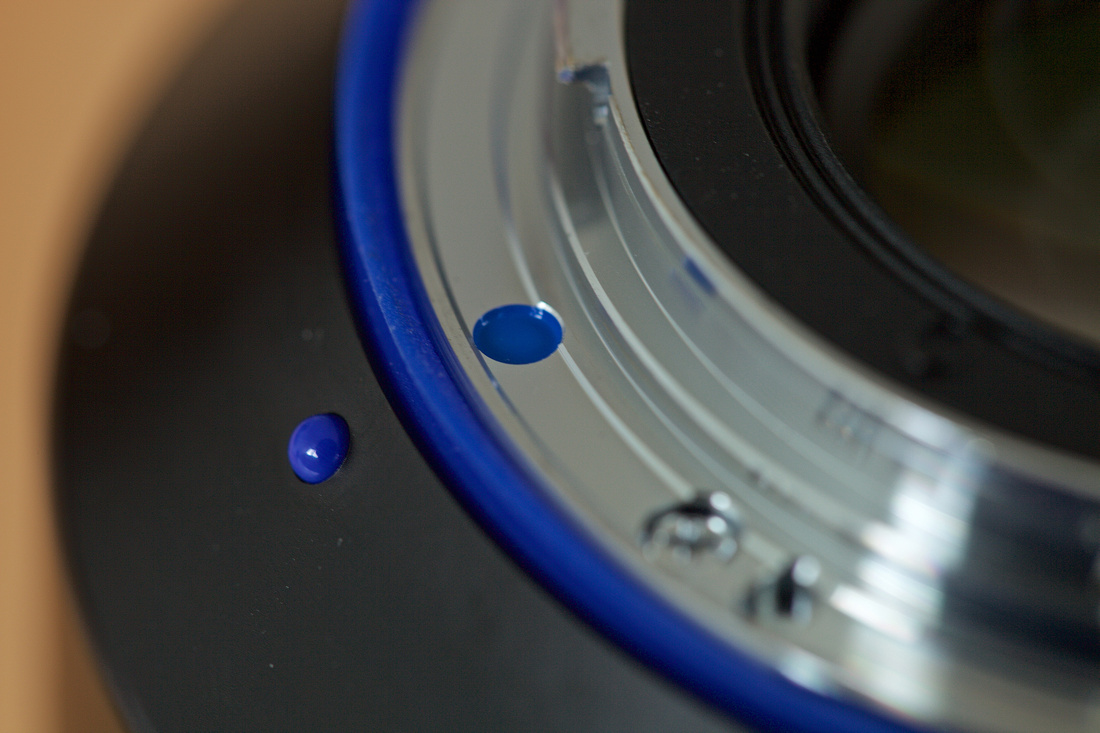
It is maybe only a little thing in the handling, but sometimes the small things are making the difference. Beside the weather sealing - nicely made with blue rubber or silicone - there is a little nob on the outside - this makes lens changing so easy when it is dark.
The Sigma instead has a little (very little) white point on the outside - and no weather sealing...
Comparison of Image Quality
Here you can expect differences - and some of them are really astonishing.
One thin is astonishing: aperture identifies the Milvus as Canon EF 35mm f1.4 - but shows the focal length correctly as 85mm....
First some excamples shot with f 1.4 which show the diefferences in chromatic aberrations/Color fringing..
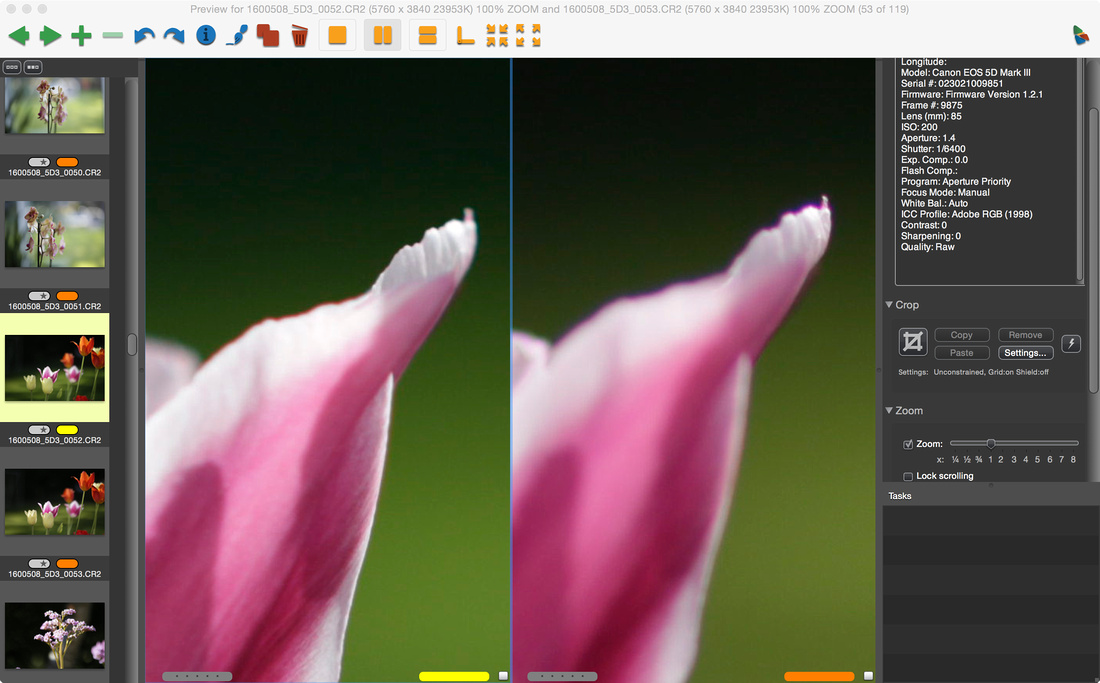
I had one focusing point active - and both were set on the same point of the image, slight variations in the focal position between the lenses are natural.
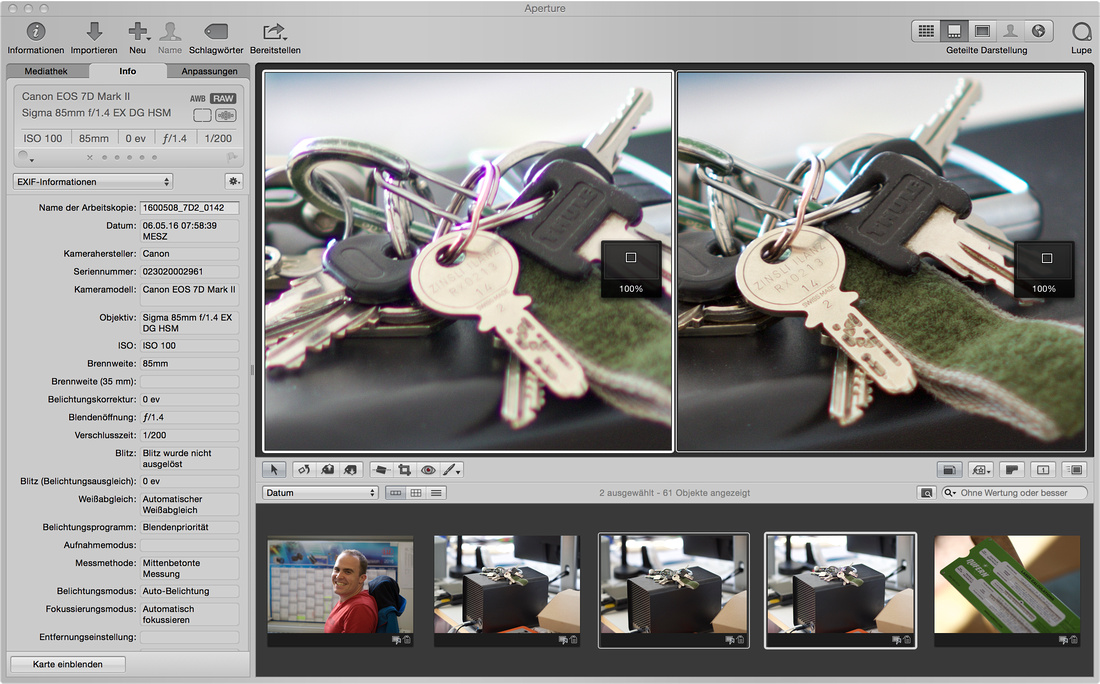
The 2nd example with the keys shows the advantage of the Milvus even more dramatic than the first one. The Milvus seems to be not as good as the Otus - but really sharp with well controlled color fringing.
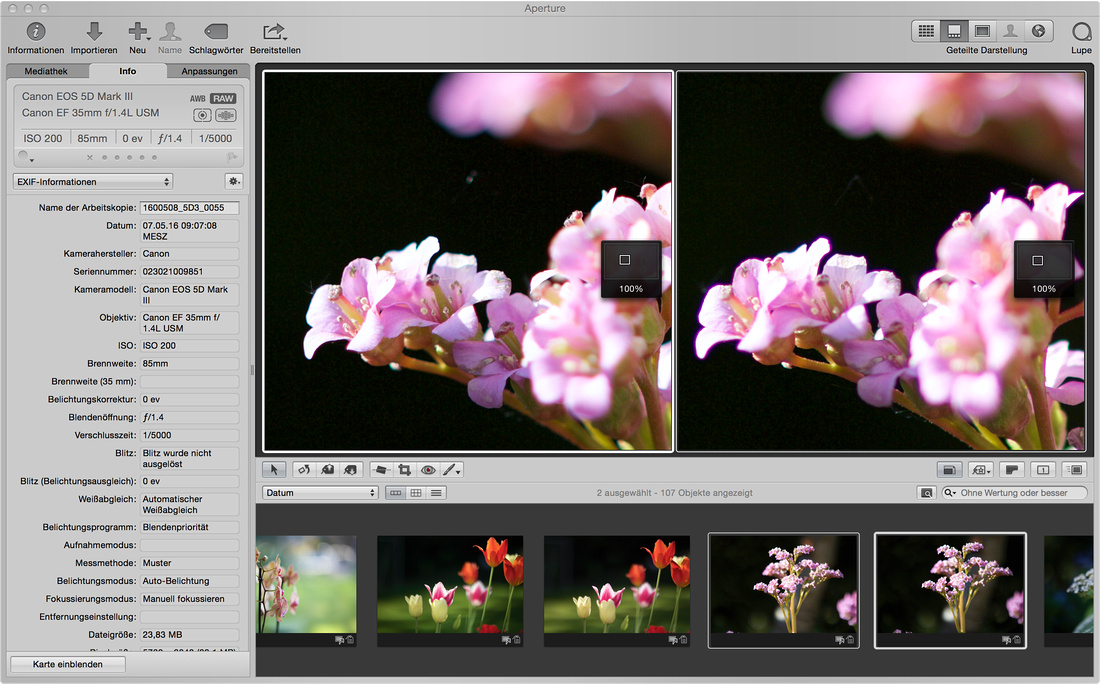
Again: easy to see that the Sigma is a bit softer wide open...
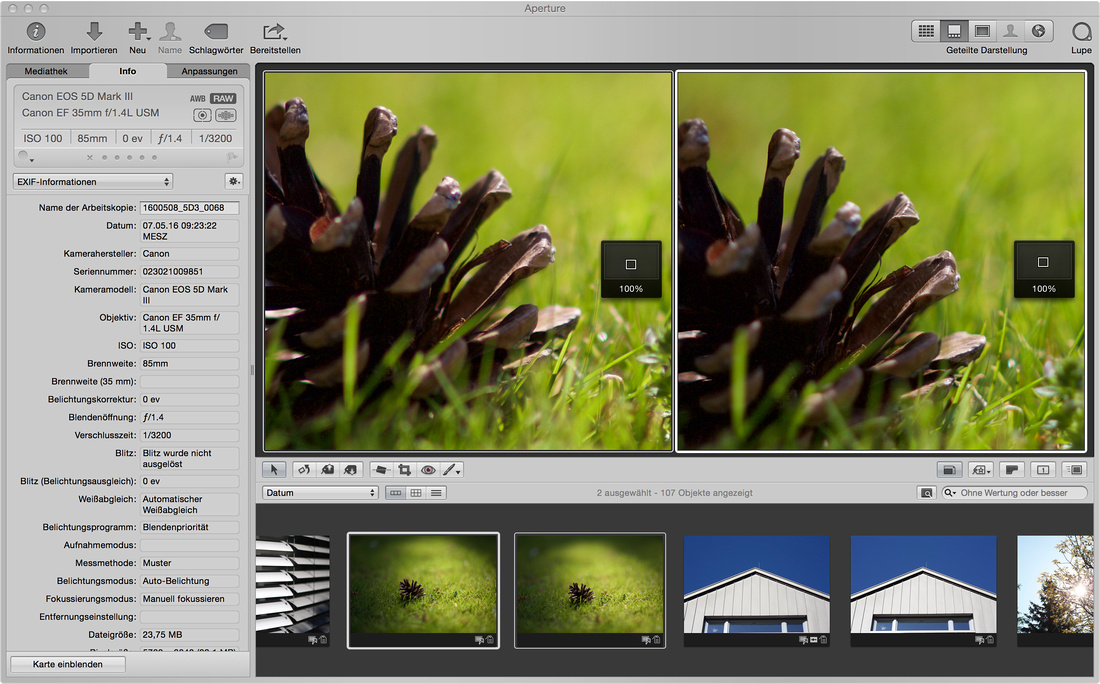

Lens flare is a topic of the Sigma 85mm. But the Milvus does not even show stars - even @ f16...
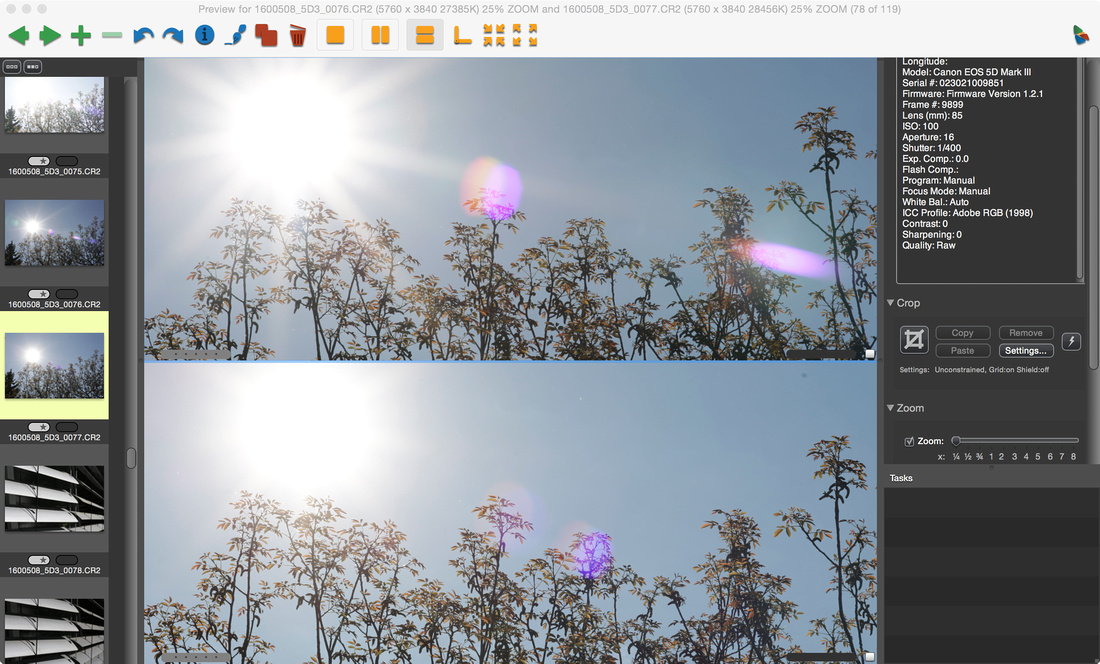
In the full view of the picture you see even more of the pretty strong lens flare of the Sigma.
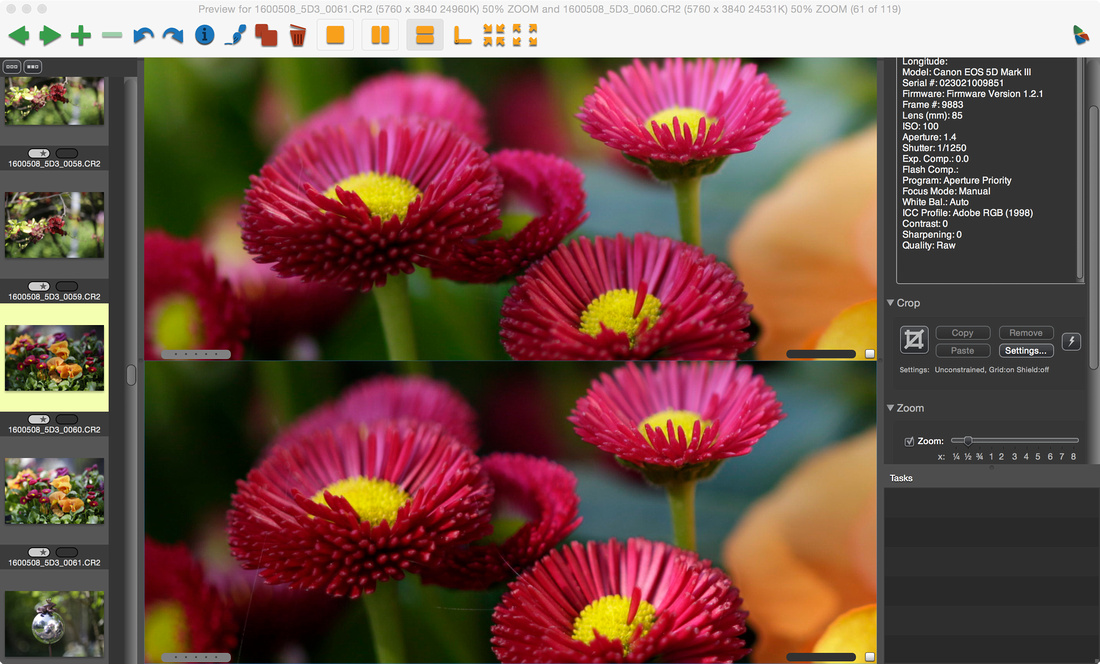
With this shot i am a bit uncertain: the color rendering is a bit different - but the lighting might be slightly different . even if the full view does not show a bit difference. For me the Milvus photo ad the bottom shows clearly more contrast...
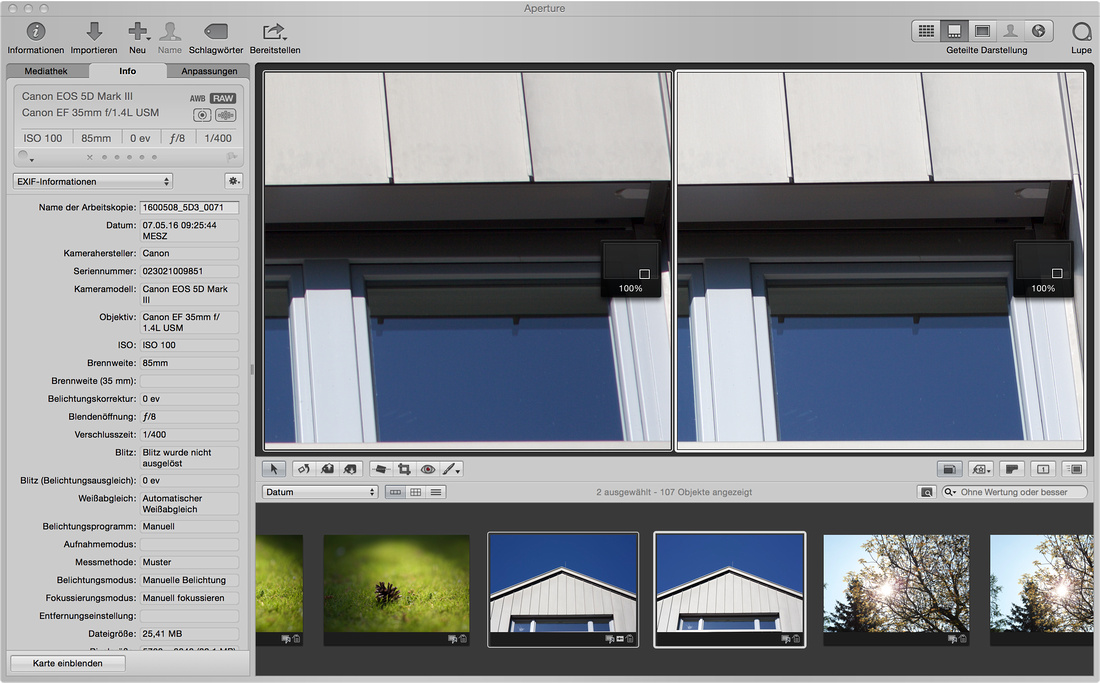 These images were very much astonishing to me: shot@ f8: and the Sigma shows color fringing on the extrem lower end of the image....
These images were very much astonishing to me: shot@ f8: and the Sigma shows color fringing on the extrem lower end of the image....
Some Remarkable shots with the Milvus 85mm f1.4
Right from the beginning the Milvus delivered shots were I must say: yes it´s worth to carry it....
I use the lens as part of my concept to have 4 lenses and 2 bodies to cover a wide focal range in best possible image quality. With one extender I cover 14mm -640mm focal range.... The 85mm mutates to an 136mm f2.2 lens on the 7DMkII..
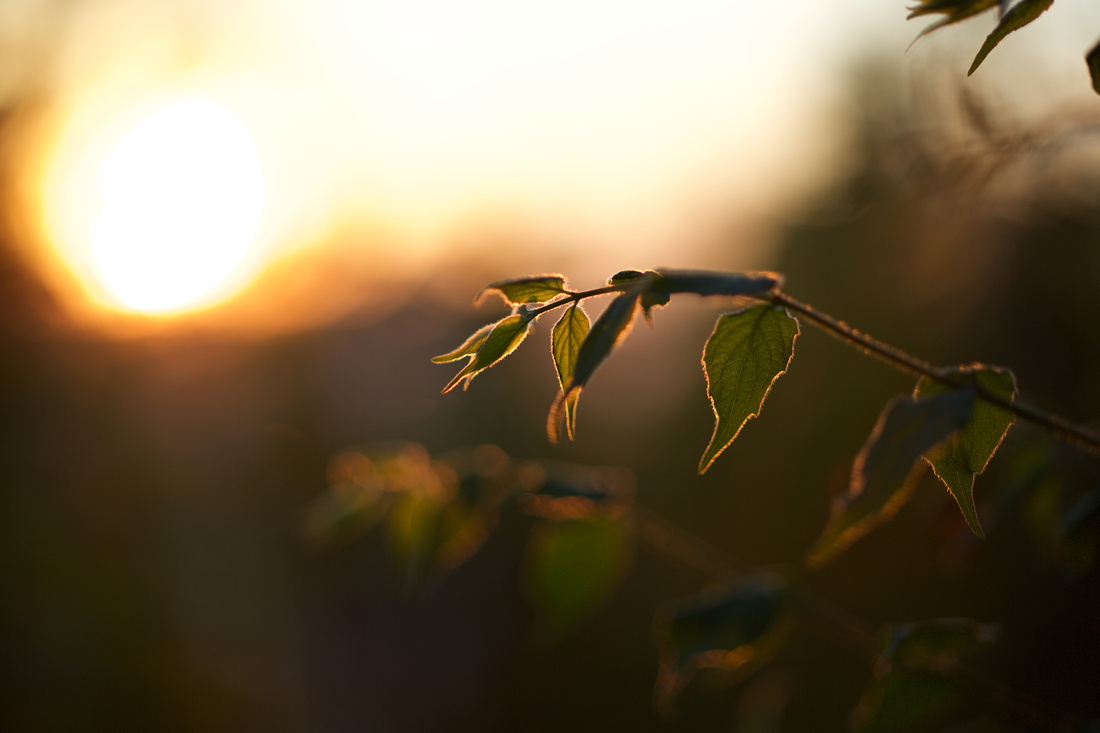
This was one of my very first shots with the Milvus... amazing colors, amazing bokeh...
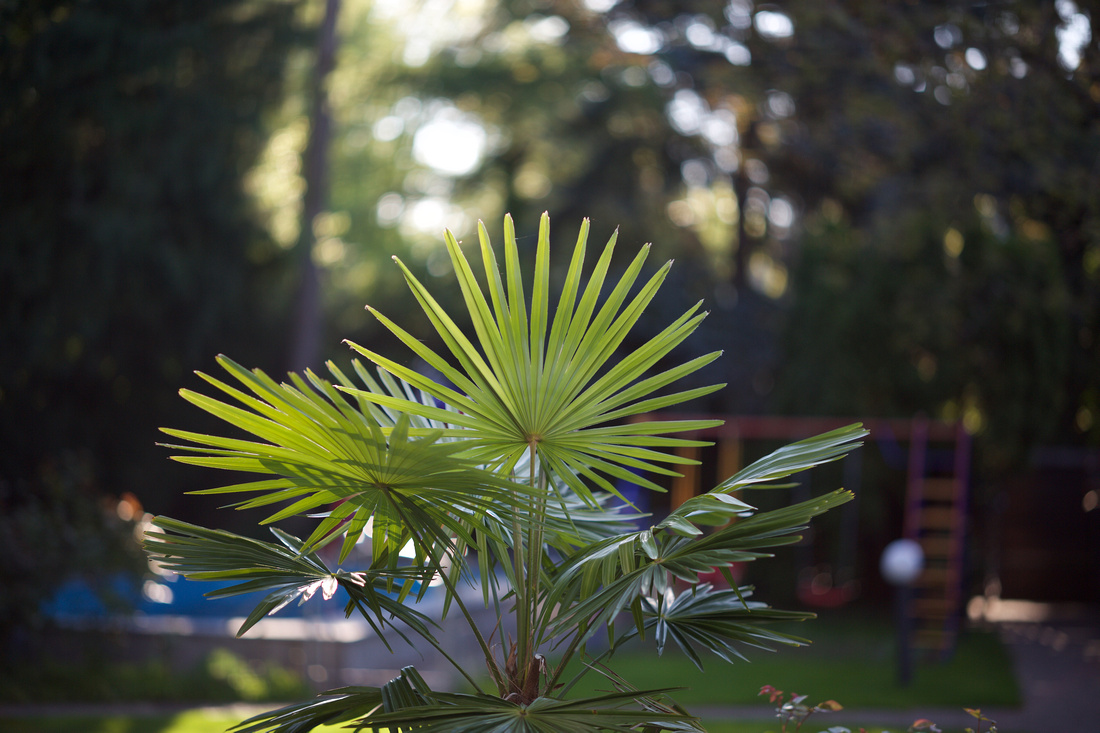
Shot the next morning.....

This shot @ f2.0 shows bokeh as well as sharpness of the lens...
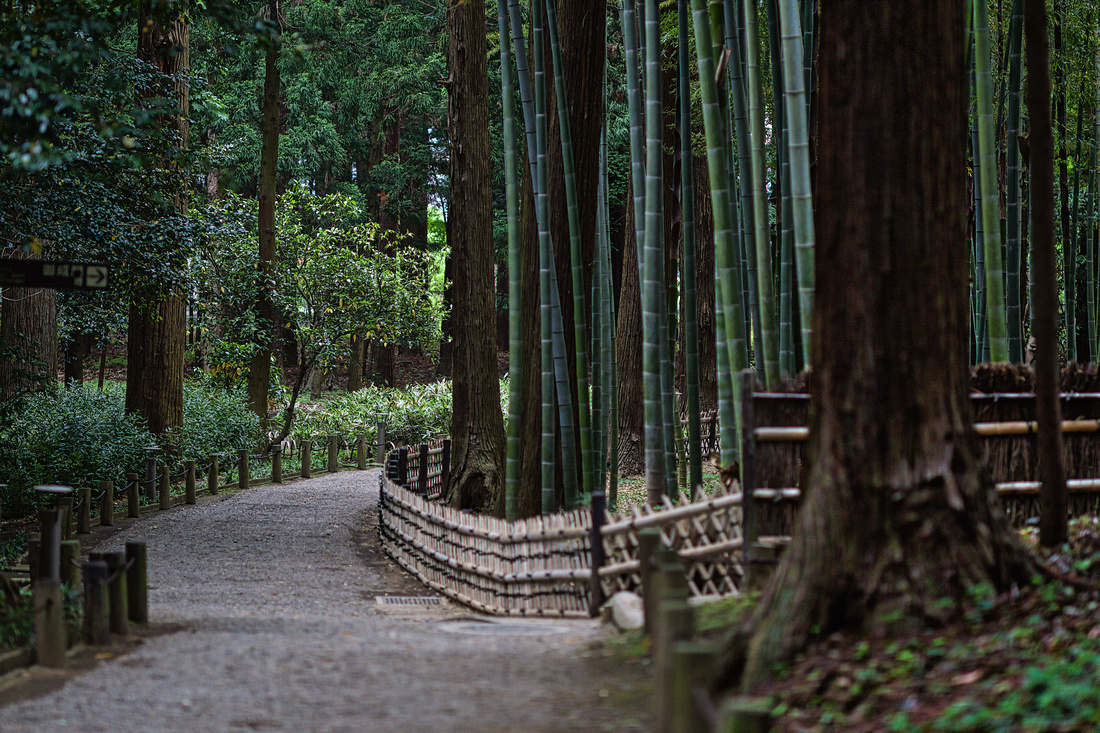
This shot was at the Kairakuen Park in Mito, Japan.
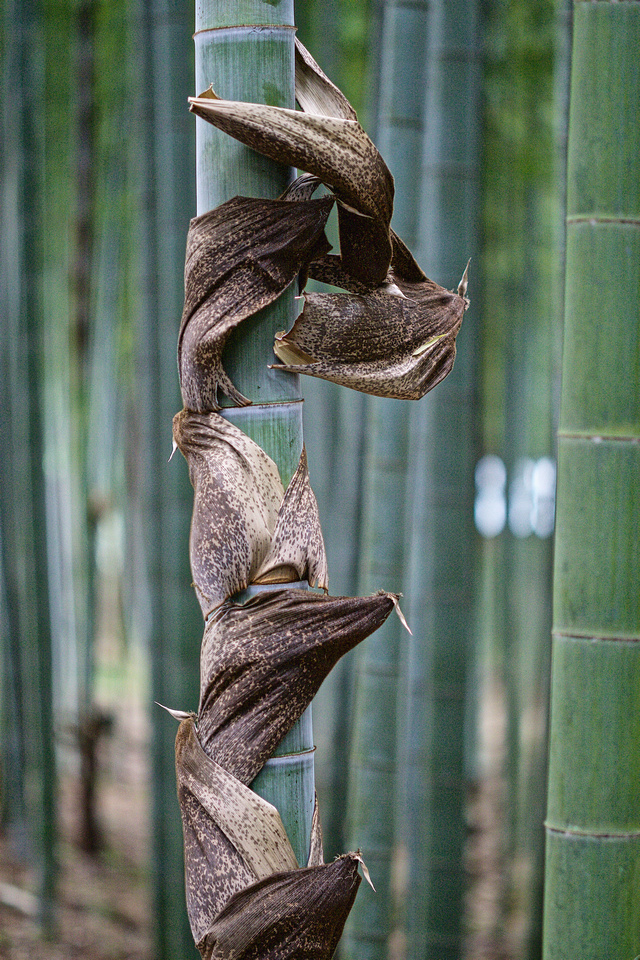
In the same park I saw this bamboo with its young leaves dried out...
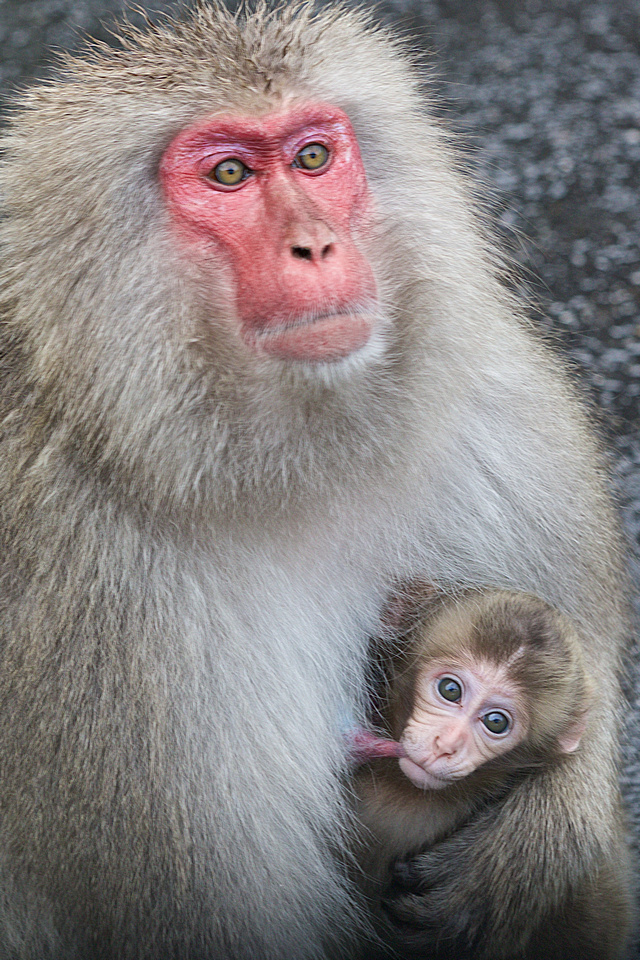
This shot is a bit special - but cute.. the focusing point was the baby.
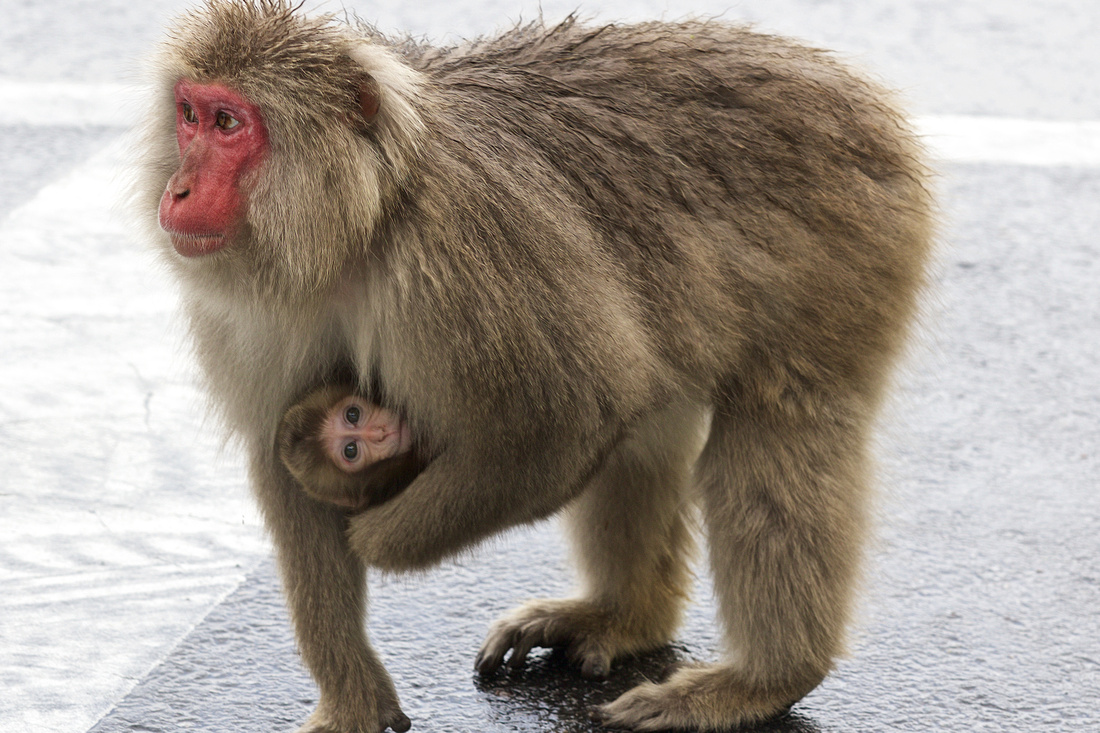
This photo shows definitely why Zeiss lenses are so great: Tho monkey is backlit but the color rendering just perfect.... When I saw the shot at the back of the camera: yes!
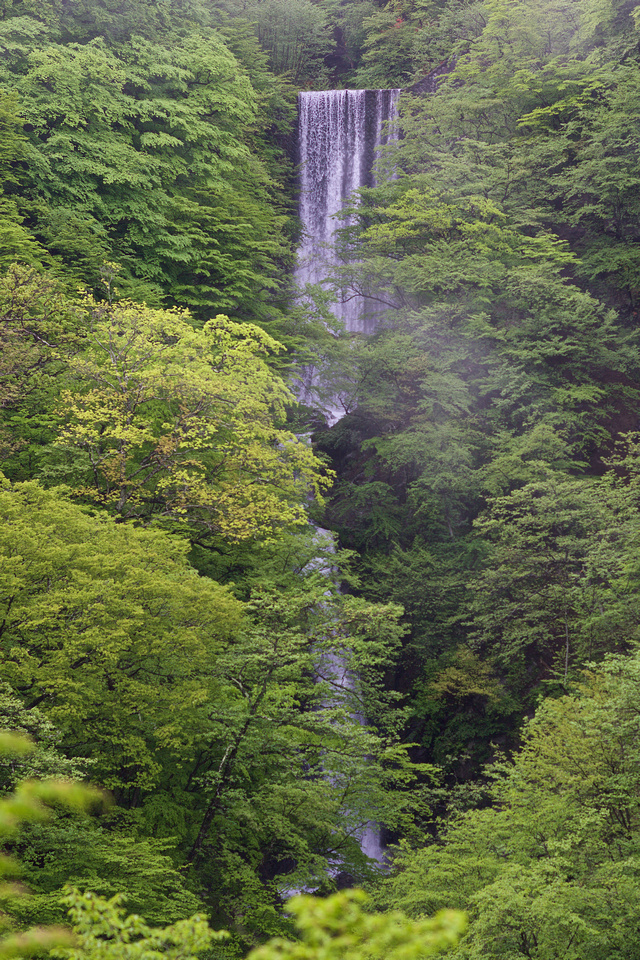
To use the lens for landscape photography isn´t the worst idea to have....
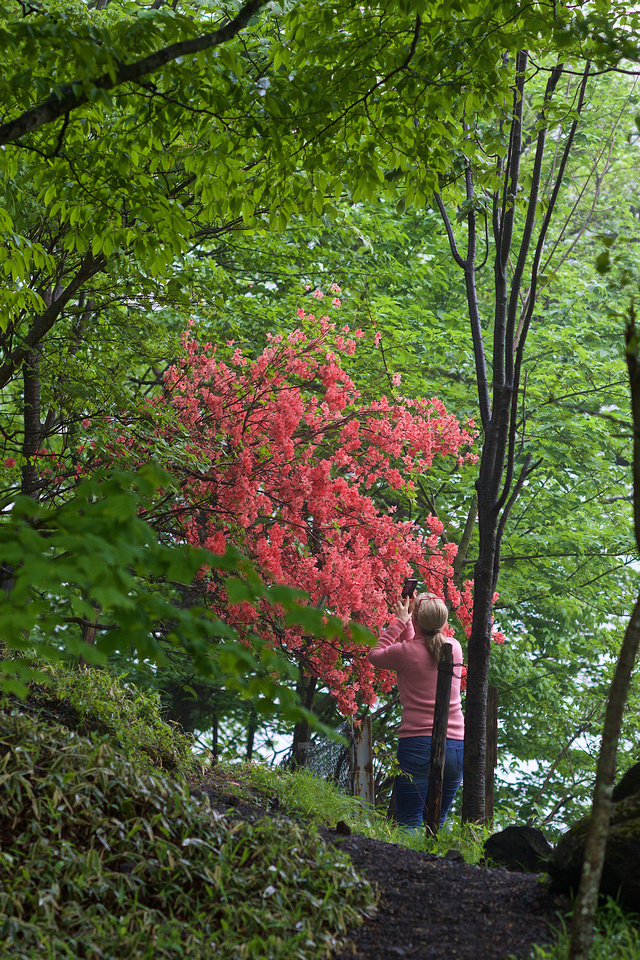
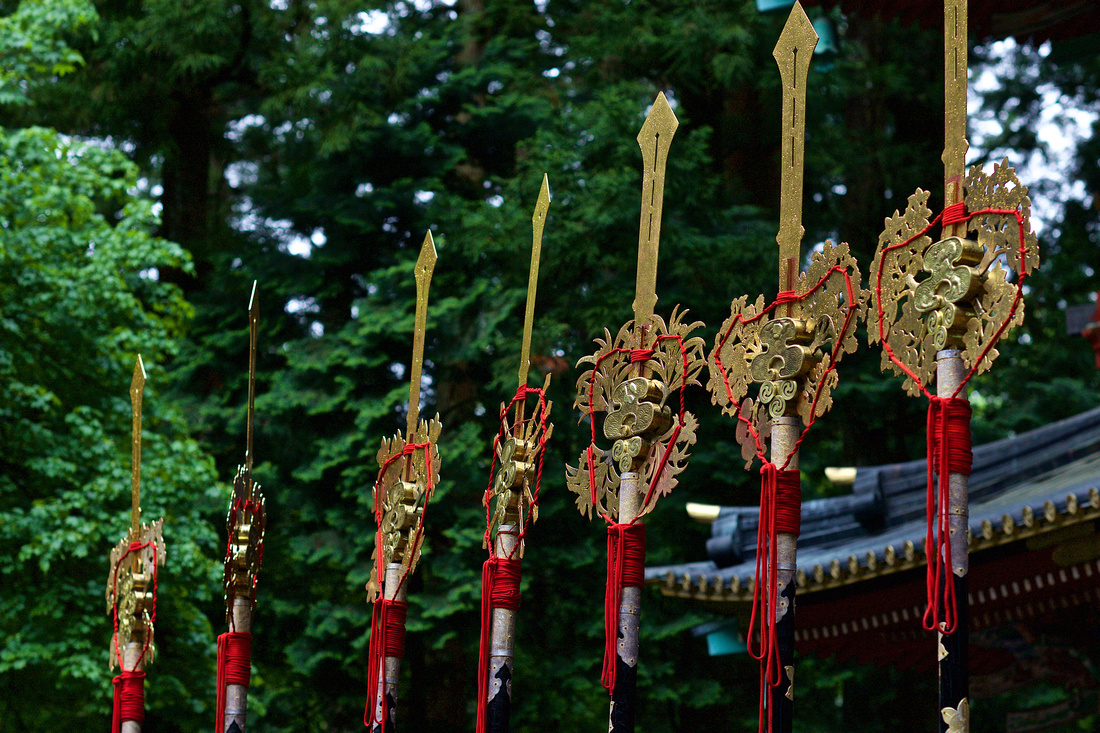
Really sharp and contrasty image....
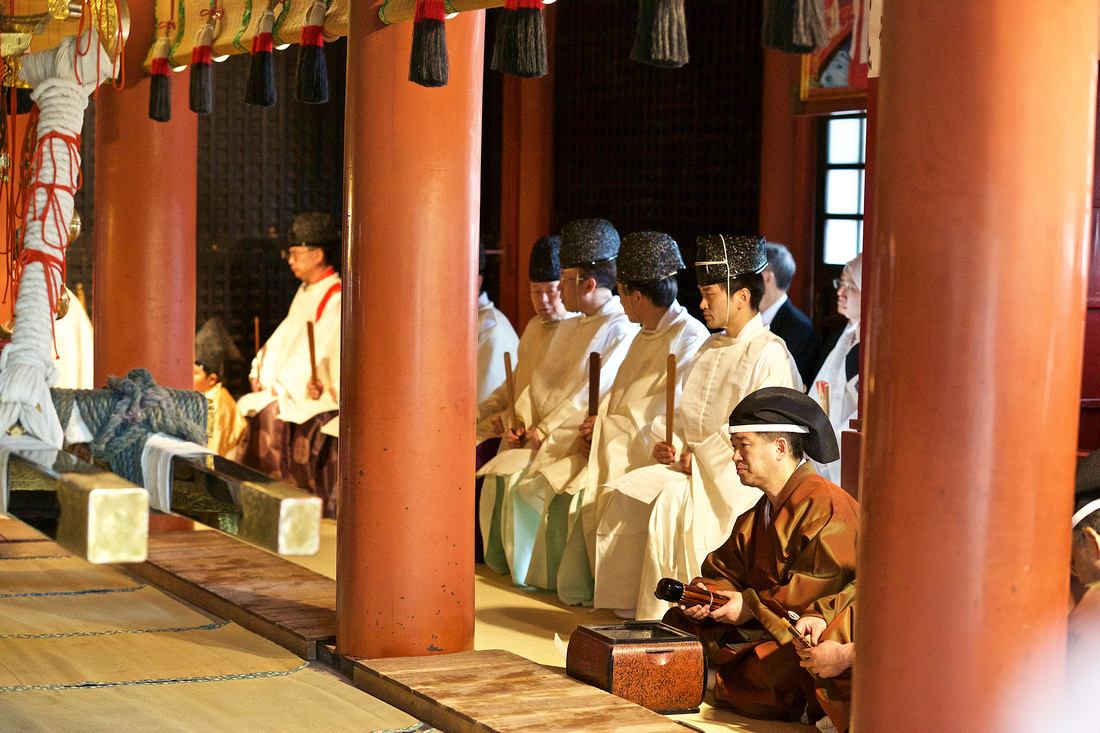
This is where you need speed: she monks in the temple...

I do like this shot in the dark... the root looks like Kermit, climbing up.
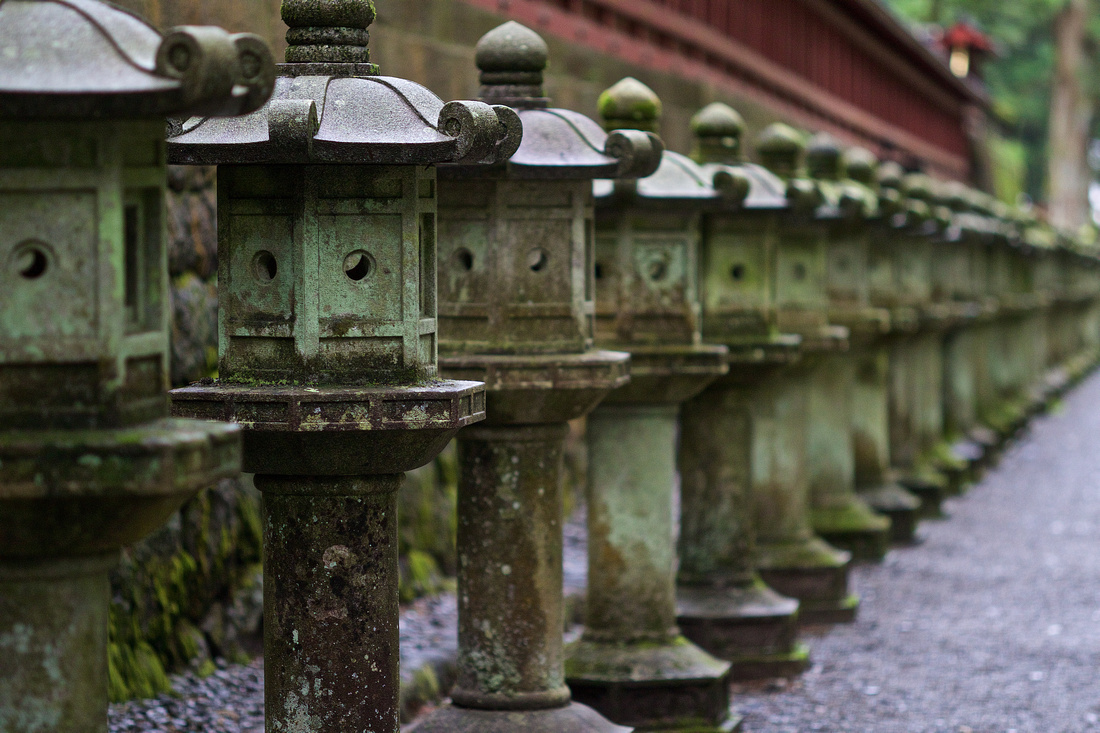
More a classic shot, showing bokeh...
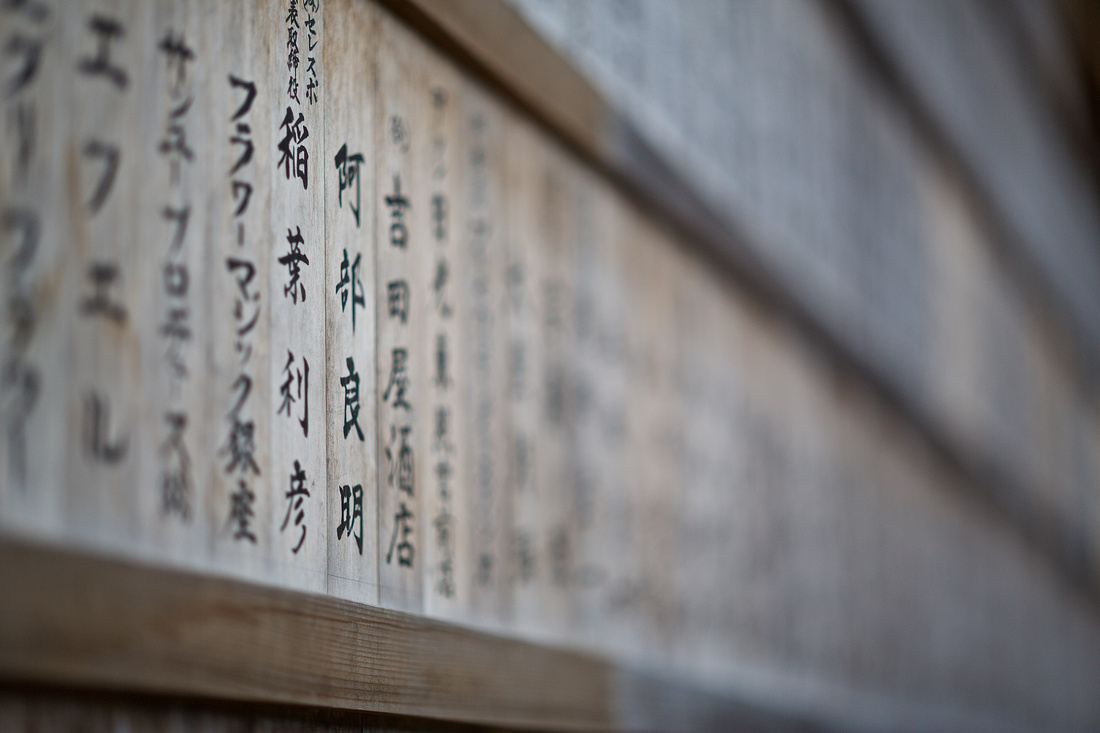
Here we go: in mor real life environment the practical elimination of color fringing is impressive.
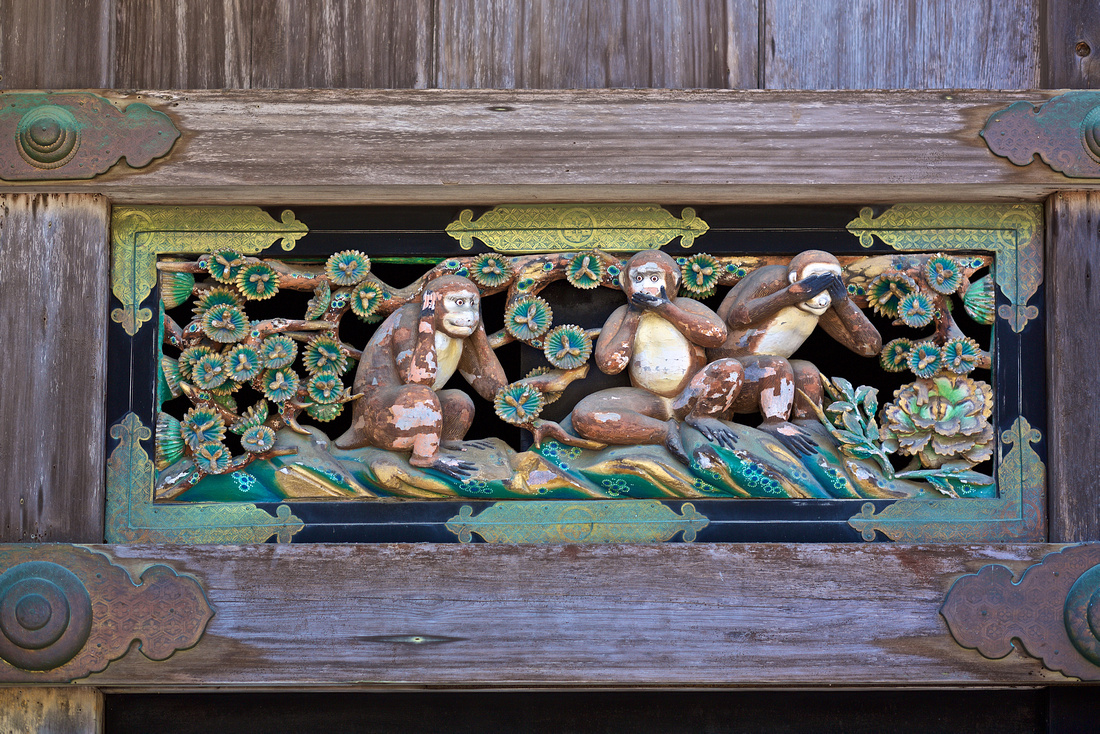
Yes, we all love these monkeys...
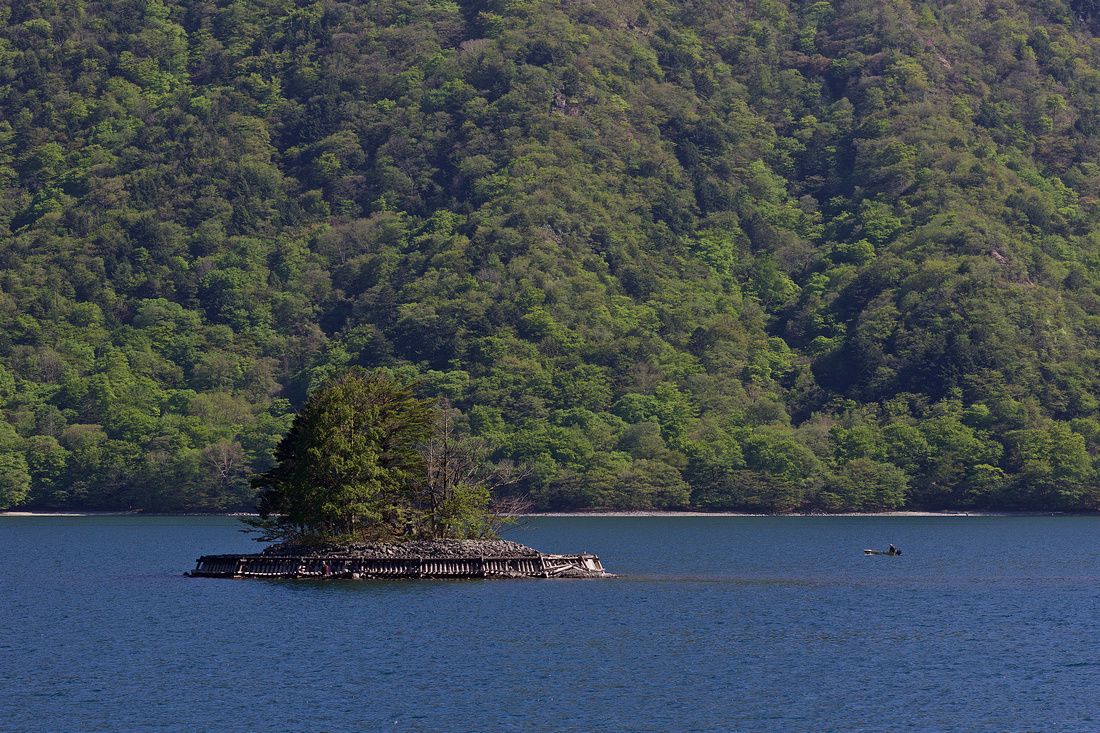
This time i used f5.6.. mindblowing sharp...

The fish is shot with f 3.5, but still pretty vivid...

I like the color rendering in the forest...
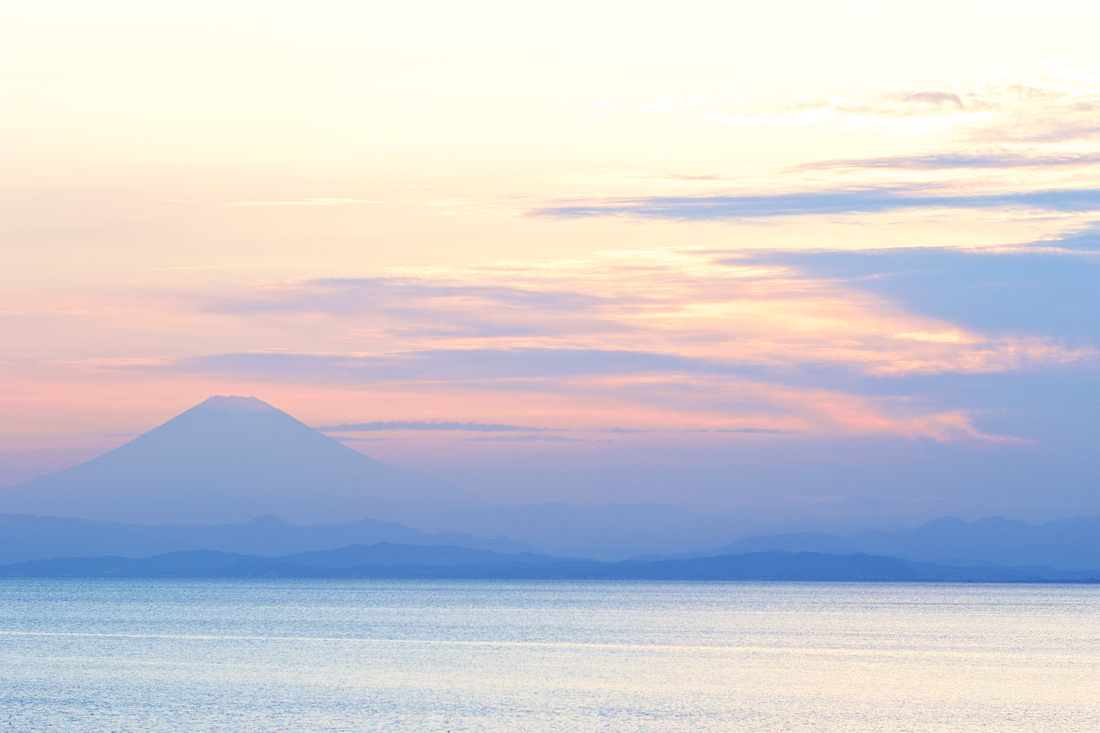
Fuji-san. Shot in Hamaya with the 7dMkII
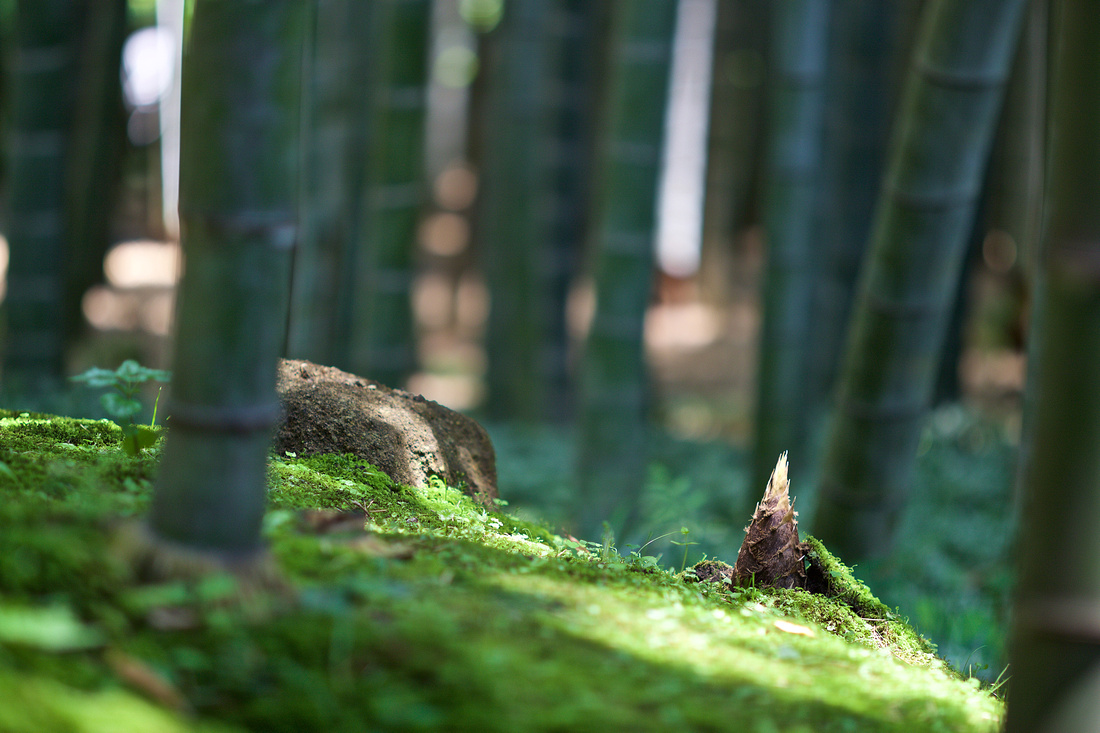
Kamakura: the young bamboo gives me the challenge to check the accuracy of focusing as well as the bokeh...
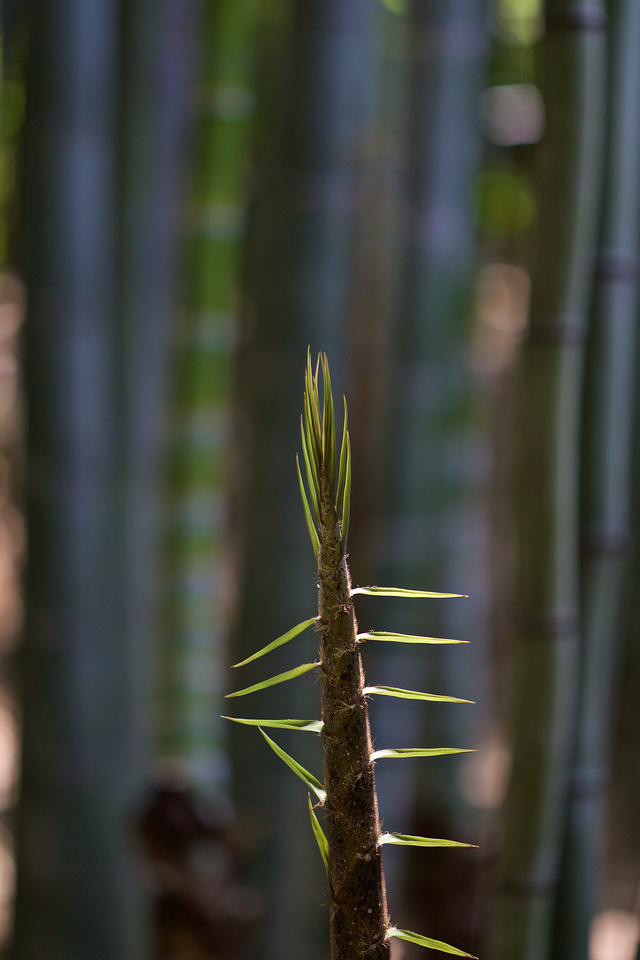
Another situation, also with very young bamboo leaves
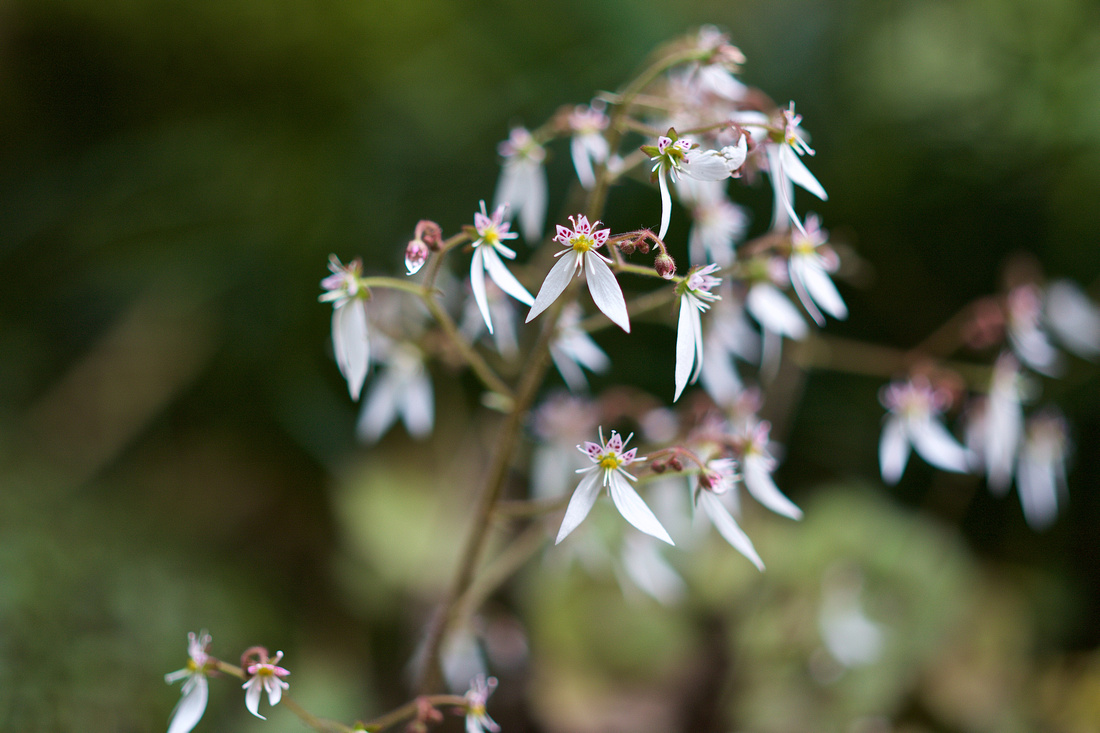
I have never seen a plant like this... But here the 85mm shows it capabilities to focus the viewers eye....

Bird in flight - manual shot - but quite a strong crop...

Part of a wedding ceremony, shot in Kamakura....
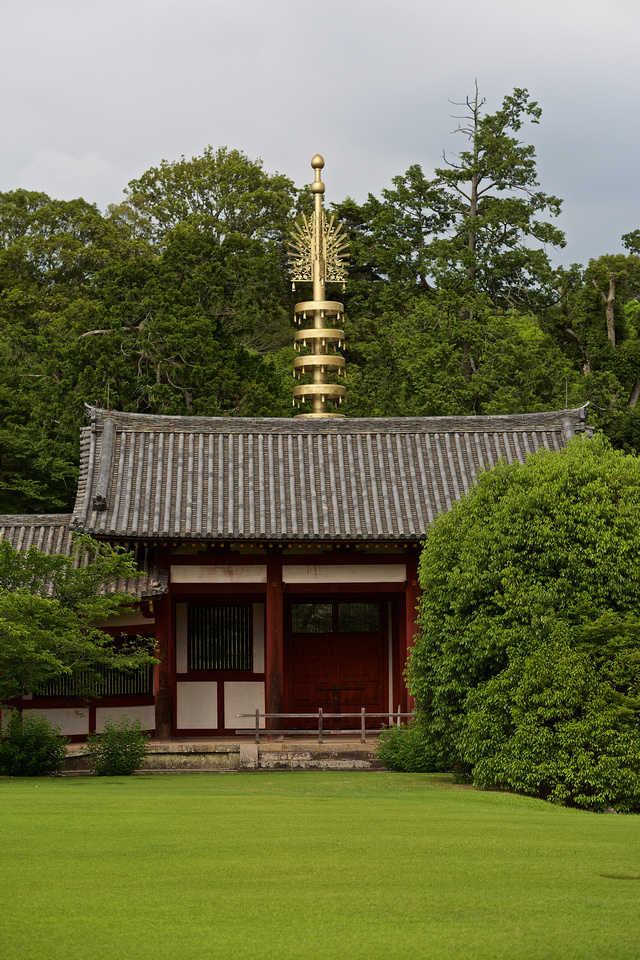
Another Temple in Nara...Again the color saturation is really amazing.
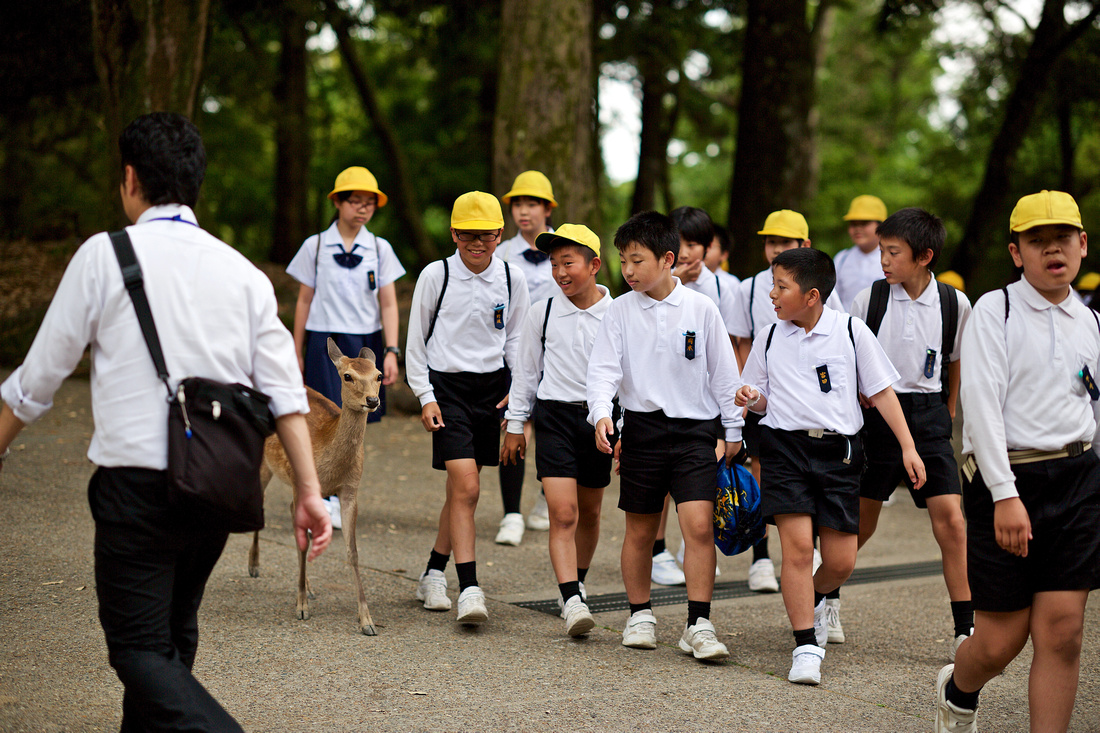
I live this shot from Nara. the deer being integrated in the group....
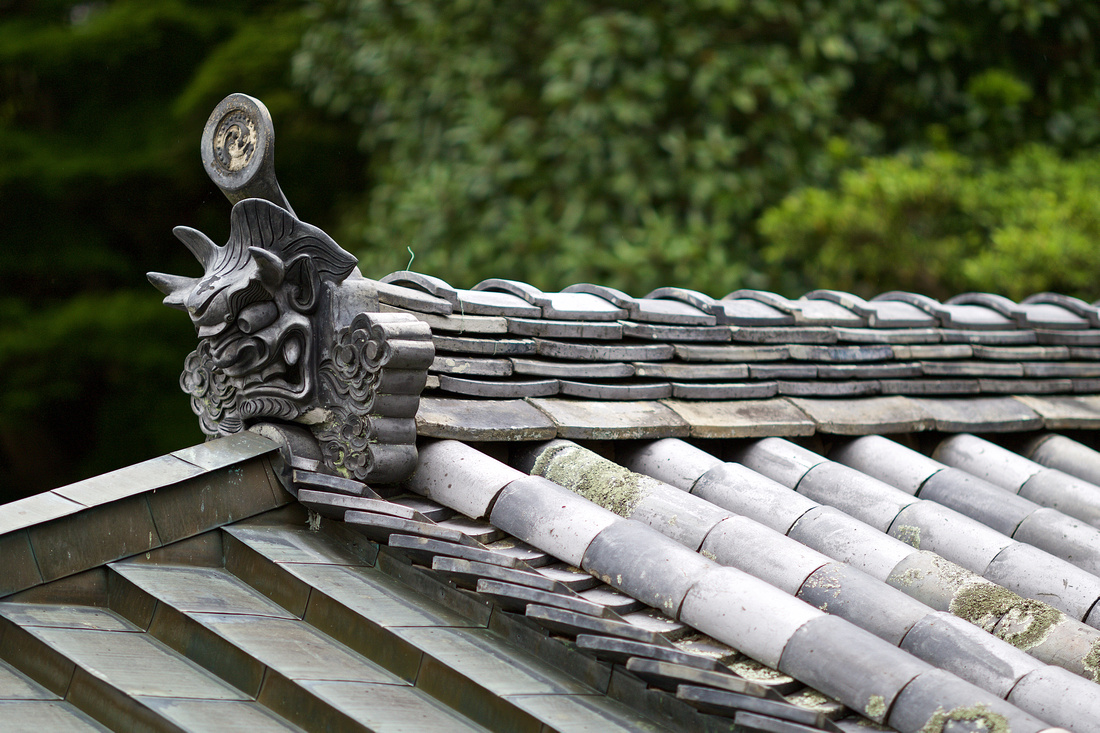
Another shot showing the sharpness wide open, @ f1.4...
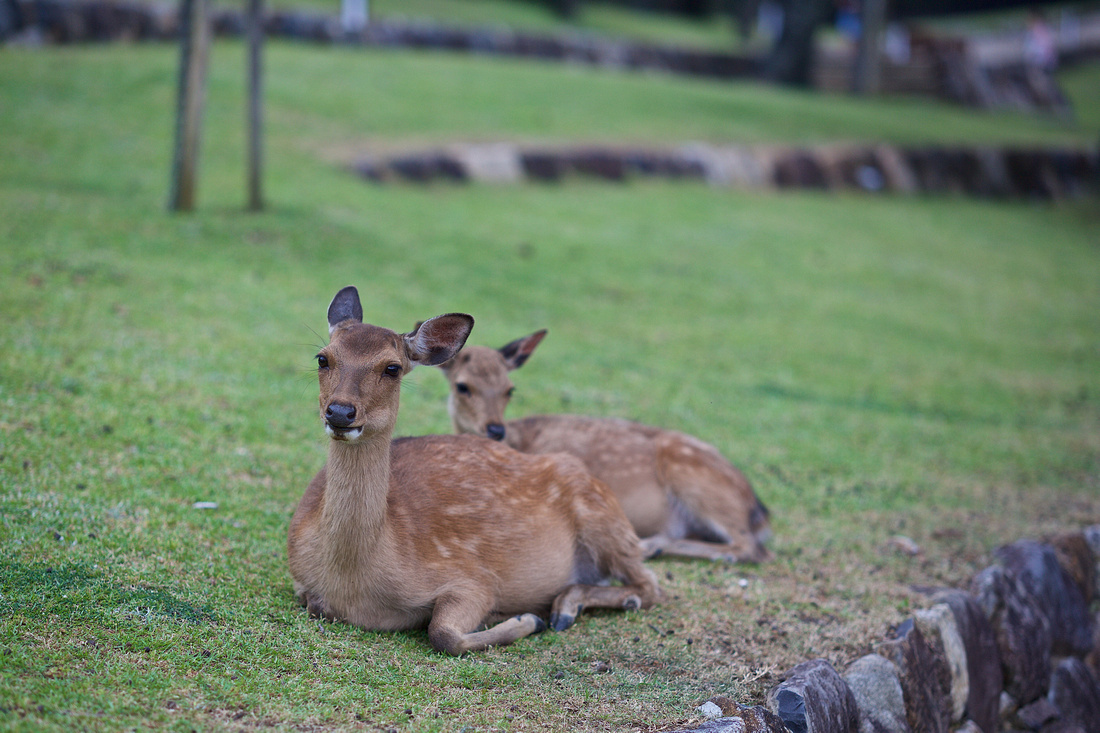
I do love the images when you get a clear and really sharp image...
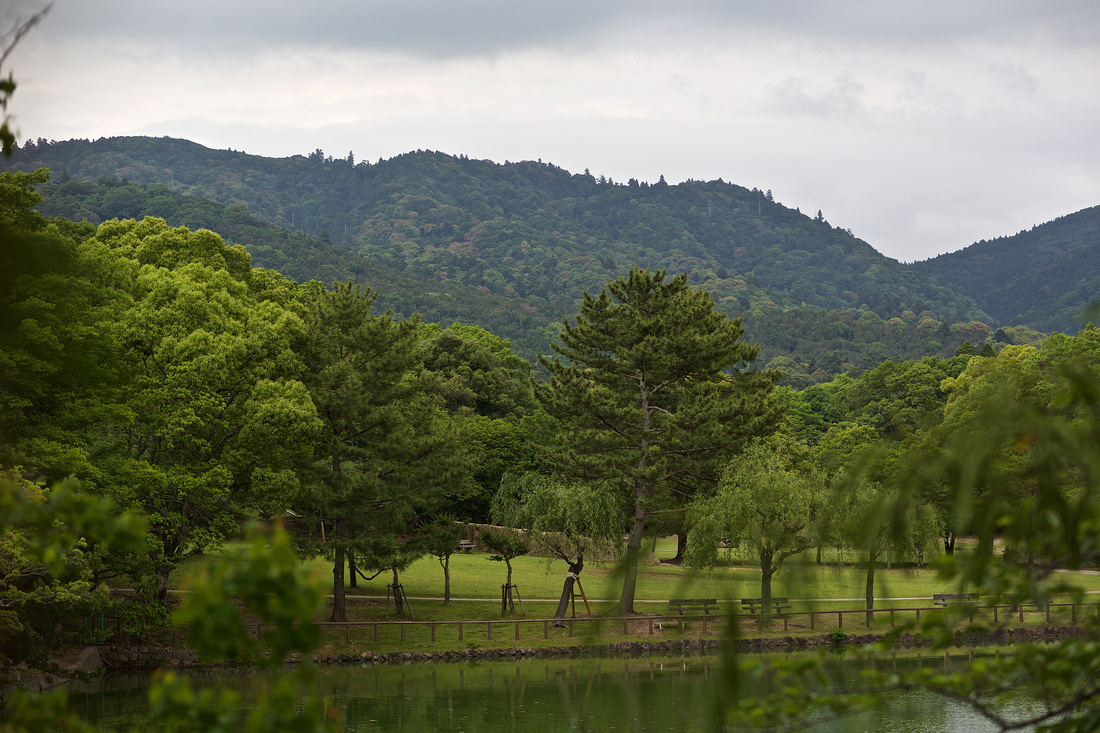
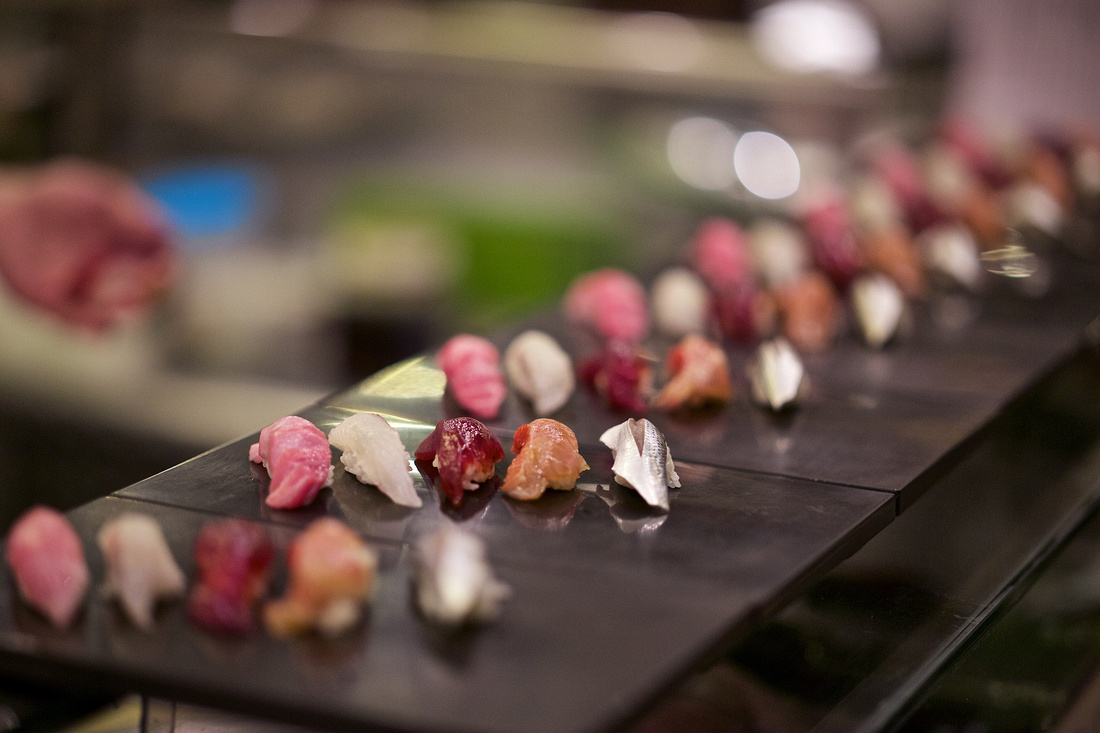
Sushi at its best... and shot accordingly...
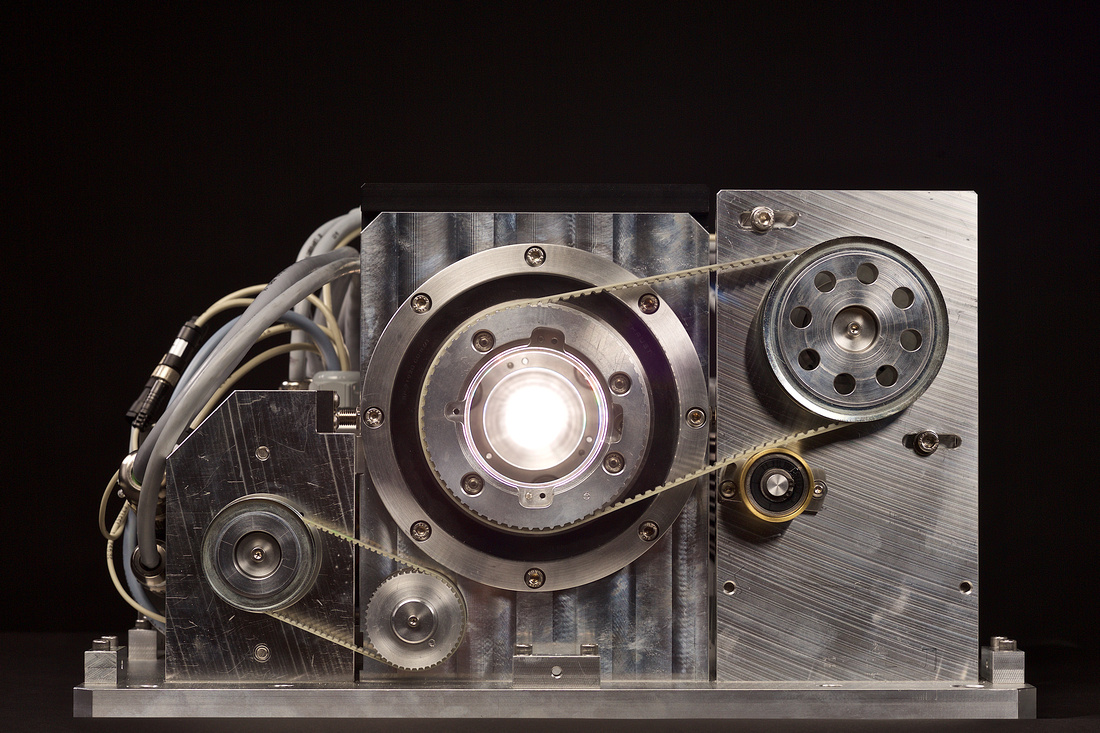 My first product shot with the Milvus: Yes!!! It is an untouched image. But is performs extremely well. It clearly outperfoms the Canon EF 100mm F2.8 L IS USM - which is a very very good lens as well. In recent shots where I compared the 100mm from Canon against the Sigma: the result was clear: I continued with the Canon... And now: It´s clear again: I continue with the Milvus...
My first product shot with the Milvus: Yes!!! It is an untouched image. But is performs extremely well. It clearly outperfoms the Canon EF 100mm F2.8 L IS USM - which is a very very good lens as well. In recent shots where I compared the 100mm from Canon against the Sigma: the result was clear: I continued with the Canon... And now: It´s clear again: I continue with the Milvus...
Verdict
The Milvus 85mm f1.4 is clearly a Stradivari among the 85mm lenses on the market (ok: It might be a Stainer to leave the Stradivari for the Otus (I do not want to enter the discussion about the possibilities of new violins vs ancient masterpieces)) These lenses need more knowledge and skills to make great shots, definitely.
The Sigma by the way got a better reputation after the trials: it is better than expected in the direct comparison to the Milvus - especially in uncritical light condition it is a really good lens as well.
I will test the Canon 85mm f1.2L in the future.... The accurate autofocus is really an asset - and it will be interesting to see how soft it is wide open...
Additional remarks
As usual: All photos shown here in the blog can be seen there:
- The screenshots are there: http://delightphoto.zenfolio.com/p327689435
- The real world photos you will find here: http://delightphoto.zenfolio.com/p209750210
The product shots of the lenses were made with the 5D MkII and the Canon EF 100mm f2.8 L IS USM.
Most of the photos you see are not retouched - but I applied my standard settings for Raw development. The shots of the lenses I increased the shadows as well a bit more than usual.
]]>This time my blog entry is a travel entry - and a food one. Eating in China is a big thing: Eating is important: for relationship as well as for fun. This time the Experience was related to Beijing Duck. Before this lunch Bejing Duck was nice, I liked it. But today I added a complete new experience...
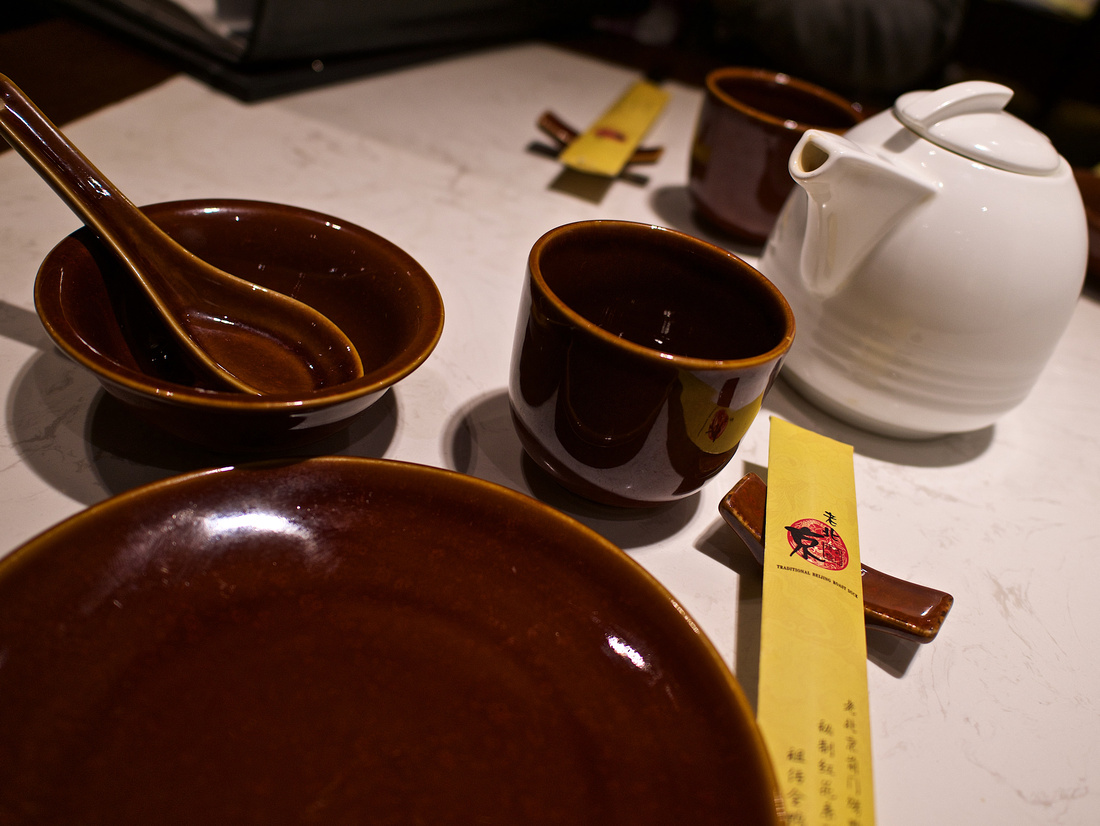
Of course, everything starts with tea... and the typical stuff for chinese food....
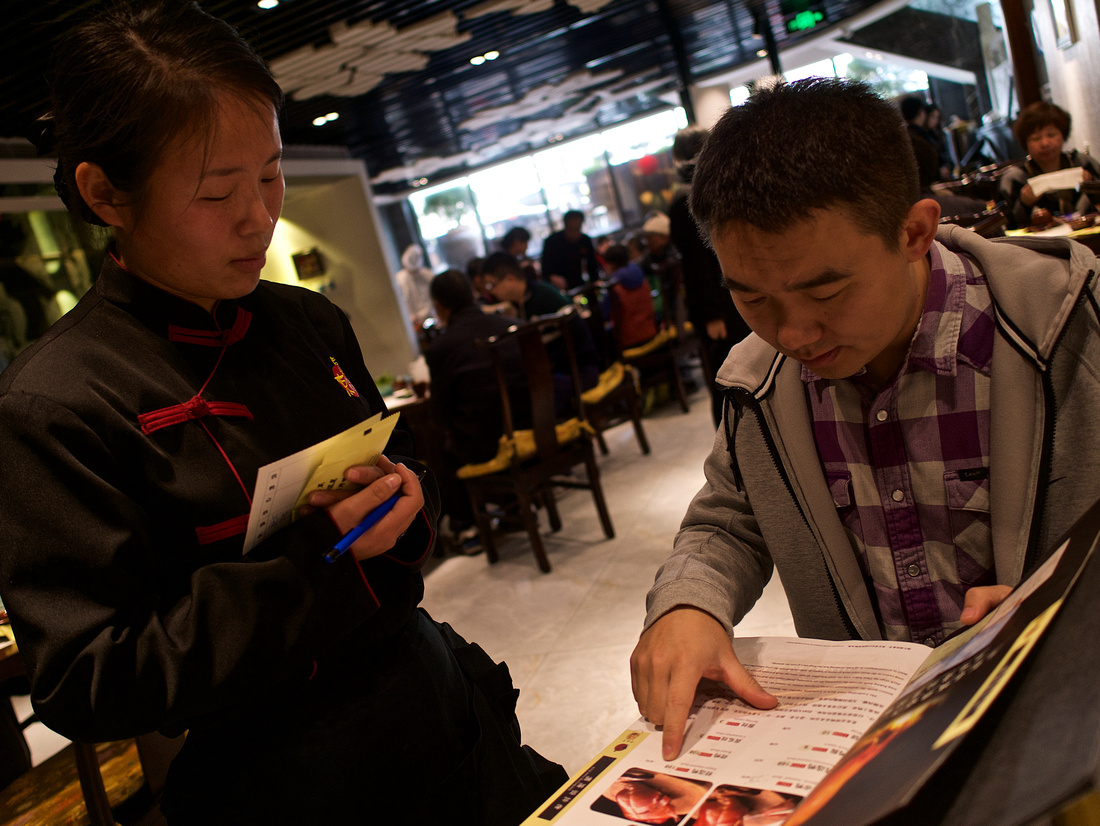
Selecting the dishes is quite easy: you can see the photos of the each dish - but I would not try to do to - because of the different levels of spiciness. but my friend Feng knows how to do....
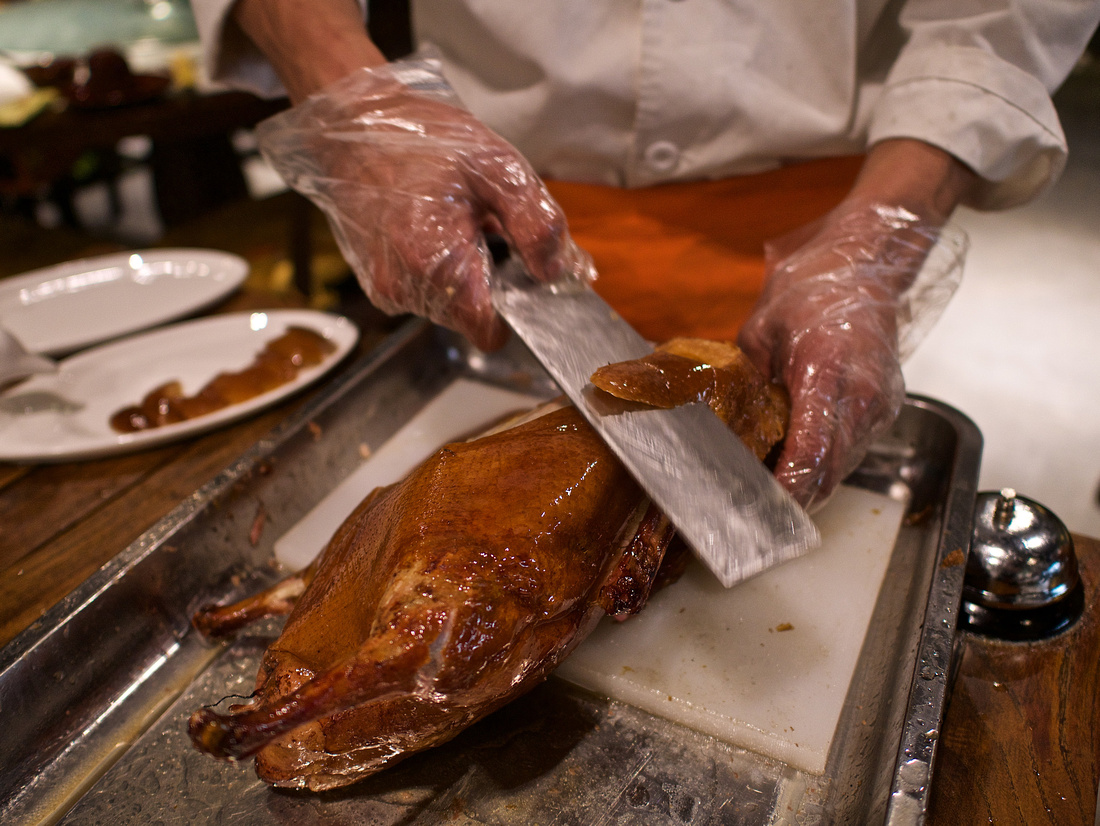
And than they start to destruct the hole animal: starting with the skin...
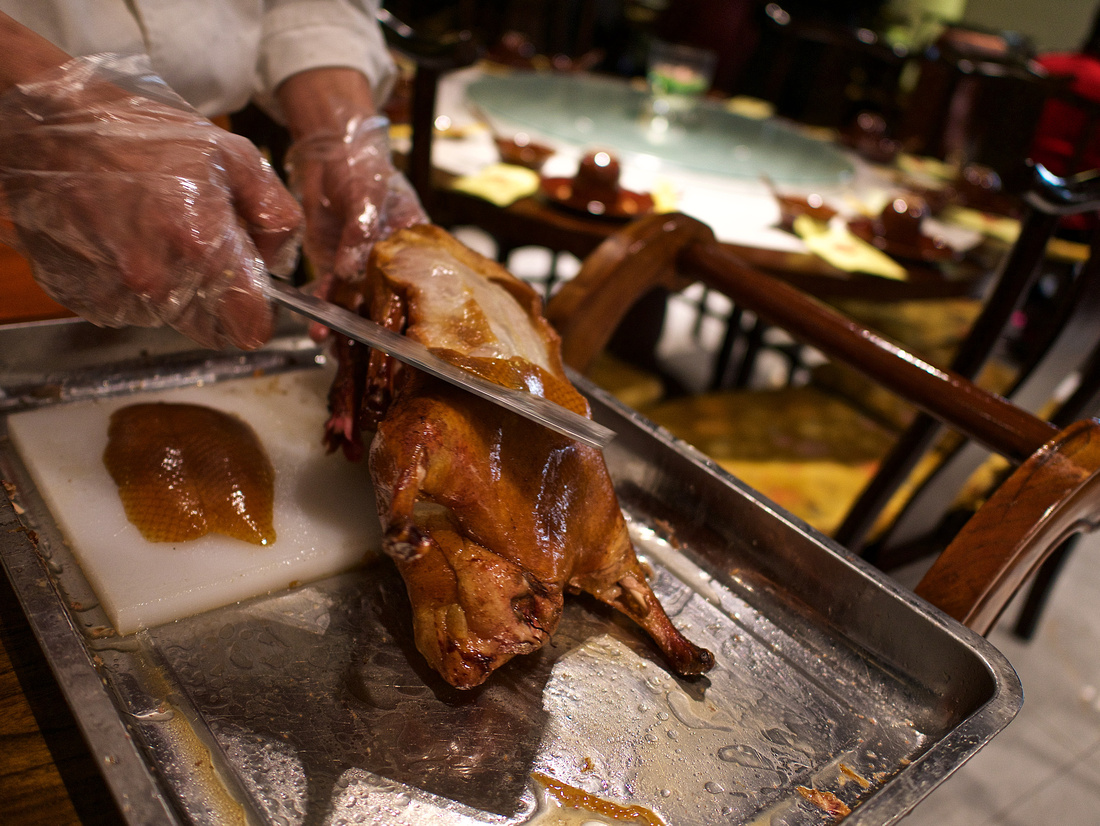
The knife must be pretty sharp.... Otherwise it would not be possible to get the skin in nice pieces. Interestingly: the skin is eaten with sugar... yummieh!!!
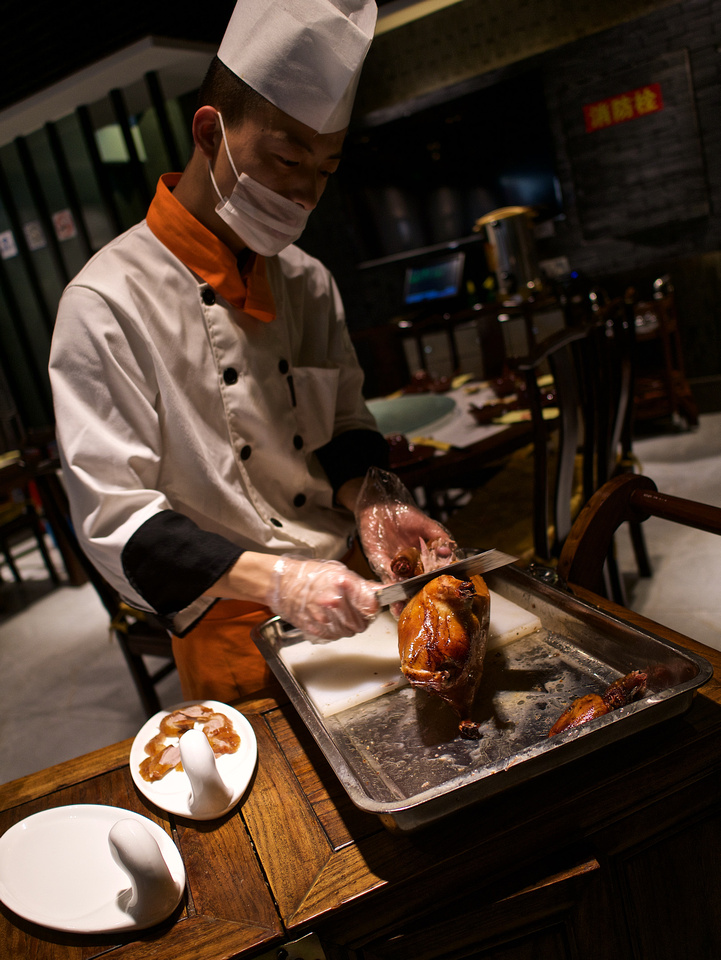
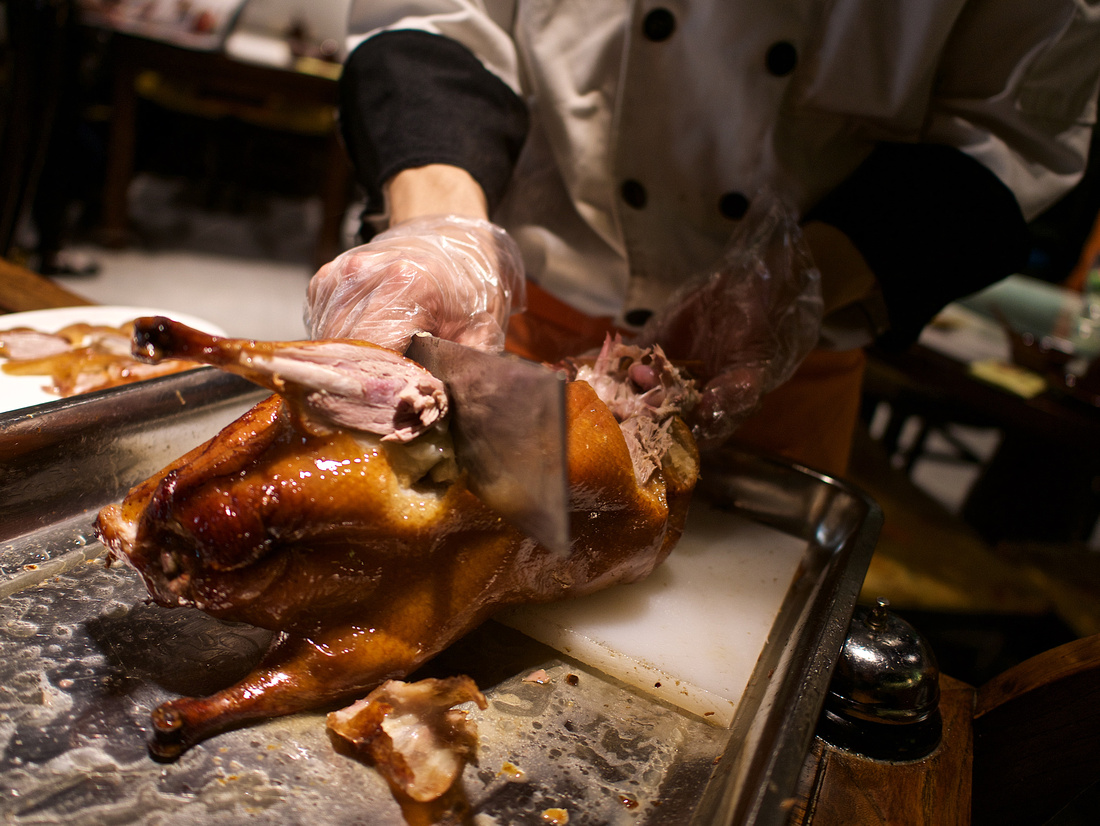
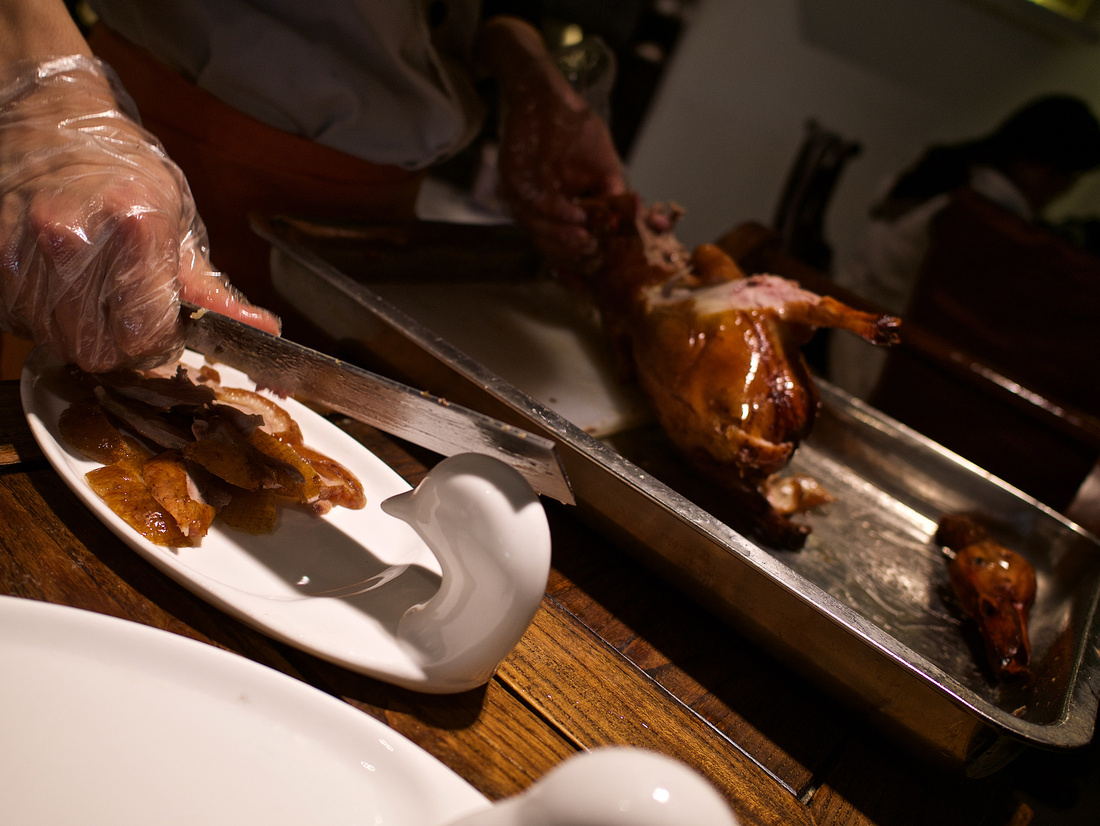

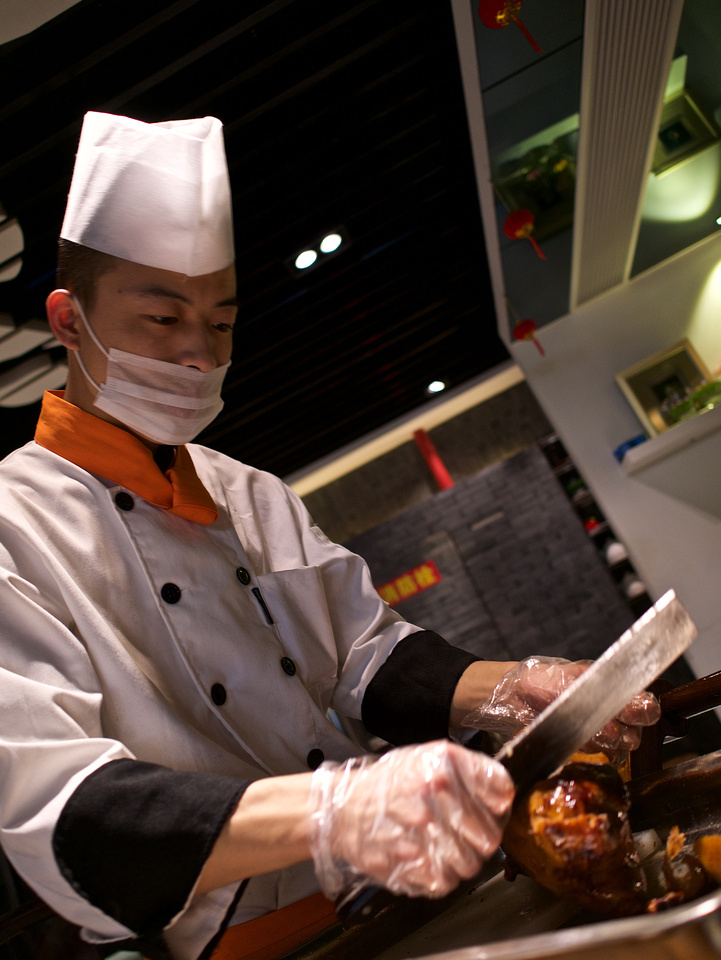
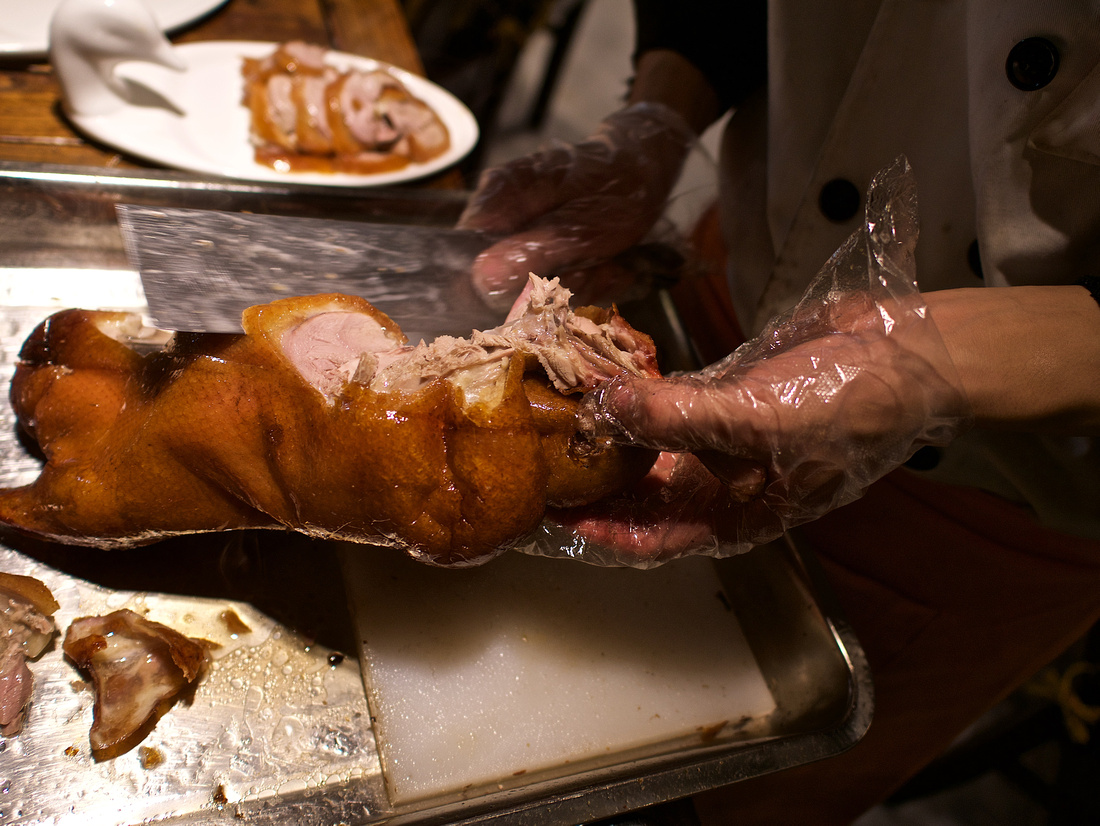

When the duck is served you will eat it the breast similar to the mexican fajitas, but with a special sauce, some cucumber and some leek
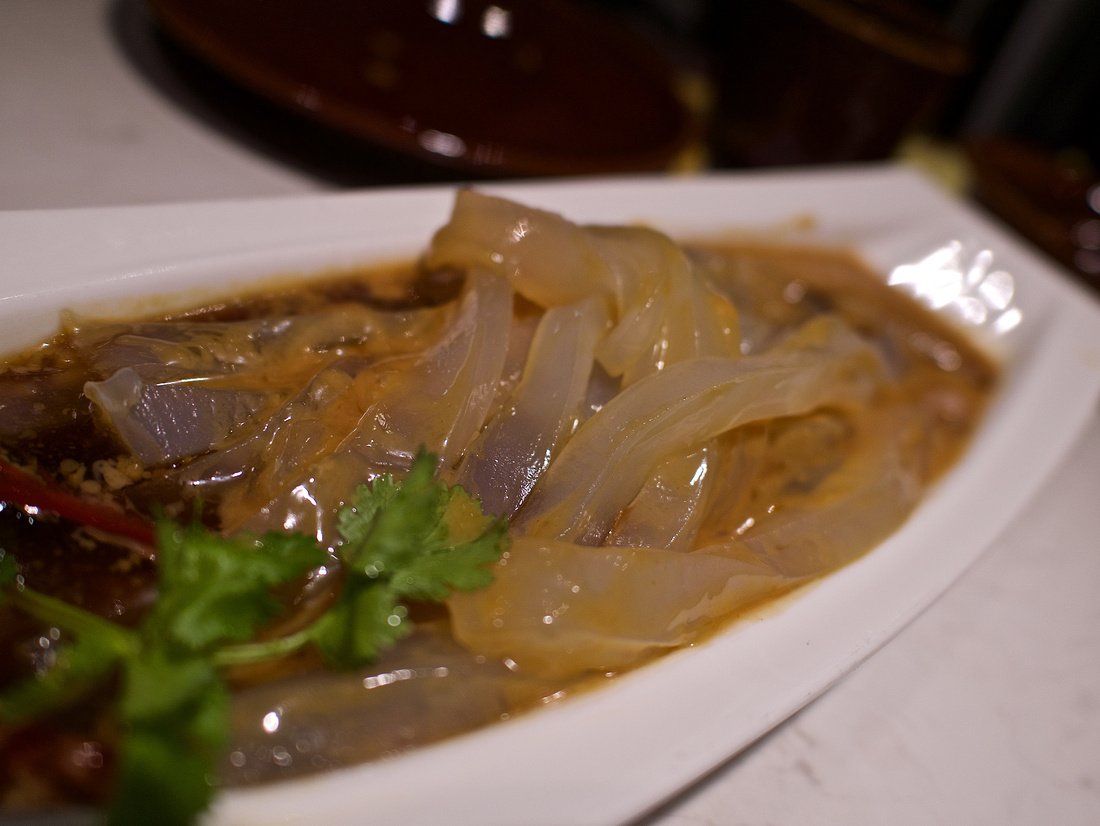
This is an interesting thing: It is basically a kind of noodle, eaten cold in a sesame based sauce
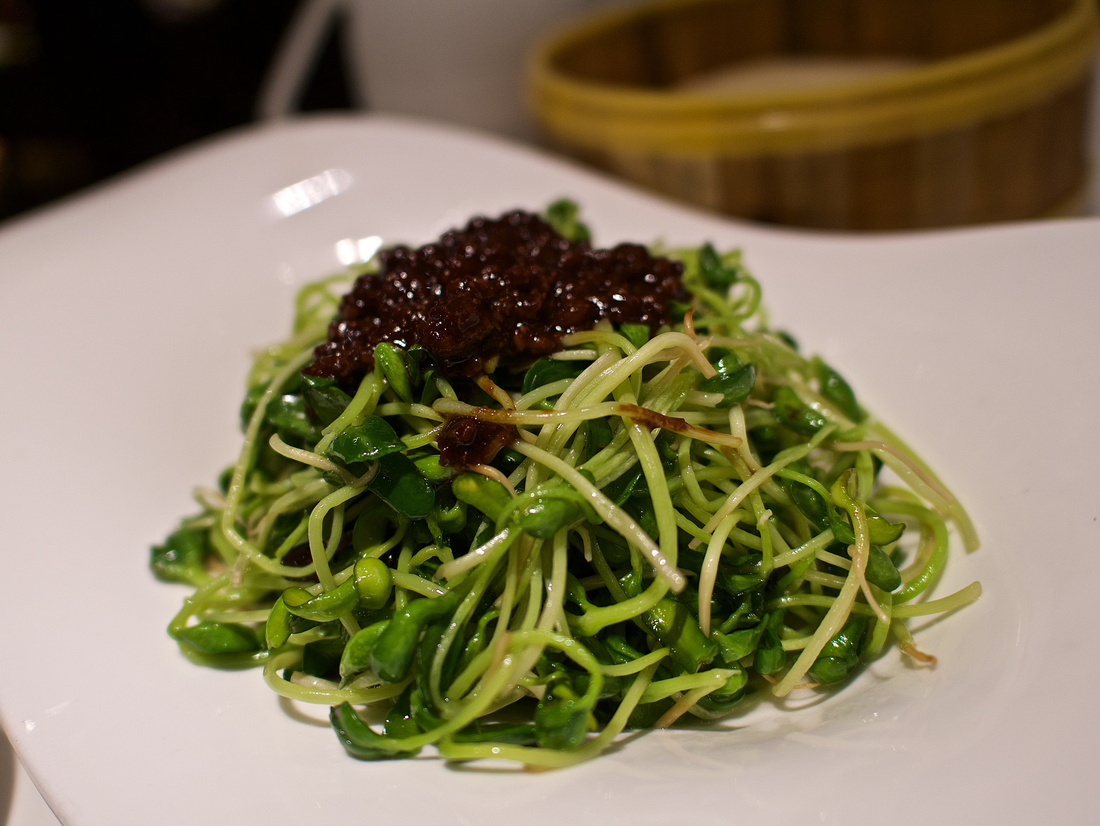
A bit of green sprouds aside.....
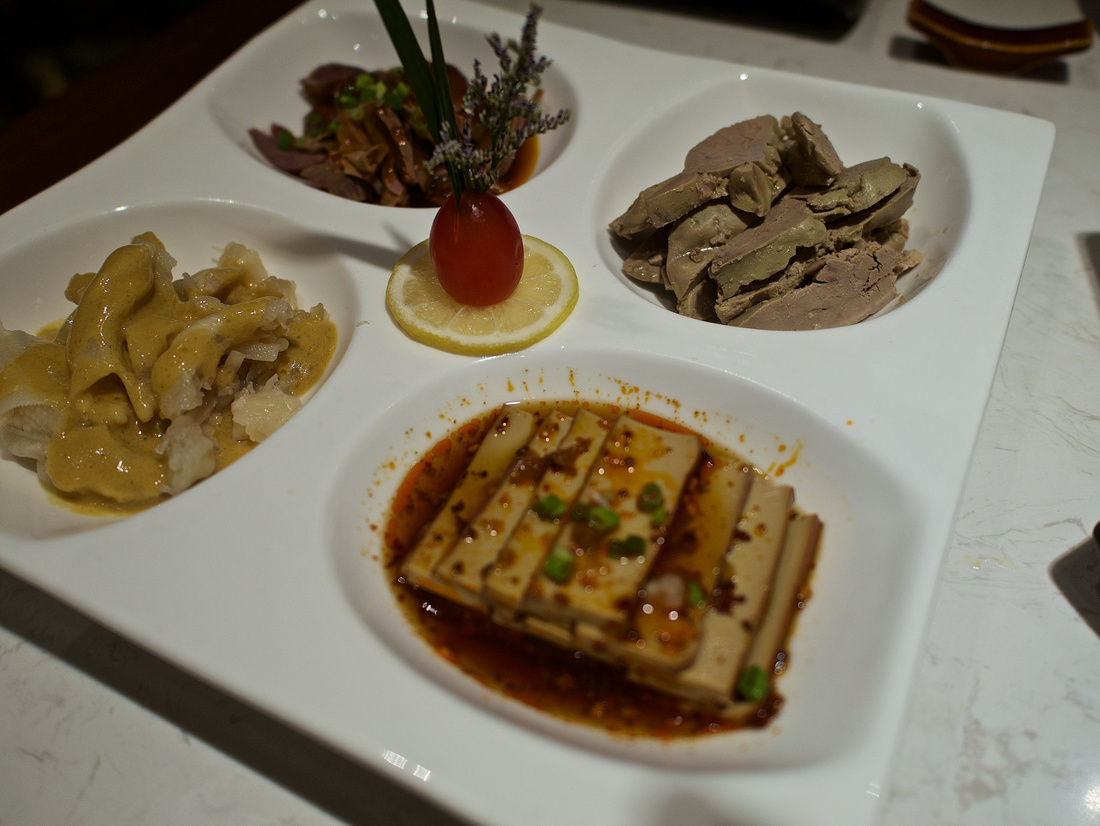
This was a quite interesting side dish: It was all cold. In the front some tofu-ish thing, in the upper right corner the cold liver of the duck. At the top it was a filet of the duck while on the left there was the skin of the feet with some mustard: very delicious....
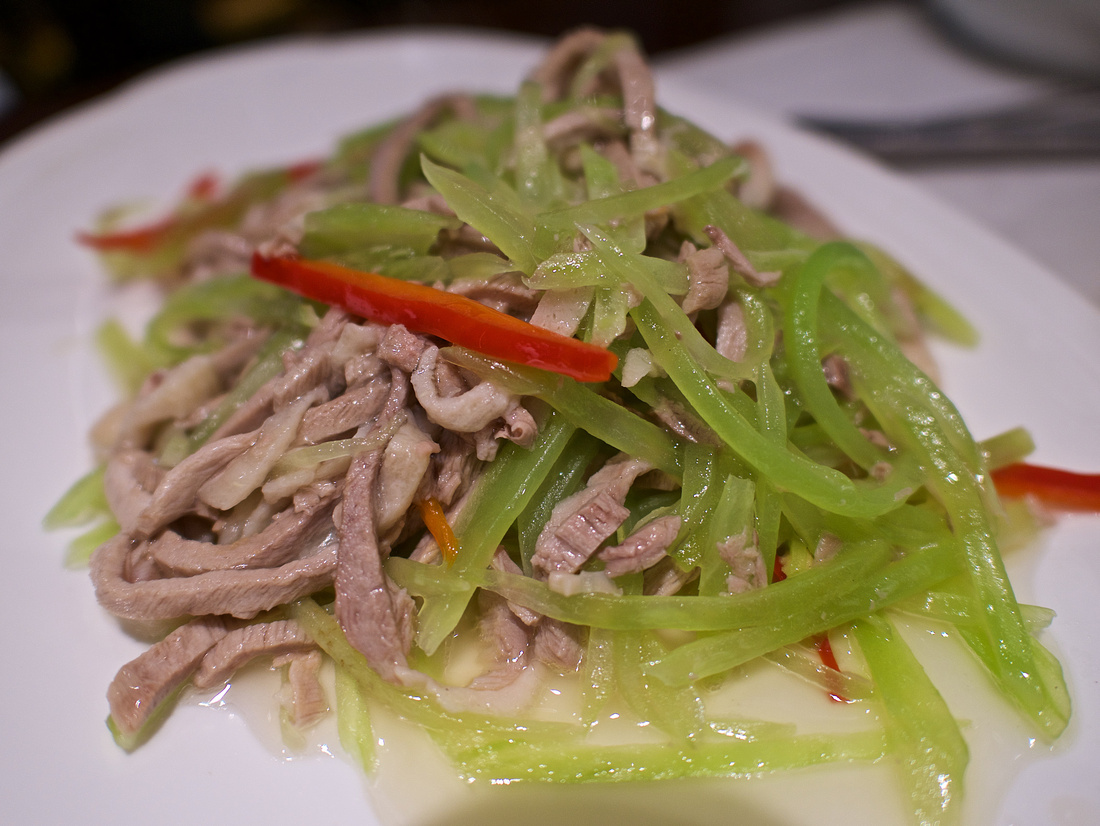
While we cot the breast the rest of the duck was prepared for the next courses: this one here contains out of asparagus and duck meet - all cut into the size and form of noodles: pretty mild but absolut yummieh!!!

The next course is very stunning: what you see here are the bones of the duck. Fried. It was done pretty spicy but absolute delicious.
After the lunch we were lucking around first we saw these little terra-cotta sculptures showing the traditional feeding and preparation of the ducks in China...
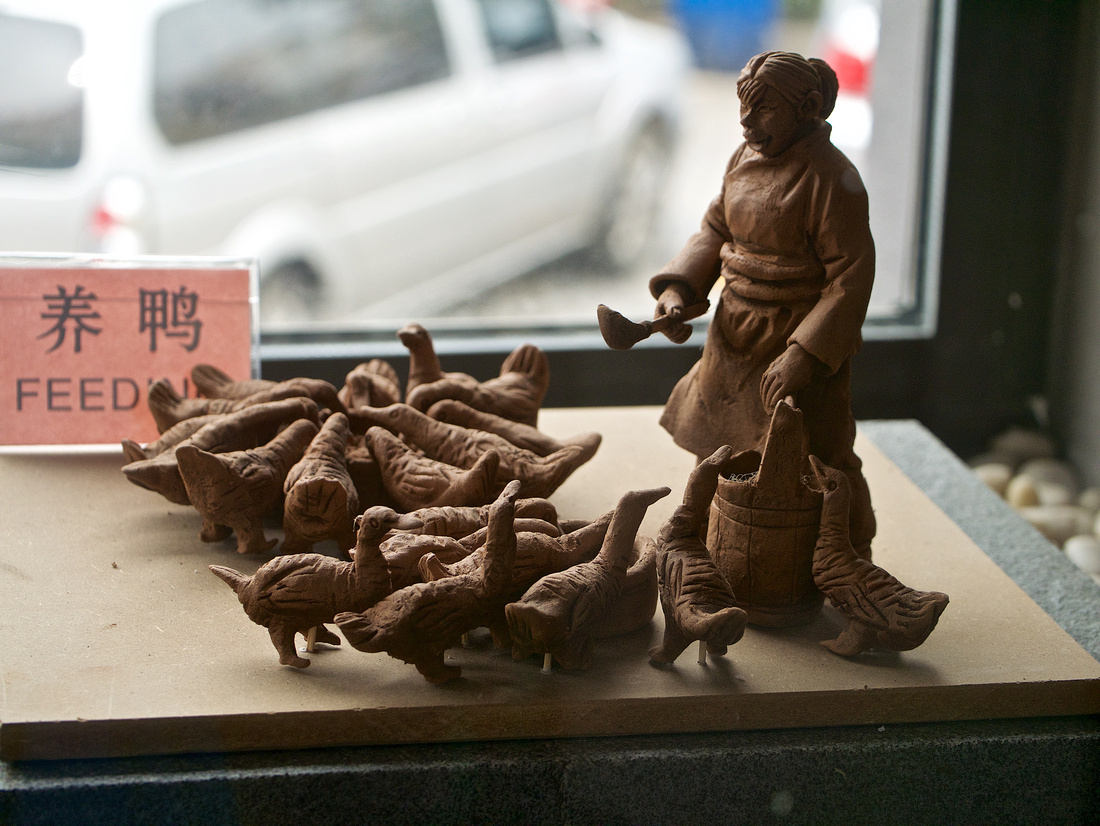
Bloddletting
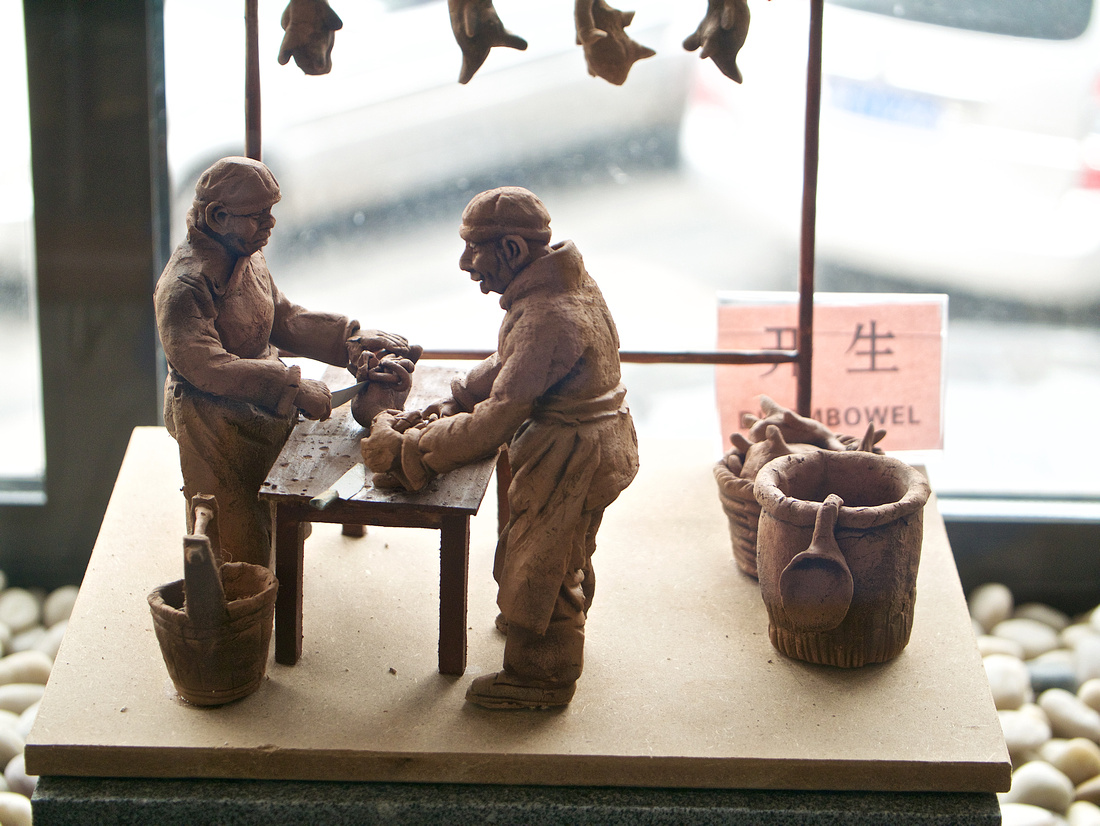
Soupbowel

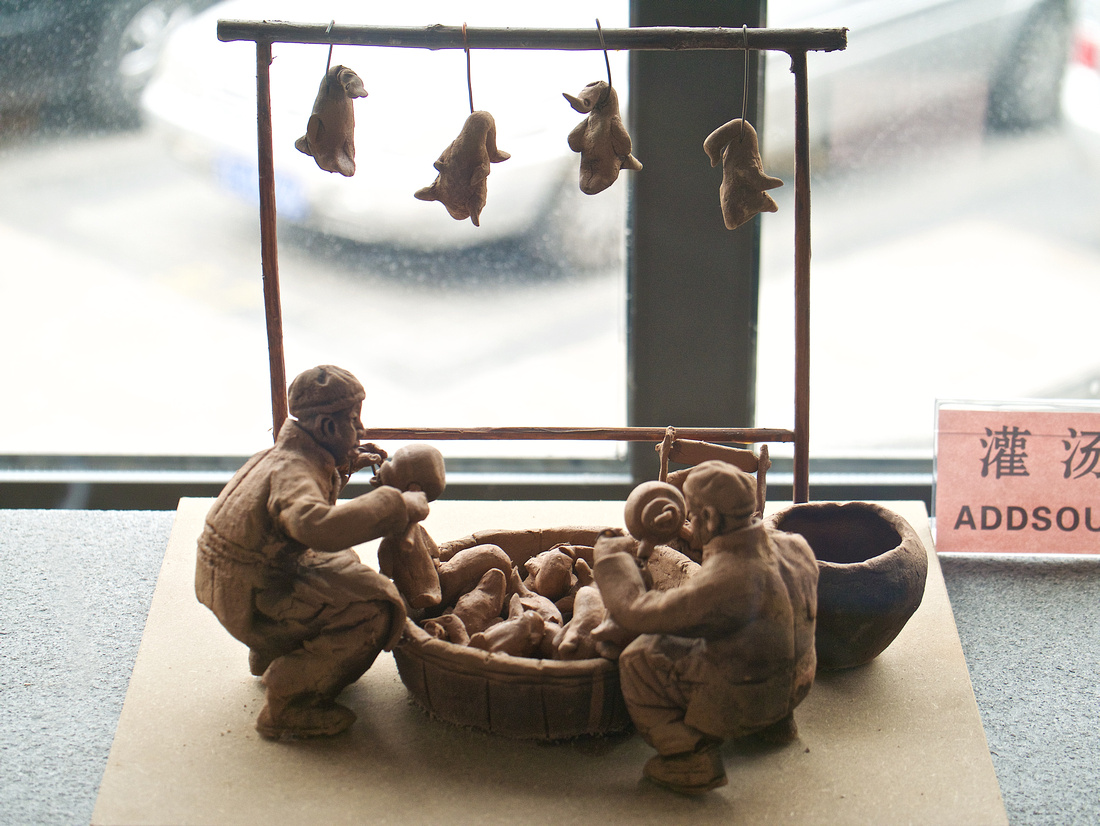
Addsoup
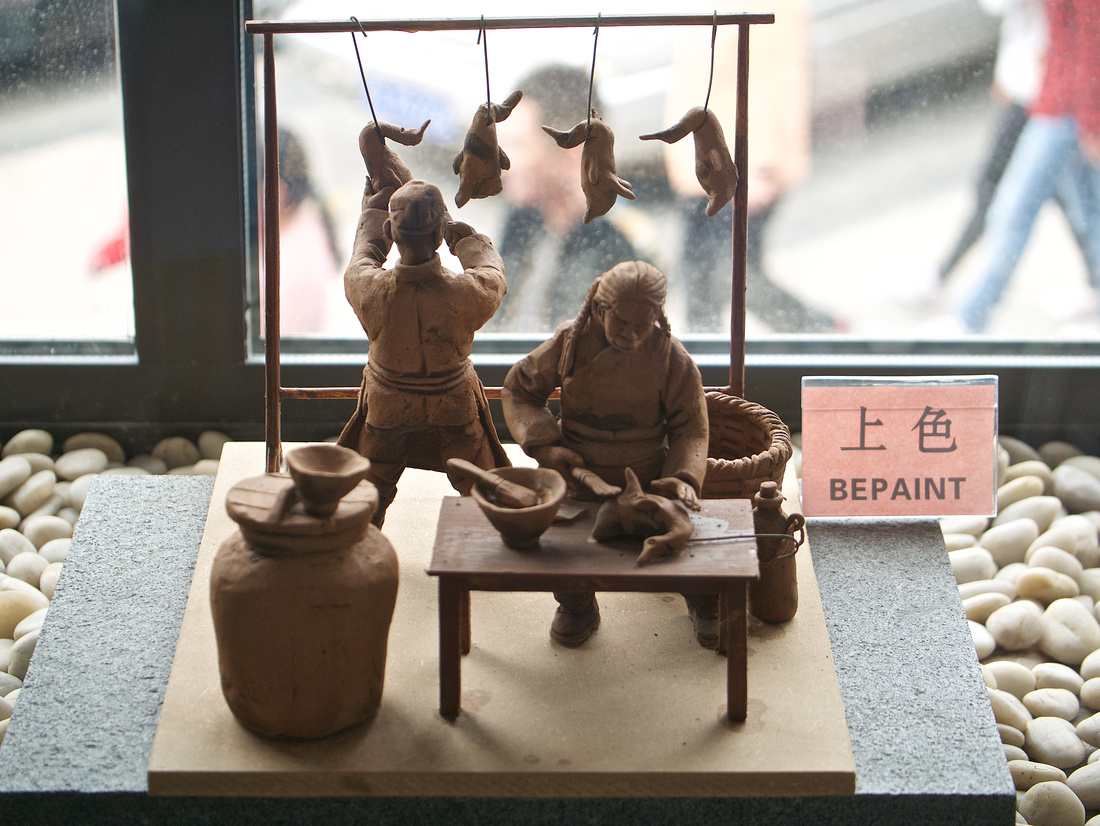
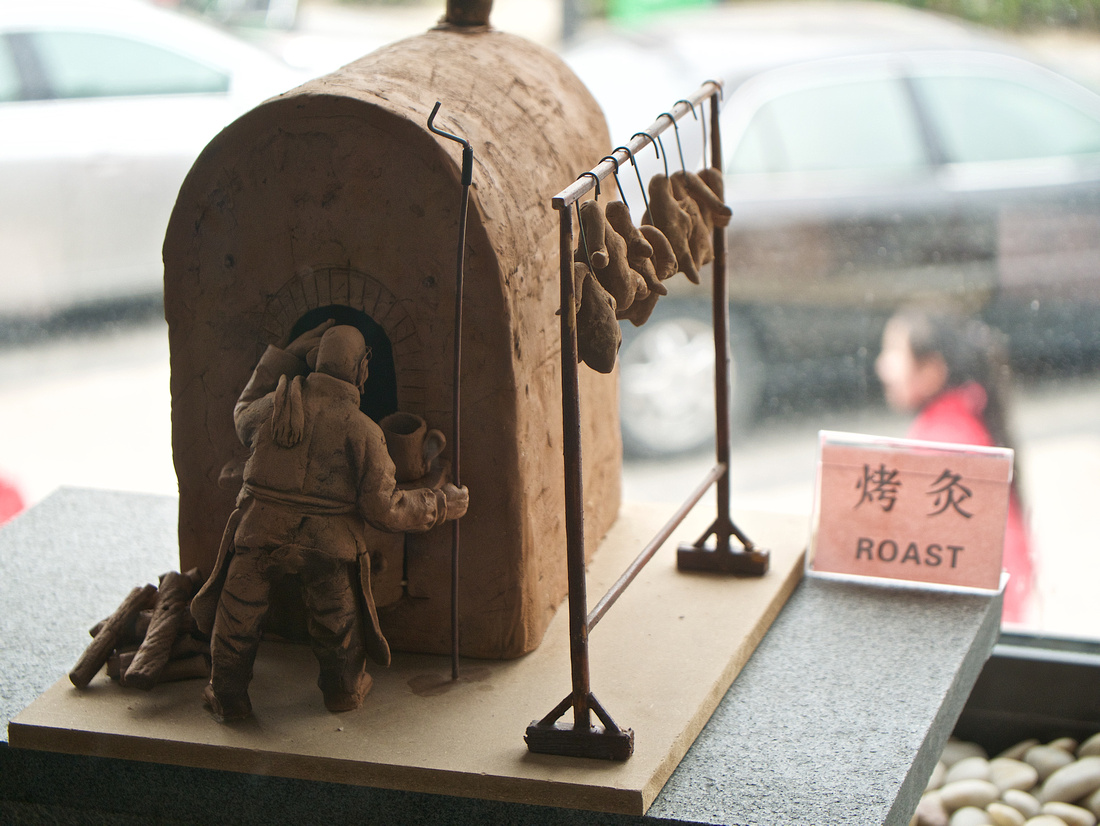

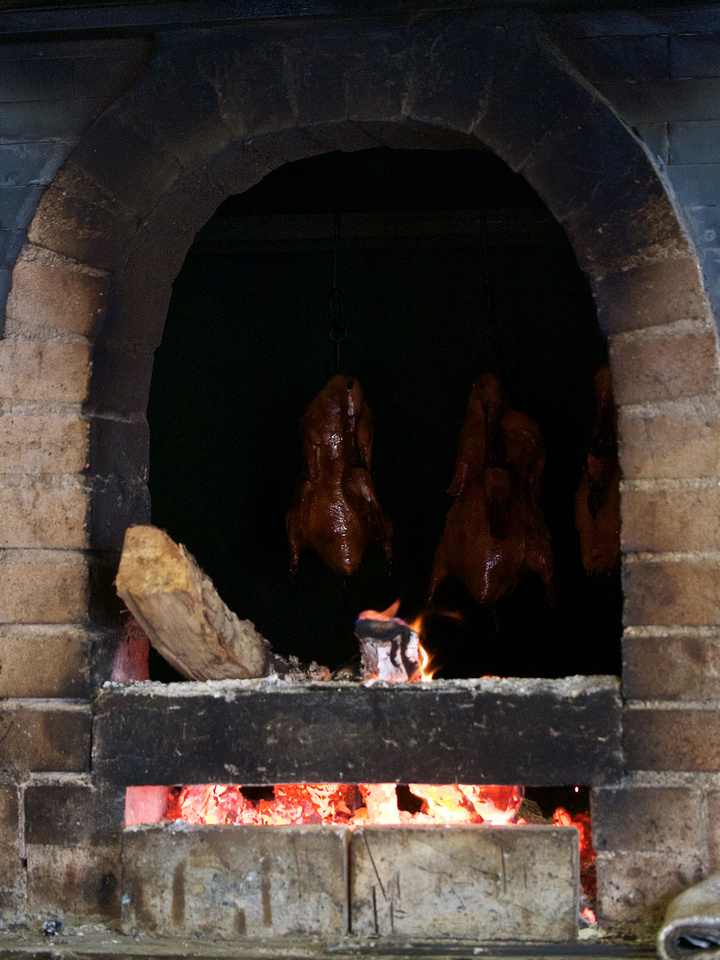
Ad the end we saw the special oven where the ducks got roasted: a special oven similar to the oven shown with the terra-cotta sculptures....
Due to the design of the oven I assume that the roasting process is kind of slow cooking....
Some Photographic Remarks
All photos were made with the Lumix G7. The photos of the food were made with the Leica Summilux 15mm f1.7, the photos of the Terra Cotta Sculptures are made with the Leica Elmarit 45mm f2.8
If you want to see the photos in high resolution: They are published under http://delightphoto.zenfolio.com/p173583152
]]>Since a long time I know that a smartphone can be a pretty good camera. My experience with that is based on iPhones and typically i use the newest version all the time. I once had a long bicycle trip from the Cote d´Azur to Stuttgart and i only had the iPhone with me: with pretty nice photos: http://delightphoto.zenfolio.com/p567728685
When I got my iPhone 6 new I made a pretty shocking experience: This camera is damned good: http://www.zenfolio.com/delightphoto/e/pages/blog.aspx#831619993 But in this first shooting experience there was more: We were invited to a friends 50th anniversary. And during this anniversary I did not carry my gear with me - only my brand-new iPhone 6+. Our friends were a bit disappointed - they have organized pretty good ballet dancers to dance there.... And they had their camera with them: a Canon 650D as well as a Panasonic Lumix FZ150. I was not able to shoot with both cameras in a way that I wanted to shoot. I shot with the iPhone and I was much happier!!!
Many friends -and friends of friends- ask me which camera to choose. And more and more I come to the conclusion: they should use their smartphone and use the saved money for traveling or whatever...
But this was not satisfying for my. Therefore I decided to make some real world shots to have photos where everybody can see what quality they get from each camera. And than to decide what they want...
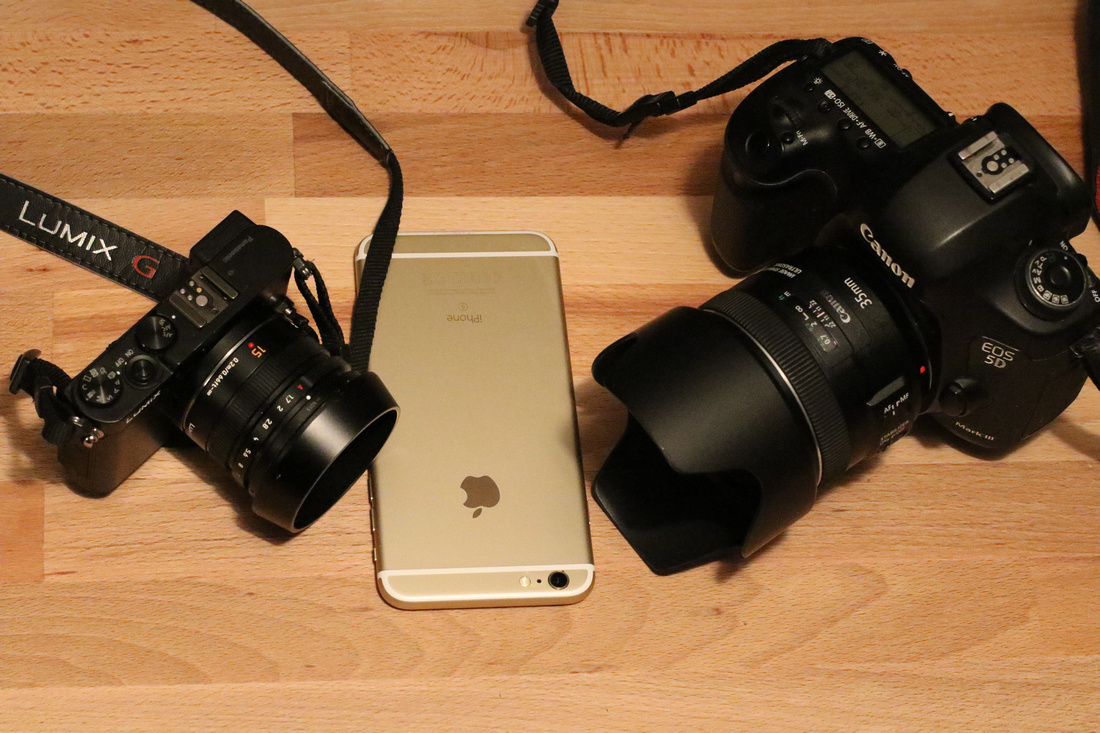
Methodology
Maybe this word is a bit too much and a bit too scientific. I did not want to do pixel-peeping I wanted make it easy. First of all: the gear used:
- iphone 6s+ (Fullframe (FF) equivalent focal length 35mm)
- Panasonic Lumix GM5 with the Panasonic Leica 15mm f1.7 (30mm FF equivalent focal length)
- Canon 5DMkII with the Canon EF 35mm f2.0 IS USM
The "real" cameras are equipped with high performance lenses which are by fare better than the standard kit lenses...
How did I shoot:
- iPhone: I used the camera as it is, no further gimmicks. I put my finger where I wanted to have the image sharp... and that´s it
- GM5: The camera was set to intelligent Auto. In most of the cases I used the touch release. In this mode the camera sets the focal point to the finger tip.. very nice and convenient, I shoot RAW with my standard development settings in Aperture
- 5DMkIII: Here I used the Program mode because in the "Creative Auto" Mode The camera decides where the focal point should be... And I wanted to choose it for better comparability... I shoot RAW with my standard development settings in Aperture
The idea behind this method is that the results are depending on that what a user will get without applying to much photographic know-how...
The Images Part 1
All photos have the same order:
iPhone6s+ - Lumix GM5 - Canon EOS 5D MkIII

An early morning shoot. Very easy to see: the cameras have different white balance as well as different exposures.

In this shot you can see the differences even better: It´s all about bokeh: the difference between the in focus and out of focus areas in the photos....

In this example: I do not see too much differences....



very similar... or?


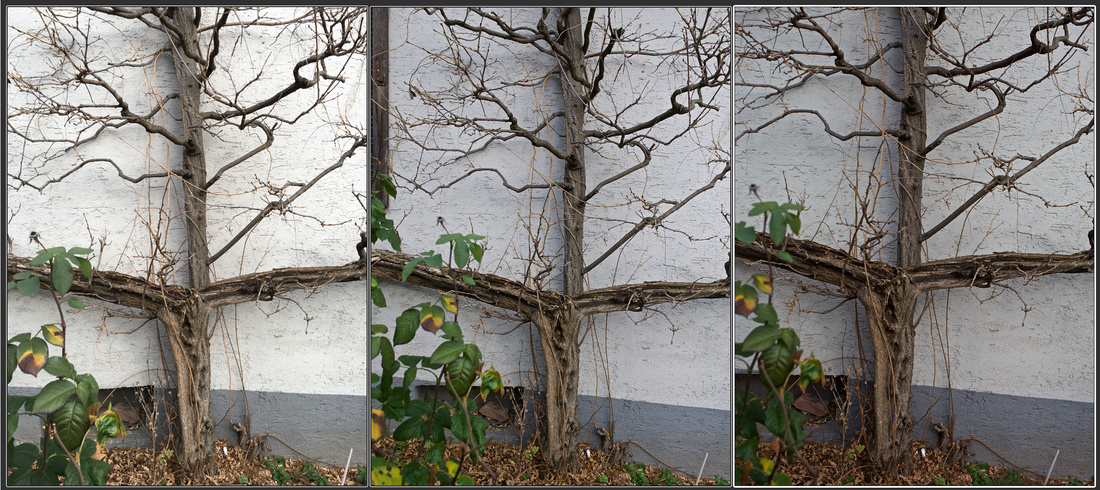


Shooting against the sun: This is a topic where the larger sensor might have advantages. Unfortunately there was no clear sky. I wanted to produce nice stars: A topic where the iPhone will loose due to the lack of any aperture....

This photo was pretty interesting: I enhanced the shadow areas. Here have the real cameras shooting RAW real advantages: in the iphone the shadow areas are was he out while the "real cameras" are rendering much better.

One little point: The iPhone has a closer focus point than the other two lenses. Again: the difference is in the bokeh.. But all images are useable...

Againg: the color settings are different...


One charming topic for the iPhone: no other camera can get such a low view angle...


In this session I made more corrections: I adjusted the exposure to more similar brightness. And I corrected the white balance a similar point s in the image. Below you see a crop from the photo above

Here is the nearly 50% crop from the photos above. It shows clearly that the real cameras deal better shooting against the sun. But again: I have very good glass on these cameras...

Here another example shooting against the sun.
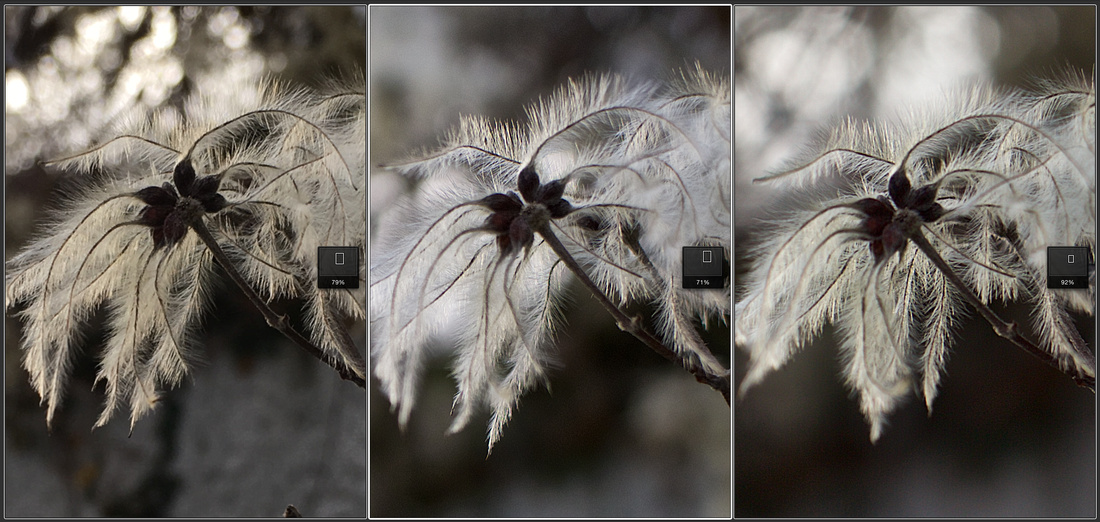
Another close to 100% crop. Mmmh.
The Images Part 2: Limitations of the systems
After some discussions especially in one µ 43 forum (www.mu-43.com) I felt the opportunity to add some photos which show more the limitation on one side of the iPhone, on the other side of µ43 as well.
These photos do not follow exactly the methodology of the part 1 photos: They were shot in different days at similar times at similar locations. In terms of FullFrame i was shooting with the cheapest lens of all: the Canon EF 50mm f1.8 STM, a lens which I call the Canon drug dealer lens: It offers at lowest costs shooting high end photos on any Canon body...
I also were shooting differently: The Canon was set to manual but the GM5 to intelligent Automatic.
 The series above is a little bit misleading: the iPhone image was taken one hour earlier than the GM5 and 2 hours earlier than the 5D3. Therefore there was a bit more light: enough to deliver good images. But more interesting are the photos below:.
The series above is a little bit misleading: the iPhone image was taken one hour earlier than the GM5 and 2 hours earlier than the 5D3. Therefore there was a bit more light: enough to deliver good images. But more interesting are the photos below:.

In these light conditions you can clearly see the limitations of the iPhone. The light condition were showing 2 EV´s (Exposure values or f-stops) less light: and the iphone image gets lost - the GM5 also starts to show some limitations while the Fullformat delivers clear images.
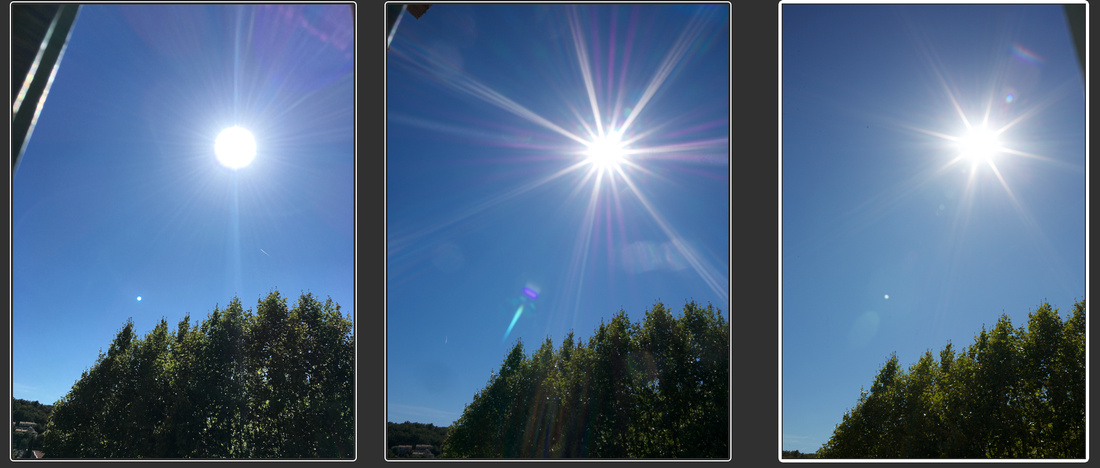
Shooting against the sun. This was a topic of its own. It took a long time for me to have a really clear day and having everything with me... but here we go: the FF shows the lowest impact of the sun and nice stars, really nice. But we have to keep in mind: this is also - and dominant- a question of glass. But what you clearly see: the iPhone is not delivering any stars.....
Another interesting example comes from my specialties: HDR Panorama:
 This is a panorama shot with the iPhone 6 plus. And the next image was shot with the Canon 5DMkIII
This is a panorama shot with the iPhone 6 plus. And the next image was shot with the Canon 5DMkIII
 Just a little bit of difference...
Just a little bit of difference...
If it comes to Panoramas: the iPhone panoramas are great: They deliver great images with incredible resolution. But there are limitations as well: In very rare cases I could see some stitching artifacts on the iPhone.

The artifacts ar visible in the steel rope from the mast...
This photo was taken to get the feeling wether the place I wanted to take the photo was suitable or not: It was the idea to takle the photo around sunset and int the blue hour.

The "real" photo was taken with a panorama head and with the 5DMkIII.
Another topic is long time exposure, like in astrophotography: here comes the time for the FullFrame camera:
I was in Yosemite this summer and I was shooting the milky way in front of half dome:
 This shot was taken with the Samyang 14mm f 2.8 @ ISO 1600 and 15s exposure time (and 5 images stitched together) Not to bad I guess
This shot was taken with the Samyang 14mm f 2.8 @ ISO 1600 and 15s exposure time (and 5 images stitched together) Not to bad I guess
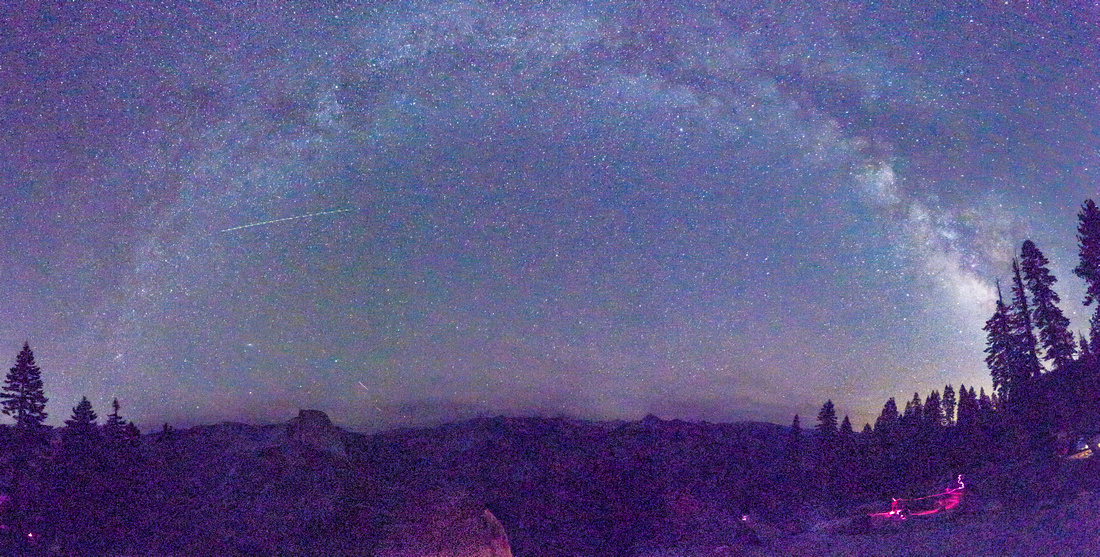
This photo was taken with the G7 and the Panasonic 7-14mm @ ISO 3200 and 15sec.... It was really hard to stitch...
Conclusion of the sample shots
I hope I could show some samples of "normal" photography. This shows what you can expect from the iPhone - and what you will get from "better" cameras in similar -or even identical situation. There are some clear differences but in all these cases the iPhone delivers good results. As long as you do not need or want "more": stay with the iPhone. But invest in the newest one... Apple has 400 developers - I guess more than any camera manufacturer - and the develop one camera per year...
Shooting experience
Some words about: how to shoot with these cameras.
- The iPhone works great. it is pretty amazing. It has some specialties in holding the camera: There is not tripod mount and you cannot shoot very lon exposures without using special camera apps. The iPhone has one bid advantage against all other smartphone: the camera is located in the corner which allows to get closer to the corner of the body.
- Panasonic delivers really nice ergonomics. The menus are simple and intuitiv. Normally. The touch release is an amazing feature: it makes photography so much easier. And in case you want to have a real grip - DSLR style: the Panasonic G7 has the best ergonomics of all cameras I ever used. If you want to know more: http://delightphoto.zenfolio.com/blog/2015/7/panasonic-lumix-g7-in-germany-called-g70-a-really-interesting-package It is not only the grip, but also the tilt-flippy touchscreen which makes it so ease to take pictures in locations where you have to lay down or stand on a ladder...
- Shooting the FullFormat 5DMkIII is kind of playing a Stradivari. It has all possibilities but it has also some downsides: Shooting with an 85mm f1.4 lens a portrait @ f1.4: the depth of field is just one cm... Accurate focusing becomes necessary - and not that easy. Or getting the focus at a point where I want to have it: it tens time and the focus points are not spread over the whole screen.... Focusing in live view is slow in the automatic mode and it does not releases flashes. In the manual mode it works pretty well... These are just a view indications.. But at the end: the reck solid feeling and the clarity if the images: mind blowing... still.
When do You need more than the iPhone delivers?
Obviously a question which I cannot answer. But I want to give you some indications:
- Different view angles:
- If you need a telephoto lens: you shoot use a camera which offers this
- If you need ultra wide angles: try the panorama function: if this does not delivers suitable results invest in a camera which offers ultra wide angles
- Sports & wildlife: Here I see the system cameras as clear winners. especially if you cannot go close enough
- Night & Astro-Photography: In this case size matters: larger sensors with lower pixel amounts are clear winners
- Studio shootings with flash lights: Again: this is territory of system cameras
- Another Topic is shooting in bright sunlight using HighSpeedSync: A feature not all cameras offer. This is a feature where the established manufacturers have an advantage.
- Creative playing with camera settings - especially with bokeh: again: here you can start investing money in fast glass (≤ f2.0) and this in all worlds: µ43, APS-C and FullFormat.
Remarks
If you want to have a closer look at the images:
]]>
I wish you much fun wit the slideshow!
]]>
- SIGMA 19mm f2.8 DN Art
- SIGMA 30mm f2.8 DN Art
- SIGMA 60 mm f2.8 DN Art
Each lens was reviewed before in separate blog entries... Here I want to compare them and come to a conclusion.

Here are all three lenses together, mounted on my Panasonic G-Series Line up: G7, G6 and G5
Build Quality
The Lenses are build pretty similar:
- Solid feeling of the lens
- They all come with lens hood and a posh - but only the 60mm has a belt loop - which would be nice to have at each posh.
- They have no O.I.S. (no criticism, just to remark)
- When the camera is switched off - or the lens is not connected to the camera - the focusing system is floating internally and causes some noise when you move the lens. - there is no break build in to sort this movement.
- Manual focusing is easy - but sometimes maybe too easy that you might have an out of focus image just because of a slight touch...

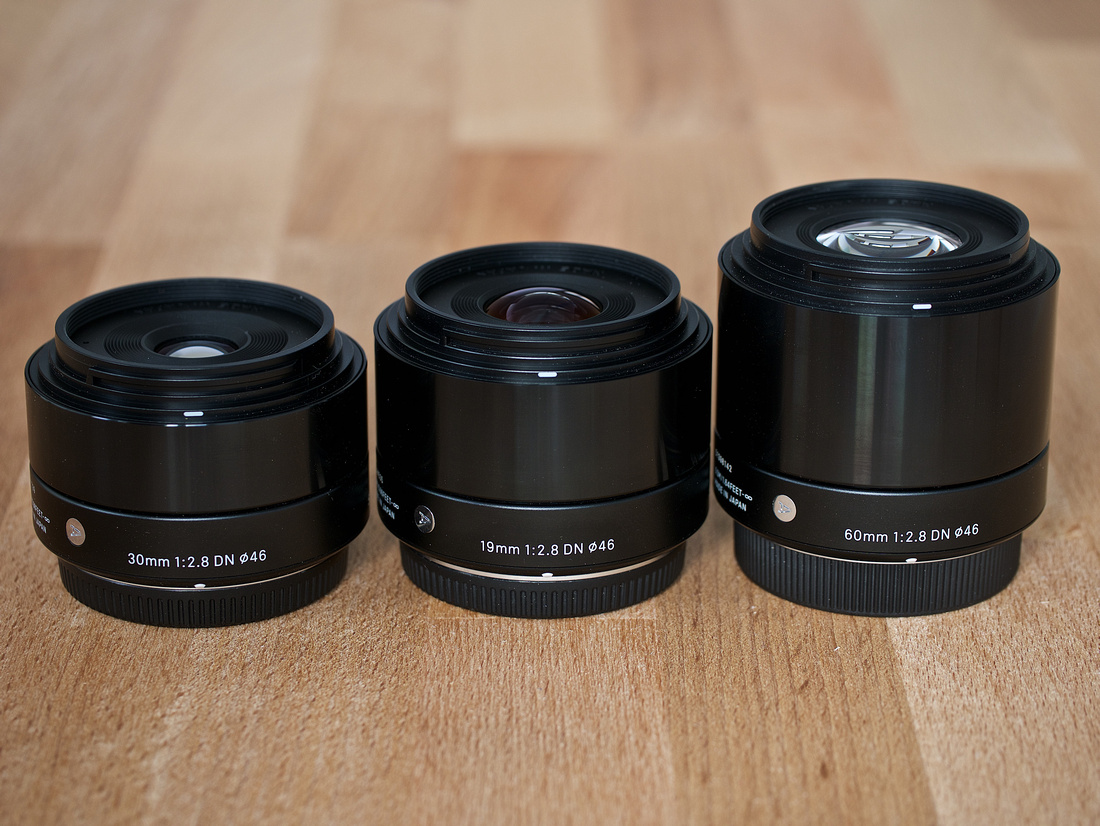
Interestingly: the 30mm is the shortest.... the 19mm is a bit longer....

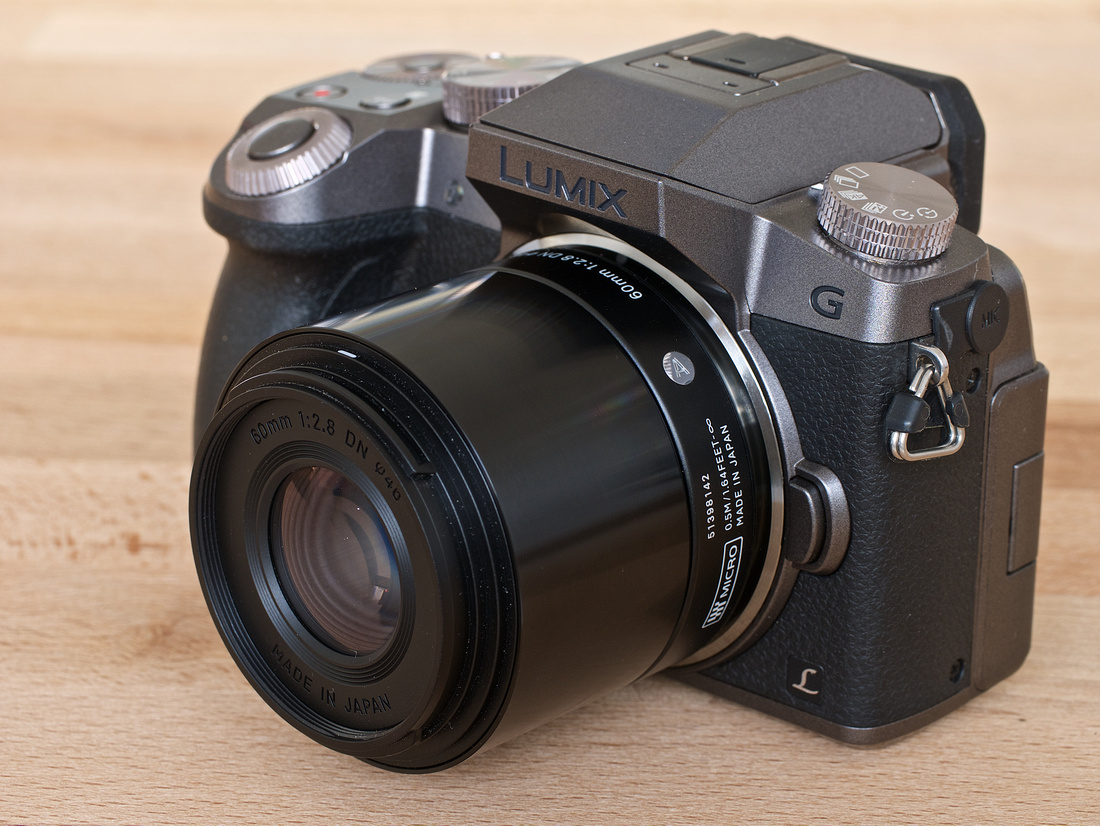
The 60mm mounted on the G7/G70
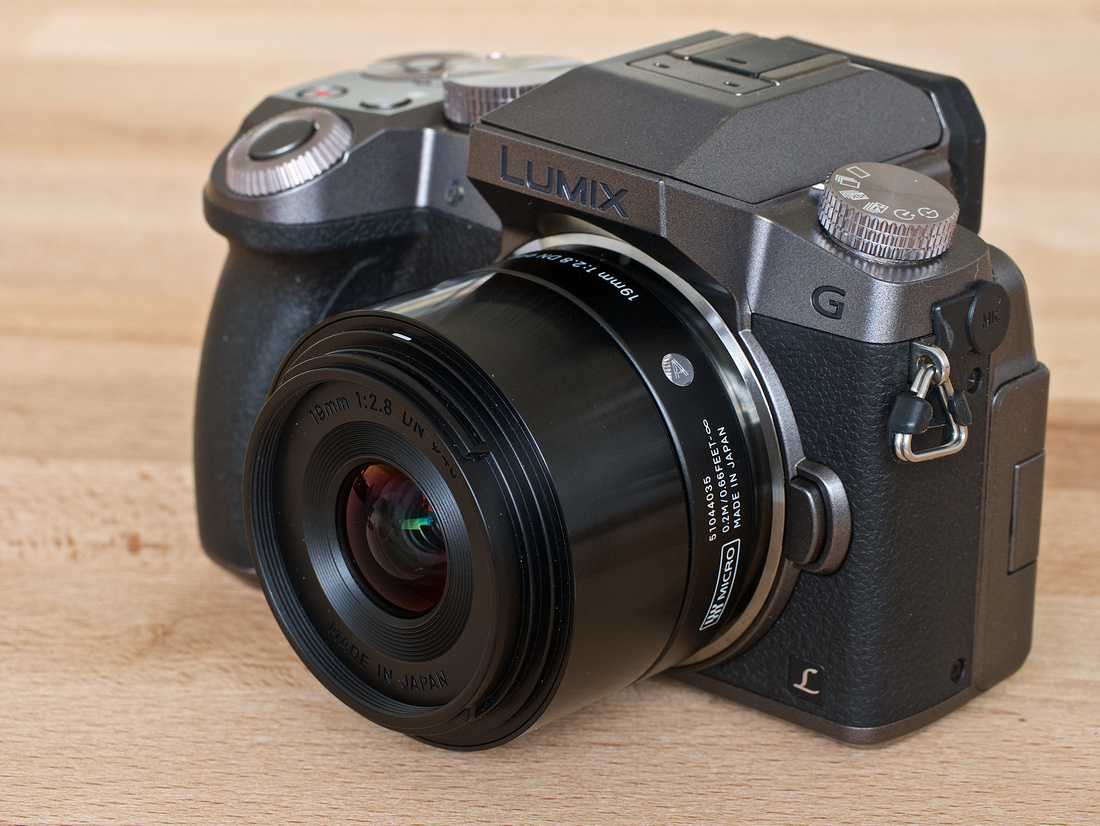
The 19mm mounted on the G7/G70
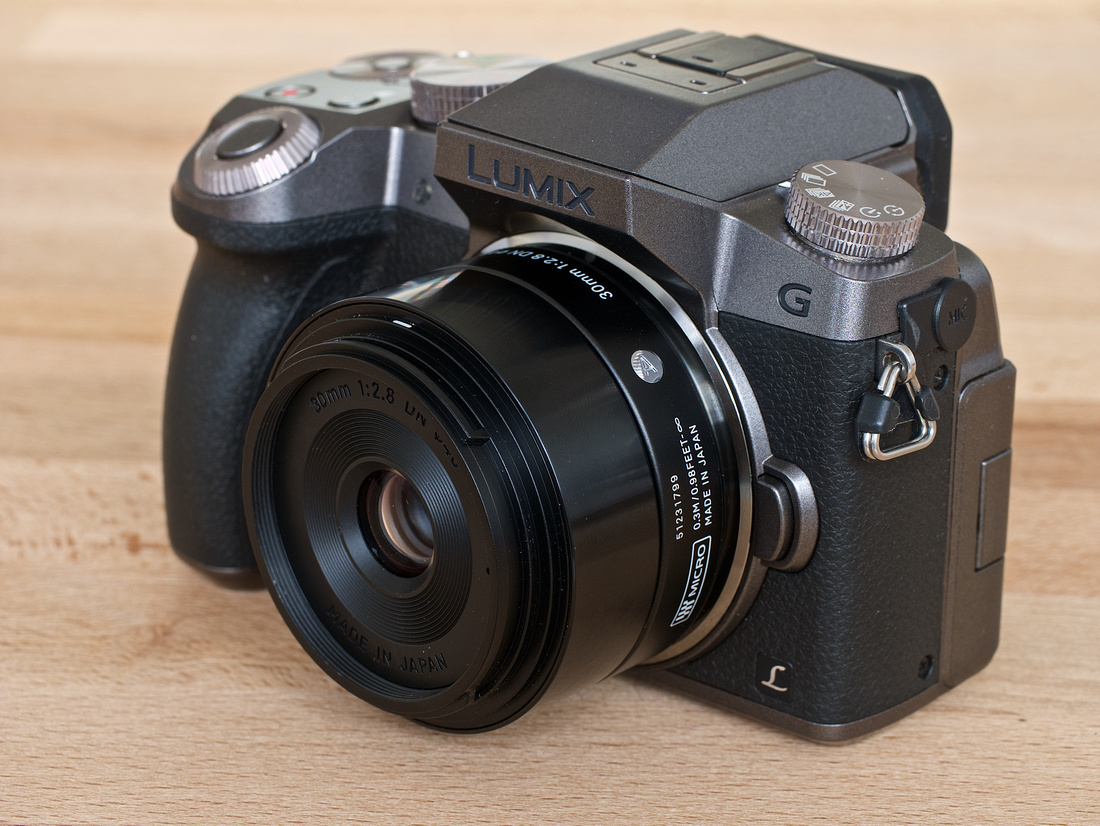
The 30mm mounted on the G7/G70
Image Quality
The Lenses are build pretty similar - and the image quality is similar, too:
- Complete lack of Chromatic aberration
- very sharp lenses - especially the 60mm
- Low distortion
- Nice color rendering
I shot a couple of images to compare the lenses . I shot these images in a pretty similar light setup, shot in RAW without retouching: I copped the photos to 3:2 instead of 4:3 just to have a lower hight here in my review. They had been shot manually with indirect natural light therefore I do have some deviations in the color rendering as well as color temperature.

The first comparison I shot to illustrate the different view angle. The photos are shot from the same view point just changing the lens.

These photos were maid to compare the view angles the other way around: I tried to get the same reproduction scale. A bit tricky with a normal tripod. A cartesian one would be easier.... All photos are taken wide open @ f2.8. Left: 19mm right the 60mm... Both images show the main differences of these 3 lenses.
Recomandations
Which lens for whom? This is a tricky question. But I will give you a try
- 19mm: this is a great walk around lens. Classical street photography lens. Very useful for people who do like to get close
- 30mm: classical standard lens. Very nice, also easy to use. And it delivers a bit more bokeh..
- 60mm: my favorite among these lenses. I felt in love with it: crazy sharp and great bokeh: this lens is bokehlicious... And in terms of bokehliciouseness the real counterpart to the NiftyFifty. A great portrait lens - and it allows to get pretty close, too.
Verdict
Who ever is looking for a prime lens on µ43-cameras: all 3 are good lenses - and they give you value for money. Thank You Sigma!!!
Thes do suffer a bit due to there limitation in bokehliciousness due to f2.8 as fastest aperture value. But this is relative. They all have bokeh and the bokeh is nice!!! But especially for the beginners it is maybe easier to have a lens which allows you to separate from the background But the knife to do is is not that sharp that it hurts sometimes. (Especially if there are autofocusing like with my Sigma f1.4 85mm on a full frame body.)
That´s interesting: If you are a prime lens shooter or going to become one: The 19mm and 60mm are a great combo, following the philosophy :all you need is a 35mm and a 135mm lens... A kind of classical set up....
Some Remarks
All photos were shot with the Lumix GM5 this time.
If you want to have a closer look at the images:
http://goo.gl/rR8boI]]>
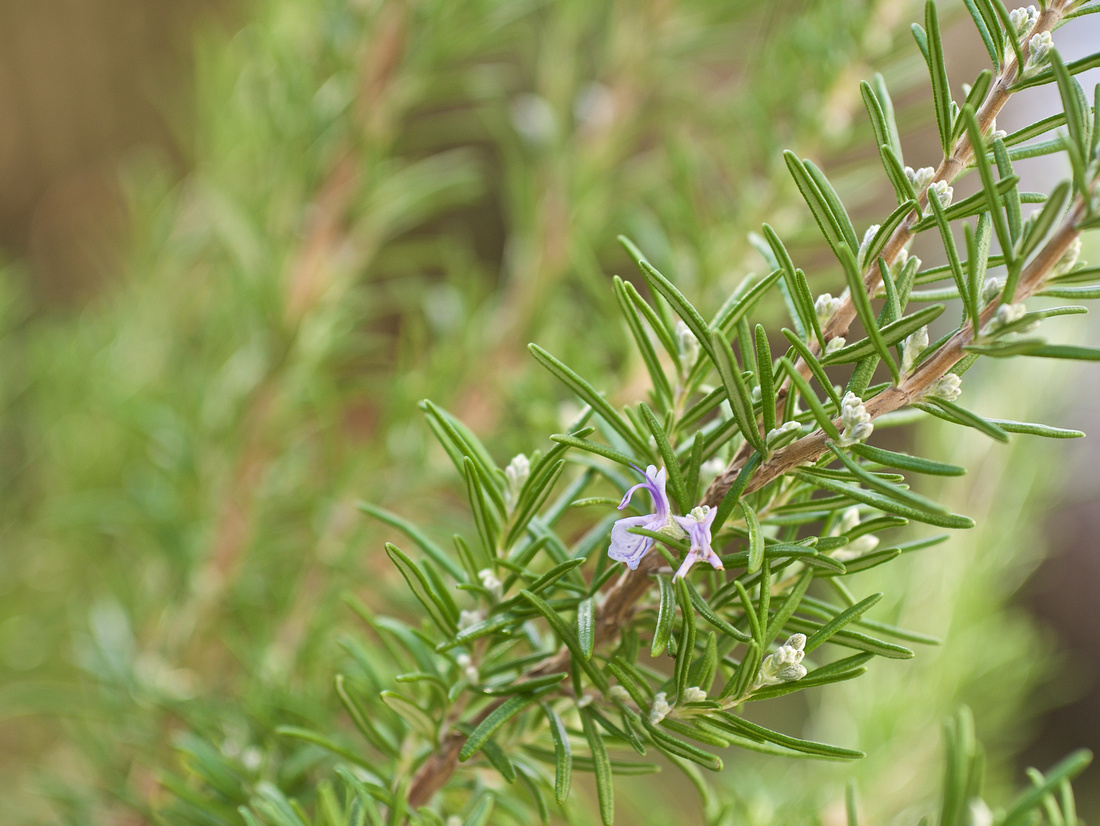
It was the most expensive Sigma lens, but the costs are relative: I paid 179€ which is very reasonable..
First to the build quality and scope of supply: As the other 2 Art lenses the 60mm comes with a lens hood, feels pretty solid but it is noisy when the lens is not mounted on a camera and the camera is switched of. But this is nothing to worry about - as I have learned from the 2 Sigma Art lenses I tested before.
I was astonished about the image quality:
- Really very sharp images
- nice color rendering
- no chromatic aberrations
- and a remarkable nice and soft bokeh - the physics helps.
Today I took this little lens on a little walk just around the house to make some shots. These shots are all handheld. I applied my standard development setting in aperture - and thats it.
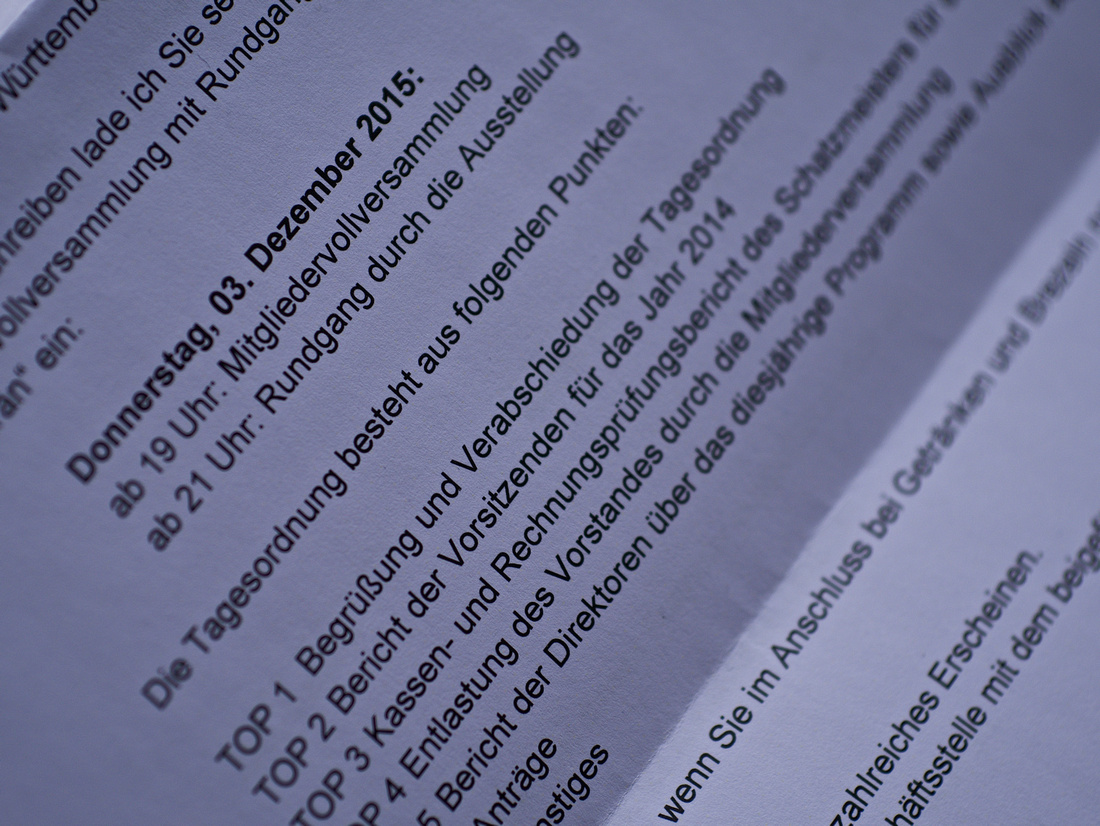
For me always the first test: CA: Do you see any? I did not...
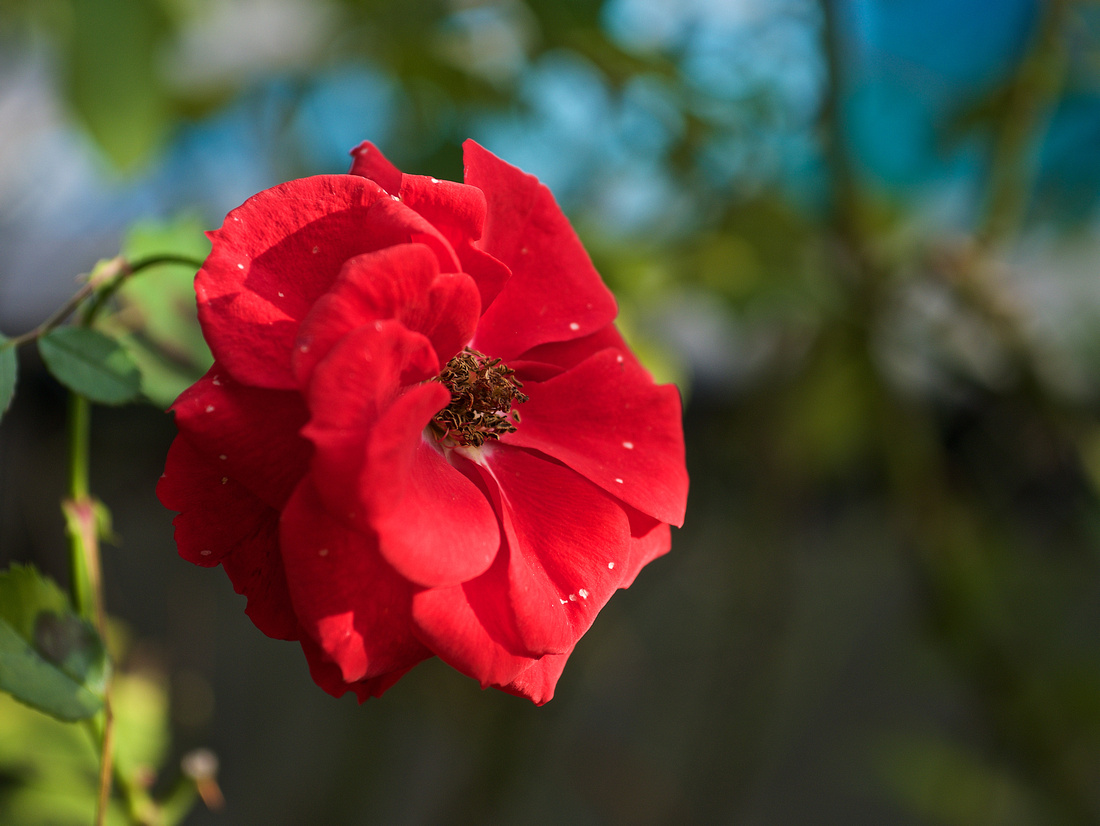
Sharpness as well as bokeh are really nice, or? And this photo was shot on December 5th 2015...


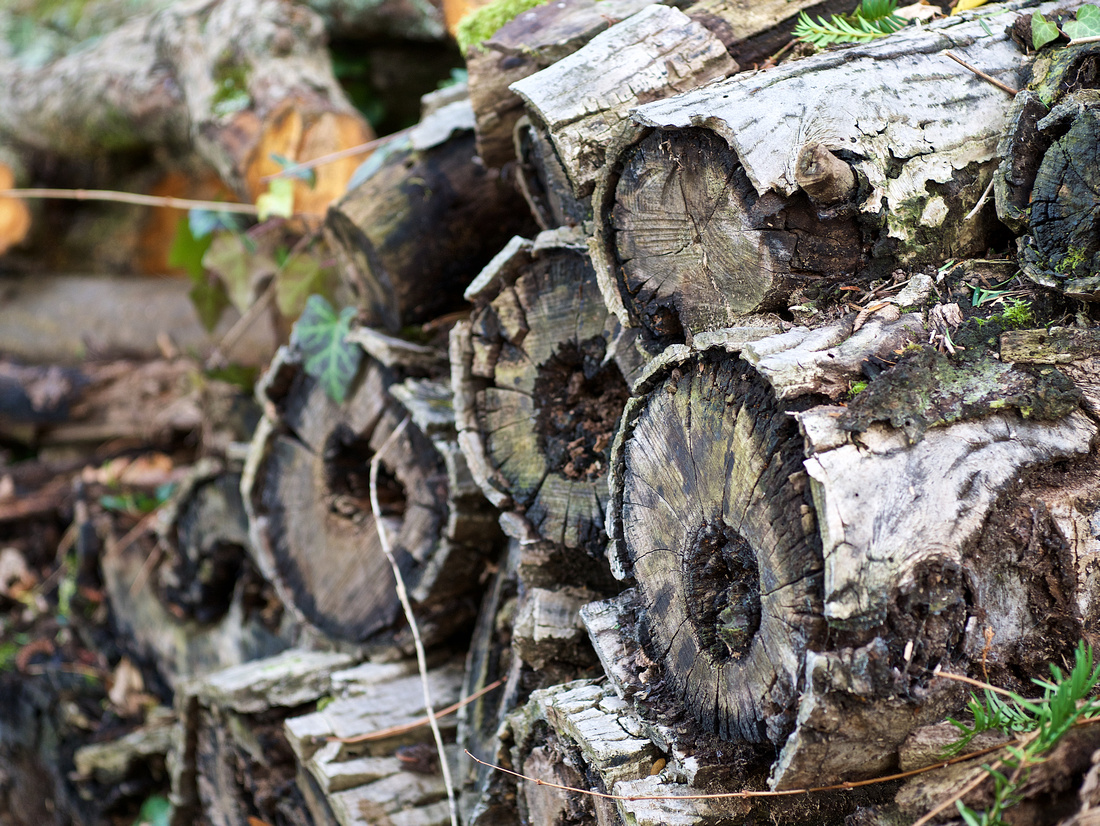
Here it is the color rendering which is amazing... even if it looks pretty black and white...

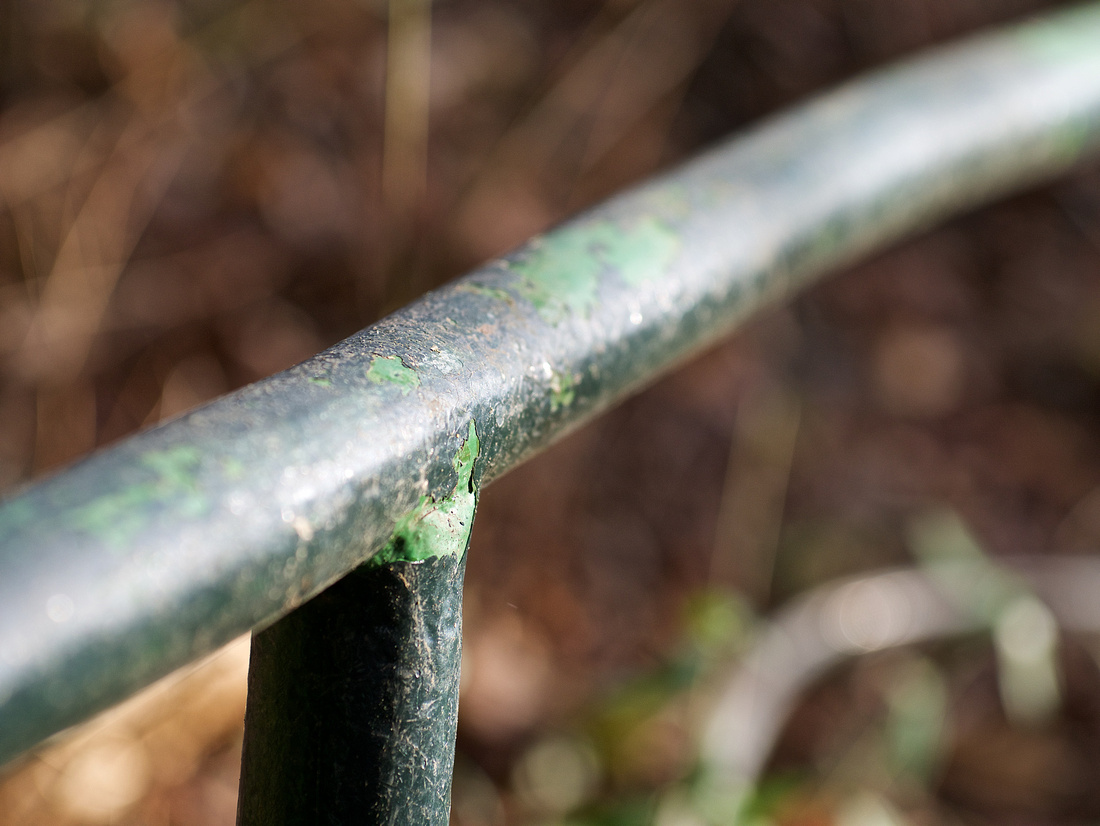

This photo show a bit of the limitation of f2.8 in the µ43 world. f 1.4 in full frame is a different story...
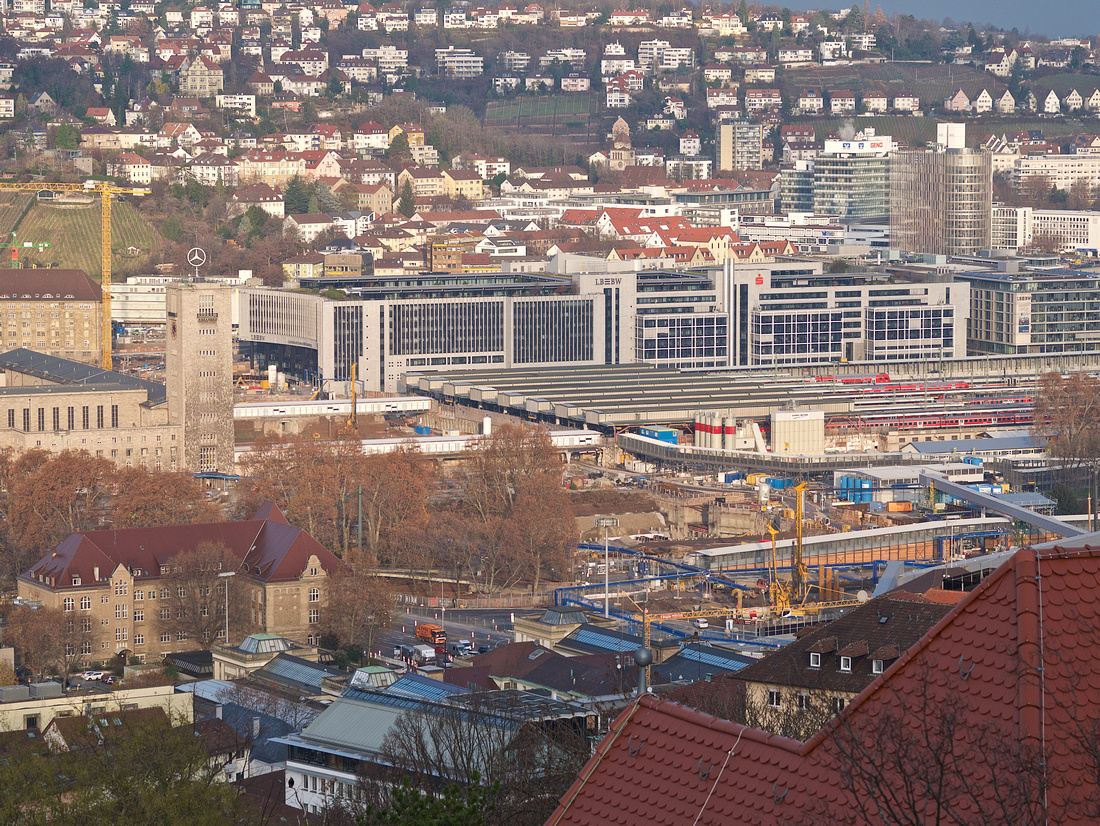
The amount of detail shown in this shot, really sharp....
Verdict
First of all: The Sigma 60mm is a damned good lens! It is fun to use it. And it found its way into my heart. It is a lens which is easy to carry around: In comparisons to the other two Sigma lenses this one will be with me pretty often. But it is hard:
- I do have the Elmarit 45mm f2.8 makro: in comparison it produces even more bokeh but the Sigma has not OIS...
- In comparison to the Zuiko 75mm f1.8 it is shorter, the Zuiko has even more bokeh - but the Zuiko is quite heavy...
Therefore: this lens will join my bag pretty often in the future. We will see.
What´s Next
Well, I have now bought and tested 4 Lenses:
- The Nifty-Fifty Original from Canon
- The Sigma 19mm f2.8A
- The Sigma 30mm f2.8A
- The Sigma 60mm f2.8A:
The next step will be a comparison of the 3 Sigma Lenses but there will be more:
- But I will do a comparison between the Canon 50mm lenses as well. Just to save some Canonista some money.
- And there is one more lens to come: Thanks to black friday 2015 I ordered a Panasonic 25mm f 1.7. At 99 US$: The price of the NiftyFifty.. I do not know when I will get it. But this will be very interesting. ... Also in the comparison with the Panaleica 25mm....
- And I will do the "crossover" comparison: between µ43, APS-C and FF...
Some Remarks
All photos were shot with the Lumix G7 this time.
If you want to have a closer look to the images:
]]>But I was a bit of unfair to the comparison - or not? I did exactly the same like the day before with the NiftyFifty on the FullFrame Body: I took the lens together with the GM5 on my way home, over the Christmas Market - which was opened now full. I shoot both days with 3200 ISO - which is the Limit on µ43 but the FF body gives you 2 F-Stops more in terms of ISO - 12.800 is here my personal Limit. And this Sigma lens has at least 1.2 F-Stops less....
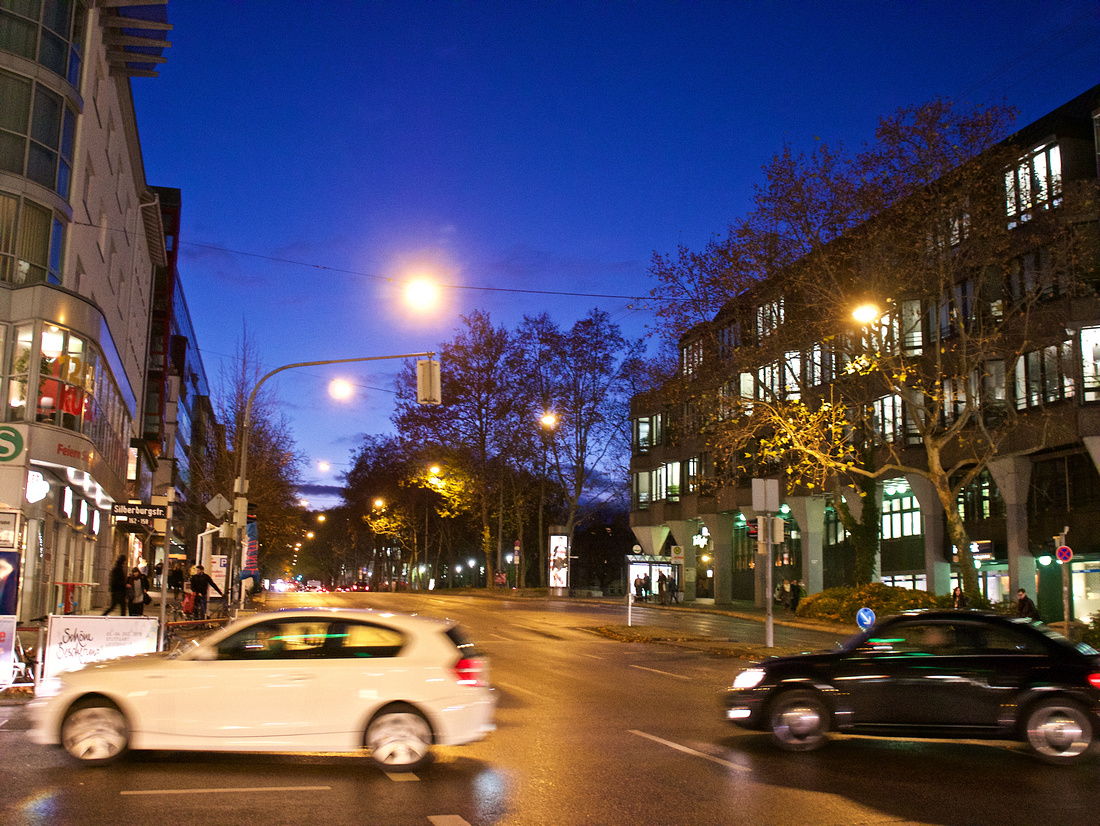
To shoot blue hour images handheld is amazing. The color rendering is nice and the lens flare really good...
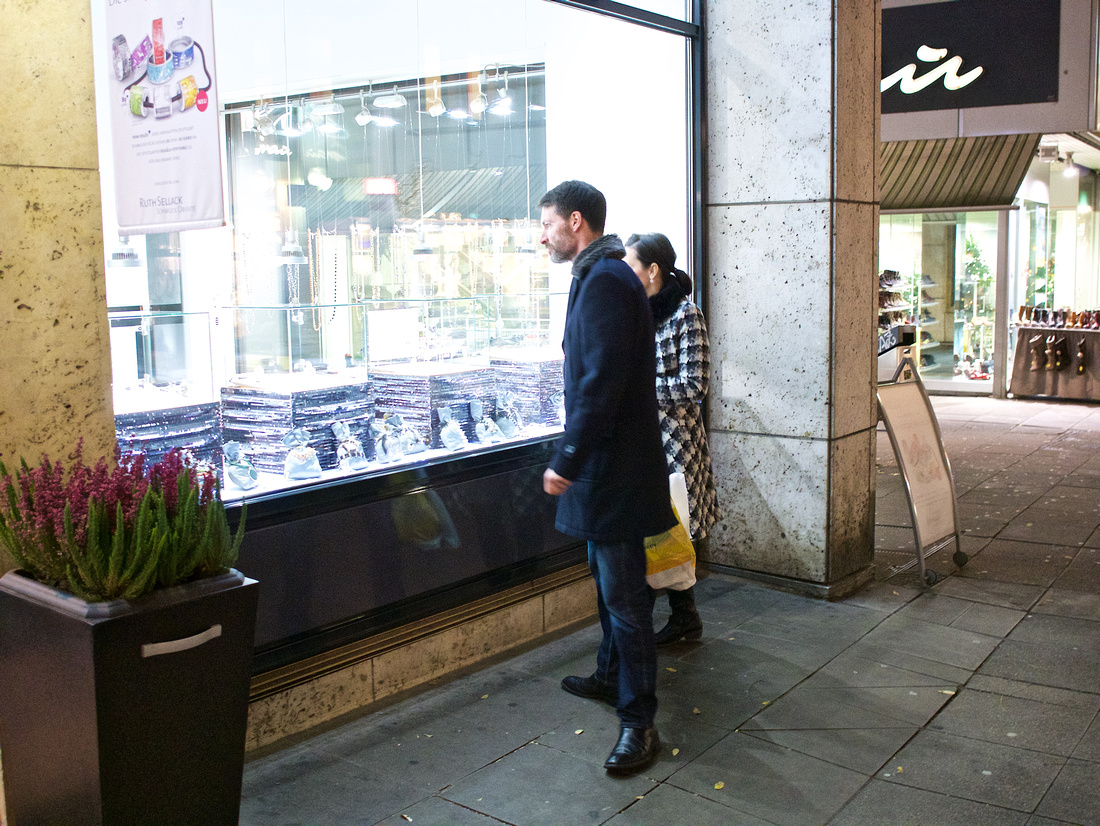 Window shopping.. Maybe a bit overexposed... but nicely rendered...
Window shopping.. Maybe a bit overexposed... but nicely rendered...
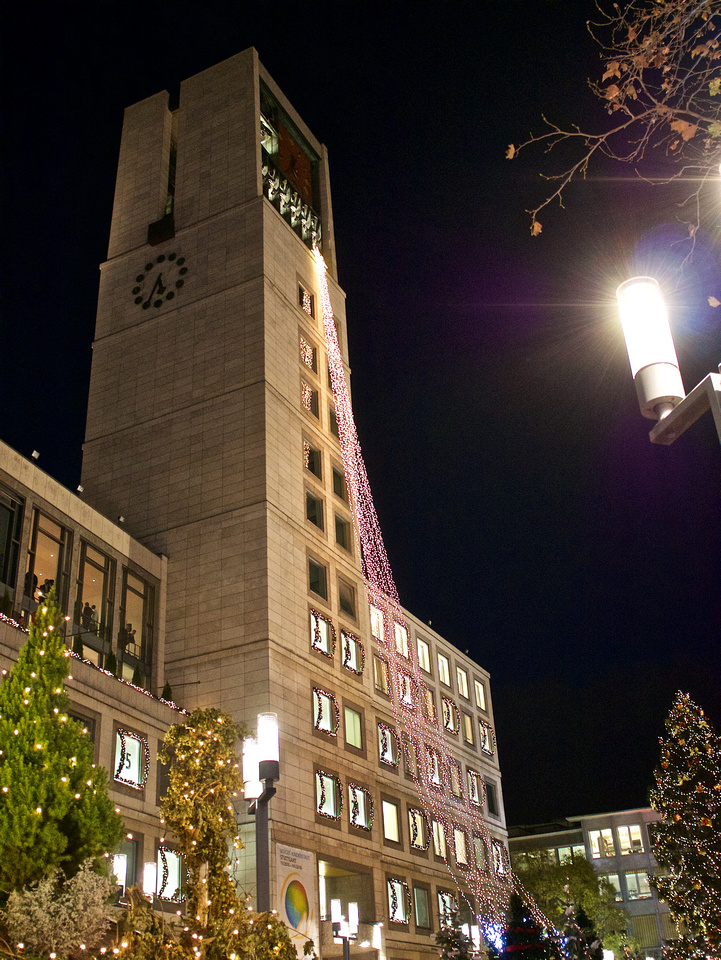
At the Lord Mayors house there is a light curtain falling down on the christmas market.... Lots of lights and pretty little lens flare...

The remarkable thing on the Stuttgart Christmas market are the nicely decorated roof tops. And they are always a challenge to get them nicely... They do have quite a dynamic range...
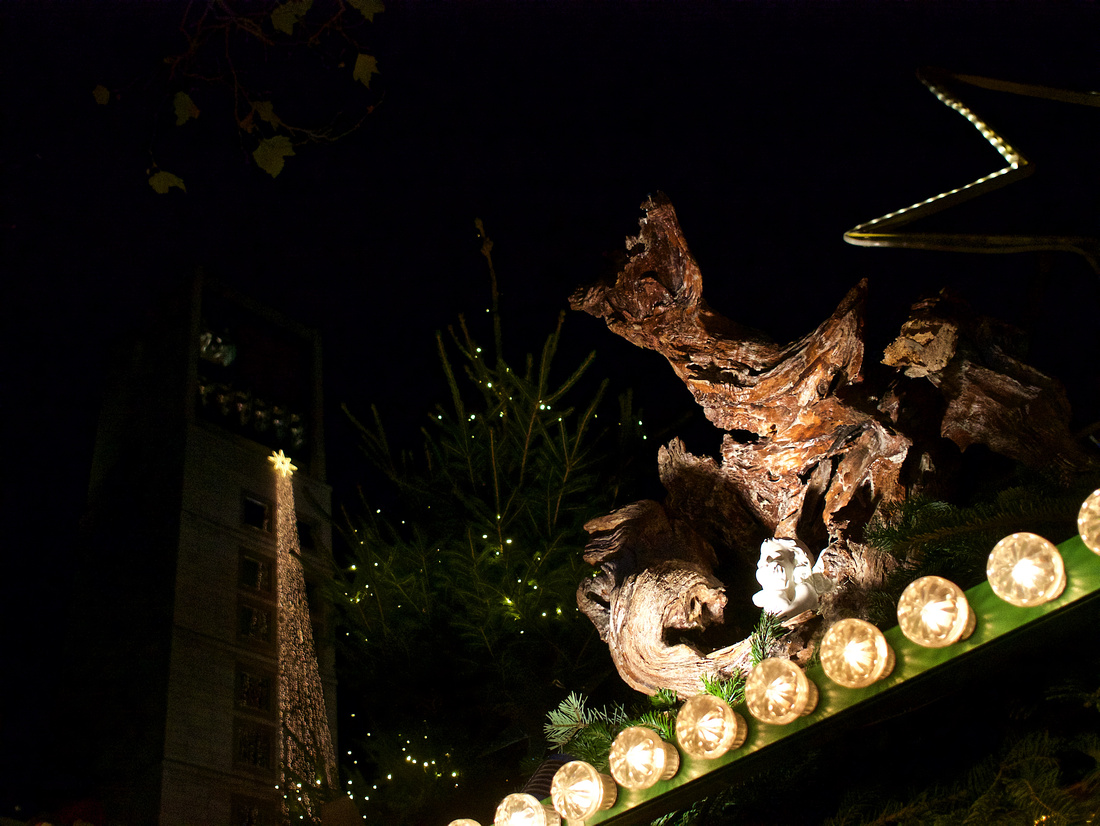
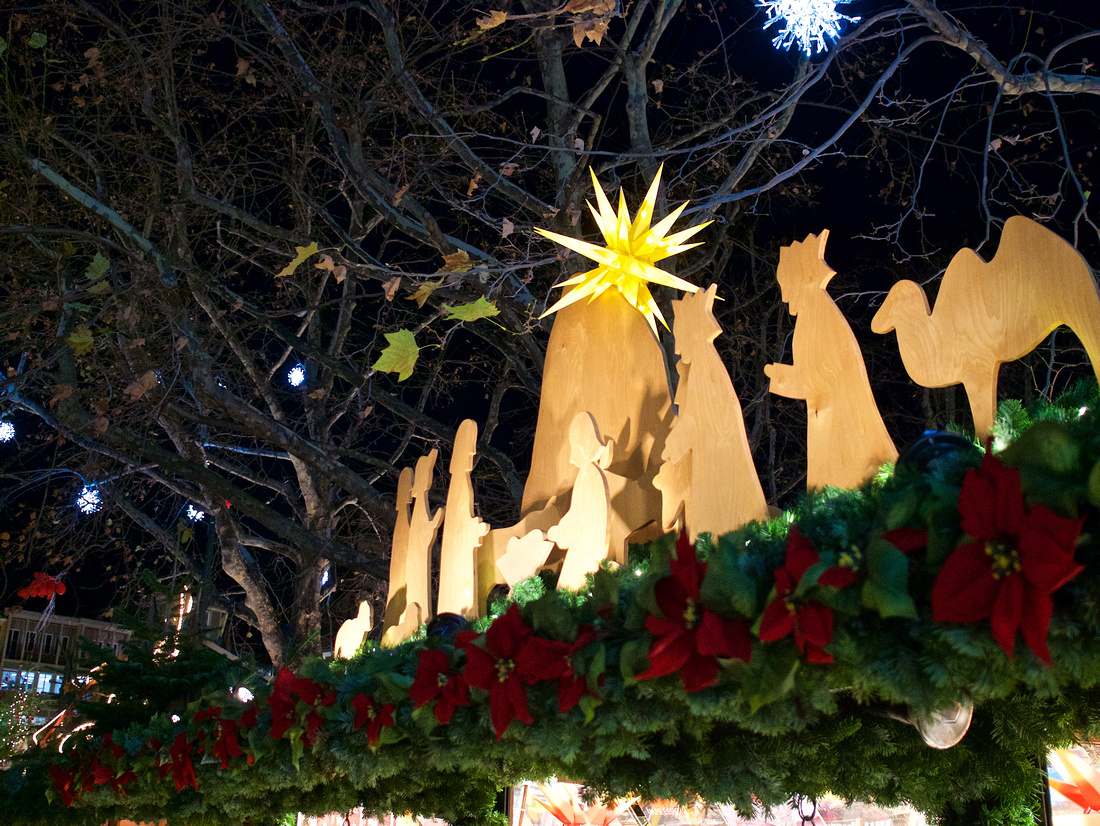
This is the maximum of bokeh to get.... It is more and better than expected. Not bad but ...ok...
here you see the limits of the lens if you shoot against bright light... But still very useable.
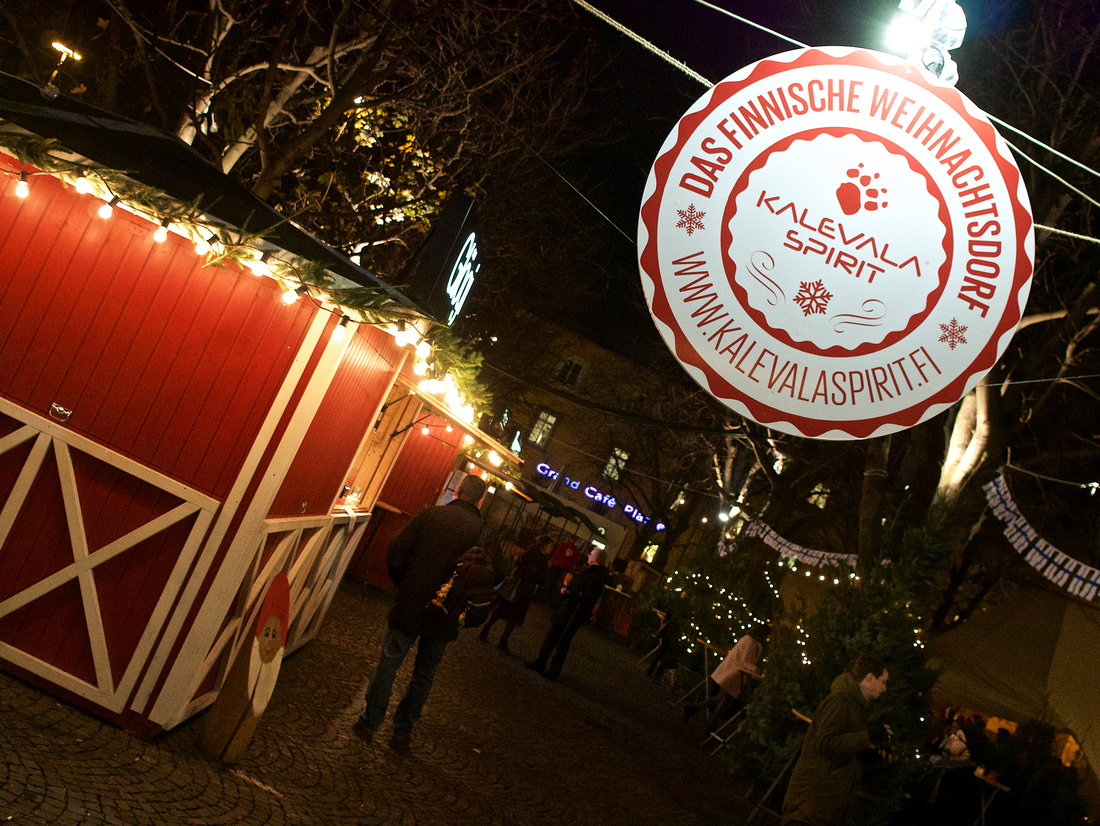
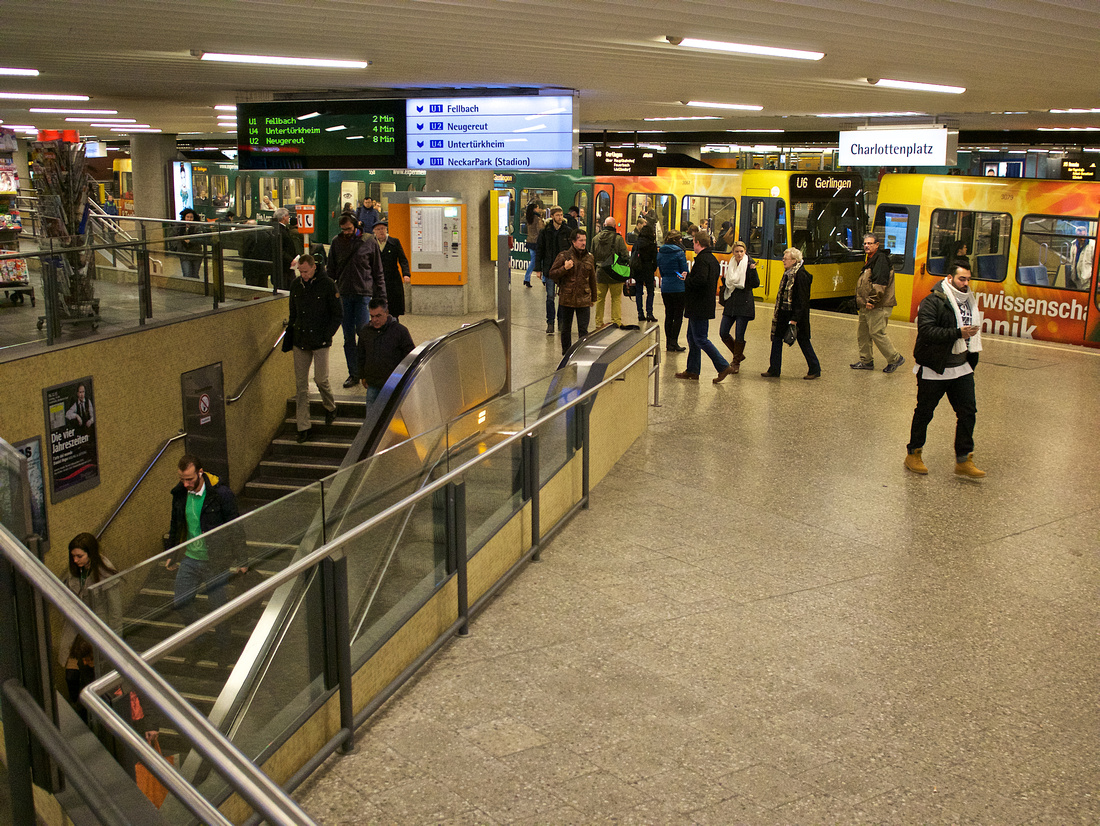

This is a scene in our justice district - where you find the low courts... It is still very useable.. and very sharp.

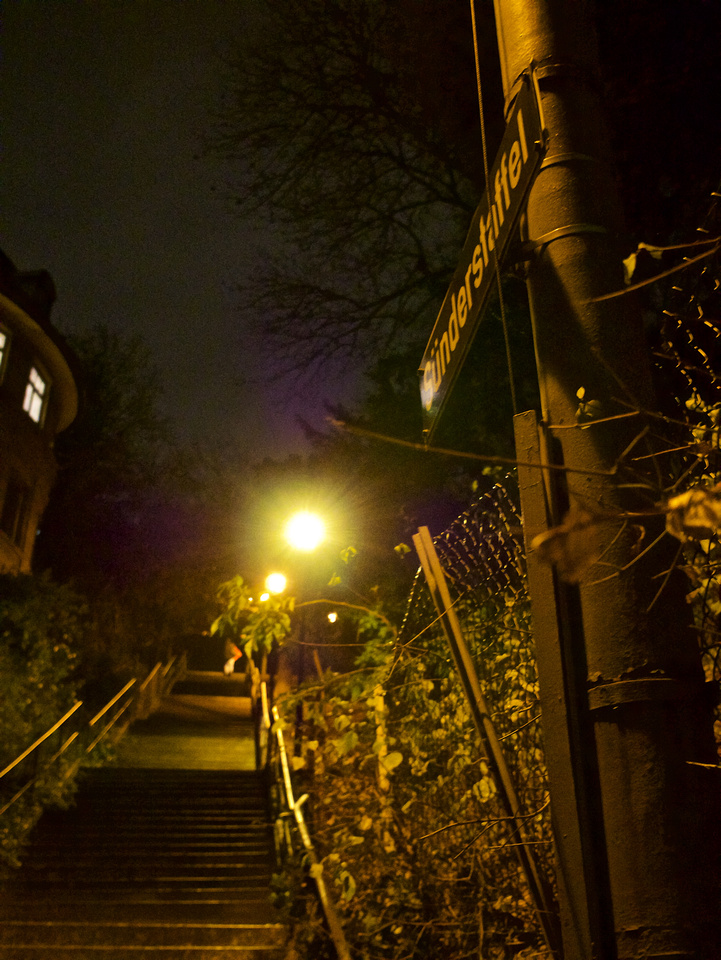
A similar shot than that one the day before... And not bad at all...


The look back to the stairs I just climbed up.... Quite an exercise....
Verdict
First of all: The Sigma 19mm is a good lens - here I have no doubt. It has a remarkable good price performance ratio. It is a recommendation for beginners who want to have a good lens which is faster than than the kit lenses. It is fun to use it.
But there are limitations as well. With f f2.8 an 19mm we are talking in terms get bokeh comparable to 38mm f5.6 under Full Frame conditions. This means that the hyperlocal condition starts somewhat around 8,5m - and for subjects in 1m distance the Depth of field is nearly 24cm... Not really perfect conditions for creamy bokeh...
For me having the phantastic Panaleica 15mm f1.7: This will remain my lens of choice. It is smaller, it has more than 1 f-stop more speed and it is comparably sharp with amazing color rendering....
What´s Next
Well, I have now bought and tested 4 Lenses:
- The Nifty-Fifty Original from Canon
- The Sigma 19mm f2.8A
- The Sigma 30mm f2.8A
- The Sigma 60mm f2.8A: the test will be the next blog entry, coming soon
The first step was to get a feeling for these lenses: what I can do with each lens and how much fun it is to use them. But I gained a lot of photos, a lot of things to compare...:
- It will be necessary to compare the Sigma´s.
- But I will do a comparison between the Canon 50mm lenses as well. Just to save some Canonista some money.
- And there is one more lens to come: Thanks to black friday 2015 I ordered a Panasonic 25mm f 1.7. At 99 US$: The price of the NiftyFifty.. I do not know when I will get it. But this will be very interesting. ... Also in the comparison with the Panaleica 25mm....
- And I will do the "crossover" comparison: between µ43, APS-C and FF...
Some Remarks
All photos were shot with the Lumix GM5.
If you want to have a closer look to the images:
]]>

The first shot came out pretty dark - so I had to play a bit with the sliders in 2 different environments: Above the Apple way to develop and below it´s DXO-Style...
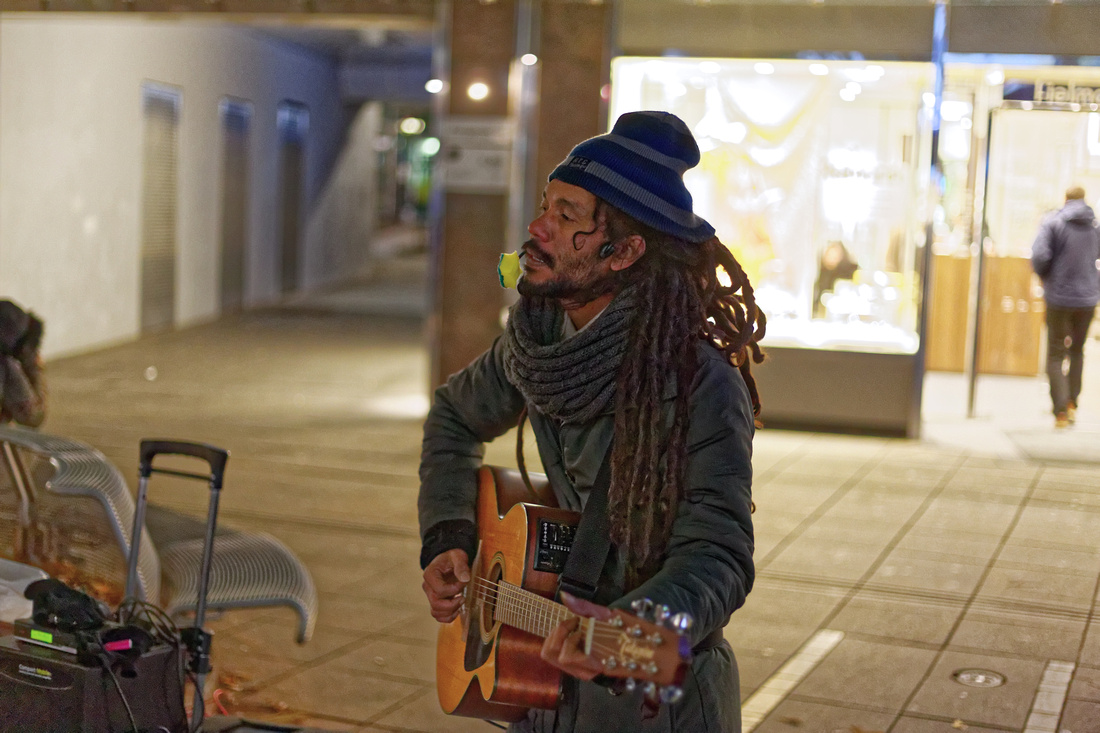
It would be great to get a feedback which style you like more...
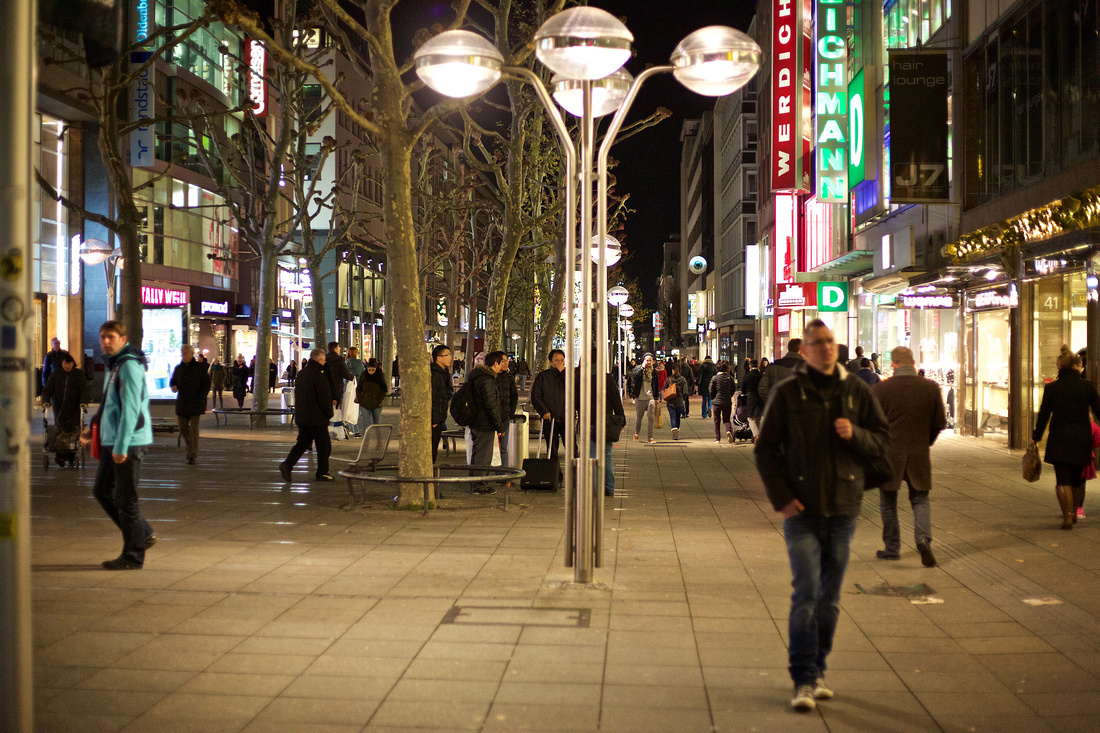
just a street scene of the crowded "Königsstrasse", the main shopping road in Stuttgart, nicely illuminated.
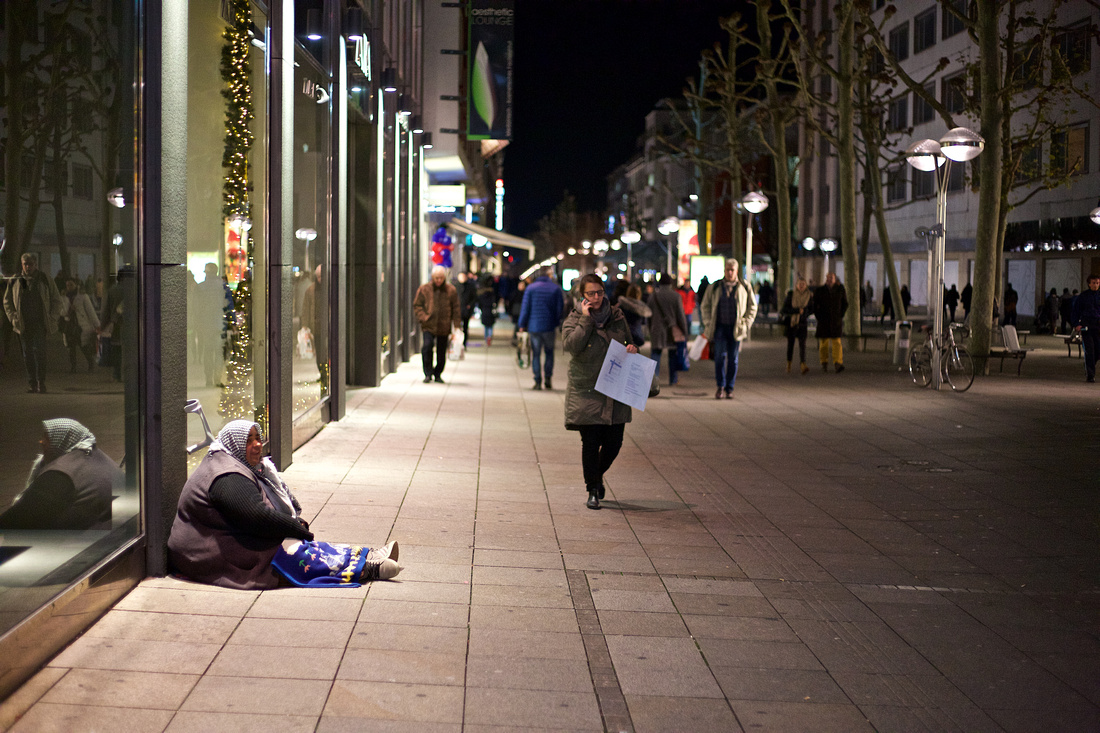
This Lady was amazing... she was bagging - and singing...
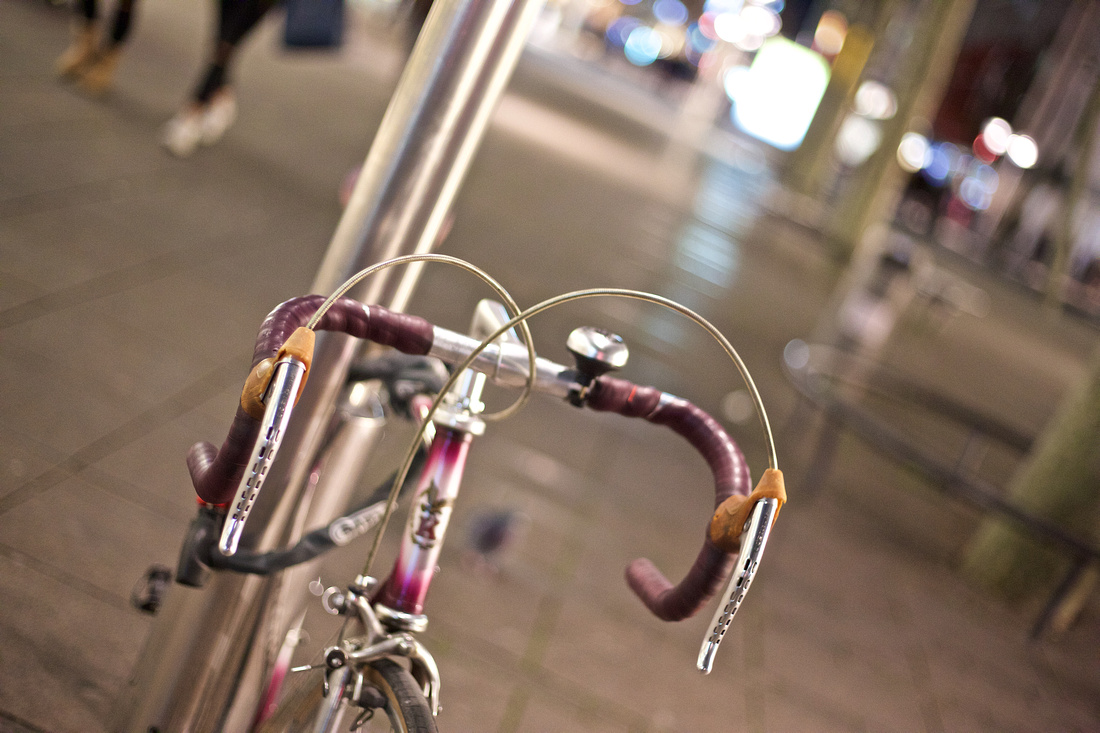
just a bycicle...
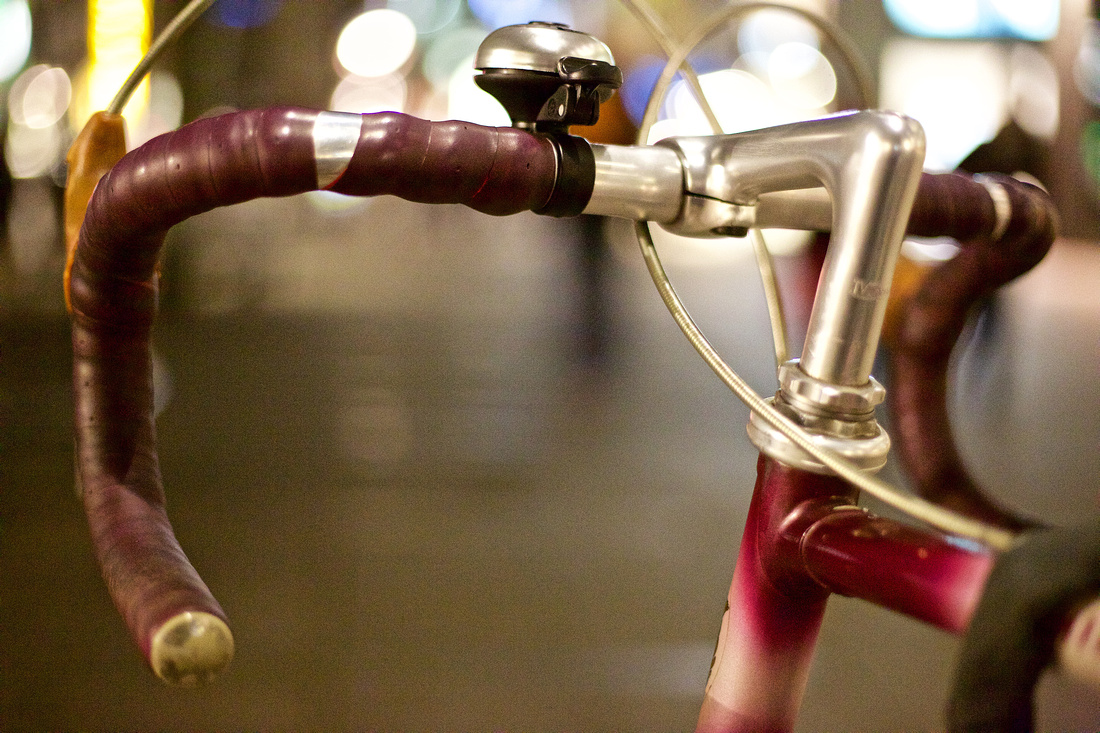
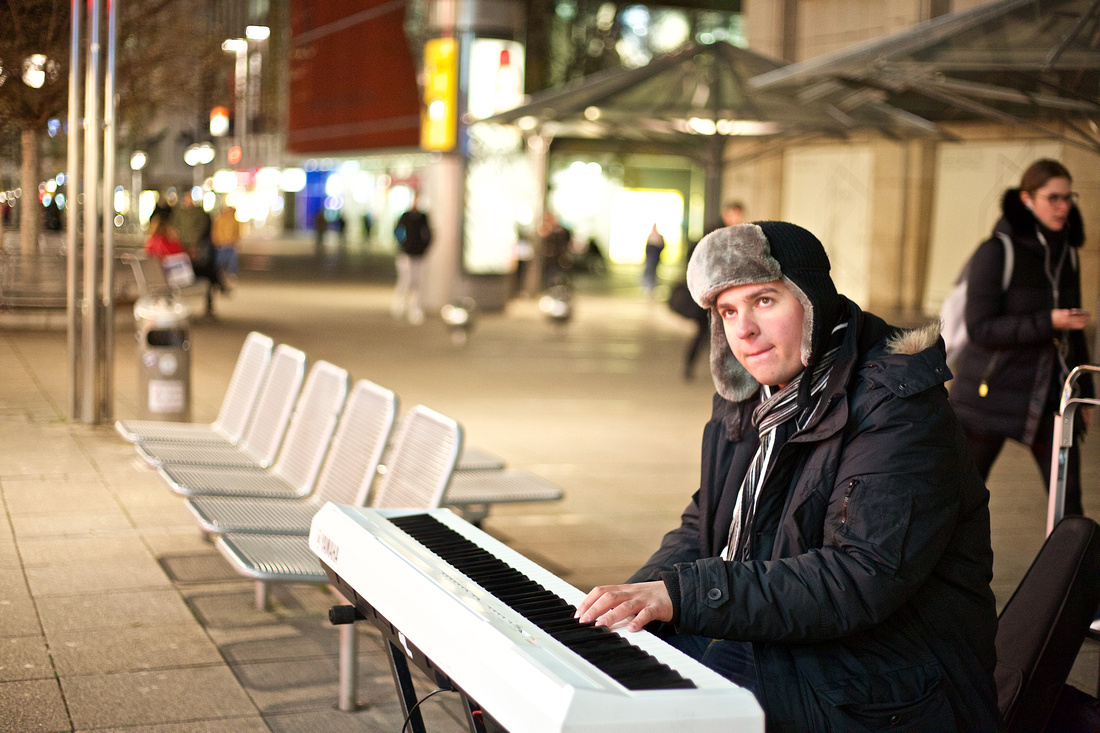
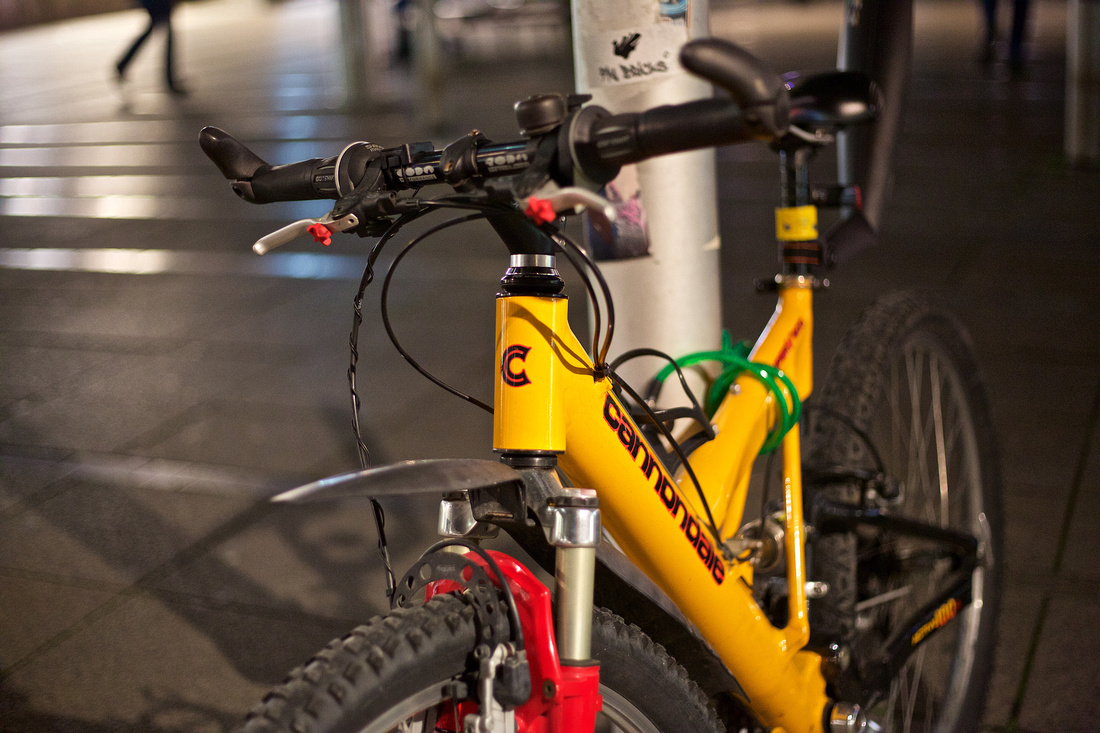
Just another bicycle patin@ a lantern...
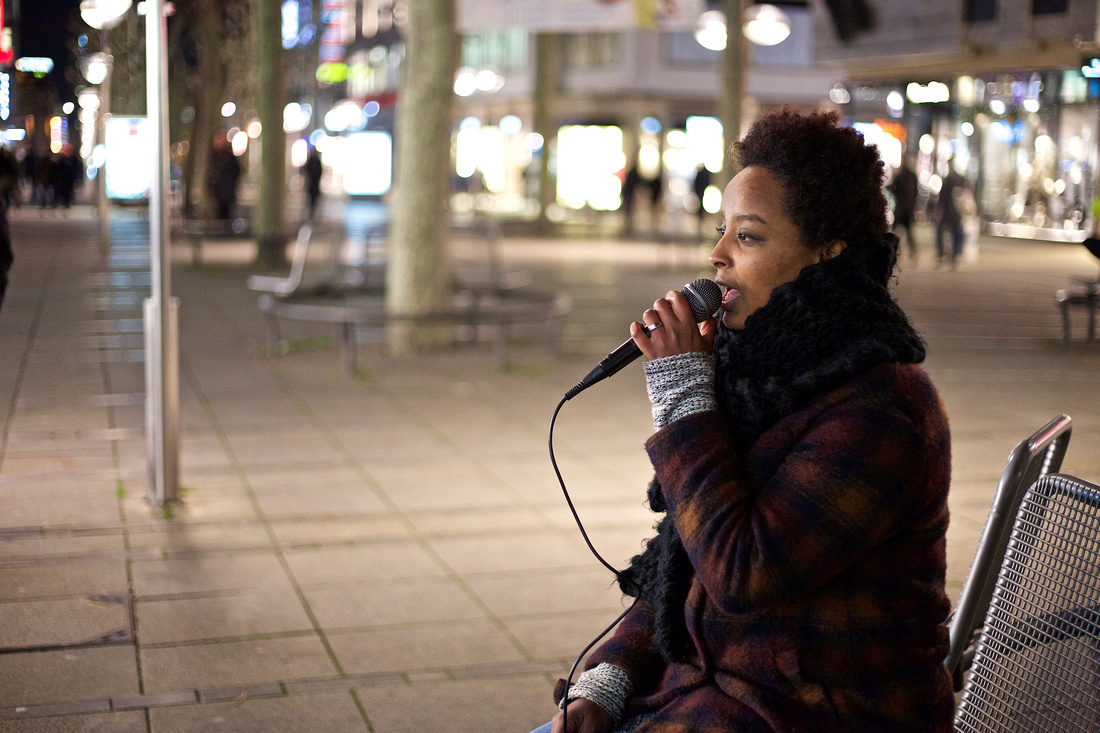
Another singing Lady, but this time much more nice, much better singing... really great...

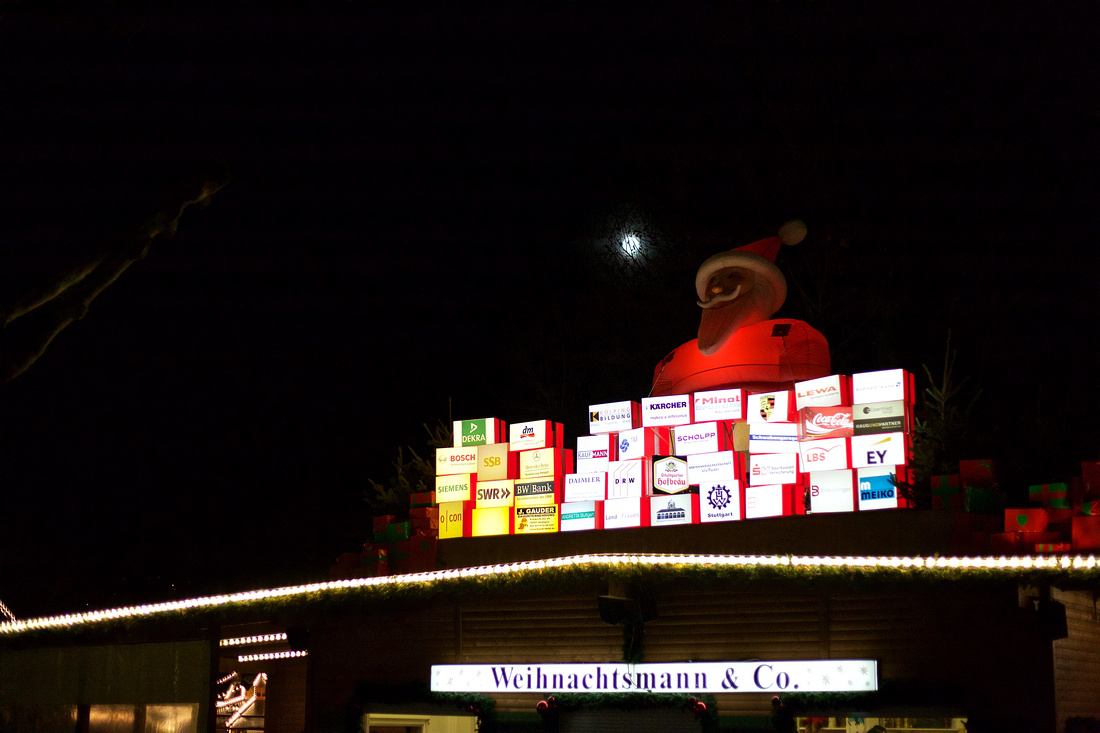
The next "stop" had been the christmas market - or the part which is already active...
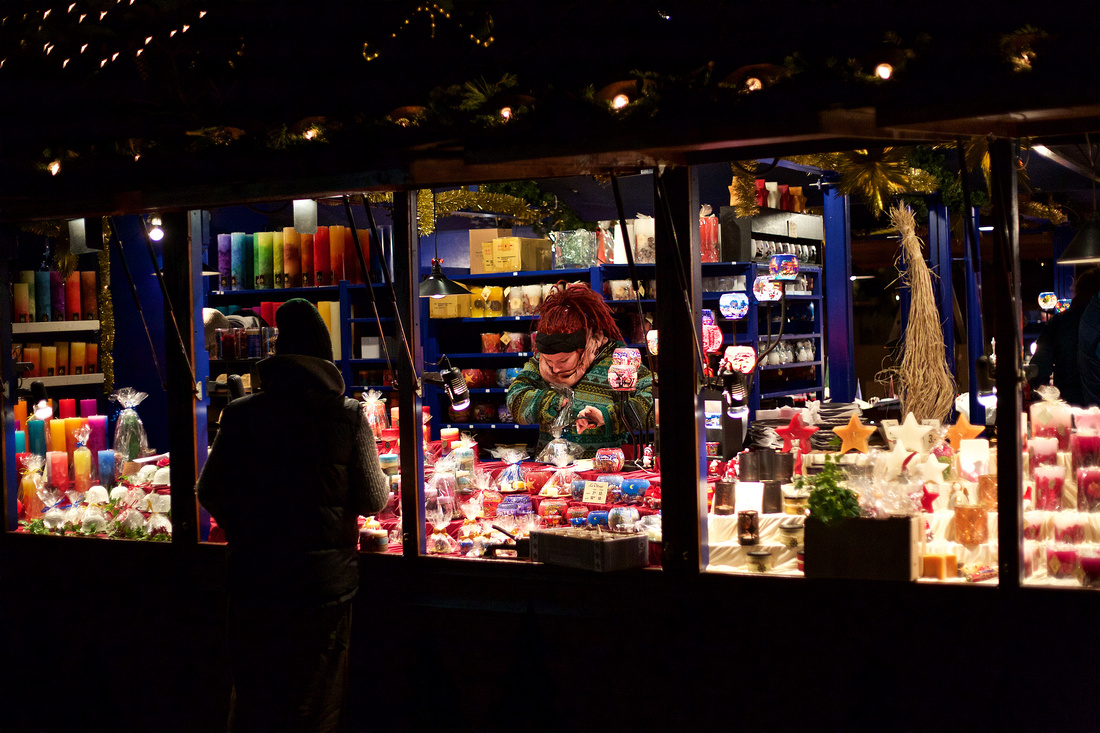
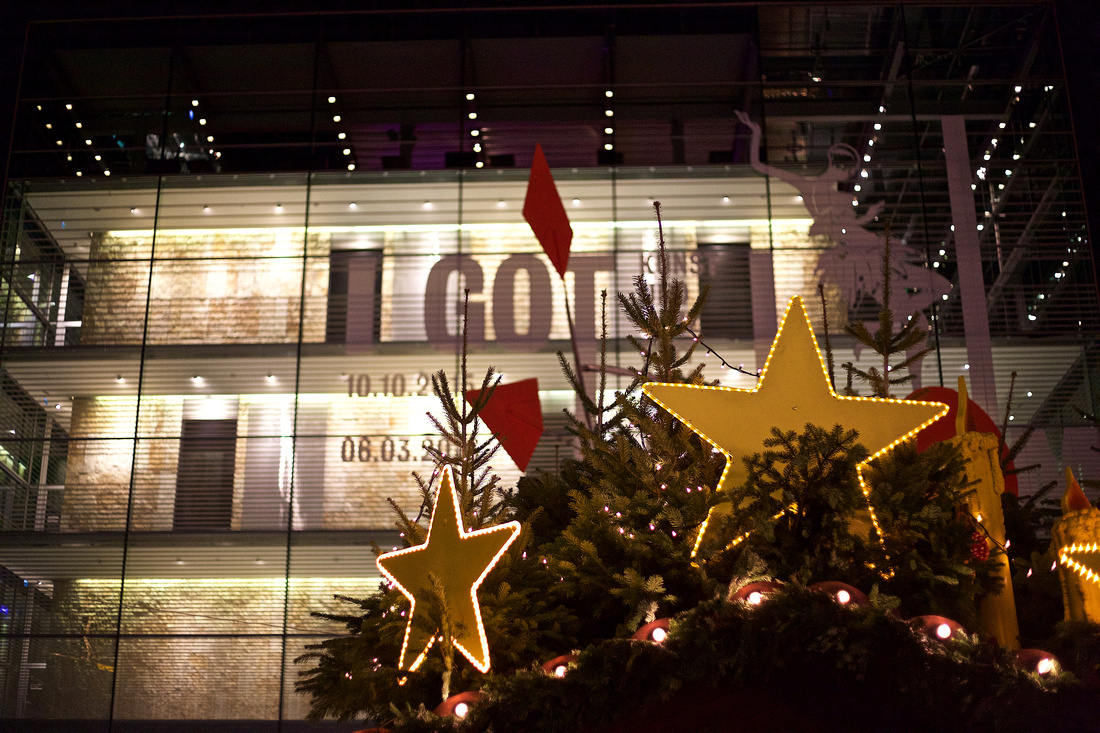
One topic of the Stuttgart Christmas Market are the rooftops of the stands. They are really great - and here you see the museum of contemporary art of the city of Stuttgart in the background
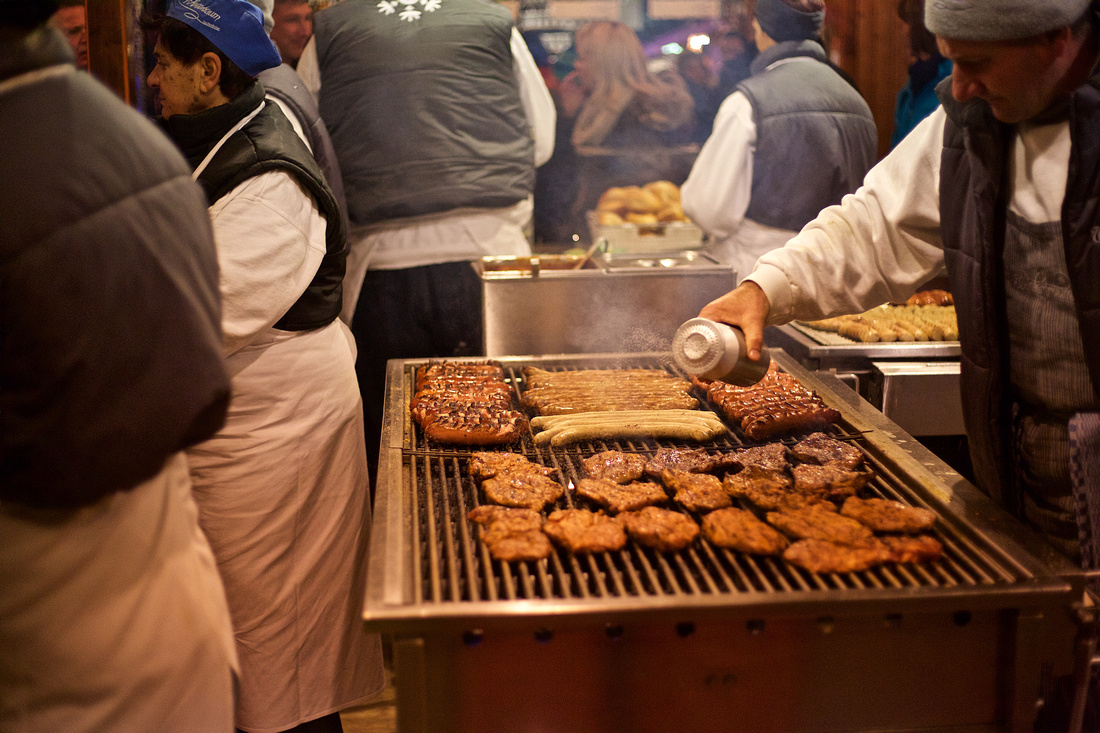
Food....
These hearts are important: I do want just You...
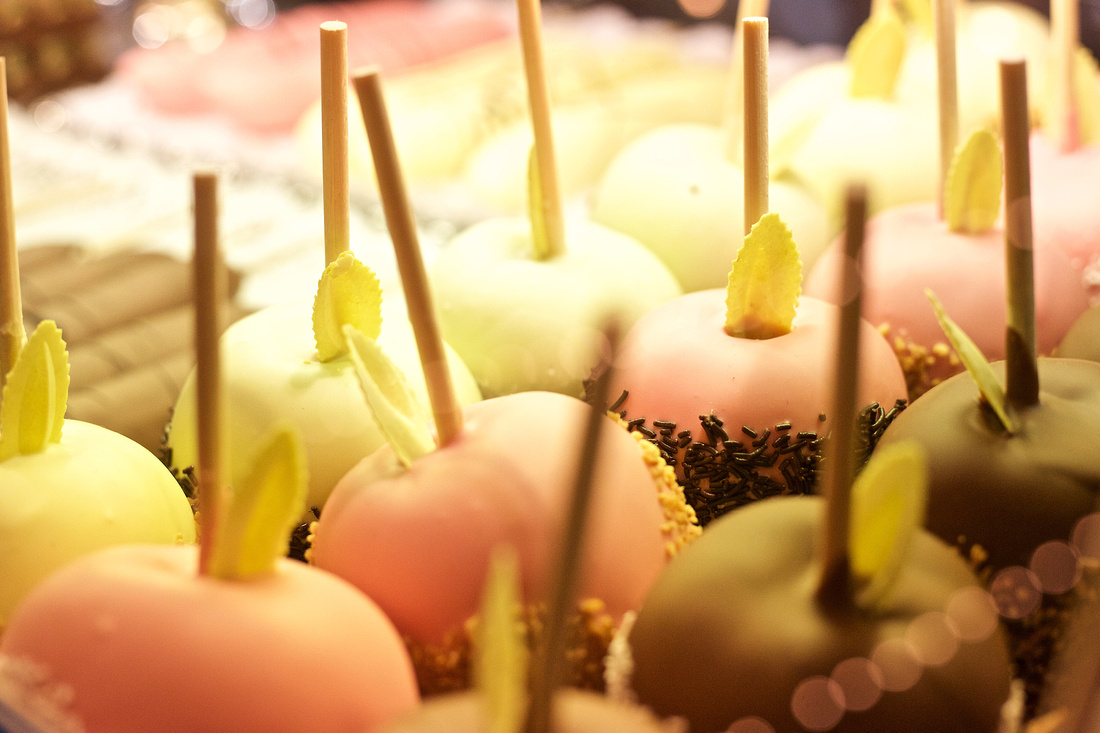
Fruit candies... delicious..
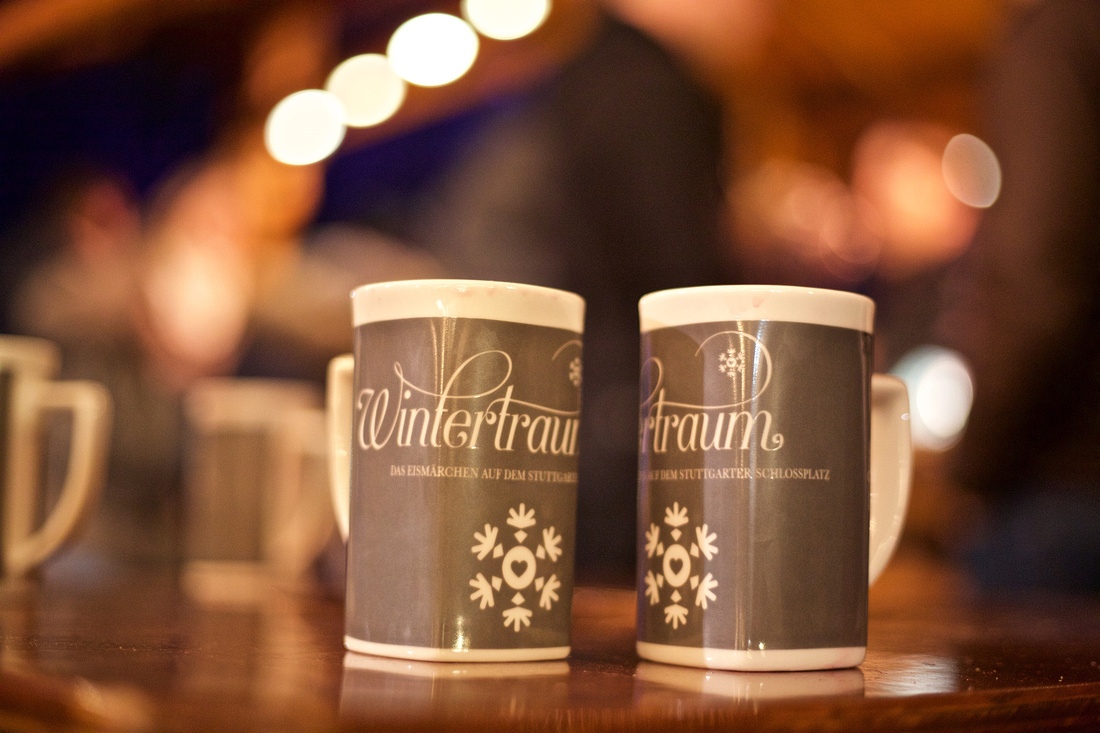
Glühwein: flavored hot whine - like Grog or Punsch ...
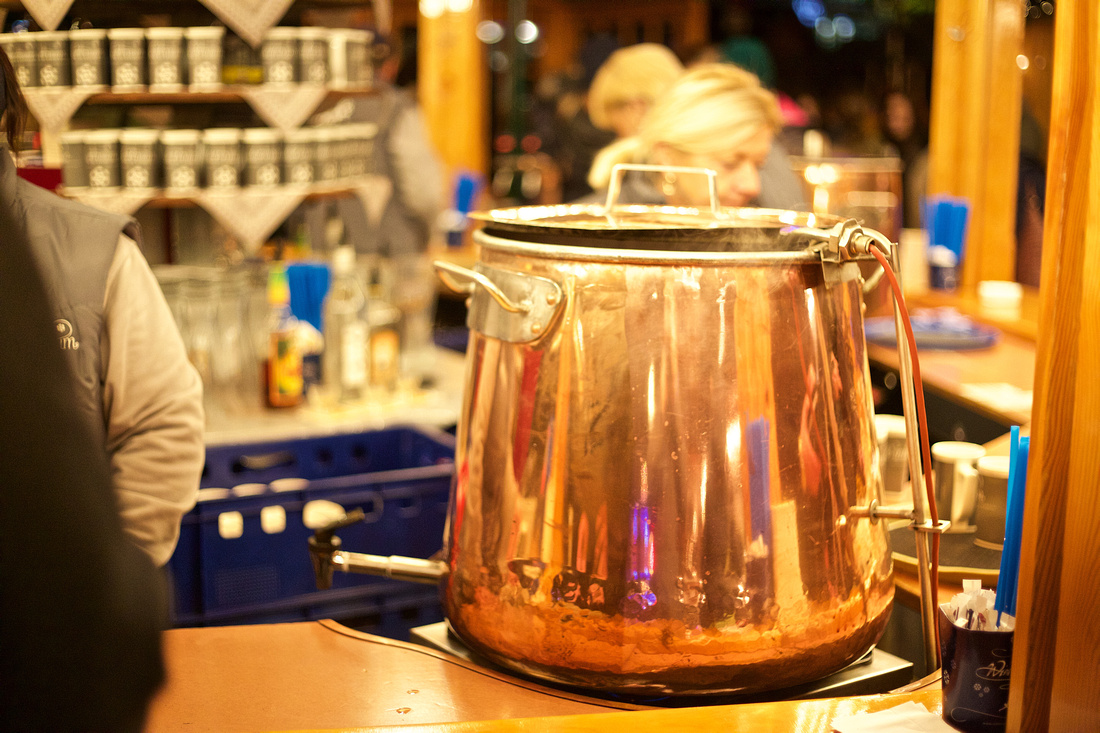
here you will get it from.... Lots of possibilities for more Glühwein....
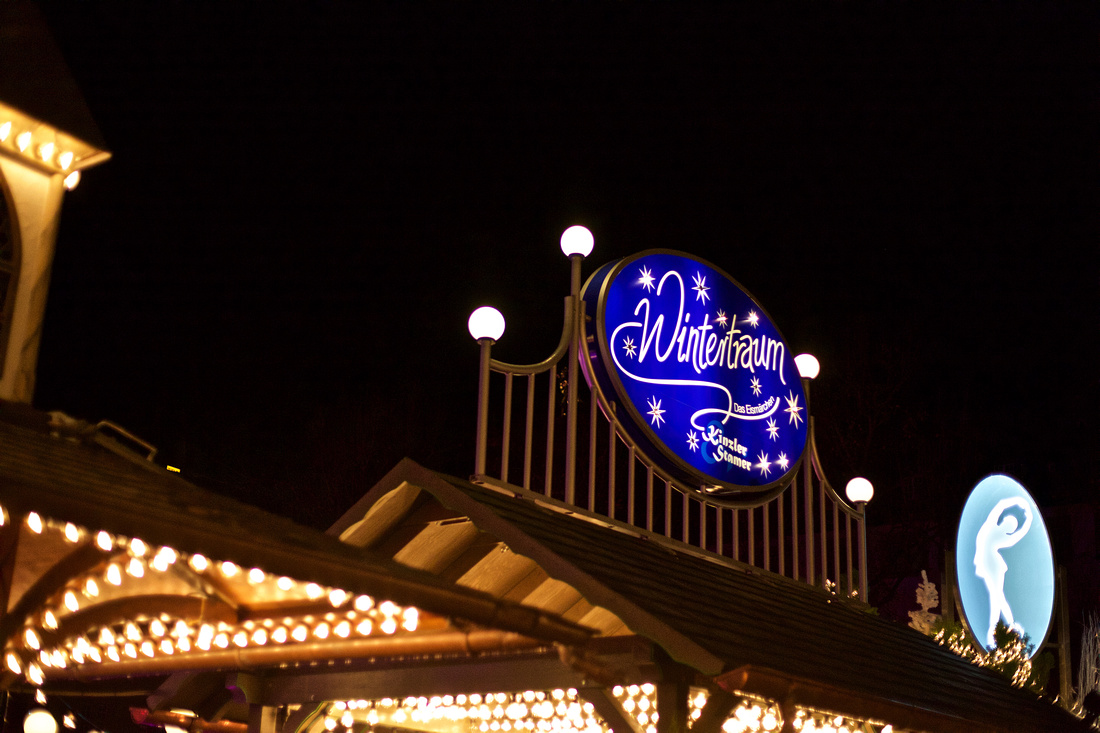
Another topic there is skating the the "winter dream"
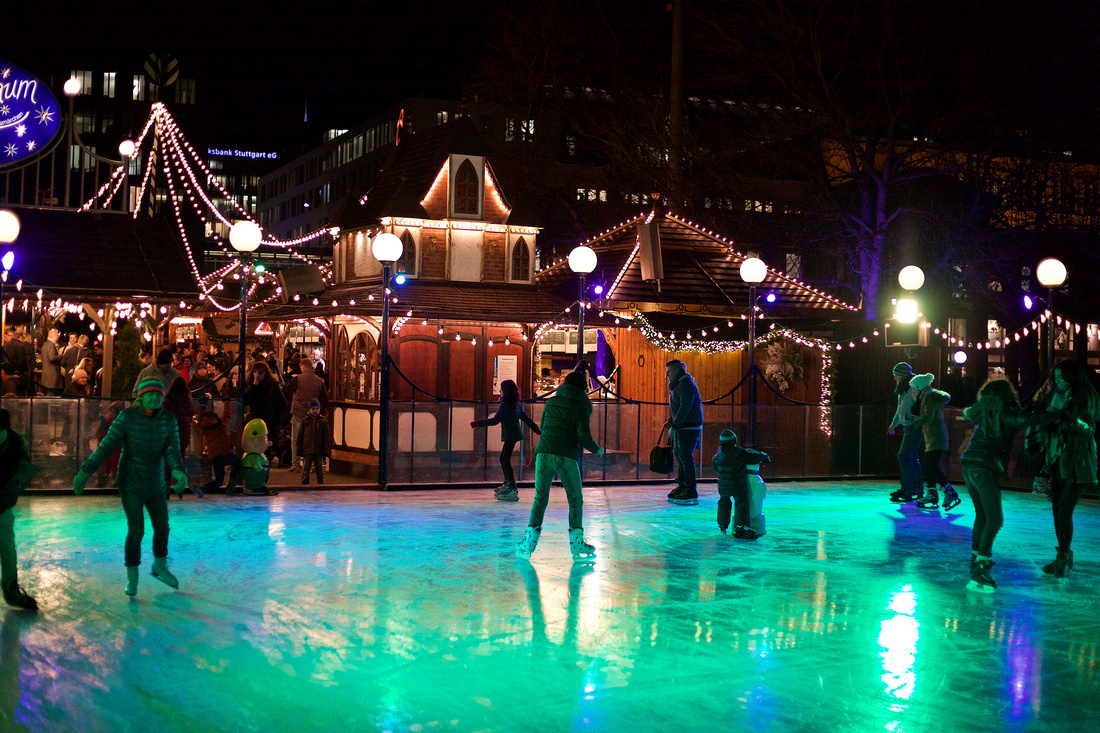
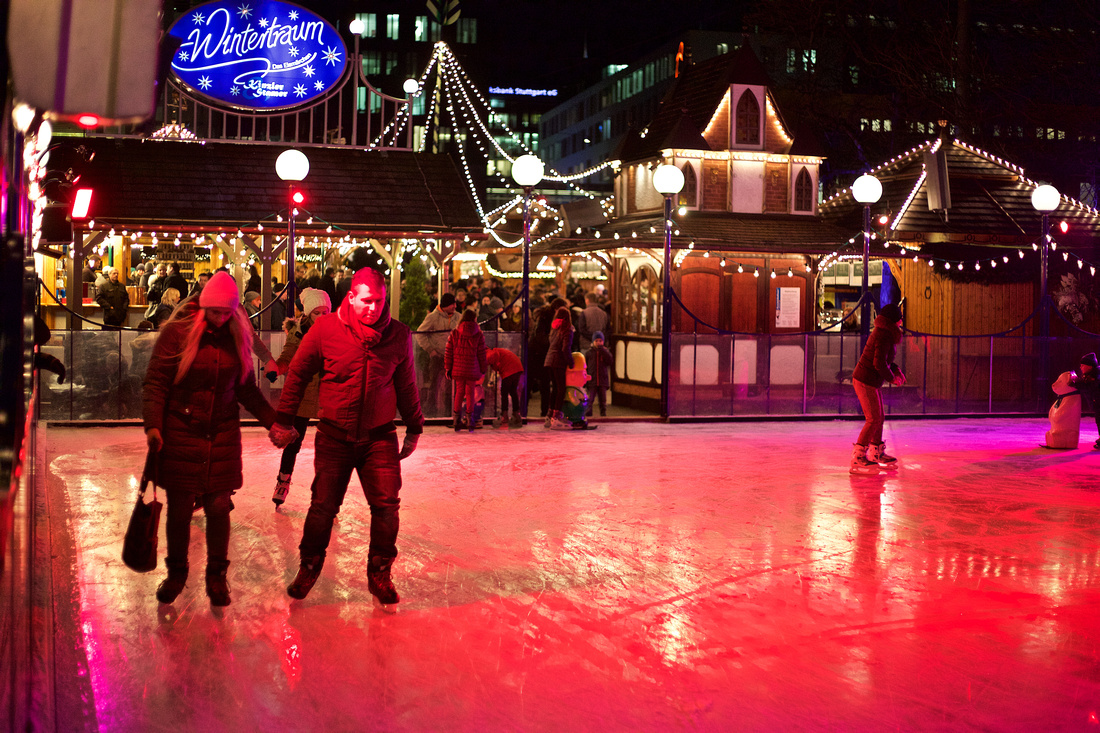
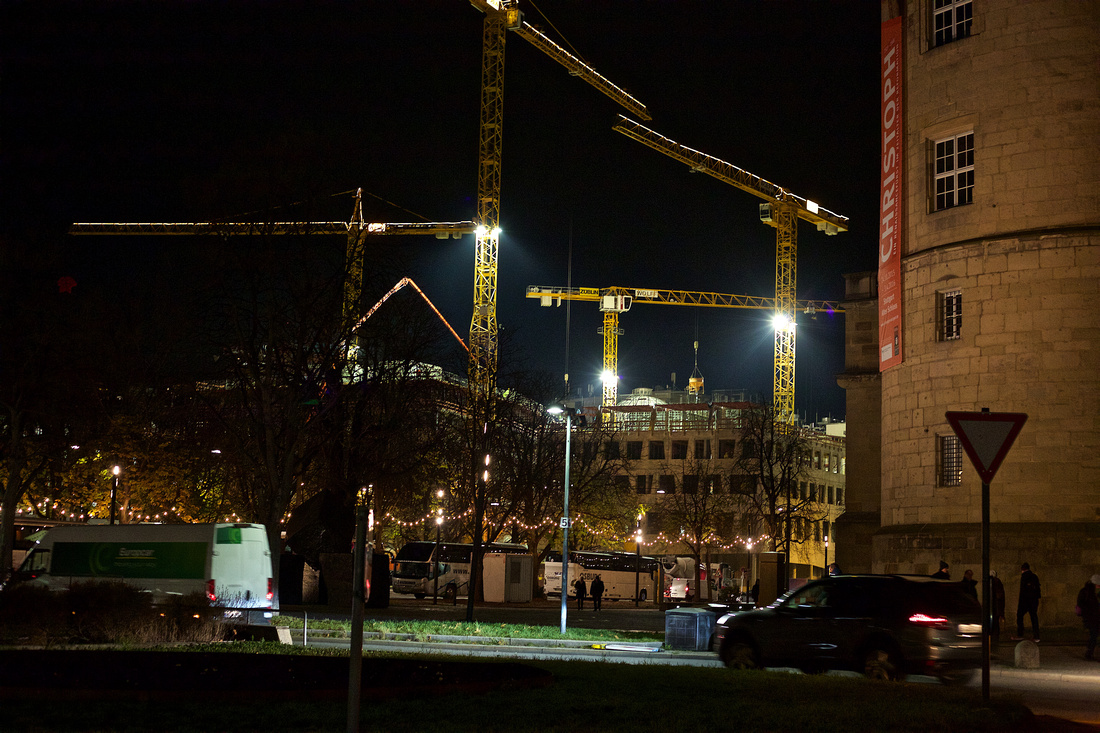
Construction work for the next shopping Mall DQ Dorotheen Qartier. Shot handheld...
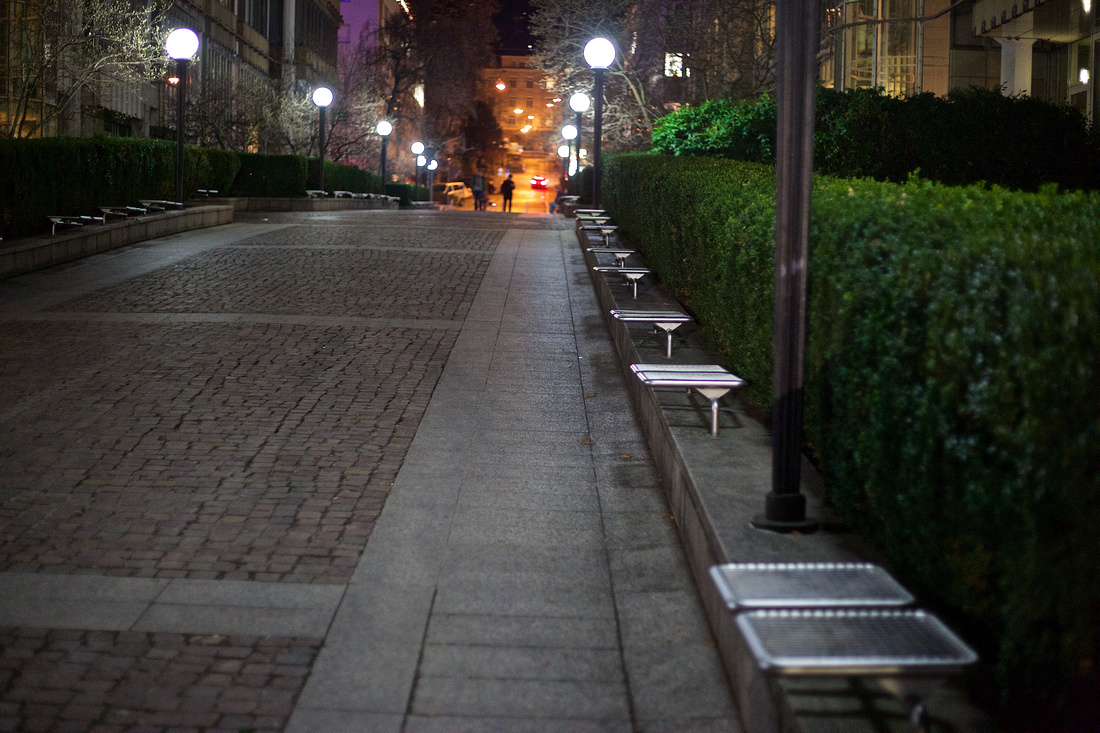
here we are in the Justice Quarter of Stuttgart where the law courts are...
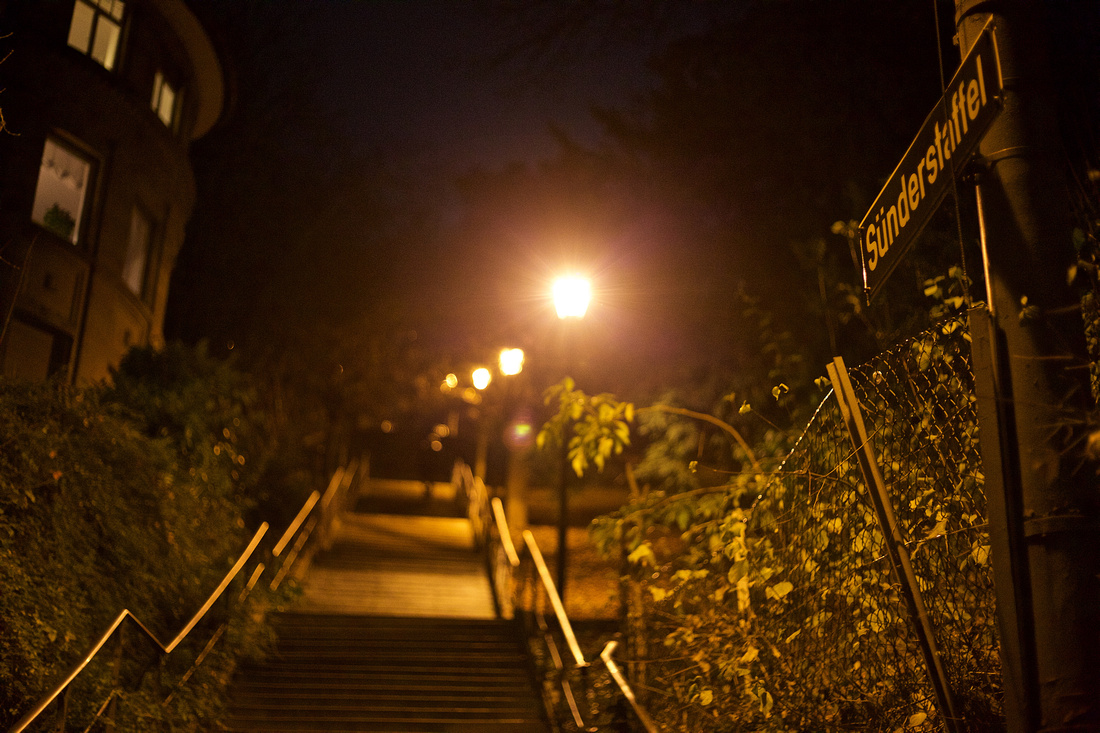
This is another Stuttgart specialties: the stairs going up the mountains. They give food walking people a shortcut - you will be as fast as the tram. Downwards... This one is named: Sinner Stairway...
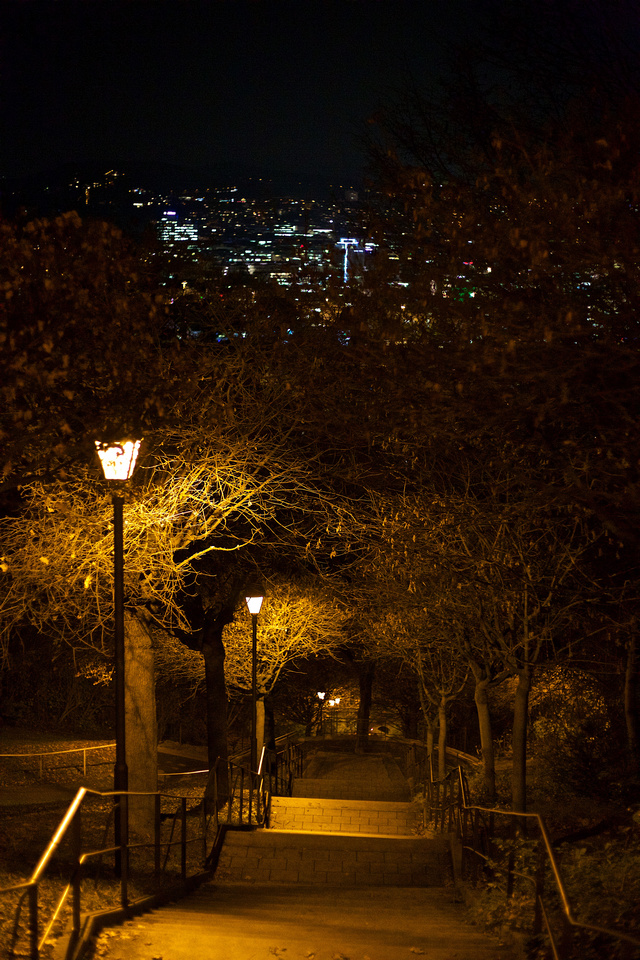
This is the look backwards.... pretty high above the city...
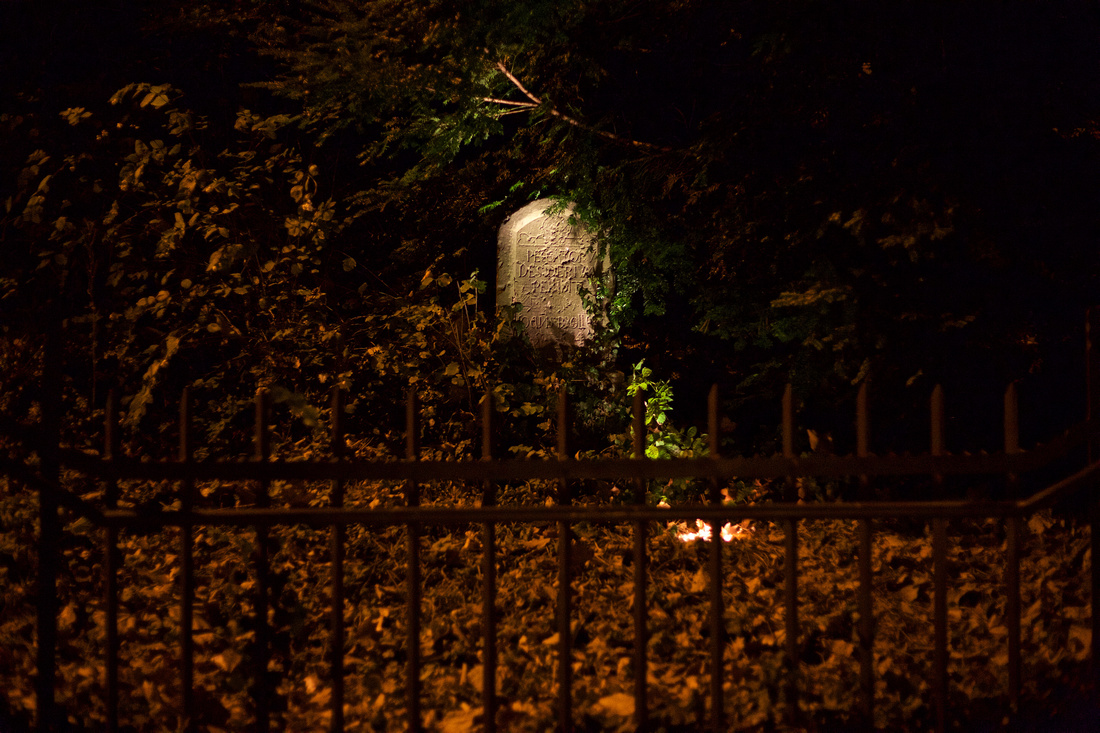
Summary
Yes: this was really fun to do. The Nifty-Fifty on the Full Format Body is amazing. Not tripod just handheld.... But for the beginners a Full Format body is like a Stradivari in the hands of a violin beginner.... And it is way to expensive....
What does this experiment prove than: 50mm is a very nice starting point for street photography. Of course. Maybe 35mm will be even more interesting.... I will prove it.
The next step
I will have to repeat this experience with the GM5 and the Sigma 19mm f2.8. The photos will not show that amount of bokeh.. Definitely. But it will be interesting what will come out of it...
Some Remarks
All photos were shot with the EOS dDMkIII
If you want to have a closer look to the images:
http://goo.gl/K4Hgao]]>
As promised in Part 1 of this series: I bought the Nifty-Fifty in the actual version which is named "Canon EF 50mm f1.8 STM" - officially. An I had to use it (mainly) on my APSC-Camera - an EOS 7D MkII. I know, this is kind of unfair because the 7D2 is a very special camera in terms of speed and autofocus. But I do have it and therefore it´s the one to use.
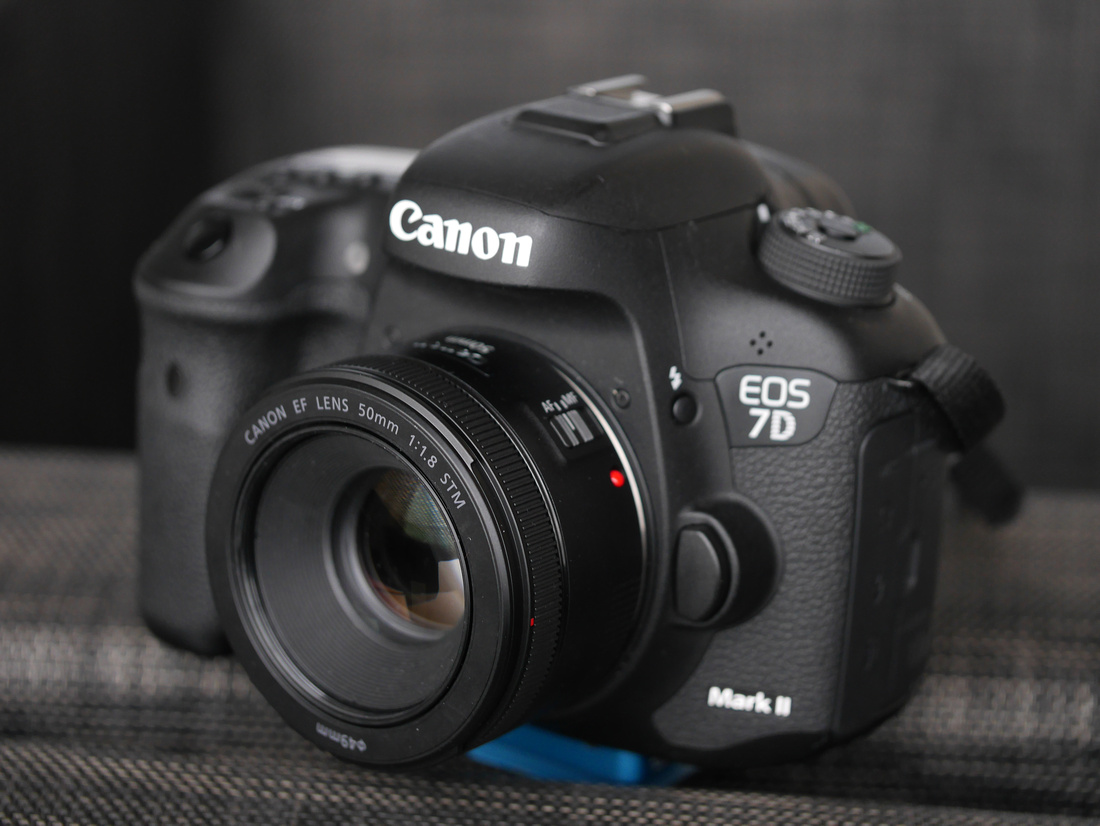
The Nifty-Fifty shooting experience....
Technically spoken this lens is a 80mm f1.8 lens on an APS-C body -beside all discussions of the f-numbers and multiplication with the crop factor because of less shallow depth of field etc. This means it is not a wide angle lens and it has a special look and feel. With 80mm it is a light telephoto lens, great in portraiture and some kind of landscape. But in street photography it will have some kind of limitations.
First of all: this is an amazing piece of glass. I own the 3x more expensive 1.4 50mm from Canon: I know I can scrap it: this lens is rubbish just in comparison of the image quality - but more about this later.
I took the lens on my camera and went shooting. just to get the feeling what I can do and what´s fun with it - and maybe what´s not... The first photos I shoot more to less in our backyard and on the way into our city. Here some excamples:
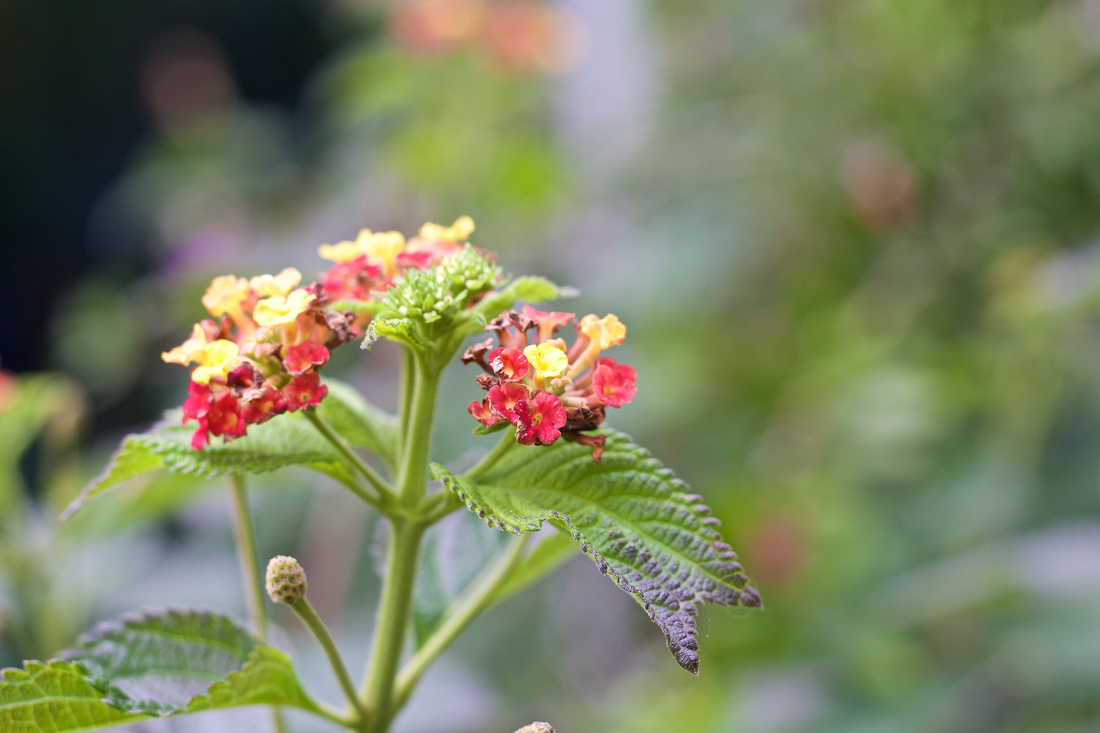
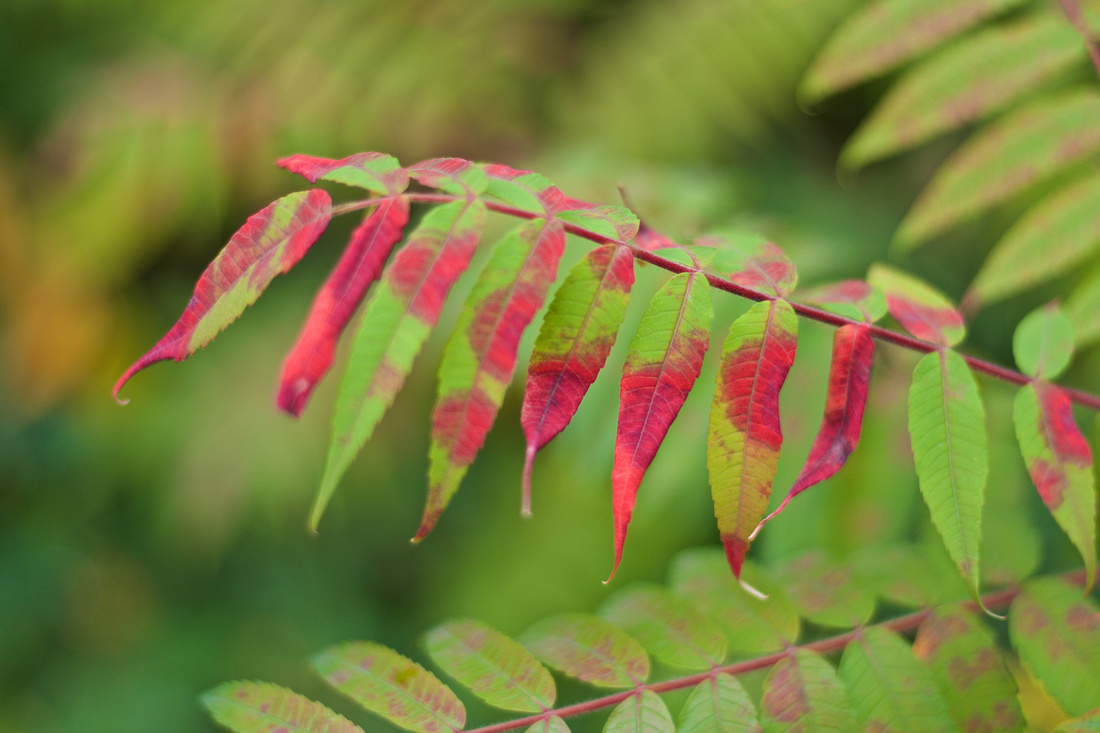


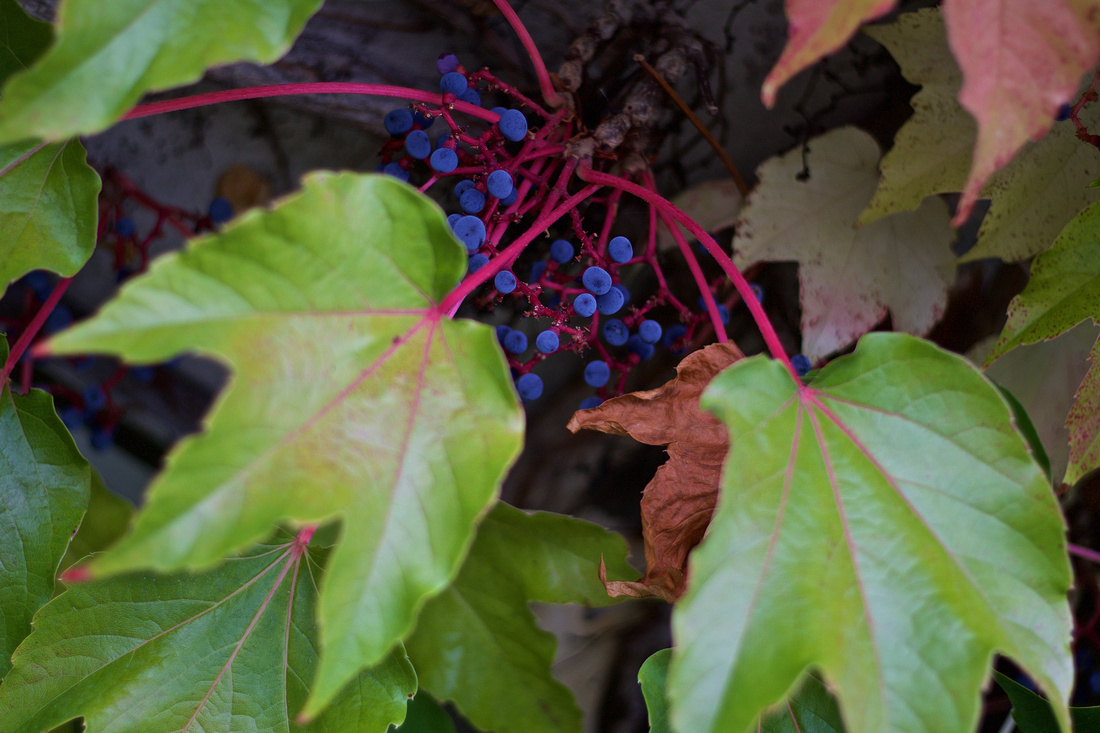
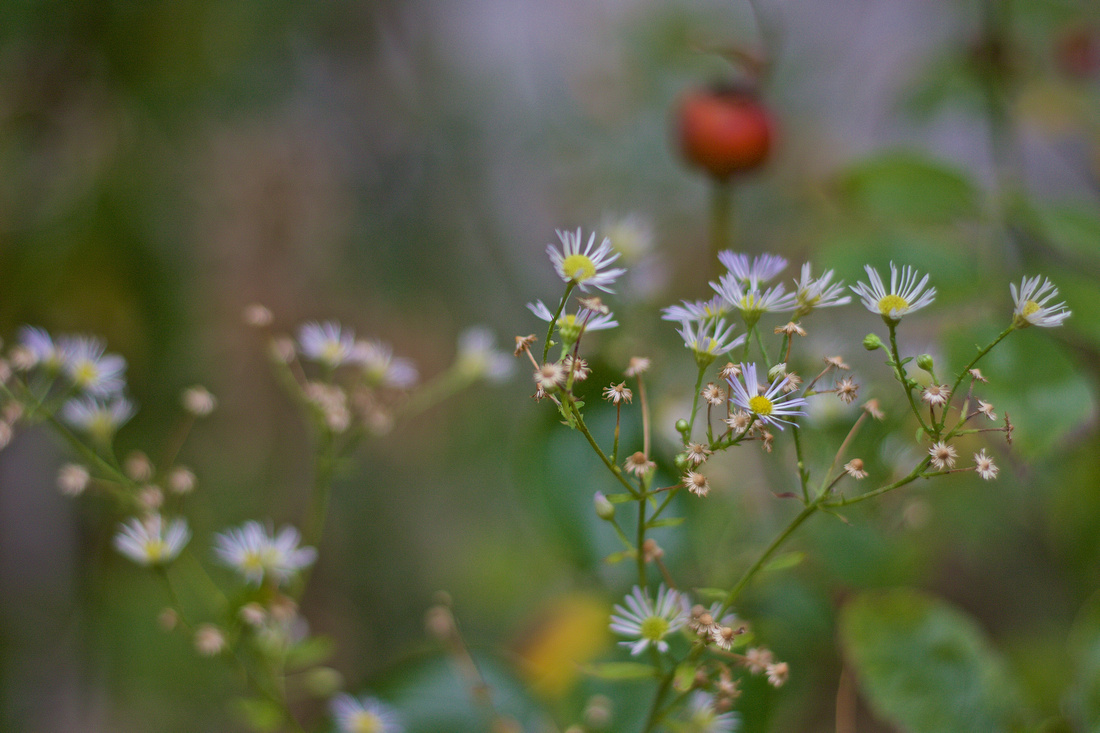
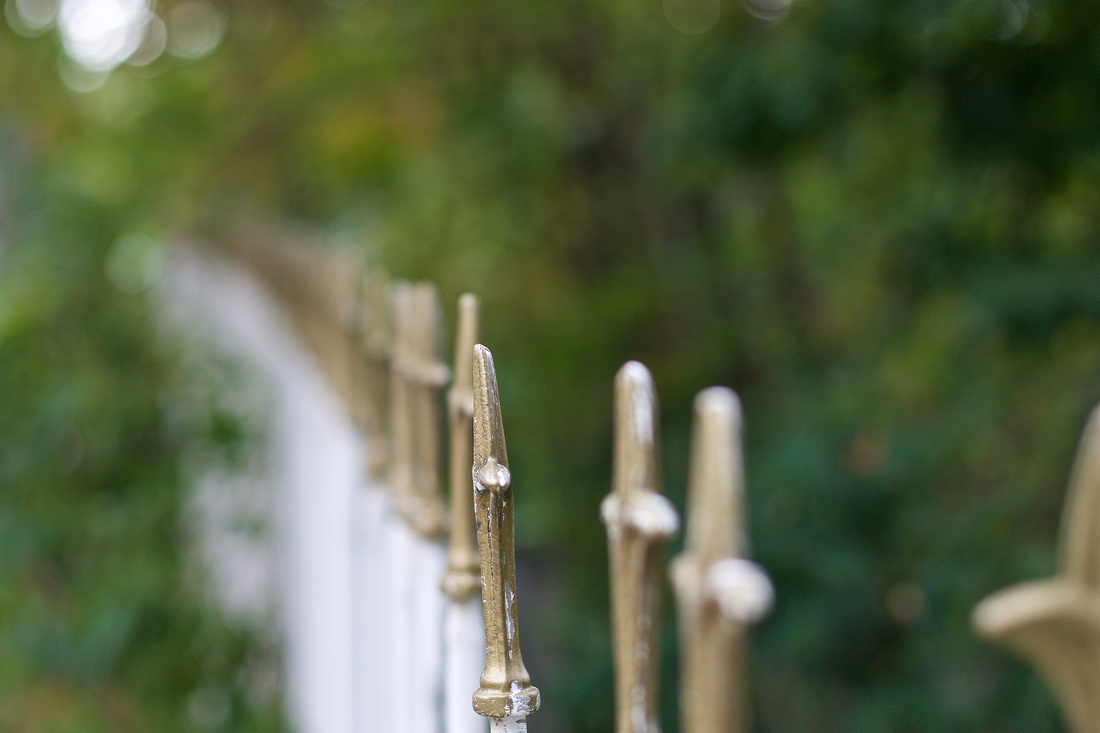
For me the photos shot wide open came out too soft - I decided to prefer to use the lens mostly stopped down to f2.8 or f4 for these kind of environment.
When I entered the city i did some more street photography style of images. Here the autofocus system of the 7D2 helps a lot delivering tack sharp images....
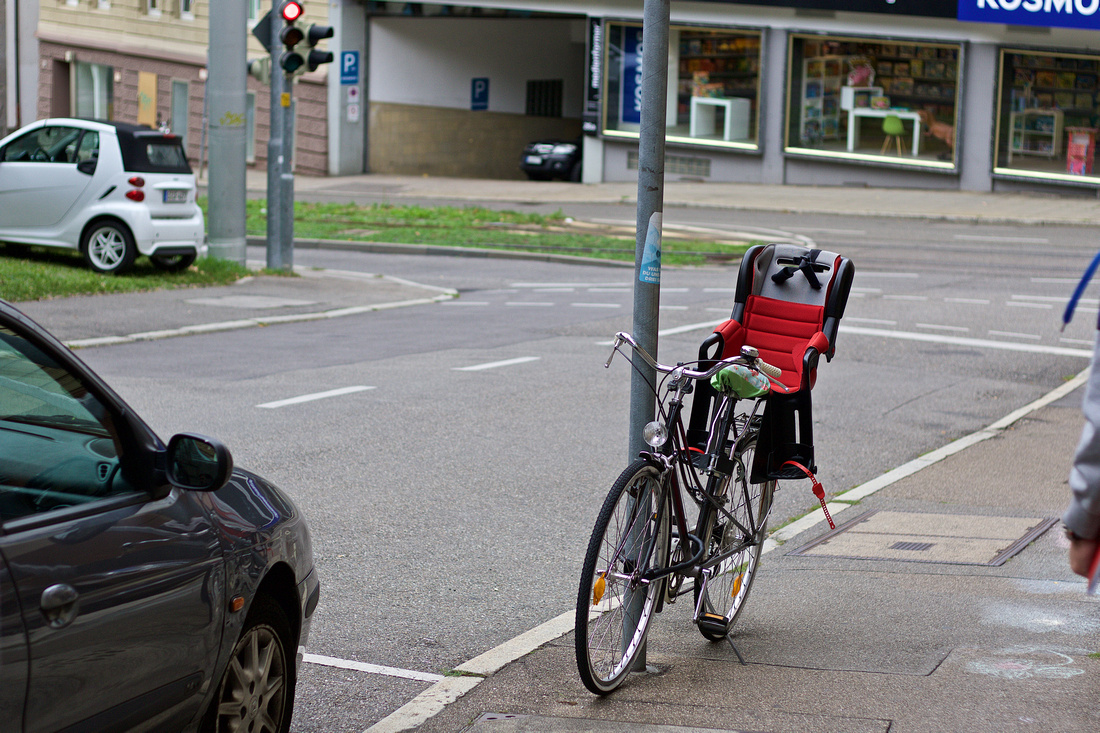
ISO 200, f2.8 1/1250s
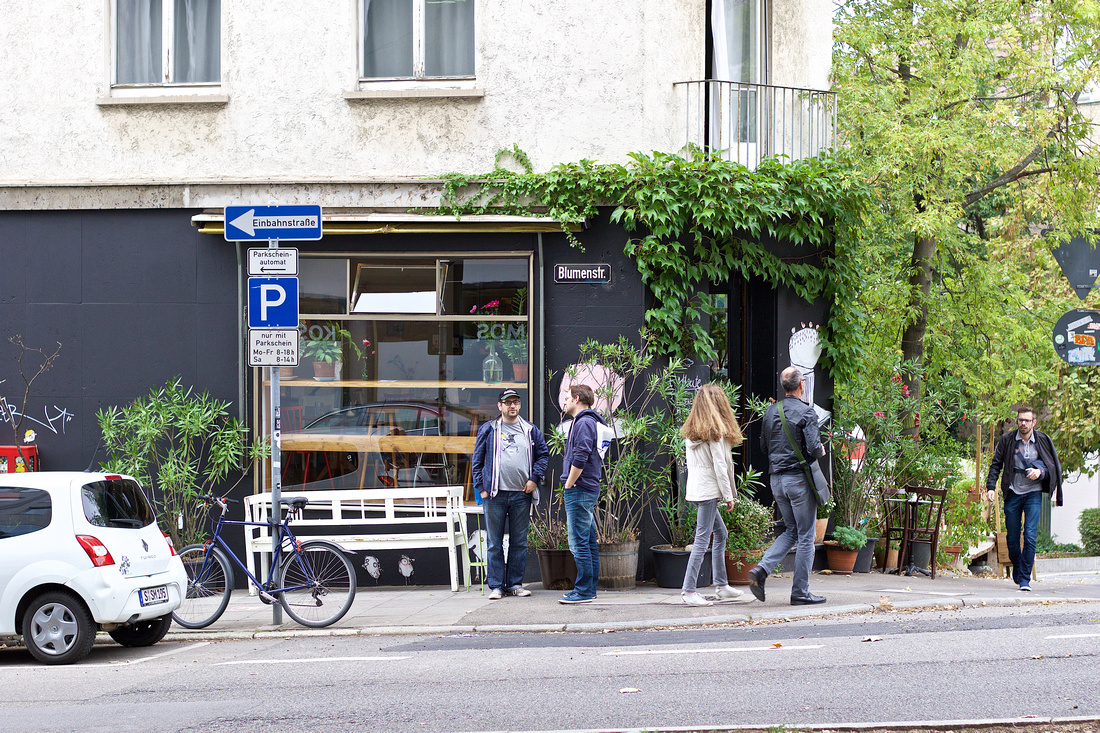
ISO 200, f4 1/200s
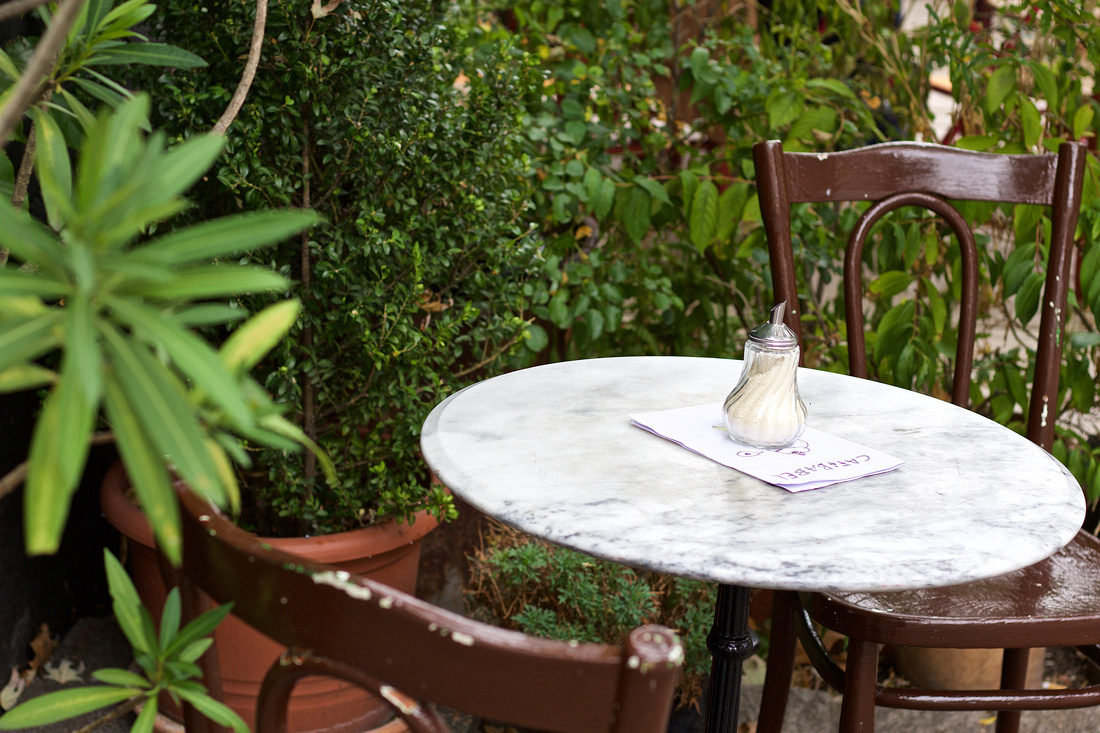
ISO 200, f4 1/200s
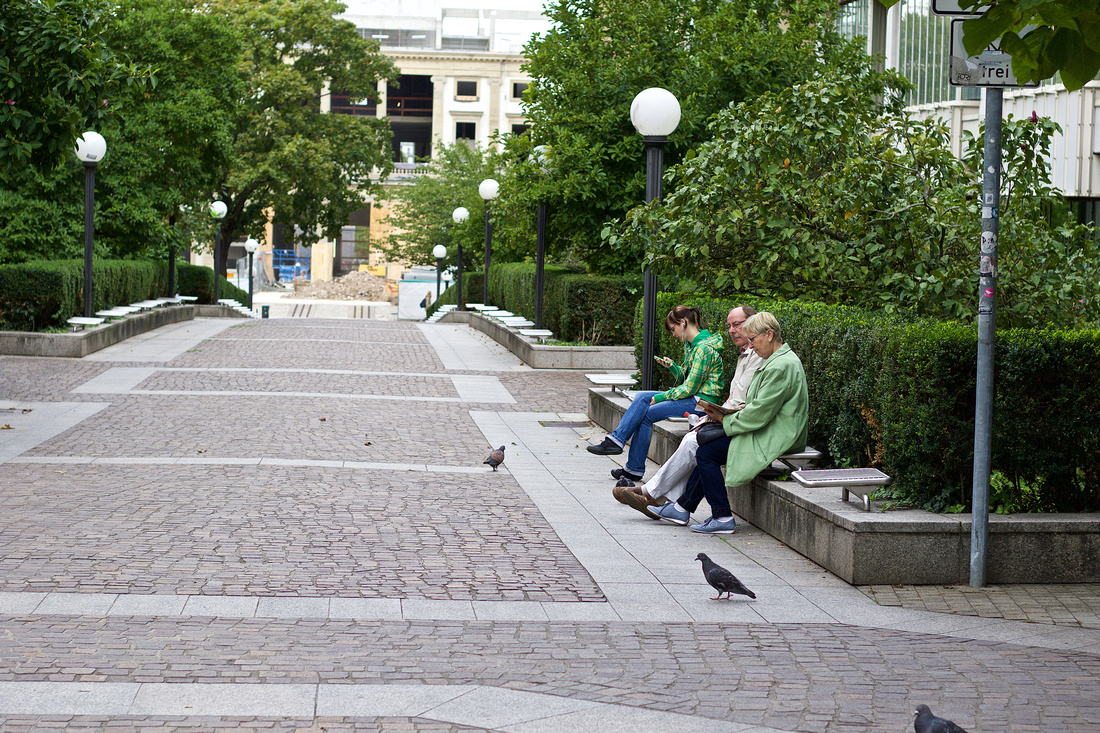
ISO 200, f4 1/500s
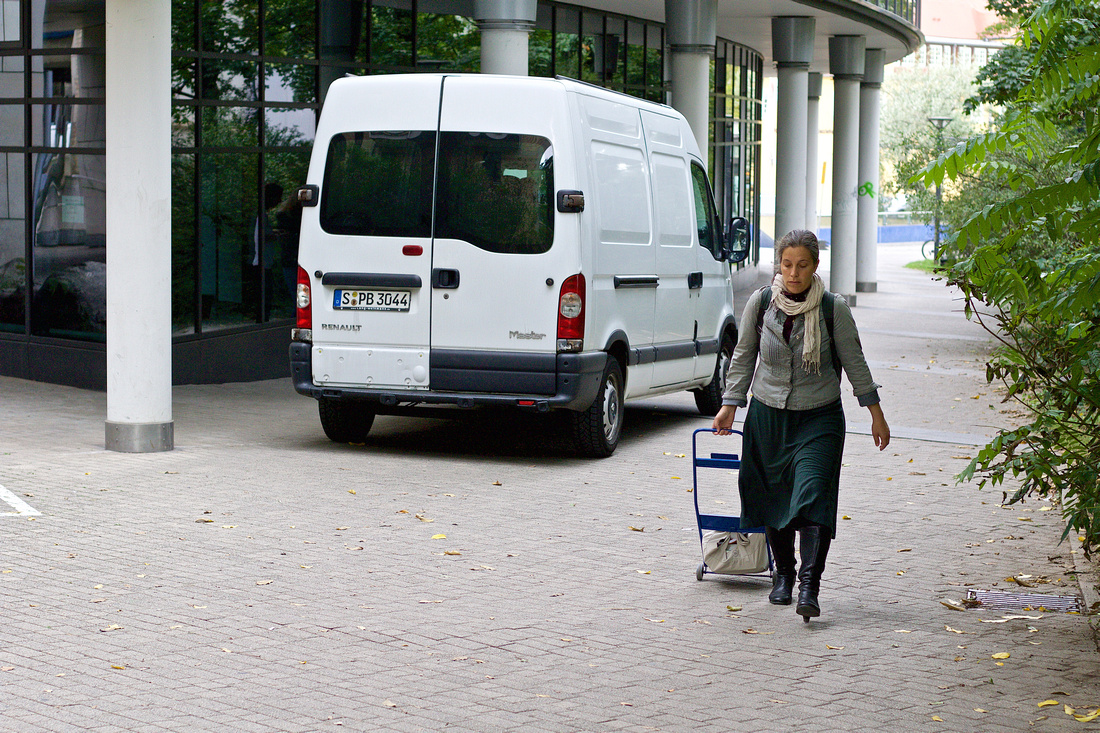
ISO 200, f4 1/320s
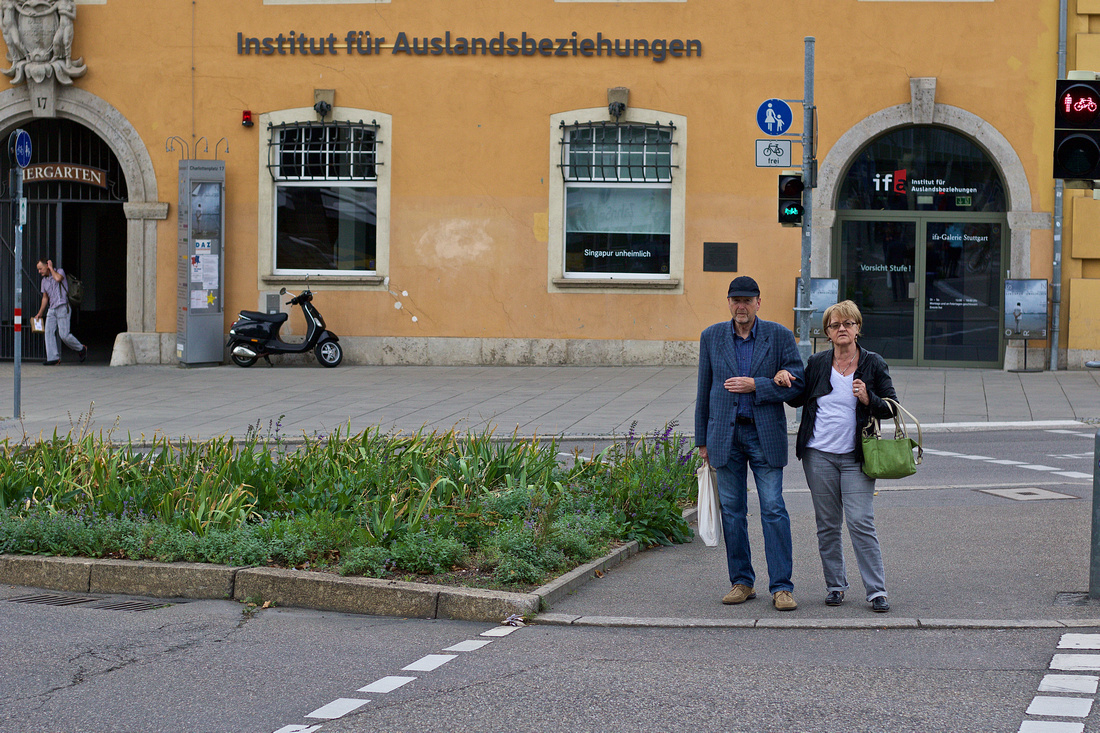
ISO 200, f4 1/600s
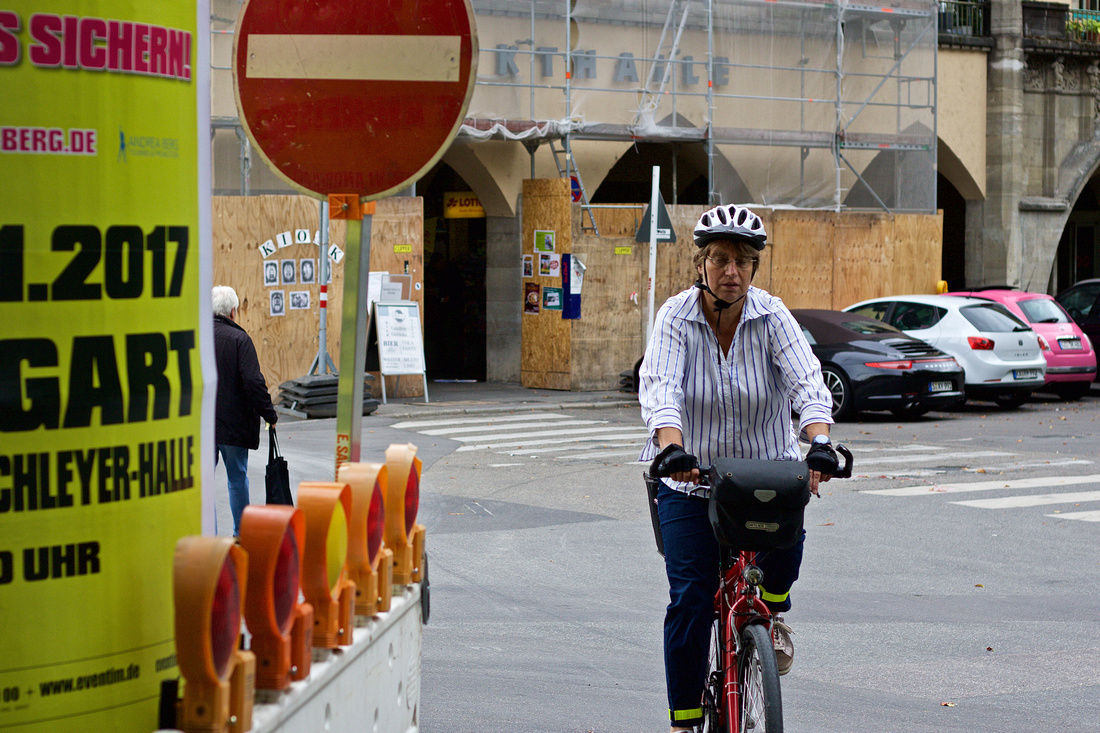
ISO 200, f4 1/1000s
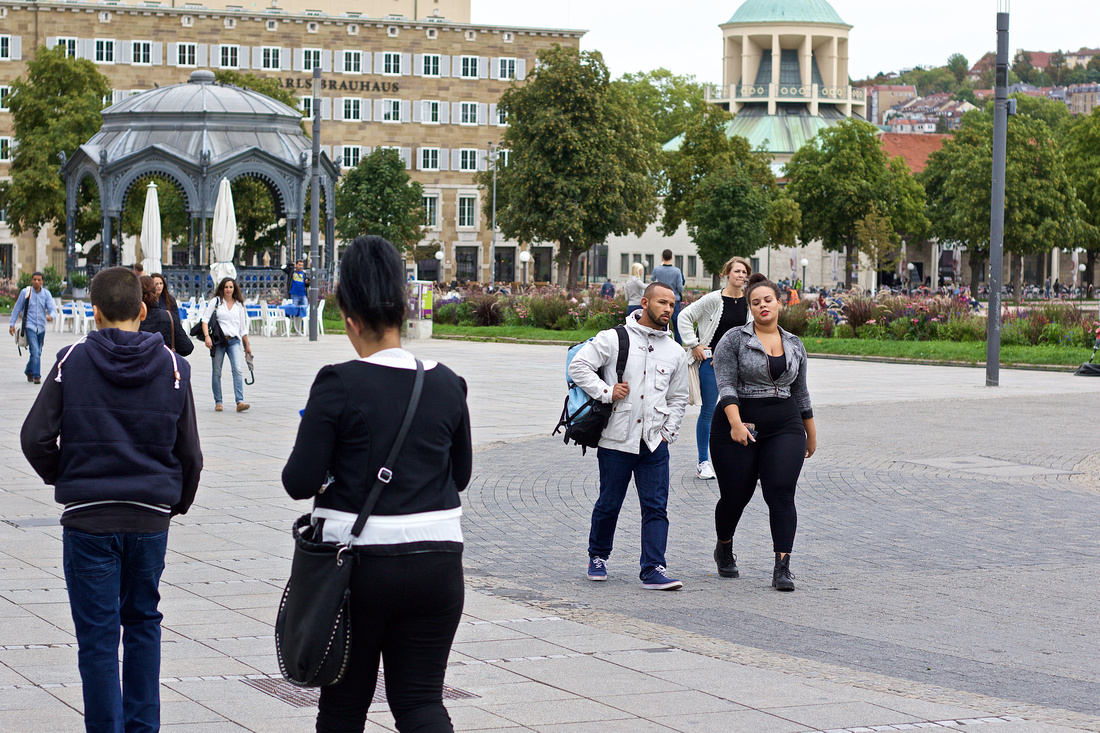
ISO 200, f4 1/800s
The lens delivers what you can expect: Nice Bokeh, and a really kind of focused view angle:
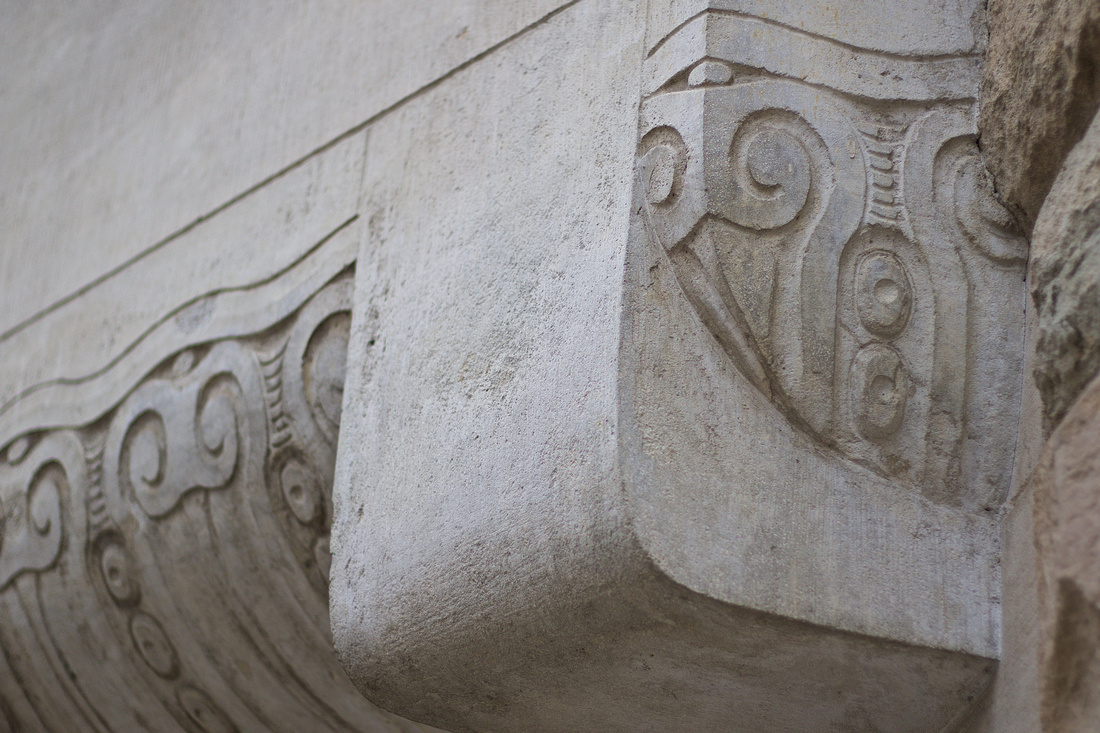
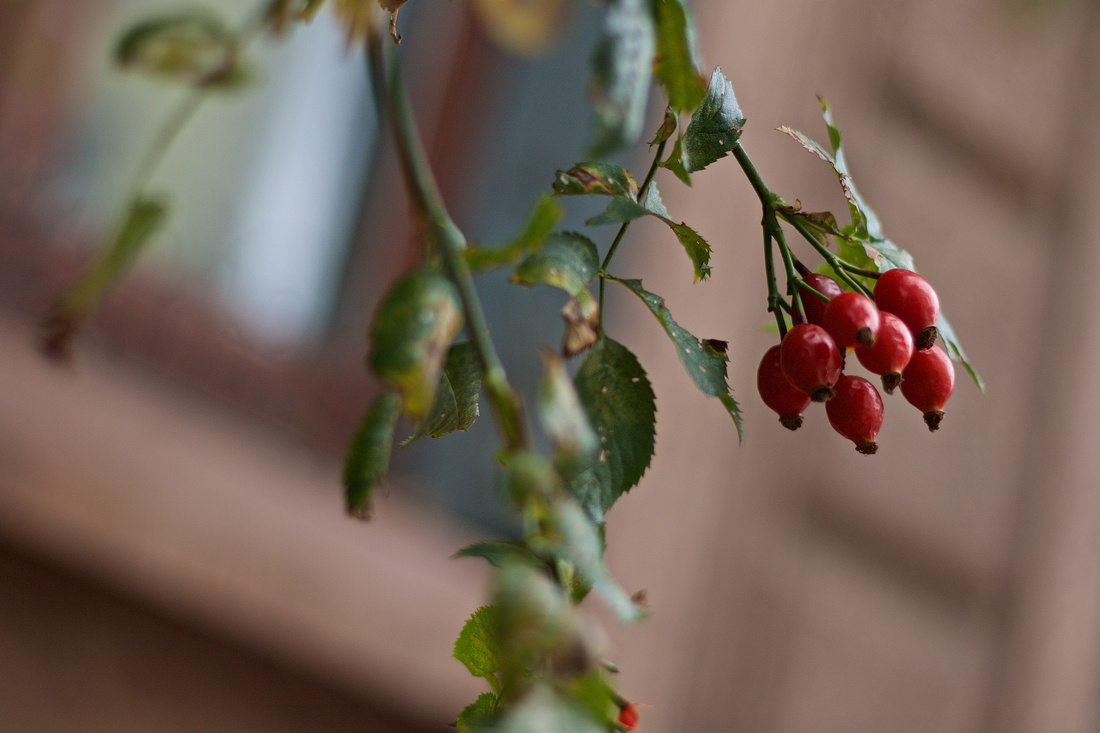
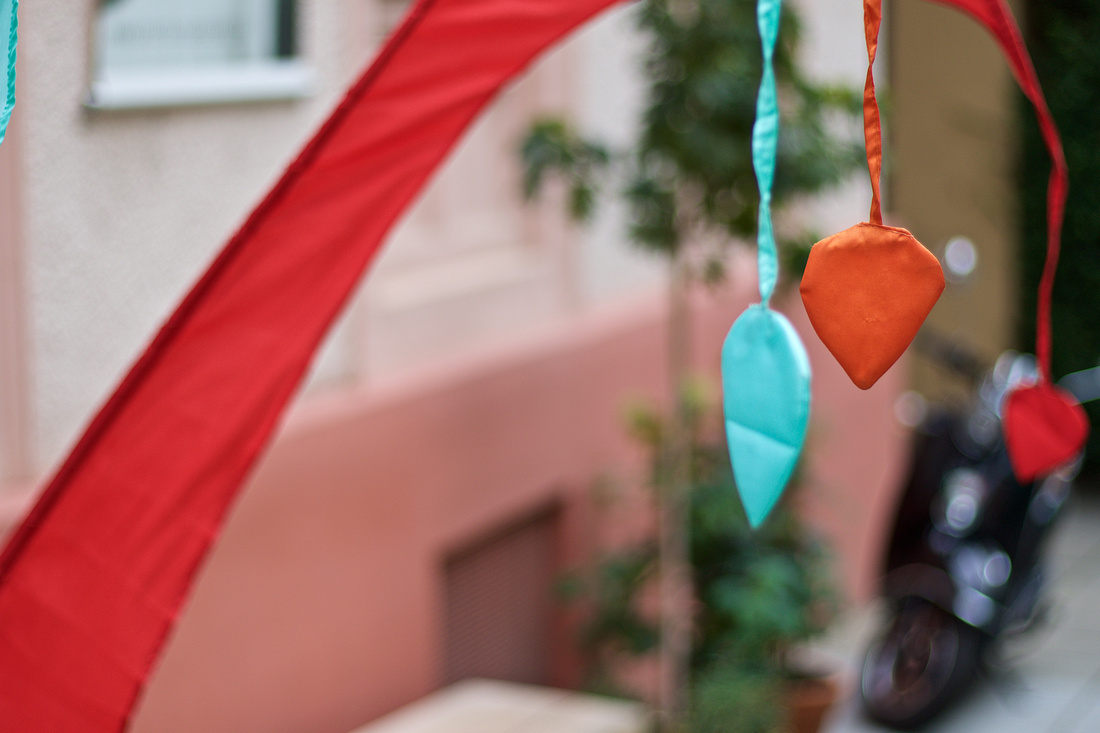
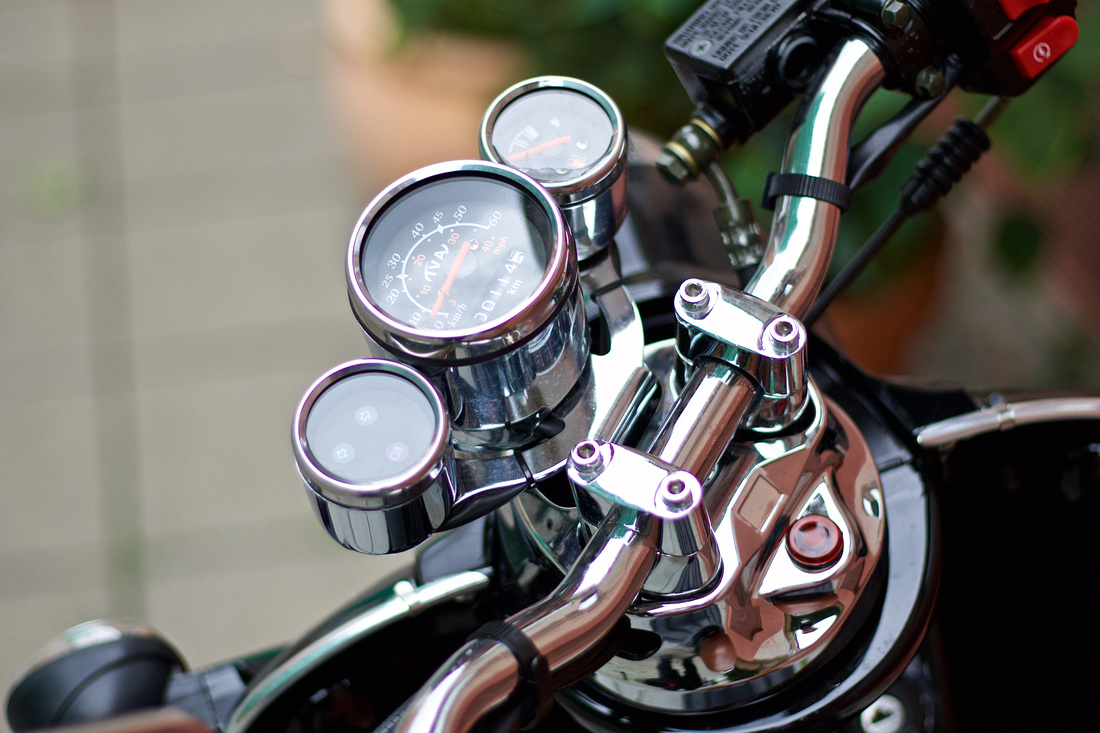
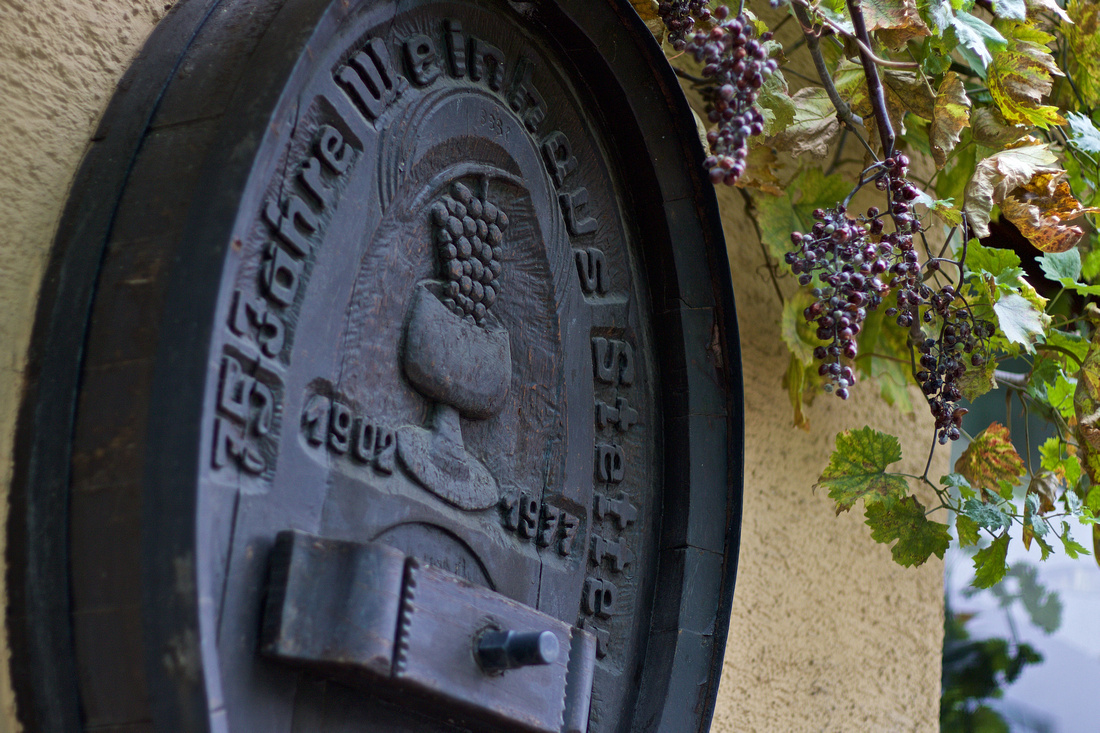
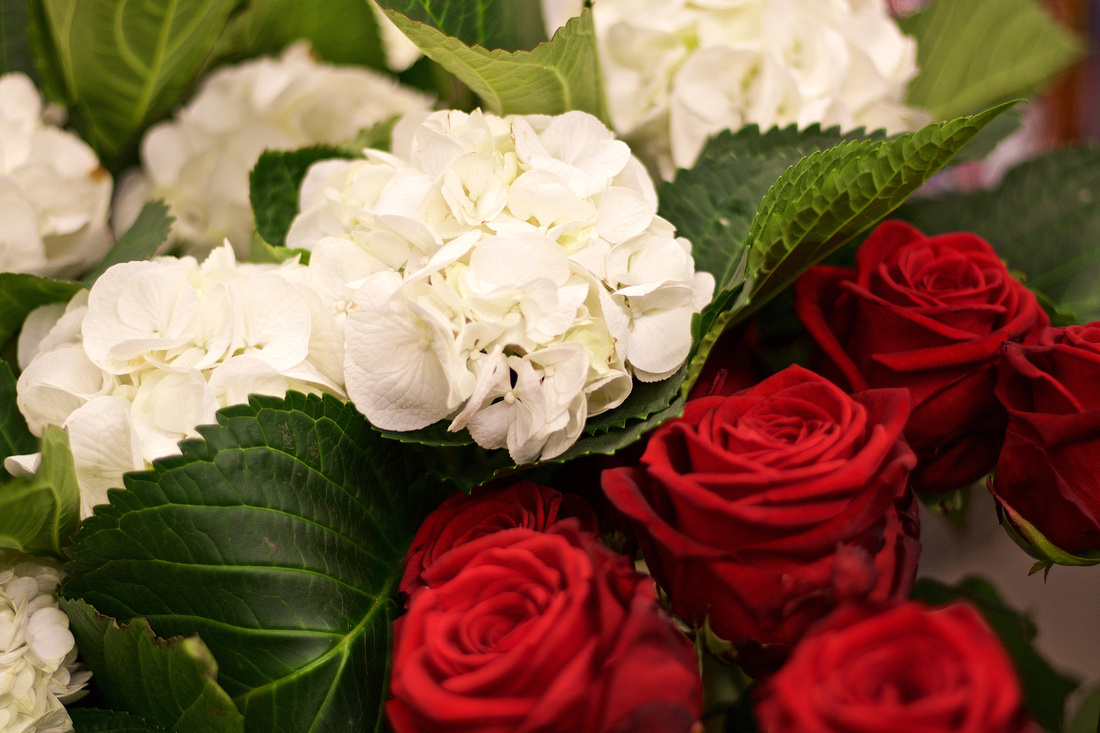
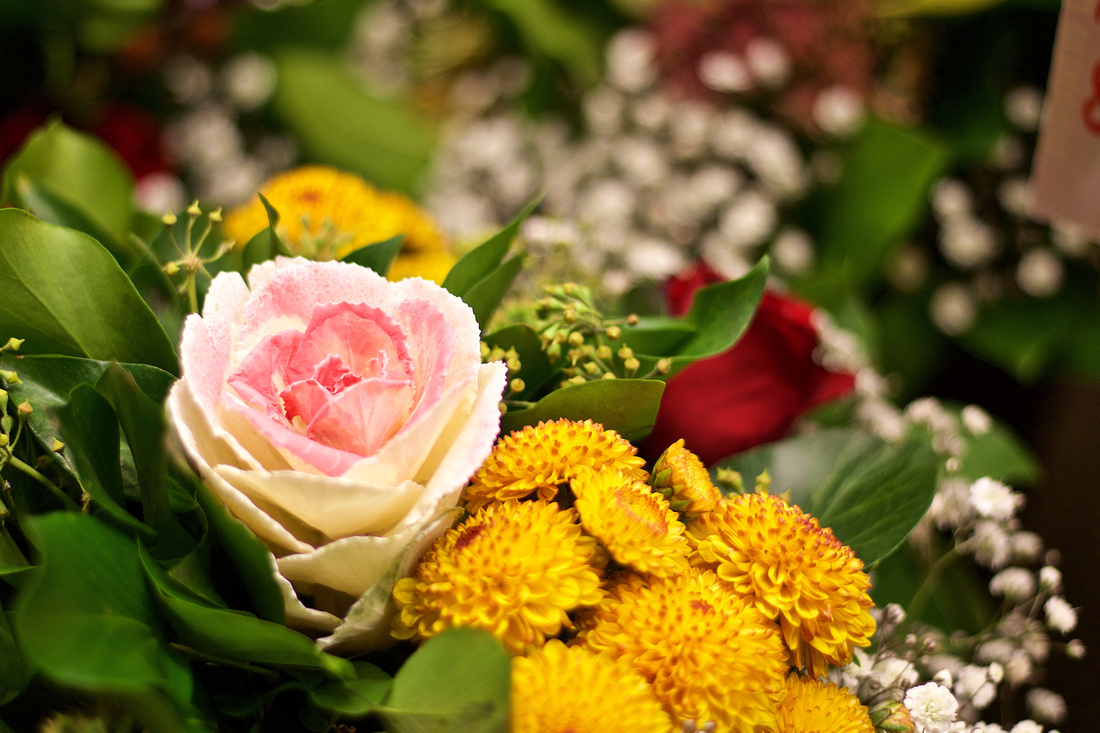
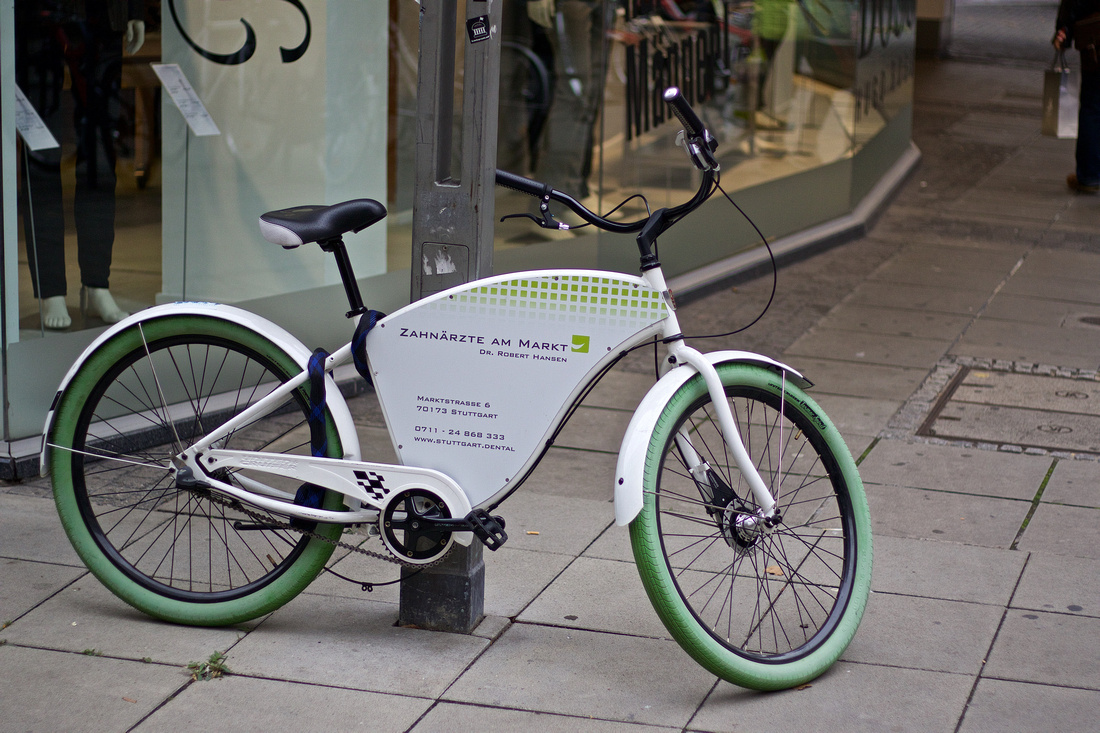
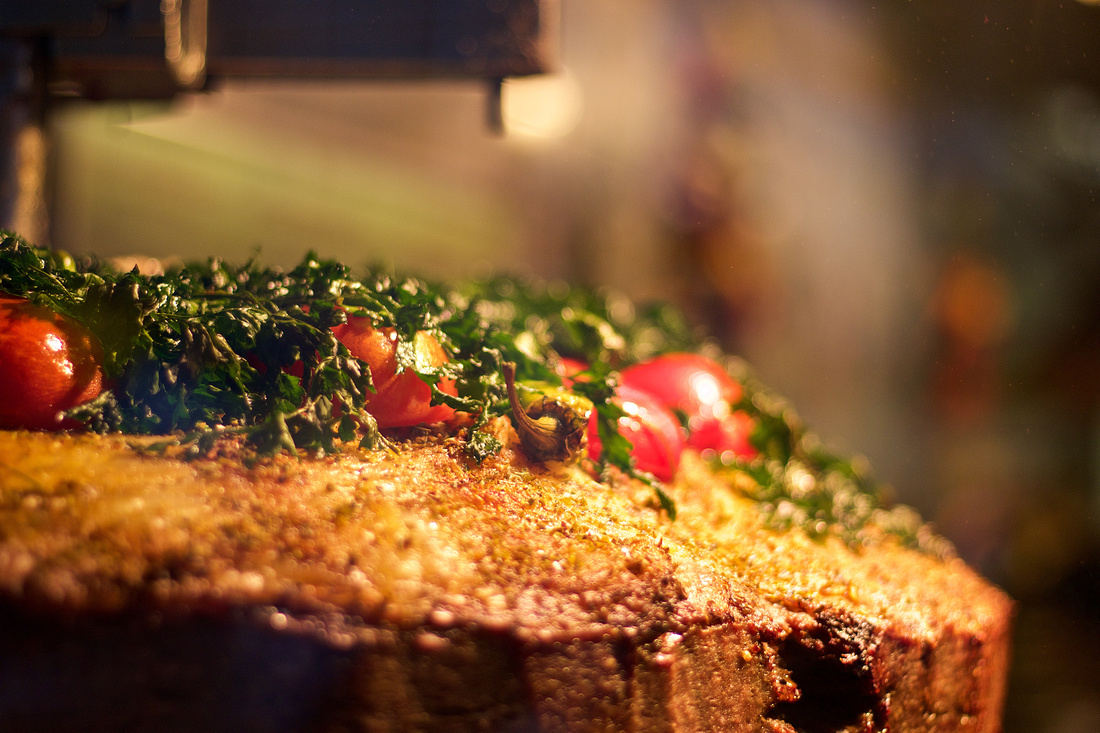
Bokeh!!!!
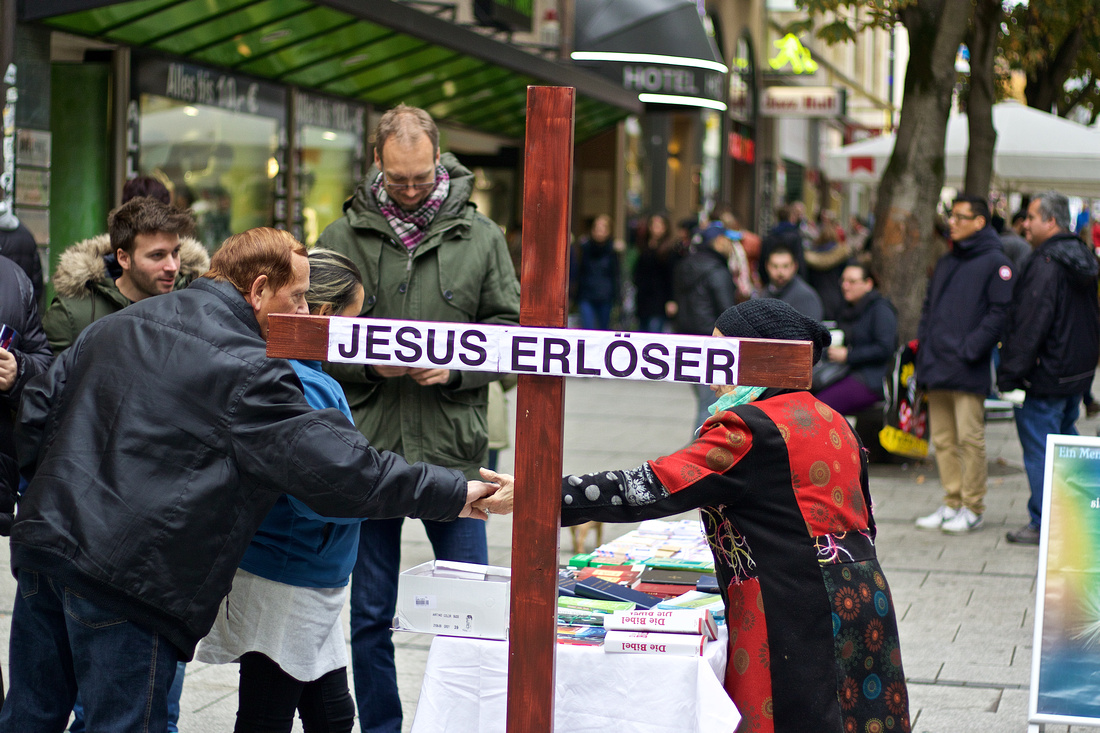
In total I am quite happy with the photos I can take with the lens. But the feeling of shooting close by get lost: due to my taste this lens is easier to handle on a full frame than on an APS-C body. In the other side: for beginners it is maybe better to get a closer shot without getting that close....
Some Remarks on Image Quality
As said earlier: the image quality has blown me away. Especially in comparison to the EF 50mm f1.4. But it has some limitations, too. My main concerns are: Beeing soft wide open paired with chromatic abberrations....
Here are 2 excamples for CA which I do not find very nice. It show the limitations of the lens to shoot really wide open...
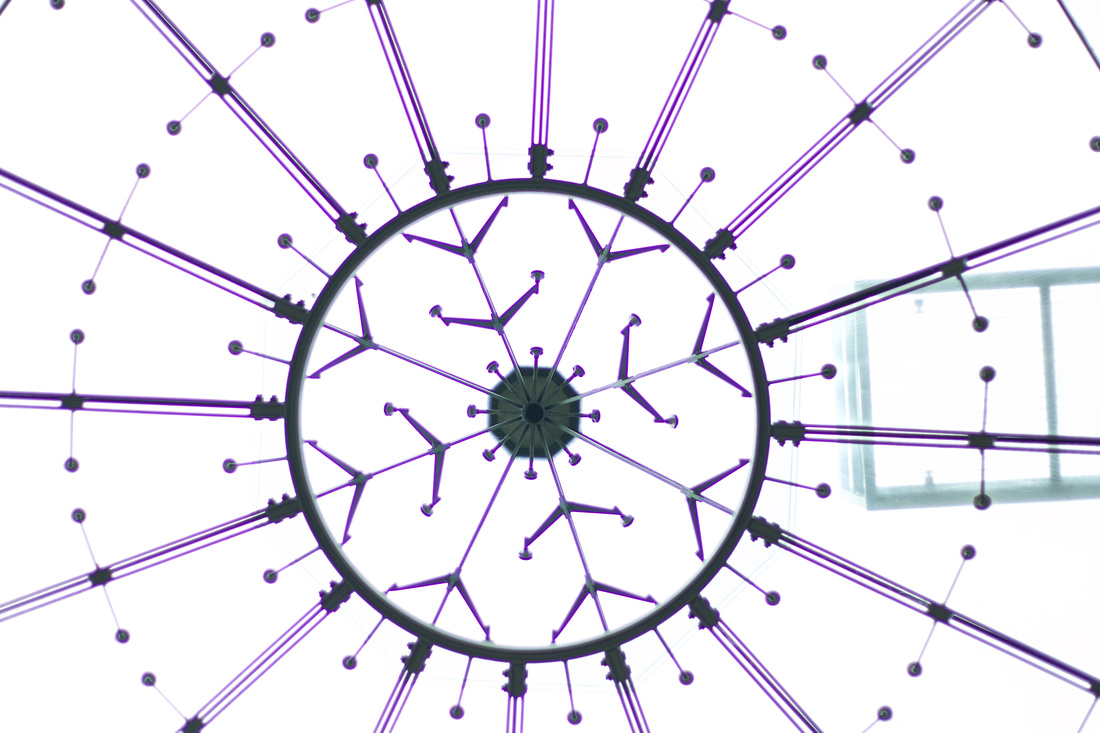
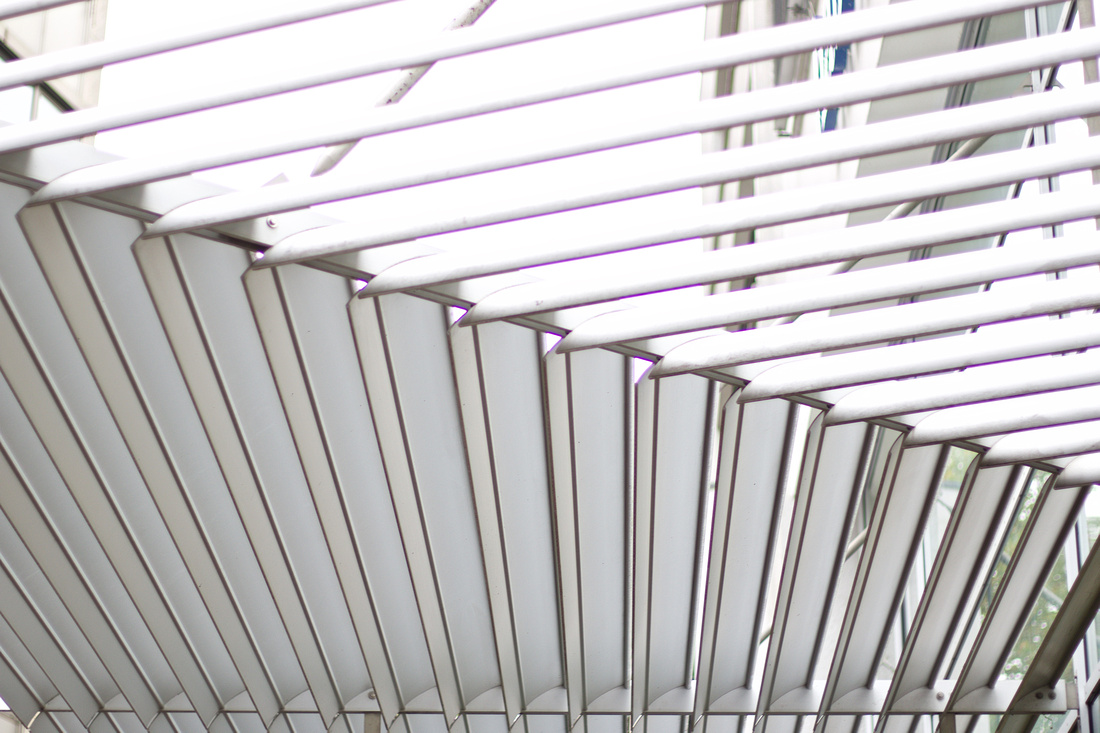
This can be corrected in Camera Raw but it will soften the image additionally.
Another topic is the lens softness wide open, mainly at short distances

f1.8 vs f4 @ ISO 800

f1.8 vs f4 @ ISO 400

This image shows the comparison wide open f1.8 vs. 2.8: interestingly @ infinity the difference is less.
Comparison between the EF 50mm f1.4 USM and the EF 50mm f1.8 STM
I do have an old Zeiss 1.4 50mm since ever: I love this lens - it gave me really nice shots... even in the Canon environment. But than I decided to have an autofocus lens - and the EF 50mm f1.2 L USM was a bit expensive.... Therefore I decided for the f1.4. At this time maybe the right decision. But today: clearly the wrong decision. The following shots were all shot on a tripod with cable remote. Best conditions for really sharp images....
In the following images the f1.4 is left, the f1.8 is on the right...
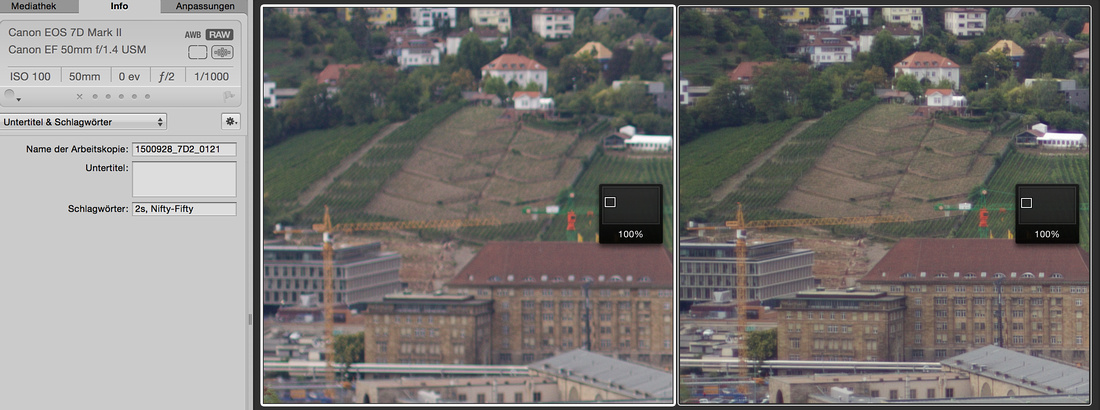
This photo are shot @ f2 ans 100 ISO. It is the upper left side - and the result is terrible - but only for the f1.4 version. the f1.8 looks pretty acceptable.
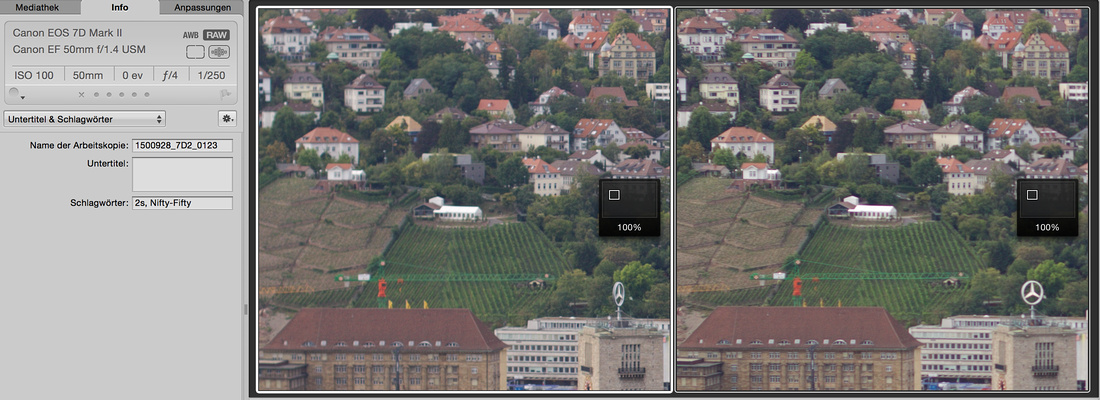
The difference is reduces @ f4 - but still not acceptable.
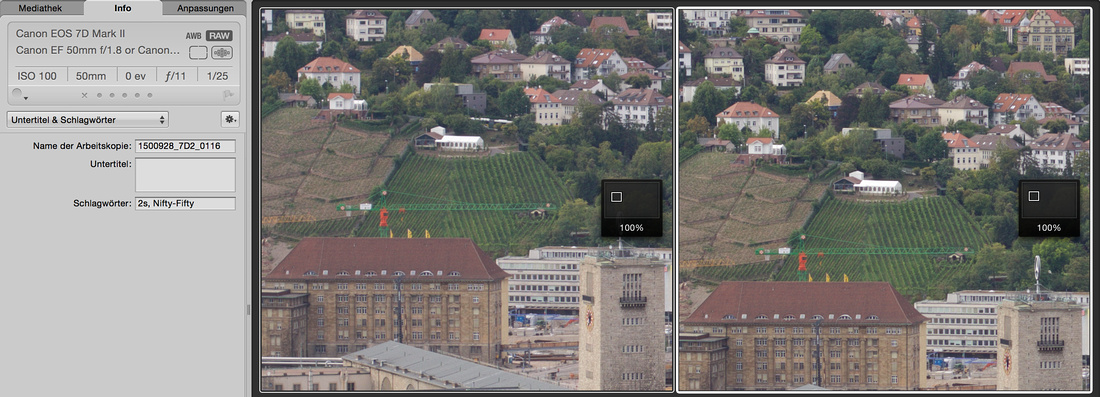
The next test was @ f11. I thought that the f 1.4 ill be comparable - but this is definitely not the case.... The f1.4 is softer - even stopped down.
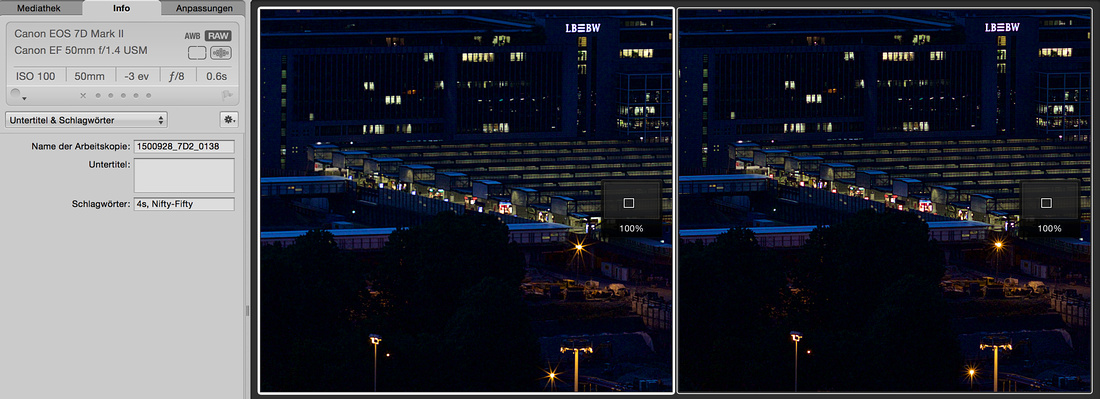
Showing stars... These crops represent the center of the images. Both shots @ f8. The f 1.4 has less stars in comparison to the f1.8 - even if the number of blades are less....

These crops represent the left side of the images but not the extreme. Both shots @ f8 - and the f 1.4 is again pretty disappointing for me.
Verdict
The Nifty Fifty is really an asset in the Canon ecosystem. It delivers very nice results. Due to my taste: it´s even better on FF than on APS-C - but due to the focal length. Maybe I will add some photos in the near future.
And I clearly see: there is a lot of space for improvement: And I will fill this. I do want a lens which is sharp wide open without chromatic aberrations...
What´s next
After this experience the next step will be a side by side comparison between the nifty fifty and the nifty thirty@ µ 43.... But this will include some remarks - and maybe some video sequences about the usage of both ecosystems - which makes a huge difference on the fun factor side...
And I will look for really good 50mm lens, maybe one of the new Zeiss Milvus lenses...
Some Remarks
All photos were shot with the EOS 7DMkII - with the exception of the photo of the 7dMkII itself: this was shot with the Lumix GM5 and the Leica Elmarit 45mm f2.8.
If you want to have a closer look to the images:
]]>
Or: the APS-C Advantage: The Nifty-Fifty: f1.8 50mm @ < 150€
If we look at photography and how to bring good photography to beginners there are some important things to bring fun: the possibility to make really good photos with affordable glass. Canon has it since generations with the EF f1.8 50mm. The price was a long time even below 100€, with the latest update it´s just 119.- €. Interestingly there exists a Nikon and a Sony equivalent, too.
What are the main success factors for these lenses
- Price
- Auto Focus
- Optical Performance
- a fast lens with f 1.8
- really sharp
- nice bokeh
If we would want to have an equivalent for µ43 what should be an equivalent there? let´s analyze. Typically these lenses are used with entry-level cameras - which are APS-C Cameras with a crop of 1.6 (Canon) or 1.5 (Nikon & Sony). An equivalent for µ43 would be
- 50mm@ APS-C: 80mm@FF: 40mm@µ43
- f1.8@APS-C: f2.8@FF: f1.4@µ43
Due to my taste the focal length of 80mm I consider as a downside for the Nifty-Fifty: On FullFrame it´s really great to start with 50mm. My first camera was a Zeiss Contaflex SLR with a fixed lens of f2.8/45mm... Always considered as a very good camera and I remember: it was really great!
If we look into the product range of µ43 it will be pretty hard to find the equivalent. There are lenses in the range of f1.4/40mm Yes! And good ones, like the 42.5 mm Panasonic Lenses in 2 Versions:
- f 1.2/42.5mm Nocticron @ 1.400.- €
- f 1.7/42.5mm Lumix G @400.-
Optically we see the "nifty-fifty-ness" but pricewise it´s fa away! Are there any lenses for µ43 ≤ 200€? Really sharp? I did found that Sigma has a nice series which are compact, with Auto-Focus and for fair prices: In their Art Series You find:
- Sigma f2.8 30mm DN Art @ 170 €
- Sigma f2.8 60mm DN Art @ 200 €
@ Amazon I saw the 30mm @ 156 € delivered at home and decided to give it a try.
The first experience with the Sigma f 2.8 30mm DN Art
Build Quality
First of all: it is a Sigma lens from the Art series. The Art series stands for high build quality as well as for a superb optical performance. In terms of build quality: the lens really represents a high level of quality which you can feel and see. The bajonett mount is metal, Very nice is the robust "click" when you mount the lens hood or the metallic focusing ring: yes this all stands for high build quality.
Sidewise the lens is "ok". It is made for APS-C as well why it is a bit larger than a µ43-native lens - but it is still ok. Especially on the GM5 in combination with the lens hood it becomes a little bit larger than the f1.7 15mm or 42.5mm but it is smaller than the Summilux f1.4 25mm.
In combination with a G7 the Sigma f2.8 30 looks maybe a bit better in its proportion...
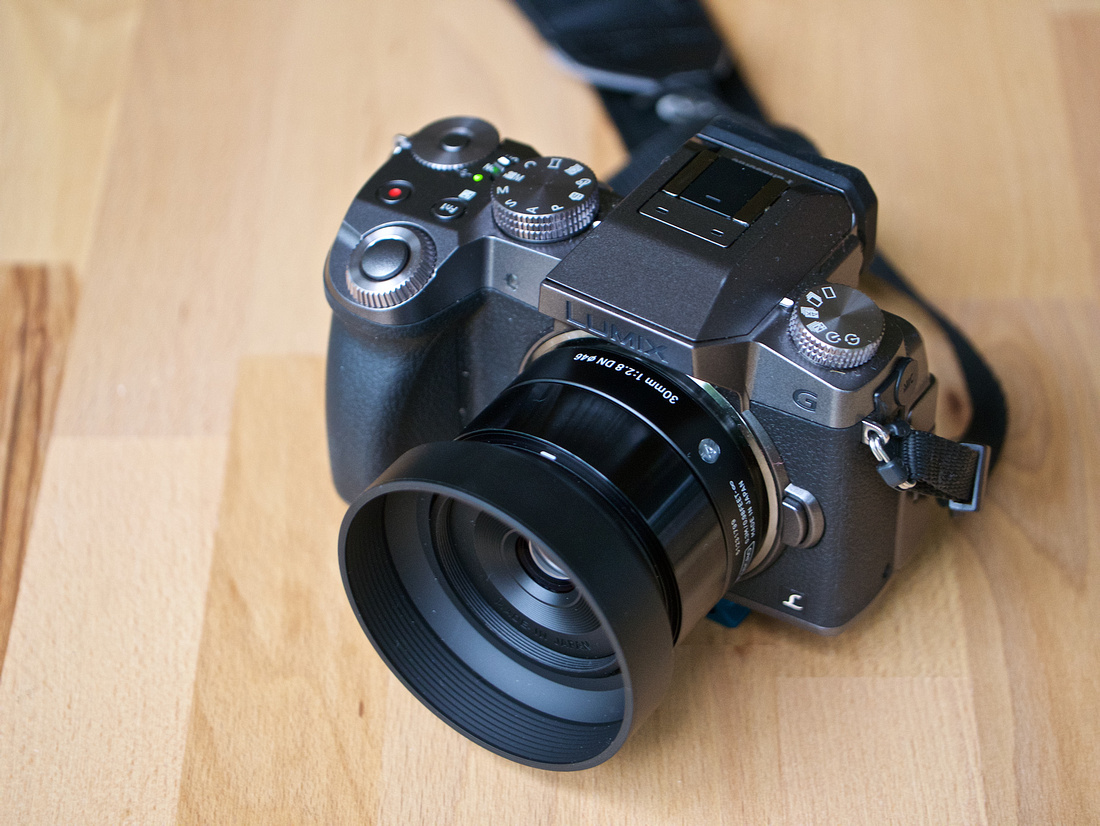
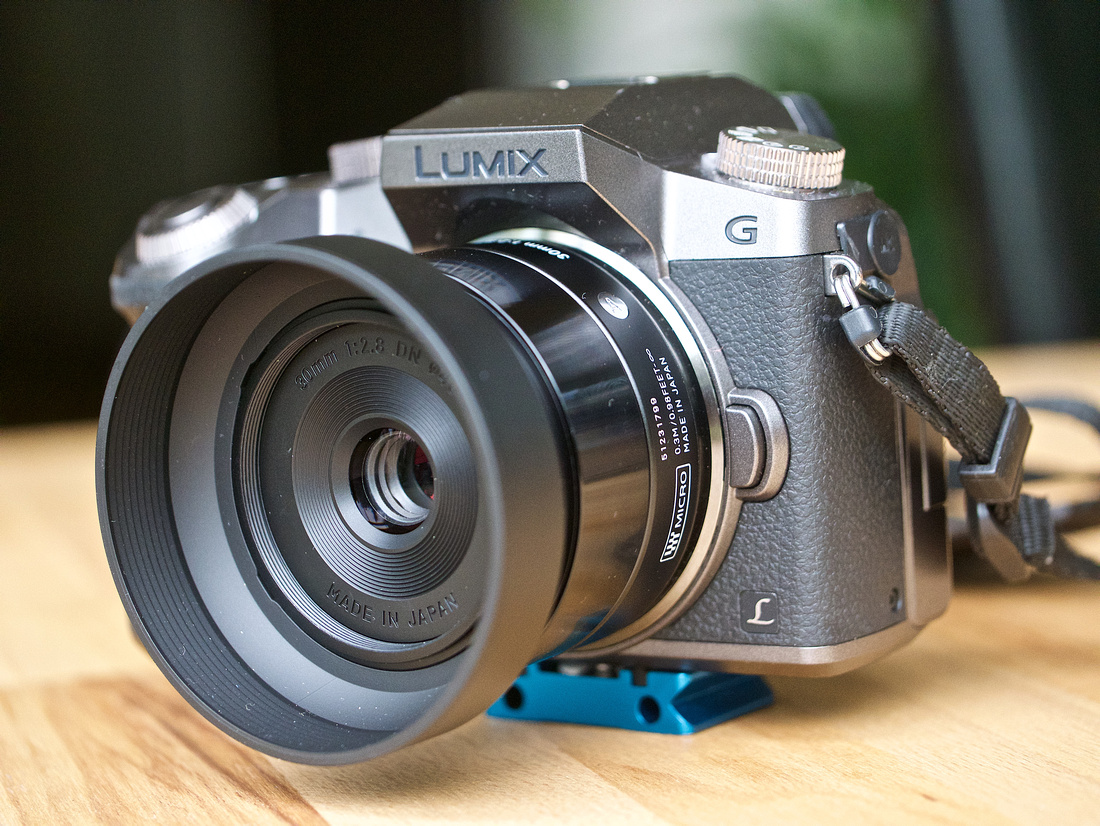
Image Quality
First of all: I did not expect a "bokeh-monster"! How? In terms of "bokehliciousness" the lens is comparable to full-frame standards a f 5.6 60mm. You cannot expect a very shallow depth of field with tons of bokeh. My question was: will it produce enough bokeh to make nice and impressive shots. The focal length works great and the minimum distance of 0,3m works perfect. It is not a macro lens but you can have nice close photos and the bokeh is really good. Chromatic aberrations and purple fringing - yes you might see it bit it is more a no brainer

This is a sample shot @ f2.8 to show the amount of bokeh produced by the Sigma lens: due to my taste: not bad, it could be more but for the beginning.
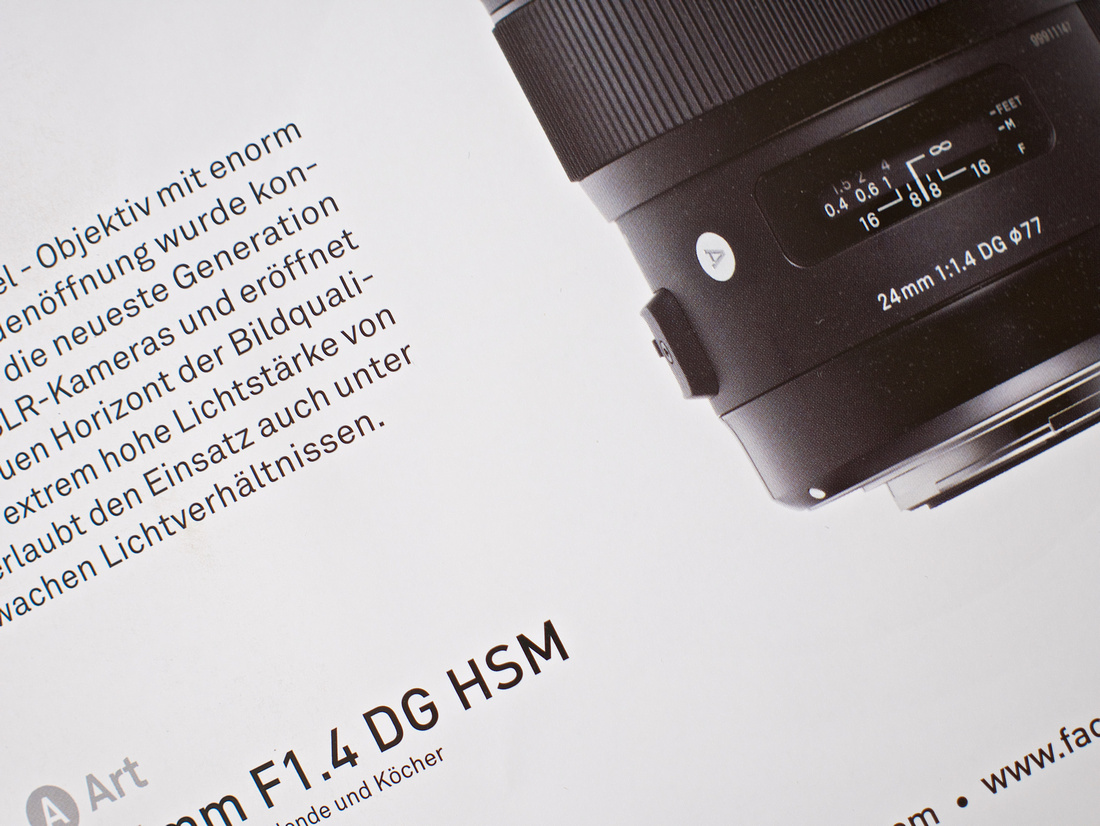
This photo @ f 2.8 I had taken to look for chromatic aberrations / color fringing. It is very well controlled.
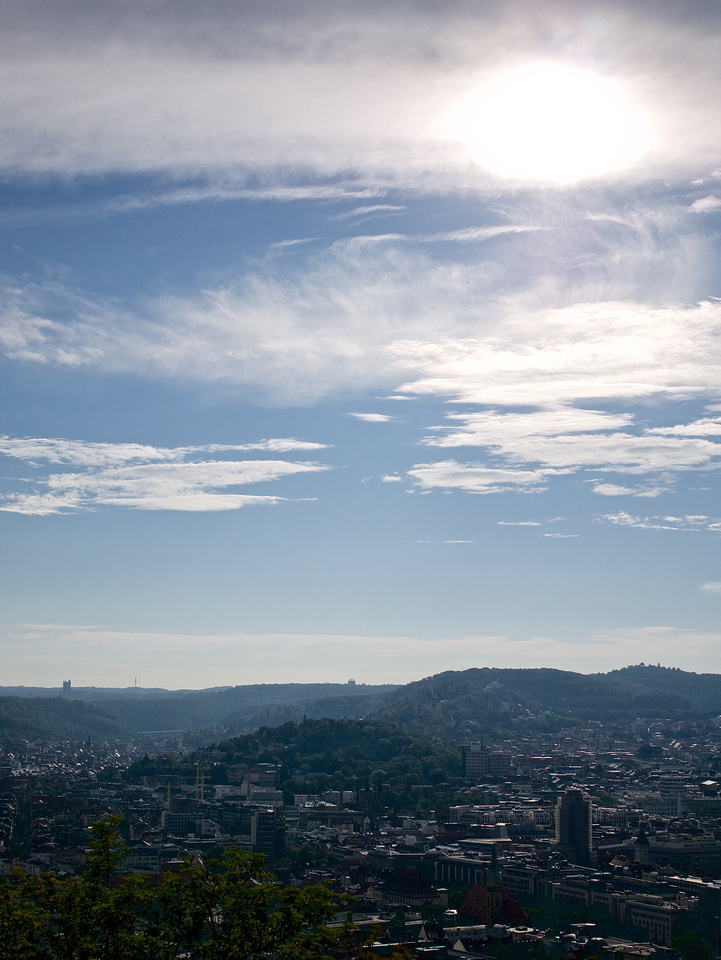
Lens flare @ f 2.8, shot against the sun but a bit overcast sky.
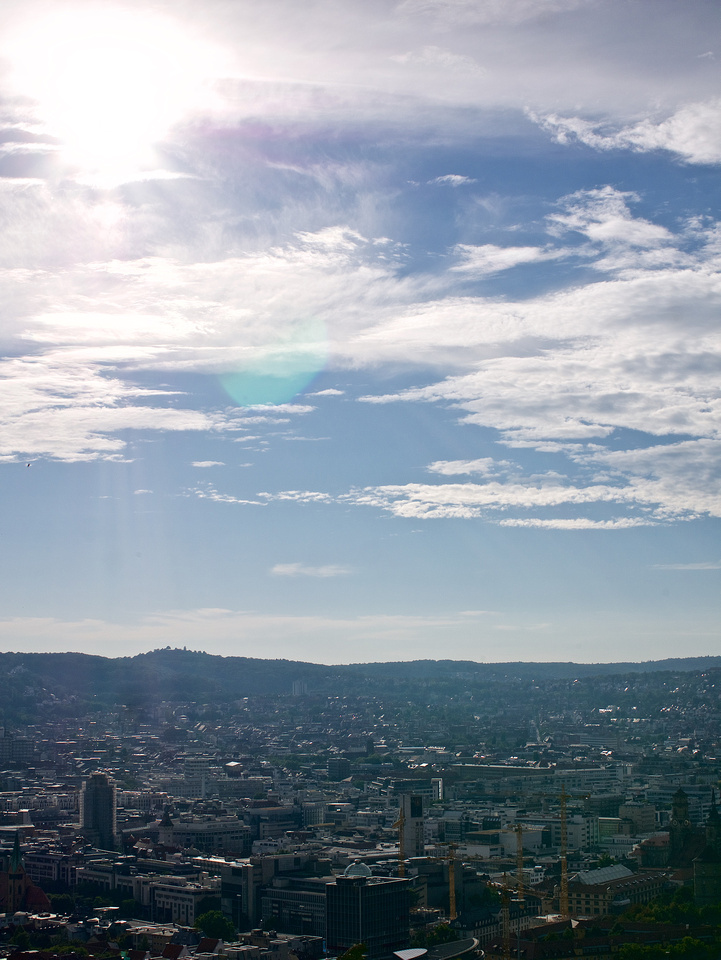
At f8 there something green visible. not very nice. but I have seen more lens flare already...
Shooting experience.
What I did I took the camera with me for some food and hospitality shots: accompanying me making my first pulled pork as well as some photos from the Stuttgart market.
First of all: the handling: This is great. It is fun to have the lens on the camera. I had only this lens with me and it shows a really good performance. But look yourself on the images below:
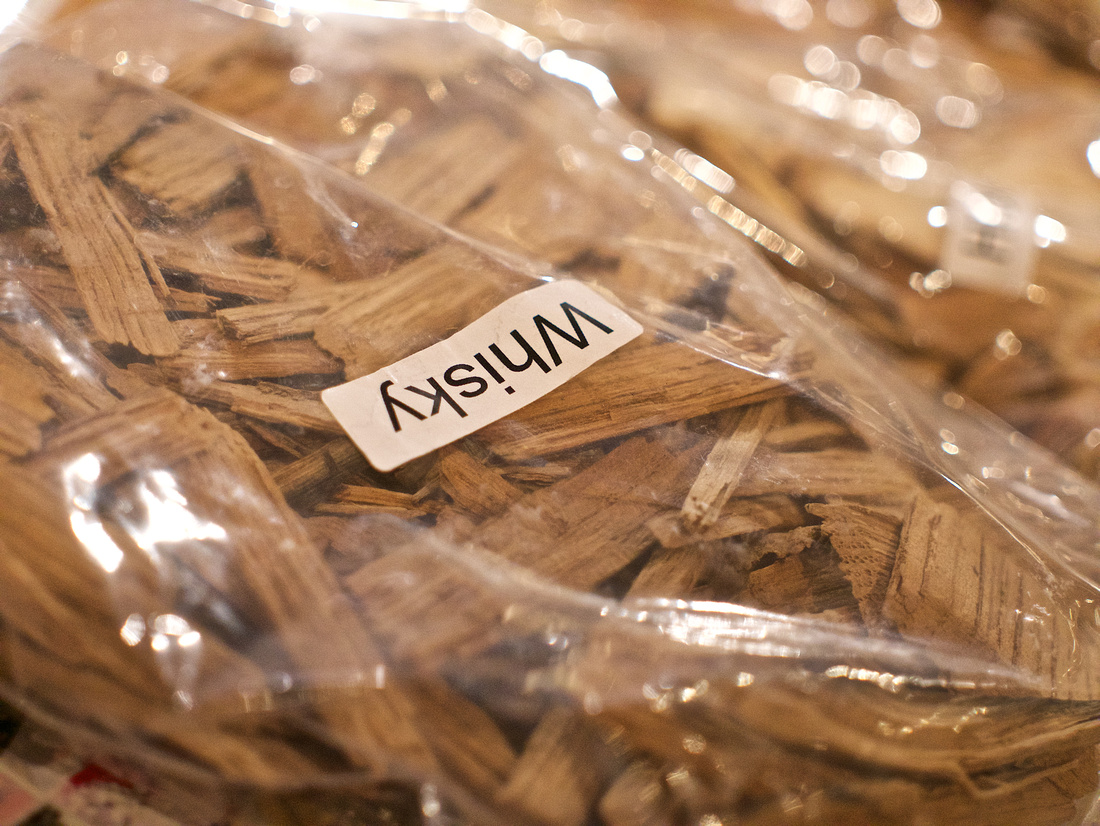
Preparation of the gas grill: Smoking chips. And please look at the nice bokeh...
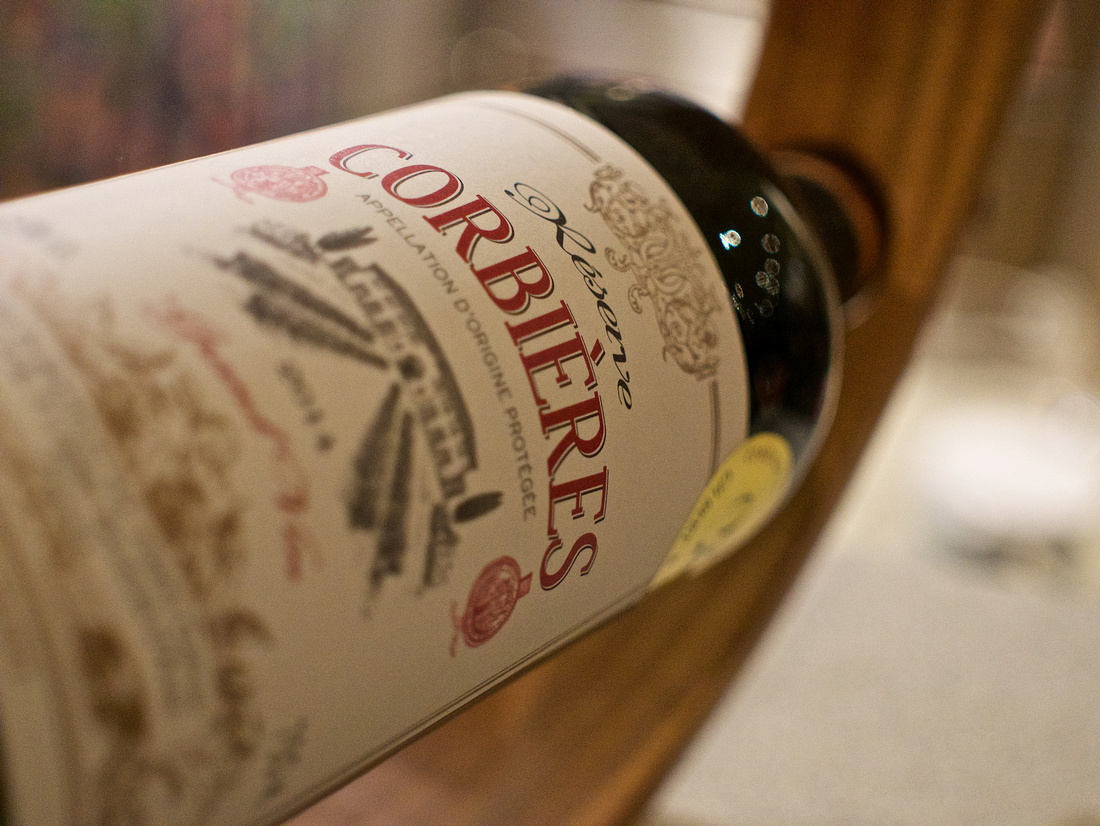
The same with the red wine bottle: this is nice as well. How we ant to have. Bokeh, no color fringing.
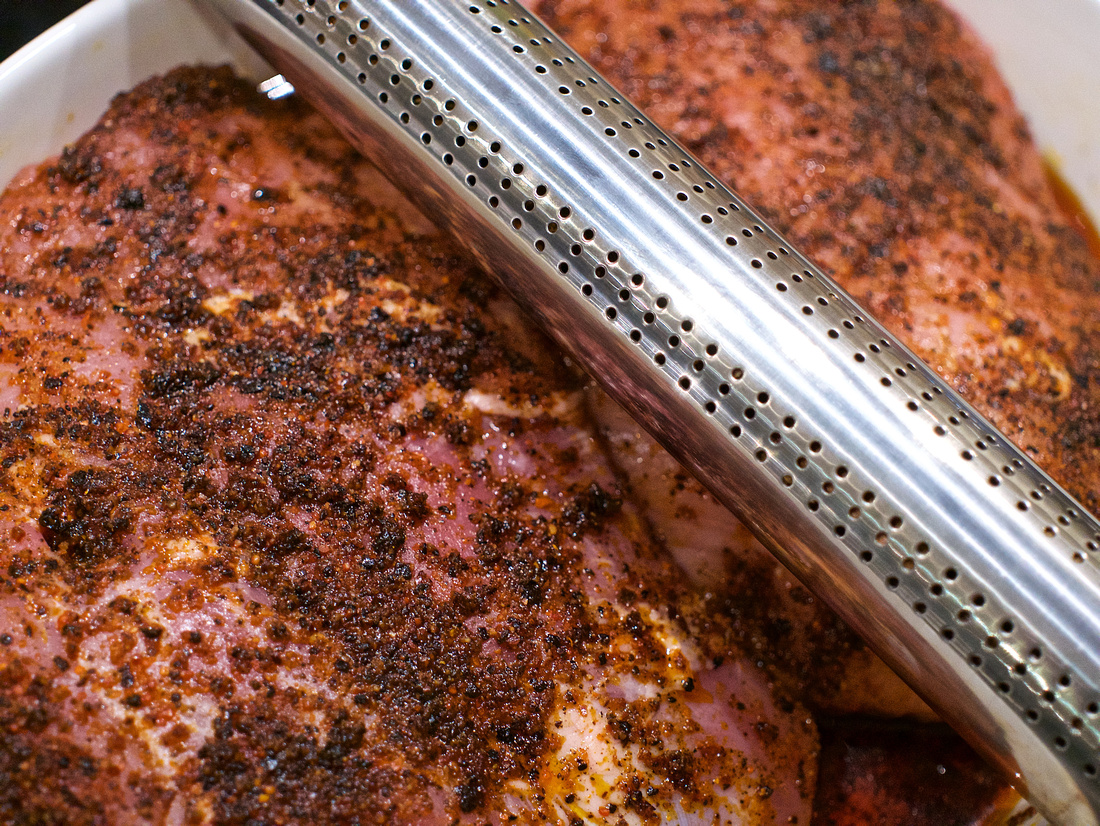
The meet is ready for bbq. in the tup are the wooden chips....-and the photo is nice as well, or?

The stuff is on the grill
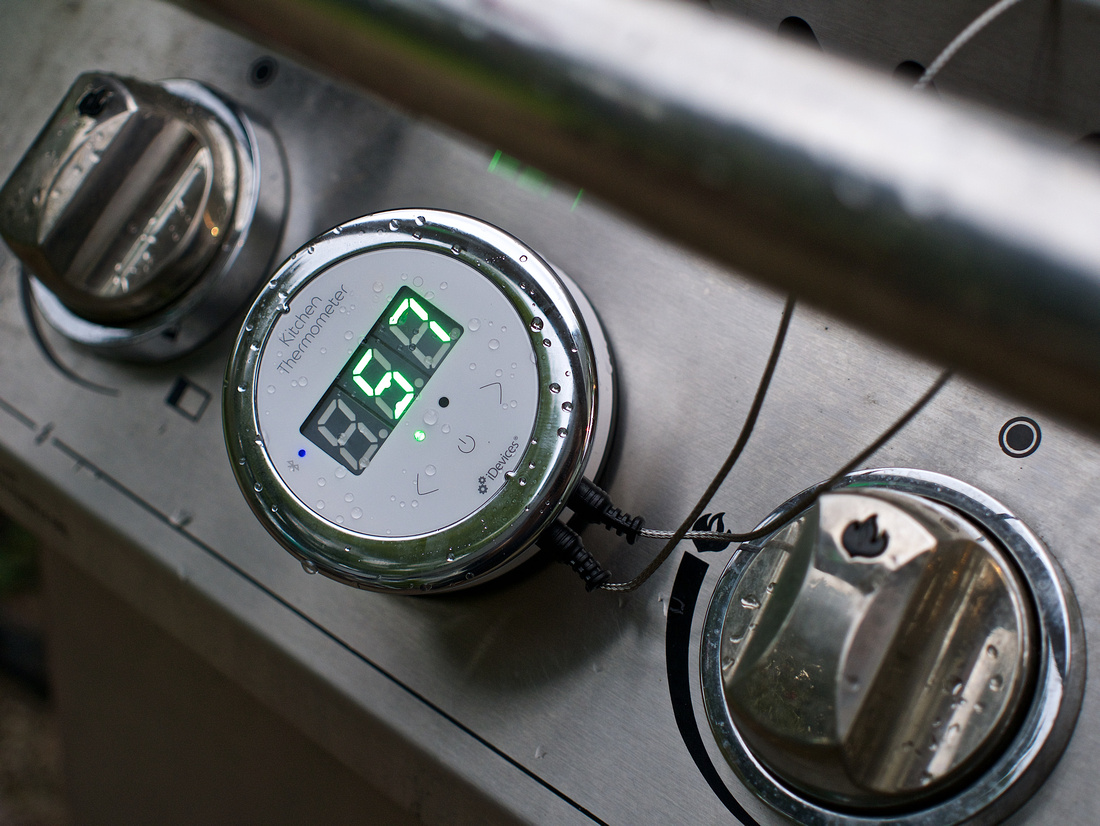
The temperature is controlled by this device - and on my iPhone as well.
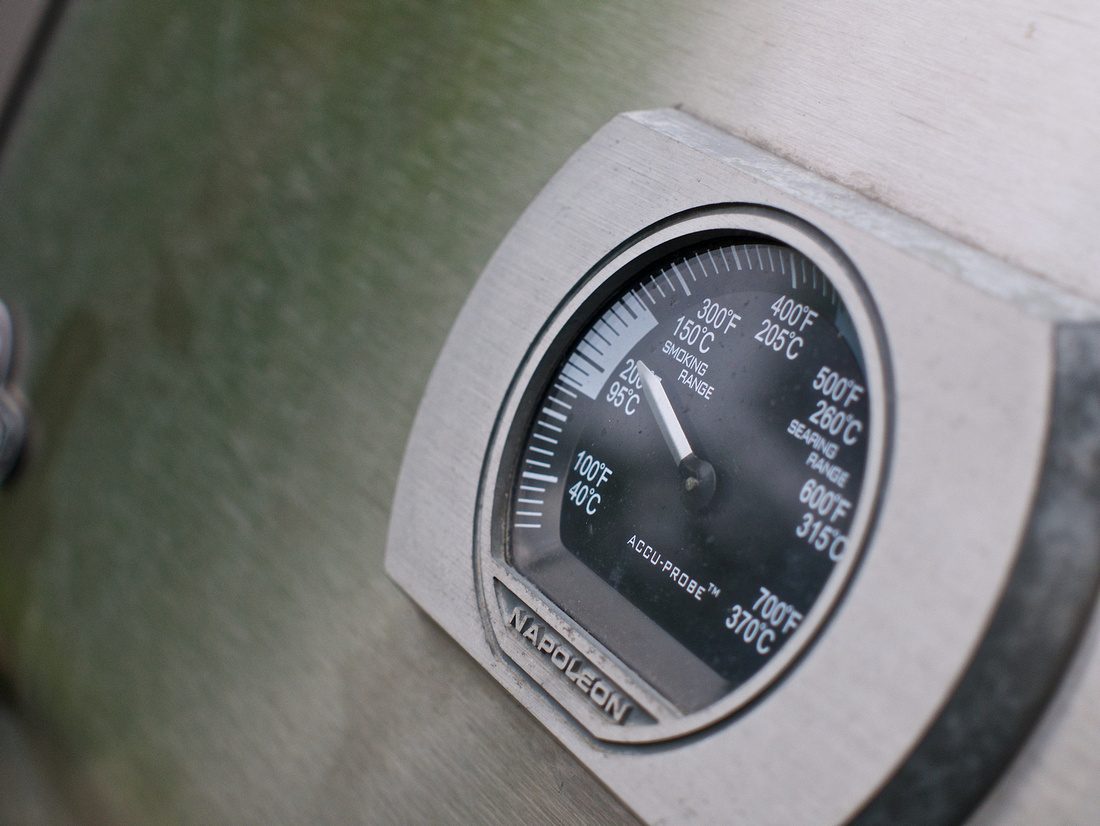
The temperature in the machine by the build in thermometer...
But some stuff was missing: We had to go to the market...

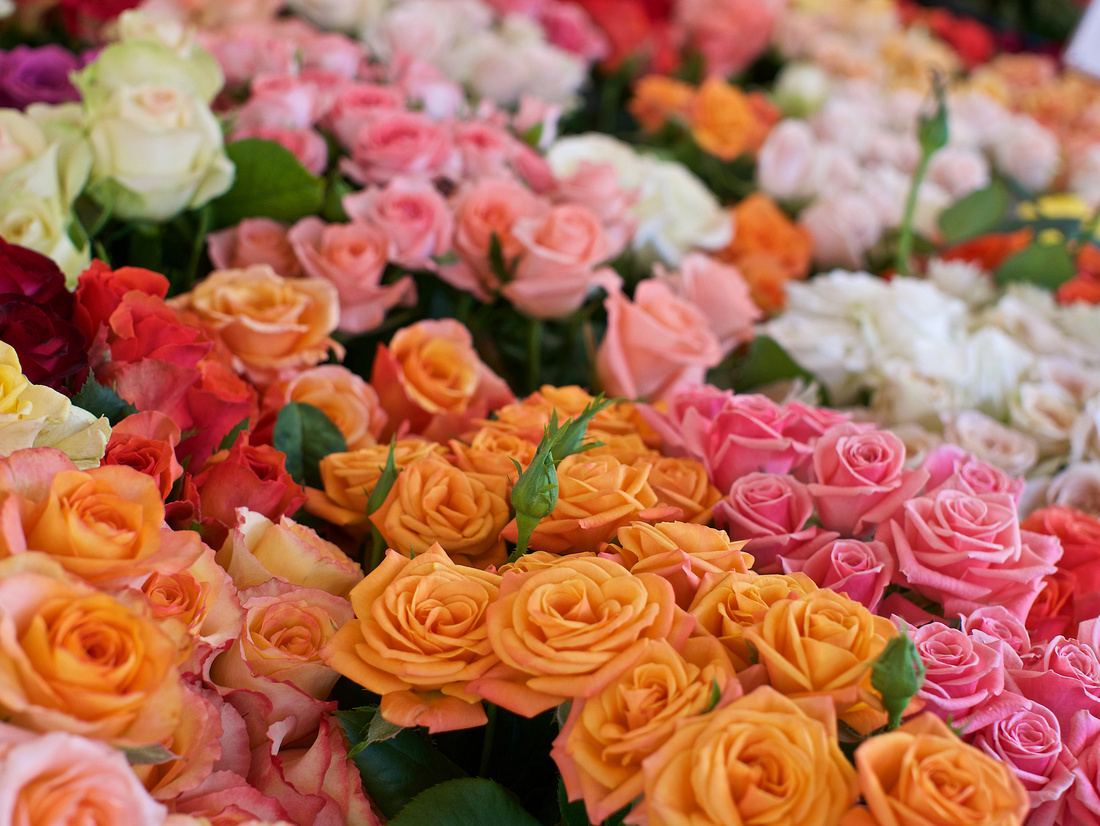
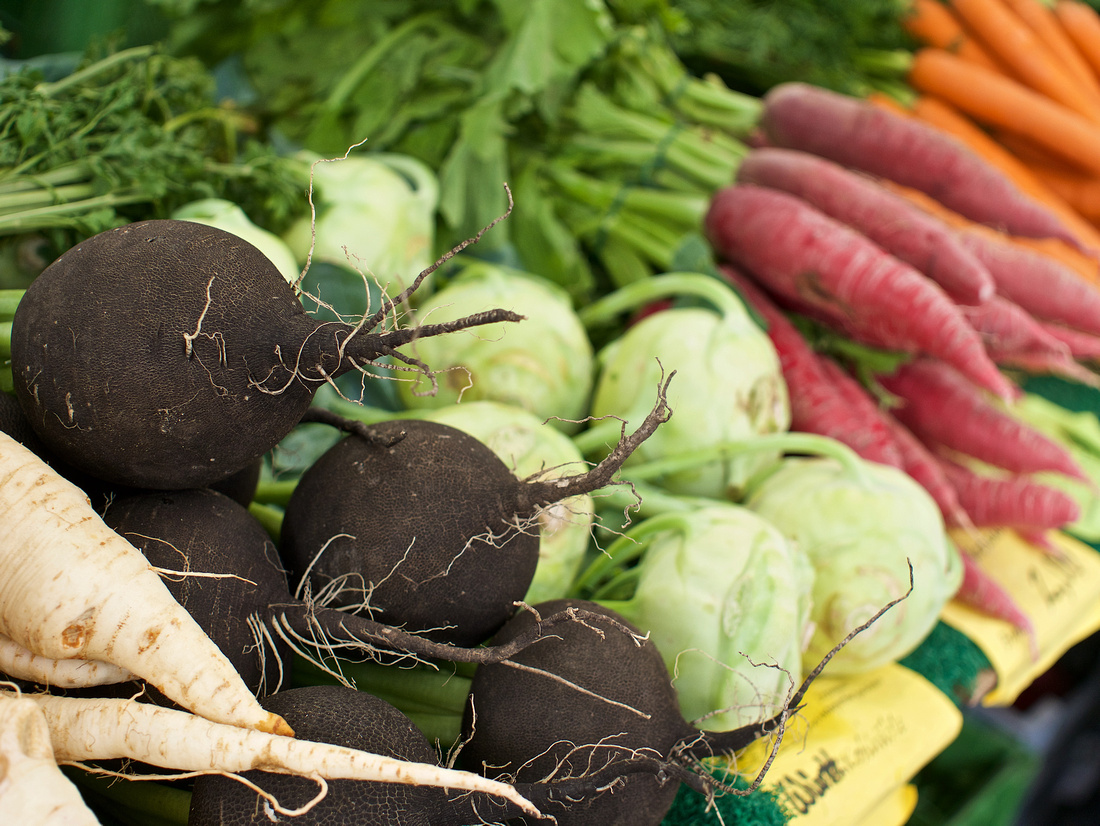
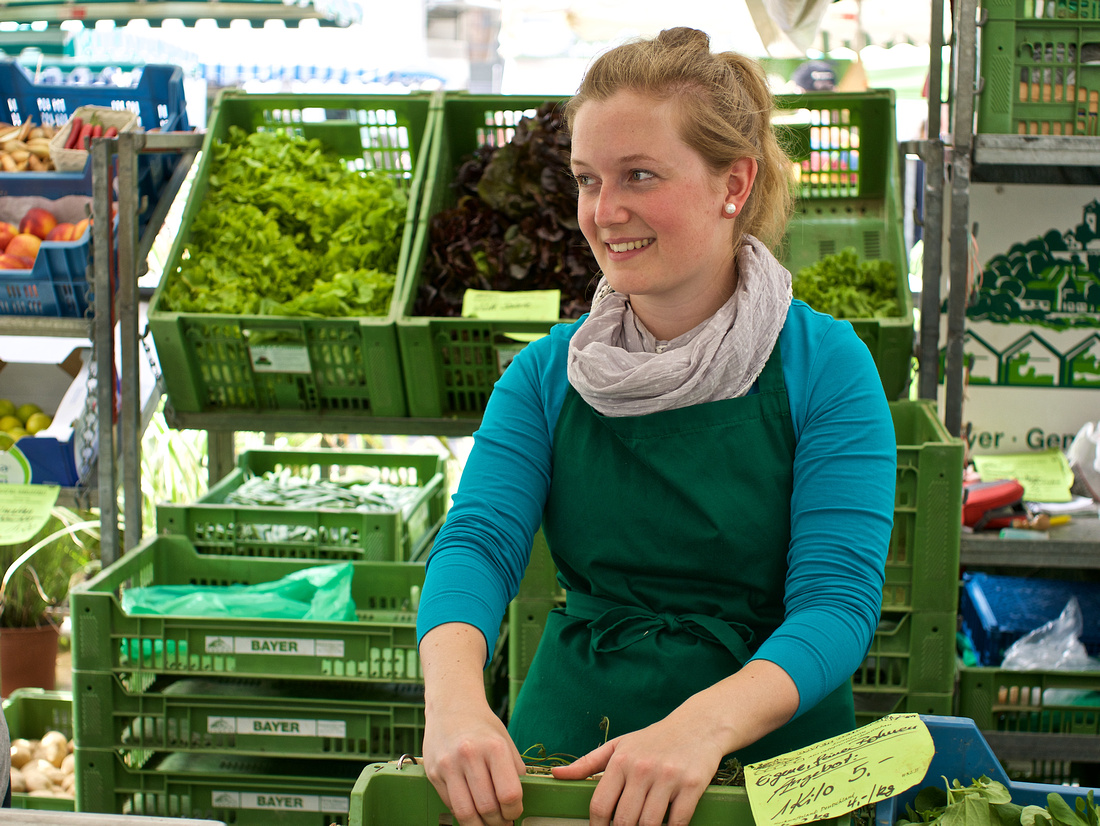
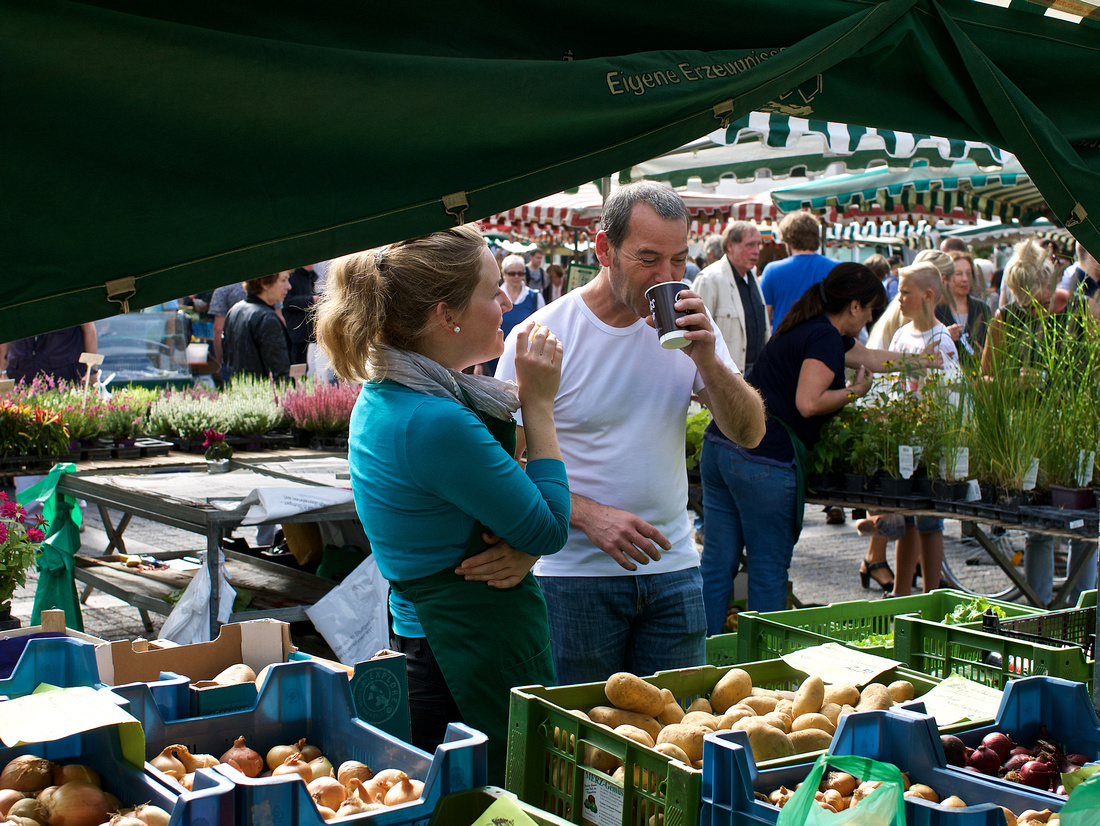
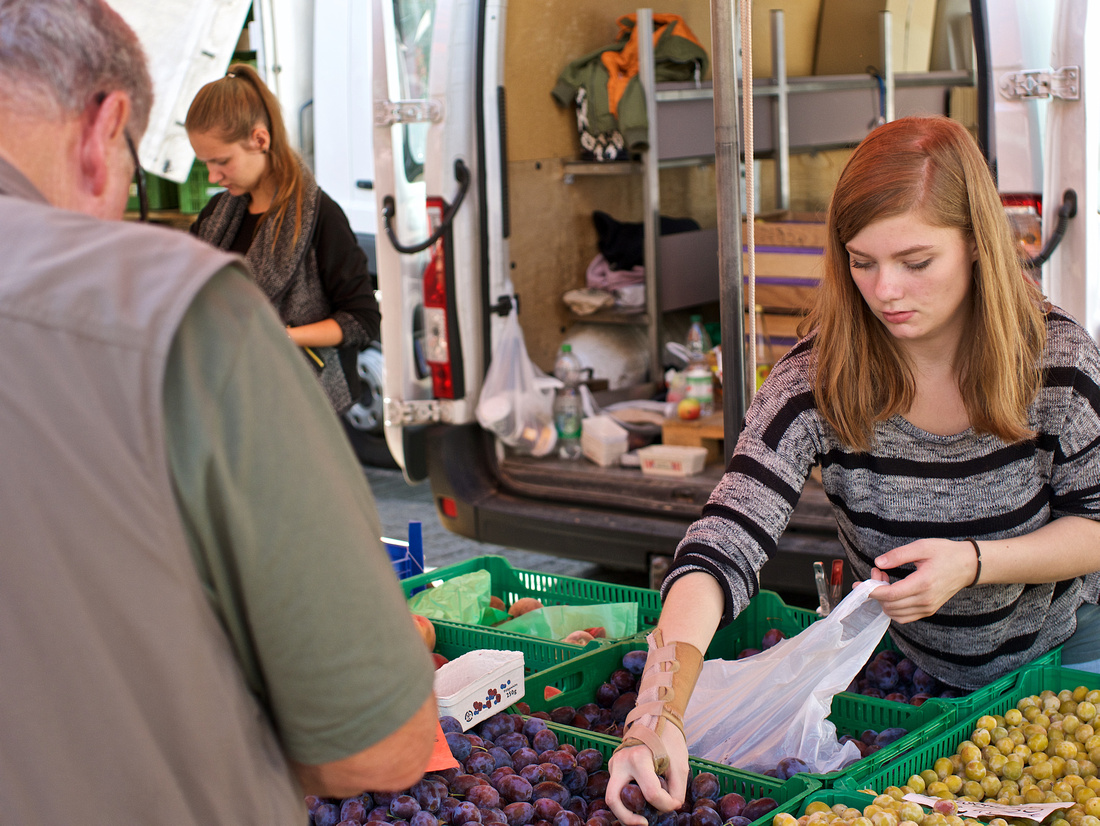
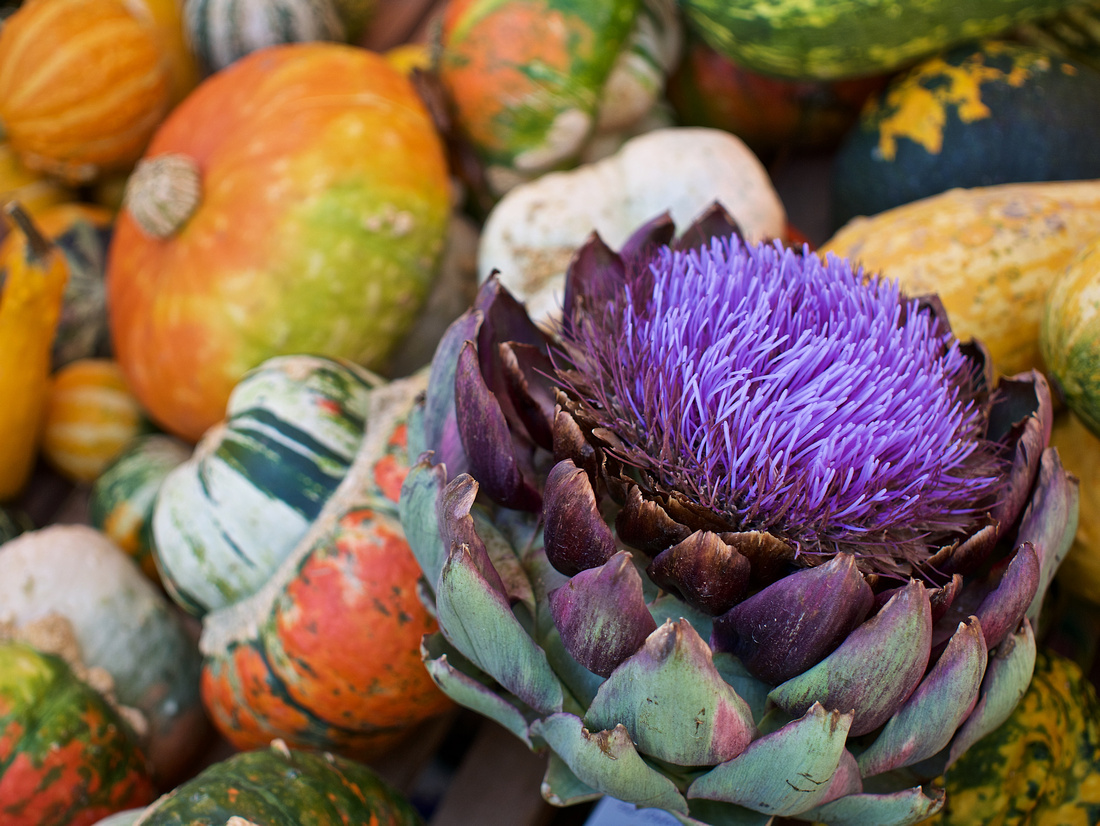

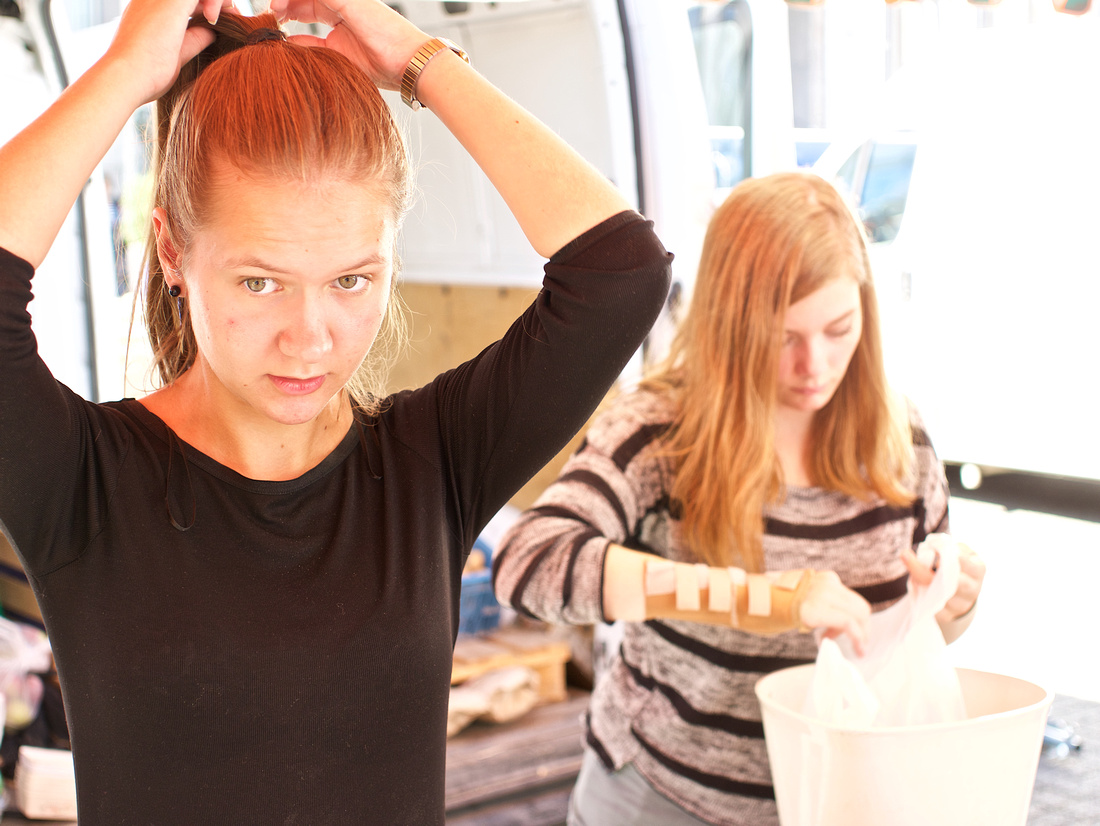
The market shots give you bokeh especially in the close ups. But in the portraits: well there could be more - but on the other side: It is more than every kit lens gives you without being to difficult like an f1.4/85mm on a full frame body...
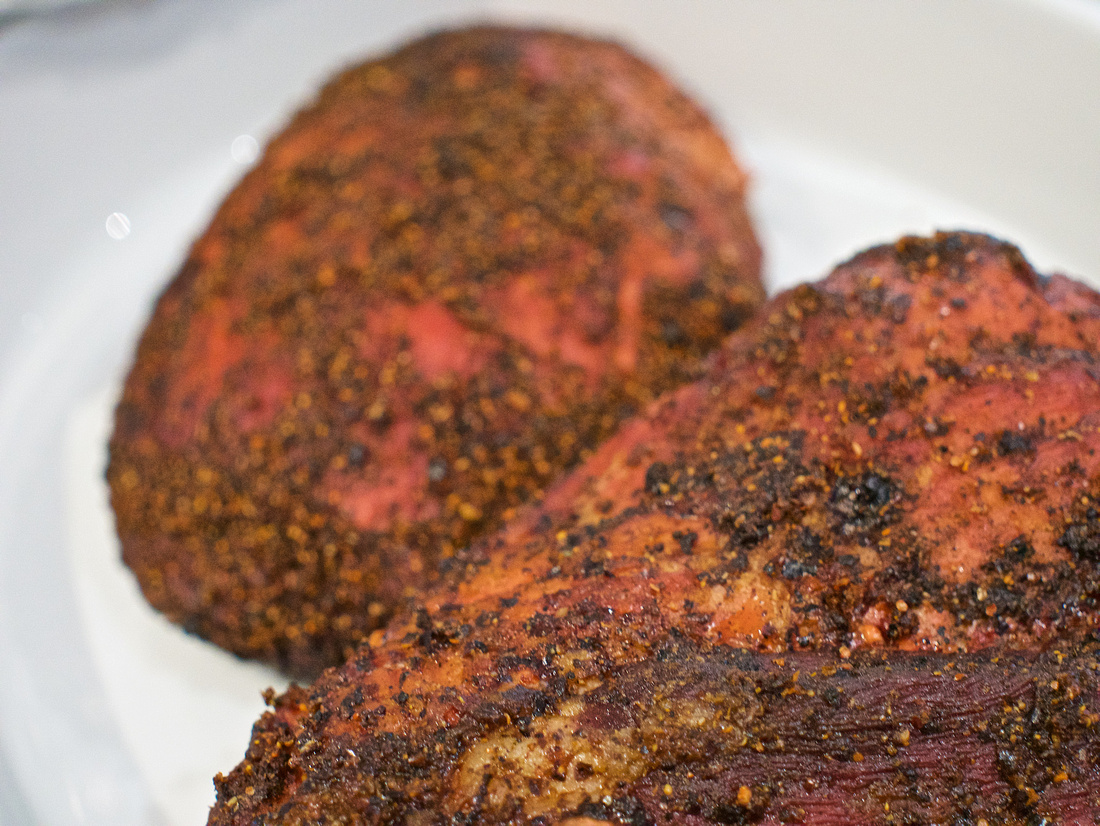 The meat ofter 17h on the grill....
The meat ofter 17h on the grill....
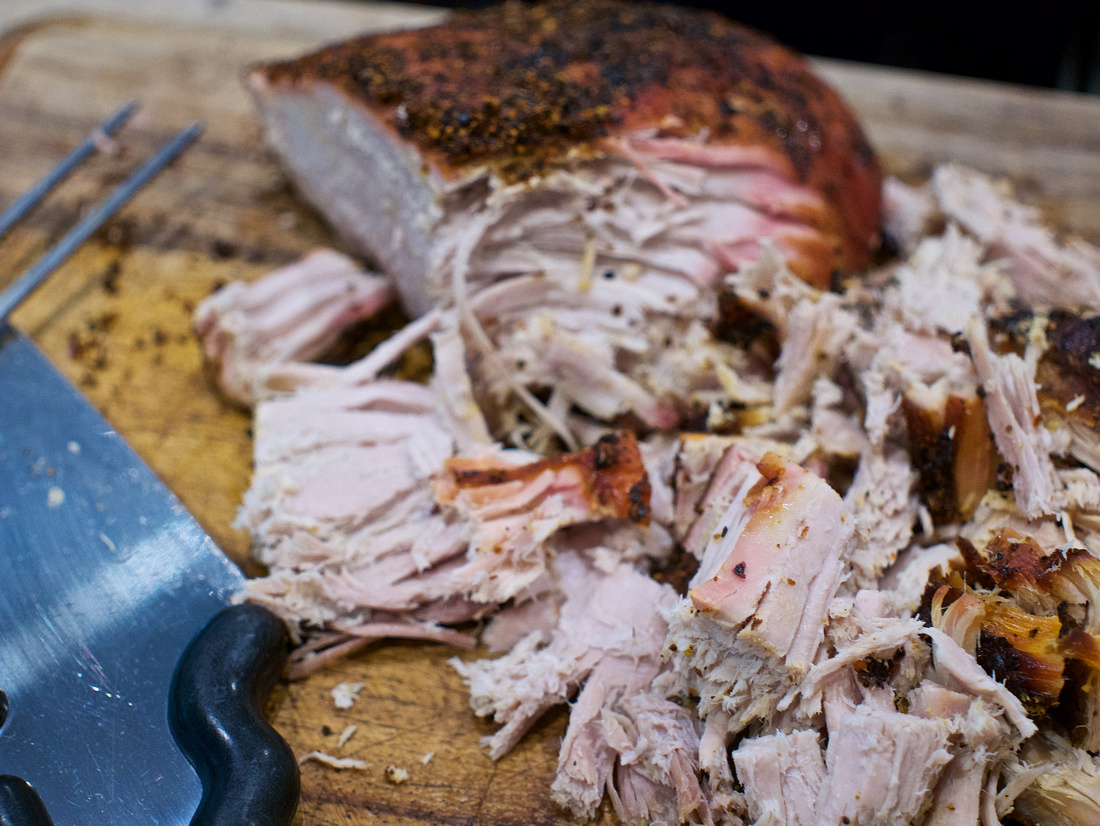
And here I am pulling it....
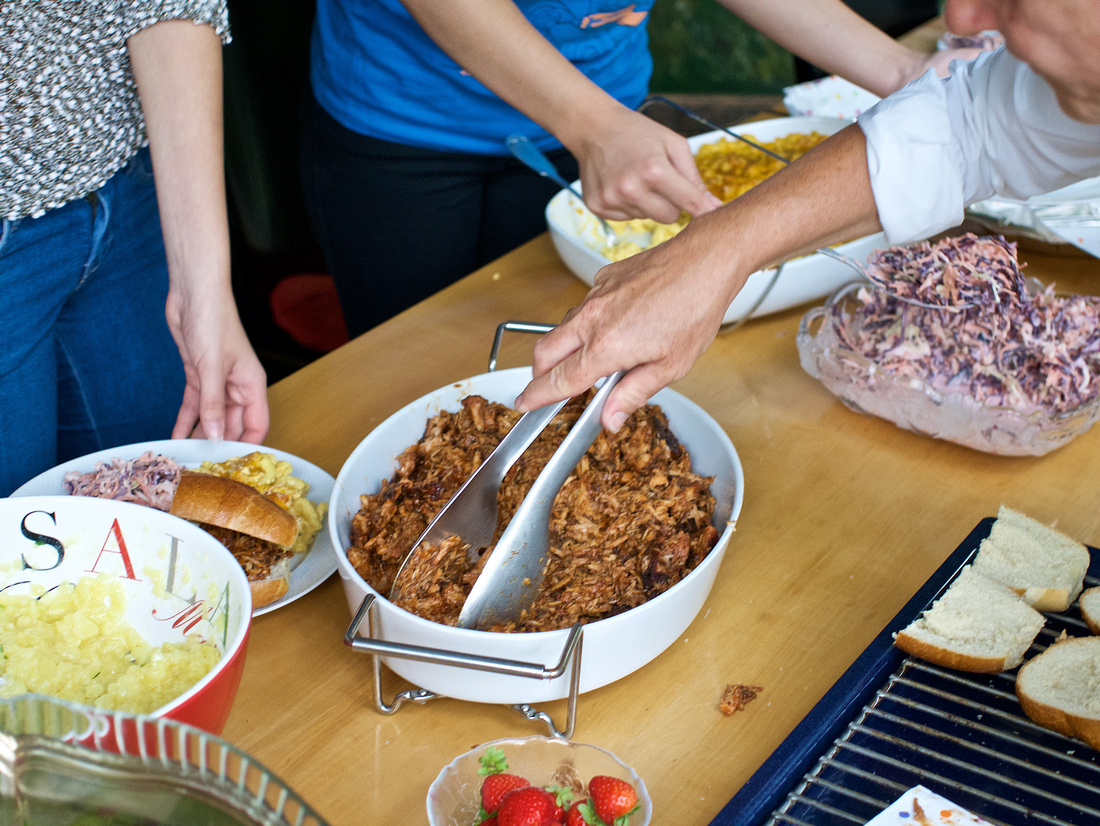
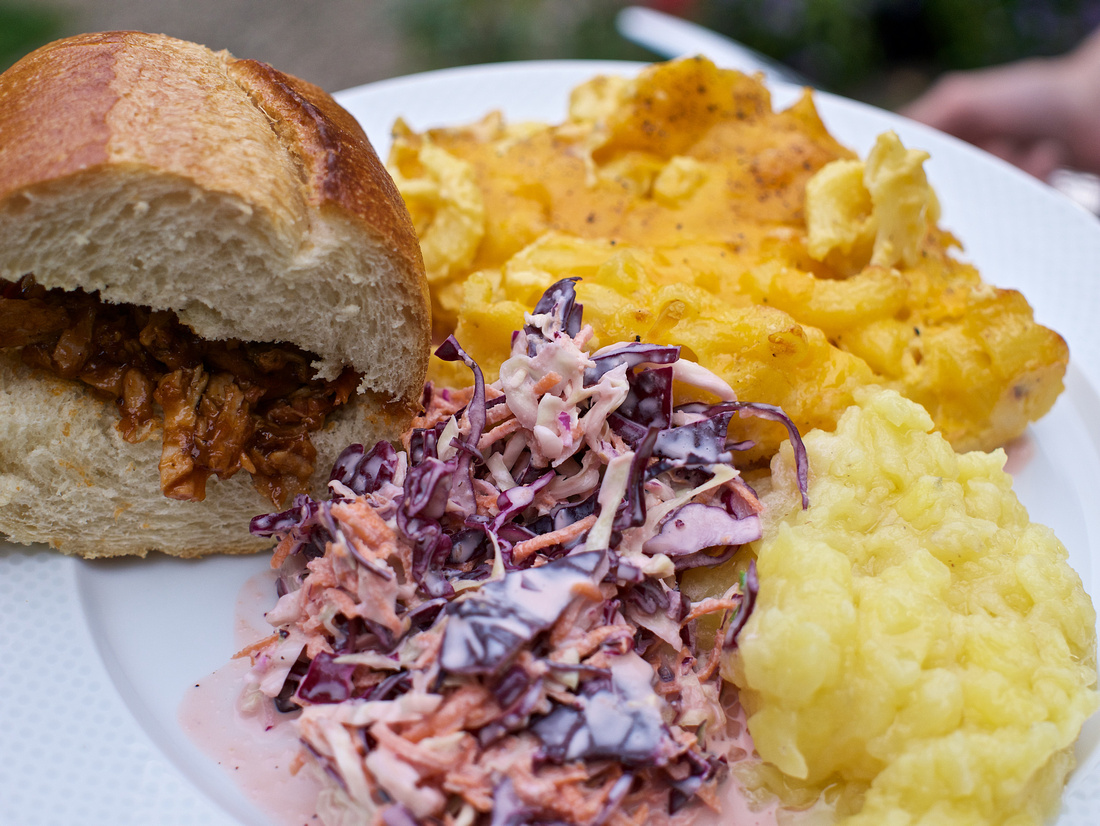
Mmmh! Yummieh!! Delicious!!!
Verdict
The first experience with the Panasonic shows that this lens has a remarkable price performance ratio. The optical quality is remarkably good. Excellent sharpness, good contrast, controlled color fringing and a low level of flare shooting against the sun.
Bokeh is there but not too heavy, a bit of a downside but due to my taste it´s in an acceptable range.
From that point of view: a great lens and for µ43 an affordable price: Thumbs up!
With this experience I found my "nifty thirty" to recommend friends and photographic beginners...
What´s next
First I would like to have my own shooting experience with the "Nifty Fifty": I will buy one and review it.
Second I will compare the Sigma f2.8 30 mm with all the other 30 mm lenses which are around like the Panasonic kit lenses but also with the Summilux f 1.4 25mm as well as my old Zeiss f2.8 28mm - fully manual..
And as a third step I would like to try the Sigma f 2.8 60mm because this should give a more comparable bokeh due to the longer focal length (120mm FF equivalent)
Some Remarks
The photos were shot with the Lumix GM5 as well as the G7. The photos of the lens were taken with the Elmarit f2.8 45mm
If you want to see the photos in a larger scale: http://delightphoto.zenfolio.com/p519162859 and some more...
]]>
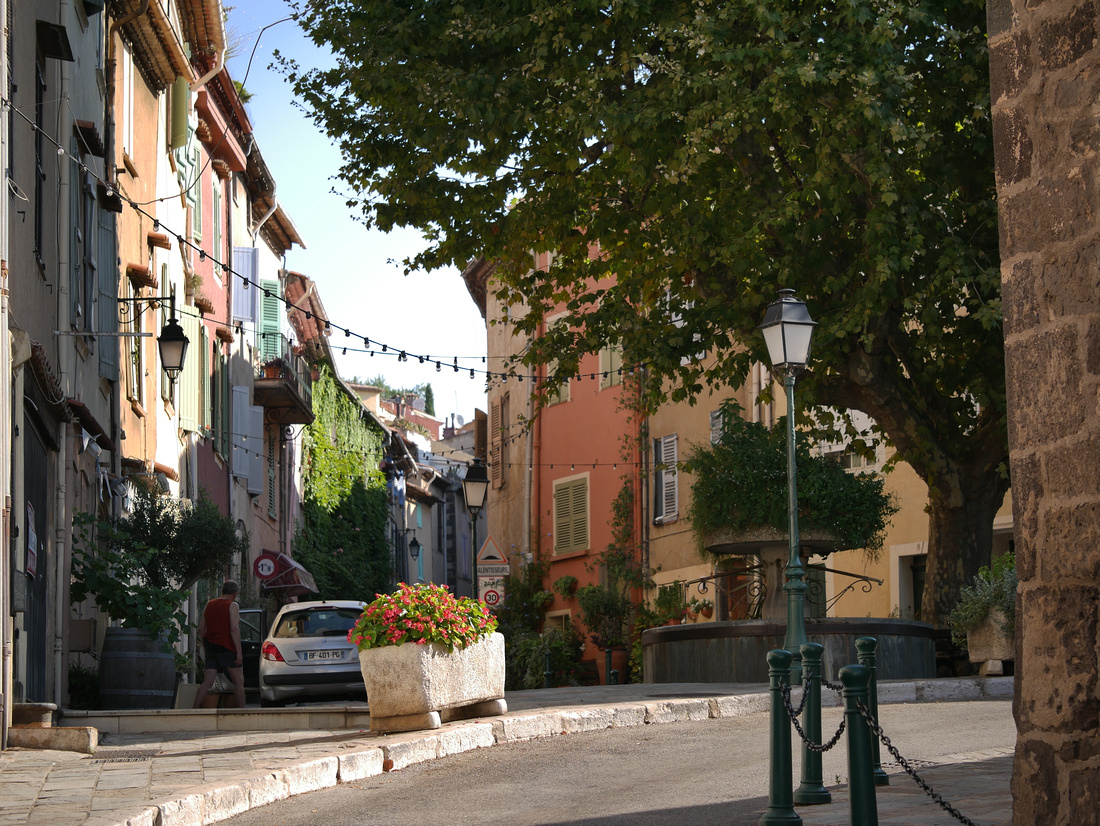
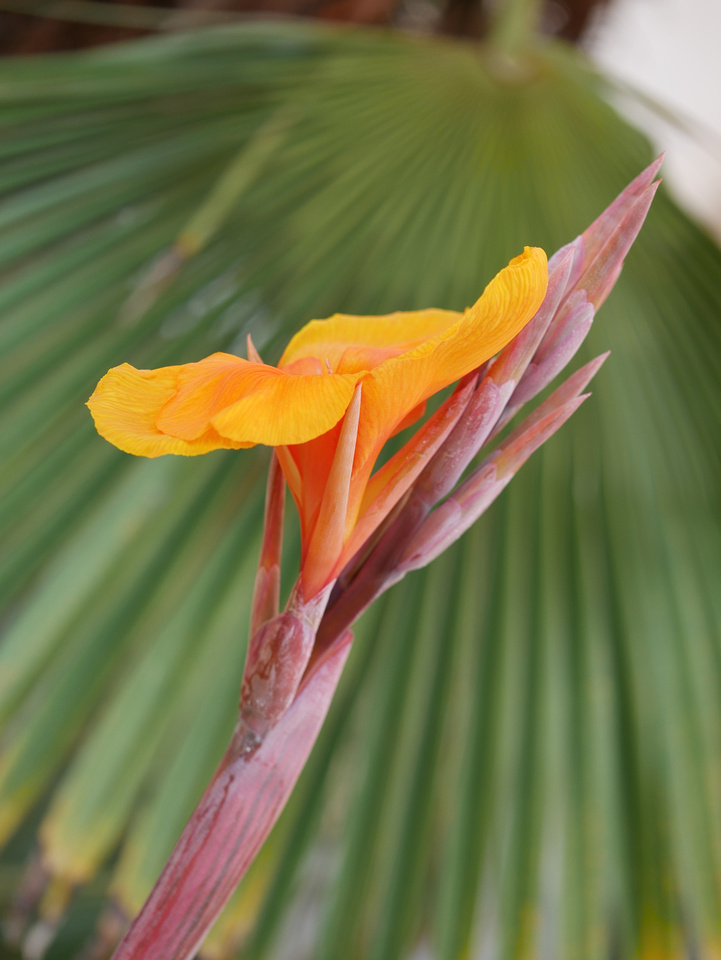
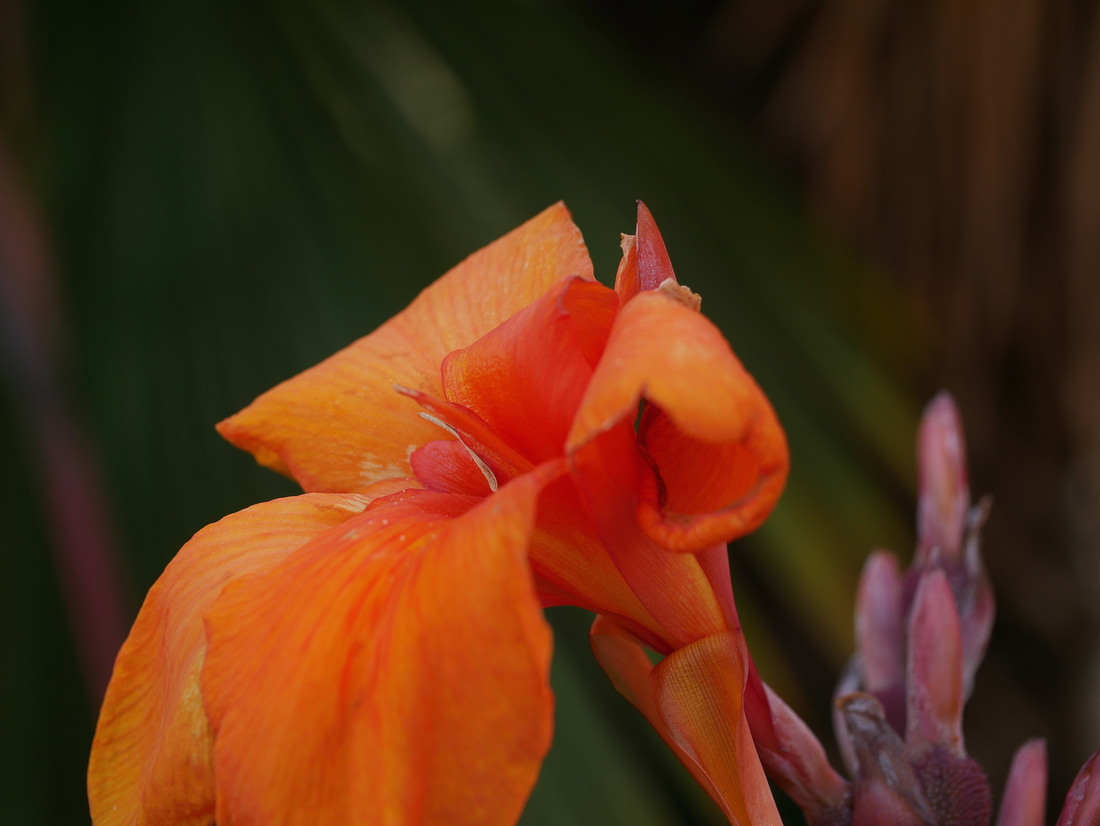

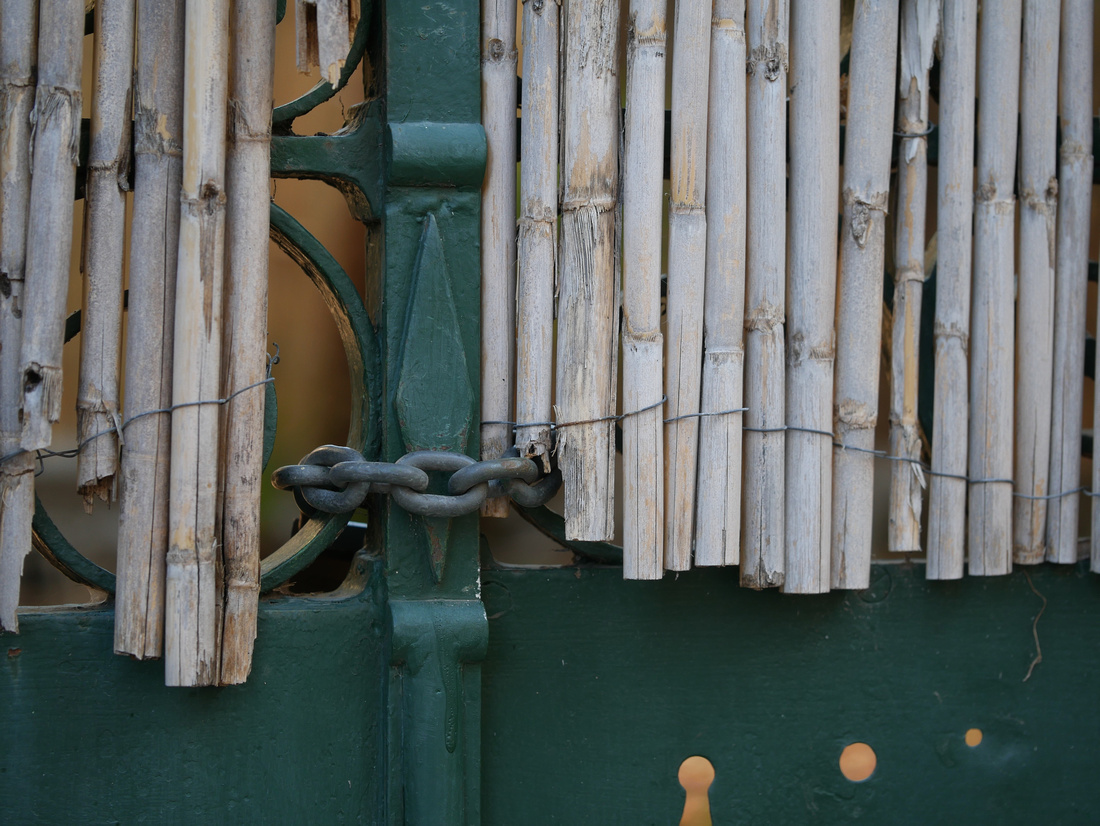
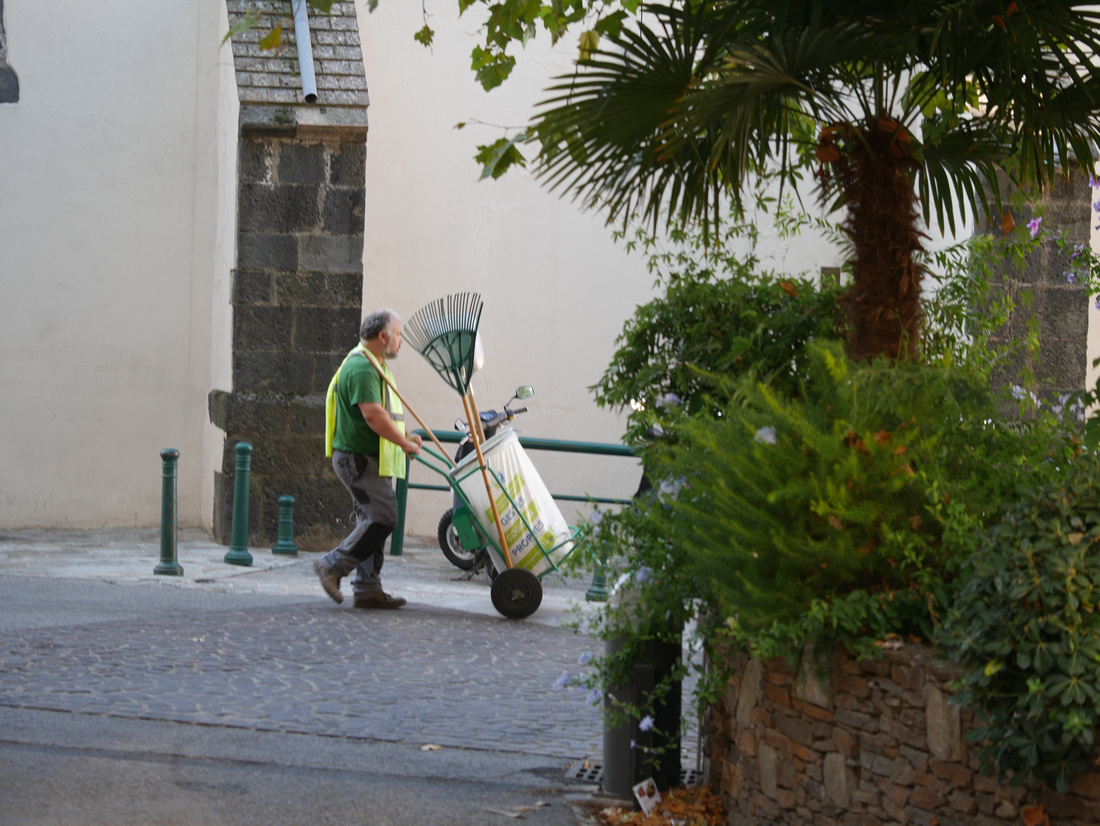

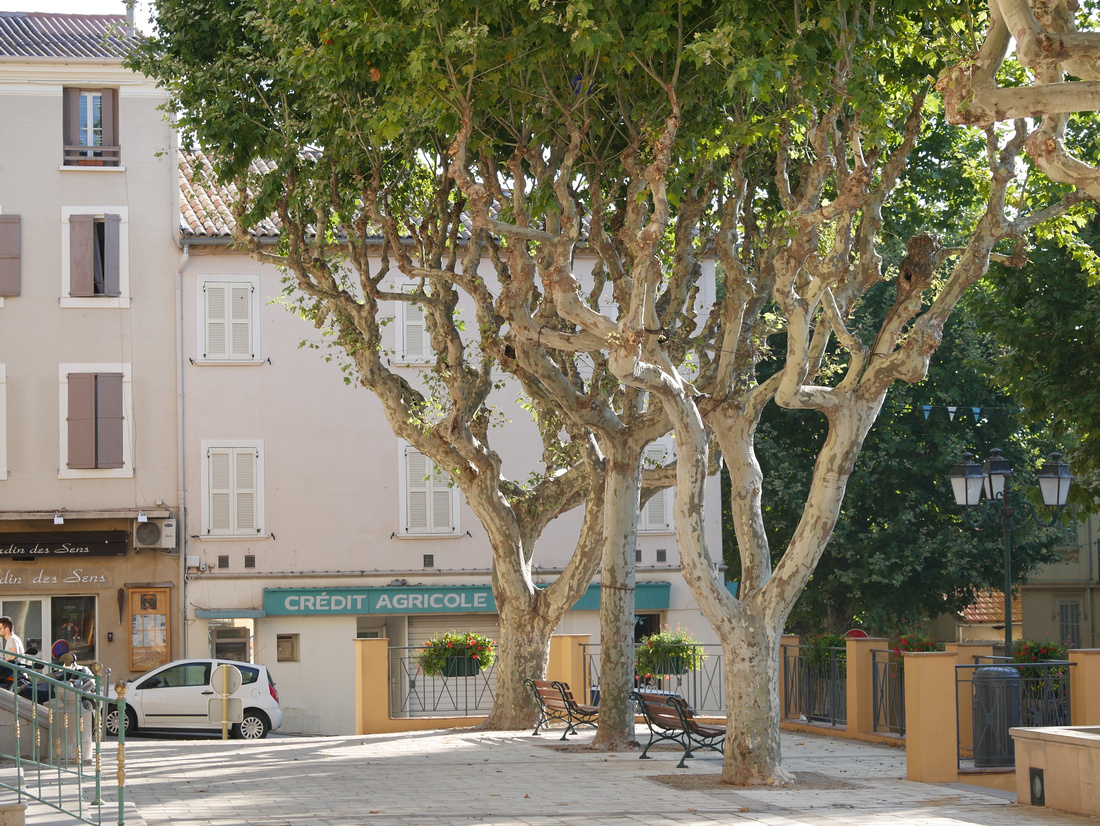
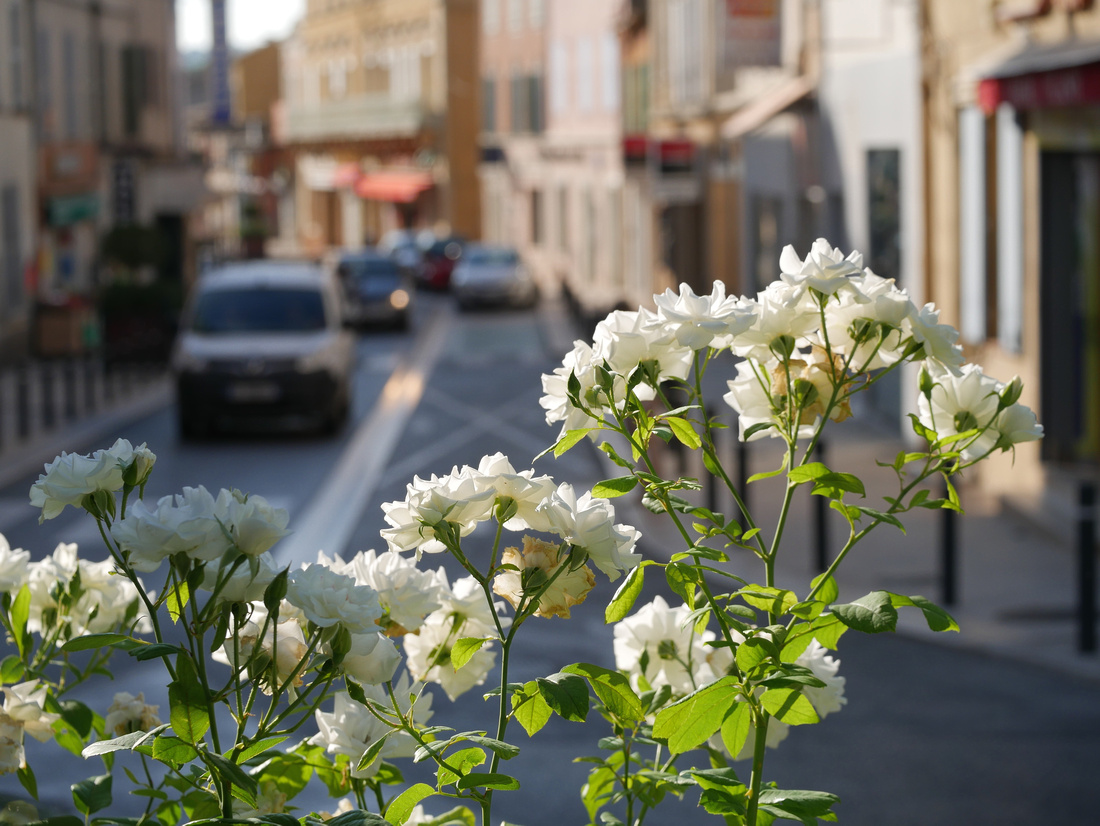

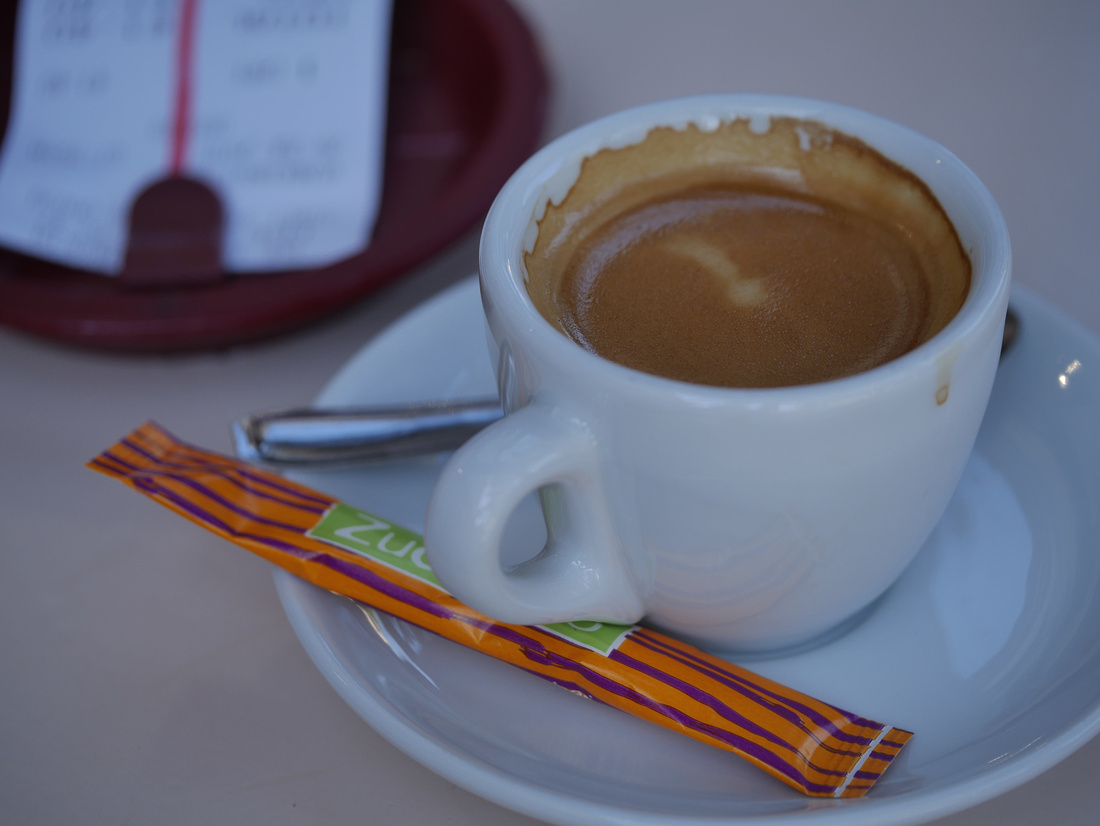
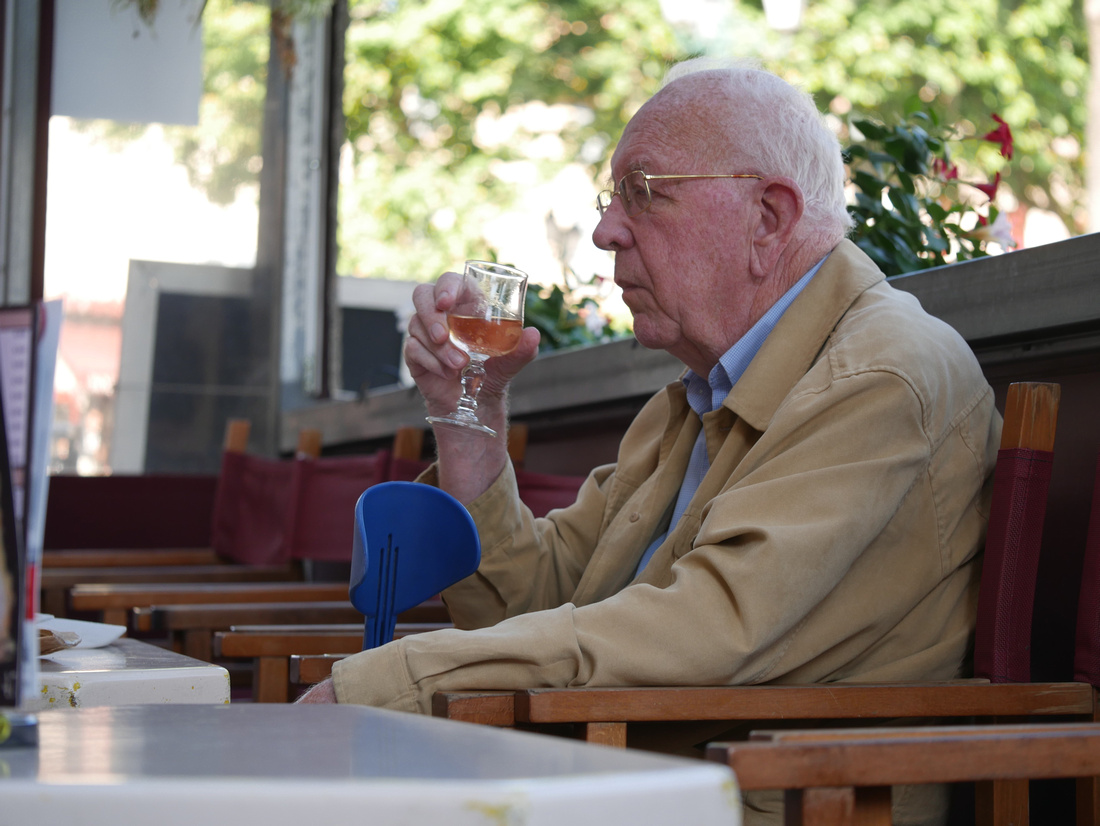
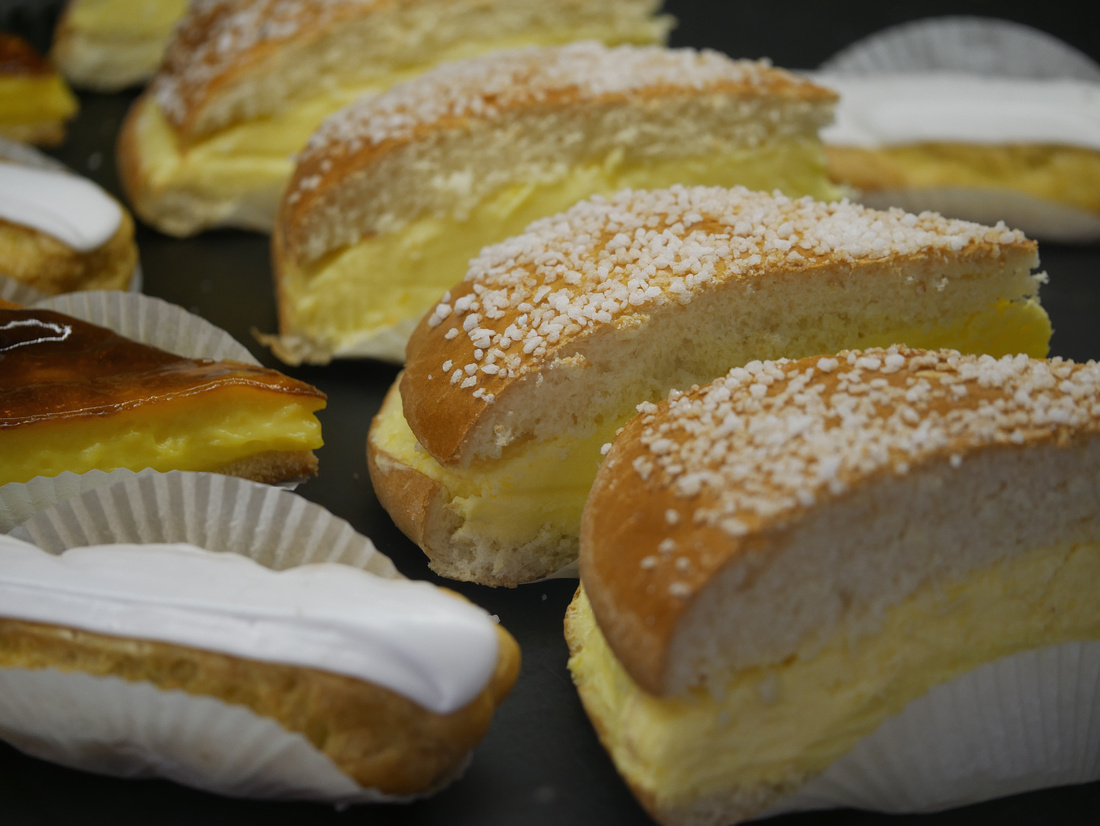
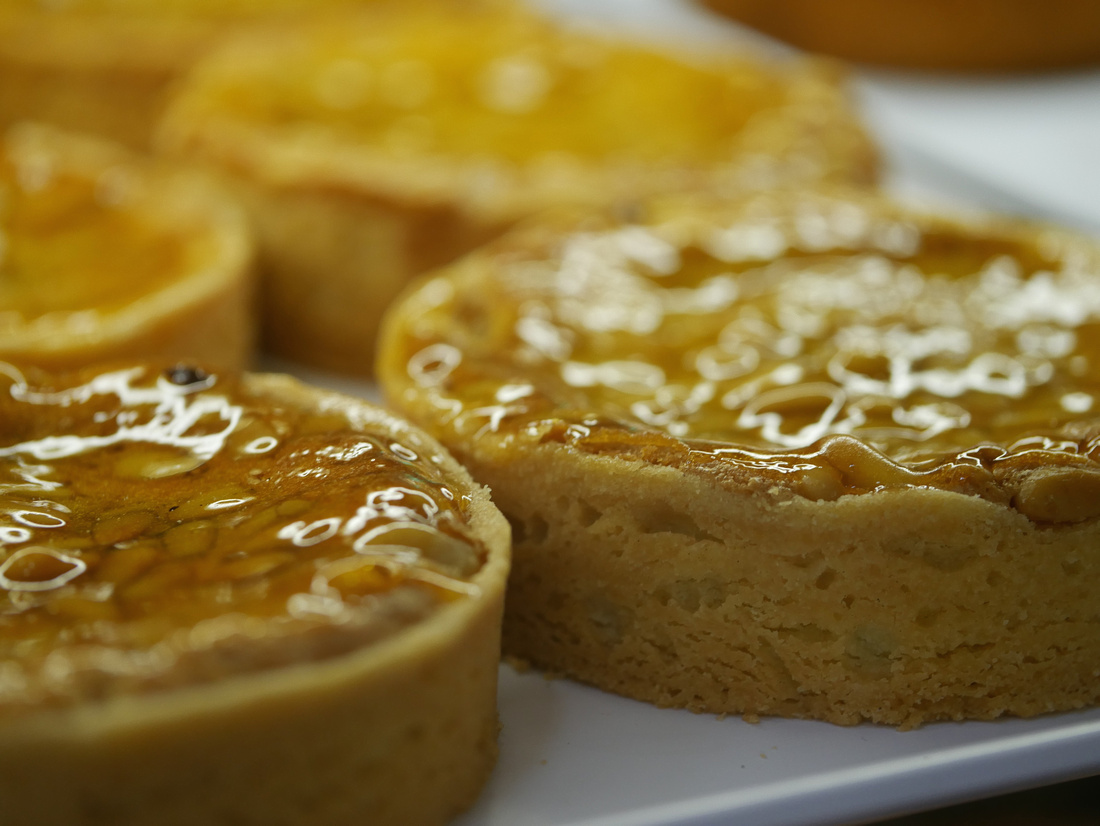
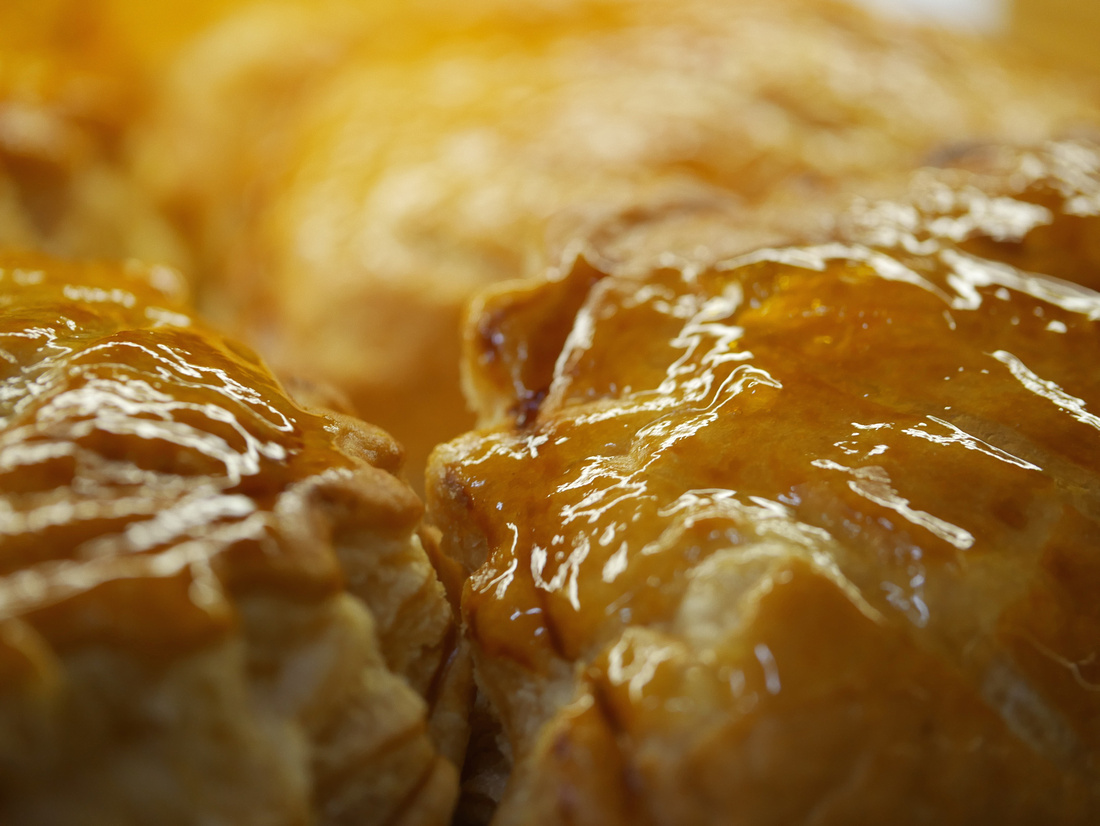
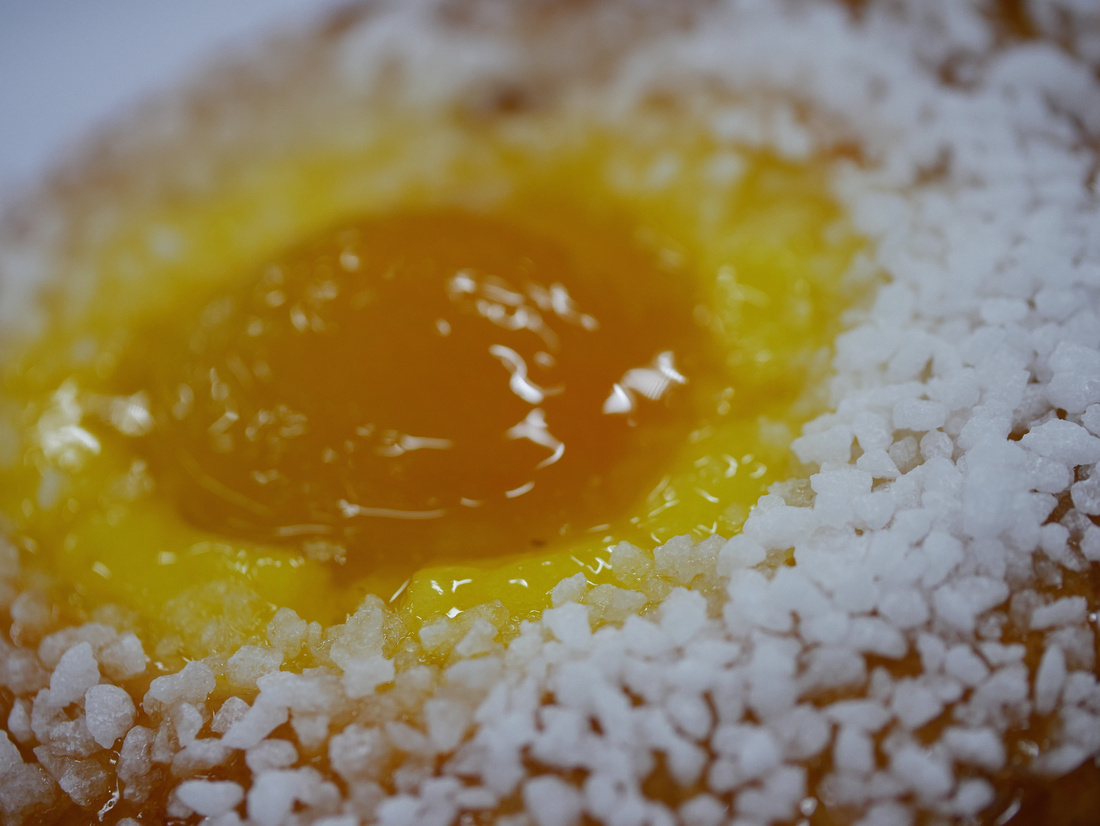

Boulangerie du Platane in Cogolin. I do love this place! The pastry there is the among the best on the planet. Definitely! I can prove this.... Some of the specialties are shown here, but even a simple croissant or a pain au chocolat: I could die for it...
You will find it on Facebook: https://www.facebook.com/pages/Pâtisserie-Boulangerie-du-Platane-Cogolin-
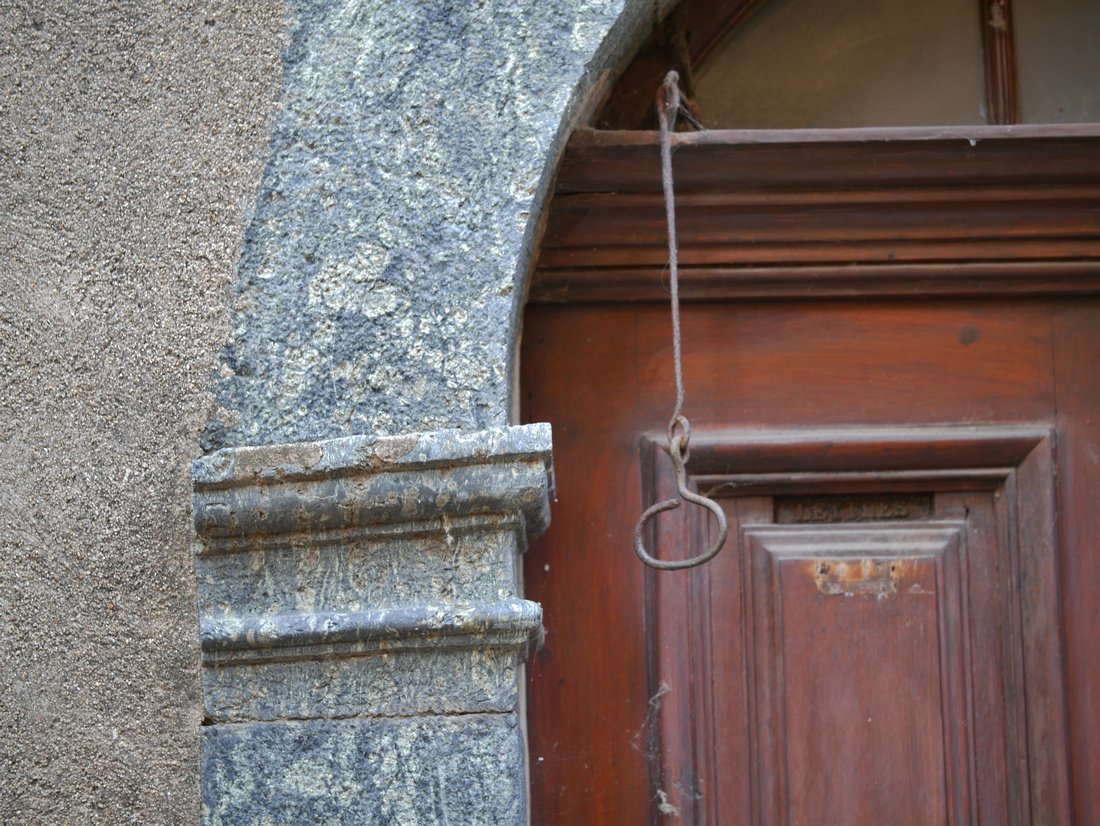
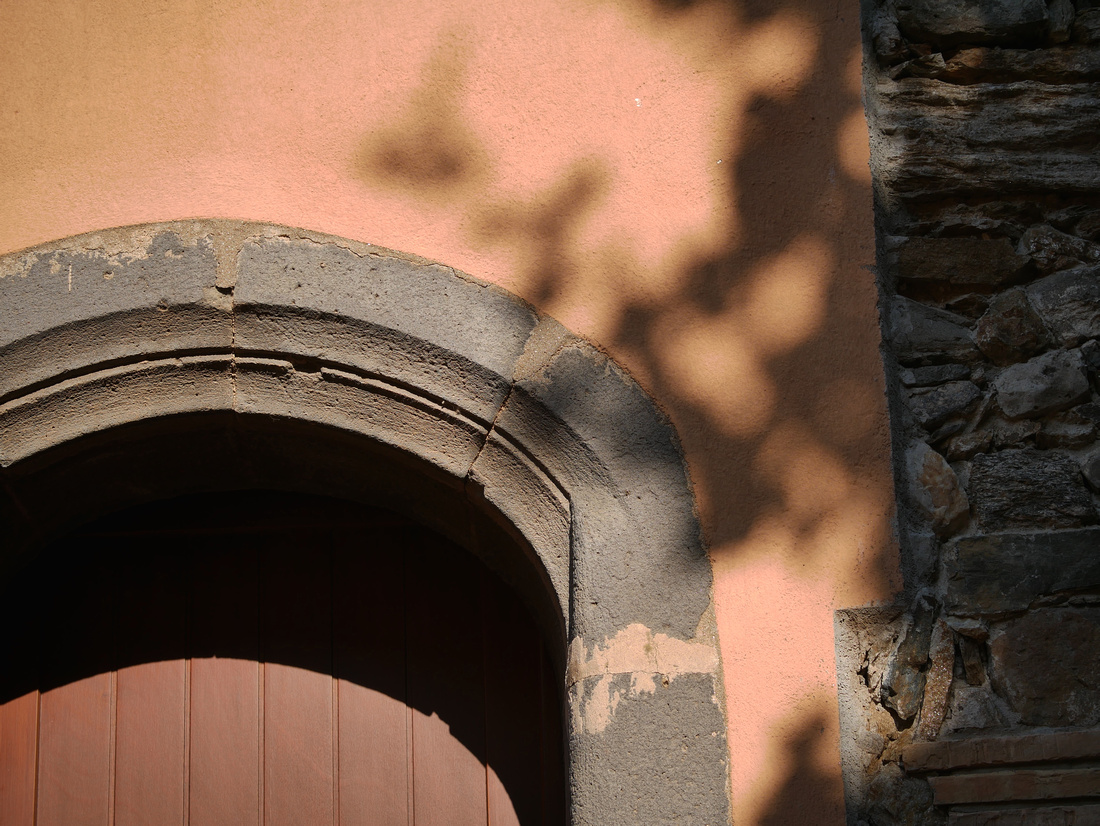
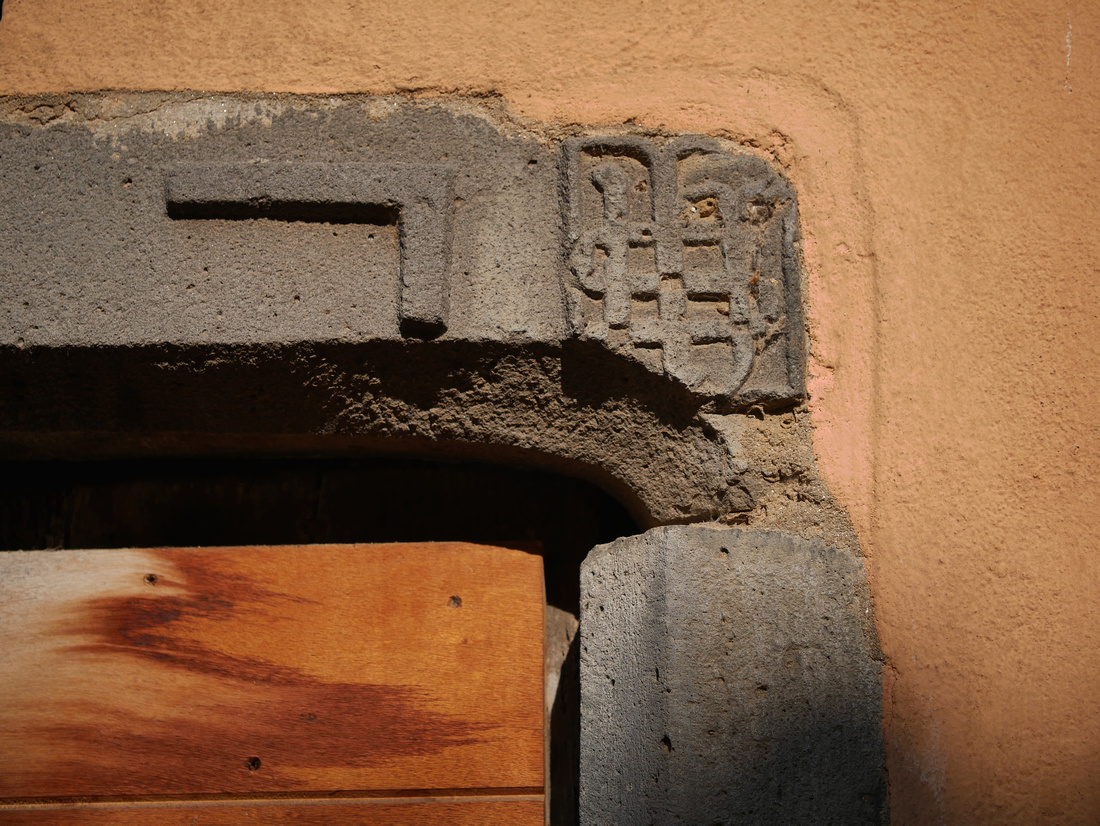
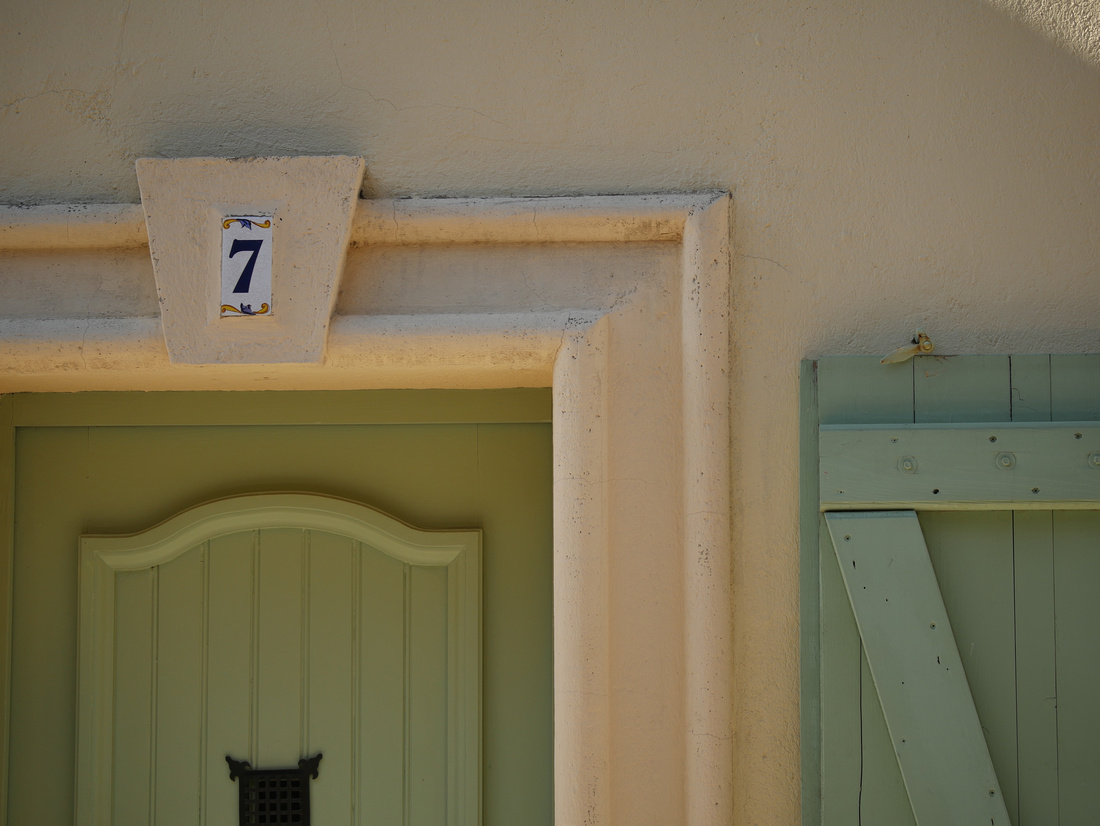
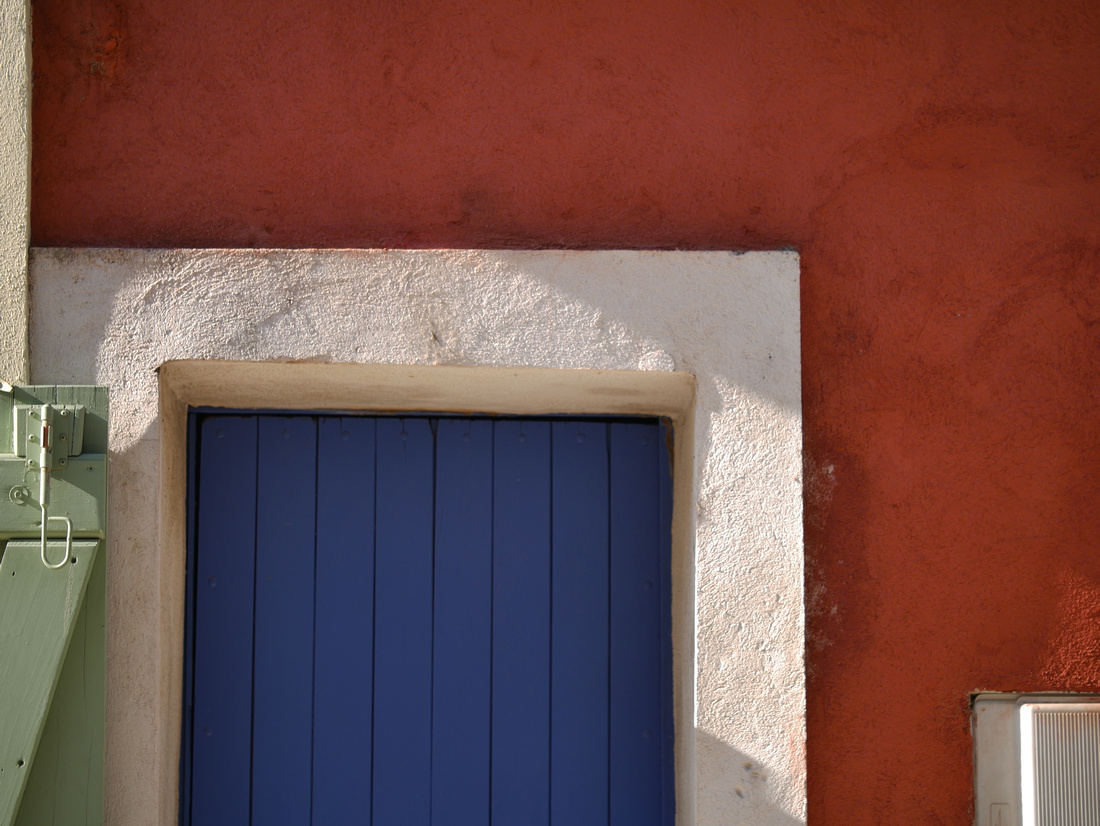
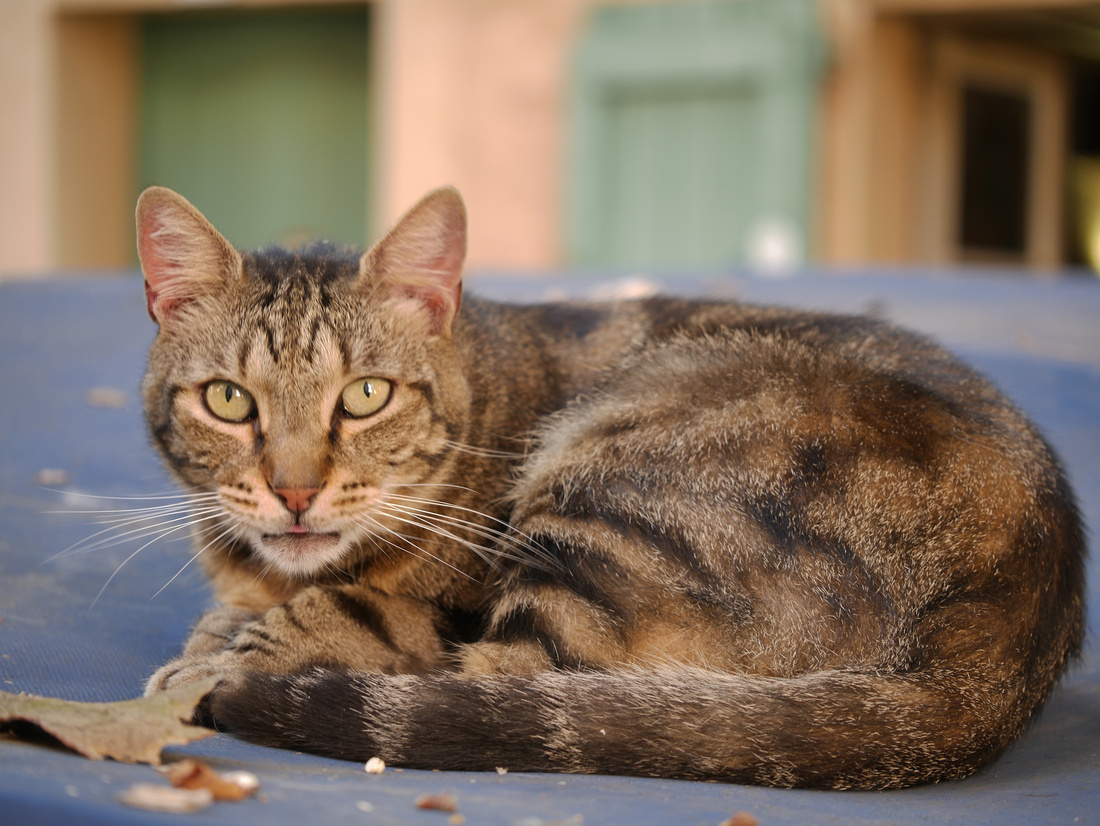
And if you like to see these photos in detail: You will find them here: http://delightphoto.zenfolio.com/p714610571
Introduction
Panasonic released the LUMIX G7 ca 22month after the Lumix G6. It is the direct successor of this model. In between Panasonic has released a couple of other µ43-cameras like the GM1 and the GM5 or the GX7. It is nice to see that the product life time starts to increase at Panasonic. The time between the G5 and the G6 was just 14 month....

What are the main topics with this new camera? First: It has a different shape which is more adult. I lays much better in my hand than any other G-Model I own. And it is still acceptable small.
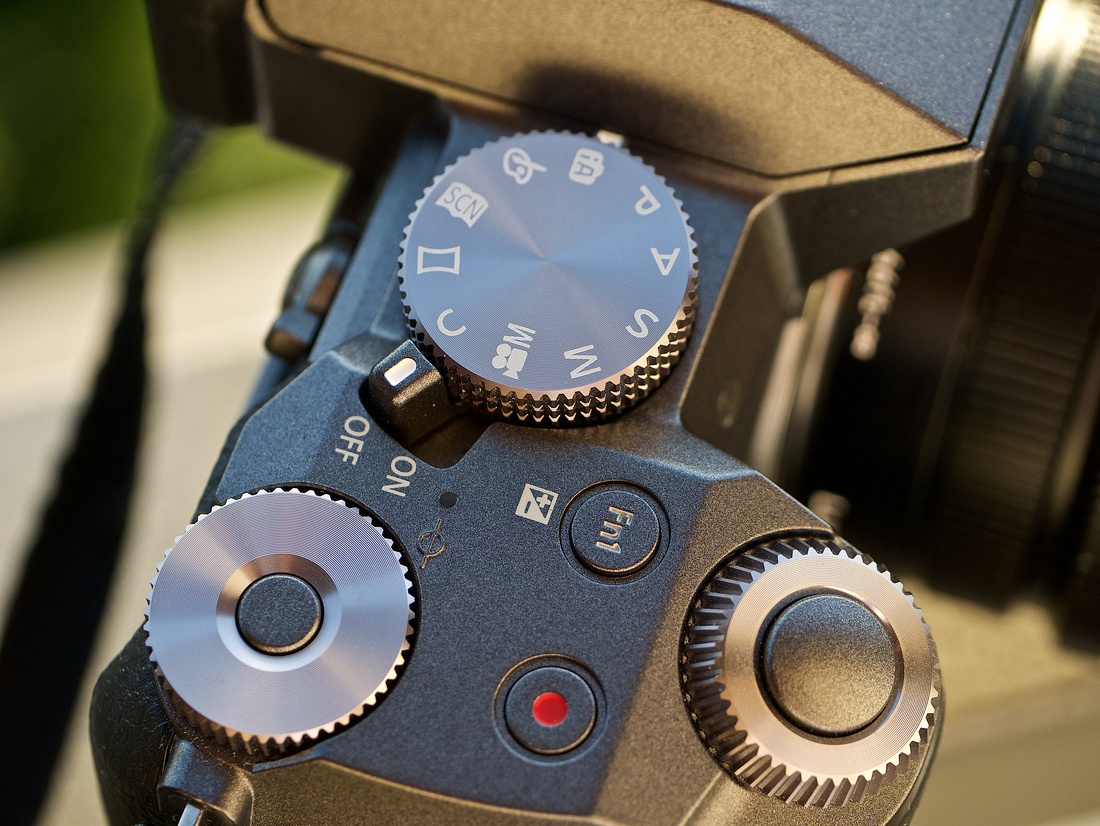
The main difference to all other Lumix cameras I have: The G7 has 2 separate wheels at the top. This is 1000:0 better than any other Lumix I own. Now there is a clear separation and not unfortunate turning the wheel - oops a click - and you are doing one totally different thing. This cannot happen with the G7. definitely not. But the way it works it is made really great. An example: Aperture Priority mode:
- Both wheels are doing the same: they change the aperture.
- After clicking the f1 button:
- the front wheel in changing the flash offset
- the rear wheel is changing the exposure compensation.
But there are more changes in the layout of buttons and dials:
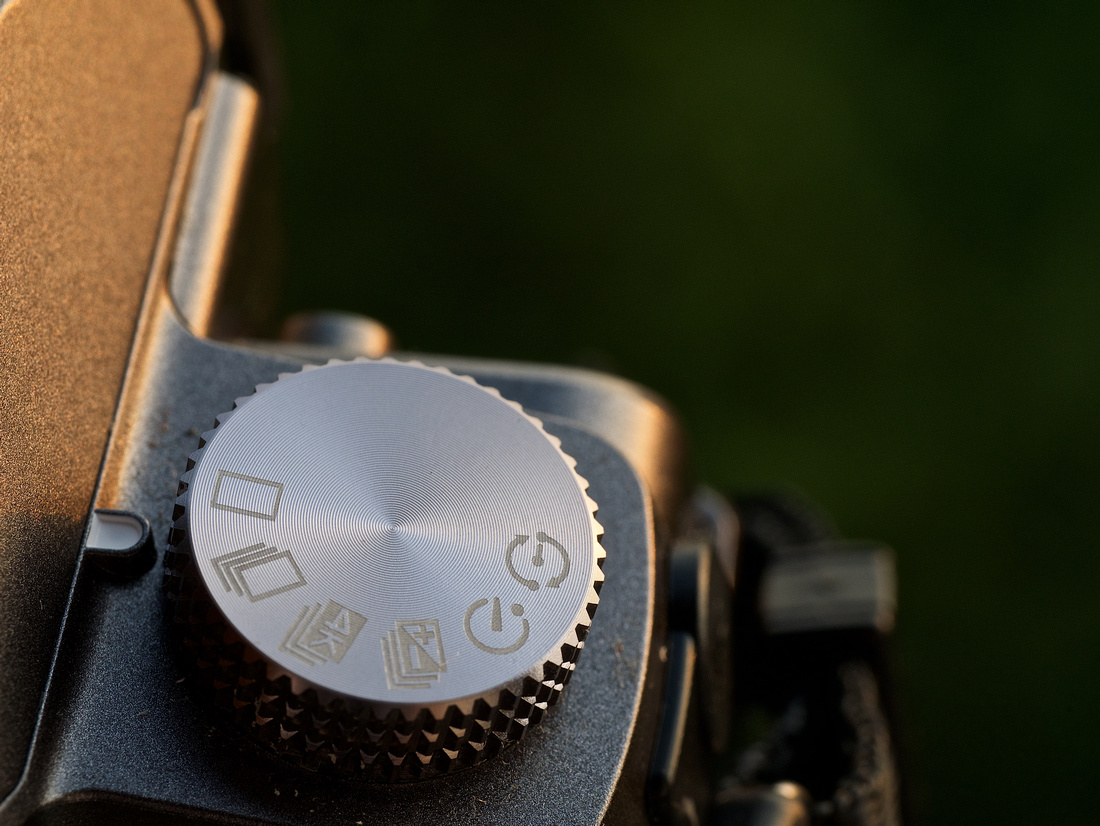 There is one dial for choosing different photo modes:
There is one dial for choosing different photo modes:
- Single Shot,
- Serial Shot
- 4k Photo Mode
- Shooting Bracketed Images
- Self Timer
- Time Lapse
Some of these functions are kind of self explaining but others need some more and detailed informations..
A few remarks from the first trials:
- The bracketing is still not in the way I like it: I miss some functionalities
- The max bracketing step is 1 EV. I cannot make a HDR Series -3/±0/+3. Than I have to shot 7 images..
- I have to press the shutter down all the time: There is a single release for the bracketing series necessary
- The 4k Burst mode is nice but it gives you just JPG....

Another new switch is for the different focusing modes: The single focusing/continous focusing and manual focusing... Great: Not searching in the depth to the Q-Menue...
One little remark: I still own my first µ43 from Panasonic: the GH1: This camera had all these functionality separated in different switches and dials as well. A bit of return to the basics of the photographers needs...

But other features remain: It is a clean camera, the fully articulated touch screen is there and it is over all a really modern state of the user interface from which many other camera manufacturers can learn from. Including Canon, Nikon, Olympus and sony. For sure!
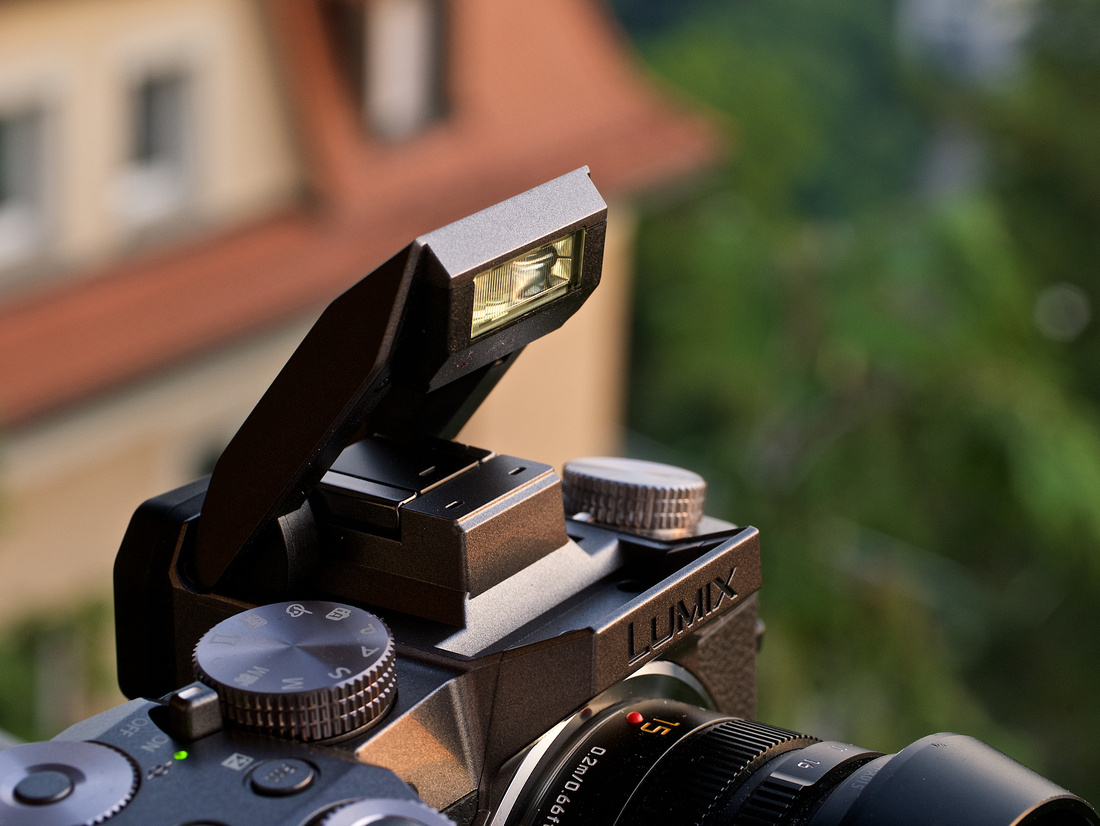
Off course: the build in flash is there as well. The nice thing: the fastest Sync Speed is 1/160s - which is much better than the 1/50th of the GM5...
Another nice feature: Panasonic did not chance the battery type. The battery is the same in the Lumix G5/G6/G7...
Comparison Between the LUMIX G6 & G7
I made some shots of both bodies to make the comparison easier.
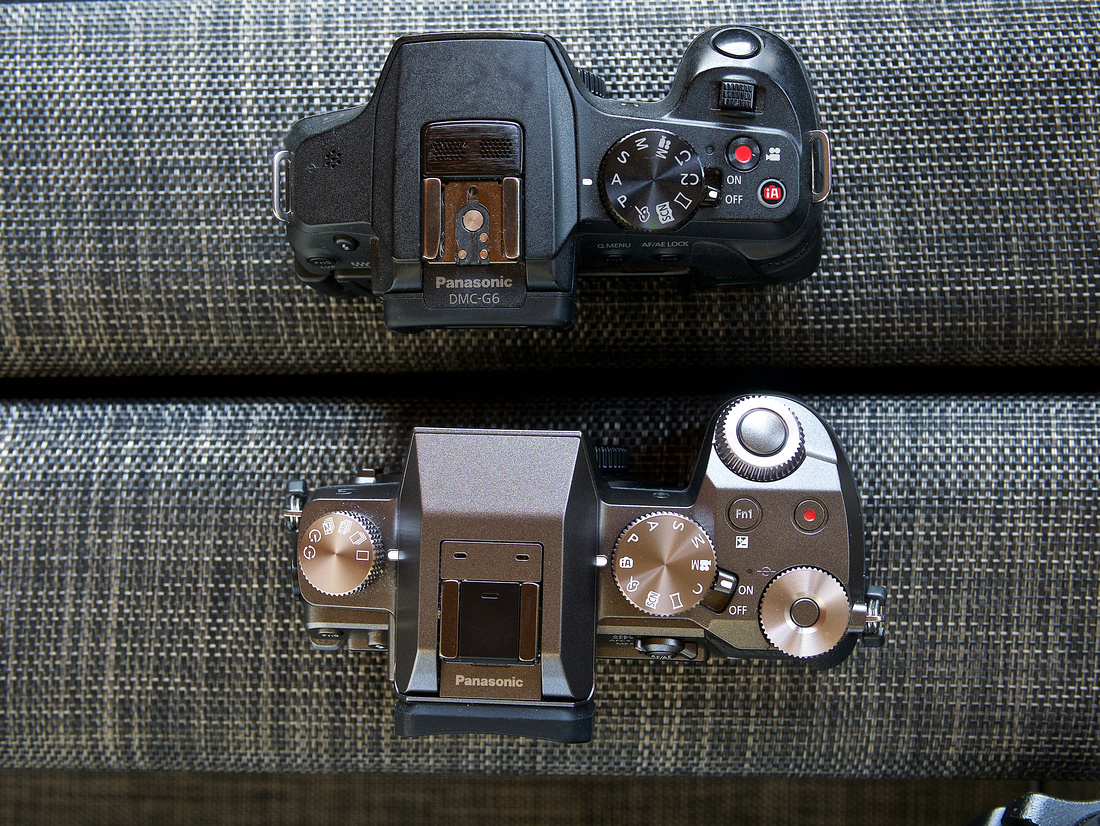
The top vie shows the much more crowded layout of the G7. Sideways there is not a big difference and the weight increase is below 20g....
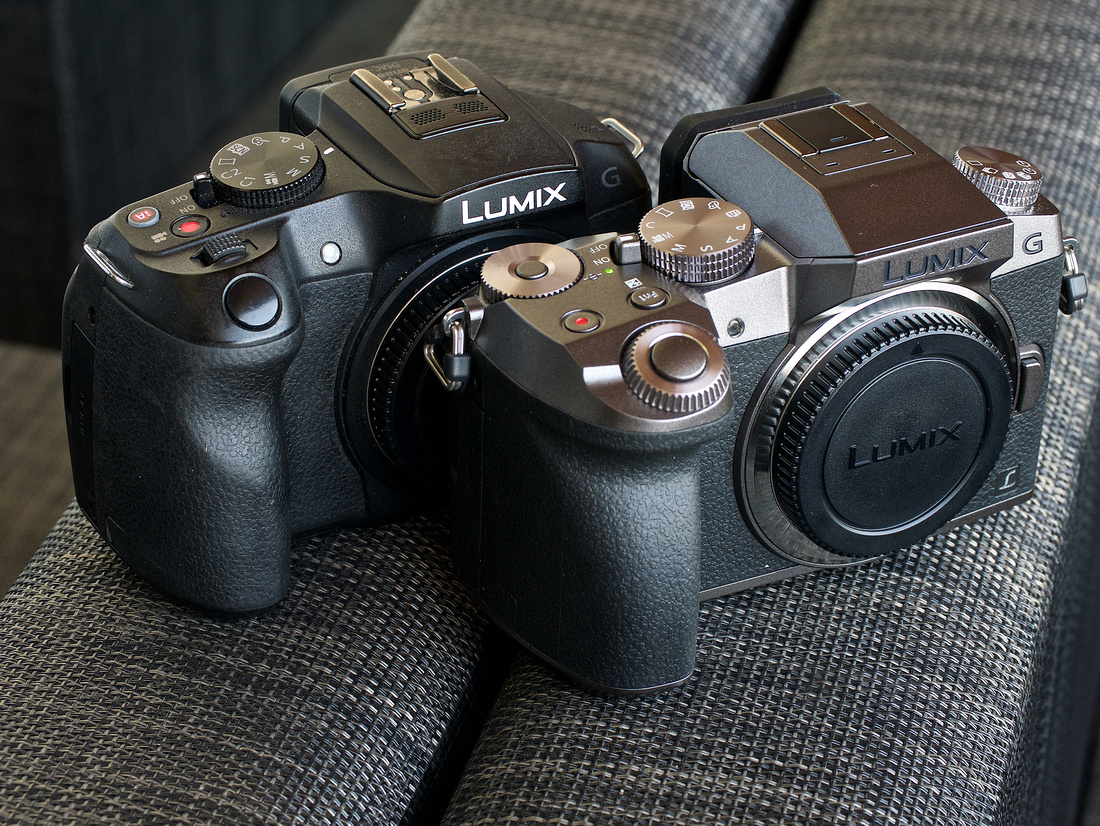
The grip is a real improvement. It s a bitte steeper and therefor: more "grippy!... There was a 2way switch at the top of the G6: But the shutter integrated well is much more handy...
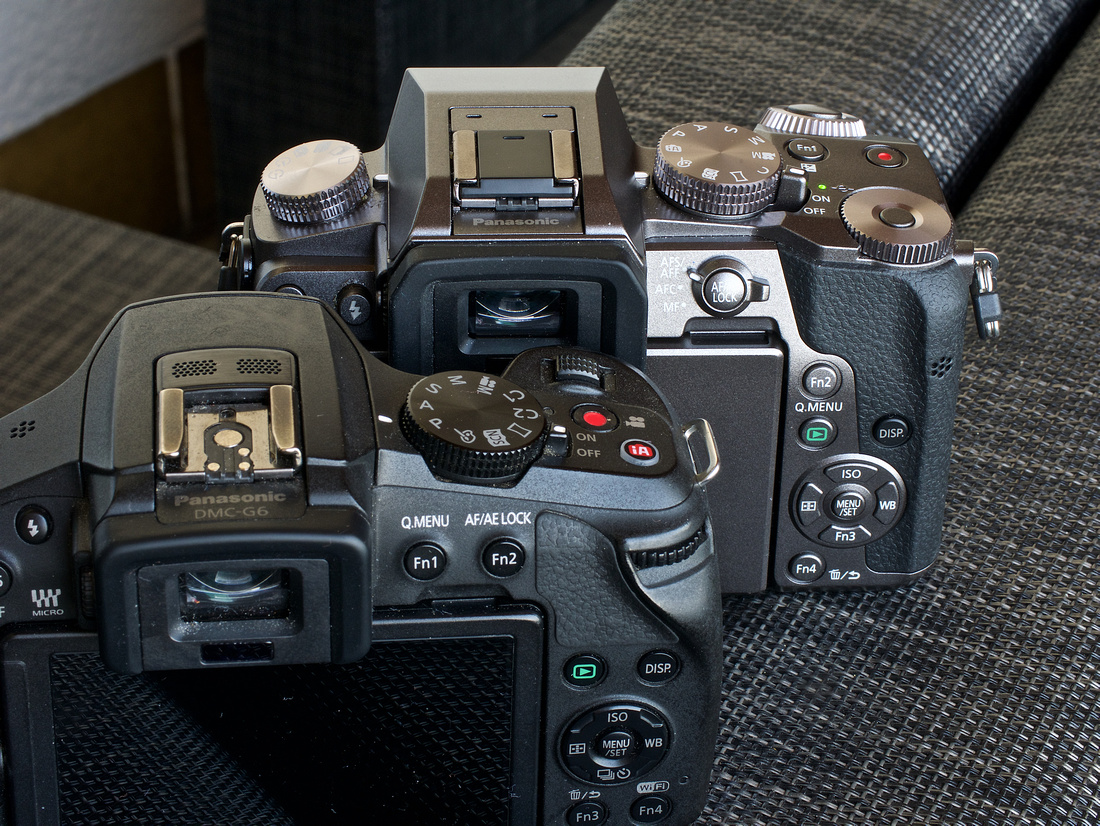
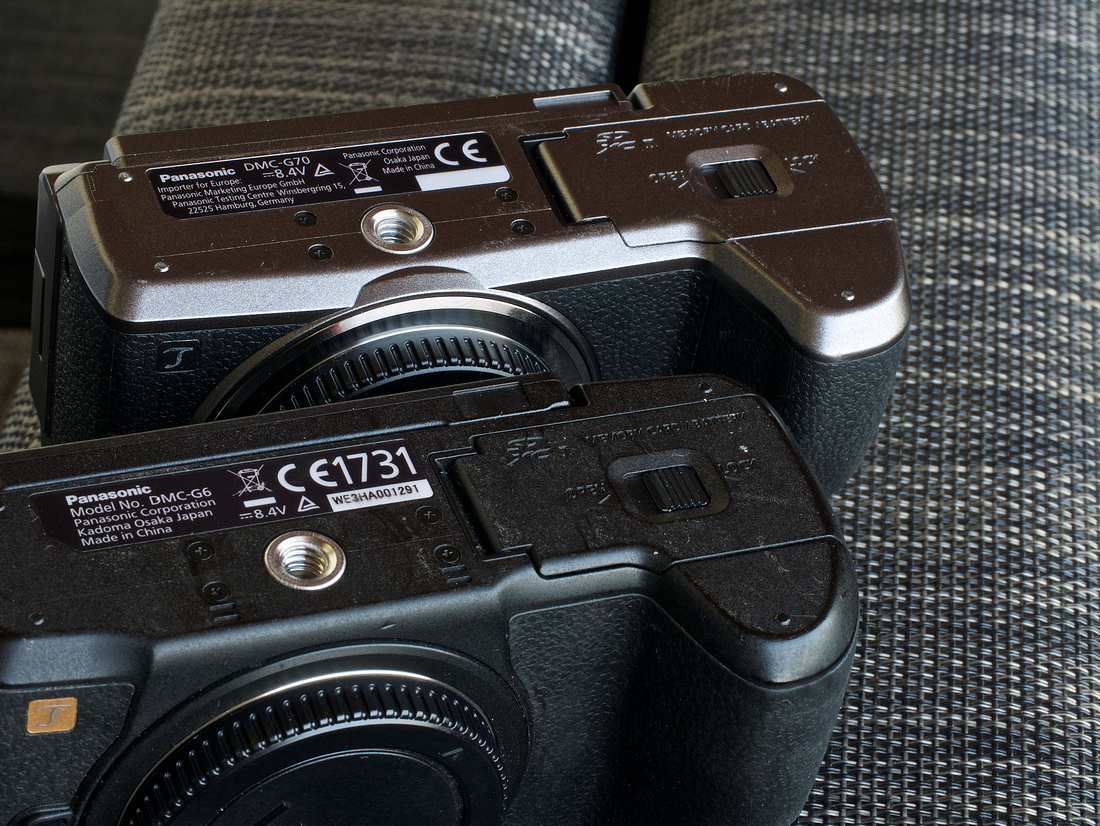
From the bottom both cameras are looking so similar. At the first glance I thought it should be possible to exchange the flaps.... so similar...
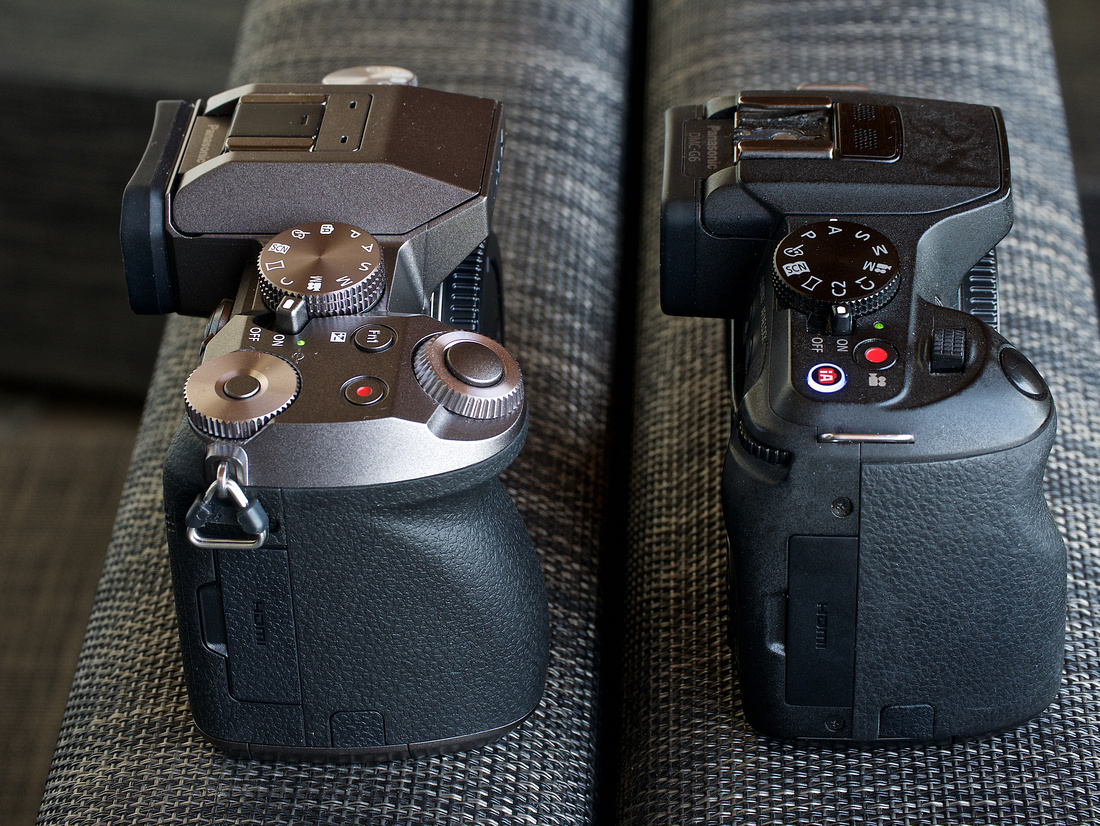
In the sideview you see much clearer that the grip of the G7 is ca 5mm stronger...
Image Quality
Like all other µ43: the images can be amazing: a few highlights from my first days with the Lumix G7. They are just shot around our house. I wanted to rent one G7 for my recent trip to Istanbul but Panasonic was not able or willing to send me one. There Istanbul was shot with the combo GM5/G6.
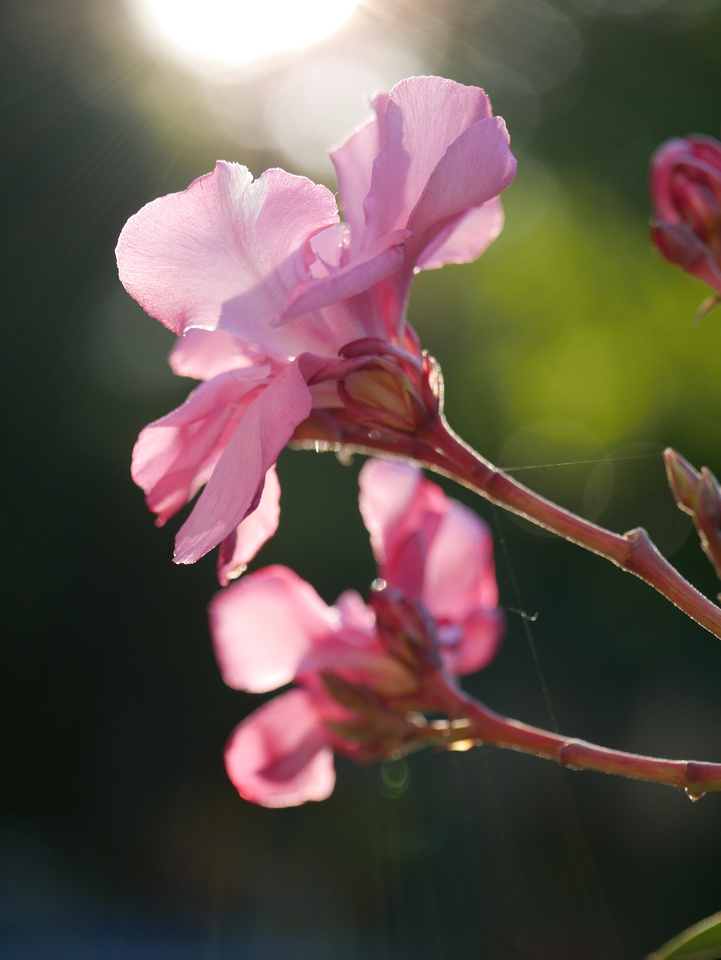
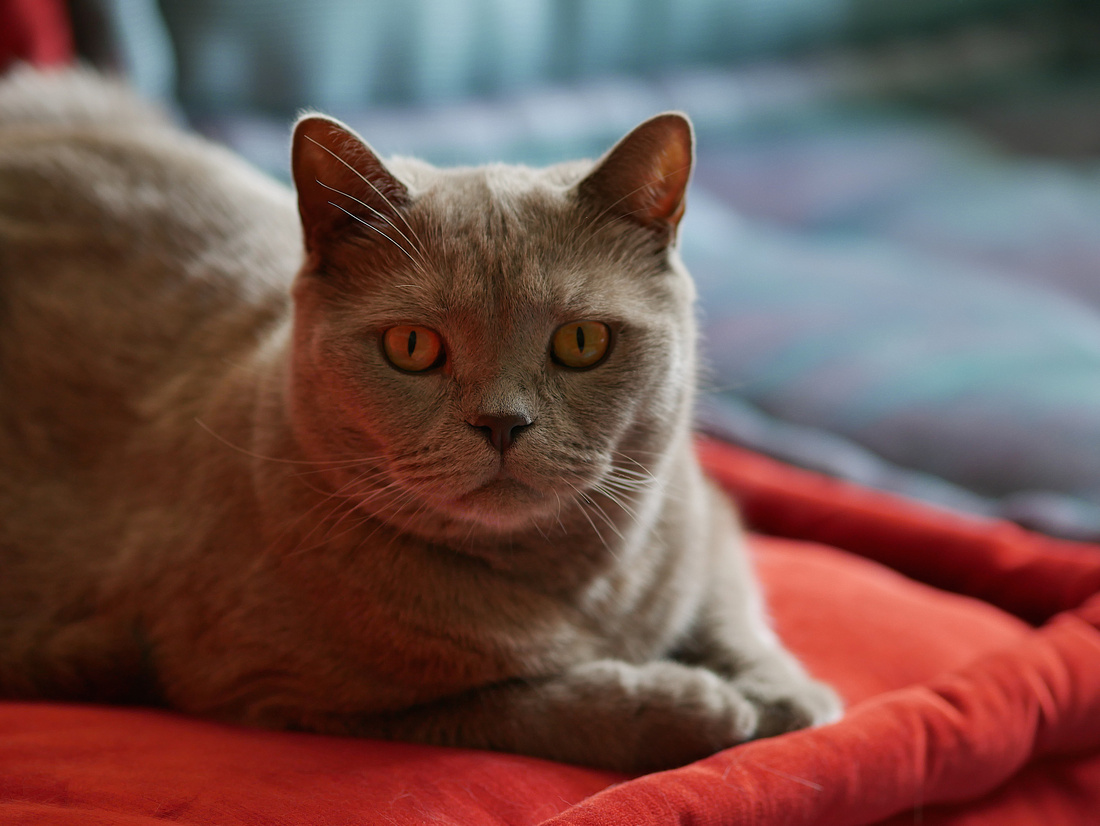
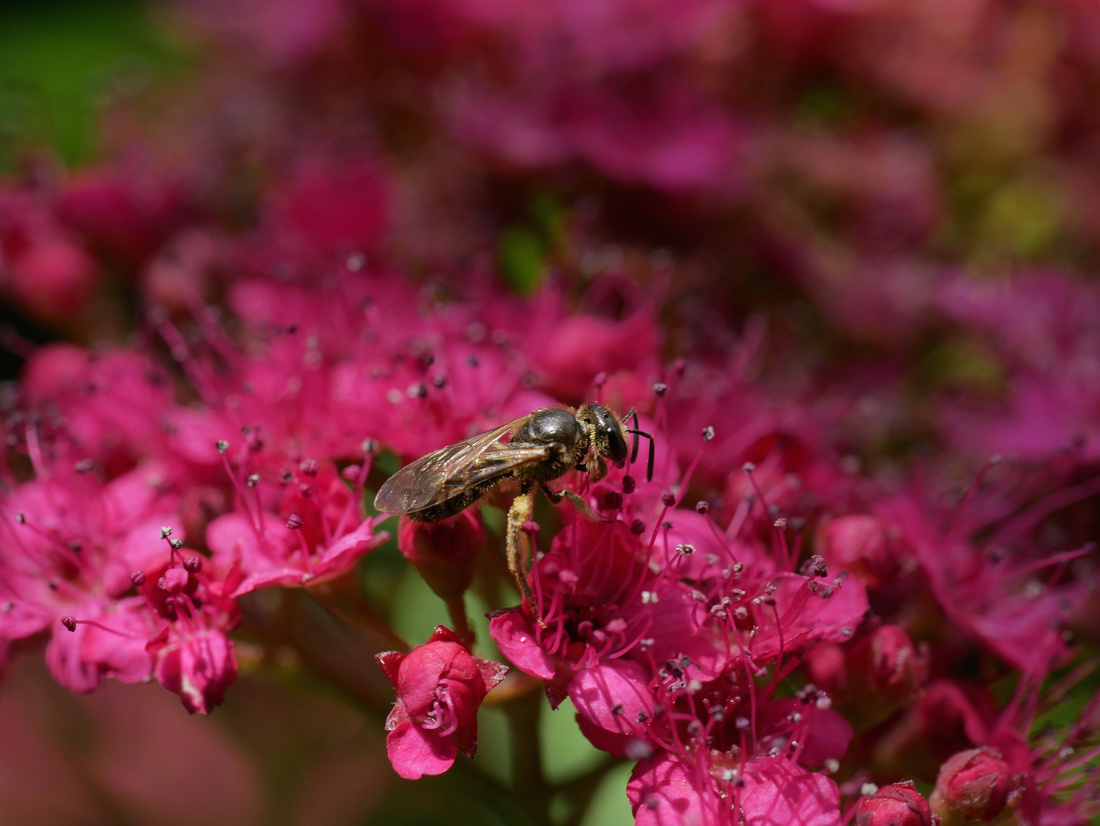
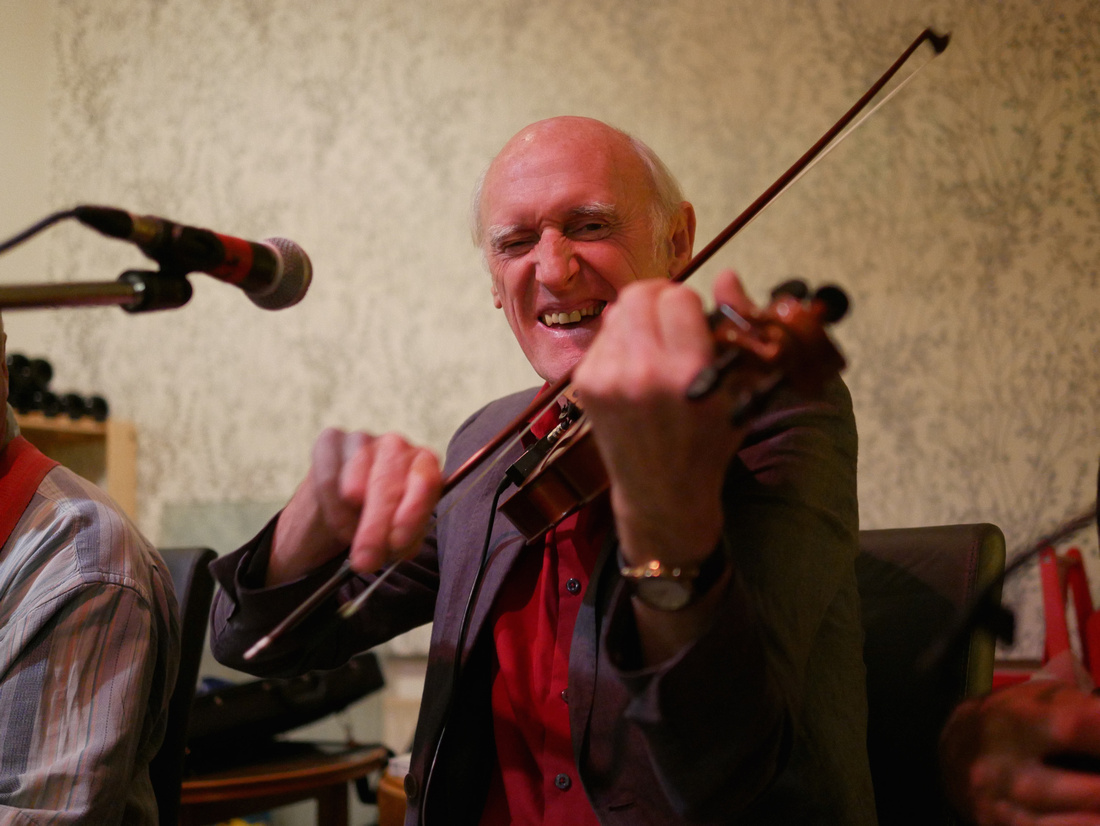
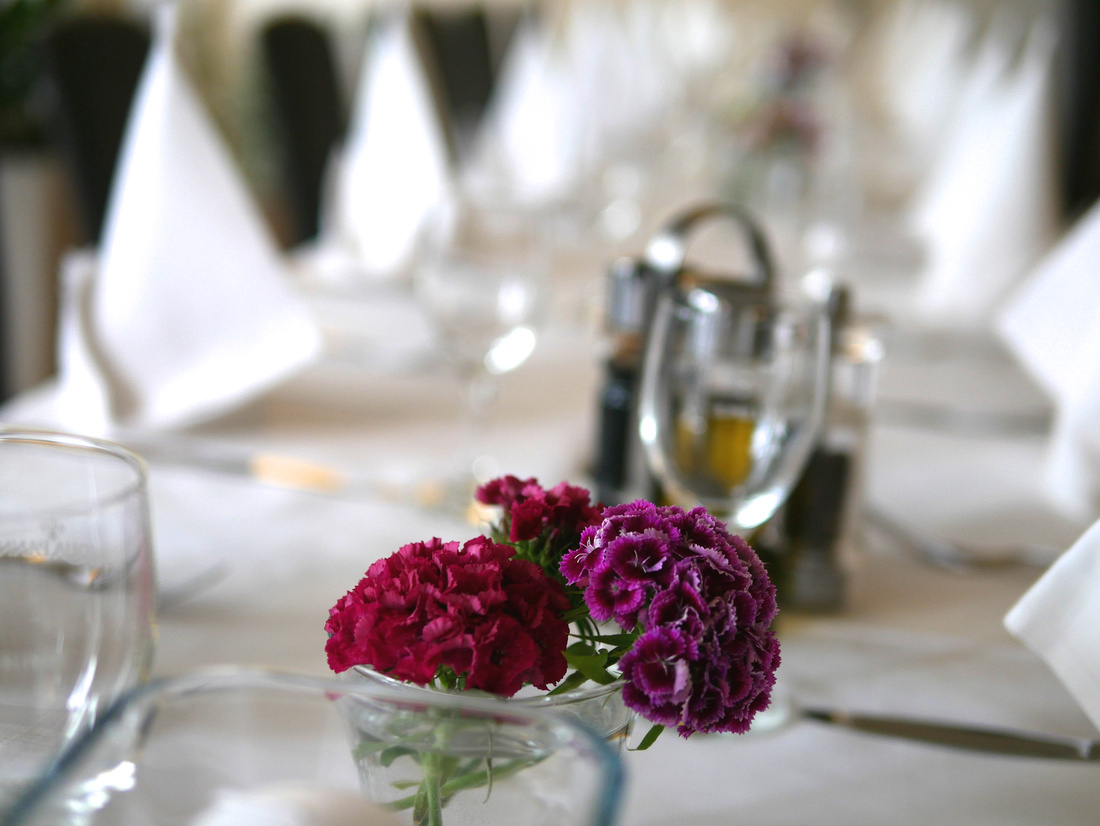
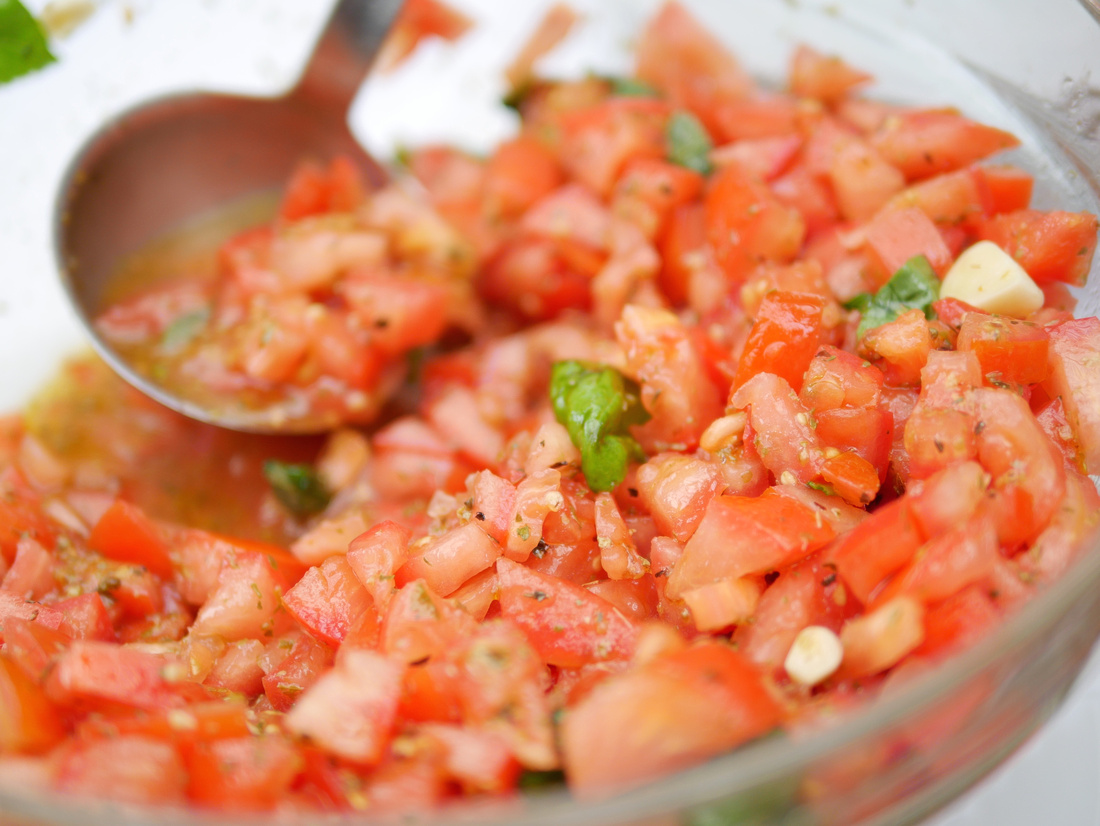
All photos are JPG, with no editing. So fare there is no G7 RAW converter in my workflow available that I had to relay in JPG...
Comparison of Image Quality
The most sensitive point for µ43 cameras is the low light performance. The small pixel size sets limitations. But the cameras are improving generation by generation. For me this point was one of the most interesting one. I decided for a test in a bit laboratory environment. I made com photos in various settings:
- Lens: Elmarit f 2.8/45mm
- ISO 200/800/3200/12800
First the hardest difference between the G6 and the G7 at ISO 12800:
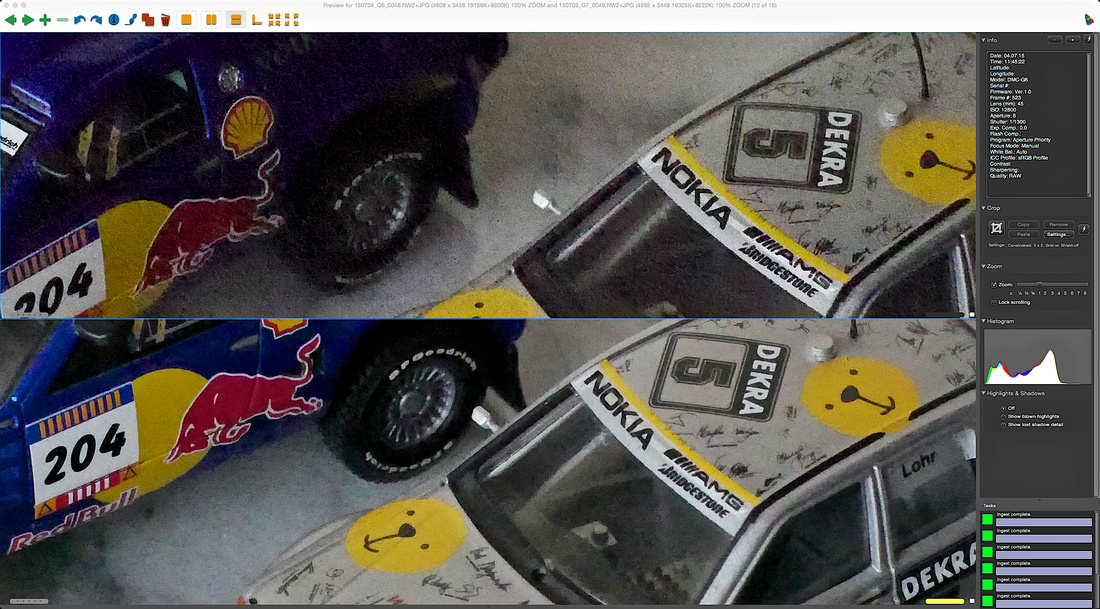
The advantage is amazing. For me the limit for µ43 was always ISO 3200

And even here at ISO 3200: A clear improvement against from the G6 to the G7. Great work Panasonic!
And than I wanted to know: how does w wider comparison will look like - and I made it a bit harder: I added the GM5 but the Canon EOS 5D MkIII to the picture .. An I compare it @ ISO 12800
 This was very interesting to me. You see
This was very interesting to me. You see
- 5D3 G7
- G6 GM5
The clear advantage of the 5D MkIII was not unexpected. The low light performance of this meanwhile 4 year old camera is still amazing. But I must say: both newer µ43 cameras are performing not bad, or?
Verdict
The new G7 will accompany me more often than I had thought while buying this camera. The reason you can find in the limitation of the GM5: The 1/50s Sync speed and the better handling of the camera especially if you want to work fast.
For real professional product shoots or shooting in difficult light conditions I will still prefer to use the big guys....
But for all normal shooters: The real race is between the GM5 as really small camera and the G7.... (and maybe the Olympus EM5 MkII..) as long as you do not look for the water sealed µ43´s - but there will be a different price tag as well.
I still set the µ43´s above the APS-C Cameras because of the overall form factor especially on the lens side. Image quality wise they are really close....
Some remarks:
All photos of the G7 and the G6 were shot with the Panasonic Lumix GM5. The lens I used was mainly the Elmarit f 2.8 45mm Makro.
There is a link to the gallery of the camera photos - including the screenshots
http://delightphoto.zenfolio.com/p1050563060
And there is a link to the Lumix G7 sample shots:
http://delightphoto.zenfolio.com/p1073360422
]]>Shooting Panoramas and stitching them seems o be very easy. Every smartphone has this feature build in. So fare so good. But shooting special panoramas in low light situations or in situations which needs HDR Smartphone will loose, for shure. My example for this is evident and I have shown thin in my blog entry about HDR-Panoramas. During the Years I made my own experiences and some of them had been pretty painful. When I was shooting the Stuttgart Library under phantastic light conditions it was amazing - and the stitching just a pain in the ass... really. hours.

The software was not able to stitch. properly: look at the left crane or at the road name sign... I discussed that with ptgui and i was discussing using a tilt shift lens and they replied: you have to use a panorama head... And after some more hours in try end error and error and error I was buying one. But buying this on was not just buying: I started on a different level of experience, having shot quite a lot of HDR Panoramas form my office side: http://delightphoto.zenfolio.com/p941493700
Setup for DSLR´s an larger cameras
One issue was always the leveling of the tripod. My solution was: buying a really sturdy Ball head as the basis:
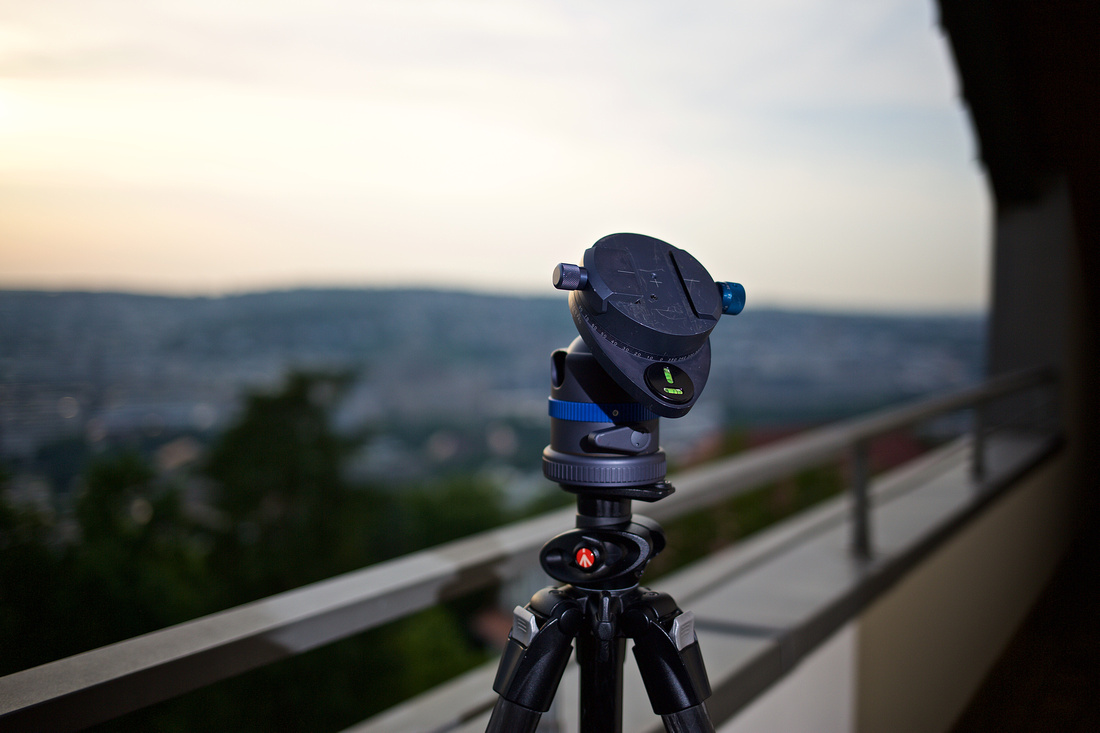
This is my Novoflex Classic Ball 5. Able to carry a load of 12 kg... A lot of load but inbelivable stiff... The right basis for carrying a Panorama Head
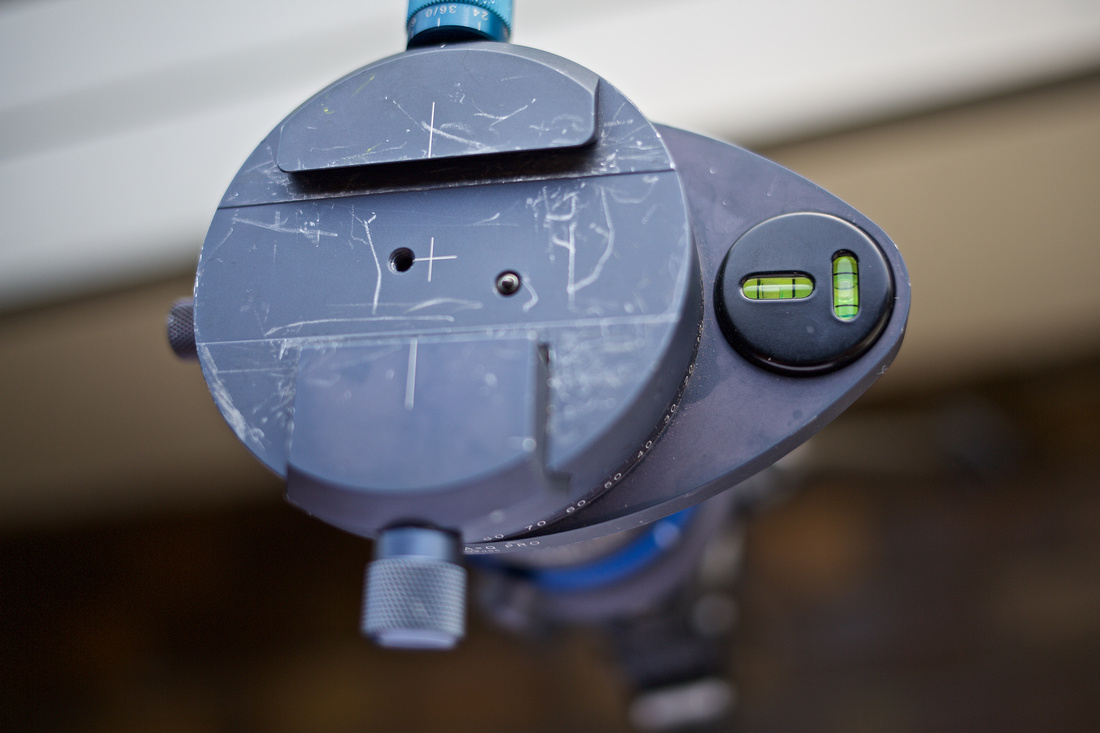
Amazing: The 2 ways leveling: The fist step is to level this adapter plate. Very easy. The next step will be to mount the Panoramahead on it and to mount the camera:
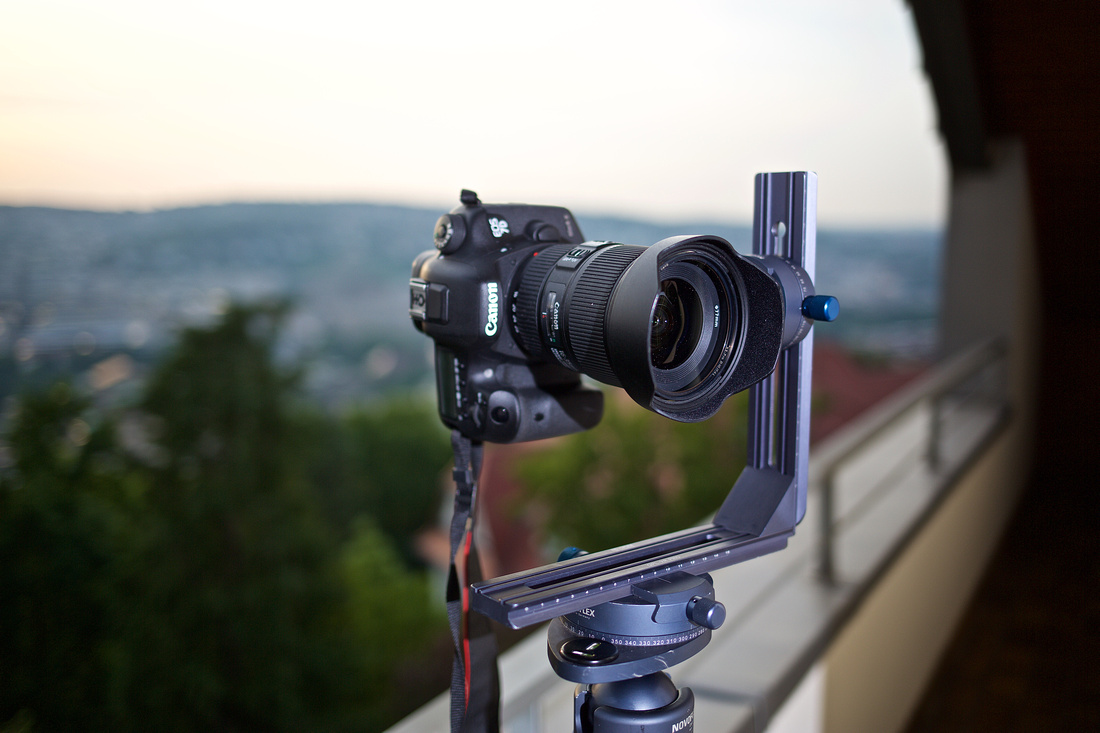
In this case: a Canon 7D MkII and an EF 16-35mm f4.0 L IS Lens... Which works fin by the way....
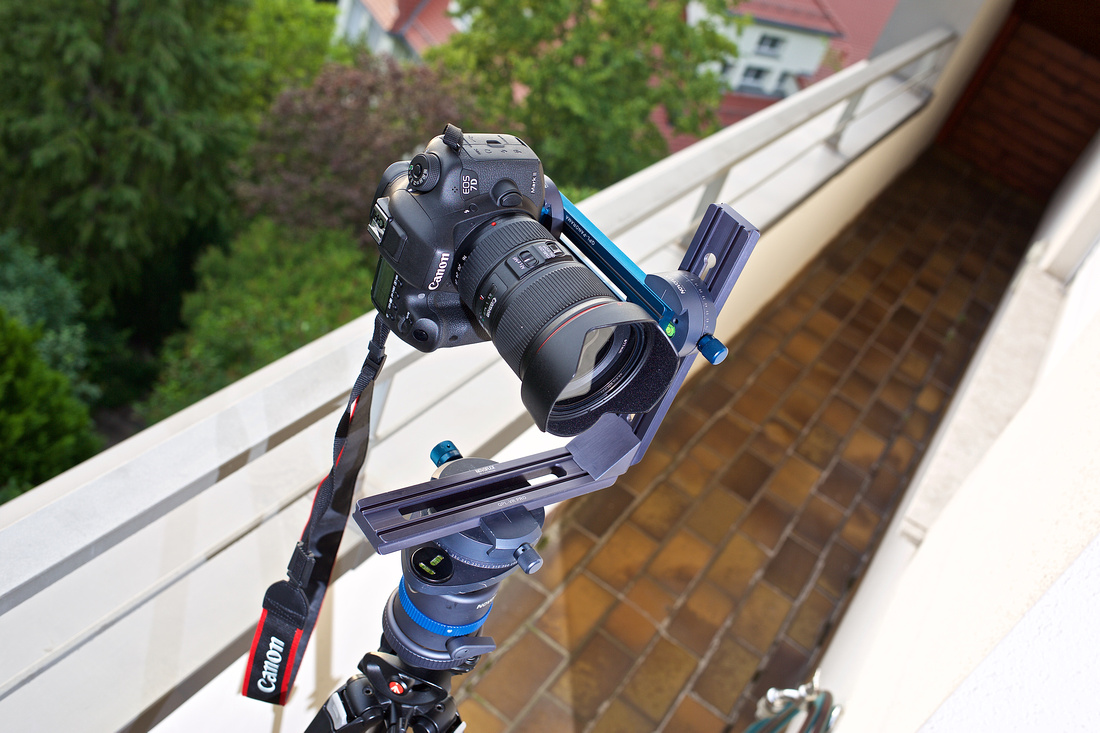
Here the same combo but from another perspective: What you see: the camera is mounted on a slide. This is necessary to bring the nodal point of the lens ( the reference point for the focal length: for Canon L-Lenses this should be the red ring....) to the tilting point. You can tilt the camera on this point f.i. for spherical Panoramas - which you cannot view on this side, unfortunately...
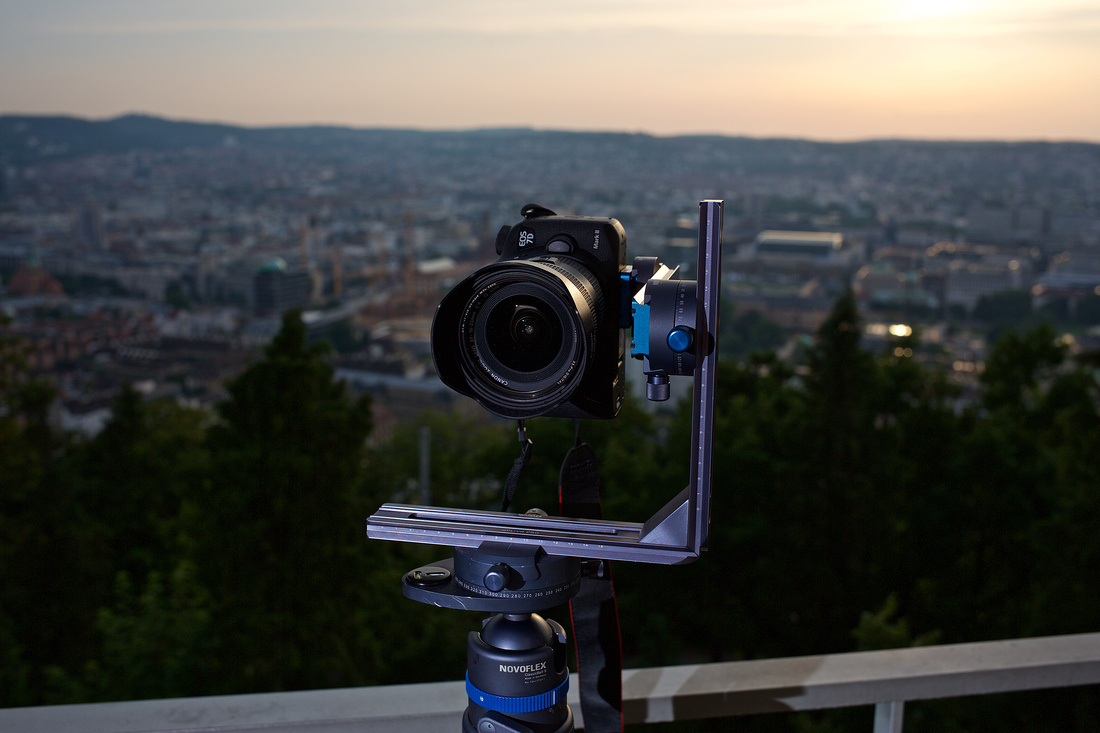
What is important: to mount the camera correctly: The lens axis must cut the turning point of the panorama head otherwise you will have parallaxes error and win some hours in photoshop to correct this... painfully....
But as you maybe know, I do not travel with the big luggage all the time. Sometimes I prefer to use just my little µ43 stuff - Especially with the GM5. And this camera looks a little bit ridiculous on the bit tripod:
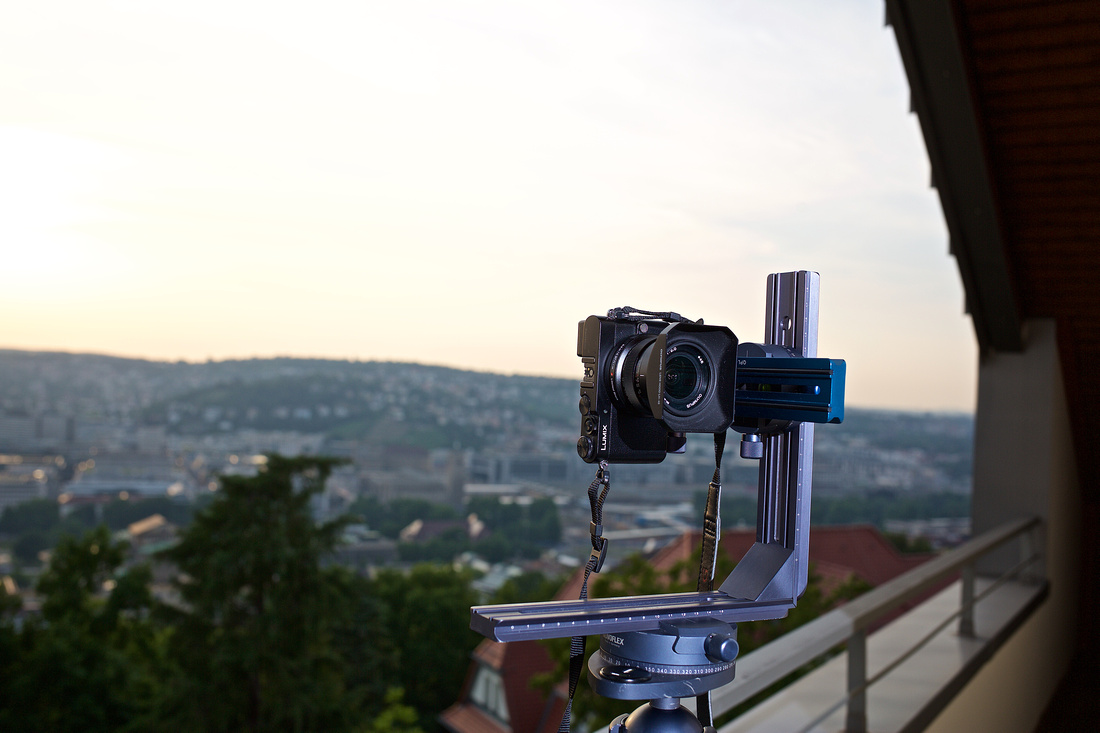
I thought: this does not make sense: to carry a very little camera and a big and spacious tripod.
The setup for µ43 Cameras
I decided for a new tripod (much earlier) which was a Gitzo Traveller: Very light weight but sturdy as well... The ball head was ok - but gave me some trouble once in Paris... ok: I decided to buy another solution: And having everything from Novoflex It was Novoflex again:

The Basis was a Panorama Plate Q48 and on this mounted the very Small Ball NQ. But this should be used just for holding the camera.. - and will be removed for shooting Panoramas.
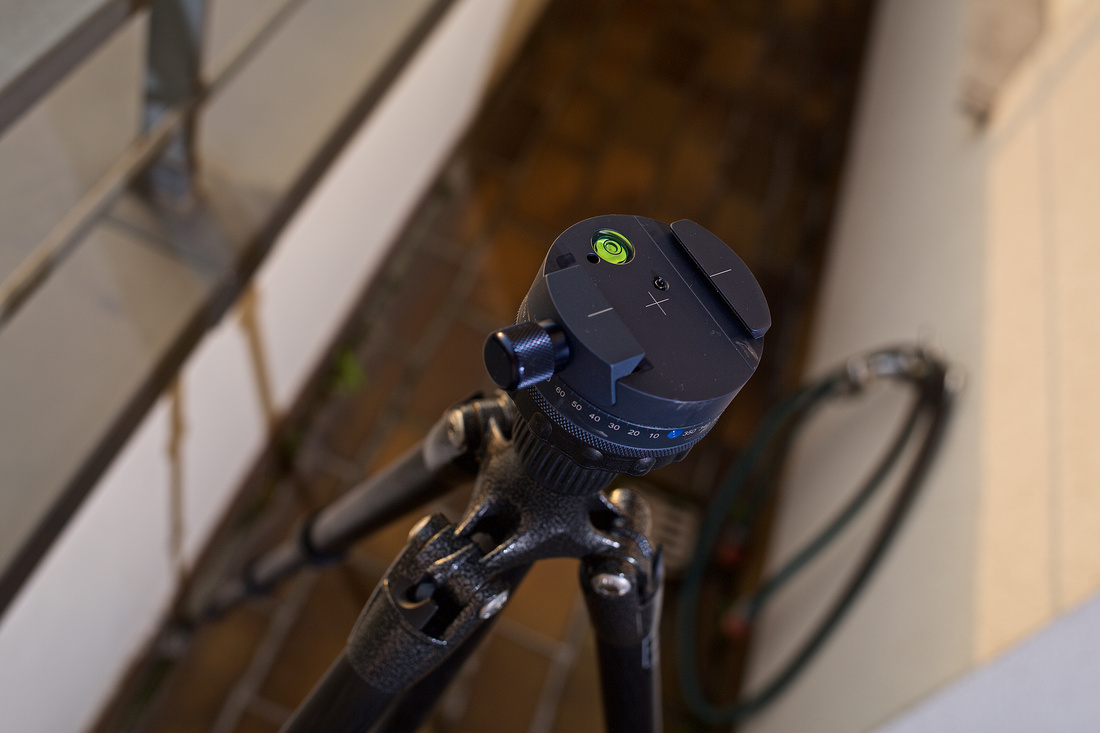
The Panorama Plate shows me each and every time i Use how much easier it is to level the Pano Head on my big tripod.... And there is another disadvantage of this Panorama plate: the minimum is 18 stops or 20º. Which is sometimes a bit much, especially if I shoot wide angle lenses like 24mm or even 14mm FF-equivalent.
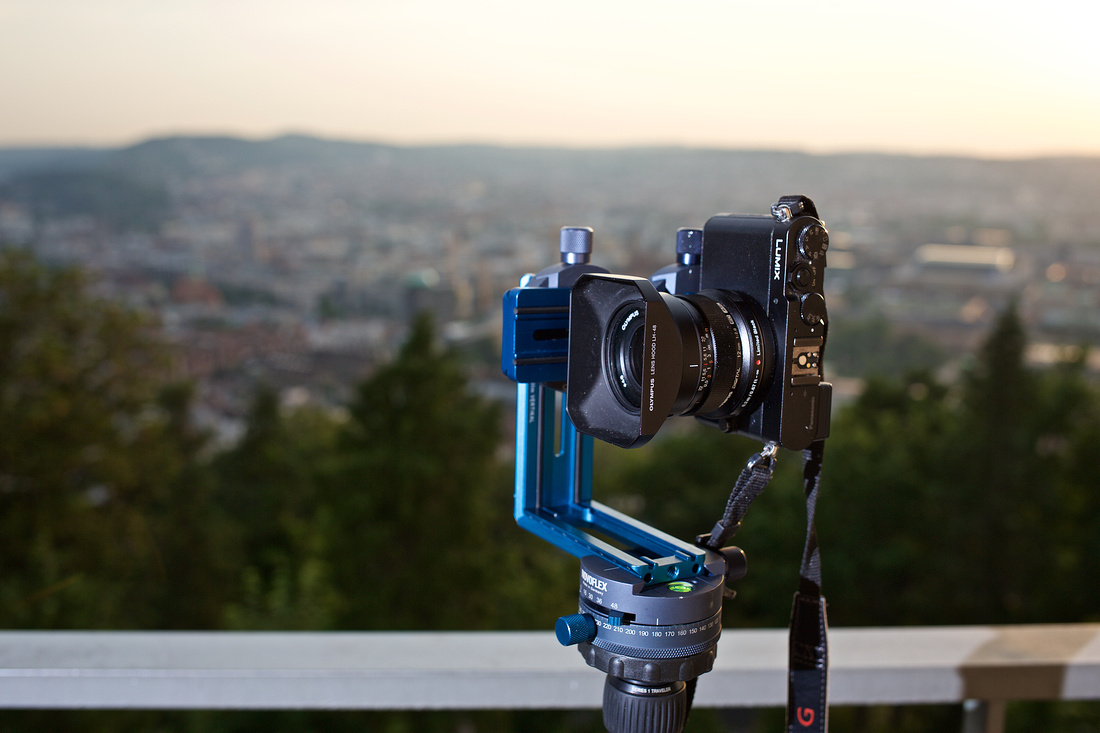
This looks like much better proportions.... And it is really light an small. The good thing: I am able to tilt the camera as well - but I need tooling to do this...
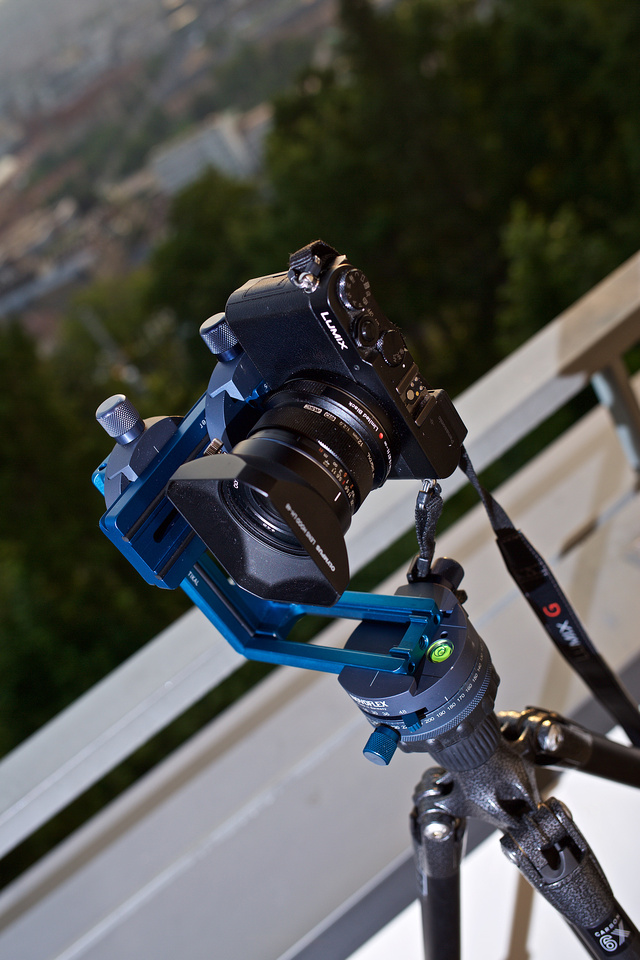
the good thing is that I am able to readjust the leveling with the mounted Panorama head.
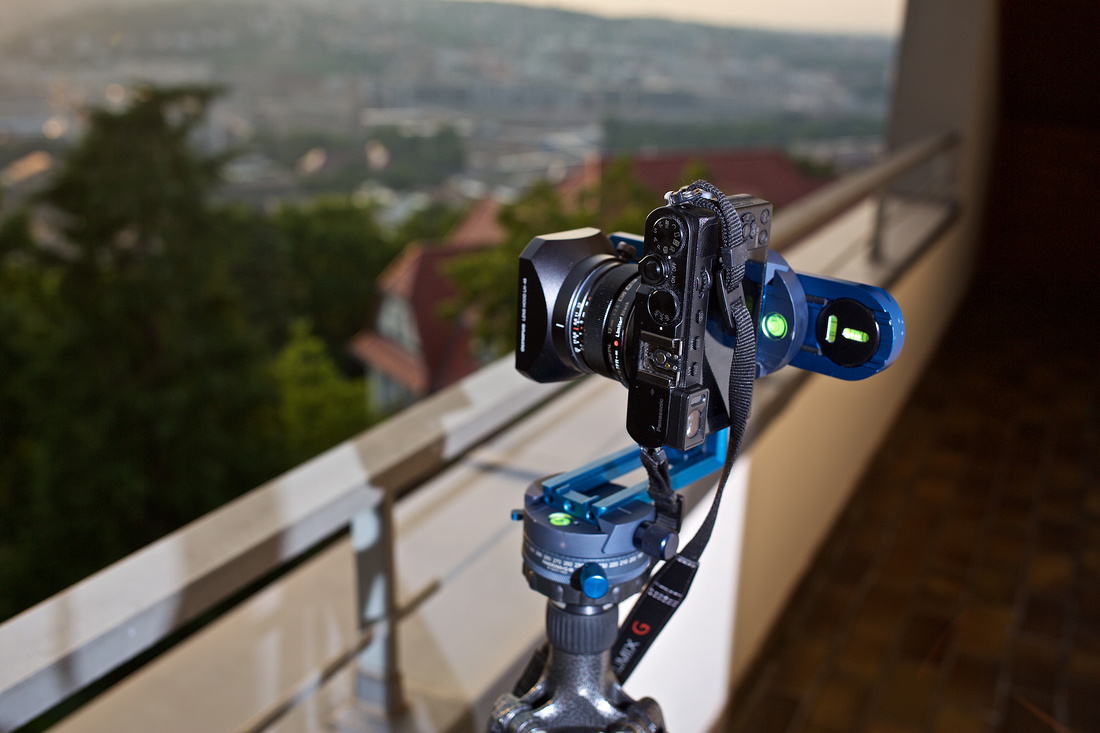
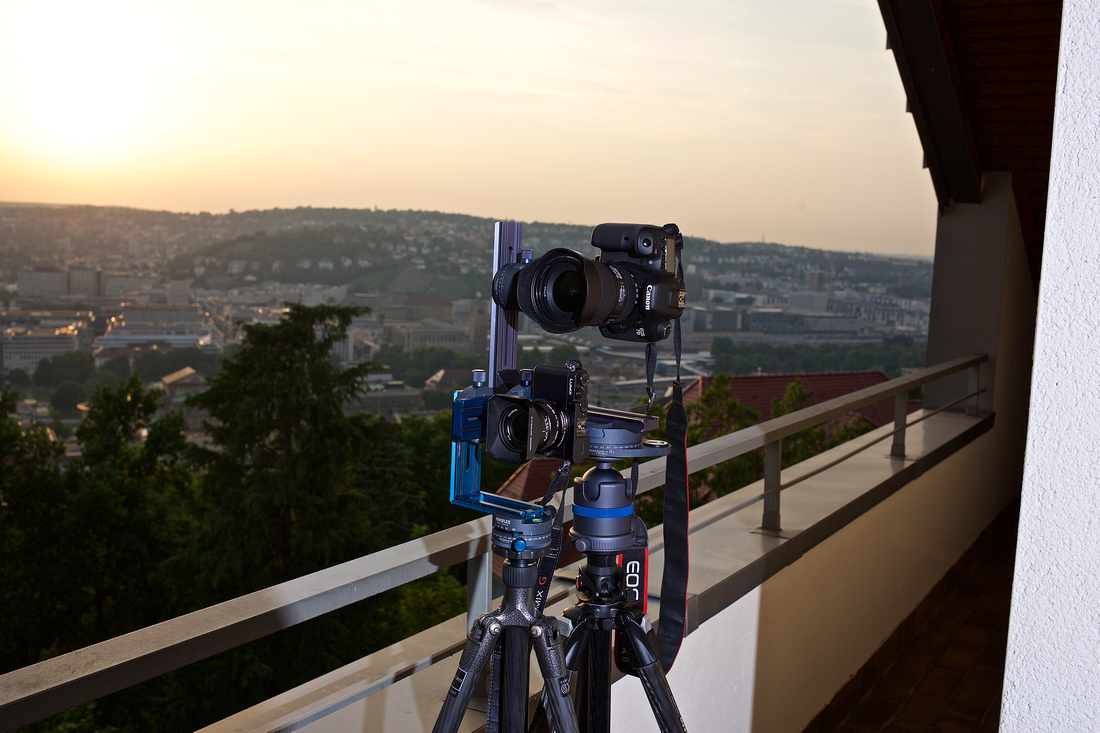
Here a comparison between the 2 different System: the Lumix GM5 on the Gitzo Traveler and the Canon EOS 7D MkII on the Manfrotto tripod..
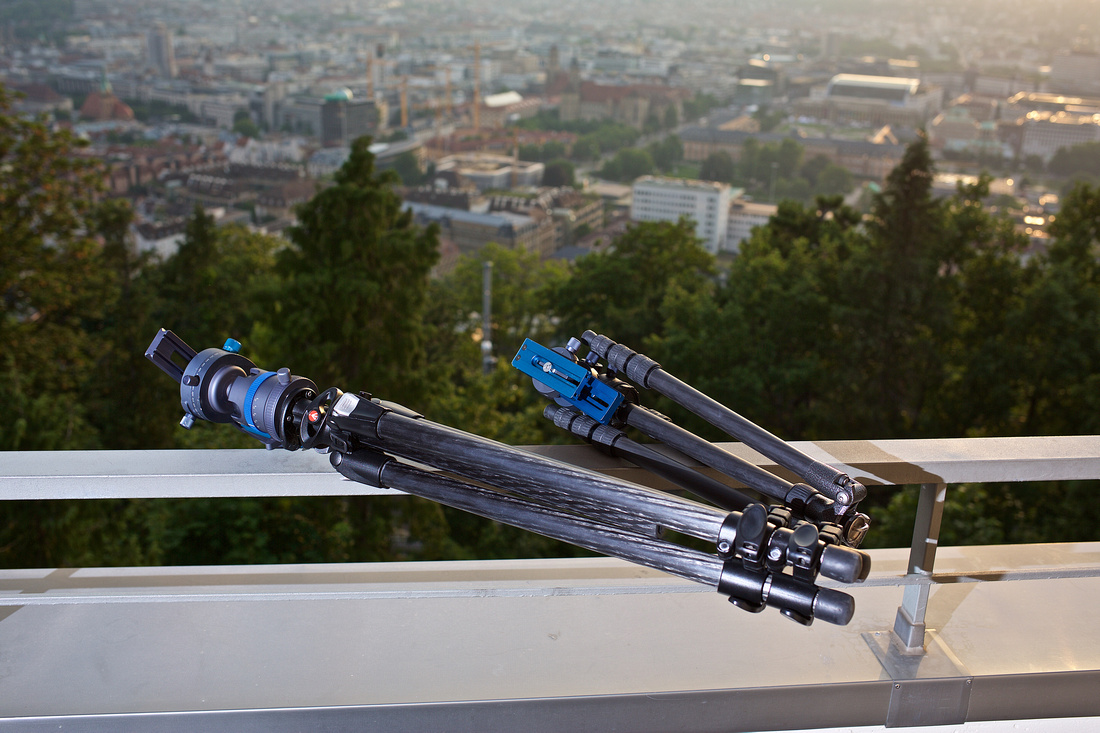 To give you an impression of the size comparison to the 2 setups: this is amazing: The Gitzo fits an a cabin trolley while the Manfrotto fits only in my larges 73cm Hardcase and only it the Ballhead is unmounted....
To give you an impression of the size comparison to the 2 setups: this is amazing: The Gitzo fits an a cabin trolley while the Manfrotto fits only in my larges 73cm Hardcase and only it the Ballhead is unmounted....
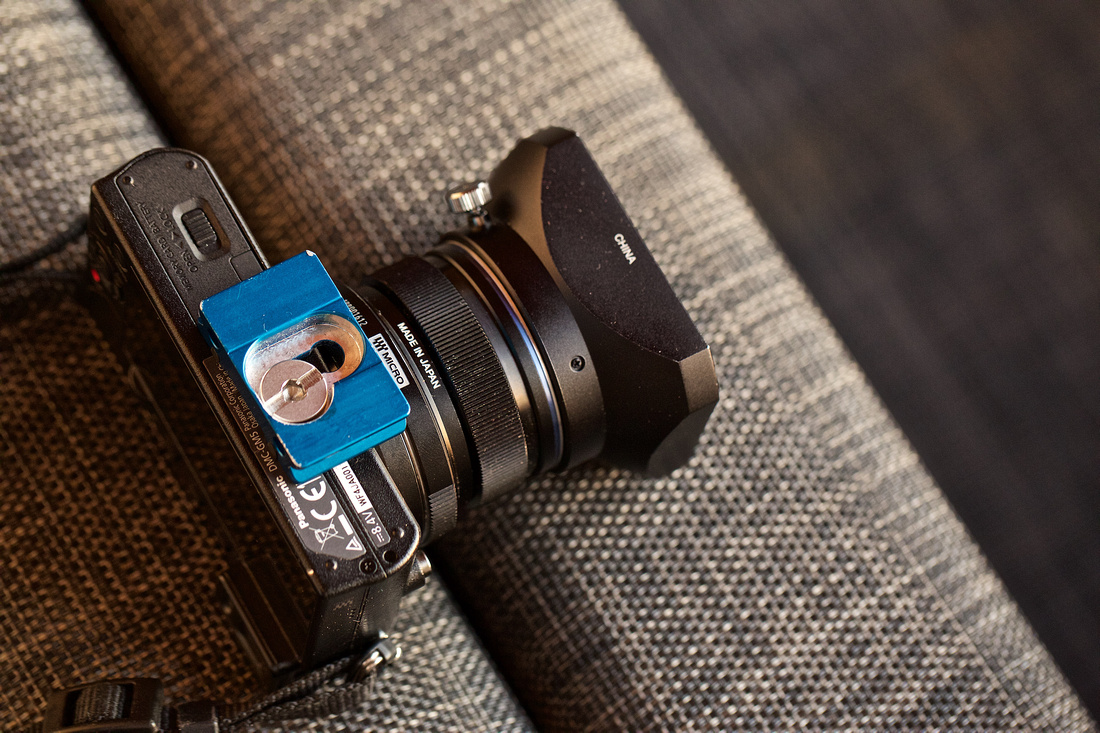
One little goodie: the adapted Q-Mount slim for the Lumix GM5.... It allows me to unload the SD-card without tooling and to change battery with a light opening of the screw. Maybe that I will elongate the hole for another 0,5mm and then it will work
Summary
This is the Novoflex Equipment for the larger Cameras:
- Classic Ball II
- VR System Pro II
For the small System
- Panorama Plate Q=48 (Today I would prefer the Q 6/8 II Model)
- 2 Q-Mount Quick Releases
- Plate with cross bubble level
- Compact sized L-Bracket
For me both systems are working fine. It is great to have a small system for the little cameras - and the results I can achieve with the the small one are remarkable: 2 excamples as motivation at the end:
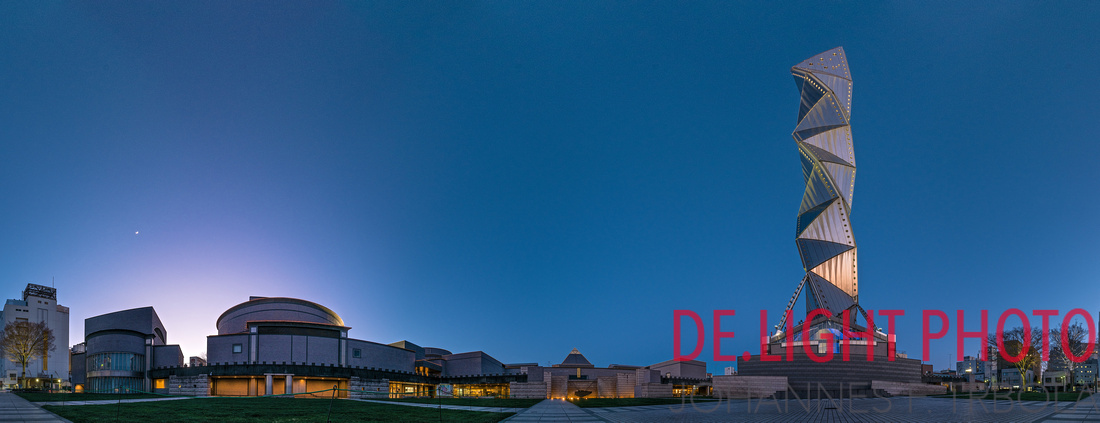 This is a 360ºPanorama of the Mito Art Museum in Japan shot with the Lumix GM5 and the Panasonic f 4.0 7-14mm
This is a 360ºPanorama of the Mito Art Museum in Japan shot with the Lumix GM5 and the Panasonic f 4.0 7-14mm

This photo was taken in Baiso, Italy. There are 2 remarkable things on this photo.
- the glow worms on the lower left corner
- A very nice farm http://www.laborgaccia.it where i stayed over night on the lower right side -were you see the light.
If you have any remarks or necessary updates: please let me know.
]]>But if you own quite a bit of gear the selection becomes important: Which zooms and which primes to carry. F.I. for Safari it was pretty clear: 17-40/24-105/100-400 + 1.4 Extender and additionally the fast primes (2.0/35; 1.4/50; 1.4/85) were in my huge Lowe Pro Trekker 650 was to be used. But this is tricky, it is a bit above the carry on luggage rules of the airlines, and it is very hard to carry...
RecentlyI tried an other solution. On my US-Trip in February 2015 I choosed for the first time another line up: I decided to carry both bodies with me and using the crop factor of the body to minimize the amount of glass. Here the Idea:
- 14mm f2.8 on 5D3 (Samyang) this lens becomes:
- 21mm f2.8 on 7D2
- 35mm f2.0 IS on 5D3 (Canon EF) this lens becomes
- 56mm f2.0 on 7D2
- 85mm f1.4 on 5D3 (Sigma) this lens becomes
- 136mm f1.4 on 7D2
- and a 100-300 Zoom for µ43 which becomes a 200-600 Zoom as well as a 45mm macro lens
If you have the 35mm on the 5D3 and the 85mm on the 7D2: This is considered as a perfect combo, an many famous photographers say, not more is needed....
This works out fine with one exception: the µ43 Lumix GM5 is definetely no comparison to a 7D2 shooting birds in flight or surfers in the waves.
For the next US trip in May 2015 I decided to optimize the gear - in different ways:
1. I replaced the 85mm Sigma with the Canon 100mm f2.8 IS L Lens: The performance of this lens is clear better than the Sigma in the precison of autofocus as well as in sharpness and lens flare.. (I am pretty disappointed about the Sigma - and I am dreaming of a Zeiss Otus....).
2. I added 2 Zooms to the gear list:
- 16-35mm f4.0 IS-L
- 28-300mm f3.5-5.6 IS-L
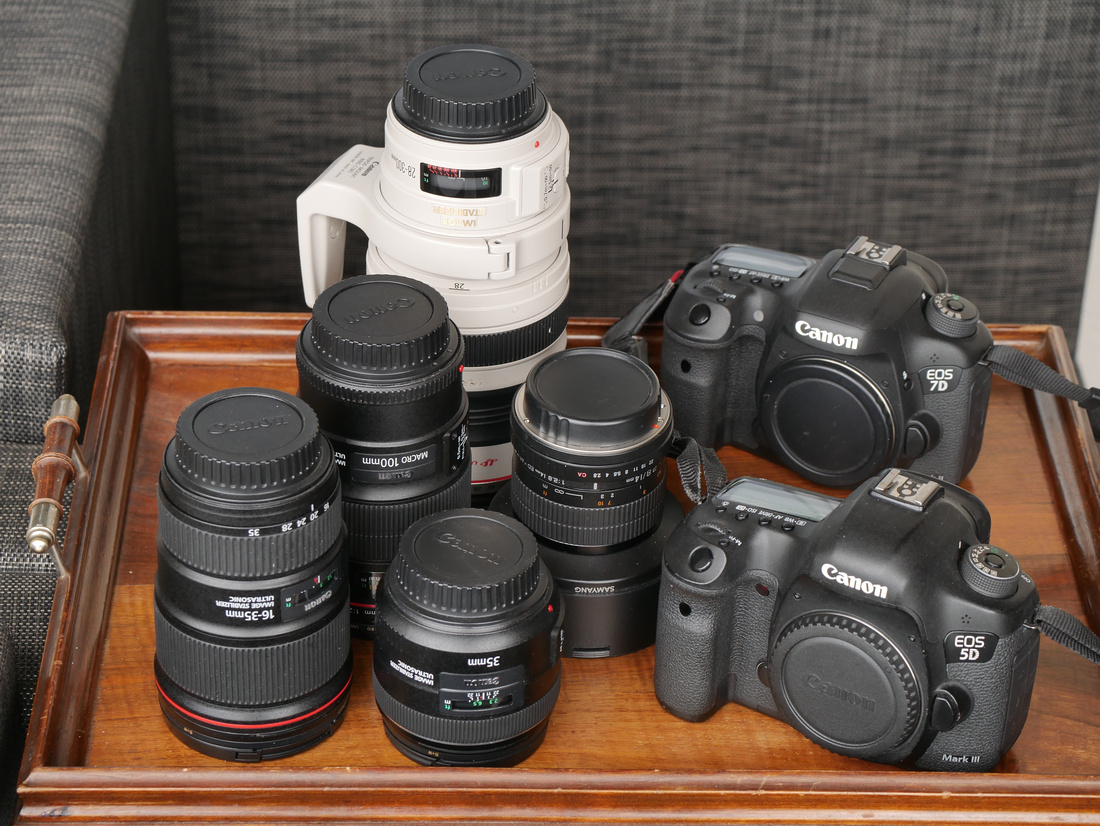
With this gear you can cover more than 90% of all tasks in an amazing quality...
For this gear I grabbed the Lowe Pro Flipside Sport to my gear.. Ok I had some more stuff with me like a light meter, a filter set with ND- and graduated ND-Filters etc.
The good thing: I can carry both cameras mounted with the lens...
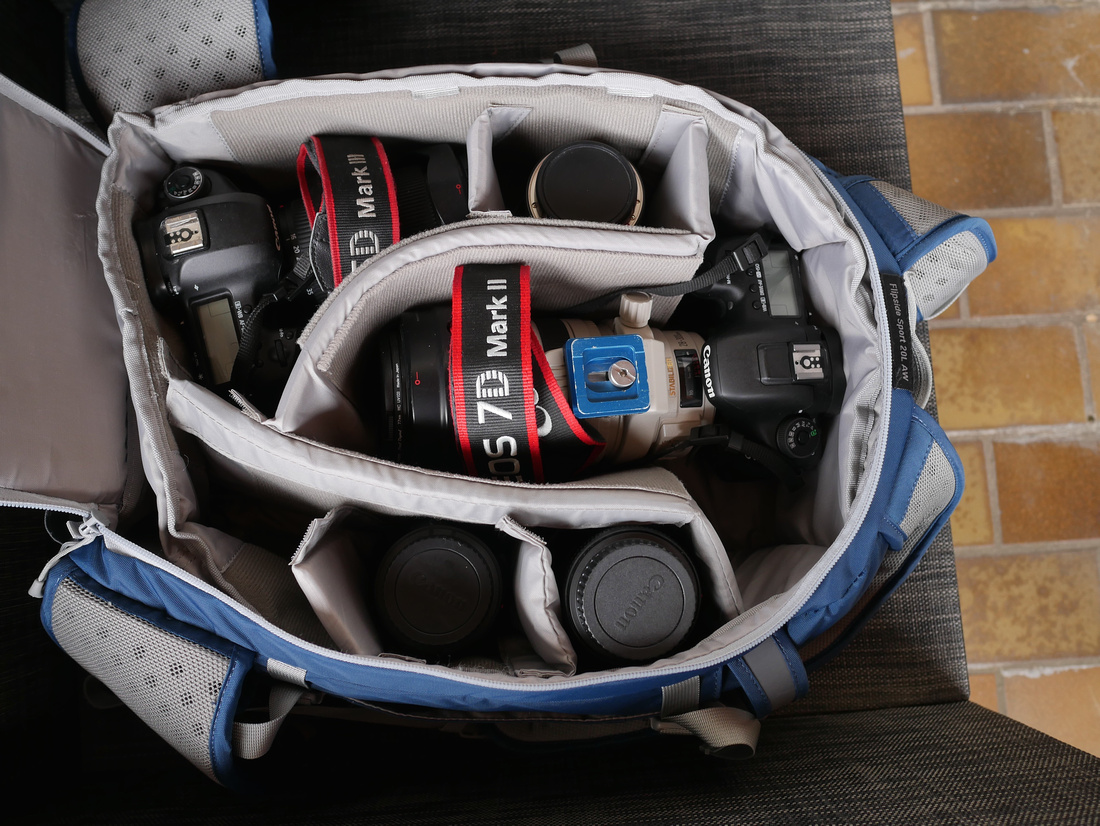
And one photo from the really world... shot in the Mariposa grove.

In addition the camera gear I carried my Manfrotto Tripod with the Novoflex Panoramahead I could make nearly everything in very high quality...
Amazingly: With the 28-300 I shot all beach photos in LA... http://delightphoto.zenfolio.com/p534415731
]]>Herr shop is funny with a lot of buddhas standing around and some fairly good photos - mostly shot from friends... like me...
Last Saturday the whole family had a stop in her shop, and I had my camera with me - the big one...
The speed in the work of a hairdresser is amazing.. You can see it, you can hear it....
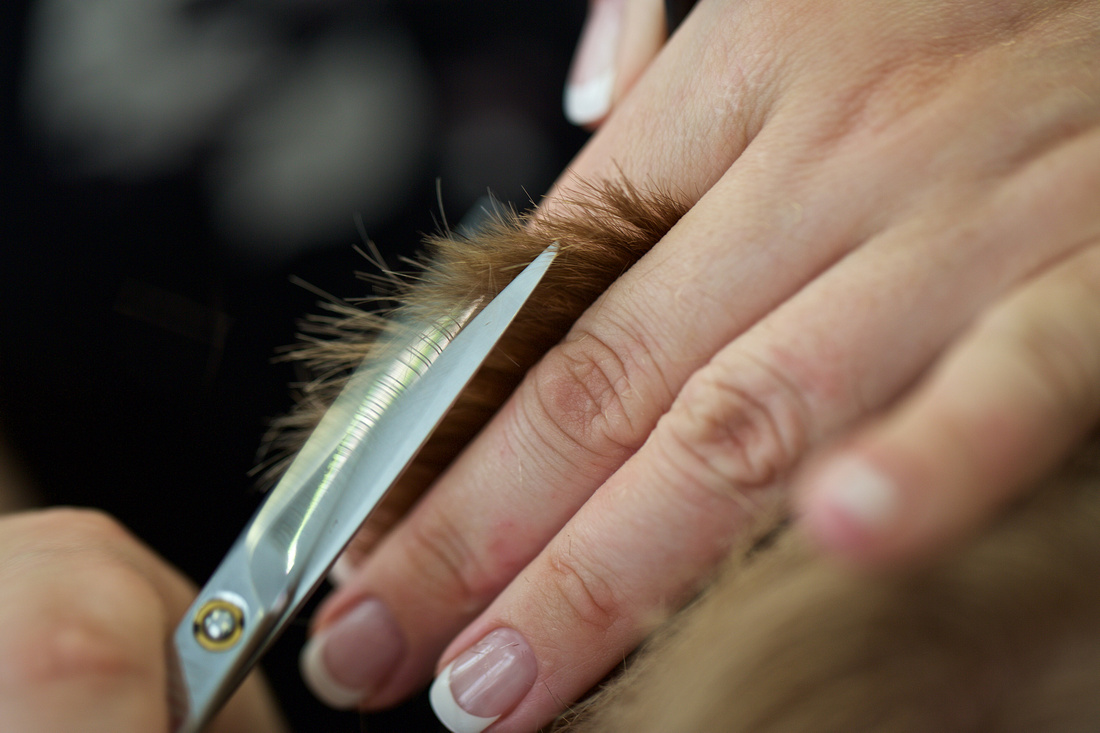
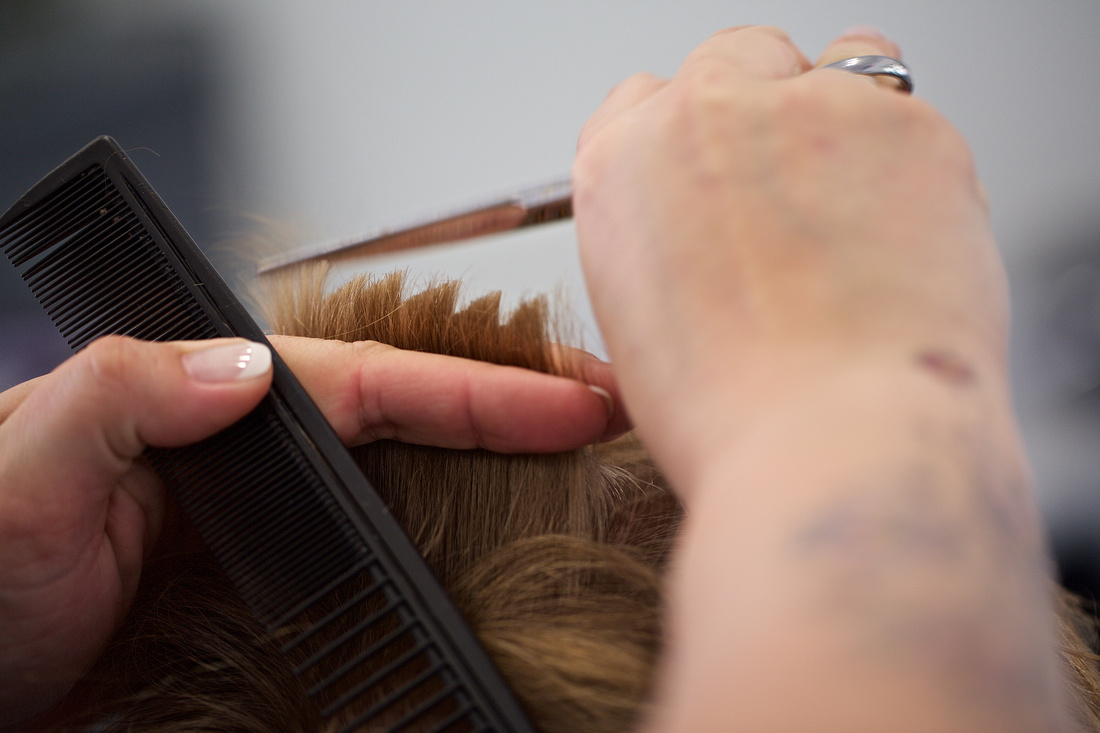
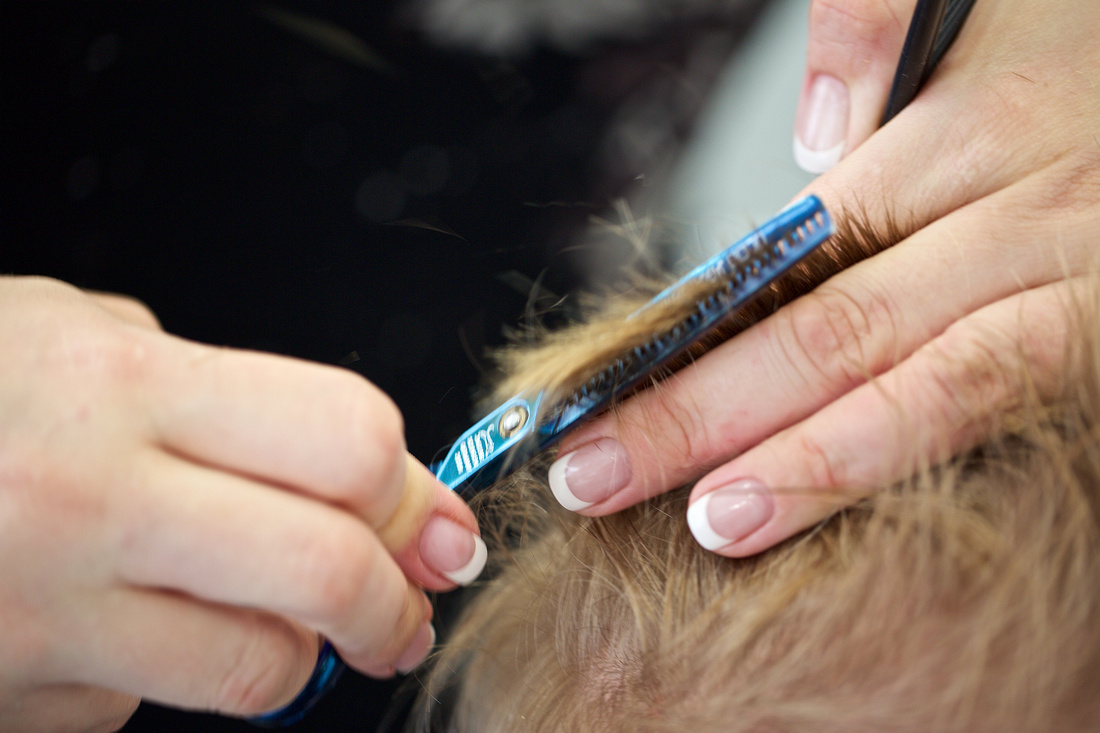
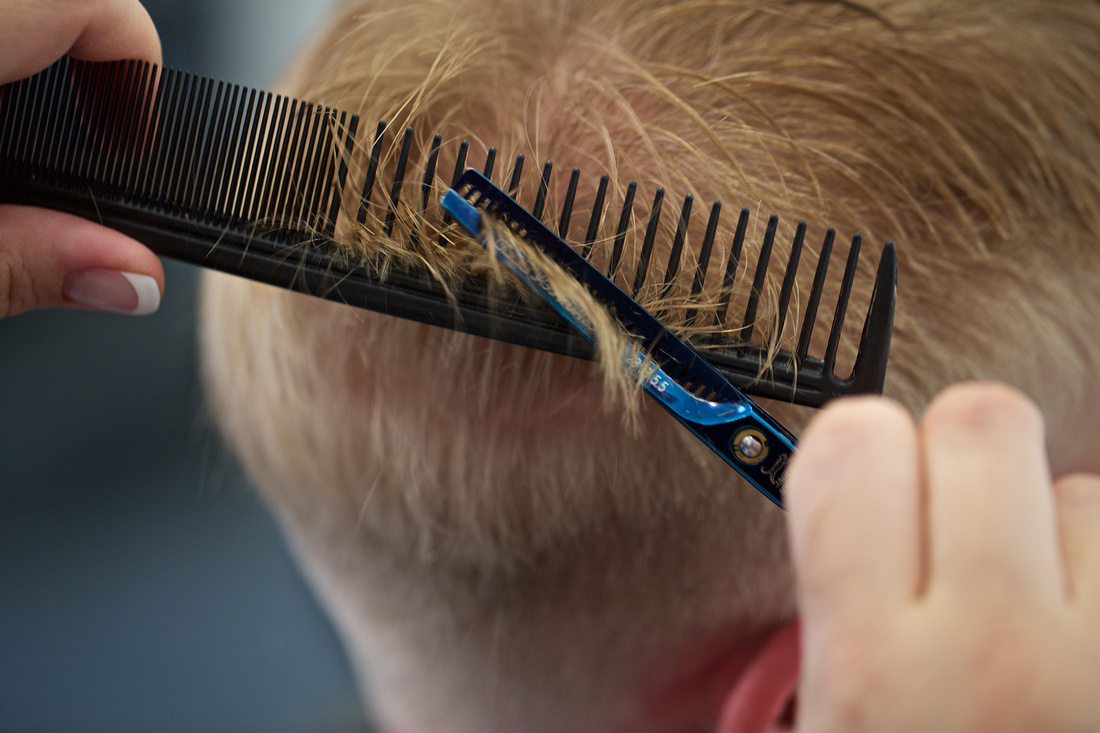
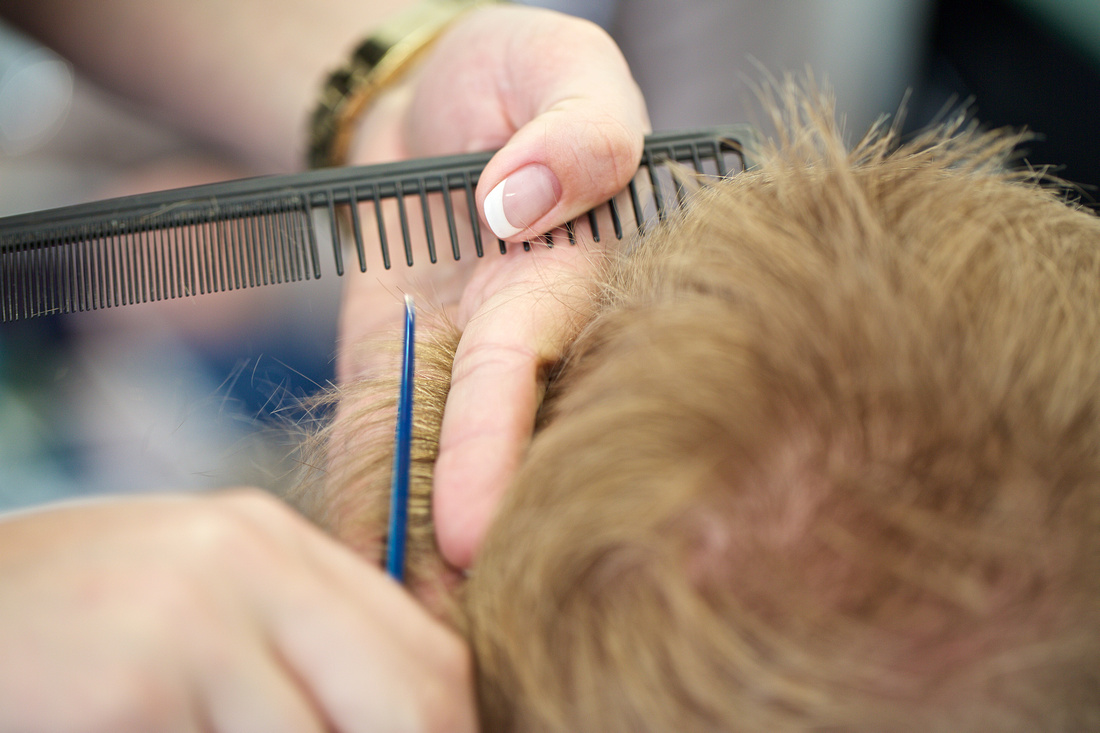
On the other side there are a lot of tiny little things in the shop which I like very much..
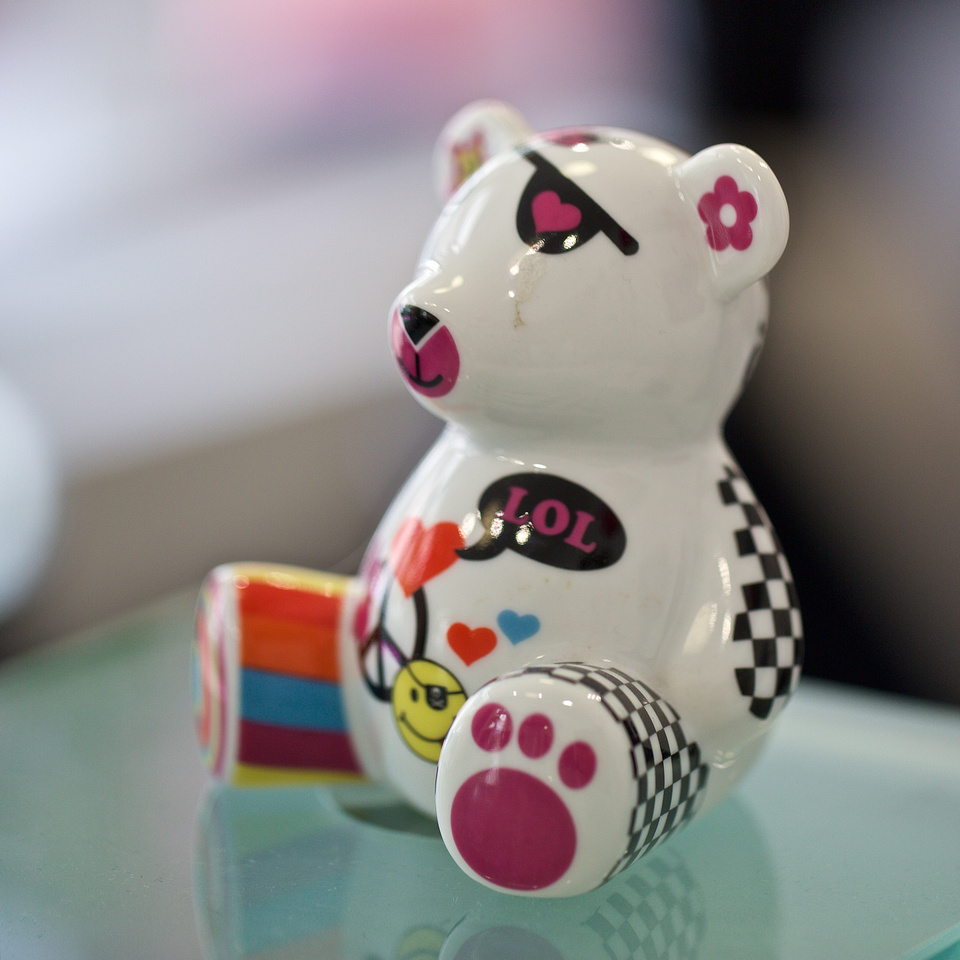
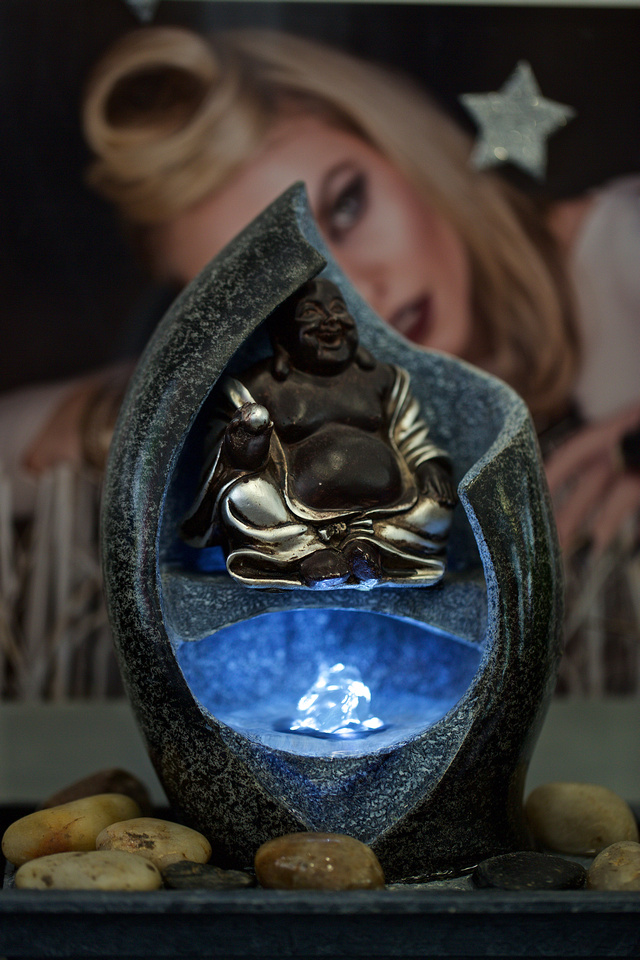
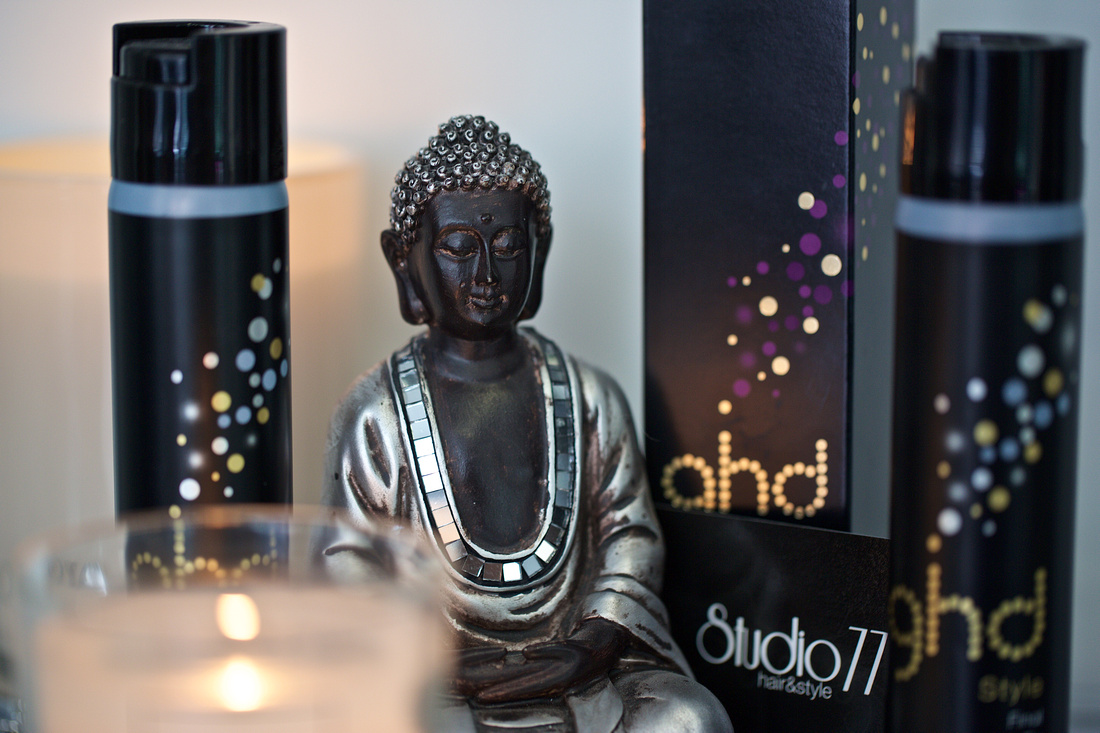
The whole session was shot with one Lens on the Camera: The phantastic Canon EF f2.8 100mm L IS USM on the ESO 5dMkIII
]]>I started that in my office - because my office has a perfect view on Stuttgart.... I do have a special album here on my Website: http://delightphoto.zenfolio.com/p94149370

But let´s start step by step. The first learnings I had was: In San Francisco at Golden Gate at the Northside of the bridge. A panorama with the bridge on the left side and the open ocean on the right side... The problem I faced: I will need HDR. One year later: same procedure, but the failure: no RAW-files, only jpg: In the stitched Pano: artifacts... Again one year later (2014) I was a bit quick because I was late and did not adjust the Pano-Head correctly - and the sky came out a bit cloudy....

The 2013 Panorama with the blown out sky and the artifacts in the orange part of the colors in the sky
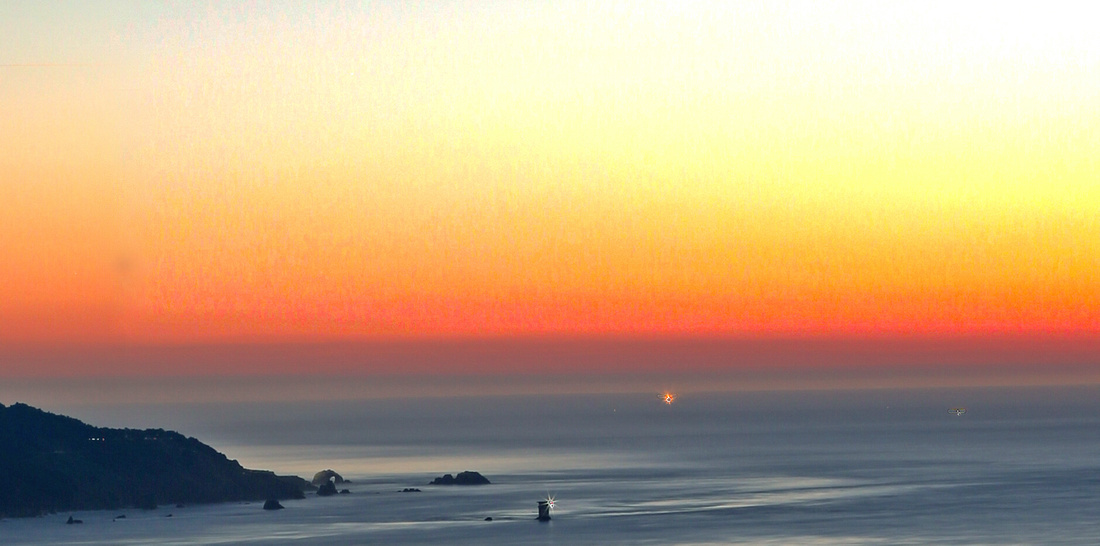
For what I love these kind of Panoramas is the amount of Detail you have in these huge files.. typically such a panorama has 100 Megapixel and more... Therefore you can zoom in a lot...
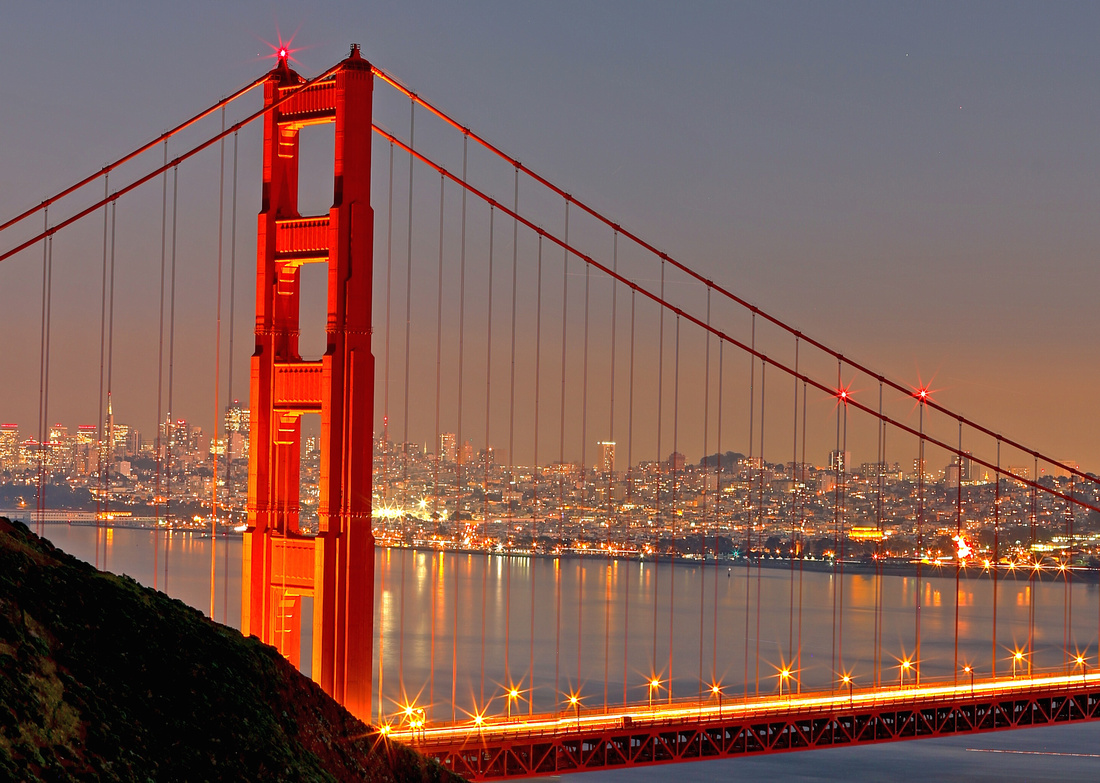
To do these Pano´s it is really tricky: I had to upgrade my gear continuously to become better and better. What helps definitely is the Nodal Point Pano head from Novoflex... I use http://www.novoflex.com/en/products/panorama-photography/panorama-vr-system-pro-ii/ but mounted on the Classic Ball II http://www.novoflex.com/en/products/camera-support-systems/ball-heads/classicball-5-ii/ - equipped with water levels...
With this new equipment stitching became much easier.
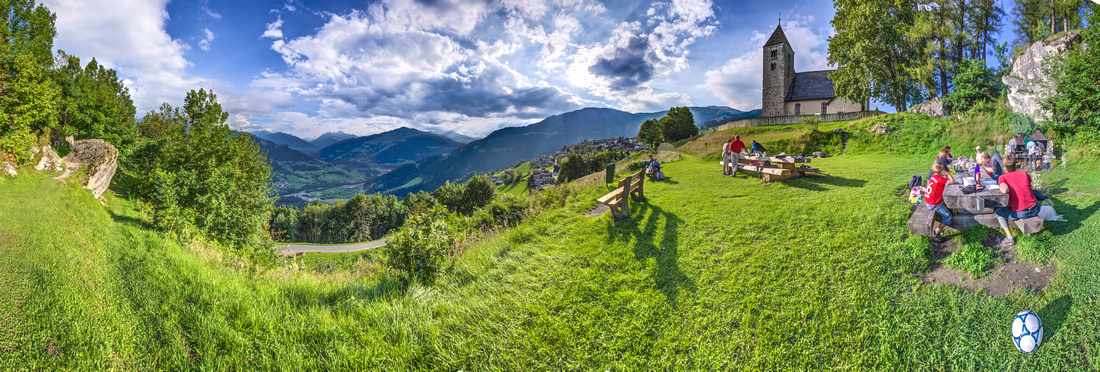
This first Panorama was taken in Falera, Switzerland. The viewing angle is ca 320º. Making these kind of Panorama´s Ghosting can get an issue, especially when people are moving...
Meanwhile I found out that I had to change the workflow to achieve the best results
- Taking the images with the HDR function of the 5DMkIII
- Developing tha RAW-Files with Camera Raw using the standard values of Adobe - And to set the White Balance from Auto or "As taken" f.i. to daylight.
- Opening each set of photos in HDR Efex Pro - and saving them as TIFF Files
- Stitching with PT Gui Pro (Making the HDR´s with Color Efex Pro gives much better results.)
- Again I safe them as 16 bit Tiffs. Sometimes I have to take care of the file size not to exceed 2 GB...
- Retouching the images typically in Aperture - but sometimes in Camera Raw and Photoshop.
I found this out shooting a building for a new website - my wifes Dental office by the way...
 It is a 180º shot (or a little bit more) I died a bit of retouching, especially the building it got a bit highlighted to give it more punch... one of the heaviest problems i faced is the ghosting. Maybe that HDR Efex pro has here some limitations against Photomatix....
It is a 180º shot (or a little bit more) I died a bit of retouching, especially the building it got a bit highlighted to give it more punch... one of the heaviest problems i faced is the ghosting. Maybe that HDR Efex pro has here some limitations against Photomatix....
One of the next images taken with this set up was in Laguna Beach on my US trip in February...

Again: the view angle was ca 320º. (the missing part was a trash... not nice and not necessary to have in the image. The road on the left sie ant the beach on the right side are parallel....
This year during my visit in San Francisco it became clear that I will not have the chance to got to Golden Gate. With this knowledge in mind I decided to use the impressive skyline at the Moscone Center for a shoot. In a conference break I took my iPhone and I spotted the places for the blue hour shots:


Later in the evening I did the real stuff...
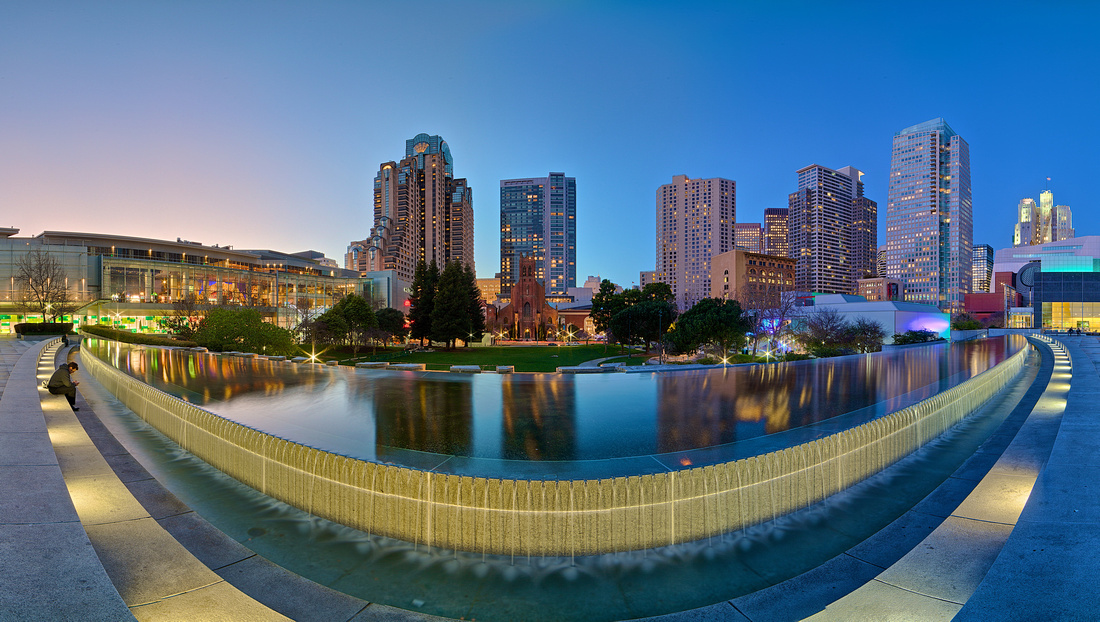
This first photo was made out of 6 photos with the 5D MarkIII and the Rokinon f2.8 14mm @ f8, ISO100 and 5/0,6/30s
 This first photo was made out of 12 photos with the 5D MarkIII and the Canon EF f2.0 35mm IS USM @ f8, ISO200 and 2,5/0,3/20s. The reason why I needed 12 images you can see in the iPhone-Photo below: I needed to adjust the camera in 2 vertical angles...
This first photo was made out of 12 photos with the 5D MarkIII and the Canon EF f2.0 35mm IS USM @ f8, ISO200 and 2,5/0,3/20s. The reason why I needed 12 images you can see in the iPhone-Photo below: I needed to adjust the camera in 2 vertical angles...
Whoever thinks you do not need High end stuff - the iPhone (Or any other smartphone) can do everything: here is the proof that you will need a high end DSLR for these kind of images...

This is the same shot with the iPhone...
After this experience I retouched my 2014 Panorama following my actual workflow - and the result was amazing - due to my taste...
 So fare my really best Golden Gate Panorama... Shot with the 5DMkII, Canon EF 1.4 50mm @ f8 ISO 100 and 5/0,6/30s...
So fare my really best Golden Gate Panorama... Shot with the 5DMkII, Canon EF 1.4 50mm @ f8 ISO 100 and 5/0,6/30s...
Sometimes I feel that it is hard to understand what an HDR Panorama really is. I tried this with my Facebook Banner:
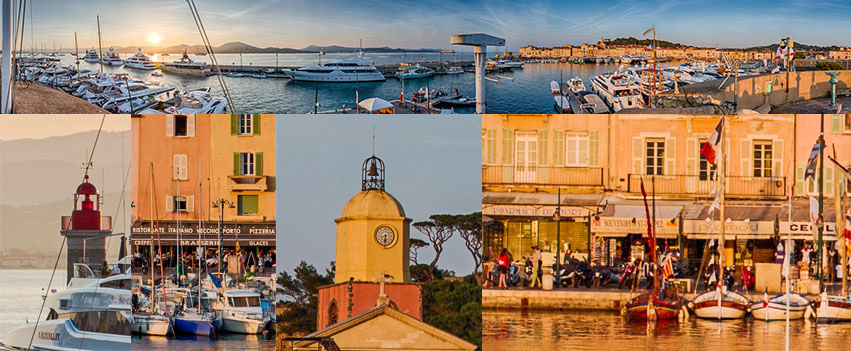
This image shows what is fascinating on these HD-HDR-Images: The angle of view and the amount of detail as well. Do you find the places from where the details are??
Special Tools for Panoramas
For shooting panoramas there is always an issue of parallax errors - to avoid this I do recommend dedicated panorama heads. My preference hier is the gear from Novoflex....
For stitching I use 2 ways to perform panoramas
- The quick way to use Adobe´s build in tools
- PTGUI pro - more information here.
The professional stitching software needs some more time but gives you more flexibility and versatility in the projections offered. If you want to do panoramas regularly and love to do it: its worse investing.
]]>Everybody is searching for image quality. Everybody wants to have the best possible image technically. But the better sensor is the bigger - due to many reasons. And one of those reasons comes from the physics: Camera sensors are photon counters.. And if one pixel is larger there are more photons to count... and as more photons are counted the distance to zero becomes larger. And as larger this level is as more informations an image can get. Very simple spoken.
But larger sensors have their drawbacks, too. And one of these drawback is the camera size. Camera size means weight to carry and bag size as well. But not only the camera became larger, the lenses too. A µ43-Equipment fits in each pocket... very simple. A full format camera will need a bag...
My question is: What will I loose when I carry the in little µ43-cameras with me instead of the FullFormat Monsters... So i decided to investigate the commons and the differences.
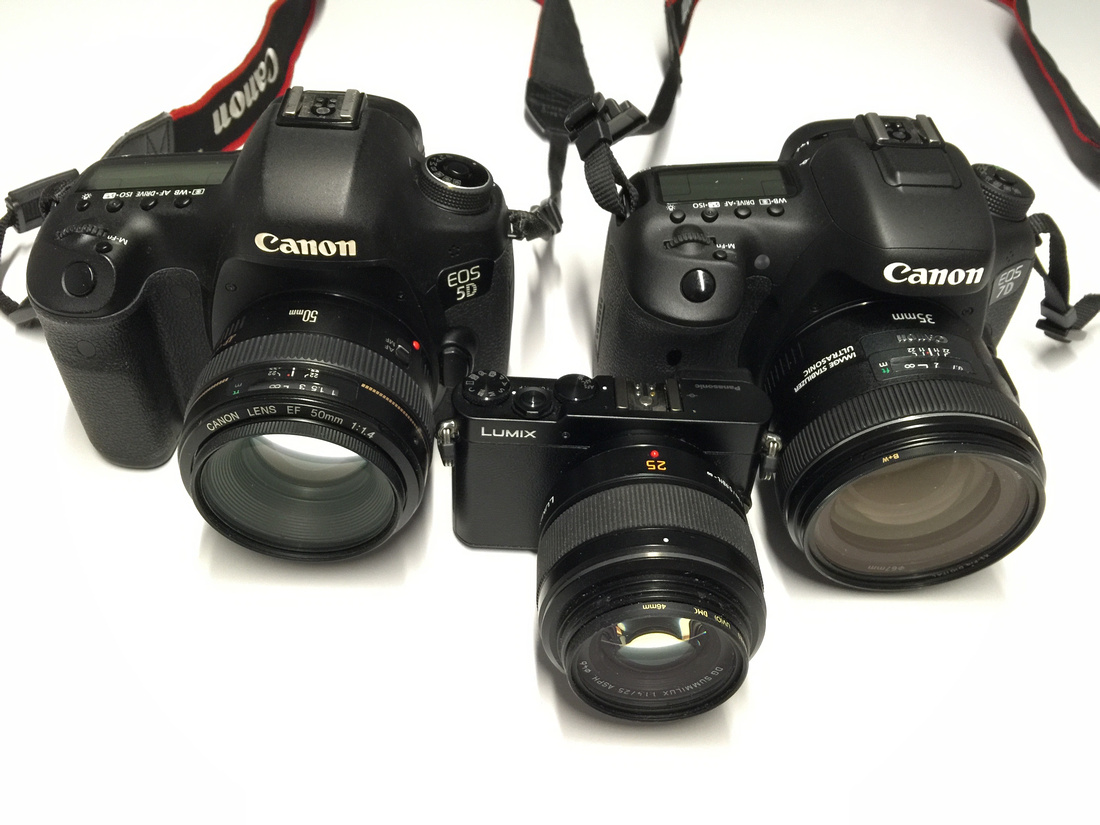
The basics behind the investigations
When I started writing my blog I compared the bokeh between full format and µ43 at the same settings: http://delightphoto.zenfolio.com/blog/2013/7/fullformat-vs-43-comparison-of-bokeh Here you could see that the depth of field is the clear differentiator...
Basically the comparison is characterized by the so called crop factor: This is the factor you have to multiply the actual focal length to get the full format equivalence.
- 50mm @ Full Format: Crop 1: 50mm@Fullformat
- 35mm @ APS-C Format: Crop 1.6: 56mm@Fullformat
- 25mm @ µ43: Crop 2: 50mm@Fullformat
But this is only half of the truth. The other factor to be considered is the depth of field. This is following the same factor. If I want to get comparable images I do have to multiply the aperture with the crop factor as well:
- f1.4 @ µ43: Crop 2: f2.8@Fullformat
- f2.0 @ APS-C Format: Crop 1.6: f3.2@Fullformat
- f2.8 @ Full Format: Crop 1: f2.8@Fullformat
If I want to get the same impression of a photo in terms of depth of field I will have to compare at comparable levels but in this case I will have to vary the ISO or the shutter speed:
| f | t | ISO | |
|---|---|---|---|
| FF | 2,8 | 1/25 | 400 |
| APS-C | 2.0 | 1/50 | 400 |
| µ43 | 1.4 | 1/100 | 400 |
When I look to the sensor performance data there should be a clear difference between the different cameras...
I follow here the systematic of DXO in Paris who perform comparisons of lenses and camera sensors in a very detailed way, based on scientific measurements:
http://www.dxomark.com/Lenses/Compare/Side-by-side/Canon-EF-35mm-F2-IS-USM-on-Canon-EOS-70D-versus-Panasonic-Leica-Summilux-DG-25mm-F14-on-Panasonic-Lumix-DMC-GM1-versus-EF50-mm-f-1.4-USM-on-Canon-EOS-5D-Mark-III___1086_895_450_920_196_795
But numbers are not everything...
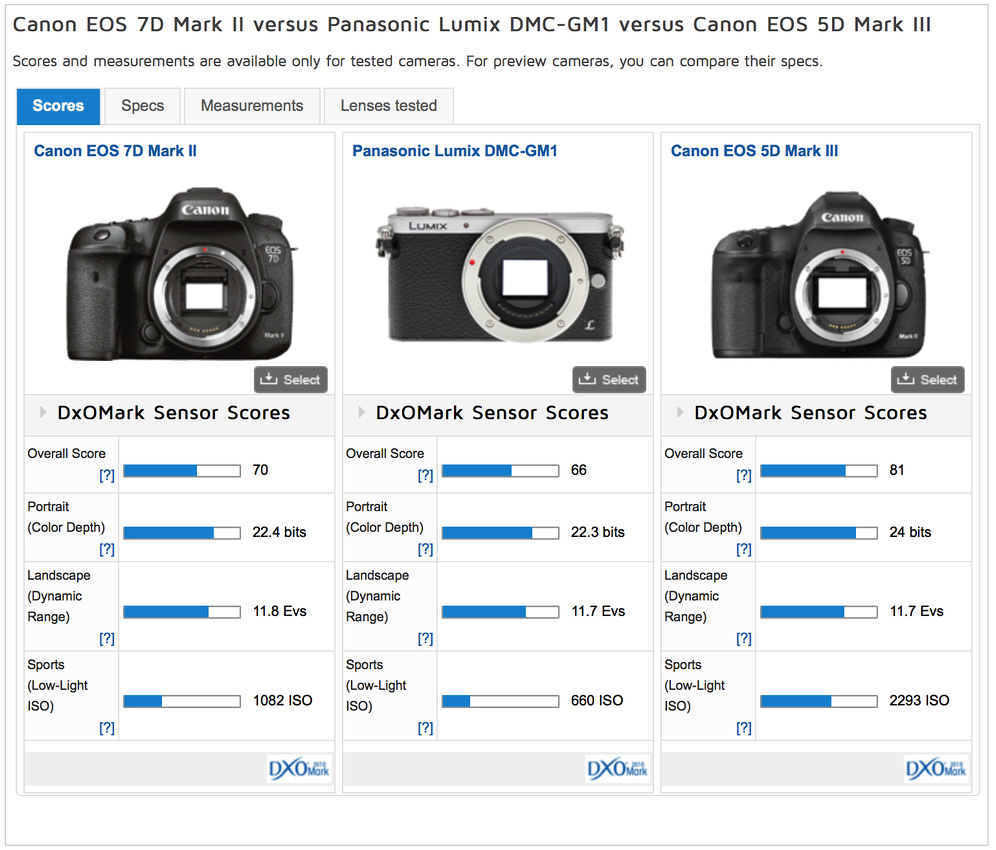
Evaluating the figures above you see: the sensor score between APS-C and µ43 is pretty close and the difference to FF quite big. The biggest impact you will see in the low light performance but in portrait and and especially landscape the dynamic range looks pretty much the same....
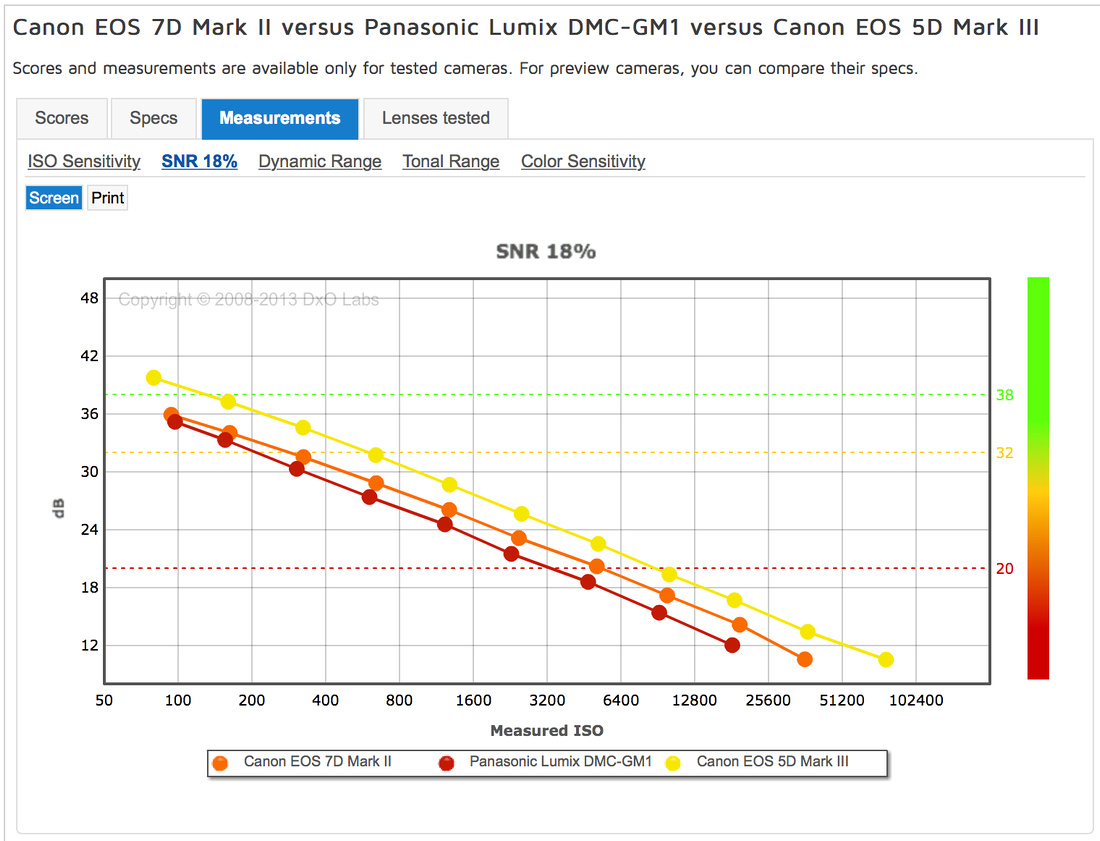
This graph shows signal to noise: A clear winner is the 5D2...
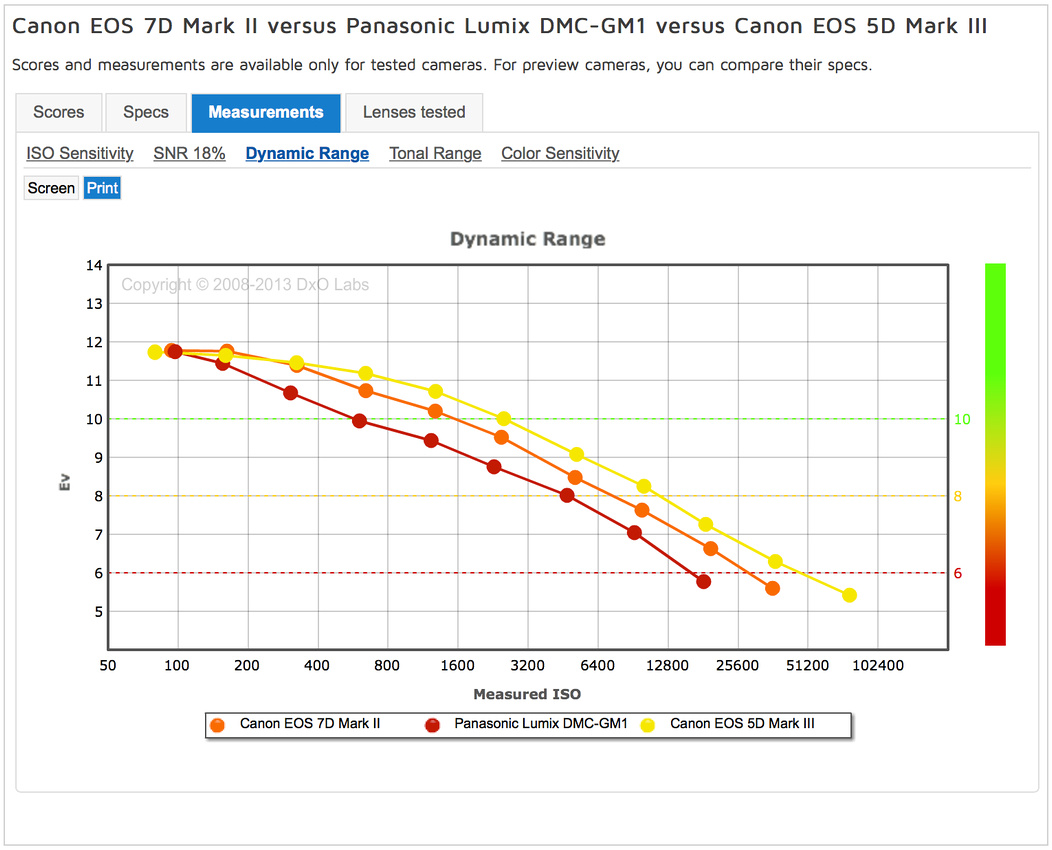
For the Dynamic range At low ISO-Values: all 3 cameras behave similar... The differentiation comes with the higher ISO´s.
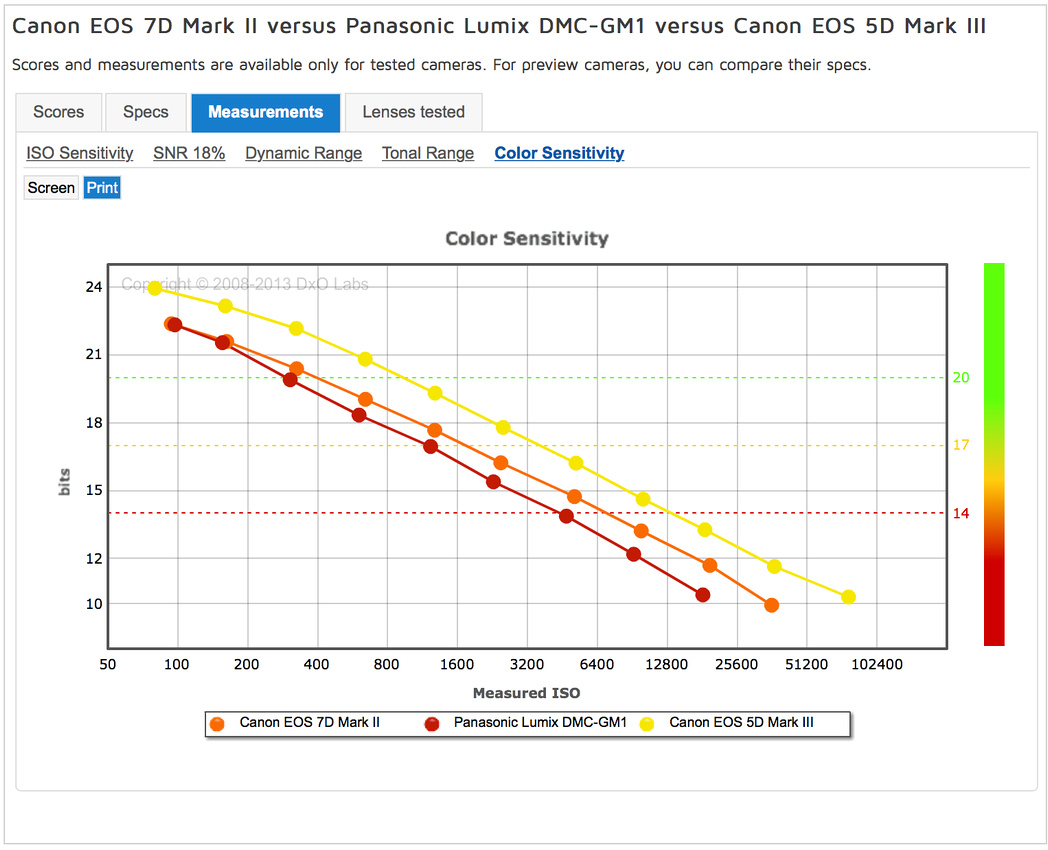
The color sensitivity shows a similar behavior for all cameras: a clear winner and to followers which are pretty close.
Testequipment
For the test shoots I have chosen the following set up:
- Full Format: Canon EOS 5DMkIII with the Canon EF 1.4/50mm USM
- APS-C: Canon EOS 7DMkII with the EF 2.0/35mm IS/USM
- µ43: Panasonic Lumix GM1 with the Leica Summilux 1.4/25mm
All lenses are excellent, good performers...
Also here are the performance datas available.

These are the scores of the used lenses with the used sensors,
The 7DMkII uses the same sensor like the 70D, therefore I chose the 70D data for the comparison. As a conclusion: there should be a big difference in sharpness and chromatic aberrations...
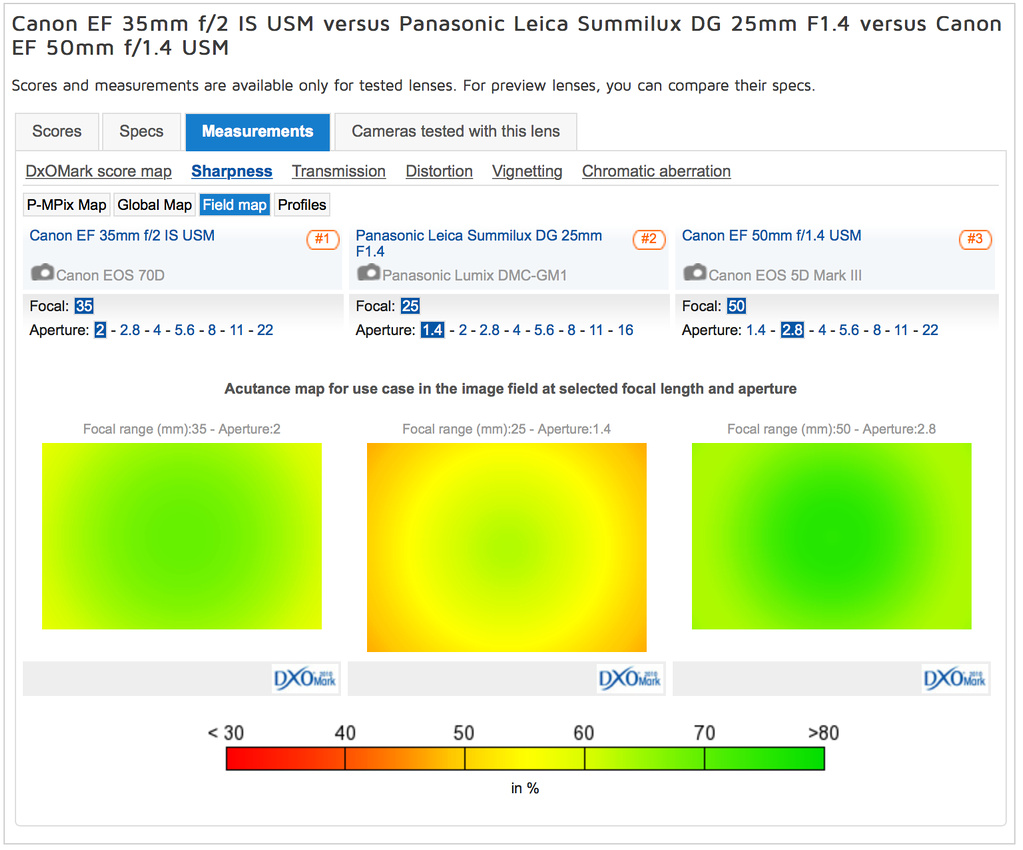
The difference in sharpness should be manifested in the outer regions -according to the figure above. The field map shows the used setup of the lenses: µ43 wide open, APS-C wide open and the FF @ 2.8.
Image Workflow:
- All images were captured in RAW.
- Iff possible there was a white balance adjustment on similar points in the image
- The Images were loaded in aperture.
- From Aperture the photos were converted into TIFF and opened in photoshop. (Automatic Handling)
- In Photoshop the images were combined to one image by copy and paste
- From Photoshop the images were exported as TIFF-Files
No further adjustments were done.
Real Images
But what does real images will show us???
All images are in the same order: The top shows the Full Format, In the middle You see APS-C and the bottom shows the µ43 image
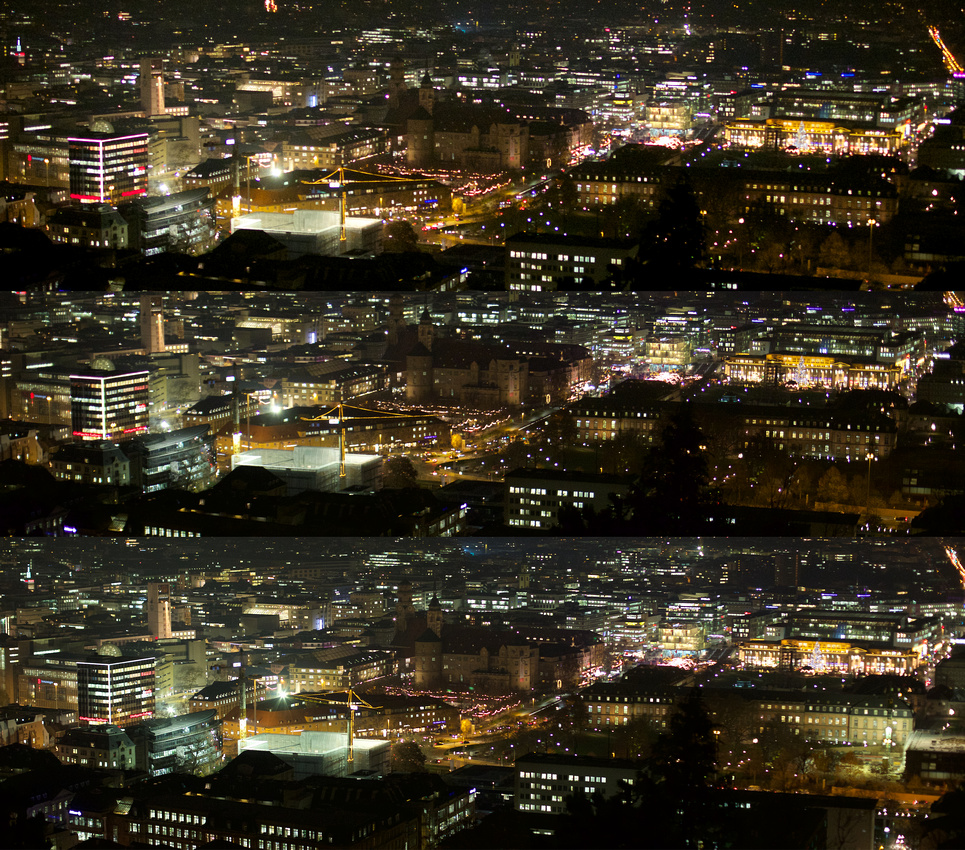
Handheld Nightshots, ISO 1600, wide open and 1/25s; 1/50s 1/100s
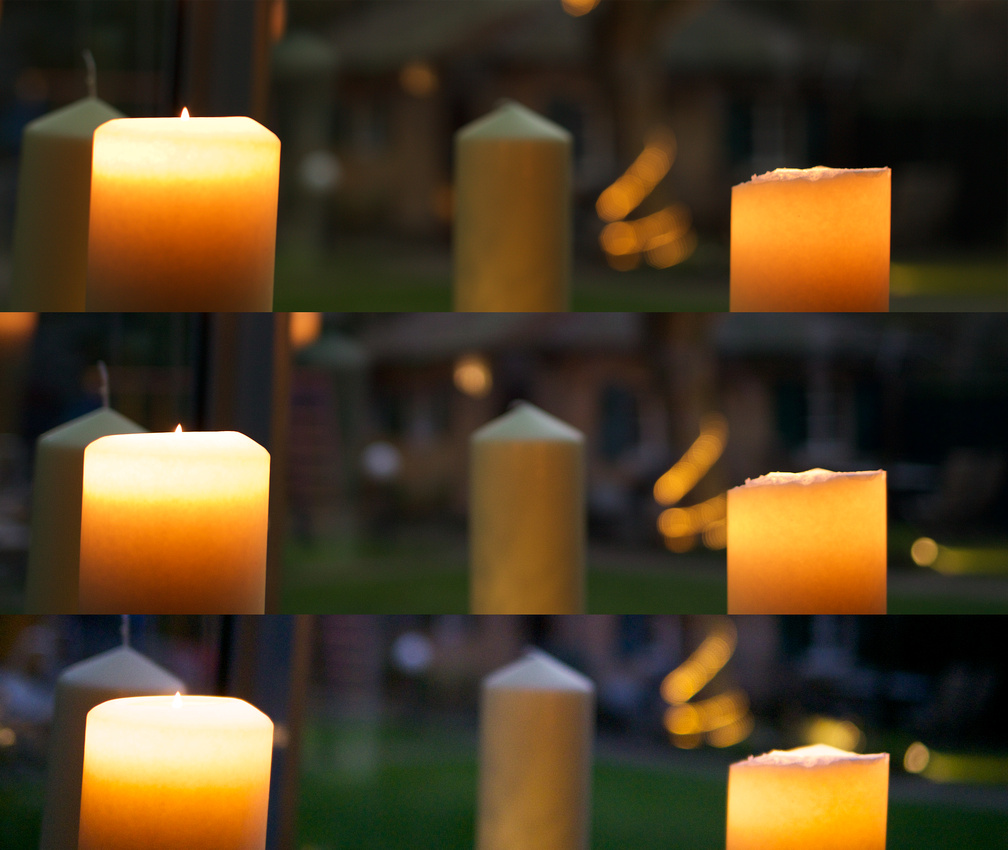
Handheld, ISO 400, wide open and 1/25s; 1/50s 1/100s

Handheld, ISO 200, wide open and 1/200s; 1/400s 1/800s
Do you see major differences? I cannot see it... Why not to choose µ43 generally? Yes, there are differences... and some can come out pretty ugly:
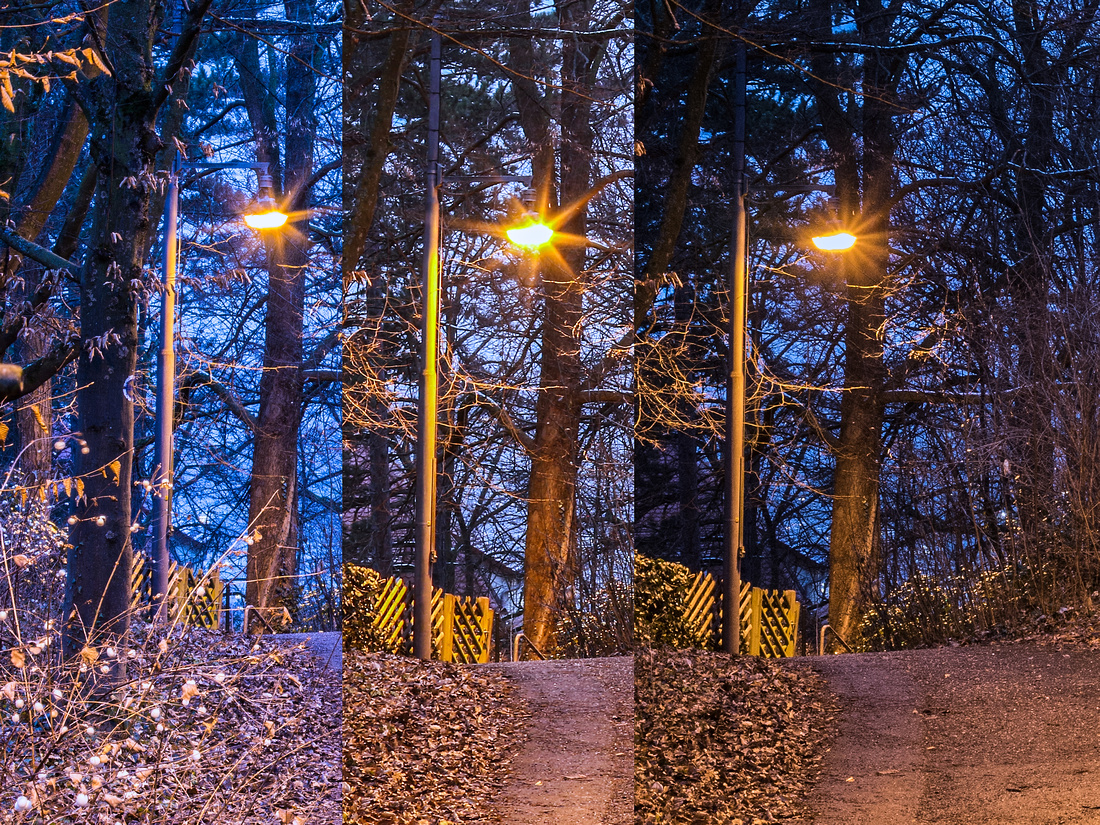
Shot on a tripod, FF/APS-C/µ43 with ISO 400 and f16/f11/f8.... What you see is some refraction patterns at the end of the rays. This is really improved against the first generation of µ43 cameras. What I mean: please look at the image below.
But what you can see as well: there is much more contrast much more information in the left image than in both images right of it - but they are close together...
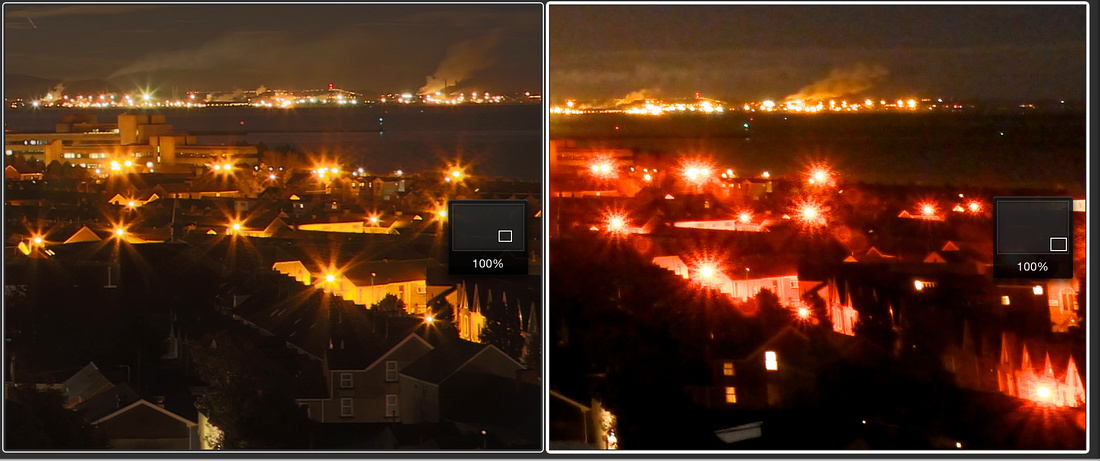
These photos were shot as JPG at a time i did not shoot RAW, somewhere in 2011. The left image was shot with the 5DMkII and the 28-300mmL from Canon while the right image was shot with a G% and the 14-140mm Mk1 from Panasonic.
Conclusio - if there is one..
First of all: in terms of measurements there are big differences between the different cameras and sensor formats. I will add some more images in the future to differentiate the cameras and sensor sizes.
- For a general use: µ43 gives you a great performance, especially if you take into account size and weight you want to carry...
- The APS-C format is something which is no fish no meat. It is somewhere in between. It is more on the µ43 side than on the full format.
- The Full Format gives you the best image quality - but you will get aware of it only under extreme conditions. But under these conditions the benefit will be great...
But this is only have of the truth. We can not compare sensors. We will have to compare lenses and cameras as well. And here comes some bigger differentiators. Handling, build in features speed etc. Just looking at image quality Full Format and m43 would be enough. But for me APS-C comes with the 7D´s. And the 7D´s are really great cameras: Very fast with a great autofocus. I never used my µ43 cameras for sports. I do not have the confidence in the autofocus and the level of control I have shooting with the DSLR´s...
What camera I recommend?
- 7DMkII: Without doubt: the best camera I know for sports and wildlife. No compromise on speed and accuracy
- 5DMkIII: The best low light performer. If you know that you will have to shoot in the dark: The best I know.. (Or generally spoken: take Full Format. I know that Sony´s A7s is even better in low light). And a very good studio camera as well... And you can use it for sports and wildlife, too...
- µ43: You want to have the image quality of a standard DSLR but you do not want to carry it: Here is your solution. For I would say 90% of the "normal"photographic stuff µ43 is more than enough. And they are very well equipped with tons of features like remote control from iPhone or iPad, build in time lapse etc... The µ43s are the solution if you want to make great images everywhere at anytime and nobody should realize that you are carrying a great camera with you.
]]>
Tons of articles have been written about µ43. The GH4 became a remarkable player in the professional world, especially on the video side. µ43 is not only the format for the professionals and semi professionals. In 2014 (or late 2013) Panasonic introduces the GM1. This little beast has turned photography a lot: a point and shoot camera size combined with the image quality of µ43 - and access to all the tiny little -in size - and great -in optical quality- lenses. End of 2014 Panasonic introduced the upgrade of this camera body: The GM5....
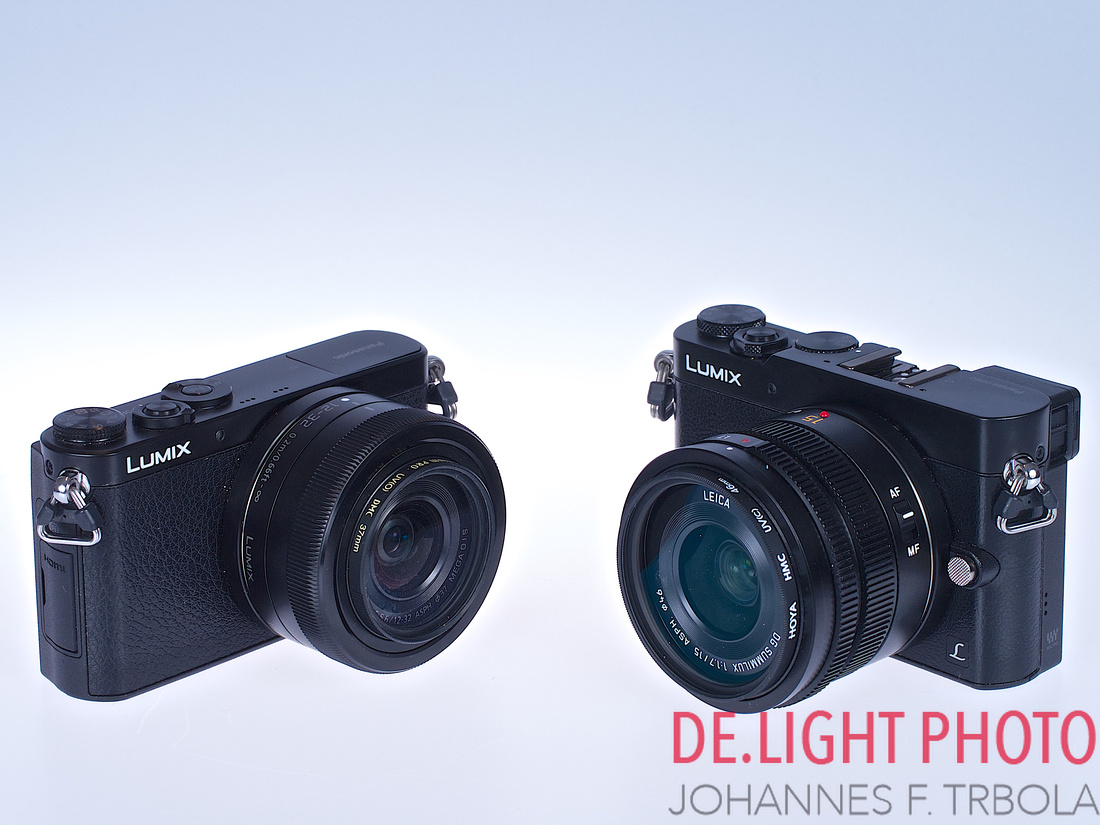
I got my GM5 with the Leica branded Summilux 1.7 15mm having the 12-32mm Kit lens on the GM1. This lens is a hard competitor against the iPhone.....
Camera Designs
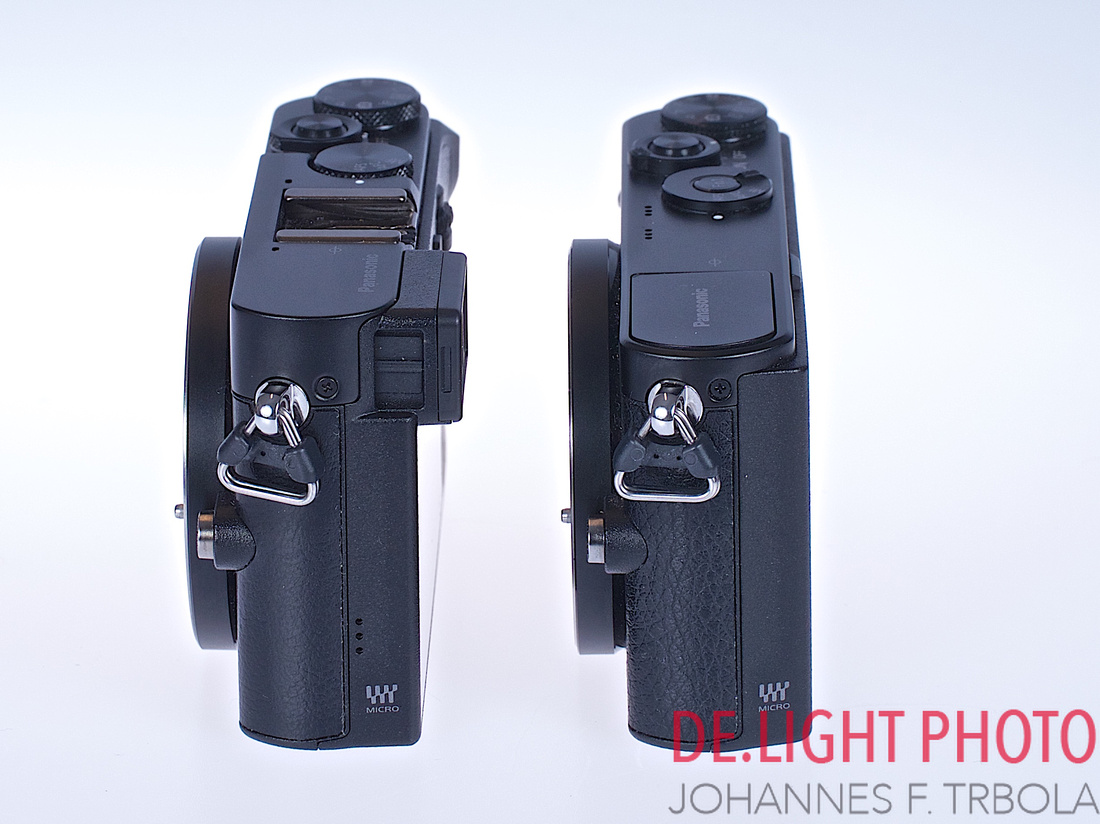
Sidewise both cameras are more or less the same. The GM5 is 3 mm higher - and it is a bit deeper. The main reason why it is deeper: The electronic Viewfinder - and a little nose on the upper right side which gives you a better grip.

This photo shows that main differences between both cameras: the layout on the back and on the top. Due to my experience there are big improvements
- External Flash Hot Shoe
- Electronic View Finder
- A wheel for the different adjustments...
- 3 more programmable function buttons
But: There is no build in flash anymore...
Clear Advantage of the GM5: No Clickwheel
One Problem I faced with the GM1 came from the click-wheel: when you started to change something, f.i. aperture or shutter speed - you suddenly changed the white balance or ISO etc... This click wheel disappeared. The solution now is similar to the G6: the new wheel has a push function: If you want to change shutter speed and aperture: it is the same wheel and if you push the wheel than you change one parameter against the other..
GM5: Off Camera Flash
With the flash hot shoe I can use the camera as a studio camera as well - which was not the case before. In all cases I had chosen to go with µ43 I had to carry the G6 with me, when I knew I had to go with the flashes....
In comparison to the G6 and the GH Cameras there is one specialty or disadvantage of the GM5: the flash sync speed is limited to 1/50 s. As soon as the flash goes on the max speed you can choose is 1/50s. fully automatically. With no chance to change this... I hope that Panasonic will fix this in the future...
I like to work with the Yongnuo flashes. above you see the YN560-TX controller. With this controller you are able to control the YN560 EXIII flashes without any additional trigger, just from the camera. The YN560 EXIII has a build in radio trigger that you will not need any further device... really handy - and very cheap: the flash costs just 60€ and the controller 35€...
GM5: Electronic Viewfinder
Basically The EVF of the GM5 is working similar to the EVF in the G6 working... but with a little bit less resolution: 1.16k@ the GM5 vs 1.44@ the G6. You can decide how you want to use it. per default a sensor detects when you approach the EVF and switchesw to the EVF. This shows exactly the same content like the screen on the camera rear side.
I do not use it very often, but especially in very bright conditions like in the snow it really helpy a lot - in such situation one of the big steps against the GM1
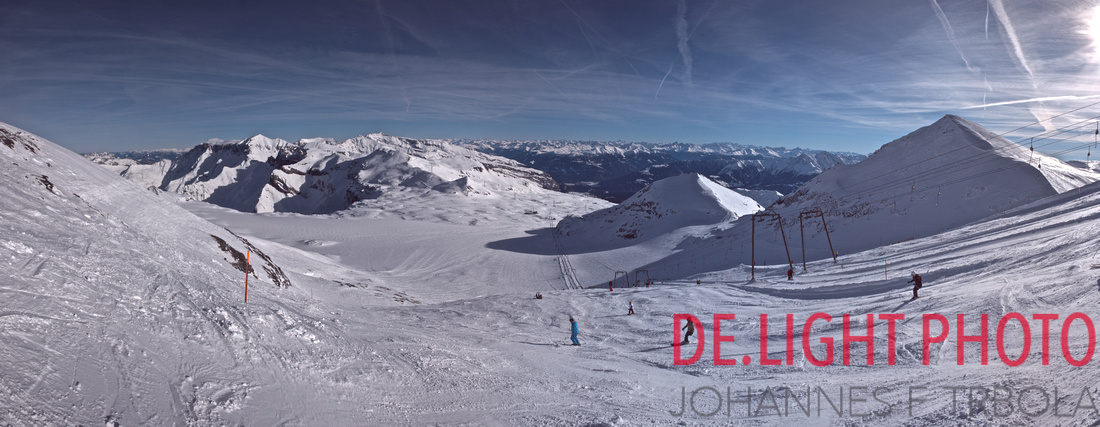
This panorama shot with the GM5 and the Summilux f1.7/15mm was shot with the EVF: It was too bright to see anything on the screen but with the EVF it worked fine for me.
Shooting Experience
The Lumix GM Series is an all time with you camera. It is tiny and you can get really great lenses for it. I love the prime lenses because the deliver a great image quality even if you should with completely open aperture. Doing so the images are looking a bit like being shot with a much bigger camera....
The images of the stones from the alps are shot with the 45mm f 2.8 Leica Macro lens.
Images from the snow...
Summary
The Lumix GM5 is a step further making this tiny little cameras the all time with you camera. For me it is the ultimative point and shoot camera Killer.
The LUMIX GM1 is a universal and versatile tool. Improving image quality and delivering great lenses the room for DSLR´s is getting much smaller...
Remark
The photos of GM5 and GM1 were shot with the Lumix G6 and the Elmarit f2.8 45mm. The flashes were Yongnuo 56o Ex III the shown Yongnuo controller - but for the shot with the controller I used the Yongnuo 603RF transmitter...
]]>

But! There is always a but: I could not access the high speed sync... not with the stuff I am using... Therefore over the time I added flash triggers. First from Calumet, than from Bowens (they came with the kits) and later from Yongnuo...
When I realized that I had do add special stuff to be able to access this area of photography I realized: I have to add some special stuff: so what I use know for TTL is the following set up:
- Canon EOS Camera (preferable 5D MarkIII or 7D MarkII
- Yongnuo YN-622C-TX Transmitter on the Camera
- Flash:
- Yongnuo YN-622C Transmitter
- Yongnuo Speedlite YN568EXII
- I have 2 of these sets
- or
- Yongnuo YN-622C Transmitter
- Canon Speedlite 430 EXII
Just to imagine the invest: A Canon Speedlite 600 Rt costs ca 600€ and the 2 Yongnuo´s incl. the 2 triggers with the controller: just a bit above 300...

this is my set up for all shot, The Remote Control works on all Canon EOS Cameras I use.
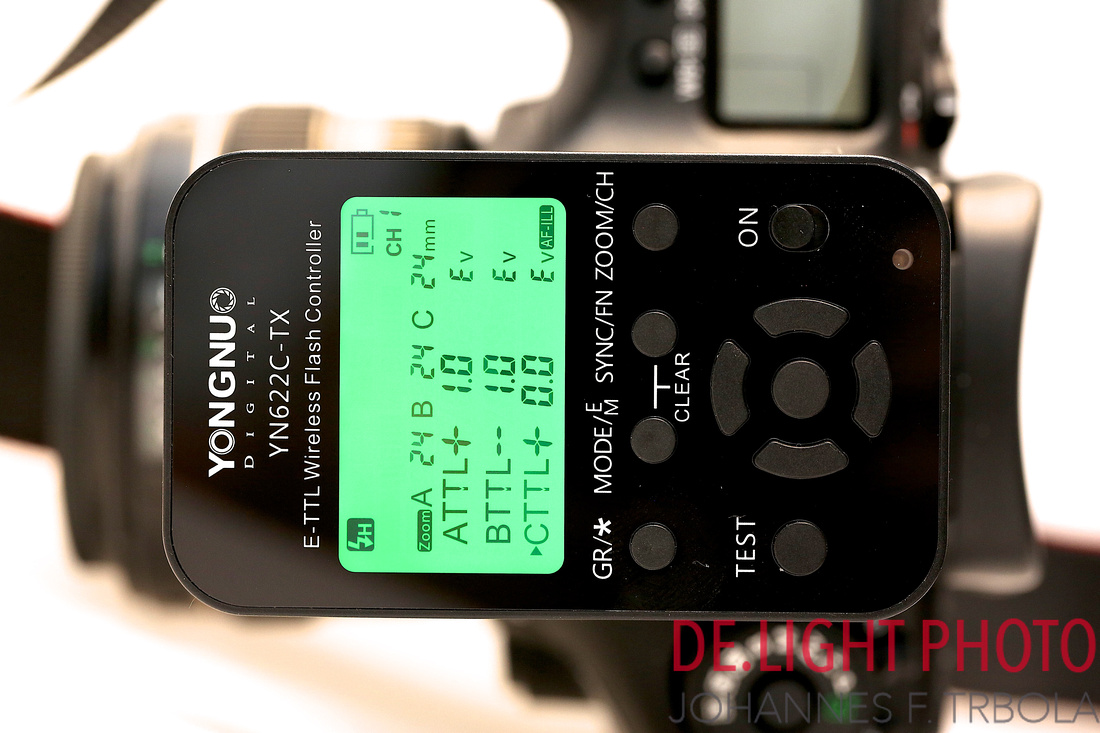
The very Comfy Controller.....For me: no manual needed (Mostly...) How is it working? Easy!!!
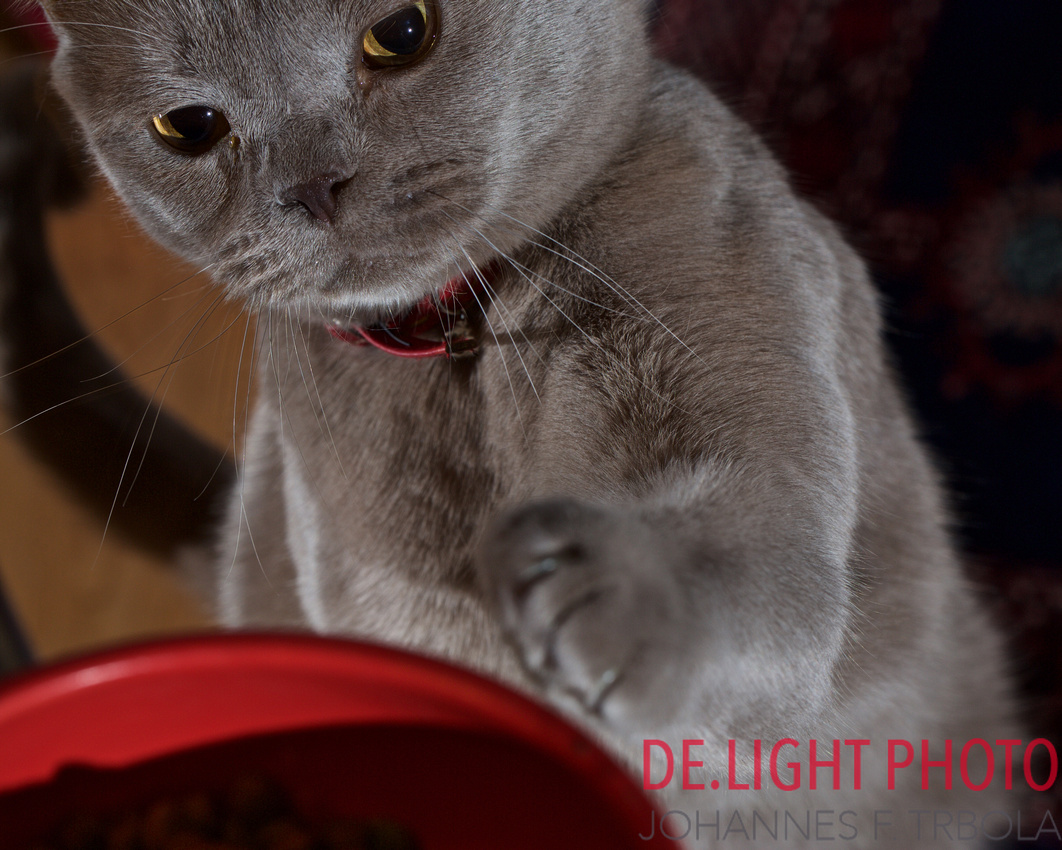
First Experience: Shooting while feeding our cat.... The flashes where put on the ground, in the left hand the food and in the right hand the camera.. Preset on manual: f10, ISO 200, 1/10s with the EOS 5DMkIII and the EF 100 f/2.8L Macro IS...
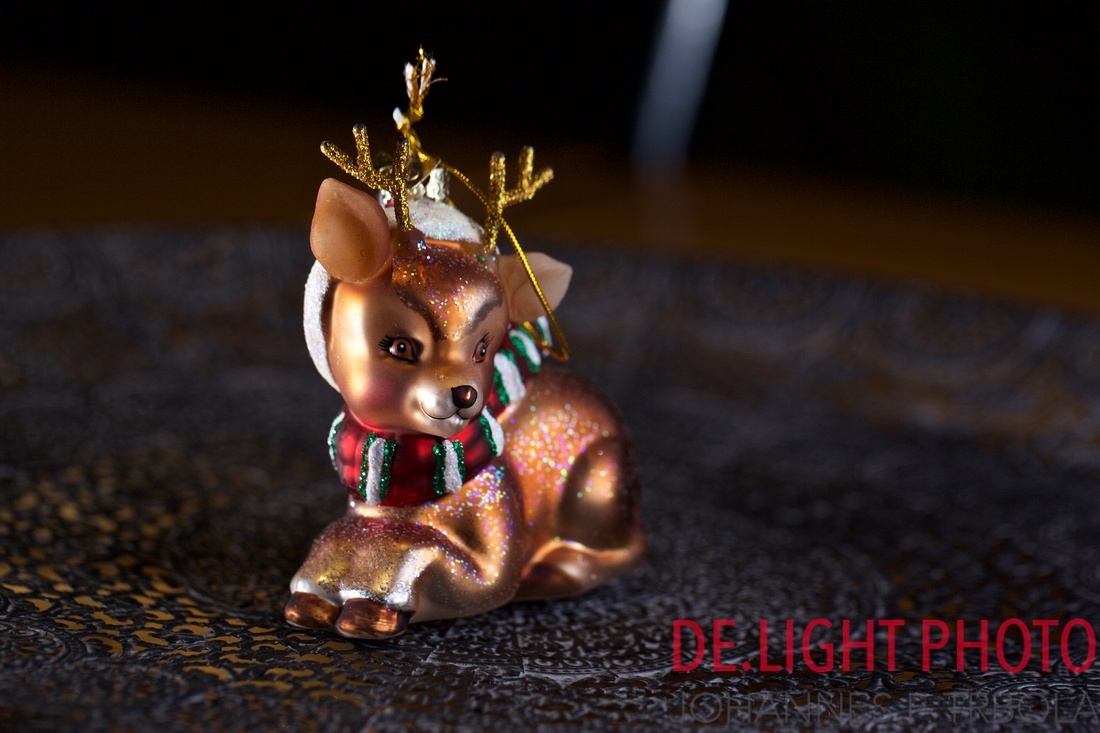
Very funny was to shoot this little figure on a plate. putting one flash under the plate and the other light behind a reflector used with the transparent side...
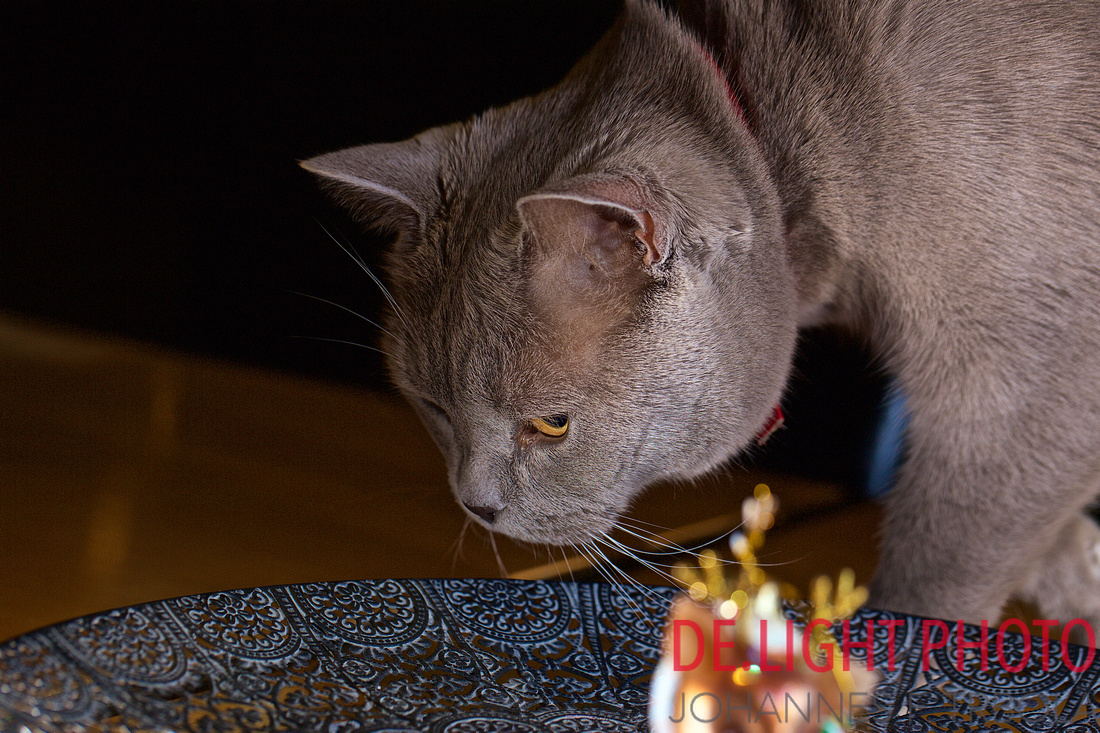
The cat got curious what I am doing there....
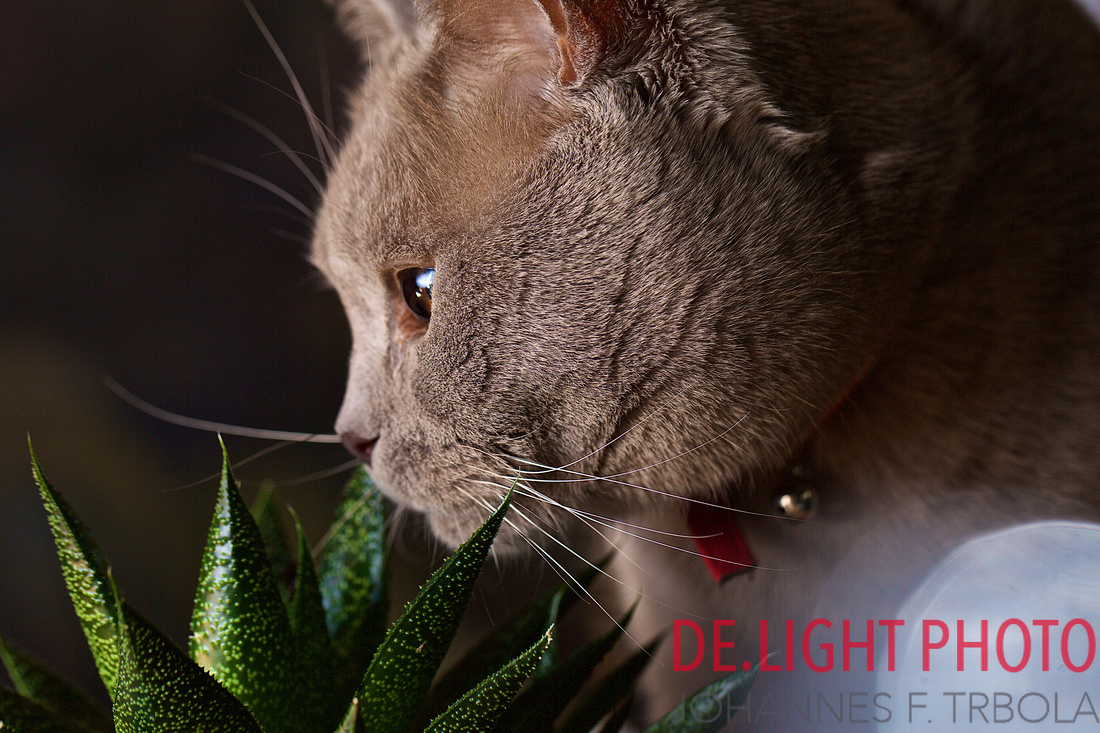
It was amazing: The cat was not shocked by the flash...
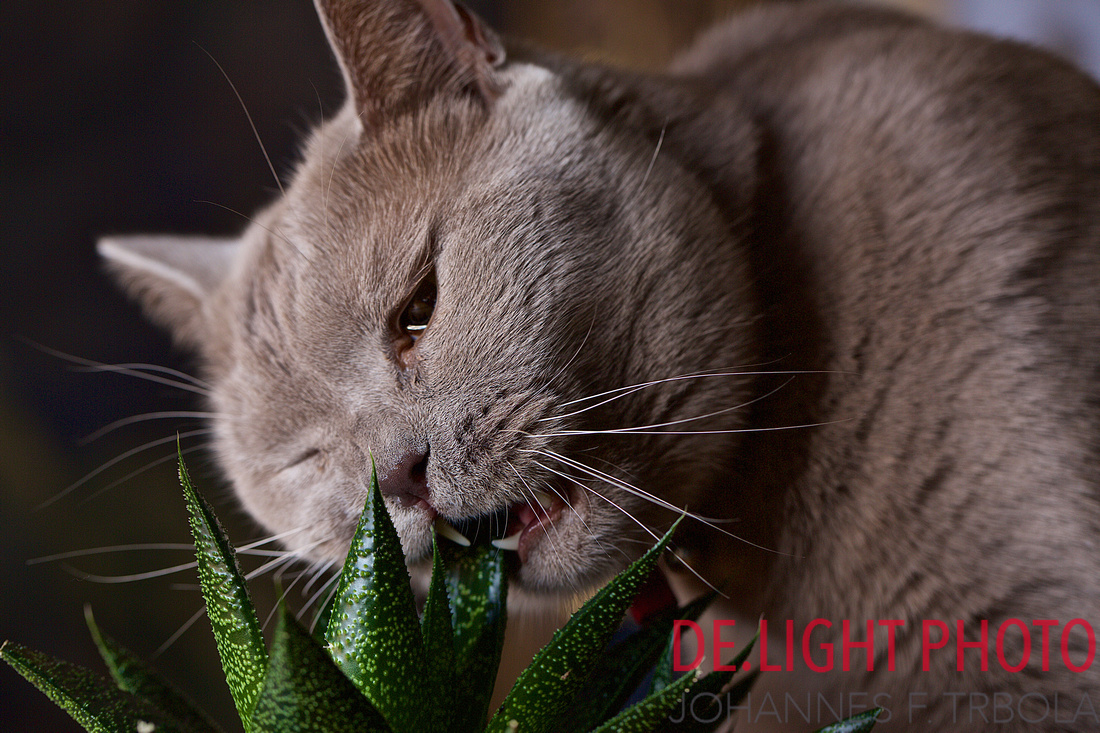
Tooth brushing....

Hunting mode?
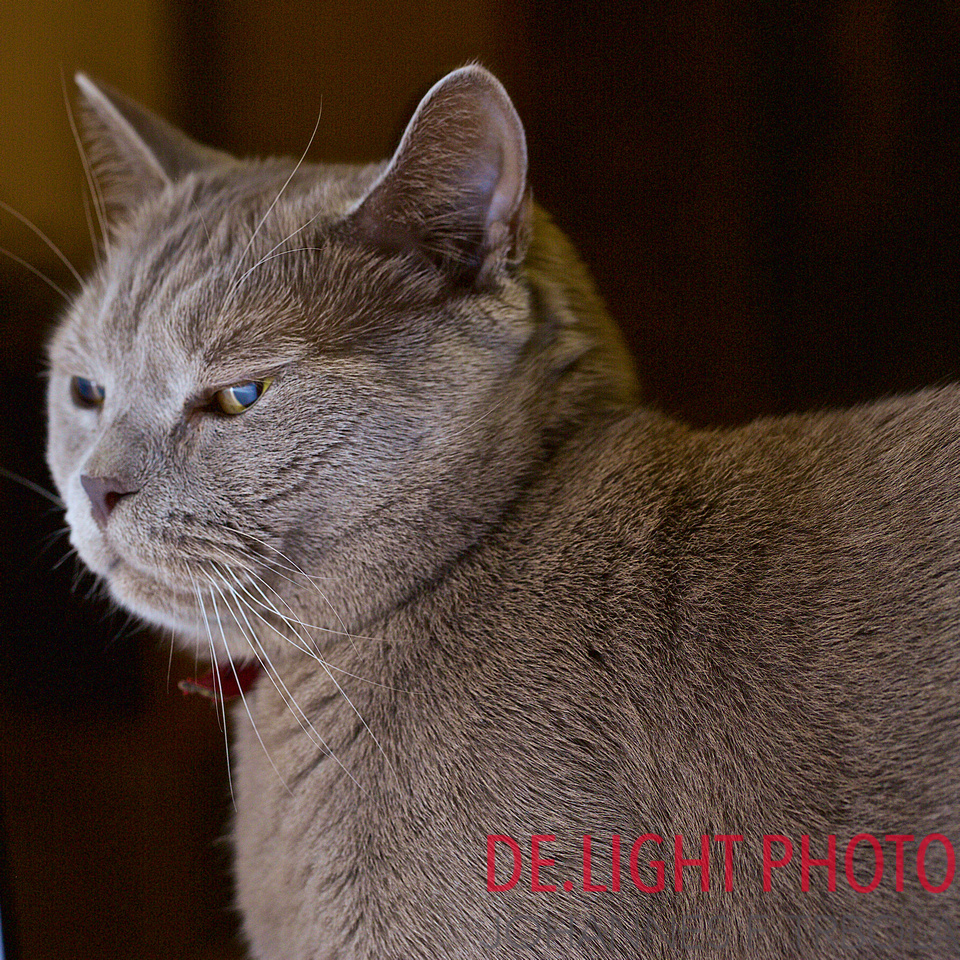
Always nice: the cat directly in front of the reflector... used as soft box...
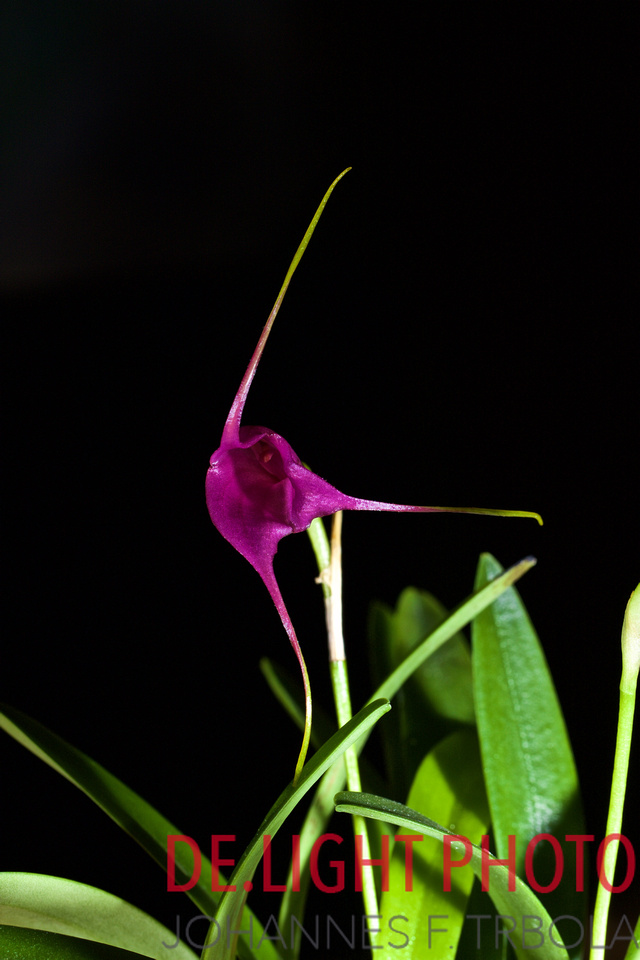
A few days later I made a 2nd tryout, this time with the 7DMkII - and the 100mm Macro as well... My daughter got 2 new orchids... and I love to shoot orchids.. this time without soft boxes but directly with TTL. Believe it or not: this was the first shot.... just positioning of the flashes and ... bang!

For the next images I used a set put with one background light ind the other flash handheld... The works as well as you might see...
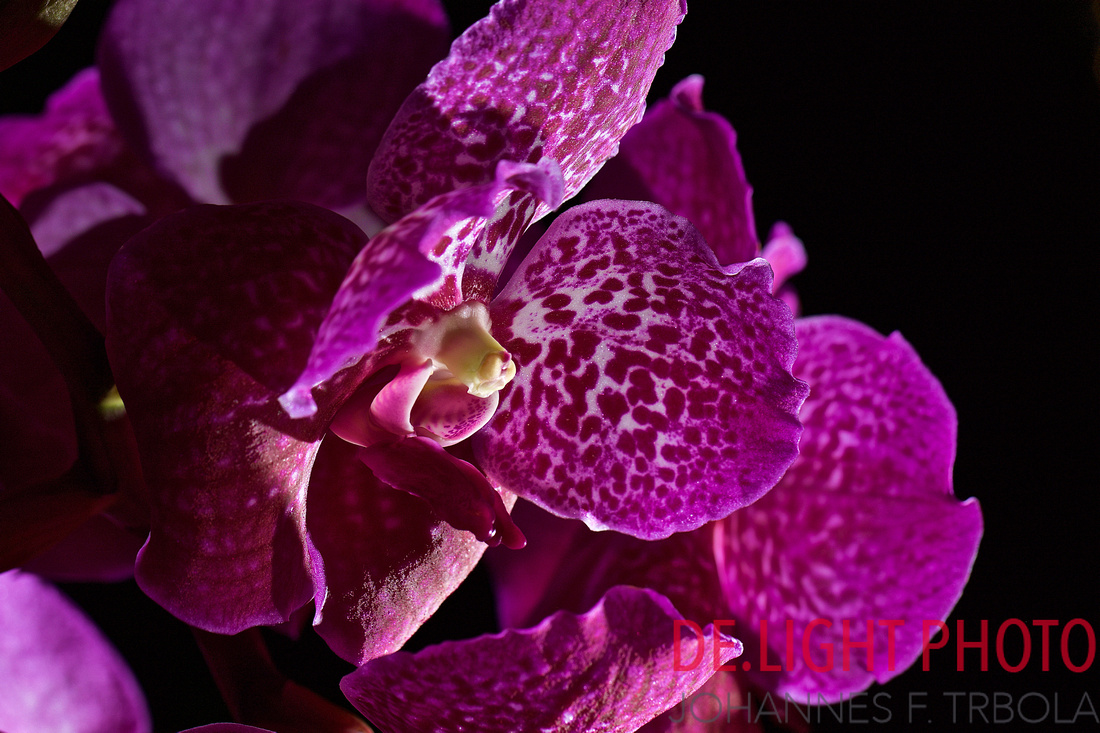
For this image one flash was at 10o´clock, the other one @ 12 and the shooting direction 2 o´clock - in the direction if the flower....
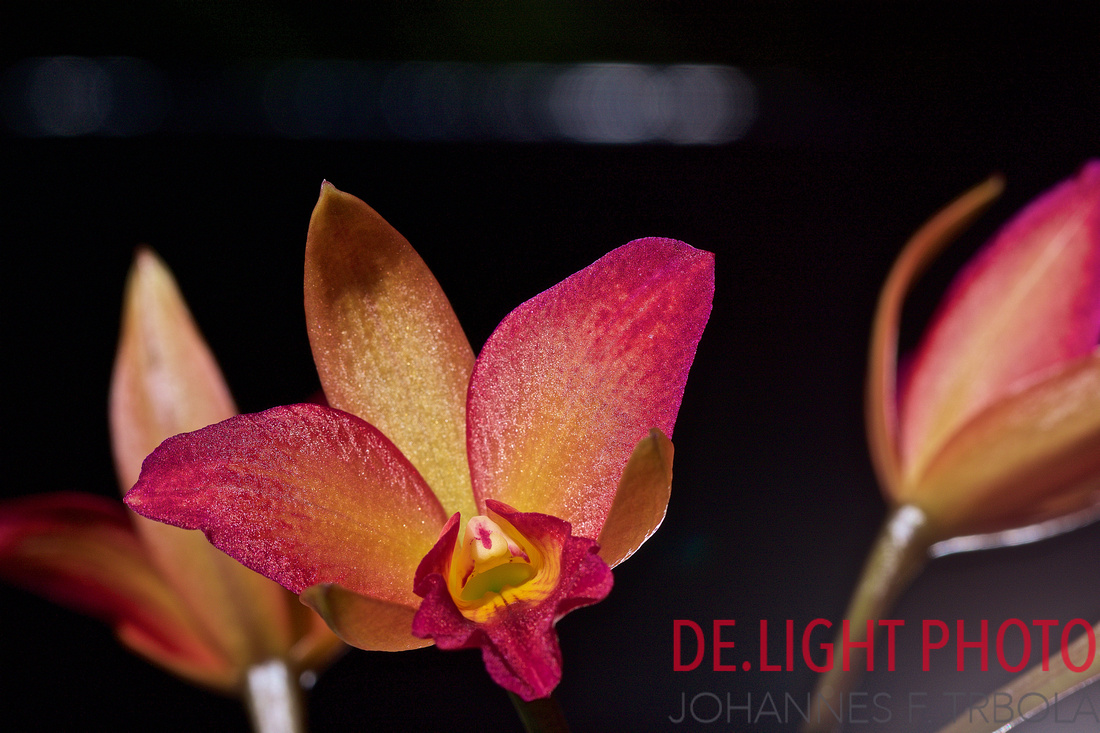
Here I had one flash handheld beside the camera and in light from the rear, and the rear one @ -3 EV...
The next session was in my office.. I have some model cars there. And I wanted to know how easy it is to use the systems. And this time it was enhanced difficulty for TTL: A white background...

Again it was pretty easy, but I had to make a 1 stop flash correction and than it worked out fine....
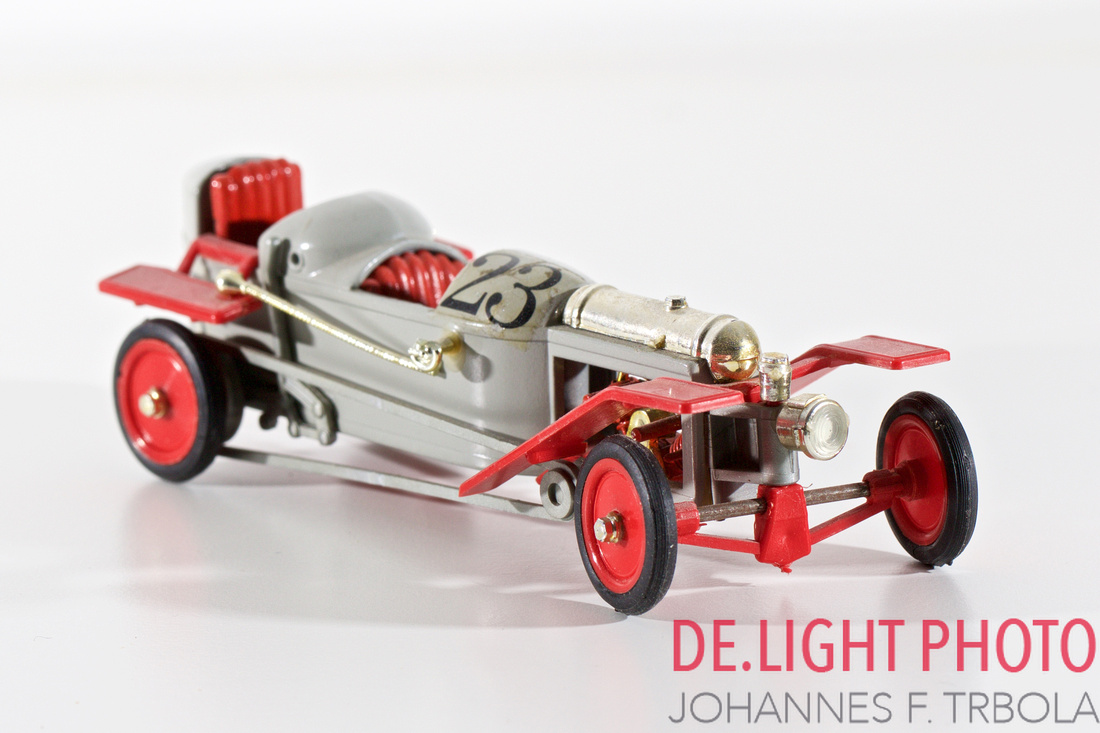
I like the oldtimers very much... they come out great...
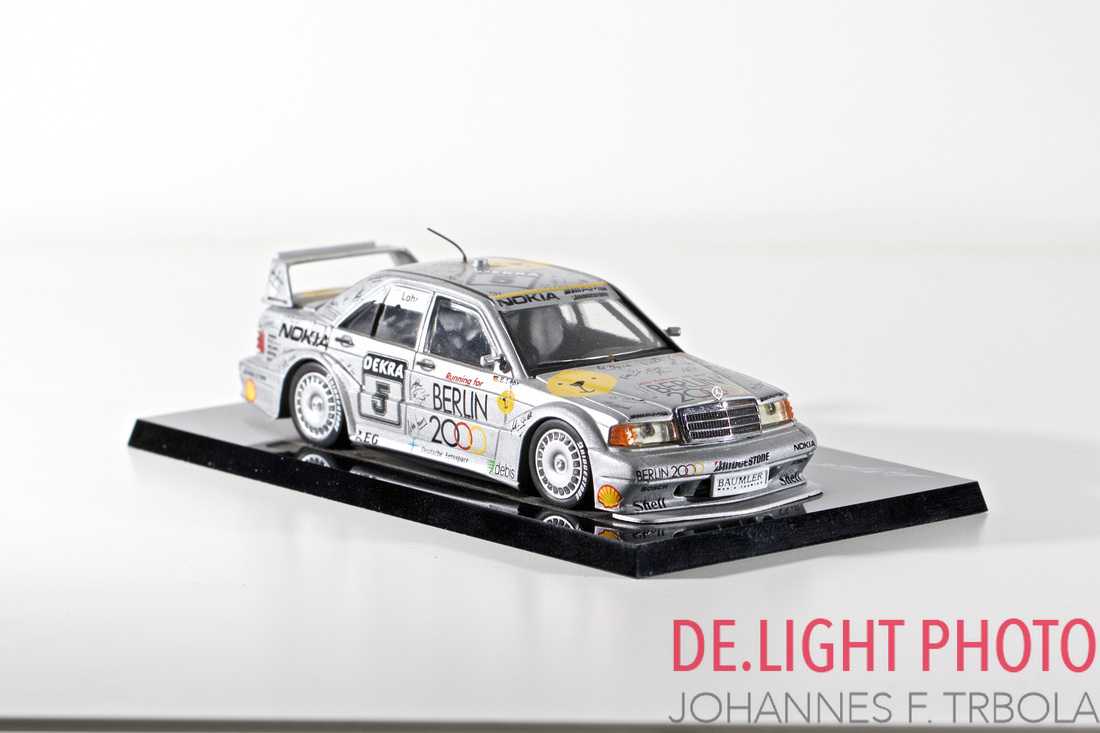
Very special: The 190 E 2.5 DTM from Ellen Lohr...
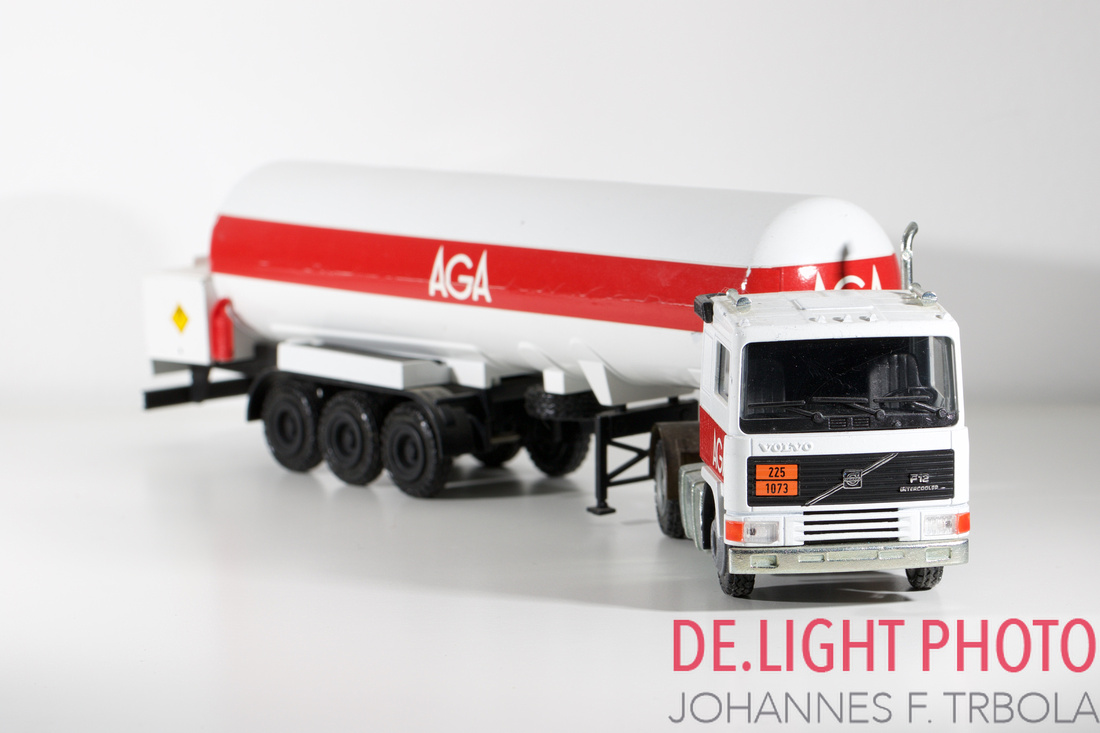
This truck is amazing. I got it from a friend working at AGA Gas...

Yes Aga merged with Linde....
]]>
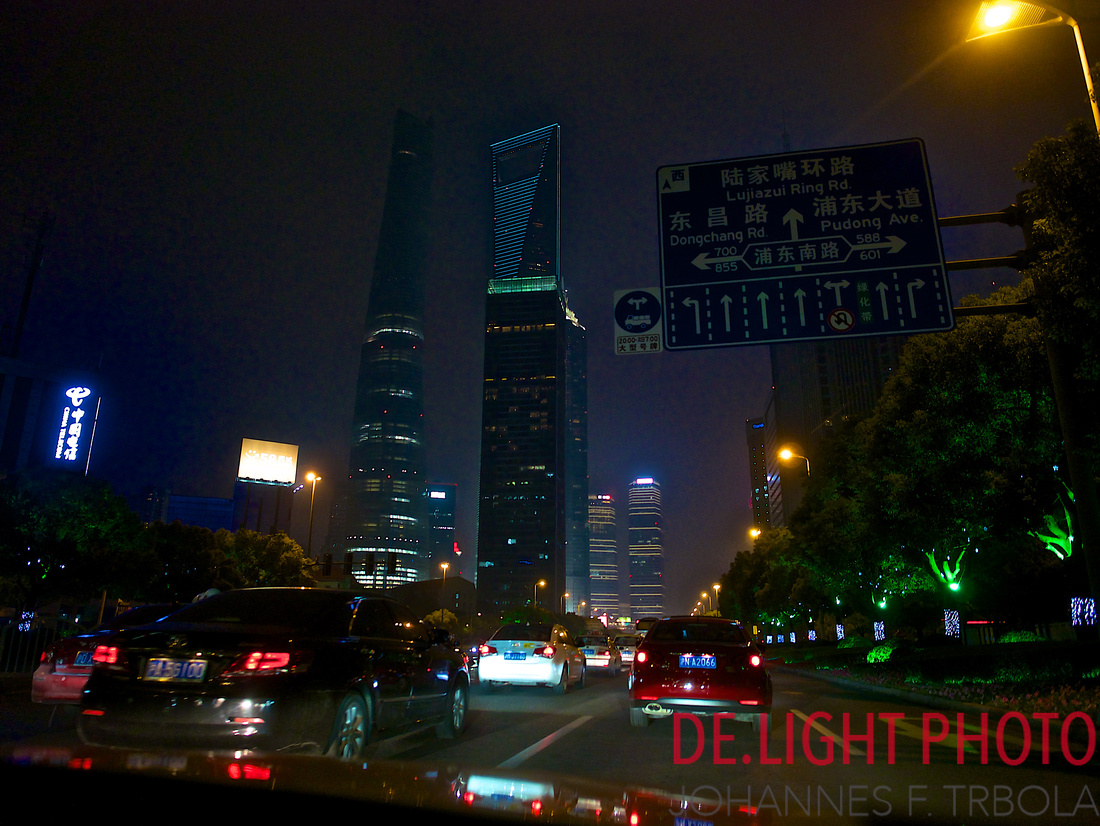
My First trip in Shanghai.. Photos taken in a car..
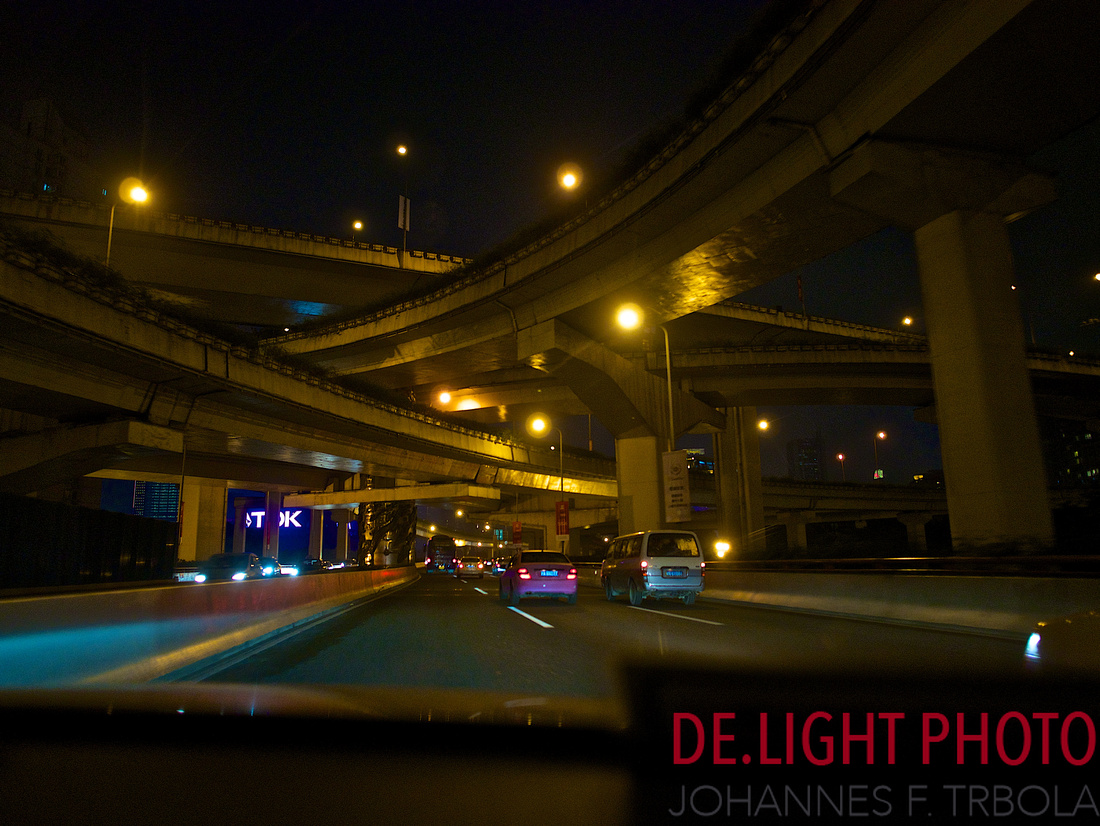
Roads made for cars.... to keep traffic fluently...
Since I have the GM1 in my kit bag - since end of January 2014 - it became my "always with me" camera. And I started to change the use of the camera as well: instead of using it with the kit lenses of panasonic I started using the prime lenses... with a remarkable result: Especially when I have the low light lenses with me like the f 2.0/12mm form Olympus, the f1.4/25mm Leica form Panasonic or the f1.8/75mm for Olympus with me: it becomes a great package... And the pretty shallow depth of field tells everybody: I am not a small camera. I am big!!!

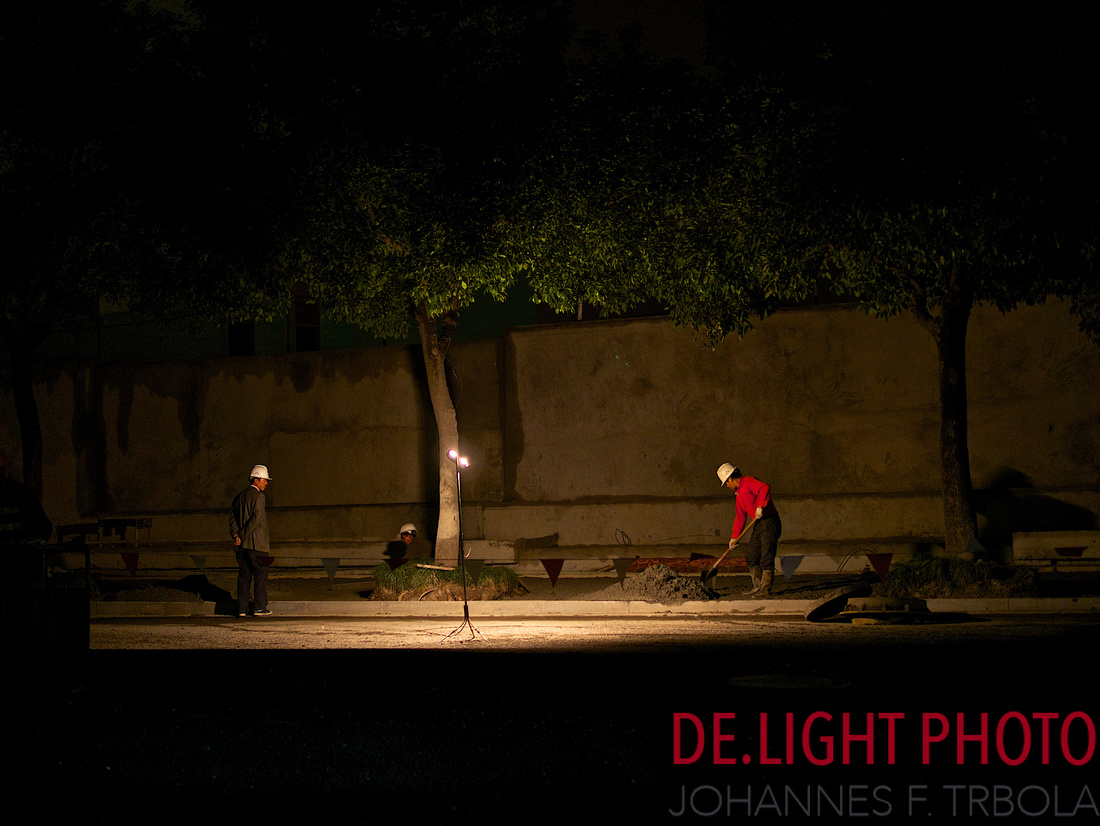
For me very astonishing: People working on sunday night... And 2 days later the road was brand new... just perfect..
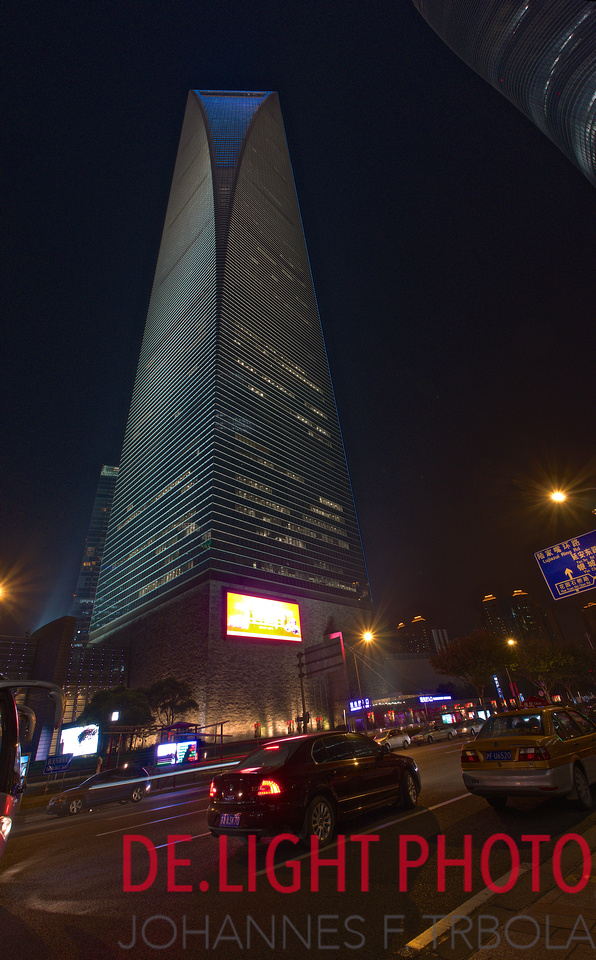
This time I was traveling to Shanghai. Believe me or not: nobody could see what gear I am carrying with me... I did several things in Shanghai:
- Low light photos with long exposures on a tripod
- High ISO Images during dinners
- Panorama Photos as well in low light
- And finally a few time lapse tryouts.

2 days later A visit tot the river side - and a great illumination of Pudong - the new Shanghai
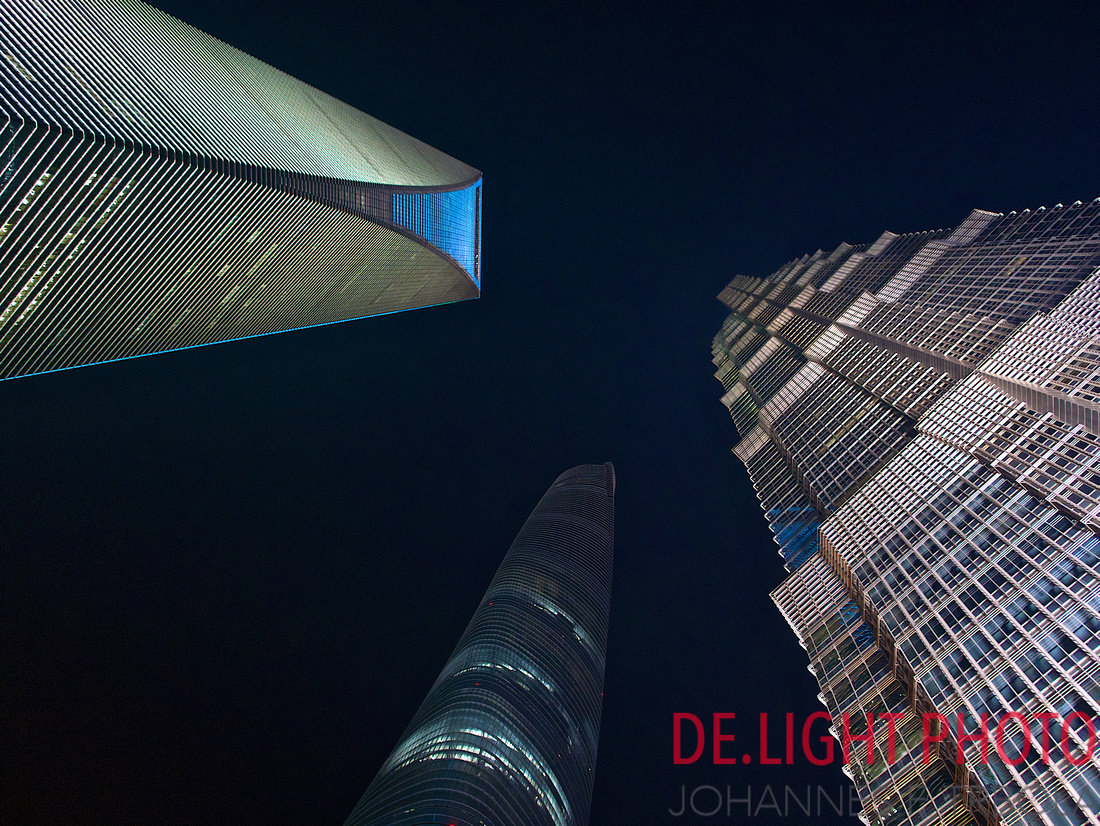
The largest Skyscrapers... just amazing...
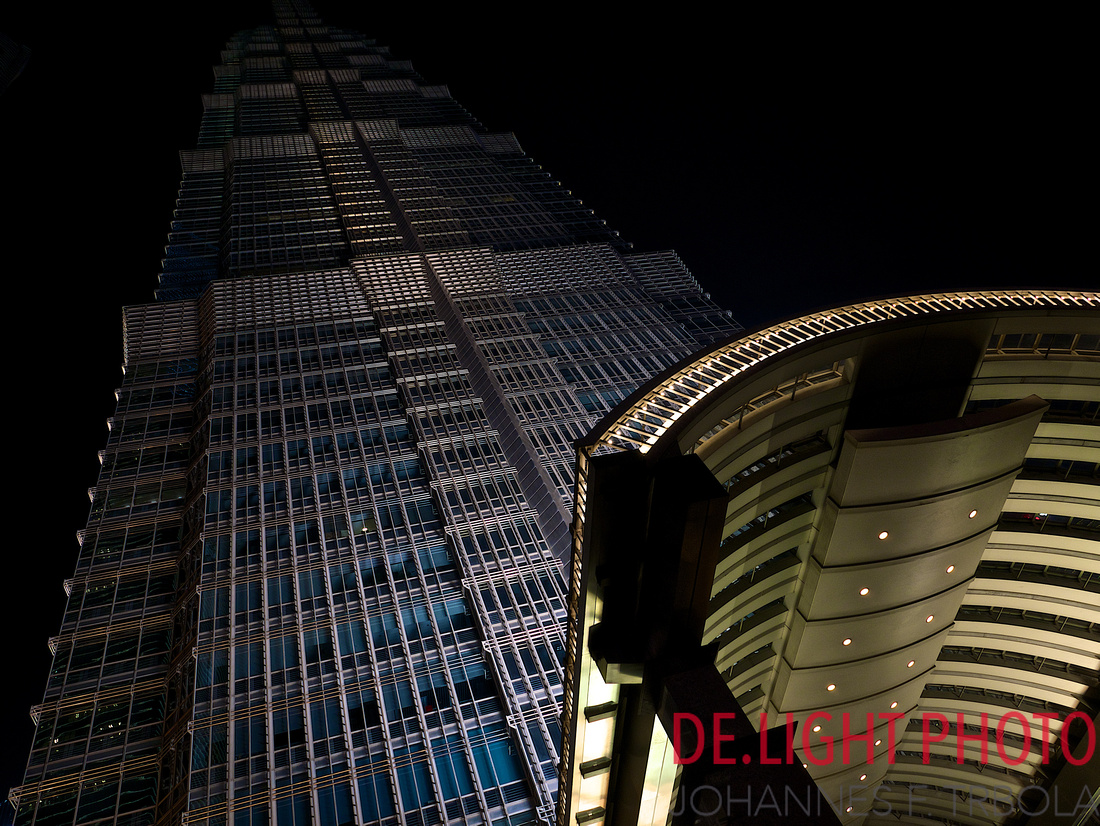
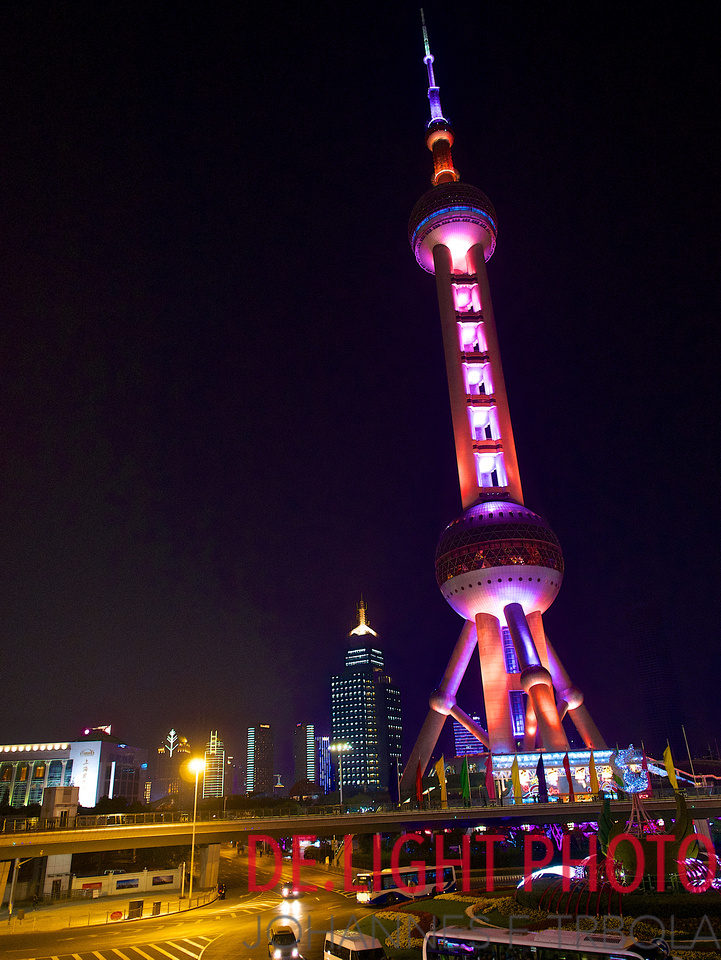
Shanghai TV-Tower: Very Amazing: the foot walker roundabout in the first floor...

I shot this Panorama handheld with the Zuiko f2.0/24mm. It covers > 180º View Angle....
And I took a little time-lapse at the same place...
Food
Food in China is an experience. Great. But be careful: it will spoil your taste and destroy any wish to go to Chinese Restaurants abroad...
But be careful, sometimes you will get served kind of strange stuff as well like sea cucumber or a soup with frog overies - which is tasty by the way...
We started with Shanghai food - which is great by its way..
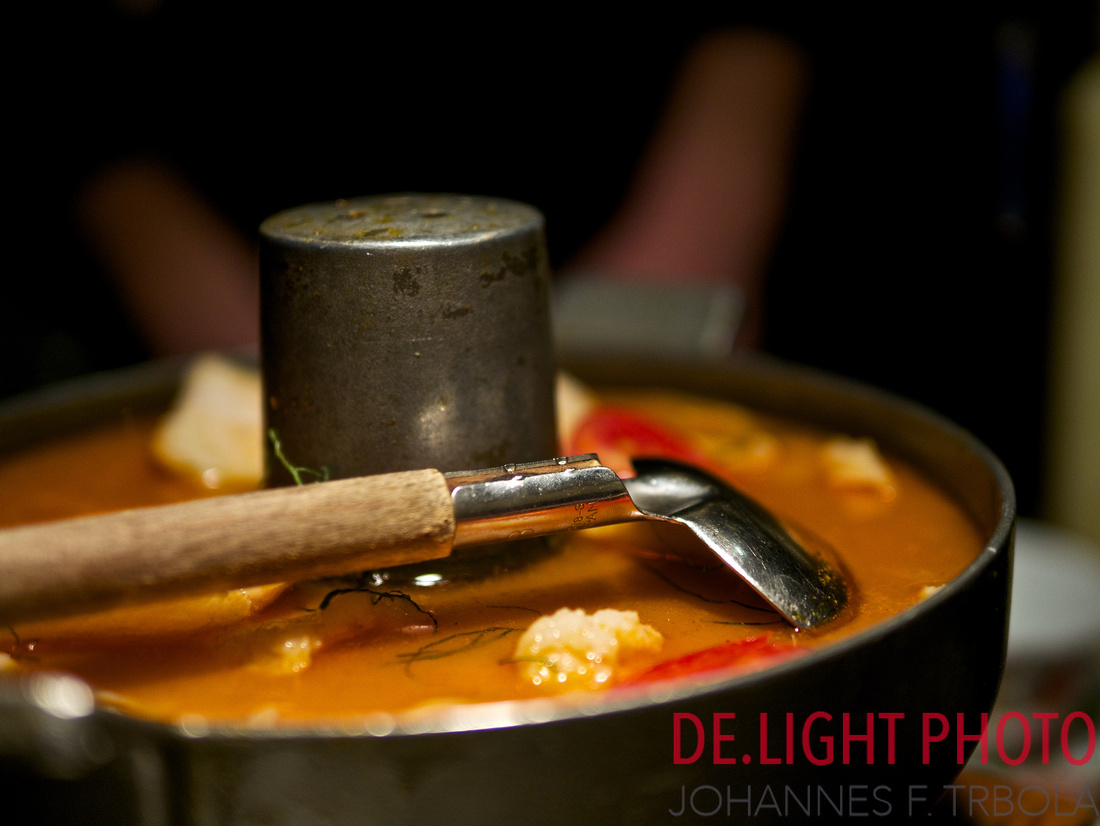

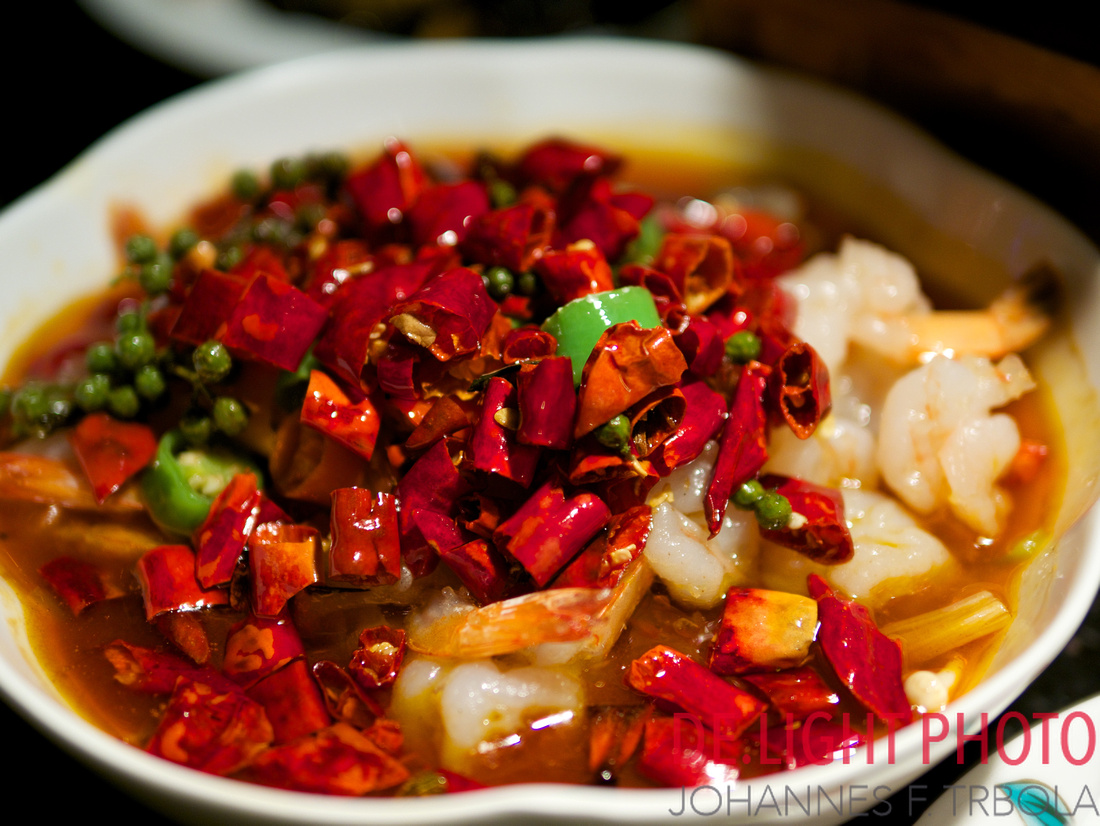
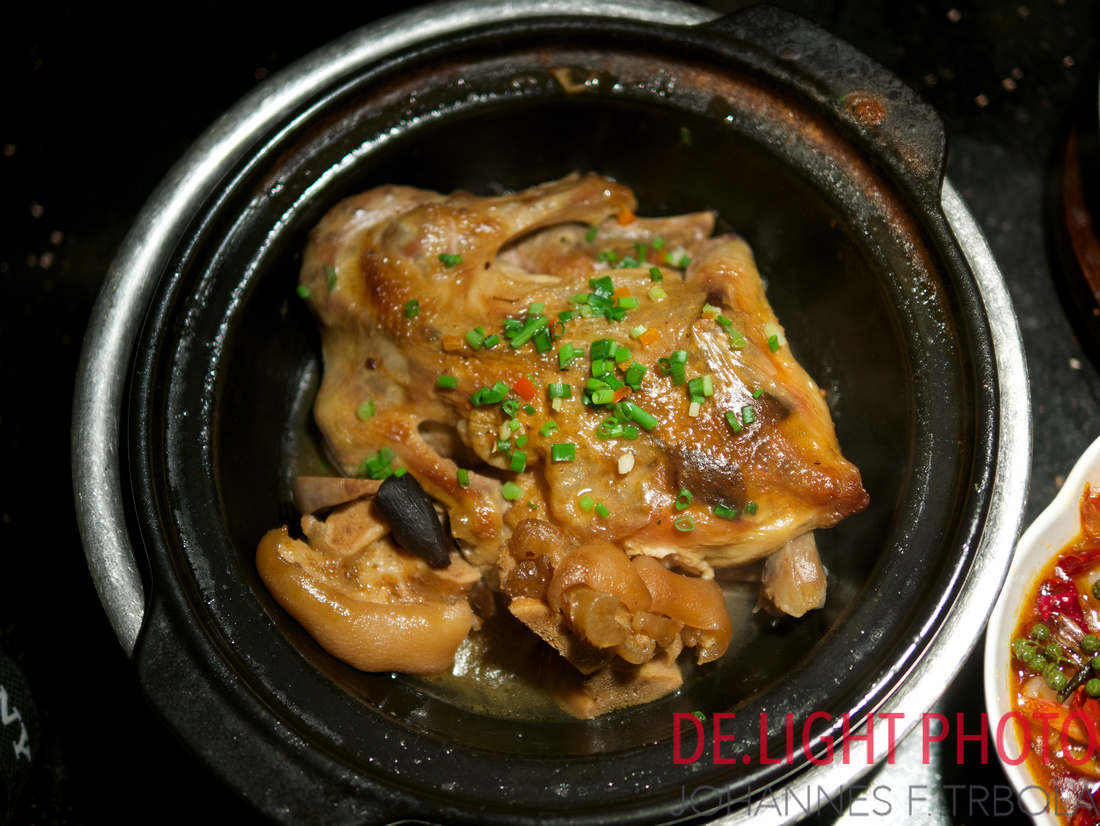

The chicken was really very soft.....
Traditional Beijing Restaurant.... Of course for eating beijing duck...

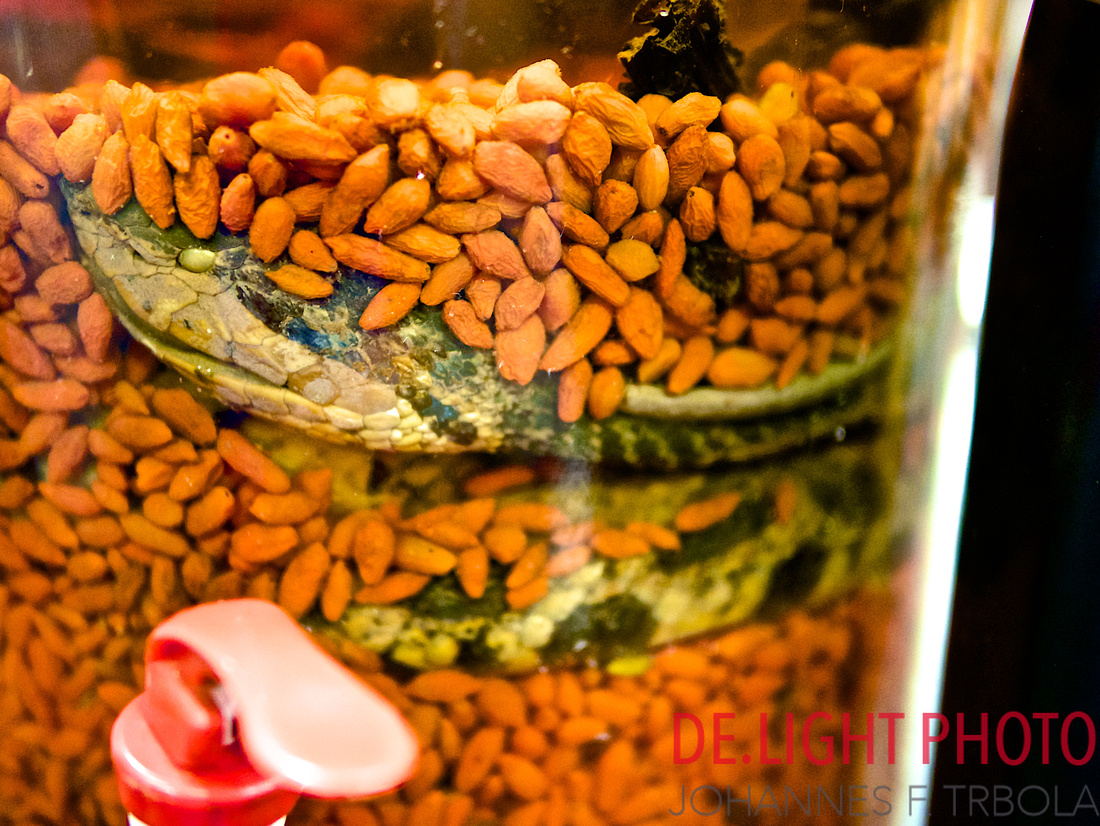
I did not try the schnaps with the snake inside...
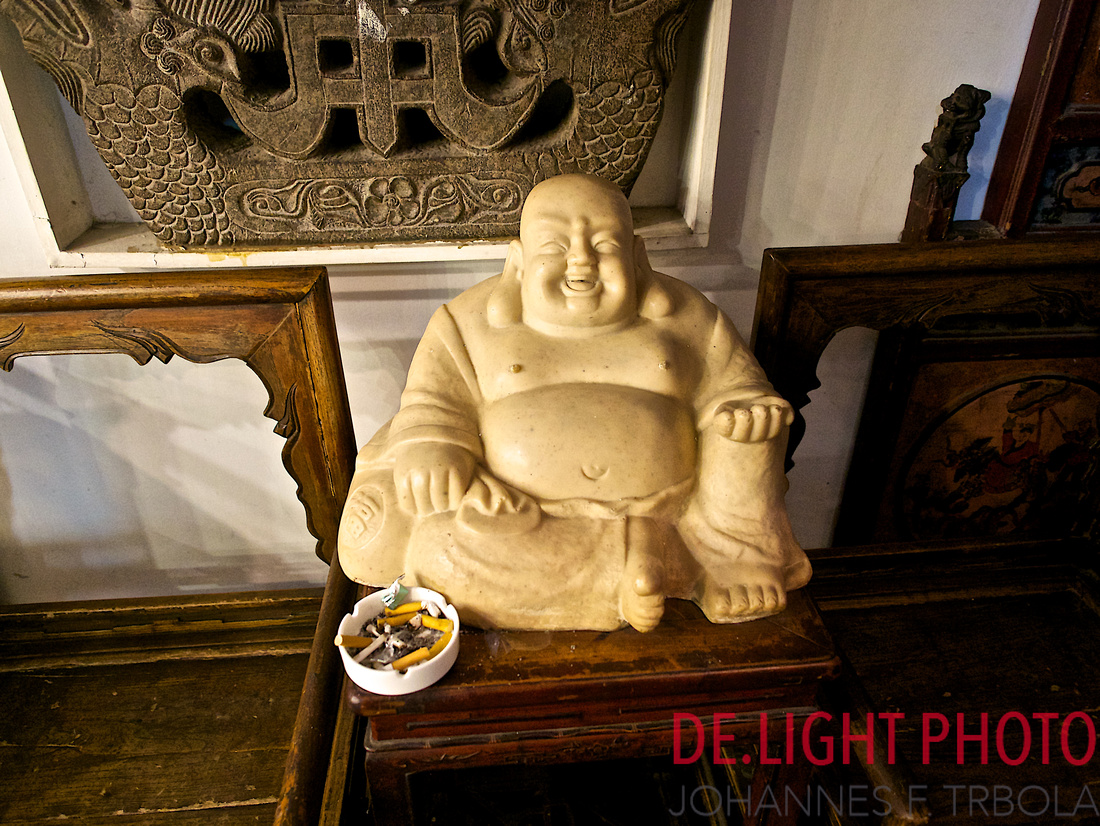
Buddha welcomes smokers...

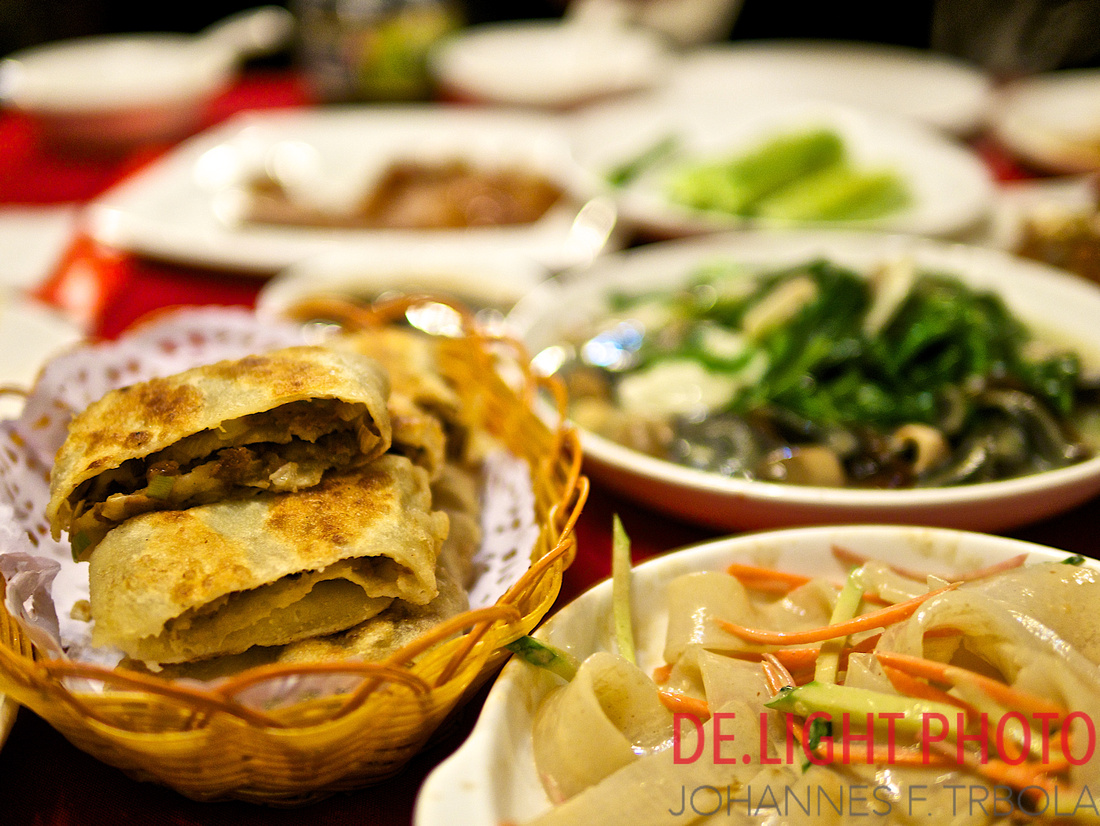
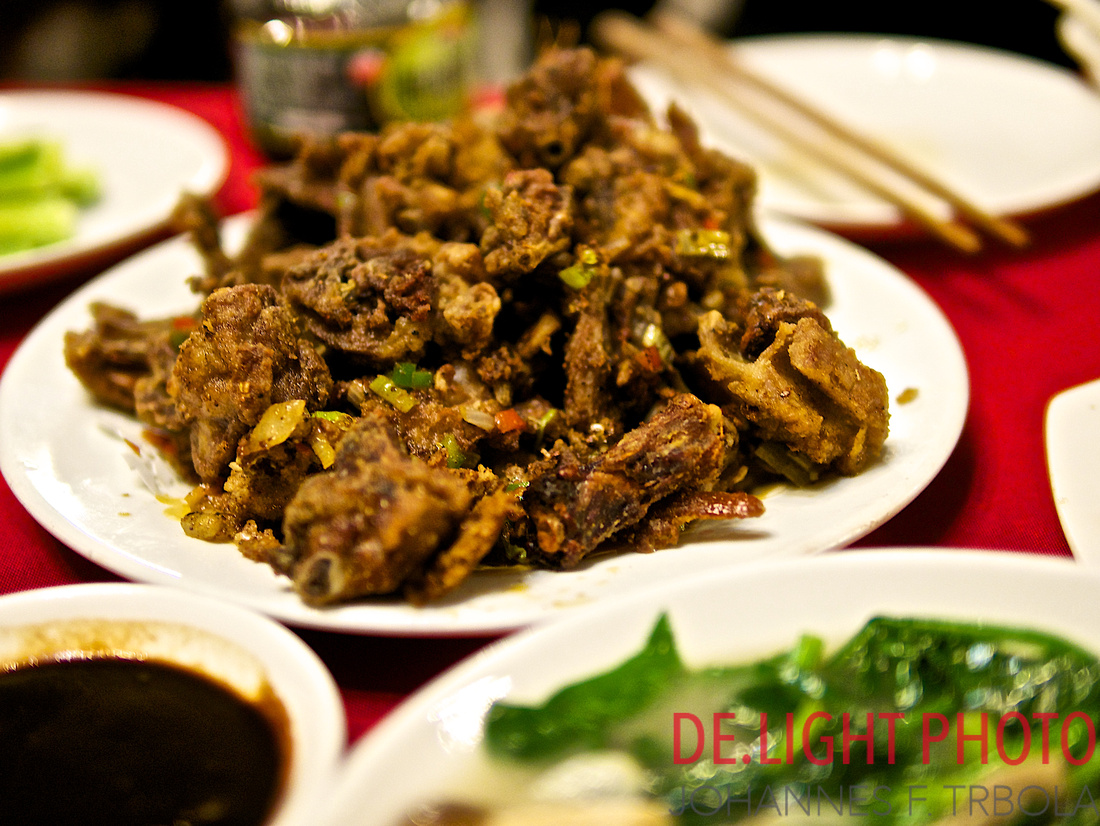
Prestty Special: bones of the Beijing Duck... I love to eat the bones of any kind of birds... but this was a special experience: a bit dificult to eat just with chop sticks...
]]>
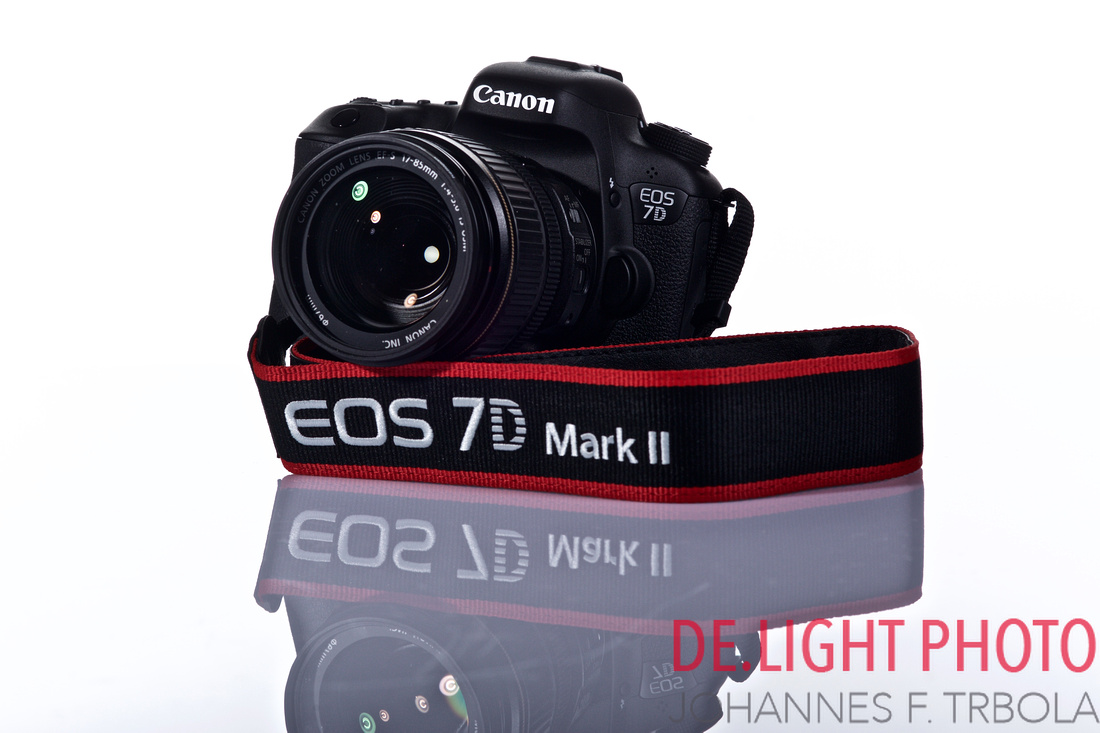 Recently Canon released the 7 D Mark II. After 5 years of the production of the first Generation 7D. I bought my 7D in January 2012 - for a very special purpose: photographing hockey - and having a spare camera do my 5D MkII. And now: first experience whith the 7D MkII...
Recently Canon released the 7 D Mark II. After 5 years of the production of the first Generation 7D. I bought my 7D in January 2012 - for a very special purpose: photographing hockey - and having a spare camera do my 5D MkII. And now: first experience whith the 7D MkII...
Why using a 7D
In the first round I was disappointed. The performance was fare less than the 5DMkII, especially in low lights. But there was one advantage coming from the crop factor... I got more reach with the same lenses.... The basic idea was to save the very expensive 28-300mm L-lens from Canon using the 24-105 on the 7D as 38-168... shooting hockey in the hall.. But the result was disappointing.... ISO 800 was really the max. 1600 starts to be bad...
But! Finally I bought the 28-300. I took both camera to the outdoor hockey field - on the 5DMkIII - and this did not work as well: too less reach... Luckily I had the 7D with me, mounted the 28-300 on it: the perfect combination for outdoor field hockey! great!...
But I learned more about the 7D: It was perfect for macro: I got a 160mm lens for free. Using it on the 7D... Especially good for shooting flowers with insects... or using the 100-400mm lens with an equivalent focal length of 640mm... Shooting Ski races: amazing!!!
I learned: the 7D is a specialized camera - especially if you have a full format camera. But it is great. Shooting speed, autofocus speed was really great - and even better than at the 5DMkIII! Really a beast if you use for purpose!
The 7D Mark II First Experience
And now, just one week back the 7D Mk II was released. I had the first in my hand at Photokina in Cologne. And I knew: this Camera has to become mine. The user interface very, very close to the 5DMkIII -and even improved. The speed is great - and the first reviews have shown that the low light performance - or better: High ISO Performance has increased a lot.
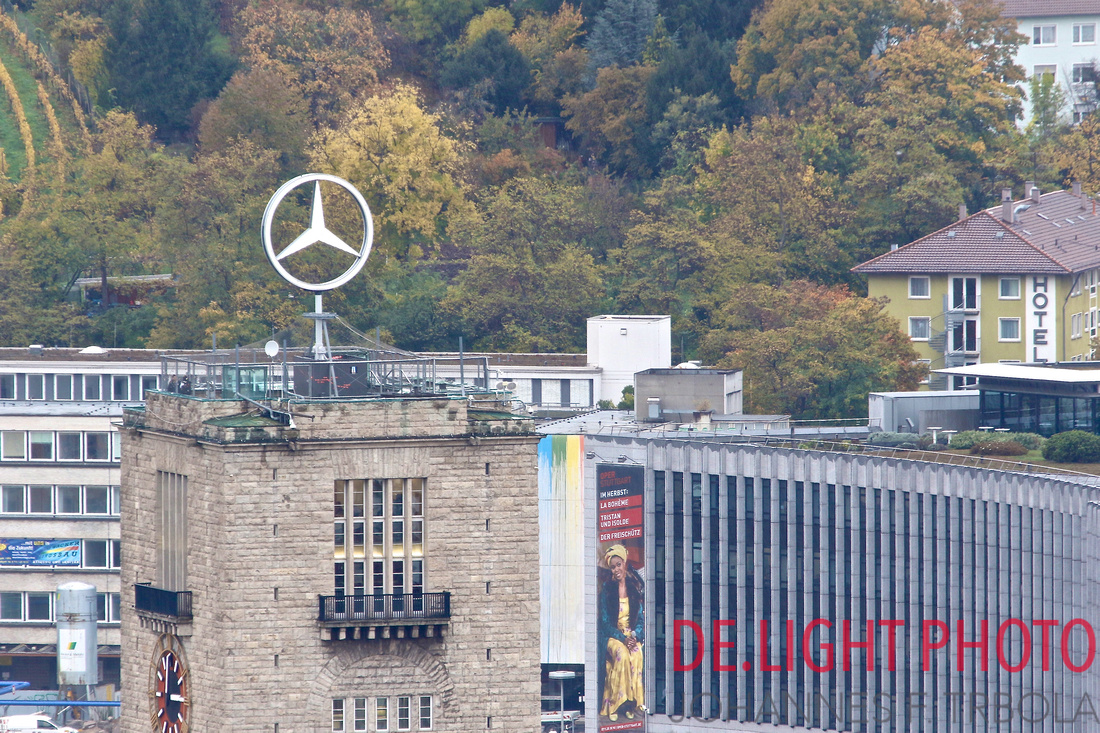
One big advantage of the 7D Mk II is the extended ISO Range. It gives you one extra stop for Autofocus. The Extender 1.4x can be used on the EF 100-400mm L.... And gives you a full format equivalent focal length of 896mm!!
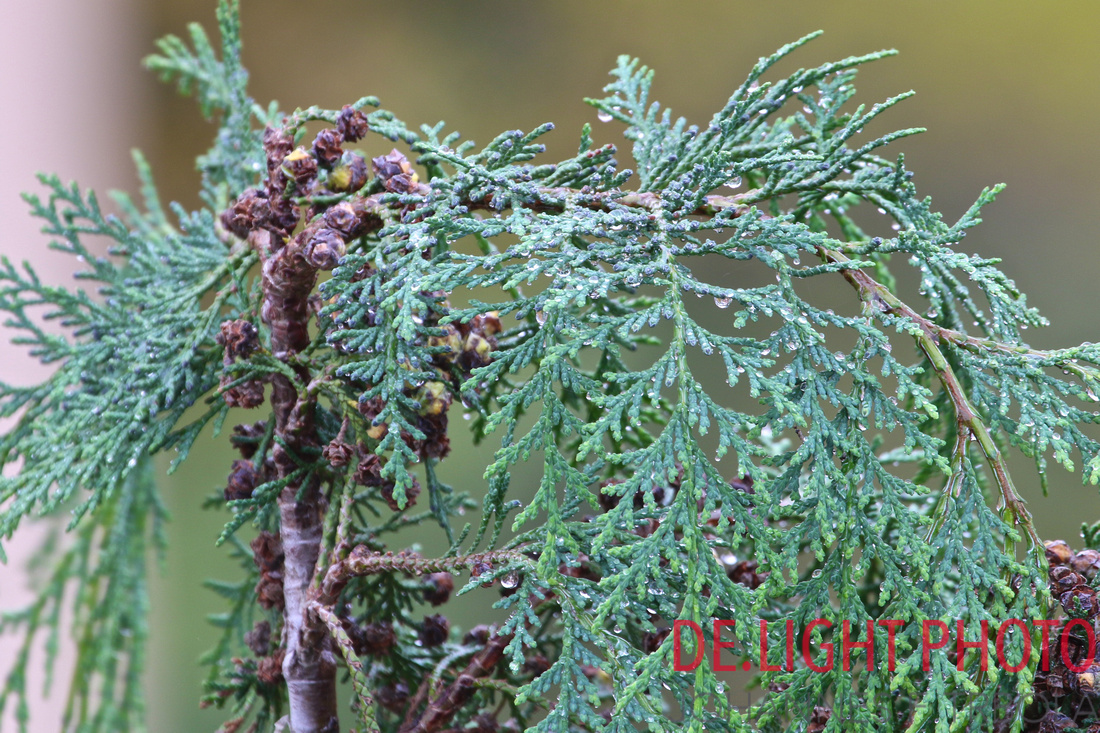
It works for many things. But you need to stop the lens down to f11, otherwise the images are getting too soft. This was the experience on the 5DMkIII - and this means that you will rarely shot @ 100 ISO...
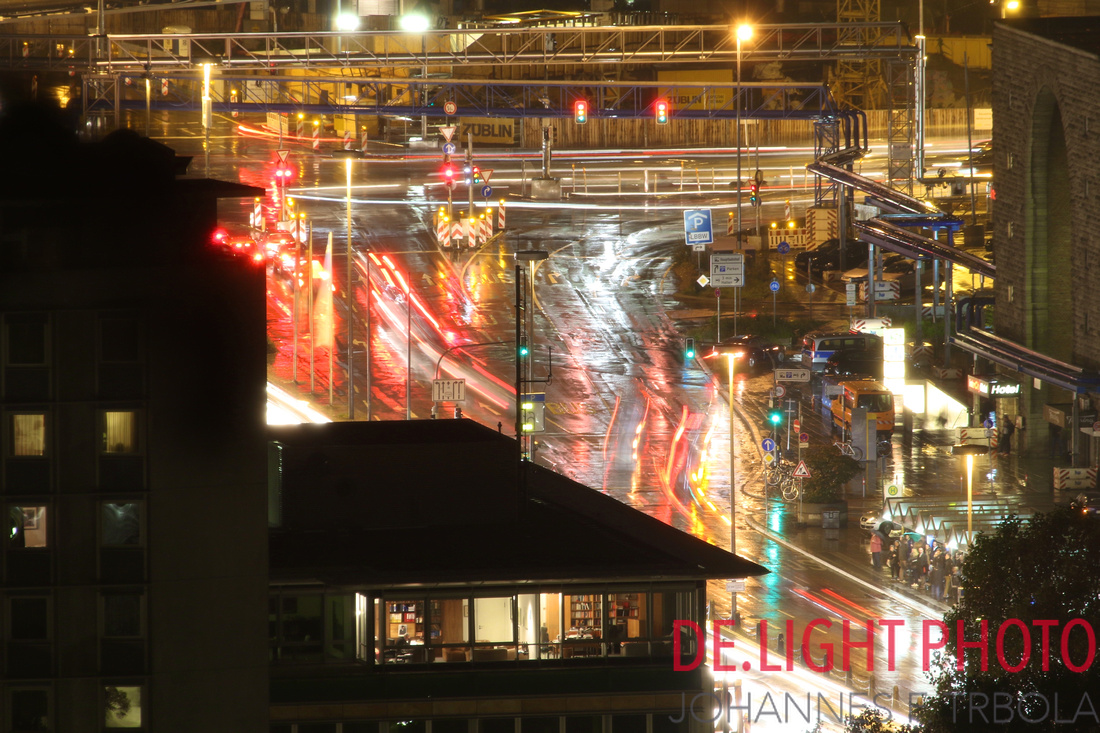
Even in the night this combination works great...
But the next advantage is for Macro: I like the extra focal length. It produces a hell of bokeh...

And the next thing was: using the 7D in real environment. It is named "Wild Life" Camera.. ok. Safari just on the weekend maybe difficult so I decided to go to the Zoo - In Stuttgart called Wilhelma - the get some real live experience.. not only for the reach but for the autofocus speed as well.
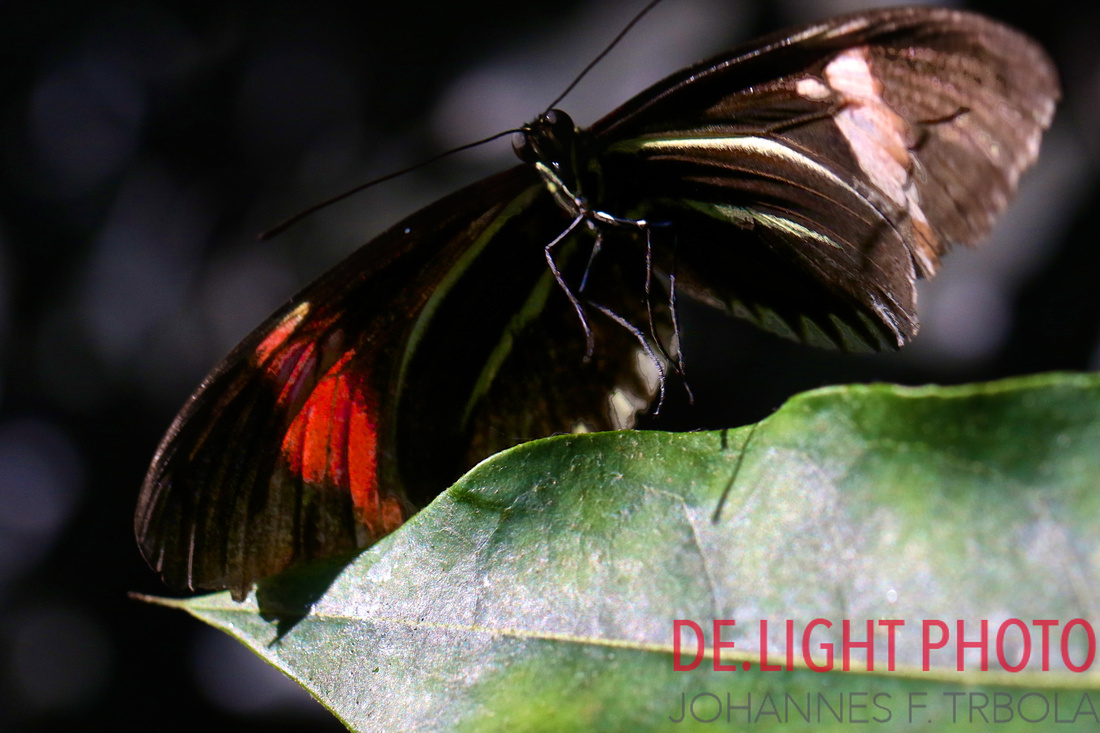
The speed and reactivity of the 7D Mk II is just mind blowing: First time I was able to catch a butterfly flying....
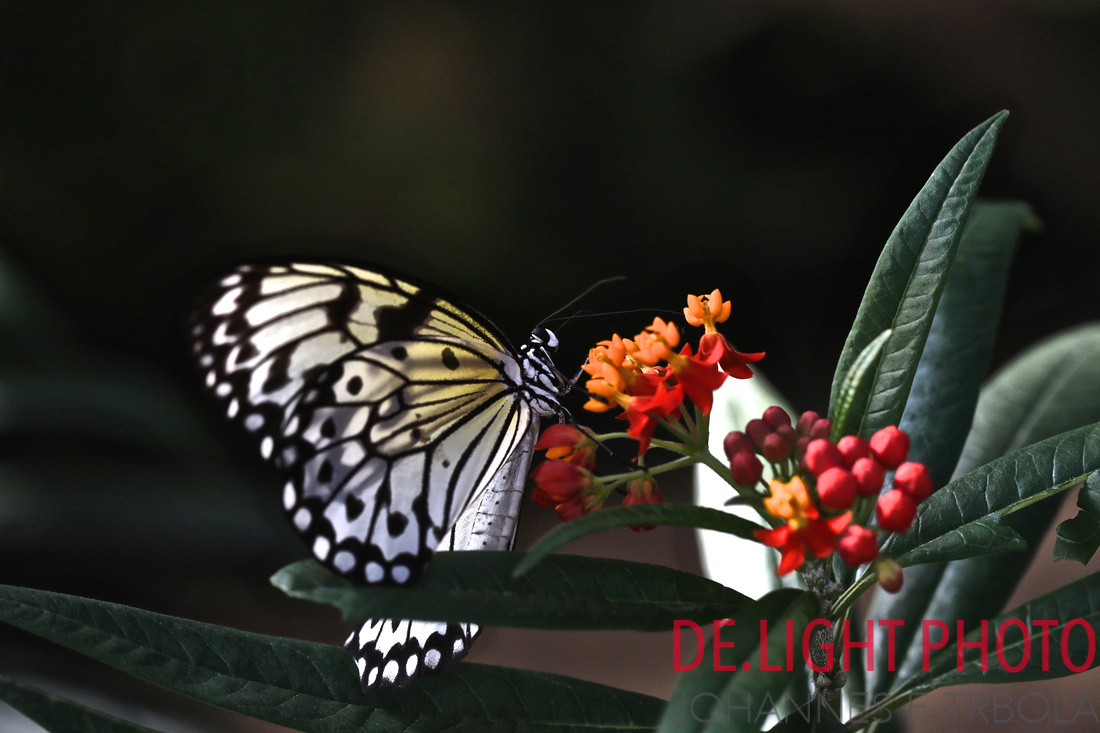
Just nice, or?
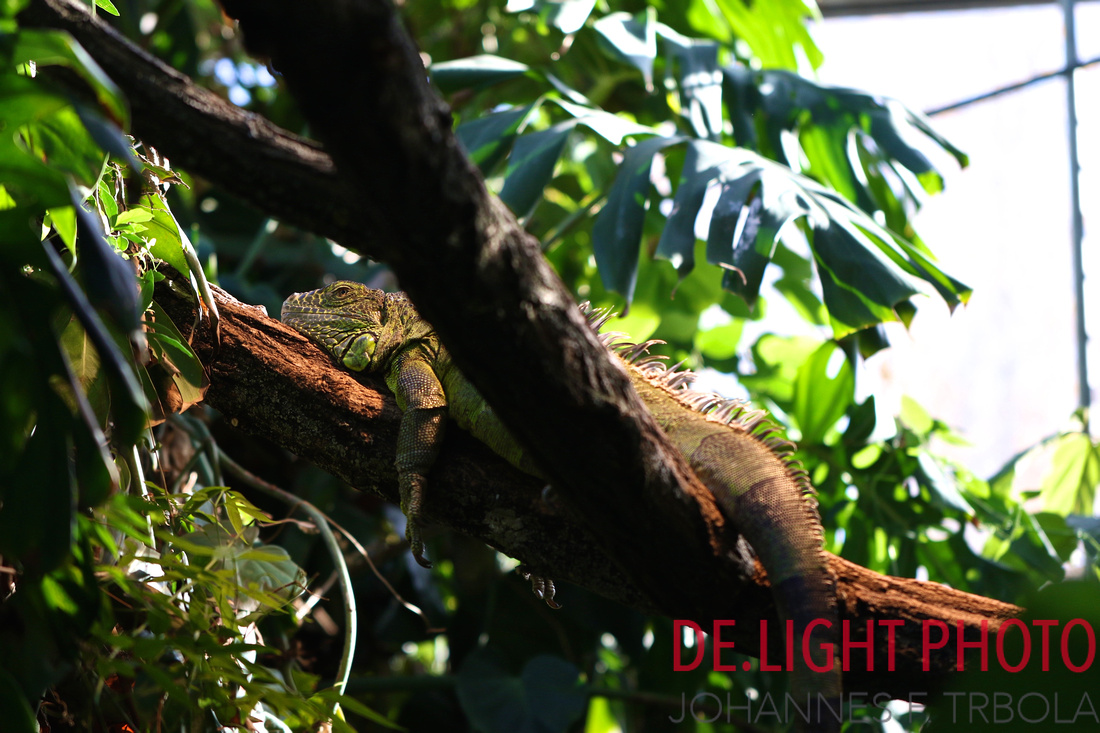
In low light conditions It is great to have the performance: even @ ISO 1250

This frog I got @ ISO 1250, f 2.8... with the 100mm Macro....
It would have been impossible to get this shot with the 5 DMkIII nor with the old 7D...
ISO Comparison between 7D and 7DMkIII

I took both images with the camera on a tripod with ISO 6400... what a difference... This is more than 1 FStop difference like CANON is telling on Seminars...
1 Extra Stop for Autofocus
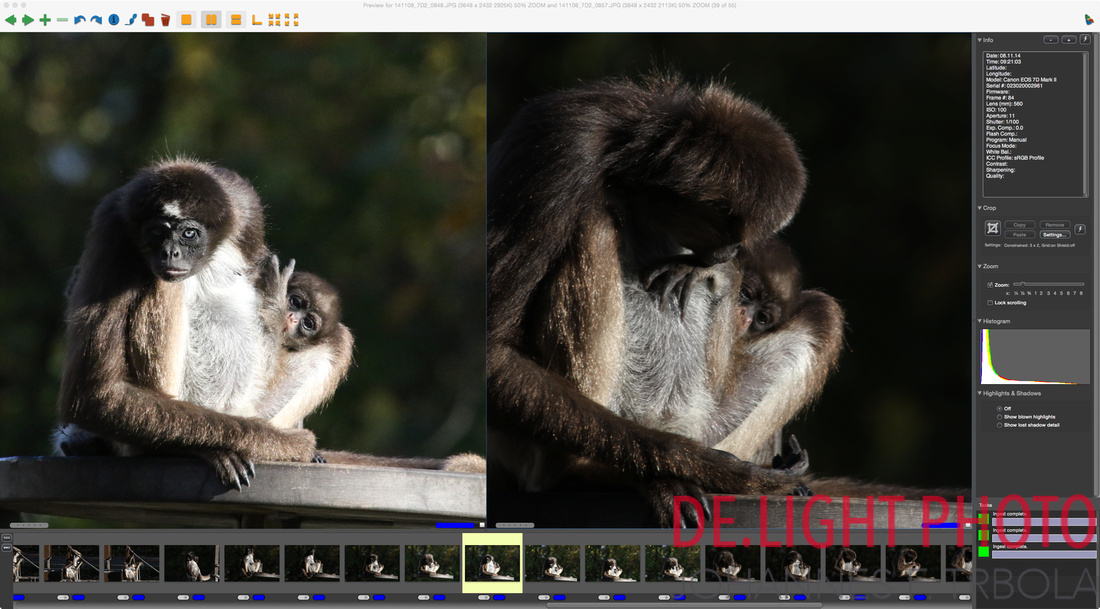
The possibility to use f8 lenses to use autofocus gives me extra reach: The left image is without and the right image is with the extender on the EF 100-400mm Lens.
Summary
Canon made a great step with the introduction of the 7D Mk II. The 7DMkII is a much better Camera than the 7D:
- Much better High ISO-Performance
- Extreme fast Autofocus
- Same User Interface like 5DMkIII
- More Telephoto Reach
I am glad that I could add it to my portfolio....
And please keep in mind: these are all .jpg. There is no RAW converter available. So far... It will be interesting to see how long it takes that Aperture and DXO will release their converters...
Some more sample shots:

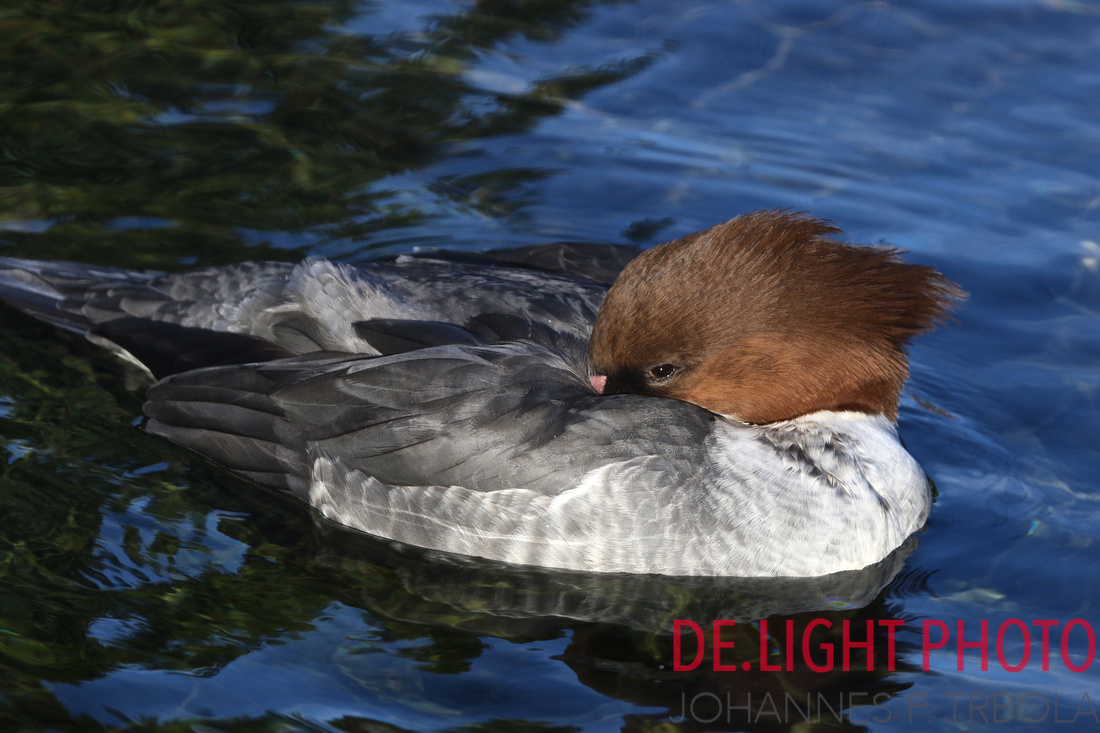
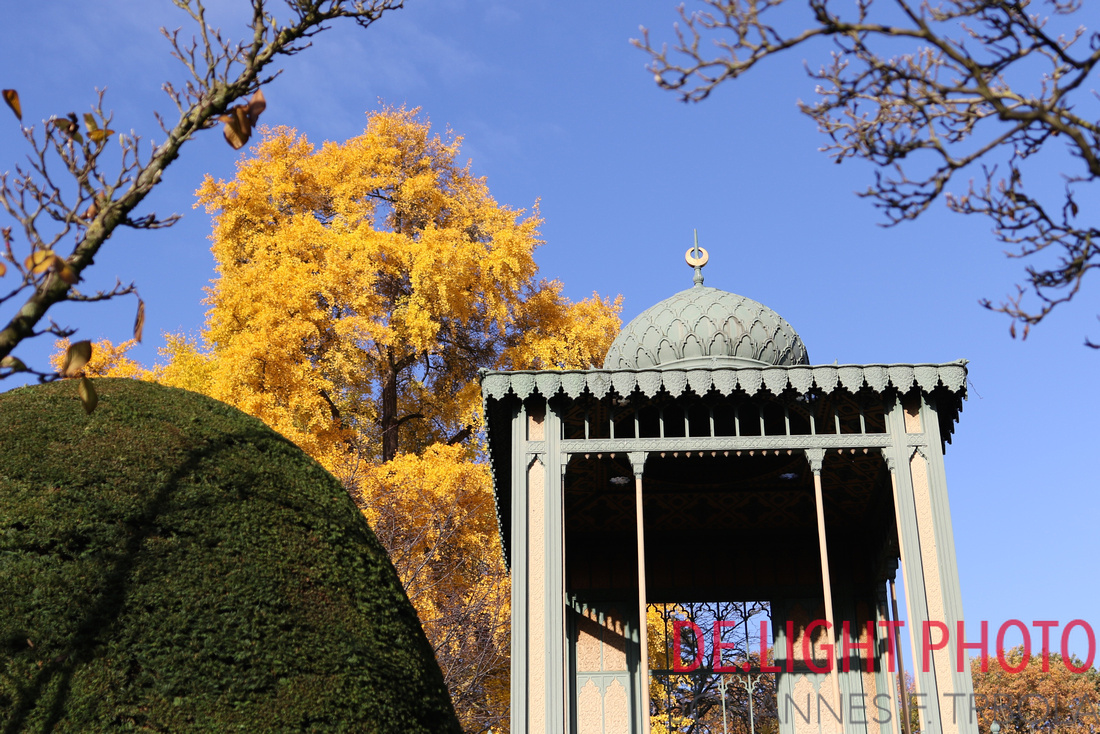
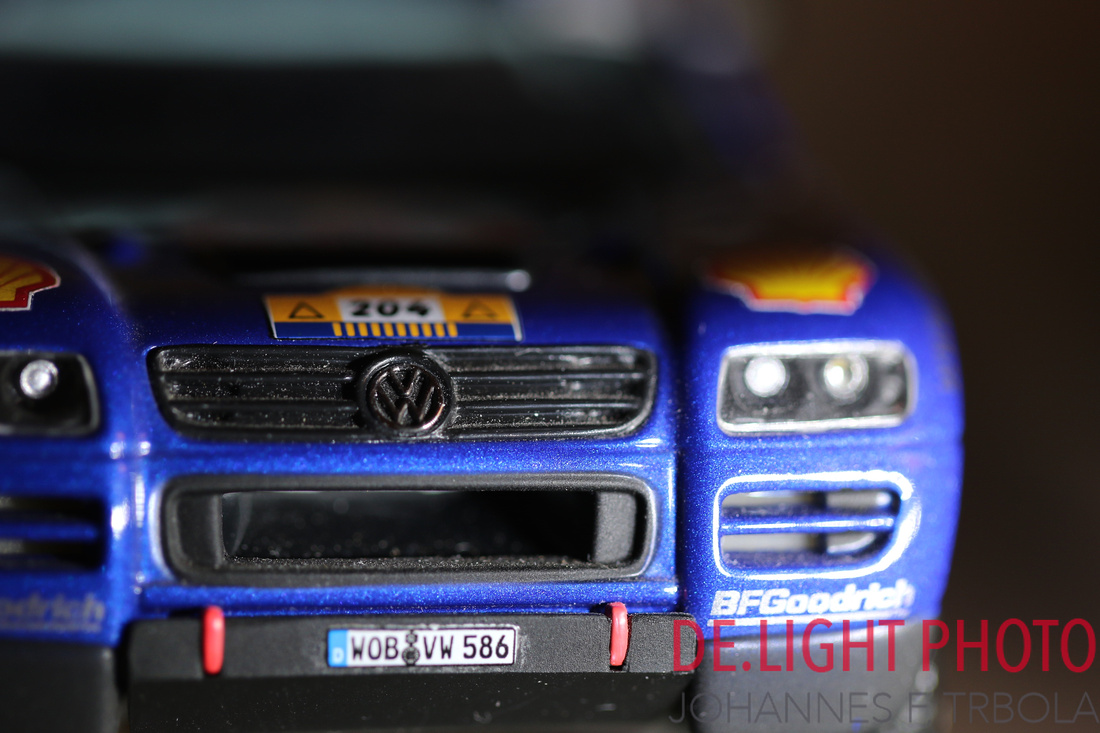

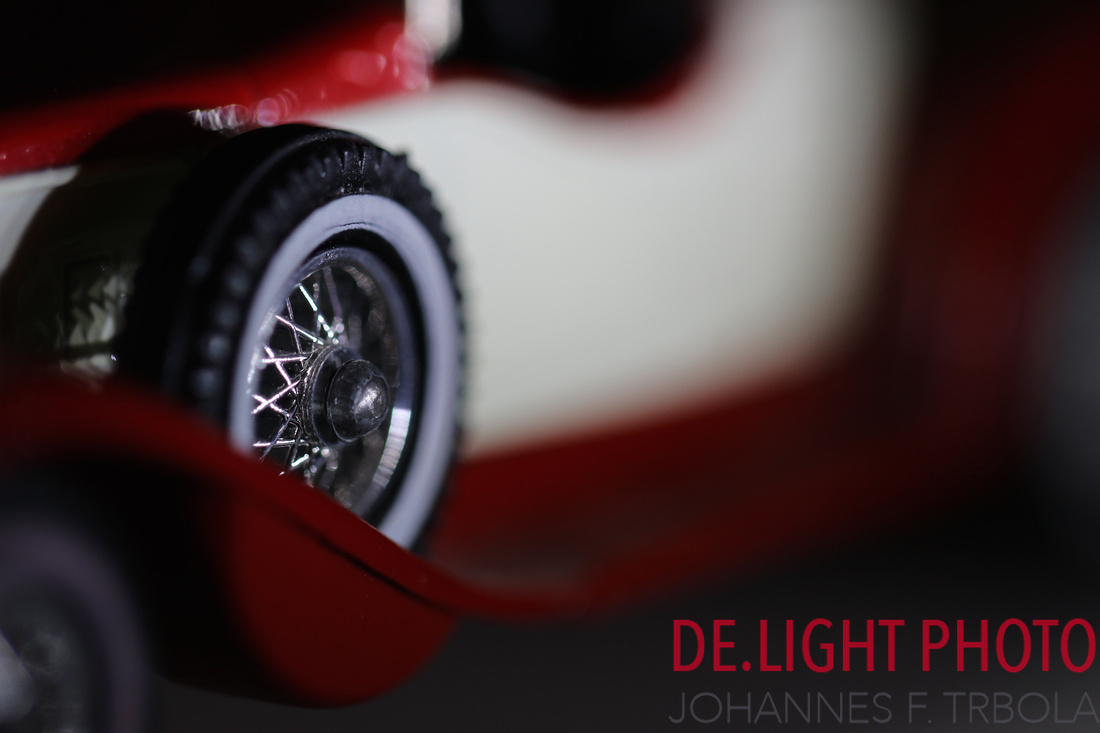
]]>
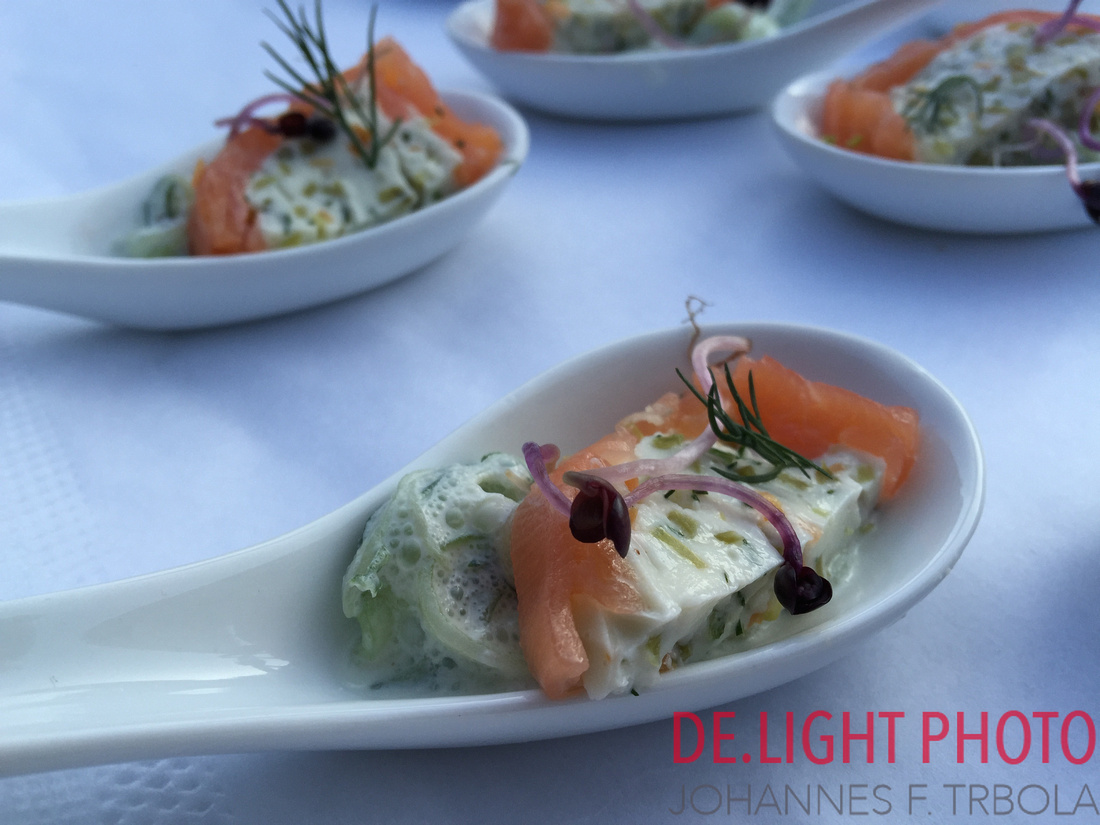
The first images taken with the new iPhone 6+ has nearly blown away my mind... crisp sharp images even under low light conditions.
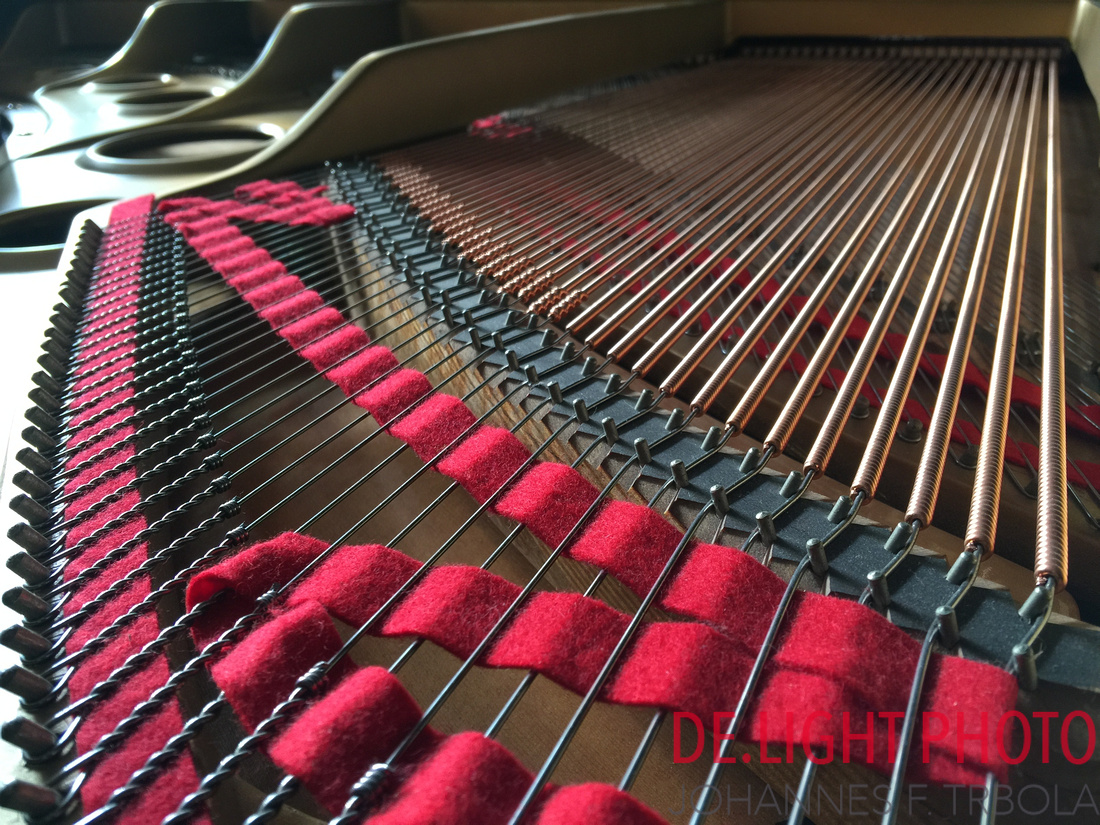
One feature of the new iPhone 6+ was the reason why i decided for the iPad nano - even if it is really huge: Optical Image stabilization - first time implemented in a smart phone camera.
After shooting the first images i wanted to compare the new device against the iPhone 5s. In normal or good light conditions the 5s delivered really great results - as You can see in my iPhone sites http://www.zenfolio.com/delightphoto/f481046366...
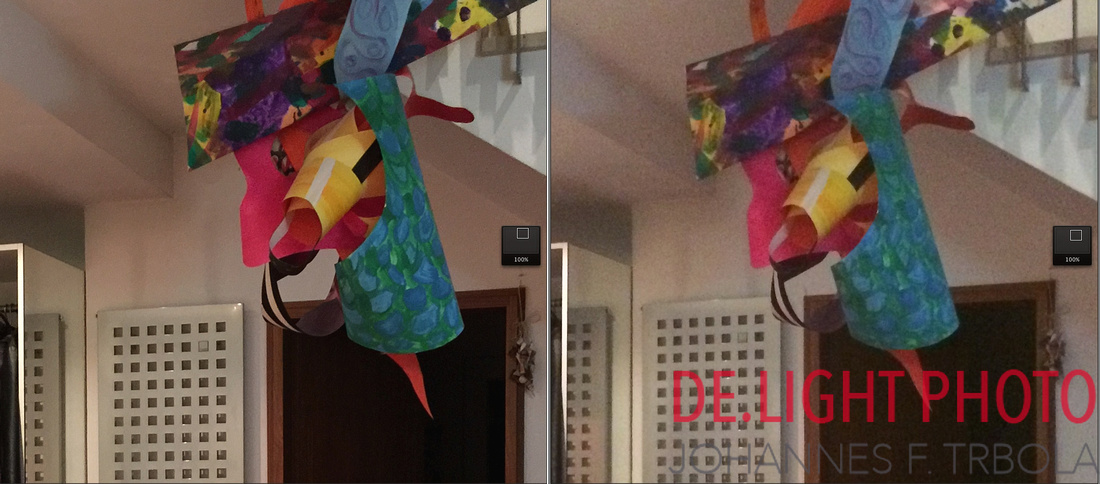
In all images the left photo is made by the 6+...

The difference is amazing. The noise at the 6+ is remarkable lower and much much more detail...

But with more light the difference becomes less....
The next story is blue hour photography: Even under these conditions the iPhone 6 + is performing remarkably good.
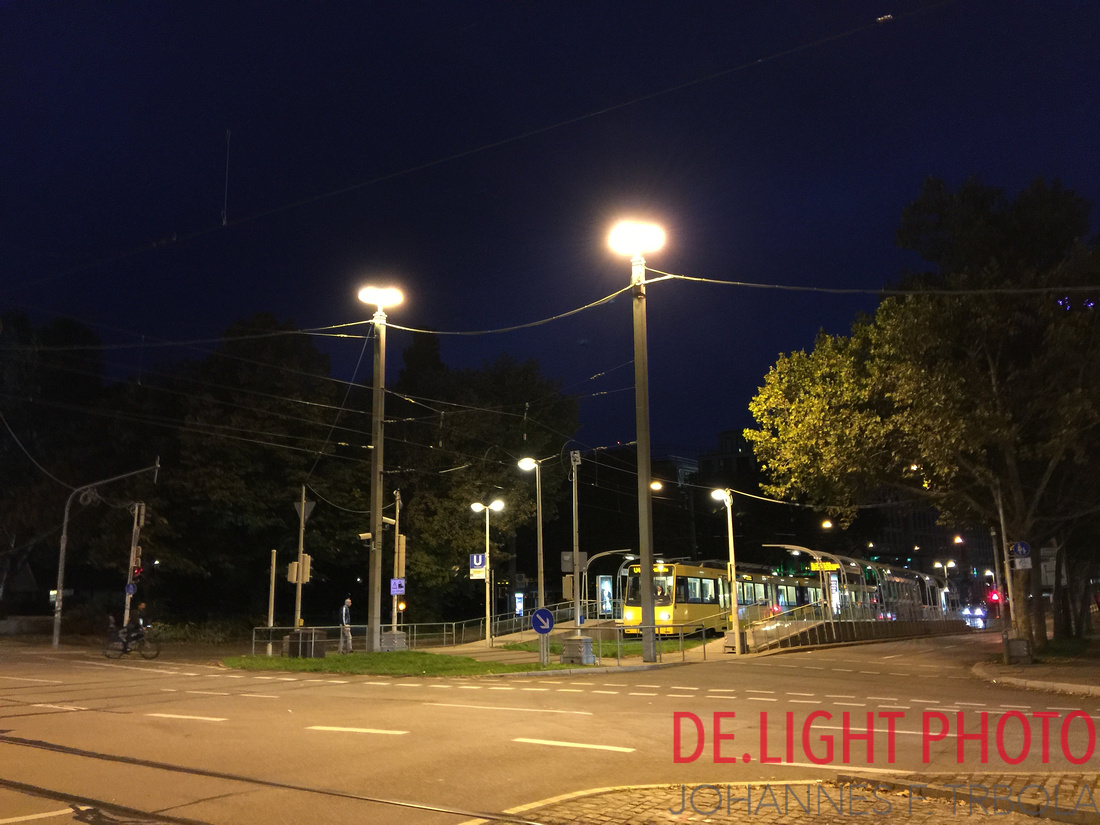

No tripod, just handheld. For me it is just stunning, how well this tiny little camera behaves.
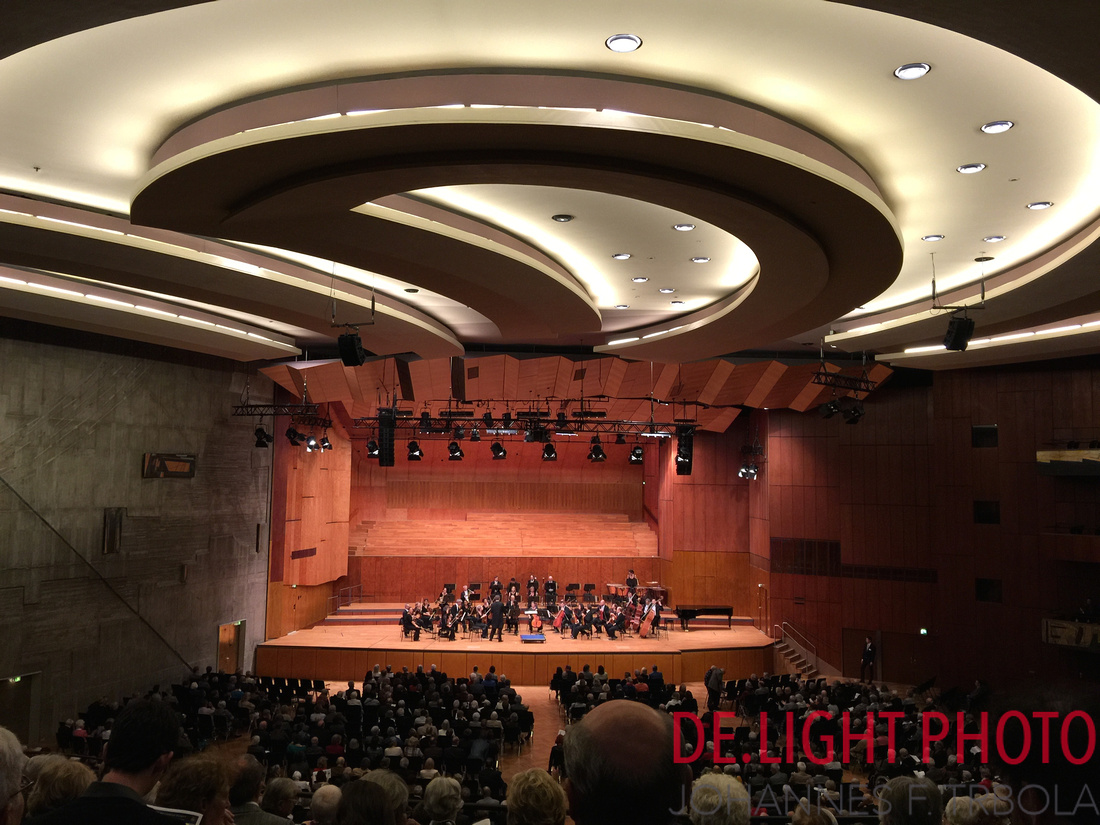
Another evening I visited a bar with a friend of mine... And oven in this environment the 6+ performed great:
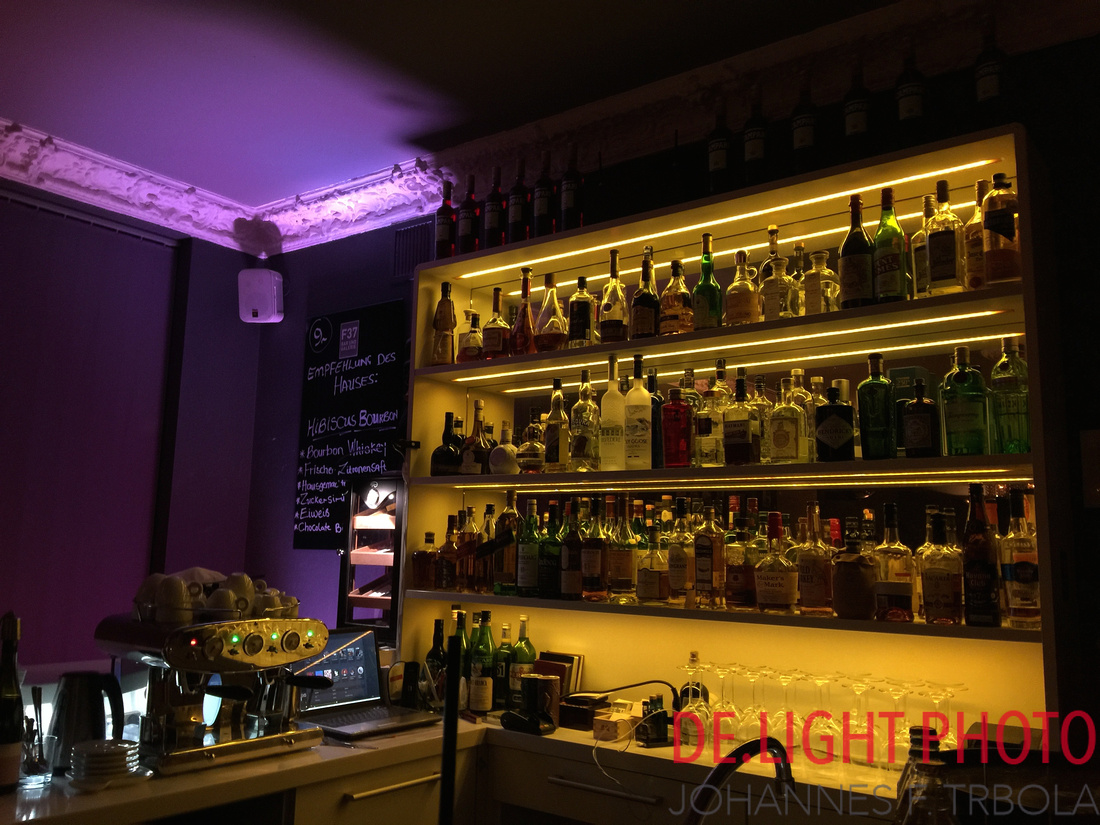

And even indoors: the new iPhone 6+ is a class of its own. I was at a private party where had been a Lumix FZ150 (A camera I recommended for a ling time) as well a s a EOS 650D. I preferred to use the iPhone: much more responsive and easier to use.
As a conclusion: To use a better camera than this iPhone you have to invest much more money in state of the art µ43 or APS-C equipment. The normal point and shoot cameras deliver much lower quality and shooting experience.
]]>September 19th 2014 I went to Cologne to visit the Photokina. The main idea was to check some new Camera Gear and some Lenses.
In terms of Cameras: The new digital back for Hasselblad (Great, but for me it will be for studio shots only! - I will try to rent this back), The brand new Canon EOS 7D MkII: (Need that one! Great!!! Same User Interface like 5D3...) and the Panasonic GM5 µ43: Yes! All items to be criticized on the GM1 are solved... Must have, too: Electronic Viewfinder and Flash hot shoe are on board now....
For the lens tryouts I had my 5d3 and the GM1 with me. Let´s start with µ43.
µ43 Lenses
Samyang 7,5mm f33.5 Fisheye
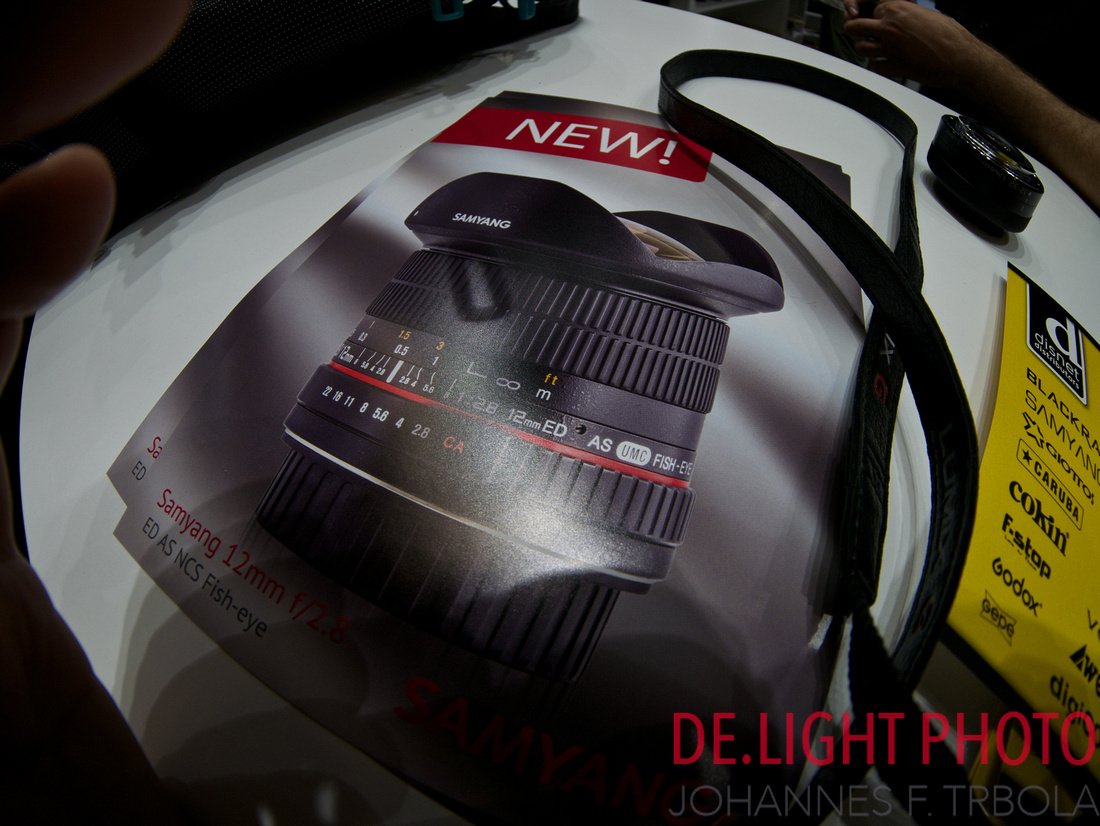
Pretty interesting lens especially for 300€... But fully manual and no EXIF´s
Samyang 300mm f6,3 mirror Lens

Well, special case: especially if you like the kind of Bokeh of the mirror lens. Very light, very compact...
Leica Noctigon 42,5mm f1,2

Absolutely Great Lens. Amazing Built Quality - and Bokeh!! Very hard not to buy if you have the makro already....
Summilux 15mm f1,7
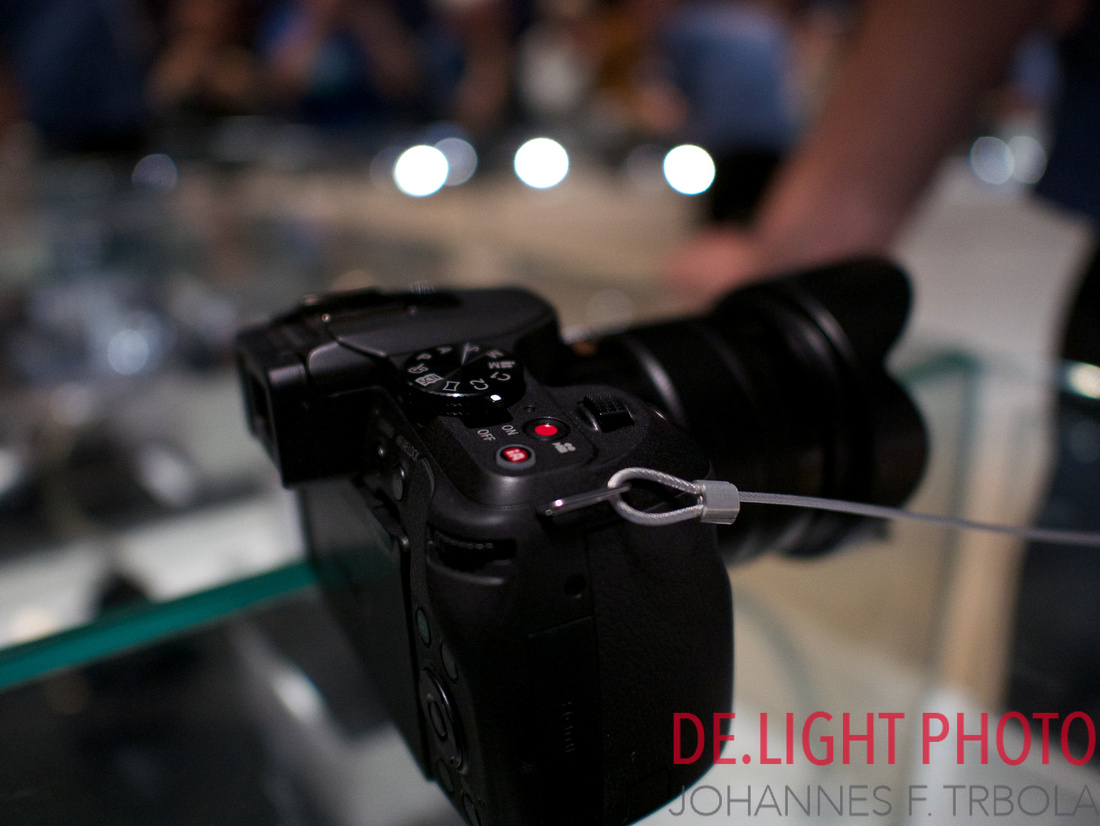
Hope Panasonic will bundle this lends with the GM5... Great... And nice looking on the tiny GM as well..
Full Frame Lenses
Samyang 1,4 50mm

The only NoGo Lens, mainly in terms of Color Fringing....
ZEISS Otus 1,4 85mm
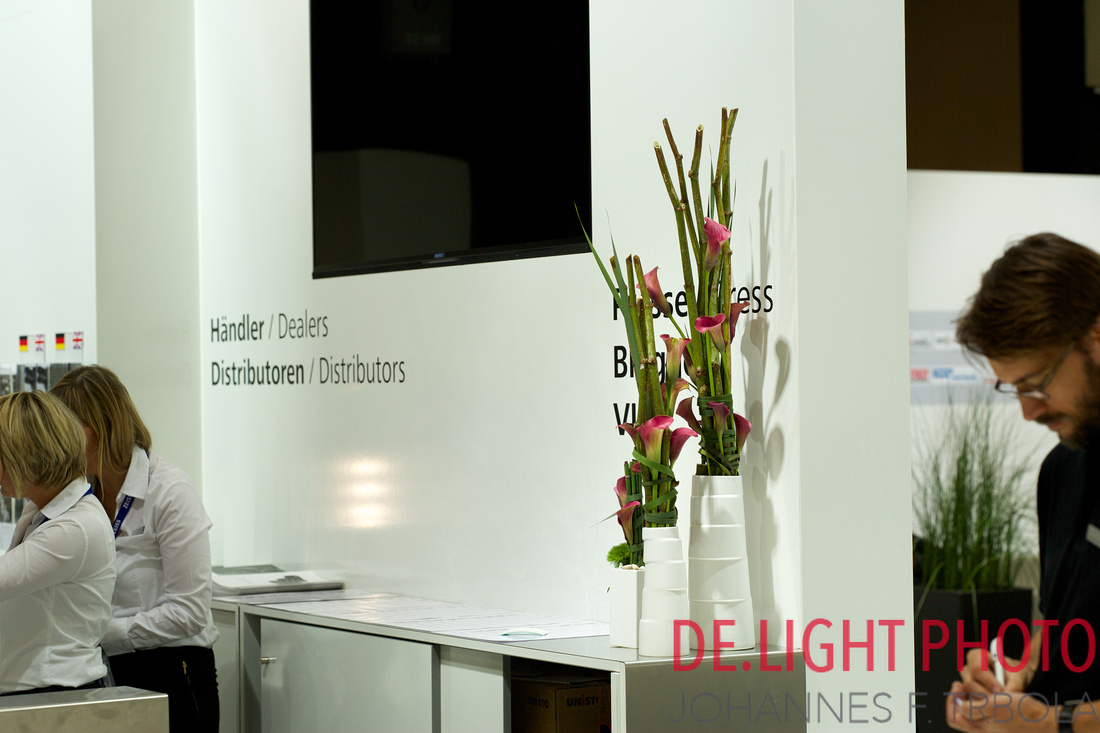
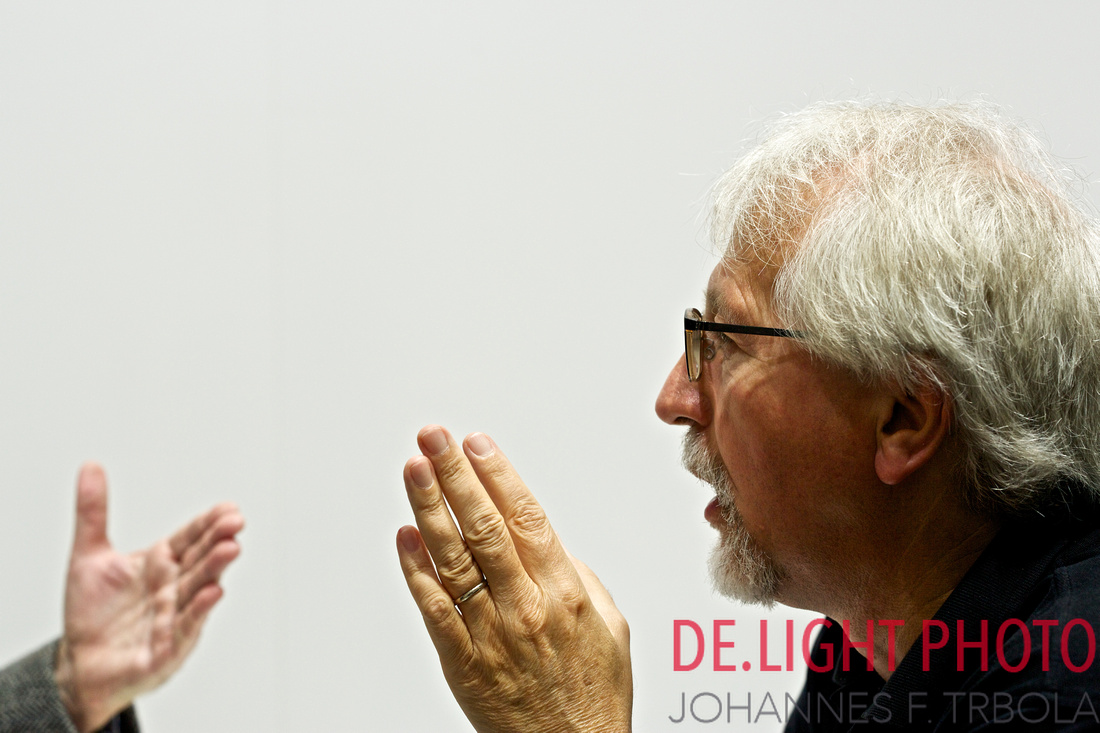
Dr. Hubert Nasse, Senior Scientist@ Zeiss explaining the advantages of the Zeiss lenses...

Well, maybe the best Lens I had on my camera ever!! Amazing. But you have to upgrade the camera with a split image focusing screen...
Maybe I buy it if Christmas and Easter will happen on the same day... 4.500€...
Zeiss Otus 1,4 55mm
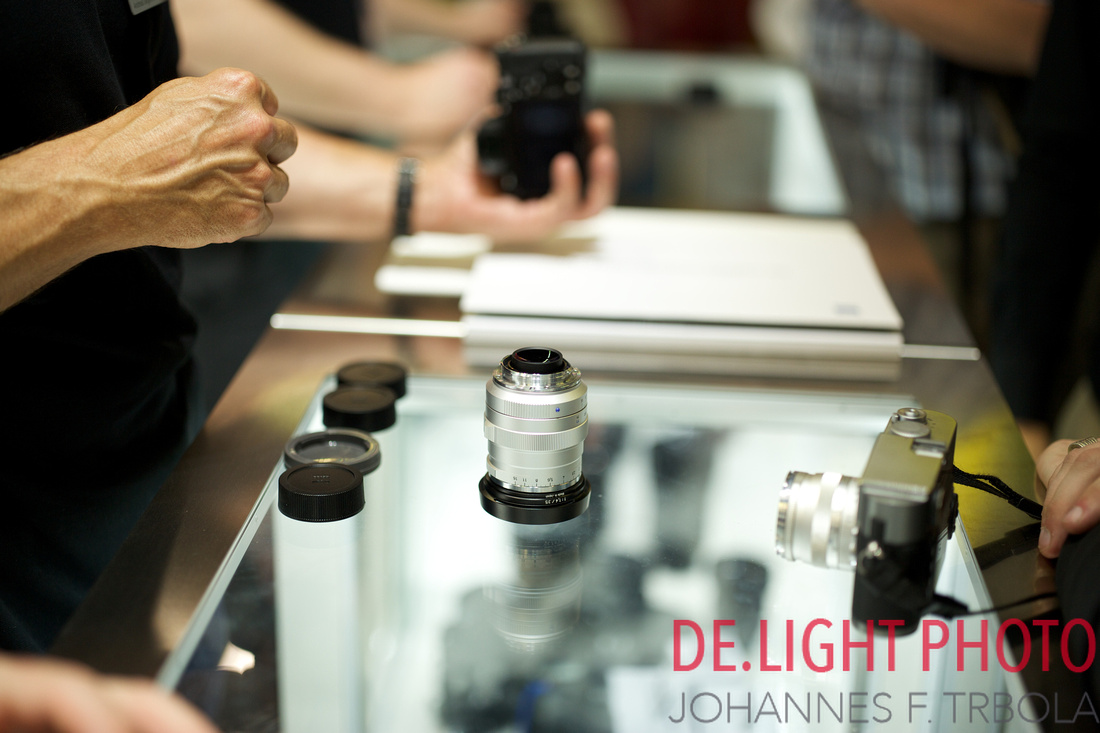
Definetely the next lens monster... Again a great Lens - but kind of Stradivari as well...
Zeiss 135mm f/2 Apo Sonnar T* ZE

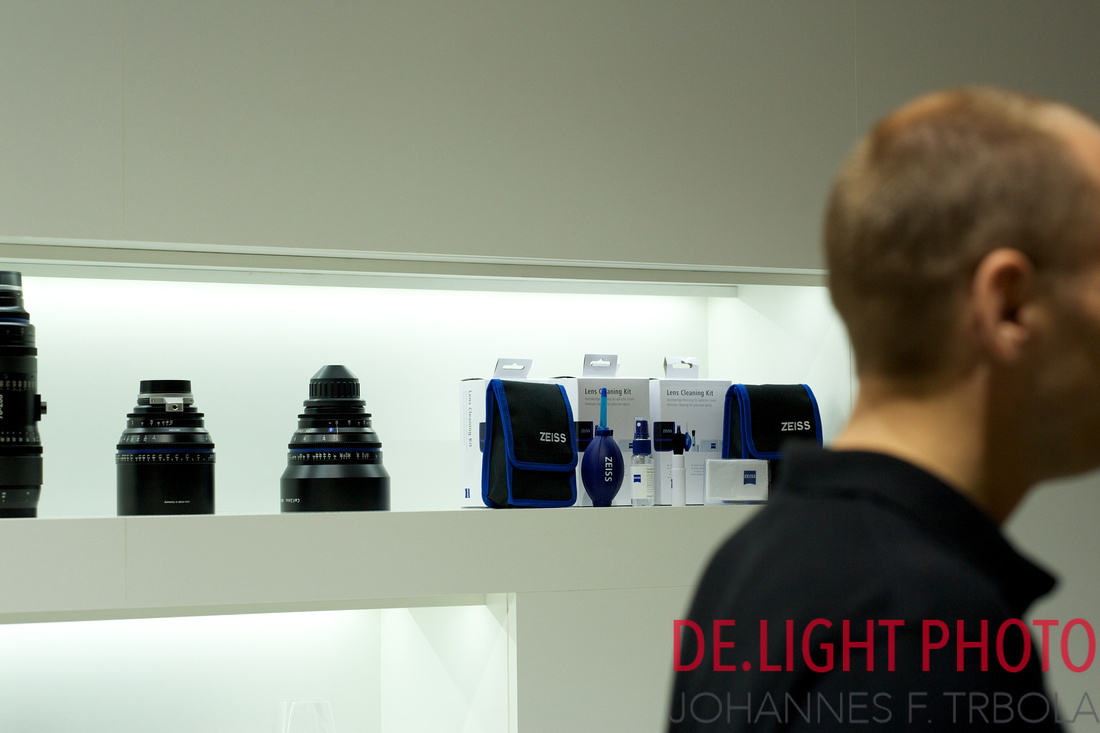
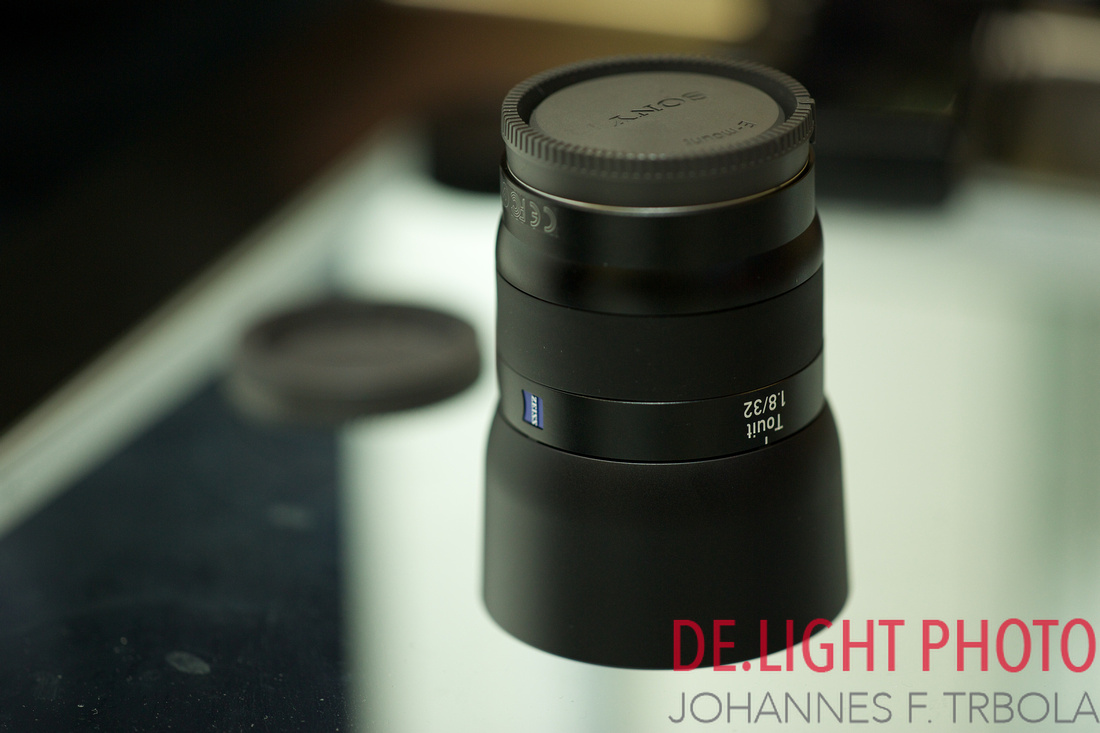
What a Bokeh... And sharpness.. And @ 2.500 € pretty much affordable.... (But only in comparison to the Otus Lenses...) ;-)
Sigma 1,4 35mm ART
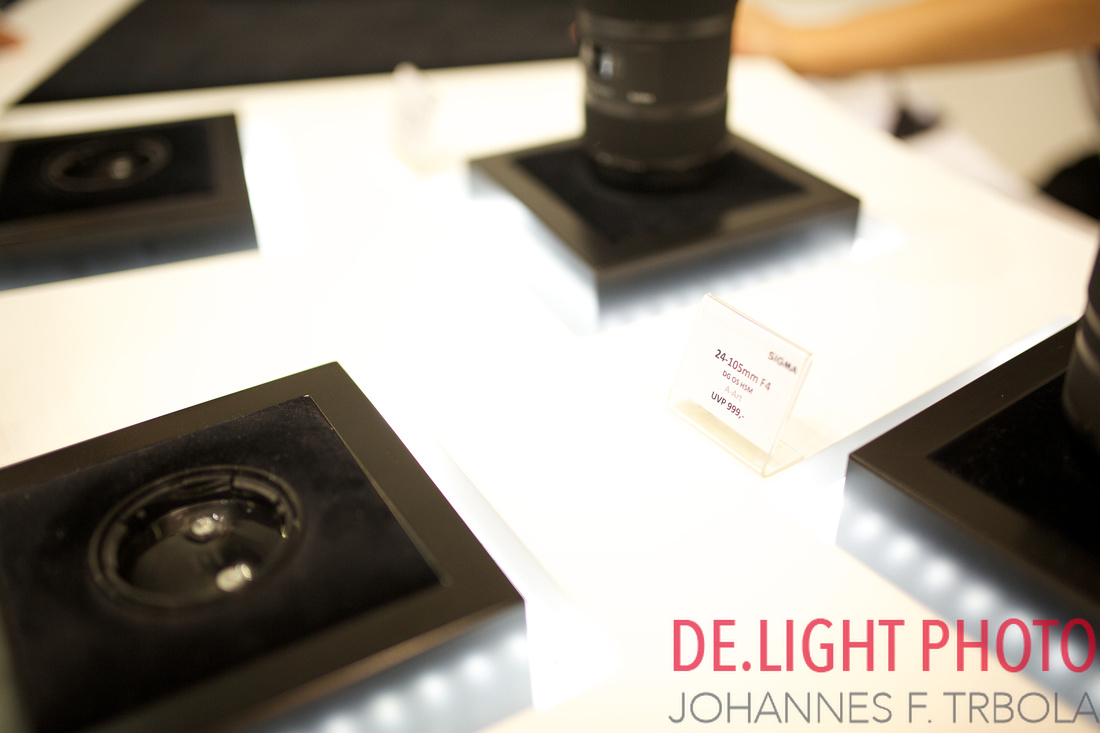
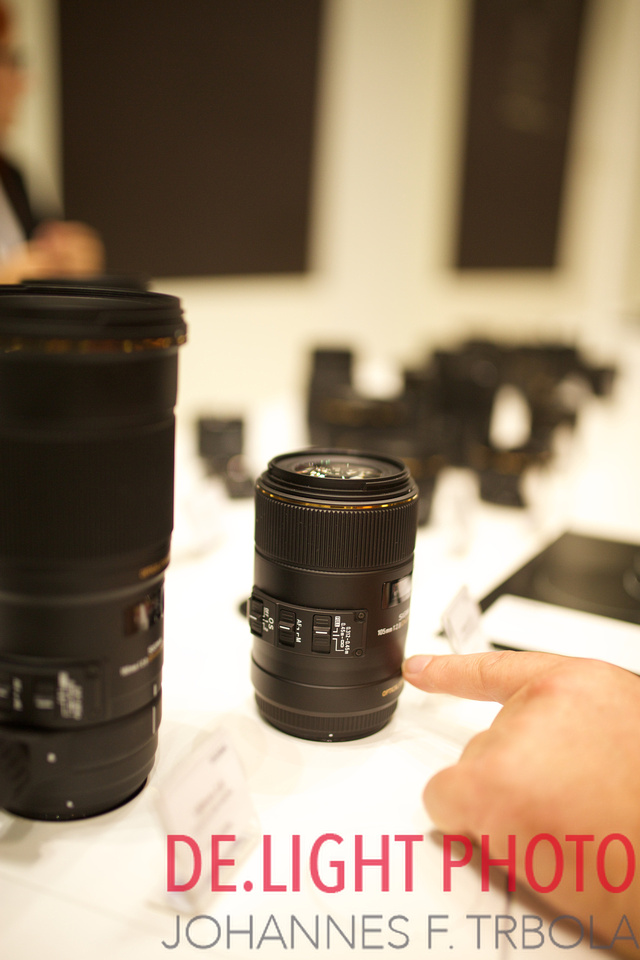
Well... Considering the Otus Lenses as a dream... The ART-Lenses from Sigma are really great. And they come with autofocus, which makes live much easier.... It would be great to have this lens in a direct comparison with the 2.0 35mm IS Lens from CANON... Really interesting... I think the winner is open...
SIGMA 1,4 50mm
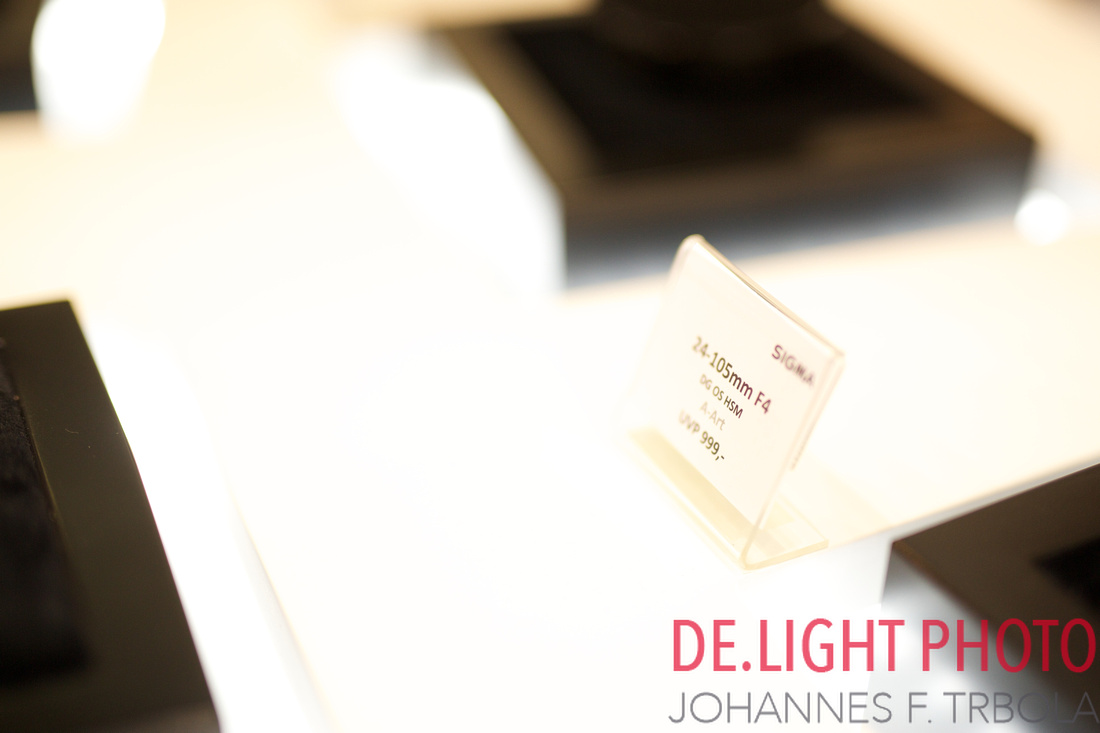
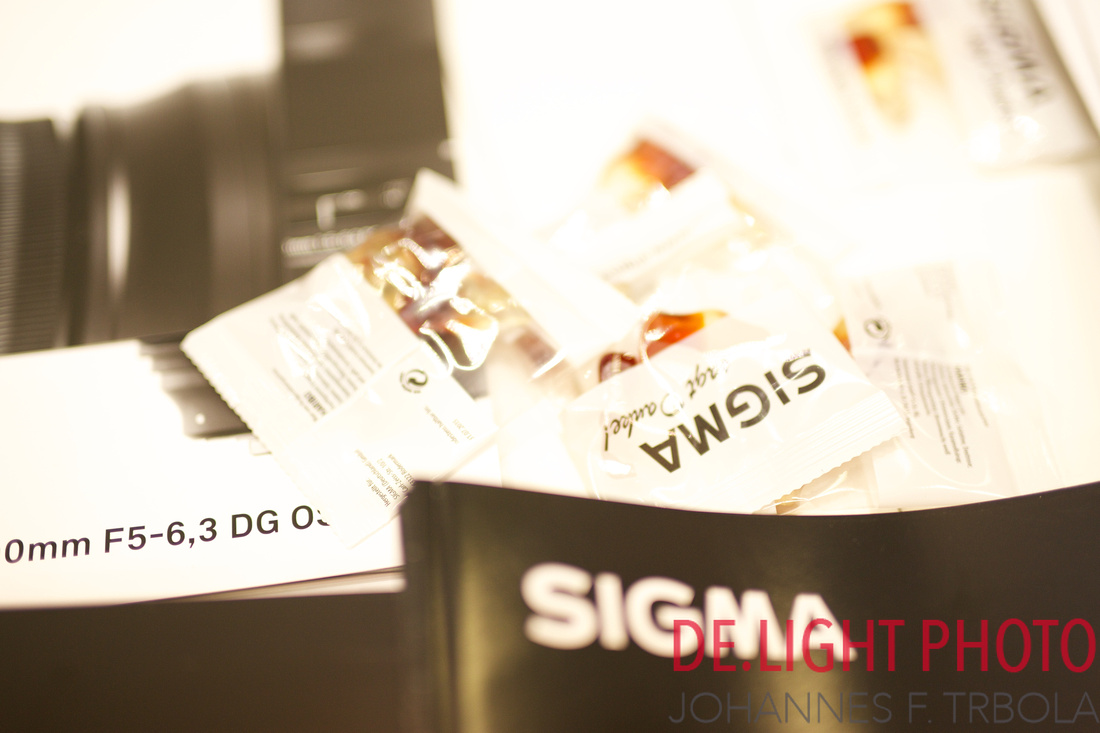
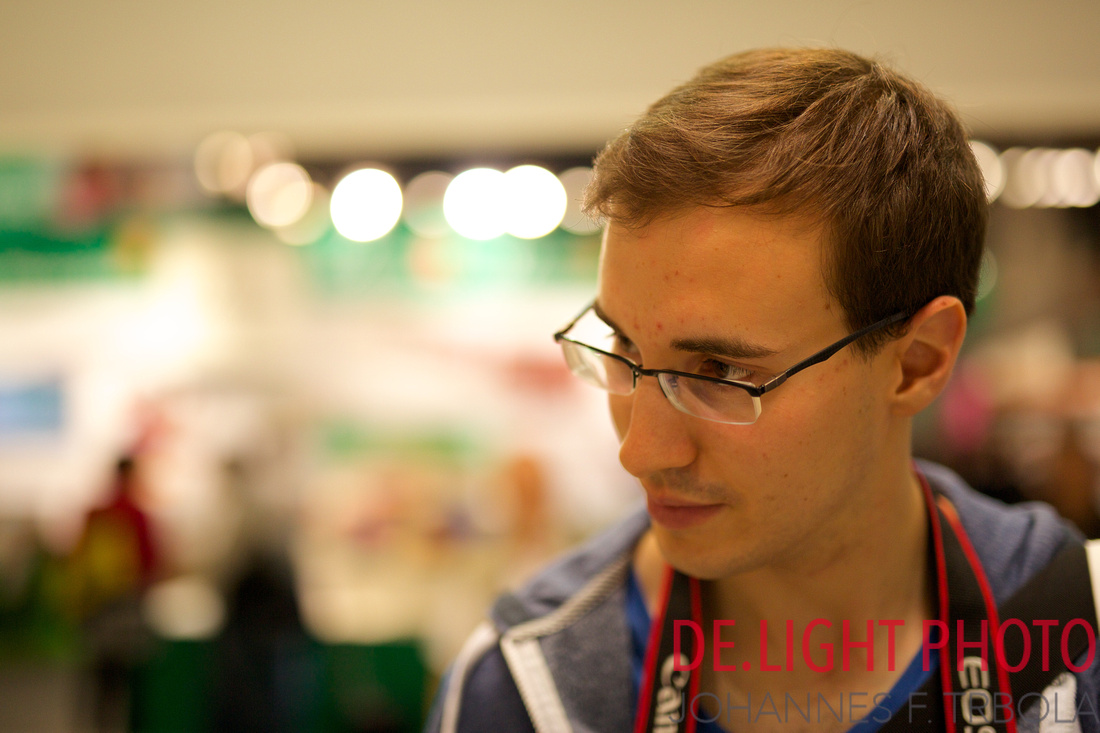
For me the SIGMA 1,4 50mm is a lens I can really recommend... Clearly better than the 1,4 50mm from Canon - and much cheaper than the OTUS....
Remarks
What was really astonishing are the EXIF´s of the 3rd Party Lenses. If a Zeiss Lens does not tell the user the exact Lens name: This is really disappointing... But with Sigma it is the same...
Photokina generally is a place to be, for professionals and enthusiasts... Next time I plan to stay longer: To see the whole show - and to have more time for live presentations...
]]>
But sometimes it will not help you to use an aperture of 22 to have those areas sharp which you want to have sharp - and let the rest sink into all depth of bokeh.
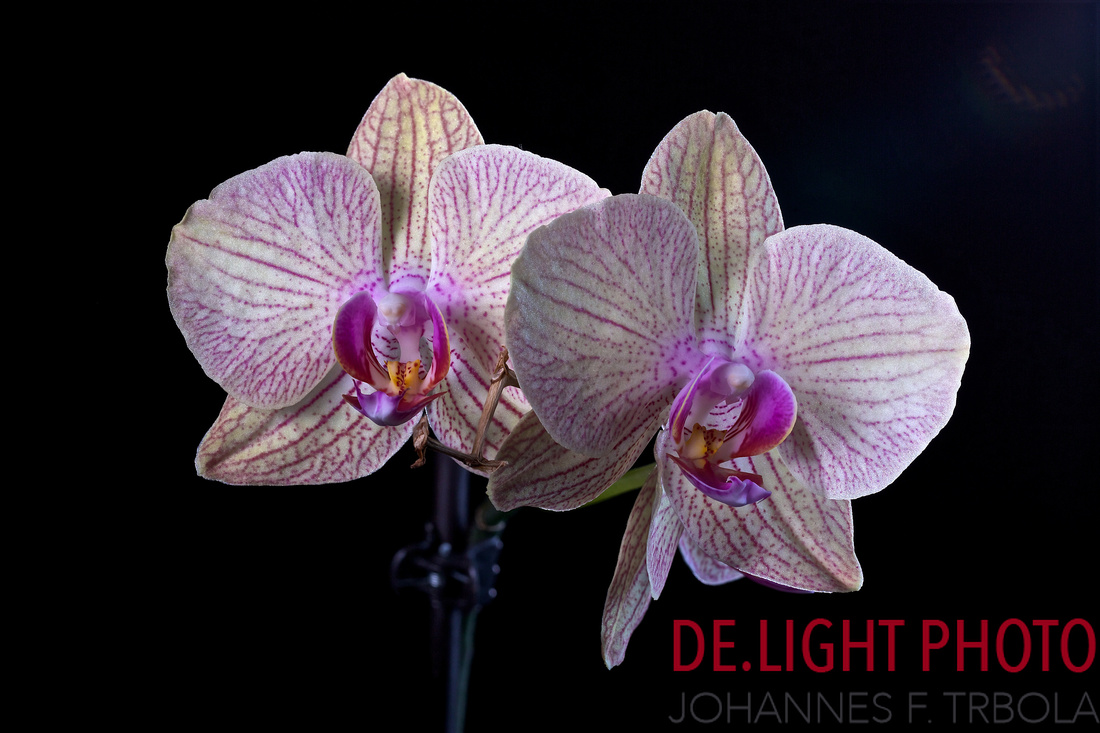
In the past there was no chance: you had to live with what you get... But in todays time of Photoshop and other tools of image processing there exist another possibilities. The name of this method is named: Focus Stacking.
How does this work? First you define yourself which is the area of interest. From which point to which point the image should be sharp. In the example above it is pretty clear: The blossom itself. And the rest has to be blurred...Depending on the aperture you have to decide or you have to try out how many steps you will need or how large these steps should be.
I used for the shots above the EOS Utility. My Intervall was 2 medium steps according to the EOS-Utiliy software. I shot typically 4-8 images. And than I used http://www.heliconfocus.de to do the calculations....

Sounds easy, or? But it was not. The problem was - how to work let my 5DMkIII let fire the flashes... You can fire flashes in live view and in the EOS Utility - but only with Canon flashes. How to solve? pretty easy: You have to cheat the camera, f.i. with a flash trigger which tells the camera that there is a Canon flash on top. I used the Yongnuo 622c for that and it worked... http://www.hkyongnuo.com/e-detaily.php?ID=195
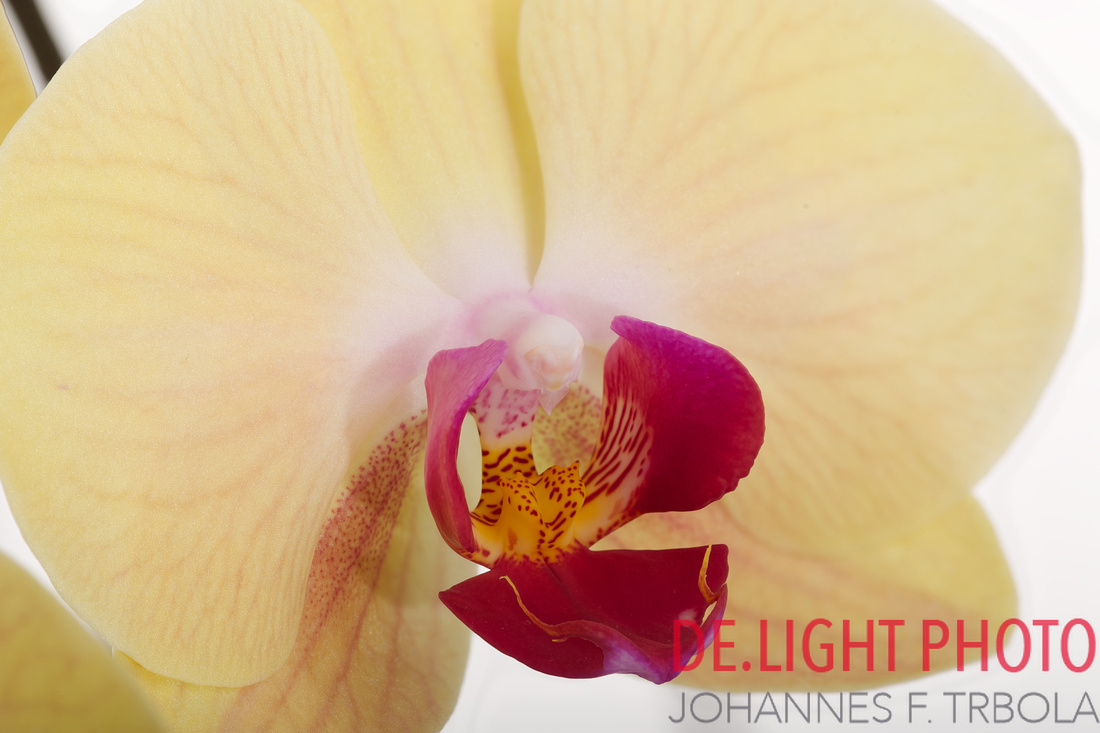
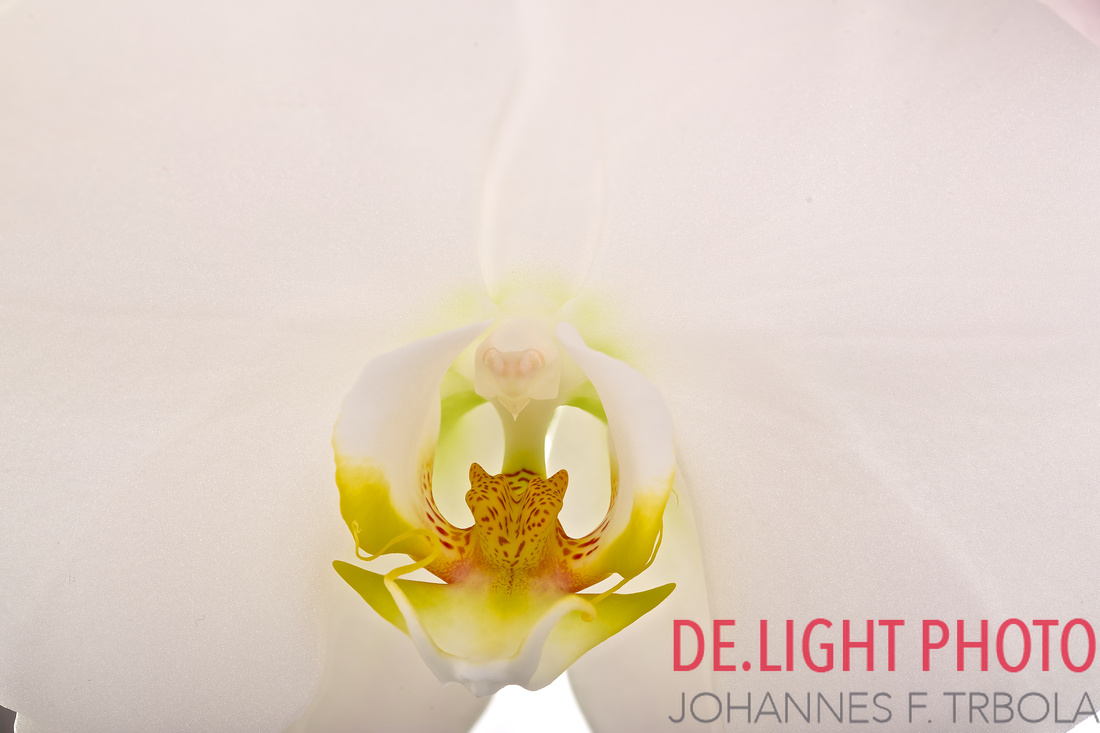
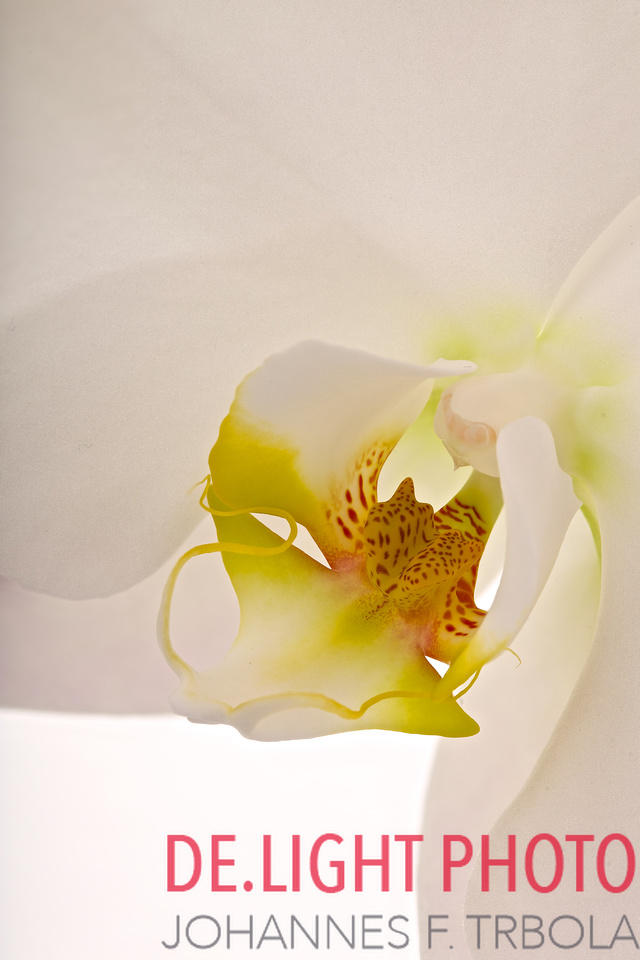
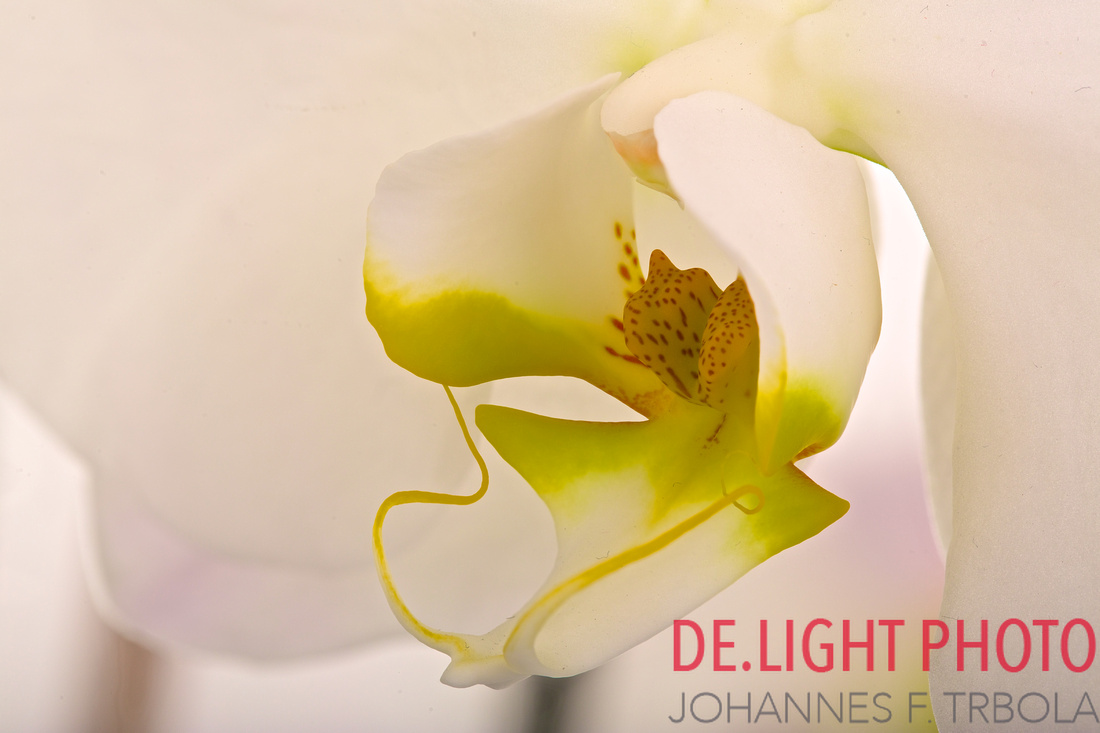
I want to give an answer on this topic. When Canon released the new EF 16-35mm f/4L IS USM I was a bit skeptical. When I read the first reviews I got amazed: image quality wise this lens tops the 2.8 16-35mm lens by fare. And the "must have" syndrome was released...
Yesterday Evening I wanted to do some panoramic photos at a place where I wanted to photo since a long time. Blue hour shots with the panohead. When I arrived I realized that I made a mistake: I had the right bag with me but the wrong tripod inside (I have 2 of those bags...). Ok: let´s do it without tripod... And the result came out great..

The place is the PRAGSATTEL in Stuttgart. One of the most busiest places in Stuttgart. You have up to 10 lines there- 4 of them in a tunnel... And the tunnel itself has a special piece of art at the entrance gate as well at the technical buildings...

The concrete blocks with light in it show where the lines in the tunnel are - below.
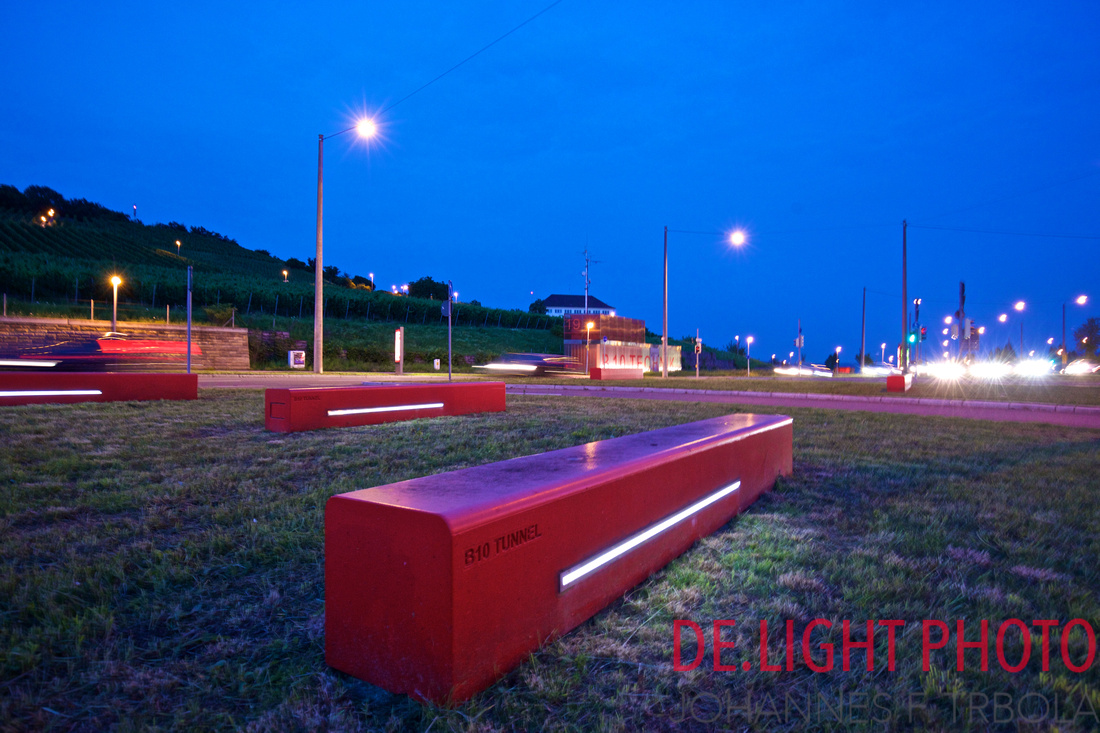
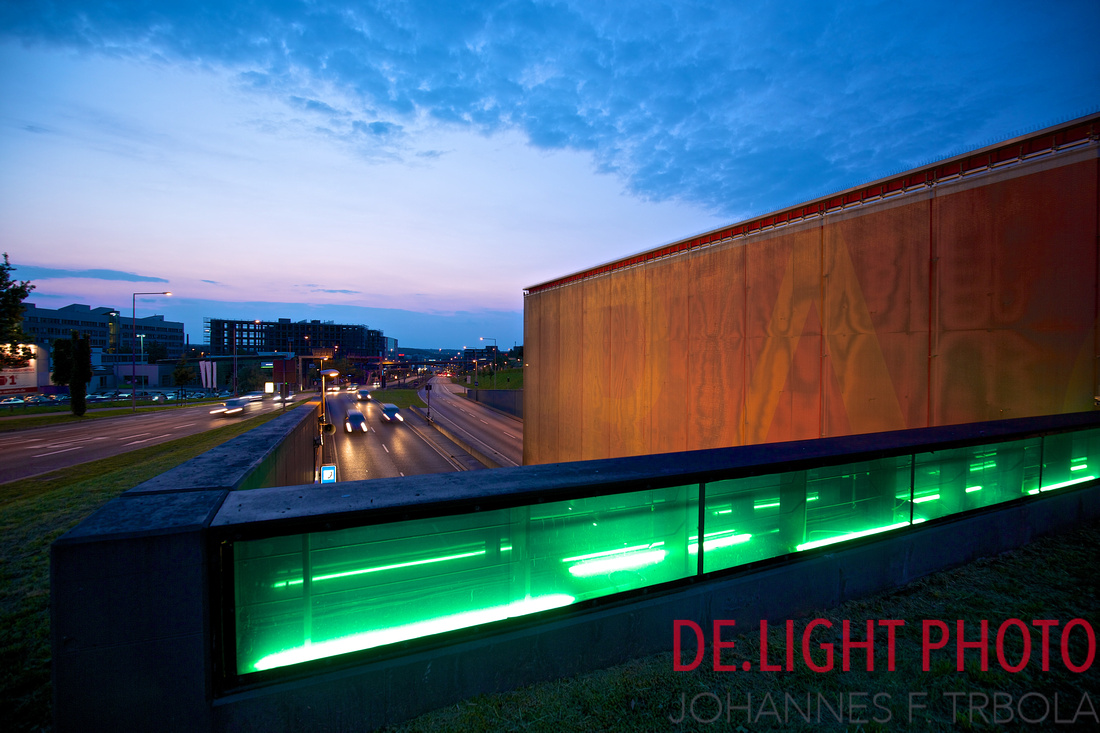
Beside the tunnel there is a subway station as well. And a bunker from World War 2...
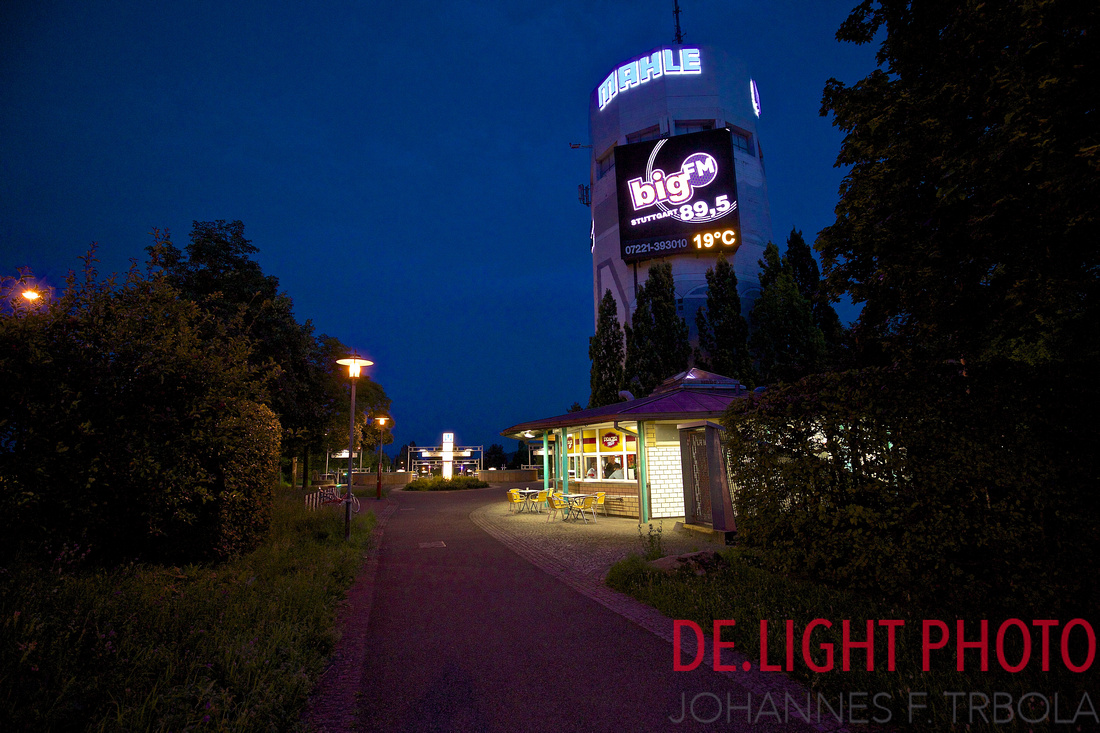
Beside the bunker there is a small kiosk... for people coming from work and waiting for the next subway...
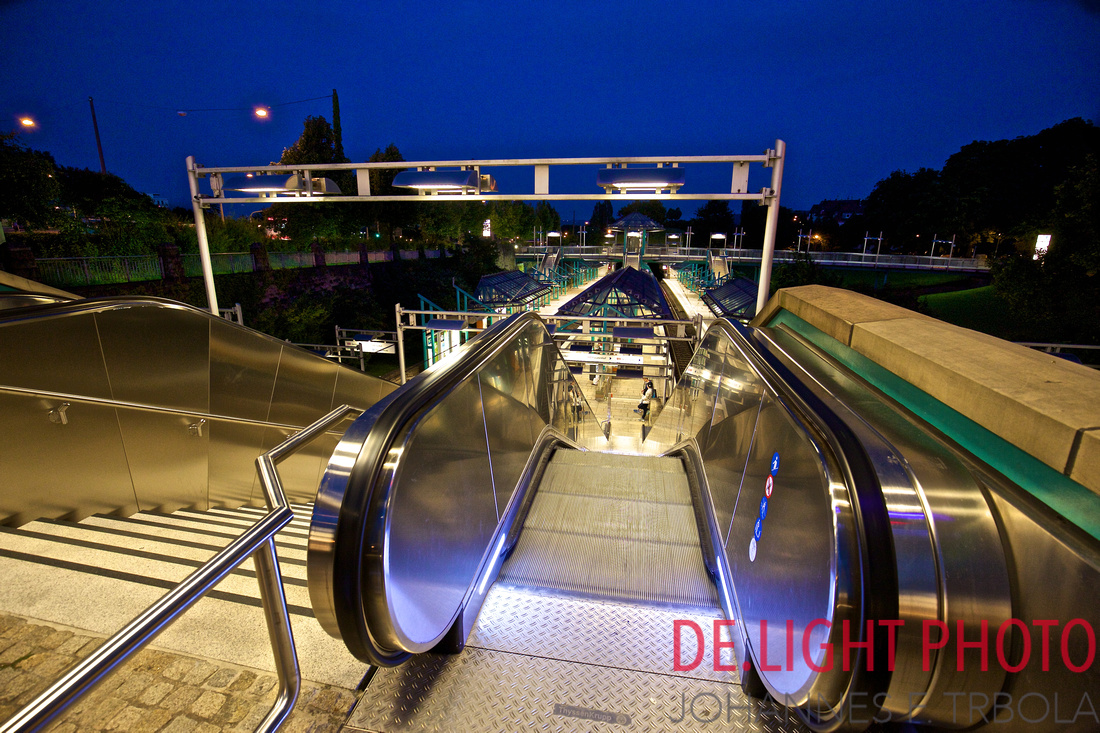
Most of the pictures were take with 1/4s. handheld!!!
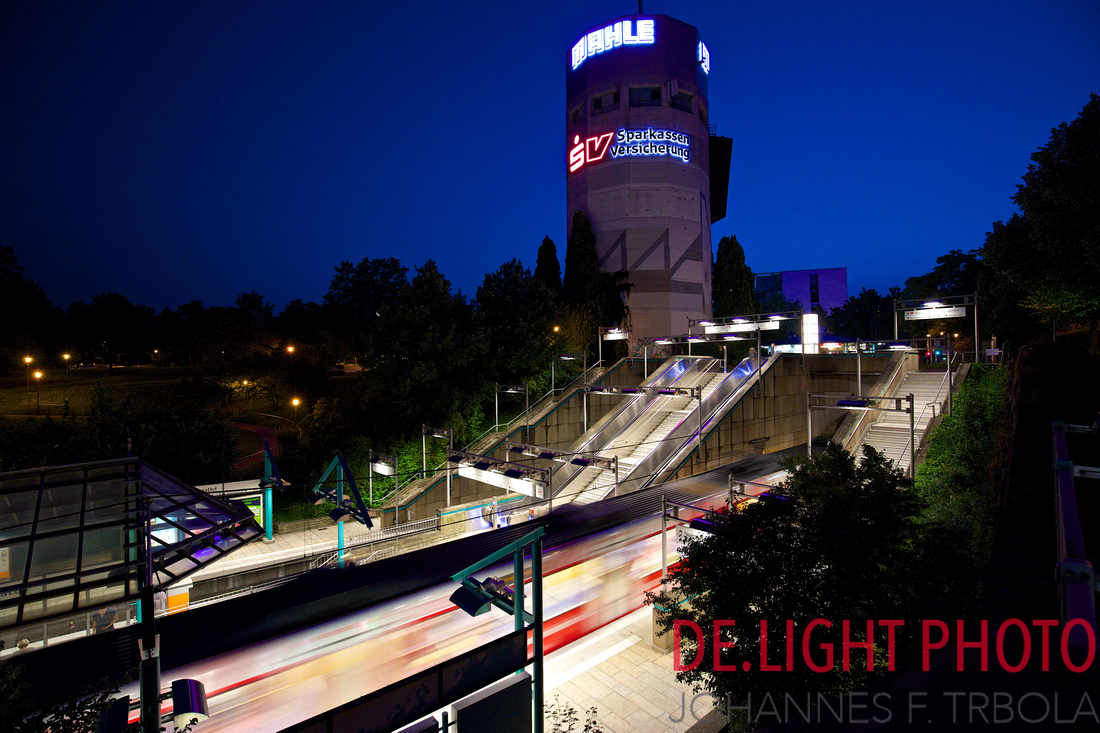
Motion blurr... yes! you can capture motion blurr. Handheld!!!
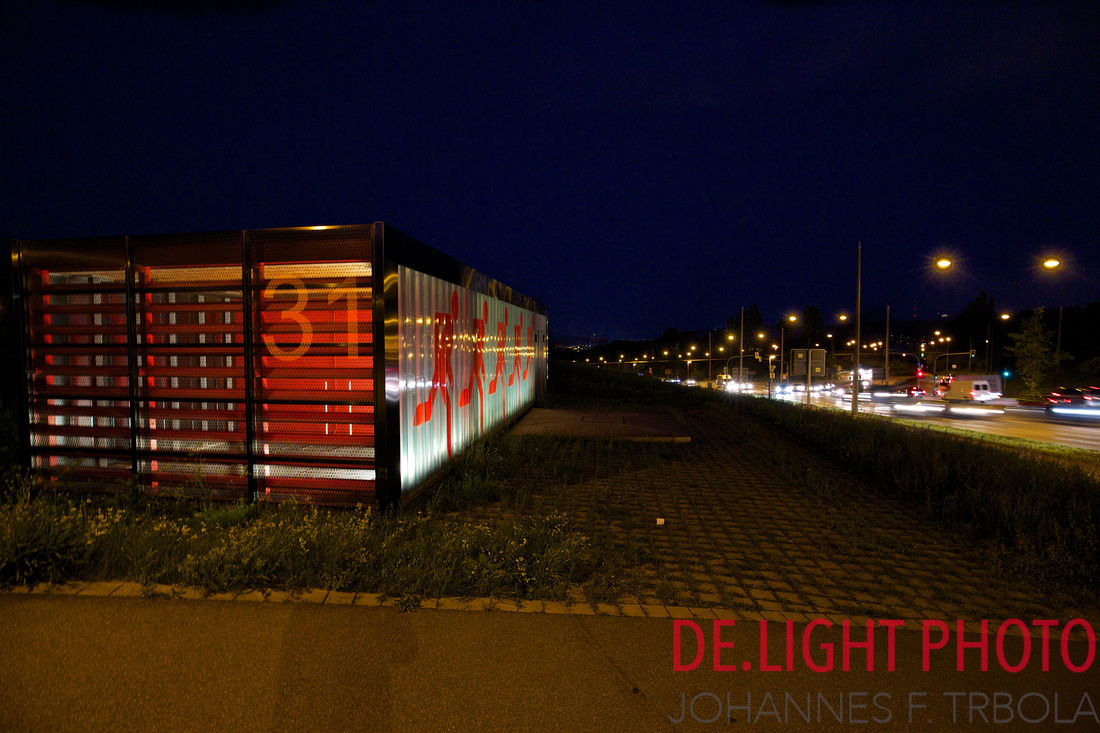 Kind of self portrait ;-)
Kind of self portrait ;-)
Congratulation Canon for this great tool! It´s great fun to shoot with it: so: Congratulation to a great toy as well!!
]]>
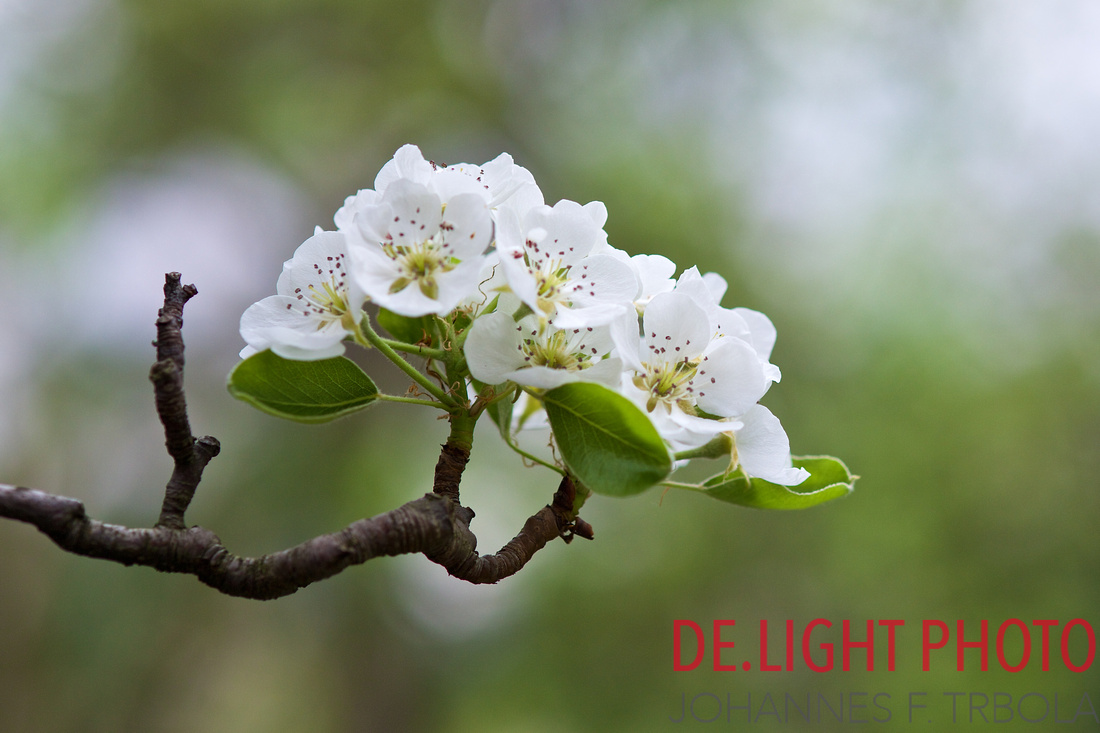
Since my analog times I do have a 1,4/85mm Lens from Zeiss. I used it form time to time an my 5D MkII and MkIII. But it was working only in manual mode. Especially focusing was an issue. For a short time the adapter was delivering results but later it was not working anymore..
Therefore I decided to add a new 1,4/85mm. The test performances and the pricing were the key trigger to buy the f1.4/f85mm lens from Sigma... And from the first use I realized: I really missed this lens for a long time.
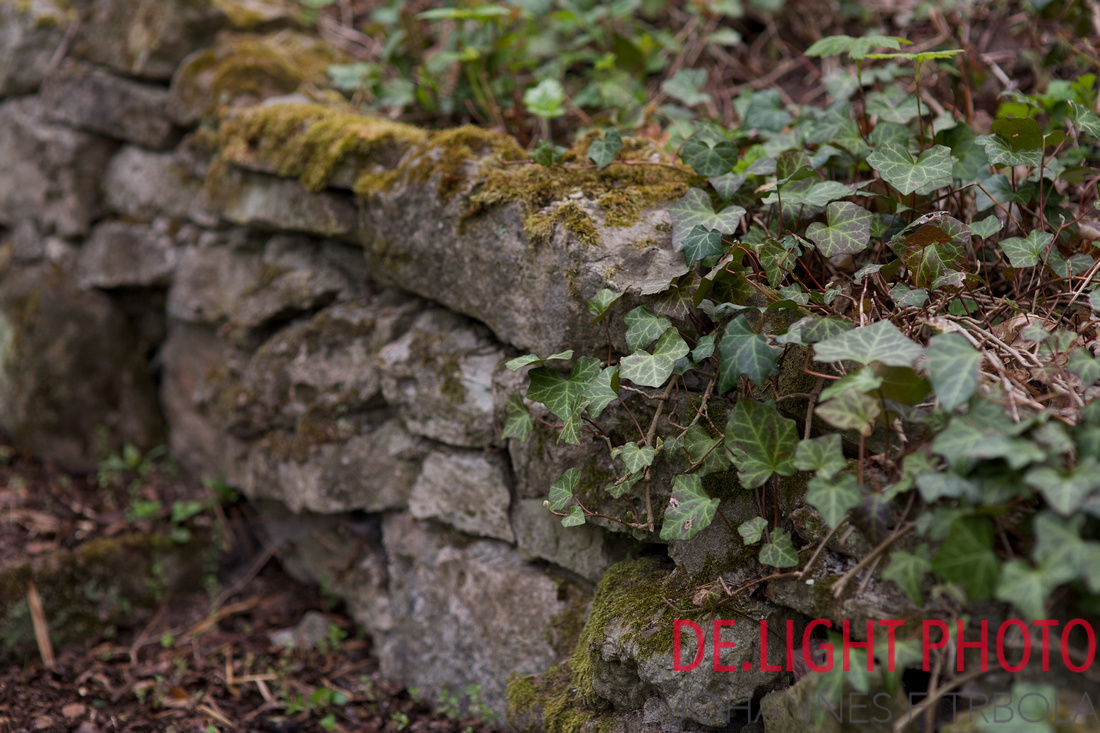
But Bokeh is not the only strength of the lens. Sharpness and contrast is another aspect which amazes me.
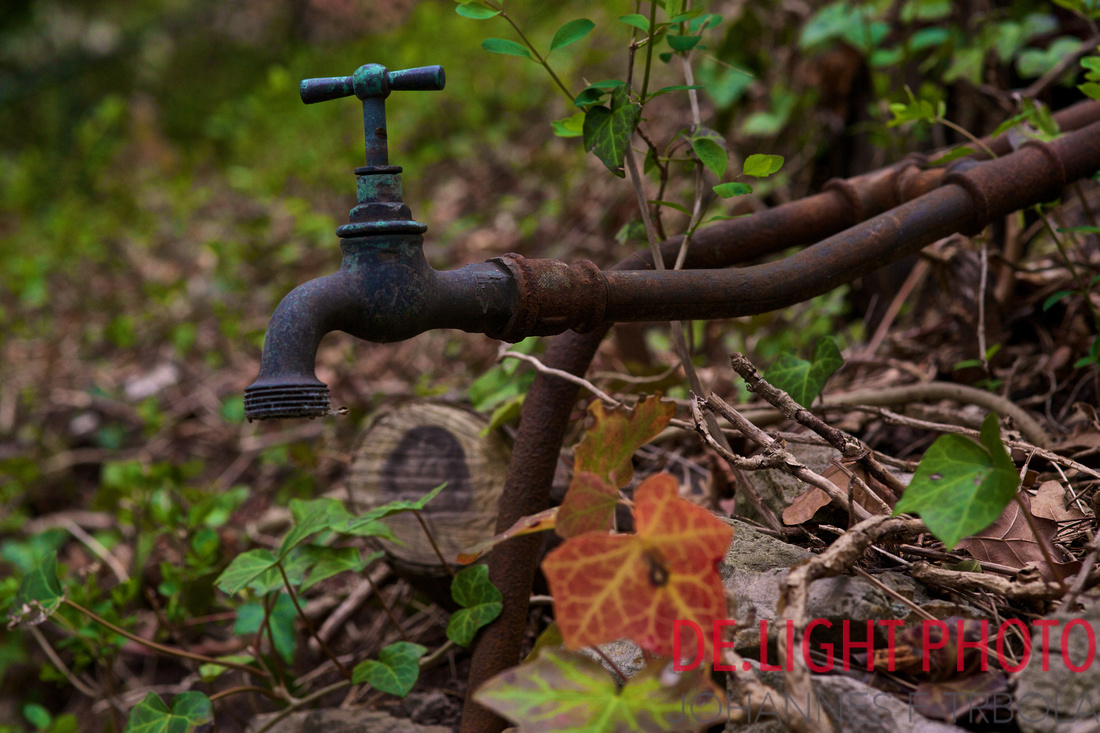
The photo above shows some more filtering based on MacPhun´s Intensify Aperture Plug In Filters, but for me it shows set possibilities tof this lens as well.
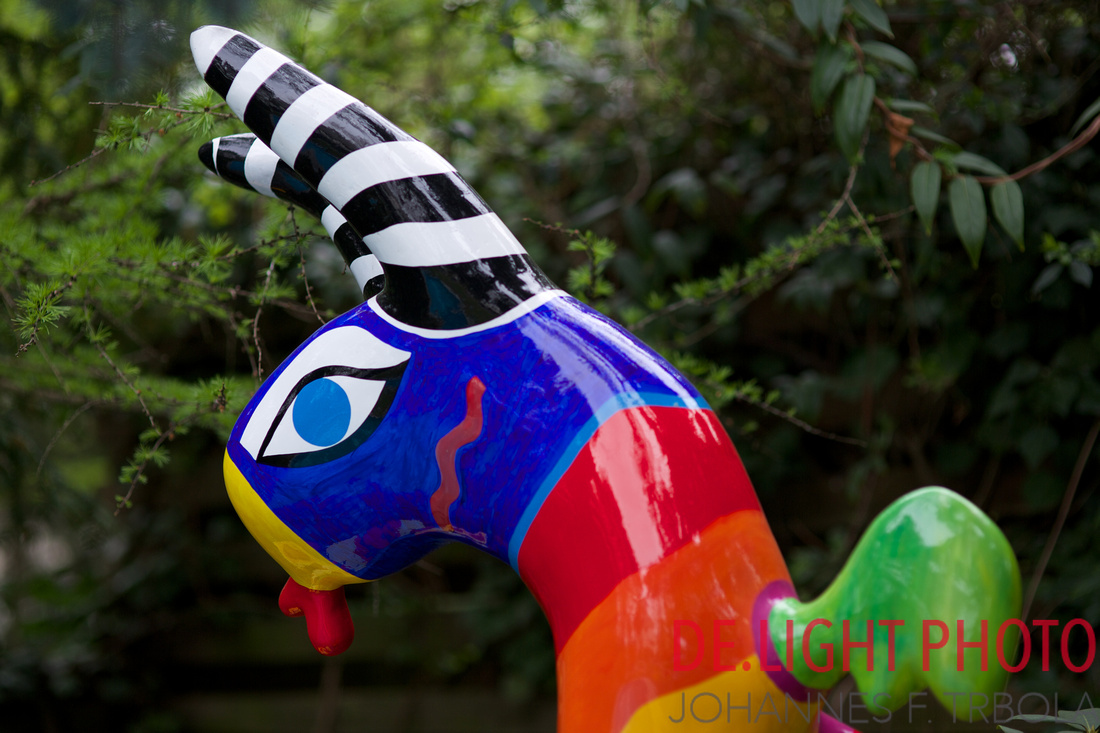
The Colors are really amazing.
I will see on my next trip having 3 primes with me: 35/50/85... Will be interesting to see how often I will use them...
Some add ons a few month later...
African Experience..

I like this shot of an African Beauty... The hair looks amazing...
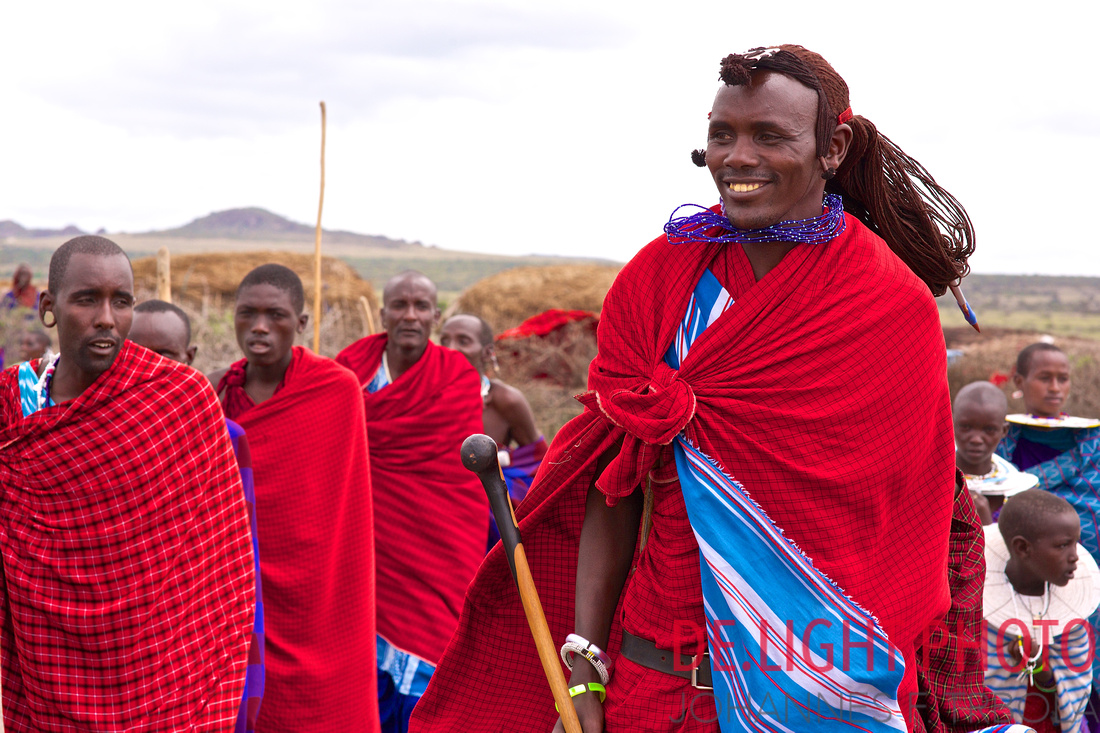
This is a Massai star photo - due to my taste... I like it
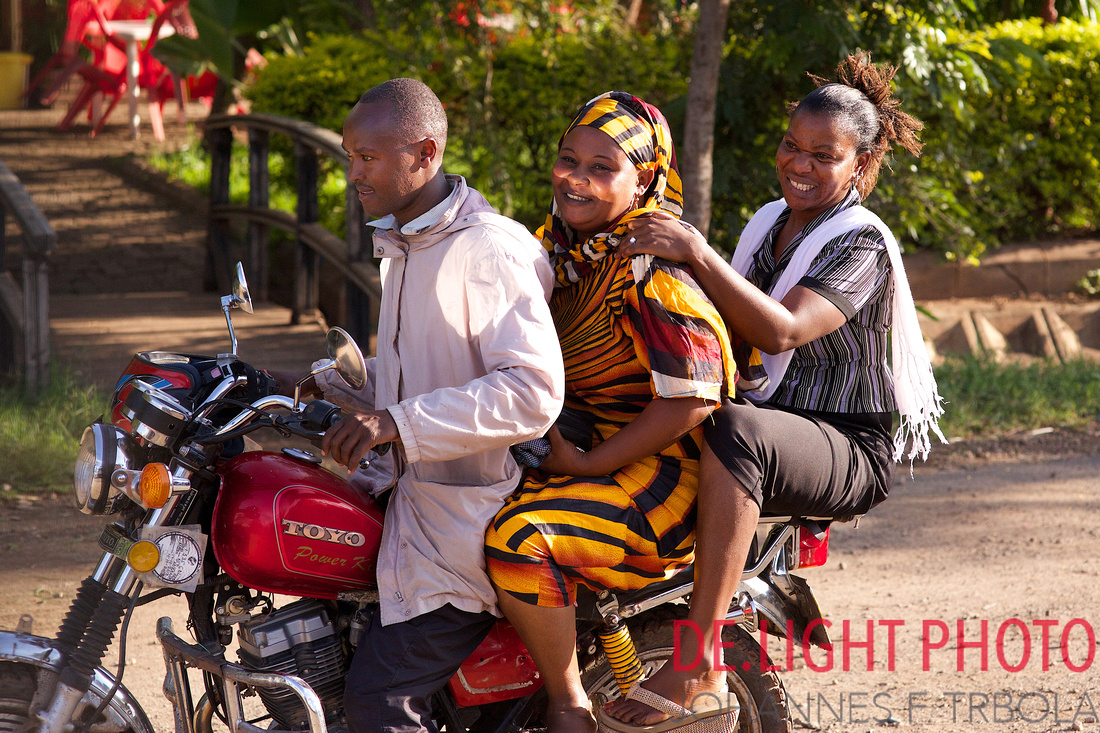
The funny story of this photo: I hot it from the car... and its Africa....
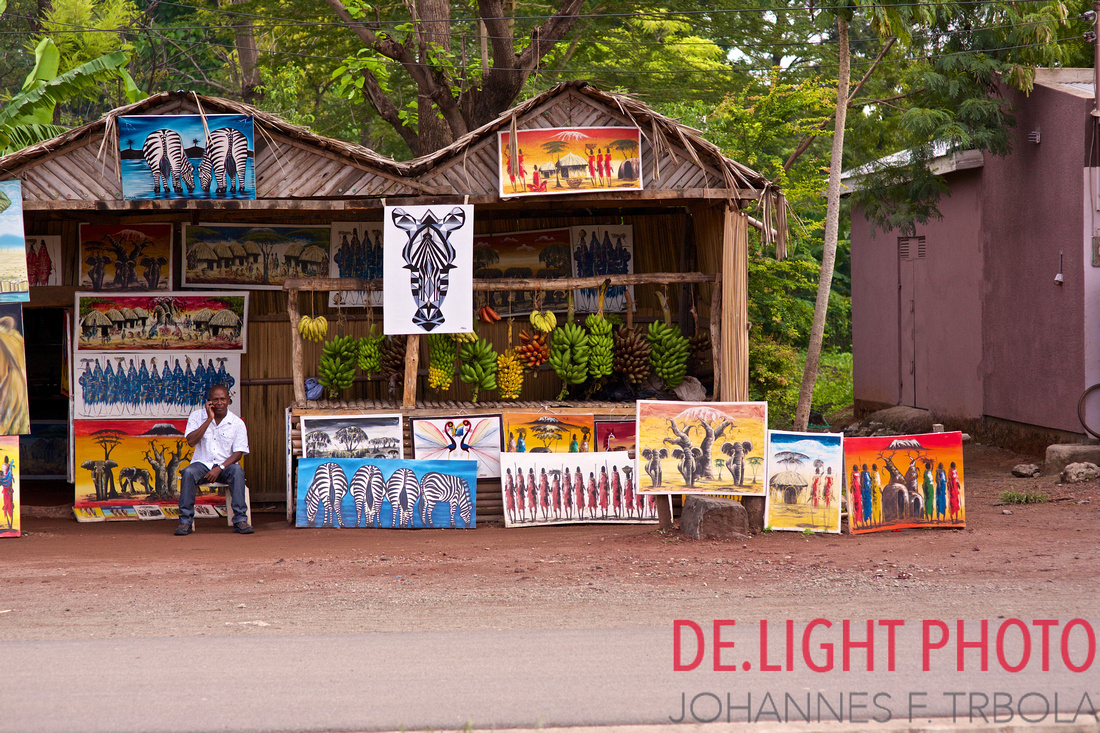
Studio Shots
I love this image shot from a driving car as well, the typical tourist shops....

Yes: Studio shots you can do with this lens as well...
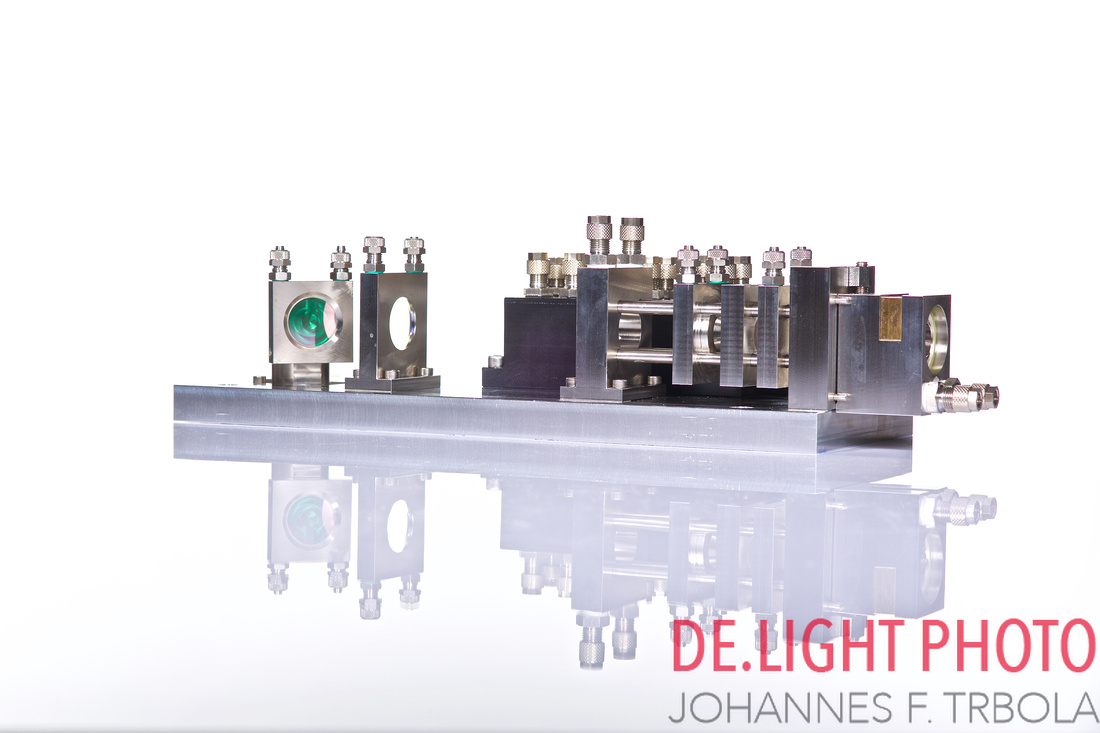
Some other very bokehlicious shots...


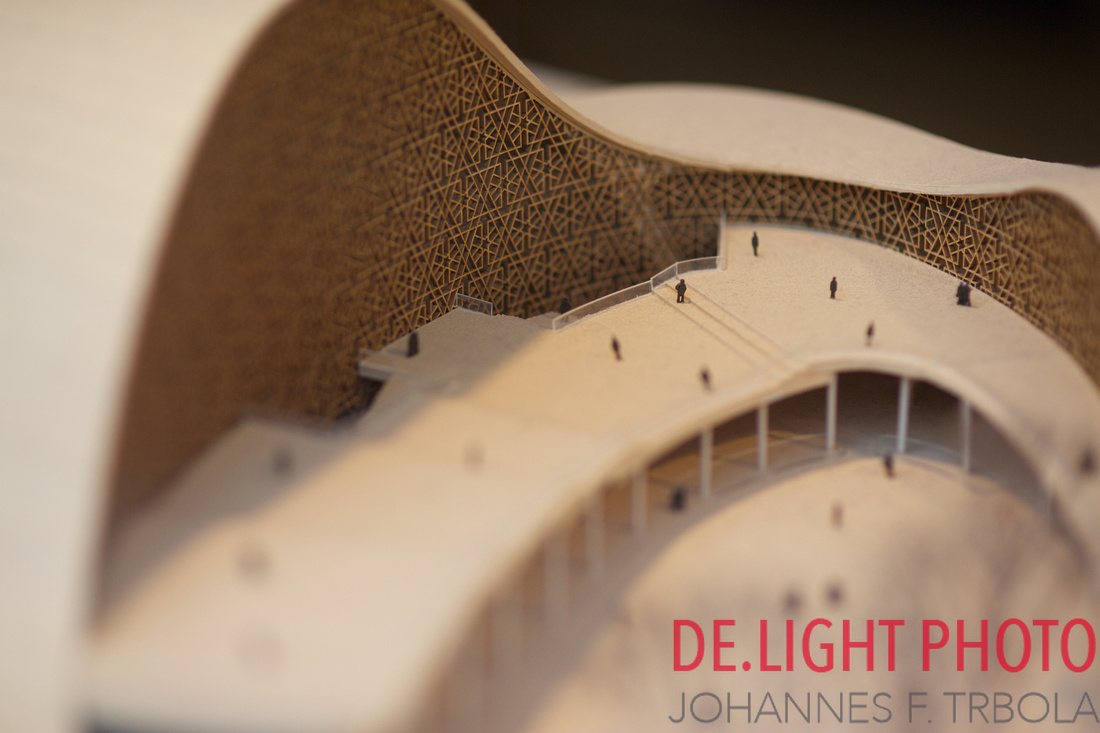
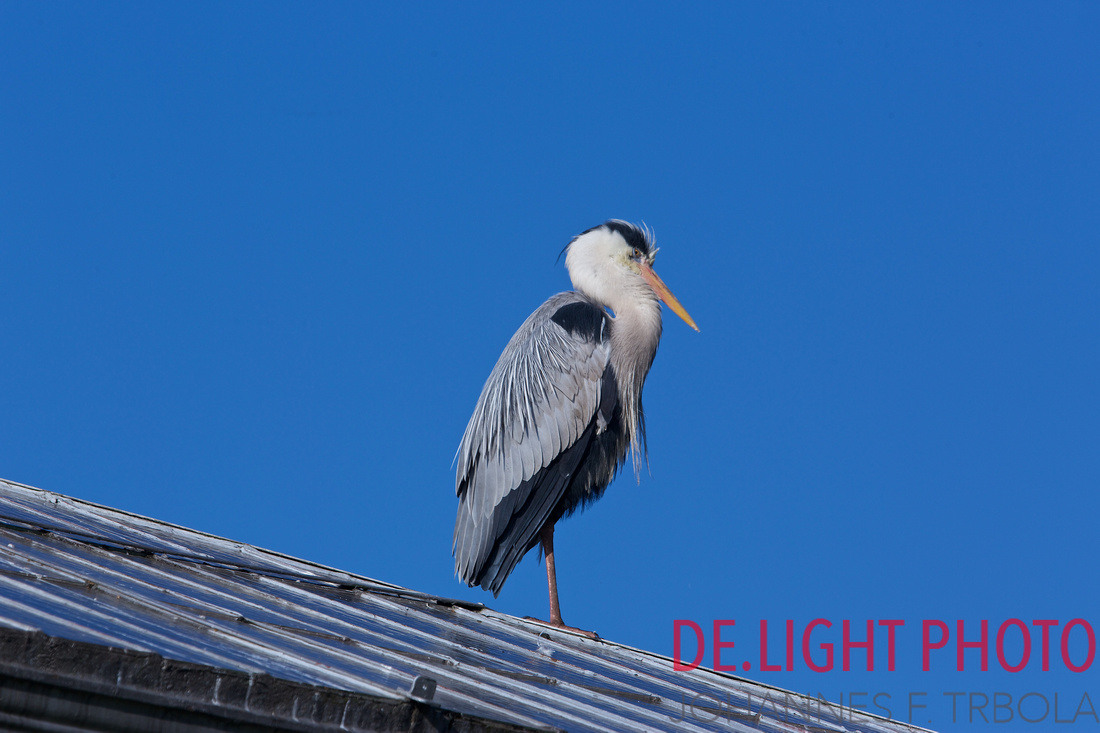
Whenever I startet a new jongre in my photography I found out that it takes a bit of time to find the right approach or suitable settings. And if you add new gear it´s the same.
This time i wanted to prepare for a safari in Africa. I recently bought the 1,4x extender for my 100-400mm Zoom Lens. With the extender it covers a range of 140-560mm - quite a bit. When I made the first tests I found out that for long distance shots (1-3 km) the only way to get sharp images is:
- Put the camera of a stiff tripod
- Use the camera in live view
- Use a remote trigger - or min. 10 sec selftimer
The movement of the mirror gives extra vibrations which you can see in the image - even @ exposure times < 1/3200 sec.... I realized it earlier on the 7D....
My question now: Can I shoot handheld in medium distance??? Therefore I have chosen the Wilhelma for a tryout: I shoot animals, I have medium distances...
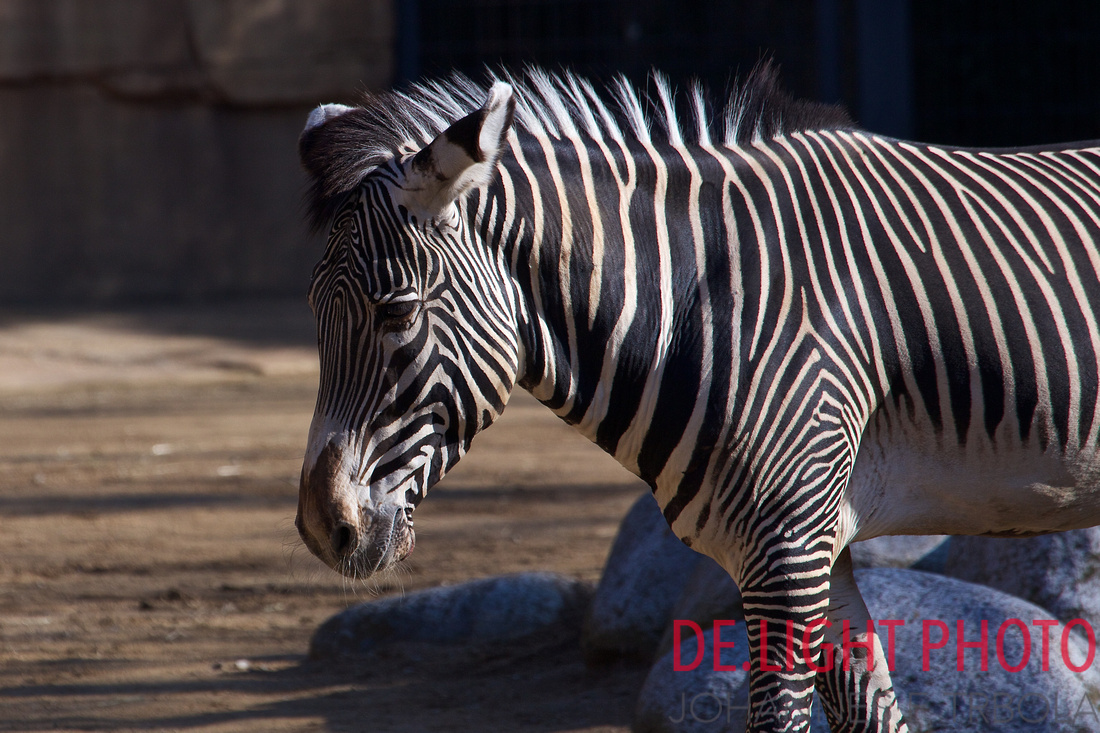
Additionally I wanted to get a feeling about the possibilities of my 100-300mm lens for the µ43 Cameras... For easier handling I took my G6 body with me. My question: how and when the touch release gives an advantage -or what are the limitations here...
And another question I had: will a monopod give an advantage...
First astonishing thing working with the extender: Only the center focusing point is working anymore... quite a limitation: But this is manageable: You have to focus and reframe.... It works but it tells me: use the extender only if needed. There is a 2nd reason to do so: With the extender the open aperture makes the omegas quite soft: 1 stop down gives you quite an improvement... You shoot with f11. you ave to put the ISO in the range of ISO1000 to get proper speed....
The good news: the extender works freehand - up to distances in the range of 20-30 m. Freehand... A monopod will not bring a significant Handling advantage... To use the camera fully manual might be the better idea...
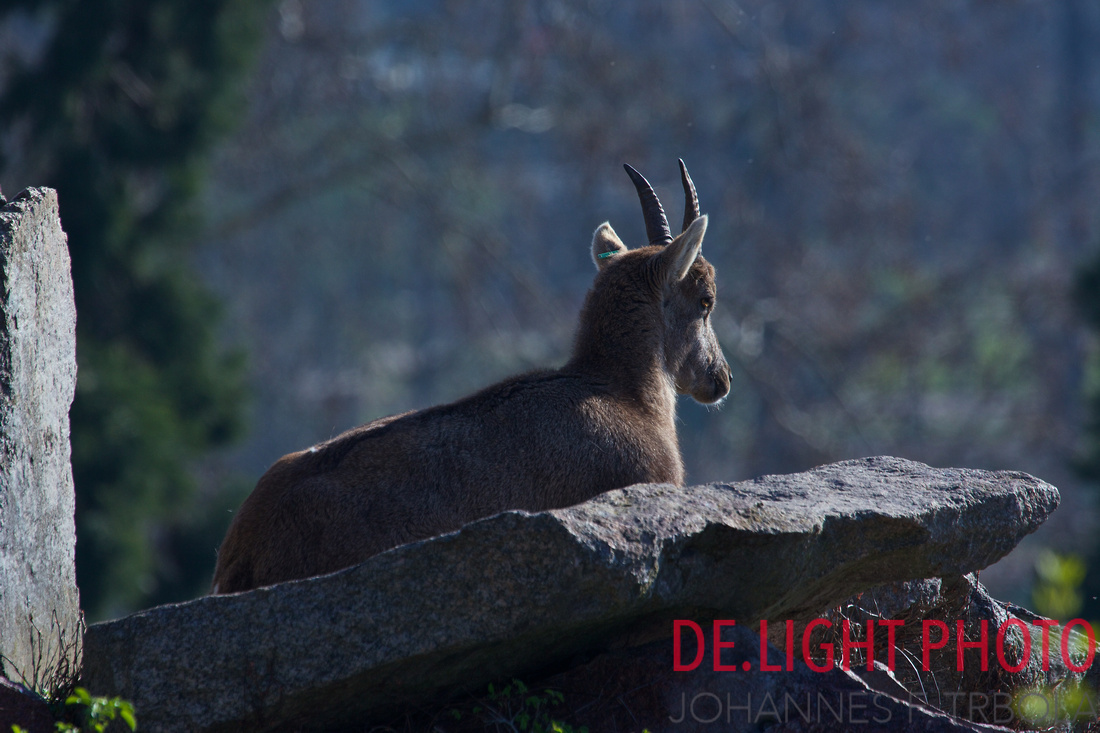
Capricorn, Manual focus on the eye, f 560mm, f11, 1/400s@ISO 400 - on a tripod...
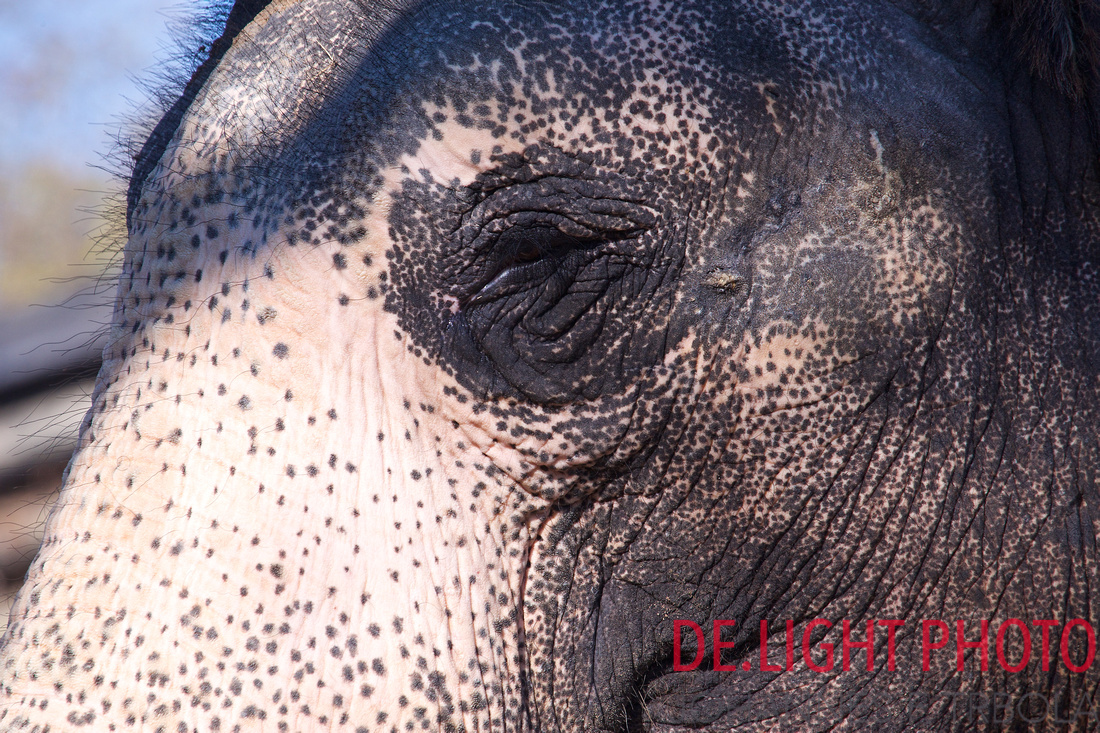
Eye of an old elephant.. f 400, f11, 1/400s@640 ISO, freehand without extender.
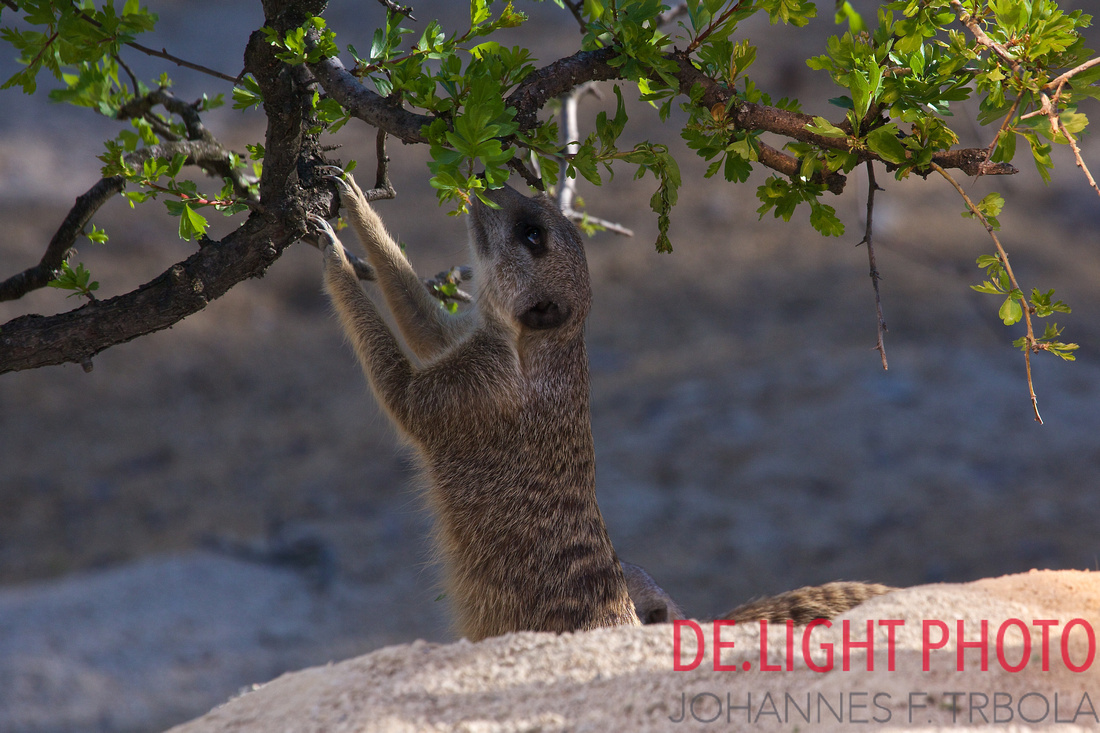
I love these little animals... (same parameters like the elephant..
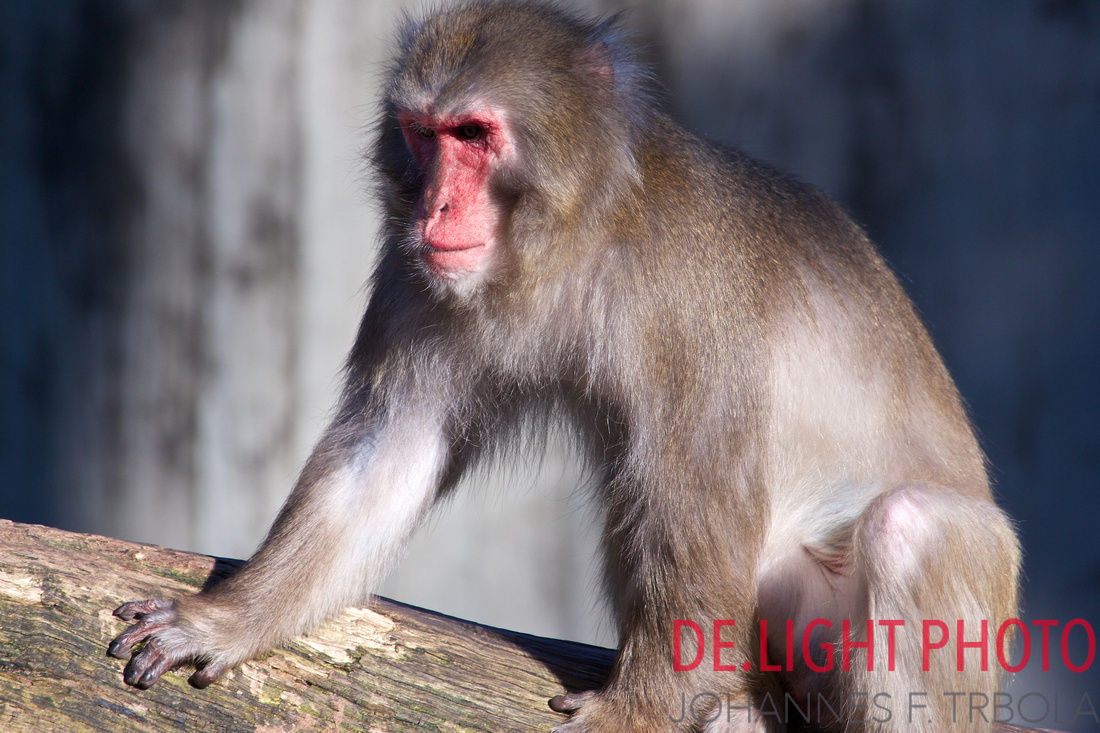
It is really a pleasure how close you get with the extender: 560mm, f10, 1/640s@ISO 640 handheld...
It was interesting to compare the handling of the 5DMkIII with the Lumix G6: As long as the subject is not changing too fast: it works really great!!! Like the photo below which I shot with the G6.
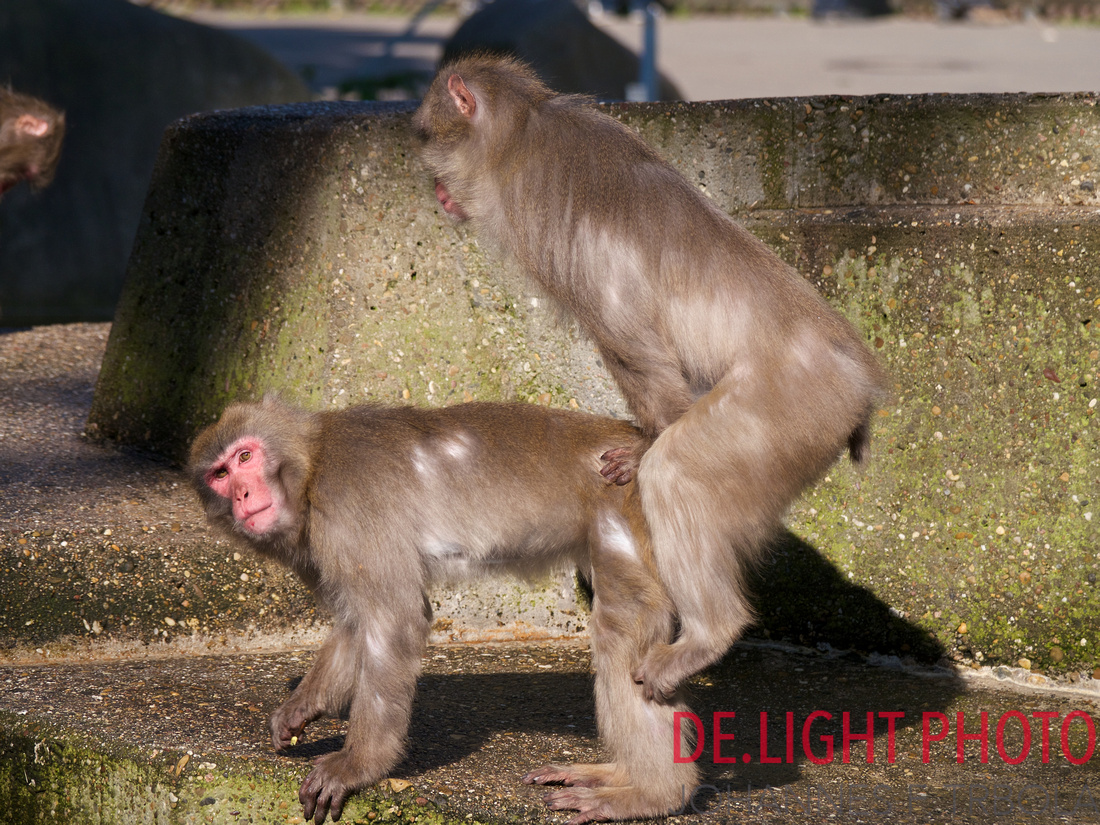
It es very easy to get such intense shots...The greater depth of field makes things easier and with the touch release the image gets sharp where you like it...
But there are limitations of the G6 as well: It it gets really fast I felt some limitations:
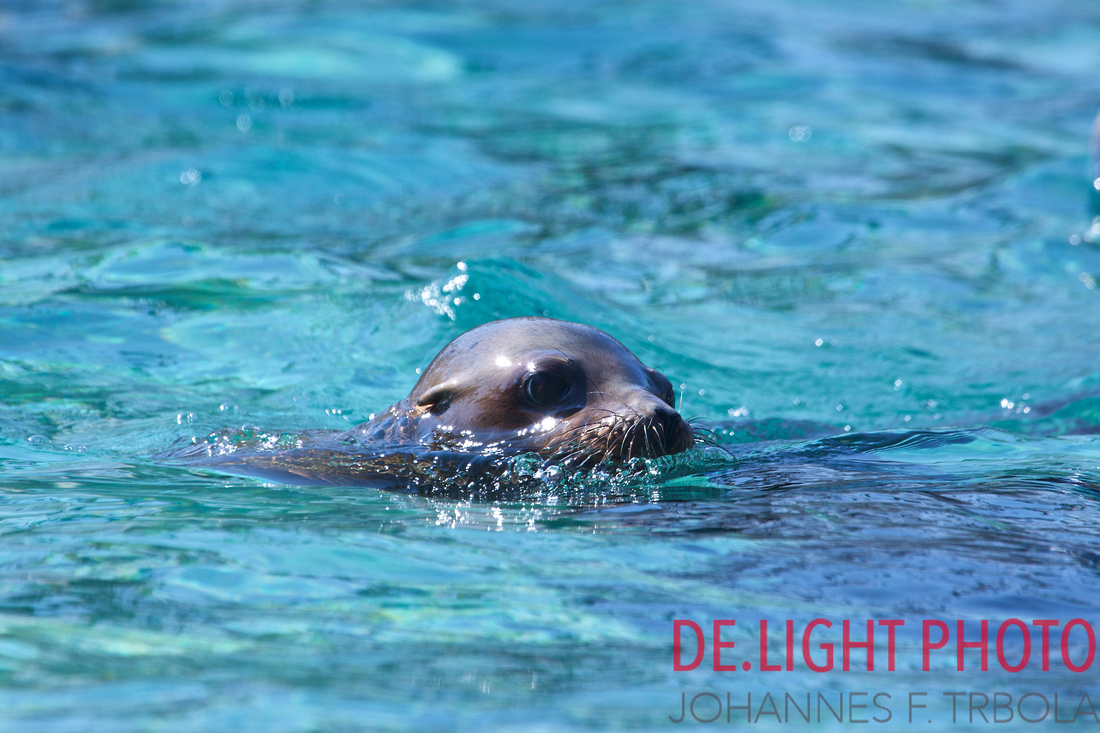
The sea dog showed me the limits: Having the camera the hole time on the eye shoots like this are becoming pretty easy... But there are nice shots possible as well. The photo above I shot with the 5D MkIII, the photo below with the G6
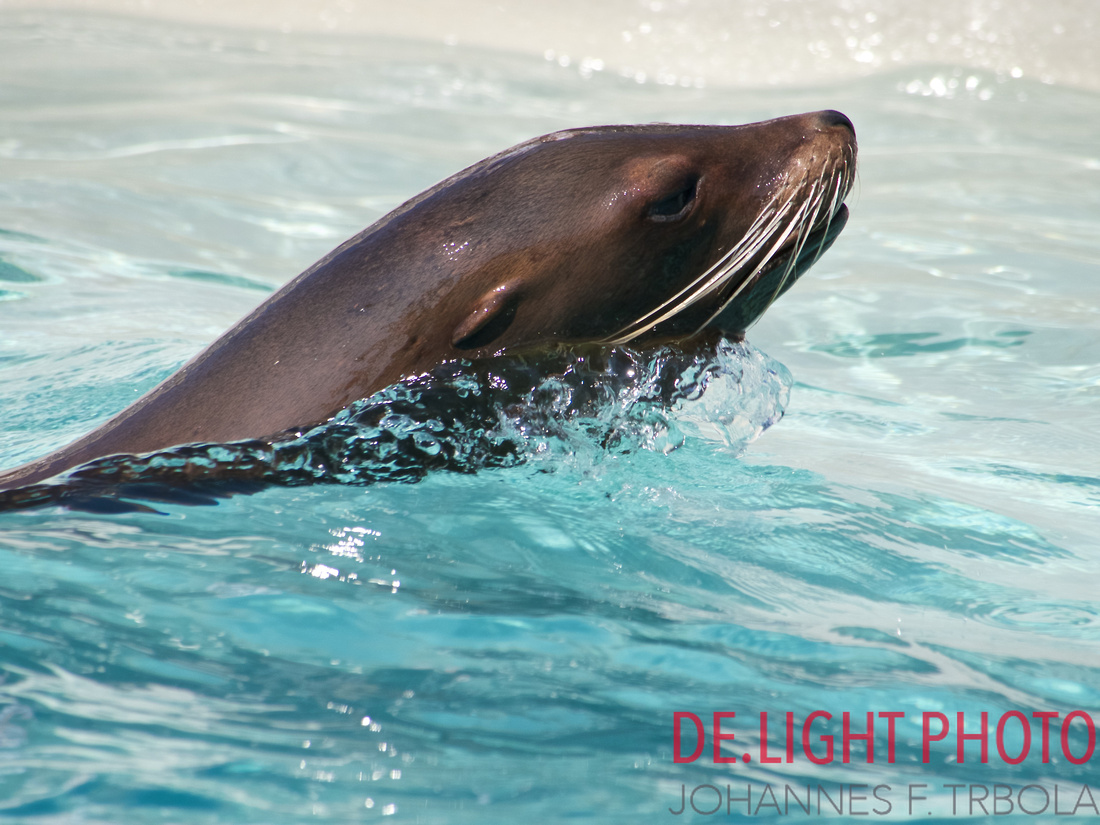
To shoot the seals was amazing as well: you had to be very fast... These are the moments when you love the performance of an high end DSLR...
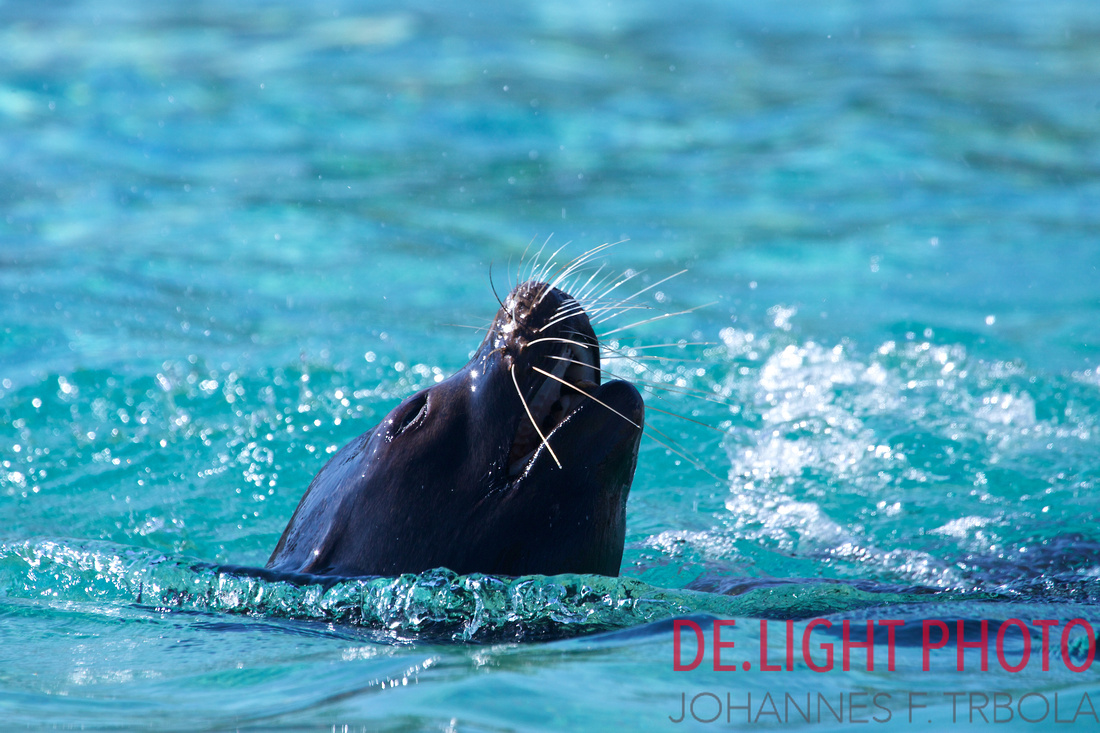

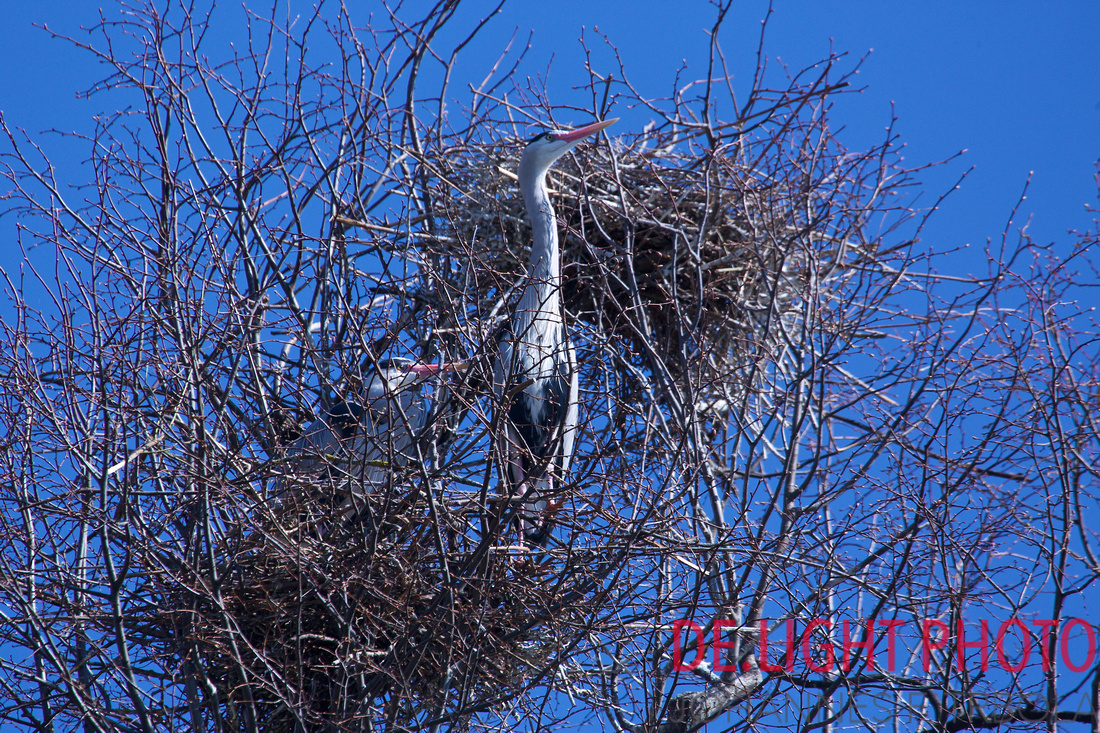
Conclusio
It was great to test the equipment before we went to Africa. I learned a lot about the new stuff in my gear. And one point is really essential: The Canon 100-400mmL is a great lens. With the extender the Autofocus works on the 5D3 but not on the 7D. And on the 5D3 Autofocus is limited to the center point. But this you could read in manual as well... Even more important was the experience that with the extender "wide" open - in this case f8 the images are soft, very soft. This setup is only usefull@ f11, maybe f16 - @ f22 the refraction will soften the images again....
]]>
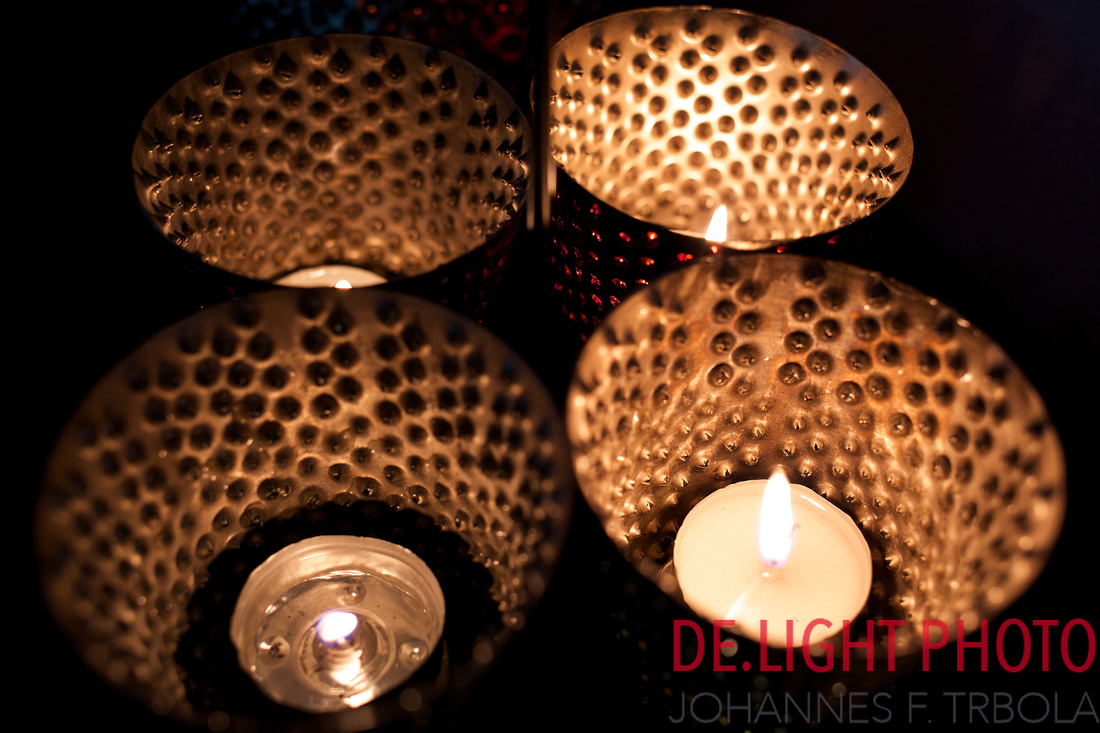
In photography many people talk about "fast lenses".. What does this means? Here the definition in Wikipedia:
Lens speed refers to the maximum aperture diameter, or minimum f-number, of a photographic lens. A lens with a larger maximum aperture (that is, a smaller minimum f-number) is called a "fast lens" because it delivers more light intensity (illuminance) to the focal plane, achieving the same exposure with a faster shutter speed. A smaller maximum aperture (larger minimum f-number) is "slow" because it delivers less light intensity and requires a slower shutter speed.
For me there is another aspect of lens speed: the ability to shoot in low light conditions. And there comes another aspect into the picture: Image Stabilisation. A lens with IS allows you to shoot even at lower speeds. Typically the focal length defines the minimum shutter speed you can shoot without blur... The formula is pretty simple: Minimum shutter speed: 1/f (in seconds).. This means: f=100mm: 1/100 sec. minimum speed.
Image Stabilization offers you typically 4 stops additionally... (Sorry for some calculations now...) What does it means: A lens like the 24mm 1,4L has a minimum speed of 1/24 sec.... But the 35mm lens (which is not an "L"-Lens) offers you 1/4 of 1/35th of a second: theoretical: 4 stops means: not 1/17,5 of a second, not 1/8th of a second, also not 1/4th: it is 1/2 a second... I realized 1/4th... amazing..
Having the lens brand-new I decided to make some test shots... I looked for shooting with open aperture and with lowest ISO possible...
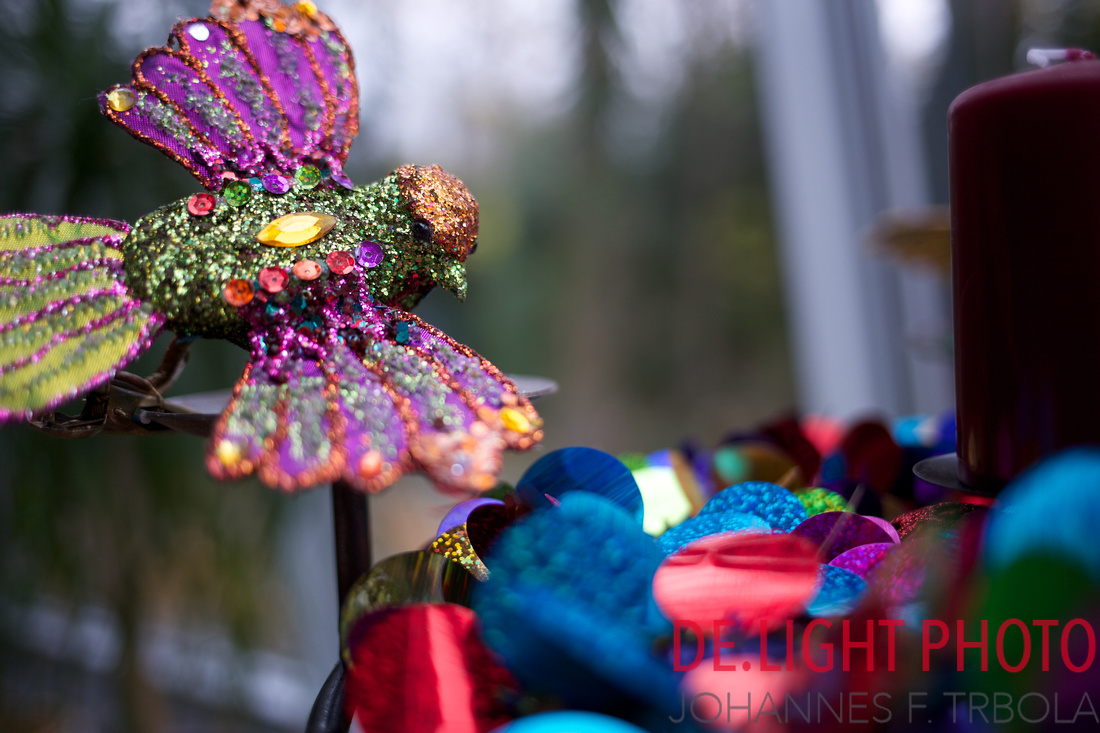
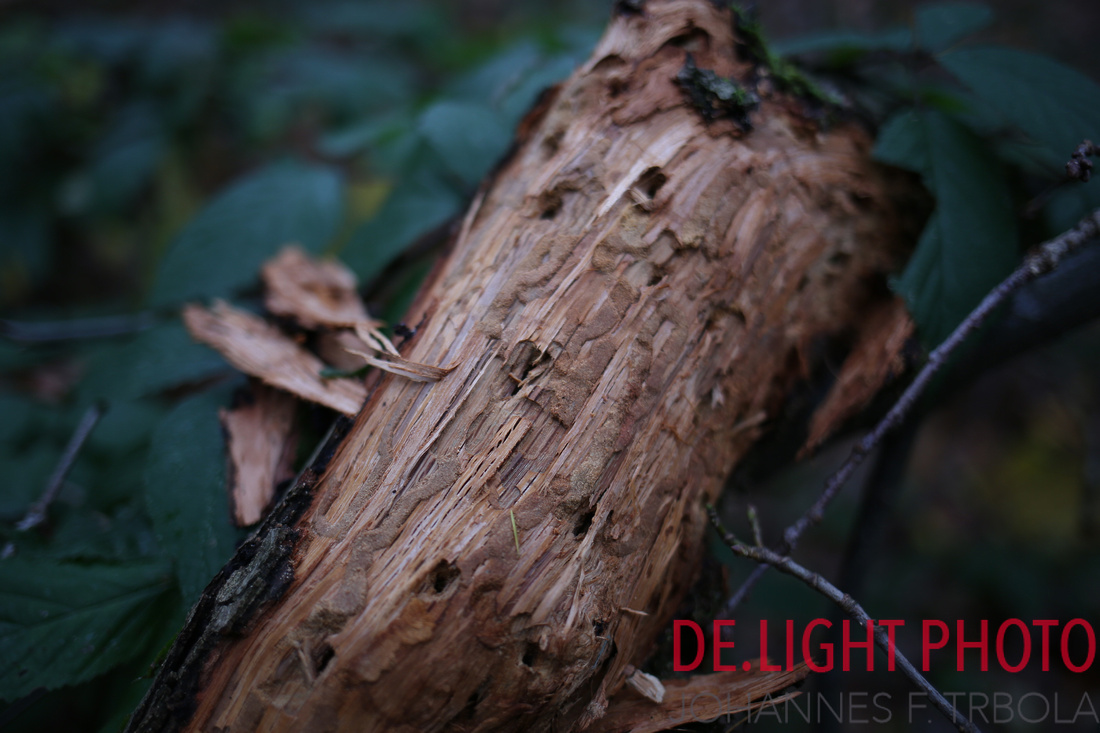

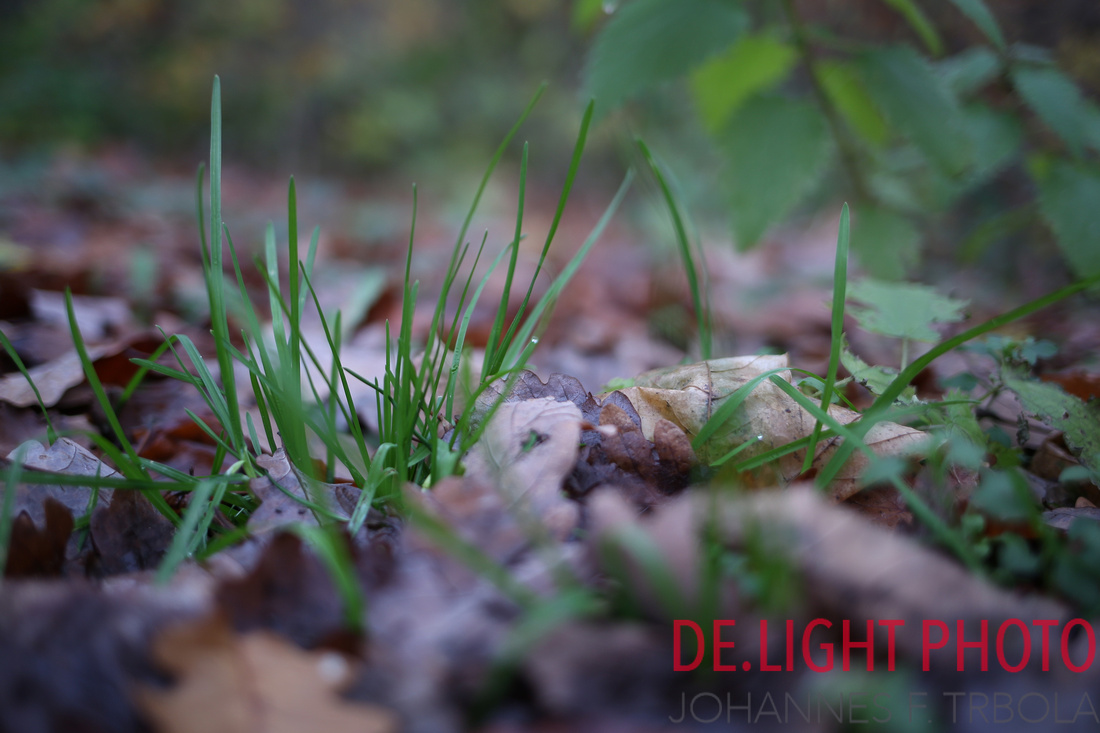

Recently I added to my µ43 Lens Portfolio the Summilux lens. I did not expect too much - I just wanted to ad more flexibility in low light situations... When I left the store I unboxed the lens mounted it to my G6 and started shooting. I was impressed from the first blue hour shots I made. Handheld. Using the foolproof intelligent automatic mode of the G6...


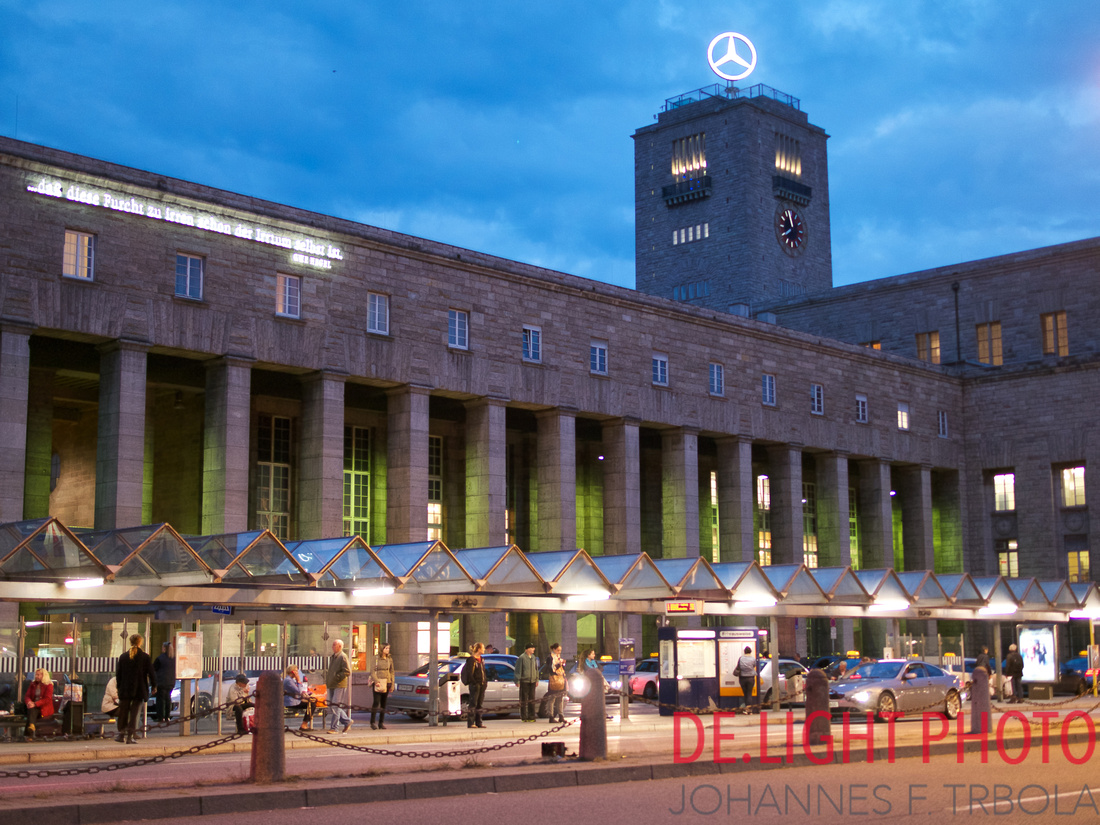
Believe it or not: this had been my first 3 photos with this lens. I was amazed.
The next experience: Düsseldorf, Altstadt. A rainy evening. The light conditions much worse....
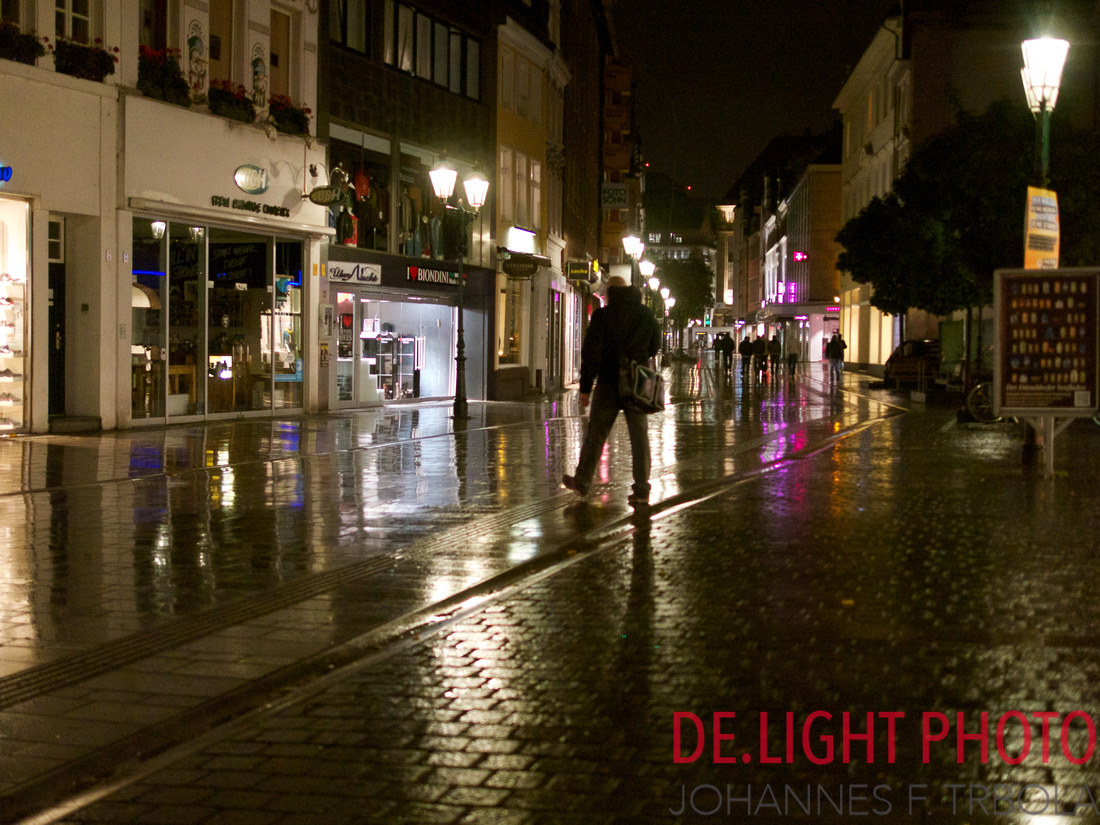
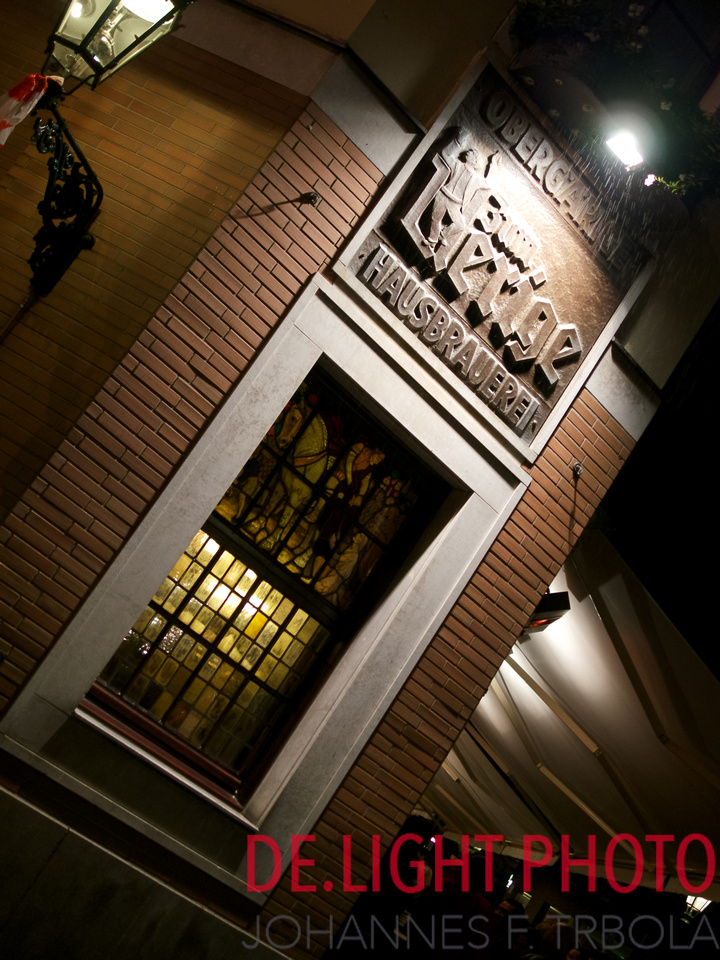
But than I took the lens to other events. In this situation we got new ski boots... and i took that combination with me Lumix G6 with the Summilux 1:1,4 25mm - a little bit old school: like the original film SLR´s with it´s 50mm lenses on it.
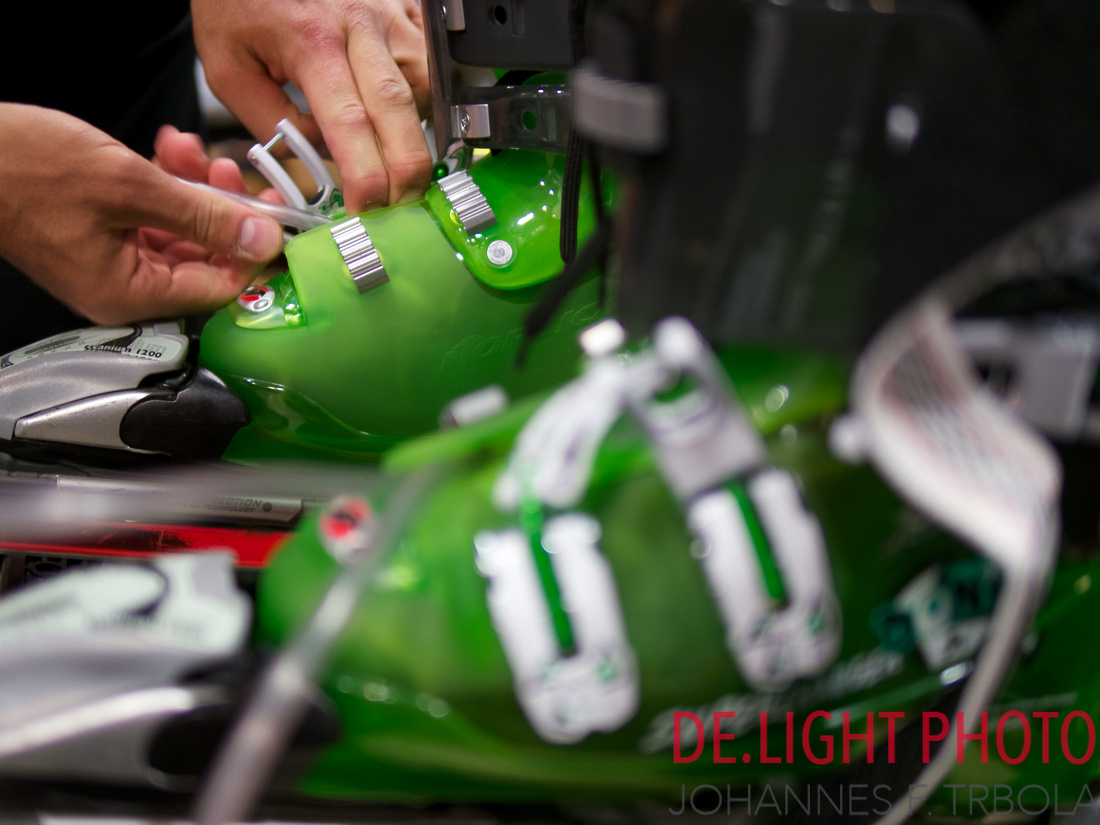
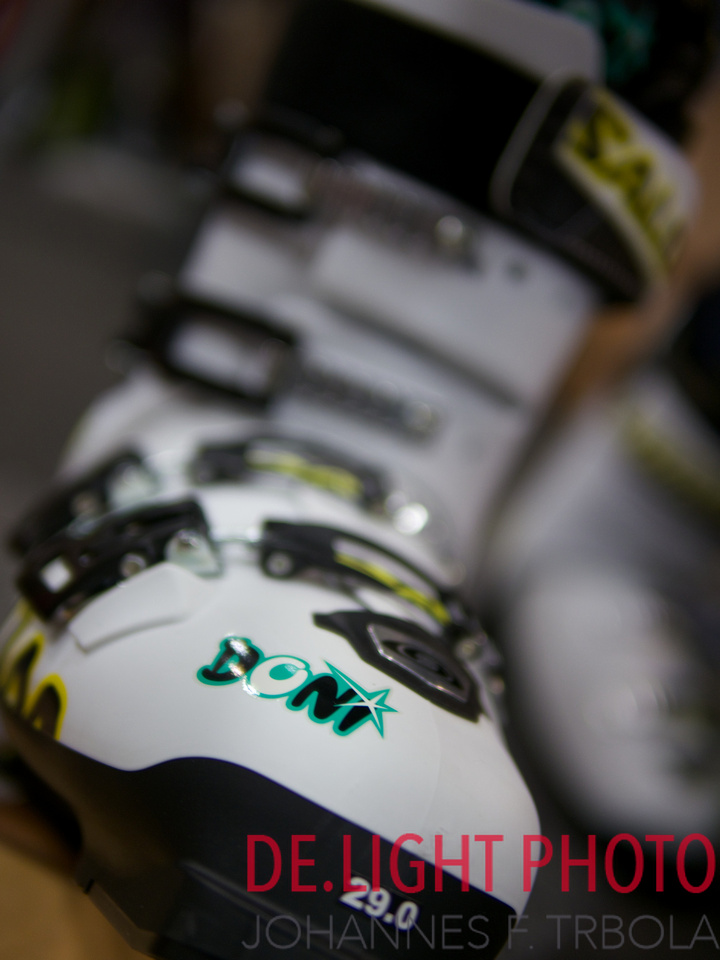
Again: I was amazed: a pretty narrow depth of field - and a really beautiful bokeh... By the way: the intelligent Automatic Mode of the G6 is supporting this effect by keeping the aperture as open as possible..... Good Job Panasonic!!!
But that´s not all. One morning in Cogolin, Provence, South of France I took this camera with me - just walking to the bakery. And I realized, that there are more options in the combination with the G6 with its flexible touch screen:
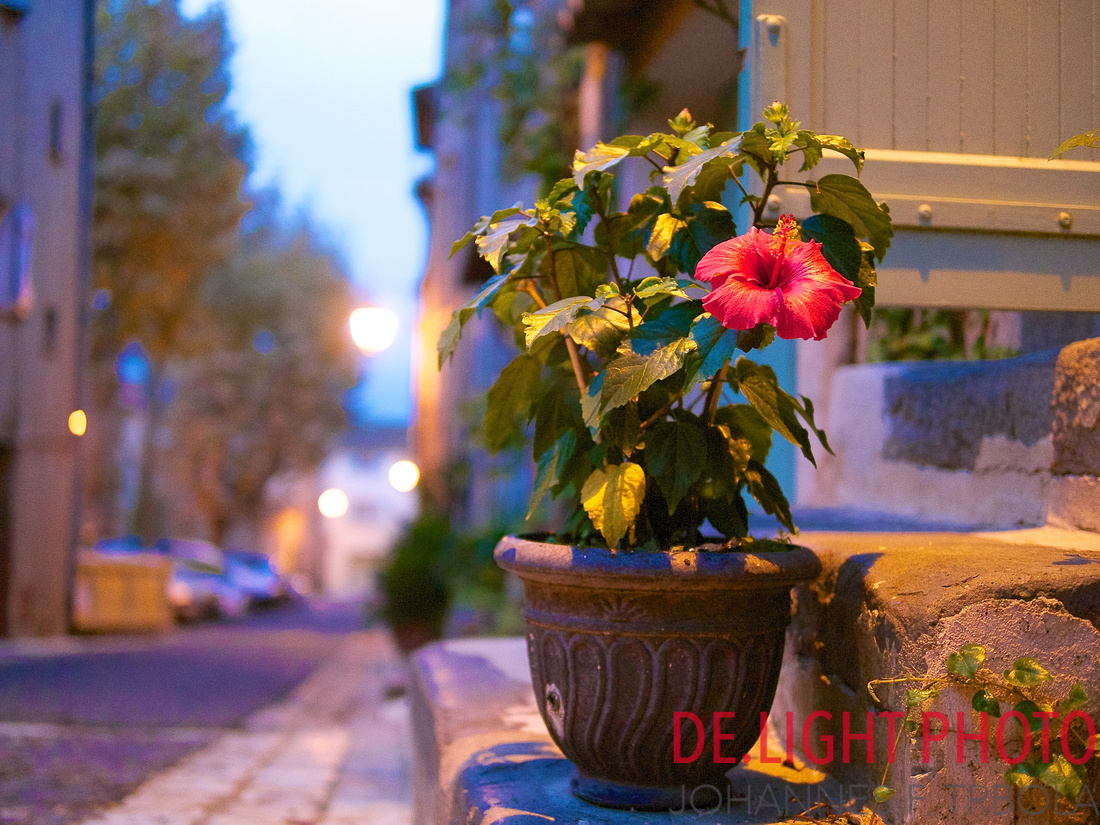
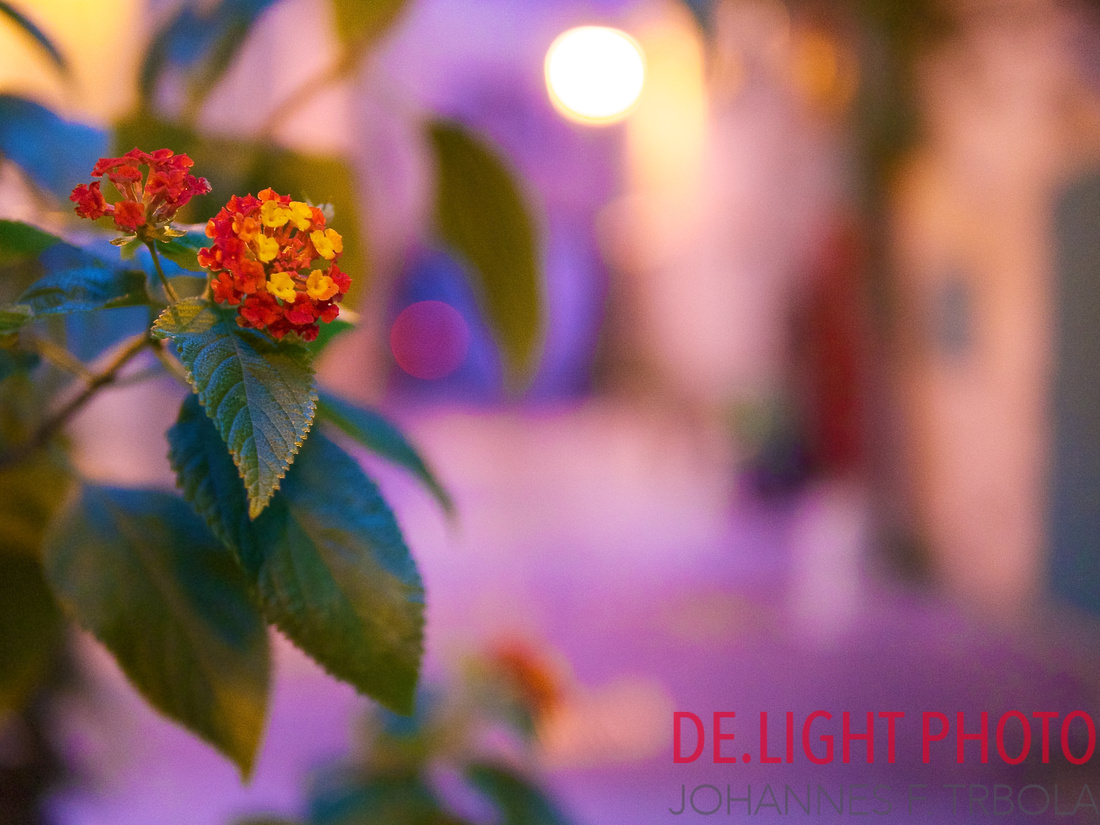
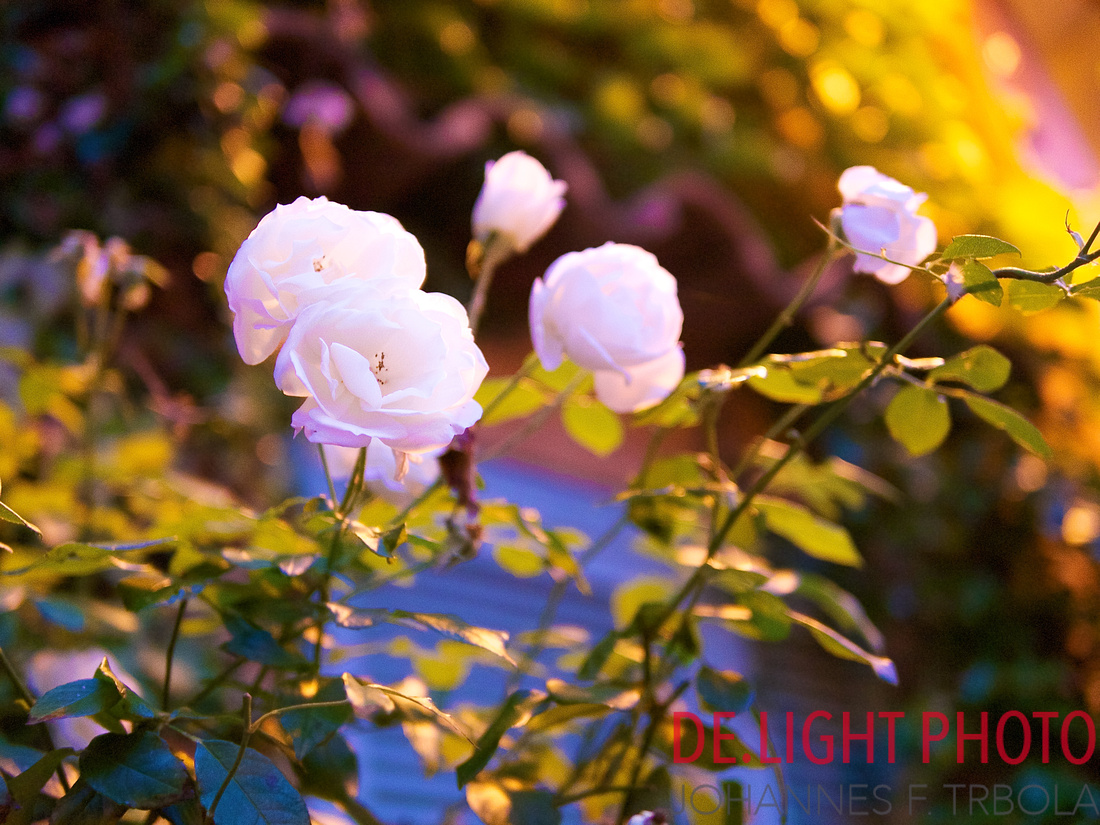
A few meters further I came to a place - with a few restaurant there... But under this conditions... quite magic...
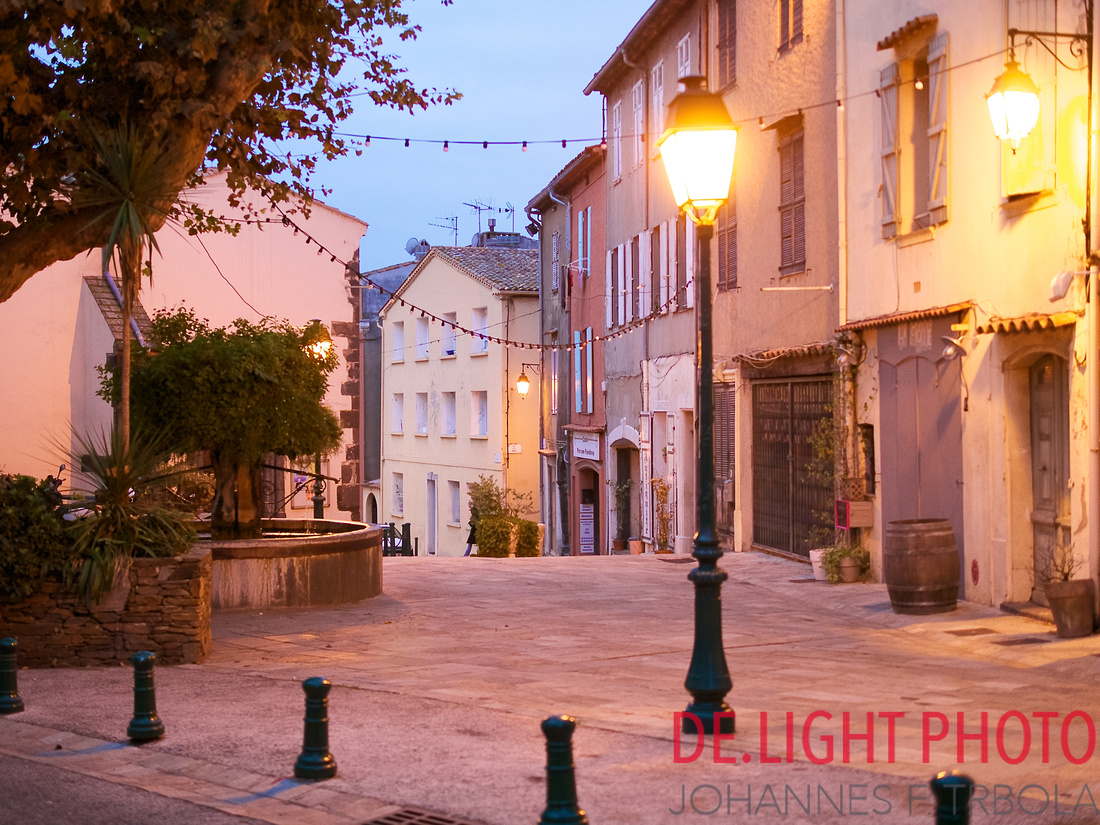
It´s a mgic of its own: the colors of the provence in the morning twilight between the rising light of the day and the artificial lightning of the streets and c
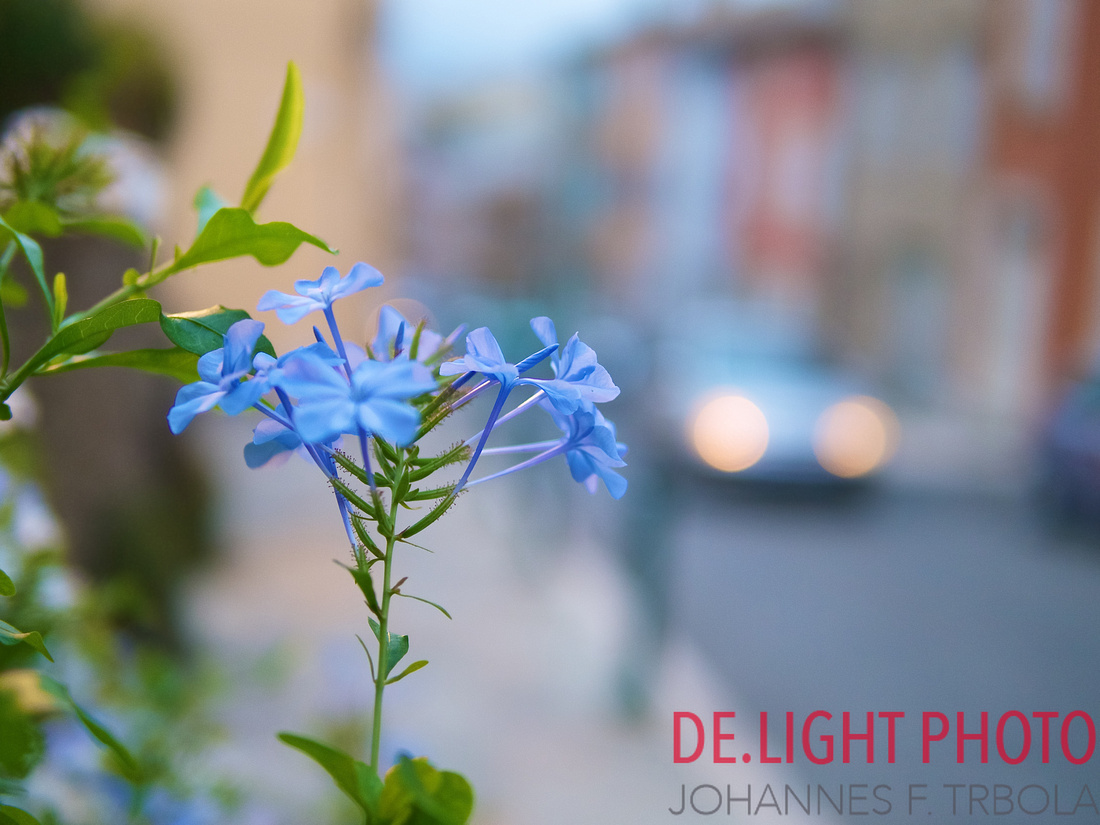
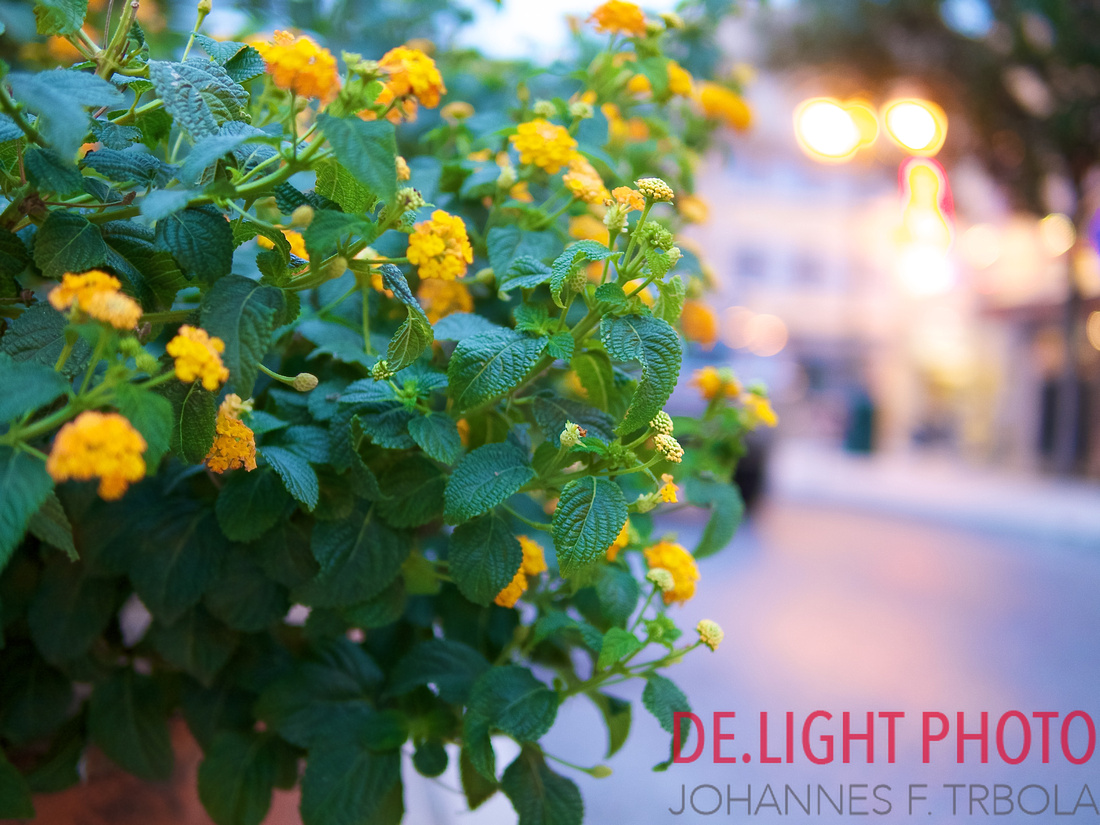
These photos are a selection of just a few more. Shooted pretty fast: It´s just fun!!!
For me: This lens is a game changer: It opens the play with bokeh like the bigger camera brothers - and I do not talk about APS-C! I talk about Full Format. µ43 and APS-C: This is more or less balanced in terms of image quality. But not in terms of usability: there is a clear advantage for the µ43. I would never recommend an APS-C Camera and only recommend µ43 (with the exception of Canon´s 7D for sports).
My question always: Do I want to carry the Full Format Monster with me? What are the limitations using µ43? What Do you think? For me these photos are showing that the limits are moving towards µ43....
]]>
Today I was shooting in the Golf of St. Tropez. A place just opposite of St. Tropez with a pretty nice view to the City.
When it became darker I made some experiments. It was pretty dark so I started to increase the ISO. At the end I had the perfect pictures to try ISO based HDR Photos from differnet directions in the Golf of St. Tropez..
After beeing finished with the normal stuff I wanted to see what comes out shooting really high-key...
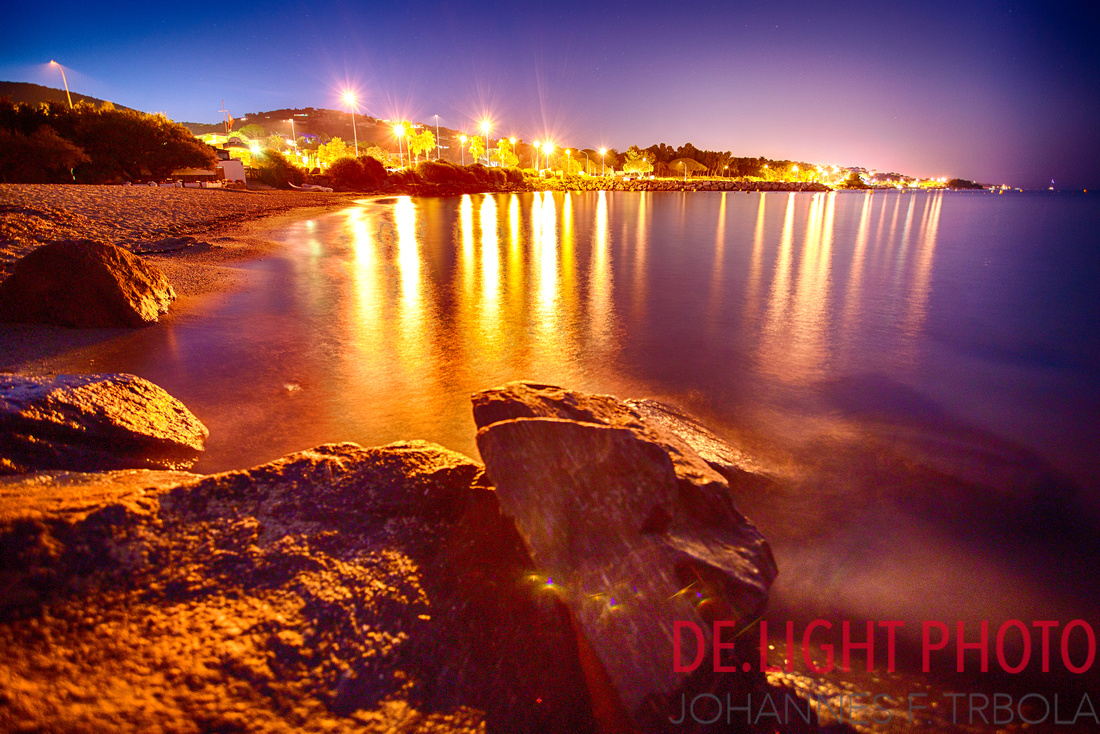
Having made these photos I decided to do 2 more... The first in the direction of Cogolin.
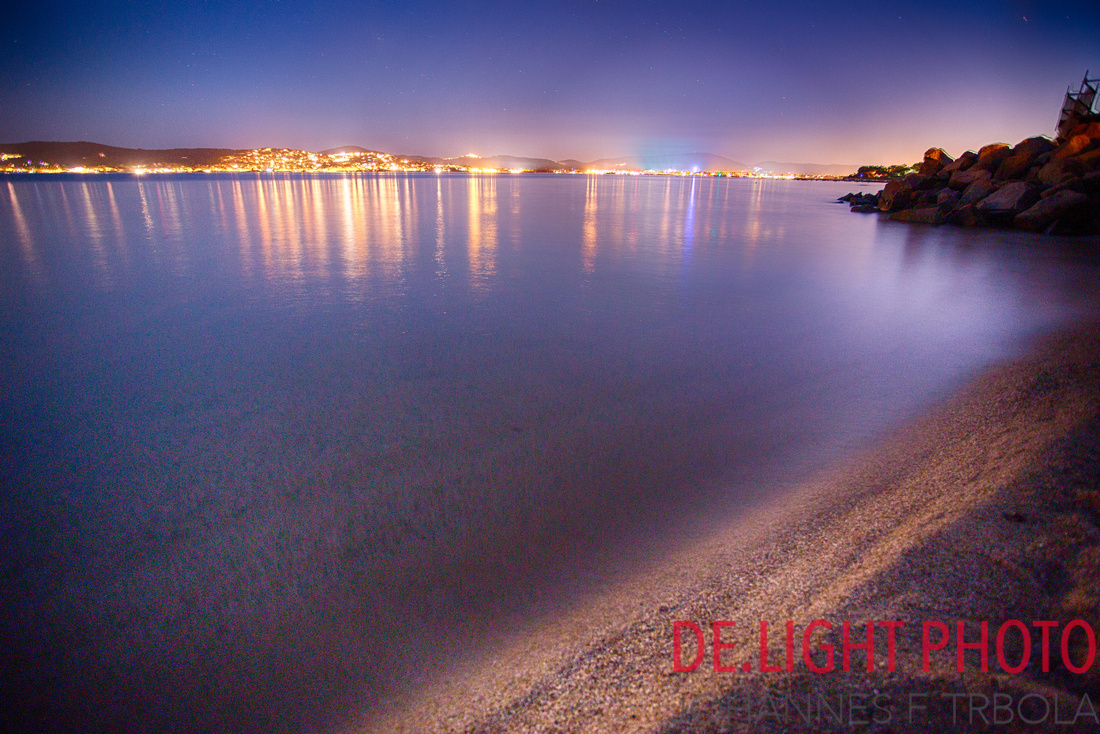 And of course: St. Tropez should not miss...
And of course: St. Tropez should not miss...
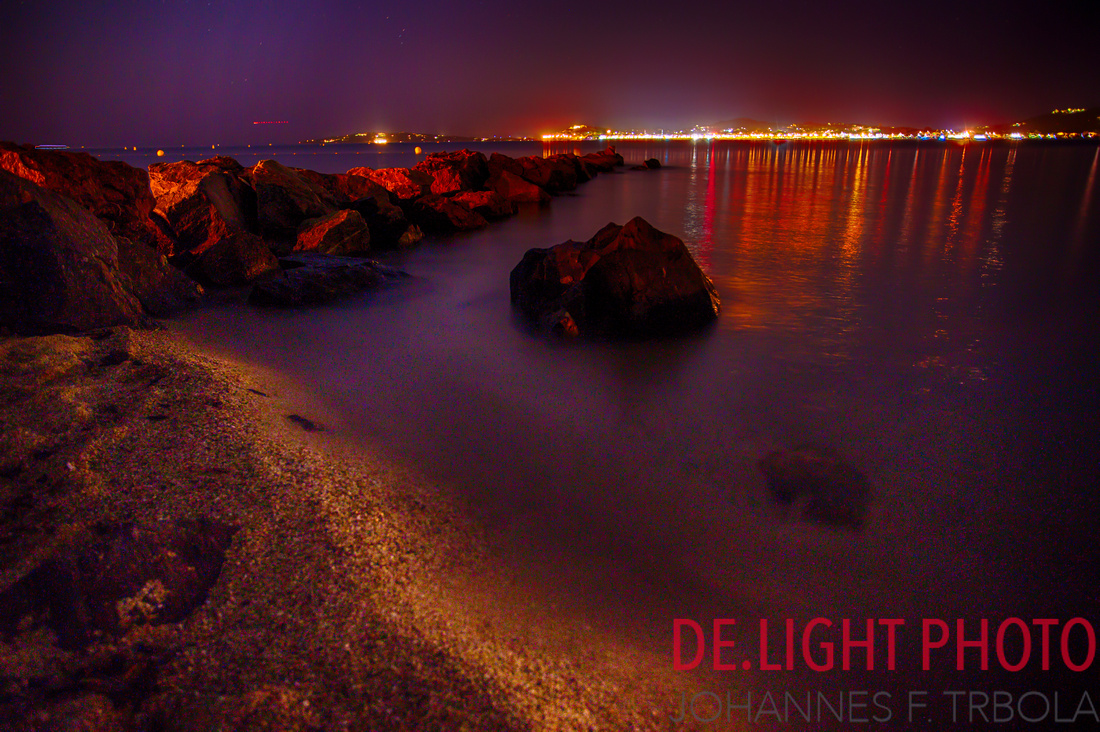
But I made some more photos as well... first a photo of the Azur Park....
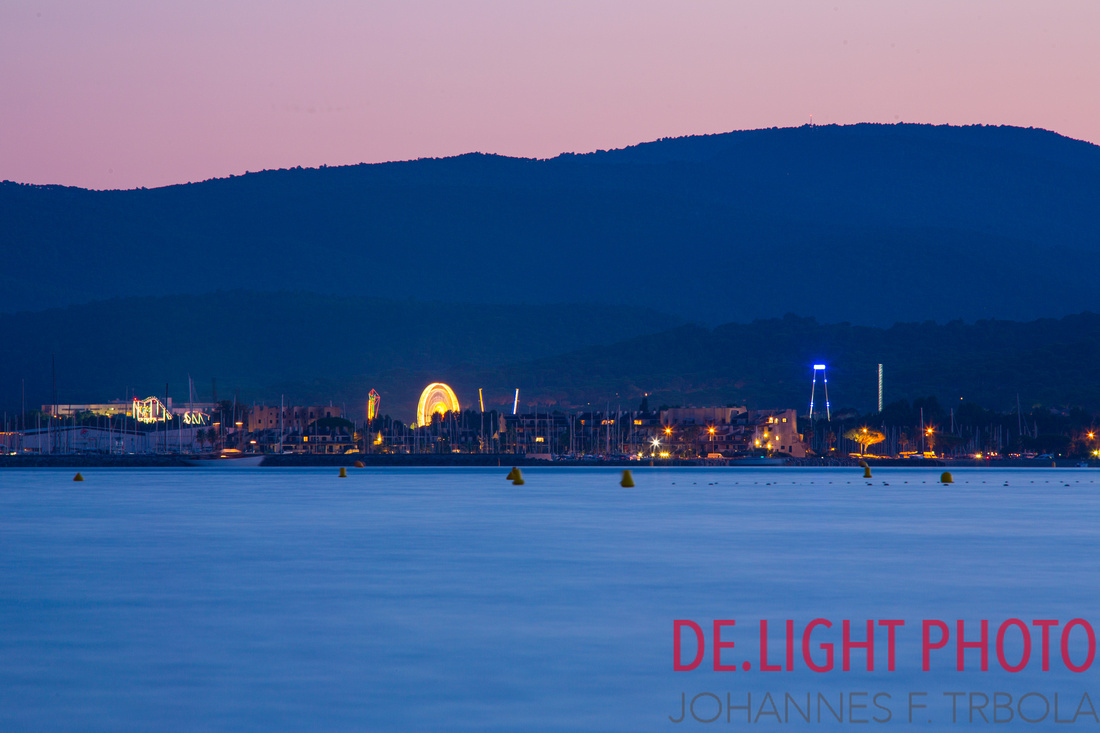 Gassin was another direction to take a photo...
Gassin was another direction to take a photo...
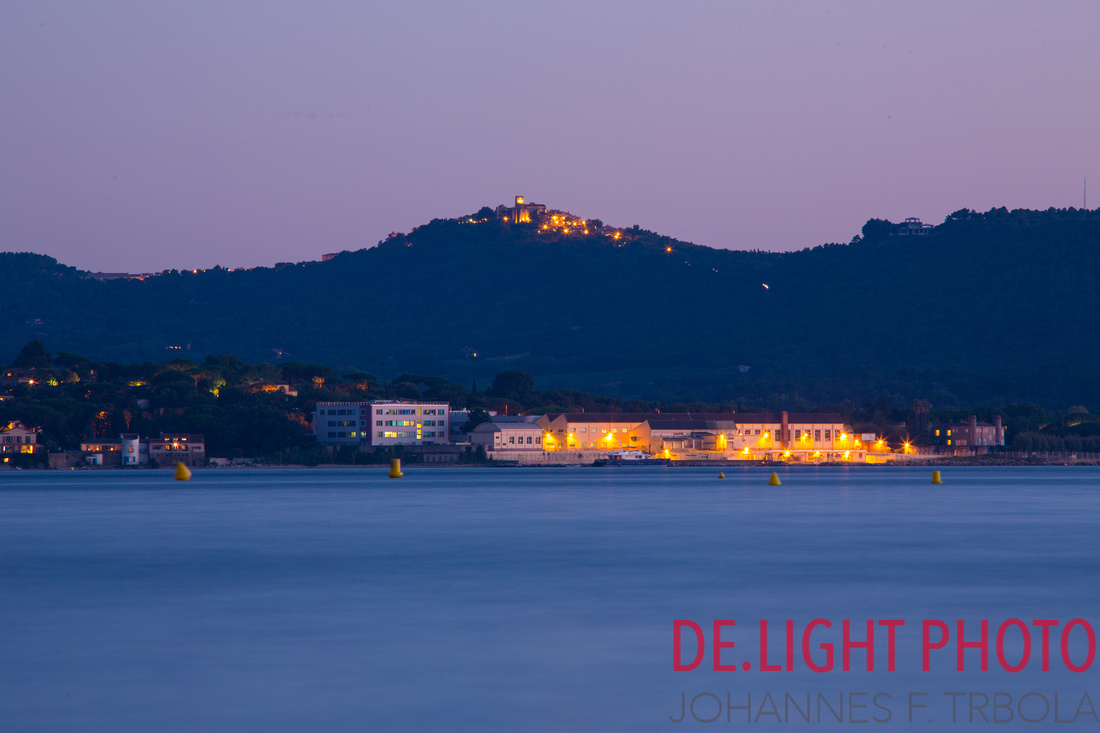 And the View over the Golf in the Mole end Giscle valley...
And the View over the Golf in the Mole end Giscle valley...
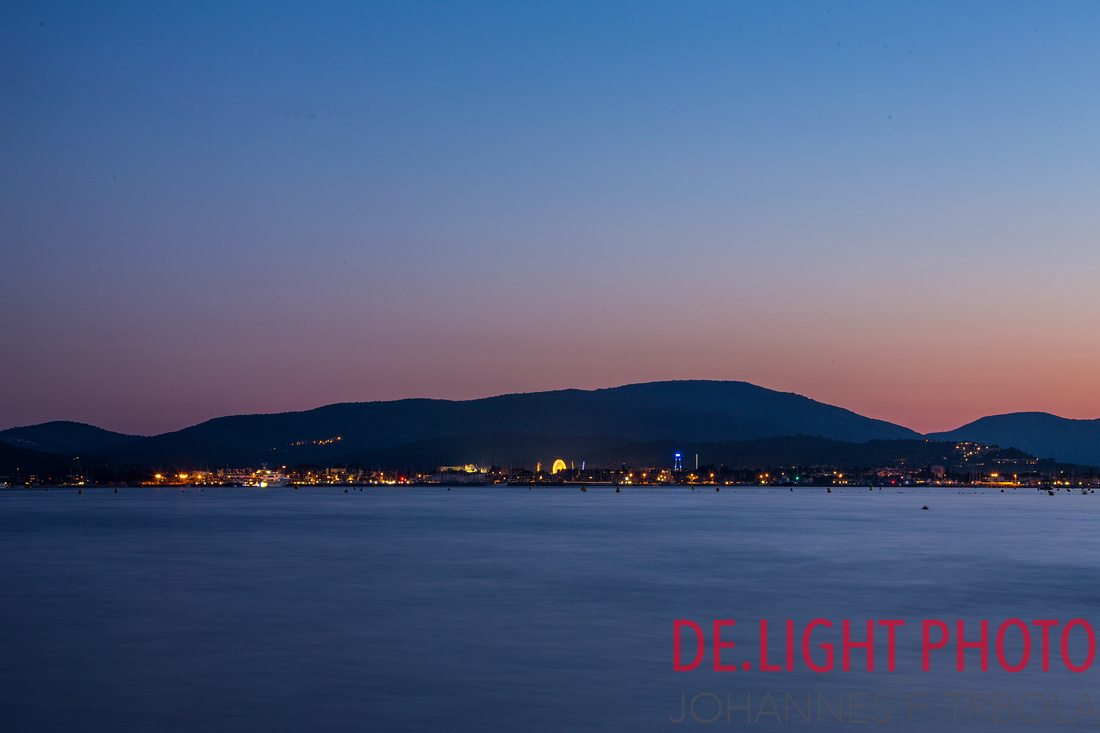 And last but not least: St. Tropez.. as Panorama Shot...
And last but not least: St. Tropez.. as Panorama Shot...

]]>
The LUMIX G VARIO 14-140/F4.0-5.8 was a good companion over the last years. I had it with me in India, the US, in Mountainbike trips etc. Whenever I did not want to carry large stuff or I wanted to have more privacy during shooting.
Now Panasonic offered a new Version of this lens: LUMIX G VARIO 14-140/F3.5-5.6. just a half F-Stop more? What is Panasonic claiming:
- Less weight: 293 vs 513g incl lens hood: > 40% less weight
- A better Optical Image Stabilisation
- And less price.
Ok: If you have it already: the price is not the reason... The weight is one - and the big question: will the increase in Image quality justify the investment? I decided to make some test photos and to share it with you.
The photos are typically RAW-Files from my G5. The Images are all screen shots from PhotoMechanic5 which has a nice comparison option...
I compared different situations: far away shots of Stuttgart City, both in 14mm and 140mm as well as hard backlight and focusing at the nearest. just practical stuff, no science.
 This photo was taken with the G5@14mm, ISO 160@5,8 and 1/1000 sec. left you see the "old" lens, right the new one: just clearer..
This photo was taken with the G5@14mm, ISO 160@5,8 and 1/1000 sec. left you see the "old" lens, right the new one: just clearer..

This photo was taken with the G5@140mm, ISO 160@5,8 and 1/1000 sec. left you see the "new" lens, right the old one: similar impression....
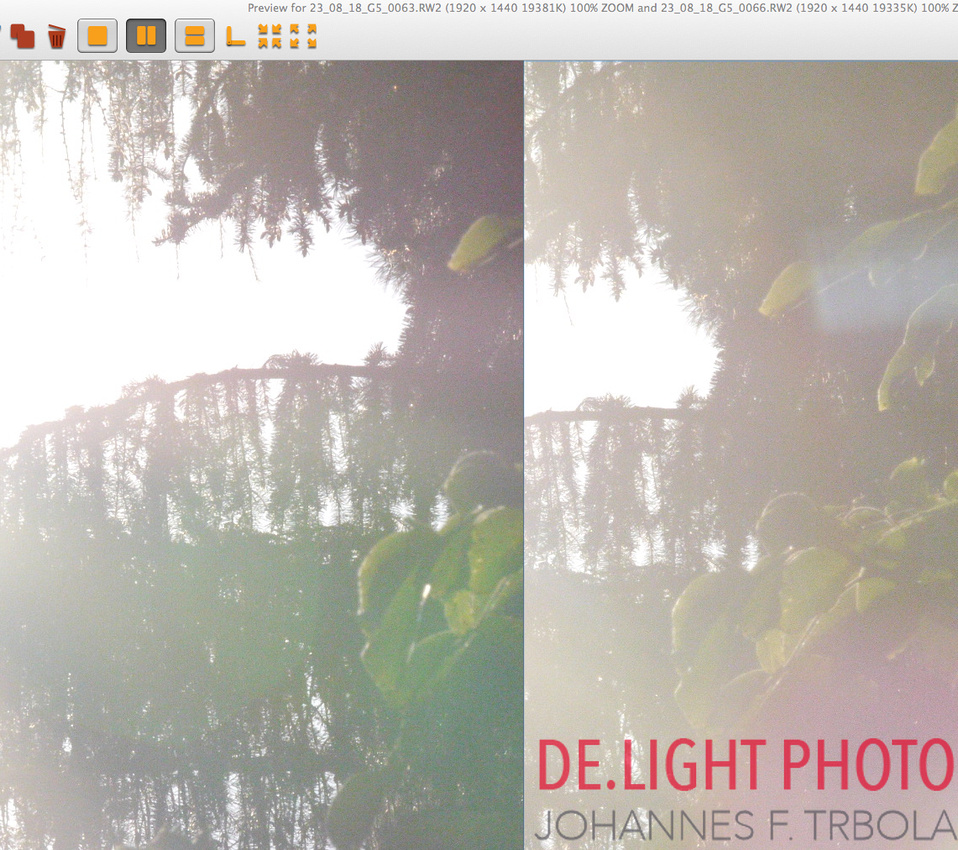 I shoot at ISO 3200, f22 and 1/2000 this photo with 140mm focal length: I think you already know: the left one is the newer one...and whats about 14mm:
I shoot at ISO 3200, f22 and 1/2000 this photo with 140mm focal length: I think you already know: the left one is the newer one...and whats about 14mm:
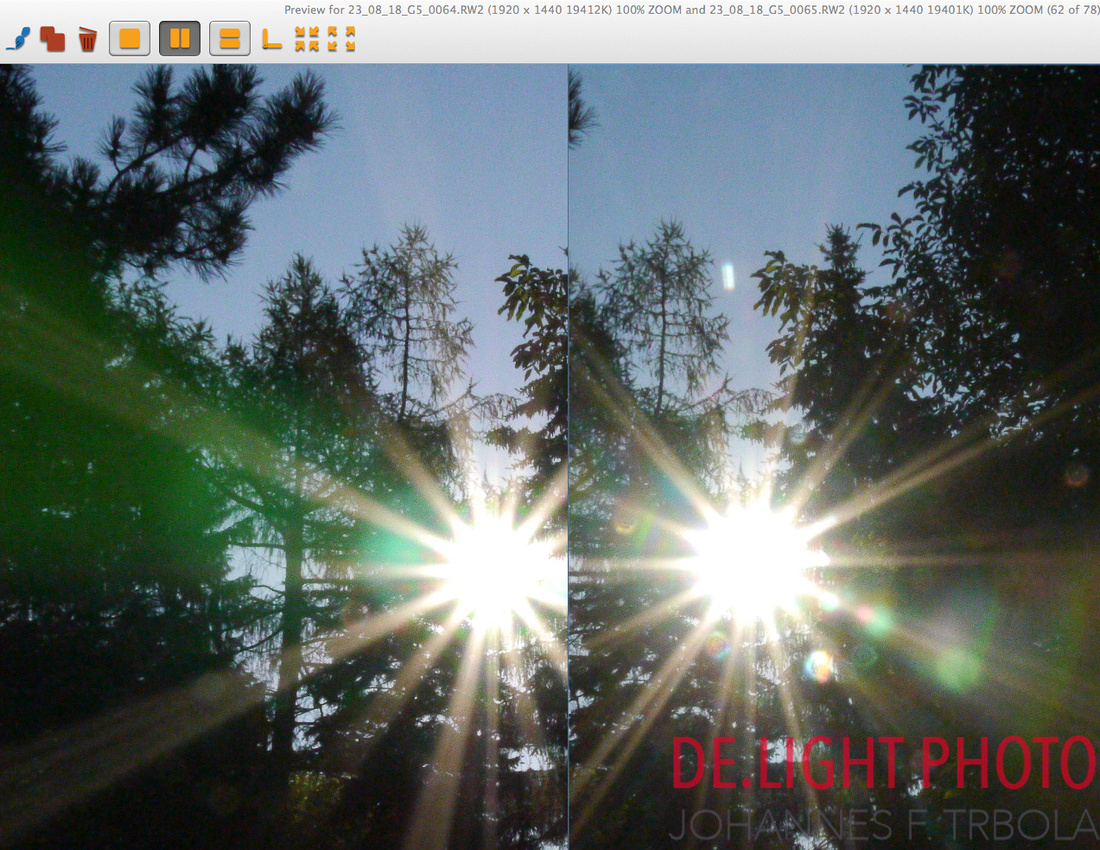 You see on which side is the newer lens? It´s left. The picture is clearer and the effected area from the outshining of the sun is smaller.
You see on which side is the newer lens? It´s left. The picture is clearer and the effected area from the outshining of the sun is smaller.
Wahts about the close up. The marveless makro possiblities from these lenses: This is a little bit more difficult: The accuracy controlling the sharpness in the automatic mode sets some limits...

If you look at the leaf behind the flower you can see the same result: the left one has a little bit more contrast... The same you see at 14mm focal length, but here more in the outer areas pf the photo...
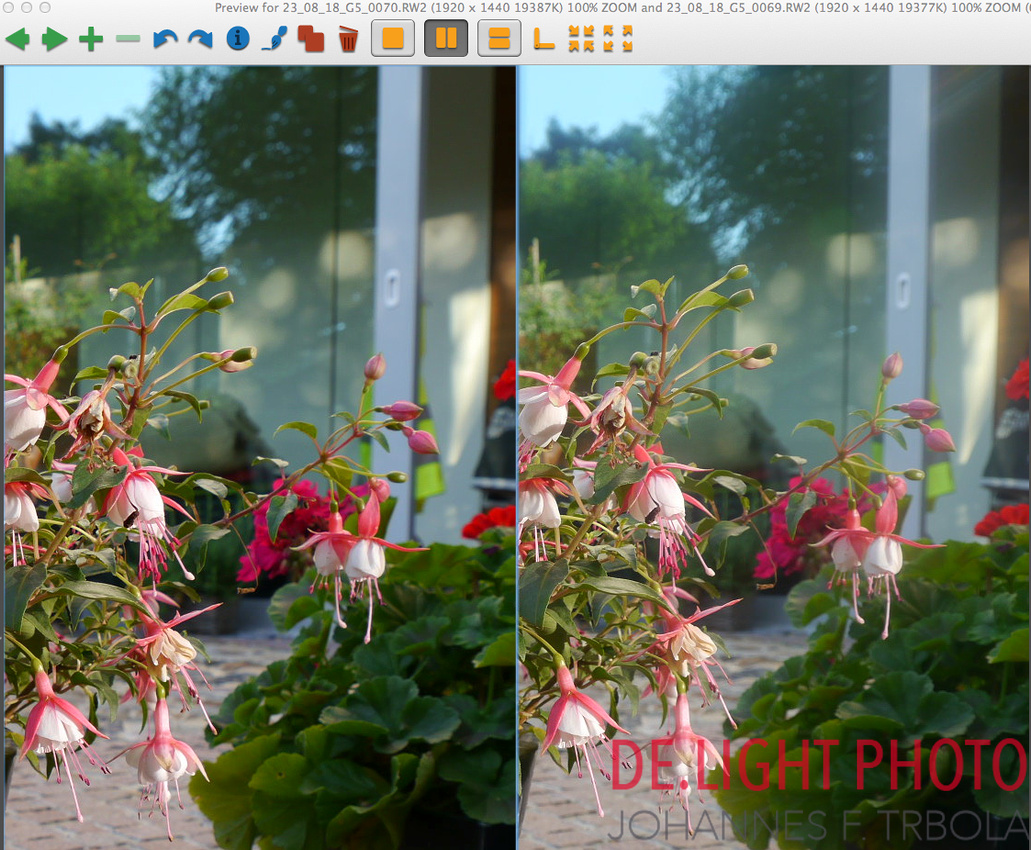
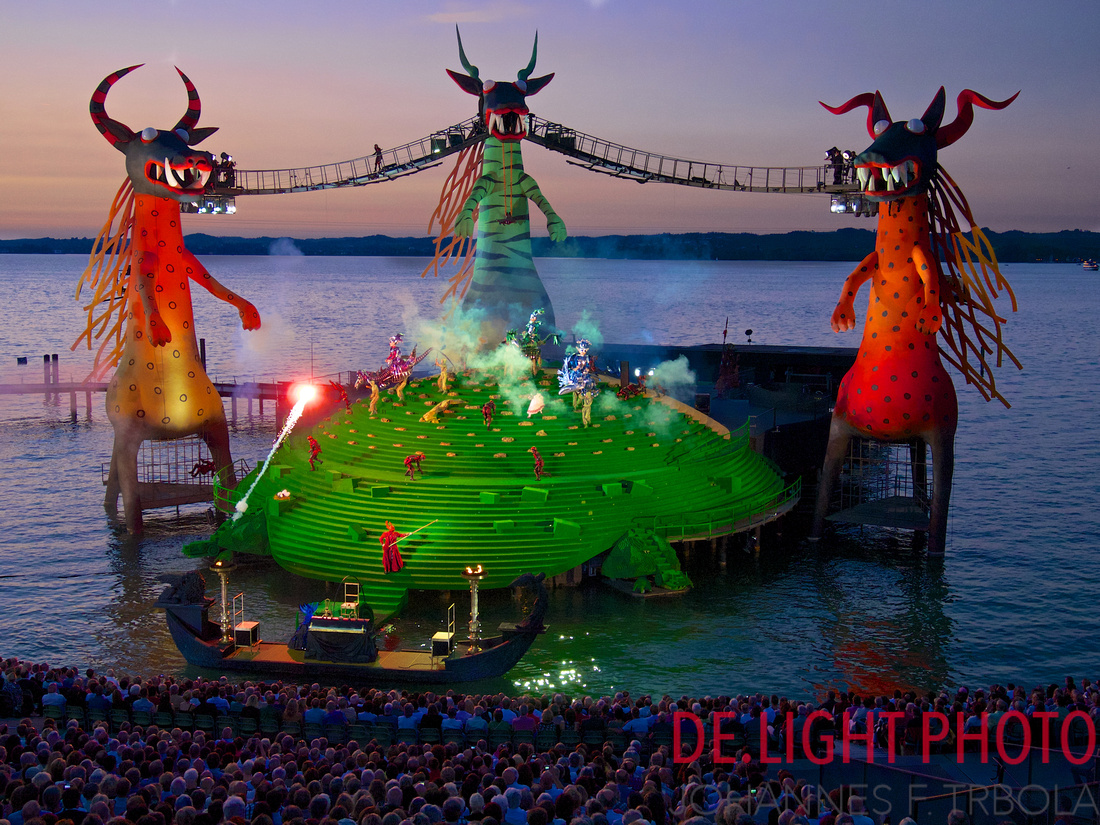 Shooting at Festivals is a special item. Normally Shooting is very much restricted. At the Bregenz Opera Festival the restrictions are pretty limited: No Flash! But on the other side I do not want to disturb my neighbors while shooting - especially if your neighbors are from your family.... For me it was pretty interesting to shoot there because the location and the timing is giving you great opportunities. The performance starts directly after sunset: almost the first half of the performance offers you blue hour photos.... (If the weather is fine. We had been there with thunderstorm and the ski clothes on because the temperature level was below 10ºC - in August!).
Shooting at Festivals is a special item. Normally Shooting is very much restricted. At the Bregenz Opera Festival the restrictions are pretty limited: No Flash! But on the other side I do not want to disturb my neighbors while shooting - especially if your neighbors are from your family.... For me it was pretty interesting to shoot there because the location and the timing is giving you great opportunities. The performance starts directly after sunset: almost the first half of the performance offers you blue hour photos.... (If the weather is fine. We had been there with thunderstorm and the ski clothes on because the temperature level was below 10ºC - in August!).
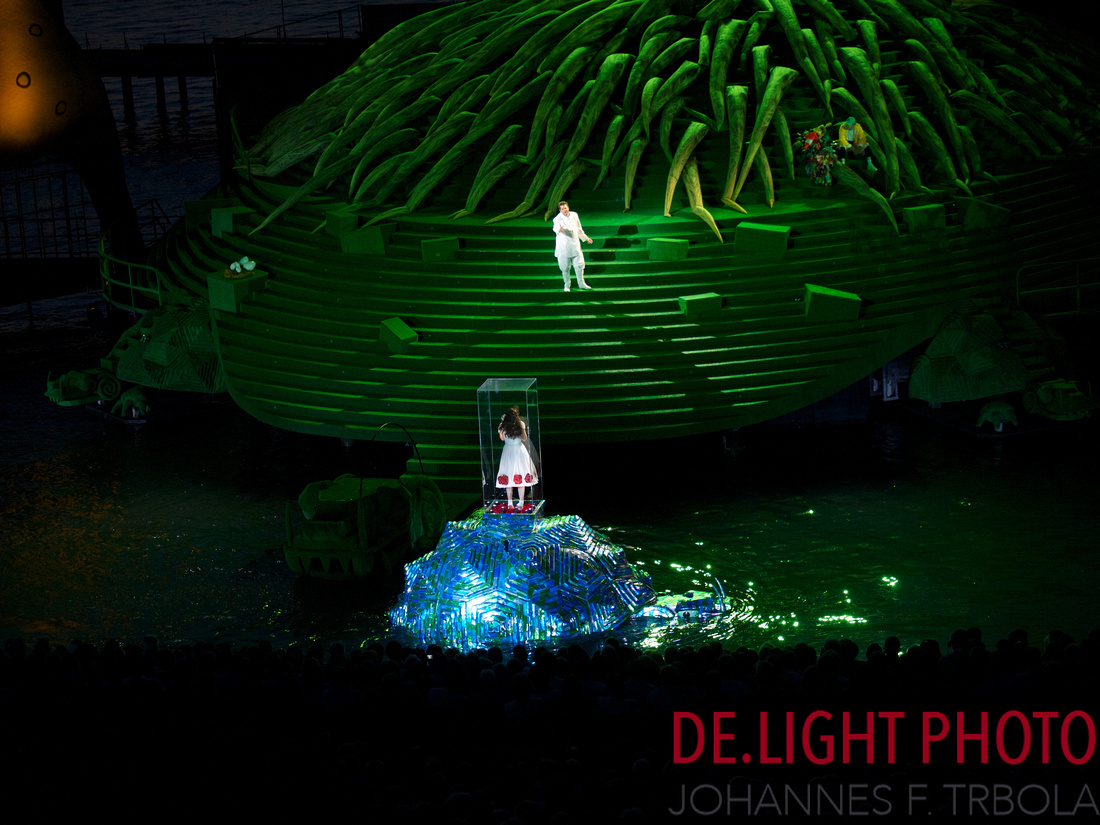
Another reason why I like to shoot there is the stage. Bregenz Opera festival is building amazing stages. They are pretty expensive that they have to use it for 2 years. (If you get the inspiration to watch the Magic Flute: 2014 is another chance!) The stage is changing for each act. The stage is in the lake. Boats are part of the production as well as special effects like fire work. And sometimes the actors have to go into the lake - and divers bring them back...
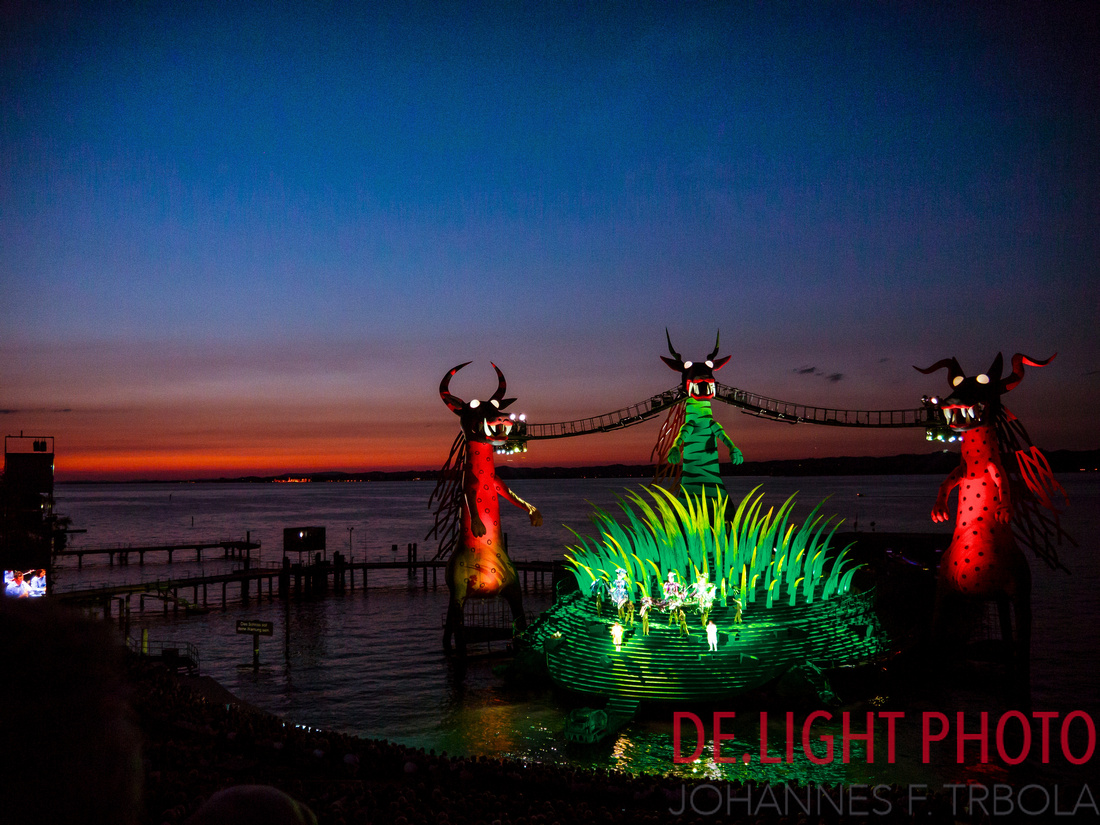 One of the effects of the stage this year has been tha magic forest that has been just blown up. It had internal light that changes depending on the acts content...
One of the effects of the stage this year has been tha magic forest that has been just blown up. It had internal light that changes depending on the acts content...
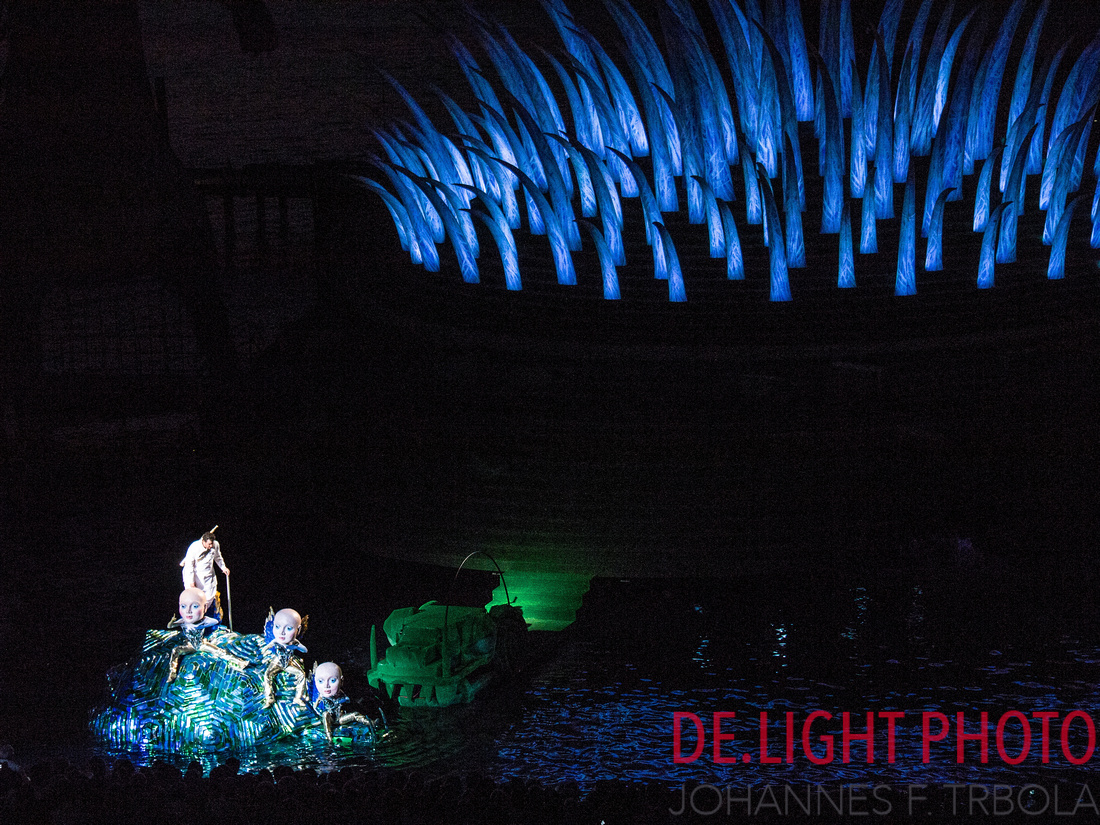 Camerawise I used a special setup. My Panasonic Lumix G5 has a silent mode - using an electronic shutter. This mode has some limitations (ISO is limited up to ISO 1600 and the longest shutter speed is 1s) but the camera is perfectly loudness. Great for this kind of environment. The lenses I took with me was the X-vario 3,5-5,6/14-42mm Power O.I.S lens as well as the Leica 2,8/45 mm lens. Both have image stabilization which is making shooting easy. And both are very tiny and easy to carry in you sacco´s pockets...
Camerawise I used a special setup. My Panasonic Lumix G5 has a silent mode - using an electronic shutter. This mode has some limitations (ISO is limited up to ISO 1600 and the longest shutter speed is 1s) but the camera is perfectly loudness. Great for this kind of environment. The lenses I took with me was the X-vario 3,5-5,6/14-42mm Power O.I.S lens as well as the Leica 2,8/45 mm lens. Both have image stabilization which is making shooting easy. And both are very tiny and easy to carry in you sacco´s pockets...
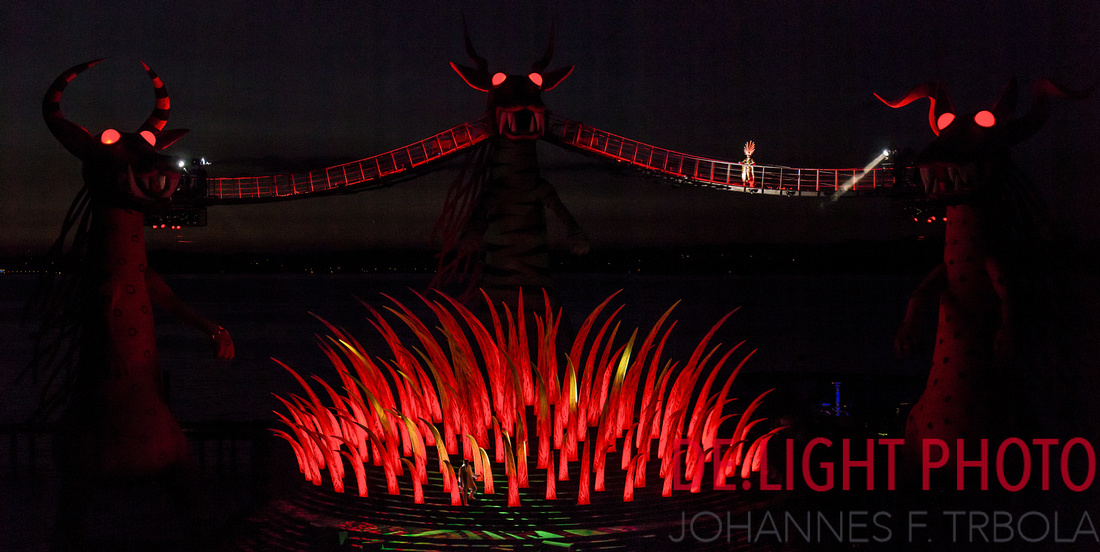 Sometimes the changes on stage are coming fast. If you have the 45mm lens on (with the crop factor of 2 the effective focal length is 90mm comparable to full format) ad you do not have the time to change the lens another option is to shoot a panorama. Like the Image above: It is really sharp - and has 34,5 Megapixel!!! Really amazing!!
Sometimes the changes on stage are coming fast. If you have the 45mm lens on (with the crop factor of 2 the effective focal length is 90mm comparable to full format) ad you do not have the time to change the lens another option is to shoot a panorama. Like the Image above: It is really sharp - and has 34,5 Megapixel!!! Really amazing!!
 The stage is changing permanently. There are lot of effects build in. And all movements are completely loudless - as well as the G5!
The stage is changing permanently. There are lot of effects build in. And all movements are completely loudless - as well as the G5!
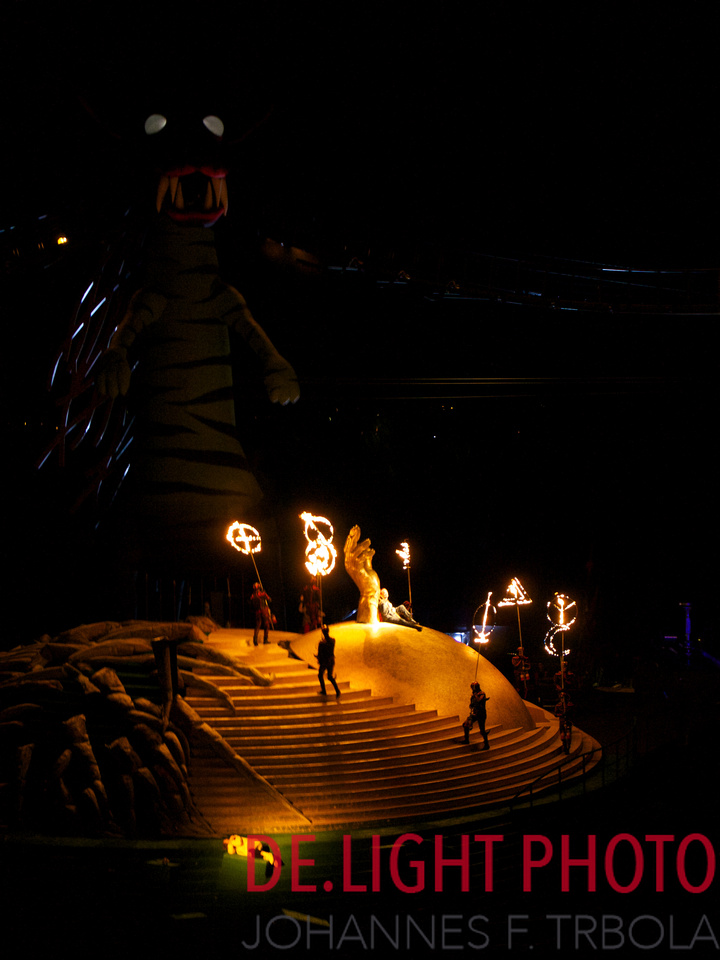 You can imagine: A stage which is using all basic elements Fire, Water, Earth and Air: It´s just magic!!!
You can imagine: A stage which is using all basic elements Fire, Water, Earth and Air: It´s just magic!!!
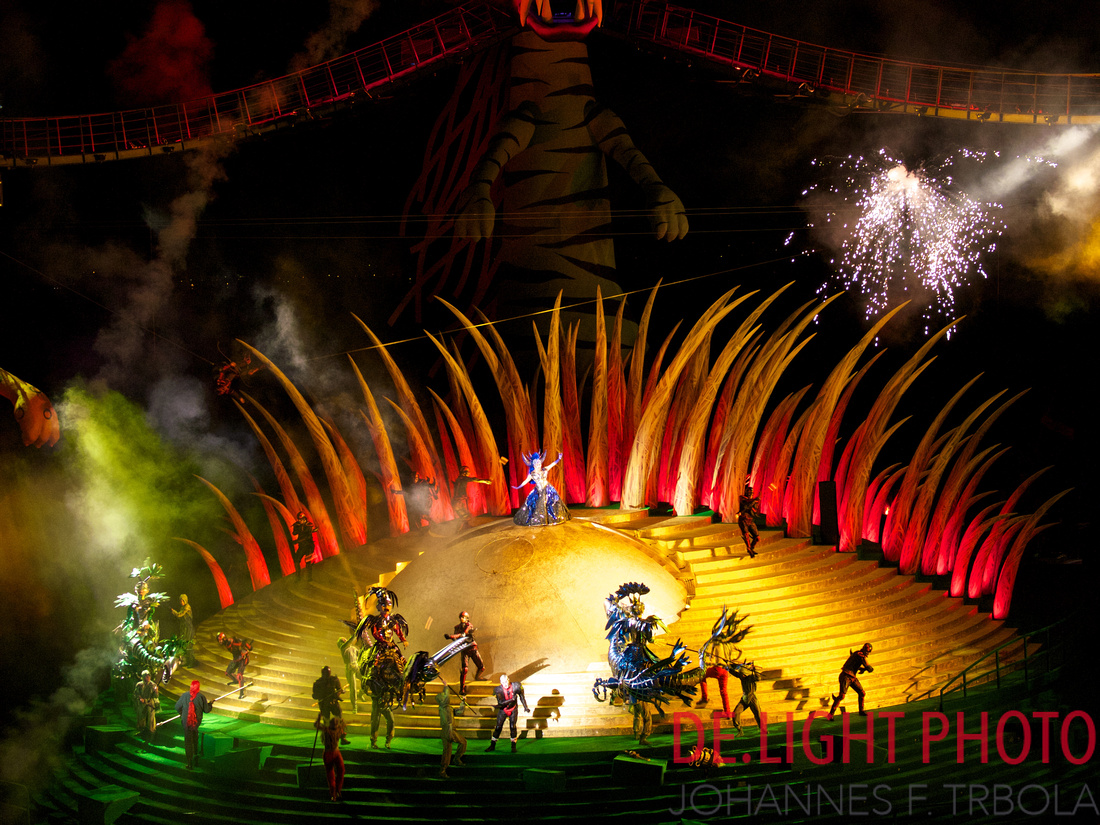 And the final act all actors went through the publicum...
And the final act all actors went through the publicum...
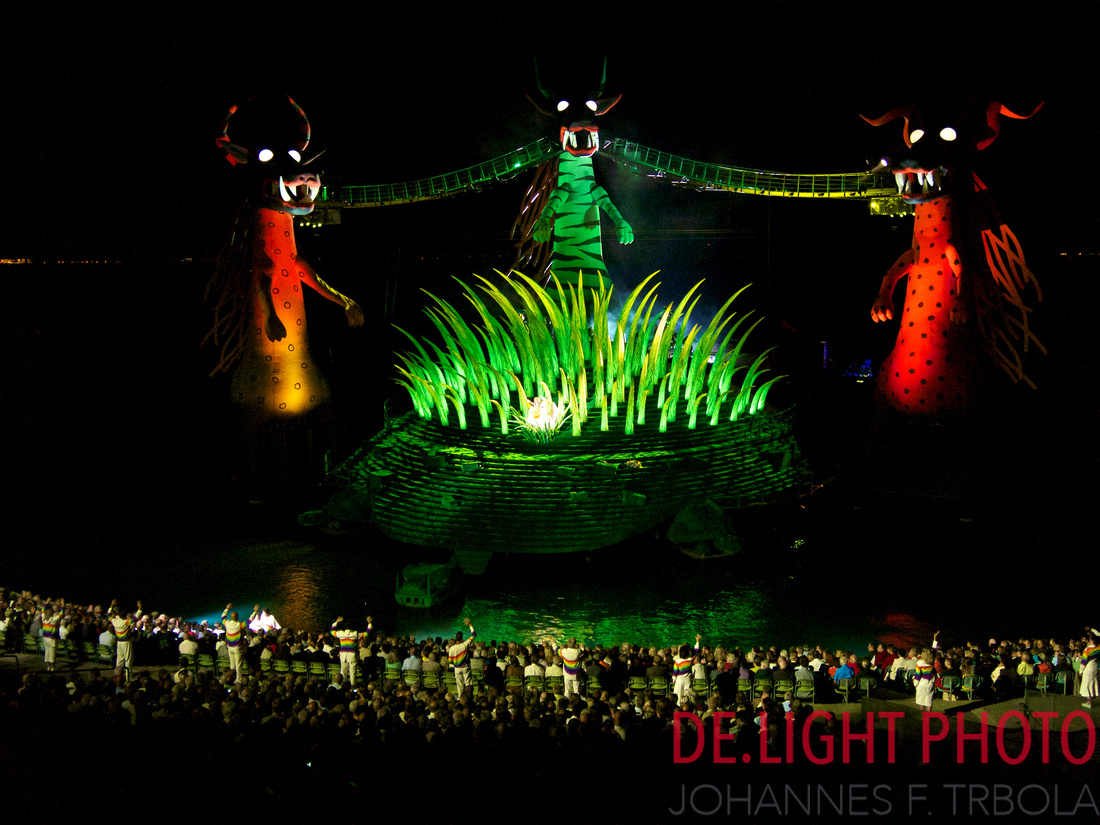
For all of you who are interested in the details of the shots: I used mostly ISO 800, open aperture and 1/80th s exposure time. Only the very carp shoots like the panorama I used ISO 1600...
]]>
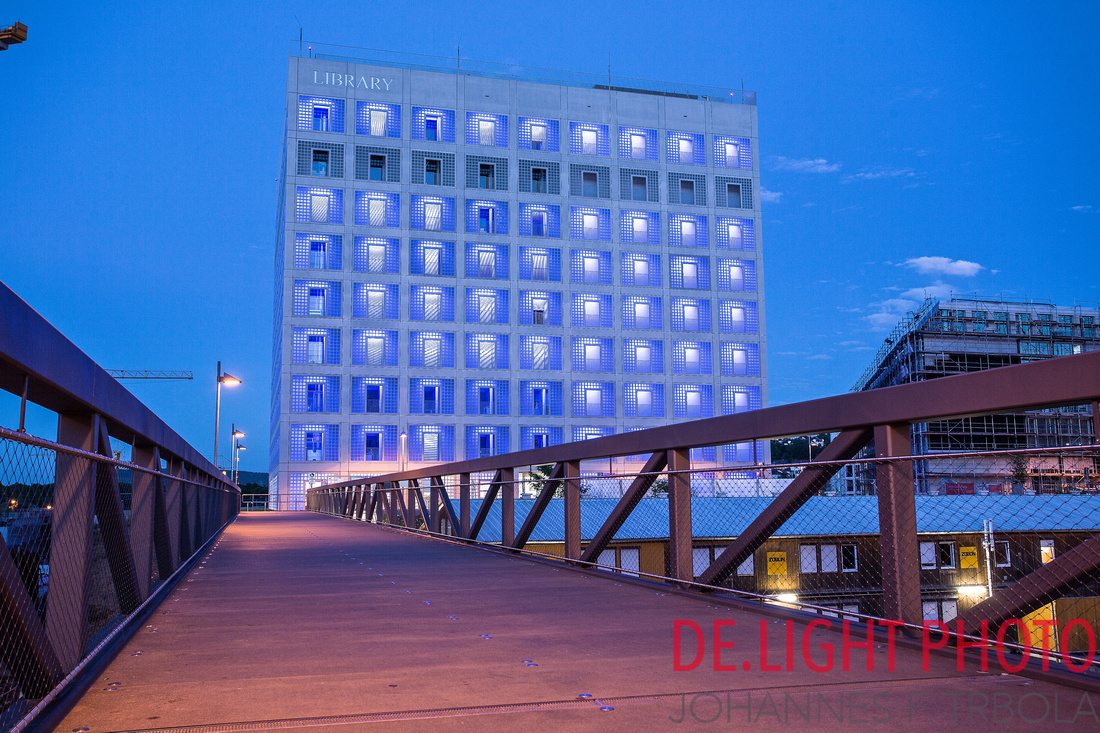 Yesterday Evening I was at the New Library. A very reduced new building, From the Korean architect Eun Young Yi, opened October 2011, just 2 years old. As you can Imagine it is a building which polarizes the people.
Yesterday Evening I was at the New Library. A very reduced new building, From the Korean architect Eun Young Yi, opened October 2011, just 2 years old. As you can Imagine it is a building which polarizes the people.

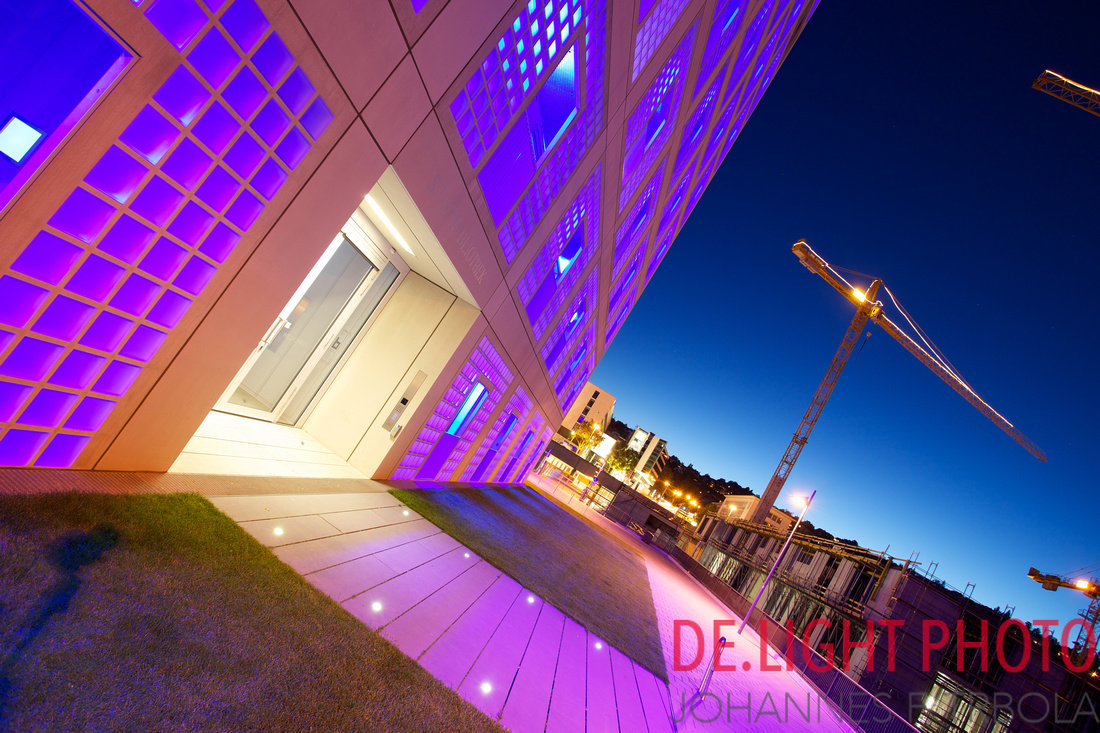
But there is not only the Library. There is a huge construction work going on as well. On on side They buil the new subway, on the other side a big big shopping mall -called Milaneo- is build. In combination with the light situation, the cranes and the library there is a very special atmosphere...
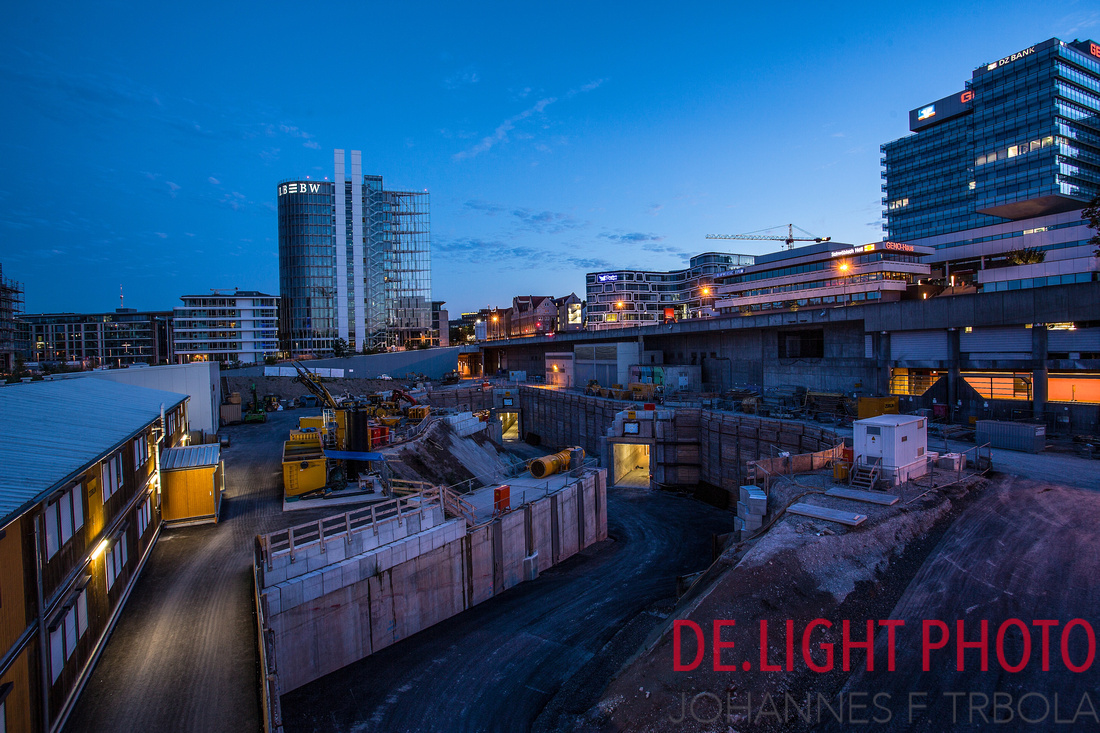 The construction side of the new subway line. You can easily identify the 2 new tunnels which are build while the normal subway traffic is going on.
The construction side of the new subway line. You can easily identify the 2 new tunnels which are build while the normal subway traffic is going on.
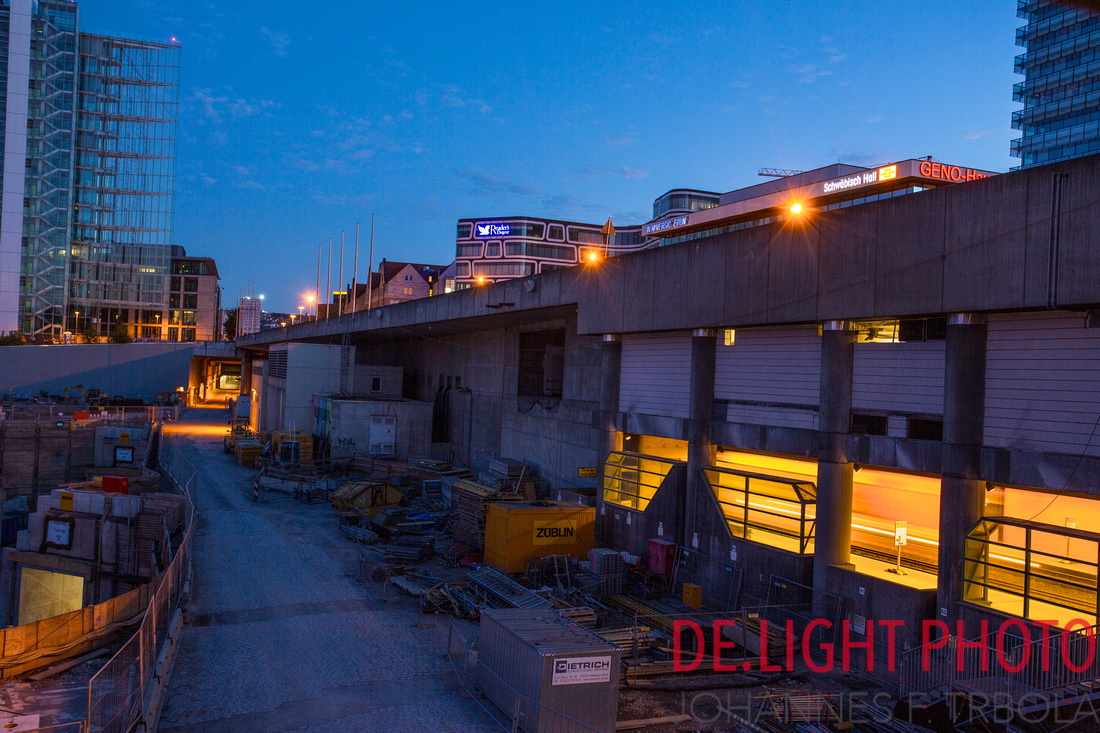 On step higher: here you can see the subway # 15 entering the station which brings people to the library and the hospital nearby.
On step higher: here you can see the subway # 15 entering the station which brings people to the library and the hospital nearby.
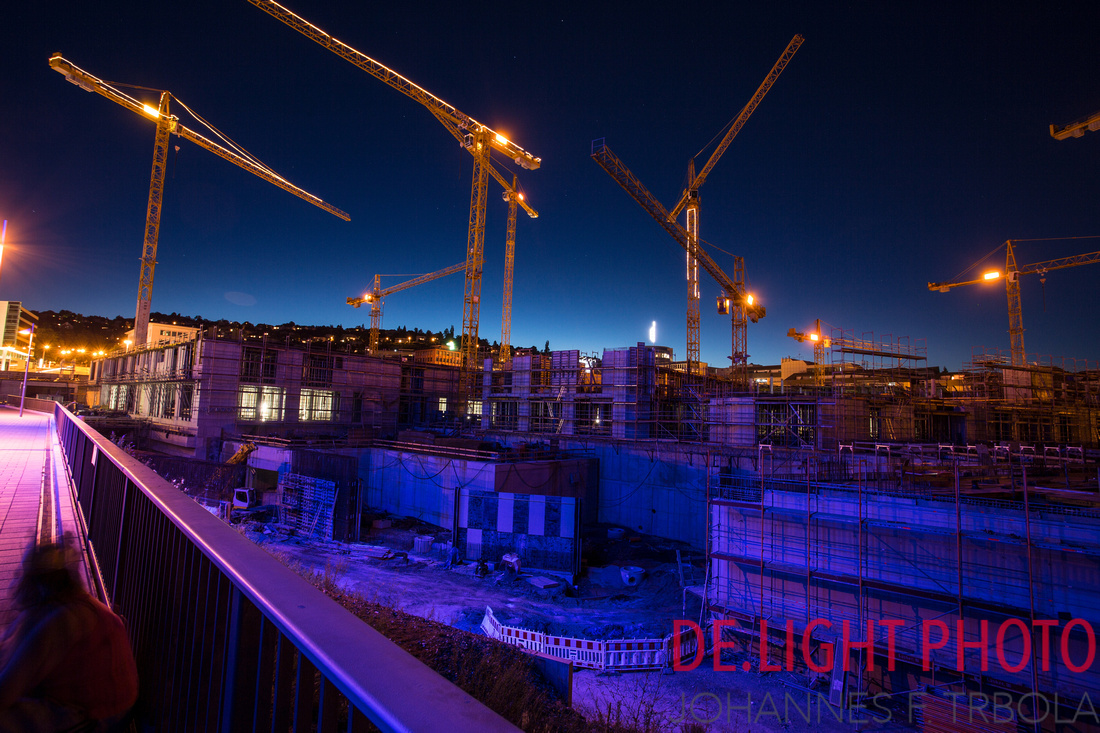 The amazing density of cranes on that point....
The amazing density of cranes on that point....
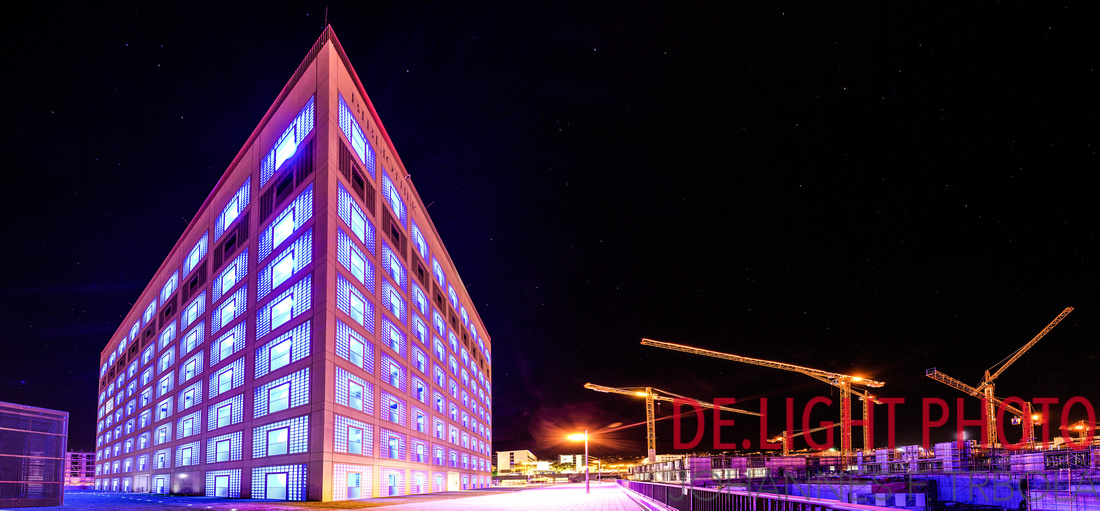
To get the whole scenery on the picture it is pretty tricky. The panoramic view to the north contents out of 4 photos - Wide Angel 17mm focal length. To stitch the panorama I had to do it in 2 steps first the building, than the construction side and than stitched the 2 stitched images together. These kind of photos are pushing the stitching software to the limit... (Maybe the a tilt-shift lens would make things easier...)
]]>
When I started the hear and read more about photography "Bokeh" comes more and more into my mind: I found out that I played with it since I started to photo.... Recently I got an idea for a shot in our garden. We have some Joseph´s Lilies in our garden. And we have a walnut tree where we have installed a LED tube with different color. I started shooting with my new 45mm Macro Lens getting some really nice pictures...
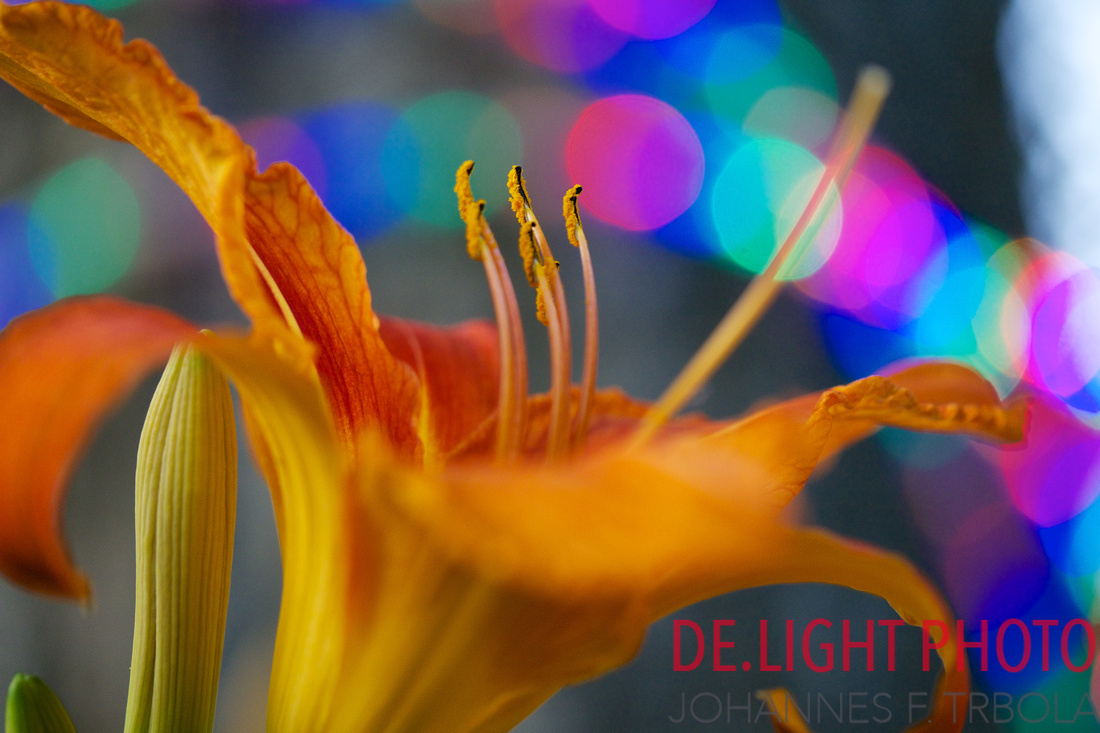 Lumix G5 with the Leica f2.8/45mm lens@ ISO 200, f2.8, 1/125
Lumix G5 with the Leica f2.8/45mm lens@ ISO 200, f2.8, 1/125
When I started the shooting I thought: It might be interesting to compare this pictures with the Canon 100mm f2.8 USM-L lens with the full format sensor. Just by the laws of optics there will be an influence: Less depth of sharpness and more blur. But how does this looks?
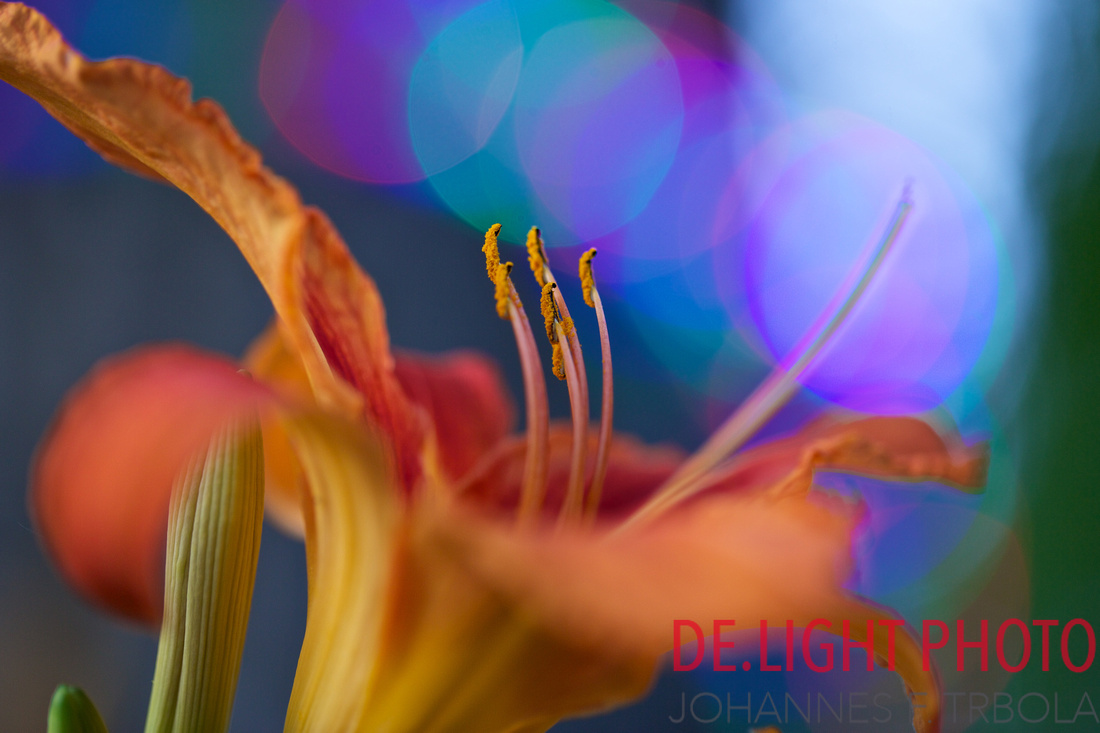
Canon EOS 5DMkIII with EF 100mm f/2.8L Macro IS USM @ ISO 200, f 2.8, 1/125
The Results looks dramatic to me. Yes it makes more fun to use the full format sensor... but the result for 43 Isn´t bad, or?
Ad the end of the evening, when it became even more dark I added another shot to the series which I like as well:
 Canon EOS 5D MkII with Canon EF 28-300mm f/3.5-5.6L IS @ ISO 4000, f5.6, 1/250s, 300mm
Canon EOS 5D MkII with Canon EF 28-300mm f/3.5-5.6L IS @ ISO 4000, f5.6, 1/250s, 300mm
For me it is amazing to see what the longer lens offers in term of bokeh - even if the maximum aperture is only 5.6.
]]>
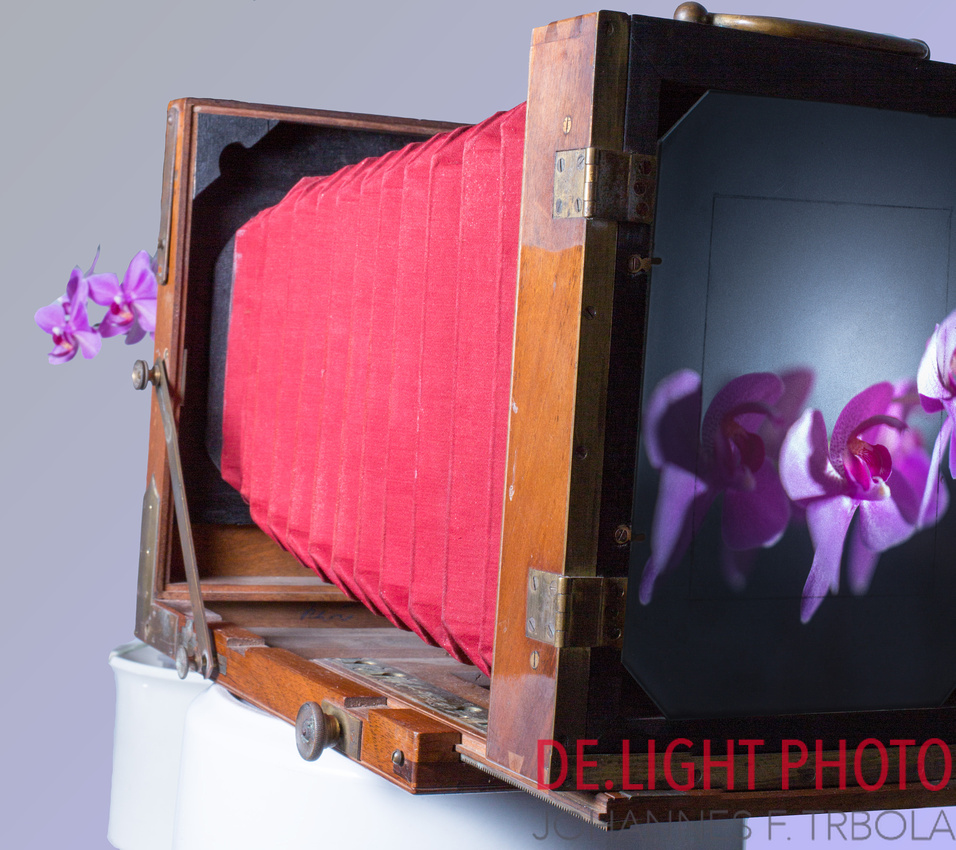 We have some very old cameras - beside the new high-tech stuff. Once I had the idea to make photos with this old stuff. The idea for the exercise was born. At the end: it became tricky. The photo you see here is a combination of 3 photos with very different light settings...
We have some very old cameras - beside the new high-tech stuff. Once I had the idea to make photos with this old stuff. The idea for the exercise was born. At the end: it became tricky. The photo you see here is a combination of 3 photos with very different light settings...
- The photo of the orchid
- the photo of the camera itself and
- The photo of the screen of camera
At the end I combined all three in photoshop and replaced the background ...
]]>
